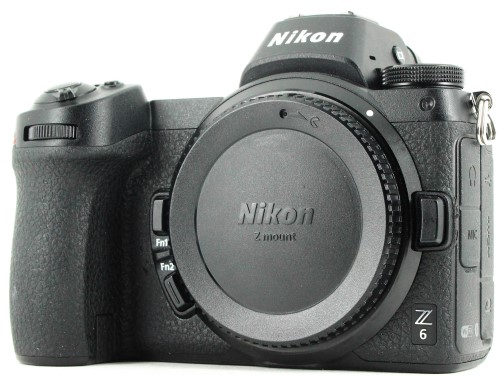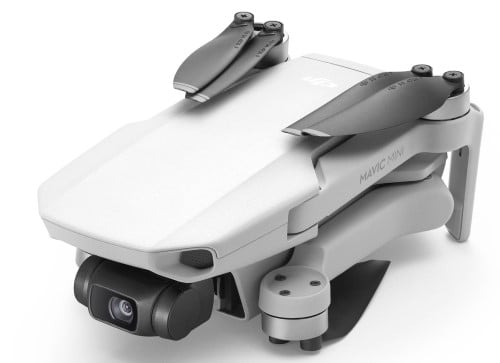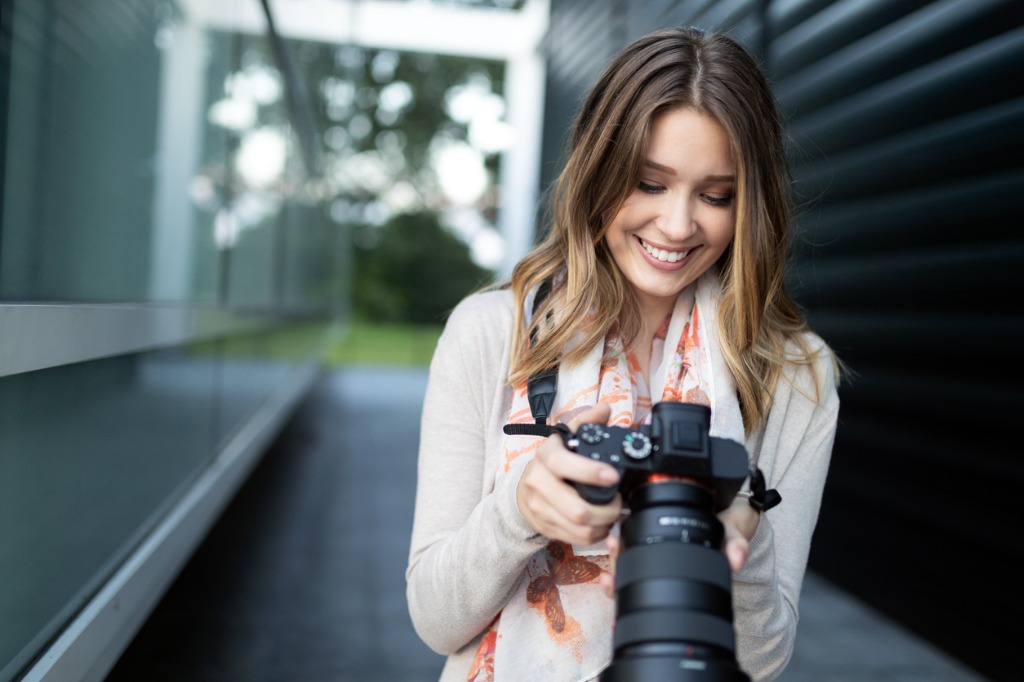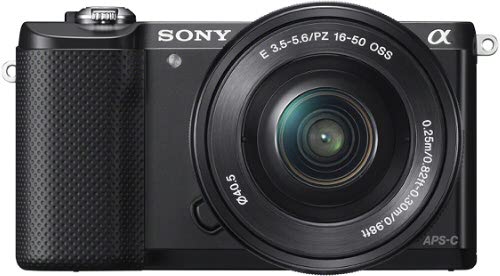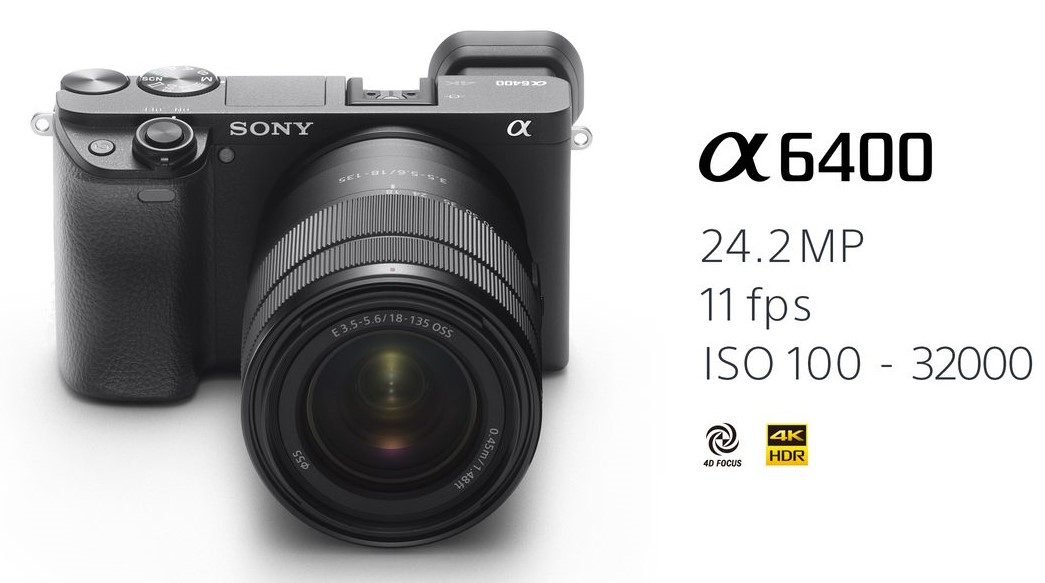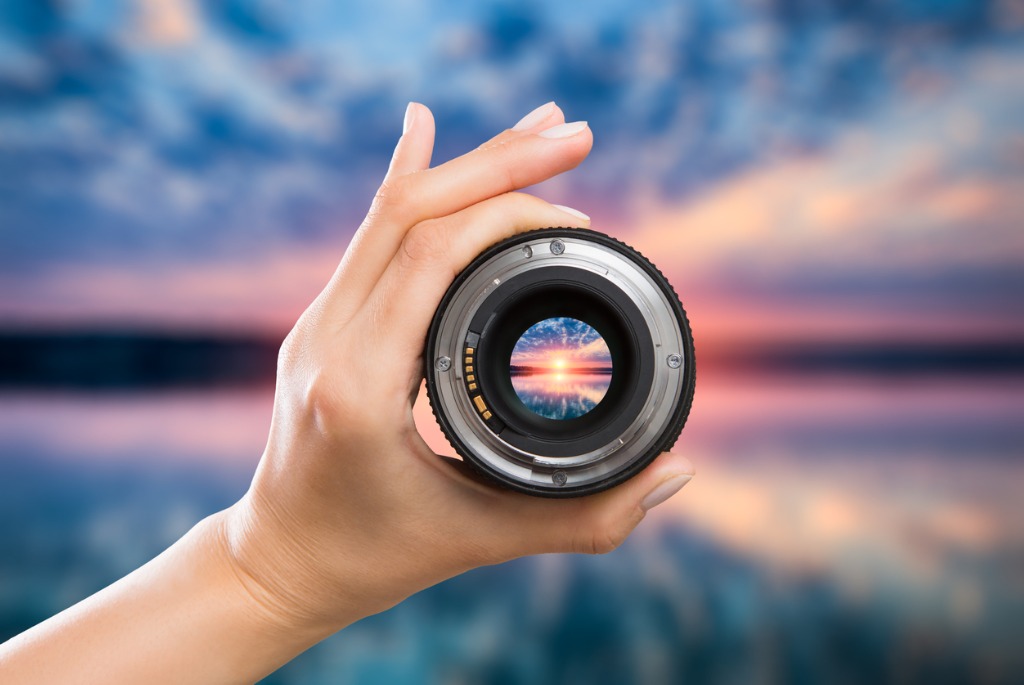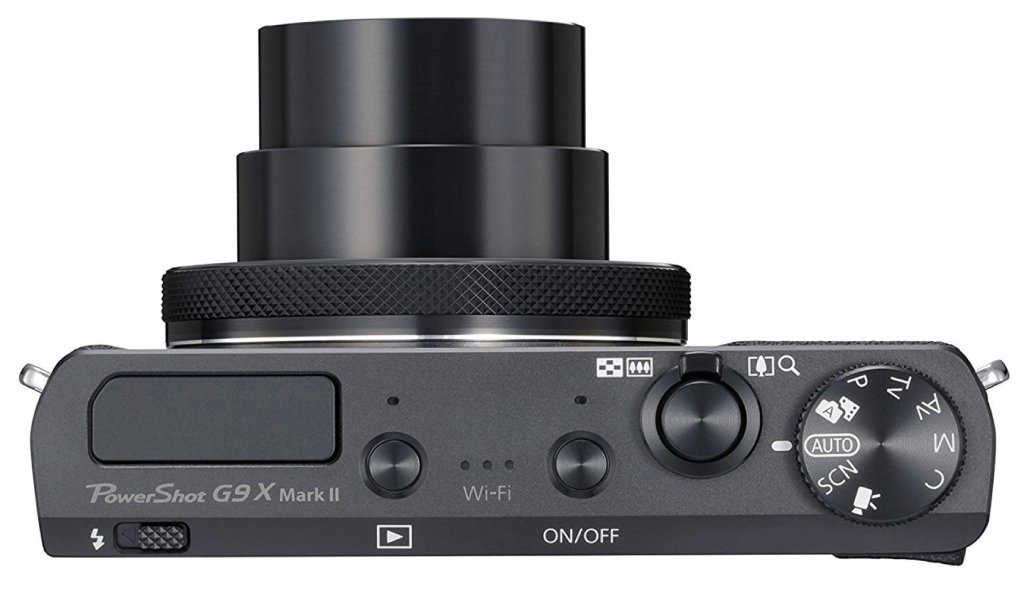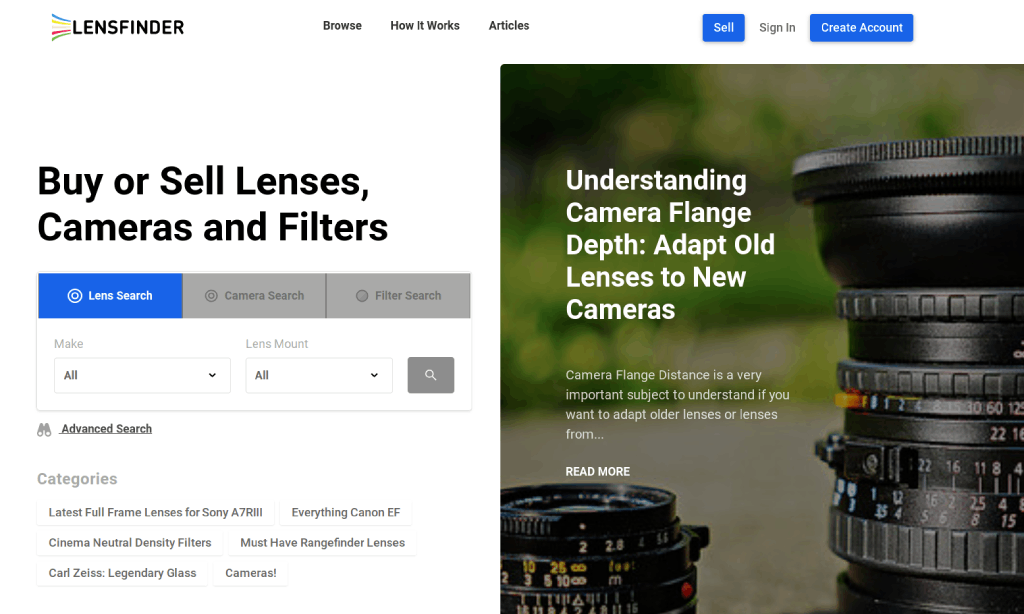10 Things You Need to Know About Prime Lenses
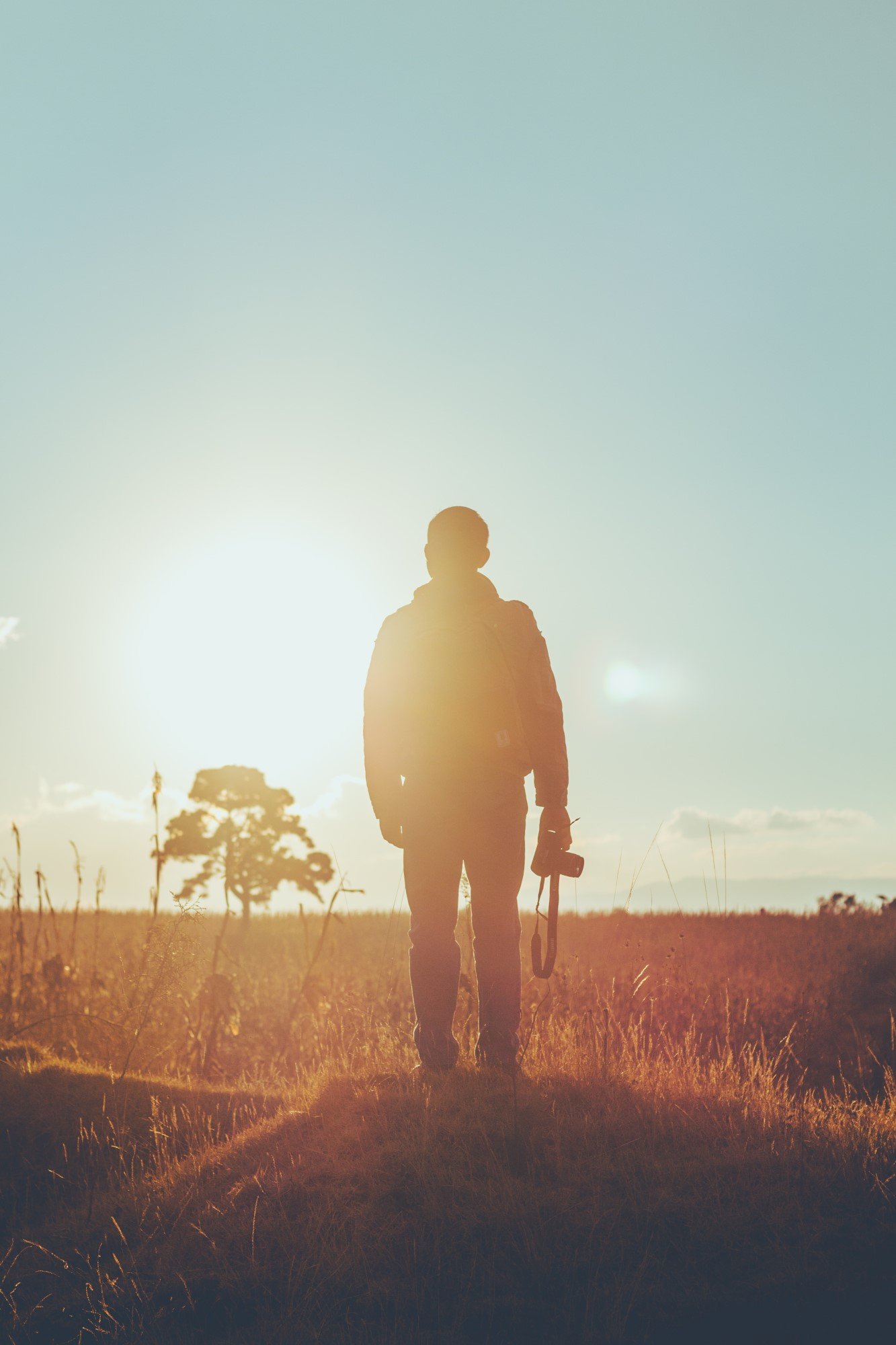
Photo by Diego PH on Unsplash
While some people give prime lenses the cold shoulder because they don’t offer the focal length versatility of a zoom lens, others, like me, hold prime lenses in high regard.
In fact, there are a lot of reasons why a prime lens is a great addition to your camera bag - more so than a zoom in many cases.
Not convinced?
Table of Contents
- What are Prime Lenses
- How do Prime Lenses Work?
- Prime Lenses are Smaller Than Zooms (Usually)
- Prime Lenses Have Large Apertures
- Prime Lenses Can Be Found on the Cheap
- Prime Lenses are Sharp
- Prime Lenses Offer Improved Image Quality
- Prime Lenses Combat Lazy Photographer Syndrome
- Fast Prime Lenses = Beautifully Shallow Depth of Field
- Prime Lenses Help You Develop Your Photographer’s Eye
- Which Prime Lenses to Get
What are Prime Lenses?
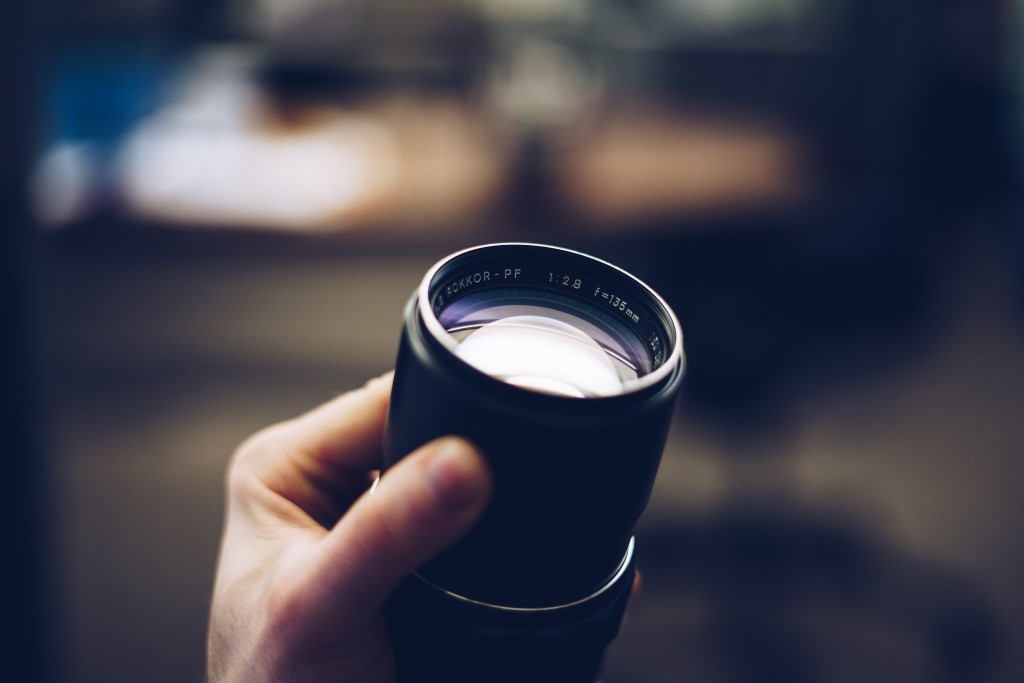
Photo by Jeffrey Wegrzyn on Unsplash
Let’s go over a few things you need to know about prime lenses.
First, let’s explore what prime lenses are and how they work.
Unlike a zoom lens, a prime lens has a fixed focal length. Common focal lengths include 24mm, 35mm, 50mm, and 85mm, though there are many other variations, like the 135mm prime pictured above.
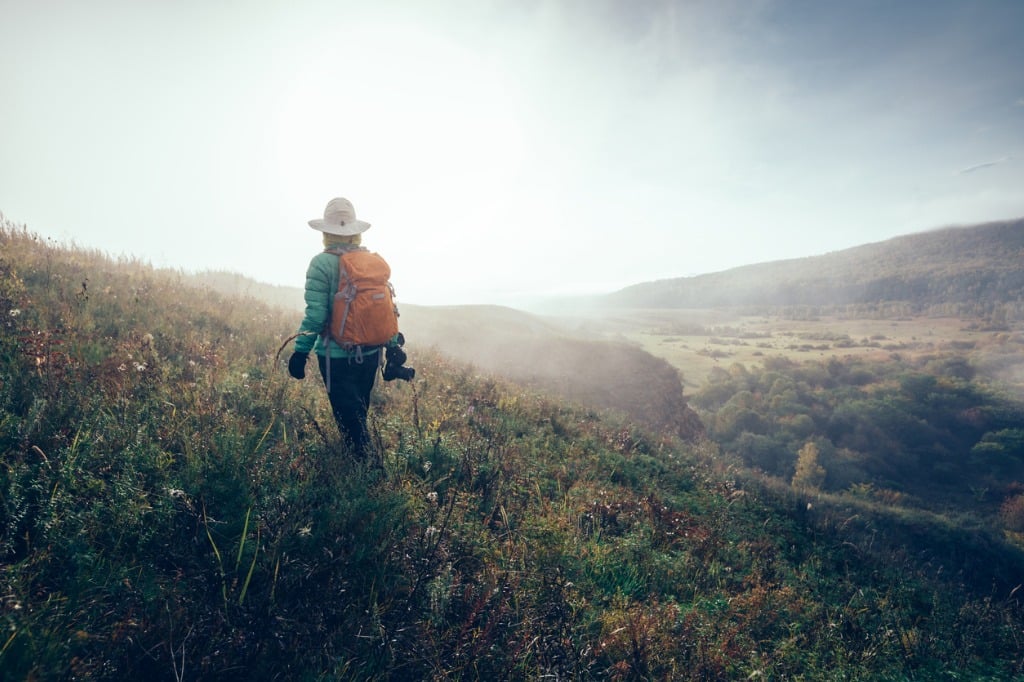
photo by lzf via iStock
This means that you’re “stuck” with one focal length whereas a zoom lens gives you a wide range, like 12-24mm, 24-70mm, 70-200mm, and so forth.
I say “stuck” because you obviously can’t change the focal length with a flick of your wrist like you can with a zoom lens.
However, as I’ll hit on later, many photographers actually consider this to be an advantage because it forces you to “zoom with your feet.”
So, while zoom lenses are built for versatility, prime lenses are built for a specific purpose.
For example, an 85mm prime lens is traditionally used for portraiture. A 24mm prime lens is often used for landscapes.
How do Prime Lenses Work?
I’m no physicist, so I’ll leave the experts at CanonAsia to explain how camera lenses work in the video above.
What I can tell you is this - prime lenses and zoom lenses work the same way in terms of the physics of light.
The difference, of course, is that in a prime lens, the lens elements - the glass - do not move as they do in a zoom lens.
Because prime lenses do not have moving elements, they benefit from a number of advantages, not the least of which is improved optical performance.
Below, I offer an overview of this and other advantages of prime lenses.
Prime Lenses are Smaller Than Zooms (Usually)
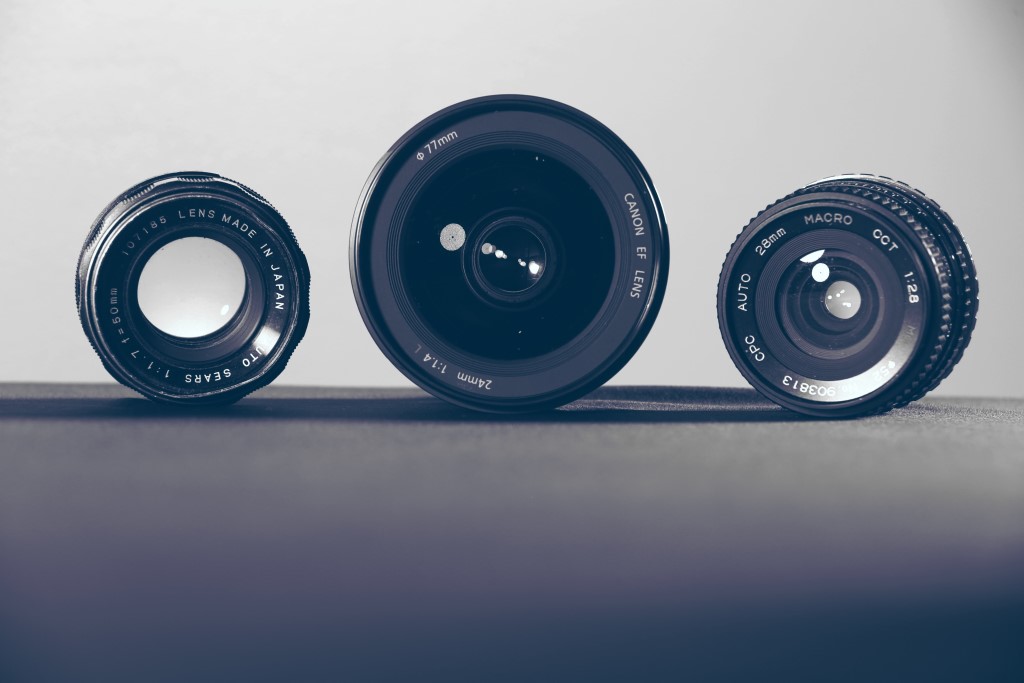
Photo by Evan Wise on Unsplash
Thanks to fewer pieces and parts inside the lens, many prime lenses are much smaller than their zoom counterparts.
Not only does this mean a smaller form factor, but prime lenses are often much lighter than zoom lenses as well.
This makes prime lenses a top choice for photography pursuits that require you to be able to move fast and light, like travel photography or street photography.
Now, some prime lenses - like high-end professional models - can be quite heavy because of higher-quality optics and weather-resistant build quality. But by and large, most prime lenses are small, compact, and lightweight.
Learn More:
Prime Lenses Have Large Apertures
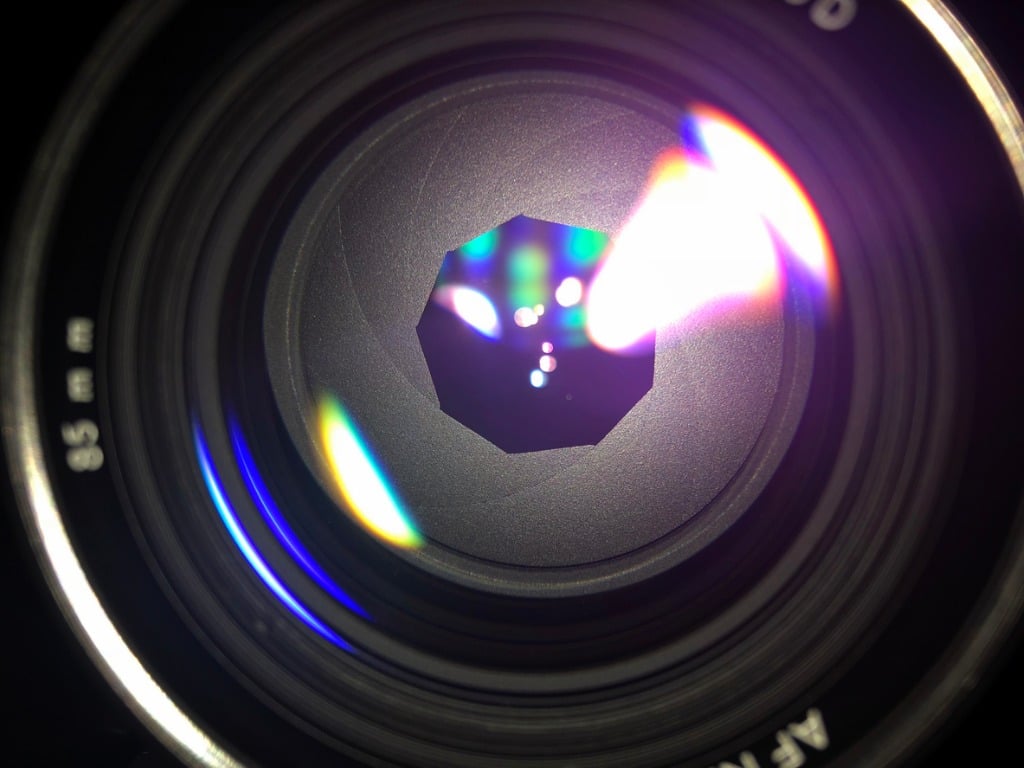
photo by brightstars via iStock
Whether it’s Canon prime lenses, Nikon prime lenses, Sigma prime lenses, Sony prime lenses, or another brand we’re talking about, these lenses have large apertures that let tons of light into the camera.
It’s not uncommon to find zoom lenses that have an aperture range from f/3.5-f/5.6. But with prime lenses, you can find options with an aperture as wide as f/1.2.
All that extra light-gathering capability means prime lenses are better-suited to low-light photography.
A large aperture opening means you don’t have to rely as much on boosting the ISO or slowing down the shutter speed, which results in cleaner shots with less noise and a reduced incidence of camera shake due to a slow shutter.
Prime Lenses Can Be Found on the Cheap
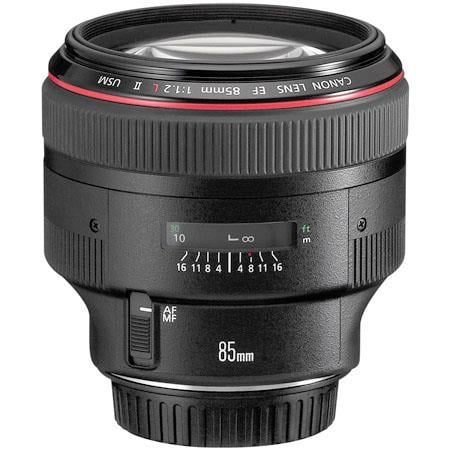
Professional-grade prime lenses can be extremely expensive. For example, the Canon EF 85mm f/1.2L II USM shown above is a cool $1,849.00.
However, many other options are quite budget-friendly.
The Nikon 50mm f/1.8G AF-S is less than $200.00 brand-new.
You’ll find that as the size of the aperture increases, so too does the price. That means that if you’re looking for something that won’t destroy your bank account, prime lenses with an aperture of f/1.8, f/2, f/2.8, or f/4 will be much more cost-effective than prime lenses with an aperture of f/1.4 or f/1.2.
Prime Lenses are Sharp
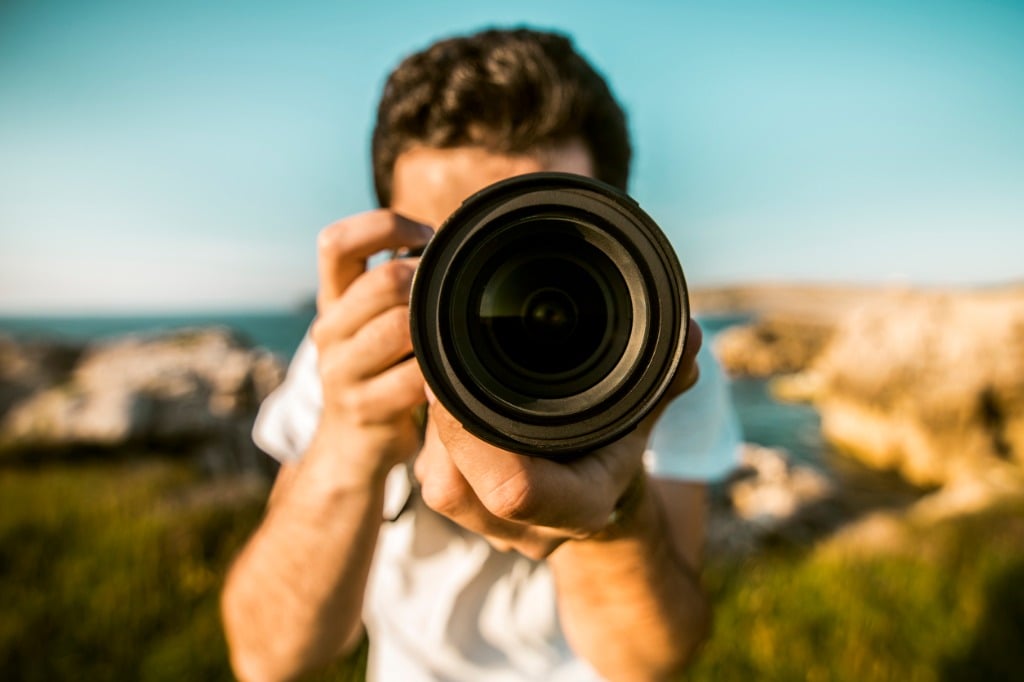
photo by MarioGuti via iStock
One of the advantages of prime lenses is that they are typically sharper than their zoom counterparts.
This makes sense because prime lenses have fewer elements and moving parts inside, so there’s less stuff for light to travel through.
Prime lenses aren’t just generally sharper than zooms, either - they’re sharper from corner to corner as well. Now, even the best prime lenses aren’t going to be their sharpest when shooting wide open at their maximum aperture, but the point remains the same - primes are sharper than zooms.
Naturally, there’s a difference in sharpness from one prime lens to the next, but you can expect a prime lens of any focal length to outperform a zoom lens when it comes to sharpness.
Learn More:
Prime Lenses Offer Improved Image Quality
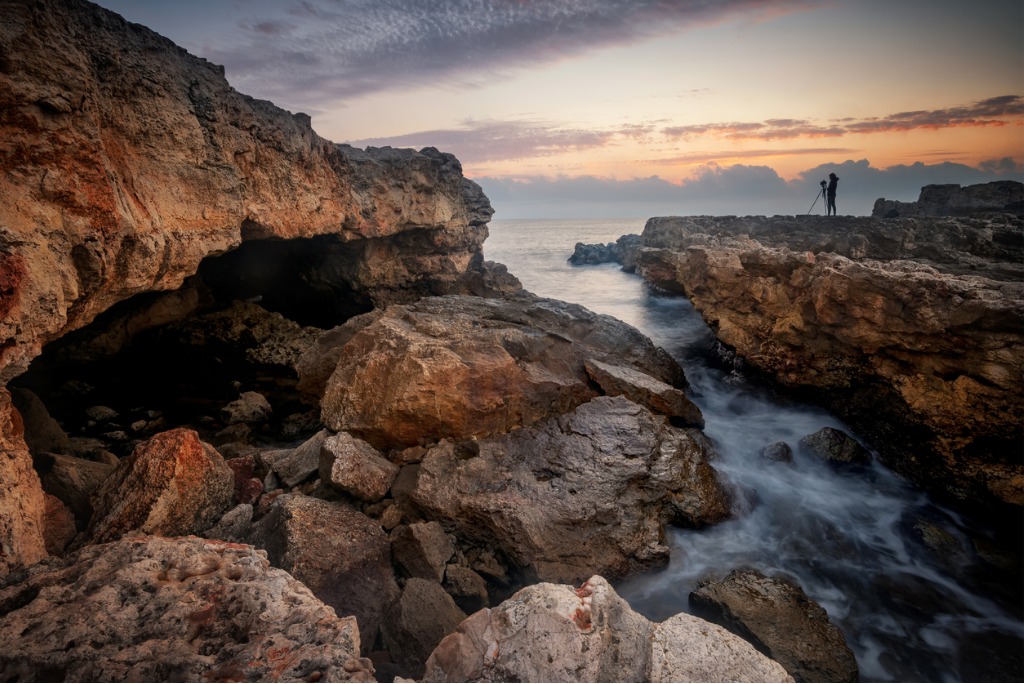
photo by jk78 via iStock
Aside from being sharp, prime lenses typically get you better results than zoom lenses in several important image quality areas.
For starters, prime lenses create less distortion than zooms. Distortion makes straight lines appear to bend, and it usually occurs in one of two ways:
- Pincushion distortion, in which lines appear to pinch inward
- Barrel distortion, in which lines appear to bow outward.
While all lenses create these kinds of distortions to some degree, prime lenses do a better job of limiting it than zooms.
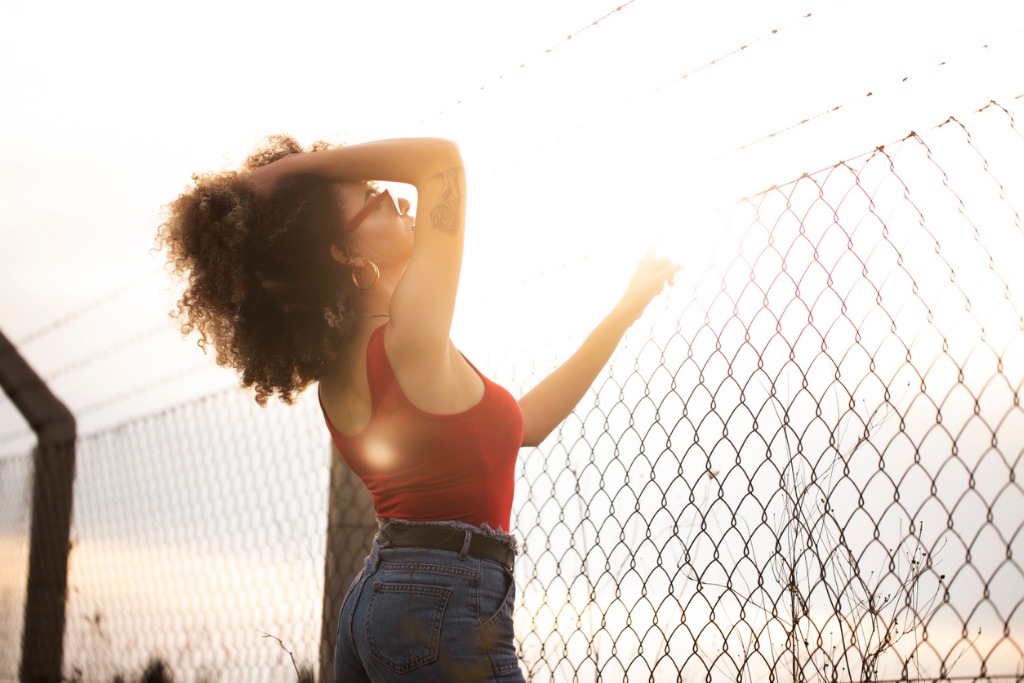
photo byGizemBDR via iStock
Secondly, prime lenses usually display much less vignetting, or darkened areas around the edges of the frame. This is especially true when comparing the performance of a prime lens to the wide-angle end of a zoom lens.
Lastly, prime lenses typically have much less chromatic aberration than zooms. Chromatic aberration appears as color fringing (usually purple or green) on the edges of elements in a high-contrast scene.
Prime Lenses Combat Lazy Photographer Syndrome
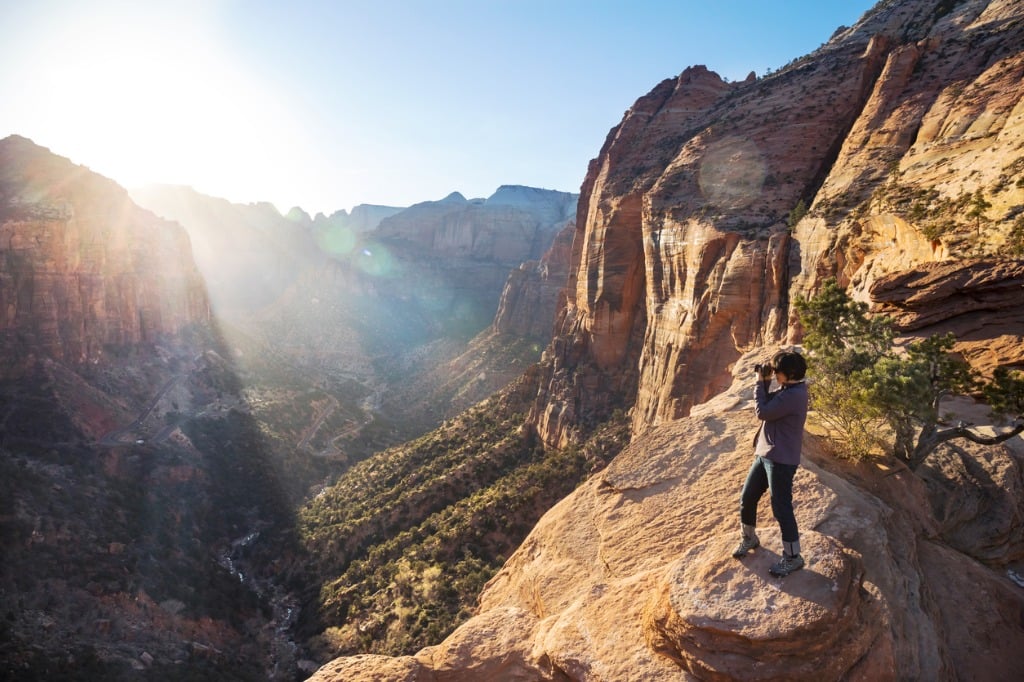
photo by nycshooter via iStock
When you can rely on turning the lens barrel of a zoom to reframe your shot, you can become a bit of a lazy photographer.
But with prime lenses, you don’t have that option, and instead you must “zoom with your feet” to frame up a shot that’s closer or further away.
Though some might say this is inconvenient, it helps you to develop your creative eye, to think purposefully about the composition, and can help you find new and interesting perspectives from which to shoot.
Exploring the world around you is a good thing! And since prime lenses are so light and compact, you don’t have to lug a huge, heavy lens around to do it.
Fast Prime Lenses = Beautifully Shallow Depth of Field
As explained in our primer on depth of field, one of the factors that influence depth of field is the size of the aperture being used.
Since some prime lenses open up to f/1.2 and f/1.4, you can get a minute depth of field that’s ideal for things like macro photography and portrait photography.
This isolation of a sharp subject against a blurry background not only looks fantastic, but separates the subject from the rest of the scene, thereby allowing the subject to be a much stronger focal point in the shot.
Get more details on how focal length and depth of field are related in the video above by Dylan Bennett.
Learn More:
Prime Lenses Help You Develop Your Photographer’s Eye
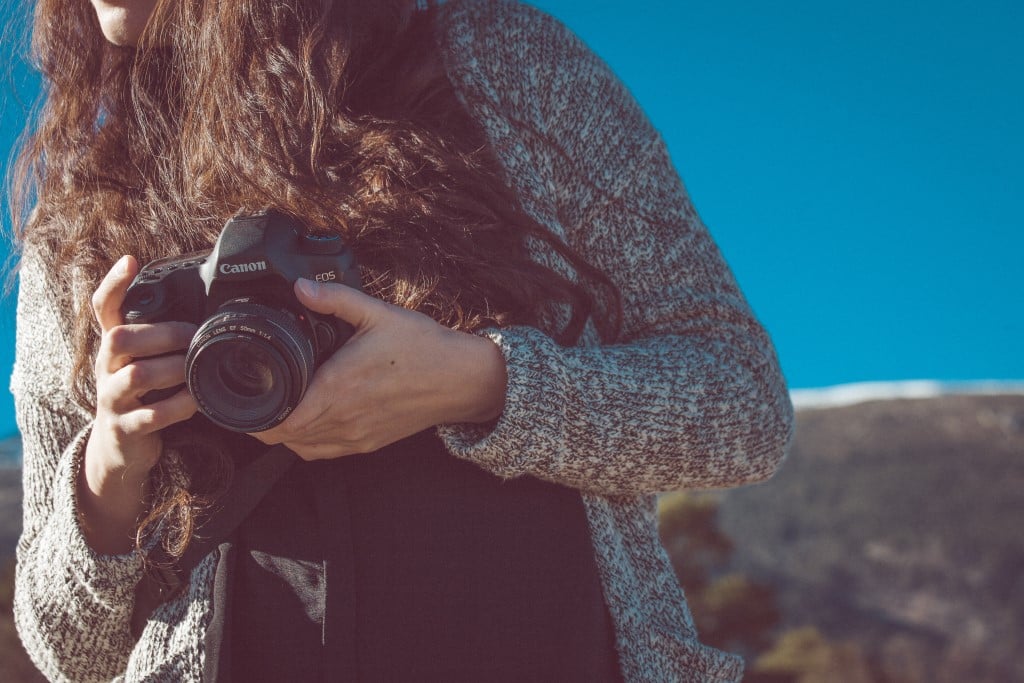
Photo by Mario Calvo on Unsplash
Part of the challenge of photography is looking at a particular scene and being able to see the different photographs that are possible in your mind’s eye.
When you use a zoom lens, developing this skill can be a bit of a challenge. After all, with a wide range of focal lengths available, it can muddy the waters when it comes to seeing the scene and figuring out how your final shot will look.
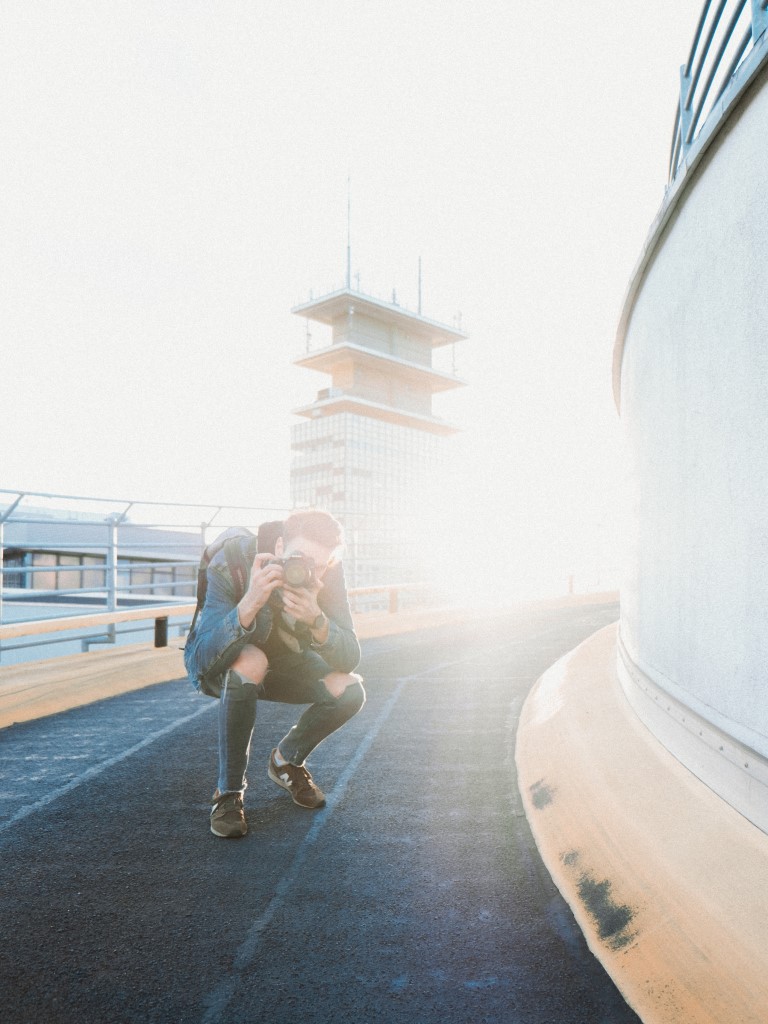
Photo by Markus Lompa on Unsplash
Conversely, when you frequently utilize a prime lens, you begin to see the world at that focal length. You become familiar with what 35mm, for example, looks like in your viewfinder, and then when you’re surveying a scene with your own eyes, it’ll be easier to see what vignettes you can capture at 35mm.
In other words, prime lenses can be a creative tool that helps you determine what will be in the shot (and what won’t be) as well as how the shot will be framed, all before you ever bring the camera to your eye.
You begin to feel the shot, and with less hunting for framing and messing around with composition, you’ll likely find that photography becomes a more satisfying and fruitful exercise.
What’s not to like about that?!
Which Prime Lenses to Get
As Matt Granger discusses in the video above, the prime lenses you add to your camera bag will depend on a variety of factors:
- What do you intend to do with the lens?
- How fast of an aperture do you need?
- What is your budget?
Regarding what you intend to do with the lens, you need to tailor the focal length to your style of photography.
That is, if you primarily shoot landscapes, you might want to opt for a 24mm lens rather than an 85mm lens. The former just has more applicability for landscapes than the latter.
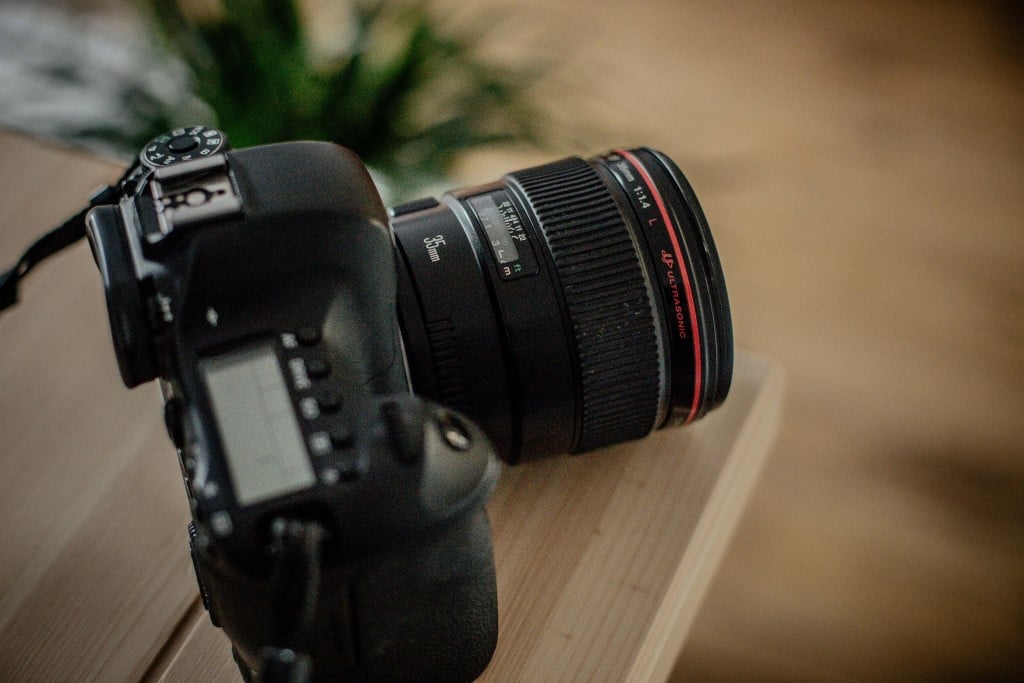
Photo by William Thomas on Unsplash
Secondly, not everyone needs an f/1.2 lens. If you typically shoot portraits using natural light, an 85mm f/1.8 will suit you just fine. There’s no need to spend more money on an 85mm f/1.2!
And that brings us to the final, and perhaps most important factor - your budget.
As noted above, the larger the aperture, the higher the price tag. If you have the budget to spend a couple thousand dollars on a lens, by all means, spring for an f/1.2 or f/1.4 professional prime lens like this one if you need it.
Otherwise, if you need to mind your wallet, opt for an f/1.8, f/2, f/2.8, or f/4 prime lens and save yourself some cash!
We Recommend
3 Cheap Full Frame Cameras for 2021
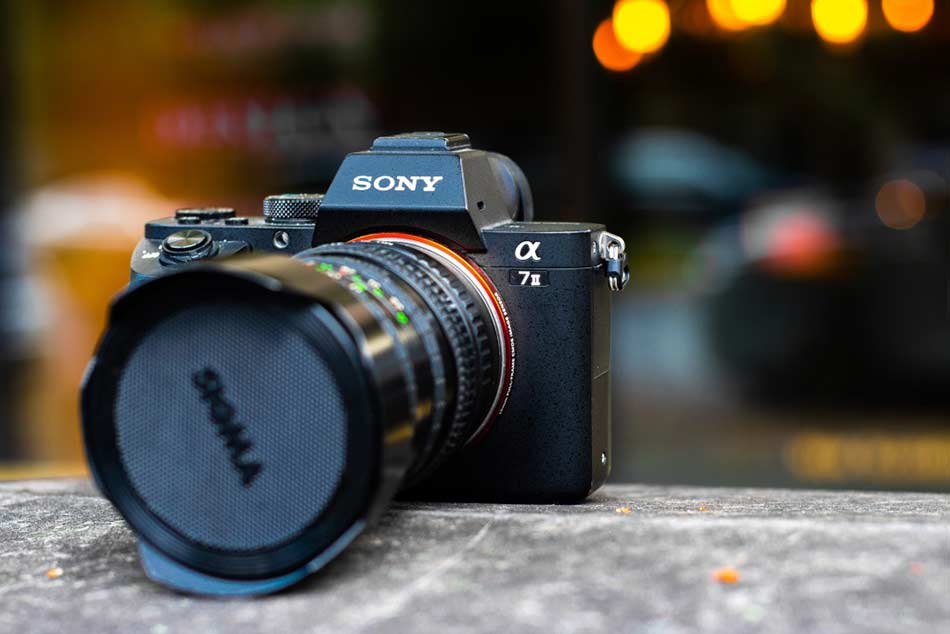
Photo by Leon Seibert on Unsplash
As much as I don’t want to admit it, we are nearing the end of the decade, which means I need some new cameras to take me into 2021.
But, I don’t exactly have the budget for expensive full frame cameras. Cheap full frame cameras are much more up my alley for Christmas this year.
However, most cheap full frame cameras are not great. In fact, cheap full frame cameras can be a rip off if you don’t purchase the correct one.
As such, I pulled together my three favorite cheap full frame cameras: the Nikon D750, The Sony A7 II, and the Canon EOS RP. Let’s talk about them.
Nikon D750
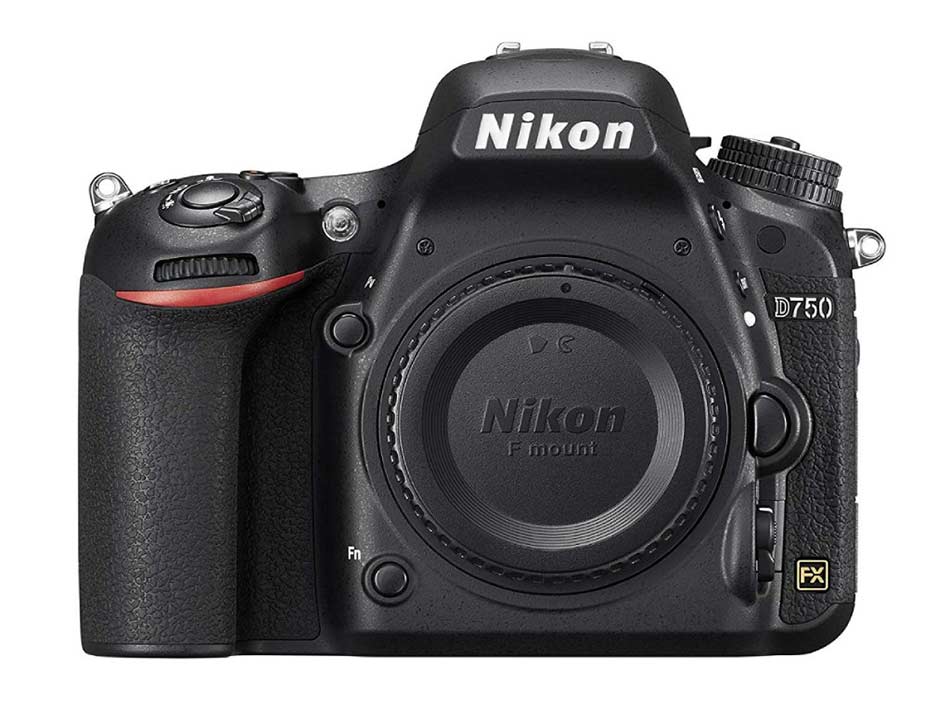
The Nikon D750 is the cheapest full frame camera that Nikon carries, which means it doesn’t come with anything fancy like 4K video or fast live view AF, but it still comes with a tilting rear-screen and an incredible dynamic range.
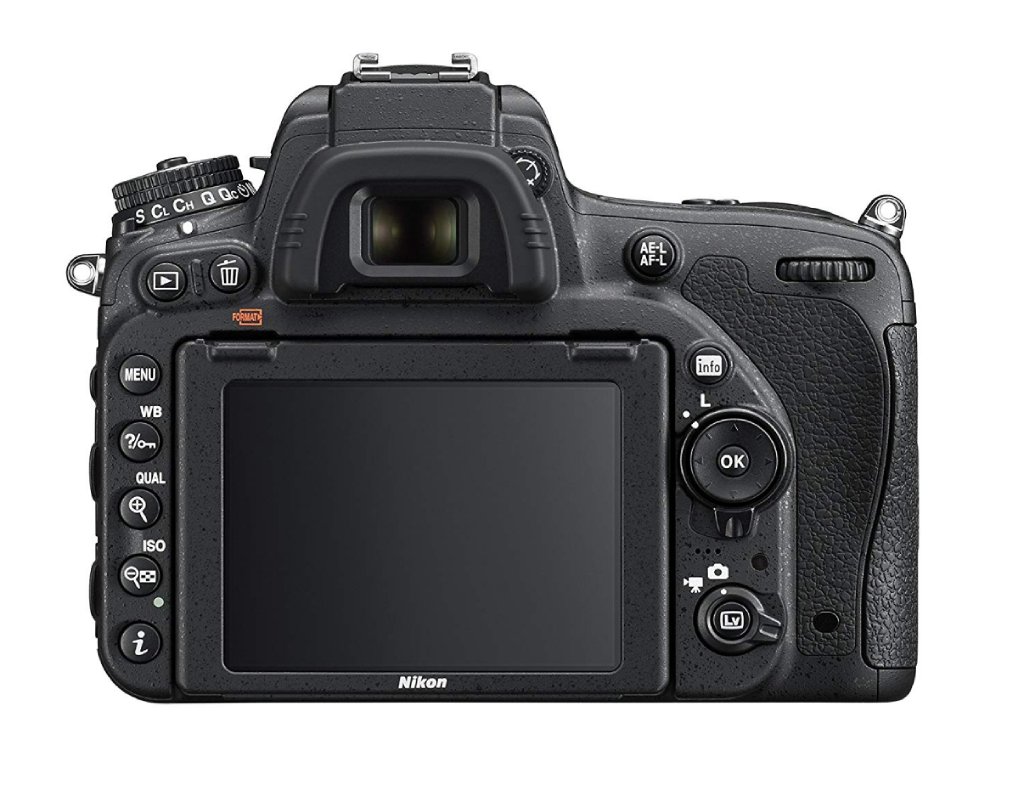
The Nikon D750 controls work similarly to Nikon’s other hobby-level DSLRs instead of its professional DSLRs (which can be a pro or con depending upon how you look at it).
The Nikon D750 has a 51-point AF system, shoots in 1080p full-HD at up to 60fps and weighs under 2 lbs.
Other Nikon D750 Specs include:
- 24MP full-frame CMOS sensor
- 3.2” 1,229k-dot LCD tilting screen
- 51-point AF system
- Wi-Fi connectivity
- 1080p video at 60fps
- ISO range of 100-12,800
- 1/4000th max shutter speed
- 1.7 lbs
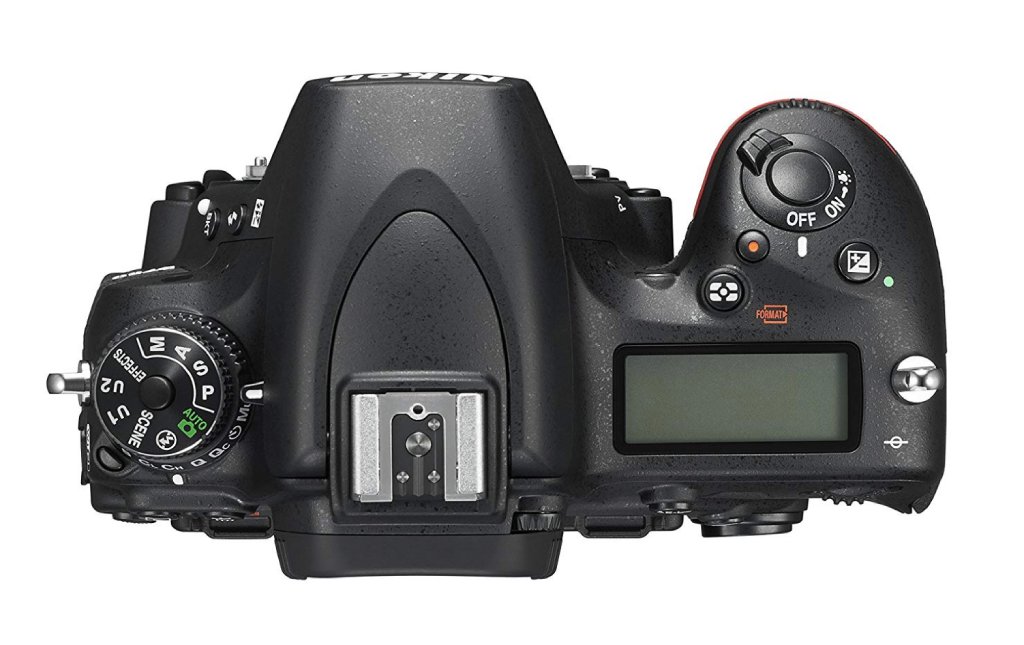
There are rumors that the Nikon D750 is about to be replaced, which is good news for bargain hunters because that means the price is about to go down.
Until then, though, you can purchase the Nikon D750 brand new on Amazon for $1,200.
Or, you can head over to MPB and get it starting at $885.
Prices vary depending on the condition of the camera, but even the more “expensive” like-new ones are $1,109, and that’s a pretty darn good deal for a full frame camera with this kind of specs!
Sony A7 II
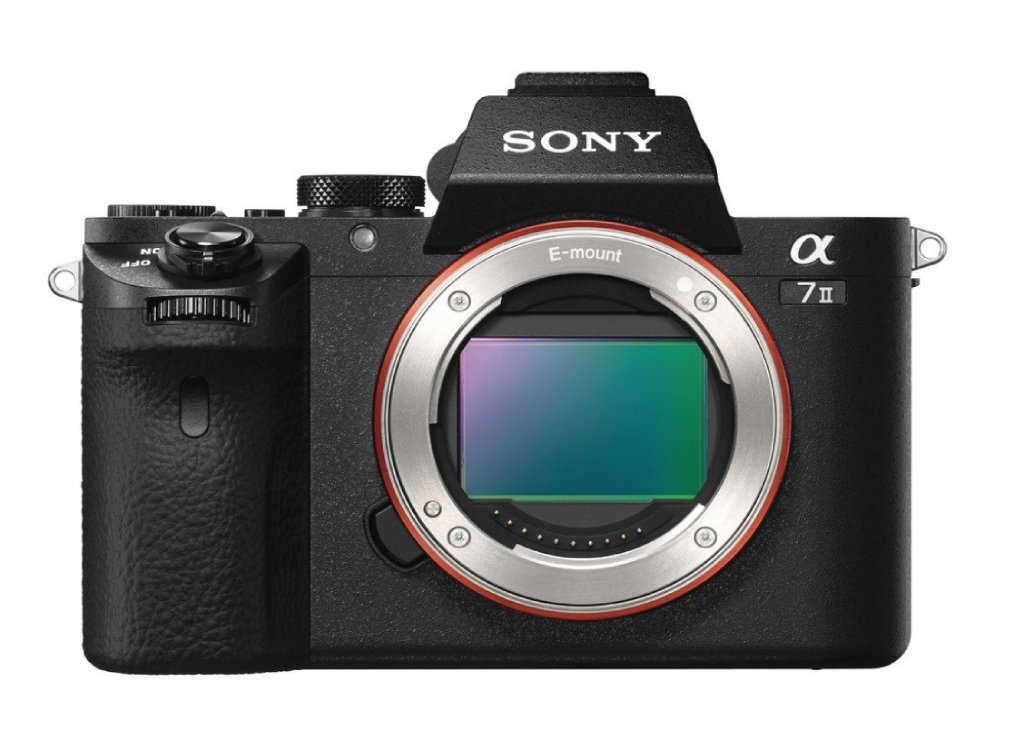
Out of all of our cheap full frame cameras, the Sony A7 II is the cheapest.
The Sony A7 II features in-body image stabilization, 5fps burst speed, and a 24 megapixel CSC. It’s built out of magnesium alloy, which keeps the body light and comfortable in your hands.
Other Sony A7 II specs include:
- 24.3MP full-frame CMOS sensor
- 5-axis sensor-based image stabilization
- AF system with 117 detection points
- 3-inch tilting LCD screen with 1.23 million dots
- 2.36M dot OLED viewfinder
- 1080 full HD video capabilities
- Built-in Wi-Fi
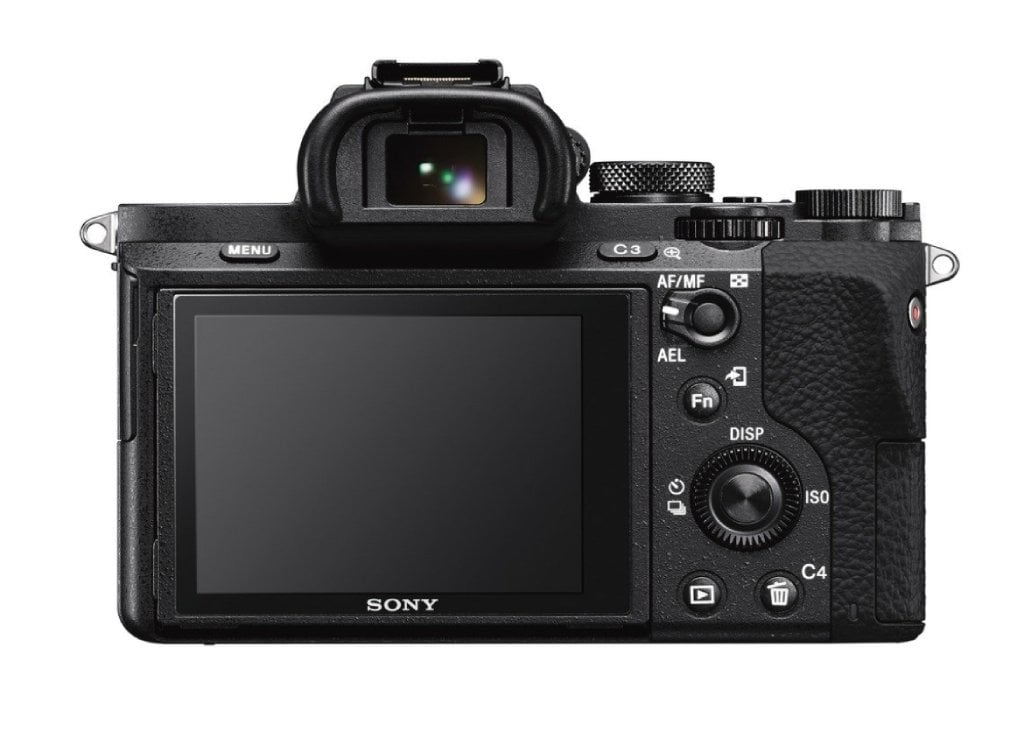
The one complaint with the Sony A7 II is that it didn’t feature enough upgrades from the Sony A7 to be worth the price when it came out, but since this full frame camera was released 5 years ago, this point is no longer relevant.
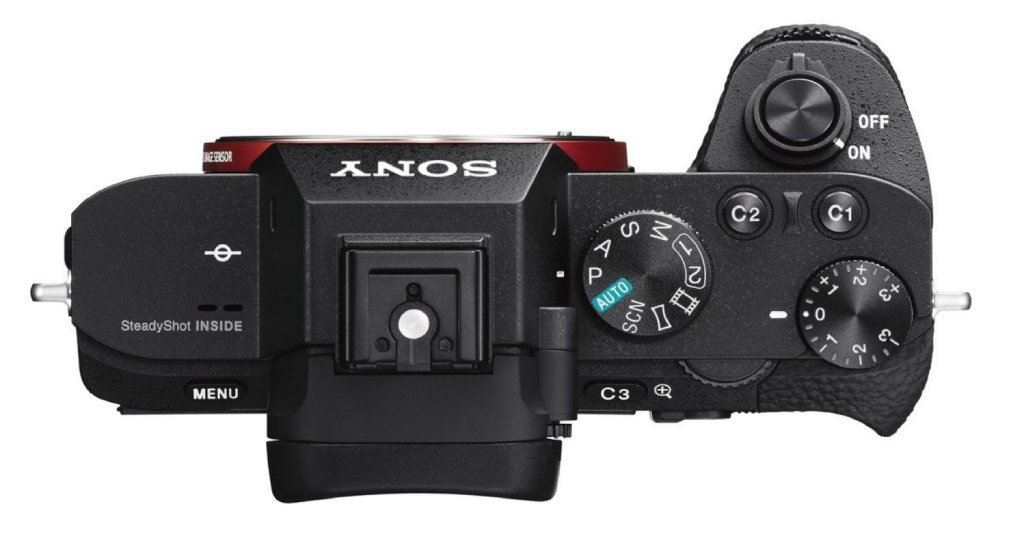
You can buy a new Sony A7 II on Amazon for $900.
Or, MPB is offering a Sony A7 II in excellent condition for $815. Either way, that’s not a bad deal at all!
Canon EOS RP
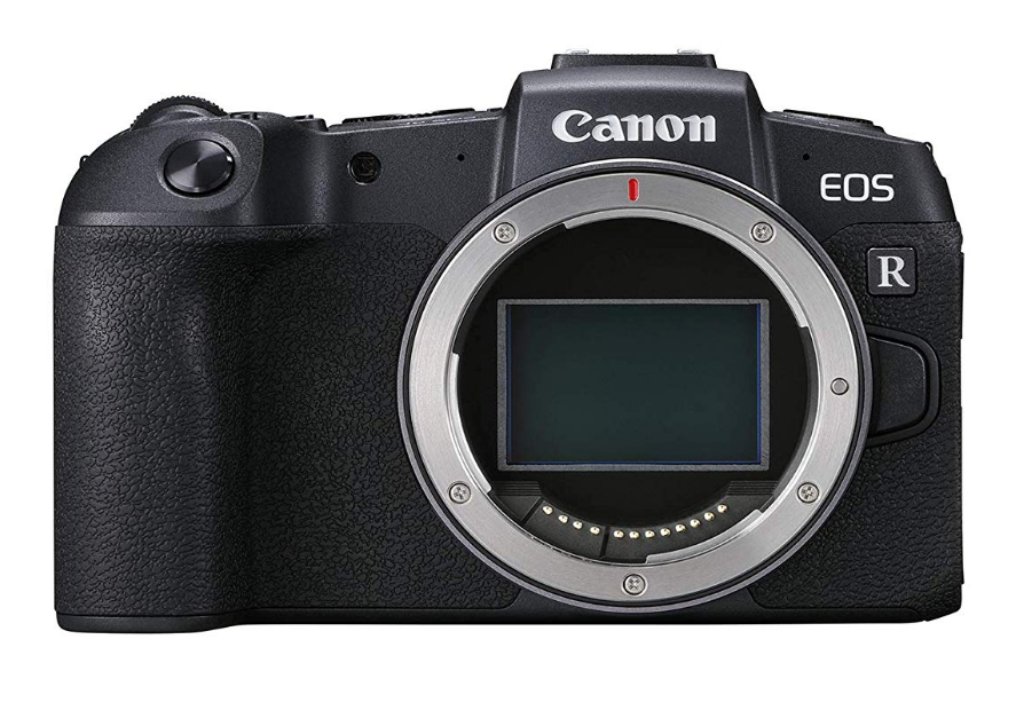
Finally, the Canon EOS RP, or as some call it, Canon’s “baby.” The best thing about the Canon EOS RP is that it gives you access to all of the RF lenses for much cheaper than previously possible.
The Canon EOS RP is also compact and it comes with a DSLR lens converter so you can use both the newer RF lenses and your older, pre-owned EF-mount lenses.
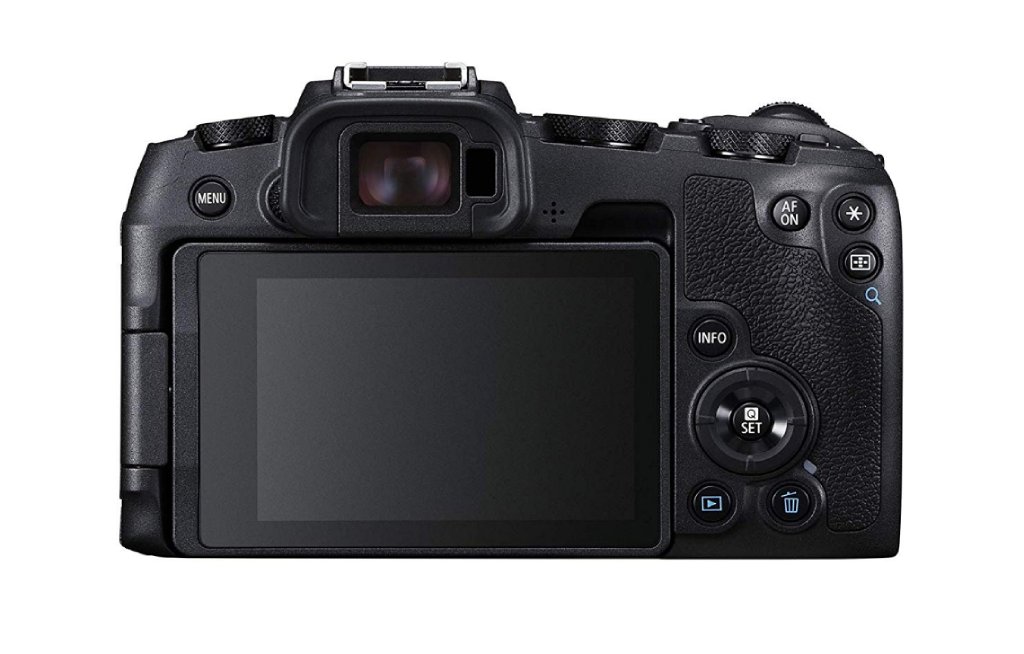
But, the Canon EOS RP is a good camera in and of itself. It comes with a 26.2MP CMOS sensor, the DIGIC 8 processor, and this camera is the only camera with 4K video capabilities on our list.
Other Canon EOS RP specs include:
- ISO range of 100-40000
- 6240 x 4160 max resolution
- 1/4000 sec max shutter speed
- Fully articulated 3” screen
- 1.07 lbs
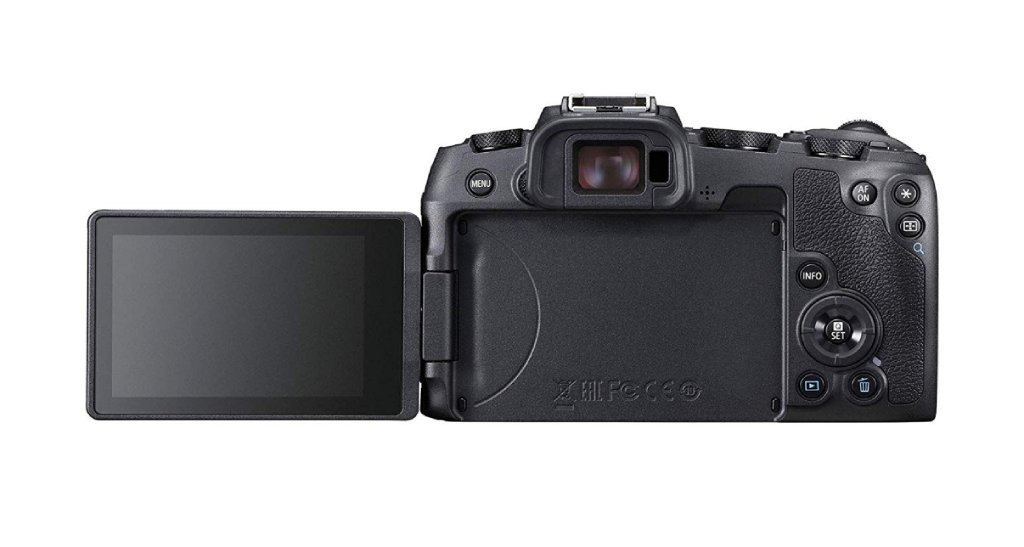
You can purchase a Canon EOS RP on Amazon for $1,000.
You can also save $100 and go pick up the last Canon EOS RP MPB.com has up right now for $900.
Why MPB?
MPB is the website photographers use to sell, buy and switch their gear for a few reasons. MPB offers a 6 month warranty on all of their products, which is almost unheard of in the used technology world.
You can trade in your gear to make your new (used) gear cheaper. You can also find the newest used cameras on MPB. All of the cameras I featured on this list are relatively new, but pretty much as soon as a replacement camera comes out, you can be assured that MPB will have stock of the camera that was just replaced.
But, the real reason I trust MPB with my hard-earned money is their grading system. I know exactly the condition my new camera is going to arrive in. No more guessing with sites like eBay or Craigslist!
Head over to MPB to browse these and other inexpensive full frame cameras.
We Recommend
3 Excellent Digital Cameras for Video
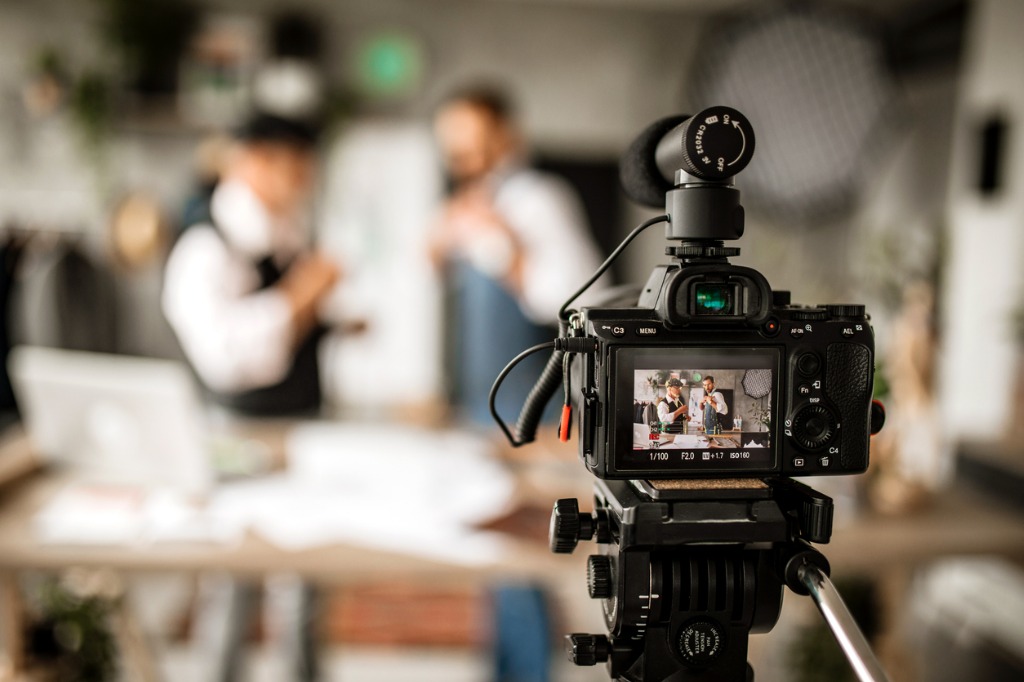
photo byhobo_018 via iStock
What are the best cameras for video? That’s a question every person asks themselves countless times when deciding on a new camera.
It’s a difficult question, with the best answer being, it depends! How experienced are you? What are you going to be filming with digital cameras for video? Is shooting video a hobby or a profession for you? What’s your budget? These are all important questions you need to answer before you can decide which of these digital cameras for video will work best for you.
Once you’ve answered those questions, now you are ready to start looking for a camera. And lucky for you, I’ve outlined three excellent digital cameras for video below. One of which will undoubtedly be the perfect camera for you!
Beginner Video Cameras for Sale
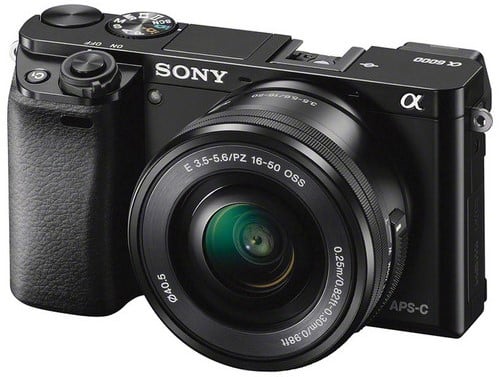
If you are a newbie, the Sony Alpha A6000 is the ultimate beginner digital camera for video. It’s pocket-sized, easy to use, incredibly lightweight, and best of all, cheap as can be!
Introduced in 2014, the A6000 is an oldie but ohhhh it’s a goodie. It’s a testament to just how spectacular this camera is that after all these years it’s still considered one of the best beginner digital cameras for video on the market.
Taking a look at the camera specs, the Sony A6000 has a large 24-megapixel APS-C sensor. That’s fantastic in comparison to most other entry-level cameras, and helps deliver terrific quality video. Also, the autofocus has 179 phase detection points and works brilliantly in every test I’ve put it through.
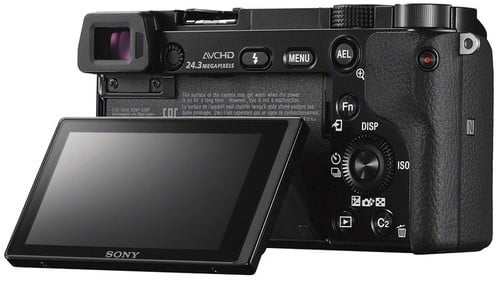
Video is recorded in full HD 1080p, which is not quite the quality of 4K, but is more than sufficient while learning and getting started in videography. If 4K or higher video is really a deal-breaker for you, consider one of the higher-end digital cameras for video I cover later in the article.
On a budget and want an even better bargain? Try checking out MPB.com. They currently have a number of used Sony A6000’s for sale, and are a superb resource for finding video cameras for cheap! Once you’ve found that perfect camera, it’s a wonderful place to pick up lenses for cheap as well!
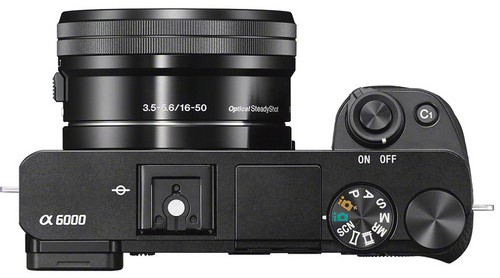
Here is a more detailed overview of the specifications of this great digital camera for video:
- Model number: ILCE-6000
- Sensor: 24.3 million APS-C (23.5 x 15.6mm) CMOS sensor
- Focal length conversion: 1.5x
- Memory: SD/SDHC/SDXC
- Viewfinder: Electronic viewfinder, 0.39 inches, 1,440,000 dots
- Video: 1080p
- ISO range: 100 to 25,600
- Autofocus points: 179 phase detection points, 25 contrast detect points
- Max burst rate: 11fps
- Screen: 3-inch, 921k-dot tilting LCD
- Shutter speeds: 1/4000-30sec plus Bulb
- Weight: 344g (with battery and memory card)
- Dimensions: 120 x 66.9 x 45.1mm
- Power: NP-FW50 rechargeable lithium-ion battery
What are the Best Video Cameras for Making YouTube Videos?
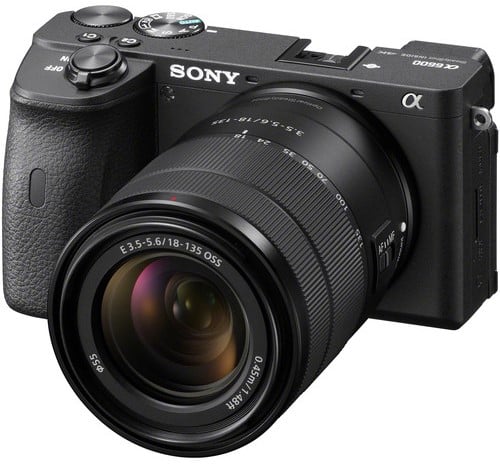
The Sony Alpha A6600 is Sony’s newest high-end crop censor mirrorless camera. Released in 2019, it’s five years newer than the aforementioned A6000, and this digital camera for video has received some major upgrades for those looking to take the next step as a filmmaker!
The first noteworthy change is that the a6600 can capture video in 4K HDR. Additionally, there are no time restrictions on how long you can record in 4K, and issues involving overheating while recording for extended periods of time have mostly been dealt with.
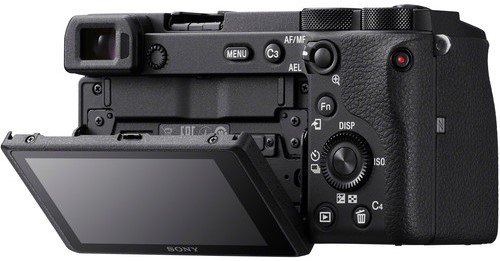
As long as you have this bad boy plugged in, you can now record as long as you want! This makes it the go-to digital camera for video for many vloggers and YouTubers today.
Furthermore, the camera body itself has some significant upgrades as well. The A6600 has a weather-sealed magnesium alloy body, 5-axis in-body image stabilization, mic/headphone jacks, 425 phase detection points in autofocus, and uses a longer lasting battery.
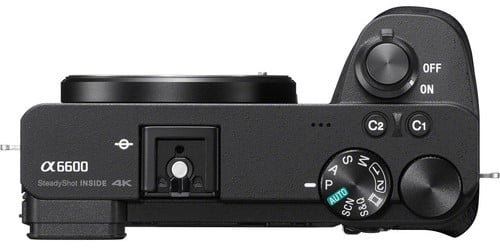
Take a look at the full camera specs for this intermediate digital camera for video here:
- Sensor: 24.2MP APS-C CMOS
- Image processor: BIONZ X
- AF points: 425 phase/contrast-detection
- ISO range: ISO 100-32,000 (51,000)
- Max image size: 6000x4000 pixels
- Metering modes: Multi-segment, Center-weighted, Spot (standard/large), Average, Highlight
- Video: 4K 30/25/24p, 1080 120/60/30/25/24p
- Viewfinder: EVF, 2,359k dots, 0.39 type
- Memory card: 1x Memory Stick/SD/SDHC/SDXC (UHS-I)
- LCD: 3.0-inch, 922k dots, tilting touchscreen
- Max burst: 11fps, 46 raw, 116 JPEG
- Connectivity: Wi-Fi, Bluetooth, NFC
- Size: 120.0 x 66.9 x 69.3mm
- Weight: 503g
Learn More:
Best Camera for Video
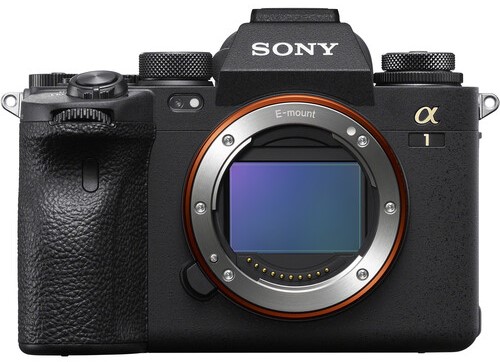
What is at the top of the list of the best digital cameras for video out there today? If price isn’t an issue the answer is simple, it’s the Sony Alpha 1. Just released earlier this year, this mind-blowing digital camera for video seems to have come out of a fantasy land!
It’s without a doubt tops among digital cameras for video Sony has ever released and here is exactly why: It has an out-of-this-world 50-megapixel sensor, dual memory card slots, 15 stops of dynamic range, 759 phase detection points in autofocus, and can shoot video in a staggering 8K!
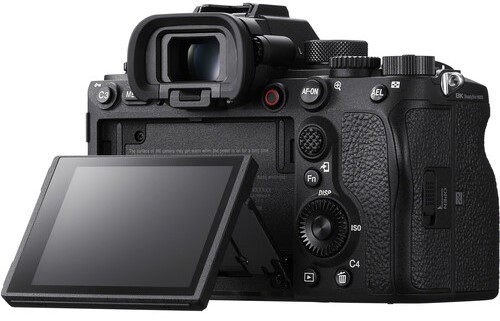
In addition to recording 8K at 30FPS, it can also capture 4K at up to 120FPS. When filming in 8K, Sony claims the Alpha 1 can run continuously for up to 30 minutes thanks to an all-new passive heat dissipation system.
With a hefty price tag, this digital camera for video is certainly not for everyone. However, if you work professionally with video or are a professional filmmaker, you may see significant improvements in the quality of your work if you decide to switch over to the modern technological marvel that is the Sony Alpha 1!
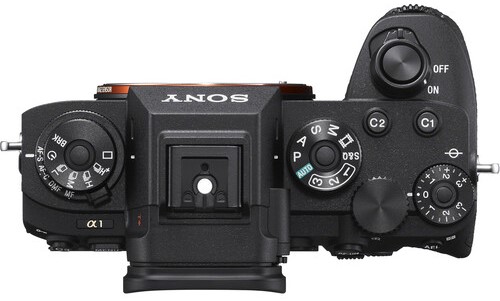
See below the entire list of specifications for this illustrious digital camera for video:
- Sensor: 50.1MP full-frame EXMOR RS CMOS
- Image processor: BIONZ XR
- AF points: 759 phase detect, 425 contrast detect
- ISO range: 100-32,000 (expandable to 50-102,400)
- Stabilization: 5-axis, up to 5.5 stops
- Max image size: 8640 x 5760px (199MP with multi-shot mode)
- Video: 8K 30p (XAVC HS 8K), 4K (XAVC HS 4K or XAVC S 4K) up to 120p, 10-bit 4:2:0 internal, 16-bit raw via HDMI
- Viewfinder: 9.44m dots, 100% coverage, 0.9x magnification, 240fps refresh rate
- Memory card: 2x CFexpress Type A/UHS-II SD/SDHC/SDXC
- LCD: 3-in tilting touchscreen, 1.44m dots
- Max burst: 10fps mechanical shutter, 30fps electronic shutter
- Connectivity: Wi-Fi 5Ghz and 2.4GHz, Bluetooth
- Size: 128.9 x 96.9 x 80.8mm
- Weight: 737g body only, including battery and memory card
Final Thoughts on Digital Cameras for Video
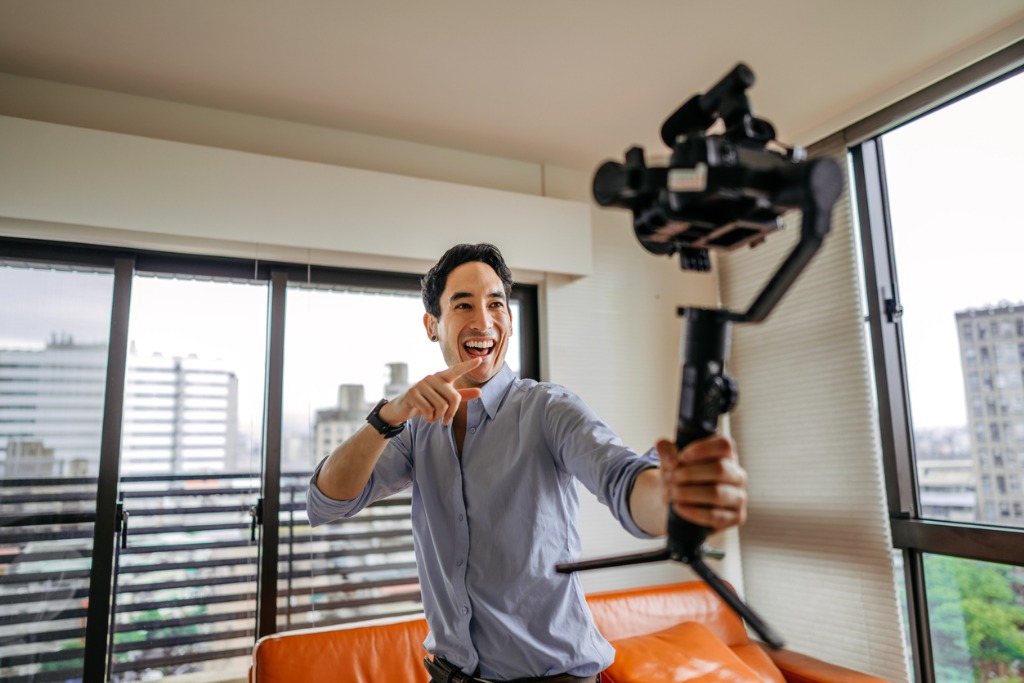
photo bymixetto via iStock
No matter which of these digital cameras for video you decide to buy, it’s up to you to put in the time and hard work it takes to create amazing videos - the camera you buy isn’t going to make you a video star!
Always remember, it’s the person behind the camera that makes the camera great, not the other way around.
Learn More:
We Recommend
3 Hot Black Friday Cameras You Can Still Get on the Cheap
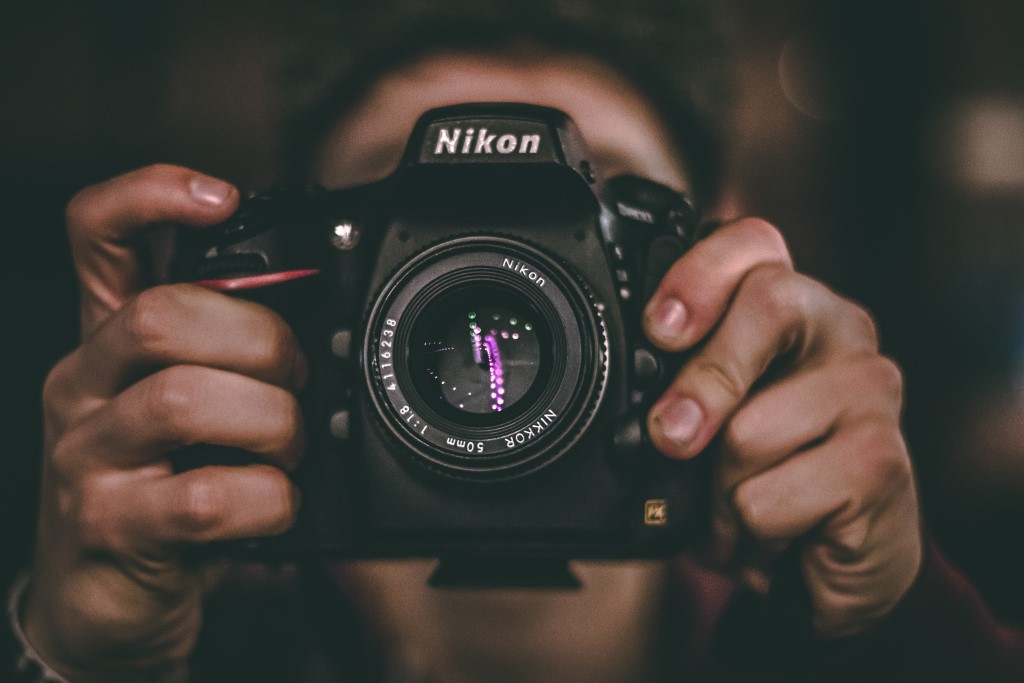
Photo by Harold Wijnholds on Unsplash
Black Friday may be over, but that doesn’t mean you can’t still get great deals on Black Friday cameras.
As we ramp up for the holidays, camera manufacturers are trying to convince you to spend your money where you most want to, on their products. And the way they are doing so is by making their sales longer and their prices cheaper.
Here are the best cheap cameras you can still get at bargain prices.
Nikon D750
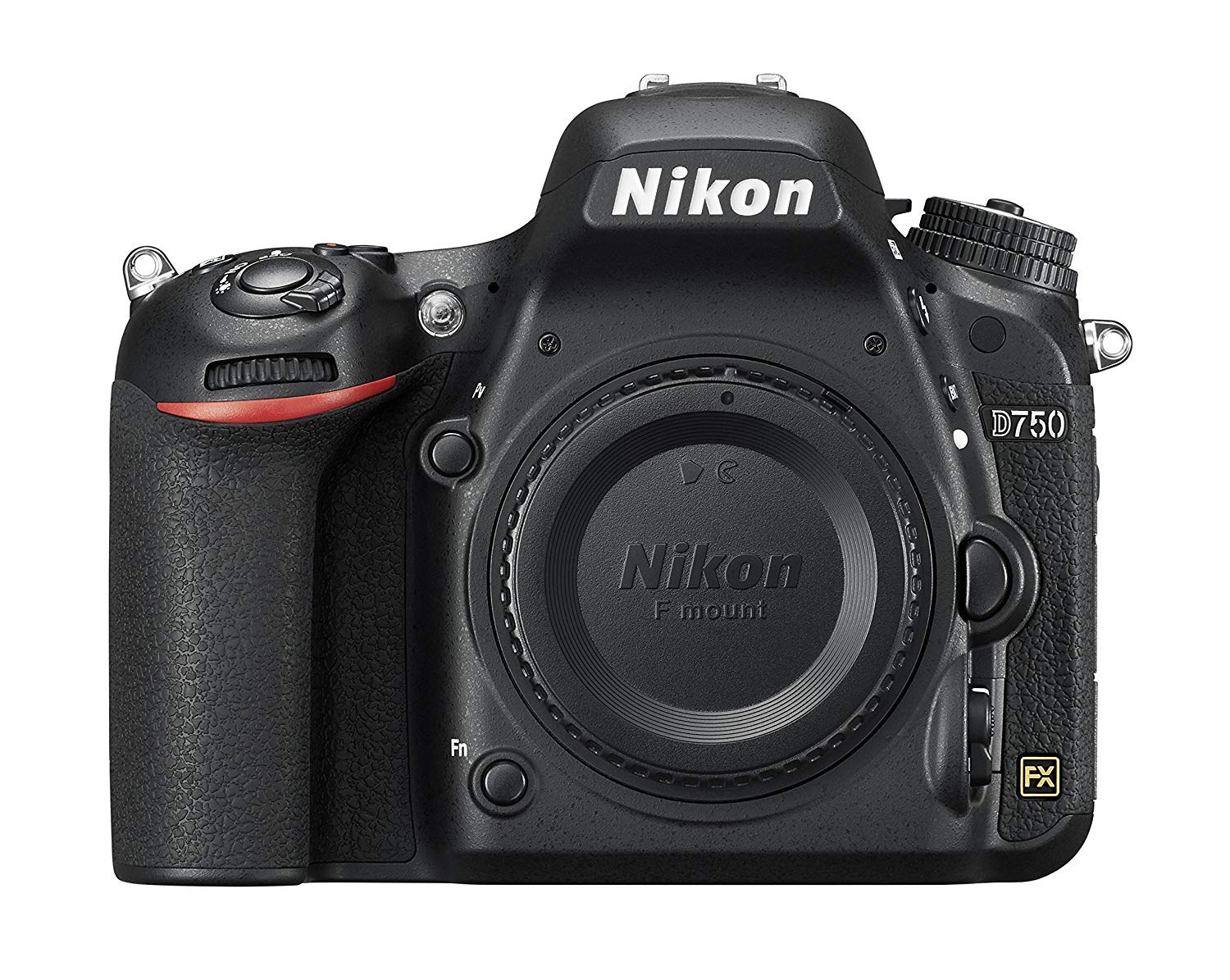
The Nikon D750 may be a few years old, but consumers still love it.
The Nikon D750 tops our cheap DSLRs list because its a full frame DSLR with a 24.3MP sensor. It shoots 1080p video and features 6.5fps burst shooting.
Plus, people went crazy for this Black Friday camera because it was over $1,000 off.

We did a review on the Nikon D750 a few years back. Check it out for a more in-depth review.
You can pick up the Nikon D750 on Amazon for $1,200 right now, which is $800 off.
You can also pick up a used Nikon D750 on MPB starting at $730.
Nikon D3500
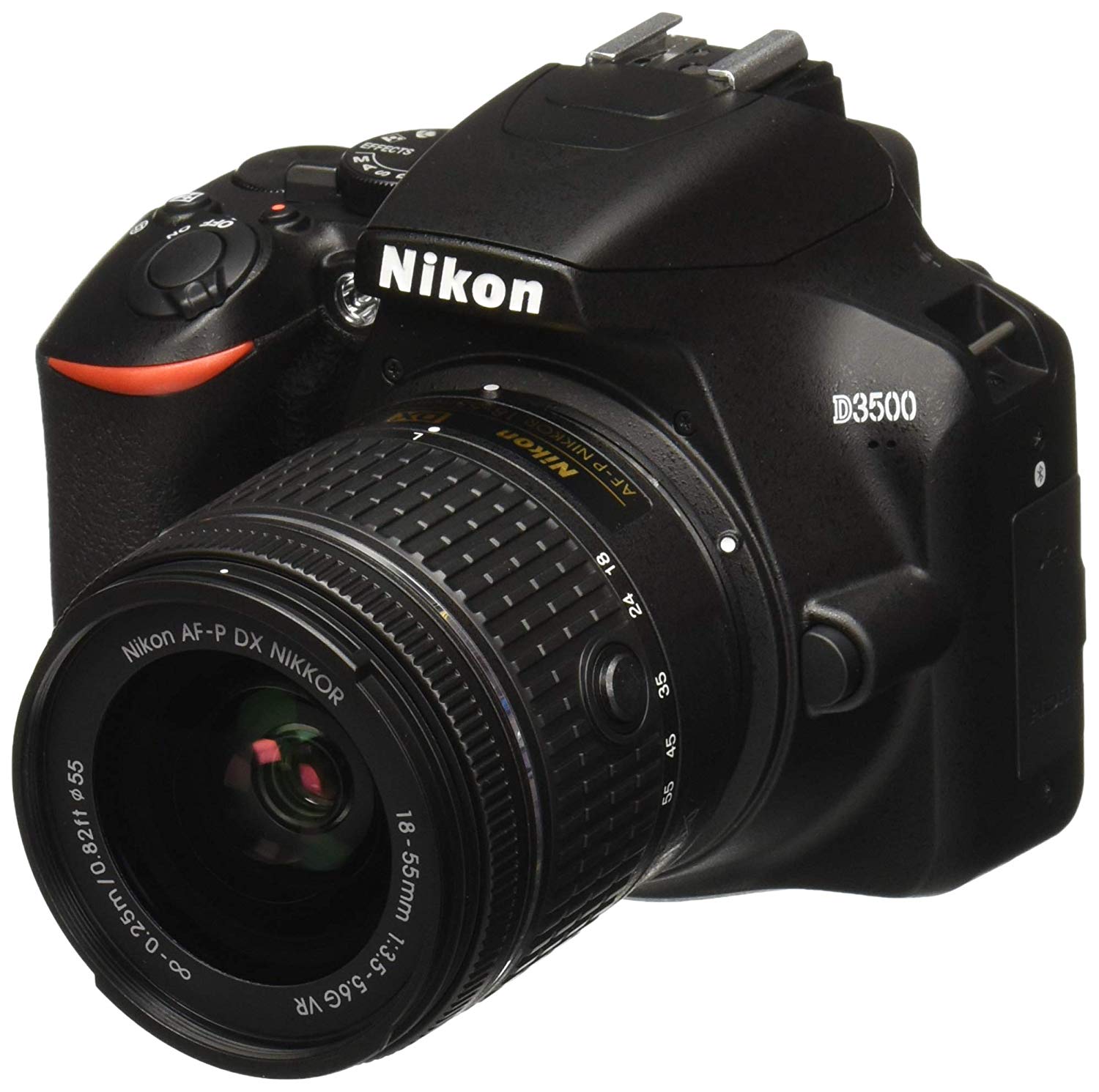
The Nikon D3500 is on many “budget cameras” lists, but it’s cheaper than usual right now if you’re interested in purchasing the Nikon D3500.
The Nikon D3500 is a current Nikon model with a 24.2MP sensor. It’s a great camera for someone who is newer to photography because this is the type of budget camera you can grow with.
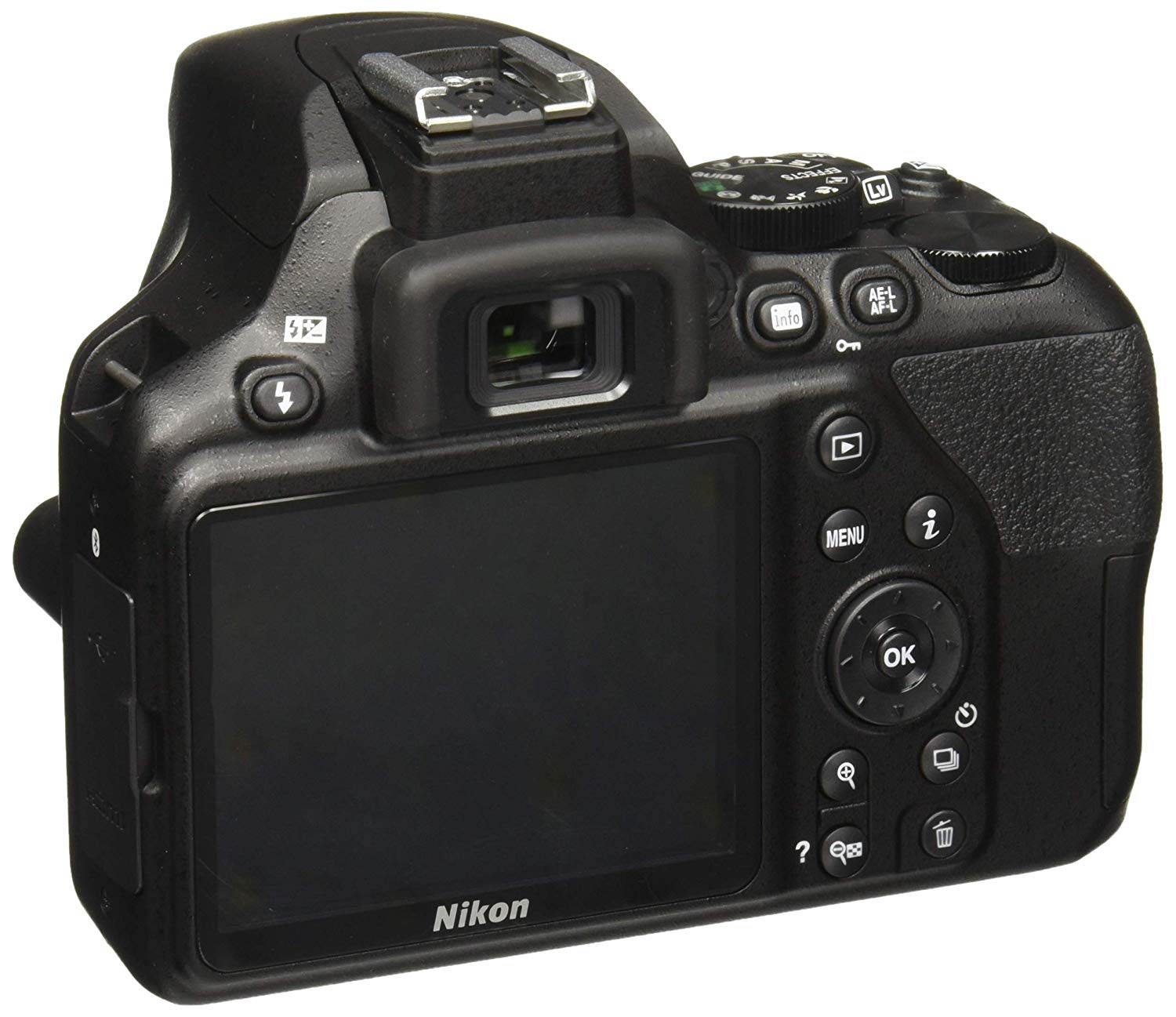
You can also send photos from your Nikon D3500 directly to your smartphone to edit and upload to social media.
The Nikon D3500 can record Full HD video at 1080p, or shoot in burst mode at up to 5 fps.
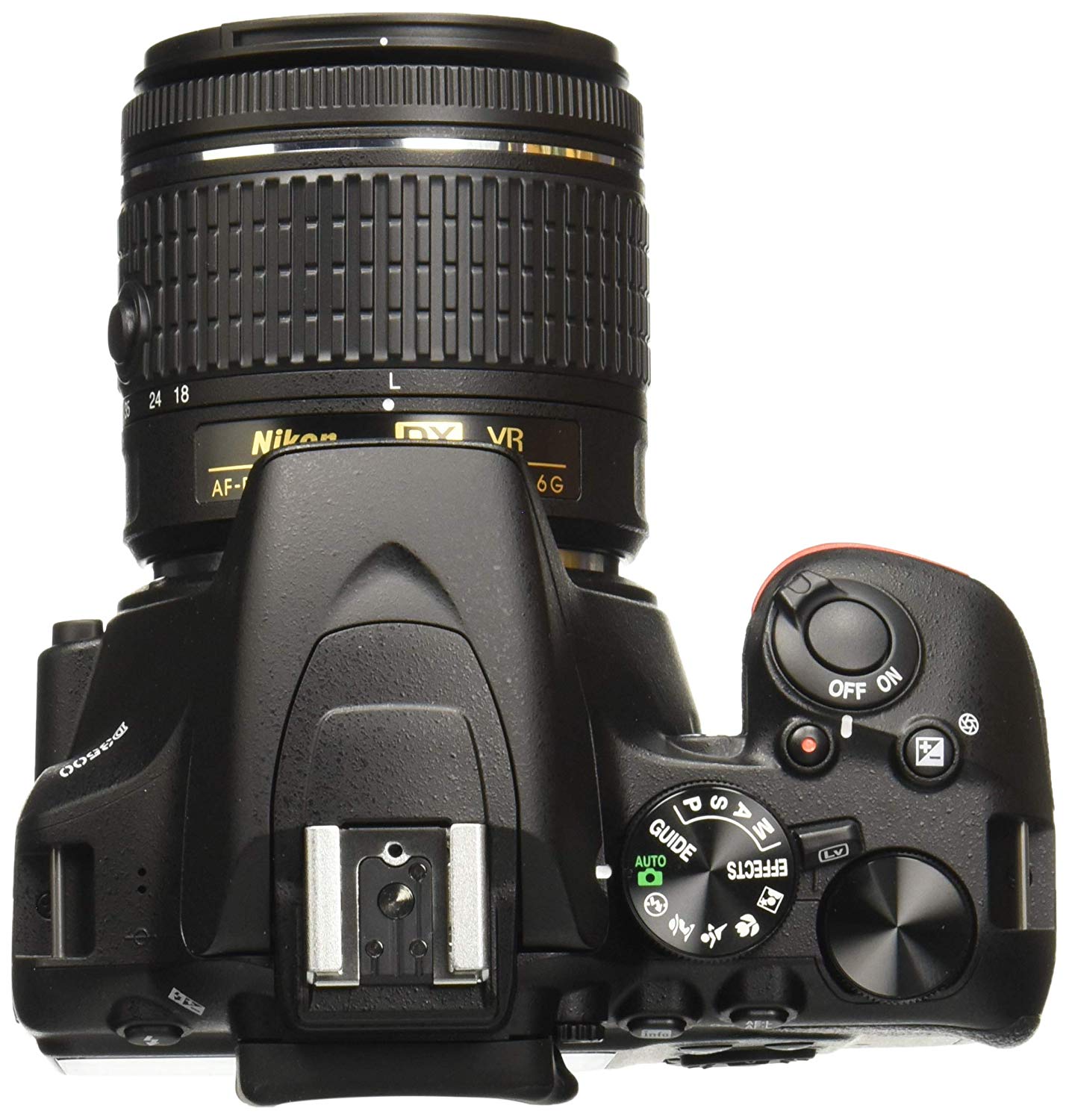
As soon as you start to explore the Nikon D3500 more, you’ll see it’s marketed for someone looking to upgrade from their smartphone camera with options like Guide Mode and a huge array of compatible lenses to make this camera a great go to.
It’s currently available on Amazon for just $400. While MPB doesn’t currently have this model in stock, the best thing about MPB is that it’s a used camera site that rotates through hundreds of different products every day, so while it isn’t there today it could be tomorrow!
Learn More:
Sony A7 III
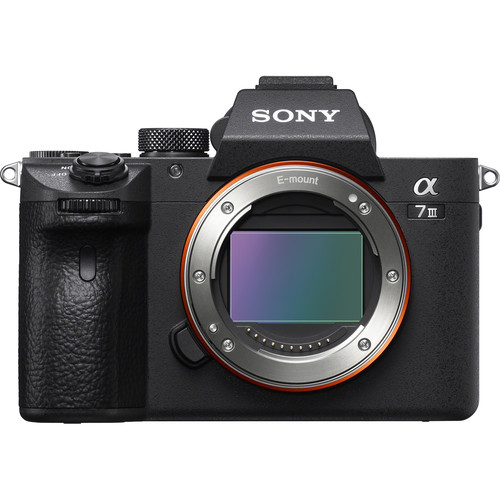
While cheap DSLRs are always fun, cheap mirrorless cameras are even harder to come by which is why I’m so excited about the Sony A7 III sale.
The Sony A7 III comes with a 24.2MP Exmor R CMOS sensor, can shoot 4K video at up to a whopping 30fps and features 15 stops of range.
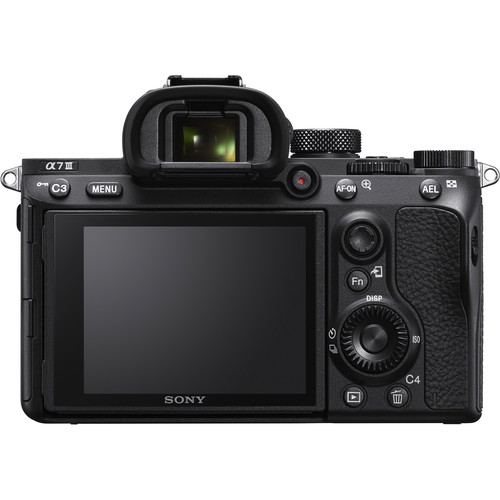
The Sony A7 III also features a touchscreen, in-body image stabilization and 93% autofocus coverage which means this is easily the most capable of all the Black Friday cameras.
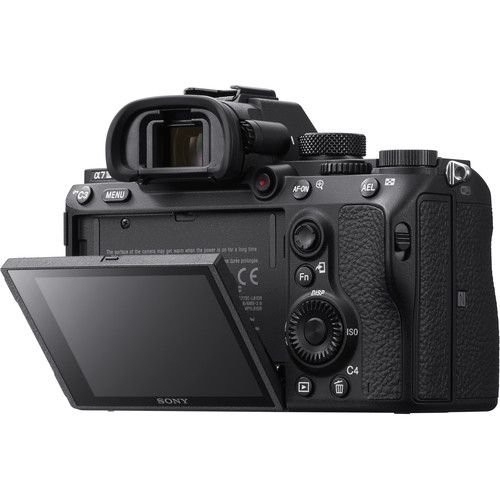
The Sony A7 III is currently available on Amazon for $1,800,which is still 10% off.
Or you can head over to MPB and get one starting at $1,650.
I love using MPB because you can get Black Friday cameras, at Black Friday prices, year round.
Plus, MPB uses an excellent rating system on all of their products, so you know exactly what you are getting.
Don’t feel like you need to be left out of the Black Friday madness because you couldn’t afford what you wanted. Head over to MPB and check out their used selection now and get smokin’ deals on pre-owned gear year-round.
Learn More:
We Recommend
3 Must-Have Lenses for Landscape Photography

photo byshilh via iStock
I know what you’re thinking…
How can anyone possibly narrow down all the excellent landscape lenses to a set of just three?
It’s true that there are a lot of fantastic lenses you can use to capture gorgeous landscapes, but standing above them all is the “holy trinity” of landscape photography - a wide-angle zoom, a standard zoom, and a telephoto zoom.
More specifically, something like the RF 15-35mm f/2.8L, the RF 24-70mm f/2.8L, and the RF 70-200mm f/2.8 L for the Canon EOS R is what I’m talking about.
I know, I know...there’s no prime lenses in the holy trinity.
But as I explain in my video below, there are some very good reasons why you should pursue the holy trinity of zoom lenses and forget about primes for landscapes.
Give the video a watch and find out what lenses qualify as the holy trinity for Canon EF and RF lenses, Nikon F and S lenses, and Sony E-mount lenses.
Below, I’ve offered up a quick overview of why the holy trinity is your best bet as a landscape photographer.
Recommended Landscape Photography Books:
- The Landscape Photography Book: The Step-by-Step Techniques You Need to Capture Breathtaking Landscape Photos Like the Pros
- National Geographic Greatest Landscapes: Stunning Photographs That Inspire and Astonish
- The Art, Science, and Craft of Great Landscape Photography
The Holy Trinity
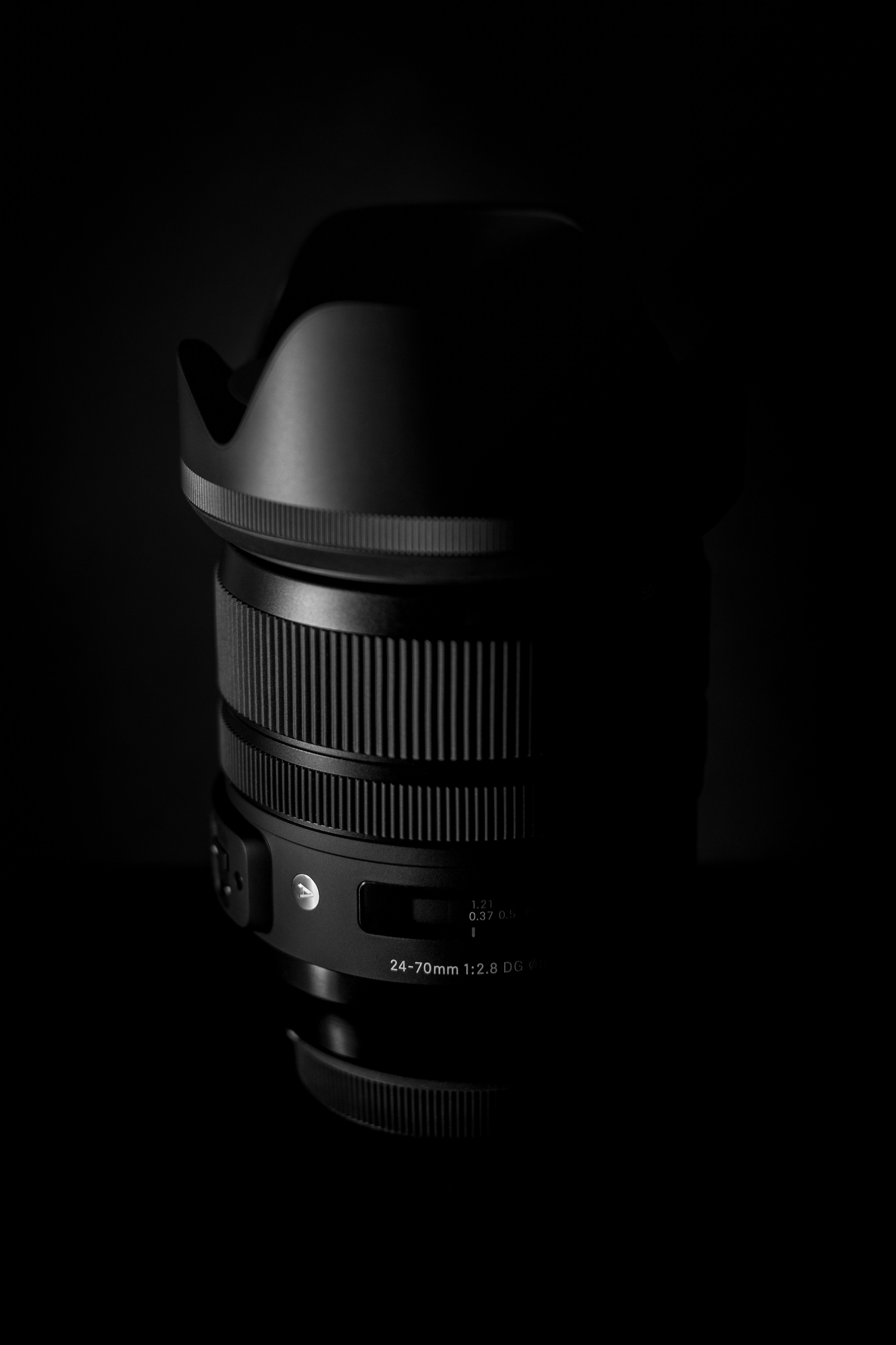
Photo by Jason Wong on Unsplash
As I mentioned earlier, the holy trinity for the full frame EOS R includes the RF 15-35mm f/2.8L, the RF 24-70mm f/2.8L, and the RF 70-200mm f/2.8 L.
I’ve talked about my love for Canon’s RF lenses before, and I’ll do it again here - each of these lenses is simply spectacular.
The crazy part is that they’re spectacular on the EOS R, which can’t come close to maximizing the quality that these lenses are capable of. That’s something that the EOS R5 will certainly be able to do, and boy am I excited to get my hands on one of those cameras later this year!
As I explain in my video, there are some minor differences in focal length and aperture in the holy trinity depending on what camera you have and what mount the camera uses.
But, by and large, you’re looking at something in the 14-24mm range, as well as a 24-70 and a 70-200mm. This is most likely your best bet for the best lens for landscape photography combination.
Best Lens for Landscape Photography: Should You Get f/2.8 or f/4 Lenses?
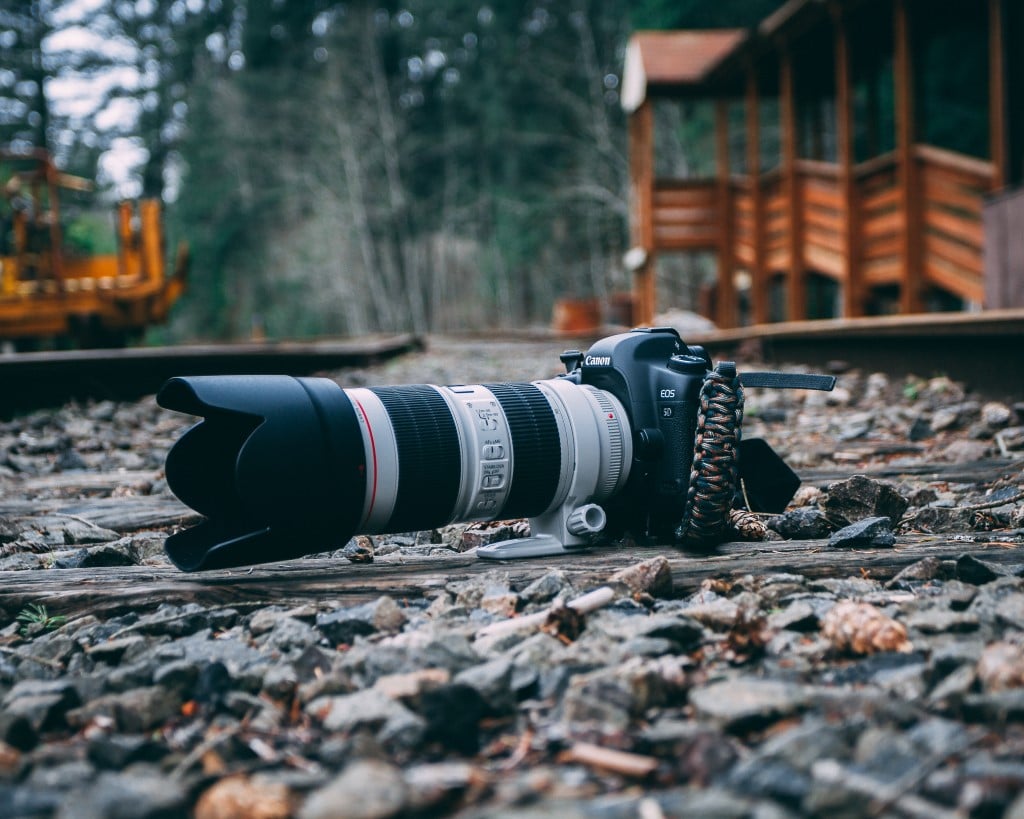
Photo by 2 Bro’s Media on Unsplash
There are very few situations in which you need to shoot at f/2.8 in landscape photography. Low-light situations like astrophotography are a prime exception.
That being the case, if landscapes are all you shoot, an f/4 lens will be plenty fast for your needs. In fact, you’ll likely not even shoot at f/4 all that often!
I personally like having f/2.8 lenses over f/4 lenses because of their low-light capabilities. I’m not out every night photographing the stars by any means, but when I do, an f/2.8 lens is much more capable than an f/4 lens.
But, budget is the ultimate factor for most people, and since f/2.8 lenses are usually much more expensive, it makes sense for a lot of folks to go with f/4 lenses. I’ve shot many landscapes with a 24-70mm f/4 and they turned out great, so I’m not poo-pooing f/4 lenses by any means.
I suppose the advice I’m trying to give here is that you need to buy the best lens for landscape photography you can afford. Your lenses will last you for decades if you care for them properly, and they have a more significant impact on image quality than your camera, so putting your money towards good glass will definitely pay dividends.
Learn More:
Benefits of Wide-Angle Zooms
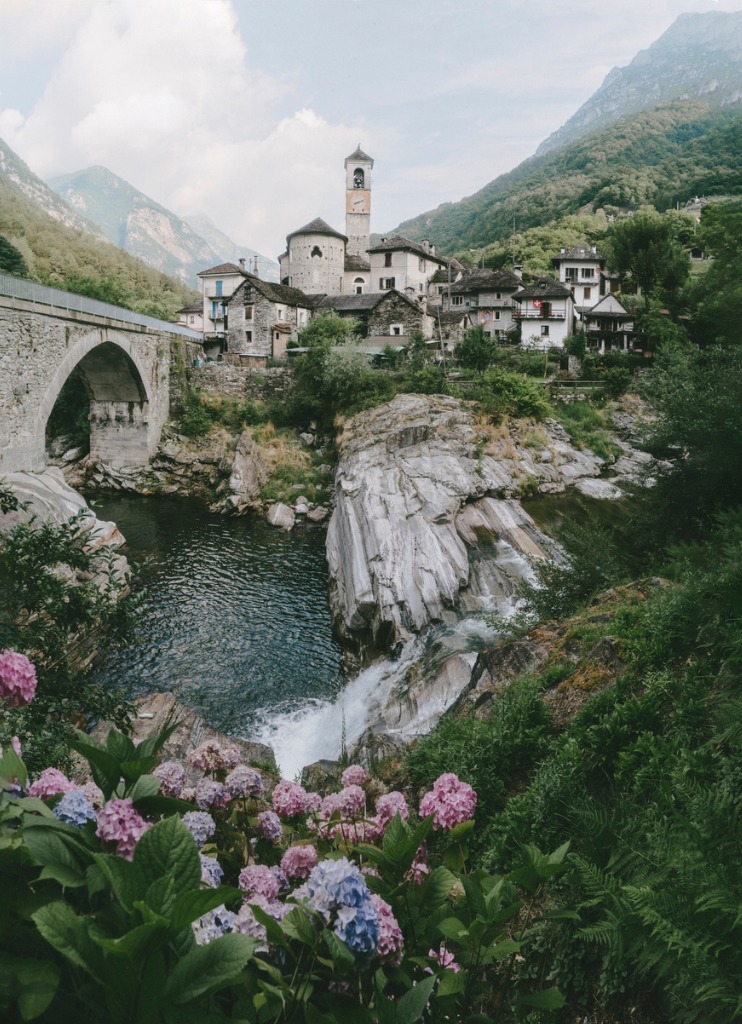
photo by Oleh_Slobodeniuk via iStock
The biggest asset of a wide-angle zoom like my Canon RF 15-35mm f/2.8 is that you can take photos that look so much different than what our eyes see.
The distortion of a wide-angle lens isn’t for everyone, but I really love that distortion in a landscape - it looks unique and interesting, and that’s precisely what you want in a photo.
Besides, wide-angle lenses allow you to include a ton of foreground interest. Doing so gives your shots more depth and makes the photo seem more immersive too because you can create a layered shot with elements in the foreground, midground, and background. These are some of the primary reasons why a wide-angle zoom is considered a best lens for landscape photography.
Benefits of a Standard Zoom
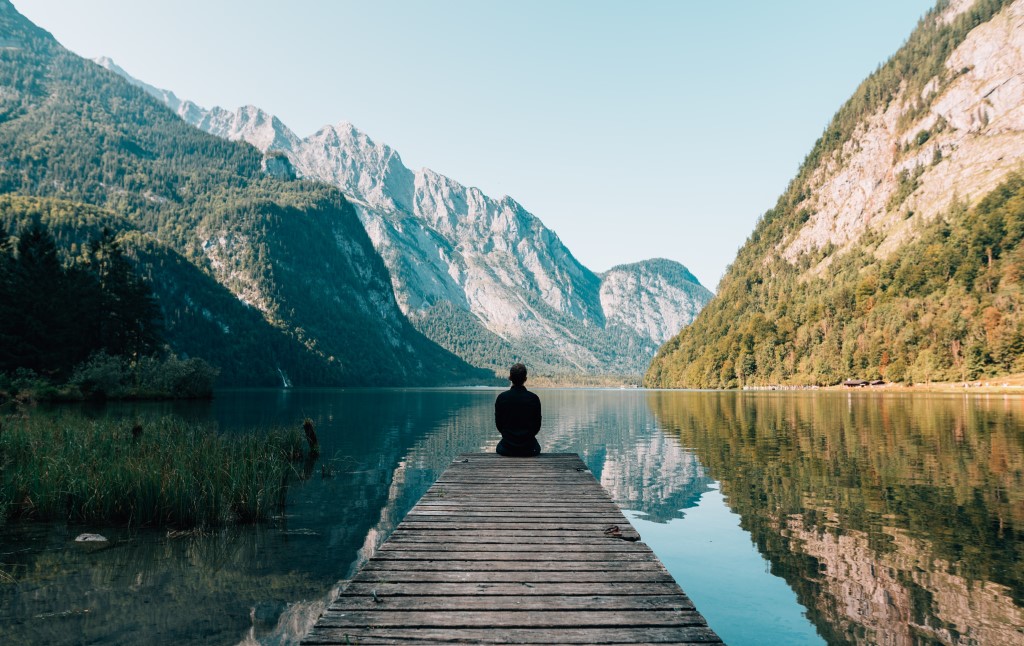
Photo by Simon Migaj from Pexels
Having a 24-70mm lens in your kit is a must because it is such a versatile lens.
I’d say that most landscape photographers - myself included - would choose a 24-70mm lens as being the only one they could take on an epic landscape photography trip.
You can go wide at 24mm, shoot telephoto at 70mm, and have a ton variability in between.
This is an easy lens to use, too.
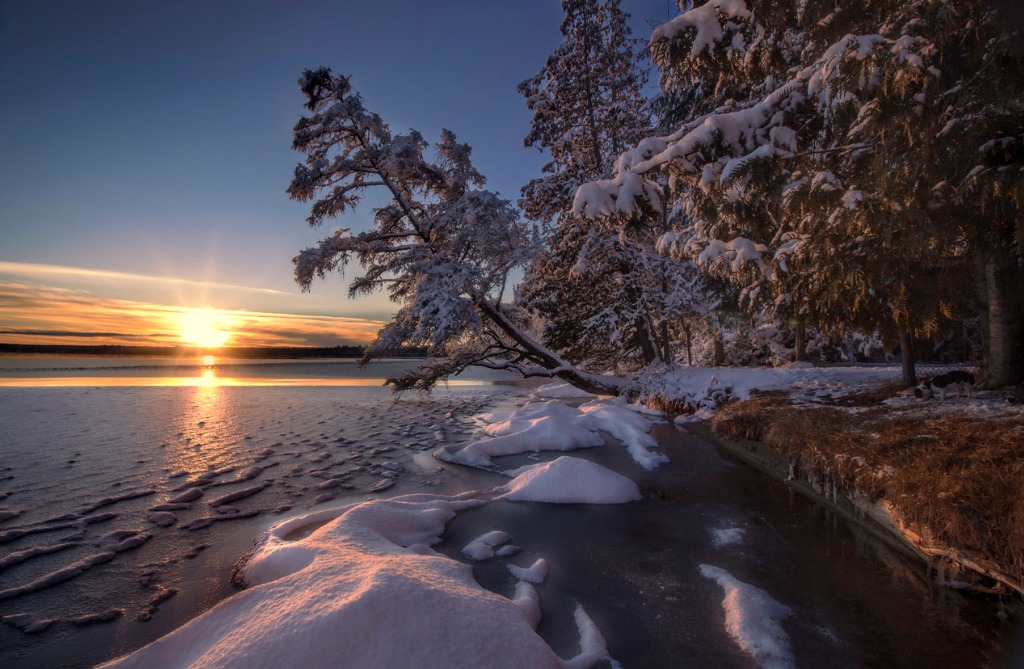
photo by Wiltser via iStock
Photos captured with a 24-70mm lens look much more natural than what you can create with a wide-angle or a telephoto lens. Without the distortion of a wide-angle and the compression of a telephoto, the images you create look more like what you see with your own eyes.
This can be helpful when framing up your shots and composing images because what you see through the viewfinder looks so much like what you see with your own eyes.
If you’re a beginner, pick up a 24-70mm zoom first - it’s an excellent learning tool and a best lens for landscape photography!
Learn More:
- Is a 24-70mm the Best Landscape Photography Lens?
- 6 Tips for Landscape Photography With a Telephoto Lens
Benefits of a Telephoto Zoom
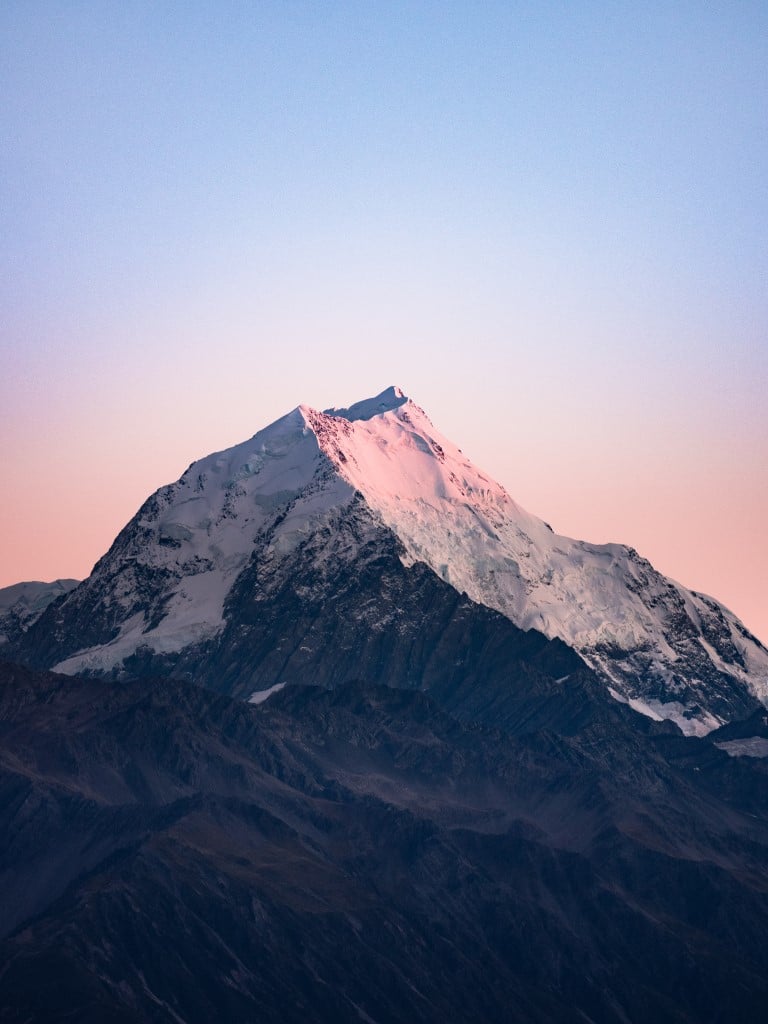
Photo by Mads Schmidt Rasmussen on Unsplash
The biggest advantage of using a telephoto zoom like a 70-200mm lens is that you can fill the frame with individual landscape elements and create much more intimate images.
Rather than showcasing the entire landscape, you’re forced to find that one element that’s more eye-catching than the rest and find ways to capture it in a beautiful way.
Telephoto lenses also give you the greatest opportunity to show scale.
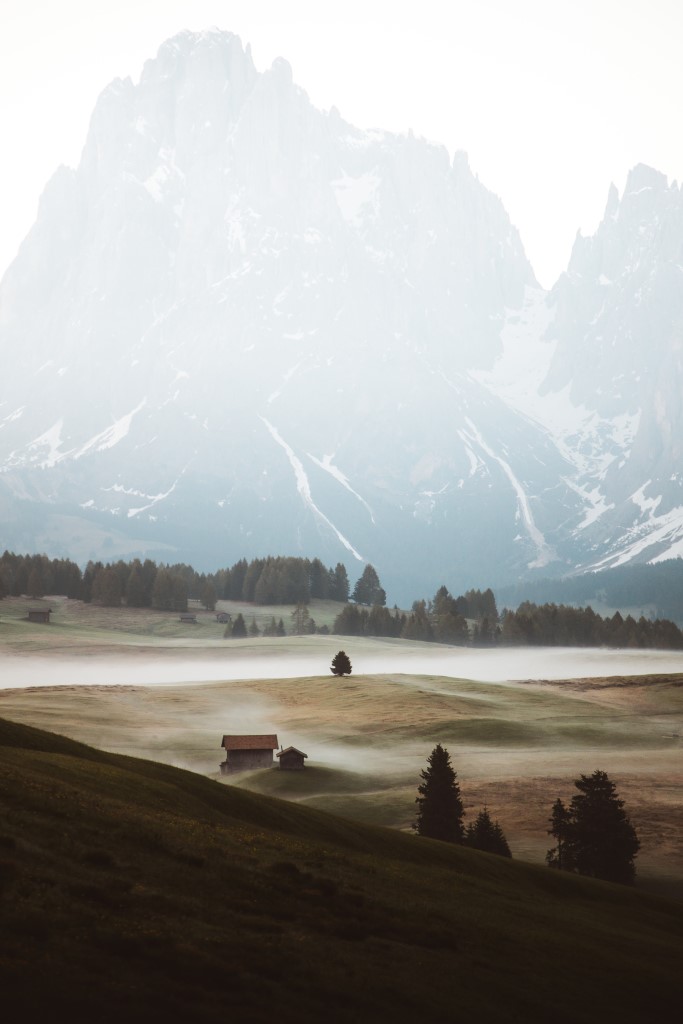
Photo by Taneli Lahtinen on Unsplash
Because of their compression, distant elements seem larger than they are, so while mountains in the background of a wide-angle shot look tiny, they are big and robust in a telephoto image.
I’d argue that using a telephoto zoom for landscapes is the most challenging of the three lenses discussed here, but also the most rewarding.
Most landscape photographers start out with a wide-angle (I know I did…), and switching to telephoto requires you to think outside the box and reimagine what landscape photography can be.
So, if you’re in the market for the best lens for landscape photography, think about investing in the holy trinity of zoom lenses.
You’ll be covered from wide-angle to telephoto with just three lenses, and if you’re cramped for space in your backpack, any of these lenses can be used effectively on their own.
We Recommend
3 Small Travel Cameras for 2024
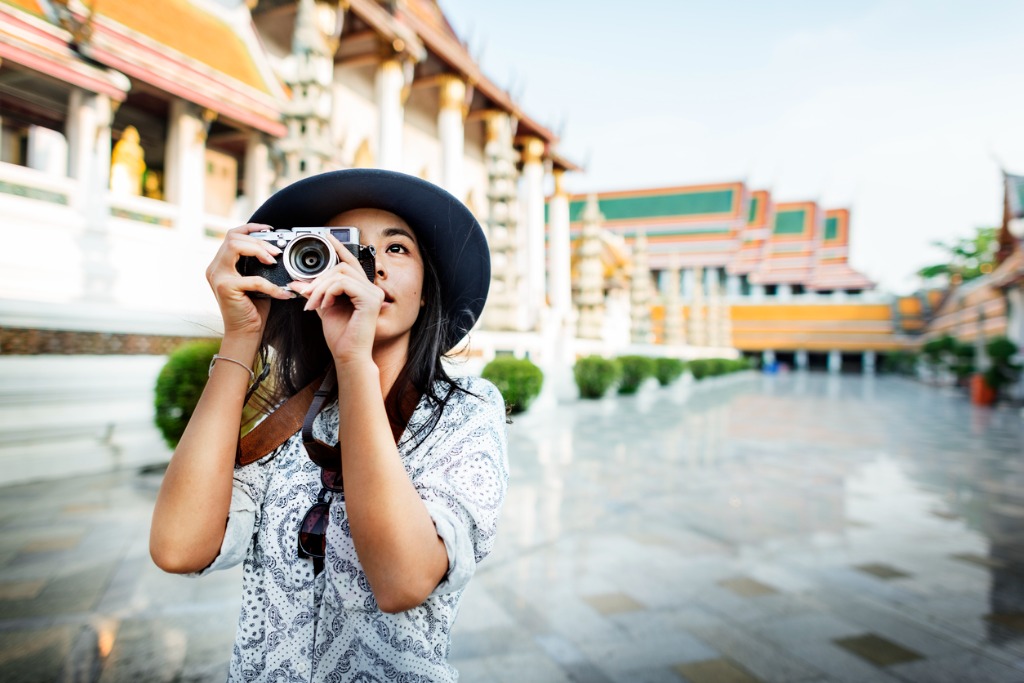
Photo by Rawpixel via iStock
When traveling, the last thing you want is a giant camera taking up lots of space and adding extra weight to your luggage. That’s why investing in a small travel camera is crucial. But with so many choices nowadays, we know it can be difficult to find the perfect one. That’s where we come in!
In this article, we’ll examine three of the best lightweight and portable cameras for 2024: one mirrorless camera, one bridge camera, and one compact camera. So, regardless of what you’re looking for, there’s something here for you. Additionally, thanks to innovative online platforms like MPB, buying a used travel camerahas never been cheaper and easier than it is today.
Who is MPB? It is a trustworthy and reliable online platform selling pre-owned photography and videography gear at unbeatable prices. Better yet, all of its cameras and lenses are expertly hand-inspected by highly-trained product specialists with years of experience and backed by six-month warranties, allowing you to make your purchases confidently and worry-free.
We are huge fans of MPB because, over the years, we’ve saved thousands of dollars buying, selling, and trading in photography equipment on their one-of-a-kind online marketplace. If you want to upgrade your camera kit and save money, too, visit their website today. Now, without further ado, it’s time to dive in and discover which of these small travel cameras is right for you!
Check out the video above by Lizzie Peirce to learn ten tips and tricks that will improve your travel photography.
Table of Contents
- A Good Small Travel Camera
- A Better Small Travel Camera
- The Best Small Travel Camera
- Final Thoughts on Small Travel Cameras
A Good Small Travel Camera
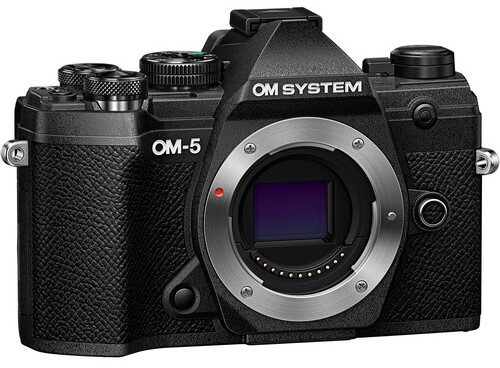
First up is the OM System OM-5. It’s an interchangeable-lens mirrorless camera that came out in 2022 and is the smaller sibling of the mighty OM-1. Internally, it houses a 20.4-megapixel sensor and TruePix IX image processing engine. It’s ideal for travelers who like shooting many different types of photography and want the freedom and flexibility to switch lenses on a whim.
Three of its signature features are its fast burst shooting, in-body image stabilization (IBIS), and affordable price. Using the electronic shutter, you can take photos at up to 30 fps, making it an amazing camera for action and adventure photography. At the same time, the IBIS reduces camera shake and enhances low-light performance, leading to better handheld video quality.
Now, here’s an in-depth look at the key features and specs of the OM System OM-5:
- Camera Type: Mirrorless
- Sensor: 20.4MP Live MOS Micro Four Thirds CMOS Sensor
- ISO: 200 - 25,600 (expandable to 64 - 25,600)
- Lens Mount: Micro Four Thirds
- Speed: 30.0 fps
- Autofocus: 121 focus points
- Video: 4K/24p & 1080p/120p
- Size/Weight: 125 x 85 x 50 mm / 414 grams
- Battery Life: 310 shots
- Stabilization: Yes
- Touchscreen: Yes
- Weather-Sealed: Yes
- Used OM System OM-5 Price: $899 - $944
A Better Small Travel Camera
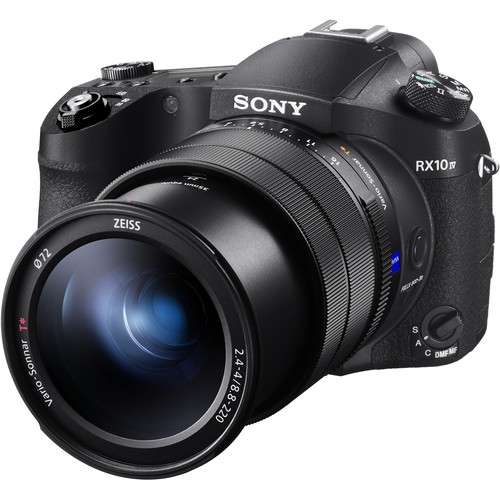
Next, there’s the Sony Cyber-shot RX10 Mark IV. It’s a unique 20.1-megapixel bridge camera that debuted in 2017, replacing its predecessor, the RX10 Mark III. Along with the sensor, it has an advanced Bionz X image processor. The pair work together seamlessly to consistently deliver sharp, high-quality photos and videos.
What makes this small travel camera special is its best-in-class Zeiss zoom lens. With a focal length of 24-600mm and 25x optical zoom, you can shoot everything from dramatic wide-angle landscape images to remarkably detailed architecture and wildlife photos. All without the hassle of ever needing to change lenses.
Now, here’s an in-depth look at the key features and specs of the Sony Cyber-shot RX10 Mark IV:
- Camera Type: Bridge
- Sensor: 20.1MP 1” Exmor RS BSI Stacked CMOS Sensor
- ISO: 100 - 12,800 (expandable to 64 - 25,600)
- Lens: 24-600mm zoom lens
- Speed: 24.0 fps
- Autofocus: 315 focus points
- Video: 4K/30p & 1080p/120p
- Size/Weight: 133 x 94 x 145 mm / 1095 grams
- Battery Life: 400 shots
- Stabilization: Yes (Optical)
- Touchscreen: Yes
- Weather-Sealed: Yes
- Used Sony Cyber-shot RX10 Mark IV Price: $1,149 - $1,409
Learn More:
The Best Small Travel Camera
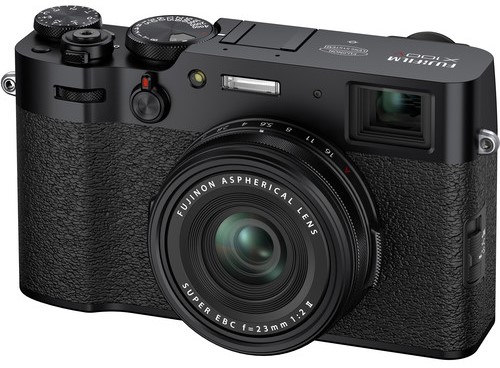
Last but not least, you have the powerful Fujifilm X100V. It was released in 2020, and with a 26.1-megapixel sensor, it’s one of the only large-sensor compact cameras on shelves today. Moreover, its X-Processor Pro 4 image processor helps record stunning 4K video and smooth Full HD slow-motion video, making the X100V a great camera for travel vlogging.
Other strengths include its redesigned lens, built-in ND filter, and excellent autofocus (AF) system. The 35mm f/2.0 pancake lens produces a creamy bokeh effect and is so small that you can fit the camera in your pocket. The 4-stop ND filter allows you to take better pictures during the sunniest times of the day. And the fast and responsive AF makes it easy for beginners and professionals to create sharp, in-focus content.
Now, here’s an in-depth look at the key features and specs of the Fujifilm X100V:
- Camera Type: Compact
- Sensor: 26.1MP APS-C X-Trans BSI CMOS 4 Sensor
- ISO: 160 - 12,800 (expandable to 80 - 51,200)
- Lens: 35mm prime lens
- Speed: 11.0 fps
- Autofocus: 425 focus points
- Video: 4K/30p & 1080p/120p
- Size/Weight: 128 x 75 x 53 mm / 478 grams
- Battery Life: 420 shots
- Stabilization: No
- Touchscreen: Yes
- Weather-Sealed: Yes
- Used Fujifilm X100V Price: $494
Final Thoughts on Small Travel Cameras
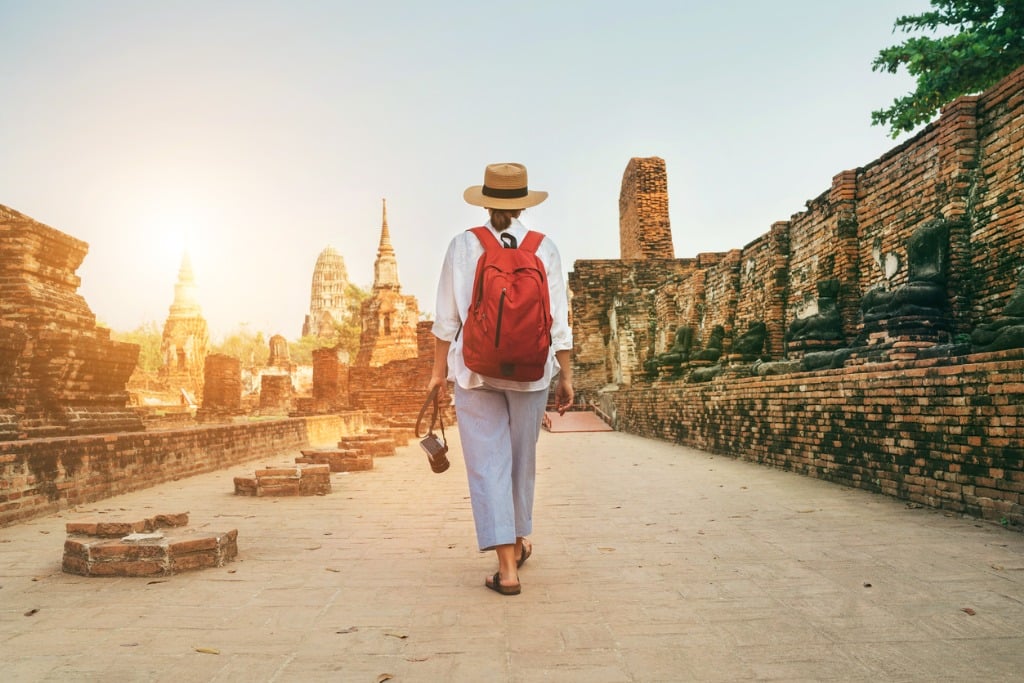
Photo by Solovyova via iStock
As you can see, there are many factors to consider when deciding on a new small travel camera, but three of the most important are size, weight, and camera style. With that said, here are our final recommendations.
The OM System OM-5 is a fantastic option for photographers who want a versatile, interchangeable-lens mirrorless camera. The Sony Cyber-shot RX10 Mark IV is the best bridge camera courtesy of its unmatched zoom capabilities. And the Fujifilm X100V, with its sleek body and premium prime lens, is the ultimate point-and-shoot camera for traveling.
While those are three of the most popular small travel cameras on sale in 2024, they aren’t the only ones out there. Check out the list below to see more compact and portable cameras currently in stock at MPB:
- Sony Cyber-shot RX100 VII
- Fujifilm X100F
- Panasonic Lumix DC-LX100 II
- Canon PowerShot G7 X III
- Sony ZV-E10
Disclaimer: Our articles might have affiliate links and the occasional sponsored content, but don't sweat it – if you buy something, we get a little kickback at no extra cost to you, and we only hype products we truly believe in!
Learn More:
- Get Ready for Summertime Travel Photography With This Crucial Gear
- How to Build a Beginner Photography Kit on the Cheap
We Recommend
3 Superb Used Mirrorless Cameras Under $1,000
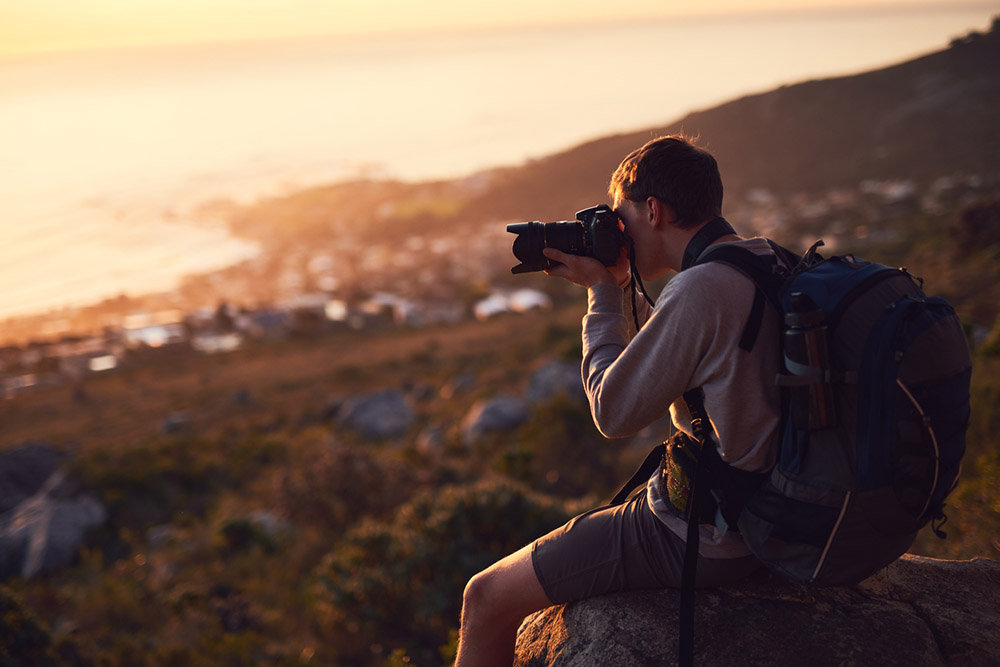
Photo by PeopleImages via iStock
Mirrorless cameras are the most modern technology in the camera industry, but that doesn't mean they always have to cost you an arm and a leg. There are tons of affordable mirrorless cameras currently available, and by buying used ones, you can save even more.
This mirrorless camera guide will examine three excellent used mirrorless cameras selling for under $1,000. We detail each one and share important information like the key specs and features, who will benefit most from shooting with it, and more! Additionally, thanks to innovative online platforms like MPB, buying a used mirrorless camera has never been cheaper and easier than it is today.
MPB is a trustworthy and reliable online platform selling used photo and video gear at unbeatable prices. All their cameras and lenses are methodically hand-inspected by expert product specialists and backed by six-month warranties, allowing you to make your purchases confidently and worry-free.
We have bought, sold, and traded more photography equipment than we can remember using MPB’s online platform, and it’s always been an easy and rewarding experience. That’s why we proudly recommend their products and services to you today. Now, let’s find out which used mirrorless camera under $1,000 is best for you and your needs!
Table of Contents
- Best Used Mirrorless Cameras Under $1,000: Sony Alpha a7R II
- Best Used Mirrorless Cameras Under $1,000: Panasonic Lumix DMC GH5S
- Best Used Mirrorless Cameras Under $1,000: Canon EOS R10
- More Amazing Used Mirrorless Cameras Under $1,000
Best Used Mirrorless Cameras Under $1,000: Sony Alpha a7R II
TheSony Alpha a7R II is an ultra-high-resolution mirrorless camera that debuted in 2015 and has a 42.4-megapixel Full-Frame sensor. Thea7R III anda7R IV have since superseded it, but that is good news for people on a budget. Because while the newest model will cost you over $2,000, a used a7R II has an average price of only $974!
Courtesy of its high pixel count, the a7R II is an ideal camera for professionals and nature/landscape enthusiasts. Moreover, when shooting outdoors, its fully-weather-sealed construction protects it from the elements (water, moisture, dust, etc.).
Other notable features include 4K video capabilities, 5-axis in-body image stabilization (IBIS), and responsive autofocus (AF). The 4K video makes it a good choice for hybrid photographers/videographers. The IBIS improves low-light performance and handheld video quality. And the AF makes capturing sharp, in-focus photos and videos easy.
Now, here’s an in-depth look at the key features and specs of this superb used mirrorless camera under $1,000:
- Camera Type: Mirrorless
- Sensor: 42.4MP Full-Frame BSI-CMOS Sensor
- ISO: 100 - 25,600 (expandable to 50 - 102,400)
- Lens Mount: Sony E Mount
- Speed: 5.0 fps
- Autofocus: 399 focus points
- Video: 4K/30p & 1080p/60p
- Size/Weight: 127 x 96 x 60 mm / 625 grams
- Battery Life: 290 shots
- Stabilization: Yes
- Touchscreen: Yes
- Price: $974
Check out the video above byaows to learn more about why the Sony Alpha a7R II is still a great camera in 2023.
Best Used Mirrorless Cameras Under $1,000: Panasonic Lumix DMC GH5S
Next, there’s thePanasonic Lumix DMC GH5S. It’s a video-centric digital camera released in 2018 and is a sister to the stills-orientedPanasonic Lumix DMC GH5 II. It’s one of the best used mirrorless cameras for weddings, events, and videographers.
Its signature feature is its super-light-sensitive 10.2-megapixel Four Thirds image sensor. Panasonic developed it specifically with video and low-light shooting in mind, and it delivers stunning results. It’s the same large-pixel/low-megapixel concept as other premium cameras like the Sony Alpha a7S III.
Furthermore, it boasts UHD and DCI 4K video at up to 60 fps frame rates, 1080p/240p slow-motion video, and Dual Native ISO. The 4K video quality is uncropped and uses the entire sensor. In-camera slow-mo video capture saves loads of time during post-production. And Dual Native ISO eliminates noise when working with high ISOs.
Now, here’s an in-depth look at the key features and specs of this superb used mirrorless camera under $1,000:
- Camera Type: Mirrorless
- Sensor: 10.2MP Four Thirds Live MOS Sensor
- ISO: 160 - 51,200 (expandable to 80 - 204,800)
- Lens Mount: Micro Four Thirds Mount
- Speed: 12.0 fps
- Autofocus: 225 focus points
- Video: 4K/60p & 1080p/240p
- Size/Weight: 139 x 98 x 87 mm / 660 grams
- Battery Life: 440 shots
- Stabilization: No
- Touchscreen: Yes
- Price: $979
Check out the video above byAdam Savage’s Tested to see how the Panasonic Lumix DMC GH5S compares to thePanasonic Lumix DC GH5.
Learn More:
Best Used Mirrorless Cameras Under $1,000: Canon EOS R10
Another one of our favorite used mirrorless cameras is theCanon EOS R10. It came out in 2022 and is the firstCanon R mirrorless camera to feature an APS-C sensor. Thanks to the 24.2-megapixel sensor and its all-new Digix X image processing engine, it’s one of the fastest and most advanced entry-level cameras ever.
Its vibrant colors, easy-to-navigate menu system, and various automatic shooting modes make it one of the most sought-after used mirrorless cameras for beginners and children. On top of that, the 23 frames per second max continuous shooting is great for capturing fast-moving subjects (i.e., action, sports, and wildlife photography).
More impressive features are the Dual Pixel autofocus, video capabilities, and a fully-articulating rear display. The AF is fast and accurate in both photo and video modes. The EOS R10 has 4K/30p and 1080p/120p video resolutions. And the articulating screen is a must-have for YouTubers, vloggers, and social media influencers.
Now, here’s an in-depth look at the key features and specs of this superb used mirrorless camera under $1,000:
- Camera Type: Mirrorless
- Sensor: 24.2MP APS-C CMOS Sensor
- ISO: 100 - 32,000 (expandable to 100 - 51,200)
- Lens Mount: Canon RF Mount
- Speed: 15.0 fps
- Autofocus: 651 focus points
- Video: 4K/30p & 1080p/120p
- Size/Weight: 123 x 88 x 83 mm / 426 grams
- Battery Life: 450 shots
- Stabilization: No
- Touchscreen: Yes
- Price: $839
Check out the video above by Canon Australia to learn everything there is to know about the Canon EOS R10.
More Amazing Used Mirrorless Cameras Under $1,000
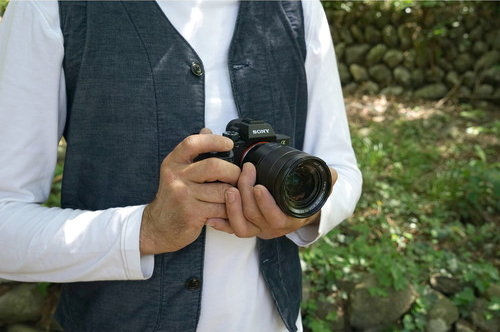
While those are three of the bestused mirrorless cameras for photo and video available today, they are far from the only options. Check out the list below to compare and contrast them with other fantastic mirrorless cameras. All of them are on sale now for under $1,000 onMPB!
Learn More:
- What is the Best Nikon Camera Under $1000?
- Three of the Best Cameras Under $500 to Consider for 2023
We Recommend
4 Cheap Mirrorless Cameras for 2021
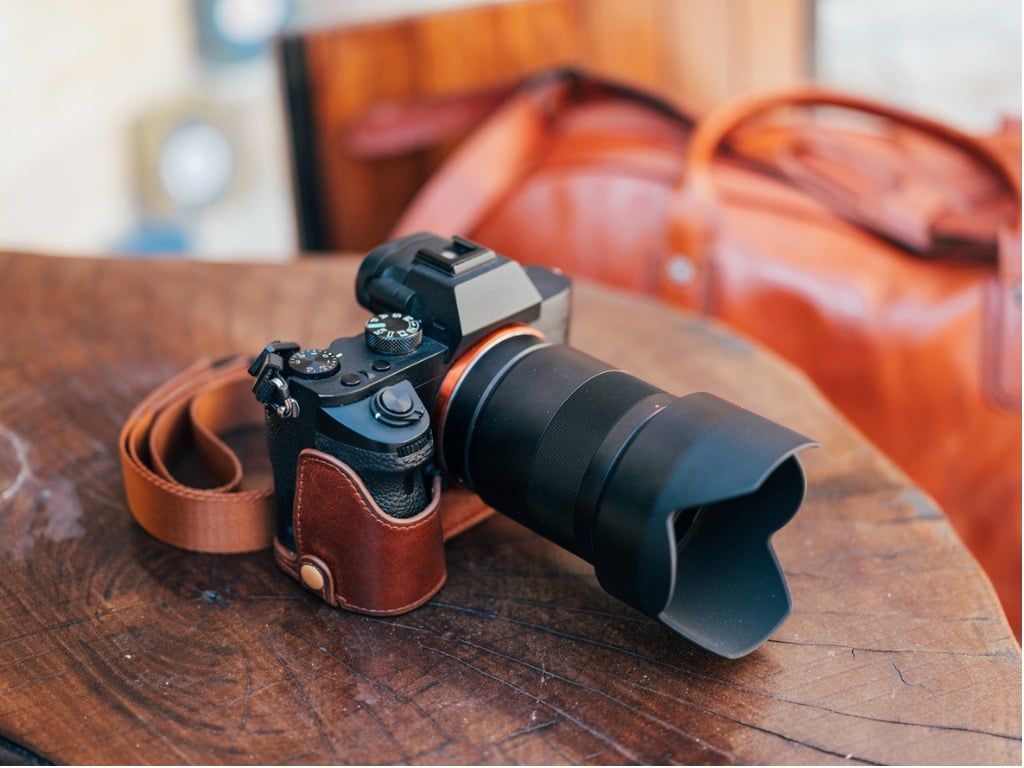
photo byhsyncoban via iStock
As 2021 gets closer and closer, and as 2020 hopefully begins to fade into a bad memory, I’ve been thinking a lot about getting rid of some of my older camera equipment in favor of something new.
Since I primarily shoot with DSLRs, I’ve been thinking about upgrading my mirrorless kit to something a little better. But, I also don’t want to spend a fortune doing so since most of my photography income is coming in from projects that I’m using my very expensive DSLR setup with.
So, I started searching for cheap mirrorless cameras. I obviously didn’t want to get a mirrorless setup that was ancient and ineffective, so I read through plenty of articles where the authors were claiming to have found the best cheap mirrorless cameras in 2020.
I combined this research with a little bit of hands-on research of my own and I found four really solid cheap mirrorless cameras that I expect to keep performing well in the coming year.
If you’ve been toying with the idea of picking up some budget mirrorless camera for yourself, check out this list.
Sony a6000
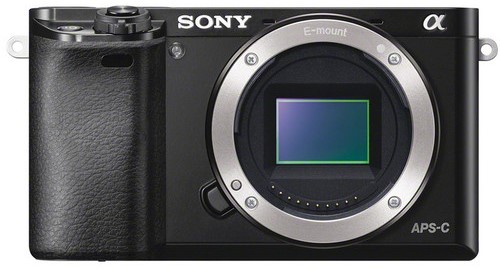
The Sony a6000 tops this cheap mirrorless cameras list because, despite its age, it features some incredible specs and, because of its age, you can pick one up for super cheap.
The Sony a6000 features a 24MP CMOS APS-C sensor and a Bionz X image processor. It can shoot 11fps and both its screen and its electronic viewfinder feature a surprisingly high resolution, considering the camera came out in 2014. Its OLED electronic viewfinder comes with 1.44m-dots, and its 3-inch tilting LCD screen comes with 921k-dots.
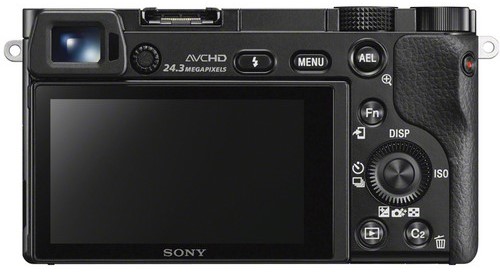
Since it is older, it doesn’t shoot 4K video, but you’re going to be hard-pressed to find any cheap mirrorless cameras that do.
But, perhaps the best spec to this camera is its autofocus system. It is a hybrid autofocus system that comes with 179 phase-detect points and 25 contrast-detect points. Thanks to this autofocus system, the camera is able to track a subject in burst mode.
The Sony a6000 also comes with built-in NFC and WiFi.
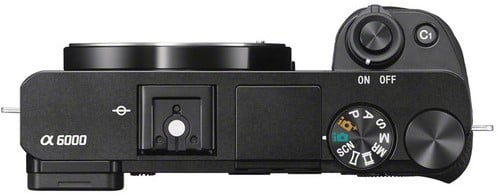
Since the Sony a6000 did come out six years ago, there are plenty of them available for sale from other photographers online.
I went to MPB, which is a used camera retailer that basically does all the leg work of finding and vetting cameras for you, and they had nearly 30 of them listed starting at $314.
If you want an even better deal, you can buy a Sony a6000 in excellent shape for $359. Some of them even come in their original packaging.
Fujifilm X-T30
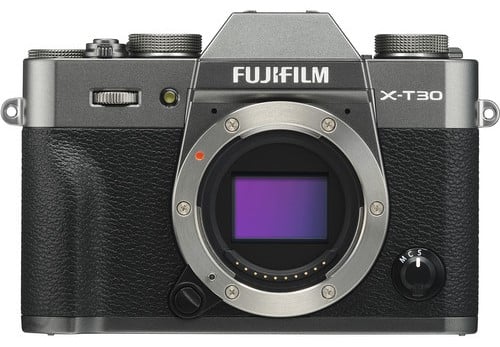
The Fujifilm X-T30 is definitely the most interesting camera on this list, if just for its looks. Like the Sony a6000, this camera is incredibly compact so that you can bring it everywhere with you, but it definitely has that Fujifilm flair. It looks much more like an antique rangefinder than any of the other cheap mirrorless cameras in this article.
This camera definitely has more impressive specs than the Sony a6000 because it is newer, which means it is one of the better mirrorless cameras for 2021 and beyond.
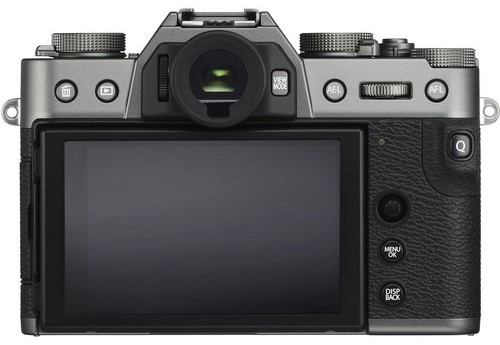
This camera comes with a 26MP APS-C X-Trans IV sensor, which is paired with an X-Processor 4. Both this sensor and this processor are also in the Fujifilm X-T3 which was a mirrorless camera built for professional photographers. So, both the sensor and the processor hold up under intense scrutiny.
If you’ve ever shot with a Fujifilm X-T20 before, then the X-T30 will feel similar. It measures 4.7” x 3.3” x 1.8” and weighs just 13.5 oz.
This camera features a tilting LCD screen with 1.04m-dots and an electronic viewfinder with 2.36m-dots, so the resolution of both will be better than the previous camera.
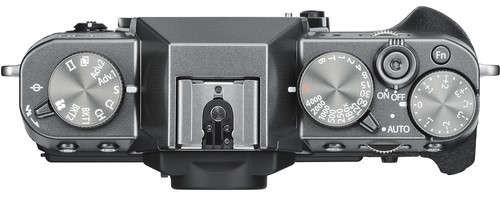
The burst mode on this camera is also much better at 30fps, which means that this camera will be wonderful for sports or wildlife photographers.
Like the Sony a6000, this Fujifilm features an excellent autofocus system. Unlike the Sony a6000, this camera can shoot 4K video, which will appeal to videographers.
Again, I went to MPB to see if any Fujifilm X-T30s were available for cheap. The best deal on the site is a Fujifilm X-T30 for $629.
Learn More:
Canon EOS M50
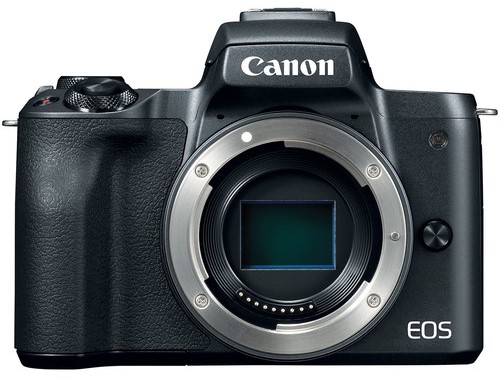
If you’re looking for inexpensive mirrorless cameras, Canon also has an option for you: the Canon EOS M50.
Of all the cheap mirrorless cameras on this list, the Canon EOS M50 is the newest since it just came out in 2018, but unlike some of the other cheap mirrorless cameras on this list the Canon EOS M50 was never aimed at professional or mid-level photographers. This is definitely one of the best mirrorless cameras for beginners on the market.
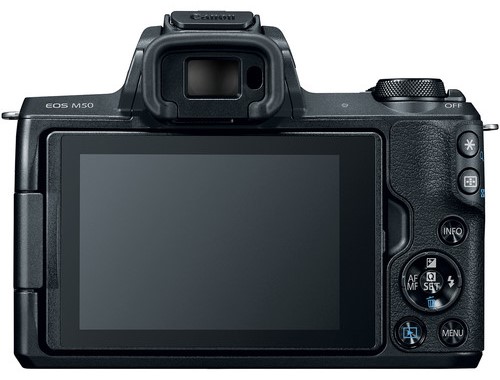
The Canon EOS M50 features a 24MP APS-C CMOS sensor with a pretty impressive ISO range of 100-25,600, which means you can shoot great images in low light with this camera.
It comes with the DIGIC 8 processor, which was the newest processor at the time. It definitely isn’t outdated like some of the other processors on this list.
The autofocus system on this Canon is also good. The focus area comes with 99 AF points and if you use certain lenses you can increase this to 143. For beginners, you can use the Eye Detection AF system to track your subjects.
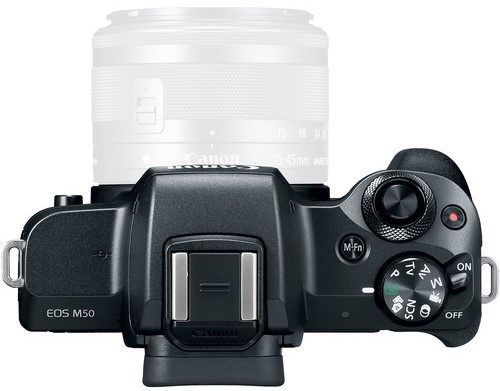
This camera does shoot 4K, but the footage is nowhere near as excellent as the footage on the Fujifilm above. For example, the footage that you take in 4K comes with a 1.6 crop.
The EOS M50 features a 1.04m-dot vari-angle touchscreen and a 2.36m-dot electronic viewfinder. Additionally, it comes with built-in WiFi, NFC and bluetooth.
You can pick up a used Canon EOS M50 on MPB for as little as $444.
Olympus OM-D E-M10 Mark III
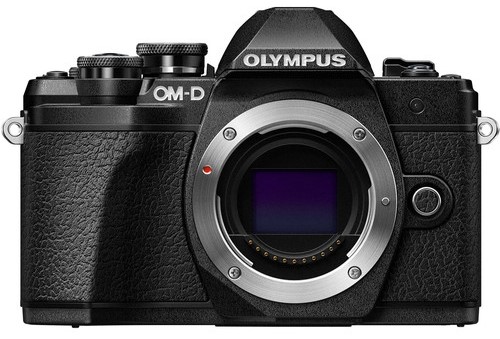
Last but not least, we have an Olympus.
Olympus was a little late to the cheap mirrorless cameras game, but has been struggling to catch up. This camera was released in 2017 and was one of the first that featured 4K video. It is the best option for videographers who are looking for cheap mirrorless cameras.
This camera features a 16MP Micro Four Thirds sensor, which means the camera is ultra-light and ultra-compact. It would be great for a photographer looking to travel with a light mirrorless setup.
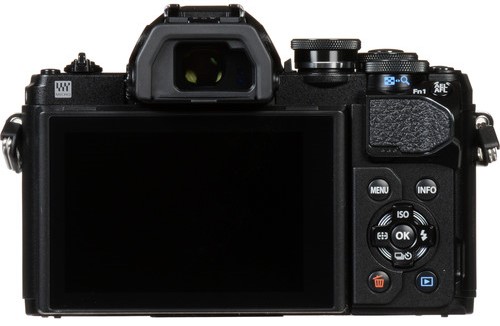
This is the only camera on our list that comes with 5-axis in-body image stabilization and I think that makes up for the less than impressive sensor. It’s also yet another spec on this camera that suggests it was built for travel photographers.
This camera can shoot 8.6fps and features a 121-point autofocus system. While shooting with autofocus, you can only shoot 4.8fps.
The camera looks really retro, sort of like the Fujifilm.
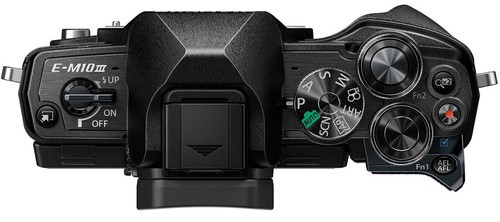
The 3” LCD screen is a touchscreen and tiltable, so you can use it to shoot in a variety of scenarios. The electronic viewfinder comes with 2.36m-dots.
If you’re interested in picking up this Olympus, it’s actually the cheapest camera on this cheap mirrorless cameras list. You can purchase one for just $304.
And, if you’re interested in learning more about the website that I’ve been referencing throughout this article, MPB, you can read our review of MPB in the learn more links below.
Learn More:
We Recommend
4 Reasons Why the Sony A7R II is the Best Used Full Frame Camera from Sony
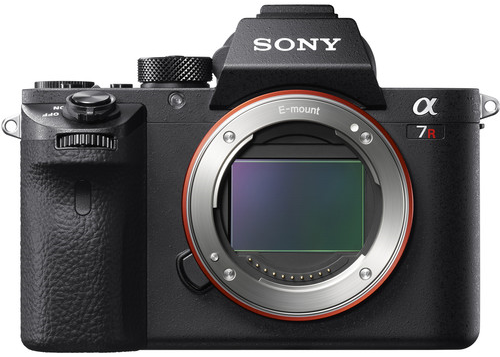
Sony mirrorless cameras are some of the most sought-after cameras in the world, and one of the best of the bunch is the Sony A7R II. It may not be the company’s newest camera, but we are here today to tell you why it’s hands down the best used full-frame camera from Sony currently on the market!
One incredible resource with loads of used Sony Alpha A7R II cameras in stock and a place I have bought and sold countless pieces of photography gear throughout the years is MPB. They are a trustworthy and reliable online platform selling used photo and video kit at unbeatable prices.
Furthermore, every camera at MPB is meticulously hand-inspected by knowledgeable product specialists and backed by warranties, allowing you to make your purchases confidently and worry-free. Another terrific feature of MPB is its online platform, where you can trade in and sell your old equipment to offset the cost of new-to-you photography and videography gear.
Now, let’s dive in and discover four reasons why the Sony A7R II is the best used full-frame camera from Sony in 2023!
Check out the video above by Sony | Camera Channel to learn more about the Sony Alpha A7R II.
Table of Contents
- The Super High Resolution of This Used Full-Frame Camera From Sony
- The Impressive Low-Light Performance of This Used Full-Frame Camera From Sony
- The Video Capabilities of This Used Full-Frame Camera From Sony
- The Budget-Friendly Price of This Used Full-Frame Camera From Sony
- Final Thoughts on the Sony A7R II Used Full-Frame Camera
The Super High Resolution of This Used Full-Frame Camera From Sony
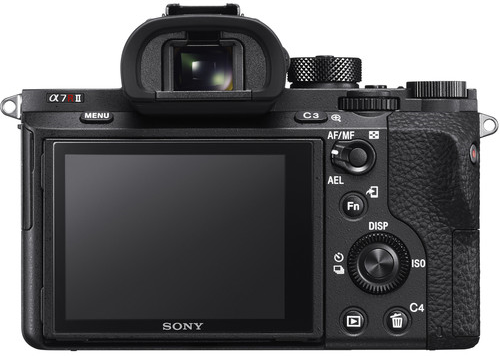
The signature feature of the Sony Alpha A7R II is its ultra-high-resolution 42.4-megapixel full-frame sensor. And even though the A7R II debuted in 2015, its megapixel count is still significantly higher than the average mirrorless or DSLR digital camera. For example, all Sony APS-C cameras use 24MP sensors, and even the brand-new Sony A7 IV only has a 33MP one.
One cool fact about this used full-frame camera is that the “R” in A7R II stands for resolution, and it was built specifically with professional photographers in mind. The 42.4MP sensor means images boast an otherworldly max resolution of 7952 x 5304 pixels. That is absolutely HUGE and makes this camera ideal for landscape and nature photography.
This camera is also great for photographers who commonly need to enlarge their images for printing. Thanks to the high pixel count, images retain excellent clarity even when blown up for flyers, posters, billboards, etc.
Here’s an in-depth look at the key features and specs of this amazing used full-frame camera:
- Camera Type: Mirrorless
- Sensor: 42.4MP Full-Frame BSI-CMOS sensor
- ISO: 100 - 25,600 (expandable to 50 - 102,400)
- Lens Mount: Sony E Mount
- Speed: 5.0 fps
- Autofocus: 399 phase-detection points
- Video: 4K/30p & 1080p/60p
- Size/Weight: 127 x 96 x 60 mm / 625 grams
- Battery Life: 290 shots
- Stabilization: Yes
- Touchscreen: Yes
The Impressive Low-Light Performance of This Used Full-Frame Camera From Sony
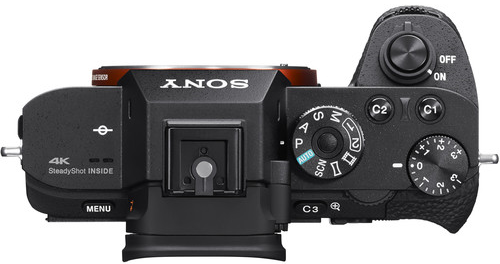
Another area where the Sony Alpha A7R II shines is when working in low-light conditions. The primary reason is that it was the first full-frame camera ever to install a Back-Side Illuminated (BSI) sensor. BSI sensors increase the amount of light that hits the sensor, boosting low-light performance.
Additionally, the A7R II has a wide ISO range and an advanced BIONZ X image processing engine. The max ISO of 104,200 makes the camera insanely sensitive to light, while the image processor minimizes unwanted noise in your photos and videos.
Having superior low-light performance is important for outdoor and studio environments alike. For outdoor photography, it improves the quality of your content when working at night or during sunrise/sunset. On the other hand, when working indoors, it allows you to capture stunning images even if you don’t have access to professional lighting equipment.
Learn More:
- Sony Mirrorless Camera Comparison: Which is Best for 2023?
- Four reasons Why a Used Sony A7S III is a Great Idea in 2022
The Video Capabilities of This Used Full-Frame Camera From Sony
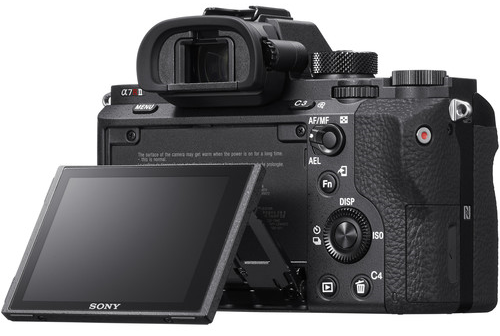
Let’s not get confused. The Sony Alpha A7R II is, first and foremost, a used full-frame camera for photography. But with that said, it’s also an extremely capable video camera. The first video feature that jumps off the page is its 4K capabilities. It records UHD 4K footage internally at frame rates of 24 and 30p.
On top of that, it can capture video either using the entire full-frame sensor or in Super35 mode. Super35 mode applies a 1.5x crop to the sensor and oversamples the footage to enhance video quality. While that’s good, in theory, I typically stick to shooting with the whole sensor due to the significant crop factor.
More highlight-worthy video features of the A7R II include its 5-Axis in-camera image stabilization, customizable picture profiles, S-Log2 Gamma Curve, tilting touchscreen LCD, and microphone/headphone jacks. If you are looking for a video-centric hybrid digital camera, I recommend the Sony Alpha A7S II and A7S III.
The Budget-Friendly Price of This Used Full-Frame Camera From Sony
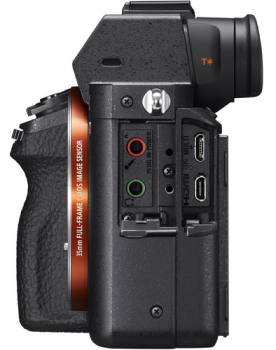
And finally, used Sony Alpha A7R II Cameras are on sale now on platforms like MPB for under $1000! This is the first time their average retail price has fallen under $1000, making them an absolute steal! There’s no other used full-frame camera in the same price range that can match all the professional specs and features of the A7R II.
While it is, undoubtedly, my favorite used full-frame camera from Sony, I understand some people might want to invest in a slightly new camera. If that’s your case, two fantastic options to consider are the Sony Alpha A7R III and A7R IV.
Check out the video above by SBMVisuals to learn more about why the Sony Alpha A7R II is still a great camera today.
Final Thoughts on the Sony A7R II Used Full-Frame Camera
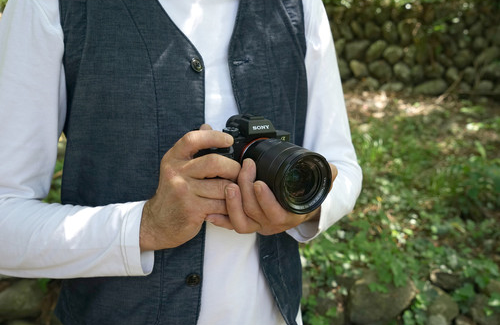
The A7R II is not only the best used full-frame camera from Sony but the best used full-frame camera from any brand, period. And if you are a beginner or intermediate photographer, there’s no better camera to help take your photo and video skills to the next level. So, what are you waiting for? Head over to MPB and scoop up one of these bad boys today!
And while you’re there, don’t forget to check out their great deals on used Sony FE Mount lenses and used Sony E Mount lenses. Here are a few of my personal favorites to use when shooting with the Sony Alpha A7R II to get you started:
- Sony FE 24-70mm f/2.8 GM
- Sony FE 12-24mm f/4 G
- Sony FE 70-200mm f/4 G OSS
- Sony FE 90mm f/2.8 Macro G OSS
- Sony FE 14mm f/1.8 GM
Learn More:
We Recommend
5 Inexpensive Full Frame Cameras for 2021
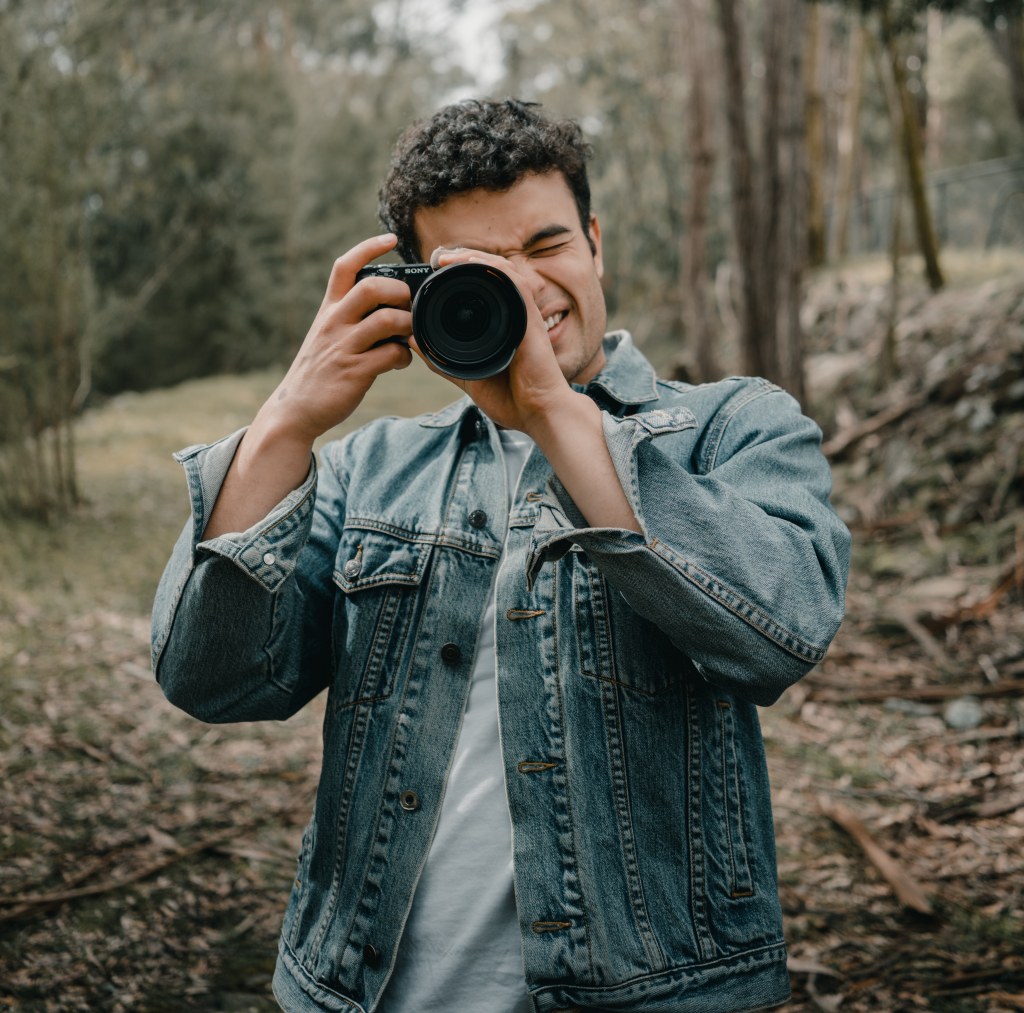
Photo by Arun Clarke on Unsplash
If one of your New Year’s resolutions is to buy a new full frame camera, then this list of inexpensive full frame cameras is for you.
While these five cheap full frame cameras are some personal favorite of the PhotographyTalk editors, it is definitely not an exhaustive list. Although a bit expensive, its worth to mention about Nikon D3500 because its a perfect entry level DSLR camera used by many professional photographers.
Sony A7
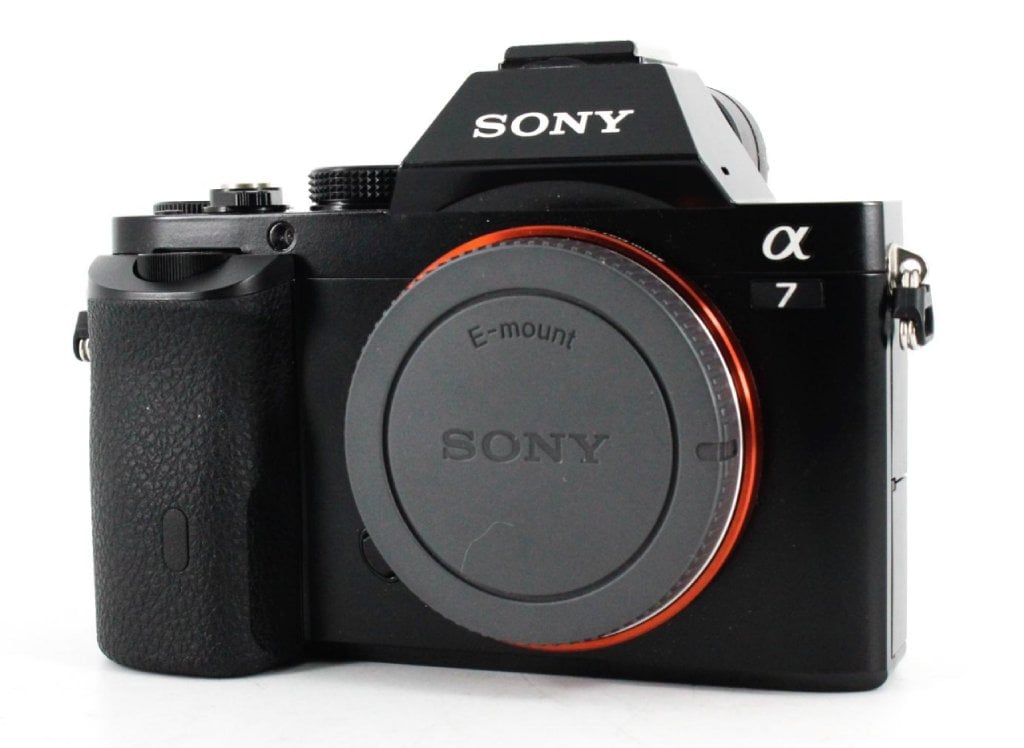
Sony A7 Specs:
- Type: Mirrorless
- Megapixels: 24.3
- Screen: 3” tiltable LCD
- 5fps burst mode
- 1080p video resolution
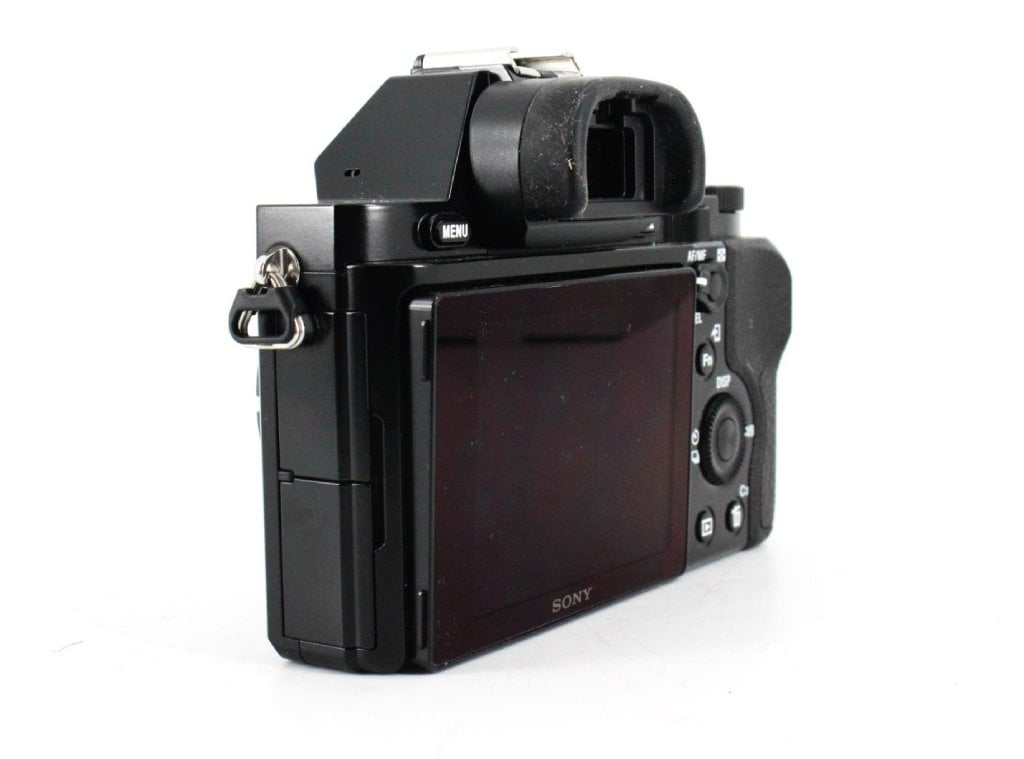
The Sony A7 features one of the best autofocus systems out of all mirrorless cameras, despite the fact that it has been almost completely overshadowed by its newer versions, the Sony A7 II and Sony A7 III (which both expanded on this incredible autofocus system).
The Sony A7 is light and travel-friendly, while maintaining a full frame sensor.
Additionally, the Sony A7 has a wide range of compatible lenses, despite the fact that the Sony A7 has been discontinued.
The Sony A7 also allowed beginners to break into the mirrorless camera game when it dropped because it provided almost all of the features of more expensive mirrorless cameras like the Nikon D610 or the Canon EOS 6D.
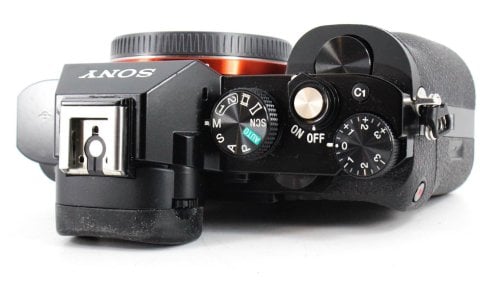
Since the Sony A7 has been discontinued, you can no longer buy it new anywhere online. So, MPB will be your best option with a used version starting at $560.
There is also a “like new” Sony A7 for $660.
This HUGE camera giveaway is ending SOON...CLICK HERE FOR DETAILS!
Canon EOS RP
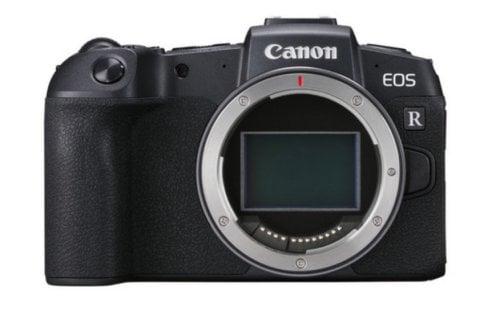
Canon EOS RP Specs:
Type: Mirrorless
- Megapixels: 26.2
- Screen: 3” fully articulating touchscreen LCD
- 5fps burst mode
- 4K video resolution
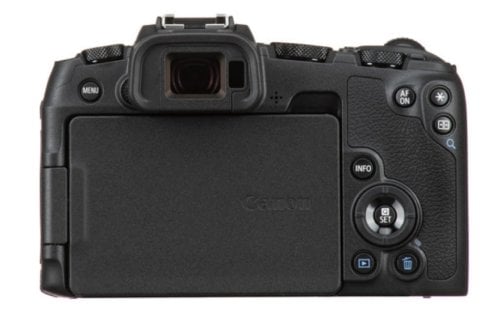
The Canon EOS RP is surprisingly small and light, even more so than the Sony A7, but that doesn’t mean it lacks any features as compared to the other best full frame cameras on this list.
When the Canon EOS RP dropped it was the least expensive full-frame camera to ever hit the market.
It can shoot 4K video, which isn’t true of many other inexpensive full frame cameras, and it is reminiscent of other Canon cameras, so it’s a fan favorite of brand-loyal photographers.
While the photo quality is excellent, the 4K video quality is not as compared to other full frames on the market, so videographers should keep this in mind before springing for this camera.
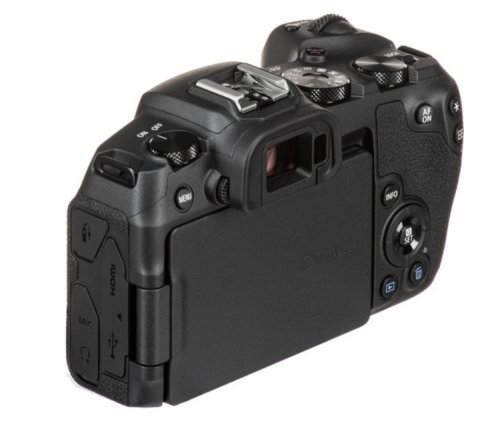
The Canon EOS RP is available on Amazon for $1,000, or you can look for a used version starting at $900.
Nikon D750
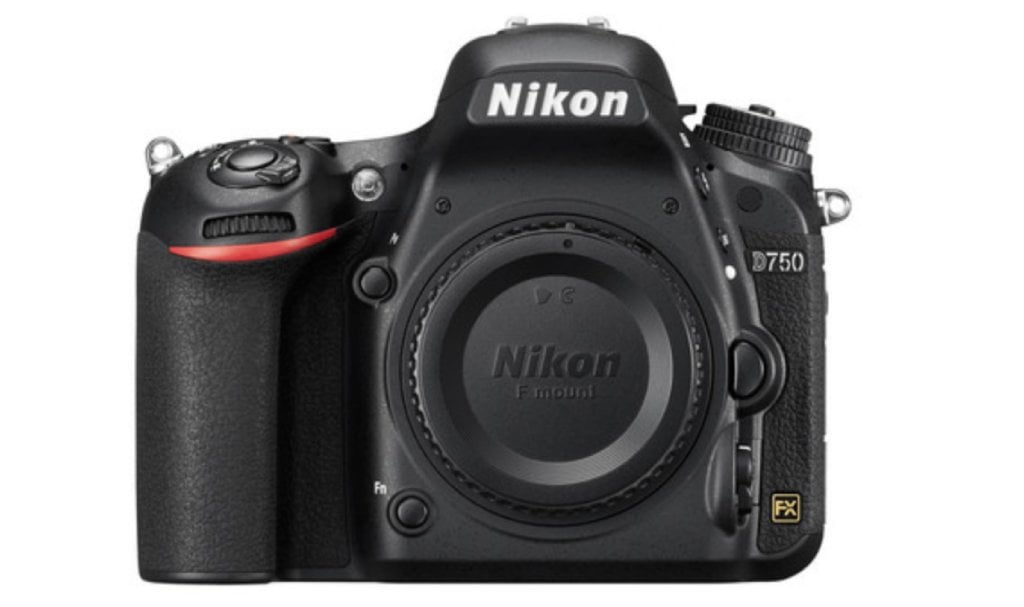
Nikon D750 Specs:
- Type: DSLR
- Megapixels: 24.3
- Screen: 3” tilting touchscreen LCD
- 6.5fps burst mode
- 1080p video resolution
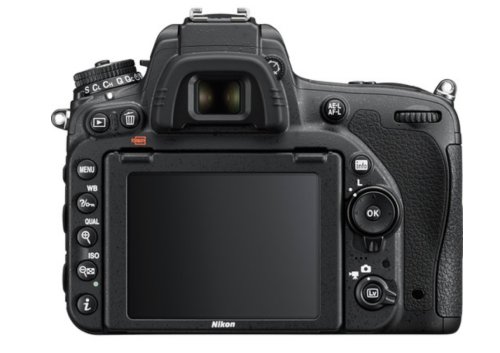
The Nikon D750 offers the fastest burst mode of any of the inexpensive full frame cameras on our list, which makes it an excellent choice for sports or wildlife photographers.
But, my favorite quality to this camera is that it features a tiltable screen, unlike its sister versions, the Nikon D810 and the Nikon D610.
It doesn’t shoot 4K video, but it does feature powered aperture control, “flat” picture control modes, and overexposure warnings.
It’s autofocus system is also advanced for a camera of this era, with 51-points.
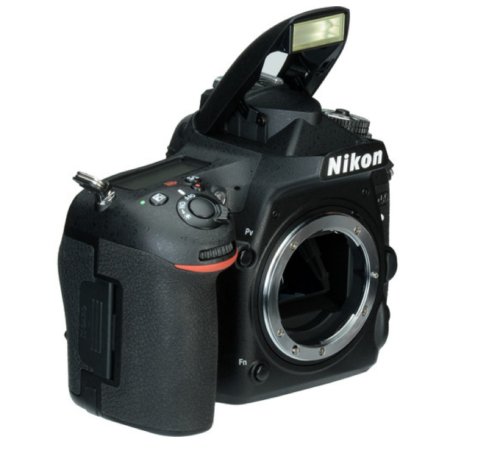
The Nikon D750 is on sale on Amazon right now for $1,500.Or, you can save over $600 and shop MPB where there are a ton of Nikon D750s listed at just $850.
Canon EOS 6D Mark II
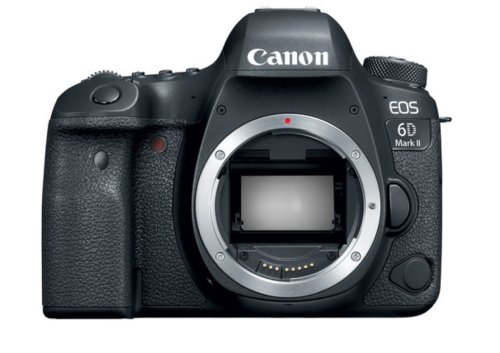
Canon EOS 6D Mark II Specs:
- Type: DSLR
- Megapixels: 26.2
- Screen: 3” vari-angle touchscreen LCD
- 6.5fps burst mode
- 1080p video resolution
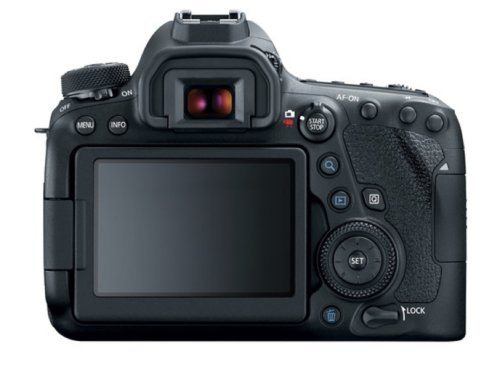
Of all these inexpensive full frame cameras, this one is not for beginners.
The Canon EOS 6D Mark II features many of the same incredible features of the Nikon D750, like a good screen, a fast AF system, and excellent handling due to its size, but it isn’t as intuitive. So you shouldn’t expect to pick it up and have all of the controls figured out within a few days.
This Canon’s AF system works so well that you can even use it efficiently in Live View mode, which some current cameras can’t even offer.
It’s also got really good low-light capabilities since it features an ISO range of 100-40,000.
You can’t shoot 4K video with the Canon EOS 6D Mark II, but you can shoot full HD at 1080p for up to 60fps.
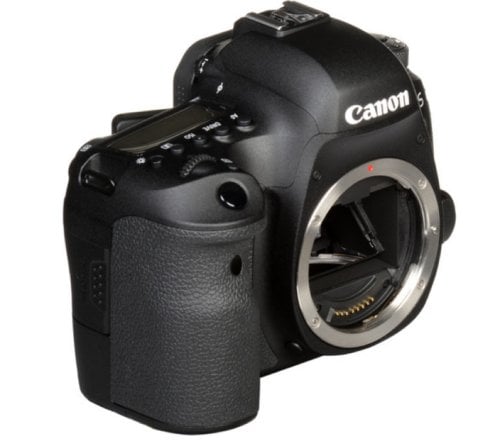
The Canon EOS 6D Mark II is available for $1,400 on Amazon, or you can buy a used version off of MPB starting at $1,065.
Nikon D810
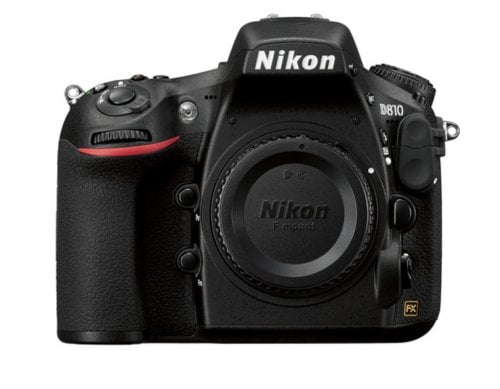
Nikon D810 Specs:
- Type: DSLR
- Megapixels: 36.3
- Screen: 3.2” TFT-LCD screen
- 5fps burst mode
- 1080p video resolution
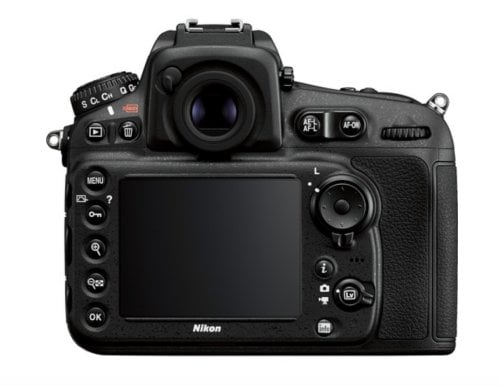
The Nikon D810 is the big sister to the Nikon D750.
Whereas the Nikon D750 featured a 24.3MP sensor, the Nikon D810 features a super impressive 36.3MP sensor. While this won’t affect your everyday photographer, it’s a huge bonus for the pros.
The Nikon D810 also features a wider ISO range, which begins at 64. Unsurprisingly, it performs very well in low light.
The Nikon D810 is heavier and bulkier thanks to its pro-spec build. If you’re after something smaller, the D750 might be for you.
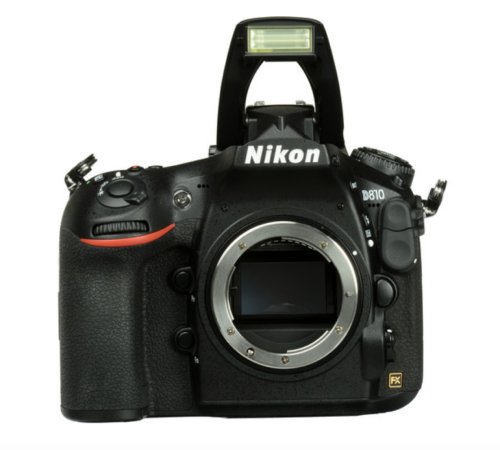
The Nikon D810 rounds out our list of best full frame cameras as the most expensive one on the list at $3,000.However, if you’re looking to save some money on your full frame cameras for 2021, make sure to check out MPB where you can find the Nikon D810 starting at $850.
We Recommend
A Beginner's Guide to Sony E Mount Mirrorless Cameras
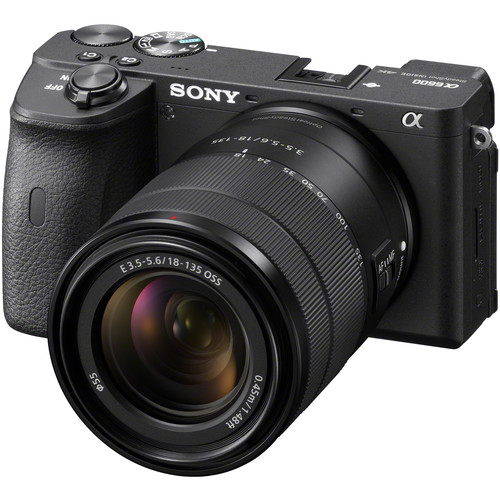
Sony Alpha a6600
In recent years, mirrorless cameras have exploded in popularity, and the unquestioned king of the mirrorless universe is Sony. With that in mind, if you are new to photography and need a crash course on Sony mirrorless cameras, you’ve come to the right place.
In this beginner’s guide to Sony E Mount mirrorless cameras, we share a brief history of the company, the differences between the E lens mount vs Sony FE mount, the most popular E mount cameras, and more! Moreover, thanks to innovative online platforms like MPB, buying a used camera has never been cheaper and easier than it is today. Plus, you can sell the gear you aren’t using anymore and get cash to buy a new-to-you camera!
MPB is a trustworthy and reliable online platform selling used photo and video gear at unbeatable prices. All their Sony E mirrorless cameras are carefully hand-inspected by highly-trained product specialists and backed by six-month warranties, allowing you to make your purchases confidently and worry-free.
We have bought, sold, and traded in tons of photography equipment using MPB’s online platform and have always been blown away by the result. That’s why we are excited to recommend them to you here today. Considering that, now it’s time to jump in and learn everything there is to know about Sony E Mount mirrorless cameras!
Table of Contents
- History of Sony E Mount Cameras
- How Sony E Mount Differs from Sony FE Mount
- Top Sony E Mount Camera Options
- Try One of These Sony E Mount Lenses
History of Sony E Mount Cameras
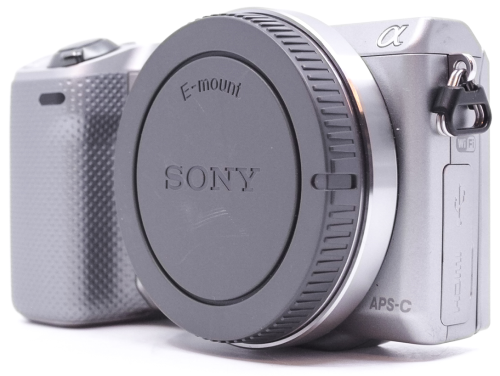
Sony Alpha NEX-5R
The first Sony E Mount camera was the Sony Alpha NEX-3. It debuted in 2010 and revolutionized the camera industry. It was the very first mirrorless camera to be released by any major camera company – Sony, Canon, Nikon, Fuji, etc. The most successful cameras in the NEX lineup were the Sony Alpha NEX-7 and NEX-6.
In 2013, Sony announced they would rebrand their mirrorless cameras from the NEX series to the “a” series. The first camera to hold the new name was the short-lived Sony Alpha a3000. A year later, the a5000, a5100, and a6000 were released. Remarkably, the a6000 is still in production today.
The a6xxx lineup is the present-day series and consists of entry-level, enthusiast, and semi-professional APS-C cameras. The latest generation includes the a6100, a6400, and a6600.
How Sony E Mount Differs From Sony FE Mount
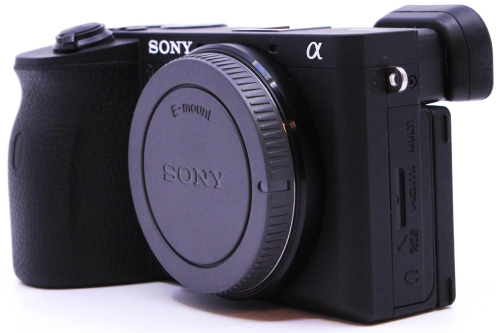
Sony Alpha a6600
There are two types of Sony mirrorless cameras. Sony FE mount cameras and E mount cameras. Sony FE mount cameras feature full-frame imaging sensors, while E mount cameras have APS-C sensors. For those who don’t know, full-frame sensors are 1.5x larger than APS-C sensors.
Sony FE fit lenses are designed to be used on FE mount cameras, and Sony E fit lenses are meant to be used on E mount cameras. Having said that, you can use both types of lenses on both bodies. In this article, we will focus on E mount mirrorless cameras since they target new photographers.
Learn More:
- Sony Alpha a6500 vs Sony Alpha a6100: Which is Best?
- Pre-Owned Camera Comparison: Sony a6400 vs a6600
Top Sony E Mount Camera Options
A Good Sony E Mount Camera
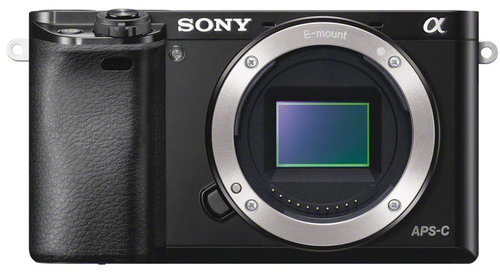
Sony Alpha a6000
The Sony Alpha a6000 is an entry-level camera and the most-sold mirrorless camera of all time. Its small and compact body takes up almost no space, making it a great choice for traveling and everyday use.
Furthermore, the average price of a used a6000 in excellent condition is now under $400. For beginners, kids, and people on a budget, there’s absolutely no better camera to learn on currently on the market!
Here’s an in-depth look at the key features and specs of this Sony E mount camera:
- Camera Type: Mirrorless
- Sensor: 24.3MP APS-C CMOS Sensor
- ISO: 100 - 25,600 (expandable to 51,200)
- Lens Mount: Sony E
- Speed: 11.0 fps
- Autofocus: 179 focus points
- Video: 1080p/60p & 1080p/24p
- Size/Weight: 120 x 67 x 45 mm / 344 grams
- Battery Life: 360 shots
- Stabilization: No
- Touchscreen: No
A Better Sony E Mount Camera
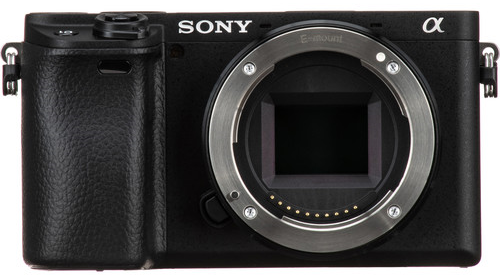
Sony Alpha a6400
Suppose you have more experience and want newer features like a touchscreen display, 4K video, and a built-in intervalometer for creating time-lapses. In that case, the Sony Alpha a6400 is a fantastic option. It’s a mid-range mirrorless camera that launched in 2019 and has been flying off the shelves ever since.
It’s an ideal camera for action, adventure, and wildlife photography because of its weather-sealed body, fast burst shooting, and advanced autofocus. Its current price sits around $750.
Here’s an in-depth look at the key features and specs of this Sony E mount camera:
- Camera Type: Mirrorless
- Sensor: 24.2MP APS-C CMOS Sensor
- ISO: 100 - 32,000 (expandable to 102,800)
- Lens Mount: Sony E
- Speed: 11.0 fps
- Autofocus: 425 focus points
- Video: 4K/30p & 1080p/120p
- Size/Weight: 120 x 67 x 60 mm / 403 grams
- Battery Life: 410 shots
- Stabilization: No
- Touchscreen: Yes
The Best Sony E Mount Camera
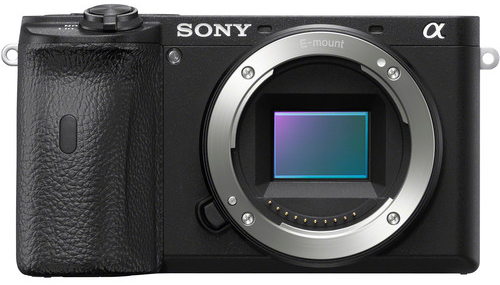
Sony Alpha a6600
Hands down, the best Sony E mount camera is the Sony Alpha a6600. It was released in 2019 and replaced the Sony Alpha a6500 as the company's flagship APS-C camera. Courtesy of its in-body image stabilization (IBIS) and industry-leading autofocus, it’s the perfect camera for hybrid photographers/videographers.
Other professional features include slow-motion 120p Full HD video, excellent battery life, and a flip-up screen. The screen makes filming yourself super-easy and is a must-have feature for YouTubers and vloggers.
Here’s an in-depth look at the key features and specs of this Sony E mount camera:
- Camera Type: Mirrorless
- Sensor: 24.2MP APS-C CMOS Sensor
- ISO: 100 - 32,000 (expandable to 102,400)
- Lens Mount: Sony E
- Speed: 11.0 fps
- Autofocus: 425 focus points
- Video: 4K/30p & 1080p/120p
- Size/Weight: 120 x 67 x 69 mm / 503 grams
- Battery Life: 810 shots
- Stabilization: Yes
- Touchscreen: Yes
Check out the video above by Arthur R to compare and contrast every Sony E Mount mirrorless camera available in 2023.
Try One of These Sony E Mount Lenses
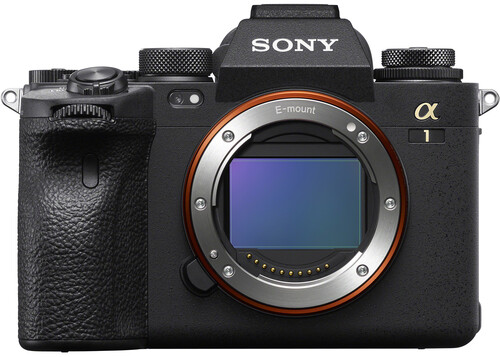
Sony Alpha A1
Once you decide upon a Sony E Mount mirrorless camera body, the next step is to invest in quality lenses. Taking that into account, here’s a short list of our favorite Sony E-fit lenses currently in stock at MPB:
- Sony E 55-210mm f/4.5-6.3 OSS
- Sony E 24mm f/1.8 ZA Zeiss Sonnar T*
- Sony E PZ 18-105mm f/4 G OSS
- Sony E 16-55mm f/2.8 G
- Sigma 24-70mm f/2.8 DG DN ART - Sony E Fit
Learn More:
We Recommend
Beginner Photography Primer: Types of Cameras Used for Photography
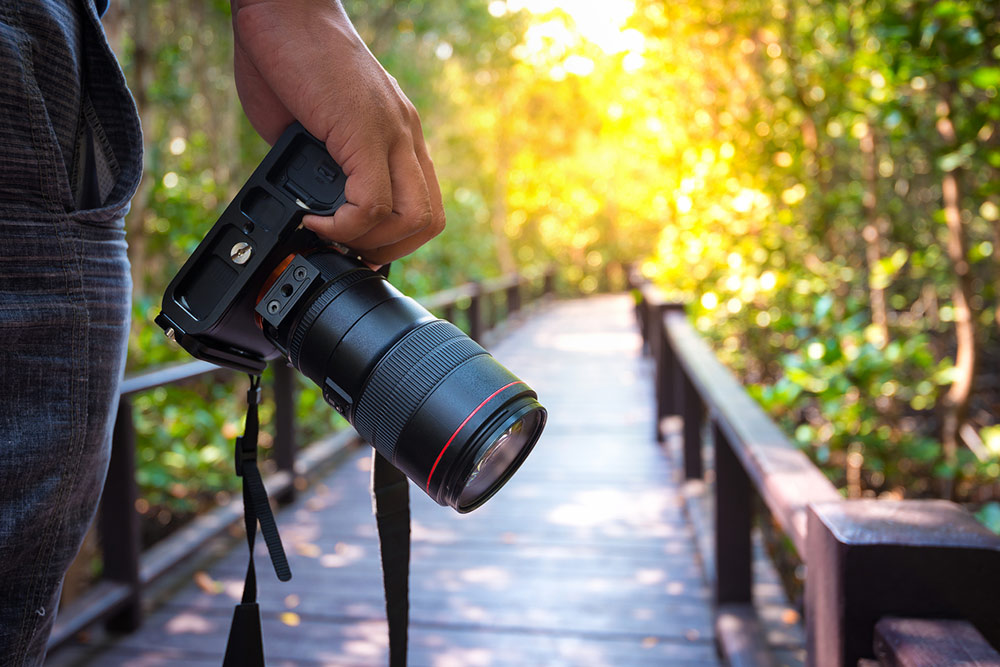
Photo by structuresxx via iStock
As you browse the web for learning more and more about photography, you have no doubt seen many types of cameras used for photography.
There are so many options that you have to choose from, so we decided to make a primer covering what cameras are used for photography by beginners and intermediate photographers.
Even if you’ve already made your choice, this may help you understand some basic principles for your future growth as a photographer.
Format Options for Digital Photography
One of the concepts that I see many entry-level photographers struggle with is the types of formats that are available.
The three most popular digital formats of cameras used for photography from beginner through advanced levels are MFT, APS-C, and Full Frame.
MFT Format
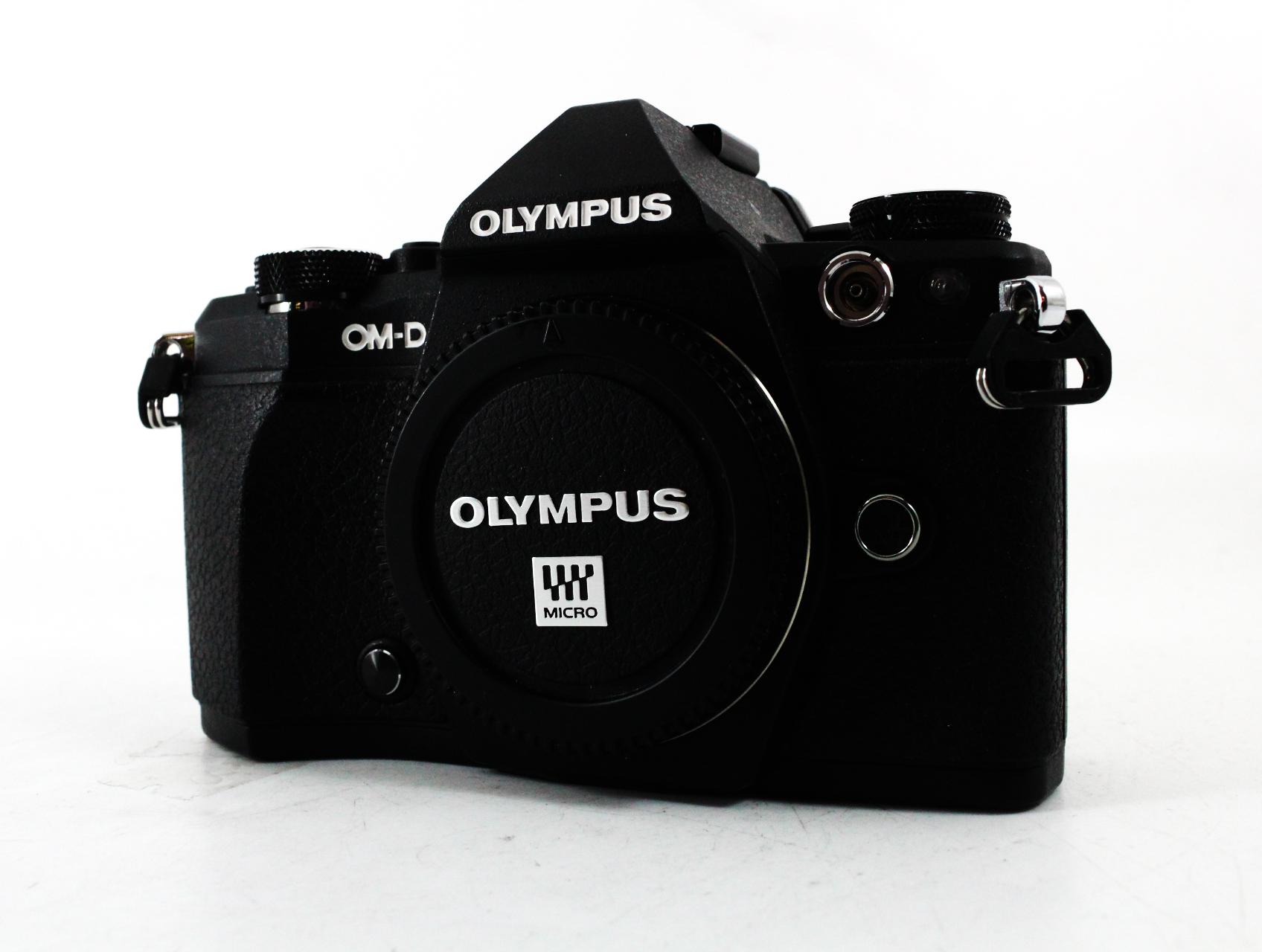
Also known as Micro Four Thirds or Micro 4/3rds, MFT (like the Olympus OM-D E-M5 Mark II shown above) is the smallest of the three formats and offers advantages and disadvantages. A major advantage is the small size and weight of cameras and lenses.
A disadvantage is that since the actual pixels are small for any given resolution, their light-gathering ability is lower than comparable resolution cameras in larger formats. Other advanced features like image stabilization can offset that issue.
Many MFT cameras used for photography are also excellent cameras for high-quality video recording. In fact, many of the premier videography cameras are in this MFT format. The 4:3 aspect ratio of this format transfers over to video formats with little or no loss of quality.
APS-C Format
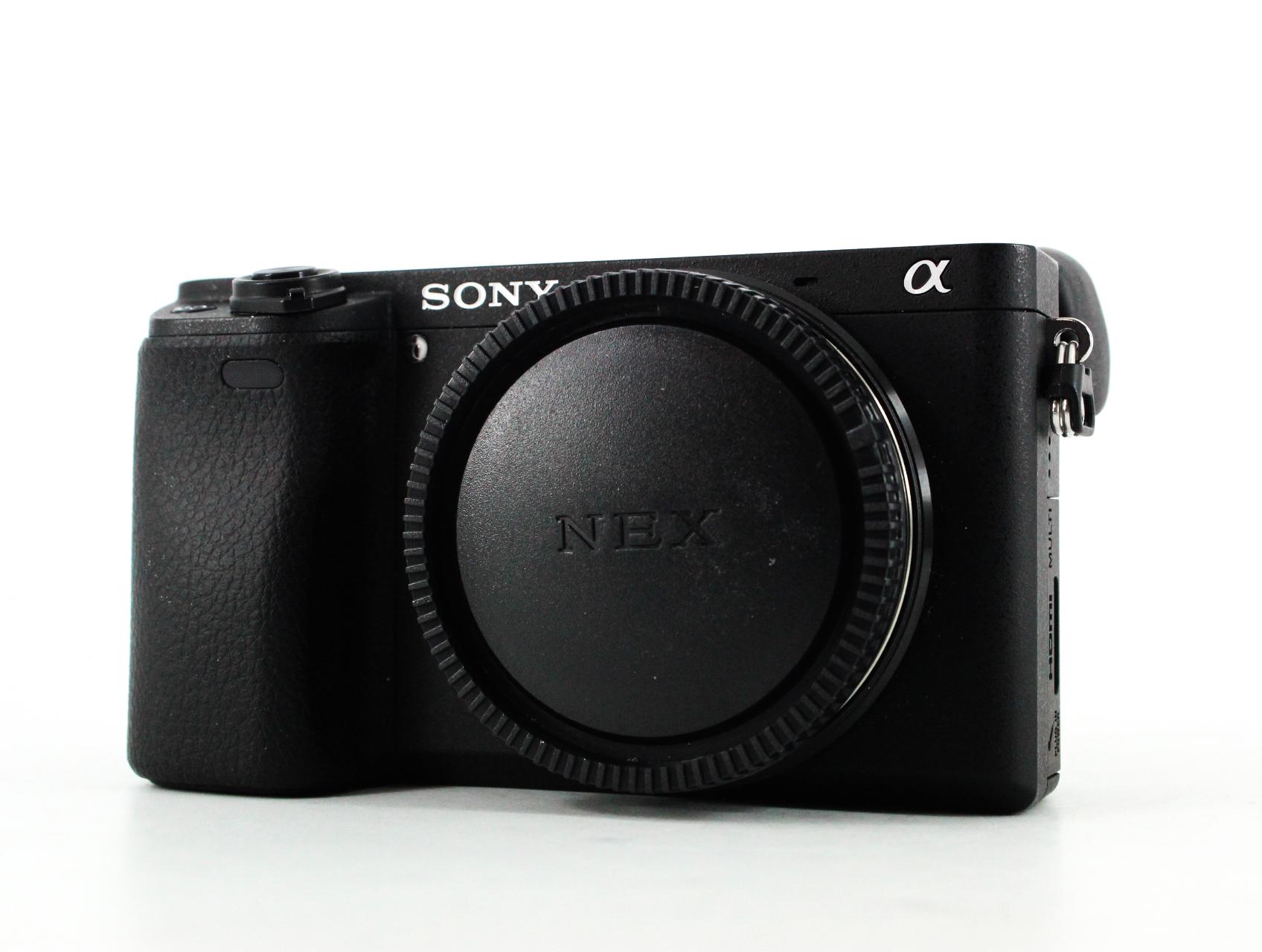
APS-C format cameras (like the Sony a6300 shown above) that are used for photography actually predate digital photography, having been an alternate film format from 35mm or 135 format. It is one step down in size from Full Frame 35mm format and offers several advantages over the other two formats for entry-level photographers.
Advantages of the APS-C format are smaller size and lighter weight cameras and lenses compared to Full Frame, larger pixel size compared to MFT, and having some of the most budget-friendly cameras for beginners and intermediate level photographers. The 3:2 aspect ratio is the same as Full Frame cameras.
Disadvantages include the lower light gathering ability of sensors in the same resolution compared to Full Frame and few truly budget-friendly entry-level cameras have 4K video capability.
4K video is a high-quality standard usable for extremely sharp videos to be viewed on larger devices such as a TV. Plus the 3:2 aspect ratio often requires some alteration to fit common video display formats.
Full Frame Format
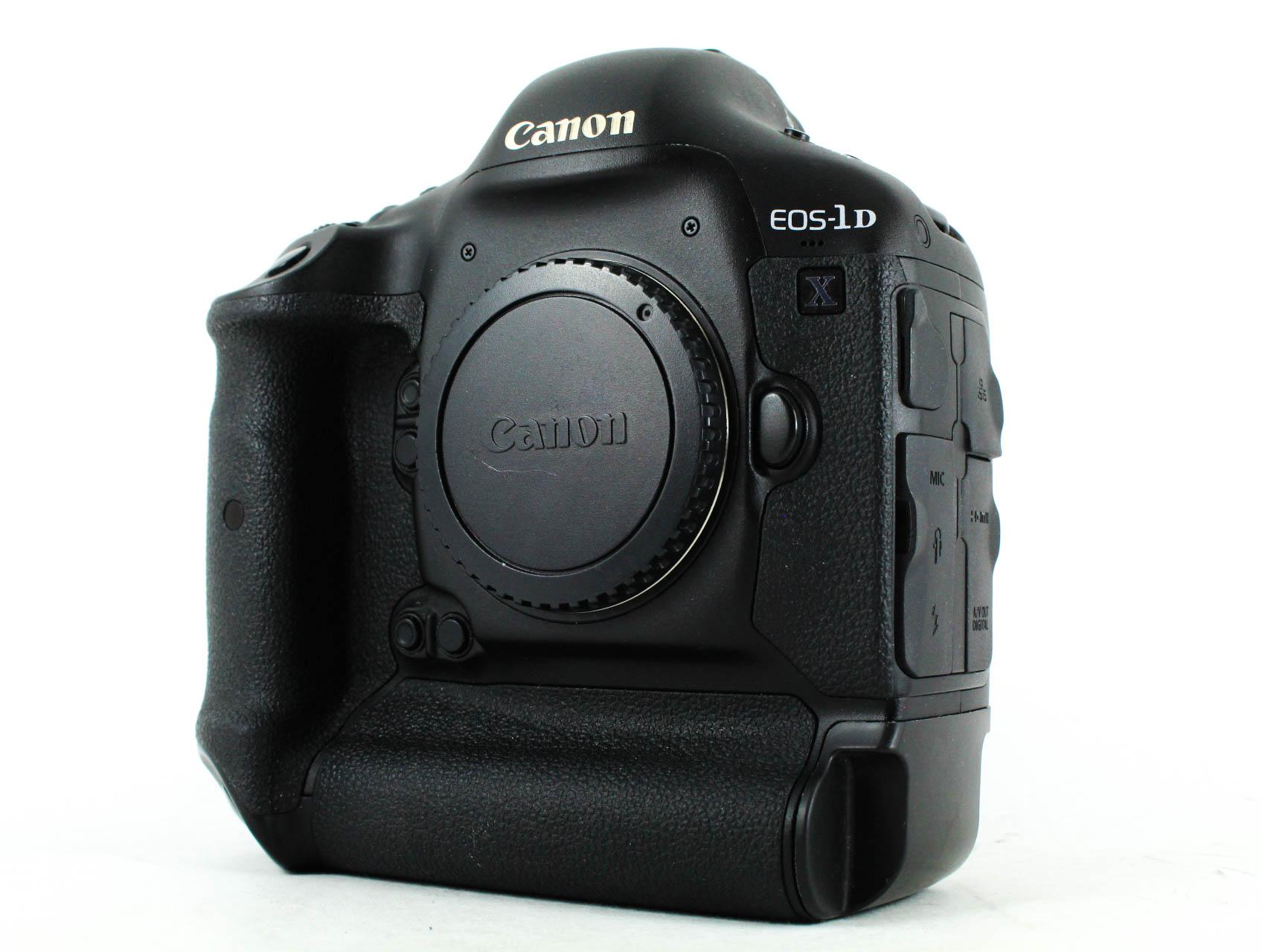
Full Frame format (like that in theCanon EOS 1DX shown above) is the exact same size as 35mm or 135 format film and is the largest of the three common digital formats of cameras used for photography.
Advantages are ultra-high-quality imaging and extreme low-light capability. Disadvantages are the increase of size, weight, and prices of cameras and lenses. Even with larger sizes and prices in mind, there are some excellent cameras in this format that beginners could consider.
As you read through other articles or chat forums discussing cameras used for photography, don’t let any camera snobbery or snide comments get you down about format and camera choices. All three of these options are excellent choices for photographers of all levels of expertise.
DSLR and Mirrorless Cameras Used for Photography
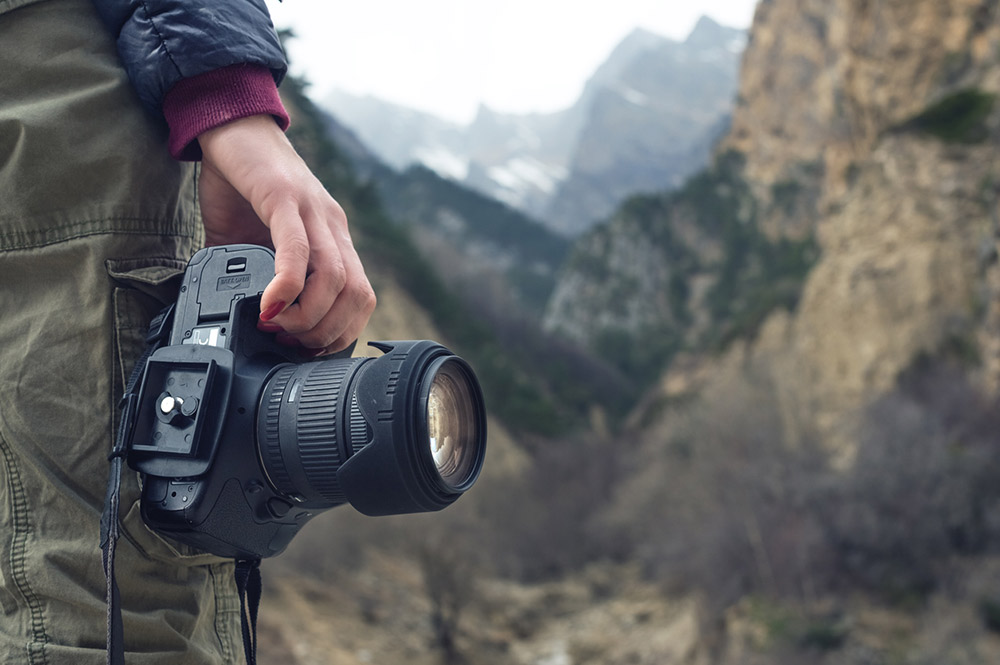
Photo by yanik88 via iStock
DSLR is an acronym for digital single lens reflex, meaning the cameras use a mirror and a prism to show you the view through the lens that will be captured on the sensor. Mirrorless cameras use the sensor and an electronic display to accomplish the same thing.
Both types of cameras have pros and cons. Most mirrorless cameras are smaller and lighter than DSLR cameras but they are often more expensive and use up battery charge faster.
Also, even though mirrorless cameras are generally smaller, in Full Frame format the lenses are still going to be large. MFT and APS-C format mirrorless camera lenses can be rather small and lightweight, but are still usually more expensive than lenses for DSLR cameras.
Learn More:
Shop Used Cameras for Lower Prices
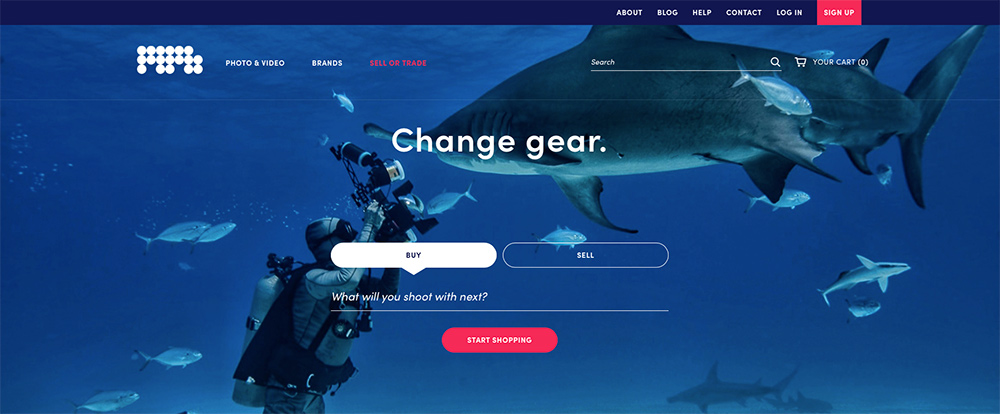
I’ve mentioned price concerns a few times already because it’s on the minds of pro photographers too, not simply beginners. One way to offset some of the monetary outlay of our pricey photography equipment is to shop used cameras and lenses.
Especially as a beginner, you will want to stick with reputable sources when looking for used photography cameras for sale. One of my most trusted sources that sell used photography equipment is MPB.
There are a plethora of reasons why I trust MPB so much.
For starters, they offer a 6-month warranty on most items, return privileges in case an item isn’t what you expected, and I appreciate how they approach buying and selling used equipment.
Specifically, they rate these cameras and lenses based on their exhaustive inspection, ensuring you get exactly what you want - a great camera or lens at an awesome price. A lot of the used items in stock are currently in-production equipment or very recently introduced gear.
Cameras Used for Photography - Entry-Level
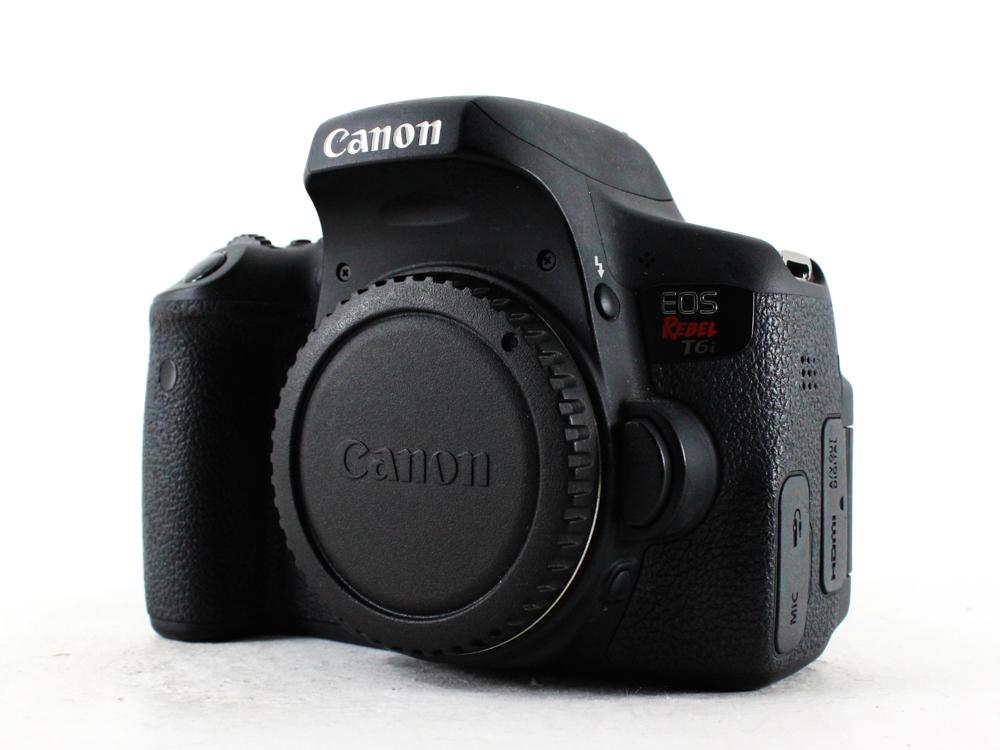
Entry-level cameras should be easy to use and most beginners want a price that doesn’t stress a budget. Here are three I like that qualify on these counts. Two are APS-C format and one is Full Frame.
- Canon EOS Rebel T6i is a DSLR camera in the APS-C format that has a high-resolution 24.2mp sensor and uses Canon EF lenses for a huge variety of lens options. Beginners can pair it with the Canon EF-S 18-135mm IS STM lens for an extremely versatile beginner kit.
- If mirrorless is your preference, look at the APS-C format Sony Alpha a6300 camera with a Sony 16-50 PZ lens for an ultra-compact, fully-capable beginner setup.
- A Full Frame format camera that beginners will find both comfortable and affordable is the mirrorless Canon EOS R. It’s lightweight, full-featured, Full Frame format, and records 4K video. Add the Canon RF 24-105mm lens for a compact and affordable system.
Cameras Used for Photography - Intermediate
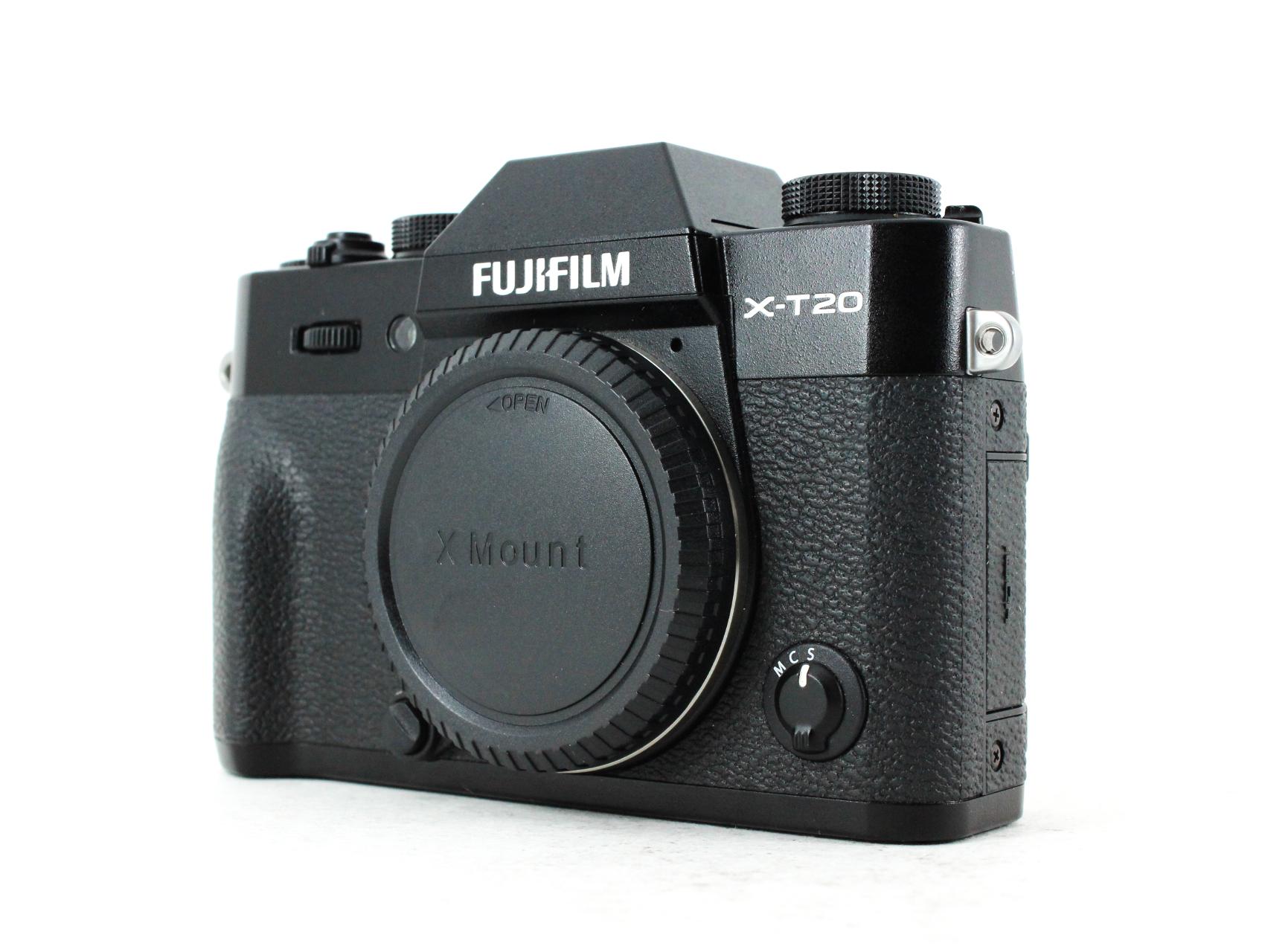
An APS-C mirrorless choice is theFujifilm X-T20 with18-55mm f/2.8-4.0 LM OIS lens that has a high-resolution sensor and fast aperture lens.
If DSLR is more your preference, it’s hard to beat the APS-C format Nikon D7100 with the high-performance Nikon 18-140mm DX lens for features, quality, and affordability. You can find almost the same exact camera but in Full Frame format, the Nikon D750 and Nikon 24-120mm zoom lens.
A mirrorless Full Frame prosumer or intermediate level camera such as the Sony Alpha a7R III has a 42.4mp Full Frame sensor and professional level build. It goes well with an all-around zoom lens such as the Sigma 24-70mm f/2.8 DN Art lens.
MFT cameras make excellent prosumer-level cameras. Options such as the Olympus OM-D E-M5 Mk II camera and fast zoom Olympus 12-40mm f/2.8 Pro lens are ideal.
Cameras Used for Photography - Advanced and Professional
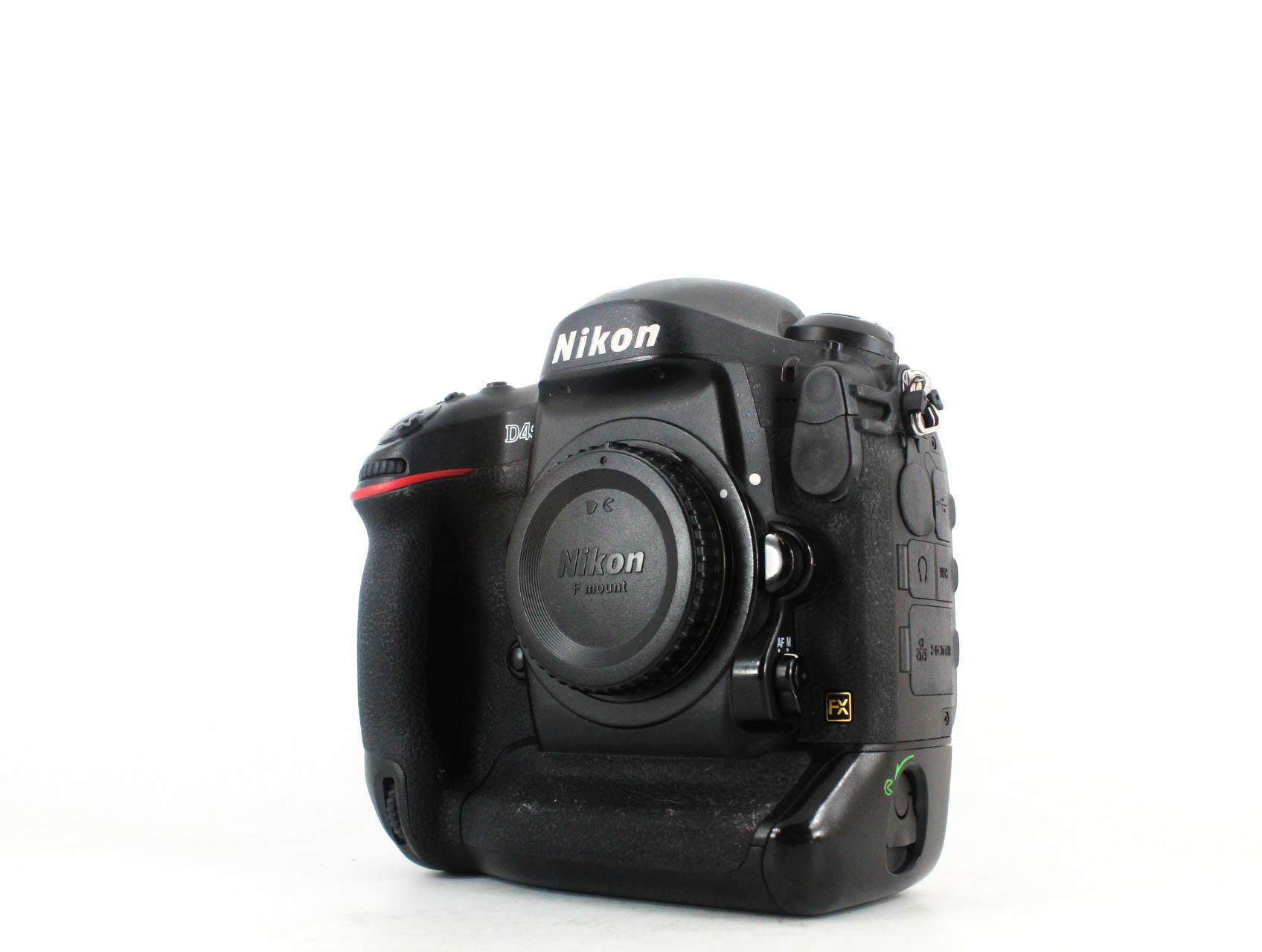
Advanced users or anyone wanting full-fledged professional build and the extra features added to pro-level cameras should look at the DSLR choices in Full Frame format such as the Nikon D4s and Canon EOS 1DX, or the mirrorless Full Frame Nikon Z6, Panasonic DC-S1R, or Sony Alpha a9 II.
For the other formats, in APS-C, look at the Nikon D500, Fujifilm X-T4, and Canon EOS 90D. MFT format pro cameras include the Olympus OM-D E-M1X and Panasonic DMC-GH5S which is also a super high-quality videography camera.
Cameras Used for Photography and Videography
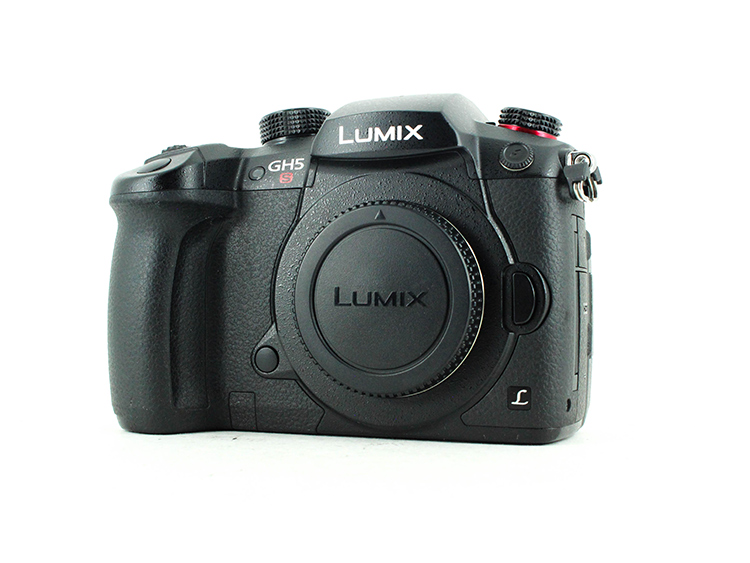
If video is your primary love, then in addition to the Panasonic GH4 and GH5 series of MFT cameras which have become virtually industry standards for videography, you should also take a good hard look at the Blackmagic Design Pocket Cinema 4K camera with MFT mount.
As you can see, you have a lot of fine options to choose from when shopping for the types of cameras used for photography. All of the options on this short list will be excellent as your first camera or as an upgrade from whatever you’re currently using.
Learn More:
- MPB Review
- Why the Canon EOS R is a Great First Full Frame Camera
- How To Save Money When Buying Photography Gear
We Recommend
Best Budget Camera of 2022: The Sony ZV-1
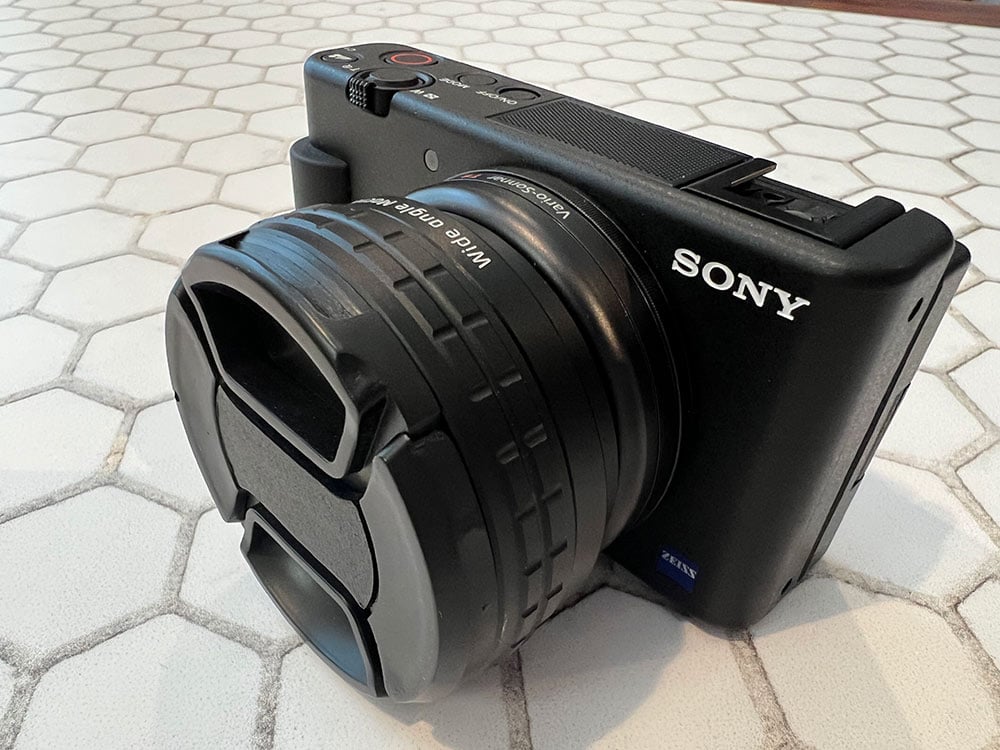
It's been about two months since I picked up the Sony ZV-1 from Adorama.
Admittedly, when I first got the camera, I really didn't expect much. After all, I have a Canon EOS R5 and an EOS R6, both of which are much more fully-featured (and more expensive) than the ZV-1.
If I'm honest, I figured I'd test it out and get rid of it, but I've been so impressed by this little camera that it's going to remain a permanent fixture in my kit for the foreseeable future.
As I explain in the video above, there is a lot to love about this camera.
Is it perfect? No. But for the price, you get an awful lot of features, benefits, and utility.
So, check out the video above to see the 60-day review of the Sony ZV-1. For convenience's sake, I've outlined some of the highlights about this camera below.
Table of Contents
- Sony ZV-1 Basic Specs
- Best Budget Camera of 2022: The Sony ZV-1 is Loaded With Features
- Pros of the Sony ZV-1
- Best Budget Camera of 2022: There are a Few Cons...
- Is This the Best Budget Camera of 2022 for You?
Sony ZV-1 Basic Specs
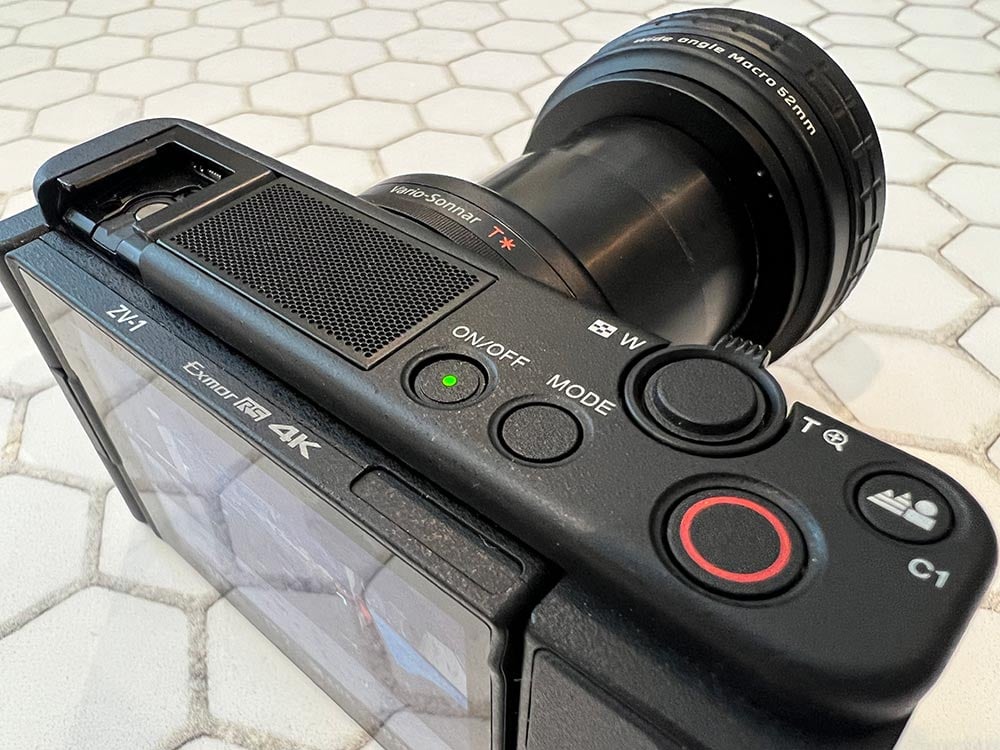
As I just mentioned, even though this is a budget camera, it comes loaded with some really great features:
- 20.1MP 1-inch Exmor RS CMOS sensor
- Bionz X image processor
- 4K video at 30p or 1080 at 120p
- Built-in ZEISS lens with a focal range of 9.4mm to 25.7mm (which is equivalent to 24-70mm)
- Optical lens stabilization
- ISO range of 100-51,200 (expandable up to 1,640,000
- 3-inch articulating touchscreen LCD with 921,600 dots of resolution
- 260 still images per charge (or around 75 minutes of video)
- Just 4.3 x 2.4 x 1.8 inches (and the body weighs only 9.5 ounces)
So, that's not a bad list of basic specs, right? I've been really impressed by the quality of the 1-inch sensor and the speed that the Bionz X processor provides.
The built-in lens has been impressive as well (it is a ZEISS, after all...). The focal range is nice and wide and allows me to change up the framing of my still images and videos quickly and easily.
The flip-out touchscreen LCD is a nice feature, too. I've found it to be nicely sized, bright, and the menu system is easy to navigate. These basic specs add to making Sony ZV-1, the best budget camera of 2022.
But there are other features that I've really enjoyed about this camera as well...
Best Budget Camera of 2022: The Sony ZV-1 is Loaded With Features
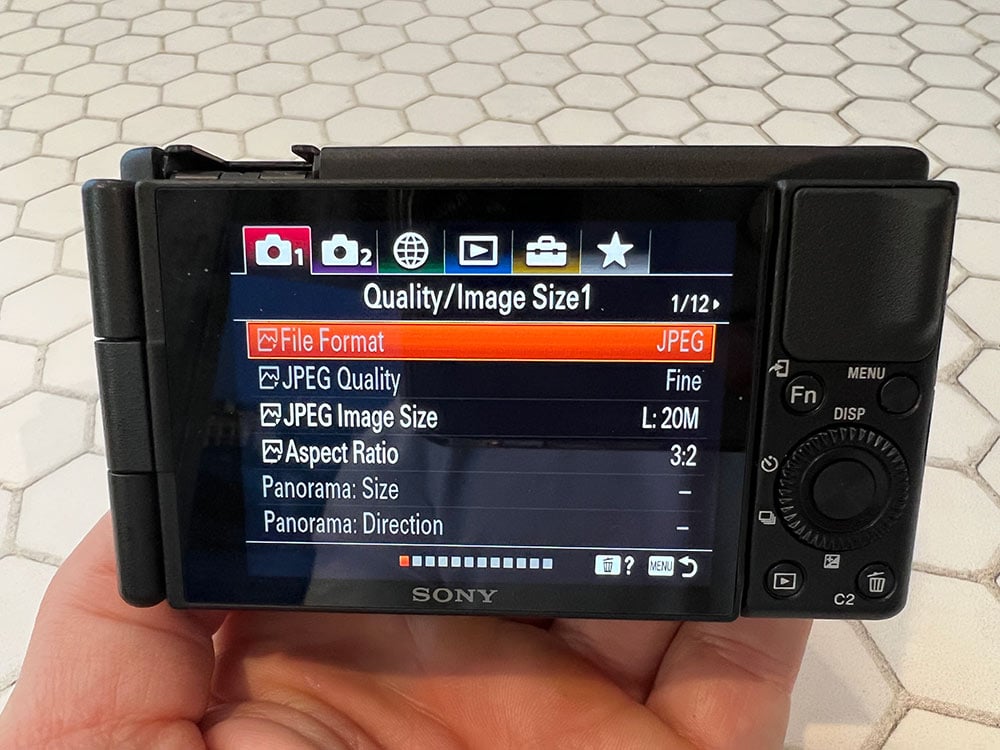
It's worth mentioning that in addition to 4K video, this little camera has the ability to shoot in Log and HLG. There are high-speed modes that record at up to 960fps.
I've found that the ZV-1 has a great autofocus system that's both fast and accurate. The accuracy comes from it being a hybrid system with both phase-detect and contrast-detect autofocus points. Eye AF for animals and humans is also included.
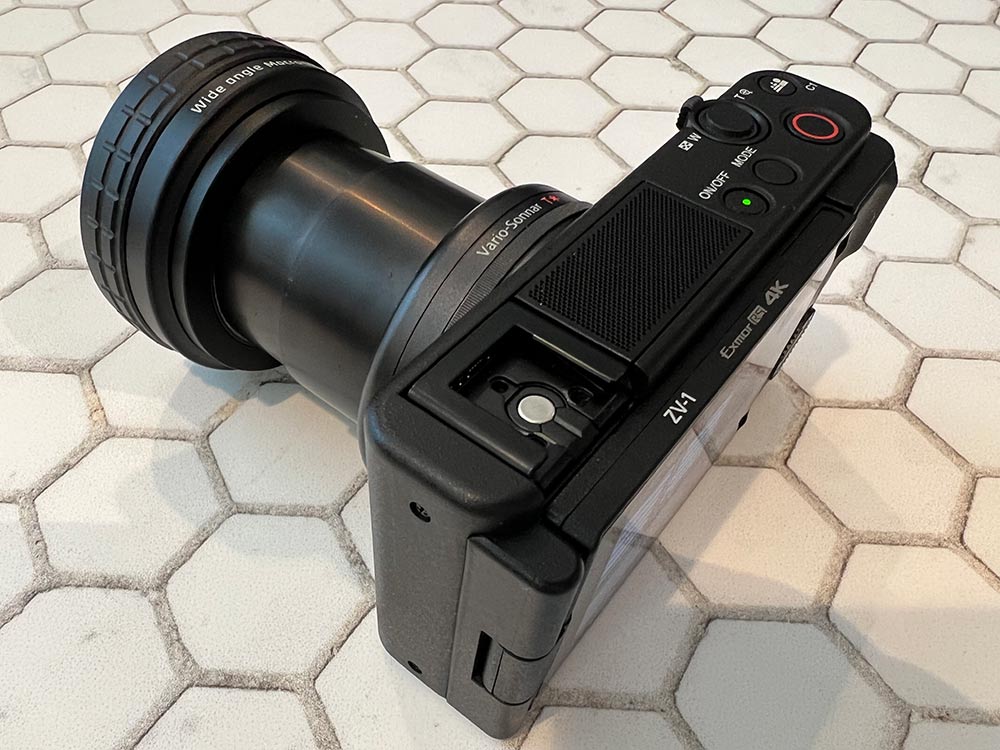
The lens has built-in ND filters, which are handy for both still imaging and video recording. The ND filters can be used in either auto mode or three different levels that are determined by the user.
Another handy feature is the connectivity that this camera offers: a microphone jack, Wi-Fi, and Bluetooth, in addition to a Micro HDMI port, a USB terminal, a high-speed USB port, and a multi-interface shoe. There's a built-in directional 3-capsule microphone with a windscreen included as well.
All this is in a tiny package that is small enough to fit in a purse, fanny bag, or around your neck with a neck strap. And at 9.5 ounces, it won't weigh you down, either!
Learn More:
Pros of the Sony ZV-1
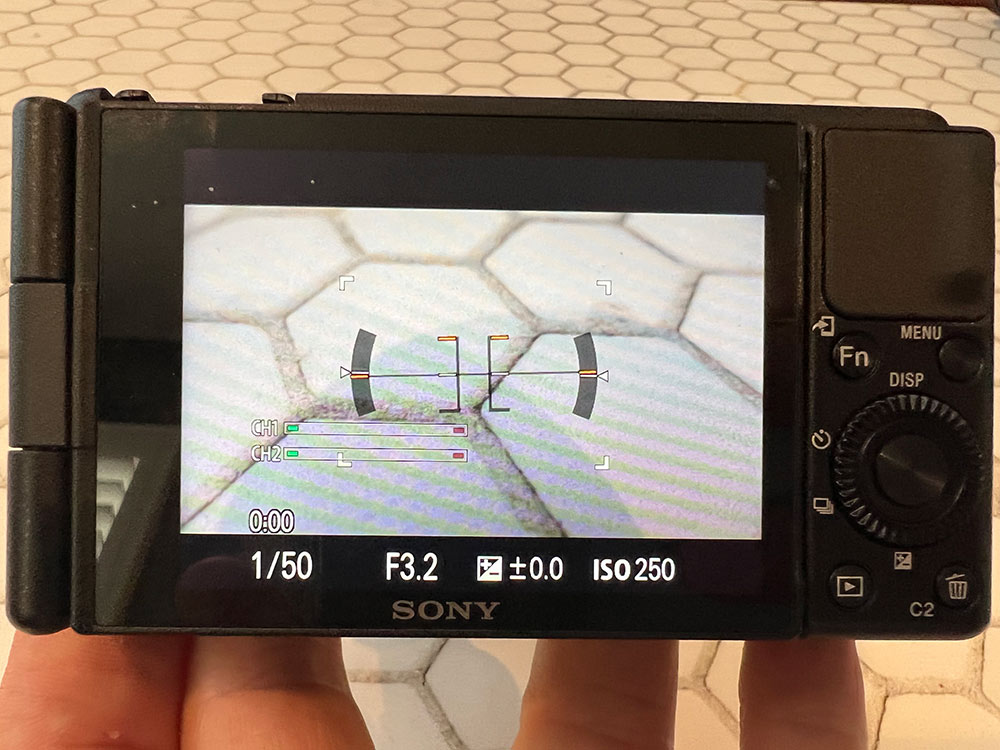
In addition to the features I've already mentioned, I want to mention that I'm really impressed with the battery life.
Now, as I discuss in my video, I'm using a third-party battery in this camera, and I was able to get almost 54 minutes of 4K 60 video out of a single charge. That's not bad!
Another feature I really like that makes this the best budget camera of 2022 is that it has a fantastic color profile.
Having a good stock color profile helps save me time in terms of editing video footage - the less time I have to fiddle with that, the more time I have to get my other work done!
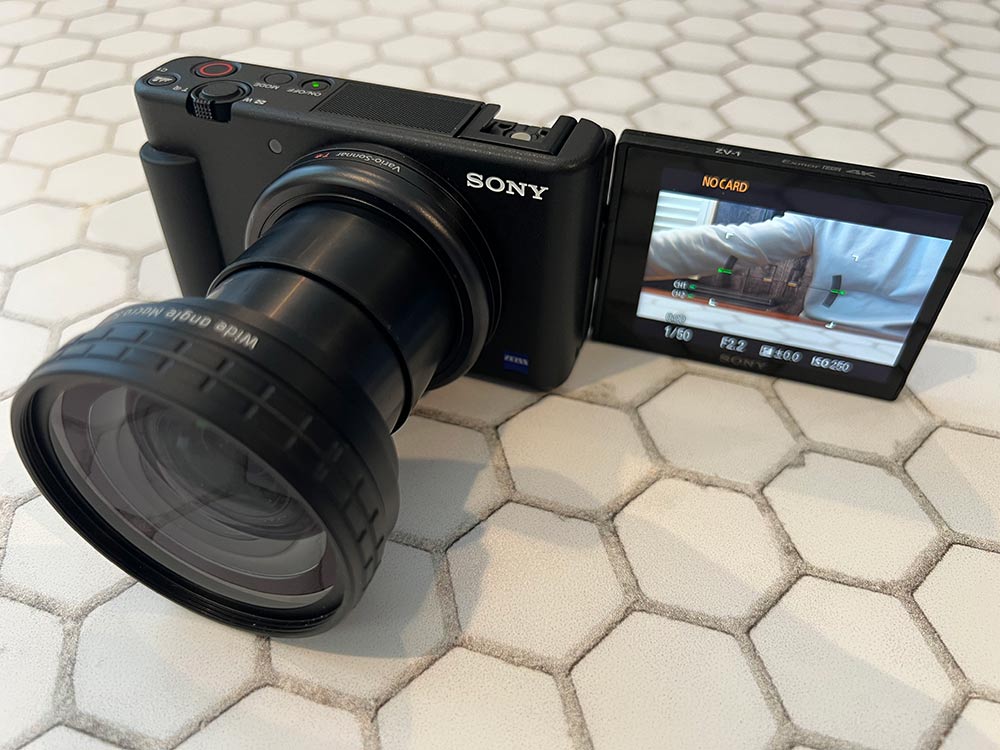
As I mentioned earlier, this camera has a touchscreen LCD that flips out to the side. I really like this feature.
On some of my old Sony cameras, the screen either flipped up or down, which is pointless if you have a microphone or other accessory on top of the camera or the camera is mounted to a tripod or other mount - you can't see the screen!
But in this case, the screen isn't obstructed, so you get a clear view of yourself as you film. Nice!
Best Budget Camera of 2022: There are a Few Cons...
As I said earlier, this camera is awesome, but there are a few things that I don't especially like.
For starters, the factory 5-minute timer is a pain in the butt. Fortunately, this is an easy fix to make, so consult my video above to learn about that process.
Secondly, I like to be able to check my audio when I'm filming, but this camera lacks a headphone jack. Granted, there are tons of other ports and jacks, so kudos to Sony for cramming all the other stuff in there. But, a headphone jack would have been awesome.
Lastly, the built-in 24-70mm equivalent lens just isn't wide enough for what I need this camera to do. So, I've added the Ulanzi WL-1 lens adapter, which converts the 24-70mm lens to the equivalent of an 18mm lens, which is ideal for shooting handheld video in selfie mode.
So, while there are several things I don't especially like about the Sony ZV-1, two of them are easily fixed. In my book, that's a win!
Is this the Best Budget Camera of 2022 for You?
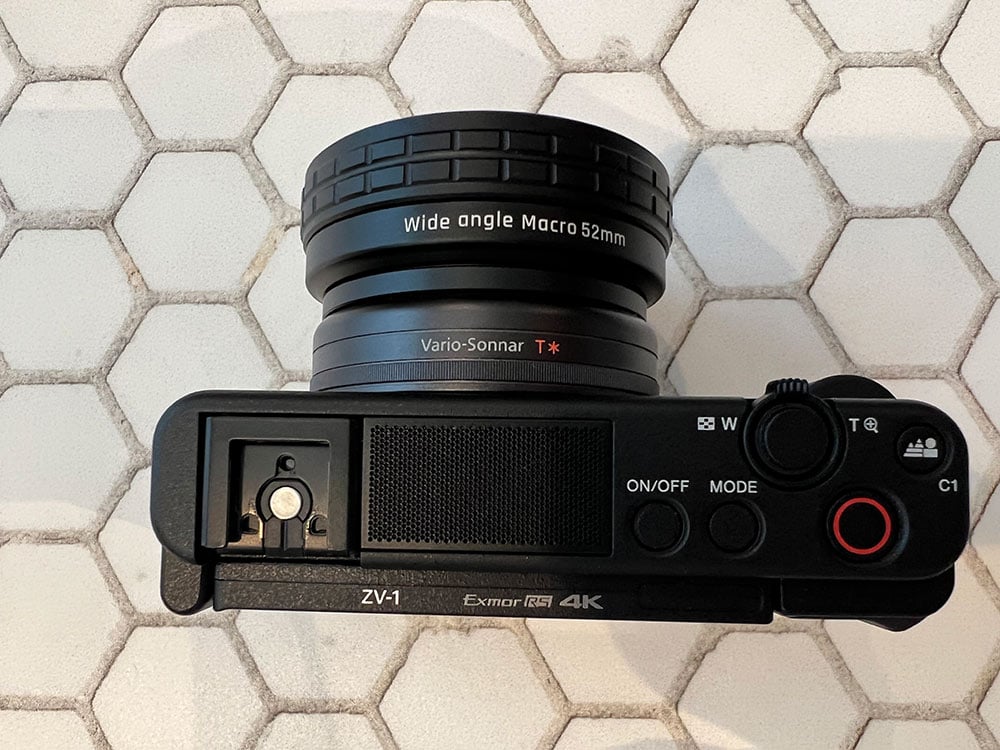
If you're looking for a feature-rich and capable camera on a budget, the Sony ZV-1 is a great pick.
Just bear in mind that it fulfills many of my specific needs - your needs might be a little different.
But, if after reading this quick review and watching my videos about the ZV-1 you've decided it's a great fit for your needs, then by all means, snag one today!
At the time of this writing, the Sony ZV-1 is $748.00. Again, for all the features you get with this camera, that's a great price!
Learn More:
We Recommend
Best Camera for Product Photography
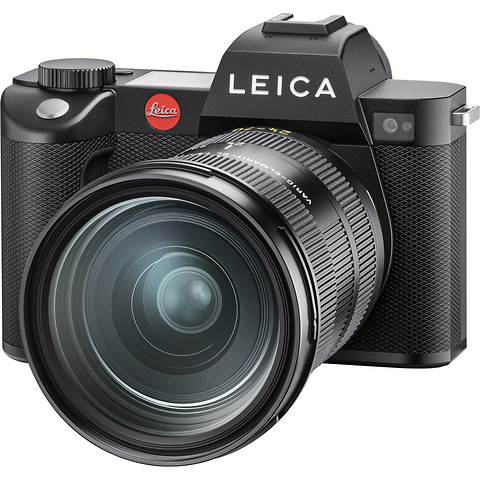
Whenever I come across an article about what is the best camera, lens, flash, tripod, or whatever for portraits, weddings, wildlife, product photography, architectural photography, or whatever, in the back of my mind I’m saying “Is there really only one best?”
I have two main reasons for this thought. One, there are SO MANY amazingly excellent cameras for all types of photography and all types of photography. And two, every photographer is different, having some tastes and desires that vary from other photographers.
Here’s the thing, though. I still read every article and learn something from them. Weird, huh? I just love being a photographer and I love teaching it, too. So, with that in mind, here are my current thoughts on what is the best camera for product photography.
Format and Type of Camera
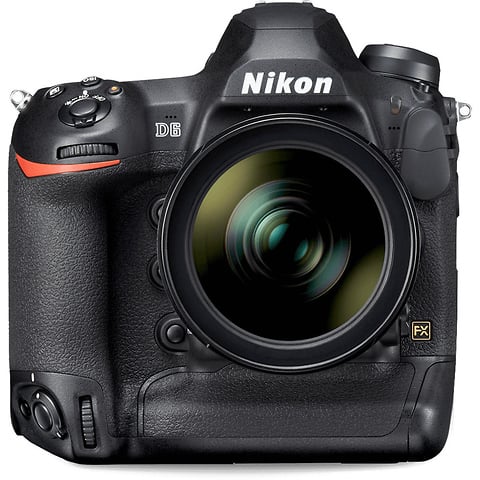
Looking at the 3 most used digital formats for serious photography, MFT, APS-C, and Full-Frame, which is the best camera for product photography?
From the perspective of total usability including post-processing, I’m going to opt for the two larger formats, APS-C and Full-Frame.
MFT mirrorless pro and prosumer cameras are super performers for quality imaging and virtually perfect for all videography, but the size of the pixels are smaller for the same resolution, so there isn’t as much capability in low light performance and I also think that still imaging color management is not quite equal to the two larger formats.
This isn't to say that a photographer couldn’t use MFT (Micro Four Thirds / Micro 4/3rds) cameras for professional product photos, simply that a larger format offers some very real benefits for professional photography.
So, as we’re searching for the best camera for product photography, we’re zeroing in on APS-C and Full-Frame format cameras. So now the question becomes between Mirrorless cameras and DSLRs, what camera is best for product photography?
In APS-C format, I’m comfortable with either type for any of the 3 levels of entry-level, intermediate, and full-fledged professional. For a Full-Frame format, full-fledged professional-level camera, I’m going to endorse mirrorless, I’ll explain why in a moment.
Must-Have Features
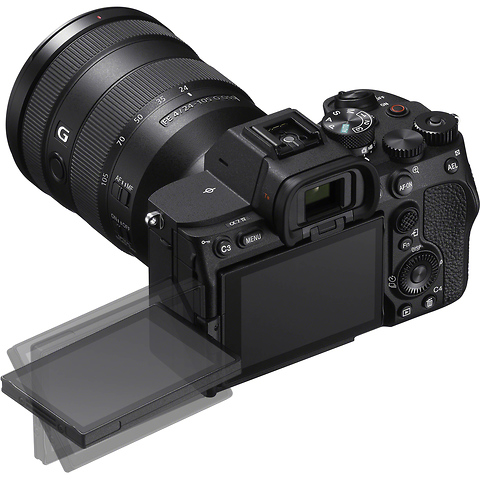
For any serious photography, there are certain features and capabilities that I see as must-have for being in the running for best camera for product photography.
Interchangeable lenses, manual exposure control, and manual focusing are the 3 basics I feel are basics for any serious photography. While I love all the different automations in modern cameras, sometimes we simply need control to adjust properly for creating what we want.
Other features I like to recommend are exposure bracketing, spot metering, and adjustable focus points. These features ease our workflow when working with many genres of professional photography.
Another important feature is a very high-resolution rear viewscreen, articulated or tilting is preferred, with the ability to magnify live view for critical focus confirmation.
4K video recording is a must-have for me now, but Full HD 1080p is acceptable for many uses. I find it interesting how many clients for still photography I’ve worked with for years are now requesting 4K video footage of their products in addition to the high-resolution still images they still want.
Learn More:
Best Camera for Product Photography - Entry-Level
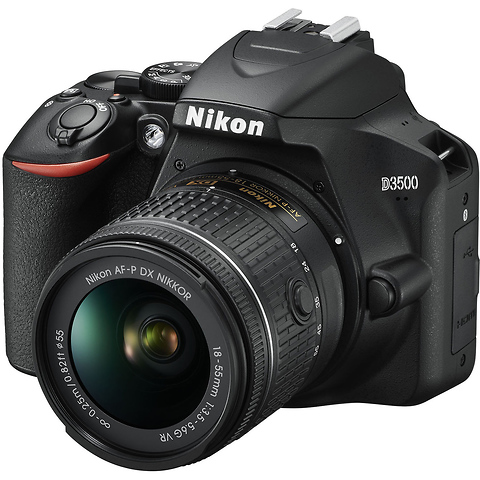
An entry-level idea for the best camera for product photography can go with either a DSLR or a mirrorless camera. Mirrorless cameras may be an easier move for stepping up from smartphone photography or getting back into photography as former point-and-shoot film camera users, but the least expensive choices are going to be DSLRs.
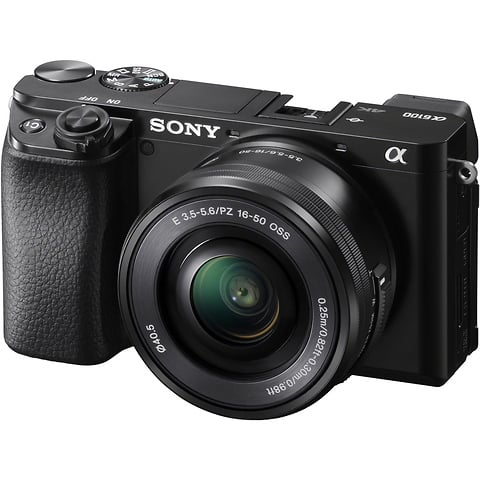
Best camera for product photography, entry-level APS-C mirrorless: Sony Alpha a6100 with 16-50mm lens. This APS-C format mirrorless camera has a 24.2mp sensor, can capture 14-bit RAW files, records video in 4K, and has a high-resolution tiltable rear viewscreen. Sony lenses are excellent, plus you can use a mount adapter for all sorts of legacy lenses since it is a mirrorless camera.
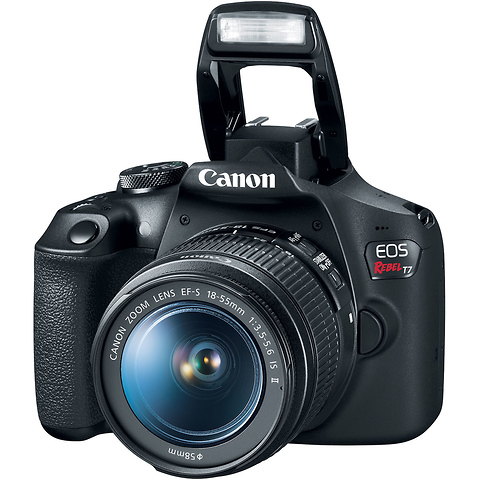
Best camera for product photography, entry-level APS-C DSLR:Canon EOS Rebel T7 with 18-55mm lens. Hands down the winner in low price for a superb camera, this camera has a 24.1mp sensor, records video in Full HD, and has a bright non-moveable rear viewscreen. The closest competition for price is theNikon D3500 with 18-55mm lens that has almost identical features.
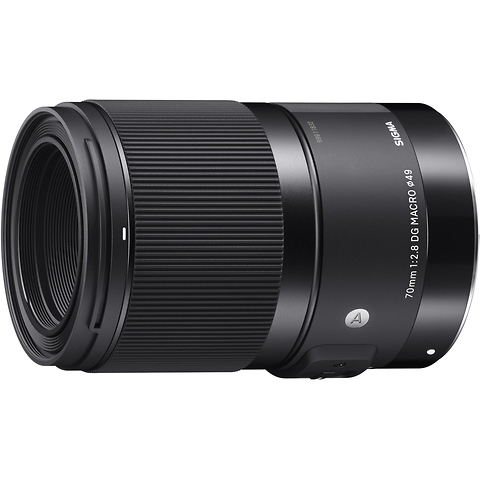
Quickly add a prime focal length macro lens from either the manufacturer or a good third-party brand such as the Sigma 70mm f/2.8 DG Macro to supplement the very sharp but slower aperture kit zoom lenses.
Best Camera for Product Photography - Intermediate or Prosumer
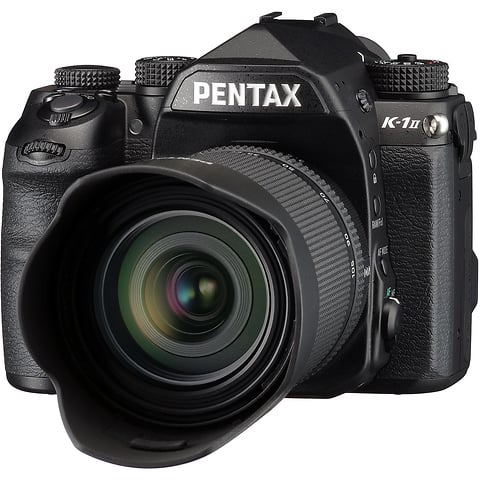
Basically, any camera that has features and build quality that appeals to intermediate photographers can be used as a prosumer-level camera. Prosumer meaning it is priced for a consumer market but having many of the features of higher-end pro cameras.
First, we’ll list APS-C format cameras.
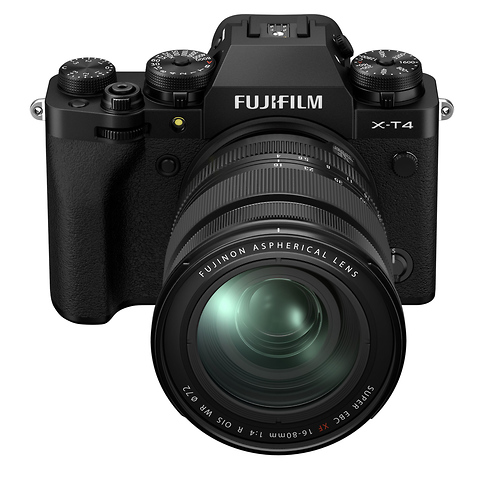
Best camera for product photography, prosumer APS-C mirrorless: Fujifilm X-T4 with 16-80mm lens. 26.1mp sensor, 4K video, and a large vari-angle viewscreen. Fujifilm is a major player in high-resolution medium format digital cameras, their expertise in all aspects of imaging is evident in any of their cameras.
Best camera for product photography, prosumer APS-C DSLR: Nikon D7500 with 18-140mm lens. Perhaps one of the best bargains in prosumer quality cameras, the Nikon D7500 has 4K video, tilting viewscreen, and a 20.9mp sensor.
And now an awesome option for a Full-Frame format mirrorless camera.
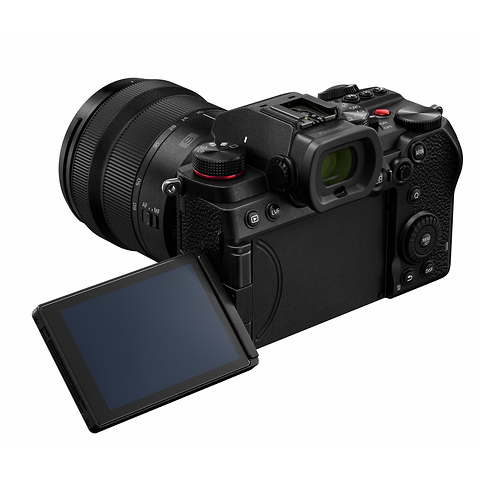
Best camera for product photography, prosumer Full Frame mirrorless: Panasonic Lumix DC-S5 with 20-60mm lens. If you’re looking to break into Full-Frame photography and want excellent video capability along with a budget-friendly price, this hybrid camera may be your best choice. 24,2mp sensor, 4K video, and a fully articulated viewscreen.
Top Pro-Choice Best Camera for Product Photography
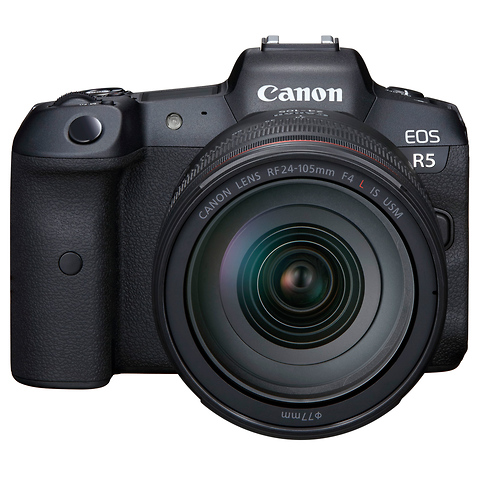
This category has been ruled by DSLRs since digital Full-Frame started, but I think mirrorless is the future for high-end digital photography. The ability to use virtually any 35mm format lens ever made via adapters and the amazing video capability of these cameras are two reasons I personally lean this way.
There are many other reasons the industry is strongly leaning this way, so I see it as the way to go from now on. So, with that in mind…
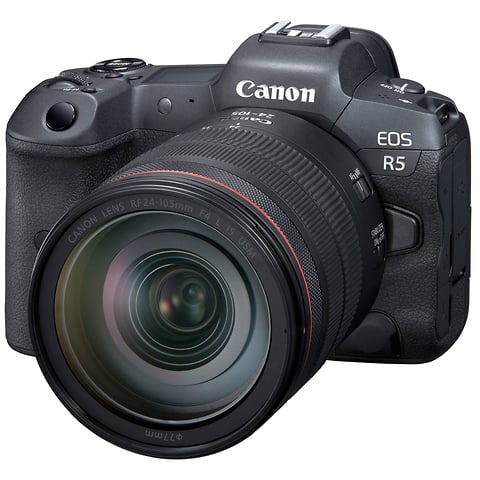
Best camera for product photography, Full-Frame mirrorless, pro-level: Canon EOS R5 with 24-105mm lens. All I can say is WOW, what a camera! 4K video, 45mp sensor, 8K video (yes 8K), articulated viewscreen, and more features than I can list in this brief write-up. Follow the link and judge for yourself how good a camera it is.
Well, now you have my list of options for the best camera for product photography, have fun following the links! Enjoy making great images, too.
Learn More:
- How To Market Yourself As a Videographer
- Food Photography Lighting Tips
- Best Lens for Product Photography
We Recommend
Best Camera of 2022 for Beginners, Enthusiasts, and Pros
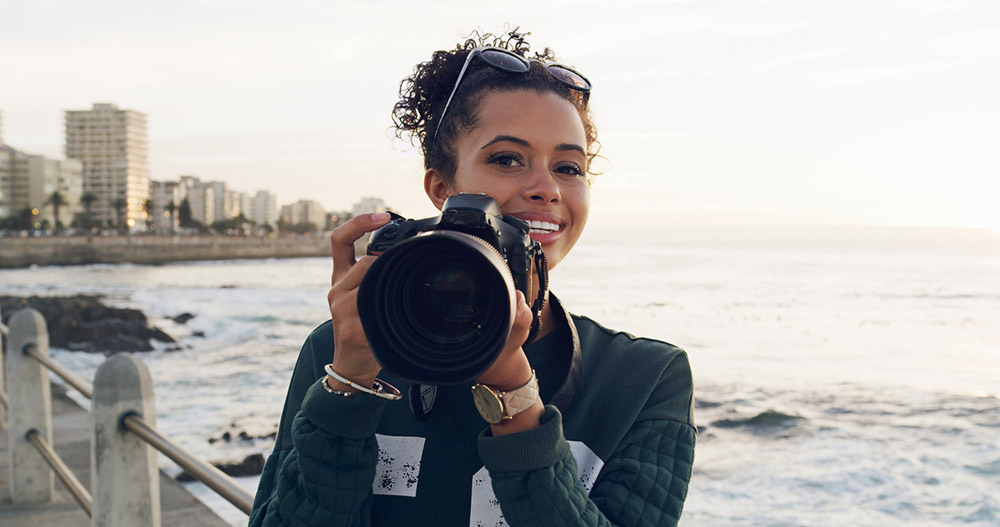
Photo by Cecilie_Arcurs via iStock
What is the best camera of 2022? Well, that's a complicated question...
The best camera for me might not be the best camera for you. It depends on many factors like your skill level, your needs in terms of specs and features, and your budget, to name a few.
So the answer to our question is that it depends!
What we've done, though, is compile a list of cameras for beginners, enthusiasts, and professionals. For each category, we've included multiple cameras, each with detailed information about specs and features, as well as details about the pros and cons of each camera.
In other words, this is a one-stop-shop for you to find the best camera to fit your current situation!
Table of Contents
Best Camera for Beginners
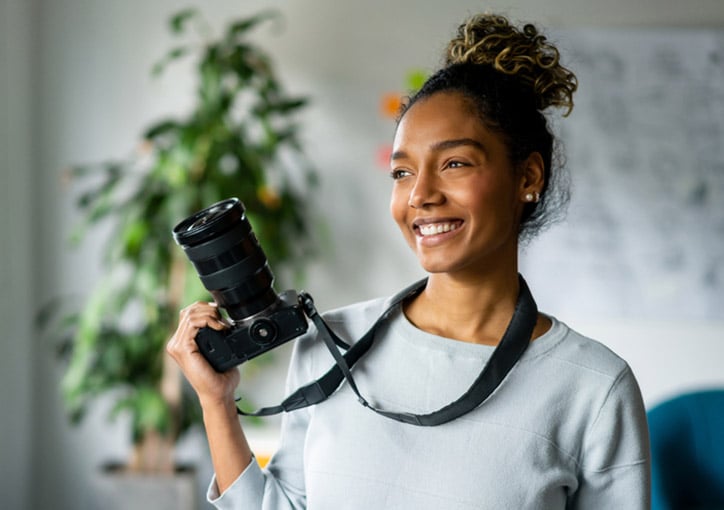
Photo by andresr via iStock
If you're a new photographer and you've outgrown the capabilities of your smartphone or existing DSLR or mirrorless camera, the options listed below give you loads of features without breaking your budget.
What's more, these cameras have enough in the way of specs that you can grow as a photographer in the coming years without necessarily needing to invest in a more robust camera.
Additionally, while this list includes options for the best camera for photography, each beginner camera also offers decent video features. It's the best of both worlds!
Olympus OM-D E-M10 Mark IV
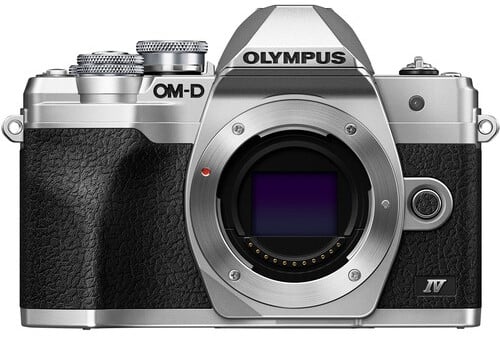
Specs and Features
- 20MP Micro Four Thirds Live MOS sensor
- TruePic VIII processor
- 121-point Contrast Detection AF system
- EVF with 2.36m-dots
- 3” tiltable touchscreen with 1.03m-dots
- 15fps burst mode
- 4K video at 30p, 25p, and 24p; Full HD video at 60p, 50p, IPB
- Built-in WiFi and Bluetooth
- Approximately 360-shot battery life
Pros and Cons
- Pros
- Fantastic sensor
- Image stabilization
- Compact size
- Cons
- Good video capabilities
- No microphone port
- No USB-C
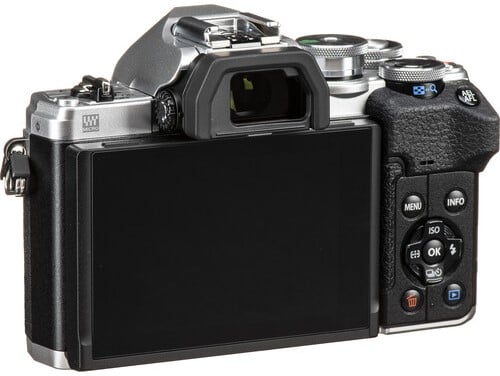
If you want a small, highly capable mirrorless camera that is compatible with hundreds of affordable lenses, the OM-D E-M10 Mark IV is right up your alley.
Though it's a beginner camera, you get some nice features headlined by a fantastic 20.3-megapixel micro four thirds sensor. The TruePic VIII processor makes it a speedy camera as well, offering up to 15fps burst shooting speed.
The camera's flip-down touchscreen is a nice touch for capturing low-angle shots while the image stabilization will help you create tack-sharp images, even when you're holding the camera.
There's no microphone or USB-C ports, and the autofocus isn't the best in this class. However, this camera is loaded with other features, has great ergonomics, and with all those available lenses, you can really build an impressive kit that can grow with you as you gain skills. It's certainly an option for the best camera of 2022!
Learn more in our Olympus OM-D E-M10 Mark IV review.
Sony A6000
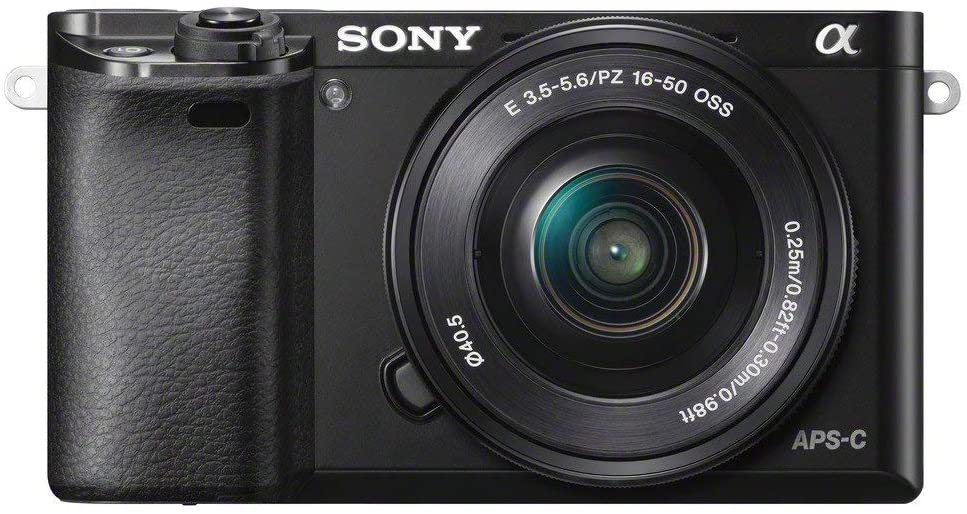
Specs and Features
- 24.3-megapixel CMOS APS-C sensor
- Bionz X image processor
- Hybrid autofocus system with 179 phase-detect and 25 contrast-detect AF Points
- 1.44-million dot OLED electronic viewfinder
- 3-inch tilting LCD with 921.6K dots
- 11 fps continuous shooting
- 1080p HD video at 24p and 60p
- Built-in NFC and WiFi
- Approximately 300-shot battery life
Pros and Cons
- Pros
- Excellent autofocus system
- Huge selection of lenses
- Small and lightweight
- Cons
- Old model
- No 4K video
- OLED EVF resolution isn't up to par

Debuting in 2014, the Sony a6000 isn't exactly a new camera. However, it's still one of the top choices for best camera for beginners because it offers excellent features at a great price point (given its age, you can often find it at steep discounts).
Sure, you don't get 4K video, but if you're more focused on stills, you can reap the benefits of a robust 24.3-megapixel sensor, a fast and accurate autofocus system, and 11fps continuous shooting. Additionally, Sony has a huge selection of images for cameras in this range, so you can outfit your a6000 with any lens you could possibly want.
Fujifilm X-T200
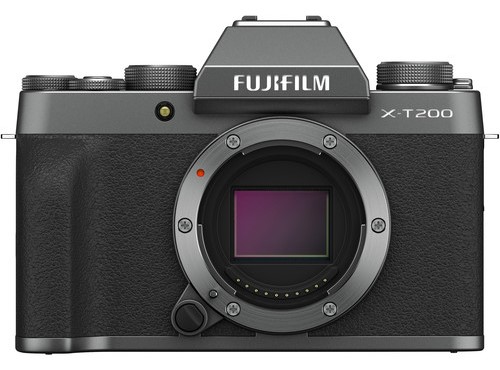
- Specs and Features
- 24.2MP APS-C CMOS sensor
- New image processing engine
- 425-point Phase Detection AF system
- EVF with 2.36m-dots
- 3.5” fully-articulated touchscreen with 2.78m-dots
- 8fps burst mode
- 4K video at 30p, 25p, and 24p; Full HD video at 120p, 60p, 50p, 25p, and 24p
- Built-in WiFi and Bluetooth
- Approximately 270-shot battery life
Pros and Cons
- Pros
- Big and bright display
- Excellent uncropped 4K video
- Digital gimbal stabilizes 1080p footage
- Cons
- No video subject tracking
- Small buffer during continuous shooting
- Small joystick
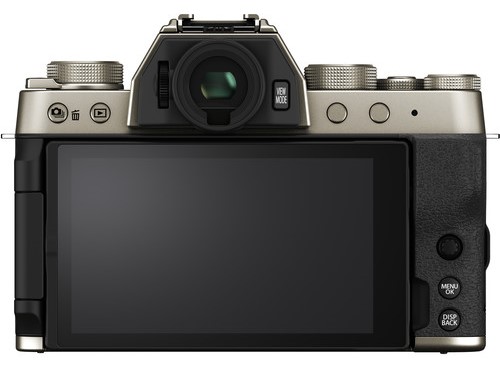
TheFujifilm X-T200 is an entry-level mirrorless camera ideal for hybrid photographers who shoot photos and videos. It was announced in January 2020 and replaced theFujifilm X-T100 as the company’s signature interchangeable lens camera for beginner photographers.
It combines a 24.2-megapixel APS-C CMOS sensor with an upgraded image processor, and the pair delivers fantastic results in both photo and video modes. Moreover, the colors in JPEGs are bright, vibrant, and very pleasing to the eye. JPEGs look great straight out of the camera and are perfect for new photographers.
Also, thanks to a new hybrid autofocus system capturing sharp, in-focus images has never been easier. The AF works during photo and video modes, and the face/eye-detection setting is phenomenal for portraits and videos. Manual autofocus is also available for people interested in learning how to use it.
A few more noteworthy features of the Fujifilm X-T200 include a giant fully-articulating touchscreen display, intuitive menus, and uncropped 4K video. The high-resolution video and articulating screen, in particular, make it an excellent camera for beginner YouTubers and filmmakers.
Learn more in our Fujifilm X-T200 review.
Sony ZV-1
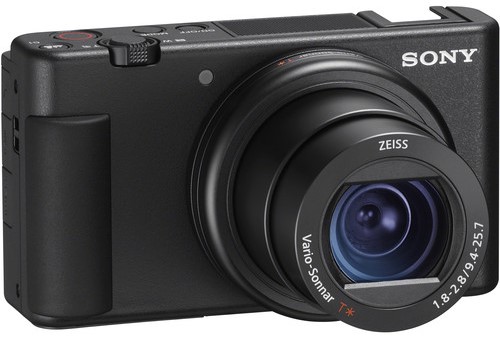
Specs and Features
- 20.1MP 1” Exmor RS BSI CMOS sensor
- Bionz X image processor
- 315-point Phase Detection AF system
- No viewfinder
- 3” fully-articulated touchscreen with 921,600-dots
- 24fps burst mode
- 4K video at 30p, 25p, and 24p; Full HD video at 120p, 100p, 60p, 50p, 30p, and 24p
- Built-in WiFi and Bluetooth
- Approximately 260-shot battery life
Pros and Cons
- Pros
- Great for vlogging
- Lightweight and portable design
- Attractive price
- Cons
- No viewfinder
- Weak battery life
- Not weather-sealed
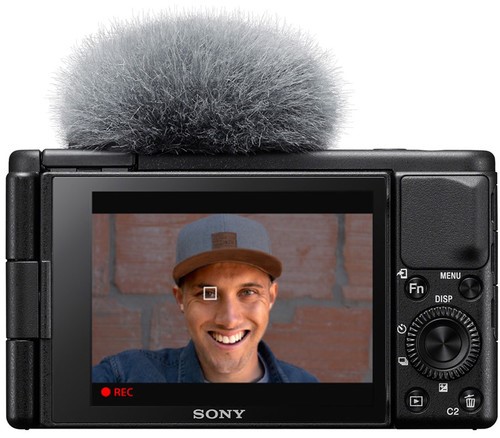
The Sony ZV-1 is an award-winning point-and-shoot camera specifically designed for vloggers, YouTubers, and influencers. It came out in May 2020 and has been flying off the shelves ever since. It has a 1-inch CMOS sensor and a powerful Bionz X image processing engine.
While it does take high-quality still images, video shooting is its bread and butter. It offers 4K video capture at frame rates of 30, 25, and 24 frames per second and has 1080p Full HD options. I recommend 30p for most people, but if you want a more cinematic look to your movies, you should opt for 24p.
More killer video features of the Sony ZV-1 are an in-camera 1080p/120p slow-motion mode, a fully-articulating touchscreen LCD, a strong battery life, and advanced audio controls. The audio controls include a port for an external microphone, a headphone jack, and a built-in directional microphone with a wind protector.
If you like the look and feel of this camera but want an interchangeable lens camera instead, you should consider the Sony ZV-E10. It has a massive lineup of native Sony E Mount lenses and is like a newer version of the Sony Alpha a6100.
Learn more in our Sony ZV-1 review.
Best Enthusiast Camera
Sony a7 IV
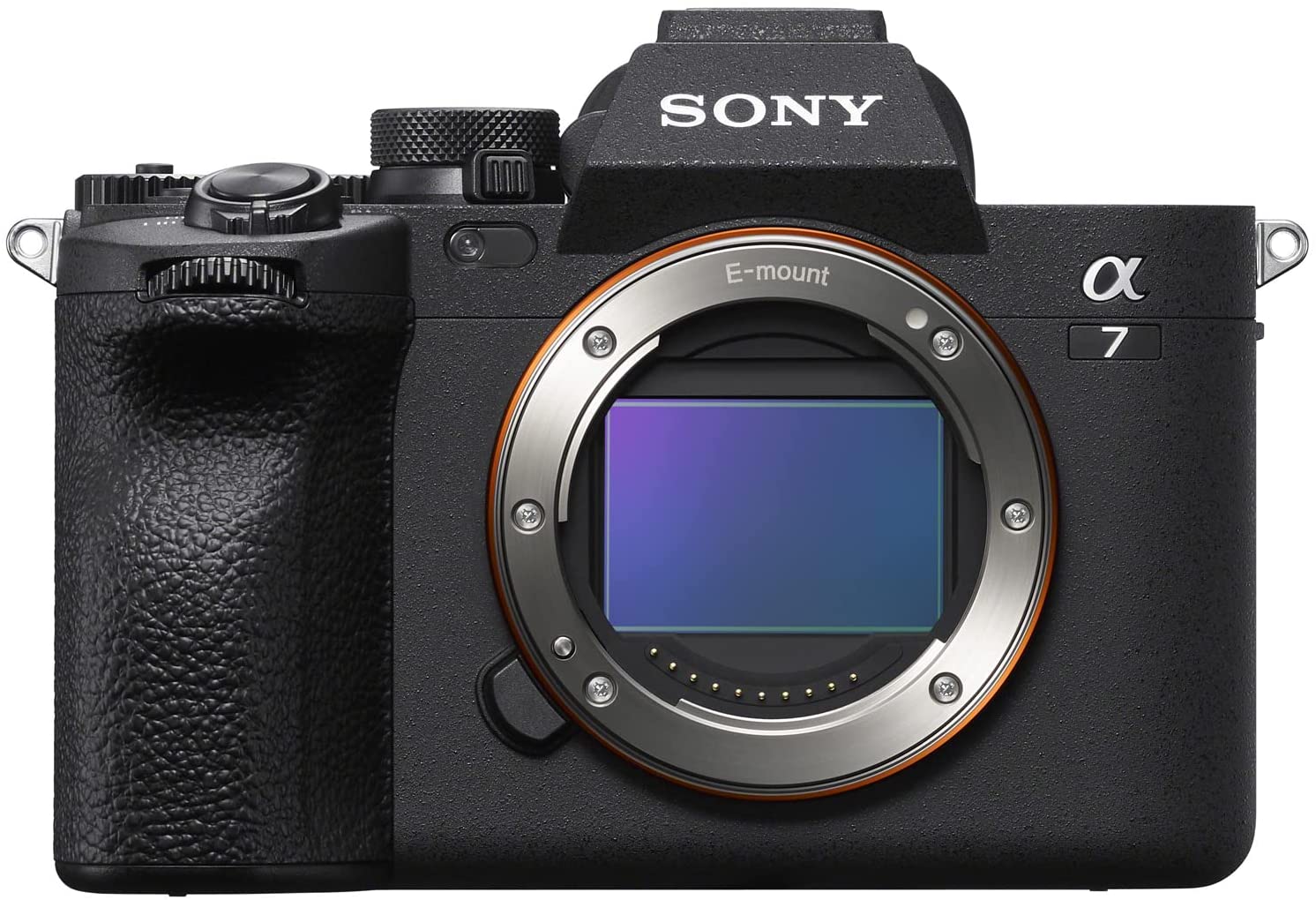
Specs and Features
- 33-megapixel full frame EXMOR R back-illuminated CMOS sensor
- Bionz XR image processor
- Hybrid autofocus system with 759 phase-detect and 425 contrast-detect AF Points
- 3.68-million dot EVF with 120fps refresh rate
- 3-inch tilting LCD with 1.036 million dots
- 10 fps continuous shooting
- Up to 4K video at 60p with 7K oversampling at 4K 30p
- Built-in WiFi and Bluetooth
- 5-axis in-body image stabilization
- Approximately 580-shot battery life
Pros and Cons
- Pros
- Amazing 33-megapixel back-illuminated sensor
- Next-level autofocus
- Exceptional EVF
- Cons
- Some menu options are very complex
- 4K video is cropped
- LCD resolution isn't that great
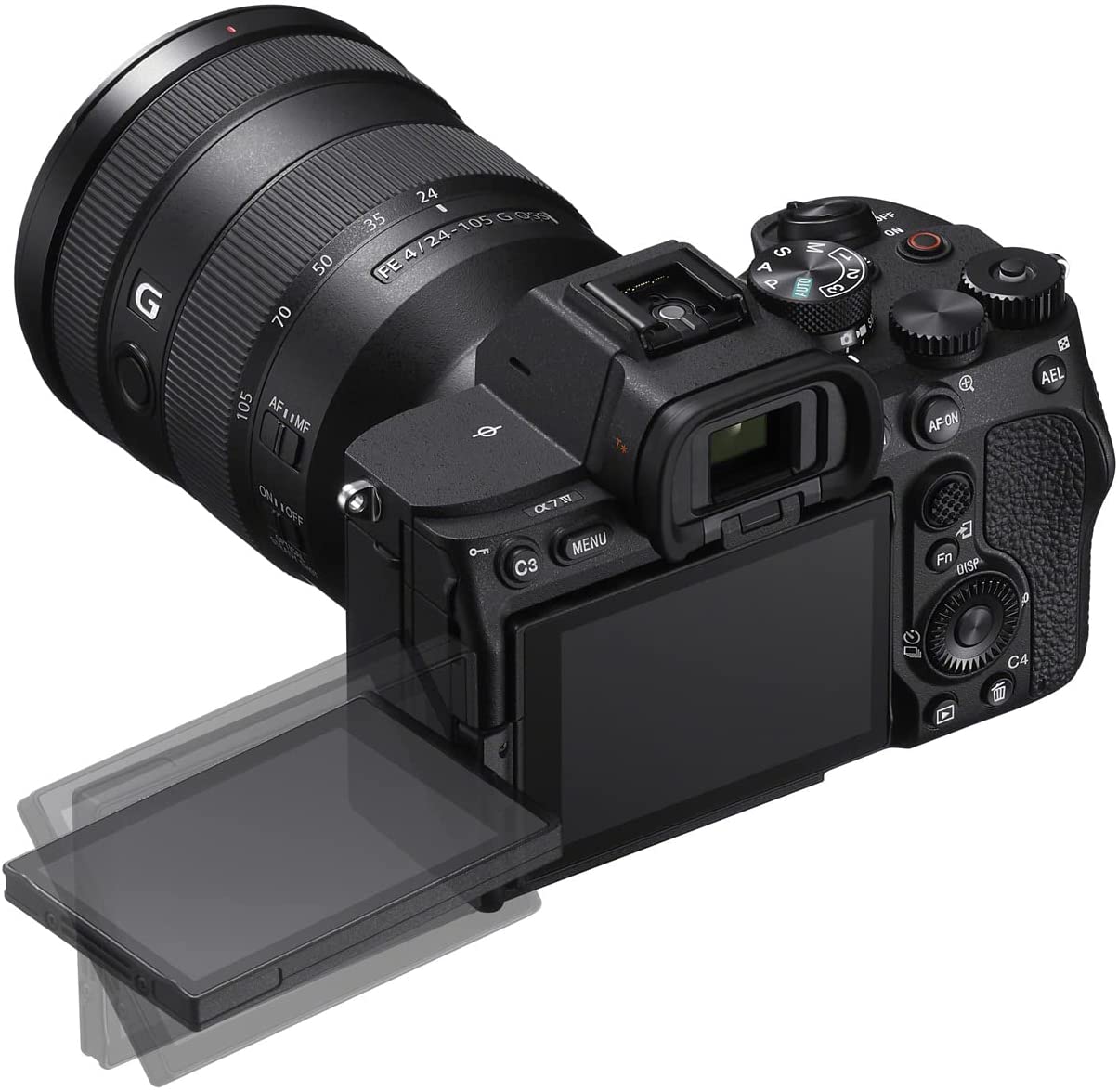
If you're an enthusiast photographer, you'll be hard-pressed to find a better all-around camera than the Sony a7 IV.
This Sony camera has a new 33-megapixel sensor that offers excellent imaging quality and good video performance, though 4K video is heavily cropped. As expected, the a7 IV has a killer autofocus system that is among the leaders in the industry.
This camera also has great battery life, which is estimated at 580 shots.
Of course, all these goodies come at a price. This is not a cheap camera, but with features like a Bionz XR processor, 10-bit video support, and a buffer that's hard to fill, you definitely get what you pay for. That's why we've ranked it as the best enthusiast camera of the year!
Canon EOS R6
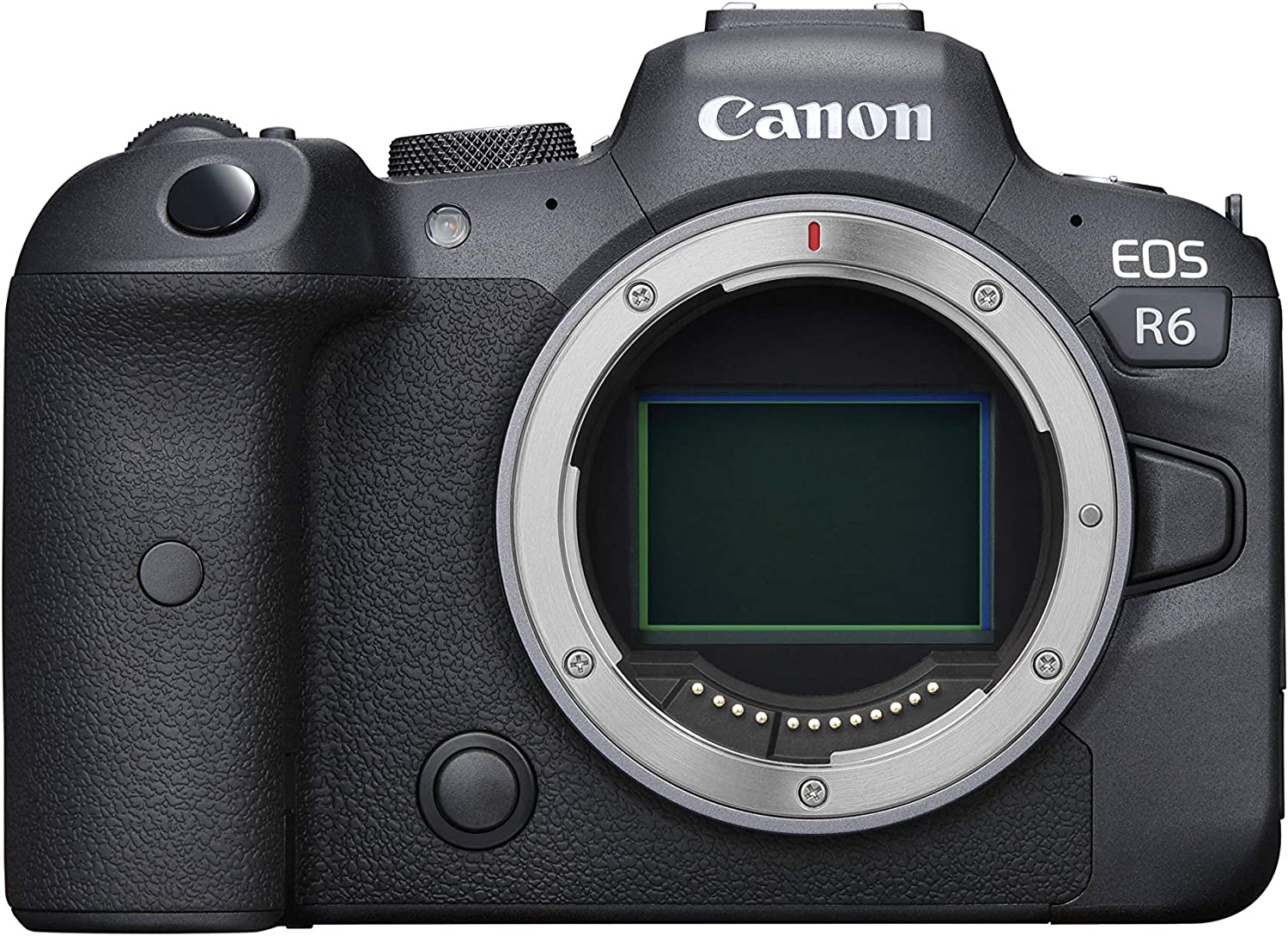
Specs and Features
- 20.1MP full frame CMOS sensor
- DIGIC X processor
- 6,072 Dual Pixel CMOS AF II AF points
- 0.5” OLED EVF with 100% coverage and 3.69k-dots
- 3” fully articulating touchscreen
- 12fps burst mode with mechanical shutter, 20fps burst mode with electronic shutter
- 4K video capabilities at 60p, 50p, 30p, 25p and 24p
- Built-in WiFi and built-in Bluetooth
- 5-axis in-body image stabilization
- Approximately 510-shot battery life
Pros and Cons
- Pros
- Superb autofocus system that's easy to set up
- Great ergonomics
- Full frame in-body image stabilization
- Cons
- Rolling shutter is an issue
- Low sensor resolution compared to similar cameras
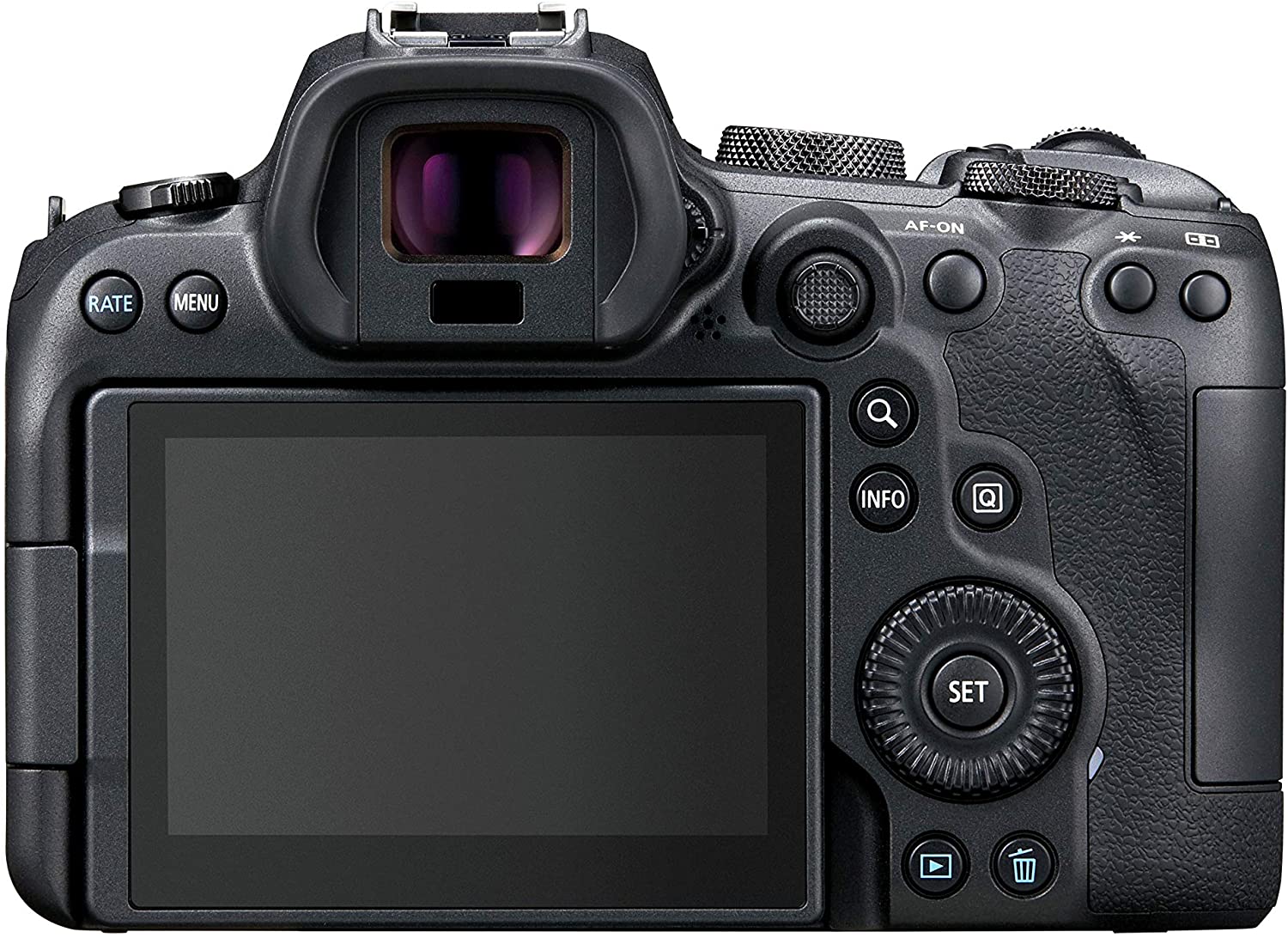
Another great option for the best enthusiast mirrorless camera is the Canon EOS R6.
One of its biggest draws is that it offers similar capabilities as the Sony a7 IV, but with a smaller price tag. It's also a true hybrid camera, so if you want excellent photo and video performance, it's a solid choice - especially if you're already in the Canon ecosystem.
Aside from the breathtaking autofocus system, the EOS R6 offers top-of-the-line burst shooting, a 5-axis stabilization system, and is compatible with Canon's impressive and ever-growing lineup of RF lenses.
While it is a good performer on the video front, overheating limitations pose a bit of a problem. Rolling shutter is also an issue, and for some, the 20.1-megapixel resolution will be a turn-off. However, despite a few flaws, this is a fantastic option for enthusiast shooters.
Learn more in our Canon EOS R6 review.
Nikon Z6 II
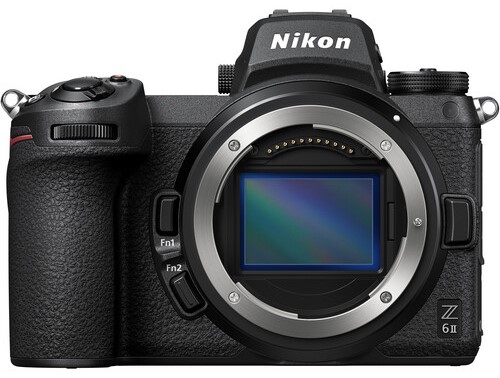
Specs and Features
- 24.5MP full-frame BSI-CMOS sensor
- Dual Expeed 6 image processor
- 273-point Phase Detection AF system
- EVF with 3.69m-dots
- 3.2” tiltable touchscreen with 2.1m-dots
- 14fps burst mode
- 4K video at 30p, 25p, and 24p; Full HD video at 60p, 50p, 30p, 25p, and 24p
- Built-in WiFi and Bluetooth
- Approximately 410-shot battery life
Pros and Cons
- Pros
- Terrific video and image quality
- Two SD card slots
- Excellent ergonomics
- Cons
- AF occasionally “hunts”
- Highest quality video compressions require an external recorder
- Intricate menu system
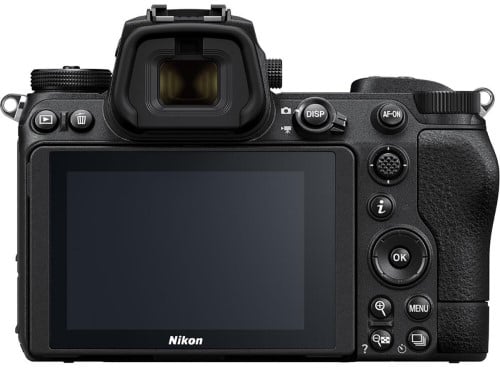
The Nikon Z6 II is a powerful hybrid mirrorless camera launched in October 2020 to much anticipation. It boasts a 24.5-megapixel full-frame CMOS sensor and two Expeed 6 image processors. The dual processors seriously increase the camera's speed and will improve your overall productivity when in the field.
One fantastic feature of this camera is its autofocus. It covers approximately 90% of the camera's sensor, has 273 selectable focus points, and works equally well in video recording as it does during still shooting. Moreover, the subject tracking in C-AF is superb and is ideal for portrait and wildlife photographers who shoot moving subjects.
On top of that, its low-light performance is far superior to the original Nikon Z6. This improvement is due to the camera’s 5-axis image stabilization technology and wide ISO range. Low-light autofocus is also much more accurate and responsive than its predecessor.
More awesome features of the Z6 II are its fast continuous shooting, dual memory card slots, and a vertical video mode. The 14fps max continuous shooting makes it an excellent camera for sports and action photography. And the vertical video mode is useful for creating content for social media platforms like Instagram and TikTok.
Learn more in our Nikon Z6 II review.
Panasonic Lumix S5

Specs and Features
- 24.2MP full-frame CMOS sensor
- Venus Engine image processor
- 225-point Depth from Defocus AF system
- EVF with 2.36m-dots
- 3” fully-articulated touchscreen with 1.84m-dots
- 7fps burst mode
- 4K video at 60p, 50p, 30p, 25p, and 24p; Full HD video at 60p, 50p, 30p, 25p, and 24p
- Built-in WiFi and Bluetooth
- Approximately 440-shot battery life
Pros and Cons
- Pros
- Great in-body image stabilization
- Unique creative photo modes
- Dual memory card slots
- Cons
- 30-minute video recording limit
- Slow burst shooting
- Awkwardly located AF-On button

The Panasonic Lumix S5 is an advanced yet affordable mirrorless camera that debuted in September 2020. It has the same 24.2-megapixel full-frame CMOS sensor and Venus Engine image processor as its cousin, the Panasonic S1, but is significantly smaller and less expensive.
It is aimed at both photographers and videographers, and new and improved features help to improve the quality of both photos and videos. For starters, it has several unique photo modes, such as the 96MP multi-shot mode. This mode captures multiple frames and compiles them together into one ultra-high-resolution image.
Alternatively, videographers and filmmakers love the video quality of the oversampled 4K/30p footage. Thanks to in-camera image stabilization, it has terrific sharpness and very little camera shake. Also, you can capture 4K/60p clips with this camera. They are ideal for slowing down in post-production and playing back in slow-motion.
Two more great features of the Panasonic Lumix S5 are its weather-sealed body and long-lasting battery. One group, in particular, who loves working with this camera is event photographers. It’s perfect for weddings, concerts, and more!
Learn more in our Panasonic S5 review.
Best Camera for Professional Photography
Nikon Z9
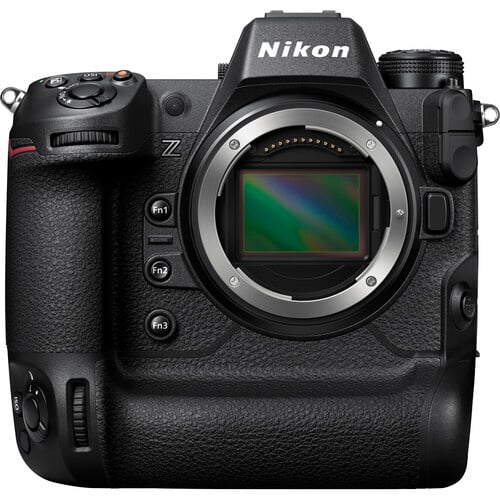
Specs and Features
- 45.7-megapixel full frame stacked CMOS sensor
- EXPEED 7 image processor
- 493 phase-detect autofocus points
- 3.69M dot OLED EVF with reduced lag and greater brightness
- 2.1M dot rear LCD with multi-directional tilt
- 30 fps JPEG shooting
- 20 fps Raw shooting (for over 1000 compressed Raws)
- 120 fps JPEG shooting at 11MP resolution
- 8K/30p capture and 4K/60p-from-8K, with ProRes 422 HQ option
- 8K/60p in 12-bit N-Raw with 4.1K ProRes RAW option
- Internal 10-bit N-Log and HLG capture
- 5-axis sensor shift in-body image stabilization
- Twin CFexpress Type B card slots
- Approximately 700-770-shot battery life
Pros and Cons
- Pros
- Excellent high-resolution sensor
- 120fps continuous shooting
- 8K video at 60p
- Cons
- Absolutely enormous body
- Paltry lens options compared to rival Sony and Canon models
- Rear LCD isn't fully articulating
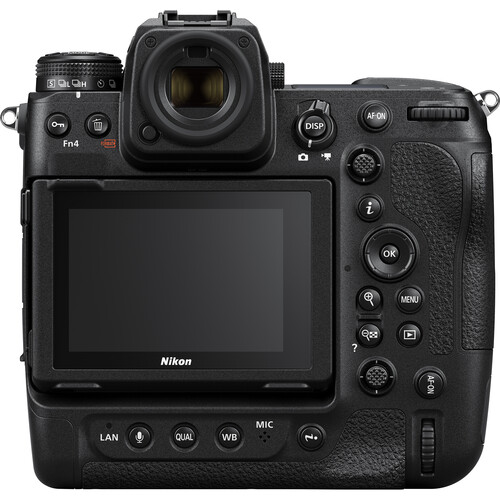
While it took a while for the Nikon Z9 to debut, it has certainly made a splash in terms of its photography and video capabilities.
Since there's no mechanical shutter, you get up to 120fps continuous shooting, which, along with the 1/32,000 top shutter speed makes this the ideal choice for sports and wildlife photographers.
But this isn't just the best professional camera for those reasons - it has an incredible autofocus system that's powered by Deep Learning AF. This means the Z9 has unsurpassed autofocus capabilities, and can recognize everything from human eyes and faces to cars, motorcycles, and animal features.
On top of that, the Z9 offers 8K 60p video. It's also capable of 8K 30p video with a two-hour time limit.
It's also the cheapest of the three flagship professional cameras - the Canon EOS R3 and Sony a1 being the other two.
Canon EOS R3
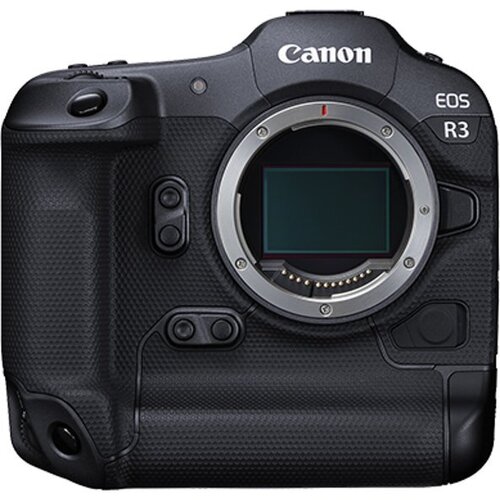
Specs and Features
- 24.1-megapixel full frame stacked CMOS sensor
- Digic X image processor
- 4,779-point autofocus system (3,969 points for videos)
- 0.5-inch EVF with 5.76-million dots
- 4.15-million dot 3.2-inch vari-angle touchscreen
- 12fps burst shooting (mechanical shutter), 30fps burst shooting (electronic shutter)
- 6K up to 60p, 4K up to 120p, 1080p up to 60p
- 5-axis in-body image stabilization (up to 8 stops with certain lenses)
- 1 SD/SDHC/SDXC card slot and 1 CFexpress Type B card slot
- Approximately 620-shot battery life
Pros and Cons
- Pros
- Excellent video capabilities
- Superb autofocus
- No blackout
- Cons
- Low resolution compared to competitors
- No 8K video
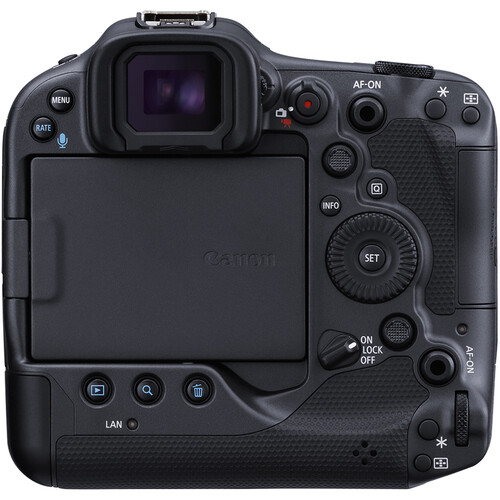
Another pick for the best professional camera for photography is the Canon EOS R3.
If it looks like a 1D X Mark III, you wouldn't be far off. This is a big camera, but it has the modern functionalities of a high-end mirrorless camera.
While the 24.1-megapixel sensor resolution seems paltry compared to other options at this price point, its stacked design gives you plenty of firepower. In fact, the EOS R3 is capable of 30fps burst shooting in RAW.
Complementing the lightning-quick burst shooting is the autofocus system, which is capable of eye control - just look at the AF point you want and the camera will select it.
Sure, the R3 doesn't have 8K video, but it does offer up to 6K at 60p with internal recording. But, this is not intended to be a video camera - it is a photo-first rig, and it shows. That's why it's on our list for the best camera for photography!
Sony a1
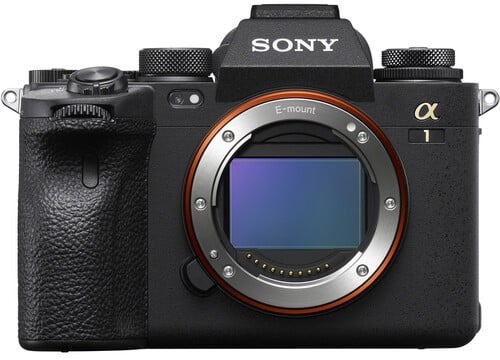
Specs and Features
- 50MP full-frame stacked CMOS sensor
- Dual Bionz XR image processor
- 759-point Phase Detection AF system
- EVF with 9.44m-dots
- 3” tiltable touchscreen with 1.44m-dots
- 30fps burst mode
- 8K video at 30p, 25p, and 24p;4K video at 120p, 100p, 60p, 50p, 30p, and 24p; Full HD video at 120p, 100p, 60p, 50p, 30p, 25p, and 24p
- Built-in WiFi and Bluetooth
- Approximately 530-shot battery life
Pros and Cons
- Pros
- Exquisite 6K video
- Best-in-class AF
- Super-fast continuous shooting
- Cons
- Expensive
- EVF resolution drops slightly when using C-AF
- Top burst shooting speeds only work with some lenses
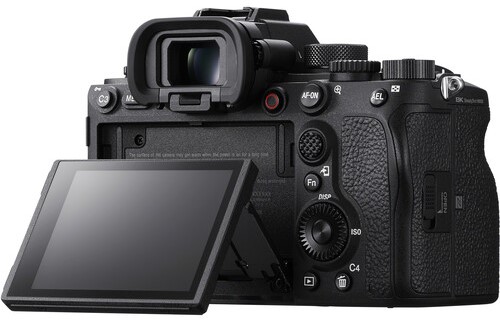
The Sony Alpha 1 was released in March 2021 and is the most powerful Sony digital camera ever. It is their flagship product and boasts a 50-megapixel full-frame CMOS sensor and dual Bionz XR image processing engines. The trio works together seamlessly and delivers jaw-dropping results.
For photographers, the 50MP image sensor can take pictures with a max resolution of 8640 x 5760 pixels. That is absolutely gigantic and means that your photos will never suffer a drop-off in image quality, even when enlarged for magazines, posters, or billboards. Furthermore, the 30 fps continuous shooting makes the a1 a great camera for sports, wildlife, and adventure photography.
As a video camera, the standout feature is the 8K video. And while the file sizes of these clips are huge, the quality is off-the-charts. Luckily, the camera also has two memory card slots so that you can record more footage. AF tracking during video recording is also industry-leading.
Lastly, this camera has many professional connection ports, including inputs for a full-size HDMI, a microphone, headphones, and more!
Learn more in our Sony a1 review.
Canon EOS R5
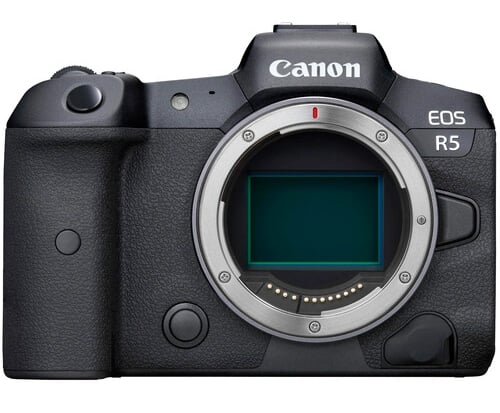
Specs and Features
- 45MP full-frame CMOS sensor
- Digic X image processor
- 5,940-point Dual-Pixel II AF system
- EVF with 2.36m-dots
- 3.2” fully-articulated touchscreen with 2.1m-dots
- 20fps burst mode
- 4K video at 30p and 24p;4K video at 120p, 60p, 30p, and 24p
- Built-in WiFi and Bluetooth
- Approximately 320-shot battery life
Pros and Cons
- Pros
- 8K video and Canon EOS Cinema features
- Outstanding AF performance
- Amazing in-body image stabilization
- Cons
- Occasional overheating during extended high-resolution video recording
- You can turn off the noise reduction in RAW files
- Limited customization
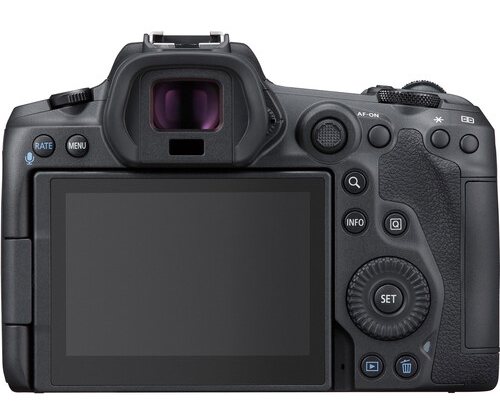
Another excellent camera for professionals is the Canon EOS R5. It’s Canon's flagship mirrorless camera for consumers and a direct competitor of the Sony a1. Canon launched it in July 2020, and it has a high-resolution 45-megapixel full-frame sensor and a Digic X image processor.
My favorite thing about this camera is its two unique operating systems—one for photography and one for video shooting. Moreover, the EOS R5 has a nifty new toggle switch that allows you to quickly and easily switch between the two. Also, you can customize the buttons and settings of the two operating systems independently.
The camera functions like a Canon EOS cinema camera in video mode. This means you have tons of professional features such as 8K video, 4K/120p slow-motion video, and advanced codecs. RAW, 10-bit, C-log, and HDR PQ are only a few of the compression formats.
One last amazing feature of the EOS R5 is the Dual Pixel autofocus. It covers 100% of the full-frame sensor and has excellent subject tracking technology. It can even locate and track the faces and eyes of animals!
Learn more in our Canon EOS R5 review.
We Recommend
Best Cameras for Beginners 2021
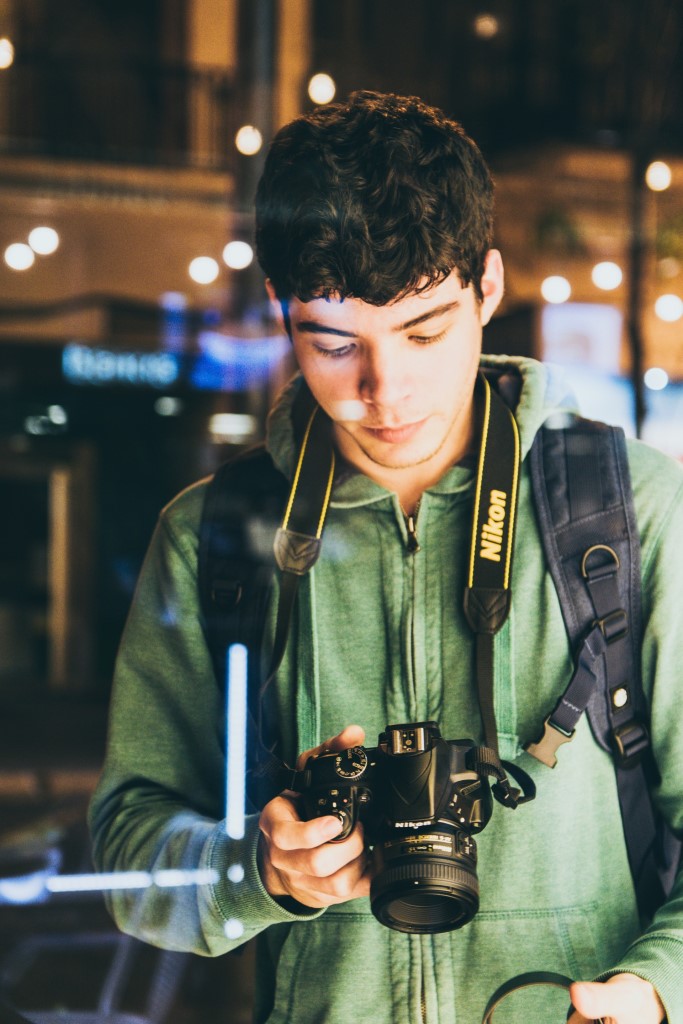
Photo by Pablo Guerrero on Unsplash
If you, like me, are going crazy sitting at home then maybe it’s time to take up a new hobby. And if you, like me, love photography then maybe you need a new camera to help you start practicing that new hobby.
Thankfully, it’s 2021, which means there are plenty of inexpensive cameras available for beginners that still have all of the features you could ever need.
So, I’ve compiled a list of the “best cameras for beginners 2021,” which features the best cheap DSLRS and the best cheap mirrorless cameras that have the newest features. There’s no need to break the bank if you’re just starting out.
Sony a6000
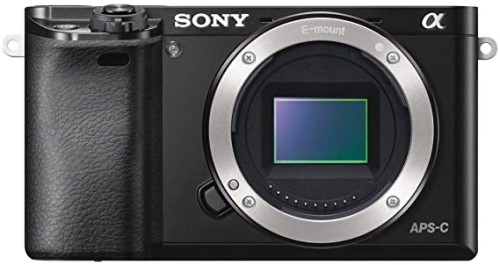
I’ve written about the Sony a6000 plenty of times before because I genuinely think it is one of the best cameras for beginners… so much so that I’m placing it as my number one choice on my “best cameras for beginners 2021” article.
The Sony a6000 is just over 6 years old, which means it’s one of the most inexpensive cameras on our list, but it still features a 24.3MP sensor and compatibility with a huge range of Sony lenses.
It’s one of the best DSLRs for beginners because it does lack some features many cameras in 2021 come with, like 4K video, but it comes with a built-in electronic viewfinder and a tilting screen so you can get used to the feel of a Sony.
If you’re shopping for inexpensive cameras, like the Sony a6000, then you should be doing so on Adorama. You can find the Sony a6000 for $550 there.
Recommended Photography Reading
- National Geographic Photo Basics: The Ultimate Beginner's Guide to Great Photography
- Photography: The Definitive Visual History
- Read This if You Want to Take Great Photographs
Nikon D3500
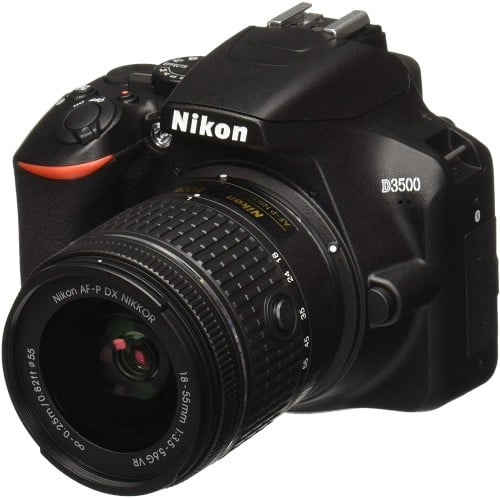
I tried to choose a wide range of manufacturers for this “best cameras for beginners 2021” list since I know some people really prefer the feel of a camera their parents used to use way back when. However, I would have included the Nikon D3500 on this list regardless because it is dirt cheap.
The Nikon D3500 is the best entry-level DSLR on this list because of its user-friendly layout. So, if you’ve never shot with a DSLR before, or if you’re trying to transition to Nikon from another brand, you won’t have any trouble figuring this camera out.
The Nikon D3500 comes with a “Guide” shooting mode that essentially walks you through how to use the camera.
Plus, the image quality on this camera is sharp.
You can purchase this best entry-level DSLR, with a nice NIKKOR lens, for $400.
Canon SL3
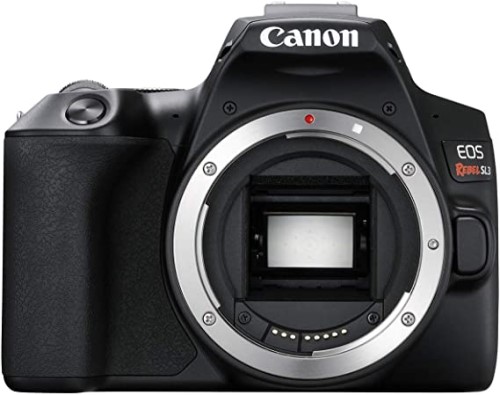
If you’re a photographer looking to break into videography, then this is the best entry-level DSLR for you because it is the first budget DSLR that can shoot 4K.
It also features a 3.5-mm microphone jack so you can capture better audio.
The screen is fully articulated and the camera feels balanced despite the fact that it weighs under 1 lb.
However, my favorite thing about The Canon SL3 is that, unlike some of the other cameras on this “best cameras for beginners 2021” list, it features an incredible battery life of 1,550 shots.
The Canon EOS Rebel SL3 is available on Adorama for $550.
Olympus OM-D E-M10 Mark III
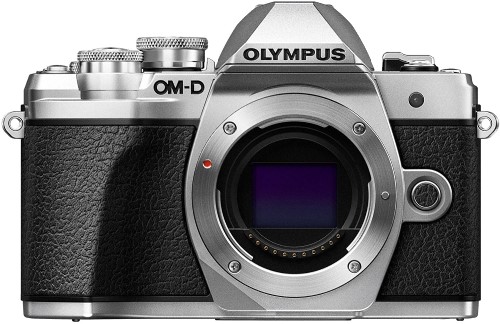
The Olympus OM-D E-M10 Mark III is the first best entry-level mirrorless camera on our list. You’ll love its retro look and feel, its tilting touchscreen and its electronic viewfinder with a resolution high enough to compete with a camera of a much higher price point.
It shoots 4K video and 8.6fps in burst mode, making it one of the most versatile of our inexpensive cameras.
It also features in-body image stabilization.
The Olympus OM-D E-M10 MARK III is currently on sale for $450.
Nikon D5600
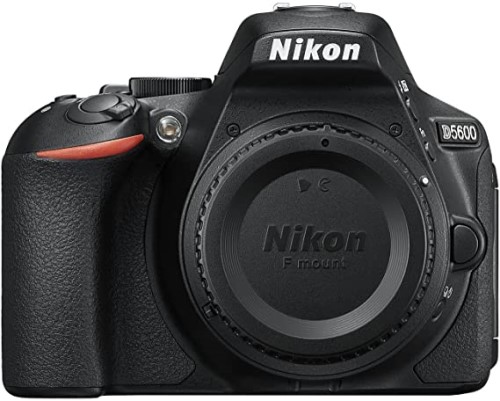
The Nikon D5600 is one of our top cameras for beginners if you suspect you’re going to stick with photography, because this camera will allow you to grow with it.
It comes with an advanced autofocus system and can shoot in low-light scenarios.
Unlike the Nikon D3500, there is no interactive “Guide” mode, so again, this DSLR may be better for beginners who are at least a little tech-savvy.
It can’t shoot 4K video, but it does shoot Full HD video, and you can shoot that video on a 3.2” vari-angle touchscreen, which is better than most of the other LCDs on this “best cameras for beginners 2021” list.
The Nikon D5600 is available for $600 right now.
Panasonic Lumix GX85
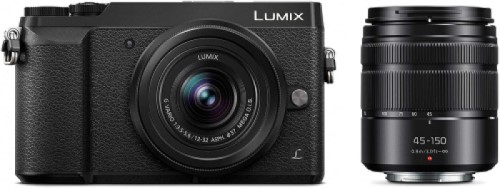
This is another option for beginner photographers who may want to start getting into videography.
The Panasonic Lumix GX85 is the best entry-level mirrorless camera for videographers due to its 4K shooting capabilities, its impressive 2.76M-dot electronic viewfinder, and its in-body image stabilization.
The one thing I don’t love about this camera is that it doesn’t feature microphone or headphone inputs, so ideally you would be using this mirrorless camera to shoot video in a quieter space, like your office instead of a crowded subway. However, it also isn’t weather-sealed, so you’d ideally not be traveling with it a lot anyways.
This camera isn’t just for videographers, though, because it shoots impressive photographs, can take 6fps in burst mode with AF, and weighs under 1 lb, so you can lug it around with you all day comfortably.
The Panasonic Lumix GX85 is currently half off on Adorama for $500.
Canon EOS Rebel T7i
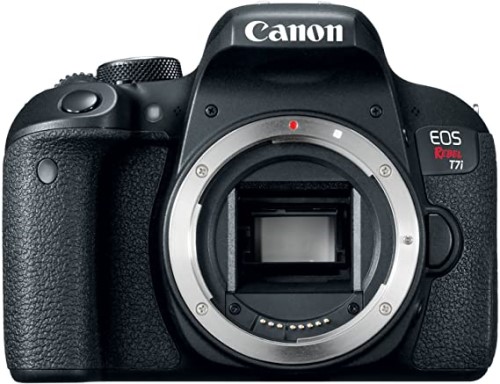
Canon’s EOS Rebel range has basically had the market for the best DSLRs for beginners for years now, and the T7i is no different.
This camera comes with a 24MP sensor, built-in Wi-Fi and can shoot Full HD video.
But, what really draws people to the Canon EOS Rebel line is the fact that the Auto mode is the best around. You can basically set the camera to Auto and it’ll perform excellently by itself. You can also use the rear screen to take all of your photos like you would with a smartphone and its performance remains the same.
While this isn’t the cheapest camera on our “best cameras for beginners 2021” list, it is the best option for an older photographer who mostly wants to point and shoot and we think it’s worth the extra money.
You can purchase a Canon EOS Rebel t7i for $700.
Fujifilm X-T200
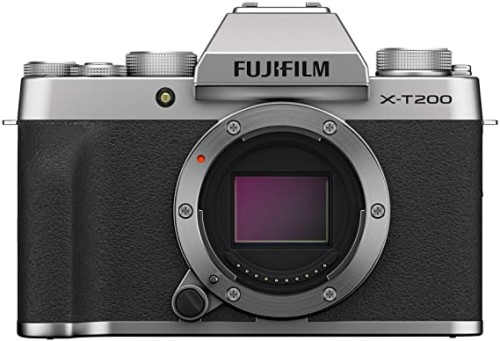
When shopping for the best mirrorless cameras for beginners, everyone starts with the Fujifilm X-T200.
It shoots 4K video, features a pretty large 3.5” vari-angle touchscreen, and will also allow you to grow with the camera, so you won’t need to upgrade for quite a few years.
This Fujifilm also dropped in February, so since most cameras have been cancelled or postponed due to the coronavirus pandemic, this may be one of the all-time best cameras for beginners 2021.
The Fujifilm X-T200 is available for $700.
Pentax K-70
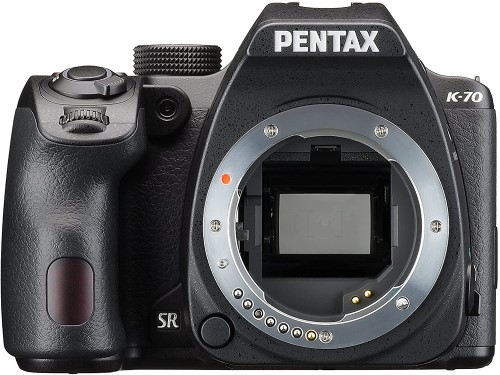
Due to the fact that Pentax isn’t as large as Canon or Sony, I don’t regularly get to write about Pentax cameras, but Pentax made the Pentax K-70 one of the best cameras for beginners 2021 due to its cheap price, its “Shake Reduction” in-body image stabilization, and its impressive 24MP sensor.
The Pentax K-70 also has an ISO range of 100-102,400, which is definitely the best low-light shooting of any of our other top cameras for beginners.
A good way to look at the Pentax K-70 is as an almost complete opposite to the Sony a6000, because the Pentax K-70 will allow you to grow with the camera and learn about manually adjusting autofocus settings whereas the Sony a6000 is truly for absolute beginners.
You can buy the Pentax K-70 for $650.
Nikon Z50
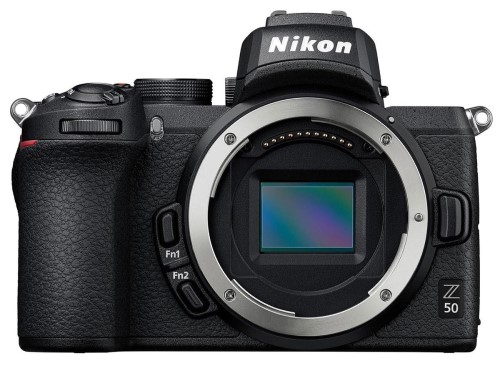
The Nikon Z50 is one of the best entry-level mirrorless cameras because Nikon specifically designed it for people who don’t consider themselves photographers.
But, it still creates incredible photos. It can shoot 4K video, features a tiltable touchscreen, and can shoot 11fps in burst mode.
Since the Nikon Z50 is one of the best cameras for beginners 2021, it is currently more expensive because it just came out. However, we suspect that with the incoming economic recession, this camera will be much cheaper in just a few months time.
The Nikon Z50 is the most expensive of our best cameras for beginners at $850.
We Recommend
Best Cameras for Vlogging
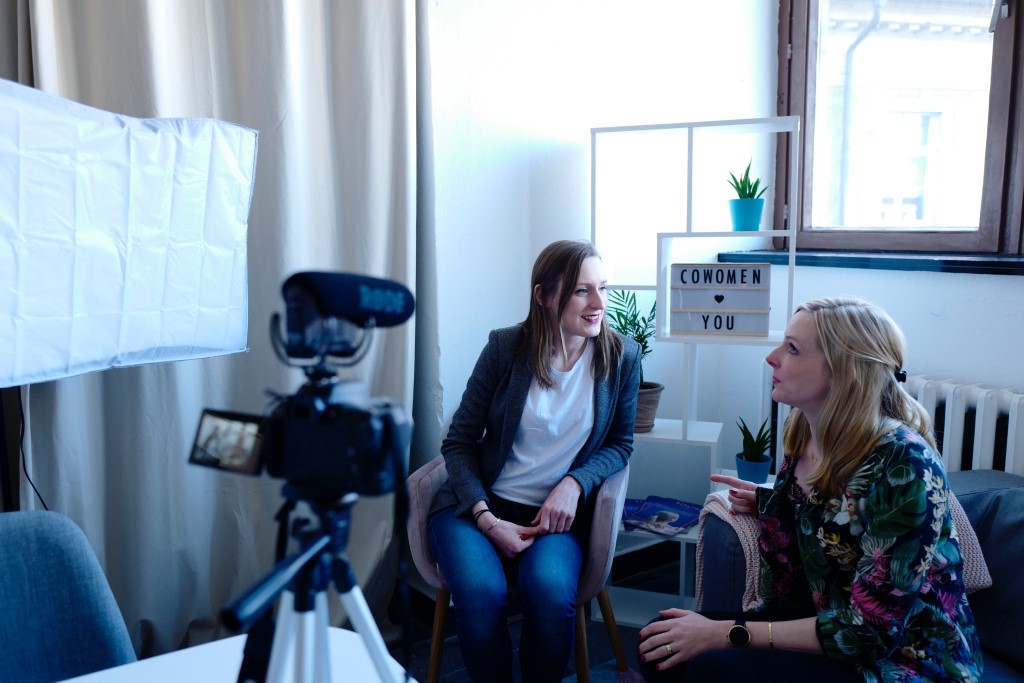
Photo by CoWomen on Unsplash
Vlogging is more than it used to be. Gone are the days where vloggers were teenagers sitting in darkly lit bedrooms complaining about their history teacher. In are the days where vloggers are technical experts in their field.
Vlogging is, in many ways, pertinent for photographers that want to grow their businesses nowadays, but if you’re going to begin vlogging, you’ll want to ensure you don’t look like a teenager in a badly lit bedroom. You’ll need the proper equipment, and that starts with a solid camera.
Here is our list of the best cameras for vlogging in 2019.
Sony a6400
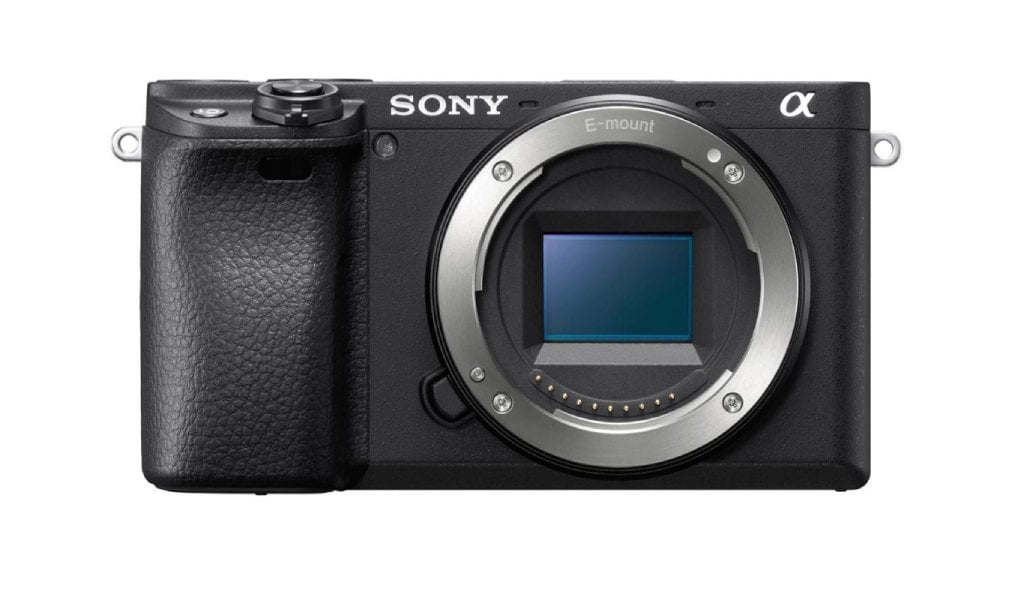
The Sony a6400 features 4K video, a front-facing screen (which is so incredibly useful, once you have a front-facing screen you’ll never go back), and and an eye-AF autofocus system to keep things nice and sharp. All of which makes it one of the best cameras for vlogging.
Huge shout out to DSI Pictures for the video above that puts the Sony a6400 through its paces.

Pros of Sony a6400:
- Insane image resolution and quality
- 4K video
- Crazy good AF system
Cons of Sony a6400:
- Not very aesthetically pleasing
- Can’t see all of the flip-up screen if you have accessories mounted to the hot-shoe
You can purchase the Sony a6400 for $900 on Adorama.

Quick Tip: Get around the flip-up screen issue with the Sony a6400 by using a field monitor.
Having a larger, brighter, more resolute screen like the Ikan Delta DH7-V2gives you a crisp view of what the camera sees, and with the 178-degree viewing angle, you get off-axis viewing for multiple people without color shifts.
You can attach the monitor to a cage, an arm, and various other attachments to put the screen right in your field of vision for an unimpeded view.

Monitors like this allow you to load 3D luts and custom cube files while also providing a huge set of tools for video making, including a histogram, clip guides, false color, peaking, and more. This monitor is also available in a kit, which adds two batteries, a dual battery charger, a power adapter, a D-Tap power cable, two HDMI cables, a ball head with shoe mount, and a soft case to carry it all!
Panasonic GH5

The Panasonic Lumix GH5 is one of my favorite vlogging cameras because it pairs in-body stabilization with 4K video at 60/50p and a 20.3MP sensor.
What I’m saying is, this is definitely the vlogging camera for the adventurer that needs a small body with a killer stabilization system.
The Panasonic GH5, as showcased by Colin Ross above, should definitely be considered a professional-level vlogging camera. It’s not for the faint of heart, but once you get familiar with this camera, the quality of video you can create is off the charts.

Pros of the Panasonic GH5:
- Crazy video specs with 4K compatibility
- Amazing stabilization system
- Is compatible with tons of lenses
Cons of the Panasonic GH5:
- Ergonomics aren’t the best
- Isn’t great at shooting with low light
- 2x crop factor
You can purchase the Panasonic GH5 for $1,300 at Adorama.
Learn More:
Canon EOS 90D

The Canon EOS 90D also features 4K video at 30p, with an incredible screen that faces forward. It also features mic input for that all-important shotgun mic you need to get high-quality audio.
There isn’t anything to hate about the uncropped 4K video of the Canon EOS 90D, either, and Dan Watsonproves it with this video test.
Besides, the 90D is compatible with dozens and dozens of EF and EF-S lenses, so there’s virtually untapped creative potential with wide-angle, standard, macro, and telephoto lenses.

Pros of Canon EOS 90D:
- Fully articulated screen
- Uncropped 4K/30p video capabilities
- Incredible sensor
Cons of Canon EOS 90D:
- Doesn’t feature image stabilization
You can purchase the Canon EOS 90D for $1,200 at Adorama.
Learn More:
We Recommend
Best Digital Camera for Beginners Under $100
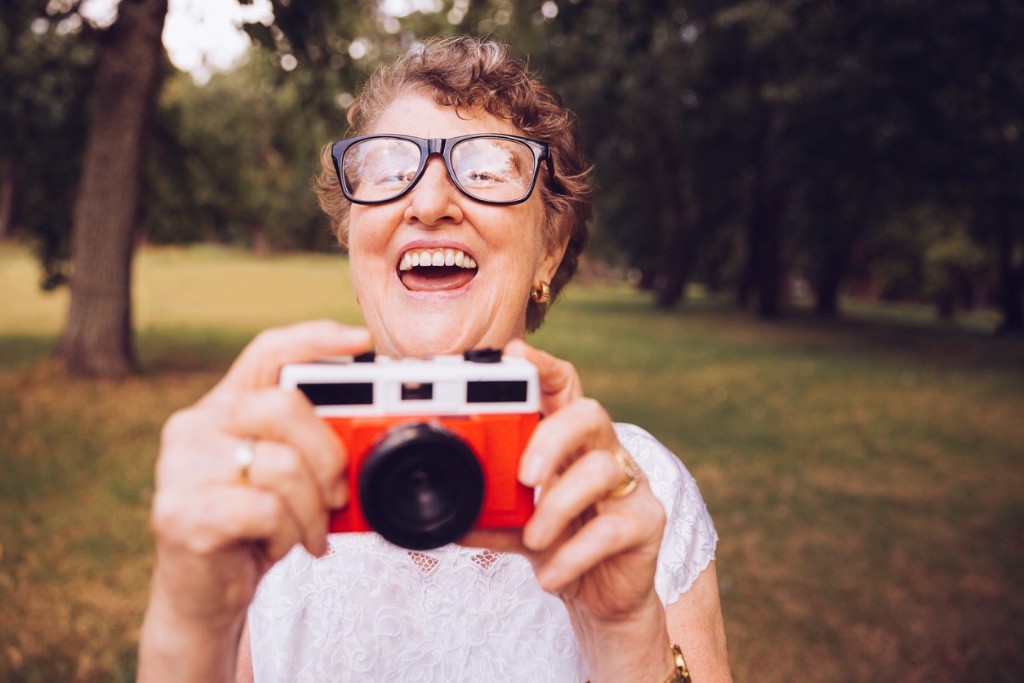
photo bywundervisuals via iStock
Interested in improving your photography skills and want to invest in a “real camera” but have no idea where to start? You’ve come to the right place!
This article elaborates on four of the best digital cameras for beginners under $100. They are all terrific cameras to learn on without spending a fortune. Additionally, I provide a list of bonus cameras to consider at the end of the article.
As wonderful as all these cameras are, please keep in mind that the cameras I recommend below are all older, used cameras. None of them feature the newest camera technology, but when you are a beginner, you don’t need the biggest, baddest camera to learn how to take amazing photos.
One resource I like to recommend for camera gear is MPB. They are an online camera platform with tons of camera options and unbeatable prices. Furthermore, they have superb deals on used lenses to pair with your camera.
With that said, let’s look at the best digital cameras for beginners under $100!
Table of Contents
- Best Canon Digital Camera for Beginners Under $100
- Best Nikon Digital Camera for Beginners Under $100
- Best Sony Digital Camera for Beginners Under $100
- Best Olympus Digital Camera for Beginners Under $100
- Bonus Best Digital Cameras for Beginners Under $100
Best Canon Digital Camera for Beginners Under $100
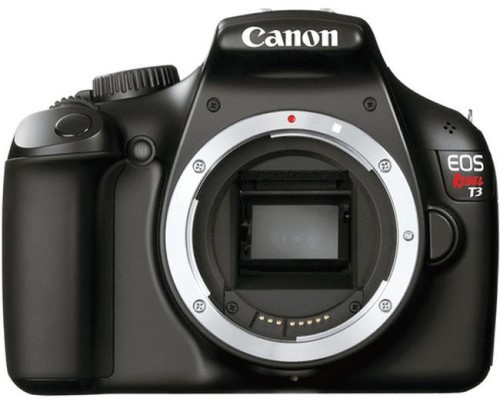
The Canon EOS Rebel T3 is a fantastic DSLR first released in 2011. It’s one of many cameras in Canon’s ever-popular entry-level “Rebel” lineup, the newest being the Canon EOS Rebel T8i.
Featuring a 12.2MP APS-C CMOS sensor, this camera still has a place in the world of photography and provides incredible value to beginner photographers. It shoots RAW and JPEG stills and has five distinct file sizes (large, medium, small 1, small 2, and small 3). Alternatively, you can select to shoot both RAW and JPEG copies with one click of a button!
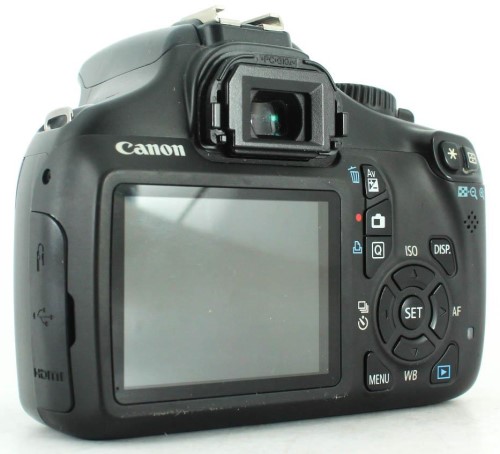
An important thing to note is that, like all Canon APS-C cameras, it applies a crop factor of 1.6x. For example, using a Canon 50 mm lens, you will instead have the equivalent focal length of 80 mm on the Rebel T3.
Speaking of lenses, they are arguably the strongest selling point of this best digital camera for beginners under $100. The Rebel T3 uses the Canon EF lens mount, which is absolutely loaded with great lenses. Finding cheap used Canon lenses to pair with this camera is a walk in the park at online platforms like MPB.
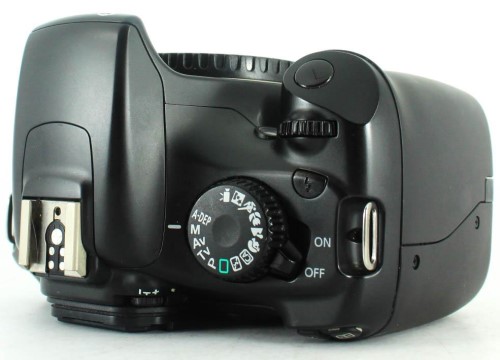
A few more things to keep in mind are that it has video capabilities, good but not great autofocus, and easy-to-use straightforward controls. Check out the list below of the key features and specs of the Canon EOS Rebel T3.
- Camera Type: DSLR
- Megapixels: 12.2MP
- Sensor Type: APS-C
- Lens Mount: Canon EF / EF-S
- ISO: 100 - 6400
- Speed: 3 fps
- AF Points: 9
- Video: 720p/30p
Best Nikon Digital Camera for Beginners Under $100
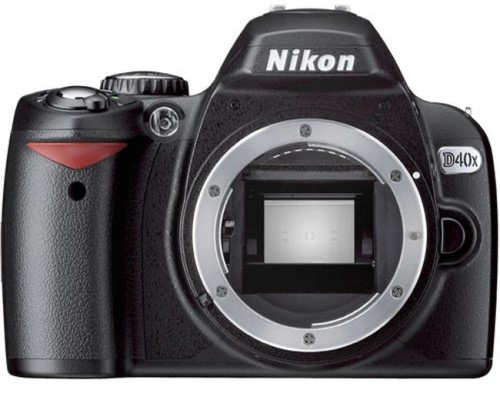
Another one of the best digital cameras for beginners under $100 is the Nikon D40X. It first hit the shelves in 2007 but remains a capable DSLR camera perfect for learning the basics.
It has a 10.2MP maximum resolution and three image size options (small, medium, and large). Also, just like the Canon EOS Rebel T3, you can choose to capture your stills in RAW, JPEG, or both.
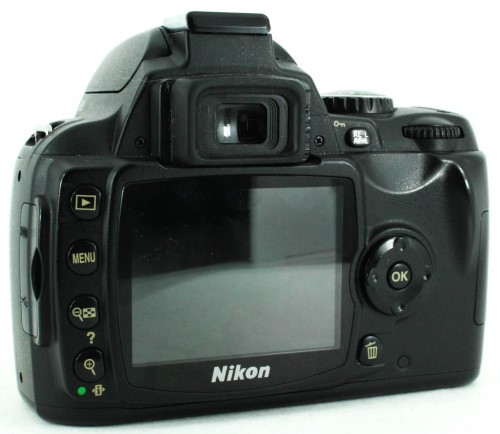
Thanks to a compact, lightweight body, the D40X is ideal for kids or people with small hands. Moreover, the button layout and menu system create an extremely user-friendly interface. All of the current settings are clearly displayed on the rear LCD screen and can be quickly changed using the buttons or the dial on the top of the camera.
The biggest drawback of this best digital camera for beginners under $100 is the lack of a video mode. If you are interested in upping your filmmaker skills, you are better off going with one of the other cameras in this article. However, if you are ok strictly taking photos, the D40X is a crazy bargain.
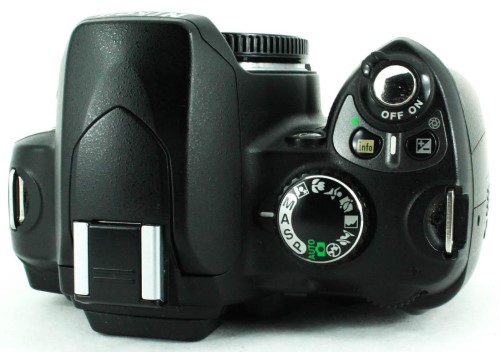
A couple of other things to consider are that the autofocus is average at best, and it has a burst mode of 3 frames per second. Check out the list below of the key features and specs of the Nikon D40X.
- Camera Type: DSLR
- Megapixels: 10.2MP
- Sensor Type: APS-C
- Lens Mount: Nikon F
- ISO: 100 - 3200
- Speed: 3 fps
- AF Points: 3
- Video: None
Learn More:
Best Sony Digital Camera for Beginners Under $100
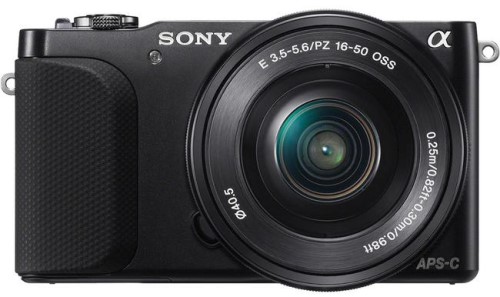
Debuting in 2013, the Sony NEX-3N is undoubtedly one of the best digital cameras for beginners under $100. It’s a pocket-sized entry-level mirrorless camera boasting a 16MP APS-C CMOS sensor and a ridiculously compact body.
While many people overlook the NEX-3N in favor of the slightly more expensive Sony Alpha A6000, its features and specs are not that far behind it. Along with the powerful sensor, this Sony mirrorless camera also uses a BIONZ image processor. The pair work together seamlessly to generate sharp images with outstanding image quality.
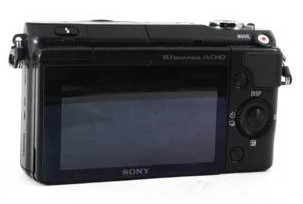
Another area it excels is video shooting. It’s the only camera highlighted in this article capable of recording 1080p Full HD video. If you are a hybrid shooter looking to get your feet wet in both photo and video, this is hands-down the best digital camera for beginners under $100 on this list.
On top of all that, its autofocus is highly effective, it has a flip-up screen, and it uses the Sony E mount lens system. In particular, the flip-up screen is a valuable feature and makes it a go-to choice for Vloggers and YouTubers.
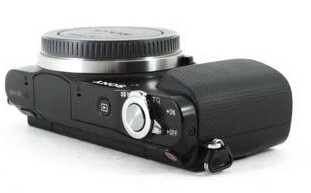
Check out the list below of the key features and specs of the Sony NEX-3N.
- Camera Type: Mirrorless
- Megapixels: 16MP
- Sensor Type: APS-C
- Lens Mount: Sony E
- ISO: 200 - 16000
- Speed: 4 fps
- AF Points: 25
- Video: 1080p/30p
Best Olympus Digital Camera for Beginners Under $100
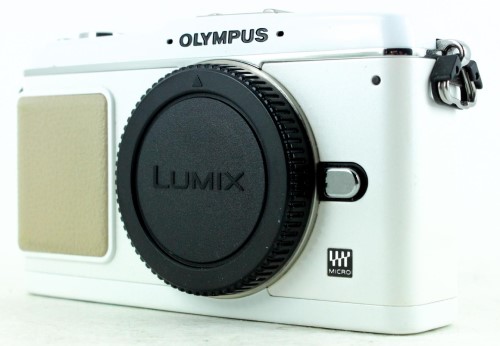
The Olympus Pen E-P1 is an interchangeable lens mirrorless camera that hit the market in 2009. It was their first-ever Micro Four Thirds camera and remains a popular choice for beginners today.
Essentially, it’s a replica of two legendary Olympus cameras (the E-620 and E-30) but with two significant upgrades: A 12.3MP Micro Four Thirds sensor and an electronic viewfinder. The sensor increases resolution and improves sharpness, while the EVF is fast and delivers a crystal clear live view.
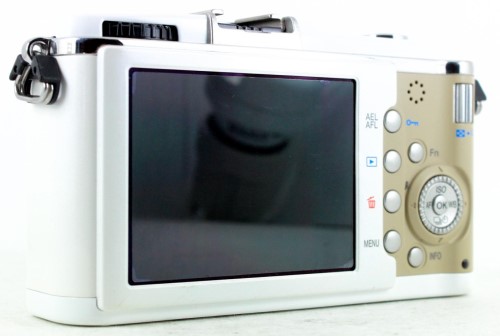
Another key feature of the Pen E-P1 that no other camera on this list has is in-body stabilization. The “Supersonic Wave Drive” stabilization, as they call it, produces four stops of additional EV compensation. That is a huge advantage for new photographers and helps deliver better results in low-light situations, video recording, and more!
Furthermore, it records HD movies, has two control dials for making adjustments, and has face-detection technology. With all those advanced features, it’s unquestionably one of the best digital cameras for beginners under $100.
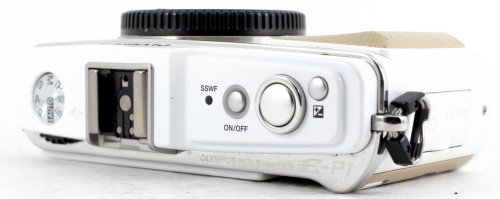
Check out the list below of the key features and specs of the Olympus Pen E-P1.
- Camera Type: Mirrorless
- Megapixels: 12.3 MP
- Sensor Type: Micro Four Thirds
- Lens Mount: Micro Four Thirds
- ISO: 100 - 6400
- Speed: 3 fps
- AF Points: 11
- Video: 720p/30p
Bonus Best Digital Cameras for Beginners Under $100
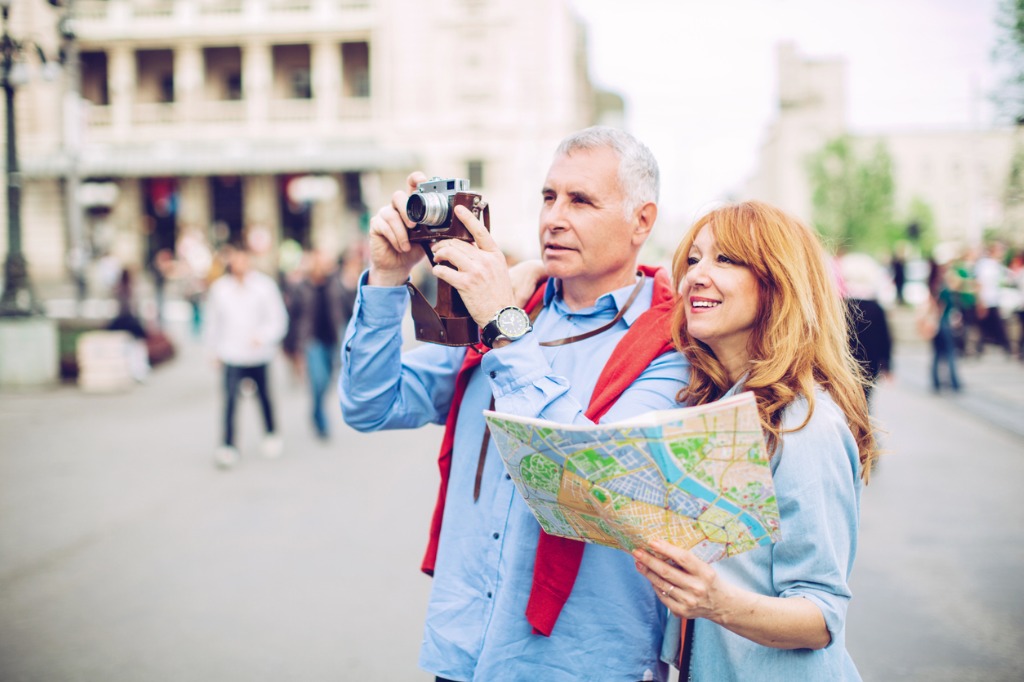
photo bysvetikd via iStock
While the cameras listed above are my favorite cheap digital cameras, they are far from the only ones available. Below are some more of the best digital cameras for beginners under $100:
These cameras are available on MPB, just like those I listed earlier. When purchasing gear from MPB, you get the peace of mind of having a six-month warranty, a seven-day return window, and a detailed grading scale that lets you know the precise condition of the gear you’re interested in buying. What more could you ask for when buying camera gear?!
Learn More:
We Recommend
Best Lens for Product Photography
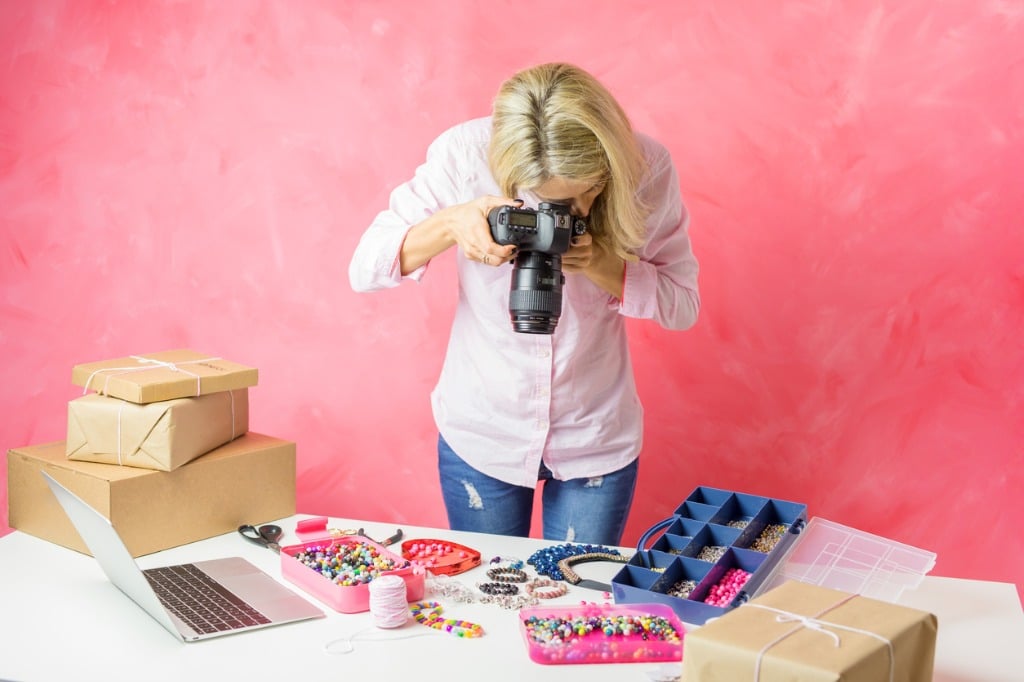
photo bygrinvalds via iStock
In the capitalist world of small businesses and startups we live in, product photography has never been more in demand. That’s terrific news for you, since it means infinitely more potential clients in the sea!
At the same time, due to this heavy demand, more and more photographers every day are deciding to dip their feet in and test the waters of product photography. How on earth are you supposed to stand out amongst the crowd?
Well, one fantastic way to improve both the quality of your product photography, and make a great impression on clients, is by having the best lens for product photography! But what lens is best for product photography? That depends on you!
The first question to ask yourself is whether you want the extra crispness of a prime lens or the versatility of a zoom lens? After that, the two main factors you will want to consider when deciding on the best lens for product photography are, focal length and image sharpness.
The sweet spot for focal length in product photography is generally considered to be between 85mm and 105mm. All of my top recommendations, regardless if it’s a prime lens or zoom lens, will fall somewhere in this range. Additionally, all of them produce stunning images with outstanding sharpness!
So with that being said, let's dive in and discover the best lens for product photography for each camera brand, and where to buy them!
Best Lens For Product Photography - Sony Users
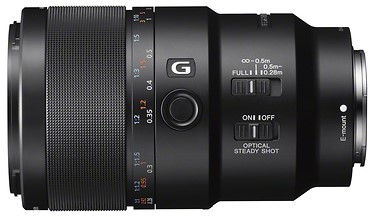
The Sony FE 90mm f/2.8 Macro G OSS Lens is Sony’s premier macro lens, and without a doubt the best lens for product photography if you are a Sony shooter! Personally, I shoot with Sony and this is my go-to lens whenever I am doing product work for a client.
What makes this Sony’s best lens for product photography you ask? For starters, the 90mm focal length is right in the heart of the 85mm-105mm zone I spoke about earlier. I recommend pairing it with a full-frame camera if you want best results. It still works great on an APC-S camera, but technically you will be shooting at a length of 135mm due to the 1.5x crop factor.
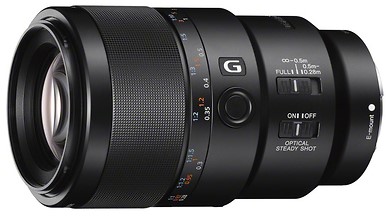
Next, the Sony 90mm offers 1:1 magnification which makes it easy to get extremely sharp images of even the smallest products! If you shoot jewelry, this is an unbelievable product photography lens!
In addition, the lens has built-in image stabilization and a low f-stop of f2.8. The OSS image stabilization means you can get stellar handheld shots, and the f2.8 aperture creates a creamy bokeh effect.
The only downside of the Sony 90mm is the price, but with that said, you definitely get what you pay for, because the quality is absolutely crazy! If you are looking for an amazing deal, try checking out Samy’s Camera, they are always running deals and promotions on their new products, and oftentimes have used cameras in stock for bargain prices as well!
Best Lens For Product Photography - Nikon Users
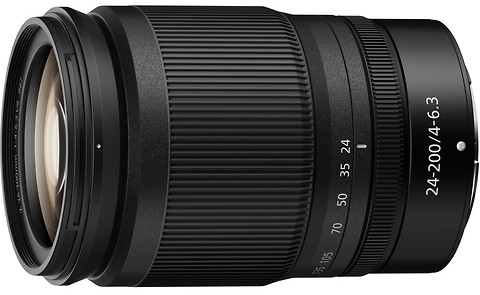
TheNikon NIKKOR Z 24-200mm f/4-6.3 VR Lens is an excellent choice if you prefer to have a zoom lens for product photography! While the clarity isn’t quite comparable to a prime lens, it’s still very good, and on top of that you get a ton of versatility!
With a variable focal length of 24-200mm, no matter what sort of product you are shooting, you will never have to switch lenses. At 24mm you can photograph large items like furniture, or even use it for real estate photography. Whereas fully zoomed in at 200mm you can capture even the tiniest details of any product.
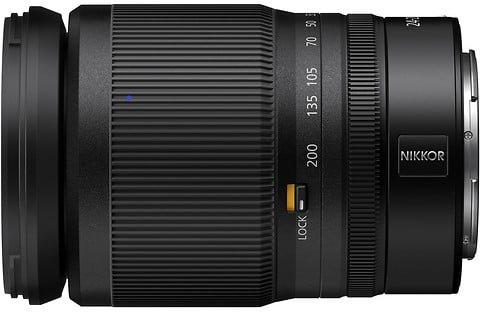
Another rad feature is the DX crop mode. If you pair the Nikon 24-200mm with a DX camera, you can shoot at the equivalent of 300mm! While that may be overkill most of the time in product photography, having the option to zoom in like that can sometimes be a huge advantage.
Other things I love about this lens are the built-in vibration reduction (VR), how lightweight it is, its video versatility, the customizable control ring, and its weather-resistant build. As far as zoom lenses go, this is unquestionably the best lens for product photography!
Learn More:
Best Lens For Product Photography - Canon Users
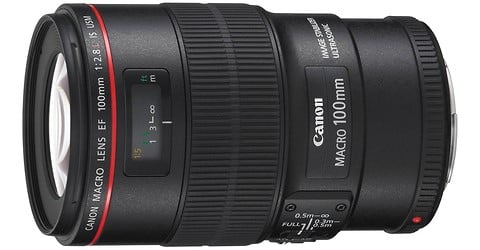
TheCanon EF 100mm f/2.8L Macro IS USM Lens is one of the most popular product photography lenses of all time. First released in 2009, this lens has been creating award-winning images since the day it came out, and still today it’s in the running for the overall best lens for product photography!
The 100mm focal length is ideal, and it’s images have been scored as some of the sharpest from any Canon lens. Furthermore, the colors in this lens are super vibrant and will help make your images pop!
Something else I love about this lens is the large and easy-to-control manual focus ring. Autofocus is great, but when shooting product photography you will always be able to get crisper images if you change over to manual focus. If you do decide to shoot in manual focus, a quick tip is to throw the camera on a tripod. If you don’t have steady hands, trying to focus manually when shooting handheld can often be a challenge!
As an older lens, there are plenty of Canon 100mm lenses on the second-hand market. Samy’s Camera always has a wide selection ofpre-owned lenses andopen box lenses that are constantly changing, and it’s a fabulous place to look.
Additional Lenses to Consider for Product Photography
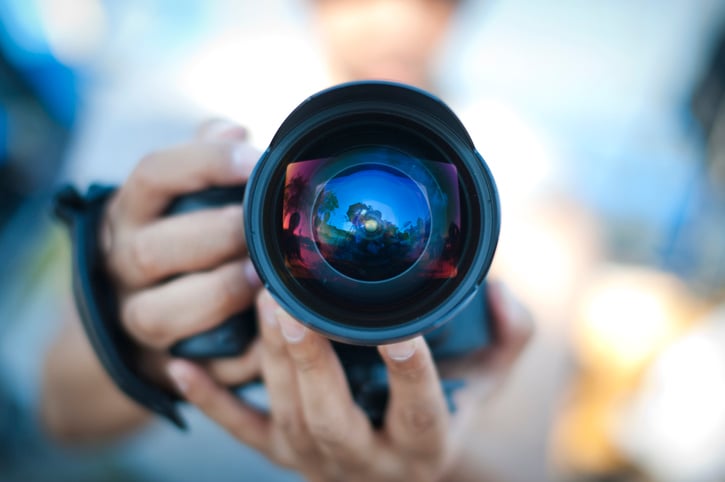
photo byfocalmatter via iStock
Hopefully now you have decided what lens to use for product photography! If you’re not quite sure don’t worry, take a look at these other terrific lens options! One of them may very well be the best lens for product photography for you!
- Sigma 105mm f/2.8 EX DG OS Macro Lens
- Canon EF 50mm f/1.8 STM Lens
- Sony FE 24-105mm f/4 G OSS Lens
- Nikon AF-S 105mm f/2.8G ED-IF VR Macro Lens
- Tamron SP 70-200mm F/2.8 Di VC USD G2 Lens
Learn More:
We Recommend
Best Mirrorless Camera for Street Photography
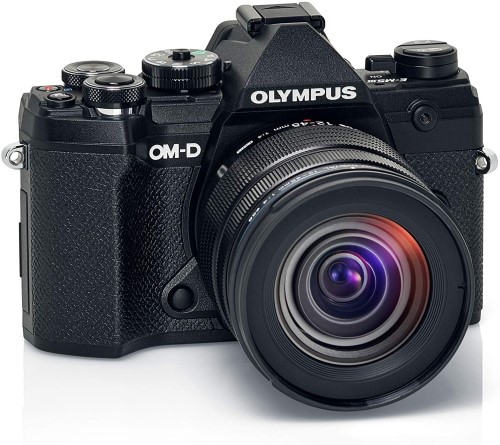
I’ll give you three different options so you can tailor the answer of the best camera for street photography to your specific situation, needs, and desires. We’ll look at the best choice for many people, a bargain option as an affordable street photography camera, and a high-end camera.
To understand just what you need as the best mirrorless camera for street photography, we’ll also review what street photography is, discuss some street photography ideas, review easy-to-master street photography techniques, and go over some inexpensive accessories for street photography.
Table of Contents
- What Is Street Photography?
- Best Mirrorless Camera for Street Photography
- Best Mirrorless Camera for Street Photography - Bargain Version
- Best Mirrorless Camera for Street Photography - High-End Version
- Inexpensive Accessories for Street Photography
What Is Street Photography?
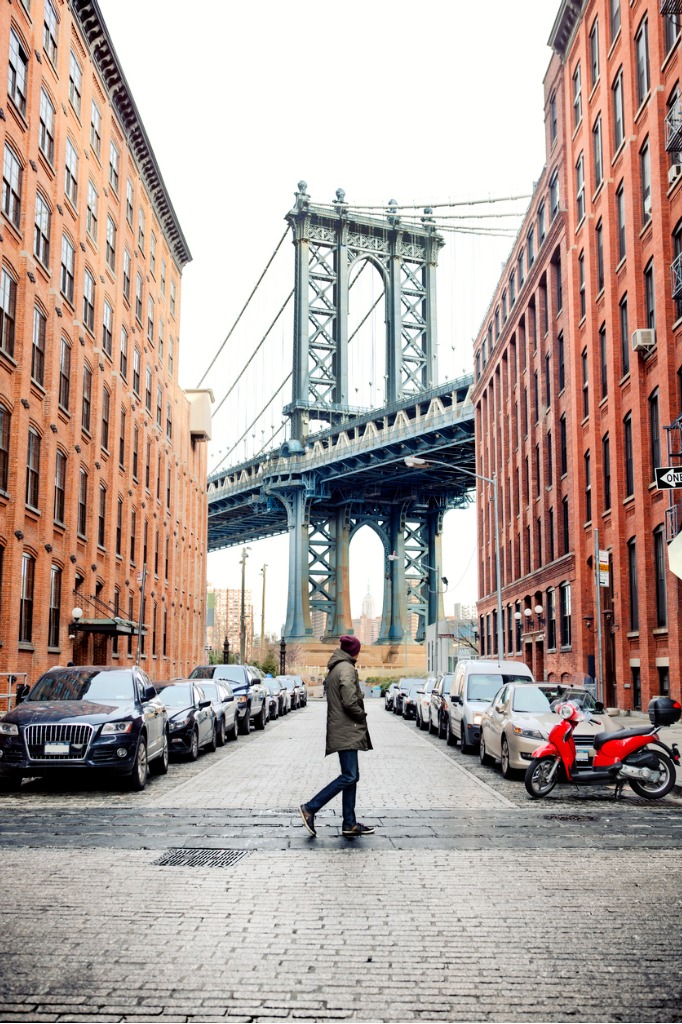
photo byOrbon Alija via iStock
My best answer to this question, especially as it relates to what may be the best mirrorless camera for street photography for you, is to point to some examples from the past.
Classic street photography artists such as Henri Cartier-Bresson, Robert Frank, and Helen Levitt, are all pioneers of this craft.
Street photography can be random, candid photography, hastily posed portraits on the fly, documentary photography, or any combination of those or somewhere in between any of these street photography ideas.
Many of the classic era of street photographers gravitated toward the smaller 35mm rangefinder cameras from Leica, Contax, Canon, and Nikon. A fast normal lens or slightly wide-angle lens was most often used. A 50mm f/1.4 or a 35mm f/2.0 was commonly the lens of choice.
A lot more could be said about street photography techniques and ideas, but I’m sure you get the picture. The current crop of mirrorless interchangeable lens cameras are closest to the style of those older cameras. So, now let's look at my three choices of the best mirrorless camera for street photography.
Best Mirrorless Camera for Street Photography
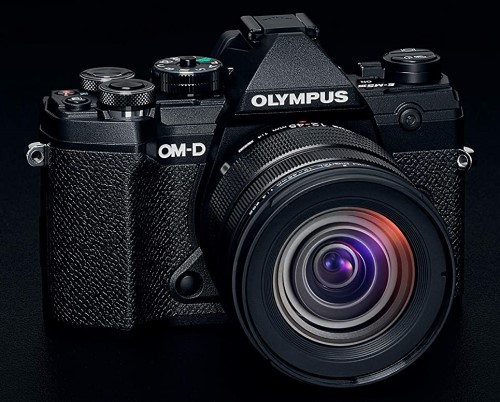
I will start with the MFT format Olympus OM-D E-M5 Mk III with 12-45mm Pro lens, which retails for a little under $1900.00. It has multiple features that make it a fantastic candidate as being the best mirrorless camera for street photography.
This camera has a 20MP MFT format sensor which provides outstanding image quality within a very compact camera body. MFT is one of what I consider the three formats best suited for serious photography. The other two are APS-C and Full Frame formats.
There is an in-body image stabilization function that gives up to 5 ½ stops of ability to handhold the camera in a wide range of exposure conditions. That helps make up for the lens being of modest maximum aperture, f/4.0, for allowing good image captures in street photography.
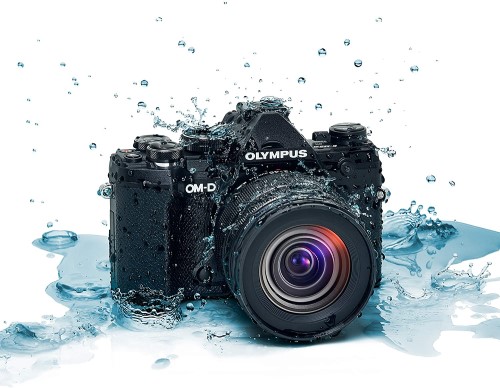
So, the photos you can get with this camera are going to be high quality, sharp, and full of exposure information when used in RAW file capture mode. That is a very desirable feature for any camera boasting to be the best mirrorless camera for street photography.
The camera body and this pro lens are weather sealed for extra protection from the elements, another feature that benefits our choice of best mirrorless camera for street photography.
This particular lens is well suited for a lot of street photography ideas since it has a range from wide-angle, through normal, up to a little bit of telephoto. There are many lenses from various manufacturers in the MFT mount, so this camera can do a lot for you besides being the best mirrorless camera for street photography.
It isn’t the perfect camera for everything - it doesn’t have a built-in flash or 4K video. But I find it hard to beat as my top choice for best mirrorless camera for street photography. Now let’s see what other options we have.
Learn More:
- 5 Photographer Tools for Beginners
- Perfect Accessories for Micro Four-Thirds Cameras
- Outdoor Photography Tips for Summer
Best Mirrorless Camera for Street Photography - Bargain Version
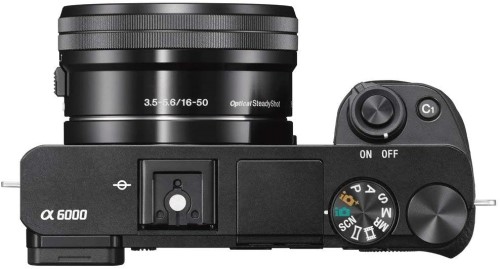
Sony Alpha a6000 with 16-50mm power zoom lens is my choice for the bargain version of the best mirrorless camera for street photography. It is an APS-C format camera with a 24.2MP sensor and retails for under $750.00.
Features of this camera which make it a bargain choice for best affordable street photography camera are its super-fast autofocusing, a huge array of lenses available, Full HD video, and a super-vivid tilting viewscreen for a lot of street photography ideas and street photography techniques.
Best Mirrorless Camera for Street Photography - High-End Version
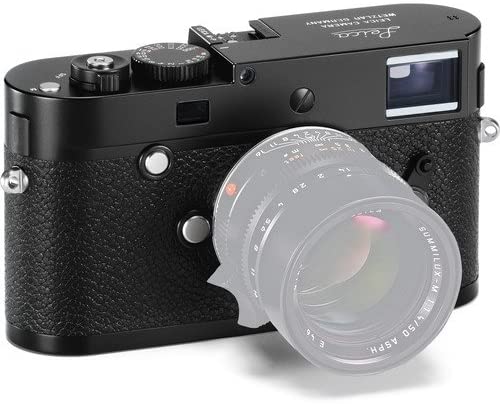
Let’s go back to the camera brand which epitomized the classic era of street photography, the Leica rangefinder. Perhaps the closest to the spirit of the Leica III-G screw mount camera or Leica M3 camera with M-mount bayonet lenses is the 24MP Leica Typ 240 Full Frame format mirrorless rangefinder camera.
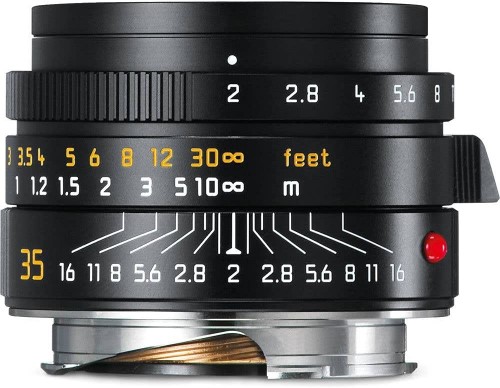
If the budget works for you, a Leica rangefinder camera with a relatively fast medium wide-angle lens such as the Leica Summicron-M 35mm f/2.0 is probably the best mirrorless camera for street photography that I could consider recommending.
The quality of all Leica products is nothing short of amazing, but you will pay for that privilege. This particular combo, for instance, will set you back around $9,300.00 or so to own this high-end version of the best mirrorless camera for street photography.
Inexpensive Accessories for Street Photography
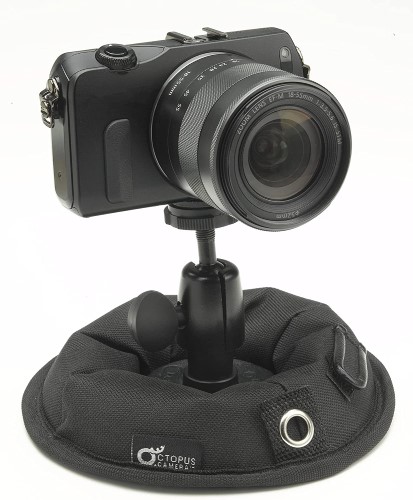
After the camera and lens, a few choice accessories will round out our gear for the best mirrorless camera for street photography. Three accessories I will focus attention on are a portable camera mount, a comfortable strap, and a versatile bag.
For street photography, flash is seldom used, but we may need a little more capability for low light shooting than is offered by our lens aperture and the camera image stabilization functions. But, using a tripod isn’t likely to be our best solution.
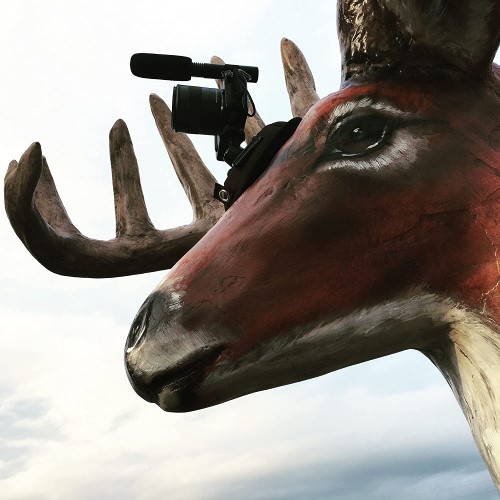
The stability and portability of the OctoPad Camera Mount make it virtually indispensable for our street photography techniques and ideas.
OctoPad is a lightweight, compact, inexpensive, and ultra-steady camera mount that pairs perfectly with our best mirrorless camera for street photography choice. It has a weighted disk base with a non-slip pad underneath and a ball head on top.
You can carry this camera mount with you for all types of street photography techniques and it even can be placed on surfaces with an incline of up to 45 degrees. It really is about the best accessory for your new best mirrorless camera for street photography.
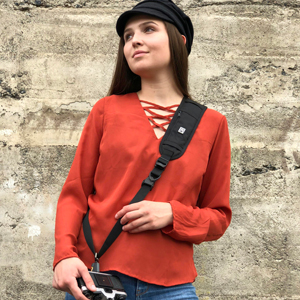
Other useful accessories to combine with the best mirrorless camera for street photography are a sling strap such as the BlackRapid RS-4 and a heavy-duty bag such as the Hex Ranger for camera and gear protection.
That’s my take on the best mirrorless camera for street photography and some very useful accessories. I’m curious what your choices would be?
Learn More:
- Versatile Camera Gear You Need In Your Bag
- How To Pack Light for a Photography Trip
- 4 Simple Ways to Create Emotion in Photos
We Recommend
Best Portrait Lens: What Focal Length Should You Use?
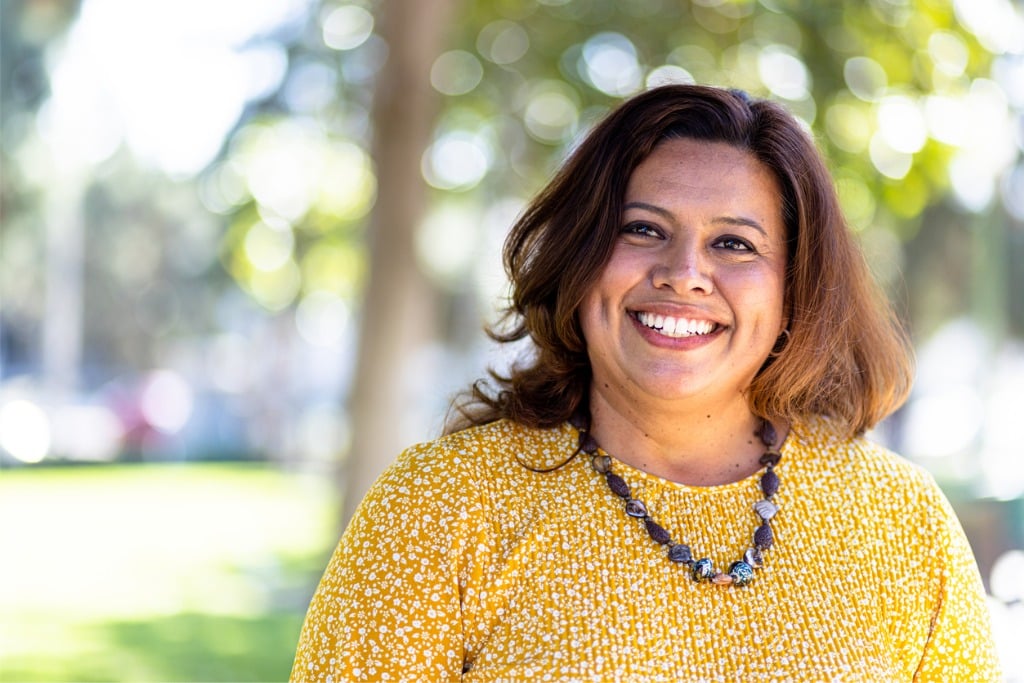
Photo by adamkaz via iStock
What focal length, f-stop, and lens type makes the best portrait lens is a subject photographers love to talk about. If you saw some of us “discussing” portrait lens choices, you might think we’re arguing! We’re not arguing; we’re just passionate because we’re artists.
As a disclaimer, let me go on record by saying there is not one single perfect portrait lens that will satisfy every photographer’s thoughts on the matter. Hey, my own portrait lens choice might change from subject to subject or what style I’m shooting!
Still, some general ideas or principles governing portrait lens basics are good to know. I’ll talk about those and list some great portrait lens candidates I found at my go-to online platform for gear, MPB.
I like to shop for used cameras and lenses at MPB because pre-owned gear saves me money. MPB allows me to buy, sell, and trade gear, and they have customer-friendly policies that make buying, selling, and trading photography equipment safe and easy. What’s not to like?!
Now, let’s have a chat about the best portrait lens options for varying camera systems…
Table of Contents:
- What Makes a Good Portrait Lens?
- Sony Portrait Lens - Zeiss Batis 85mm f/1.8
- Leica Portrait Lens - 90mm f/2.8 Elmarit M
- Sigma Art Portrait Lens - 105mm f/2.8 DG Macro<
- Canon Portrait Lens - Canon RF 70-200 f/2.8 L IS USM
- Nikon Portrait Lens - Nikkor Z 50mm f/1.8 S
- APS-C Fuji Portrait Lens - Fujinon XF 56mm f/1.2 R WR
- Medium Format Portrait Lens - Fujifilm GF 110mm f2.0 R LM WR
What Makes a Good Portrait Lens?
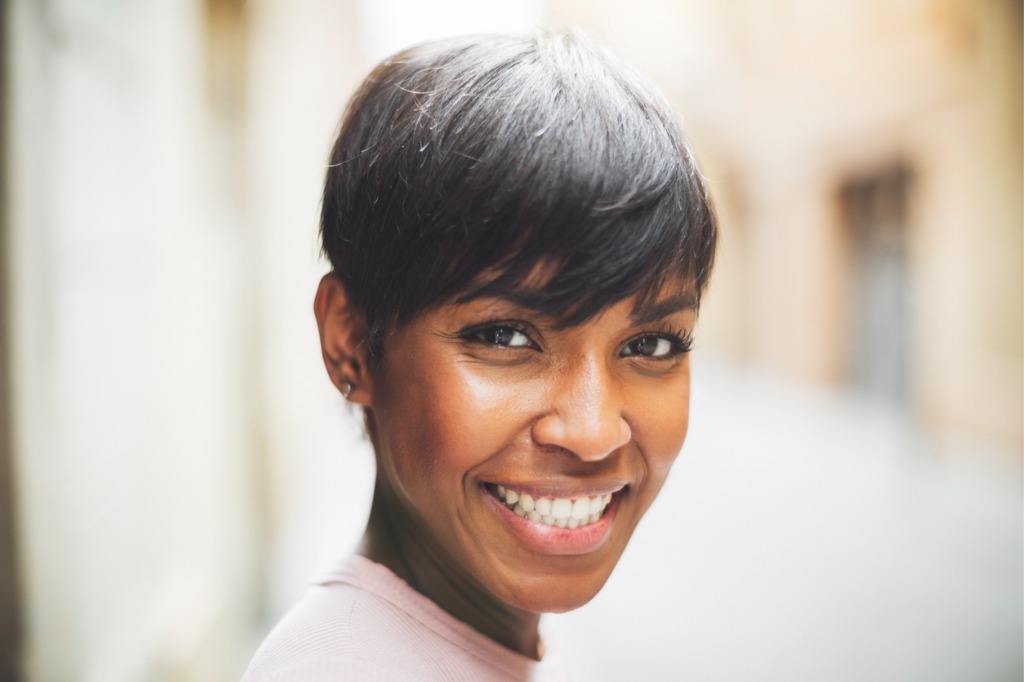
Photo by piola666 via iStock
The qualities that make a lens a good portrait lens are somewhat variable; there is no one set of criteria for the best portrait lens.
Some things are generally considered good for a portrait lens, though. For example, a focal length longer than what’s considered normal for the format used but not too much into the telephoto range is desirable. An f-stop or lens aperture fast enough for selective focus is also desired.
We tend to like a slightly telephoto portrait lens focal length because we’re capturing images of people. Too short of a focal length, especially when used up close, causes unflattering elongation of facial features due to apparent perspective. Some of that depends on our framing - a 3/4s length portrait can be captured with a normal lens, but the typical head and shoulders portrait usually looks better with a short telephoto portrait lens.
Here is a good comparison on the Mango Street YouTube page of various portrait lens focal length options:
Most of the lenses in my list of portrait lens favorites skew towards single focal length short telephoto prime lenses with a fairly fast maximum aperture, though I also consider a normal lens a good portrait lens for some styles of portraits.
Many pro-style telephoto zooms have fast apertures, too, so they’re also in the running. Let's take a look at some lenses I found at the MPB. If any aren’t in stock at the time of your reading this, simply bookmark the placeholder page and look again later, as used inventory is constantly changing.
Sony Portrait Lens - Zeiss Batis 85mm f/1.8
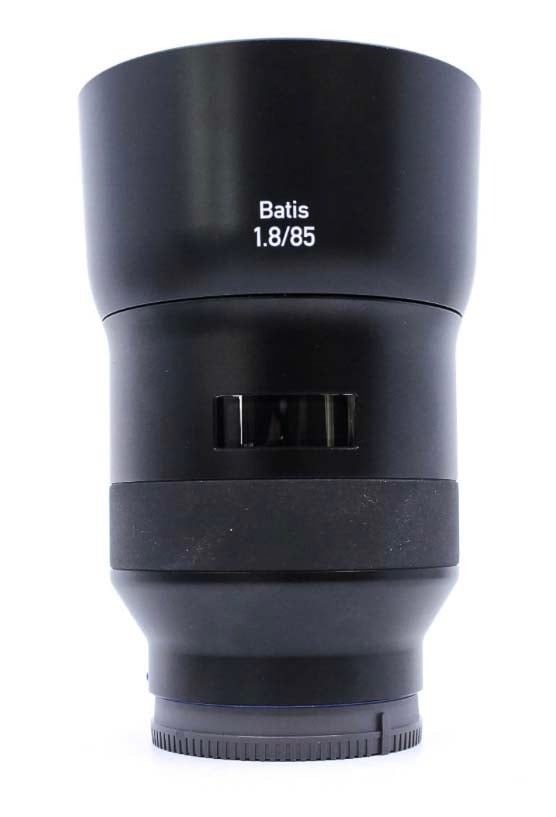
The Sony Portrait Lens - Zeiss Batis 85mm f/1.8 is a very fast, extremely sharp, short telephoto focal length from one of the premier lens makers in the history of photography, Zeiss. This version fits on Sony Full Frame format mirrorless cameras like the 61MP Sony Alpha A7R V camera.
A little heavy at just under a pound, it balances nicely on Sony cameras. Focusing to about 2 ½ feet, this lens has three low dispersion elements and produces beautiful bokeh in selective focus portraits.
Leica Portrait Lens - 90mm f/2.8 Elmarit M
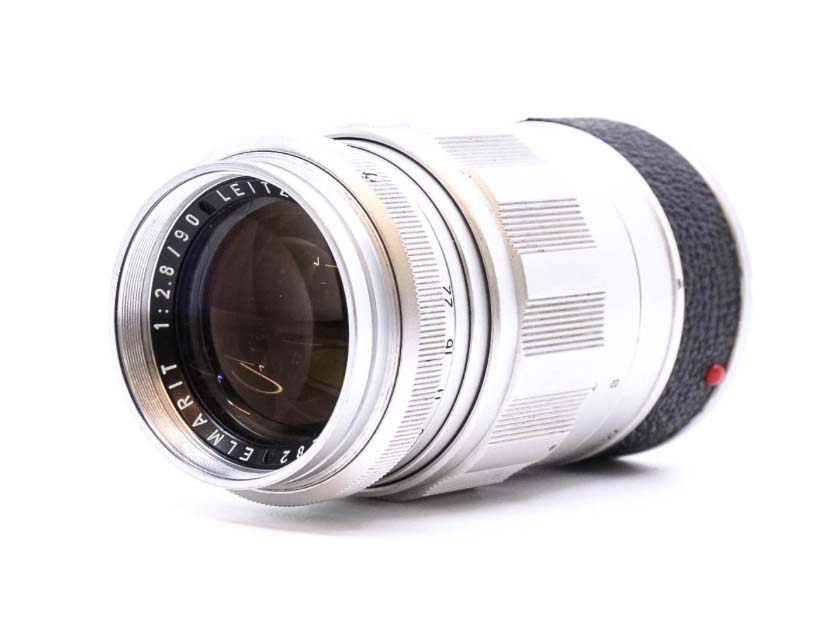
The Leica Portrait Lens - 90mm f/2.8 Elmarit M fits M-Series Leica rangefinder cameras, including the fantastic Full Frame format 24MP Leica M10 camera. Very compact, this is one of the sharpest examples of a portrait lens you can find.
Sigma Art Portrait Lens - 105mm f/2.8 DG Macro
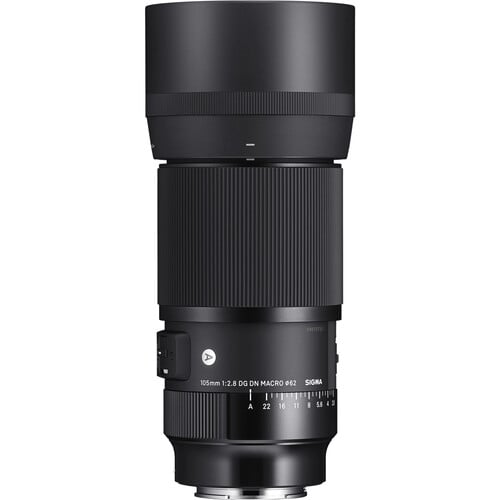
The Sigma Art Portrait Lens - 105mm f/2.8 DG Macro is a great dual-purpose lens. Available in various mirrorless lens mounts for Full Frame format, this lens works as a portrait lens and has 1:1 close focusing capability for macro work.
Canon Portrait Lens - Canon RF 70-200 f/2.8 L IS USM
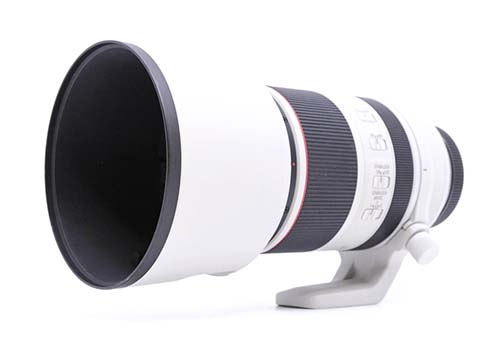
The Canon Portrait Lens - Canon RF 70-200 f/2.8 L IS USM is a high-quality professional-level fast aperture telephoto zoom lens for the awesome Canon R-Series mirrorless Full Frame format cameras. Large and somewhat heavy, it’s a fine example of a multipurpose lens that can also be used as a portrait lens.
Nikon Portrait Lens - Nikkor Z 50mm f/1.8 S
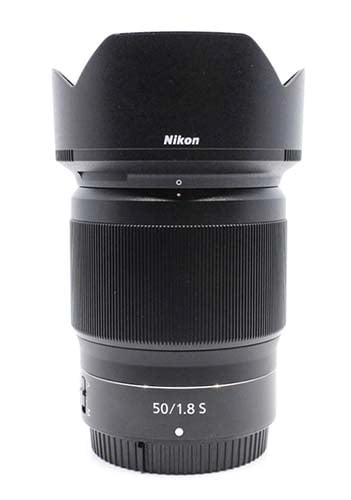
The Nikon Portrait Lens - Nikkor Z 50mm f/1.8 S is a good candidate for a normal lens used as a portrait lens. It fits the excellent Nikon Z-Series of Full Frame mirrorless cameras such as the top tier Nikon Z9 45.7MP camera with 8K video. Much smaller and lighter than the f/1.2 version, this lens is plenty fast for lots of uses and is very compact.
APS-C Fuji Portrait Lens - Fujinon XF 56mm f/1.2 R WR
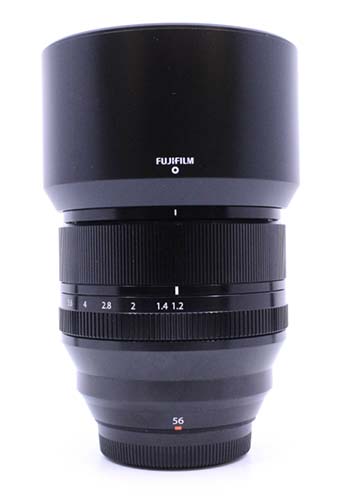
The APS-C Fuji Portrait Lens - Fujinon XF 56mm f/1.2 R WR is made for Fujinon XT mount APS-C mirrorless cameras. With a 1.5X crop factor, this lens corresponds to 84mm in Full Frame format and has beautiful bokeh with the ultra-fast f/1.2 lens aperture and 11-blade diaphragm.
Medium Format Portrait Lens - Fujifilm GF 110mm f2.0 R LM WR
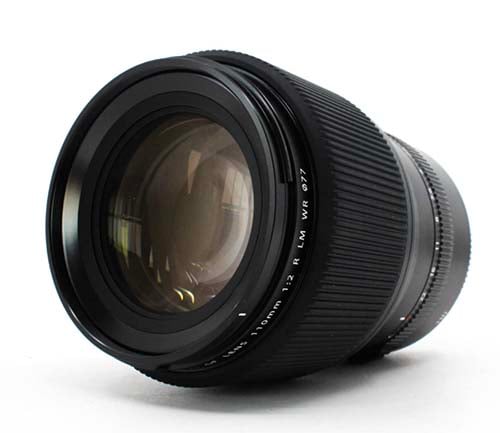
The Medium Format Portrait Lens - Fujifilm GF 110mm f2.0 R LM WR is a portrait lens for Fujifilm G-Mount medium format cameras like the very affordable Fujifilm GFX 50S. It corresponds to 87mm in Full Frame format. It balances perfectly with the GFX 50S and has a close focus, making it a great contender for the best portrait lens in medium format.
With that, you have numerous examples of the best portrait lenses for varying formats and camera brands. Again, there is no single lens that’s the “best” for everyone, so consider the type of camera you have, the type of portraiture you most often do, and your budget, then set about finding an optimal lens that meets your criteria.
As I noted earlier, MPB is my go-to platform for finding used gear. If you want to save money while having a tremendous selection of lenses to choose from, MPB is the first place you should look!
Learn More:
We Recommend
Best Used Cameras for 2021
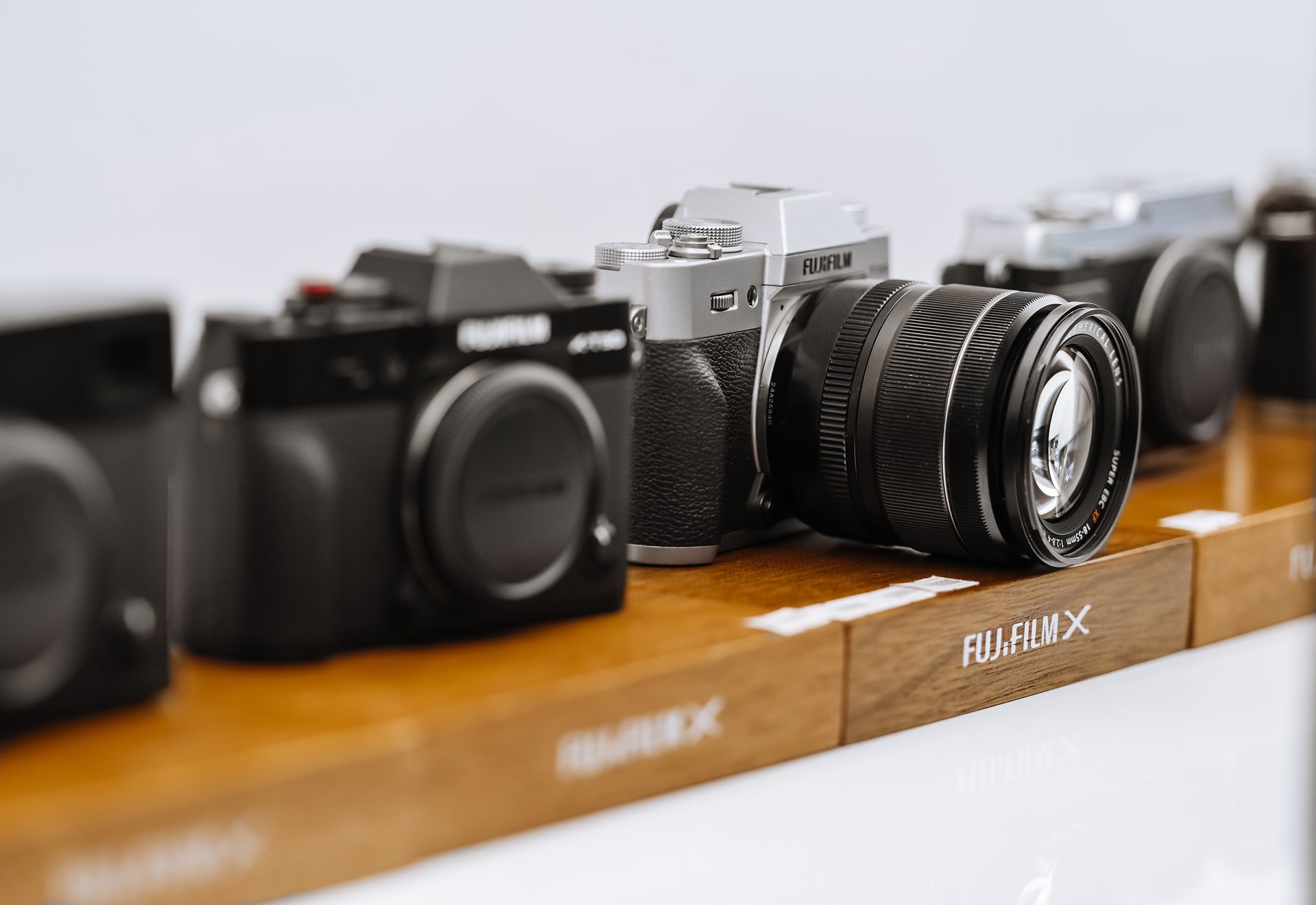
Photo by Omid Armin on Unsplash
Used Cameras
Considering the pandemic, we are seeing a lot of photographers experiencing reduced business. If you need new gear, that creates a problem..
While this is, of course, unfortunate, it also means we could be saving a ton of money this year by simply purchasing used cameras.
Also thanks to the pandemic, a lot of photographers are trying to downsize and get rid of their old gear, which means that you have an even better chance at snagging a great deal.
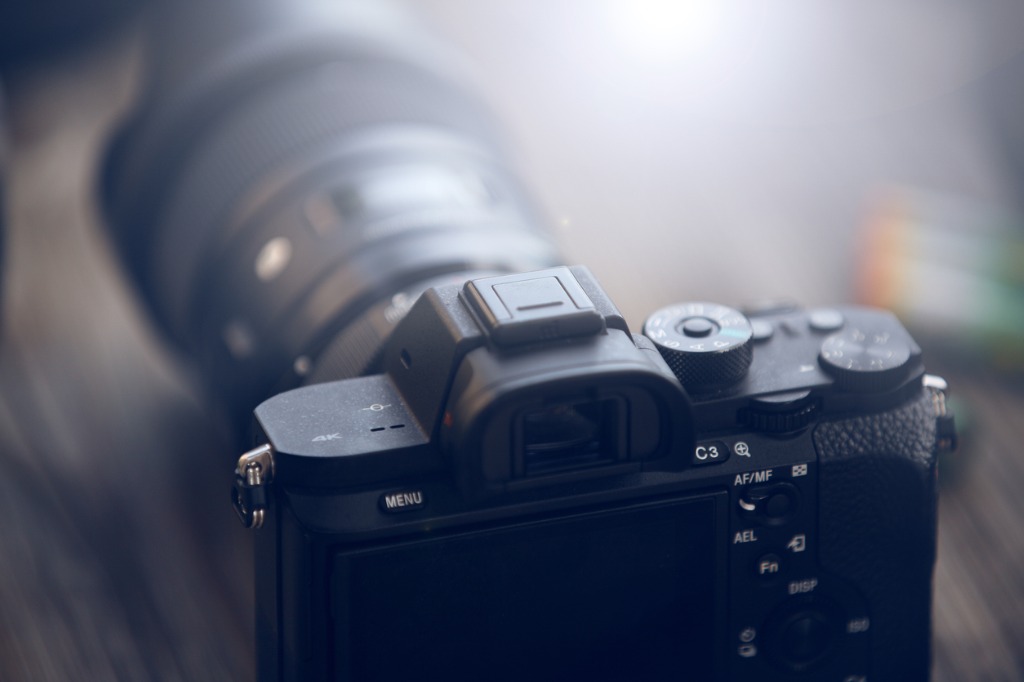
photo byhiphotos35 via iStock
So far, we have seen a ton of incredibly cheap used cameras this year, but the following four are some of the best used cameras for 2021.
We chose these cameras for a few reasons. Firstly, in order for a camera to make our best used cameras for 2021 article, it has to be inexpensive. This means different things for different people, so we tried to include a wide range of cameras we think are a great deal.
Secondly, we wanted to make sure that every camera on this list has features that make it a realistic option for a professional photographer working in 2021.
It took us quite a while to pick these out and we hope you benefit from it.
NIKON D7100
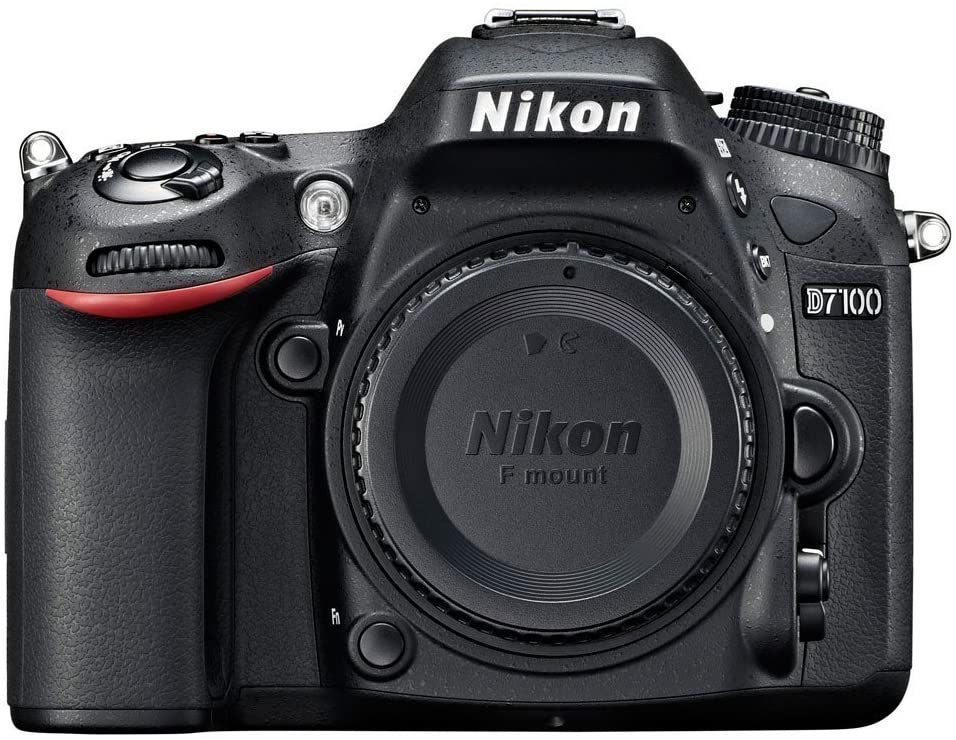
The first camera on our “best used cameras for 2021” list is the Nikon D7100.
The Nikon D7100 is a workhorse if I’ve ever seen one. It features a 24MP sensor, an impressive 3.2” LCD 1.22m-dot screen, and a 6fps burst mode that can last for up to 100 shots.
In order for me to consider a camera workhorse, though, it has to have a great battery life, which the Nikon D7100 does. Its battery is rated at 950 shots, which means it can last for well over 1,000 in the right conditions.
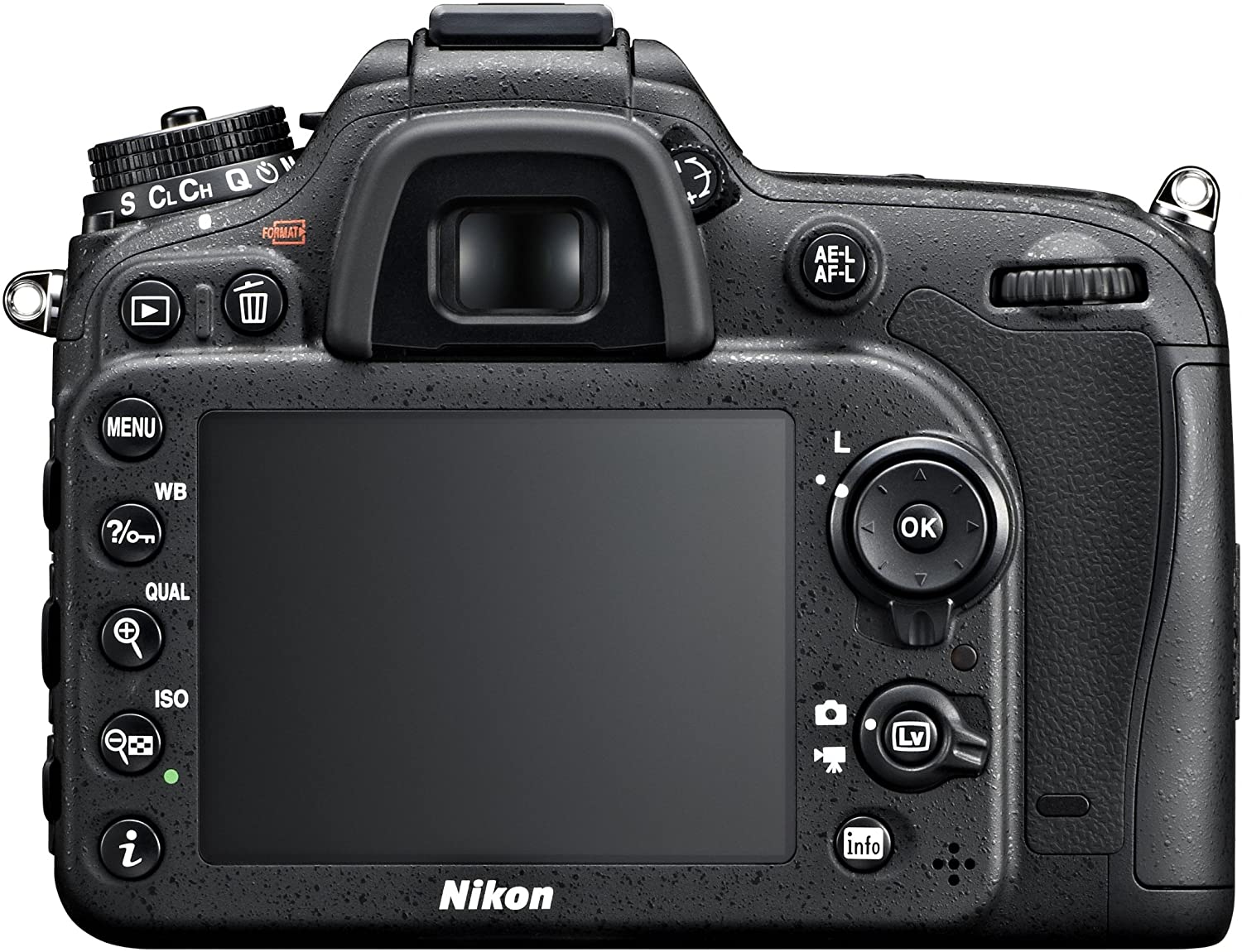
Unfortunately, it doesn’t feature 4K video, but it can shoot full HD at 60, 50, 30, 25, and 24fps.
As you can see in this video by Jo Jo Productions, this camera can handle itself in video mode.
You can also throw this camera around a bit because of its robust weather-proofed body. If you’ve ever shot with any of the cameras in the Nikon D line before, then you will be able to pick this one up with ease.
You can find a used Nikon D7100 on MPB starting from just $314, making it one of the best used cameras for 2021.
OLYMPUS OM-D E-M1
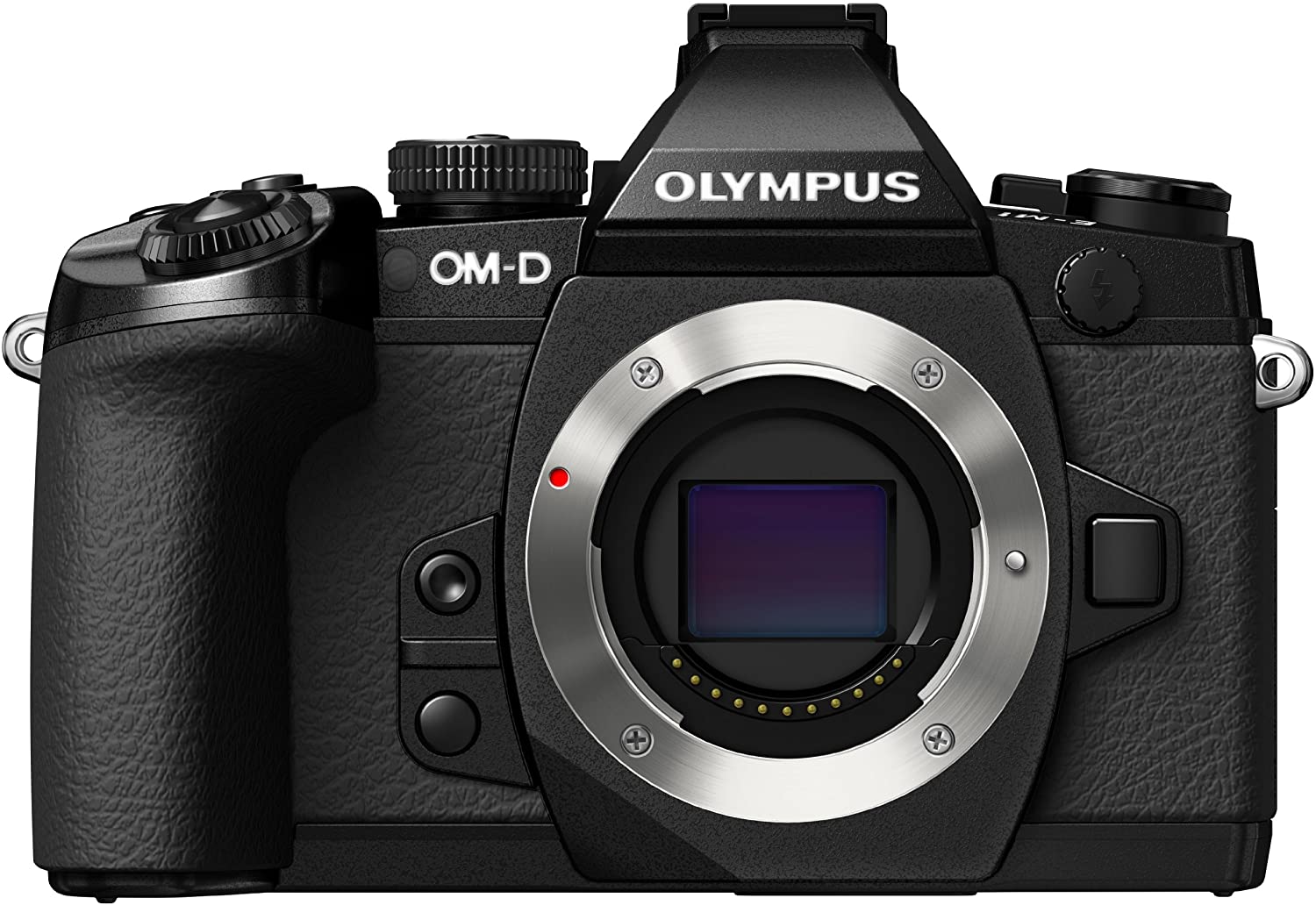
The Olympus OM-D E-M1 is the cheapest camera on our best used cameras for 2021 list because it’s getting old. It came out in 2013 and has since been replaced with two newer versions.
But, I think the Olympus OM-D E-M1 specs have aged exceptionally well. For instance, this camera features a 16MP sensor and an ISO range up to 25,600. Its EVF has 2.36m-dots and 100% coverage.
Its 3.0” touchscreen comes with 1.03m-dots and tilts so that you can capture the best images from any angle.
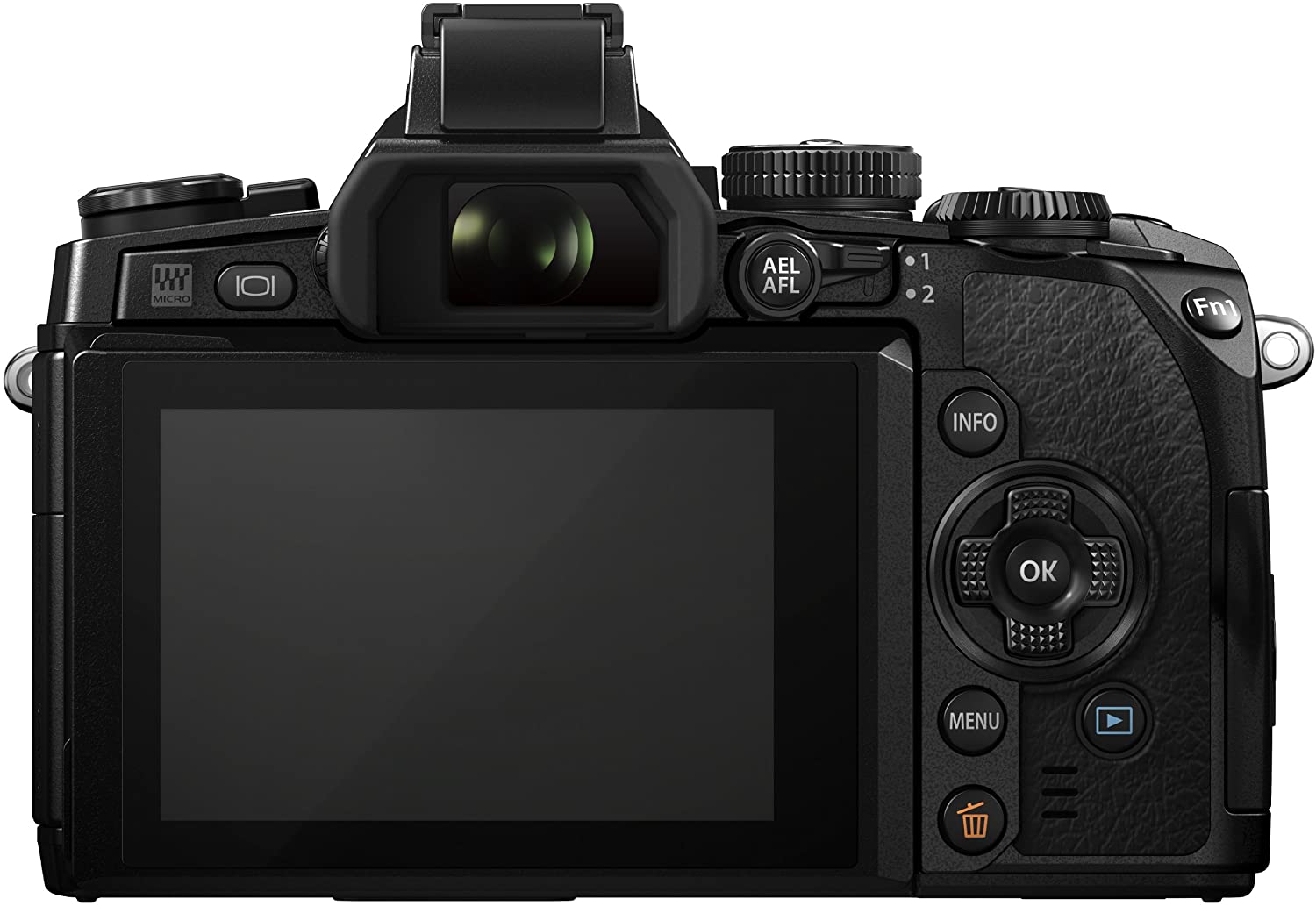
It also features some impressive specs for its age. For example, it comes with built-in Wi-Fi and a 10fps burst mode with autofocus.
While its battery life is definitely not as impressive as the Nikon D7100, it is workable at 440 shots.
The one thing I wouldn’t recommend this camera for in 2021 is its video quality. But, you can check out the video test by Blizzardfoto above to judge for yourself.
The Olympus OM-D E-M1 tops our list of the best used cameras for 2021 because you can find it on MPB for only $209.
Learn More:
CANON EOS 6D
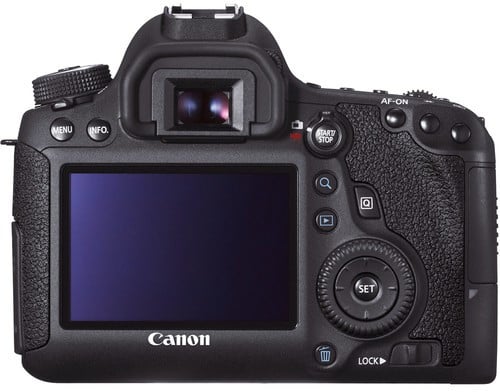
The Canon EOS 6D is one of the more expensive best used cameras for 2021 on our list at $680, but we promise it's worth it.
The Canon EOS 6D specs include:
- 20MP sensor
- DIGIC 5+ processor
- ISO range o 100-25,600
- 4.5fps burst mode
- Full HD video
- 97% viewfinder coverage
- 3.2” LCD screen with 1.04m-dots
- Built-in Wi-Fi and GPS

My favorite quality of the Canon EOS 6D is its vari-angle screen, which makes taking selfies or vlogging incredibly easy. For this reason, I’ve used this camera while traveling to various countries.
But, it's one of the best used cameras for 2021 because it's rugged.
SONY A7R
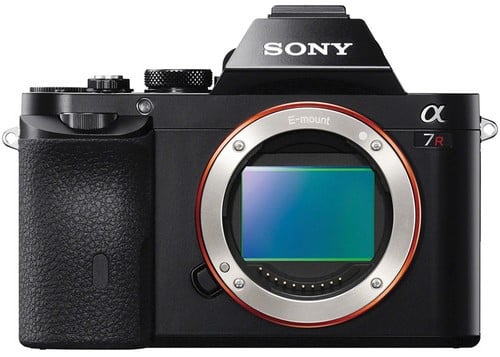
The Sony a7R is probably the most popular camera on our best used cameras for 2021 list, and for good reason, because the Sony a7R specs are nothing short of impressive.
The Sony a7R dropped in 2013 and immediately solidified itself as a favorite everyday shooter for professional photographers. If you remember, the Sony a7R dropped alongside two other cameras in the same line: the Sony a7S and the Sony a7, though these cameras really had more in common than Sony made it seem at first.
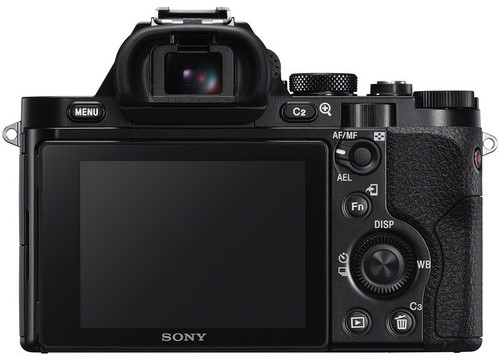
The sony a7R is a first-generation E mount, compact camera. It came with a high resolution 36MP full-frame Exmor CMOS sensor. It also came with Sony’s best processor to date, the BIONZ-X Image Processor.
Its electronic viewfinder features 2.36m-dots and its 3.0” LCD tilts.
Again, this camera is nearly a decade old at this point, so it doesn’t feature 4K video, but it can shoot full HD video at 24 or 60p.
Its ISO rating is the same as every other camera on this list: 100-25,600.
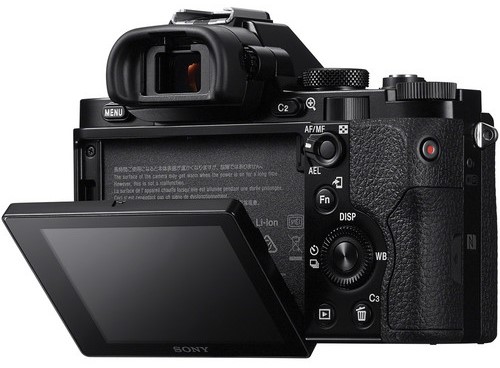
If you’re wondering what the difference is between the Sony a7R, the Sony a7, and the Sony a7S you aren’t alone.
The major difference between these three cameras is the sensor. For example, the Sony a7 comes with a 24MP sensor, while the Sony a7S comes with a 12MP sensor.
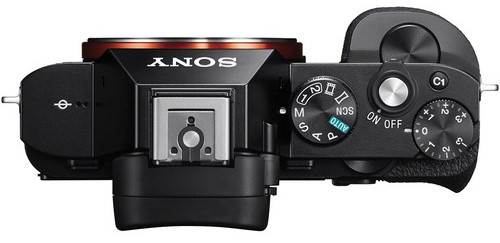
There’s also a large difference in the low light capabilities of these three models, since the Sony a7S was specifically built for low-light shooting and comes with an ISO range of 100-102,400.
The battery life on all three cameras is pretty similar, with the Sony a7R reporting a 340-shot battery life, the Sony a7 reporting a 340-shot battery life, and the Sony a7S reporting a 380-shot battery life.
Unfortunately the last of the “best used cameras for 2021” is currently out of stock on MPB, but check back frequentlybecause MPB rotates through hundreds of products every day.
Learn More:
We Recommend
Camera Sensor Sizes Explained
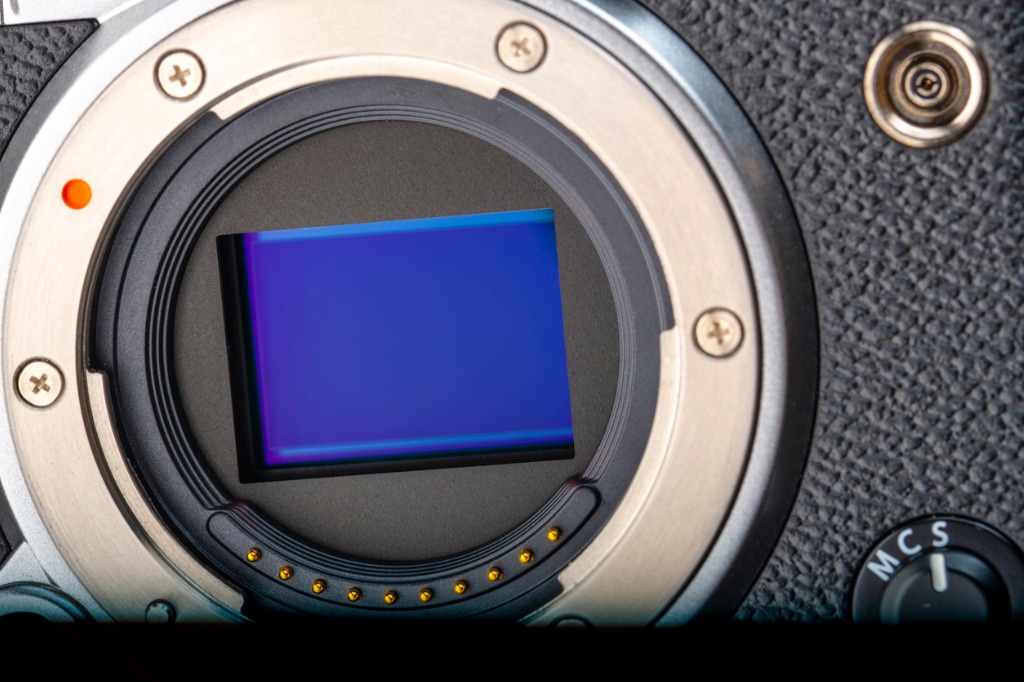
photo by4kodiak via iStock
Camera sensor sizes, crop factor, and focal lengths vary quite a bit among all the different digital cameras presently up for grabs. This can cause no end of confusion for beginner and advanced photographers alike.
In order to have camera sensor sizes explained, and to understand just what a crop factor is, we’ll have to go back in time… Not too far, though, just to the golden age of film photography.
Table of Contents
- 35mm Film and the Nifty Fifty Lens
- Crop Factor and Sensor Size
- Larger Sensors Have Higher Quality
- The Various Camera Sensor Sizes
- What Camera Sensor Size Should You Get?
35mm Film and the Nifty Fifty Lens
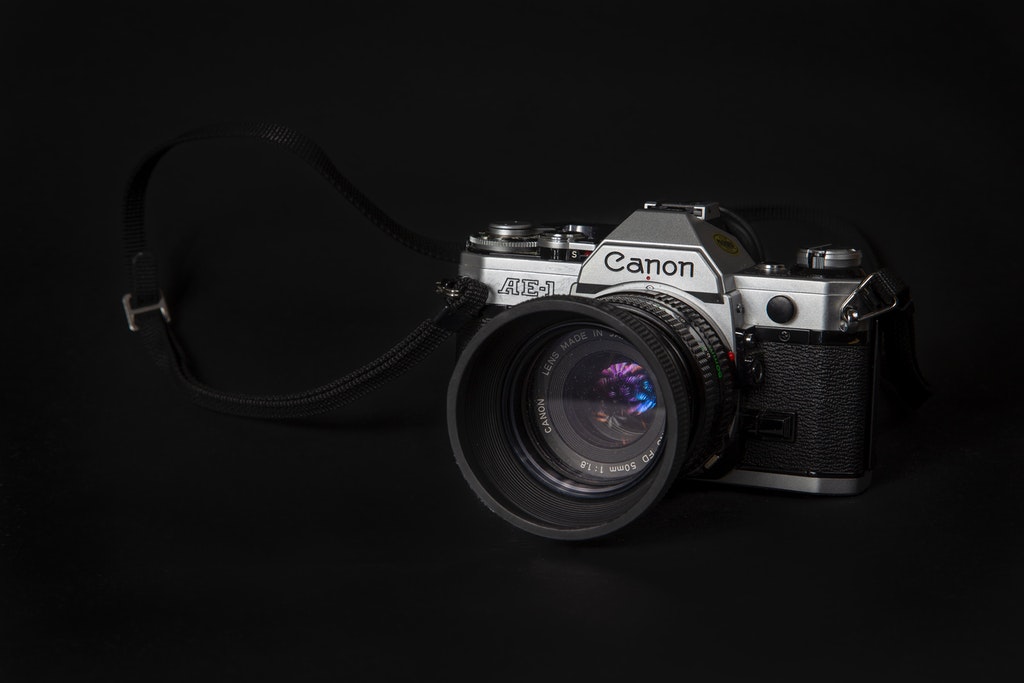
Photo by Stefan Grage from Pexels
If you’re old enough to have firsthand memories of the 1970s and 80s, one of those memories could be the Canon AE-1 camera commercial with tennis pro John Newcombe informing us that the AE-1 was “so advanced - it's simple.”
The reason I bring this up is because that era pretty much cemented in the minds of the populous the idea of 35mm film cameras being the “standard” format for most photography. At least, most amatuer photography, and a whole bunch of pro photography, too.
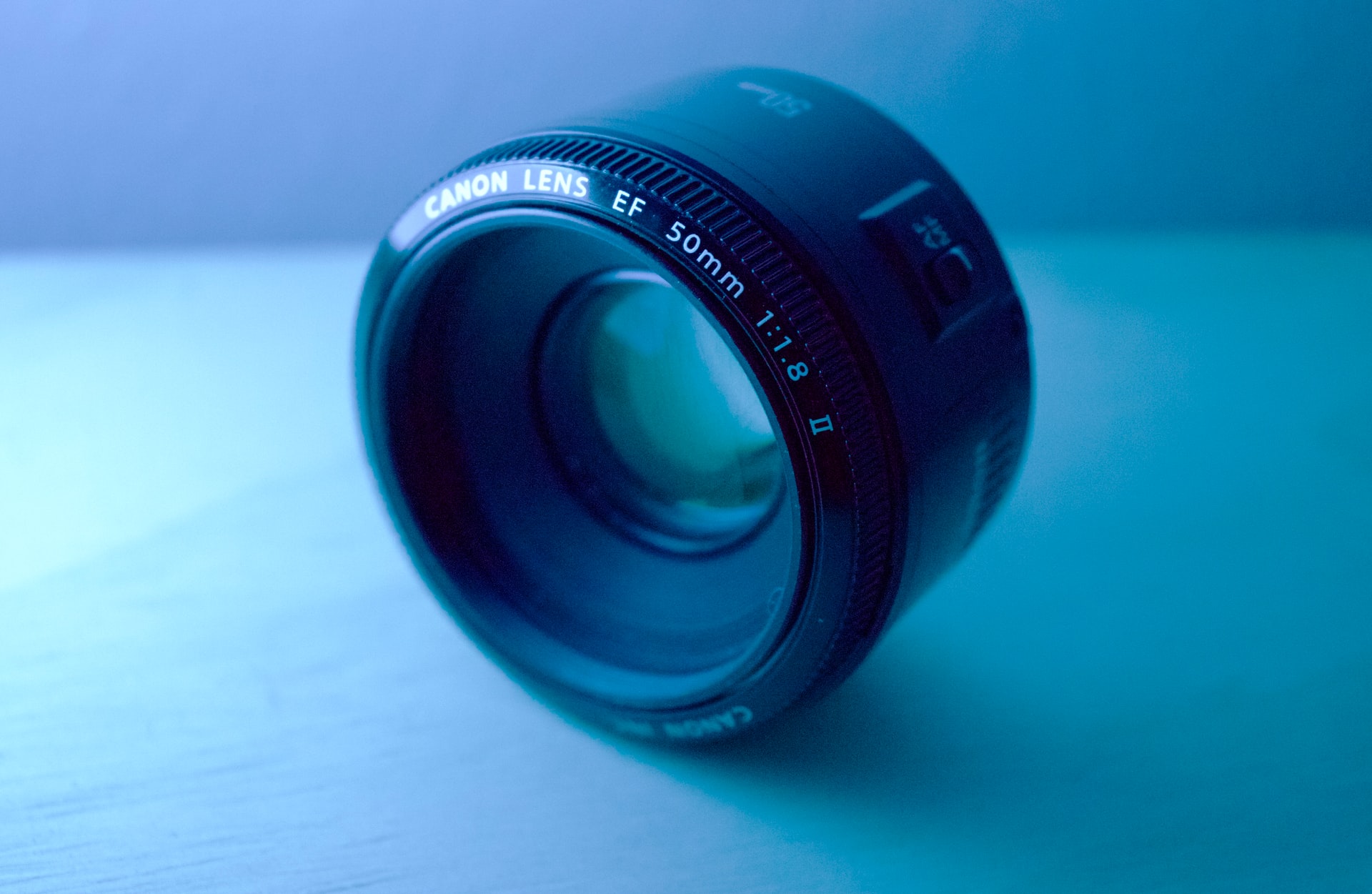
Photo by Dave Craige on Unsplash
The Nifty Fifty 50mm lens has been the standard or normal lens for the 35mm film format for about 100 years. So, everything involved in lenses and formats tends to be based on or compared to these two standards.
Full Frame digital format is the same as 35mm film format, with most other digital formats being compared to Full Frame by means of a crop factor. And many lenses are compared to that format’s 50mm lens for magnification.
So, a 200mm lens might be referred to as a 4X lens, since 200mm on Full Frame delivers 4X the magnification of the 50mm lens. Crop factor refers to how a lens focal length behaves on a format other than Full Frame.
Recommended Photography Reading
- National Geographic Photo Basics: The Ultimate Beginner's Guide to Great Photography
- Photography: The Definitive Visual History
- Read This if You Want to Take Great Photographs
Crop Factor and Sensor Size
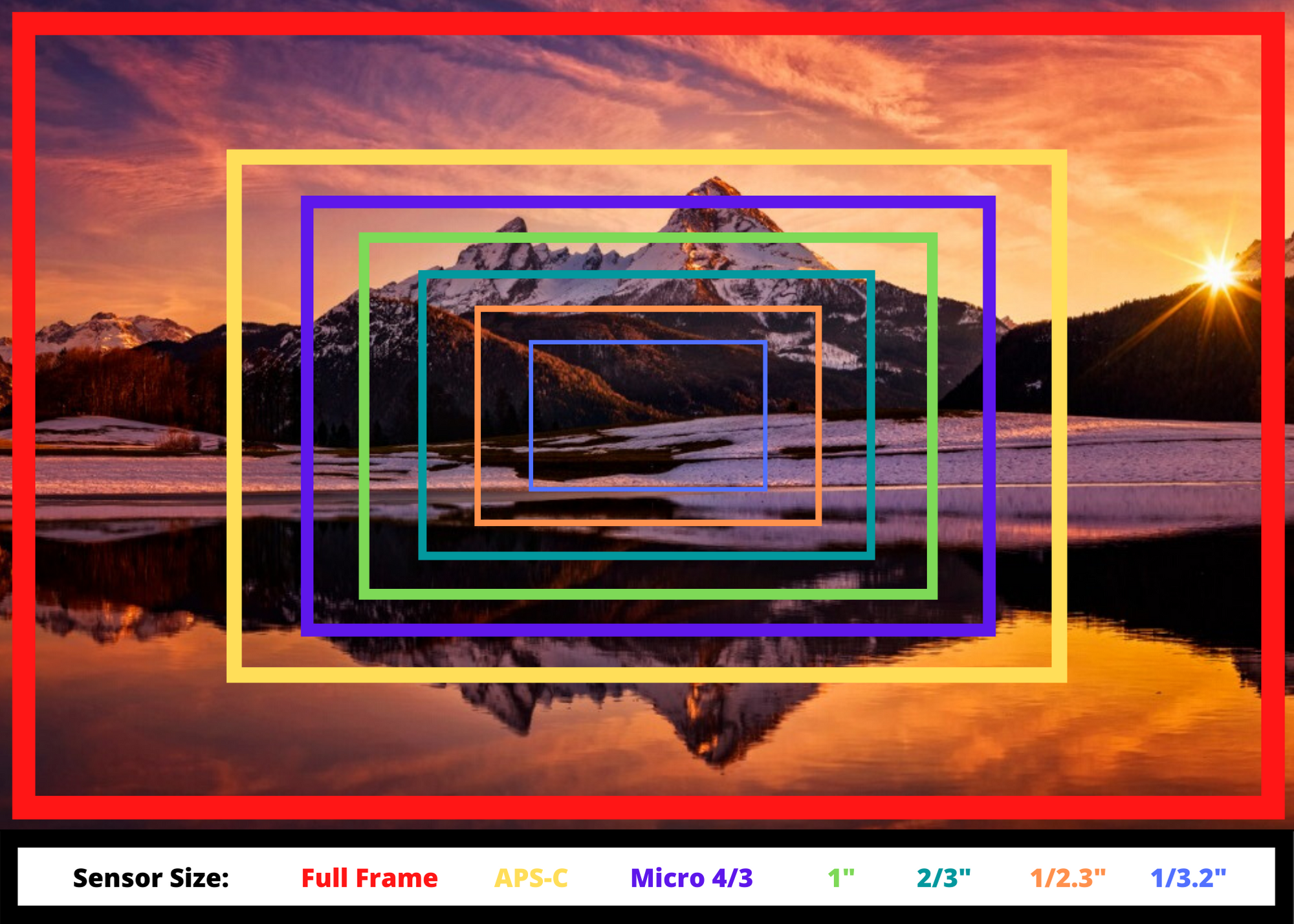
Crop Factor is mentioned so often in camera advertisements and digital photography articles, we should probably find a good explanation of it so we understand what it means to us and our digital photography.
Specifically, crop factor is the ratio of a format’s imaging area compared to the reference format, in most cases, the Full Frame format. Any sensor smaller than Full Frame sees a narrower field of view, thus any focal length lens will provide a narrower field of view on smaller formats.
This is what is referred to when listing a crop factor. As an example, on a format with a 1.5X crop factor, a 200mm on Full Frame will behave similarly to a 300mm lens on the smaller format. The focal length has not changed, only how the sensor sees it compared to Full Frame. See what I mean in the video below by ProAV TV:
Compared to Full Frame is the important part to understand. It is still a 200mm lens. Focal lengths don’t change, only how a format sees the field of view of that focal length. Compared to a 50mm lens on Full Frame, a 200mm lens is a 6X telephoto on a 1.5X crop factor format camera, even though it’s only 4X on Full Frame.
Is your head swimming yet? Yeah, I know. Imagine how it feels to some of us who shoot with multiple formats or who have dyslexia!
Learn More:
- Is a Full Frame or Crop Sensor Better for Landscapes?
- What You Need to Know About Full Frame vs Crop Sensor Cameras
Larger Sensors Have Higher Quality

Photo by picjumbo.com from Pexels
This isn’t a knock on any sensor size or camera brand. It’s simple physics. The larger the sensor, the larger each individual pixel is. Which is why my 7 gazillion MB smartphone camera can not provide the overall image quality of my Full Frame mirrorless.
That won’t stop me from using my smartphone, MFT, or APS-C cameras, though. Like many pros or other serious users, I choose the equipment to fit the needs of that photo or video shoot. Likewise, if you have standardized on one or two formats for yourself, you can achieve outstanding results.
When used properly, any camera gear can produce outstanding images. Conversely, the highest end equipment on the planet won’t deliver superior results if not used well.
The Various Camera Sensor Sizes
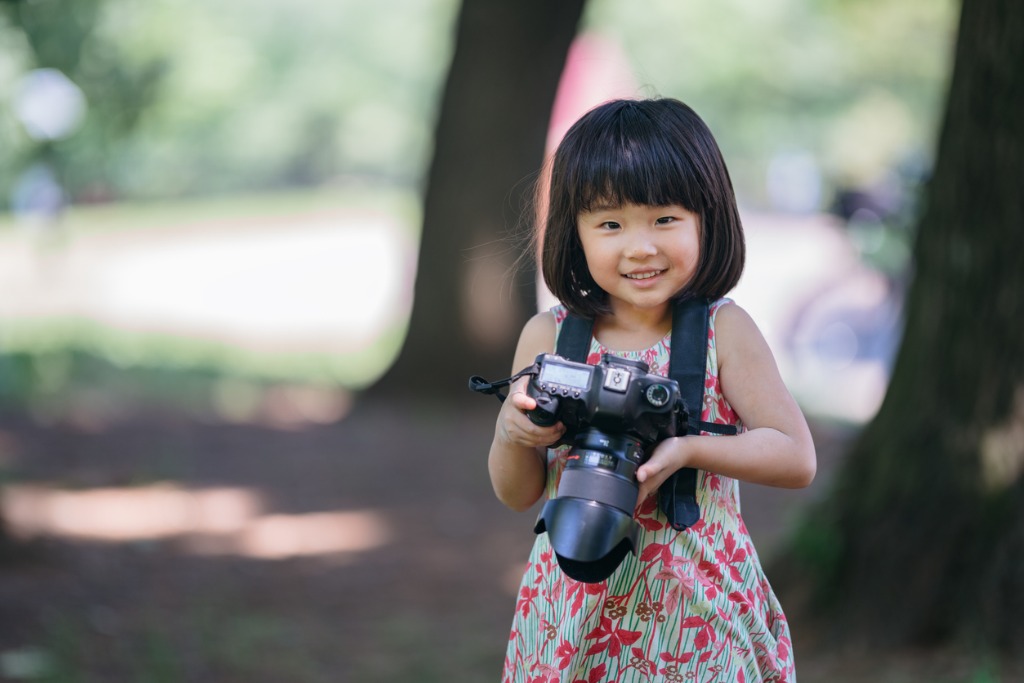
photo by recep-bg via iStock
The pixel size and overall area of larger digital formats also impacts depth of focus. Crop factor is a huge reason, but there are other characteristics that come into play as well. Which is why there are post processing programs and smartphone apps for selective focus effects.
It should also be noted that most of the digital formats have an aspect ratio of 4:3 as opposed to the Full Frame format’s aspect ratio of 3:2. Which means that Full Frame and the closest crop format APS-C have a height to width ratio that is slightly more rectangular than most of the other formats.
The MB count is only part of what provides overall image quality. But enough about that, let’s get to the most used camera sensor sizes. I’ll start from small and get larger.
1/3.2” Sensor
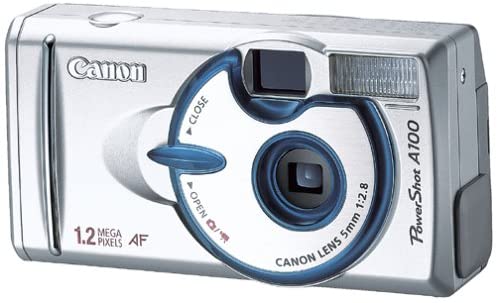
Canon PowerShot A100
There are smaller sensor sizes in some older smartphone and point-and-shoot style cameras, but this size is one of the smallest currently used in a decent quality camera. Camera examples include the iPhone 5 and Canon PowerShot A100.
This sensor size is 4.5mm x 3.4mm, so it’s pretty small. This small size allows it to be a smartphone camera sensor size. In order to get any selective focus from this sensor, you will need to use a smartphone app or post processing.
Crop factor is 7.6X, so focal length calculations usually aren’t even mentioned for this smartphone camera sensor size.
1/2.3” Sensor
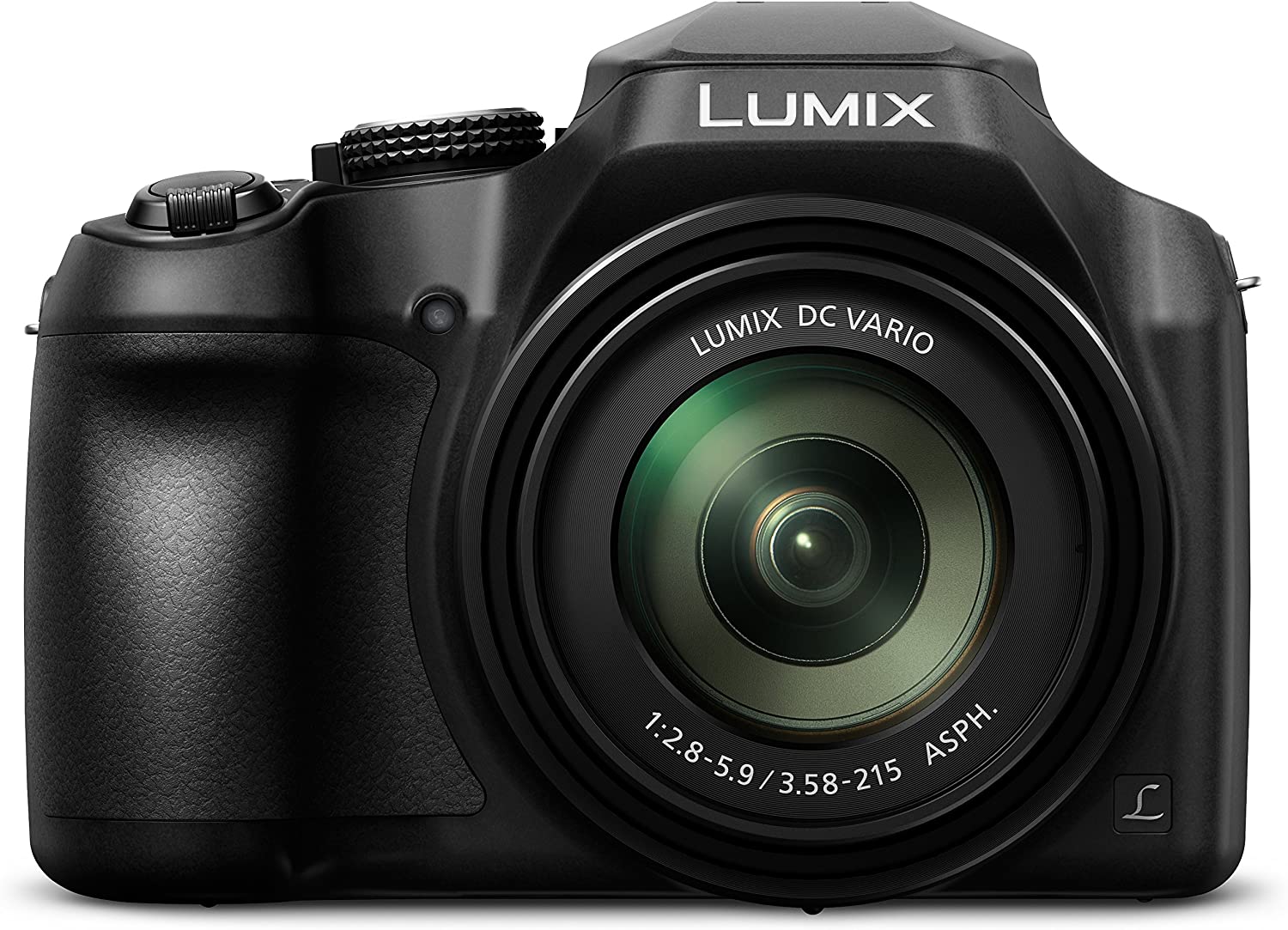
Panasonic Lumix FZ80
A more common size, this is also used as an iPhone camera sensor size and in many point-and-shoot style cameras. Plus you may find it in various medical and scientific imaging devices where small size is vital.
Several Super Zoom Compacts use this sensor with a crop factor of 5.6X and a size of 6.3mm x 4.7mm. The Nikon Coolpix B500 and Panasonic Lumix FZ80 use this sensor. So does the waterproof compact camera Olympus TG-6.
Image quality can be quite good, which is also because of the excellent lenses in many of these cameras. Few of these or smaller sensor cameras offer any RAW image file recording, using JPEG as their standard image file type.
2/3” Sensor
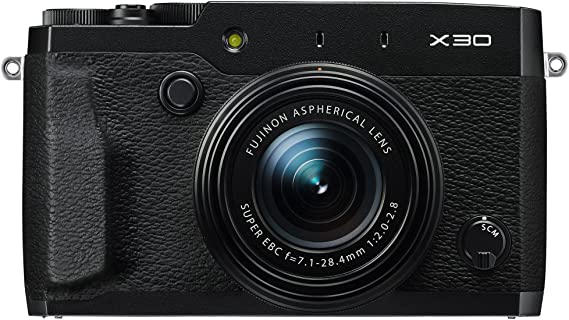
Fujifilm X30
Fujifilm X30 and some tablets like the iPad Mini 2 use this 8.8mm x 6.6mm sensor with a crop factor of 3.9X. Just so you know, many tablets have excellent imaging capabilities, a fact that sometimes gets overlooked by focusing on the super portable and ubiquitous smartphone.
Some older cameras such as early Leica Digilux cameras made outstanding use of this sensor size. Many of these cameras can be found for great prices on your favorite used camera sites.
1” Type Sensor
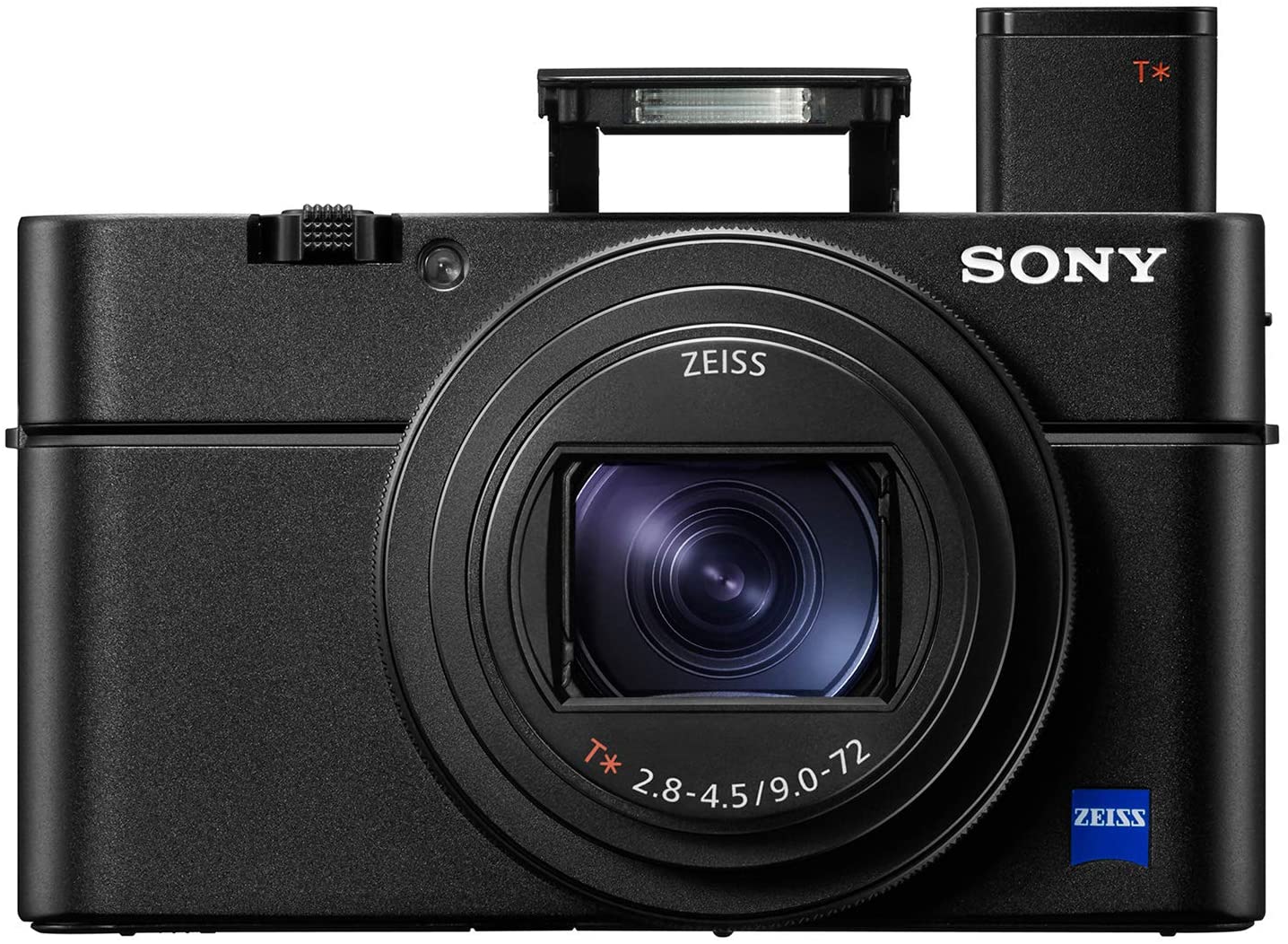
Sony RX-100 VI
The 1” type sensor is one of the more common sensors for serious video cameras such as the Sony FDR-AX100 4K camcorder and the Blackmagic Design Pocket Cinema 4K camera, as well as super high quality compact cameras like the Sony RX-100 VI with Carl Zeiss lens and the Canon PowerShot G9.
Some ultra compact interchangeable cameras use the 1 inch sensor as well, Nikon 1 series of cameras and lenses is a prime example.
A crop factor of 2.7X is a characteristic of the 13.2mm x 8.8mm sized 1 inch sensor. Excellent video in 4K is capable with this sensor as well as exceptional still imaging with the ultra high quality lenses normally paired with these cameras.
4/3rds and MFT Sensor Cameras
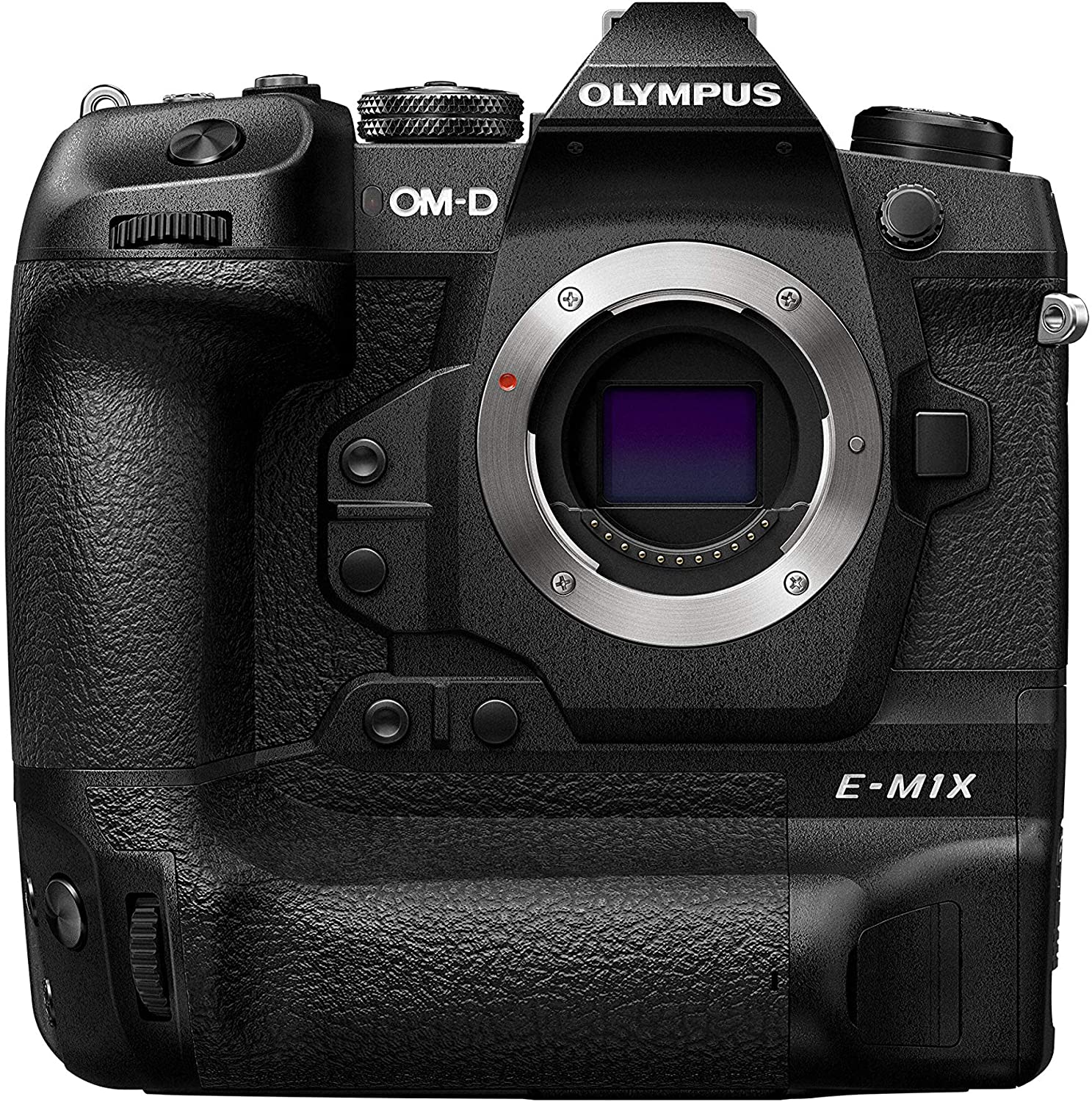
Olympus OM-D E-M1X
Both 4/3rds and MFT (micro four thirds) cameras use this camera sensor size, the difference in cameras is one is a DSLR and the MF is mirrorless. Almost all of the newest offerings are MFT.
MFT is also an excellent format for high end video recording. It offers video recording quality that actually surpasses film formats such as 16mm and Super16, depending on the exact application.
Serious and professional level still photography can also be accomplished with this format that has a crop factor of 2X and an image area of 13.5mm x 18mm. Notable cameras with superior performance in MFT are the Olympus OM-D E-M1X, the ultra compact Olympus PEN-F, and the video superstar Panasonic LUMIX GH5s.
APS-C Format
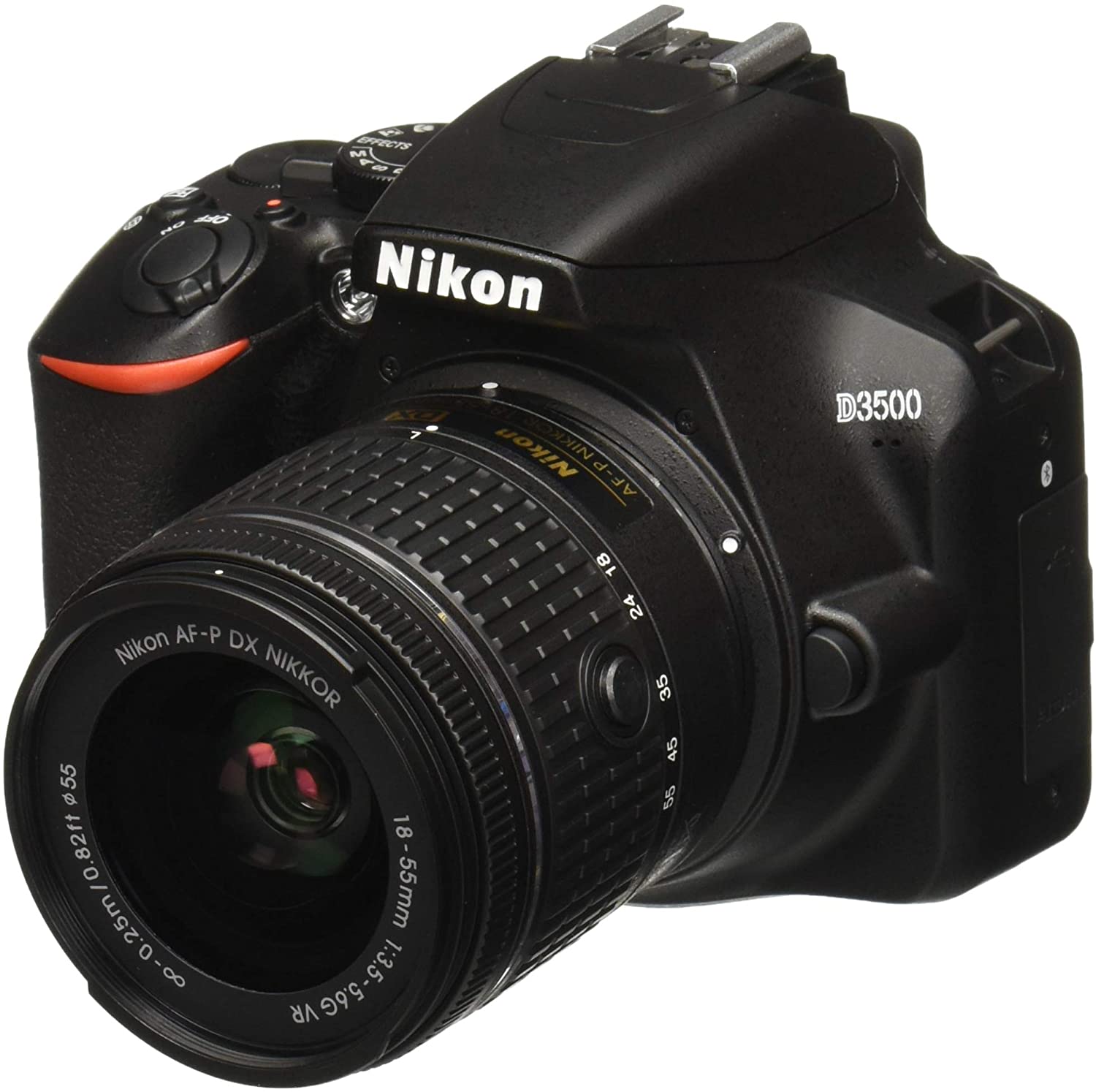
Nikon D3500
APS-C is used on still imaging and video-capable DSLRs and mirrorless cameras from entry-level up to professional caliber. For most brands, APS-C format sensors are 23.6mm x 15.6mm with a crop factor of 1.5X. Canon APS-C cameras use a 22.3mm x 14.9mm sensor for a 1.6X crop factor.
There is also the APS-H crop format with a 1.3X crop factor, but no current cameras are using that format. It was really more of a stop gap format before any of the camera manufacturers were building any of their own DSLRs in Full Frame sensor size.
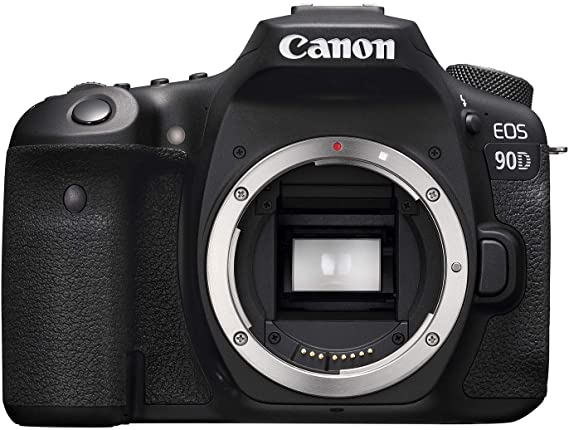
Canon EOS 90D
This format is a great option for serious photography as it gives you outstanding image quality while maintaining a smaller size and lower price that photographic enthusiasts have been leaning towards since well before digital photography became commonplace.
Several amazingly advanced cameras and camera systems are using the APS-C format, including ones from Sony, Nikon, Canon, Pentax, and Fuji. Notable lower-priced cameras include the Nikon D3500, Canon EOS Rebel T6, Pentax K-70, Fujifilm X-T30, and Sony A6100. Prosumer or professional models include the Nikon D7500 and Nikon D500, Canon EOS 90D, Pentax K-1 Mark II, Fujifilm XT-4, and Sony A6600.
Full Frame 35mm Format
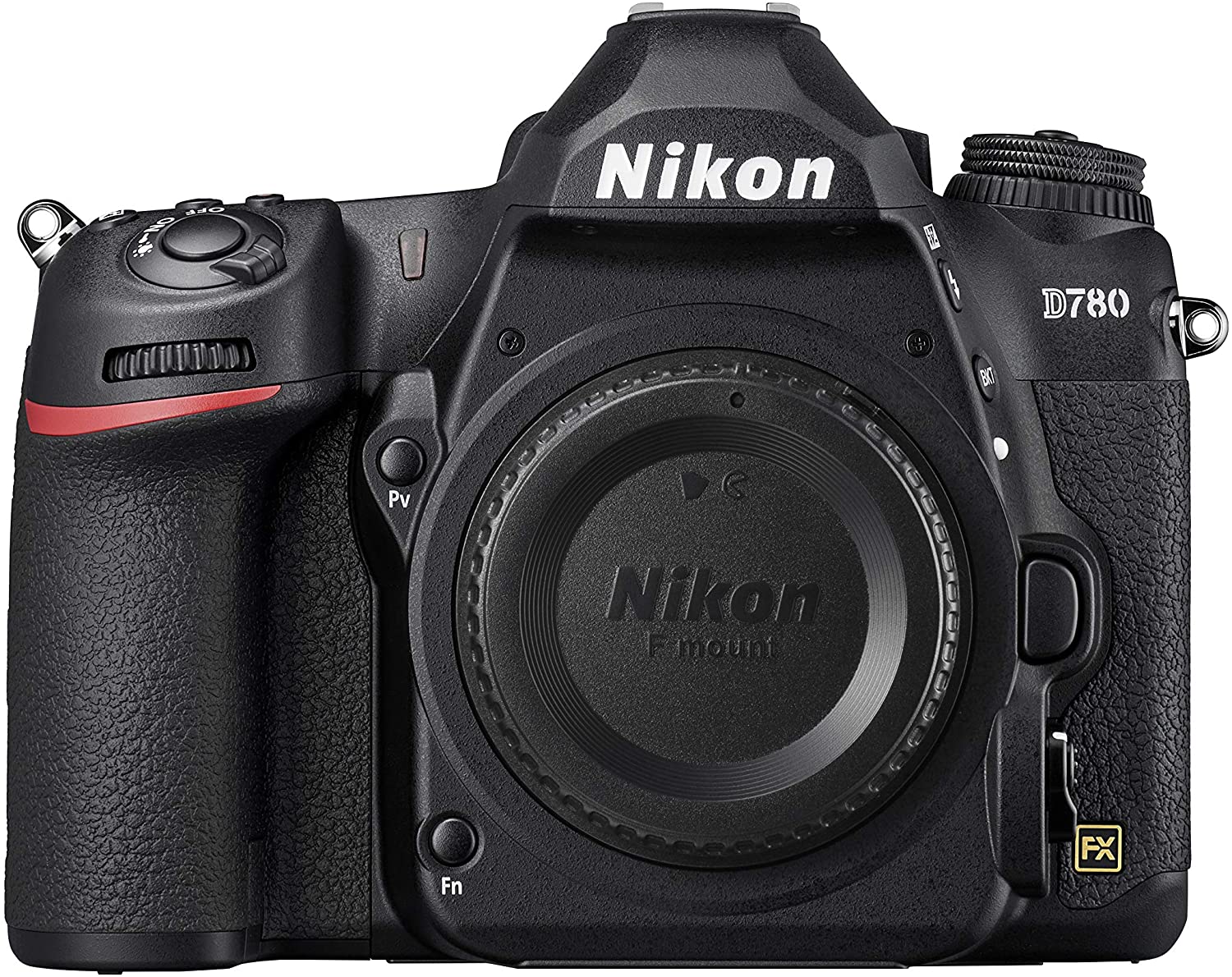
Nikon D780
Some simply call it Full Frame, leaving off the 35mm label, but this is the same size as the film cameras using 135 or 35mm film. The full frame filter size is 24mm x 36mm, crop factor of 1X.
There aren’t many entry level priced cameras in this format because it costs much more to make larger sensors, not to mention the increased size, weight, and cost for lenses as well. Still, there are several models from the various brands that cost less than a nice used car.
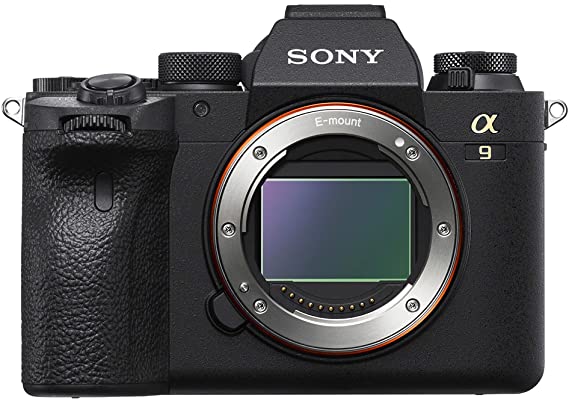
Sony a9 II
A few excellent general use cameras that come to mind are the Nikon D780 and the mirrorless Nikon Z6, Canon EOS 6D Mark II, and Sony a7 III. Professional use cameras such as the Nikon D6, Nikon Z7, Sony a9 II, and Leica M10 are among the finest imaging tools ever made but are extremely expensive for any average user.
What you get with Full Frame digital, DSLR or mirrorless, is absolutely excellent image quality, plus all the other characteristics that can be used to create superior images and video. And no crop factor! Everything is larger, heavier, and more expensive than crop formats, but for those who want or need it, it’s definitely worth those costs.
Medium Format Digital
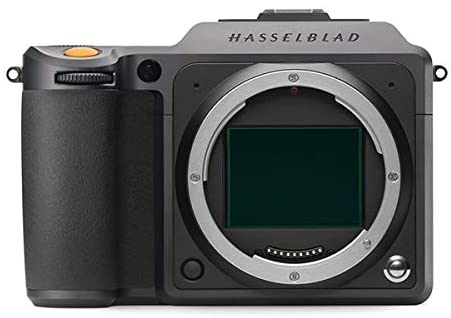
Hasselblad X1D II
A digital format that is very important in the commercial photography world but doesn’t get a lot of discussion among any but the most serious photographers is medium format. Actually, we could say multiple medium formats as there is a lot of variation in format sizes. Some aren’t much larger than Full Frame, others are equal to 6X6cm film format.
Some of the best options in medium format digital are the mirrorless cameras such as the Hasselblad X1D II, Fujifilm GFX 50S, and Fujifilm GFX 100. These cameras are amazing tools and their price points are amazing, too. A little rich for most enthusiasts, but absolutely superb cameras.
Learn More:
What Camera Sensor Size Should You Get?
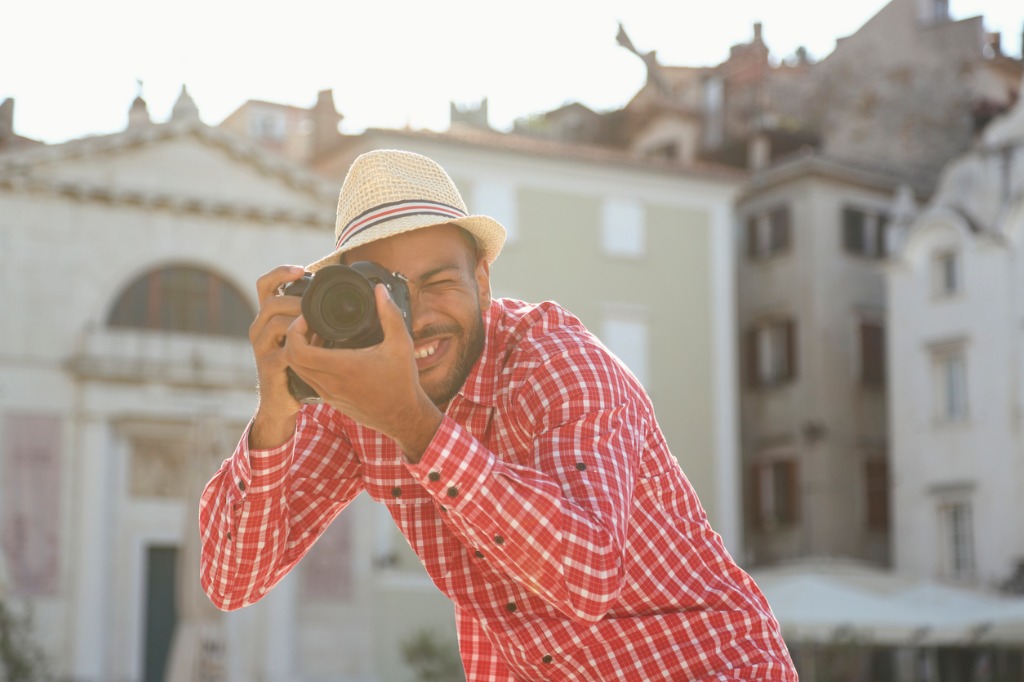
photo by tomazl via iStock
Any of the larger camera sensor sizes are worthy professional and advanced photo enthusiast cameras. The larger sizes like Full Frame and APS-Care preferred for pro use more so than smaller formats, outside of MFT and 1 Inch Type being the favorites of many serious videographers.
As we say many times, though, a camera is only as good as the photographer using it. Check out the Learn More links in this article to reference other guides to help you continue to grow as a photographer, regardless of what camera sensor size you are currently using.
We Recommend
Canon EOS M6 Mark II vs Sony a6400
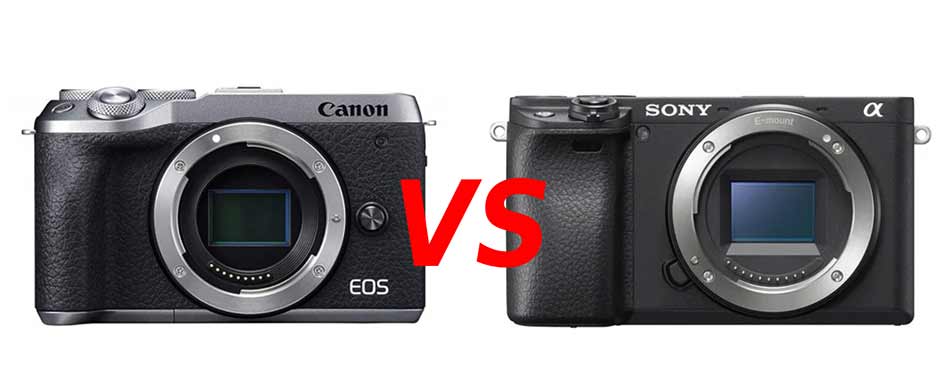
Both the Canon EOS M6 Mark II and the Sony a6400 are compact mirrorless cameras that have come out within the last couple of years. Naturally, a Canon EOS M6 II vs. Sony a6400 debate quickly started amongst photographers using either of these bodies.
But, these two cameras are quite different in many ways, which made me question whether the Canon EOS M6 Mark II vs Sony a6400 argument is really the best use of our time. To me, the two clearly serve different purposes (even if they’re doing so in similar price ranges and with a lot of similar specs).
But, to prevent any photographers from accidentally purchasing the wrong body, we wanted to outline all of the differences between the Canon EOS M6 Mark II vs Sony a6400.
In this Canon EOS M6 Mark II vs Sony a6400 review we will walk you through some of the most contentious points of argument, like the Canon EOS M6 Mark II vs Sony a6400 features debate, as well as the specs of both bodies. Let’s get started.
Canon EOS M6 Mark II vs Sony a6400 Specs
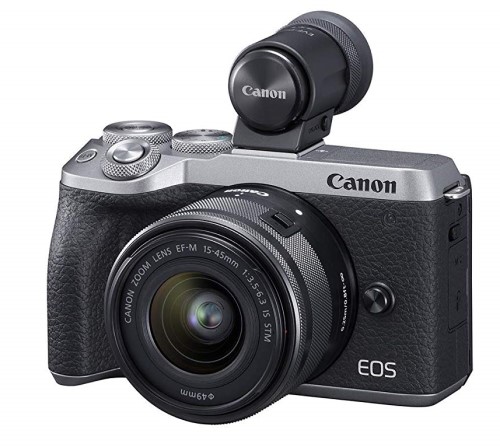
Canon EOS M6 Mark II
Right off the bat we can tell that the Canon EOS M6 Mark II vs Sony a6400 debate involves just how different these two cameras are. For instance, the Canon M6 Mark II comes with a 33MP sensor, while the Sony a6400 only comes with a 24MP sensor.
Once again, the Canon EOS M6 Mark II looks just a little bit more polished because its burst mode is faster at 14fps, as compared to 11fps on the Sony a6400. The Canon’s LCD screen resolution is also higher at 1.04m-dots.
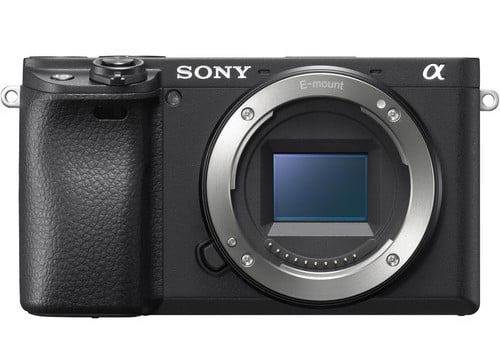
Sony a6400
Admittedly, when you look at the Canon EOS M6 Mark II vs Sony a6400 specs as a whole, the Sony body isn’t that far behind. For example, the Sony does come with a larger ISO range and high-speed video capabilities. Additionally, the Canon EOS M6 Mark II vs Sony a6400 debate does start to lean in Sony’s favor when you think about all of the lens options you get if you purchase the Sony.
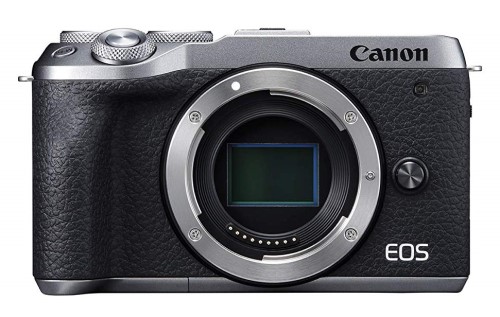
Canon EOS M6 Mark II Specs:
- 33MP APS-C CMOS sensor
- ISO range of 100-25,600
- 3” tilting screen with 1.04m-dots
- 14fps burst mode
- 4K video capabilities
- Built-in Wi-Fi
- .89 lbs
- 305-shot battery life
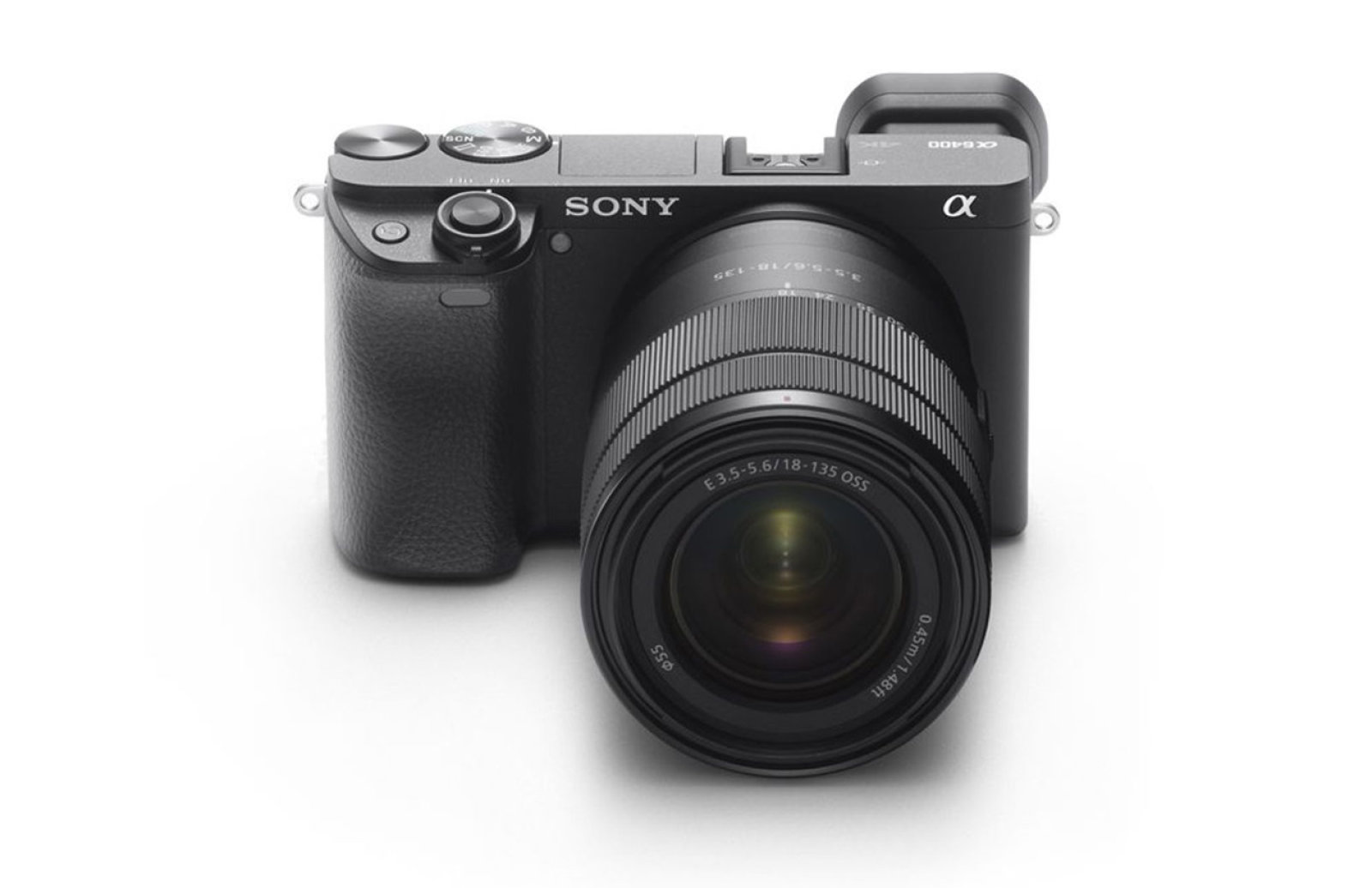
Sony a6400 Specs:
- 24MP APS-C CMOS sensor
- ISO range of 100-32,000
- 3” tilting screen with 922k-dots
- 11fps burst mode
- 4K video capabilities
- Built-in Wi-Fi
- .88 lbs
- 410-shot battery life
Canon EOS M6 Mark II vs Sony a6400 Body & Design
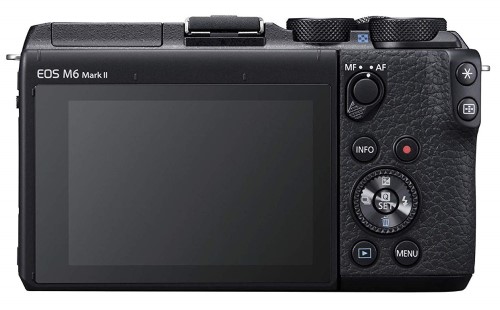
Canon EOS M6 Mark II
The Canon EOS M6 Mark II vs Sony a6400 build is another important factor to consider when weighing the differences between these two camera bodies.
As you can tell from the spec sheet above, these cameras are nearly identical in size. They weigh nearly the same weight. The Canon EOS Mark II measures 120 x 70 x 49mm while the Sony a6400 measures 120 x 67 x 50 mm. What that tells me is that you can pretty much expect a traditional mirrorless experience with either one of these cameras.
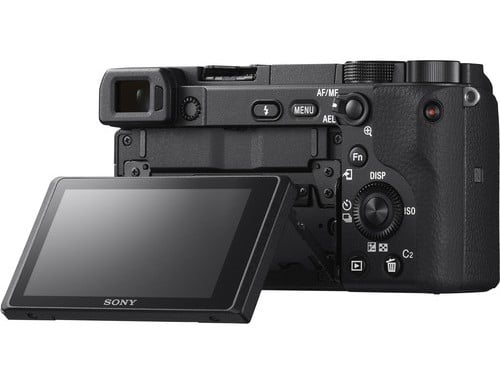
Sony a6400
Both of these cameras also feature touch screens that are tiltable, internal flashes, and external mic jacks.
But there are definitely some interesting points that differentiate the Canon EOS M6 Mark II vs Sony a6400 in terms of their bodies.
For instance, the Sony a6400 comes with an eye-level viewfinder, whereas the Canon only comes with a rear display. Another point for the Sony body is that its body is environmentally sealed while the Canon’s body is not.
Learn More:
Canon EOS M6 Mark II vs Sony a6400 Build & Handling

Canon EOS M6 Mark II
Whenever I do a comparison article like this Canon EOS M6 Mark II vs Sony a6400 article, one of the most important points I bring up about the handling of the cameras are their battery lives.
The Sony a6400 barely beats the Canon EOS M6 Mark II when it comes to its still photography battery life at 410 shots vs. 305, but the Sony definitely pulls ahead when it comes to video battery life. You can use the Sony for 125 minutes while capturing video, but you can only use the Canon for 80 minutes.
But, battery capability is not the only thing that you should be comparing when it comes to the Canon EOS M6 Mark II vs Sony a6400 handling.
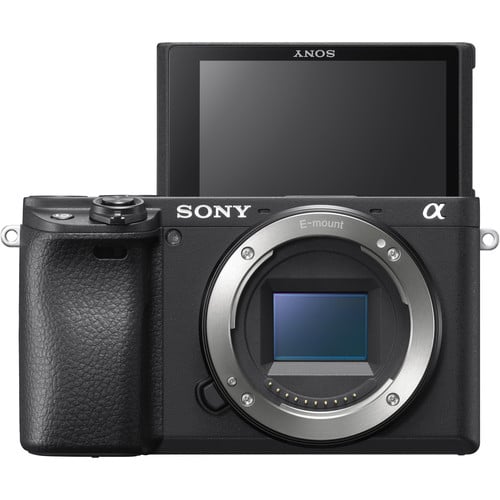
Sony a6400
As I briefly mentioned in the paragraph about the Canon EOS M6 Mark II vs Sony a6400 design above, the Canon doesn’t come with an EVF, which means you have to use your rear screen to frame all of your shots which can be frustrating on a really sunny day. You can opt to buy an external viewfinder for this body, but that might be an added expense you’re unwilling to consider. The Sony a6400 doesn’t have this handling problem.
The Canon does start up faster than the Sony at less than 0.90 seconds, while the Sony takes twice as long at 1.8 seconds. If you’re purchasing either of these cameras for something like sports or wildlife photography, then that fast startup time is going to be essential.
Canon EOS M6 Mark II vs Sony a6400 Video Performance
To help you make your decision about the Canon EOS M6 Mark II vs Sony a6400 video performance, you can view the video test of the Canon by DSI Pictures above.
The Canon EOS M6 Mark II shoots 4K video at 30p and Full HD video at 120p.
You can shoot video with the Dual Pixel AF system, which works really well, but this camera doesn’t come with flat recording profiles.
It’s important to note that it feels like this camera wants you to shoot in 1080p because unless you put your Mode dial in the movie camera position, the 4K video mode is hidden.
If you still need help deciding where you land in the Canon EOS M6 Mark II vs Sony a6400 debate, you can check out the video capabilities of the Sony a6400 in the video test by YCImaging above.
Importantly, the Sony a6400 has a longer video battery life than the Canon, but it can also shoot 24p video.
Canon EOS M6 Mark II vs Sony a6400 Price
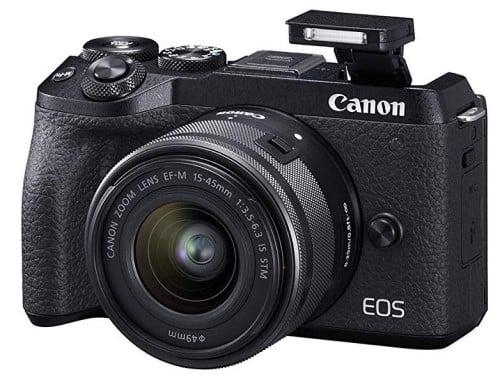
Canon EOS M6 Mark II
I can rarely decide between two similar cameras without seeing the price of them both, and this is no different with the Canon EOS M6 Mark II vs Sony a6400.
When it comes to the Canon EOS M6 Mark II vs Sony a6400 price, The Canon EOS m6 Mark II just barely comes out on top.
In order to compare the two, I went to MPB, which is one of my favorite used camera retailers. There are over a dozen Sony Alpha A6400s available and a handful of Canon EOS M6 Mark IIs available at the time of writing.
The cheapest Canon EOS M6 Mark II is available for $789.It is in “like new” condition, which isn’t odd for a camera that just came out last year. A few of the used Canon EOS M6 Mark IIs available on MPB even come in their original packaging.
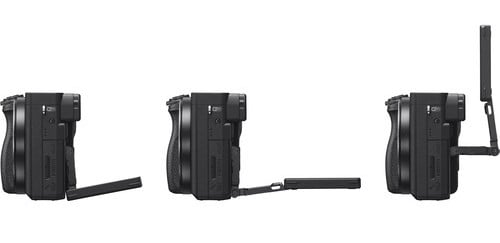
Sony a6400
However, the price difference is definitely not going to be the deciding factor in the Canon EOS M6 Mark II vs Sony a6400 debate because the Sony Alpha A6400 is just a little bit more expensive. The cheapest Sony Alpha A6400 on MPB is $869.
Every single Sony body that is currently on MPB is also in “like new” condition, so they are comparable this way as well.
You can learn more about why I use MPB in the learn more links below.
Learn More:
We Recommend
Check Out These Deals on MPB Camera Gear
I’ve been singing the praises of the MPB used photography gear store for a while now, for some very good reasons.
Primarily, used camera gear and lenses are a fantastic way to save money on good equipment. The MPB camera gear store has a wide selection of quality used gear and gives great service and peace of mind while we save.
With that in mind, here’s a few great deals on MPB camera gear you might consider!
Table of Contents
- Used Equipment is a Good Idea
- MPB Camera Gear is a Great Value
- Used MPB Camera Gear - Canon EOS R
- Used MPB Camera Gear - Nikon Z6
- Used MPB Camera Gear - Sony a7III
- Used MPB Camera Gear - Panasonic DC-S5
Used Equipment is a Good Idea
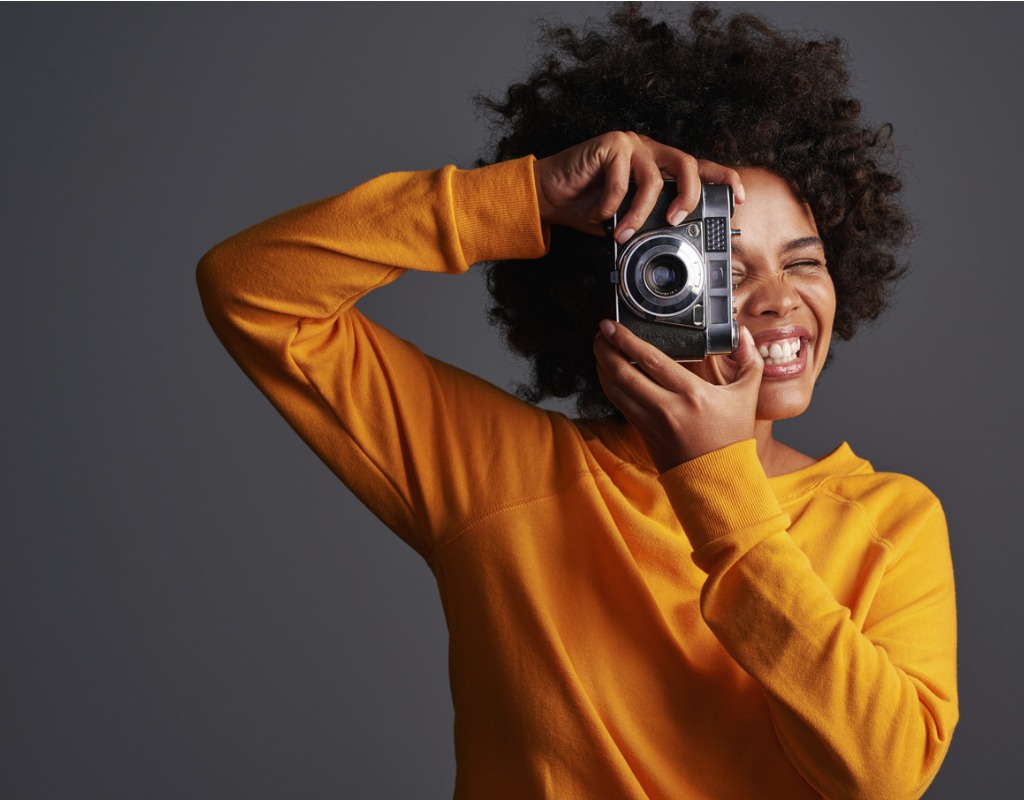
photo byHiraman via iStock
The equipment we use in photography can end up being expensive, whether we’re shooting as pros or a serious hobbyist. It is definitely a significant investment. Looking at the pages of MPB camera gear available right now, you will find items that are either very recent or sometimes current models.
Buying used items such as cameras, lenses, and accessories, we can often save a significant amount of money from what they sell for brand new, even if we shop at deeply discounted stores.
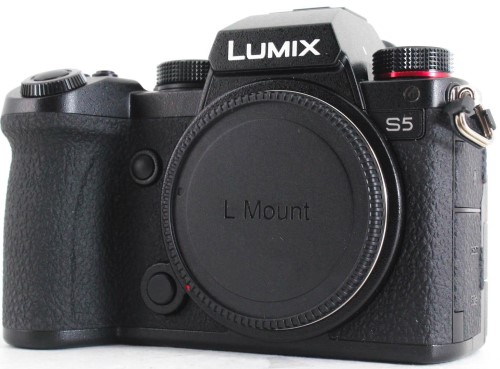
Used MPB camera gear comes from various sources. Sometimes, a photographer buys something that they quickly find out they want something different. Outside of the original store return window, this usually means a piece of equipment will be sold as used without having been used at all or used very little.
There are also store and brand representative demonstration units that can’t be sold as a brand new item, so these end up as used equipment. And then many photographers will trade-in or sell outright some of the gear they have had for a while.
All of these ways that cameras and lenses find themselves onto the used market means that we can find exceptionally favorable pricing on high-quality, good condition used equipment. MPB camera gear is firmly in this category.
MPB Camera Gear is a Great Value
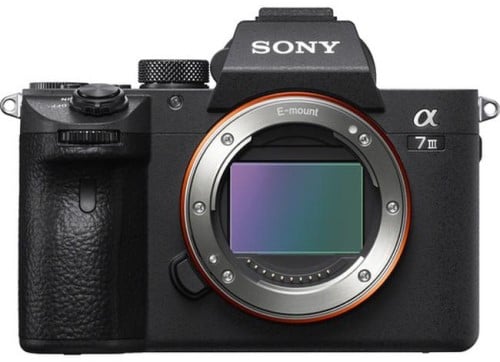
MPB camera gear is a great value in the used equipment market for several reasons. Most of the reasons relate to giving us peace of mind while saving money as we purchase used camera gear.
We definitely don’t want to buy someone else’s problem when we buy used, so how do we make sure that doesn’t happen? Buying from a well-established store that values its customers is a great method.
MPB camera gear is thoroughly checked out before they even take it into their stock. MPB is interested in purchasing your used items, by the way, either as a direct sale or as part of a trade-in. Their website tells you exactly how this process works.
A great service MPB provides us is a 6-month warranty on their used equipment. That means that even if something does happen with a camera or lens we purchase used, we aren’t left out in the cold. Their turnaround time is very quick on this service.
You also get a 7-day return window on MPB camera gear. This helps protect us from making a mistake, such as purchasing a camera or lens that really doesn’t suit our needs.
All MPB camera gear is listed with a clear and easy-to-understand rating system. Items can be anywhere from Like New or excellent all the way to Heavily Used (but still in good working order). Individual pieces of MPB camera gear are posted with a clear description of what categorizes them as any condition other than Like New or Excellent.
Learn More:
Used MPB Camera Gear
So, now let's look at what you could pick up right now as used MPB camera gear. This list is current at time of printing, but availability does fluctuate based on what people are selling or trading in at MPB.
Canon EOS R
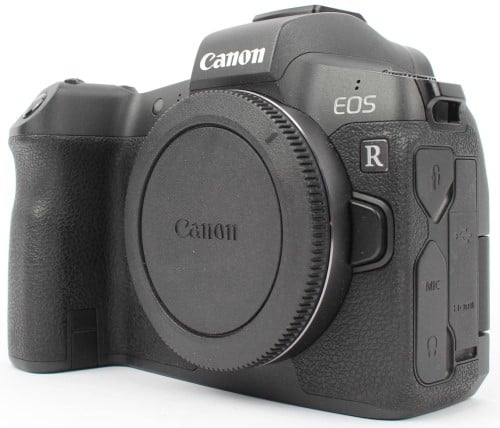
The Canon EOS R is a Full Frame format mirrorless camera with interchangeable lenses and is part of the Canon EOS R mount cameras. It has a 30.3MP sensor, records 4K video, and offers an ISO up to 30,000.
It’s a pretty new camera, but you can find it on MPB in Like New and Excellent condition with prices between $1309.00 and $1379.00 for the body only.
If you need additional MPB camera gear, there are many R lenses available, including some exceptionally fast prime lenses.
Nikon Z6
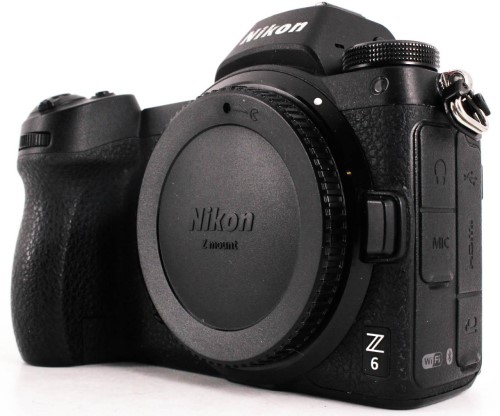
The Nikon Z6 has been replaced by the Z6ii, but it’s still a very recent camera. It has a 24.5MP Full Frame format sensor, ISO up to 51,200, and records 4K video. It is one of the best-performing cameras for low light that I’ve ever seen.
It uses the new Nikon Z lens mount, which also has extremely fast maximum aperture prime lenses. Right now, you can find MPB camera gear examples of this camera in Like New and Excellent condition for $1189.00 and $1129.00 for the body only.
Sony a7 III
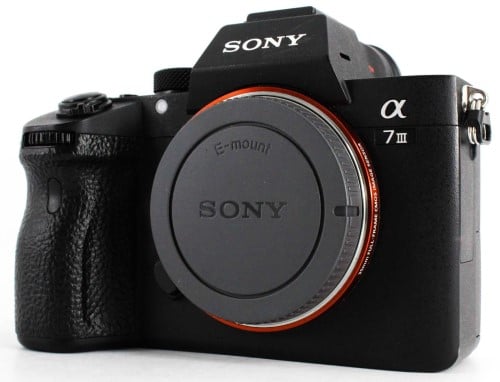
Also a low light champion, the Sony a7 III is a Full Frame format mirrorless camera with a 24.2MP sensor, 4K video, and ultra-fast autofocus with E-mount lenses.
Like New and Excellent condition MPB camera gear examples go for $1579.00 and $1499.00, for the body only. Check out all the Sony lenses in E-mount too.
Panasonic Lumix DC-S5
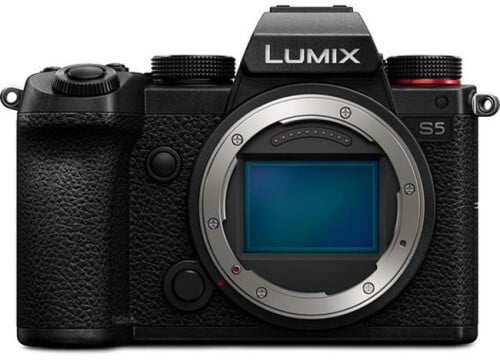
The Panasonic Lumix DC-S5 is an L-mount Full Frame format mirrorless camera with a 24.2MP sensor, 4K video, and the new L lens mount Panasonic shares with Leica and Sigma.
Prices of this camera range from $1499.00 to $1579.00 for the body only for Excellent and Like New examples.
Check out all the MPB camera gear and lenses available in all the brands and formats. There are hundreds of items for sale in conditions from Like New and Excellent to Good and even Heavily Used, so there’s something for every budget!
Learn More:
We Recommend
Check Out These Smokin' Black Friday Photography Deals
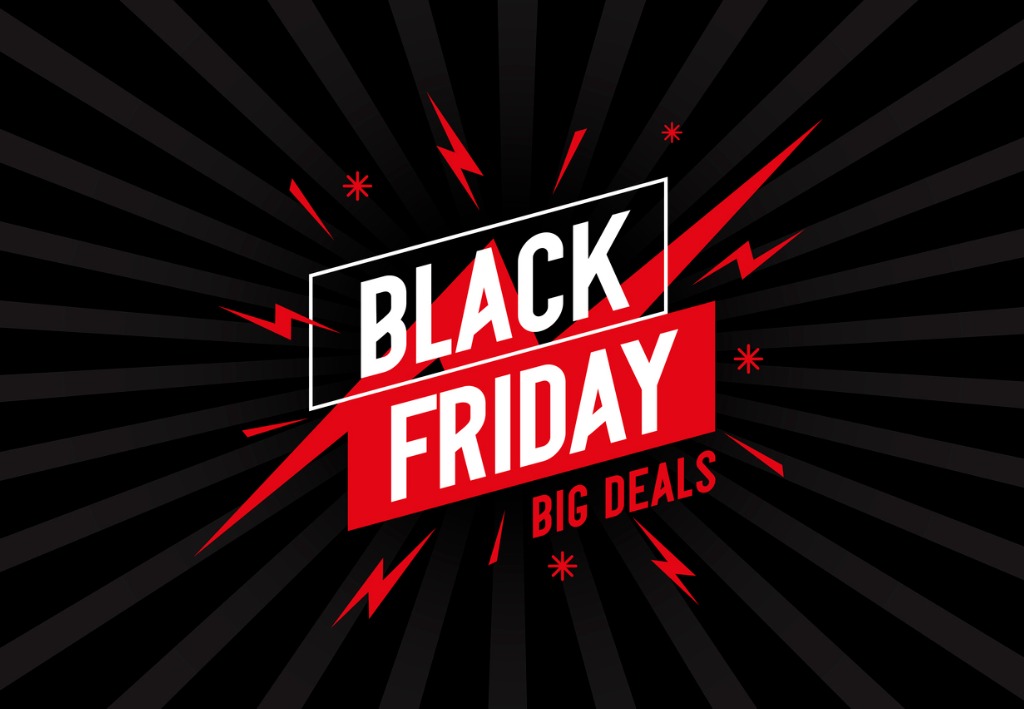
photo byGrafikactiva via iStock
I think we can all agree that 2020 has not been the best of years…
But at least we have what’s looking like an excellent Black Friday for photographers to look forward to.
I’ve put together a quick list of some of the best photography Black Friday deals at the moment. Keep in mind that this is not a comprehensive list and that many retailers have limited stock. In other words, if you see something you like, it’s best to jump on it now rather than later!
Adorama Black Friday Deals
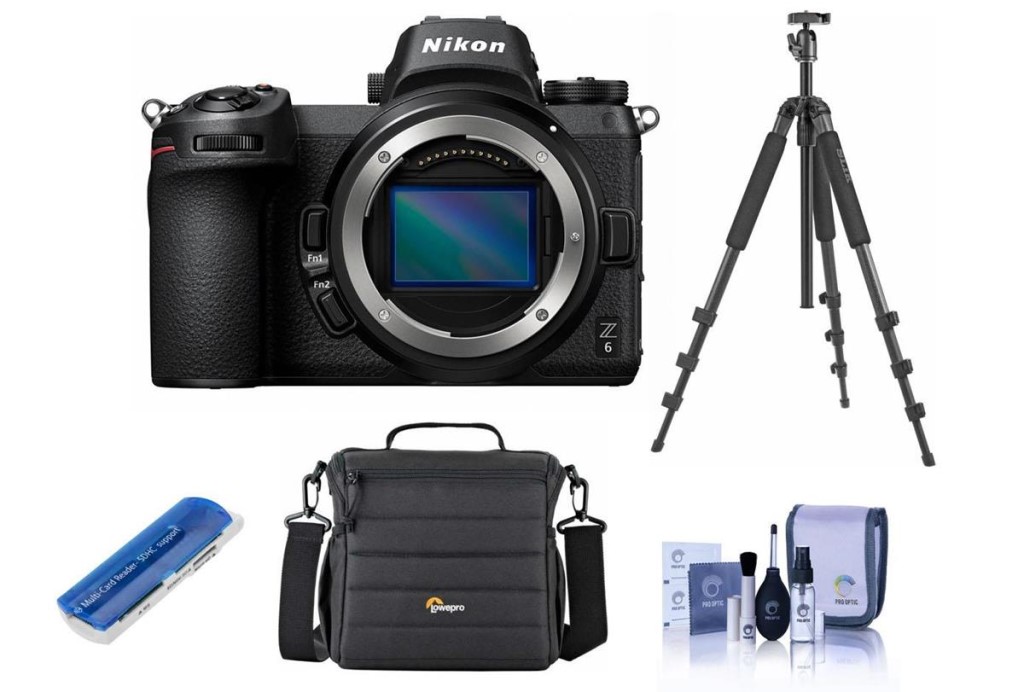
- $600 off Nikon Z6 (this deal, shown above, includes an FTZ lens adapter, a Vanguard Tripod, a Slinger Alpine Shoulder Bag, a ProOPTIC Cleaning Kit, and a Green Extreme USB Memory Stick)
- $500 off Panasonic Lumix G9 (this deal includes a huge accessory bundle, including a Joby GorillaPod 3K kit, a SanDisk 32GB UHS-I memory card, a Peak Design Everyday Sling bag, and more)
- $300 off Sony a7III (this deal includes a Flashpoint Speedlight too)
- $200 off Canon EOS R (this includes a Flashpoint Speedlight)
- $50 off GoPro Hero 9 Black
- $200 off Sigma 35mm f/1.4 DG HSM Art lens for Sony E-Mount
- $500 off Nikon 24-70mm f/2.8E ED-IF AF-S VR NIKKOR Lens (this includes an accessory bundle with a filter kit, a cleaning kit, a lens wrap, and more)
Amazon Black Friday Deals
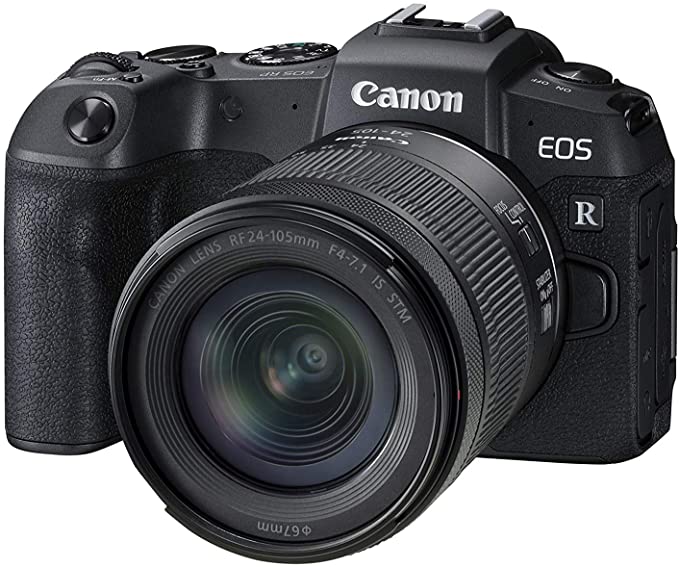
- Up to 34% off Canon cameras and lenses
- Up to 41% off Sony cameras
- Up to 41% off Panasonic Lumix cameras and lenses
- Up to 23% off Nikon cameras and lenses
- Up to 11% off DJI drones
- $60 off ViewSonic VP3881 38-inch UltraWide Curved Monitor
- $70 off ViewSonic VP3481 34-inch Curved Monitor
Nikon Black Friday Deals
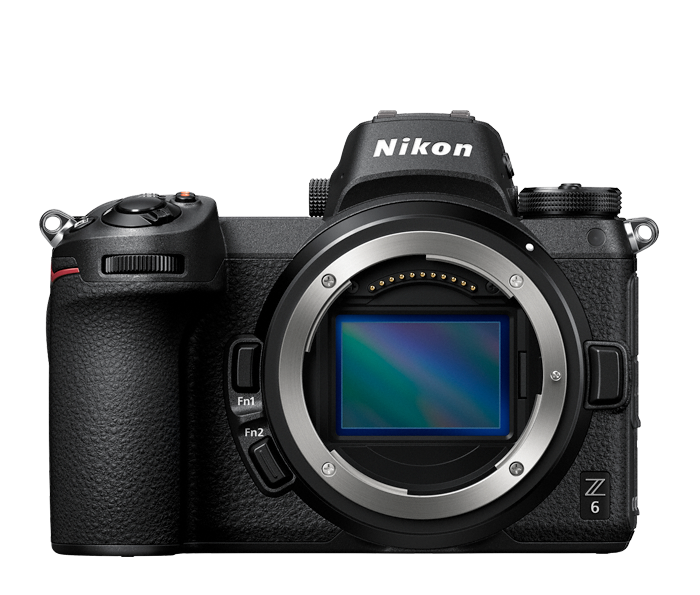
Nikon has a wealth of deals on mirrorless cameras, DSLRs, and lenses for both systems. This includes:
- $250 off Z50 two-lens kit
- $400 off Z6 24-70mm kit
- $400 off Z6 body only
- $300 off Z7 body only
- $150 off Nikkor Z 35mm f/1.8 S
- $200 off Nikkor Z 14-30mm f/4 S
- $300 off D7500 18-140mm kit
- $570 off D500 16-80mm kit
- $400 off AF-S Nikkor 14-24mm f/2.8G ED
- $500 off AF-S Nikkor 24-70mm f/2.8E ED VR
Nikon is also offering their online courses for free through the end of the year.
Holdfast Gear Black Friday Deals
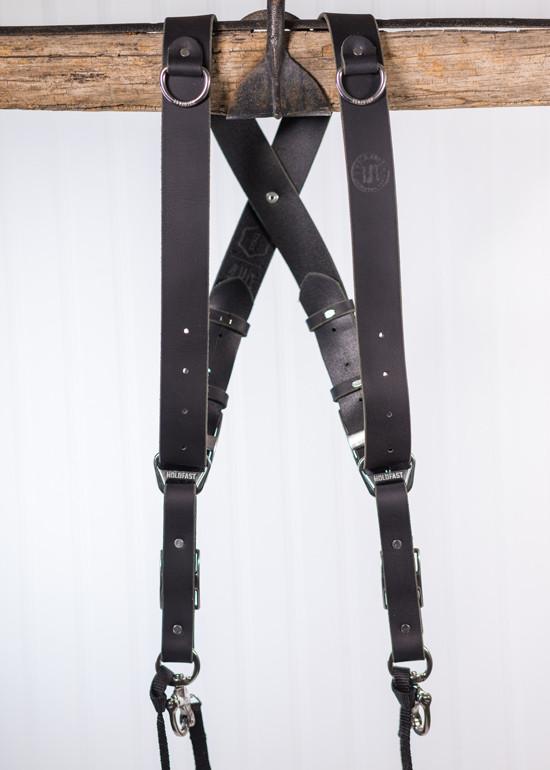
Our friends over at Holdfast Gear are kicking off Black Friday with an Early Bird Sale that gets you 20% off straps and other accessories.
Holdfast makes all sorts of high-end gear, including bags, single and dual camera straps, and a host of leather accessories like shoes, wallets, and pen holders, just to name a few.
To score the 20% discount, simply use the promo code EARLYBIRD2020 when you check out.
This is a short, time-limited discount, so hurry over to Holdfast Gear to do some early Black Friday shopping!
MPB Black Friday Deals

You can get an extra 10% off select camera bodies, lenses, gimbals, and stabilizers at MPB through November 30th. MPB has also partnered with One Tree Planted to plant a tree each time someone buys, sells, or trades gear at MPB.com as an added bonus!
Additionally, U.S. residents can score 10% off these camera bodies:
- Nikon D610
- Canon EOS 70D
- Sony Alpha A5000
- Fujifilm X-T1
The sale on these cameras runs from Black Friday through Cyber Monday. Head over to MPB to check out these deals and much more!
HEX Brand Black Friday Deals
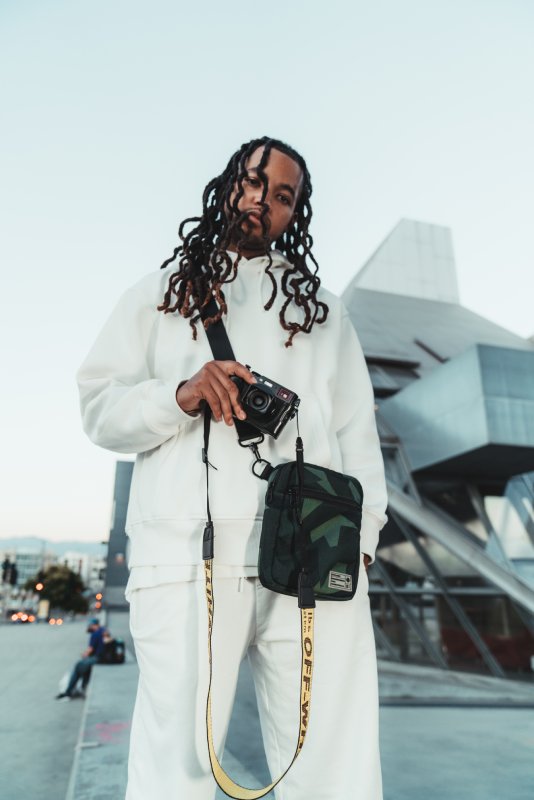
Black Friday through Cyber Monday, HEX Brand is offering 20% off, which includes their brand-new Ranger Crossbody Bag shown above.
Like all HEX Brand gear, this new Crossbody bag represents the ideal mix of style and substance.
The exterior of the bag is crafted of Genuine Cordura® and ballistic nylon. Inside is EVA foam padding to protect your camera and accessories. There's also an adjustable padded divider to keep your gear organized.
But don't think that this is a bulky bag. Quite the opposite. Its small form factor hugs your body as you move so it stays out of your way. In fact, it's just 1.3 pounds yet can hold up to 1.5 liters of gear.
Check it out at HEX Brand and see if it's the right bag for you this holiday season!
Other Photography Black Friday Deals
There are TONS of other awesome Black Friday deals for photographers. Here’s a few:
- Up to 46% off at DJI.com
- Up to 40% off paper prints at Artbeat Studios
- 25% off Adobe Creative Cloud for individual subscriptions through November 27th (which includes more than 20 apps, including Photoshop, Illustrator, Premiere Pro, After Effects, and InDesign)
- 70% off Adobe Creative Cloud for students and teachers through November 27th (the discount makes it just $15.99 per month)
- Up to 20% off on Peak Design gear through December 1st (this includes 20% off on Everyday Bags and 10% off on tripods)
- 20% off site wide on orders over $50 at Printique (use promo code BLACKFRIDAY20 at checkout)
Like I said earlier, some of these deals might disappear, and other killer deals might pop up, so keep your eyes peeled and your credit card ready!
We Recommend
Everything We Know About the Sony a7S III
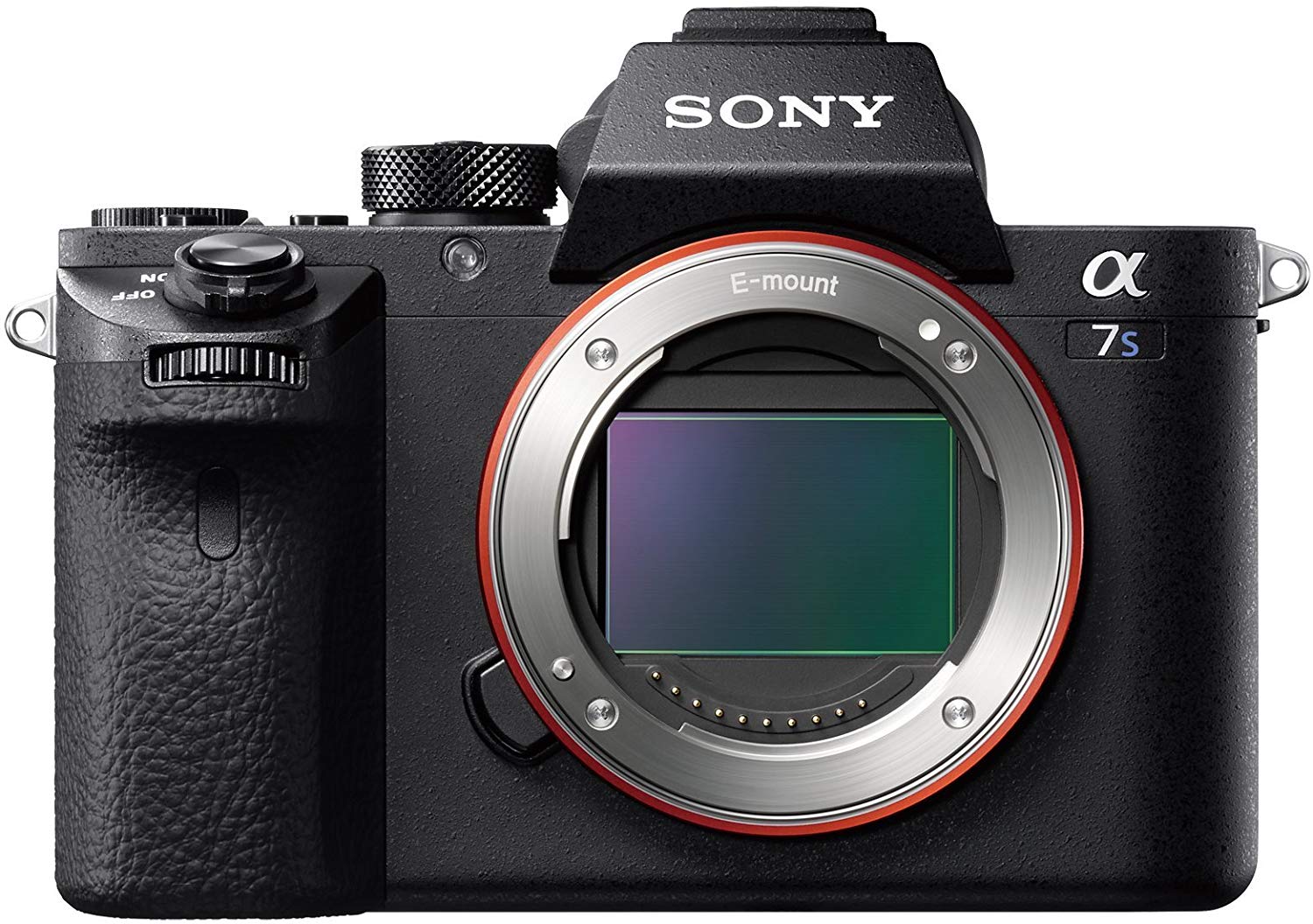
Sony a7S II
The Sony a7S II has dominated the professional mirrorless camera market for the last 3 years and continues to do so. With a spec sheet that still competes with its predecessors, and a relatively low price point at just under $2,000, it’s no wonder excitement is building for the next Sony drop.
And, if you listen to the likes of the Sony rumors market, Sony is finally getting ready to announce the a7S III.
Here’s what we know so far about all of the Sony a7S III rumors...
Originally, people speculated the Sony a7S III would be announced in August or September, and since it’s the end of September it seems more and more unlikely that we could see this camera by the end of the year.
However, with the rumored Sony a7S III features, I’m willing to wait.
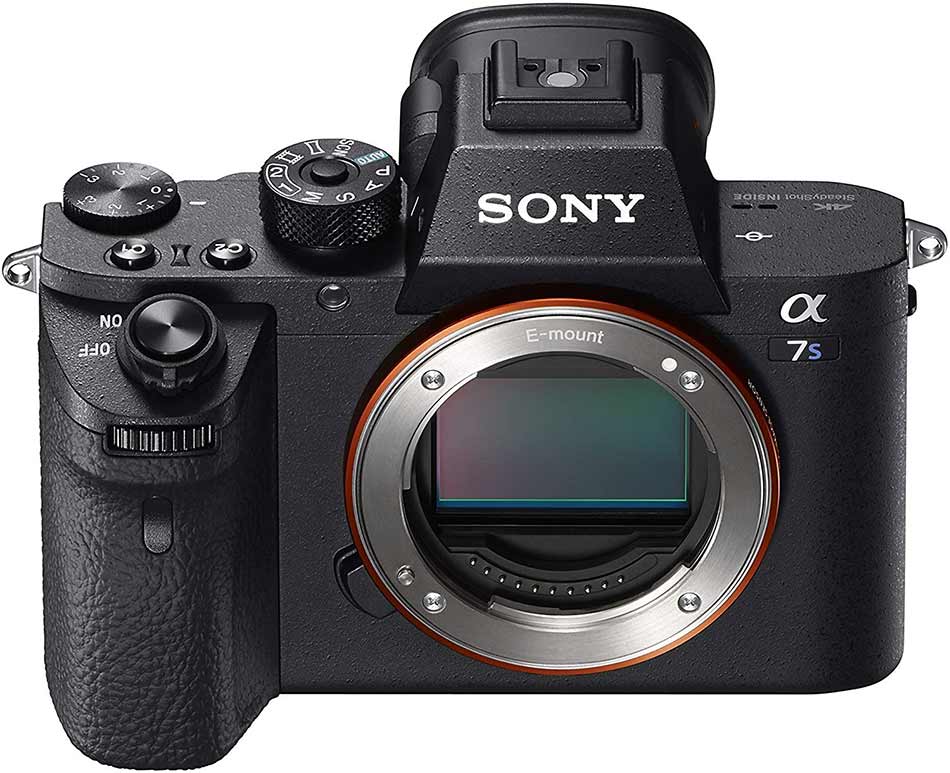
Sony a7S II
Though there isn’t a ton of information about the Sony a7S III specs, they may look something like this:
- 4K video at 120p
- 10-bit recording
- 5.8GHz WiFi
- 12.2-megapixel sensor
Those of you familiar with the a7S II know that it has a 12.2-megapixel sensor, so if the rumors are true, the a7S III will retain the same sensor. I, for one, will be surprised if this is the case, though.
While the upgrade in video capabilities and bit-rate are of course rumors, it’s almost a fact that this camera is being designed for videographers. How about that 4K/120p, eh? That will be something else if it indeed comes to fruition.
If you, like me, cannot wait for the Sony a7S III to drop, then why not pick up the a7S II in the meantime?
Use MPB to find cheap deals on the a7S II, and other similar mirrorless Sony products. You may just save enough money on the used camera to pick up another lens for your stash!
Stay tuned for more updates on the Sony a7S III.
We Recommend
Four Reasons Why a Used Sony A7s III is a Great Idea in 2022
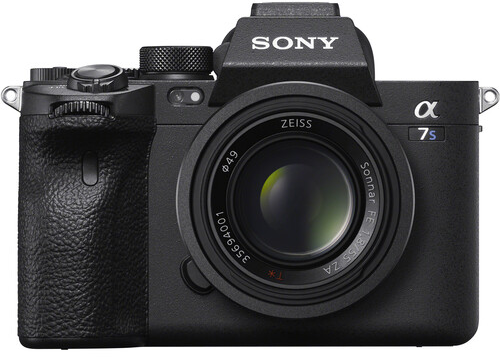
Photographers wondering whether buying a used Sony A7s III is still a good idea in 2022 can read this short answer: Yes!
The A7s III was a fantastic camera when it came out in 2020, and it’s still a fantastic camera today. Two years on, this camera has aged well, and there are excellent deals to be had on pre-owned camera bodies on platforms like MPB.
This guide explores the specs and features of this camera for still imaging, video, and much more. Let’s get started!
Table of Contents:
- Sony A7s III Specs
- Low Light Powerhouse
- Video Superstar
- Sony Mirrorless Full Frame Legacy
- Used Sony A7s III Features Still Astound
- Compact Yet Fully Professional
- Where to Find a Used Sony A7s III
Sony A7s III Specs
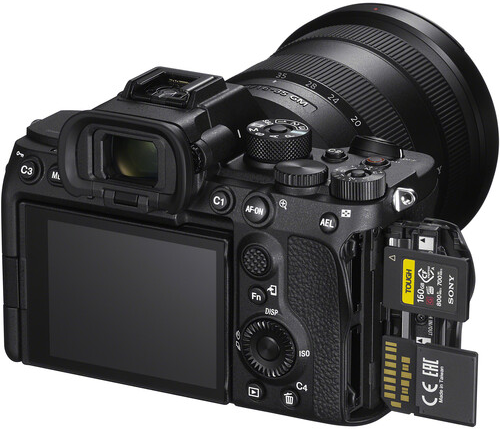
As you’re holding a used Sony A7s III in your hands, you can’t help but notice that it feels solid and reliable even though it is significantly compact compared to a professional-level DSLR of similar vintage.
What date was this “vintage” used Sony A7s III released? Relatively recently, July of 2020. It replaced the Sony A7s II of 2015 and A7s of 2014. It’s a current camera, though, Sony’s own website has had it listed as “out of stock” for a while, making me wonder if a Sony A7s IV or an A9s might be coming soon.
Here is an overview of some of the Sony A7s III specs:
- 12MP Full Frame sensor
- ISO 80-102400 (expands to 40-409600)
- Sony FE lens mount
- Fully articulated rear viewscreen
- High-resolution eye-level electronic viewfinder
- 759 AF points
- Shutter speeds 30 sec - 1/8000th
- 5-axis IBIS
- Flash sync 1/250th extendable to 1/400th and 1/500th
- Dual card slots (SD and CFE Type A)
- Weather sealed
- 4K video in Full Frame up to 60p, cropped 4K up to 120p, 1080 up to 240p
- Full-size HDMI port
- Long GOP and All-Intra compression
- S-Log2/3 and HLG support
- 10-bit in-camera video
- 16 bit video output
- 600 shot battery life (up to 1 hr video)
- Weight: 699 g / 1.54 lb / 24.66 oz
- Size: 129 x 97 x 81 mm / 5.08 x 3.82 x 3.19″
Low Light Powerhouse
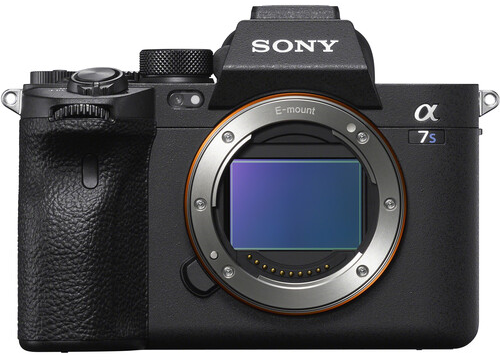
At first glance, some photographers may see a 12MP sensor as a limitation. However, there’s a reason Sony made this camera this way. The “S” in the model number stands for sensitivity.
While 12MP is perfectly fine for good resolution, remember 8MP beat Kodachrome way back in the early 2000s, so the pixel size of a 12MP Full Frame sensor is gigantic. Thus, the light-gathering ability of this sensor is truly outstanding.
It’s not simply that the camera can boost the ISO to 409,600, but also that those images actually look good! In real-world use, this means you can shoot in so many lighting conditions that your head will spin trying to contemplate them all.
Don’t just take my word for it, though. Watch the video below from MPB to see a low light video performance test of the A7s III.
Combined with the 5.5 stop 5-axis in-body image stabilization (IBIS), a used Sony A7s III is one of the best options ever made for shooting in low light or mixed light. Wedding photographers love it, as do other event photographers, real estate photographers, and any photographer who wants or needs superb low-light performance.
Learn More:
Video Superstar
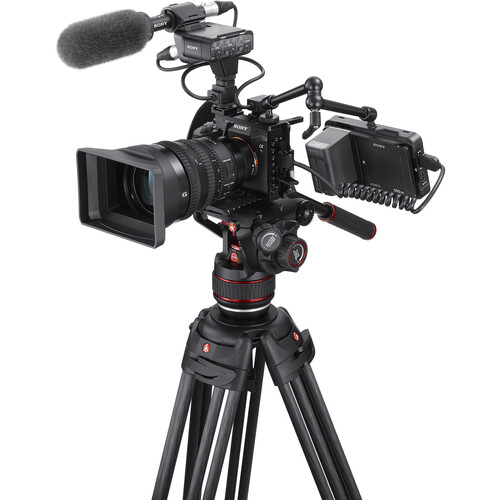
Serious videographers and other cinematographers who want a small camera with excellent video have fallen in love with the Sony A7s III’s specs and features. This is a serious video machine! The only way to get more video options is to select a cinema camera.
One of the amazing Sony A7s III features for video is that it outputs a video feed in 16-bit for recording on a separate machine. This means your video footage from a used Sony A7s III can blend in seamlessly with video from a wide variety of cinema-style video cameras.
The small size and weight of your used Sony A7s III mean that you can mount it in a camera cage and use any number of important video accessories in your recording sessions. External mics, a follow focus system, an external monitor, and many other items can be easily attached.
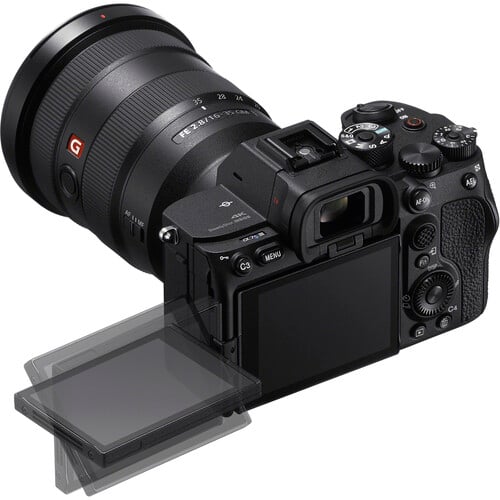
The Sony A7s III features relating to video include:
- 4K video in Full Frame up to 60p, cropped 4K up to 120p, 1080 up to 240p
- Full-size HDMI port
- Long GOP and All-Intra compression
- S-Log2/3 and HLG support
- 10-bit in-camera video
- 16-bit video output
All of these specs serve to make your video quality better and simplify your workflow for creating superior video footage. A used Sony A7s III camera is truly an awesome videography tool that can double as a fine still imaging camera.
Sony Mirrorless Full Frame Legacy
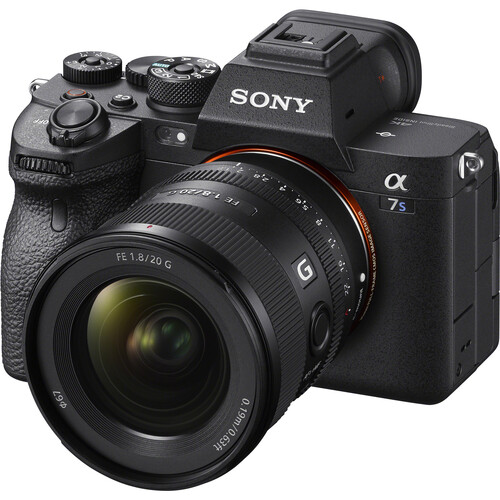
When Sony fully took over the A-mount cameras from Minolta, I wondered if that meant the end of that legacy of fine photographic equipment. Well, Sony took off running faster and flying higher than I could ever have imagined with regard to high-end digital imaging.
Taking everything Sony knew about digital technology and their already class-leading video gear, then adding in the lens-making excellence and photography innovation from Minolta (such as TTL OTF metering, originally a Minolta innovation), meant the Sony imaging departments were able to develop an outstanding pro series of mirrorless Full Frame digital cameras which pretty much set the standard for everything similar to come.
A glance through the current lineup of various still and video imaging products from Sony shows that the purchase of a used Sony A7s III camera would be a smart choice, especially for users combining photography and video expertise.
Used Sony A7s III Features Still Astound
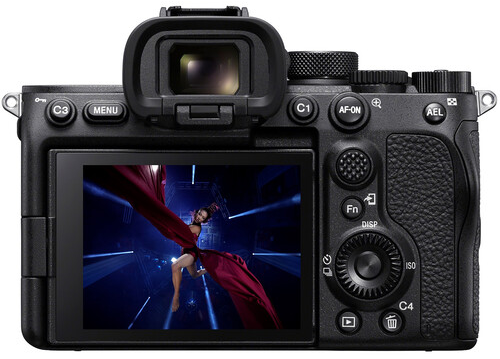
Sony’s IBIS, lens quality, partnerships with other leaders in photo optics such as Zeiss and Leica, and commitment to innovation and excellence result in features and quality of manufacturing that are hard to equal, much less beat.
For low-light performance and high-quality video, a used Sony A7s III will run rings around much of the competition. There are many well-respected brands in photography such as Nikon, Leica, and Canon, and others. Sony is right up there with them.
Compact, Yet Fully Professional
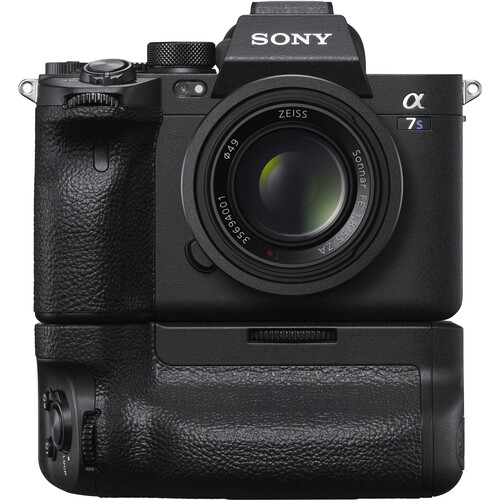
If anyone is a student of camera history or perhaps lived through the 1970s and 80s as a photographer, you might recall how the Olympus OM-1 and OM-2 took the photo world by storm. They were professional-level cameras equal to a Nikon F2, Canon F-1, or Leicaflex SL, but in a much smaller size.
A similar feeling happened with the Full Frame mirrorless Sony camera introductions of 2013 and beyond. Sony Alpha mirrorless Full Frame format cameras are among the smallest and lightest cameras around, yet they are fully professional and super rugged.
Where to Find a Used Sony A7s III
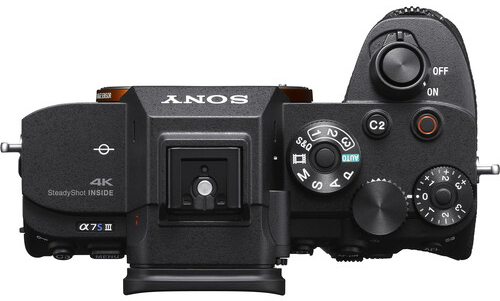
Now that you absolutely have to have one, the question now is where to purchase your own used Sony A7s III camera system. Of course, you know I’m going to say MPB!
Buying pre-owned photography gear and lenses is a smart move for several reasons, one of which is saving money. Additionally, you want stuff that works from a seller you can trust, which is my number one reason for using MPB as much as I do.
While you’re there, check out their listings of Sony FE lenses and other accessories. MPB even has a 6-month warranty and 7-day return window on most items they sell. Their accurate condition rating descriptions also provide an easy buying experience.
A used Sony A7s III camera body and any Sony FE mount lens is a great idea in 2022 and will continue to be one for some time to come. An investment in pre-owned gear now will pay dividends in the future as well!
Learn More:
- New vs Used Camera Gear: Which Should You Buy?
- Sony E vs FE Lenses
- Three Sony FE Lenses You Need in your Bag
We Recommend
Four Used Canon RF Lenses to Consider
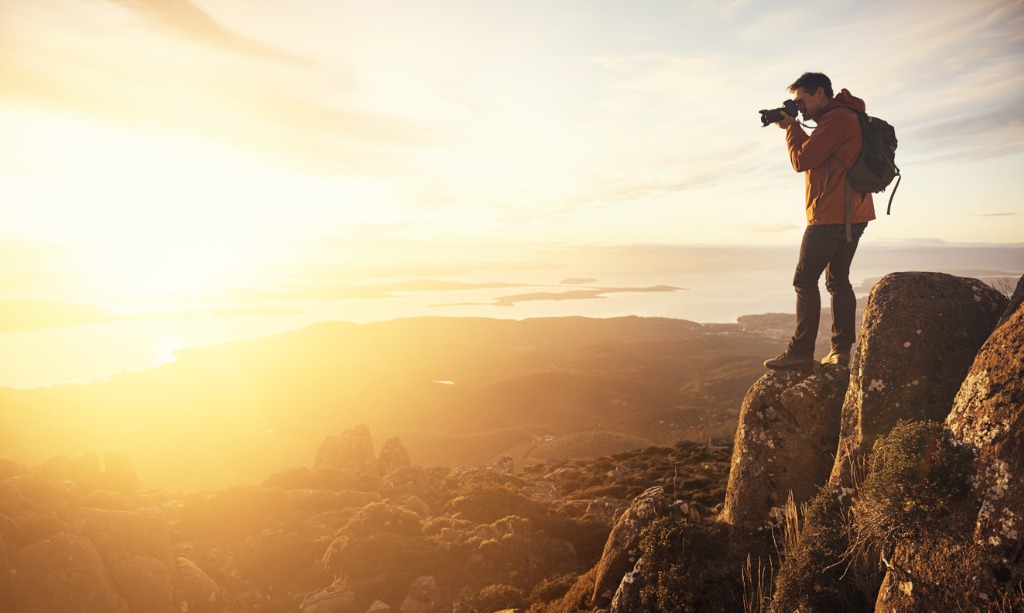
Photo by pixdeluxe via iStock
If you own a Canon RF mirrorless camera, like the Canon EOS R5, Canon EOS R, or Canon EOS RP, and aren’t sure what Canon camera lenses to pair with it, you’ve come to the right place!
In this article, I share four of my favorite used Canon RF lenses every photographer should consider adding to their camera kit. All four Canon lenses are designed for different purposes and will add a unique element to your photography. Together, they cover a huge focal range and will help you capture the perfect shot regardless of the situation.
One fantastic resource with endless used Canon RF lenses in stock and a place I have bought and sold countless camera gear is MPB. They are a trustworthy and reliable online platform that sells used photo and video kit at unbeatable prices.
Additionally, all of their lenses are meticulously hand-inspected by experienced product specialists and backed by warranties, allowing you to make your purchases confidently and worry-free.
On top of that, you can also trade-in or sell your old gear to MPB and use the proceeds towards top-notch new-to-you-gear. Overall, it’s a fabulous place for outfitting yourself with all the photo and video equipment you want and need! Now, let’s dive in and learn which used Canon RF lenses will help take your photography to the next level!
Table of Contents
- Used Canon RF Lenses: The Best Standard Zoom Lens
- Used Canon RF Lenses: The Best Wide Angle Lens
- Used Canon RF Lenses: The Best Telephoto Lens
- Used Canon RF Lenses: The Best Prime Lens
- More Great Used Canon RF Lenses
Used Canon RF Lenses: The Best Standard Zoom Lens
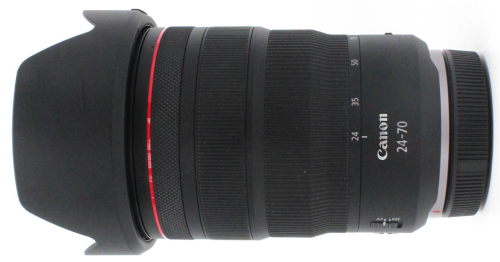
If you could only own one lens, my top recommendation would be the Canon RF 24-70mm f/2.8 L IS USM. It’s a versatile do-it-all zoom lens great for photography and videography alike. Moreover, its compact size makes it a terrific lens for everyday use.
Thanks to its portable size and versatile focal range, travel photographers, in particular, love this lens. It’s an absolute workhorse that can always remain on the camera and deliver striking results in almost any situation. With this lens, you can capture dramatic landscapes, beautiful portraits, and everything in-between!
Lastly, its constant f/2.8 maximum aperture creates a stunning shallow depth of field effect. This effect blurs the background or foreground of your images and is an excellent way to make your photos stand out. Shallow depth of field photography is particularly effective in portrait and street photography.
Here’s an in-depth look at the key features and specs of one of the top used Canon RF lenses available today:
- Lens Type: Standard Zoom
- Camera System: Full-Frame
- Lens Mount: Canon RF Lens Mount
- Focal Length: 24-70 mm
- Maximum Aperture: f/2.8
- Minimum Focusing Distance: 21 cm
- Filter Size: 82 mm
- Focusing system: Autofocus & Manual Focus
- Maximum Magnification: 0.3x
- Size/Weight: 8 8.5 x 125.7 mm / 900 grams
- Optical Image Stabilization: Yes
- Weather-Sealed: Yes
Used Canon RF Lenses: The Best Wide Angle Lens
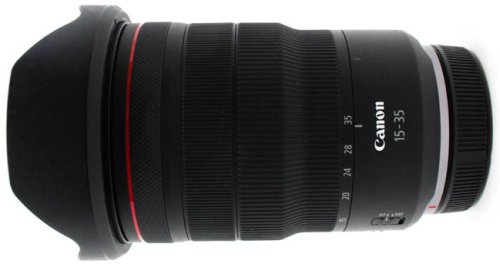
For outdoor lovers and landscape photographers, one of the must-own used Canon RF lenses is the Canon RF 15-35mm f/2.8 L IS USM. It’s a wide-angle lens capable of generating epic, drool-worthy landscapes.
Also, it’s an excellent lens for documentary filmmakers and YouTubers. For filmmakers, its wide focal length is ideal for opening shots and when you want to incorporate the environment into your scene. Alternatively, YouTubers adore that it easily fits their entire face and background into the frame, even when shooting from only an arm's length away.
Two more killer features of this lens are its optical image stabilization and constant f/2.8 maximum aperture. The stabilization helps eliminate camera shake and improves low-light image quality. The high max aperture further enhances low light performance and is particularly useful when shooting during sunrise and sunset.
Here’s an in-depth look at the key features and specs of one of the top used Canon RF lenses available today:
- Lens Type: Wide Angle
- Camera System: Full-Frame
- Lens Mount: Canon RF Mount
- Focal Length: 15-35 mm
- Maximum Aperture: f/2.8
- Minimum Focusing Distance: 28 cm
- Filter Size: 82 mm
- Focusing system: Autofocus & Manual Focus
- Maximum Magnification: 0.21x
- Size/Weight: 88.5 x 126.8 mm / 840 grams
- Optical Image Stabilization: Yes
- Weather-Sealed: Yes
Learn More:
Used Canon RF Lenses: The Best Telephoto Lens
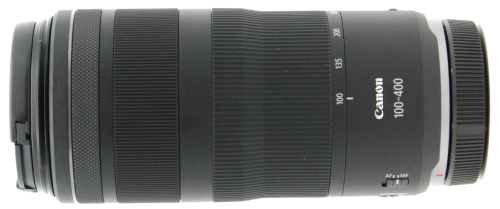
Next, we have the Canon RF 100-400mm f/5.6-8 IS USM. It’s a powerful telephoto lens with unmatched zoom capabilities and superb image quality packed into one lightweight body. It’s a phenomenal option for wildlife, travel, and sports photography.
Whether you are trying to photograph a rare bird in the heart of the Amazon or a lion on the African savannah, this lens gets the job done. Its 4x zoom takes you to super-telephoto levels and allows you to crop in tight on animals even when they are barely visible with the naked eye.
Capturing fine detail of buildings is another strength of this lens. Have you always wanted to photograph the exquisite hand-carved architecture of a church but didn’t quite have the reach? Well, with this lens, that will never be a problem again!
Here’s an in-depth look at the key features and specs of one of the top used Canon RF lenses available today:
- Lens Type: Telephoto Zoom
- Camera System: Full-Frame
- Lens Mount: Canon RF Mount
- Focal Length: 100-400 mm
- Maximum Aperture: f/5.6
- Minimum Focusing Distance: 88 cm
- Filter Size: 67 mm
- Focusing system: Autofocus & Manual Focus
- Maximum Magnification: 0.41x
- Size/Weight: 79.5 x 164.7 mm / 635 grams
- Optical Image Stabilization: Yes
- Weather-Sealed: Yes
Used Canon RF Lenses: The Best Prime Lens
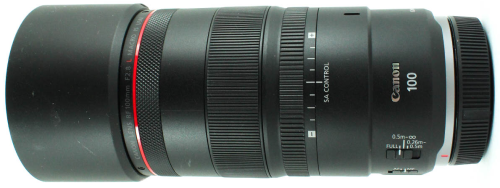
And last but not least, we have the Canon RF 100mm f/2.8 L Macro IS USM. It’s a one-of-a-kind macro lens with an incredible maximum magnification ratio of 1.4x. With this lens, subjects actually look larger than life! It’s an excellent option for insect, product, and food photography.
The fixed 100mm focal length is a terrific starting point for macro photography, but the lens's 26 cm minimum focusing distance is what truly makes it stand out from other lenses. The amount of detail captured from small subjects like coins, jewelry, and bugs is breathtaking, and some of the most impressive macro images I have ever seen were shot with this lens.
While it was primarily designed for macro photography, you will be thrilled to hear that it’s no one-trick pony. Courtesy of its f/2.8 aperture, it also excels at capturing portraits. The buttery bokeh effect created by the high aperture is spectacular and helps draw all the focus to your subject.
Here’s an in-depth look at the key features and specs of one of the top used Canon RF lenses available today:
- Lens Type: Macro Prime
- Camera System: Full-Frame
- Lens Mount: Canon RF Mount
- Focal Length: 100 mm
- Maximum Aperture: f/2.8
- Minimum Focusing Distance: 26 cm
- Filter Size: 67 mm
- Focusing system: Autofocus & Manual Focus
- Maximum Magnification: 1.4x
- Size/Weight: 81.5 x 148 mm / 730 grams
- Optical Image Stabilization: Yes
- Weather-Sealed: Yes
More Great Used Canon RF Lenses
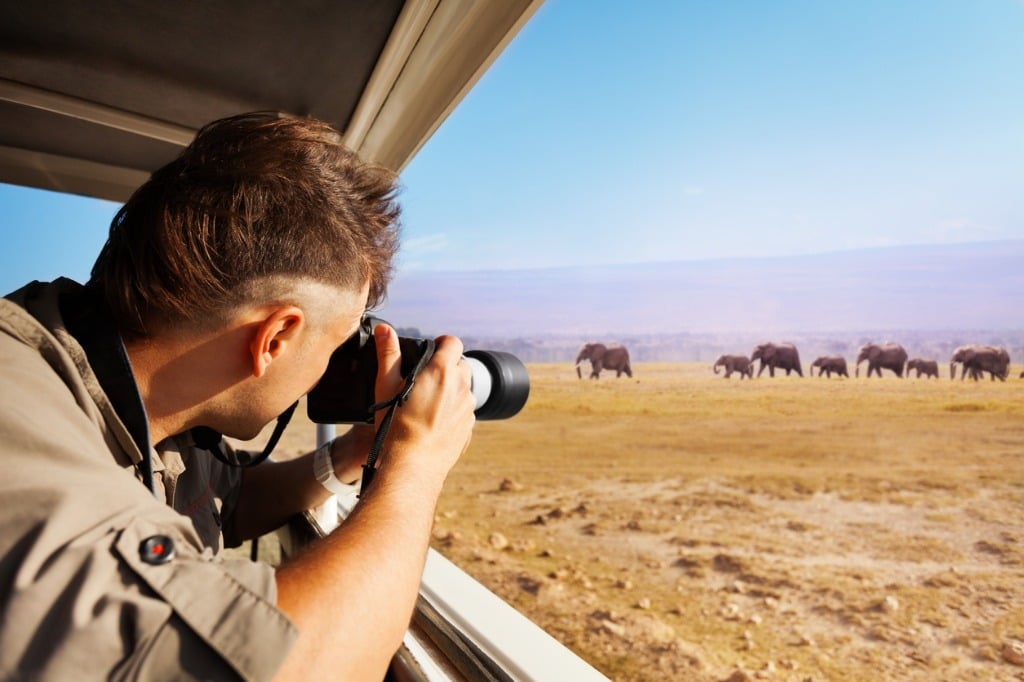
Photo by SerrNovik via iStock
While those are my favorite used Canon RF lenses out there, they are certainly not the only ones. If you want to continue browsing, check out a few more of my favorite lenses currently in stock at MPB:
- Canon RF 85mm f/1.2 L USM
- Canon RF 50mm f/1.2 L USM
- Canon RF 70-200mm f/4 L IS USM
- Canon RF 24-105mm F/4 L IS USM
- Canon RF 800mm f/11 IS STM
Learn More:
We Recommend
Get Ready for Summertime Travel Photography With This Crucial Gear
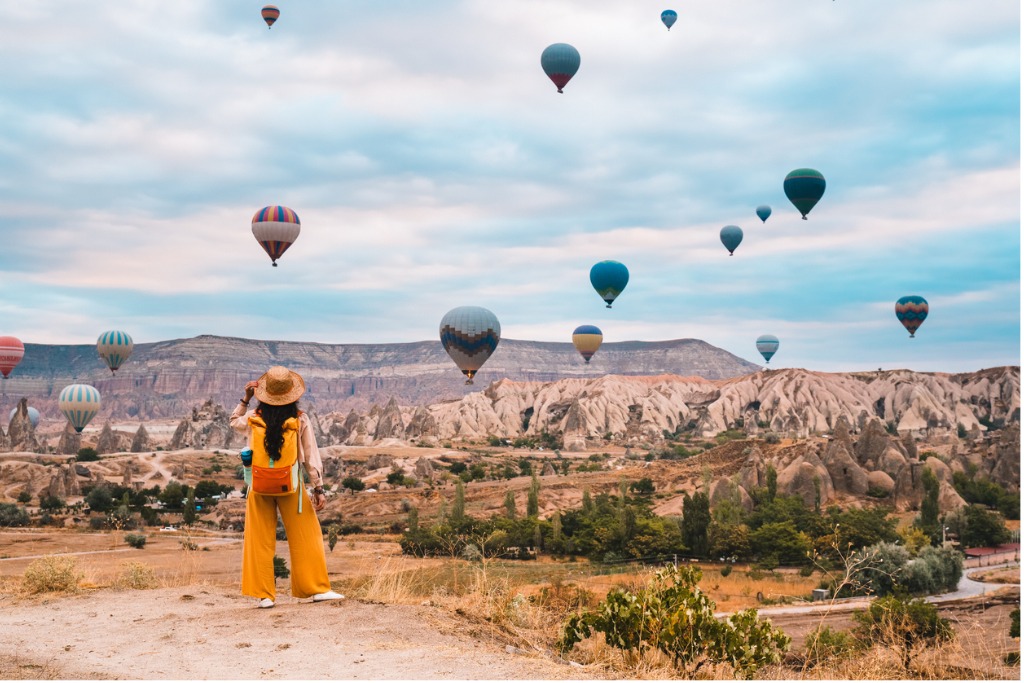
Photo by wildart via iStock
With summer right around the corner, it’s that time of year when people start getting antsy for their upcoming summertime travels. For photographers especially, summertime offers endless opportunities to capture stunning images in new and exciting locations.
With that said, to make the most of your summer travel photography adventures, having the right gear is crucial. And in this article, we'll delve into some of the essential gear you should invest in if you hope to improve the quality of your travel photography content.
We'll share the importance of owning the right travel photography gear, such as a good camera and lens combo, a lightweight and versatile tripod, a durable and comfortable photography backpack, rain gear, and more! That way, you can ensure you're prepared and well-equipped to capture breathtaking images this summer.
Whether you're planning to explore vibrant cityscapes, relax on sun-drenched beaches, or embark on thrilling outdoor adventures, every piece of gear covered in this gear will help you get the job done. Now, without further ado, let’s dive in and discover the must-own summertime travel photography gear all photographers should have in their kit!
Table of Contents
- Get a Rock-Solid Camera & Lens Combination for Travel Photography
- Ditch the Big Tripod for a Handy Tripod Alternative
- Give Yourself Shelter From Summer Storms
- Invest in a Do-Anything Backpack for Travel Photography
- More Travel Photography Gear for Summer
- Wrap It All Up in a Beautiful Print
Get a Rock-Solid Camera & Lens Combination for Travel Photography
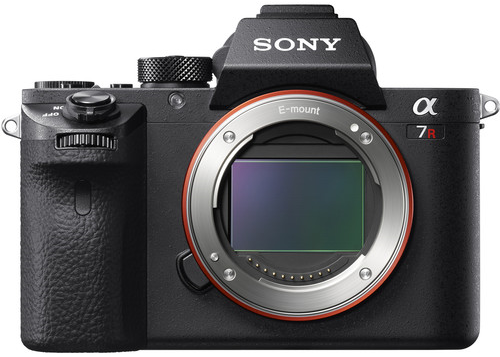
The first thing you need for travel photography is a rock-solid camera and lens combination. Thanks to their portable and compact sizes, the two best options for travel photography are mirrorless cameras and point-and-shoot cameras. However, mirrorless cameras are our top recommendation because of their ingenious interchangeable lens system.
With that in mind, a great mirrorless body for travel photography is the Sony Alpha A7R II. It features a high-resolution 42.4-megapixel full-frame sensor and a Bionz X image processing engine. The pair delivers unbelievably sharp images and helps make the autofocus fast, accurate, and responsive.
Other notable features of the A7R II include 4K video capabilities, in-body image stabilization (IBIS), and built-in Wi-Fi. 4K video is ideal for hybrid photographers/videographers. IBIS boosts both photo and video quality. And the Wi-Fi lets you instantly transfer files to your mobile devices. Now, here’s an in-depth look at the key features and specs of the Sony Alpha a7R II:
- Camera Type: Mirrorless
- Sensor: 42.4MP Full-Frame BSI-CMOS Sensor
- ISO: 100 - 25,600 (expandable to 50 - 102,400)
- Lens Mount: Sony E Mount
- Speed: 5.0 fps
- Autofocus: 399 focus points
- Video: 4K/30p & 1080p/60p
- Size/Weight: 127 x 96 x 60 mm / 625 grams
- Battery Life: 290 shots
- Stabilization: Yes
- Touchscreen: Yes
- Pre-Owned Sony A7R II Price: $804 - $944
Once you have the A7R II body, our favorite lens for traveling is the Sony FE 16-35mm f/2.8 GM. Its versatile focal range can capture everything from dramatic landscapes to beautiful portraits and street photography.
On top of that, its constant f/2.8 max aperture will enhance your camera's low-light performance and create gorgeous bokeh effects. A weatherproof coating also makes the lens more durable and will help protect the lens when you are on the road. Here’s a closer look at the Sony FE 16-35mm f/2.8 GM specs:
- Lens Type: Wide-Angle Zoom Lens
- Camera System: Full-Frame
- Lens Mount: Sony E Mount
- Focal Length: 16-35 mm
- Maximum Aperture: f/2.8
- Minimum Aperture: f/22
- Minimum Focusing Distance: 28 cm
- Filter Size: 82 mm
- Focusing system: Autofocus & Manual Focus
- Maximum Magnification: 0.19x
- Size/Weight: 89 x 122 mm / 680 grams
- Optical Image Stabilization: No
- Used Lens Price: $1,389 - $1,549
Check out the video above by aows to learn why the Sony Alpha a7R II is still a great camera for travel photography in 2023.
Ditch the Big Tripod for a Handy Tripod Alternative
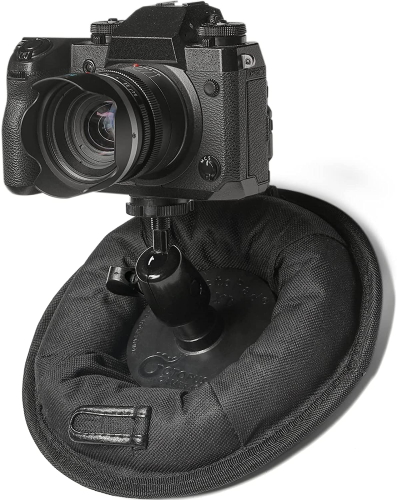
Another crucial piece of travel photography gear is a lightweight tripod, and one of the best of the bunch is the one-of-a-kind OctoPad. Its innovative and patented design allows it to stand stably anywhere, even on sloped, slippery, and uneven surfaces. Moreover, it’s compatible with cameras, phones, GoPros, and other travel photography equipment.
And with a small footprint and weighing less than two pounds, it takes up almost no space in a checked bag or carry-on. We also love how quick and simple it is to set up, making snapping spontaneous selfies or recording epic time-lapses super easy.
For more information about this nifty little travel tripod, check out our OctoPod Hands-On Review.
Learn More:
- What is Shutter Count? (and Other Important Used Camera Questions)
- 6 Reasons to Get a GoPro Hero 11 Black
Give Yourself Shelter From Summer Storms
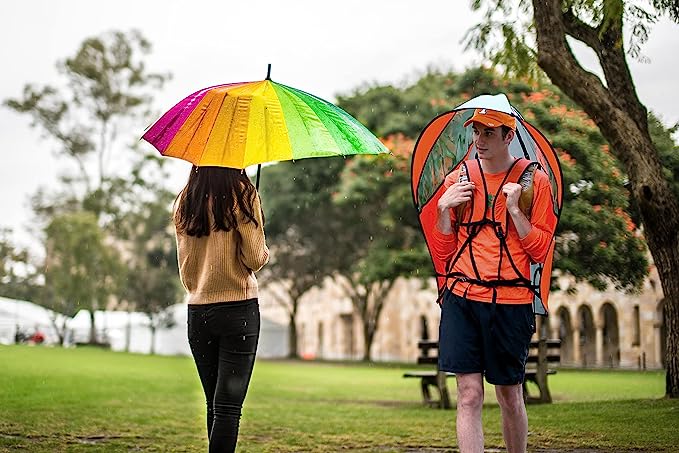
You must be prepared for bad weather when traveling, even during the sunny summer months. That’s because photography equipment and other electronics are expensive, and the last thing you want is for your gear to be damaged or destroyed when some rain rolls in.
While rain jackets and standard umbrellas will do the job in most situations, we prefer traveling with the hands-free umbrella by GoShelter whenever we have our cameras. It will keep you and your camera dry during rainstorms, and its hands-free design even allows you to keep shooting while it’s raining.
Furthermore, its adjustable and spacious make-up means you can wear it even if you already have on a backpack. To learn more about this fun and unique product, read our full GoShelter Review.
Invest in a Do-Anything Backpack for Travel Photography
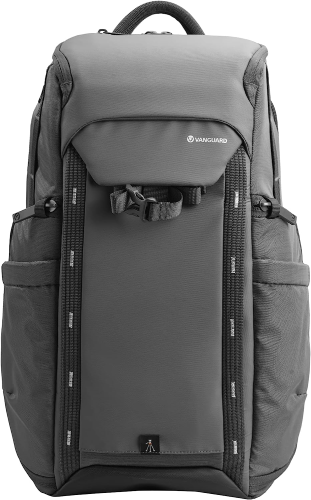
Last but not least, investing in a good quality travel photography backpack is essential. And while a quick Google or Amazon search will yield hundreds of results, not all camera backpacks are created equally.
We have tested tons of different bags throughout the years, and the one company that continually impresses us with its products is Vanguard. Having said that, due to its comfortable design and carry-on-friendly size, we particularly like the Vanguard VEO Adaptor R48GY for travel photography.
The main compartment is 100% customizable and can safely store a camera body and up to eight lenses. Additionally, it boasts a protective laptop sleeve, multiple pockets for holding/organizing small gear, and an ergonomic harness system that helps evenly distribute weight across your back, shoulders, and hips.
For more information and photos about this backpack, watch my full video review above!
More Travel Photography Gear for Summer
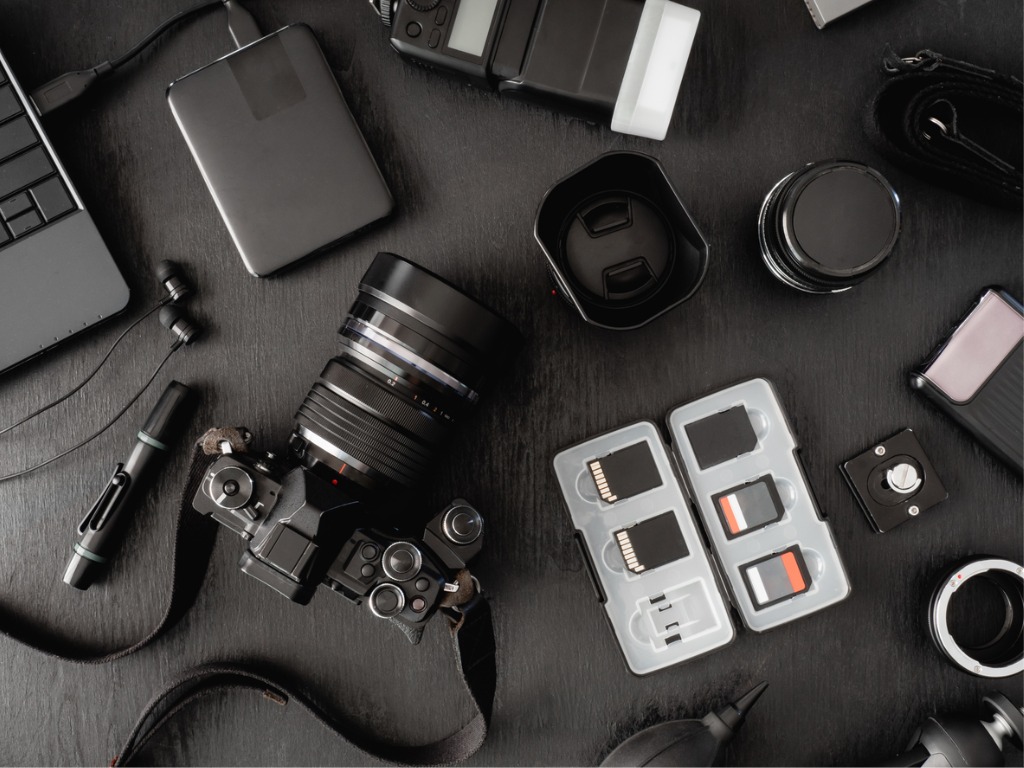
Photo by EKKAPHAN CHIMPALEE via iStock
While those are a handful of the most crucial pieces of equipment for travel photography, they are far from the only things worth investing in. For more gear recommendations, check out the list below:
- One or two spare lenses
- An action camera or drone (or both!)
- A camera cleaning kit
- Lens filters
- Extra memory cards and batteries
- A portable SSD hard drive
- Peak Design Camera Clip
Wrap It All Up in a Beautiful Print
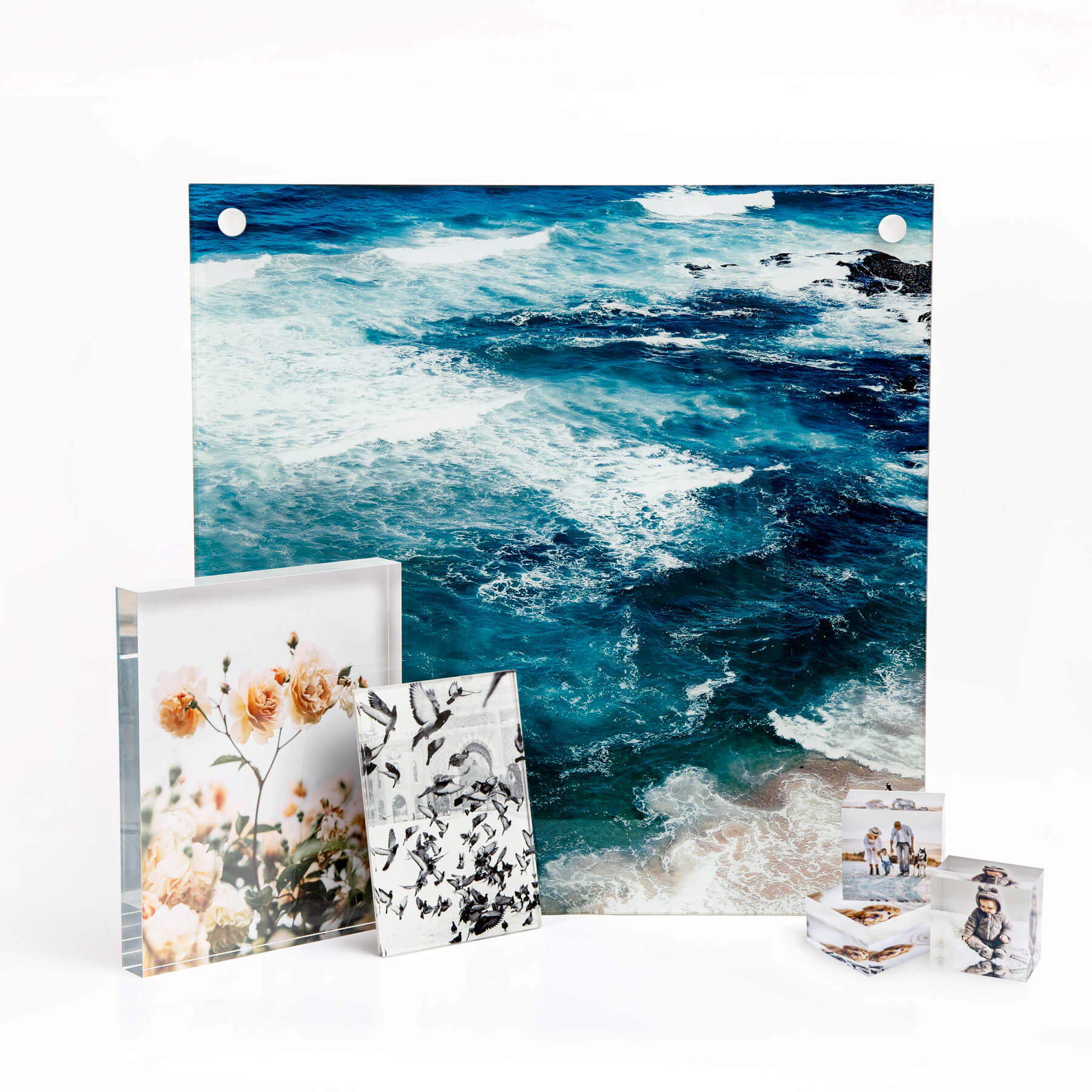
An acrylic print from Printique is a beautiful way to display your favorite summertime travel photo.
It's one thing to take fantastic summertime travel photos; it's another thing to edit them and turn them into beautiful prints!
Printing your images completes the deal. It gives you a way to enjoy your favorite memories over and over again and also gives you practice in fine-tuning your images so they look their best in print form.
When getting prints made, it's critical to partner with a trusted printing company so you get the best results. For that, Printique is one of my top choices.

A framed print from Printique is a tasteful option for displaying summer photo memories.
Printique - an Adorama company - has a long track record of success in the printing industry. They offer the finest quality materials and are known for their attention to detail and craftsmanship. What's more, Printique has a wide range of print options for your favorite summertime travel photos:
Whether you want to print a portrait, landscape, architectural photo, or something in between, these substrates will make your image shine and give you years of enjoyment as you see it hanging on your wall!
Learn More:
- 4 Reasons Why the DJI Mavic 2 Pro is Still a Great Drone
- Which Sony Compact Camera is Best for Travel Photography?
We Recommend
Gifts for Photographers Under $5,000 - 2020 Edition
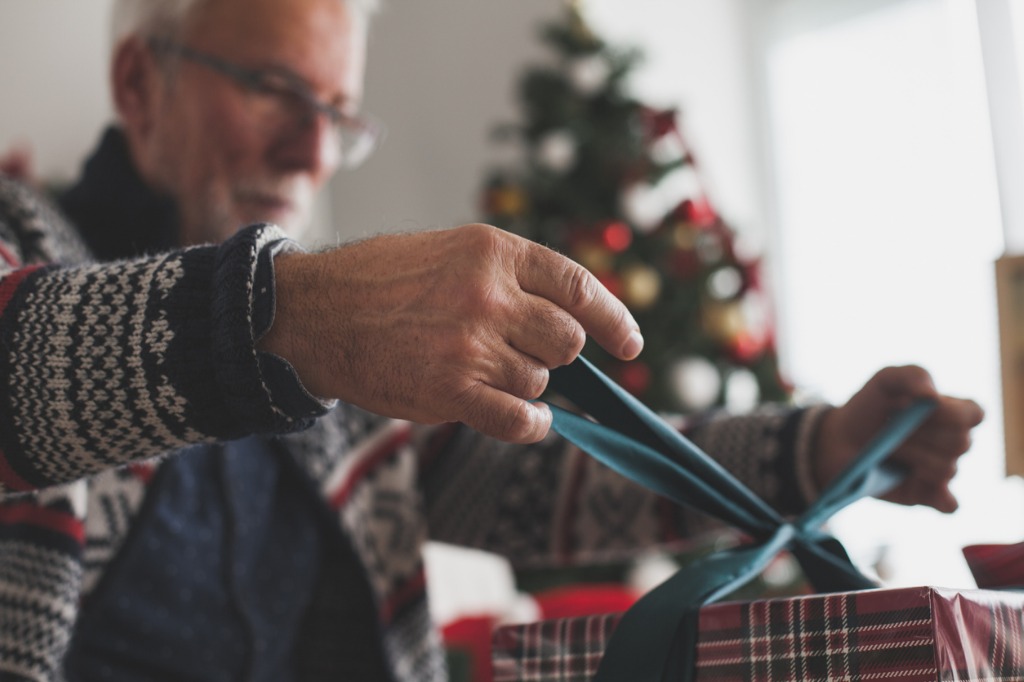
A $5,000 budget can get you a lot of camera swag for the photographer on your list.
We're talking incredible cameras and lenses, amazing photography trips, and a whole lot of beautiful prints or gifts from Amazon.
We've considered lots of different types of gifts for this list of the best gifts for photographers under $5,000. See what your budget can get you in 2020!
Gifts for Photographers Under $5,000: CanvasHQ Print

One of my favorite gifts to give (and to get, while we're at it) is a big, beautiful print.
Personally, I like canvas because of the texture the canvas gives to the print. Besides, a canvas print is something that will continue to give joy to the person that receives it for years and years to come!
Now, I know what you're thinking...canvas is so old-school.
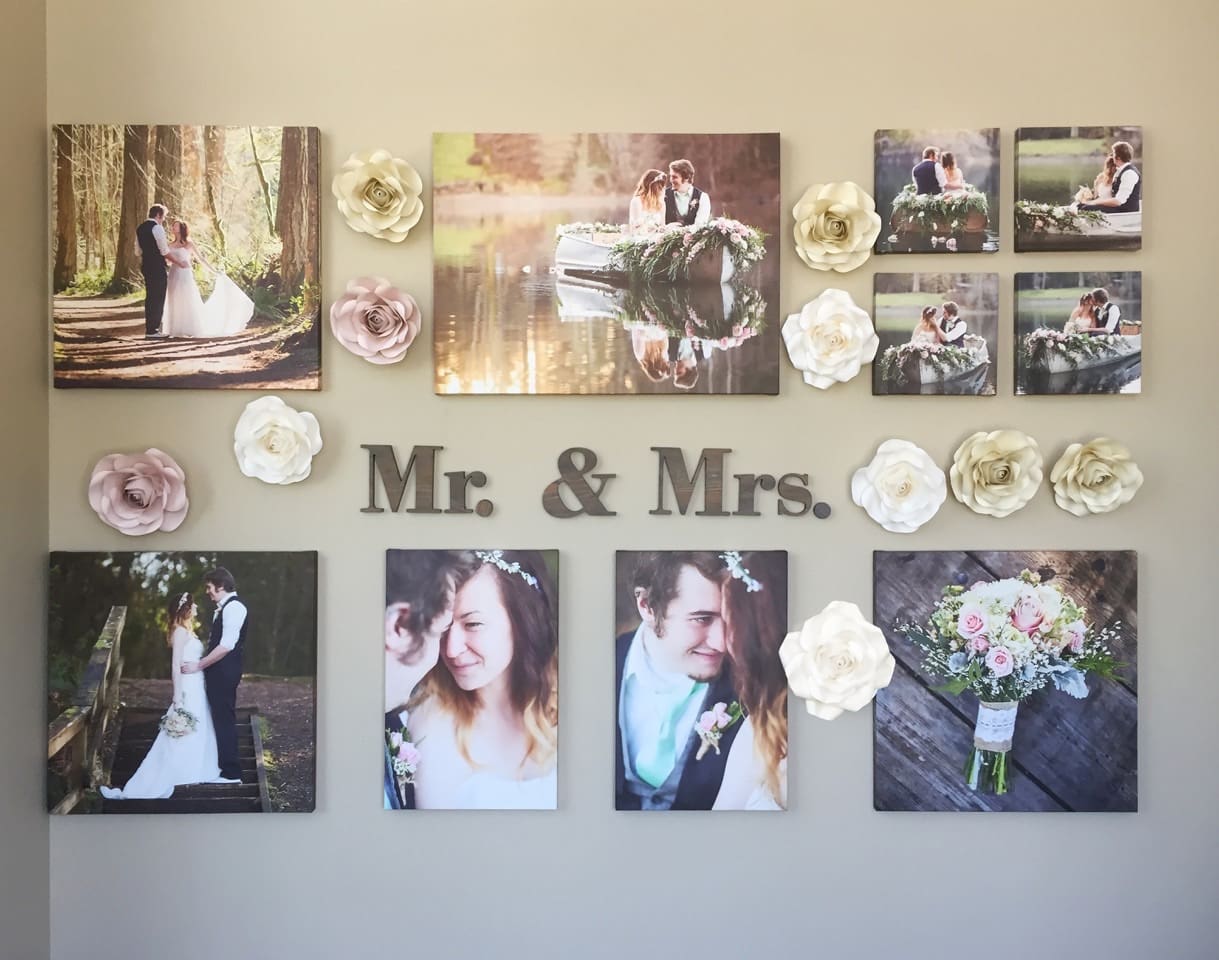
But if you order your canvases from the right printers, you can get something that is beautiful, well-made and looks modern, even if the substrate is perhaps a bit old-school.
I have tons of canvases in my home, the vast majority of which are fromCanvasHQ.
These are some of the best canvas prints I've ever purchased. The sharpness of detail, the color accuracy, and the overall build quality of these prints is next-level good.
Part of the reason for this is the materials CanvasHQ uses. We’re talking archival-grade canvas, commercial-grade inks that are water and UV resistant, and kiln-dried pine frames to keep everything straight and true.

But CanvasHQ isn't just tops in the quality department...
They have excellent customer service that makes you feel heard and as though you're the only customer they have to worry about at that moment.
These guys are committed to getting it right, so if something doesn’t go as planned, you won’t be hung out to dry.
If you have questions, they’ll answer them. If you have a problem, they’ll fix it. If you need assistance with uploading your photo or even picking the best finishes for your canvas, they’ve got your back.
In the video above, you can see how one of my CanvasHQ prints stacks up against similar prints from other printing companies. I think you'll see why I'm so loyal to CanvasHQ!
Start shopping for your favorite photographer today on CanvasHQ.
Gifts for Photographers Under $5,000: Canon EOS R5 and RF 24-105mm f/4L IS USM Lens
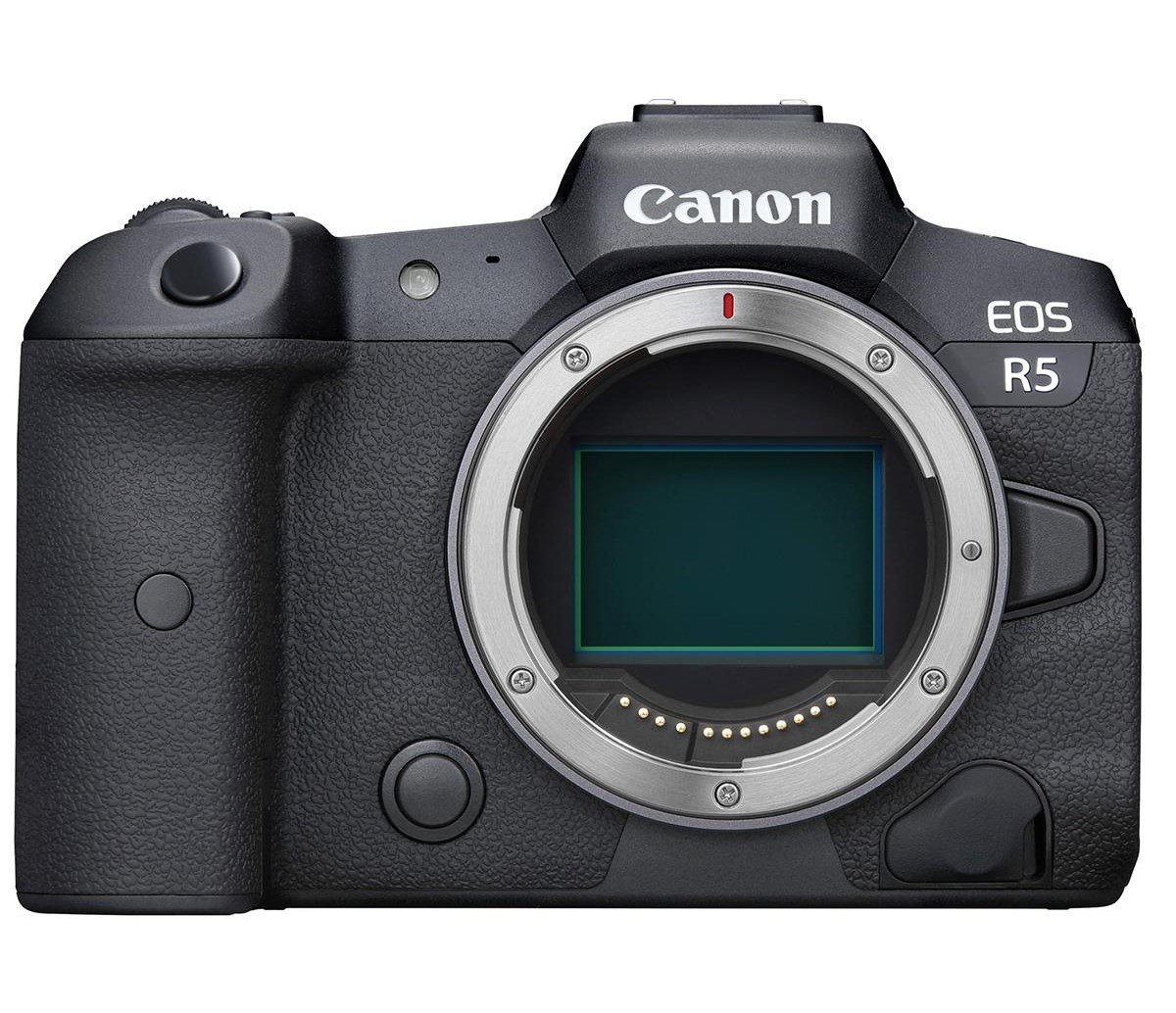
The Canon EOS R5 is one of the best cameras on the market, and the RF lineup of lenses is absolutely stellar.
That being the case, the combination of this camera and lens is a perfect gift idea for the photographer on your list.
This 45-megapixel camera is no joke - that's why I went out and got one at the first opportunity.
The new imaging sensor produces clean, sharp results with beautiful color rendition.
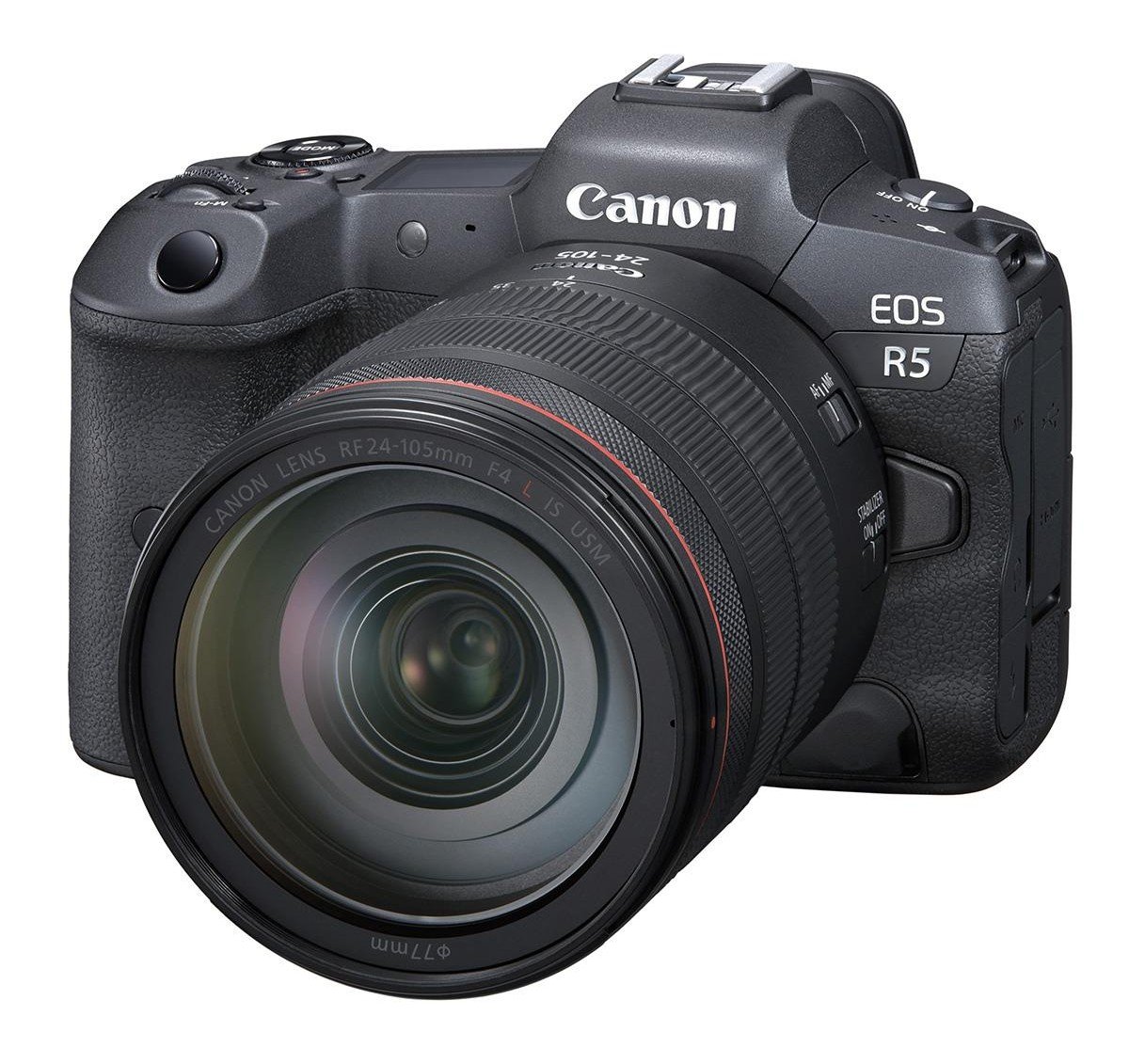
The Dual Pixel autofocus system is both fast and accurate, for still images and shooting video.
Speaking of video, the 8K/30p internal recording in 4:2:2 10-bit C-Log and HDR PQ is an astonishing spec. Those specs are also available in 4K/120p, in case you were wondering!
This rig has in-body image stabilization that gives you up to five stops of stabilization. When paired with a stabilized RF lens, you can get up to eight stops. If the photographer you're shopping for has stabilized EF lenses, those will work too (with an EF-RF adapter, of course).

This camera is not for the faint of heart or budget. But for a professional photographer that demands the best, I think it's one of the top options available today.
Adding a versatile and sharp 24-105mm f/4L lens to the mix is just the icing on the cake! This lens is a fantastic zoom option that can accommodate all kinds of tasks, from landscapes to portraits, wildlife to automobile photography, and many other pursuits.
If you really want to impress your favorite photographer this holiday season, this gift will do it!
Learn more about the Canon EOS R5 and RF 24-105mm f/4L IS USM
Gifts for Photographers Under $5,000:Razer Blade Studio 15
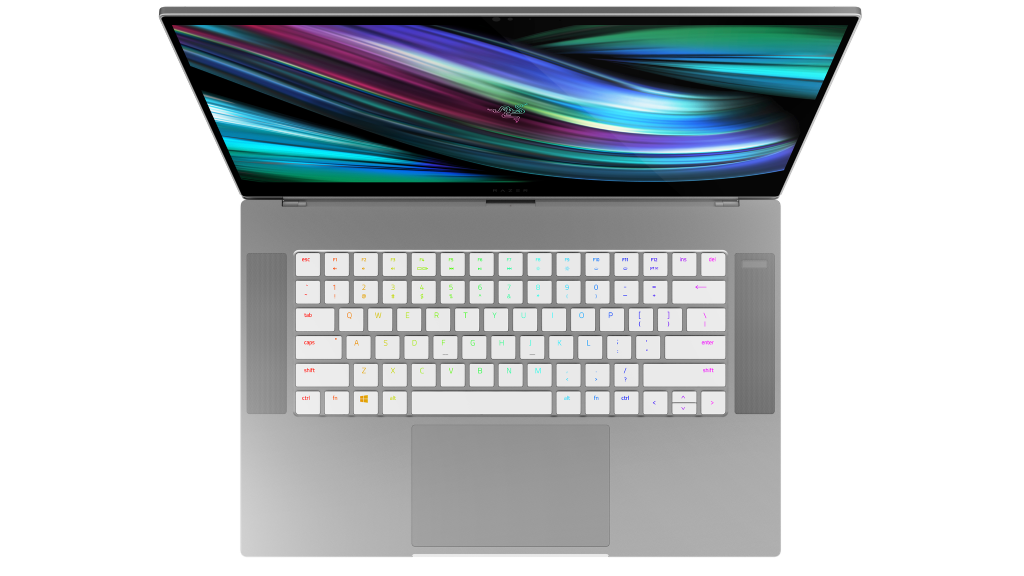
The 2020 Razer Blade 15 Studio is impressive, to say the least...
It's retained many of the best features of the 2019 version and juiced up many others.
Get a load of these specs:
- Windows 10 Pro
- 8-core 10th Generation Intel Core i7 processor with up to 5.1GHz max boost
- NVIDIA Quadro RTX 5000 GPU
- 15.6” OLED touchscreen with Corning Gorilla Glass
- Up to 4TB of SSD storage
- Up to 64GB of dual-channel DDR4 memory
- Upgraded backlit keyboard
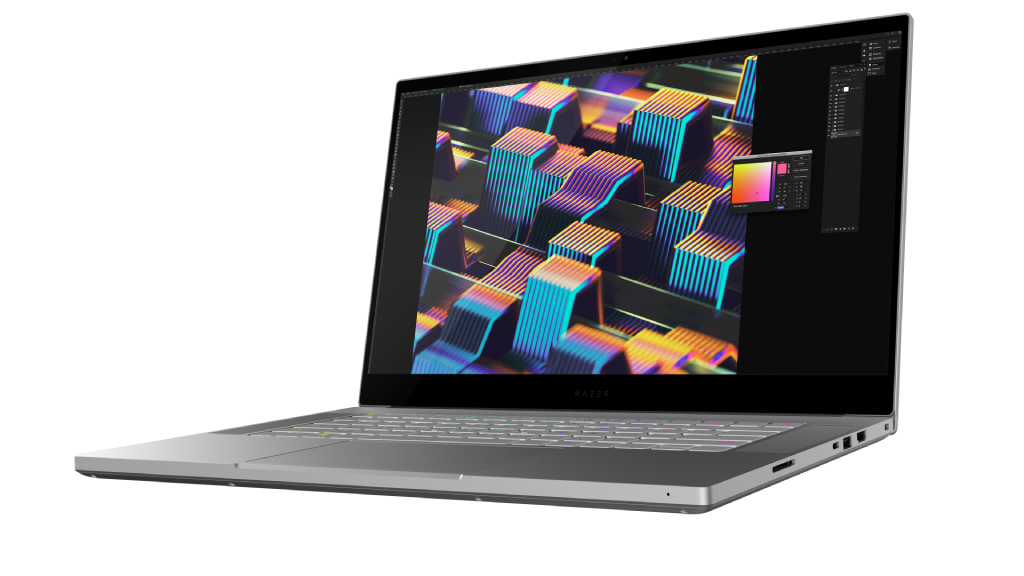
Of course, the 2020 version kept the best thing about the 2019 version - the NVIDIA Quadro RTX 5000 GPU.
I've had a lot of laptops and desktops over the years that had a "high-end" graphics card, and I can tell you that none come close to what this Quadro GPU can do. Honestly, it's like something you'd find in a Hollywood studio! No matter if you're doing intensive photo editing or video work, this GPU will be able to handle it.
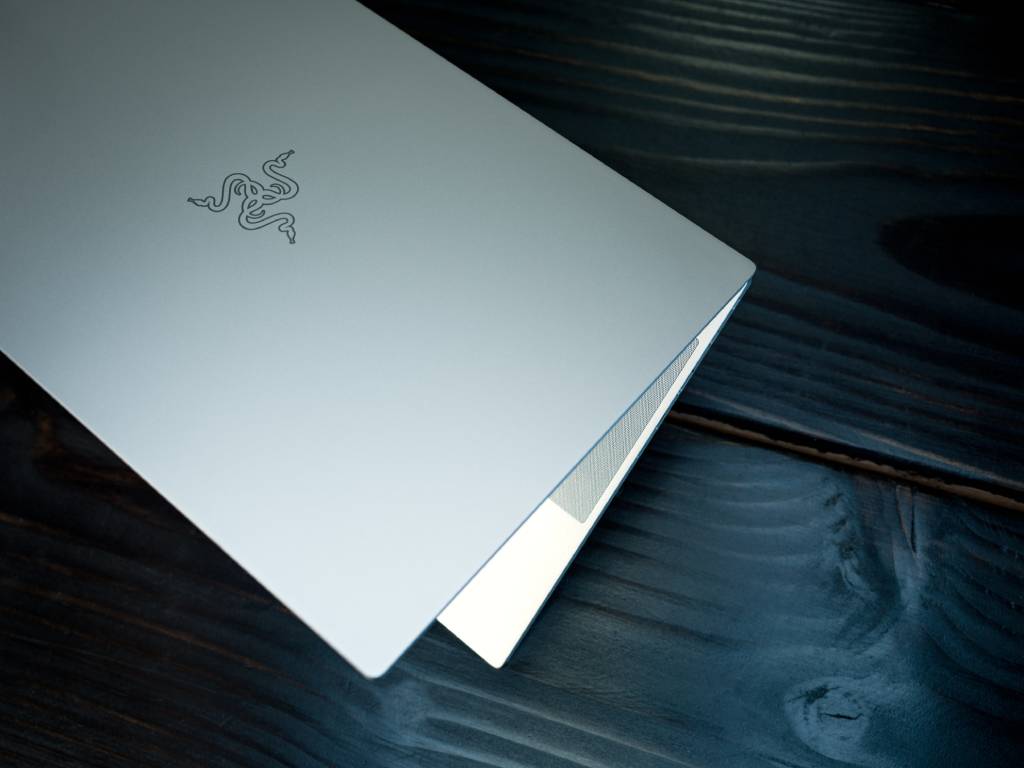
Another exciting feature about the 2020 Razer Blade 15 Studio is that it's now available with 8-core processors. Having that extra power is certainly a bonus!
The larger 15.6-inch OLED touchscreen color-calibrated display is another amenity to note. Not only is it bigger than its predecessor, but it also now has a Gorilla glass panel for added durability. Add in a UHS-III sd card reader, ports galore, and an anodized aluminum body finished in mercury white, and you have the makings of the hottest laptop of the year for photographers and videographers!
Learn more about the Razer Blade Studio 15.
Gifts for Photographers Under $5,000: Pre-Owned Canon EOS R, Canon RF 24-105mm f/4 L IS USM, and Canon RF 35mm f/1.8 IS STM Macro
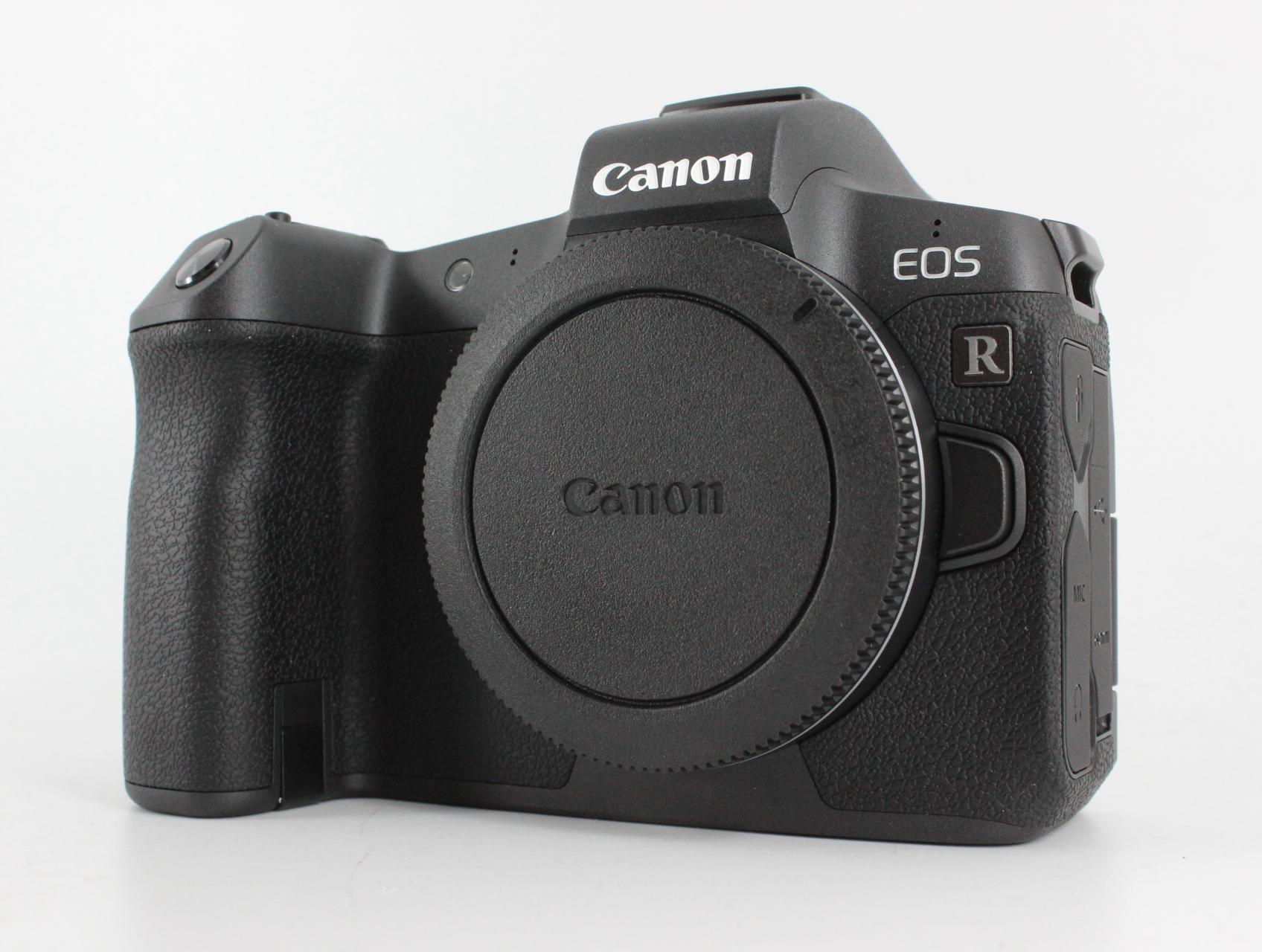
If the photographer on your list needs an upgrade in the camera department, you might consider giving the gift of a Canon EOS R this year.
The EOS R was released in October of 2018, so there's been time for prices to fall and for a good selection of used cameras to develop.
With a like-new-condition EOS R, you can save yourself quite a bit of money while still giving your loved one a capable, reliable, and virtually new camera!

The EOS R features a 30.3-megapixel full frame CMOS sensor paired with a DIGIC 8 image processor.
The result of this is superb performance, excellent image quality, and a bevy of secondary features that make it a fantastic camera for just about any photographer.
With a native ISO range up to 40,000, this camera is a good low-light performer, and with 8 fps continuous shooting, it can tackle subjects like wildlife and sports photography in which rapid movement needs to be captured.

Additionally, the EOS R has a top-of-the-line autofocus system called Dual Pixel AF, which allows users to select from 5,655 AF points to quickly and accurately acquire focus.
Add to that 4K UHD video recording at 30p, and you have the makings of a fantastic holiday gift!

The Canon RF 24-105mm f/4 L USM is a great choice for an all-around lens that accommodates wide-angle, standard, and telephoto shooting. And since pre-owned versions in like-new are under $950, you're well under the $5,000 budget threshold! That means you can add a second lens like the Canon RF 35mm f/1.8 IS STM Macro to the gift bundle!
Though the 35mm f/1.8 isn't an L-series lens, it has excellent optics, a large maximum aperture, and image stabilization. Plus, the 35mm focal length is hugely versatile, so the photographer on your list could use it for everything from architectural photography to portraits.
With this bundle, you can equip your favorite photographer quite nicely, and for well under budget.
Learn more about the Canon EOS R, the Canon RF 24-105mm f/4 L IS USM, and the Canon RF 35mm f/1.8 IS STM Macro
Gifts for Photographers Under $5,000: Colors of Costa Rica Photo Tour With ColorTexturePhotoTours

From spectacular sunsets on the coast to breathtaking waterfalls, incredible diversity of wildlife (including dozens of species of frogs) to stunning flowers, Costa Rica has no shortage of subject matter for a photographer.
And as part of ColorTexturePhotoTour's Colors of Costa Rica photo tour, the photographer on your list can explore all that and much more as part of a luxurious, all-inclusive trip!

This trip is the ideal length - six days and five nights - so it's easier to get away from work and other responsibilities to spend a relaxing time in one of the most beautiful locations on earth.
Over the course of the trip, the photographer on your list will join no more than three other participants to tour the landscapes of Costa Rica with workshop leader Scott Setterberg.
Those landscapes, which includes four national parks, will be fodder for some spectacular photography opportunities, as well as plenty of one-on-one instruction time with Scott.

In this regard, this trip isn't just about seeing gorgeous places, but it's also about developing and improving photography skills.
With stops in Tenorio Volcano National Park, La Paz Waterfall Gardens, Catarata La Fortuna, Lake Arenal, and Juan Castro Blanco National Park, the tour takes participants to varied locations, each of which offers unique beauty and challenges photographers to apply their skills to get the best shots.
Along the way, a licensed, English-speaking nature guide will offer insights into the biodiversity of Costa Rica, so tour-goers learn more about the beauty they see and photograph.
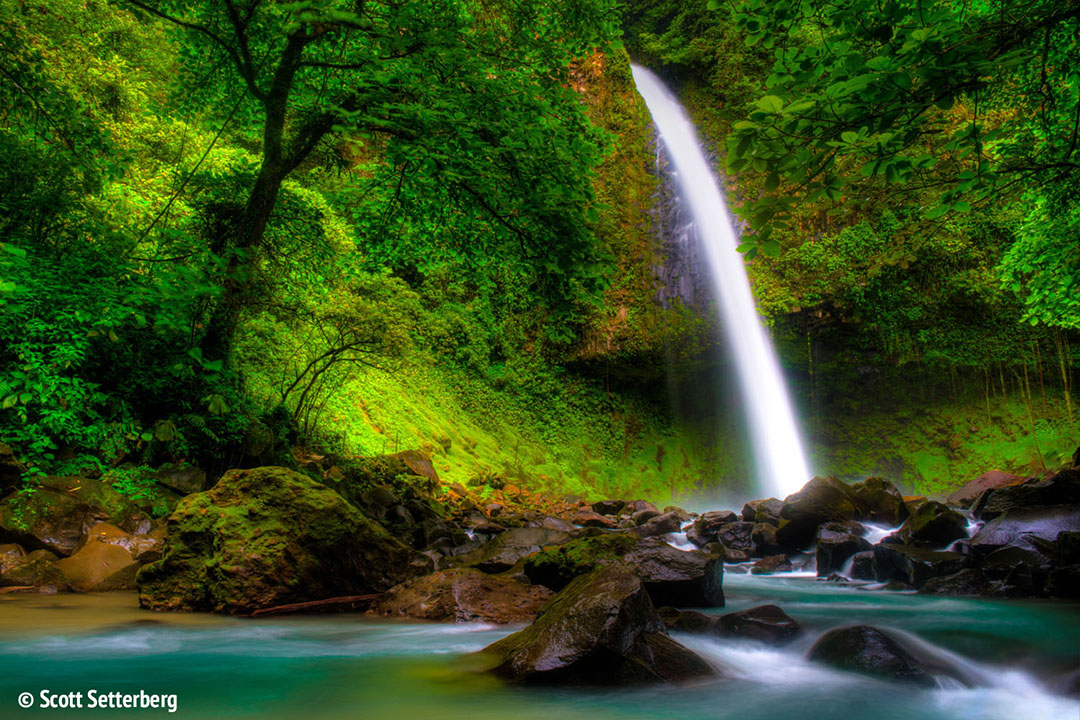
Each evening, the tour winds down and participants stay in luxurious, award-winning accommodations.
The photographer on your list can enjoy authentic Costa Rican cuisine, spa services, massages, and more.
What better way to celebrate the holidays than by giving your loved one the photography trip of a lifetime?!
Learn more about the Colors of Costa Rica Photography Tour by ColorTexturePhotoTours
Gifts for Photographers Under $5,000: Nikon Z7 with Nikon Nikkor 24-70mm f/4 S Lens

When I had a Nikon Z7, I used this very lens as well. It's an ideal combination for everyday photo-taking.
What impressed me the most about this camera is its sensor - a 45.7-megapixel full frame behemoth that offers superb image quality.
The sensor is paired with a fast and accurate 493-point autofocus system that offers 90 percent coverage. Whether the photographer on your list photographs people, places, or things, this camera will be a great companion!

Other features of note include 9 fps shooting, 4K video up to 30p (up to 120 fps in HD), an ISO range of 63-25600, and built-in image stabilization.
Additionally, Nikon gave the Z7 a beautifully resolute 3.69-million-dot electronic OLED viewfinder as well as a 3.2-inch LCD touchscreen display.
I really appreciated the design of the camera as well - it feelslike a Nikon with a deep grip and a familiar button layout.

On top of all that, the Z7 is fully weather sealed - I tested it out in Norway and can attest to its ability to stand up to really, really cold temperatures.
You get Wi-Fi, Bluetooth, USB battery charging, and Nikon's SnapBridge functionality as well.
And in this case, the Z7 comes with a killer lens, the Nikon Nikkor 24-70mm f/4 S.

This lens is the ideal walk-around lens, with wide-angle to short telephoto capabilities that allows photographers to capture all kinds of subject matter without the need for lens changes.
What's more, this S-series lens is small and lightweight, making it an ideal alternative to bigger, heavier f/2.8 models.
It has an aspherical extra-low dispersion element, three aspherical elements, and Nano Crystal and Super Integrated Coatings, all of which combine to reduce chromatic aberrations, distortions, ghosting, and flare.
The result is beautiful color rendering and improved contrast. In other words, it's a great camera-lens combination!
Learn more about the Nikon Z7 With Nikon Nikkor 24-70mm f/4 S Lens
Gifts for Photographers Under $5,000: eMotimo spectrum ST4 Run & Gun Bundle

For the photographer on your list that's itching to add videography to their repertoire, the eMotimo spectrum ST4 Run & Gun Bundlespectrum ST4 Run & Gun Bundle is a perfect gift with a $5,000 budget.
Included in this bundle are a spectrum ST4 4-axis motion control unit, a eMotimo heavy duty L-bracket for mounting a camera, an eMotimo Fz focus motor, and iFootage Shark Slider with both two-foot and four-foot lengths.
Also included is an iFootage integration kit with the motor of your choice, a uSD card with instructions, an Arca compatible quick release clamp for tilt, and an Arca compatible plate for pan axis.
In other words, this bundle is loaded for bear with all the fixings a photographer needs to create breathtaking cinematic films and time-lapse videos!
Learn more about the eMotimo spectrum ST4 Run & Gun Bundle
Gifts for Photographers Under $5,000: Sony a7R IV

The Sony a7R IV will be hot off the assembly line well in time for the holiday season, and it's a fantastic gift idea for the photographer in your life.
This camera is packed to the gills with modern features that will make any photographer smile from ear to ear.
The a7R IV has a 61-megapixel sensor that's unrivaled on the market at this point.

Along with that crazy sensor is a laundry list of jaw-dropping specs:
- a 5.76-million-dot electronic viewfinder
- 5-axis image stabilization
- 10fps burst shooting
- 15 stops of dynamic range
- A 567-point phase-detect autofocus system
- Wireless tethering
- Enhanced dust and moisture resistance.

That's not even to mention Sony's impeccable Eye AF system which tracks human and animal eyes with extreme precision.
There's also Real-Time AF for video recording, 26-megapixel resolution in APS-C crop mode, and sensor-shift multi-shot mode that creates image files that are a whopping 240-megapixels in size.
And at less than $3,500, you can give the gift of the Sony a7R IV without breaking your budget!
Learn more about the Sony a7R IV
Gifts for Photographers Under $5,000: Arca-Swiss F-Classic 4x5 View Camera

For discerning photographers that enjoy working in medium format, it’s tough to beat the Arca-Swiss 4x5.
This is a professional-grade tool that is both easily transported and produces high-quality images.
It’s made specifically for 4x5 medium format film and digital backs made to fit medium format digital camera systems.
It’s a fully modular system, too, with a wide array of accessories for everything from viewing to conversion.
Whether it’s used for film or digital prints, this camera will bring a smile to any photographer’s face!
Best of all, it's well below the $5,000 budget mark, so you can give an awesome gift and save a ton of money, too!
Learn more about the Arca-Swiss F-Classic 4x5 View Camera
Gifts for Photographers Under $5,000: Amazon Gift Card
![]()
Totally stumped regarding gift ideas for photographers on your list?
Why not go the easy route and get them an Amazon gift card?
Though a gift card isn't exactly the sexiest gift, when the photographer in your family sees that you dropped $5,000 into a few gift cards (there's a $2,000 limit per card), they'll love it just the same.
With an Amazon gift card, they can buy whatever they want - a new lens, a second camera body, lighting gear, a laptop - you name it!
As far as flexibility goes, there's nothing better to give a photographer than a gift card with some serious money loaded onto it!
Learn more about Amazon gift cards
We Recommend
Mirrorless or DSLR for Beginners in 2021?
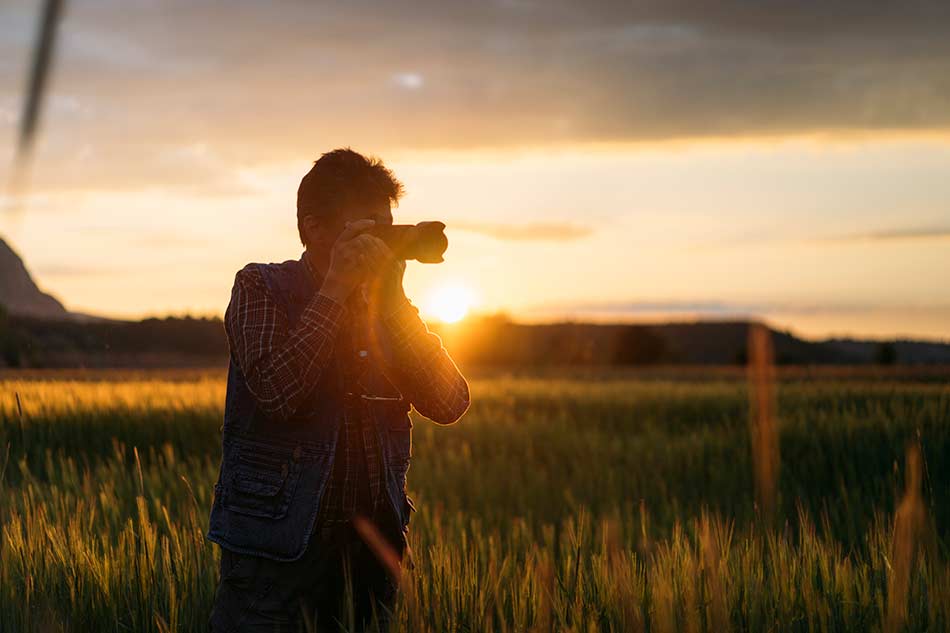
photo byhsyncoban via iStock
A mirrorless or DSLR camera is a must if you want to develop your own style in photography. Both types of camera allow you to use a wide range of high-quality lenses. Moreover, they are rich in features and highly adaptable for different needs.
DSLRs have ruled the market for nearly two decades. However, in the past few years, mirrorless cameras have become much more popular. In this article, we will explain the main differences between DSLR and mirrorless cameras and point out their strengths and weaknesses.
Table of Contents:
- DSLR and Mirrorless Defined
- DSLR vs Mirrorless: Size and Weight
- DSLR vs Mirrorless: Which Has Better Autofocus?
- DSLR vs Mirrorless: Optical vs Electronic Viewfinder
- DSLR vs Mirrorless: Image Stabilization
- DSLR vs Mirrorless: Image and Video Quality
- DSLR vs Mirrorless: Shooting Speed
- DSLR vs Mirrorless: Battery Life
DSLR and Mirrorless Defined
DSLR is an acronym for a digital single-lens reflex camera, but what does that really mean? In simple words, a DSLR camera uses a mirror system in order to reflect the light from the lens into the viewfinder. Additionally, it uses a digital sensor to produce images instead of a photographic film. You can see this process work in the video above by Fstoppers.
Every DSLR camera has a mirror which is placed just in front of the camera’s image sensor. Since it is positioned under 45 degrees, this mirror transmits everything that passes through the lens into an optical viewfinder. With a press of the shutter button, the mirror folds and exposes the sensor to the light (hence creating an image).
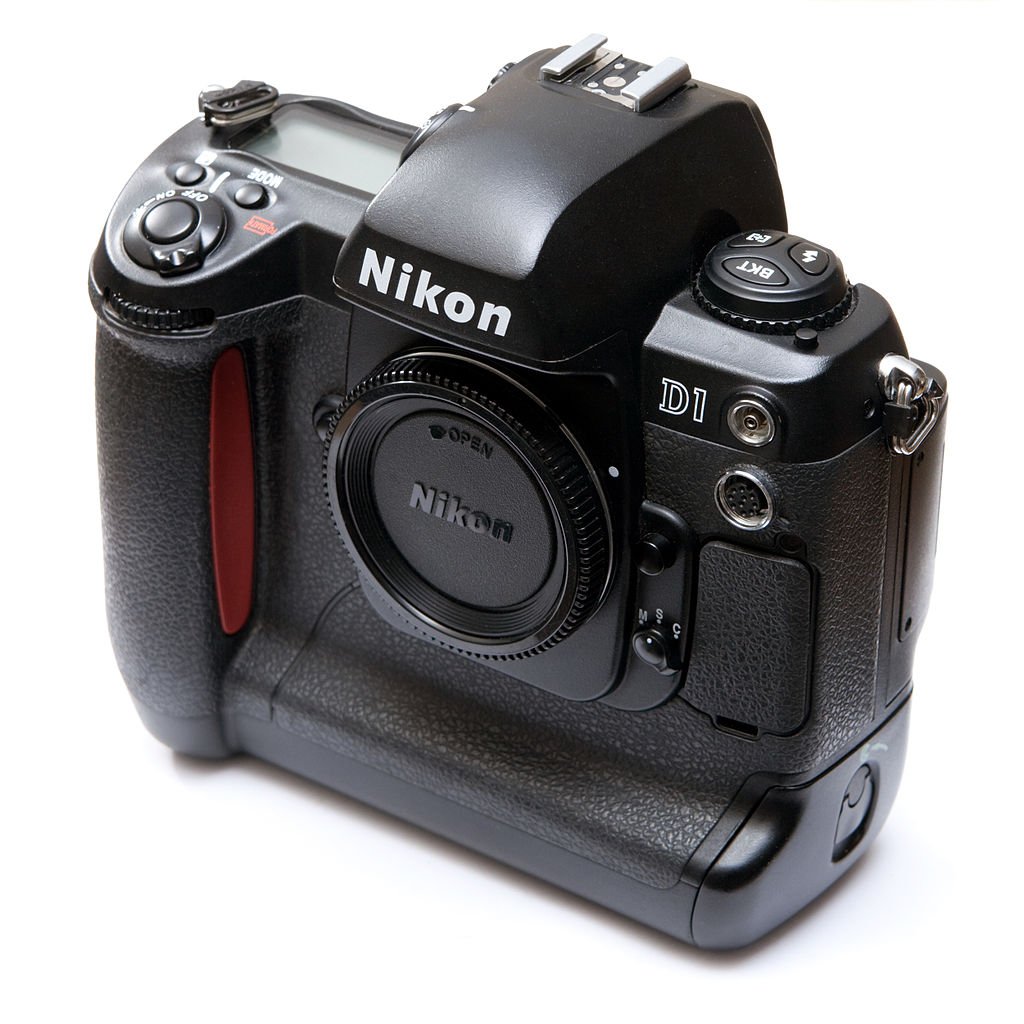
Ashley Pomeroy [CC BY 3.0 (https://creativecommons.org/licenses/by/3.0)] via Wikimedia Commons.
The first professional DSLR was introduced by the Nikon Corporation in 1999. This camera (Nikon D1) had only 2.74 megapixels, but it changed the rules of the game in photography.
DSLR cameras share the same design and mechanism as analog SLR cameras, but they offer much more capabilities in terms of image procession. Nowadays, most professional photographers use this type of camera. However, the reign of DSLR seems to be coming to an end.

Mirrorless cameras are becoming increasingly popular, especially since Nikon and Canon released the Nikon Z7 and Canon EOS R. It should be obvious from the name, but this type of camera does not feature an internal mirror. This is basically the main characteristic that distinguishes it from a DSLR camera model.
As is the case with DSLRs, mirrorless cameras feature a digital sensor and use interchangeable lenses, but their sensor is not hidden behind the mirror and it is exposed to the light all the time. As we will see, this is a big game-changer.
In the video above, Sony discusses a few differences between DSLRs and mirrorless cameras.
DSLR vs Mirrorless: Size and Weight
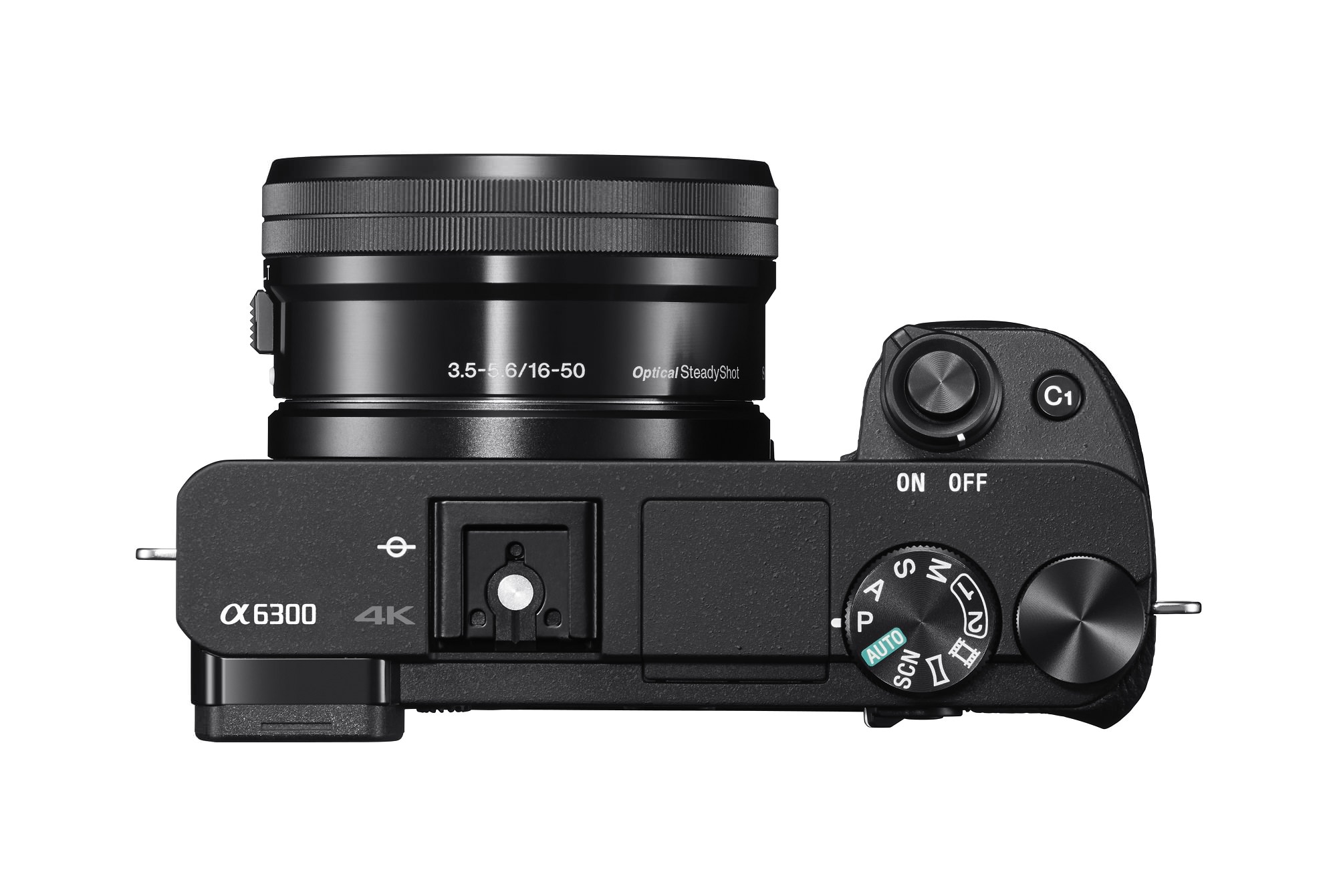
Since they don’t have a mirror within their body, mirrorless cameras are usually very compact and lightweight. An average DSLR weighs 1.7lbs. Although this is not too heavy for carrying around, an average mirrorless model weighs significantly less.
For example, the mirrorless Sony a6300 weighs only 0.89 lb. Moreover, this camera measures just 4.7 x 2.6 x 1.9 inches. Because of this, it can easily fit into a smaller bag and you will still have plenty of space for different types of lenses and other photography equipment.
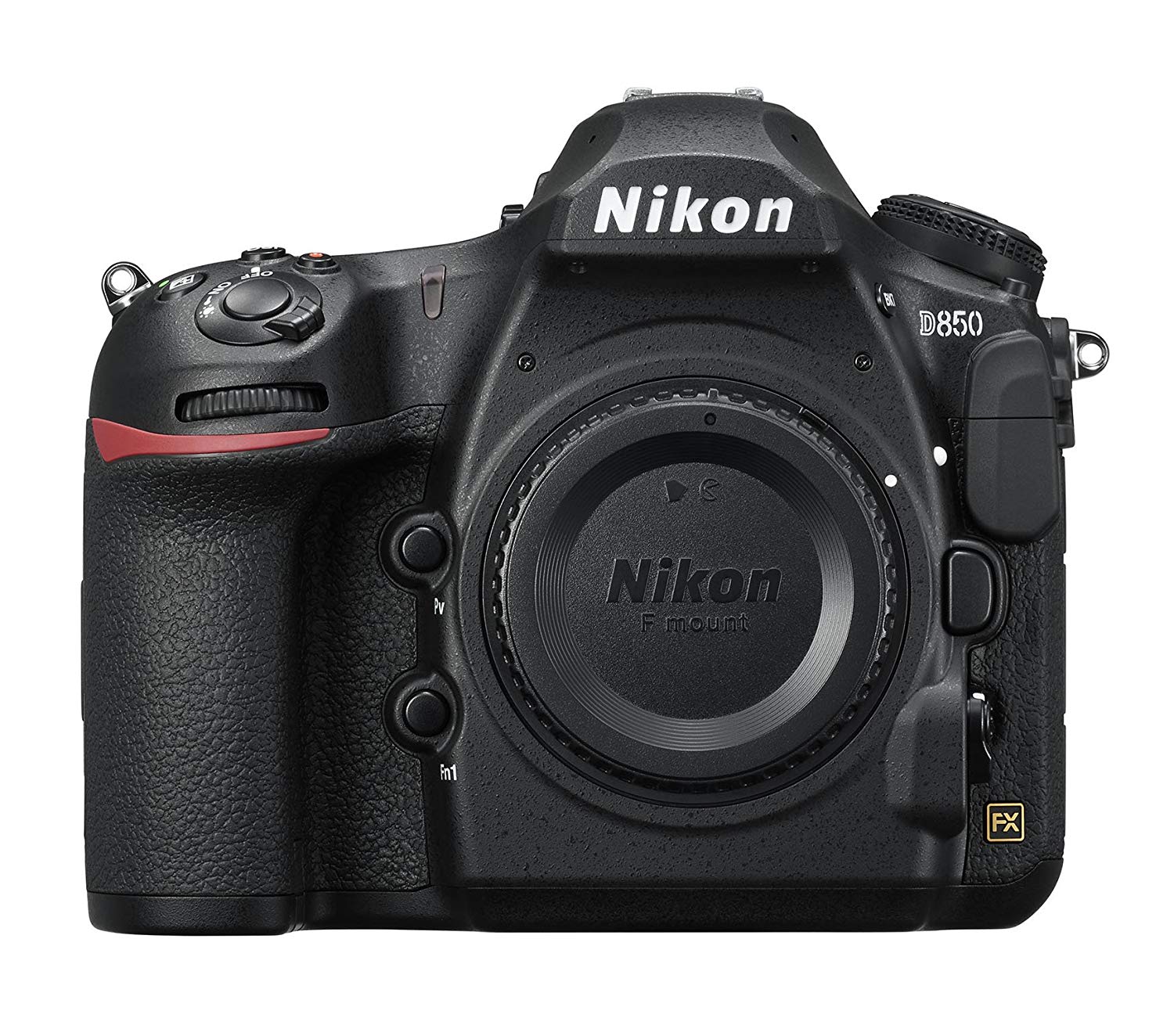
In comparison, one of the most popular DSLRs in recent years - the Nikon D810 - weighs 2.16 lb. Although it is a bit bulky, this camera is super strong and these few pounds and inches do not mean a lot for many photographers who enjoy using this camera.
DSLR vs Mirrorless: Which Has Better Autofocus?
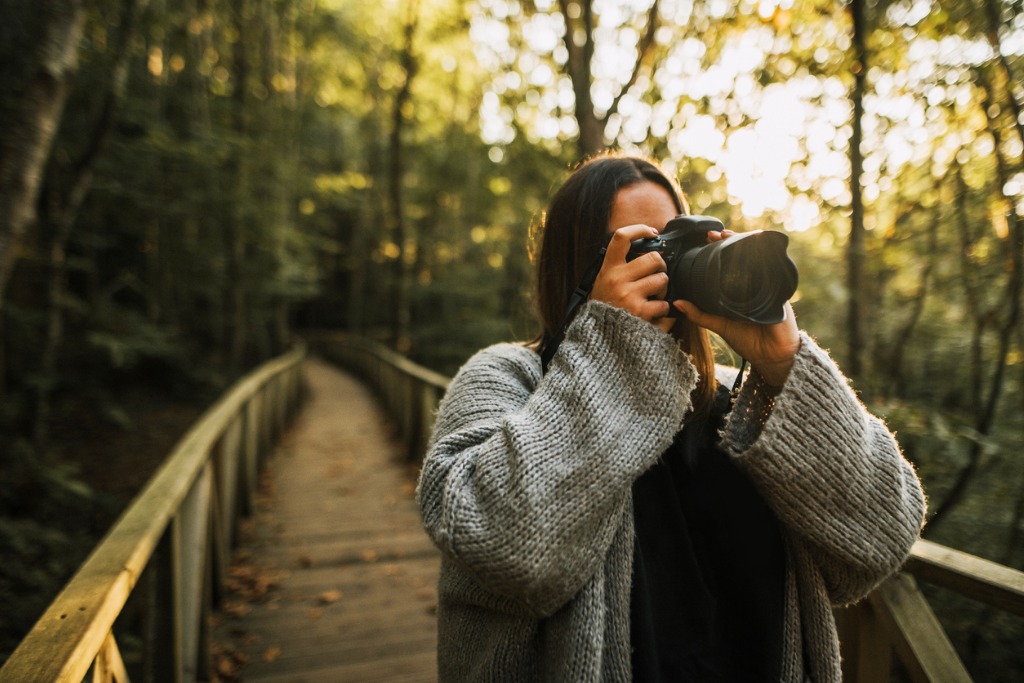
photo by MarioGuti via iStock
The first mirrorless cameras used only contrast detection technology for autofocusing. DSLRs use phase-detection technology which is faster and more precise. Because of this, they are usually associated with better autofocusing capabilities.
However, mirrorless cameras are evolving and getting better with each passing day. Nowadays, there are mirrorless cameras that combine phase detection and contrast detection technology in order to provide the best results in terms of autofocus accuracy and speed.
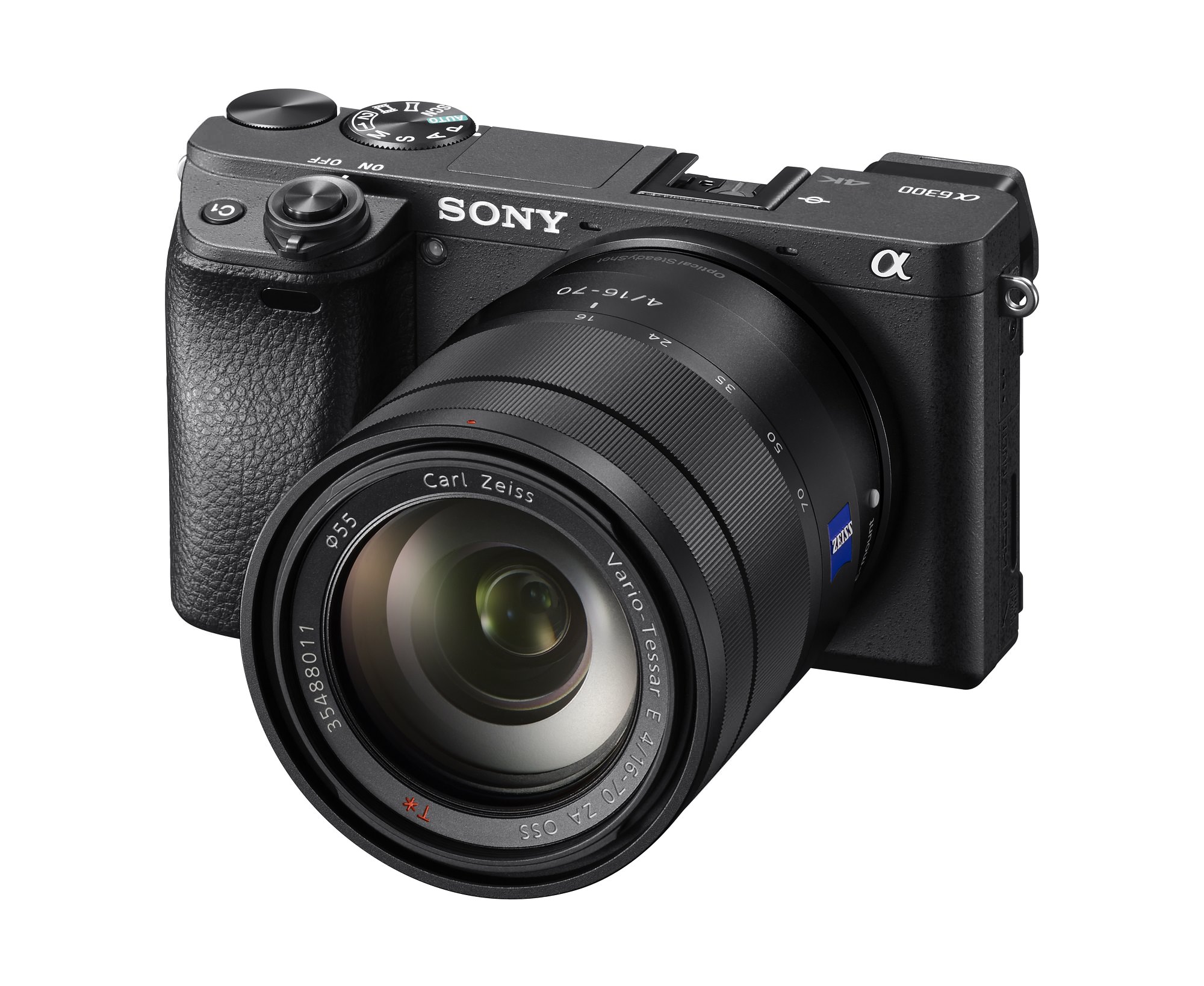
The Sony A6300 is a mirrorless model with the world’s fastest autofocus speed and it can lock the subject in 0.05 seconds. Additionally, this camera has 425 phase-detection AF points. The autofocus of this camera is impressive, but in the years to come, it’s a given that mirrorless cameras will have even better autofocus systems.
Some people in the photography industry believe that DSLRs will soon be relics in a market dominated by mirrorless cameras.
Find out why this might be the case in the video above by Engadget.
DSLR vs Mirrorless: Optical vs Electronic Viewfinder
As we already touched upon, DSLR cameras use an optical viewfinder, while mirrorless cameras use an electronic viewfinder. Both types of viewfinder have their own advantages and disadvantages, as Jared Polin discusses in the video below.
The optical viewfinder works better in low-light situations. In a very dark environment, the electronic viewfinder produces grain and noise while DSLR allows you to see exactly what you are about to shoot (without digital interference). Additionally, the optical viewfinder is also better for tracking fast-moving objects.
On the other hand, a mirrorless camera provides you with a unique option to see the effect of the exposure settings through the viewfinder. In this way, a mirrorless viewfinder gives you a possibility to see a preview of the image you are about to take.
Learn more:
- Why You Should Switch to a Mirrorless Camera for Landscape Photography
- DSLRs are Still in the Game: Top 5 DSLR Cameras of 2018
DSLR vs Mirrorless: Image Stabilization
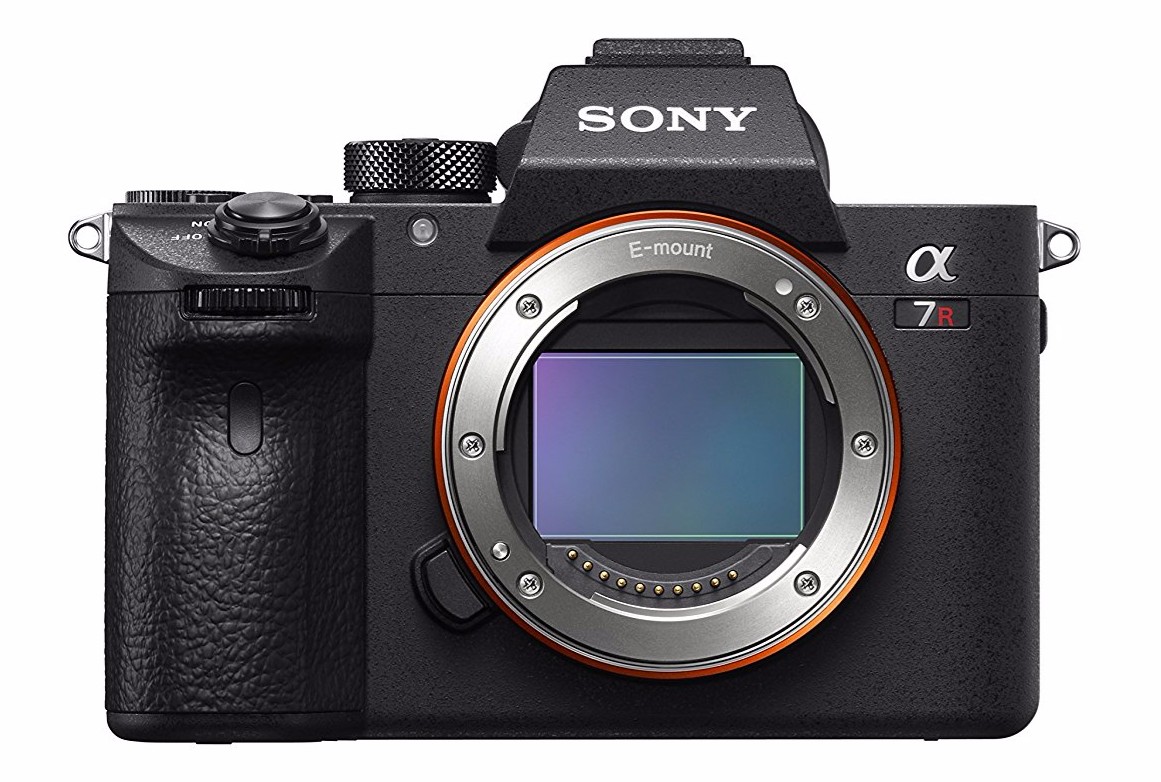
Image stabilization works as a mechanism that reduces blurring as an effect of the camera’s motion. If you have a shaky hand, then you will need to look for a camera that has a good image stabilization function.
Both DSLR and mirrorless cameras have image-stabilization systems. However, some of the mirrorless cameras such as the Sony a7R III offer 5-axis sensor-based image stabilization (IBIS) while there is no such feature in DSLR cameras. Because of this, mirrorless cameras have an advantage in this category.
DSLR vs Mirrorless: Image and Video Quality
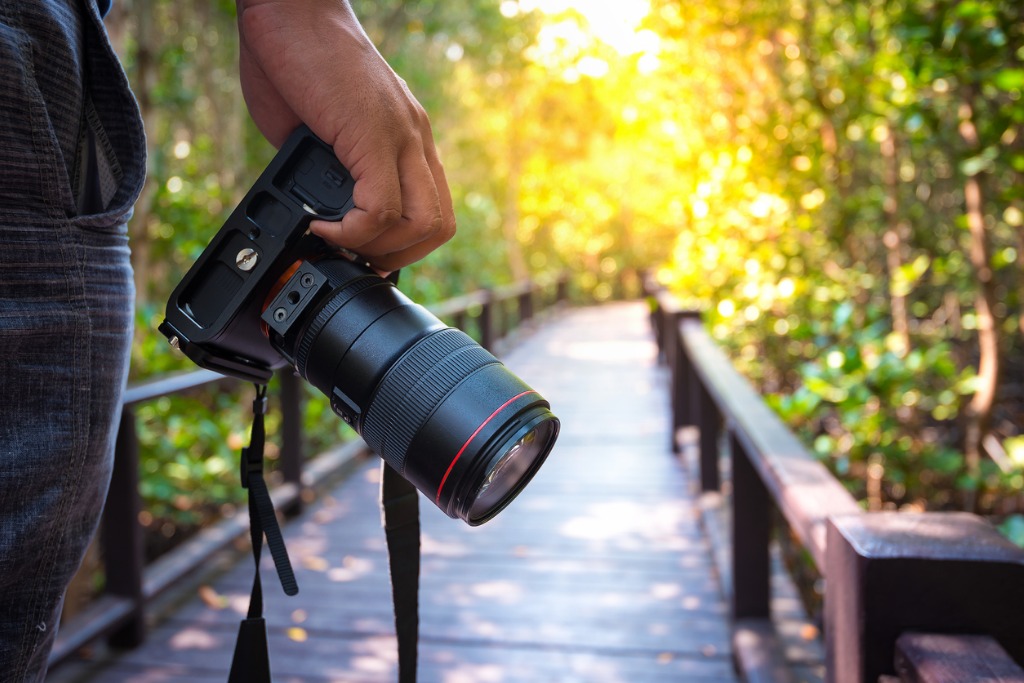
photo by structuresxx via iStock
When it comes to image quality, there are no profound differences between DSLR and mirrorless cameras.
The first mirrorless cameras had smaller sensors so they couldn’t produce the same image quality as DSLRs. However, this has changed. In the past few years, there are many full-frame mirrorless models such as the Sony a7R III, Nikon Z7, and Canon EOS R.
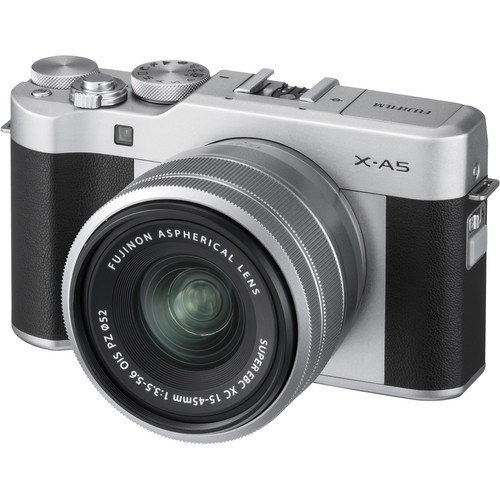
Mirrorless cameras, on the other hand, do perform better in terms of video. High-end mirrorless cameras usually have a more accurate focus and larger video resolution than DSLRs of the same class. Even the entry-level mirrorless cameras, such as the Fujifilm X-A5, offer 4K video recording. DSLR camera manufacturers are still struggling to reach this level. Only a few high-end DSLR cameras, such as the Canon EOS 5D Mark IV, shoot 4K video.
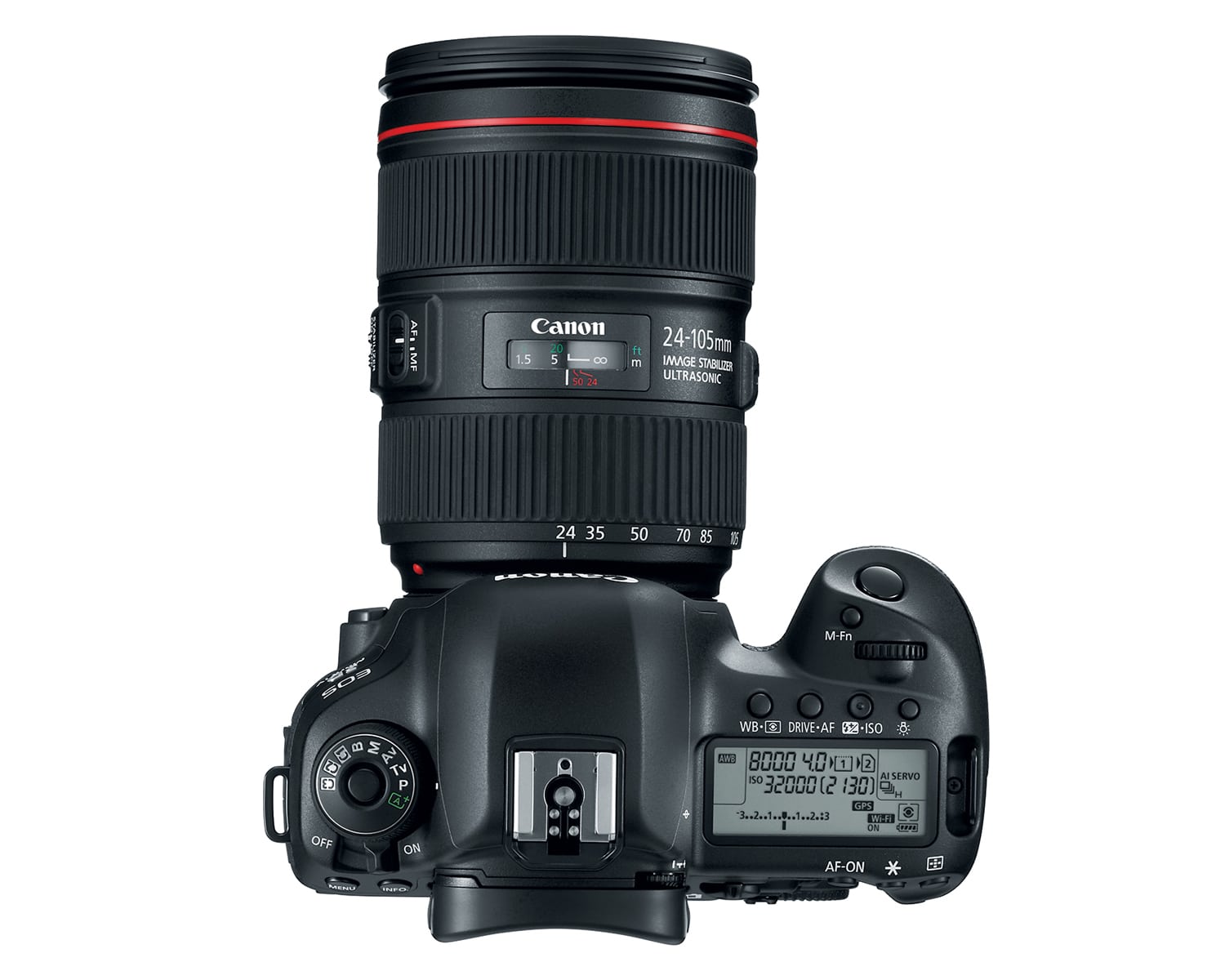
Some people still prefer to use DSLR cameras because they come with a wide offer of lenses. Mirrorless cameras are relatively new so there are not as many lens choices. Although new ones are being released every year, DSLRs are still more versatile for image and video because of the much bigger choice of lenses available.
DSLR vs Mirrorless: Shooting Speed
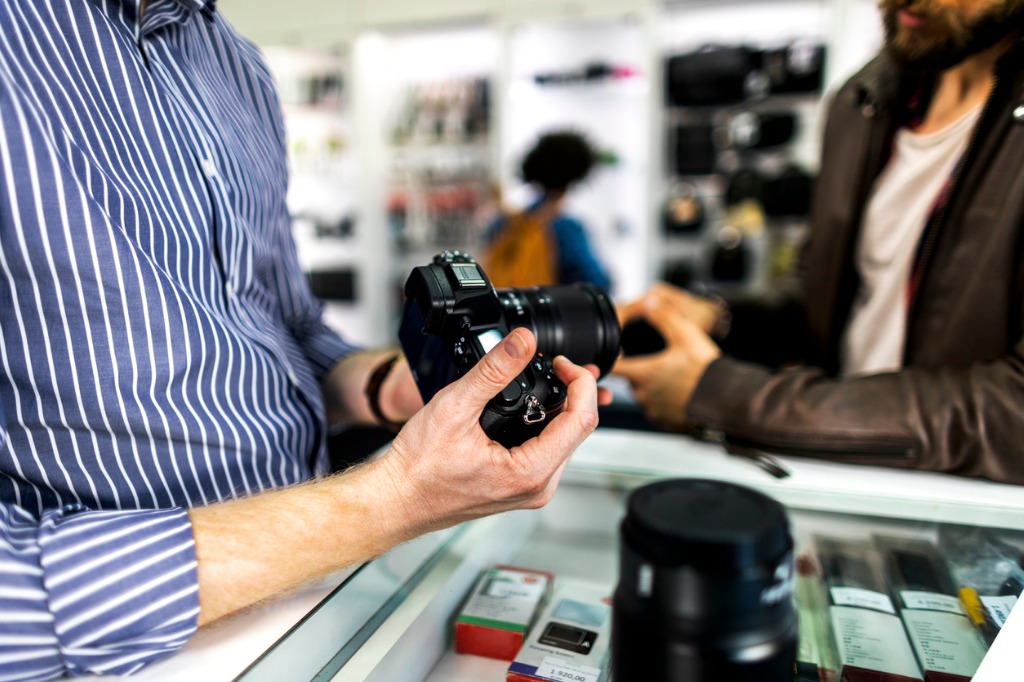
photo by EXTREME-PHOTOGRAPHER via iStock
Since mirrorless cameras have simple mechanics, they can produce more photos per second. This is particularly useful for those interested in sports, wildlife, or event photography. DSLR cameras are also good for burst shooting, but it's mirror makes things a bit more complicated.
Additionally, mirrorless cameras usually offer silent burst shooting mode which is convenient if you don’t want to disturb an environment with the sound of the shutter.
Learn more:
DSLR vs Mirrorless: Battery Life
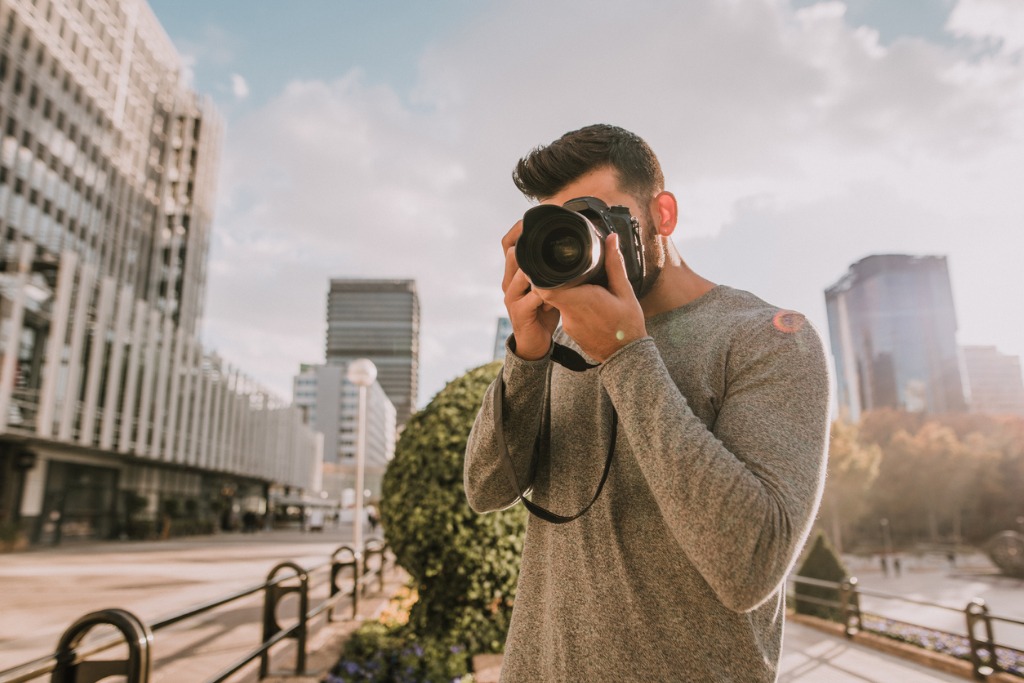
photo by MarioGuti via iStock
Finally, mirrorless cameras still can’t compete with DSLRs in terms of battery life. The battery life of a DSLR, like the Nikon D5600, is around 970 shots per charge. In comparison, the Nikon Z7 makes only 330 shots before the battery runs out.
Mirrorless cameras usually have lower battery life because its electronic viewfinder drains the battery. If you are not using Live View, DSLR cameras can shoot for hours. This makes them more practical for most situations.
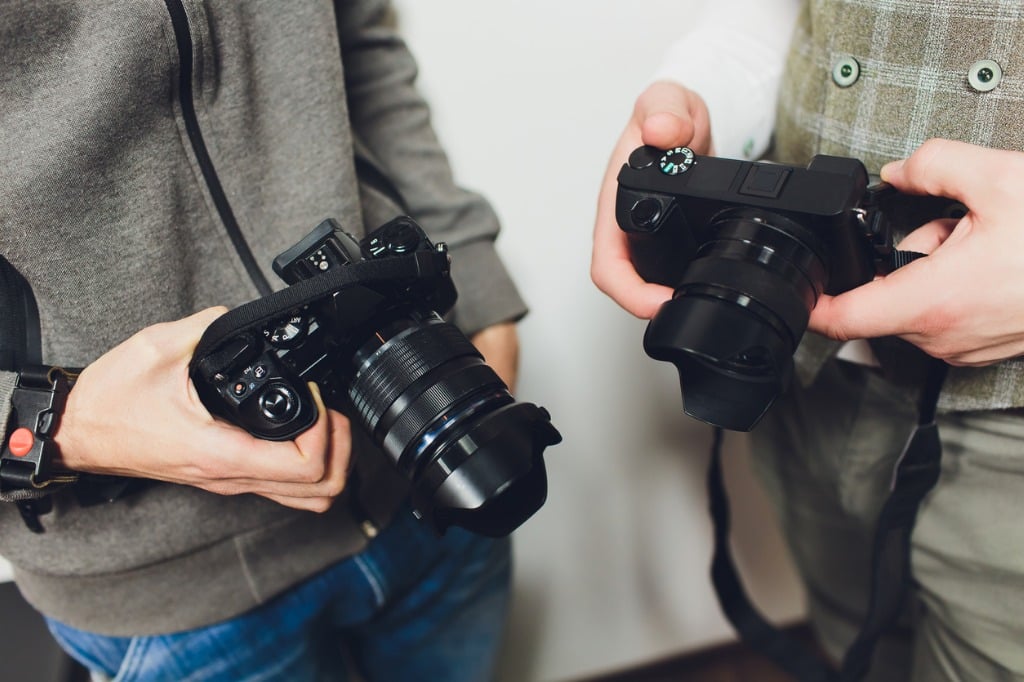
photo by Vershinin via iStock
As you can see, mirrorless cameras are more compact and better for video, but DSLRs come with a bigger choice of lenses and their battery life is much stronger. In other words, each has its unique benefits.
Ultimately, the choice between a modern DSLR and mirrorless camera will come down to what you need in terms of specific features. Either way, you can get a high-quality camera that offers tons of functionality.
Whatever you decide - at MPB, you can get a great DSLR or mirrorless camera for a good deal.
Buying a new camera is an expensive investment, but buying used helps soften the blow to your pocketbook. Moreover, you can trade-in or sell your old gear at MPB, so you can finance a new-to-you camera by getting rid of your old one. Not bad, right?
If you're not familiar with MPB, check out my MPB review for full details.
We Recommend
Must-Have Landscape Photography Accessories
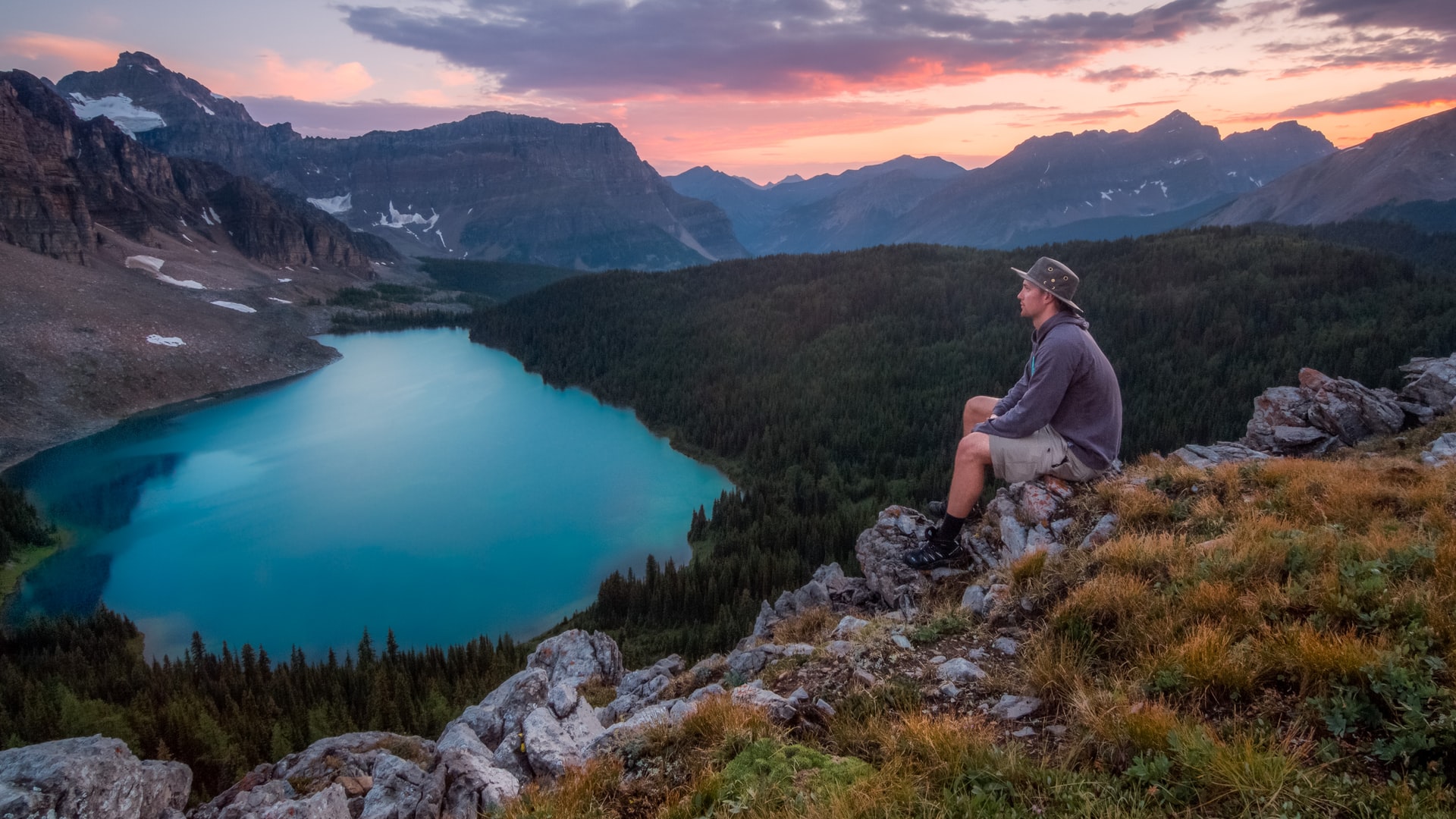
Photo by Kalen Emsley on Unsplash
Landscape photography accessories help make capturing beautiful images a little or a lot easier. Your skill level is what matters the most, then the quality of your main landscape photography gear, the camera and lens.
After those things, the other stuff adds to the ease of your landscape photography, or gives you a capability over your basic gear, or allows you to accomplish something special.
Camera and Lens
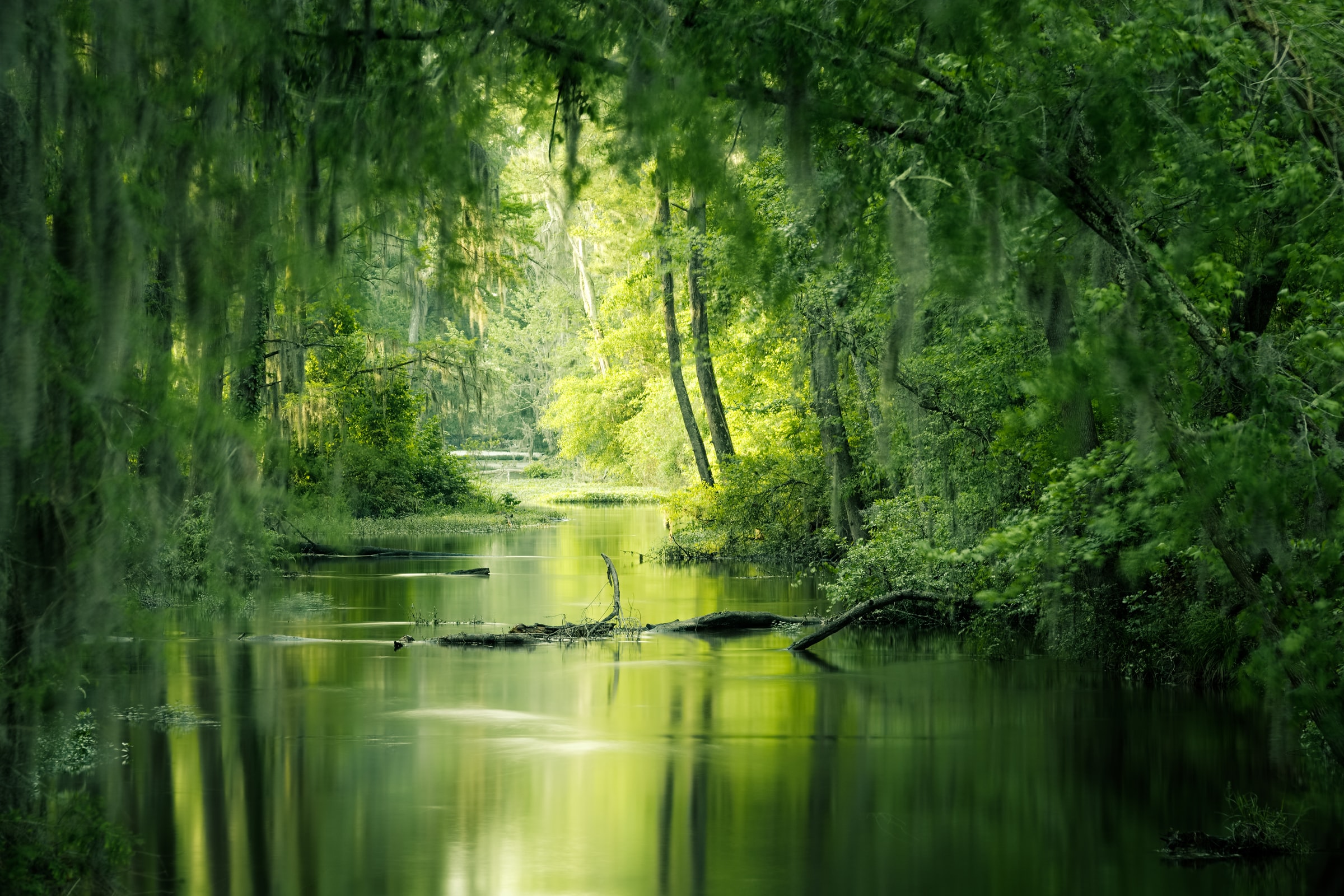
Photo by Nils Leonhardt on Unsplash
These two items are the core pieces of your landscape photography gear. Whatever you are currently using and comfortable with is a good choice. If you are near time for an upgrade, there are some qualities and features you should consider.
Entry-level cameras, like the Canon EOS Rebel SL3 are fantastic, and pro-level cameras, like the Nikon Z7, are amazingly complete tools, but there’s a level or two of cameras in between I like for outdoor and landscape photography. I’ll call them enthusiast and prosumer cameras.
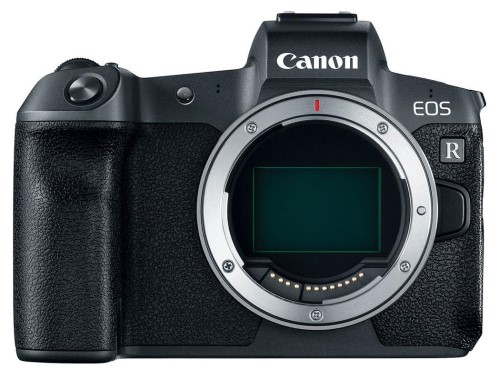
While being smaller, lighter, and less expensive than top-of-the-line pro models, these camera types add features, capabilities, and quality above the entry-level cameras. Two prime considerations are useful functions that are easy to access and more durable and rugged construction. Examples of enthusiast and prosumer cameras include the Nikon D5600, the Canon EOS R (shown above), and Sony a6400.
Along with that, the lenses that are a step up from kit lenses have the same considerations as the landscape photography camera choices. In the video above, I talk about three of my favorite landscape lenses. My choices are more expensive, pro-level lenses, but you can get a good idea of features and ideal focal lengths to look for that fit your budget.
After the camera and lens is chosen, I have three prime categories of landscape photography gear and several other landscape photography accessories I prefer.
Recommended Photography Reading
- National Geographic Photo Basics: The Ultimate Beginner's Guide to Great Photography
- Photography: The Definitive Visual History
- Read This if You Want to Take Great Photographs
You Need a Great Tripod
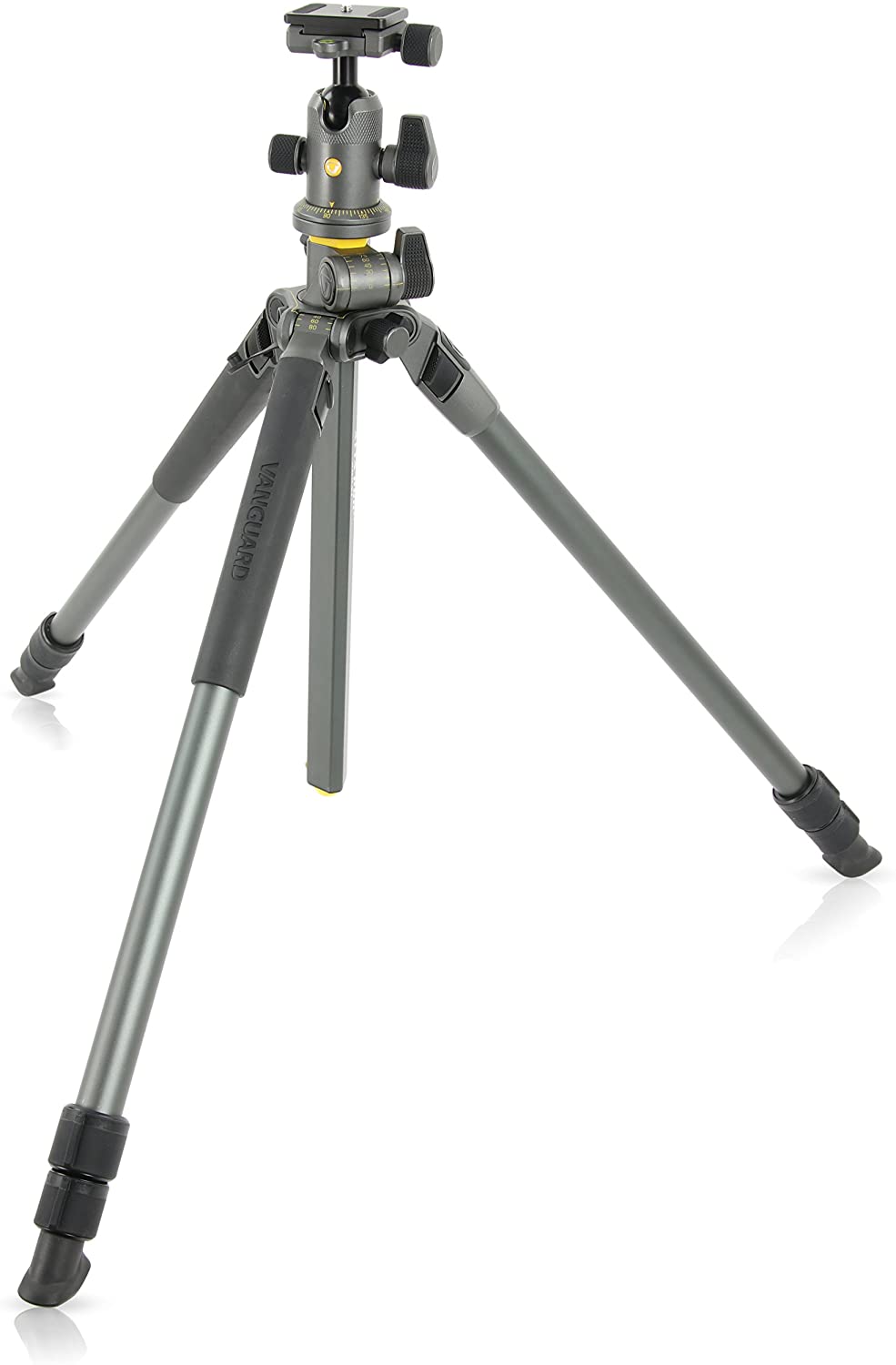
A great tripod is on my short list of must-have landscape photography accessories. In some photo situations, it’s absolutely vital to have one you can use with ease and that you can trust with your camera and lens.
My criteria for an outdoor use tripod are sturdiness, portability, and versatility. Sturdiness is listed first because if I’m going to go through the effort to have a tripod in my landscape photography gear, it better do the job I need it for.
Portability and versatility will make it easy to carry out into the field and give me some extra options. The Vanguard Alta Pro 2+ 263AB 100 aluminum tripod with Alta BH-100 ball head is one of the most versatile and study tripods in a moderate price range. Extremely sturdy, the multi angle center column is what really makes this tripod stand out as great landscape photography gear.
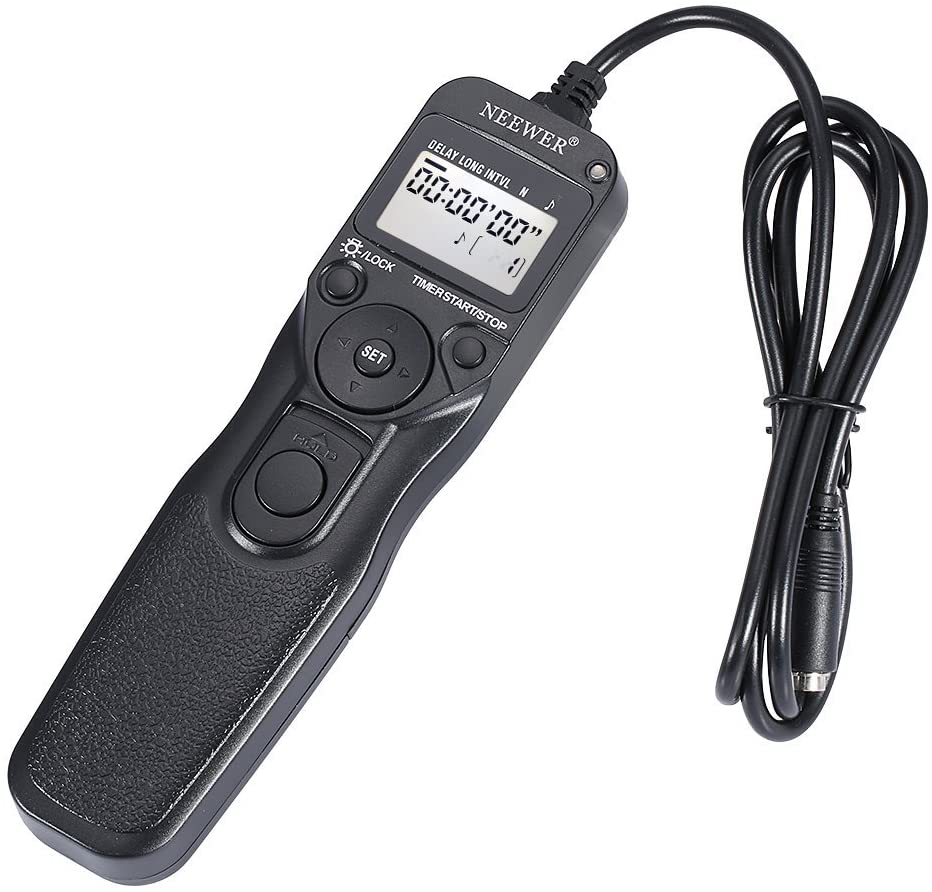
Along with a tripod, add in a remote release, wired or wireless. This will increase the stability of the camera on the tripod during the exposure since you won’t need to touch the camera to take the picture.
Learn More:
- Camera Bags For Every Kind Of Adventure
- Five Things You Need to Know About Tripods Before You Buy One
The Right Filters
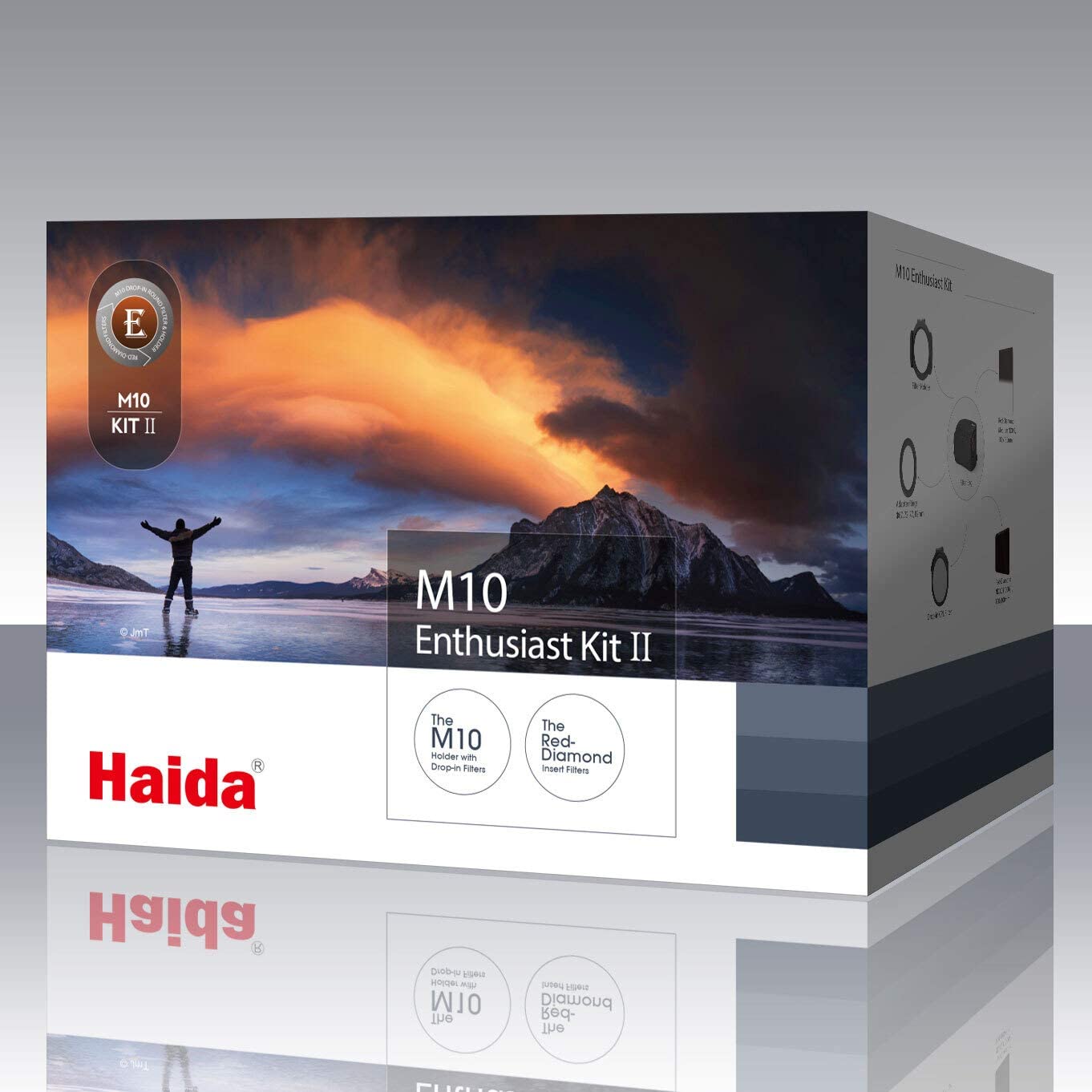
Three filters are in the prime category for must-have landscape photography filters. C-POL, ND, and GND.
Circular polarizer (C-POL) filters remove reflections, deepen colors, and adjust contrast for capturing outstanding landscape photography images. Neutral density (ND) and graduated neutral density (GND) filters give us the capacity to tame the extremes of exposure variables within our scenes.
A filter system such as the Haida M10 Enthusiast Filter Kit II has a filter holder and lens adapters plus the C-POL, ND, and GND filters most desired by landscape photographers.
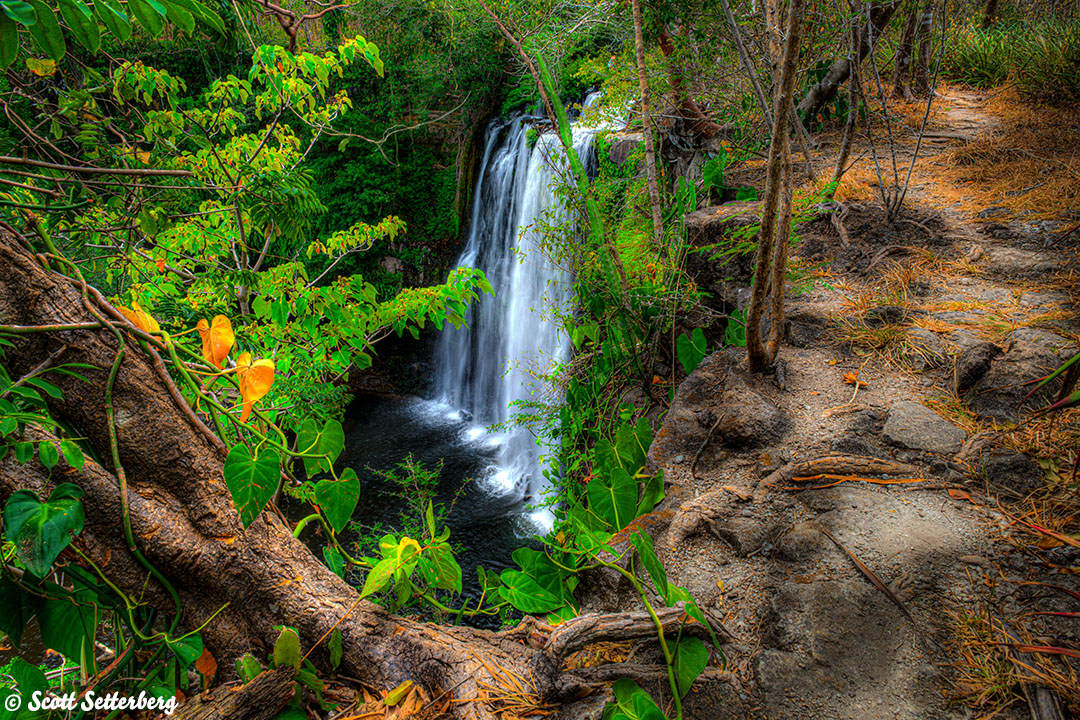
Editor's Tip: Having the right gear for landscape photography is just one part of becoming a better photographer. You also need to learn new skills, practice what you learn, and get feedback on the images you create. A great way to accomplish all of these tasks is on a photography tour! ColorTexturePhotoTours, led by Scott Setterberg, offers all-inclusive packages that put you in beautiful settings where you can develop your photography skills in a small-group setting. You get plenty of one-on-one time with Scott, opportunities to share your photos and get feedback from the group, and enjoy beautiful accommodations, fine food, massage therapy, and many other amenities. Visit ColorTexturePhotoTours today to see what your next photography adventure will look like!
A Protective and Efficient Bag
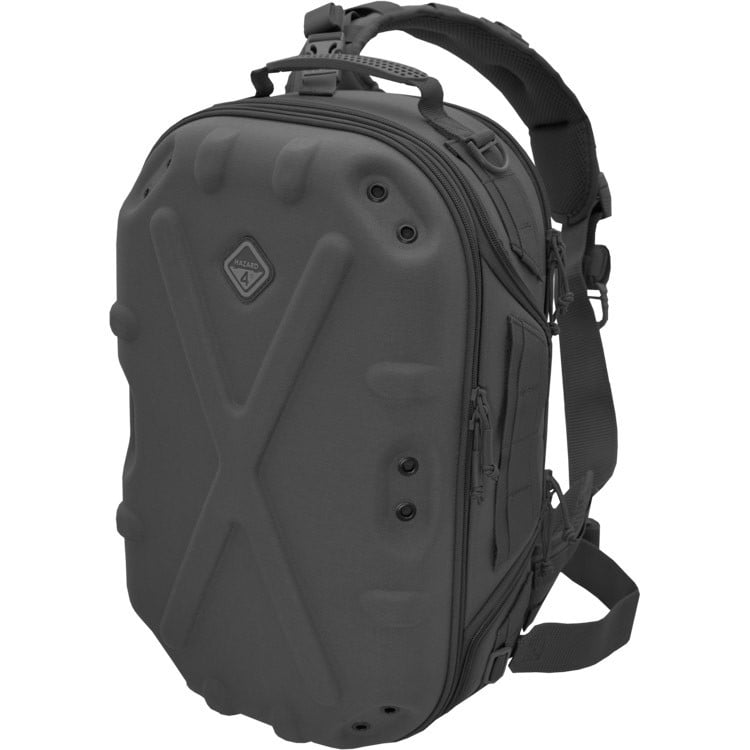
The outdoors can be rough on a camera. Just look at what it does to your shoes! The best landscape photography camera bag will combine rugged protection for your landscape photography gear with making it easy to get at your camera when you’re ready to take a photo.
One of my favorite bags for carrying my cameras, lenses, and the rest of my landscape photography accessories is the Blastwall™ sling pack camera bag from Hazard 4®, manufacturer of extreme use tactical gear.
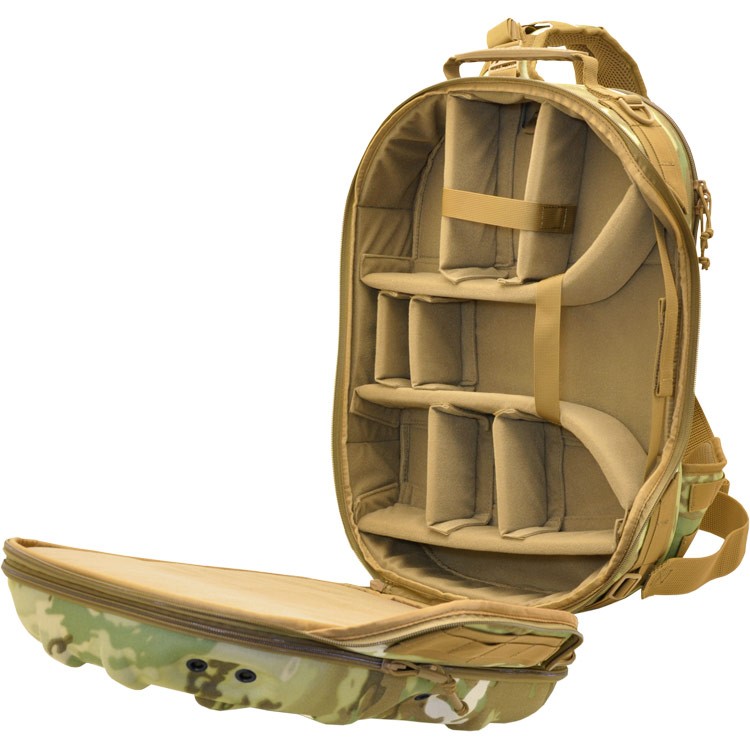
It is a sling pack design, comfortable to carry and convenient to access as needed. Lightweight shell construction and convertible pads for gear protection with Hardpoint® hardware and also strap rests for attaching tie-downs, straps for a tripod, and other extra items. It’s made so that nothing blows in the wind during extreme weather or riding on a motorbike or ATV.
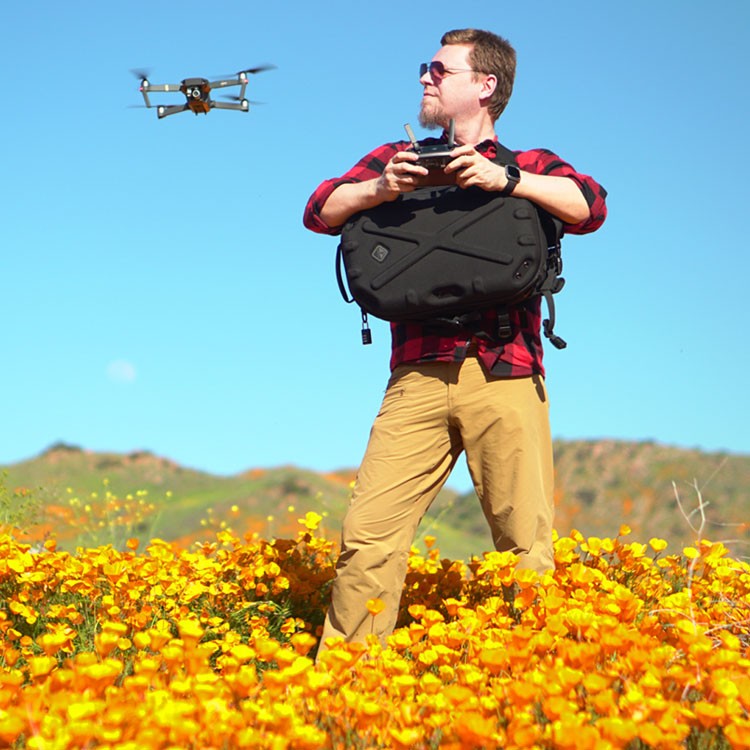
The Blastwall™ features multiple MOLLE webbing on the sides and main strap along with a patented roto-locking buckle keeps the sling pack secure. Heavy duty construction features YKK zippers, real Cordura® 1000D nylon or 600D Polyester and reinforcing stitch patterns for added durability. There’s even space for a laptop computer or a water bladder for hiking refreshment.
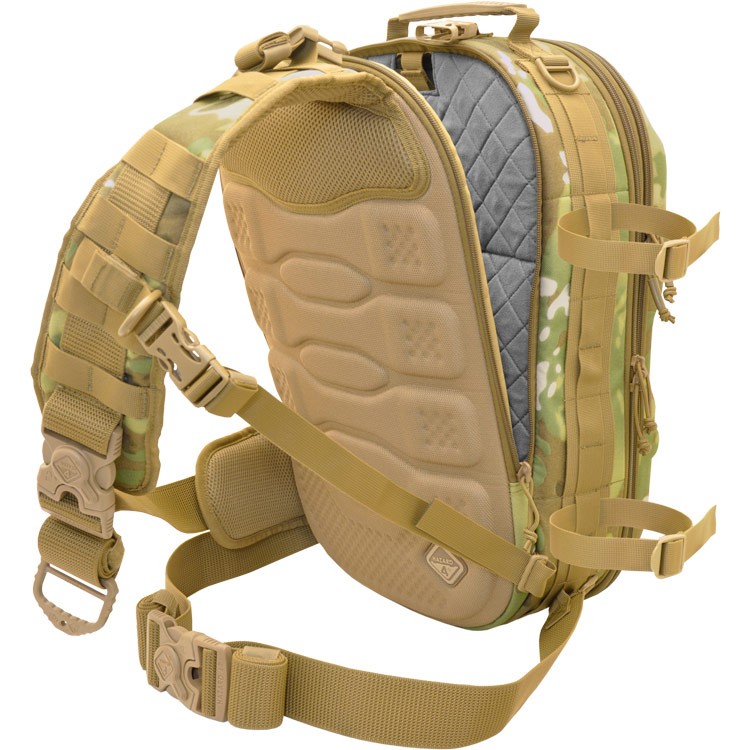
It’s one of the best extreme use outdoors and landscape photography camera bags to protect your camera gear and give you rapid access.
The next few items either solve specific problems or make landscape photography more convenient and pleasurable.
Bubble Level
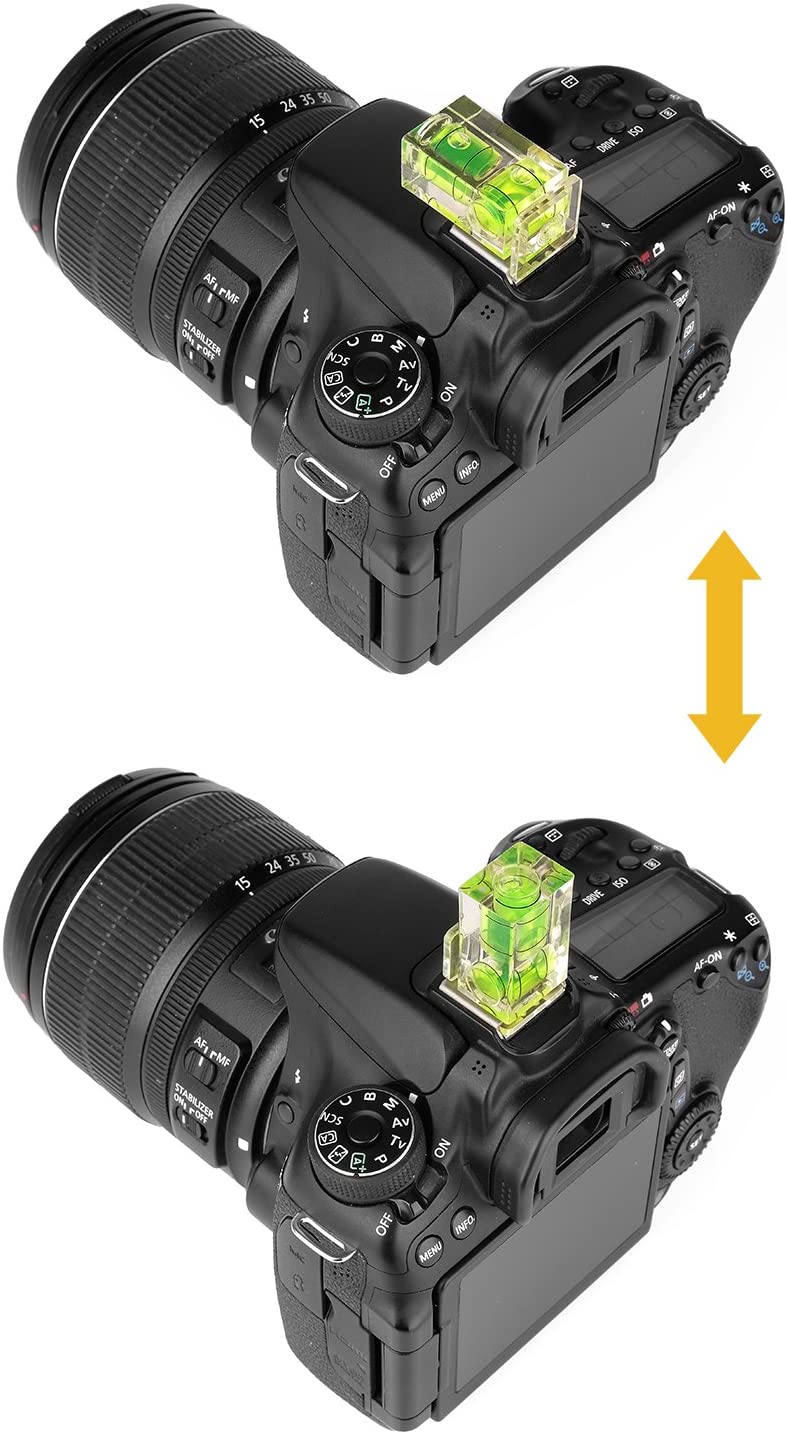
Some cameras have this as a built in function, for others you will need an external level. Especially when using ultra wide lenses or attempting a limited panorama, keeping the camera level will avoid odd and uncomfortable viewer apparent perspectives.
If your camera has this function, find out how to turn it on. It may be buried in a deep menu tree. If not, or if you prefer an external visual aid, a hot shoe mounted bubble level like the ChromLives Hot Shoe Bubble Level multi pack is very useful.
It has two different styles of bubble or spirit levels for adjusting your camera with a wide lens while on a tripod. It’s cheap as pocket change and you can keep one in your pocket, making it a must-have landscape photography accessories choice.
Extra Batteries or a Battery Pack
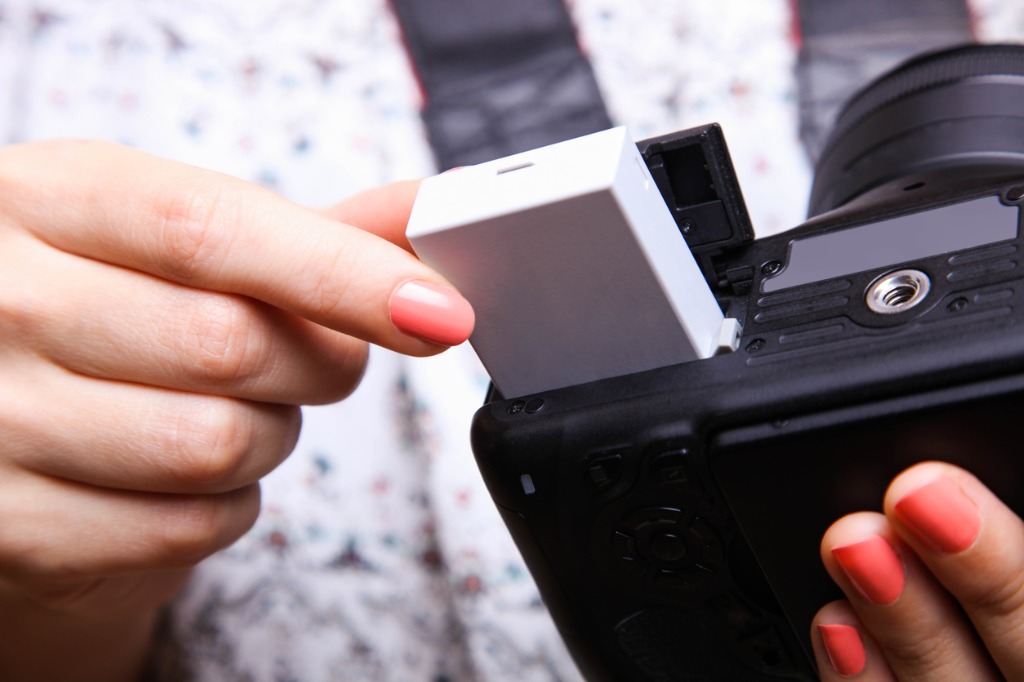
photo by Alexthq via iStock
Some photographers prefer to carry extra charged up batteries in their camera bag, while others like having a camera mounted battery pack with extra batteries in that. Either way, the intent is to make certain you don’t run out of battery power before your photo trek is over.
Because if you run out of power, your photo trek IS over. Which is why extra batteries are must-have landscape photography accessories.
Extra Memory Cards
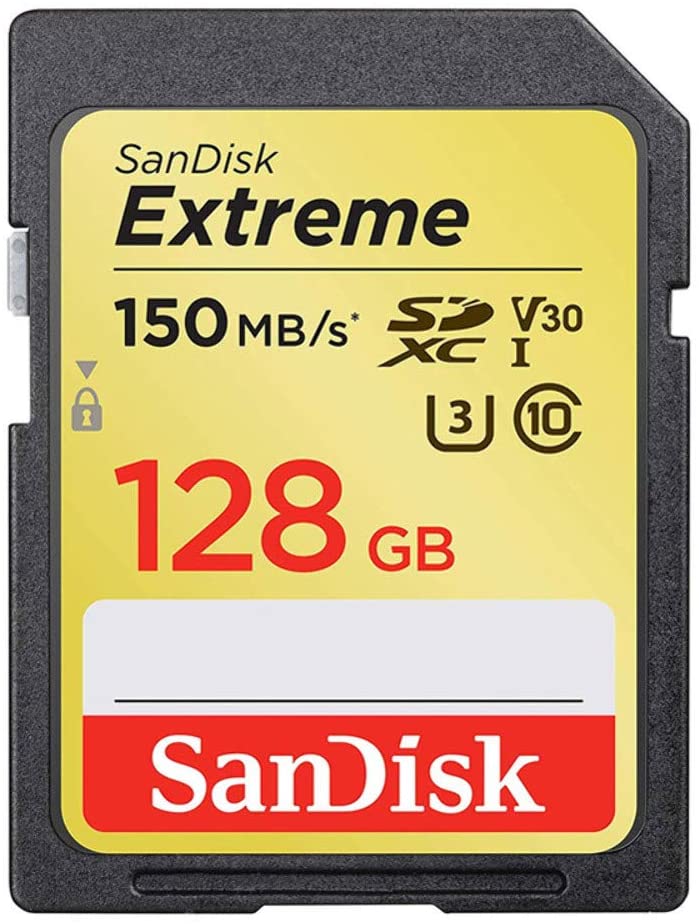
Same reasoning as with batteries, once you’re out of a place to keep your images, you’re done. This is the equivalent of running out of film.
Most of the enthusiast and prosumer cameras use SD cards. Options are a couple of high capacity cards, or several smaller cards. Either way, extra memory cards are must-have landscape photography accessories.
What’s In Your Bag?
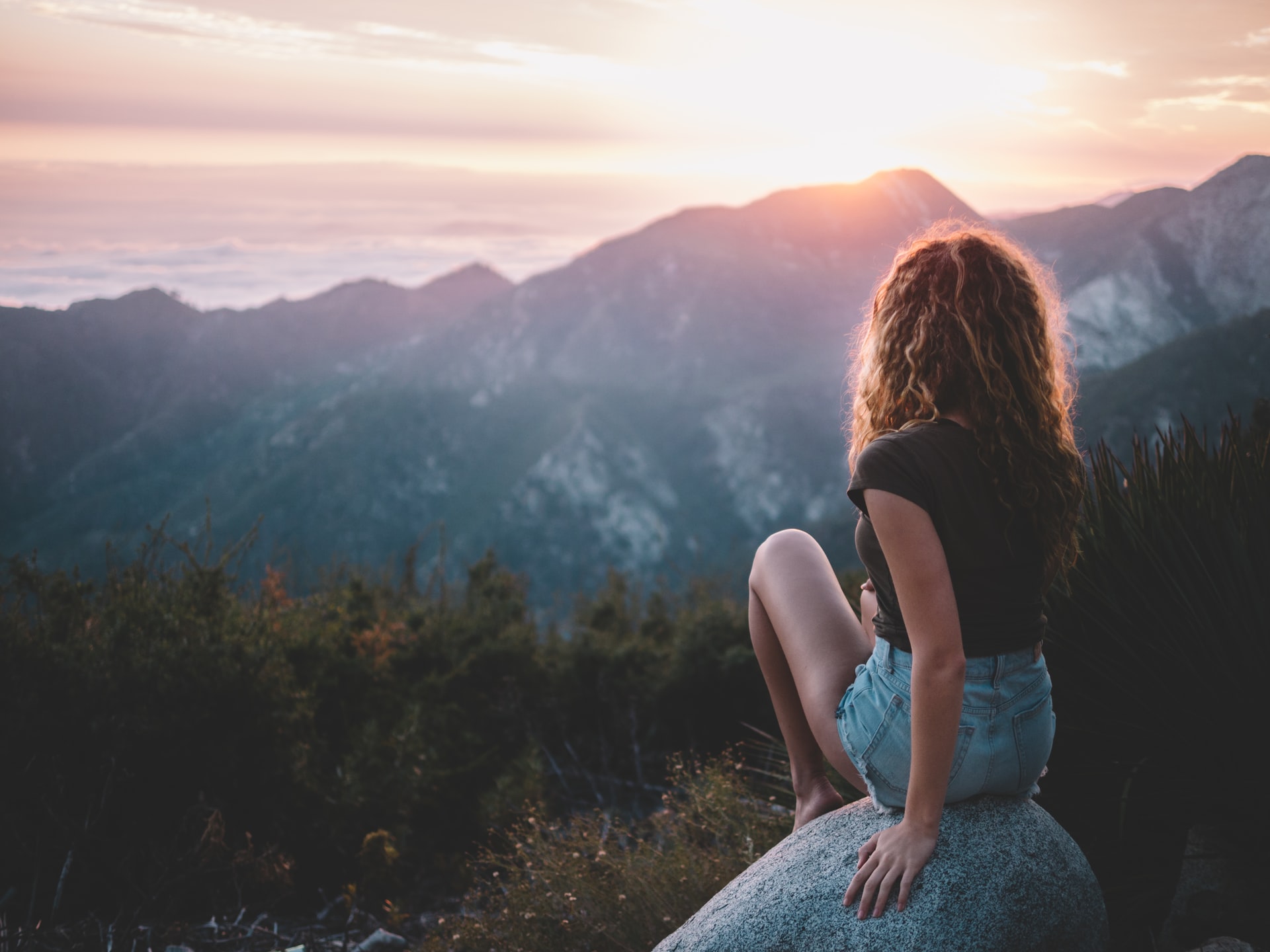
Photo by Avi Richards on Unsplash
The landscape photographer has a great job. Outdoors, taking pictures. What could be better? These landscape photography accessories can make that endeavor easier, more productive and more fun. Let me know what’s in your bag.
Learn More:
We Recommend
NASA's New InSight Lander Beams Back Its First Photo of Mars
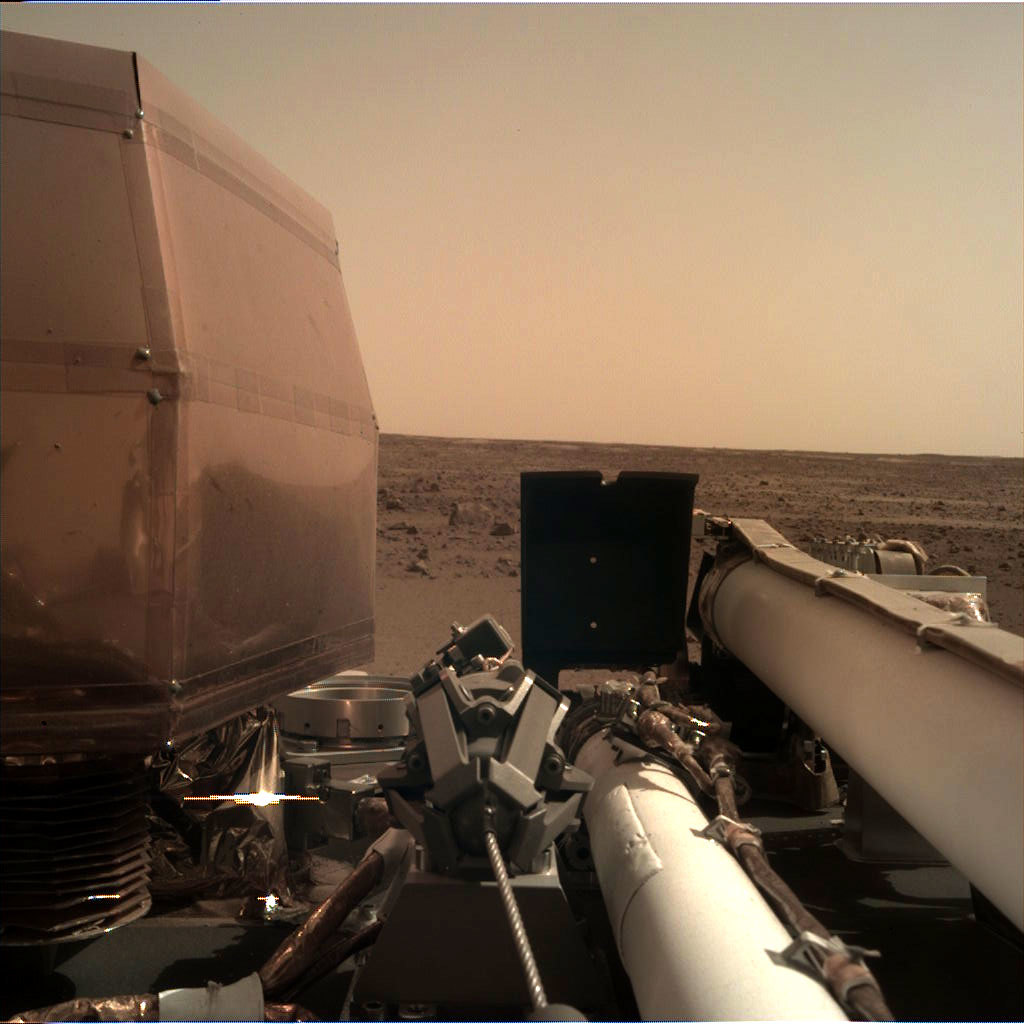 Image Credit: NASA/JPL-Caltech
Image Credit: NASA/JPL-Caltech
It's not like Mars hasn't gotten a lot of attention from NASA over the years - there have been four previous rover missions to the Red Planet - but there's a new kid on the block now in the form of the NASA InSight Lander.
InSight touched down yesterday after a perilous journey of 33.9 million miles.
The first clear image taken by InSight was tweeted out just hours later:
There’s a quiet beauty here. Looking forward to exploring my new home. #MarsLanding pic.twitter.com/mfClzsfJJr
— NASAInSight (@NASAInSight) November 27, 2018
As you can see, the Martian surface looks, well, inviting!
There's no dust storm at the moment, and the quiet tranquility seems worthy of exploring.
Speaking of exploring, InSight landed in the Elysium Planitia, a wide plane on the equator of Mars where the lander will explore its surroundings, listen for "Marsquakes," and try to determine how many meteors strike the Red Planet.
For a detailed description of what happens next for InSight, check out this article by CNET.
 Image courtesy of NASA/Jet Propulsion Laboratory
Image courtesy of NASA/Jet Propulsion Laboratory
Even though the Mars Curiosity Rover has been sending back breathtaking images for the last six years (like the one above), it's still exciting to have a fresh set of eyes in a different area of Mars.
I, for one, can't wait to see what sort of remarkable photos InSight is able to take.
And that got me thinking...
If I were to go to Mars, what kind of gear would I take?
Learn More:
- This Breathtaking New Photo Shows the Surface of Mars Bathed in Sunlight
- 9 Breathtaking Space Photos That Will Make You Say WOW
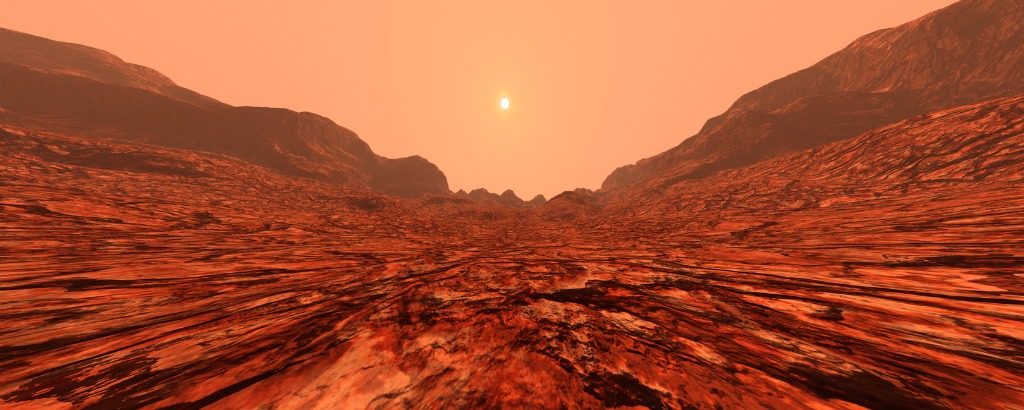 Image Credit: Vac1 via iStock
Image Credit: Vac1 via iStock
I'm pretty fond of my Nikon D850, though I imagine the powers that be would want lighter weight gear.
Perhaps a Sony a7R III instead??
I think the toughest choice would be what lenses to take.
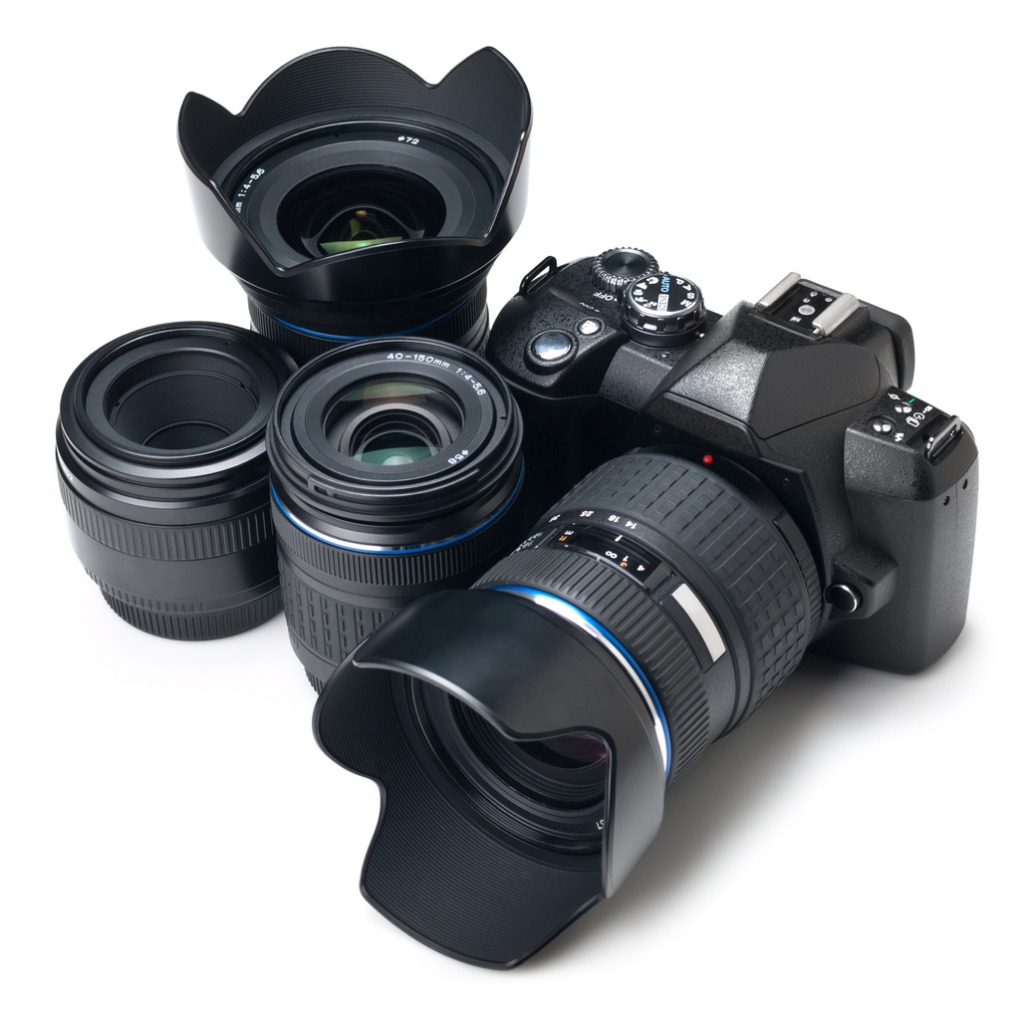 Image Credit: xxmmxx via iStock
Image Credit: xxmmxx via iStock
If I rocked the Sony, a 24-70mm f/2.8 would be nice, but I'd also want a 70-200mm zoom and a couple of primes as well - maybe something like a 24mm to get sweeping shots of the Martian surface.
Whatever the gear one would use, how cool would it be to walk around Mars and take photos?!
Talk about the photography trip of a lifetime!
Stay tuned for more details about InSight's explorations and for updates about the photos NASA's new "photographer" beams back. In the meantime, be sure to visit the NASA InSight mission page to see what Insight is up to.
Learn More:
- Five Years Later, the Mars Curiosity Rover is Still Taking Some Great Photos
- How the Mars Rover Camera Has Evolved Over the Years
Via CNET
We Recommend
Nikon D850 vs Sony A7R III: Which One Wins an Epic Shootout?
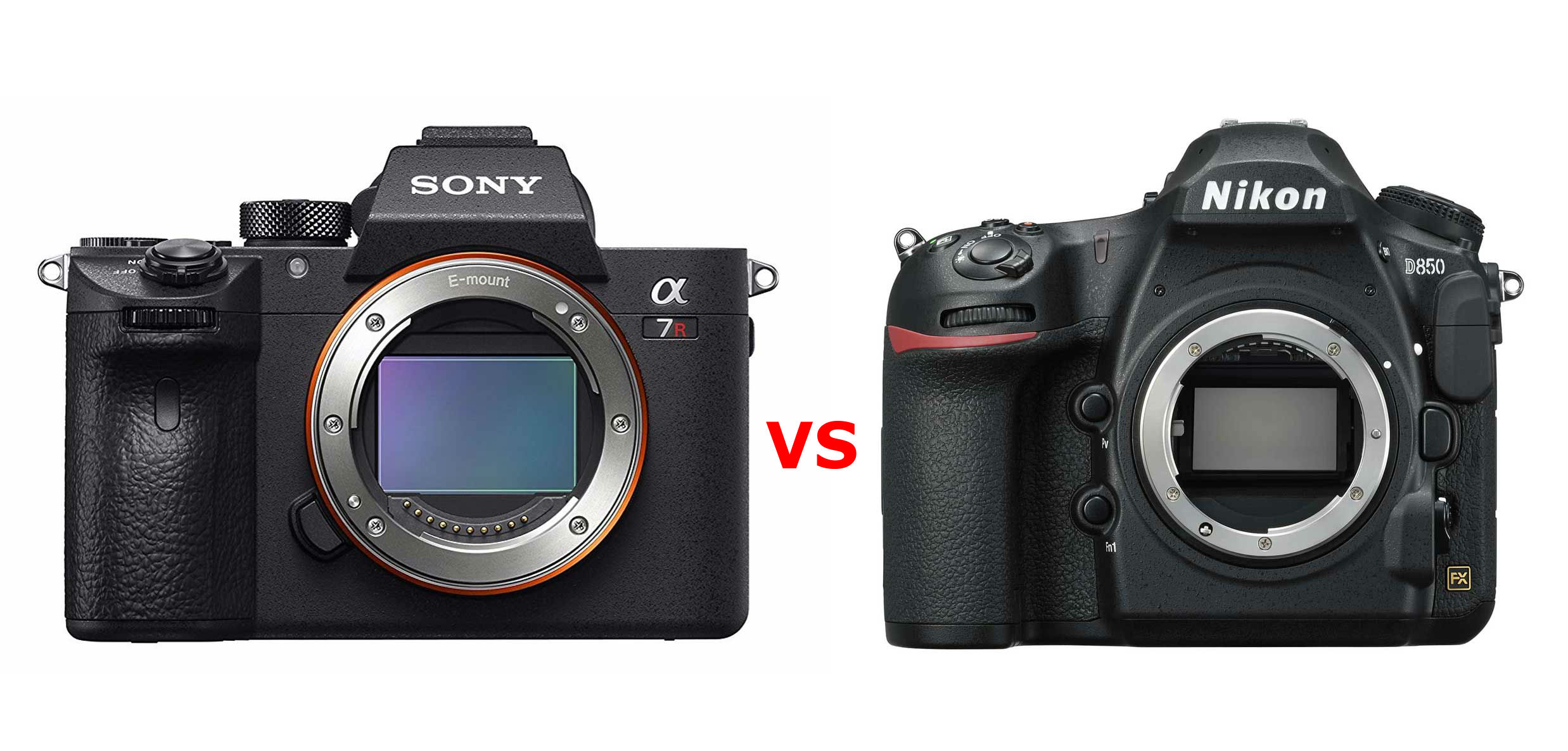
Whether you prefer DSLRs or mirrorless cameras, there are plenty of choices on the market today that will serve you well.
Better still, with Canon, Nikon, Sony, and other camera manufacturers locked in an epic battle to outdo one another, we get the benefit of having some truly epic cameras to choose from.
When it comes to epic cameras, there's none better than the Nikon D850 and the Sony A7R III.
The question is, which one is best? You can check out Sony A7RIII vs Nikon D850 post done by PhotographyTalk.com.
Essential Specs: Nikon D850 vs Sony A7R III
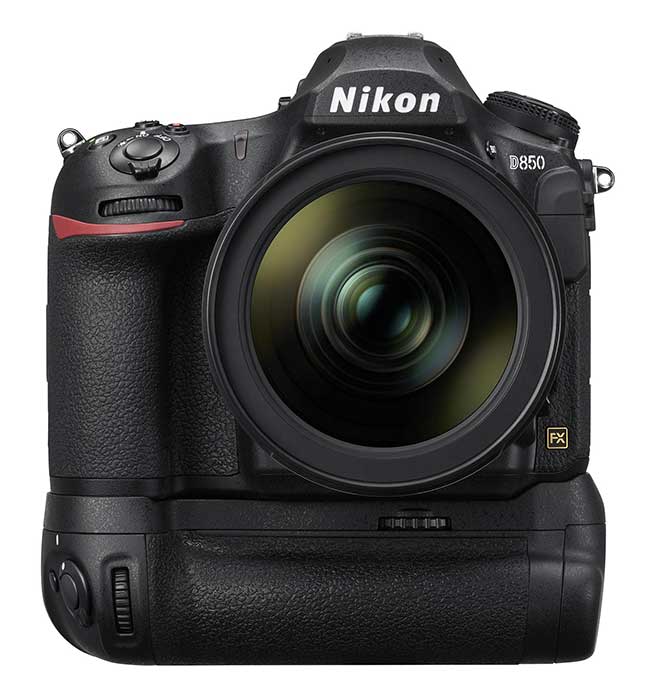
Let's begin with the Nikon D850:
- 45.7-megapixel BSI CMOS FX sensor
- Expeed 5 image processor
- 153-point autofocus system
- ISO range 64-25,600 (expandable to 102,400)
- 7fps burst shooting speed (9fps with optional battery grip)
- 4K video at 30fps and 1080p video at 120fps
The first thing you notice is the 45.7-megapixel back-illuminated sensor.
Though it doesn't have the same resolution as, say, the Canon 5DS or 5DS R, what it does have is virtually unmatched image quality.
In fact, the sensor in the Nikon D850 was the first ever to get a perfect score from DxOMark testing.
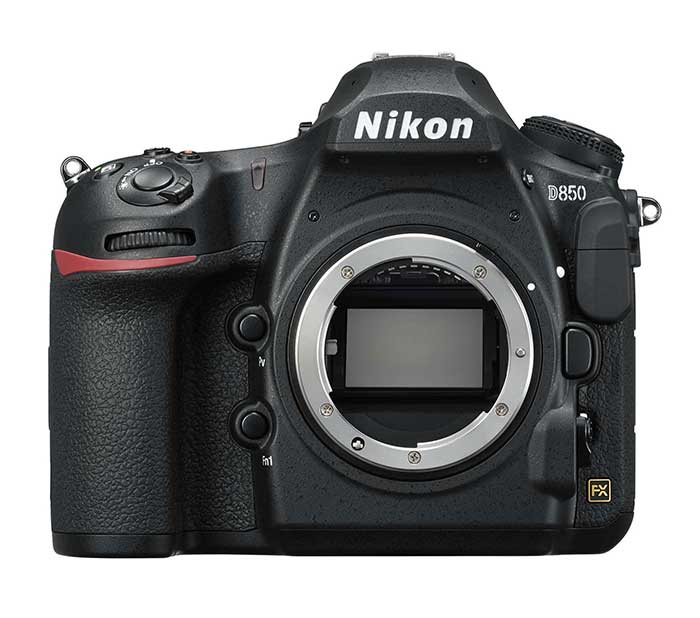
Not only does the D850 have an excellent sensor, but paired with the Expeed 5 image processor, you get ultra-fast performance.
Speaking of fast performance, the autofocus system in the D850 has a number of upgrades from its predecessor, the Nikon D810.
Editor's Tip: Looking to upgrade your camera without breaking the bank? See how far you can stretch your dollar.
For starters, there's more autofocus points - 153 in all - and they have improved detection range, too.
Add to that the fact that this camera has 7fps shooting capabilities that expand to 9fps with an optional battery grip, a native ISO range of 100-25,600, and robust 4K video capabilities, and you have the makings of a camera that was purpose-built for photographing and filming subjects of all kinds.

And now, the Sony's basic specs:
- 42.4-megapixel BSI CMOS full frame sensor
- BIONZ X image processor
- 399-point autofocus system
- ISO range 50-32,000 (expandable to 102,400)
- 10fps burst shooting speed
- 4K video at 24fps or 30fps and 1080p at 120fps
As good as the D850's sensor is, Sony found a way to match it.
Though the megapixel count is slightly less, the Sony's sensor is also back-illuminated to produce incredible image quality.
In fact, this sensor also earned a perfect score from DxOMark, so at least on the image quality front, these cameras couldn't be better matched.
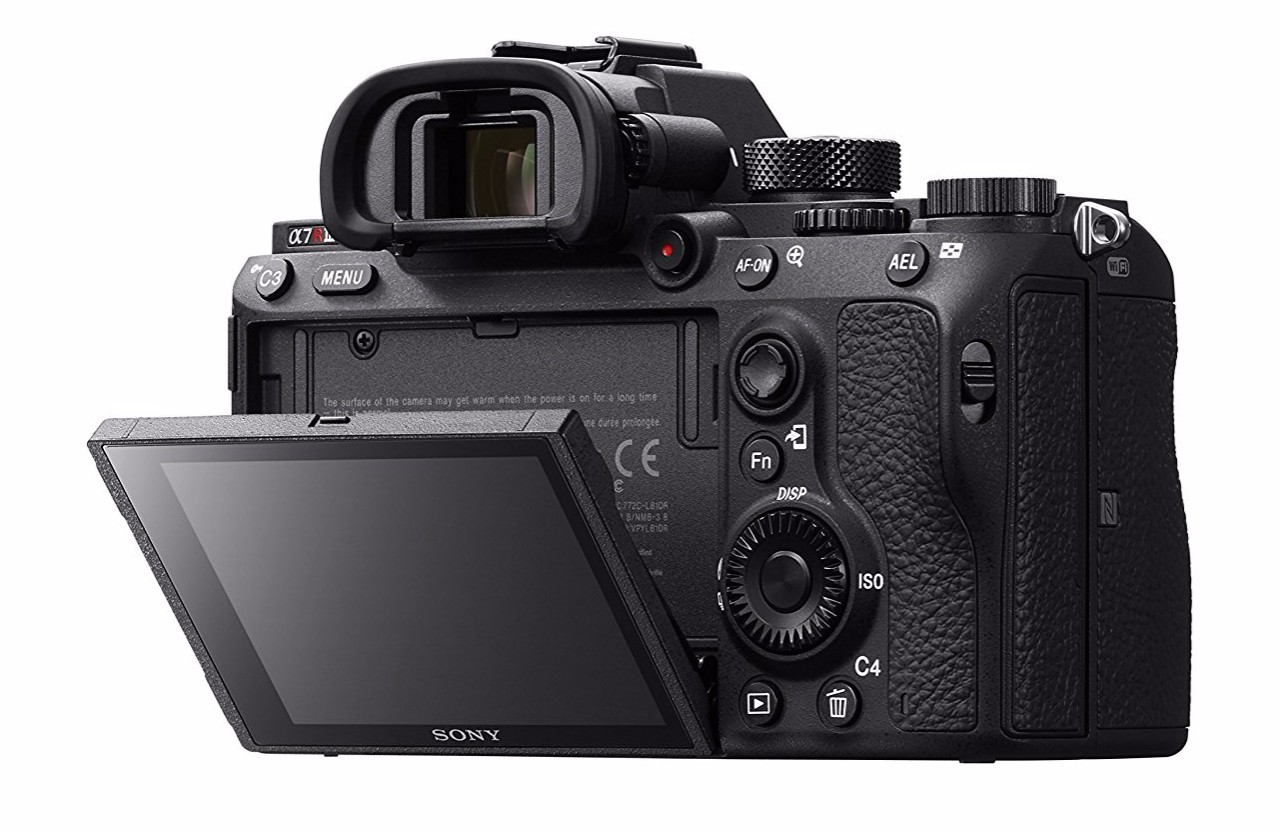
The Sony more than matches up with the D850 in other areas as well.
In fact, the Sony's 399-point autofocus system is even more capable, with more than twice the AF points.
It actually has 399 phase-detect points and 425 contrast-detect points, which, according to Sony, makes it twice as fast as the A7R II when shooting in low-light situations. The ISO range of 50-32,000 (expandable to 102,400) certainly helps in that department as well.
It should also be noted that the A7R III has a ludicrously fast 10fps burst speed.
Not only that, you can shoot at 10fps in RAW or JPEG while utilizing autofocus tracking at the same time.
With similar 4K video shooting capabilities as the D850, this is an equally good camera for tackling still photography and videography.
Breaking Down the Specs
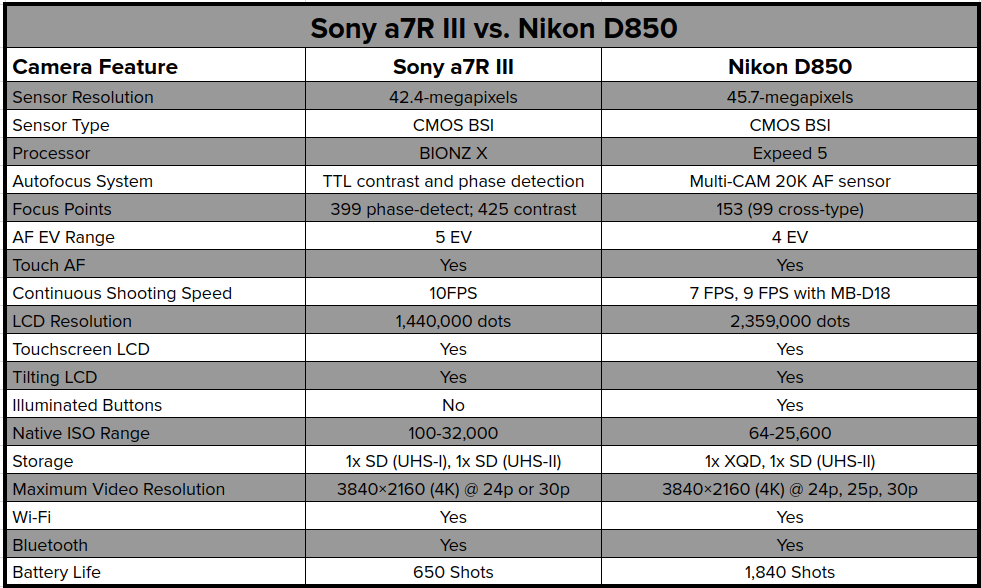
So, we know both these cameras have superb back-illuminated full frame sensors. We also know that both cameras have lightning-fast processors.
There are other similarities as well.
Both cameras offer similar autofocus EV range. Both cameras also have touch-enabled tilting LCDs with touch autofocus. Features like Wi-Fi, Bluetooth, weather-sealing, and ISO range are similar as well. And provided the D850 is equipped with an optional battery grip, the burst shooting speed is close, too.
The Sony A7R III and Nikon D850 have similar color depth and dynamic range, similar sensor pixel areas, microphone and headphone ports, NFC, and smartphone remote control capabilities.
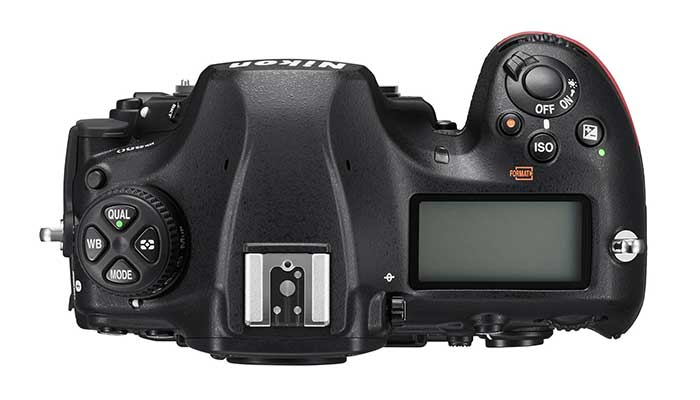
But there are plenty of differences between the cameras that might help distinguish which is best.
Most obviously, there's a massive difference in the size of these cameras.
The D850 weighs in at 2.24 pounds and measures 5.75 x 4.88 x 3.11 inches.
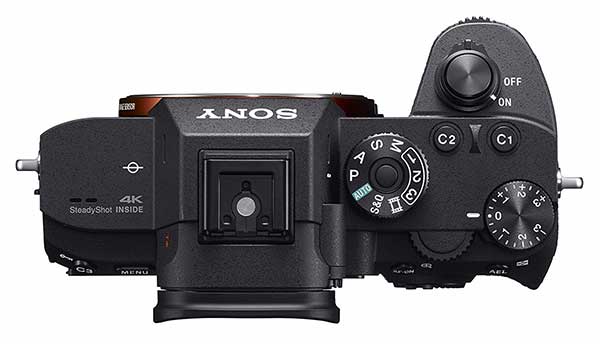
The A7R III, on the other hand, weighs just 1.45 pounds and measures 5 x 3.78 x 2.91 inches.
Clearly, as a mirrorless camera, the A7R III is going to be a smaller rig than the D850, but the difference is quite significant.
If working fast and light is a priority, the clear winner here is the A7R III.
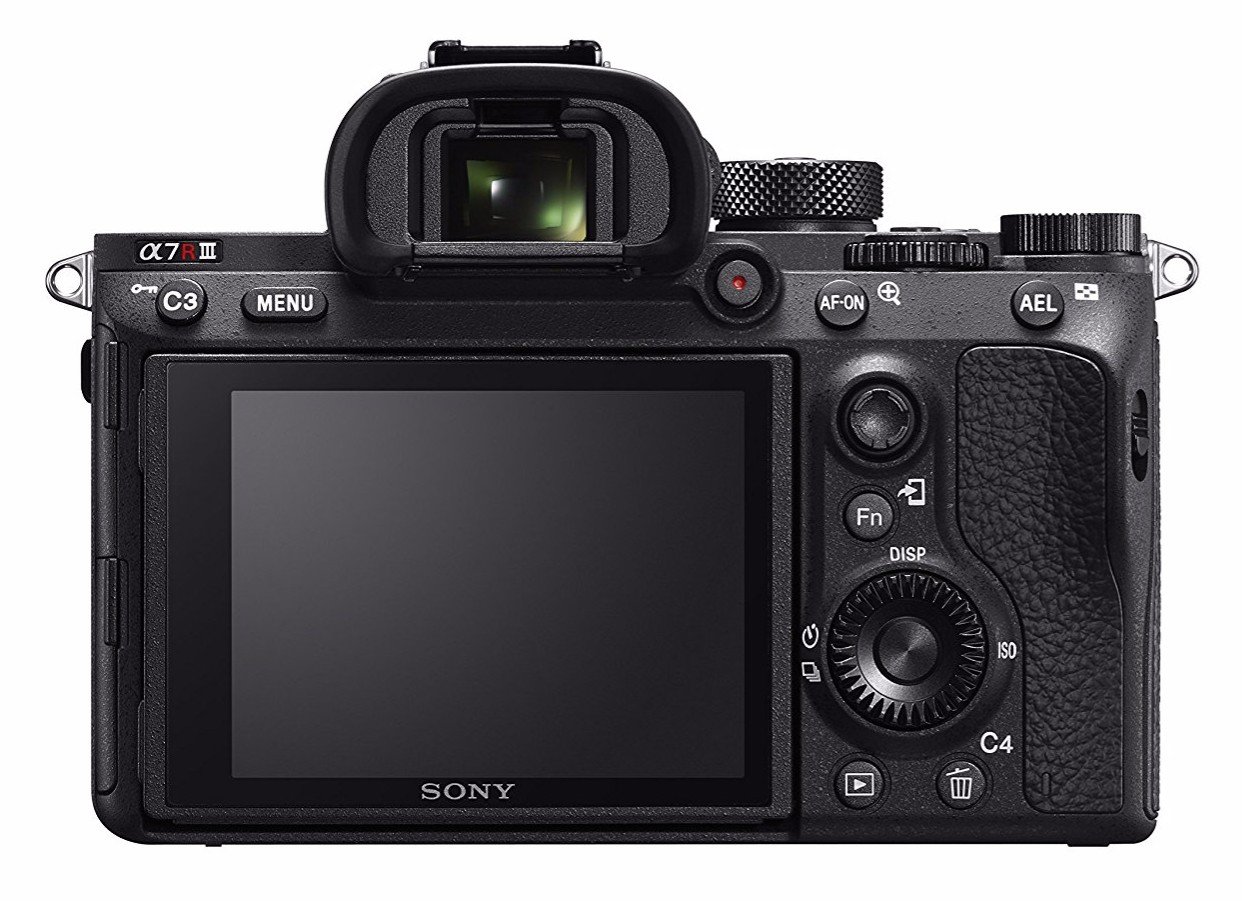
Another major difference between these two cameras is the viewfinder.
On the D850, you'll find an optical viewfinder that affords you a bright, clear view of the subject with zero lag, a 0.75x magnification, and a 100 percent field of view.
On the A7R III, you'll find an OLED electronic viewfinder with a magnification of 0.78x and a 100 percent field of view.
Editor's Tip: Not happy with your photography skills? Taking a class or participating in a photography adventure are great ways to develop photography skills. See what you can learn.
The major difference here is that the Sony's EVF gives you a real-time preview of the image's exposure and features like white balance and color. So, rather than pulling the camera from your eye to see those features on the LCD, you get them right in the viewfinder.
Some people love EVFs; others hate them. In this case, though, I give the A7R III the advantage.

An important, albeit less exciting feature to discuss is battery life.
Sony cameras are not known for offering you a ton of shots per charge, and the A7R III is no different. You can squeeze about 650 shots out of a single charge.
By comparison, the Nikon offers 1,840 shots per charge, so there's really no competition here.
Sure, you can add additional batteries to your bag if you opt for the Sony, but for pursuits like wildlife photography or sports photography when every moment matters, swapping out your batteries three times to get the same number of shots as the Nikon can muster with one battery might be a bit of a turn-off.
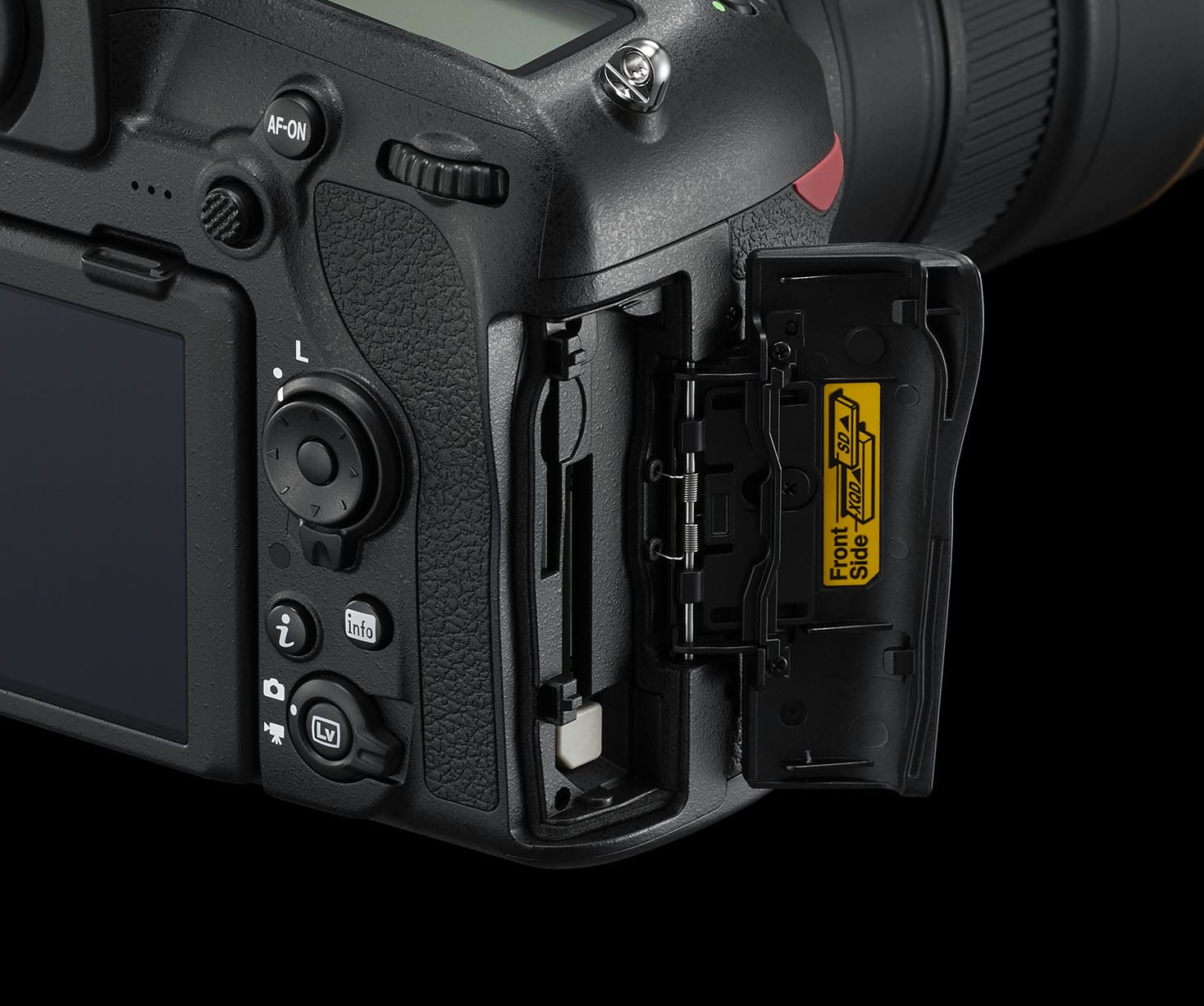
The Nikon D850 also outperforms the Sony with a couple of technological features that make taking great photos a little easier.
First, the D850 has illuminated buttons, which is obviously handy when shooting in low-light situations.
Secondly, the D850 has built-in focus stacking and built-in focus peaking as well.
And while both cameras have two storage slots, the Sony has one UHS-I and one UHS-II slot while the Nikon sports a single XQD slot and one UHS-II slot. If faster read/write speed is what you're after, the Nikon's QXD slot will certainly be appealing.
Final Thoughts
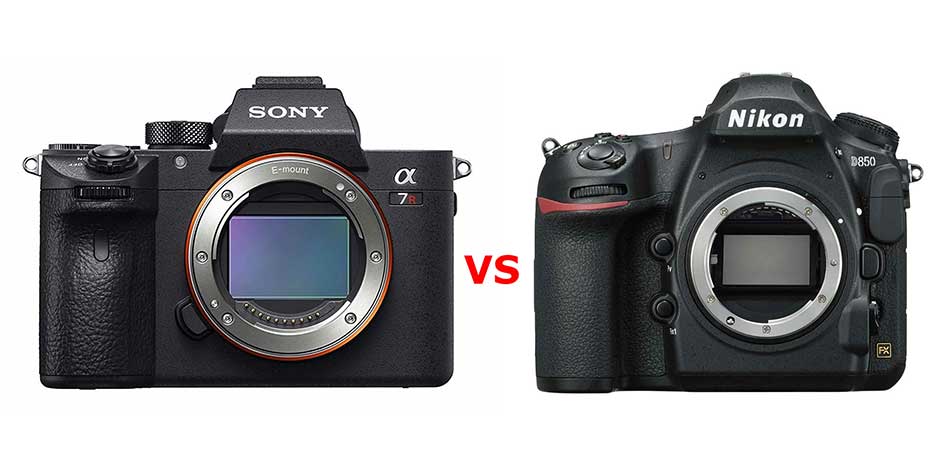
There's no mistaking that both of these cameras represent the pinnacle of modern photography technology. Either way, you're getting a fantastic, capable camera.
As with many things in photography, the decision of whether the Nikon D850 or Sony A7R III is better will likely come down to a couple of very practical factors.
First, if you're already in the Nikon or Sony environment, it makes a lot of sense to stay there.
I have a Nikon D810 (and a D800 before that, and a D750 before that...), so I bought a D850 when it was released. If I'd been in the Sony ecosystem, I'd probably have opted for the A7R III instead.
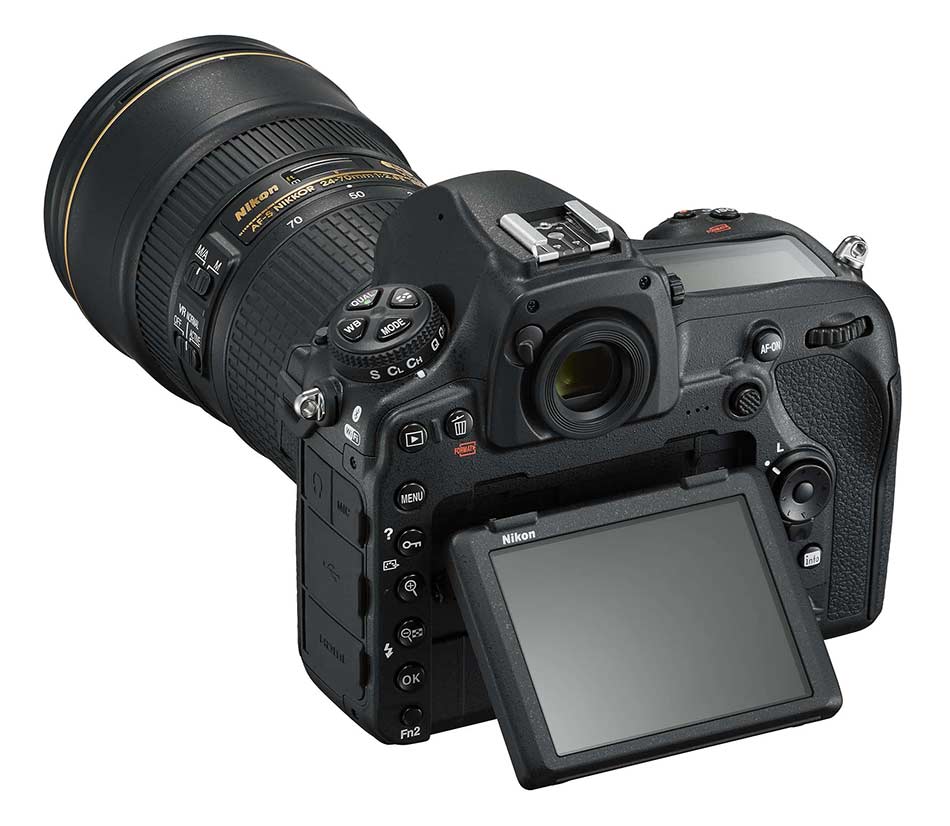
Second, I see weight and size as a factor that can sway photographers one way or the other.
If you're a studio portrait photographer, for example, and moving around a lot isn't in the cards, the bigger Nikon might be a better bet.
However, if you're a travel photographer, having the smaller A7R III could prove to be quite advantageous.
Lastly, price is always a factor. These cameras are comparably priced, with the Nikon's $3,300 price tag slightly higher than the A7R III's at $3,000.
In the end, the differences between these cameras aren't especially significant, and their shared strengths are spectacular.
My recommendation is to read up as much as you can about both cameras, watch a few YouTube reviews on each one, and ask an expert to determine what camera is best for you.
We Recommend
Nikon Z7 vs Sony a9

The Nikon Z7 and Sony a9 are among the best mirrorless cameras on the market. They both feature a full-frame sensor which is guaranteed to deliver stunning image quality. Also, they are both compact and equipped with many convenient functions that will make photography easy and fun.
Still, each of these models has its own target group. Except for both being full-frame mirrorless cameras, they do not have a lot in common. The main difference is that the Sony a9 excels at speed, while the Nikon Z7 comes with a huge resolution.
Both of these cameras are great, but each of them has certain strengths and weaknesses. Which one will do a better job for you? Find out by reading this Nikon Z7 vs Sony a9 comparison.
Nikon Z7 vs Sony a9 Specs
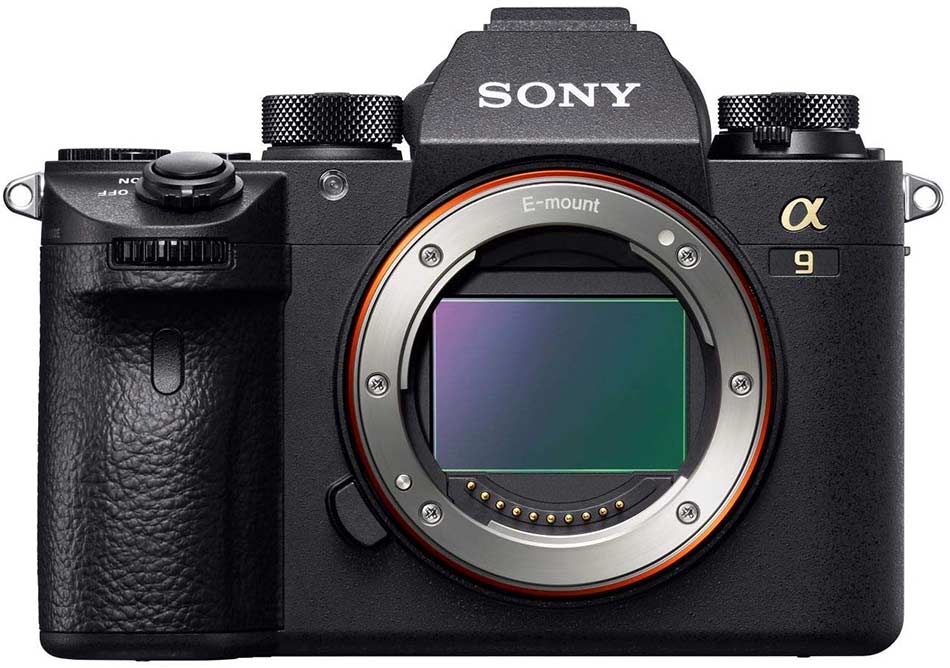
As we already mentioned, both the Sony a9 and Nikon Z7 feature a full-frame sensor. However, while the Nikon Z7 has a 45.7-megapixel sensor, the Sony a9 has “only” 24.2 megapixels.
With this being said, Nikon’s camera is certainly better if you intend to make enormous prints for billboards and such. Also, this amount of resolution is useful if you do a lot of cropping in post-processing. In all other cases, a 24.2-megapixel sensor should produce satisfying results.
Although the Nikon Z7 has more resolution, the Sony a9 uses a stacked sensor which boosts the camera’s speed, and it has larger individual pixels (5.93 vs 4.35) that have an effect on the dynamic range of the camera. Also, the a9 has an anti-aliasing filter which does a good job in removing moire from images.
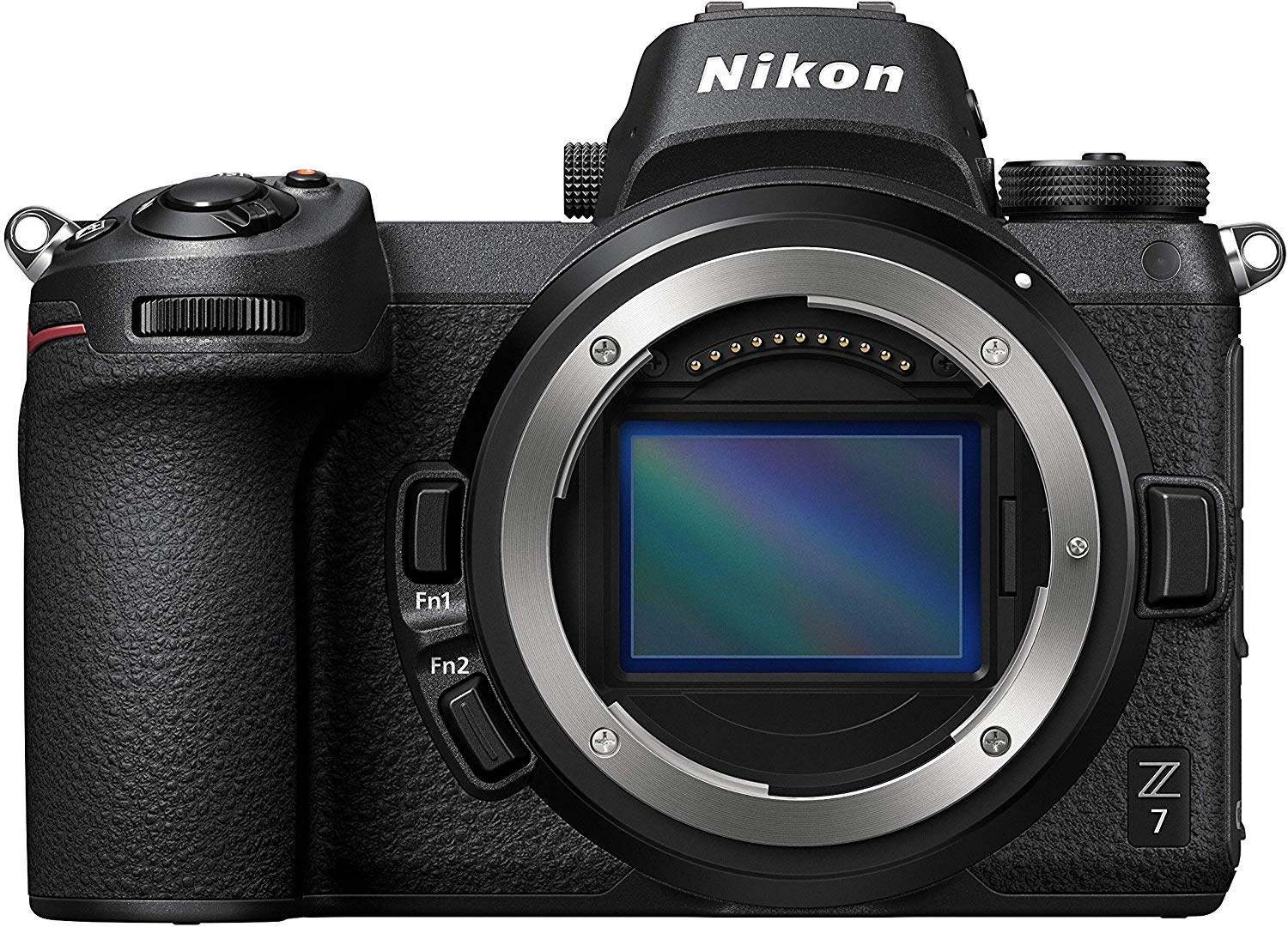
On the other hand, the lack of anti-aliasing filter increases sharpness in images produced by the Nikon Z7. Also, both cameras have a 5-axis stabilization system that will allow you to make sharp and detailed photos even while shooting handheld.
Finally, although the Nikon Z7 captures more detailed images, the Sony a9 performs better in low-light conditions. The camera has a native sensitivity range of ISO 100-51200 (expandable to ISO 50-204800), while the Z7 has an ISO range of 64 through 25600 (expandable to ISO 32-102400).
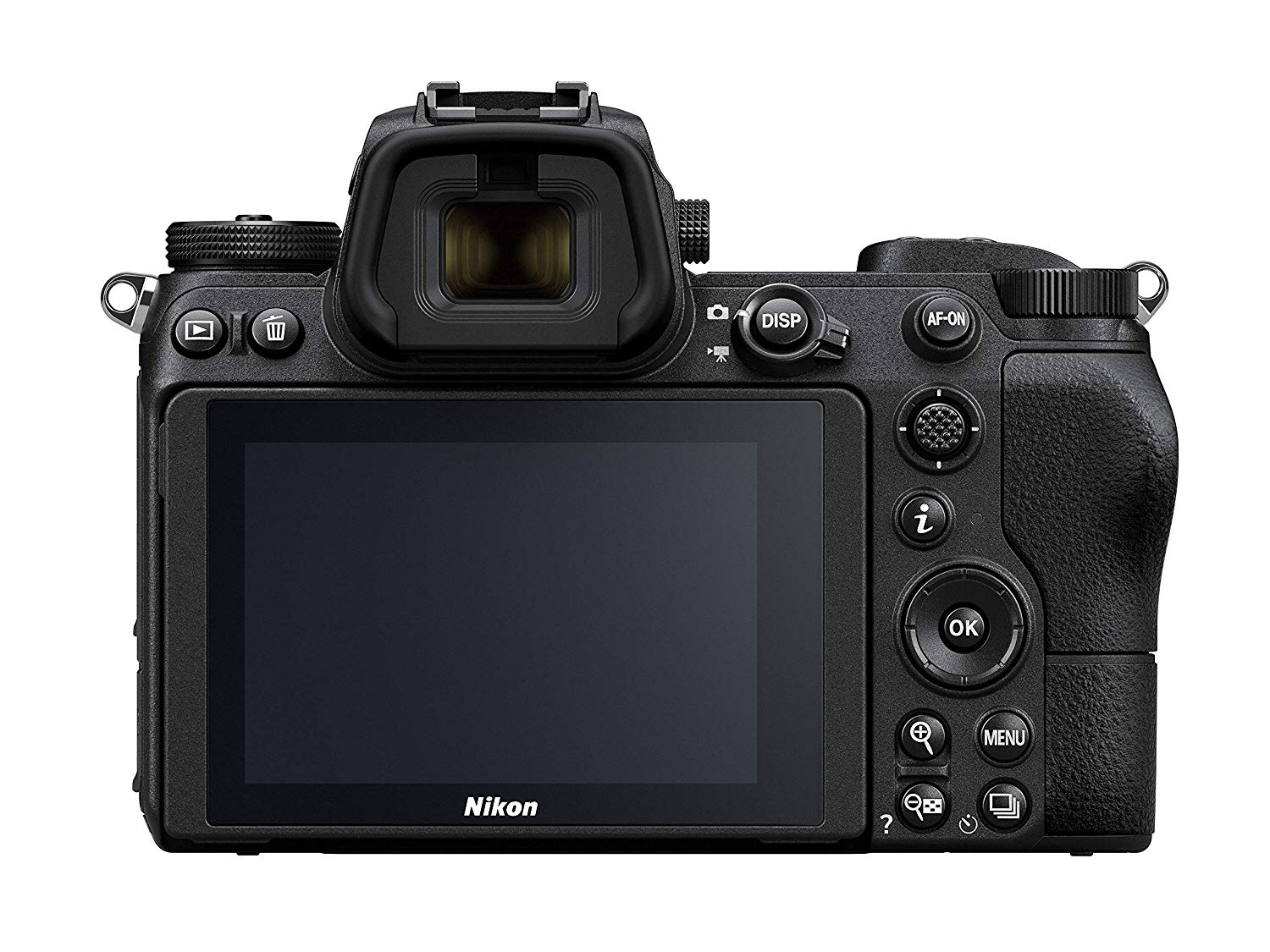
The Nikon Z7 has a slight advantage when it comes to sensor technology, but the Sony a9 is much better in terms of speed. This camera has a continuous shooting speed of 20 frames per second (without viewfinder blackout) and an impressive camera buffer of 364 images.
The Nikon Z7 performs burst shooting at 9 fps, but if you want to use the camera without viewfinder blackout, you will need to drop the continuous shooting speed down to 5.5 fps. Although this is still a decent speed, it is not even close to the capabilities of Sony’s camera.
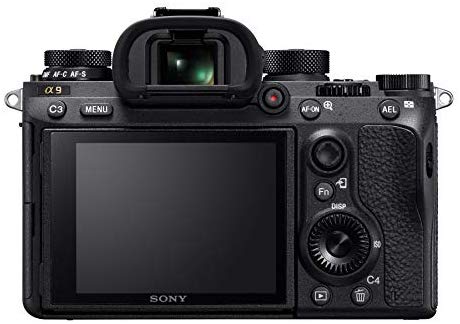
The Sony a9 also has a better autofocus system.
While the Nikon Z7 has 493-point phase-detection system, the Sony a9 has 693 phase-detection points. Also, the a9 does better job in focusing on targets in low-light situations.
Nikon Z7 vs Sony a9 Body and Design
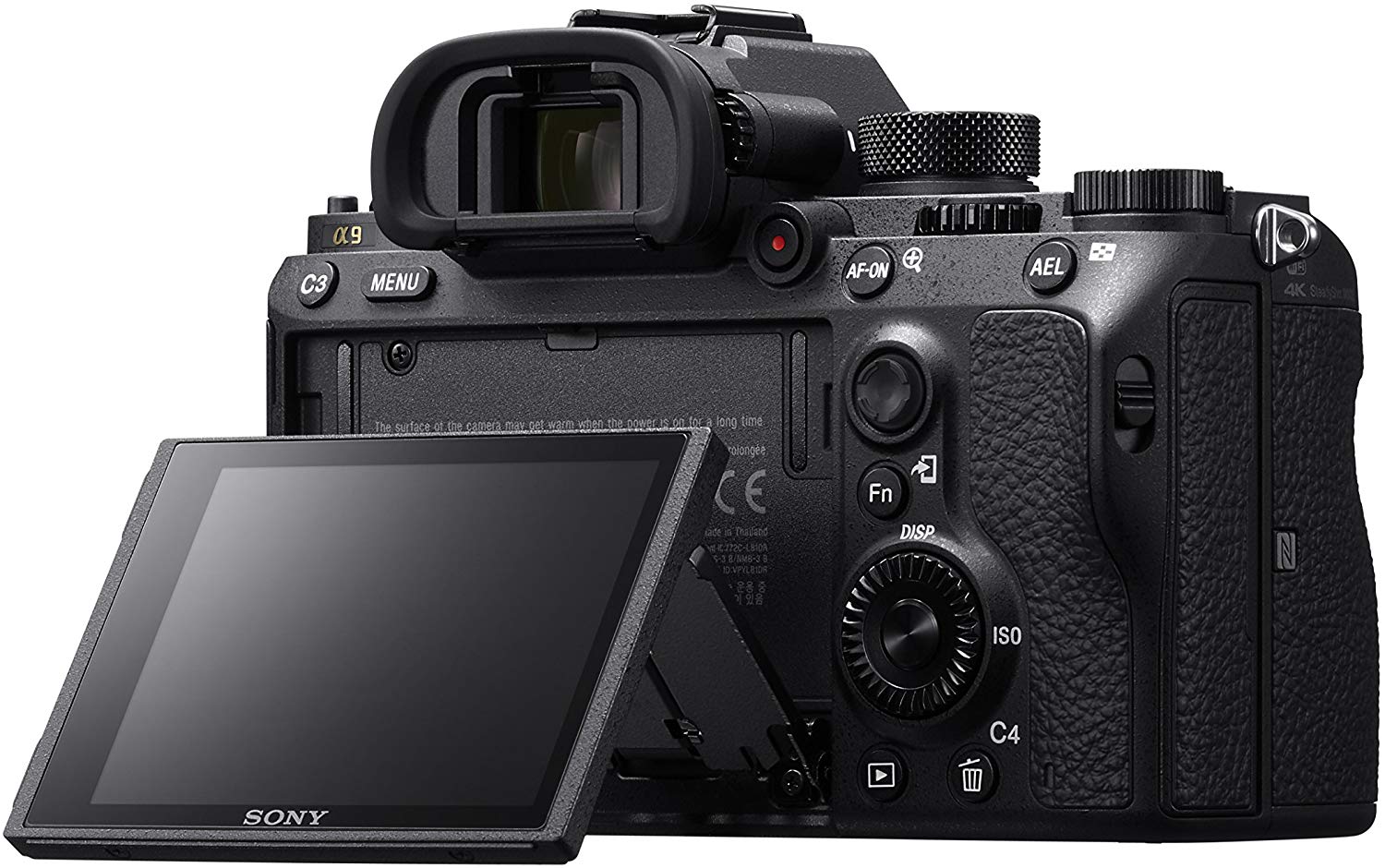
The Nikon Z7 and Sony a9 are very compact cameras. They both weigh around 20.7 ounces, although the Z7 has slightly bigger dimensions than the a9 (5.28 x 3.98 x 2.68 inches vs 5.0 x 3.8 x 2.5 inches). The two cameras are weather-sealed against dust and splashes, so you can use them in harsh weather environments without worries that they might break.
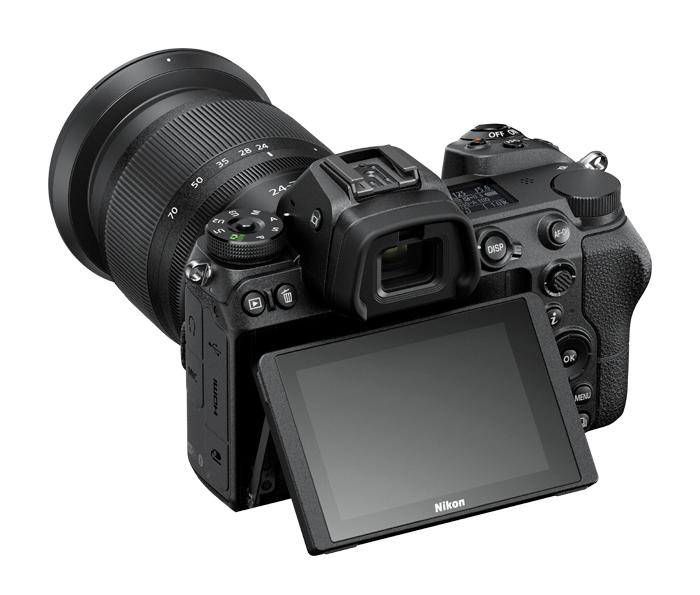
Both cameras have an electronic viewfinder and a rear LCD screen. However, the Nikon Z7 has a larger LCD display (3.2” vs 3”), higher LCD screen resolution (2100k vs 1440k dots), and just a little bit higher viewfinder resolution (3690k vs 3686k dots). Moreover, the Nikon Z7 also has a top LCD screen which is helpful for quickly viewing and changing the camera’s settings.
It is good to know that both models have an articulating screen which is useful for shooting stills or videos from uncomfortable angles. Also, both of them use touchscreen technology that is helpful for positioning the focus area.
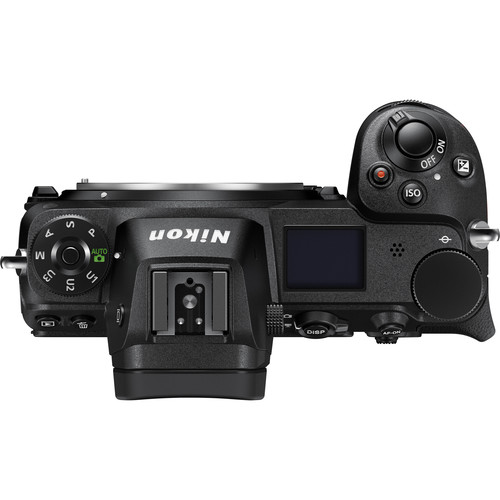
While the Nikon Z7 has a better viewfinder and an LCD screen, the Sony a9 has a longer battery life (650 vs 330 shots), and it features dual card slots, both being very useful for long photography sessions.
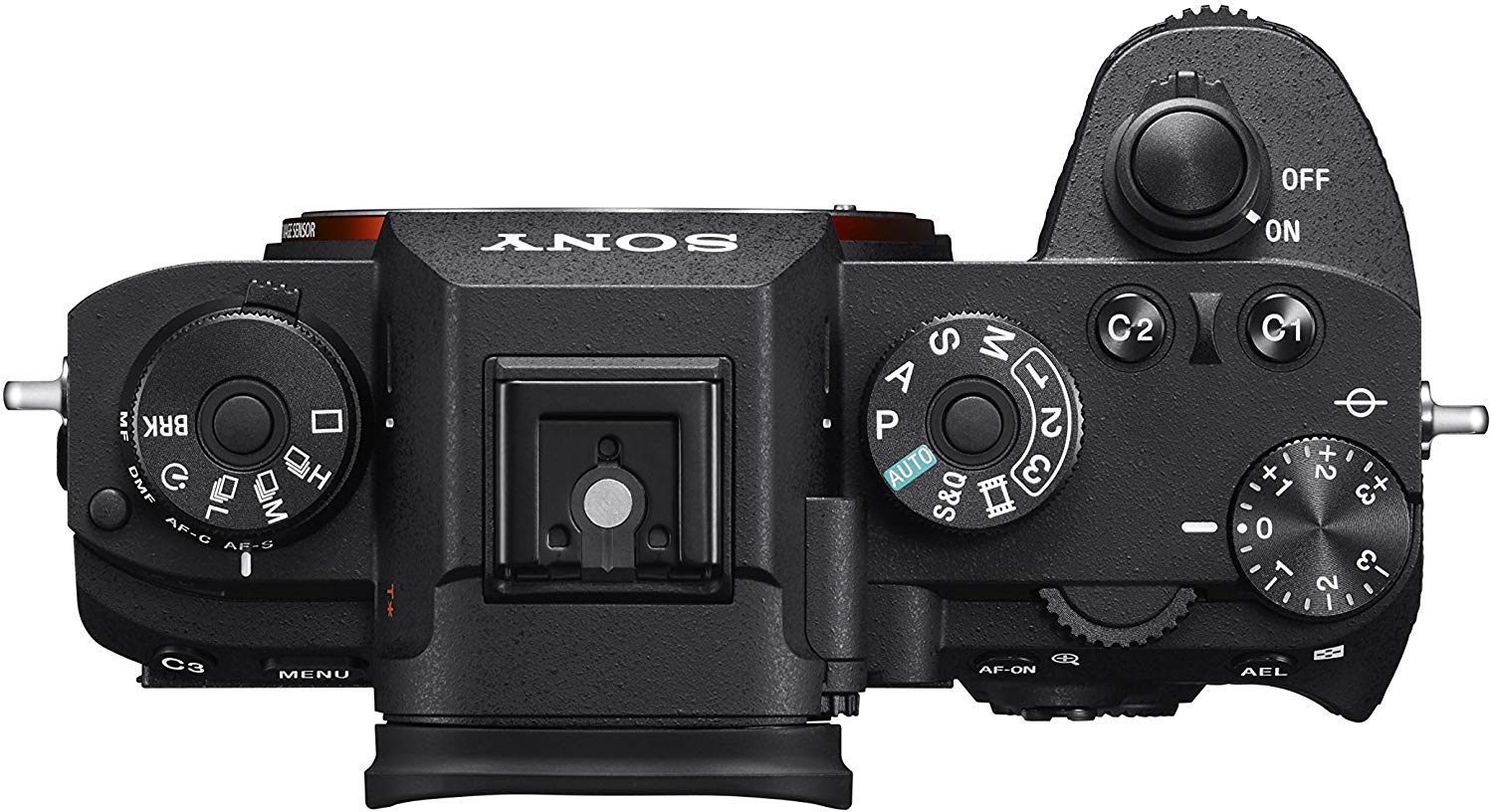
Nikon Z7 vs Sony a9 Video Performance
There are no substantial differences between the Sony a9 and Nikon Z7 in regards to video capabilities. Both models can shoot 4K video at 30p. Still, the Z7 allows you the possibility to record external 10-bit N-Log video, while the a9 features only 8-bit.
Additionally, both cameras have microphone and headphone ports, so you can deal with sound in the video more efficiently while the articulating screen allows you to shoot videos from flexible angles.
Watch these cameras go head to head in the video above by DSLR VS.
Sony A9 and Nikon Z7 Price
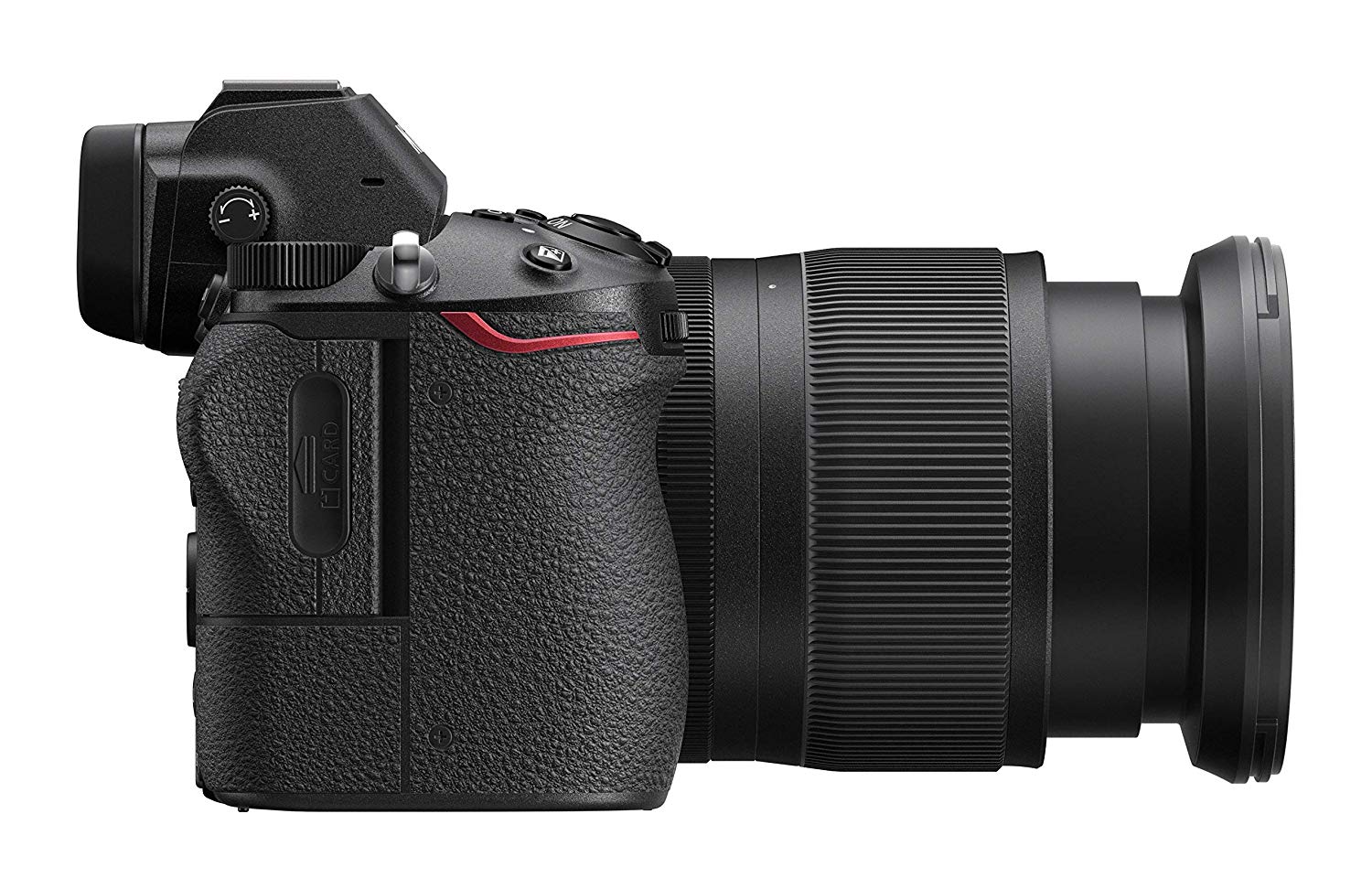
Nikon Z7
As you can see, the Nikon Z7 and Sony a9 have a lot of useful features for photographers and videographers. However, the Sony a9 is much better for sports and street photography than the Nikon Z7. On the other hand, the Nikon Z7 achieves excellent results in landscape and portrait photography.
Now, let’s compare the price of these two camera models. The Sony a9 costs around $3,498.00 (body only) which makes it a bit more expensive than the Nikon Z7 which has a price tag of $2,796.95 (body only).
However, you can save some money if you decide to buy a used Nikon Z7 or Sony a9. For example, on MPB you can find a used Sony a9 for a price as low as $3,044.00. This will leave you with more money for lenses and other photography equipment.
If you're not familiar with MPB, check out our MPB review to learn why it's our top-recommended used gear resource.
We Recommend
Nikon Z9 vs Sony A1
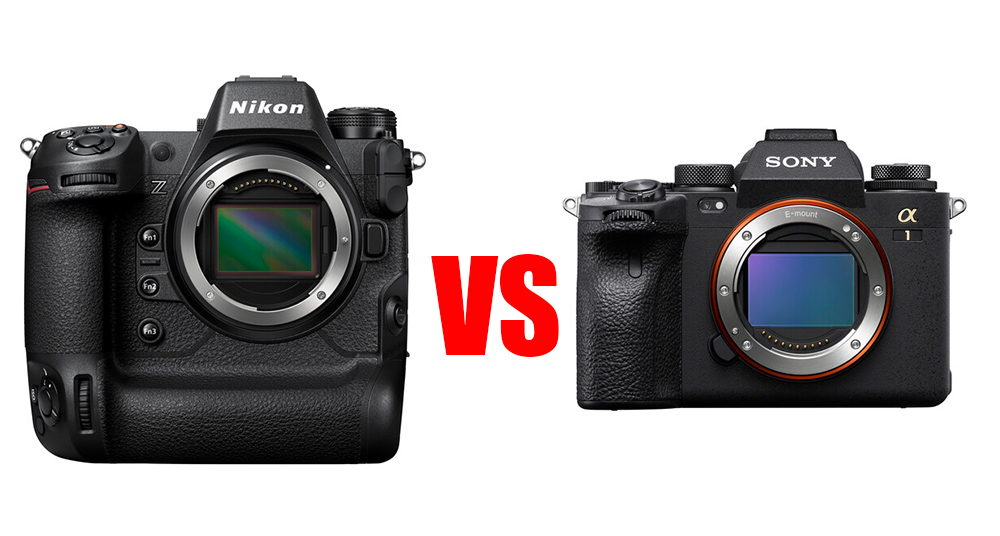
If you are a professional photographer shopping for your next camera and have narrowed it down to the Nikon Z9 and Sony A1 but still aren’t 100% sure which one to get, you’ve come to the right place!
In this Nikon vs Sony camera comparison guide, we’ll share overviews of the cameras, compare their photo and video performance, recommend our favorite lenses to pair with them, and more! Additionally, thanks to innovative online platforms like MPB, buying a used mirrorless camera has never been cheaper and easier than it is today.
Who is MPB? They are a trustworthy and reliable online platform selling pre-owned photography and videography gear at unbeatable prices. Better yet, all their cameras and lenses are meticulously hand-inspected by expert product specialists with years of experience and backed by six-month warranties, allowing you to make your purchases confidently and worry-free.
Over the years, we’ve saved thousands of dollars buying, selling, and trading in camera equipment using MPB’s online marketplace. That’s why we are excited to recommend them to you today. That said, it’s time to find out which of these amazing mirrorless cameras best suits your needs and budget!
Check out the video above by The Slanted Lens for an even deeper look at the similarities and differences between the Nikon Z9 camera and the Sony A1 camera.
Table of Contents
- Nikon Z9 vs Sony A1: Overview
- Nikon Z9 vs Sony A1: Imaging Performance
- Nikon Z9 vs Sony A1: Video Performance
- Recommended Nikon Z9 & Sony A1 Lenses
- Final Thoughts on the Sony A1 vs Nikon Z9
Nikon Z9 vs Sony A1: Overview
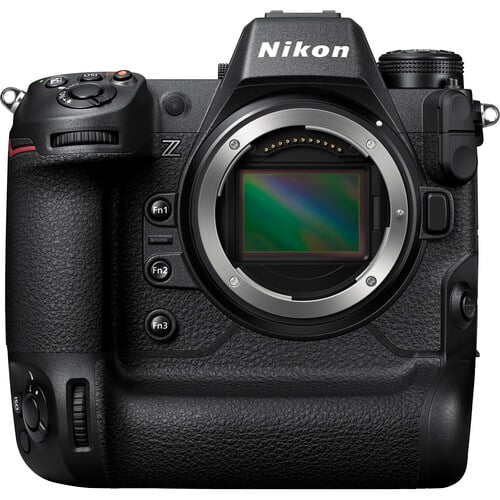
Nikon Z9
The Nikon Z9 was announced in 2021 and hit stores in early 2022. It replaced the Nikon Z7 II as the company's flagship mirrorless camera, and the current Nikon Z9 price sits at around $5,500 new. A 45.7-megapixel stacked CMOS sensor and an Expeed 7 image processing engine are at its core.
The first thing you will notice about the Z9 is its monster size. It’s designed to mirror the look and feel of larger-bodied DSLR cameras, which may or may not be a plus for you. However, one definite positive of its big body is its great battery life. So while the camera weighs more than most competitors, the 740-shot battery life is the best of any mirrorless camera on sale today.
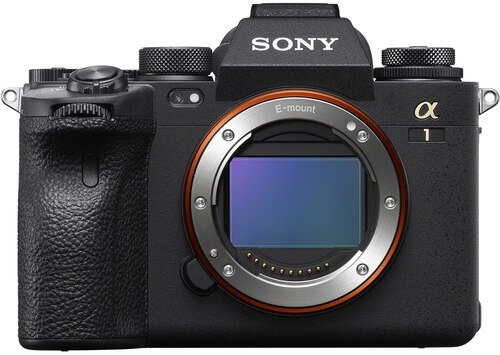
Sony A1
On the other hand, the Sony A1 debuted in January 2021 and is currently retailing for $6,500. It’s Sony’s flagship product and combines the best photo features found in the Sony Alpha a7R V with the top video features of the Sony a7S III. It houses a 50.1-megapixel stacked CMOS sensor and dual Bionz XR image processing engines.
The A1 camera body is much smaller and lighter than the Z9. At 737 grams, it weighs only about half of what the Z9 does, making it a better choice for travel and street photography. Another noteworthy design feature of the Alpha 1 is its large 9.44M-Dot electronic viewfinder (EVF).
Here’s a head-to-head look at the key features and specs of the Nikon Z9 and Sony A1 to see how they stack up:
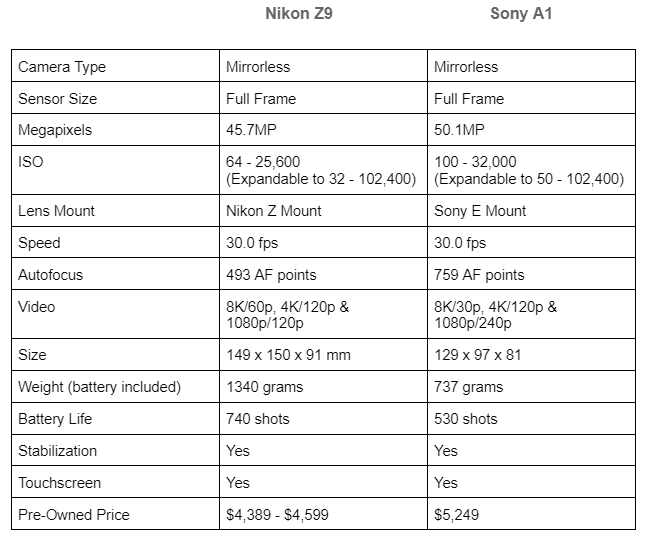
Nikon Z9 vs Sony A1: Imaging Performance

Nikon Z9
Regarding photography, let’s start with the similarities between the Nikon Z9 and the Sony A1. Both have incredibly high-resolution image sensors (45.7MP on the Z9 and 50.1 on the A1) that produce gorgeous RAW and JPEG images. The high pixel counts of these two cameras make them ideal choices for professionals who need to enlarge their images for printing.
Other highlight-worthy similarities include 30 frames per second (fps) continuous shooting, outstanding autofocus performance, and customizable controls. Their industry-leading burst shooting is perfect for wildlife and sports photography. Their responsive AF systems can lock onto and track various subjects (people, animals, cars, etc.). And the customization options allow you to set up the camera in a way that best suits your shooting style.
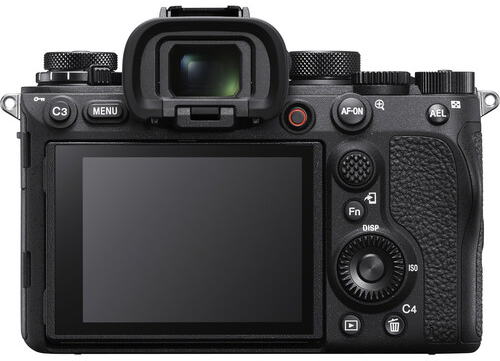
Sony A1
Now for the differences between the Nikon Z9 vs Sony A1. The biggest one is that the A1 has a BSI (Back Side Illuminated) sensor, which gives it the upper hand when shooting in low-light conditions. Another plus of the A1 is its unique pixel shifting mode which compiles 16 exposures into one super-high-resolution 199MP still image.
Alternatively, a strength of the Z9 is its all-new electronic shutter-only design. It’s the first digital camera to completely ditch the mechanical shutter, giving it a longer lifespan and making the camera completely silent in every shooting mode.
Which is the best camera for photos? It’s extremely close, but we like the Sony A1.
Learn More:
Nikon Z9 vs Sony A1: Video Performance
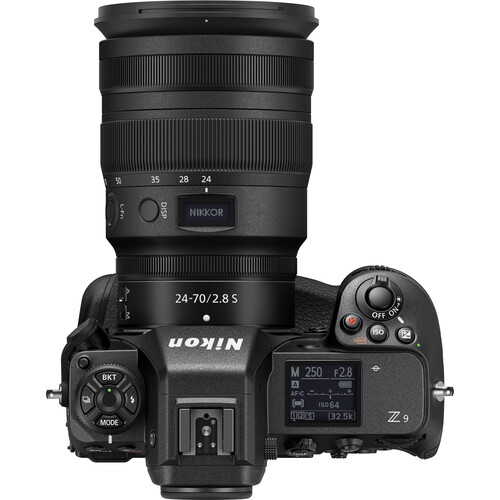
Nikon Z9
As great as the Nikon Z9 and the Sony A1 perform during still photography, they are equally (if not more) impressive when used as video cameras! Both of them boast stunning 8K video capabilities, along with 4K and 1080p Full HD recording modes. The Z9 has 8K/60p video, and the A1 tops out at 8K/30p.
Furthermore, both cameras can shoot 4K/120 slow-motion video directly in the camera. And while the Z9 maintains that frame rate when filming Full HD slow-motion clips, the A1 can record 1080p/240p super-slow-motion video. That’s an advantage for YouTubers, vloggers, and social media influencers.
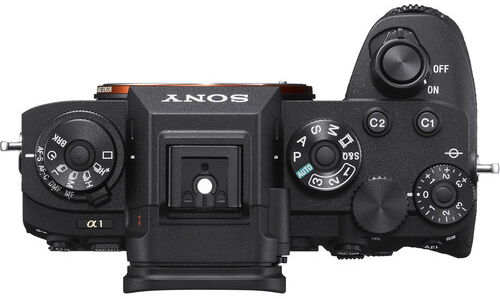
Sony A1
Another difference is that the Z9 is capable of recording 12-bit color, but the max on the A1 is 10-bit color. Although this sounds like a minor difference, it can have a big impact when color-correcting your footage in post-production, particularly if you are a professional creating content that wide audiences will watch.
The two cameras share a few more common features that deserve to be mentioned: dual memory card slots, unlimited recording, live streaming capabilities, and in-body image stabilization technology.
Which is the best camera for video? It’s another tough call, but we’ll give the Nikon Z9 the slight edge this time.
Recommended Nikon Z9 & Sony A1 Lenses
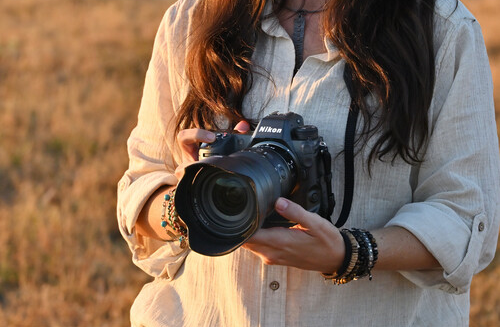
Nikon Z9
Here are two quick lists of the best Nikon Z Mount lenses and the best Sony E Mount lenses to pair with the Nikon Z9 and Sony Alpha 1.
Nikon Z9 Lenses
- Nikon Nikkor Z 35mm f/1.8 S
- Nikon Nikkor Z 24-70mm f/2.8 S
- Nikon Nikkor Z 14-24mm f/2.8 S
- Nikon Nikkor Z 70-200mm f/2.8 VR S
- Nikon Nikkor Z 85mm f/1.2 S
Sony A1 Lenses
- Sony FE 24-70mm f/2.8 GM
- Sony FE 14mm f/1.8 GM
- Sony FE 50mm f/1.2 GM
- Sony FE 200-600mm f/5.6-6.3 G OSS
- Sony FE 70-200mm f/2.8 GM OSS II
Final Thoughts on the Sony A1 vs Nikon Z9
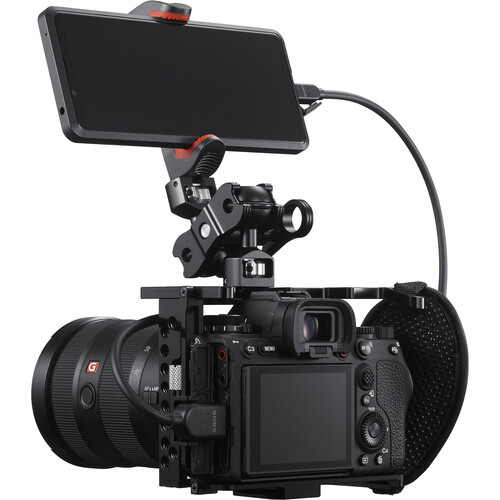
Sony A1
As you can see, both of these flagship cameras are powerhouses, and you really can’t go wrong with either of them if you are a professional photographer, videographer, or filmmaker. Ultimately, the biggest differences between the Nikon Z9 and Sony A1 are the size and weight of the two cameras.
With that in mind, here are our final recommendations. If you travel a lot and having a compact and portable camera is important to you, go with theSony A1. On the flip side, if you want a mirrorless camera with a DSLR's classic look and feel, theNikon Z9 is the better choice.
Still not 100% sold on either of these cameras? No Worries! Check out the list below of other high-end mirrorless cameras currently available at MPB:
Learn More:
We Recommend
Now Is the Time to Buy a Sony a7S II
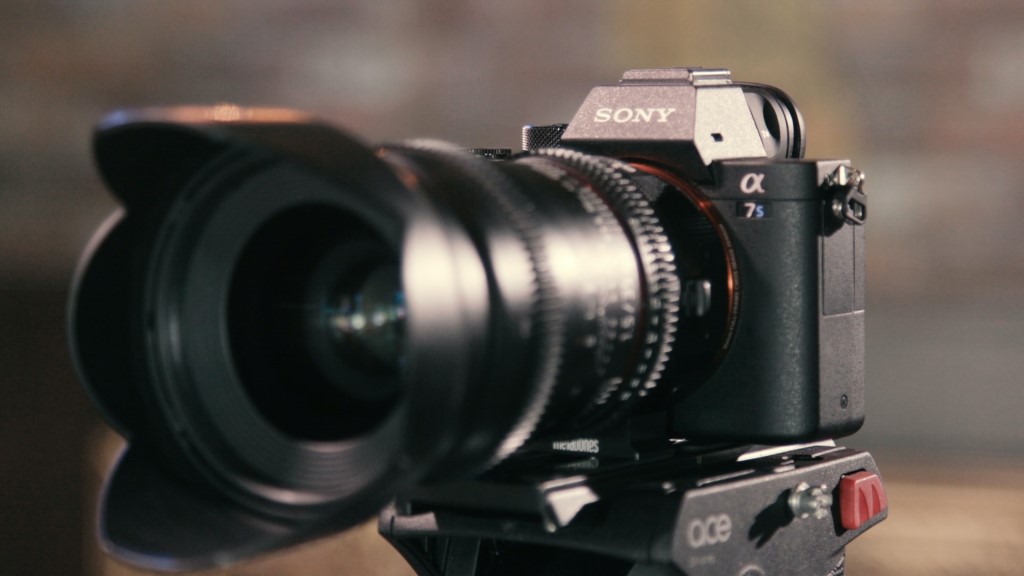
Photo by ShareGrid on Unsplash
Sony a7SII Camera
As many of you probably know, the Sony a7S III just dropped in July, and while this is exciting for those who can afford to spend a ton of money on a top of the line camera, it’s also exciting for those of us who are on more of a budget because the Sony a7S II is now cheaper than ever.
The Sony a7S III that just dropped costs a whopping $3,500, whereas you can purchase a Sony a7S II for less than half of that price.
This is because the two cameras are quite different.
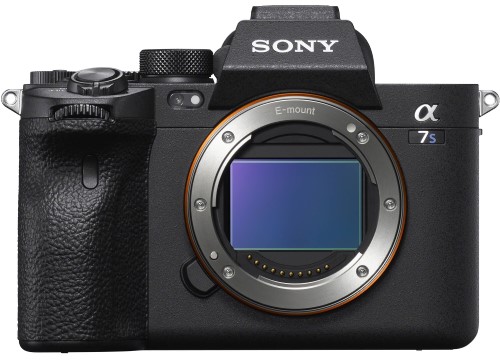
Sony a7S III
The Sony a7S III features a 12MP sensor, an incredible base ISO range of 40-409600 and 4K video. While you may expect 8K video at this price range, Sony decided to forego lower-quality 8K video in favor of incredible 4K video. In fact, most people who are opting to purchase this camera right now are videographers.
But, that doesn’t mean that the Sony a7S III can’t shoot incredible still images (especially in low light shooting). The camera can perform at 10fps, comes with a phase-detect autofocus system with 759-AF points, and is the first high-end Sony camera in a while to receive a major improvement to its menu system. I may go so far as to say that the menu system is intuitive.
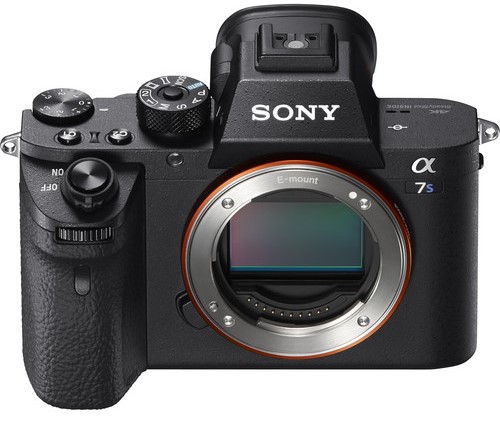
Sony a7S II
As for the Sony a7S II, it is a full-frame mirrorless with a 12MP sensor and 4K video capabilities, which is, unsurprisingly, also known for its low-light shooting. In many ways, the Sony a7S II is incredibly similar to its new sister.
So, where does it differ? We are going to show you in this Sony a7S II vs. Sony a7S III review.
Sony a7S II vs a7S III Specs
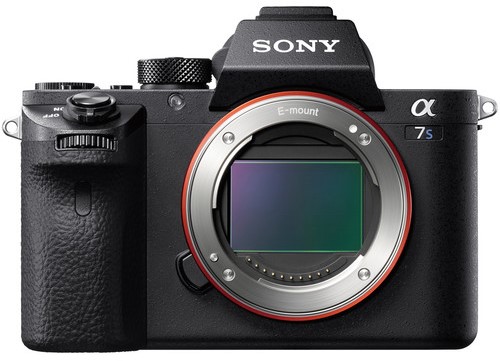
Sony a7S II
Since the Sony a7S II and the Sony a7S III look so similar on paper, it can be difficult to differentiate the two unless you get much more in-depth.
One major difference between the two is that, while they can both shoot 4K video, the Sony a7S III can shoot it at 120p, while the Sony a7S II can only shoot it at 30 or 24p.
Another major difference is that the Sony a7S II has a much slower burst mode at 5fps as opposed to 10fps.
Sony a7S II Specs:
- 12MP sensor
- ISO range of 100-102,400
- 4K video
- 3” tilting LCD with 1.22M-dots
- 100% EVF coverage
- 5fps burst mode
- 1.38 lbs
- Environmentally-sealed body
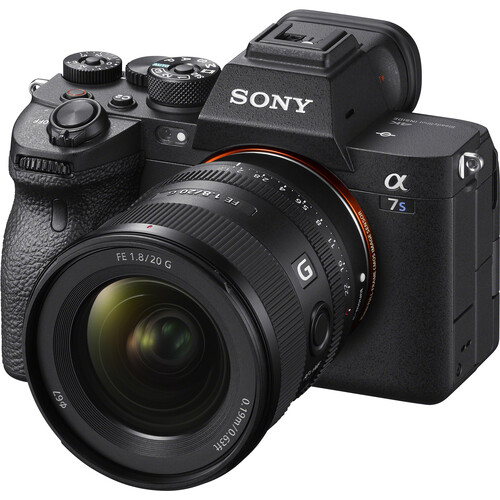
Sony a7s III
Sony a7S III Specs:
- 12MP sensor
- ISO range of 40-409,600
- 4K video
- 3” articulating LCD with 1.44M-dots
- 10fps burst mode
- 1.35 lbs
- Environmentally-sealed body
As you can see through the side by side spec comparison of these two camera bodies, they have nearly all of the same selling points, which is why you are in luck if you’re currently looking to pick up a steeply discounted Sony a7S II… everyone who can afford to is ditching them in favor of the newest version.
Learn More:
Sony a7S II vs a7S III Body & Design
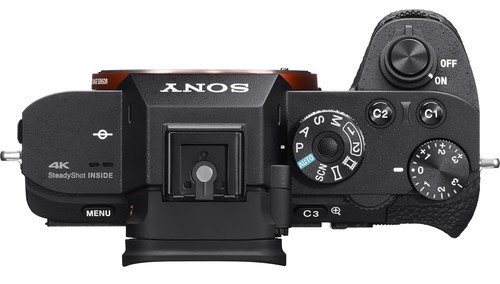
Sony a7S II
The Sony a7S II was the first camera in this lineup to come with a reduced-vibration shutter, which made it one of my favorite releases by Sony in years.
The Sony a7S II is also mostly built out of magnesium alloy so the camera was able to approach the 1 lb mark while remaining very sturdy in your hands.
Moreover, this magnesium alloy allowed the Sony a7S II to be one of the most weather-resistant camera bodies on the market.
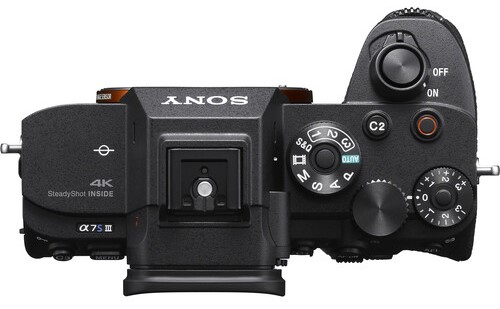
Sony a7S III
The Sony a7S III body isn’t much different, except for the fact that it now features a fully articulating LCD, which is a first for cameras in this lineup. The LCD on this version is also much more touch sensitive than any other camera Sony has ever produced.
The Sony a7S III also comes with a full-size HDMI connector, which only furthers my belief that this camera is built for serious videographers.
The cable retainer that the camera body comes with will also protect the head of your HDMI lead, while keeping the cable in place, so that if your cable is accidentally tugged on while you’re shooting, it will be at a right-angle to the socket. It prevents the screen from getting messed with during shooting.
Sony a7S II vs a7S III Build & Handling
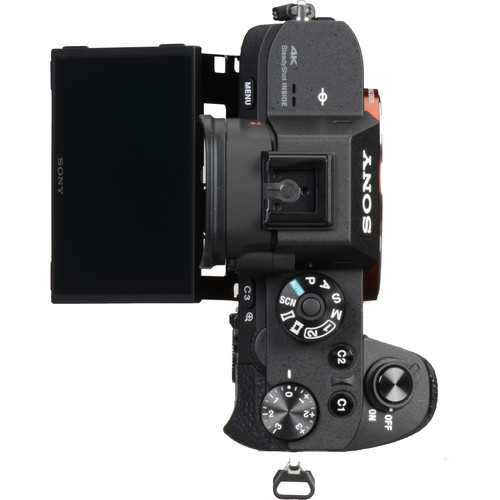
Sony a7S II
The Sony a7S II is an ergonomically-designed camera. It feels much like the A7 II and the A7R II, if you’ve ever worked with either of those cameras before.
It comes with a lot of different customization options, and it made some small adjustments from previous versions. For instance, the shutter release on the sony a7S II is located closer to the top of the grip (which is helpful) and its grip is larger.
The biggest difference between the handling of the Sony a7S II and the Sony a7S III is that the III features much better ergonomics. It comes with a better grip, a larger joystick and an AF-On button that is easier to feel out while paying attention to whatever you’re shooting.
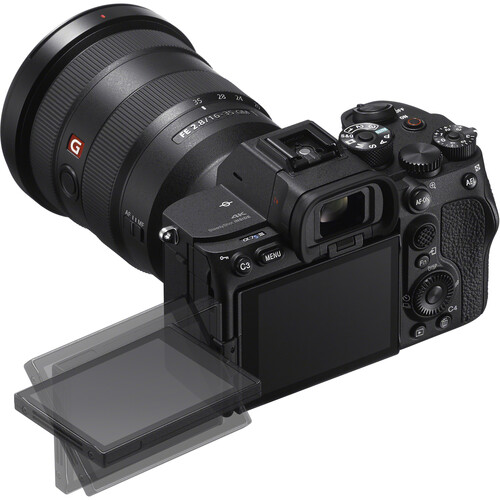
Sony a7S III
If you’re a fan of toggleable locks, then you’re also in luck because the exposure comp dial finally features one.
But, the biggest improvement to the Sony a7S III is its new menu. This menu features better categorization and color coding (so that the menu is easily readable). It also features a ton of indexing which allows a very complex menu system to feel easy to manage through the use of vertical tabs.
And, if you noticed in the Sony a7S II specs, Sony has never been one to heavily rely on touchscreens. This is slowly changing with this updated camera body. You can now control either the main menu or the Fn menu through touchscreen.
Finally, the sony a7S III features a battery life of 600-shots, which is pretty impressive considering all of the other things this camera can do. As compared to the Sony a7S II’s 270-shots, it's pretty crazy.
Sony a7S II vs a7S III Video Performance
As I discussed earlier, the Sony a7S II features 4K video at either 30 or 24p. You can see this 4K video in action in Armando Ferreira’s video test above.
The Sony a7S II can only shoot 8-bit video, rather than 10 or 12-bit video, though.
4K video at 30p cannot compete with 4K video at 120p, which is what the Sony a7S III features. It also shoots 12-bit video, which is something, many argued, its predecessor should have been able to do. You can watch a short video test by DPReview above.
Sony a7S II vs a7S III Price
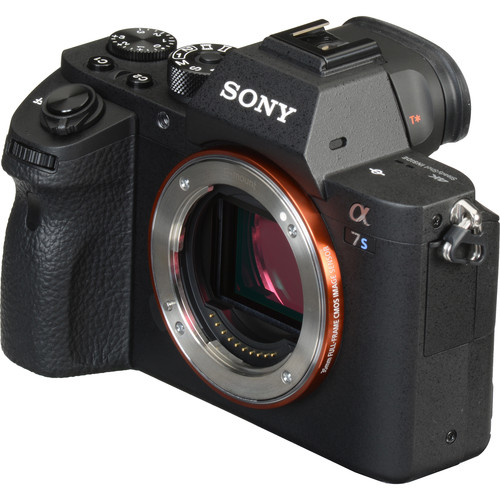
Sony a7S II
Since half of the reason we are recommending you purchase a Sony a7S II right now is because it’s a lot cheaper than the Sony a7S III, it makes the most sense to purchase it used.
MPB, one of our favorite used camera retailers, currently has three Sony a7S II camera bodies listed for sale starting at $1,479. As compared to the Sony a7S II price when it was just released, $1,500 is a steal.
And, as other photographers try to purchase the new version, you can expect more Sony a7S II bodies to become available over the next few weeks, which will probably further the competition on that price point so make sure you keep checking back.
Since the Sony a7S III is so brand new (it literally dropped last month), MPB doesn’t yet have any for sale.
Learn More:
We Recommend
Photography Gear for Traveling Solo
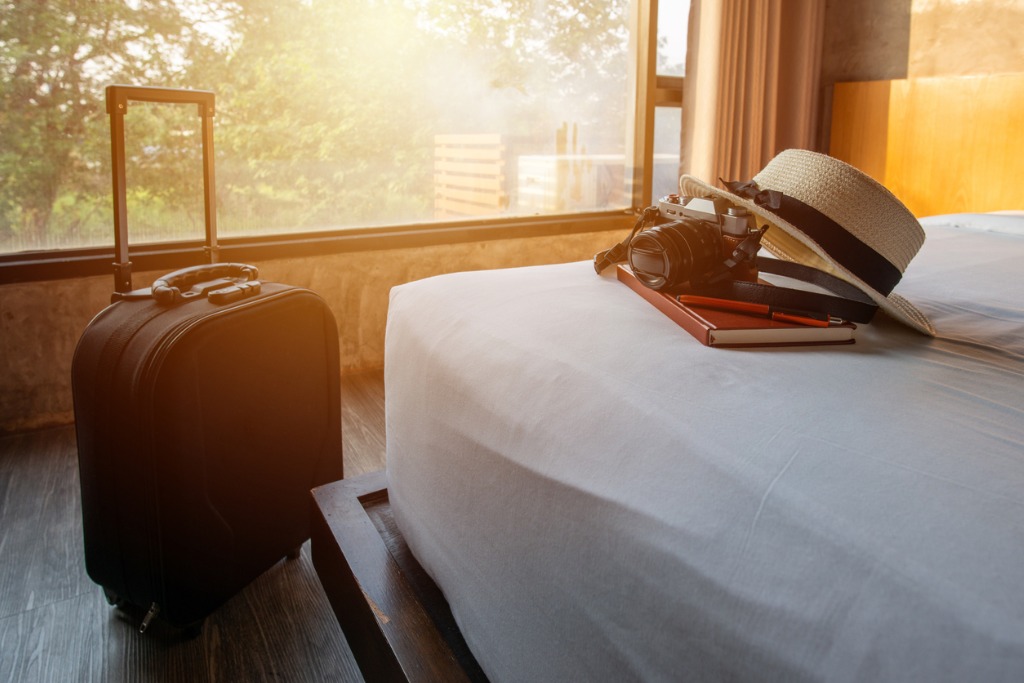
photo byBoyloso via iStock
While nobody is doing much of anything nowadays, let alone participating in travel photography, I’ve definitely spent quite a few sleepless nights frantically Googling when researchers think it will be safe to travel again.
I’ve also spent quite a bit of time trying to figure out where the next trip is going to take me. And I don’t think I’m alone. Although I’ve recently heard a lot about how the coronavirus pandemic is going to create a huge boom in domestic travel, I know I’m excited to leave the country again.
So, since I’m already doing all of this research, I figured I may as well share some of the info I’m collecting. Since I obviously can’t recommend which trips to take just yet, one thing I can recommend is photography gear for your next vacation.
Keep in mind all of this travel photography gear is gear that I have either already used on a solo trip or plan to just as soon as all this madness is over. So, in order to make the cut, the photography gear had to be lightweight and easy to carry, relatively inexpensive (except for my main camera), and sturdy.
Let’s dive in.
Top Travel Camera: Sony a7S II
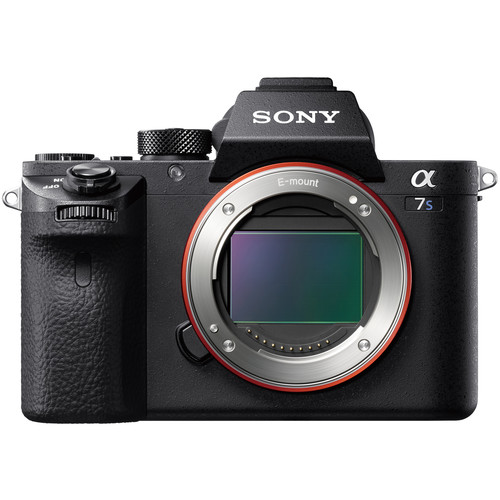
I’ve written a full review of the first item on this photography gear list and you can read it here.
The Sony a7S II is a full-frame mirrorless camera with a 12MP sensor and 4K video. While it’s best known for being a great low-light shooter, it’s also one of my favorite pieces to pack for all of my trips because of its weather-sealed body. It’s built with more magnesium alloy than any other Sony a7S, so it’s also really sturdy.
It also lasts for forever. This camera is rated at 500,000 cycles, which is plenty to last you for years of traveling.
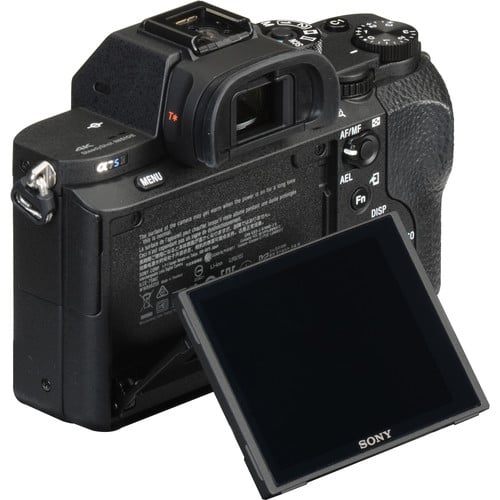
It’s 3” tilting LCD screen comes in handy when photographing people on the street, or when photographing in crowded tourist areas.
It comes with 100% viewfinder coverage.
Some other specs include its ISO range of 100-102,400 and its 5fps burst mode.
Plus, it weighs just over 1.3 lbs so you can throw it in your carry on and not even realize it’s there.
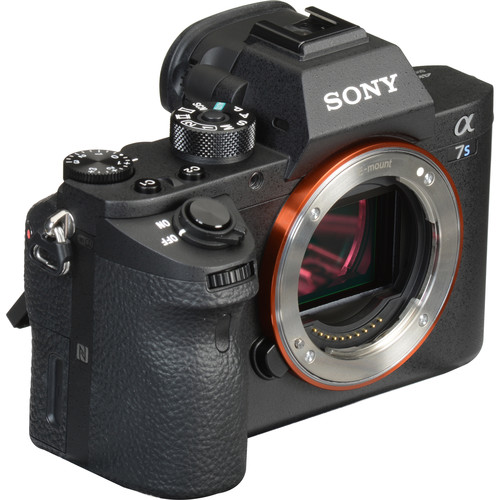
Unfortunately, all of these specs do come at a price. Since this is one of those essential photography gear pieces, I allowed myself to pick something a bit more expensive. The Sony a7S II is $2,400 if you opt to purchase it new.
But, no travel photography tips list would be complete without a few money hacks. Instead of buying the Sony a7S II new, you should purchase it off of MPB used.
Why? Well, the Sony a7S II starts at just $1,000 on MPB. Or, you can opt for one in excellent shape for just $1,500.
Inexpensive Backup Camera: Sony a6000
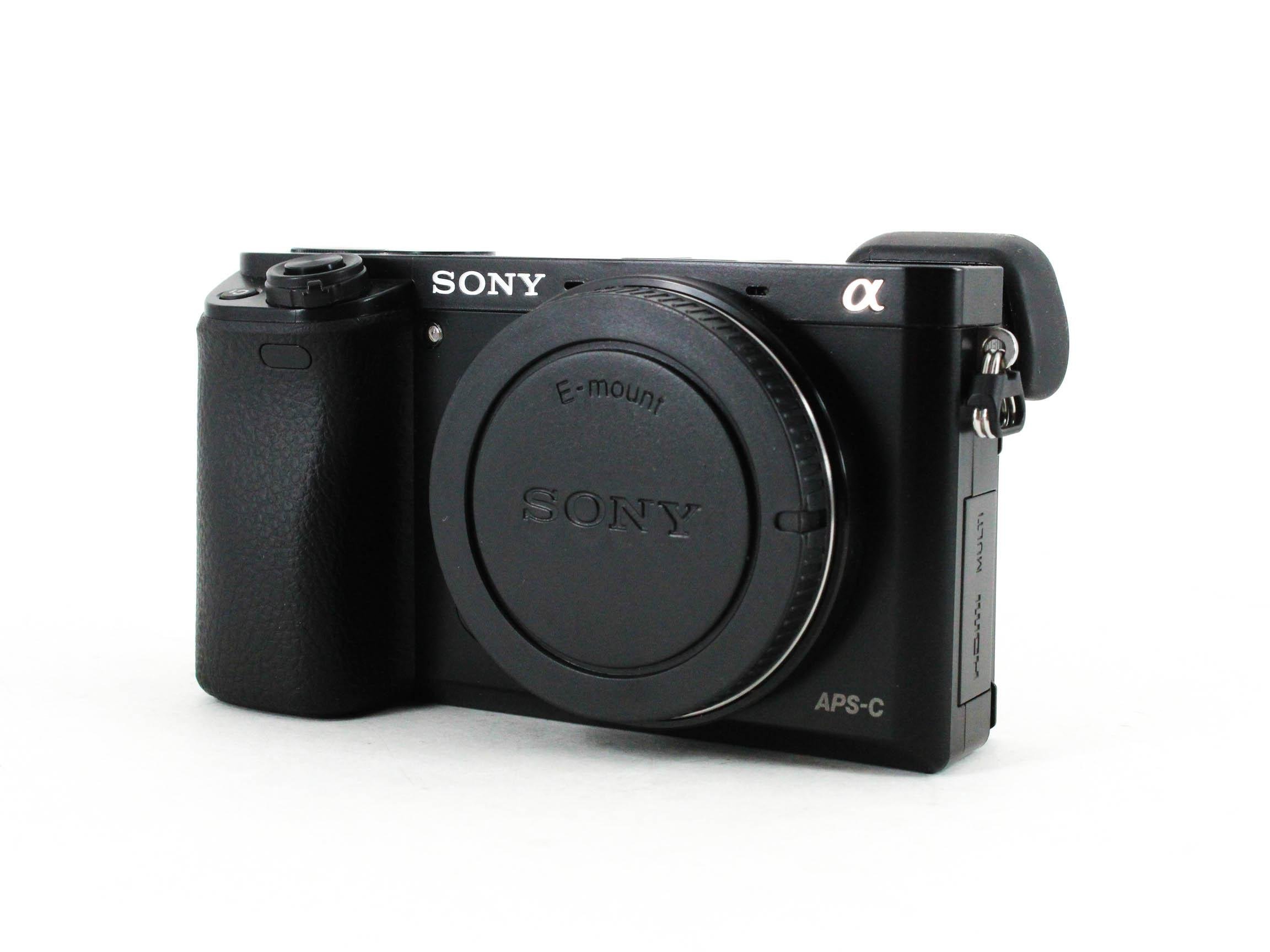
Okay, your photography gear bag definitely needs a backup camera when you’re traveling and let me tell you why: problems happen all the time, and if something goes awry with your primary camera (or God forbid it gets stolen), you don’t want to be on your trip without a camera.
The Sony a6000 works really well for me as my backup because it’s incredibly inexpensive. I purchased my used Sony a6000 off of MPB for a little over $400, but prices have fallen since then and you can now pick one up for as little as $325.
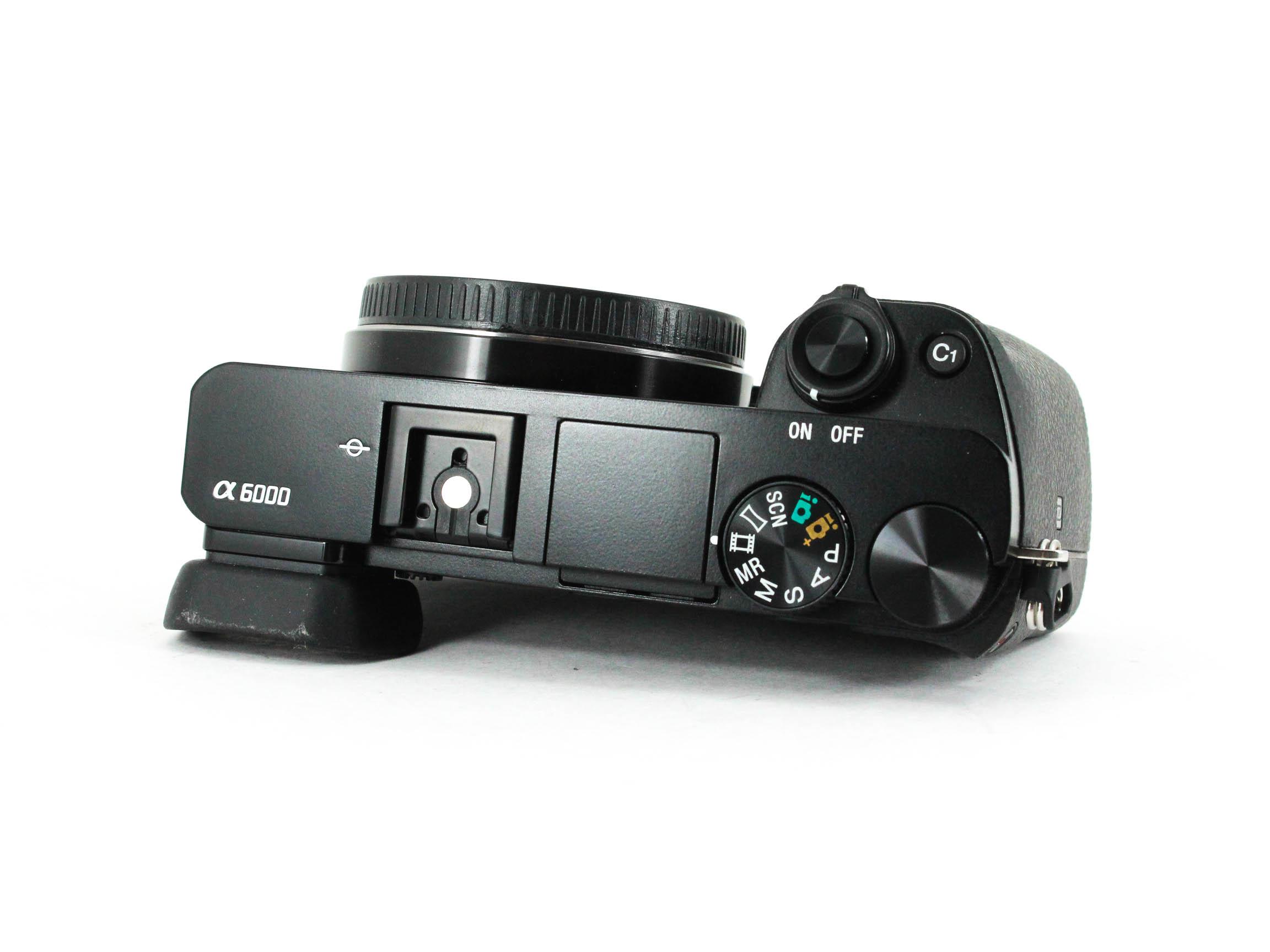
And I know that this camera is 6 years old and that’s why it’s so cheap, but this mirrorless camera comes with all the specs I need for traveling (except 4K video).
It features a 24MP sensor, 11fps burst mode, and a 3.0” tilting screen with 921.6K dots, which is just a step down from the screen on the Sony a7S II. While the screen isn’t a touchscreen, this really doesn’t bother me if I’m not going to be shooting with it very often.
It’s also really small, which means I can leave it in a locker at my hostel or hotel until the moment I need it.
Learn More:
Small But Mighty Tripod Alternative: Octopad
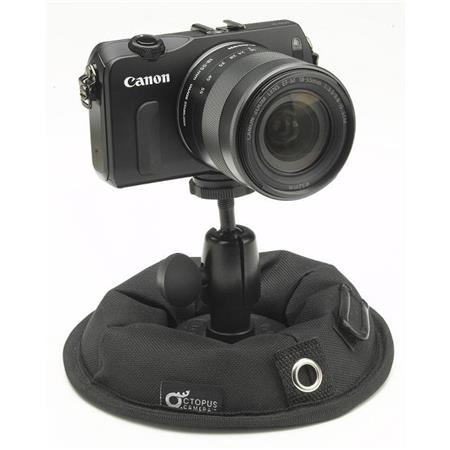
I talk about the Octopad a lot on PhotographyTalk (I did a full review a while back that you can read here) because I’ve yet to find a tripod that does as much as this does for this price point.
Obviously, my favorite part of any inexpensive photography gear is its price. The Octopad is just $27. At that price point, you’re going to be finding tripods that will break within the month and won’t do a great job of doing much else in the meantime.
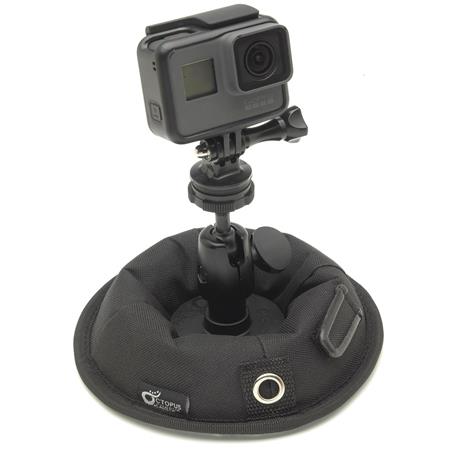
The Octopad, on the other hand, is incredibly small and lightweight while maintaining complete balance. Since it’s bottom heavy, you will never have problems shooting with it in extreme weather conditions. It’s sturdy as you need in a small package like you want for traveling.
You also don’t have to use the Octopad to hold your camera because it works well with a GoPro, or simply as a way to support an off-camera light to light the scene absolutely perfectly.
The only downside to the Octopad is that you aren’t going to be using it to keep your camera at eye level since it only works to hold your camera in place.
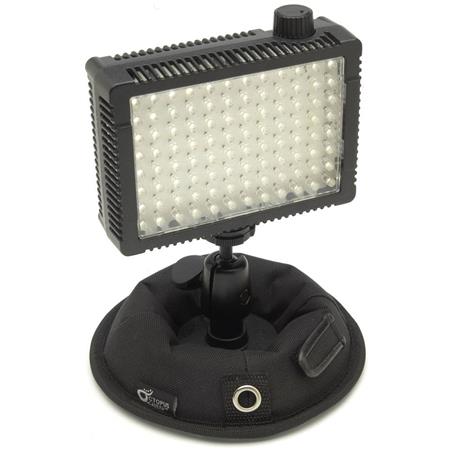
But, I don’t know of any tripods that can hold your camera or light at a 45 degree angle on any surface without tipping over.
It also weighs just 1.6 lbs and is 6.5” in diameter, so you can easily stick it wherever you need to in your luggage.
It definitely helps to have an Octopad in your photography gear bag when you need to shoot while hanging off of a cliff or participating in any other action sports.
A Bright, Portable Light: Hakutatz Pocket Size AW RGB LED Light
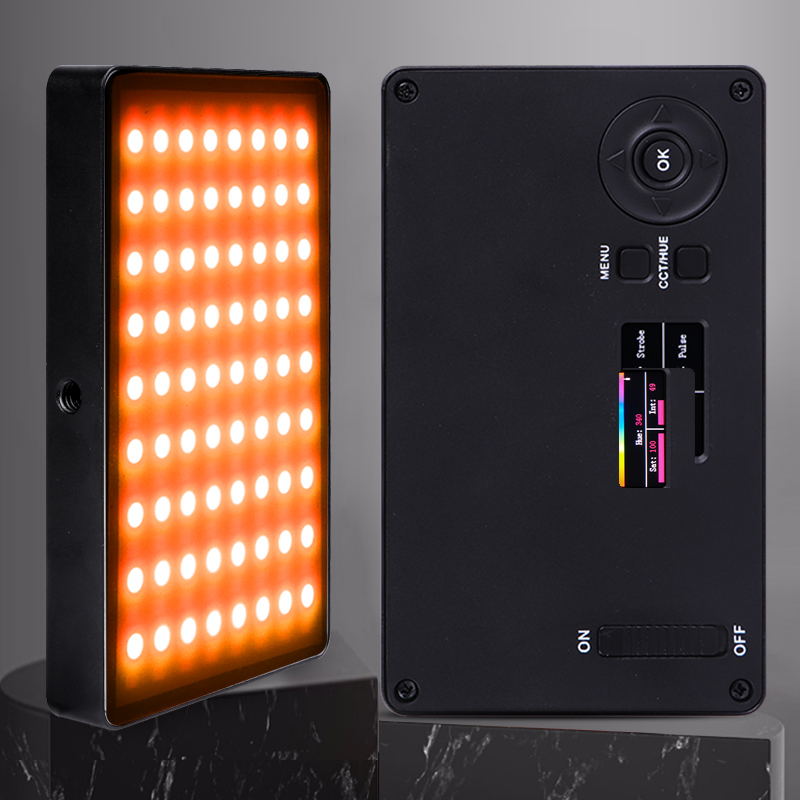
There’s no way for me to do a travel photography gear tips list and not include a pocket-sized light.
The Hakutatz Pocket Size AW RGB LED Light has got a name to match its capabilities. This light features amber, white and RGB LEDs so you can add drama to any scene with millions of possible colors.

It also comes with an app so you can adjust the lighting from your phone, which comes in handy when you’re watching your photography gear like a hawk.
You can also change the saturation or brightness from your app, which means you’ll have more room in your luggage for souvenirs since you won’t need to drag diffusers or softboxes with you everywhere you go. There’s a reason why I named it one of the best lights of 2019!
You can grab a Hakutatz Pocket Size AW RGB LED Light for $130.
Something to Carry It All In: HEX Back Loader Backpack
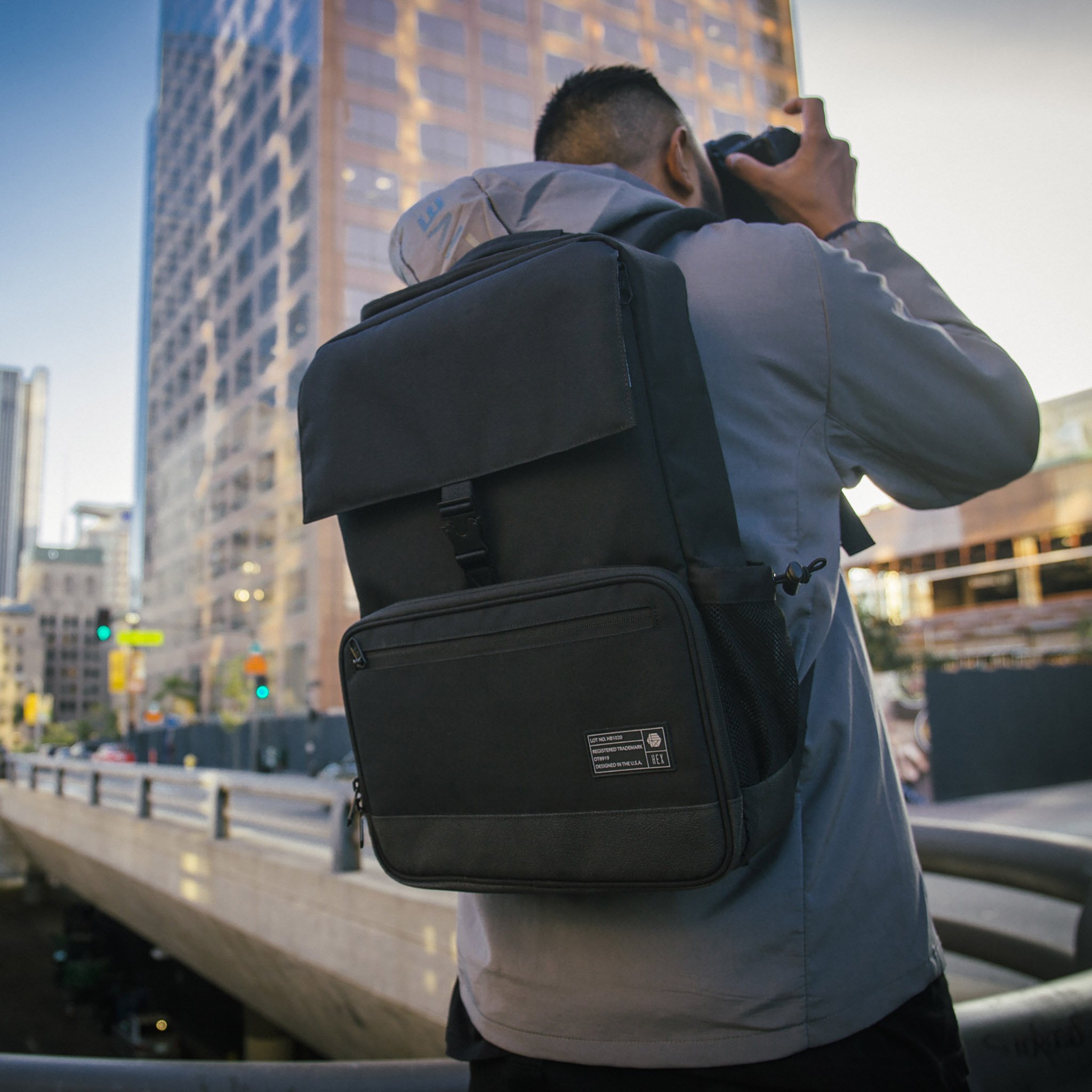
You’re obviously going to need a bag to carry all of your new photography gear in and the HEX Back Loader Backpack is just the one.
For starters, I’ll never recommend a bag that I don’t think is aesthetically appealing. Maybe this has something to do with the fact that my parents always said you should look your best because first impressions last, but I find I get more jobs when I look put together.
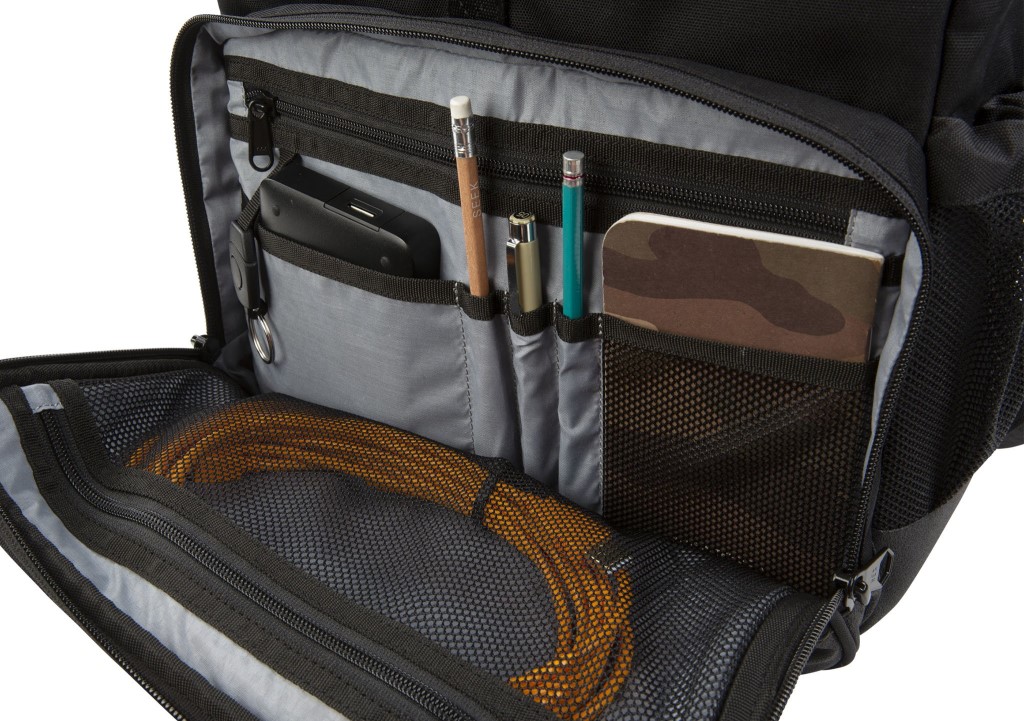
This bag is a sleek and modern black. It also happens to be pretty discrete, so nobody will know it is filled with thousands of dollars of photography gear.
I also won’t recommend a bag that isn’t comfortable because there’s nothing worse than running around London with a shoulder strap digging into your skin.
This bag features shoulder straps that are well-padded, a chest strap to more evenly distribute the weight of your photography gear, and, most importantly, really fast access to your gear.
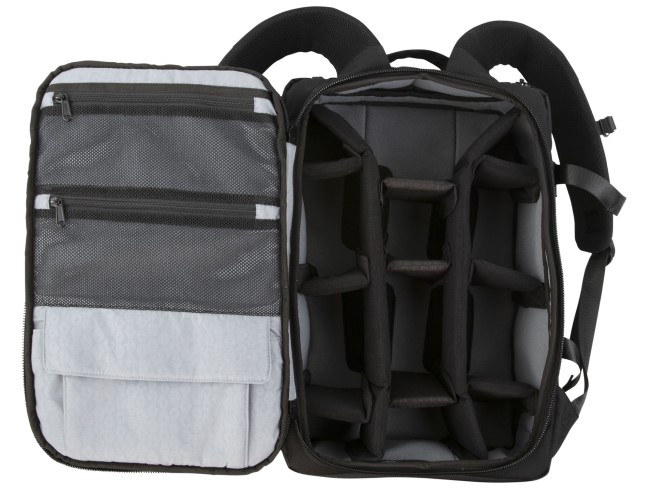
It’s also water resistant, so you won’t need to be worried about freak storms.
If you want to pick up a HEX Back Loader Backpack, they’re currently available for $190.
Learn More:
We Recommend
Pre-Owned Camera Comparison: Sony a6400 vs a6600
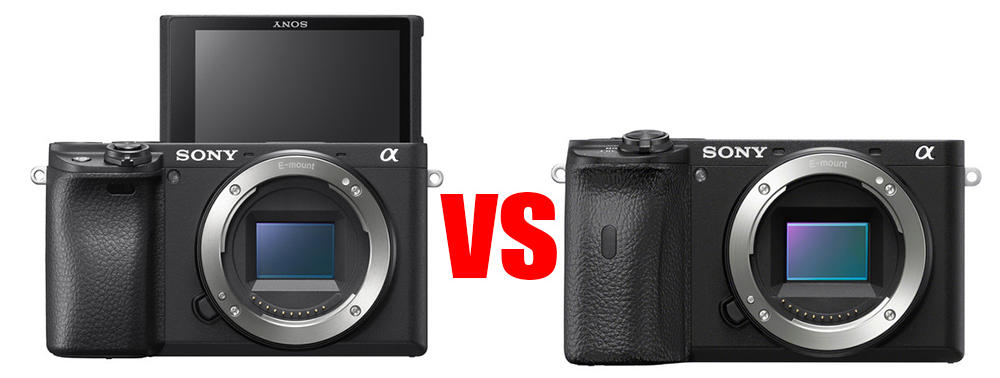
If you are searching for a pre-owned mirrorless camera and are on the fence between the Sony a6400 vs a6600, you are in the right place! In this ultimate guide, we make a detailed head-to-head comparison of these two award-winning cameras. Below, we compare their key specs, still photo capabilities, video capabilities, price, and more!
One awesome resource with heaps of used Sony Alpha a6400 cameras in stock and used Sony Alpha a6600 cameras in stock and a place where I have bought and sold countless camera gear over the years is MPB. They are a trustworthy and reliable online platform that sells used photo and video kit at unbeatable prices.
Moreover, every one of their used cameras is carefully hand-inspected by expert product specialists and backed by warranties, allowing you to make your purchases confidently and worry-free. Another remarkable feature of MPB is that you can trade in and sell your old camera equipment to help offset the cost of new-to-you gear you want and need.
Without further ado, let’s jump in and learn everything there is to know about the Sony a6400 vs a6600!
Check out the video above by FlytPath to learn more about the similarities and differences between the Sony a6600 vs a6400.
Table of Contents
- Sony a6400 vs a6600: Key Features and Specs
- Sony a6400 vs a6600: Imaging Performance
- Sony a6400 vs a6600: Video Performance
- Final Thoughts on the Sony a6400 vs a6600
Sony a6400 vs a6600: Key Features and Specs
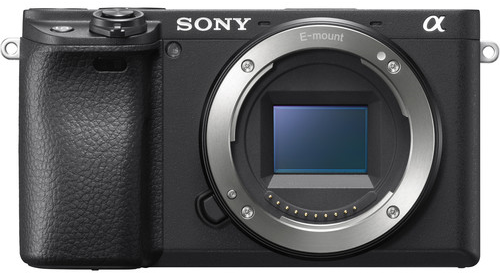
Sony Alpha a6400
For starters, the Sony Alpha a6400 came out in February 2019, and the Sony Alpha a6600 was released a few months later in November 2019. This makes them two of the newest cameras in Sony’s popular A6xxx lineup of crop sensor cameras. The a6400 replaced the a6300 while the a6600 took over for the a6500 as Sony’s flagship APS-C mirrorless camera.
In terms of similarities, both the a6400 and a6600 use Sony E Mount lenses and have new Bionz X image processing engines. The advanced image processors increase the overall speed of the cameras and contribute towards their industry-leading autofocus performance. Both cameras have 425-point phase-detection AF systems with real-time subject-tracking.
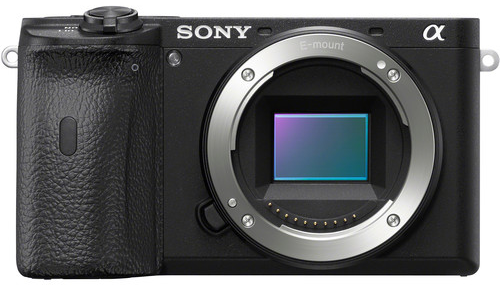
Sony Alpha a6600
At first glance, the two cameras' key features and specs appear nearly identical, and only by examining them more closely will you start to notice their subtle differences. For example, even though the bodies are almost exactly the same size, the a6400 weighs 100 grams less. The lighter, more portable body makes the a6400 a terrific option for kids, beginners, and traveling.
On the flip side, the a6600 is heavier because it boasts impressive 5-axis in-body image stabilization technology. Another major difference between these two cameras is the battery life. Whereas the a6400 shoots a respectable 410 shots per charge, the a6600 captures a mind-blowing 810 images!
Here’s a more in-depth look at the key specs and features of the Sony a6400 vs a6600:
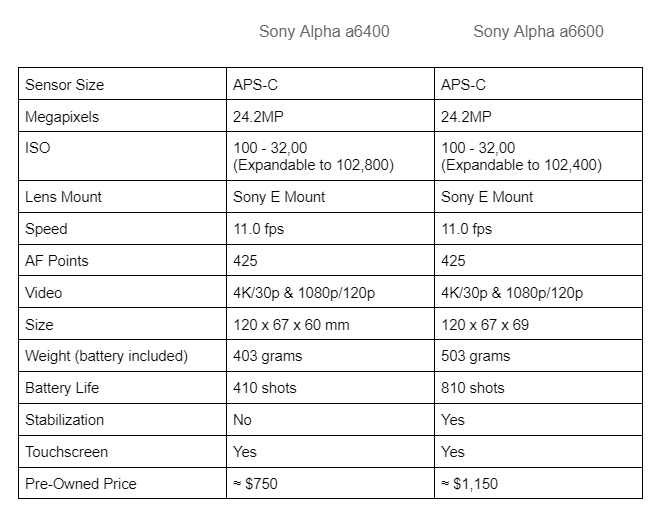
Sony a6400 vs a6600: Imaging Performance
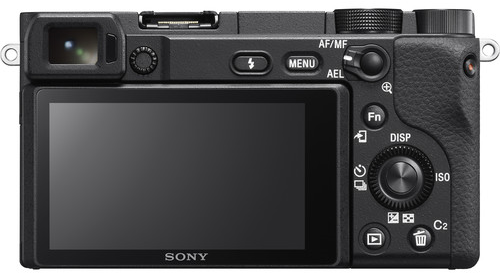
Sony Alpha a6400
Still photographers love the high-resolution 24.2-megapixel APS-C sensor shared by these two mirrorless cameras. It helps them generate stunning JPEG and RAW images with excellent sharpness. Additionally, Sony finally updated its color science before releasing the a6400 and a6600. Meaning their out-of-the-camera colors look significantly better than older Sony models.
Another killer imaging feature these two cameras share is their 11 frames per second burst shooting. This is well above the industry standard and makes the a6400 and a6600 great options for action, adventure, sport, and wildlife photography.
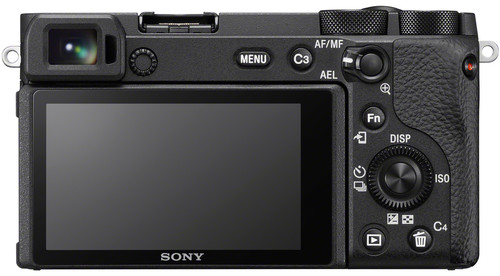
Sony Alpha a6600
One area where the A6600 has the upper hand is shooting in low-light situations. This is due to its in-body image stabilization, which makes it perform better at night and in the studio. However, don’t let that scare you away from the a6400. Many Sony E Mount lenses have optical image stabilization to help boost low-light performance.
These cameras share a few more fantastic imaging features: silent shutter modes, large electronic viewfinders (EVFs), and built-in Wi-Fi. The silent shutter is perfect for stealth wildlife and street photography, the EVFs help you better compose your images, and the Wi-Fi lets you quickly and easily transfer your images to your mobile devices.
Winner: Draw
Learn More:
- Sony Mirrorless Camera Comparison: Which is Best for 2023?
- Which Sony Camera for Photography is Right for You?
Sony a6400 vs a6600: Video Performance
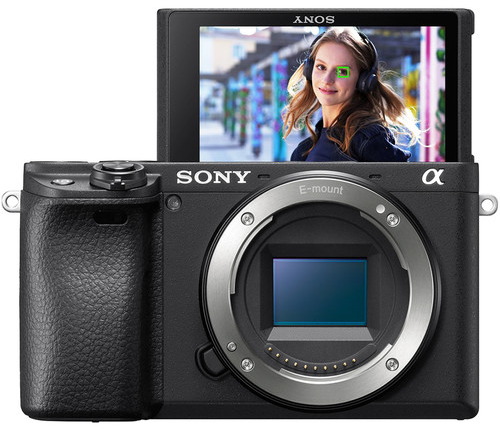
Sony Alpha a6400
Let’s start by reviewing the similarities of these two cameras when it comes to video. Both have 4K video capabilities at speeds of 24 and 30 frames per second and can capture slow-motion footage directly in the camera at 1080p/120p Full HD. On top of that, they have flip-up screens perfect for recording selfie videos.
While both the a6400 and a6600 are wonderful video cameras, one stands head and shoulders above the other in terms of overall performance, the a6600. This is once again courtesy of its in-body image stabilization (IBIS). The IBIS considerably reduces unwanted camera shake when filming and improves video quality.
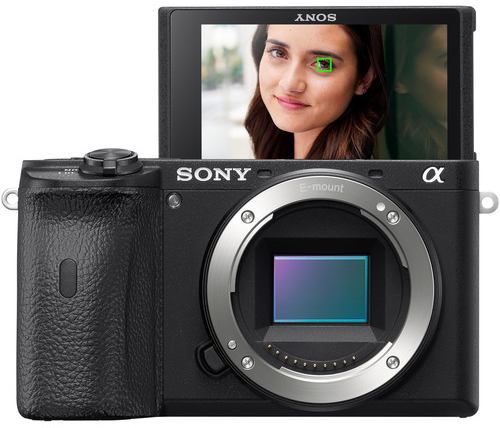
Sony Alpha a6600
It’s always a good idea to use a tripod or gimbal when shooting video, but thanks to the a6600s IBIS, smooth handheld video is also possible. This is an absolute game-changer and makes the a6600 ideal for YouTubers, vloggers, documentarians, and on-the-go filmmakers.
One more feature that makes the a6600 a superior video camera is that it has headphone and microphone ports. They help control audio levels during recording so you can spend less time sound correcting during post-production.
Winner: Sony a6600
Final Thoughts on the Sony a6400 vs a6600
Thanks for reading our Sony a6400 vs a6600 guide! No matter which camera you ultimately choose, you can be proud to know that you are the new owner of one of the best mirrorless cameras on the planet. With that said, here are our final recommendations.
If you are a beginner or only shoot still photography, you should go for the budget-friendly Sony Alpha a6400. Alternatively, if you are more experienced or like to shoot video, you should opt for the Sony Alpha a6600.
As a bonus, here’s a list of my favorite compatible Sony E Mount lenses to pair with your new Sony Alpha a6400 or a6600. You can now find the lowest prices on all these lenses and more at MPB!
- Sigma 35mm f/1.4 DG DN ART - Sony E Fit
- Sony E 70-350mm f/4.5-6.3 G OSS
- Sony E 16-55mm f/2.8 G
- Sigma 24-70mm f/2.8 DG DN ART - Sony E Fit
- Sony E PZ 18-110mm f/4 G OSS
Learn More:
We Recommend
Selecting the Right Camera for Shooting Video

Photo by Jakub Gorajek on Unsplash
The first time I picked out a camera for shooting video I had no idea what I was looking for. Most cameras aren’t marketed for videographers, which means there’s much less information out there for us.
While I appreciate the many ways a camera can be used for still photos, sometimes I’d like to know more about a camera’s video capabilities than what it can do for stills.
Plus, it seems the most expensive cameras are always marketed for videographers, which means if I’m in the market for a budget camera for shooting video, there’s truly no info out there.
As such, I’ve compiled a list of a wide range of the best cameras for vlogging, from a few hundred dollars to a few thousand.
Panasonic Lumix G7 (Best Inexpensive Option)

The Panasonic Lumix G7 is 4 years old, which means its price has significantly decreased to where it now sits (less than $500), but it isn’t yet so out-of-date that it isn’t extremely useful.
The Lumix G7 features a 3” touchscreen that is fully articulated for those of us who aren’t just vlogging behind a computer desk. It also has built-in Wi-Fi and an external microphone port.
The Lumix G7 can also be controlled remotely with your smartphone, which is helpful for one-man video operations. This is truly why it is one of the best cameras for vlogging on the market, even 4 years after it dropped.
Of course, it can’t shoot 4K video due to its age and price point, but it still features a high video bit rate of 100mbps.
Plus, while it’s a great beginner camera, it can also function for those of us who are more advanced in our careers, i.e. it isn’t frustrating for a seasoned pro.

Pros of Panasonic Lumix G7:
- 3840 x 2160 video resolution
- 3” fully articulated screen
- Lightweight at less than 1 lb
- Built-in Wi-Fi
Cons of Panasonic Lumix G7:
- Can’t shoot 4K video
- No image stabilization
- Short battery life (especially with video)
You can buy a Panasonic Lumix G7 for only $450 here.
Sony A7 III (Best Advanced Camera)

If you’re in the market for mirrorless cameras for video, then look no further.
The Sony A7 III is a full frame mirrorless with in-body image stabilization. But, most importantly, it features 4K video capabilities, a microphone jack, Real Time Eye Autofocus (for vloggers), and it stores video clips of up to 29 minutes.
Beyond that, you can choose from two different 4K bitrates (24p and 30p) at either 100MBPS or 60MBPS, S-Log includes, and excellent ISO performance. Plus, the full frame sensor is a huge bonus at this price point, so you don’t have to worry about that pesky crop for video like other cameras in this price range have.

Pros of Sony A7 III:
- 4K video
- Microphone/headphone inputs
- Large battery life
- In-body image stabilization
Cons of Sony A7 III:
- 3” screen isn’t fully articulated and has limited touchscreen capabilities
- Not weather-resistant
You can purchase the Sony A7 III on Samys Camera for $1,800.
Learn More:
GoPro HERO 8 Black (Best Rugged Option)

We all know what this camera for shooting video is known for - image stabilization.
But, the latest GoPro edition has a surprising amount of features, including 4K video capabilities, accessories called “Mods,” which include a mini shotgun microphone connection, a selfie-screen, and a video light connection, and an incredibly easy-to-use interface.
It’s clear to see that GoPro can now be used as an all-around camera for shooting video, instead of being forced into the action niche as it was for so long.

Pros of GoPro HERO 8:
- 4K video capabilities at up to 60fps
- Incredible image stabilization
- One of the best vlogging cameras due to new selfie-screen
Cons of GoPro HERO 8:
- Not for still photographers
- Can’t perform well in low-light situations
You can get a GoPro HERO 8 BlacK for just $350 on Samys Camera, and the best part is it’s a GoPro kit which includes a tripod, a head strap for insane outdoor activities (skydiving, anyone?), and an extra battery!
If this informs you of anything, it’s that there are plenty of options - and varied ones at that - for investing in a high-quality camera for shooting video without busting your budget.
Whether you’re on a strict budget, want an affordable full fram option, or need something rugged to take with you on your adventures, any one of these cameras can fulfill your needs while keeping more money in your bank account.
What’s not to like about that?!
Learn More:
No Matter the Camera, You Need a Great Light...

Whether you opt for a DSLR, mirrorless camera, or action cam for your video recording, you need to have a top-quality light to help you get the best results.
Personally, I use the Litra Torch LitraPro, which I reviewed a few months ago.
The LitraPro is mid-range in terms of price, ringing in at $220, but top-shelf in terms of its capabilities.
Each LitraPro is comprised of 60 individual LED lights, which is pretty impressive considering the overall size of 2.75 x 2 x 1.2 inches.
You can also adjust the color temperature between 3000K and 6000K and it has 1200 lumens of output.
One of my favorite qualities on the LitraPro is that it's waterproof up to 90 feet. It also has dual industry-standard 1/4 20 mounts.

If you run the LitraPro for an hour at max output, the battery will last you one hour. But, if you run it at min output, that extends to 10 hours.
The LitraPro comes with full dimming capabilities and Bluetooth connectivity too.
Litra products are built like you're heading into a warzone, which I really appreciate. The LitraPro is no different. This on-camera video light has been MIL-SPEC 810 tested, and for those of you who don't know, this test is used by the U.S. military to determine whether a product is ready to be shocked, thrown, dropped and put into extreme temperatures.
The 1200 lumens on this light extend up to 9.5 feet. It also features a 70-degree beam angle, which means it provides flicker-free light at any angle.
In other words, this is the ideal little light for your video production needs!
Learn More About Litra Torch LitraPro
We Recommend
Should You Buy a Sony a7R IV Used?
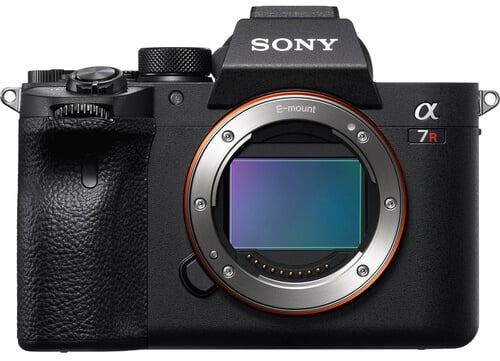
If you are on the hunt for a mirrorless camera and are thinking about getting a Sony a7R IV used camera, you came to the right place! I know how hard it is to find your perfect camera in today's crowded marketplace, but we are here to help.
This article shares everything you need to know about this amazing high-resolution camera. We start by examining its key features and specs before breaking down how it functions for photo and video shooting alike.
One resource with loads of Sony a7R IV used cameras, and a place I have bought and sold tons of gear, is MPB. They are a trustworthy and reliable online platform that sells used photo and video kit at unbeatable prices.
Furthermore, their cameras are carefully hand-inspected by experienced product specialists and backed by warranties, allowing you to make your purchases confidently and worry-free. You can trade-in your old gear or sell it to MPB, too, and use the proceeds to offset the cost of new-to-you-gear. It’s the ideal setup for getting outfitted with the gear you want and need!
Now, let’s dive in and learn everything there is to know about the Sony a7R IV and find out whether or not it’s the perfect camera for you!
Table of Contents
- Sony a7R IV Used: Basic Specs/Features
- Sony a7R IV Used: Imaging Capabilities
- Sony a7R IV Used: Video Capabilities
- Is the Sony a7 IV for You?
Sony a7R IV Used: Basic Specs/Features
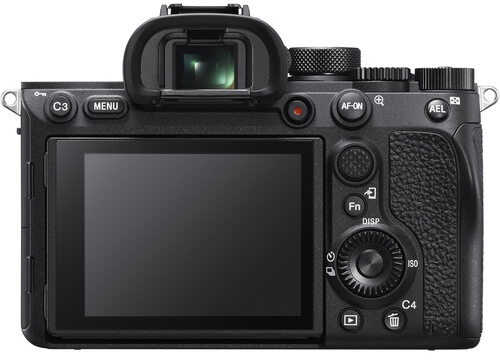
The Sony Alpha a7R IV is a professional-level mirrorless camera that debuted in September 2019. It replaced the Sony Alpha a7R III as Sony’s flagship high-resolution camera in their a7R lineup of full-frame mirrorless cameras.
At its center, a Sony a7R IV used camera features a 61.2-megapixel full-frame CMOS sensor and a powerful new Bionz X image processing engine. The pair work together to generate breathtakingly sharp photos and videos time after time.
Another standout feature that deserves to be mentioned is the strong battery life. The Sony a7R IV uses a large Sony NP-FZ100 battery that delivers an estimated 670 pictures per charge. While it’s only a slight improvement over the a7R III, it’s over double the battery life of crop sensor cameras like the Sony Alpha a6000.
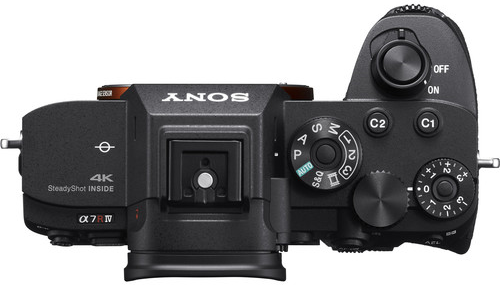
More noteworthy features include industry-leading autofocus performance, a high-resolution electronic viewfinder, 11 customizable buttons, and a fully weather-sealed body. Together, they improve the camera’s ergonomics and drastically increase workflow speeds.
Here’s an in-depth look at the key features and specs of a Sony a7R IV used camera:
- Camera Type: Mirrorless
- Sensor: 61.2MP full-frame CMOS sensor
- ISO: 100 - 32,000 (expandable to 50 - 102,800)
- Lens Mount: Sony E Mount
- Speed: 10.0 fps
- Autofocus: 567 phase-detection & 425 contrast-detection points
- Video: 4K/30p & 1080p/120p
- Size/Weight: 129 x 96 x 78 mm / 665 grams
- Battery Life: 670 shots
- Stabilization: Yes
- Touchscreen: Yes
Sony a7R IV Used: Imaging Capabilities
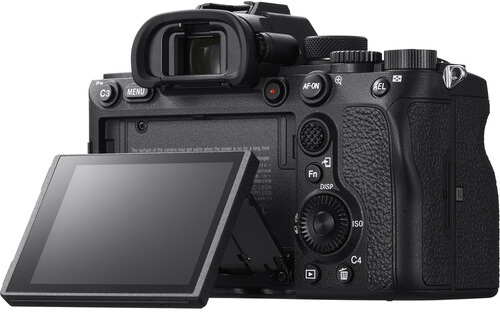
Still photography is, without a doubt, where Sony Alpha a7R IV used cameras shine brightest. Their 61.2MP max image resolution is the highest of any full-frame camera today and even rivals medium format cameras like the Phase One XF and Phase One XT.
Thanks to its remarkably high pixel count (9504 x 6336), it’s ideal for landscape and nature photography. Furthermore, it’s excellent for photographers who want to enlarge their images and don’t want to suffer a noticeable drop in image quality.
Additionally, Sony a7R IV used cameras boast a continuous shooting speed of 10 fps. This is great for burst shooting and makes them a terrific option for fast-moving sport, action, and wildlife photography.
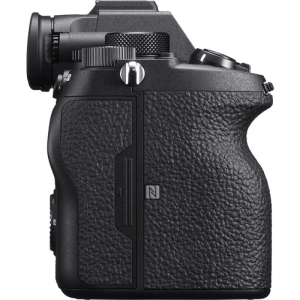
Overall, the image quality of JPEG and RAW files alike are off the charts. Both retain copious amounts of detail and have an impressive corner-to-corner sharpness. Also, RAW photos have a wide dynamic range, making them ideal for editing and adjusting during post-production.
One more awesome new feature of used Sony A7R IV cameras is the high-resolution “Pixel Shift” mode. It offers two distinct options. The first is a 4-shot 60.2MP image, and the second is a 16-shot 240MP image. While the 4-shot option is compiled in-camera, the 16-shot one needs to be constructed on the computer using the Sony Imaging Edge Application.
Learn More:
Sony a7R IV Used: Video Capabilities
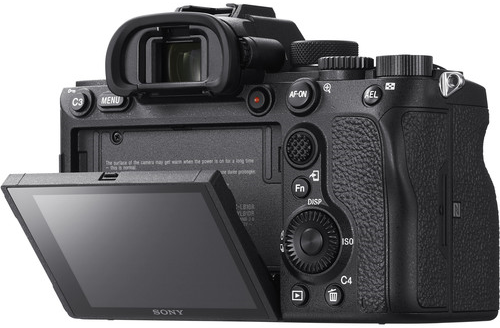
Even though their primary target audience is photographers, Sony a7R IV used cameras also have solid video specs. To start things off, it has both 4K and 1080p Full HD video capabilities. You can shoot 4K at frame rates of 24, 25, or 30p.
On the other hand, it shoots 1080p movies at speeds of up to 120 frames per second. Filming at 120 fps delivers stunning slow-motion footage that is great for product work or creating content for social media.
When recording in 4K, you can choose to capture clips using the entire sensor or from an APS-C crop (1.58x or 1.84x). The cropped view has a slightly higher video quality but, unfortunately, makes it more challenging to shoot wide-angle scenes.
Moreover, the built-in image stabilization technology helps tremendously during low-light and handheld shooting. It adds 5.5 stops of exposure and significantly decreases camera shake. Finally, Sony a7R IV used cameras have two SD card slots and no recording time limit. These features eliminate the need to change memory cards as frequently and boost productivity.
Is the Sony a7 IV for You?
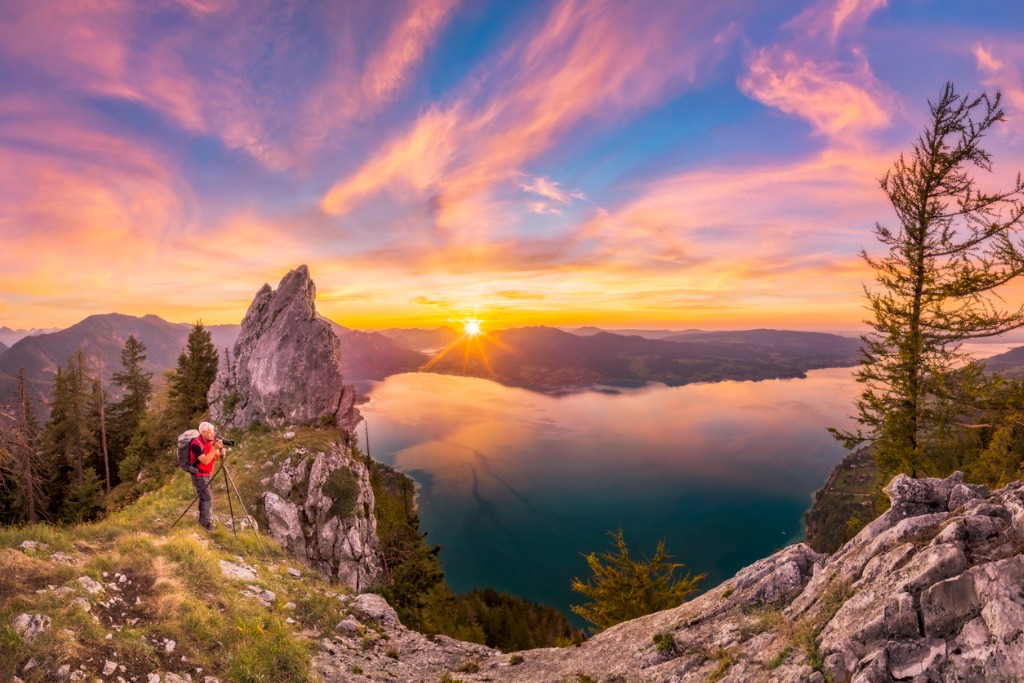
photo byDieterMeyrl via iStock
While there’s no doubt that everyone would see fantastic results from working with a Sony a7R IV used camera, it’s an absolute must-own camera for some. Those people are outdoor, nature, landscape, and wildlife photographers.
While some competitors such as the Canon EOS R5, Canon EOS 5D Mark IV, and Nikon Z7 II can put up a worthy fight, if you are in one of those groups above, nothing can match everything a Sony a7R IV used camera can offer.
I hope you found this Sony A7R IV used camera review helpful, and as a bonus, here’s a list of my favorite used Sony lenses currently available on MPB to pair with it:
- Sony FE 12-24mm f/2.8 GM
- Sony FE 24-70mm f/2.8 GM
- Sony FE 70-200mm f/2.8 GM OSS
- Sony FE 90mm f/2.8 Macro G OSS
- Sony FE 50mm f/1.2 GM
Learn More:
We Recommend
Should You Buy a Sony a7S II?
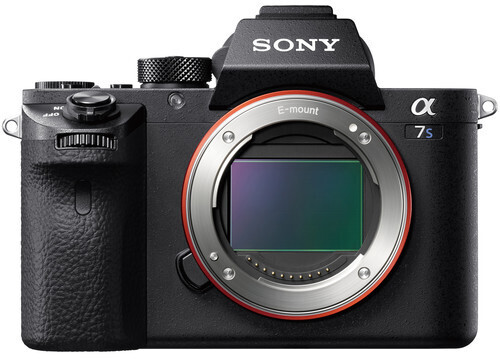
If you’re on the hunt for a new camera and considering buying the Sony Alpha A7S II, you’ve come to the right place! I’ll give you a detailed overview of the Sony A7S II and share four reasons why it’s still a great camera in 2022.
Even though Sony officially stopped manufacturing and selling new Sony A7S II cameras at the end of 2021 (in favor of its successor, the Sony Alpha A7S III), don’t let that scare you away. There are still tons of used Sony A7S II’s available, and their prices have never been lower.
One place with endless Sony A7S II cameras in stock is MPB. They’re a trustworthy and reliable online platform that sells used photo and video kit at unbeatable prices.
Furthermore, all of their cameras are carefully hand-inspected by experienced product specialists and backed by warranties, allowing you to make your purchases confidently and worry-free.
I’ve bought and sold several items with MPB over the years, and it’s always been a great experience, thus my recommendation that you check them out.
With that said, let’s dive in and discover whether or not the Sony A7S II is the ideal camera for you!
Table of Contents
- Sony A7S II Overview
- Sony A7S II Video Performance
- Sony A7S II Low Light Performance
- Sony A7S II Autofocus Performance
- Sony A7S II Price
- Is the Sony A7S II for You?
Sony A7S II Overview
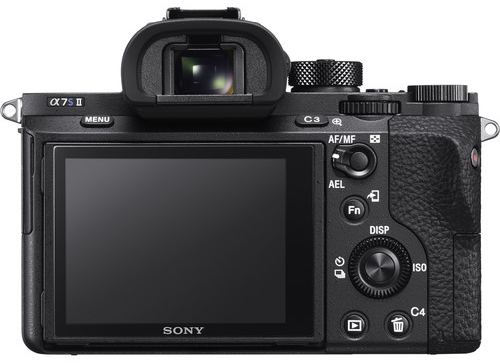
The Sony A7S II is a professional-level mirrorless camera that first hit stores in October of 2015.
At the core of the camera are a 12.2 megapixel full-frame Exmor CMOS sensor and a powerful Bionz X image processor. The pair work together to make the Sony A7S II one of the fastest and most light-sensitive mirrorless cameras on the planet.
The S actually stands for “sensitivity,” and all of the cameras in the specialty A7S lineup are primarily aimed at videographers, filmmakers, and low-light shooters. The max ISO is the highest found in any Sony camera, and noise is kept to a minimum even when shooting at high ISO levels.
The biggest weakness of the Sony A7S II is that its 12.2MP resolution for still photography is relatively low compared to most modern cameras. Hybrid shooters will see better results with the Sony Alpha A7 III, while photographers who never shoot video will love the Sony Alpha A7R IV.
Here’s an in-depth look at the key features and specs of the Sony A7S II:
- Sensor: 12.2MP full-frame CMOS sensor
- ISO: 100-102,400 (expandable to 50-409,600)
- Lens Mount: Sony E Mount
- Speed: 5.0 fps
- Autofocus: 169 contrast-detection points
- Video: 4K/30p & 1080p/120p
- Size/Weight: 127 x 96 x 60 mm / 627 grams
- Battery Life: 370 shots / 60 minutes of 4K video
- Stabilization: Yes
- Touchscreen: Yes
Sony A7S II Video Performance
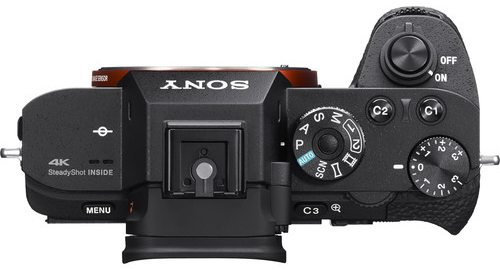
The video capabilities of the Sony A7S II are without a doubt the number one reason it’s still a popular camera today.
For starters, it records stunning 4K UHD video internally at speeds of 24 or 30 fps. On top of that, it uses the whole sensor during 4K recording, meaning no crop factor is applied.
During 4K video capture, you can choose from various color profiles such as S-Log2, S-Log3 Gamma, and S-Gamut3. This enhances the dynamic range of your footage and allows you to have more control during the post-production editing process.
Additionally, the Sony A7S II can record 1080p Full HD video at speeds of up to 120 fps. That means you can create smooth slow-motion videos in-camera, speeding up your overall workflow. Alternatively, you can record 1080p videos at 60 fps and slow them down manually using programs like Adobe Premiere or Final Cut Pro.
A few other noteworthy video features worth highlighting are the 5-Axis SteadyShot INSIDE Image Stabilization technology, the ability to create as many custom color profiles as you desire, and the fact that it has multiple different timecode recording options.
Sony A7S II Low Light Performance
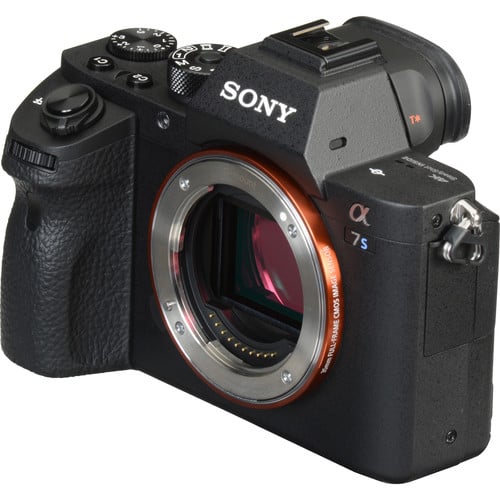
Another reason the Sony A7S Mark II is still a great camera in 2022 is its killer low-light performance.
There are three principal driving forces behind its superior low-light performance. The first is the aforementioned in-body image stabilization. The second is that it utilizes its entire sensor during video recording, and the third is that there is no pixel binning.
The 5-axis image stabilization adds 4.5 stops of exposure and helps reduce five different types of camera shake. Additionally, using the entire area of the full-frame sensor means more light is captured, and there is less noise whenever you need to boost the ISO. Finally, ditching pixel binning means better video quality and less moiré and aliasing.
Learn More:
Sony A7S II Autofocus Performance

Next, I have to mention the autofocus system of the Sony A7S II. Sony is the unquestioned king of autofocus in digital cameras, and the algorithm powering the AF system of this camera is no different.
The Sony A7S II uses 169 contrast-detection points and does a terrific job locating and tracking subjects in both photo and video modes.
Even though the autofocus is slower than newer Sony cameras that use hybrid AF systems featuring phase-detection and contrast-detection points, it’s still industry-leading.
And while I highly recommend using manual focus when shooting video whenever you can, having the option to switch over to the effective autofocus certainly comes in handy at times.
Sony A7S II Price
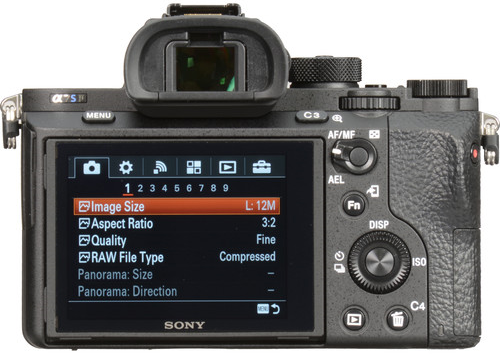
Last but not least, there’s the unbeatable price of the Sony A7S II…
Whereas its replacement, the Sony A7S III, checks in at a whopping $4000 on websites like Amazon, you can find the A7S II for well under half the price on platforms like MPB.
At those prices, it’s undoubtedly one of the best bargains out there. It’s no wonder it continues to be one of the most sought-after cameras by videographers and filmmakers alike.
Is the Sony A7S II for You?
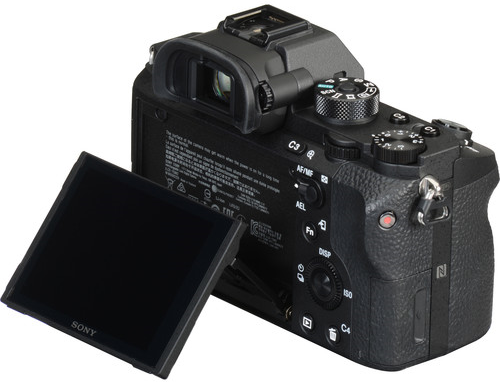
If video work is the name of your game, you should definitely consider investing in a Sony A7S II. While it may not be the newest camera on the market, it still boasts advanced video features, powerful low-light performance, and speedy autofocus.
Furthermore, now you can get your hands on one of these bad boys for only a fraction of the cost of other comparable video cameras.
I hope you have found this information helpful, and as a bonus to you for reading the entire article, here is a list of some of my favorite lenses to pair with the Sony A7S II!
- Sony Zeiss Sonnar T* FE 55mm f/1.8 ZA
- Sony FE 85mm f/1.8
- Sony Zeiss Vario-Tessar T* FE 16-35mm f/4 ZA OSS
- Sony Zeiss Vario-Tessar T* FE 24-70mm f/4 ZA OSS
- Rokinon AF 50mm f/1.4 FE
Learn More:
We Recommend
Should You Get a Full Frame or Crop Sensor Camera?
photo bynd3000 via iStock
Whether you are starting out in serious photography or you are ready to upgrade your photography gear, you are faced with the question of getting either a Full Frame or crop sensor camera.
There are so many good reasons for choosing Full Frame or crop sensor cameras, so let’s see a few good examples of cameras in the various types and sizes.
There are actually two major formats for crop sensor cameras, APS-C and MFT (Micro Four Thirds), but I’m going to concentrate on APS-C for a couple of good reasons (which I’ll explain in a bit).
Table of Contents
- Full Frame or Crop Sensor Format - the Differences
- Full Frame or Crop Sensor Cameras - What’s Available?
- Nikon Z7 II
- Nikon Z6
- Canon EOS R6
- Full Frame or Crop Sensor Lower Cost Options
- Fujifilm X-T4
- Sony Alpha a6000
Full Frame or Crop Sensor Format - the Differences
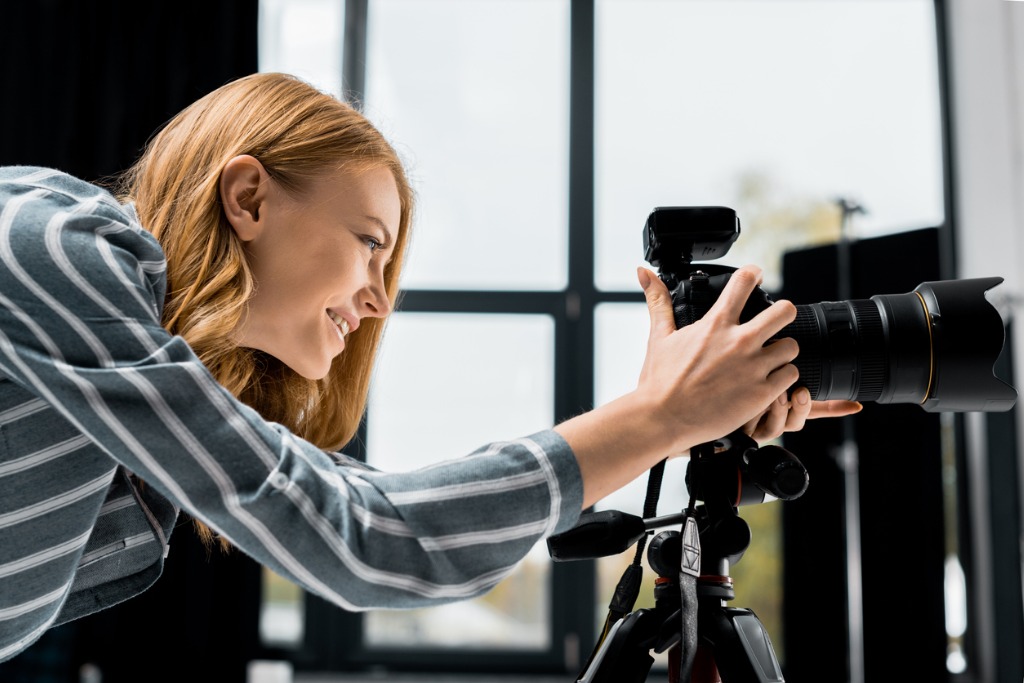
photo byLightFieldStudios via iStock
“Should I buy a crop sensor camera or Full Frame camera?” is a question with many valid and correct answers. One thing is for sure - whether you opt for crop sensor or Full Frame format, you want the best tool for your needs and the best value for your budget.
Many of the best cameras in Full Frame or crop sensor formats are mirrorless. Most of these can be found on an online platform for used photographic gear such as MPB.
I really like MPB for finding discounted pricing on fantastic cameras and lenses. Many of the items for sale are still in current production, and MPB also offers a six-month warranty on most items they sell.
Since so many modern cameras in Full Frame or crop sensor format have excellent resolution, one of the major differences has more to do with low-light sensitivity than image resolution.
All other things being equal, a Full Frame sensor has better low-light performance than a comparable resolution crop sensor camera.
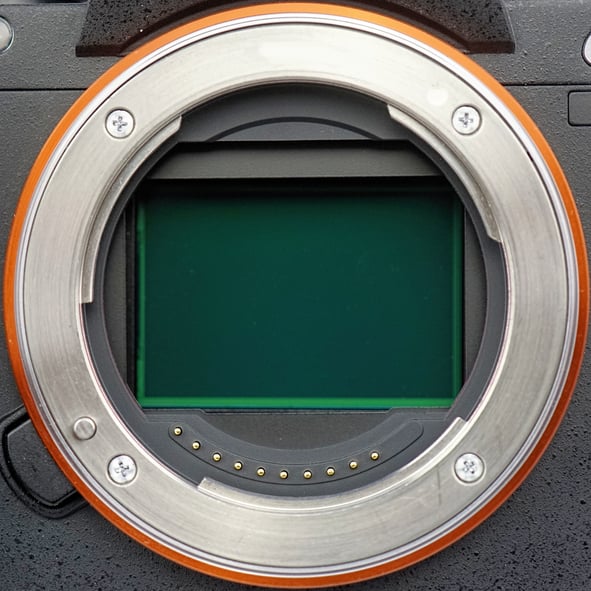
photo bygeogif via iStock
With the different film and digital sensor formats, the larger the size of your image capture, the more information it holds. This encompasses pure resolution but also includes color information and exposure detail.
However, another axiom is that the bigger your base format, the pricier things get. This applies to lenses as much as it does to camera bodies.
An exception to this rule seems to be in regards to MFT equipment. Most of the MFT cameras and lenses are firmly in the intermediate, prosumer, and pro categories, with prices reflecting that placement.
If we were discussing Full Format or crop video only for videography, I would list all three formats, with MFT having a very strong showing. For general photographic use, though, I’ll focus on APS-C as the crop format.
Full Frame or Crop Sensor Cameras - What’s Available?
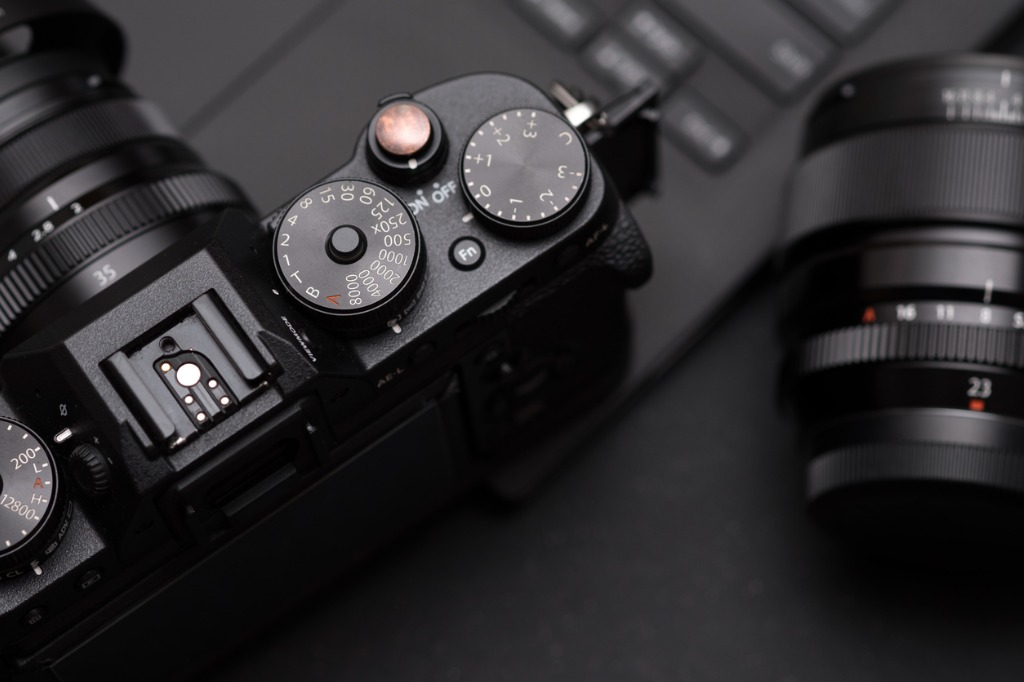
photo bystructuresxx via iStock
A lot more could be said about Full Frame or crop sensor cameras. In fact, we’ve said a lot more on Photography Talk, so check out some of our other articles for complete details.
In the meantime, let’s take a look at some of the great choices we have available in Full Frame or crop sensor mirrorless cameras.
Nikon Z7 II
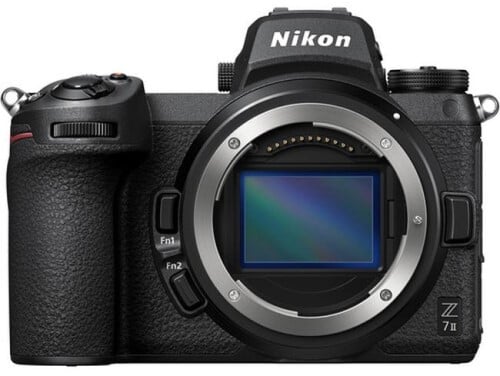
One of the premier Full Frame mirrorless cameras is the Nikon Z7 II. It’s a professional-level camera with a super-high resolution 45.7MP Full Frame sensor that also provides superior video with 4K recording.
It uses dual Expeed 6 image processors, has a 493 point autofocus system, 5-axis in-body image stabilization, dual card slots (CFExpress and SD), and the ability to work with close to 70 years worth of Nikon and Nikkor lenses with the optional lens mount adapters.
The MPB price for a Like New condition camera body at the time of this writing is $2,939.00. Considering this camera is the current camera model, it’s a very good value, especially with all that this camera can do.
Nikon Z6
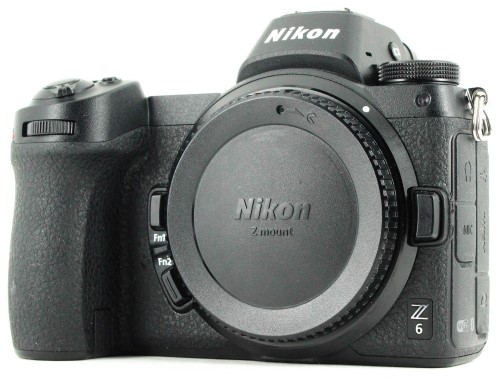
The original Nikon Z6 is a fantastic bargain for a Full Frame format mirrorless camera, coming in at $1229.00 for a Like New condition camera body at the time of this writing.
While it doesn’t have the extreme resolution of the Z7 or Z9 cameras, 24MP is great for all sorts of still photography and videography. Remember, we used full-fledged pro models with 12MP just a few short years ago.
One of the most desirable results from this Full Frame sensor is the superb low-light performance it provides. This camera is a great choice if you like street photography, wedding photography, or similar genres. Low-light performance remains one of the performance issues separating Full Frame or crop sensor cameras.
Canon EOS R6
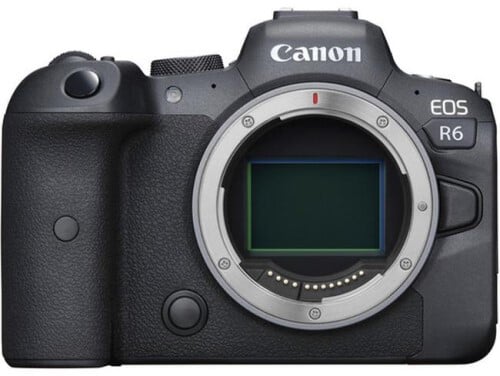
Another fantastic option for low-light performance and general professional performance in Full Frame mirrorless is the Canon EOS R6 camera, which can be found in Like New for only $2469.00 at this time.
This camera is definitely a low-light champ with sensor sensitivity reaching all the way up to ISO 102,400.
Other great features are an extremely quick and accurate AF in all light levels and super-fast still image capture cycling with the camera reaching speeds of 12 fps. It also boasts 4K video capability.
Learn More:
Full Frame or Crop Sensor Lower Cost Options
Answering the question of whether Full Frame or crop sensor cameras are best, any of these cameras make a good case for opting for Full Frame. Now let’s see some great APS-C sensor camera choices.
Fujifilm X-T4
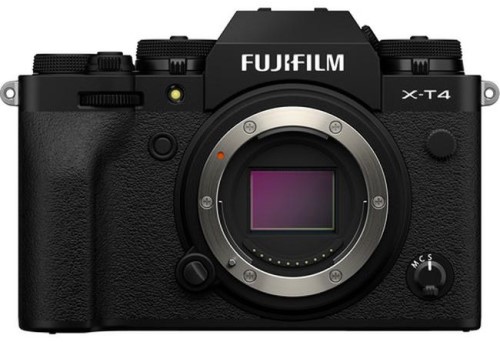
The Fujifilm X-T4 is a fully pro-capable APS-C format camera with a 26.1MP sensor and an amazing 6.5 stop in-camera image stabilization feature. This camera firmly makes a great case for the smaller format in the Full Frame or crop sensor competition.
Since it’s an APS-C format camera, it is smaller and lighter than comparable Full Frame, as are many of the lenses available in Fujifilm X-Mount. In Like New condition, you can find this camera for only $1489.00 at the moment, in either a chrome or black finish.
Besides the savings in size, weight, and money, you also gain several valuable features such as 4K video, 15 fps still imaging speed, ISO of 160-12,800, and 425 AF points.
Sony Alpha a6000
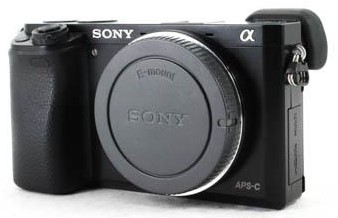
Anyone searching for a super bargain in a fine mirrorless APS-C camera should definitely consider the Sony Alpha a6000 APS-C 24MP camera. In Excellent condition, you can find this camera at MPB for $409.00 right now.
It’s really compact yet has a pleasing form factor and is comfortable to handhold. Combined with a Sony E-Mount lens, you can answer the question of Full Frame or crop sensor camera with a nod towards substantially lower prices with high-end performance.
As we explained at the start, there are many valid and correct answers concerning whether Full Frame or crop sensor mirrorless cameras are the way to go. Shopping at an online platform such as MPB helps make any decision a little easier.
Learn More:
- Fujifilm X-Pro 2 vs X-Pro 3
- How to Save Money when Buying Photography Gear
- 4 Benefits of Buying Used Cameras
We Recommend
Sony a5000 Review
The Sony a5000 is definitely getting up there in age. The Sony a5000 came out in 2014, which means it is now 7 years old. Of course, this means that this camera has a lot of out of date specs, but people still buy it!
Even when it first came out the Sony a5000 was specifically marketed to beginner photographers and the thing about an entry-level mirrorless camera is that it is designed to keep your shooting experience simple. Despite its age, the Sony a5000 still does that. So, for a lot of beginner photographers, or photographers who are new to the mirrorless shooting experience, the Sony a5000 is a great, cheap way to transition.
This doesn’t mean that you aren’t going to be giving a lot up if you do opt to purchase the Sony a5000 over a more modern mirrorless camera, even one designed for entry-level shooters. The question that you need to ask yourself is whether the features you’ll be giving up are features that you can live without if you get a steal of a deal. For a lot of photographers, the answer is that they absolutely can.
In this Sony a5000 review, I’m going to walk you through the Sony a5000 specs, the Sony a5000 design, and the Sony a5000 video performance. Then I’ll tell you how to save a ton of money on the Sony a5000 price.
Sony a5000 Specs
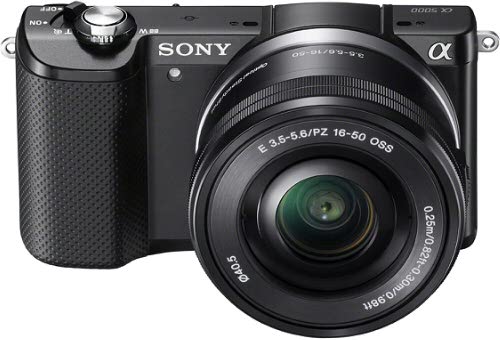
The Sony a5000 features a 20MP APS-C sensor, a 3” tilting touchscreen, and some incredible beginner aids, like Auto Object Framing, which allows you to capture photos with a better composition.
Even back in 2014 it seems that Sony was interested in creating a camera that would be good for selfies and vlogging, which is why the touchscreen can tilt 180-degrees. The Sony a5000 also comes with built-in Wi-Fi and one-touch NFC connectivity so that you can upload all of your photos straight to different social media sites.
The Sony a5000 is incredibly small and lightweight. It weighs just over half of a pound and is perhaps a little too big to fit in a pocket, unless you’re lucky enough to live in a part of the world where you wear coats year round.
There are obviously some more advanced specs that the Sony a5000 is missing. For instance, it obviously cannot shoot 4K video, although it can shoot Full HD video at up to 60p.
Other Sony a5000 Specs Include:
- 20MP sensor
- Full HD video capabilities at up to 60p
- 3” tilting LCD screen
- 3.5fps burst mode
- ISO range of 100-16,000
- Built-in Wi-Fi
- .59 lbs
- 420-shot battery life
Sony a5000 Body & Design
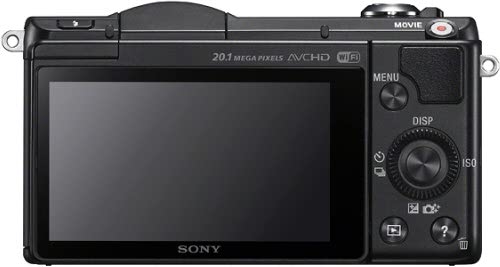
The Sony a5000 is designed quite like the NEX-3N, which is what it was modelled after. It is compact, but it features a good, deep grip. It is also texturized so you should be able to handle it quite easily.
I wouldn’t recommend the Sony a5000 for a left-handed shooter because all of the buttons are located on the right side of this camera. I imagine it would probably make for a frustrating shooting experience, though it is wonderful for me.
You can also expect to find the zoom lever and the power button on the top of the camera, alongside a movie record button and the pop-up flash.
Learn More:
Sony a5000 Build & Handling
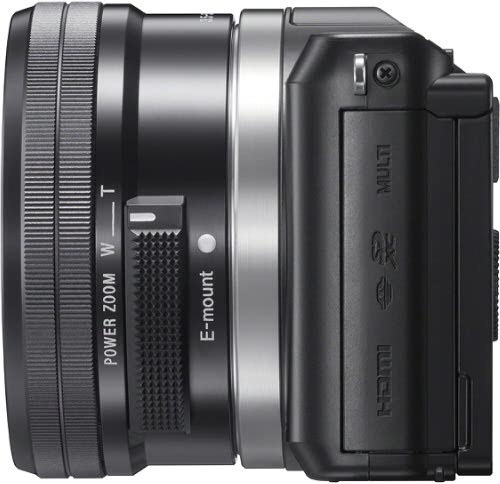
The Sony a5000 build measures 4.33” x 2.48” x 1.42” and weighs just 0.59 lbs. The build is similar to the Sony a6000.
The Sony a5000 handling is a big reason why people still insist on buying this camera, especially for vlogging. It’s small and lightweight and is great for shooting at arm’s length. With its powerful battery life of 420-shots per charge, you can expect this camera to last for a full day of shooting.
If you are planning on doing a lot of one-handed shooting, then rest assured that the Sony a5000 should also feel quite comfortable in your hand, given its large grip that was made for just this purpose.
Sony a5000 Video Performance
The Sony a5000 video performance isn’t anything to write home about, but it’s solid given its age and cheap price point.
As BoostLeekd Media points out in his video test above, the Sony a5000 is a really good vlogging camera because of its flip-up screen, because of its small size, and because of the availability of image stabilized lenses.
Of course, there are some negatives to its video performance too. For instance, you can’t record great audio on it because there is no audio input.
Sony a5000 Price
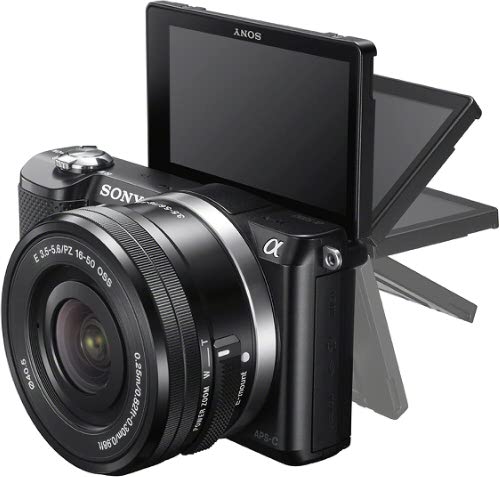
Given the fact that the Sony a5000 is so old it is obviously no longer in production. This means that you can’t get a new Sony a5000. However, this could be beneficial for you. Whereas the Sony a5000 used to sell for $600, you can now find it online for far, far less. The Sony a5000 price is one of this camera’s greatest draws.
We recommend that you look for a used Sony a5000 on MPB because they are one of the used camera retail sites that we trust the most. Every piece of equipment on MPB has been meticulously rated. You know exactly what you can expect to show up at your front door.

MPB also offers a really straightforward return policy if you figure out that the camera you just purchased isn’t actually going to work for you.
Right now, MPB has 4 different Sony a5000 bodies for sale and they start at just $189. They range from good to excellent condition and all come with a charger, a battery, and a front body cap so you won’t need to worry about buying anything else in order to get started shooting.
Of course, if this is still a little bit too pricey for you, then you can offset the cost of your new Sony a5000 by trading in your old equipment. MPB offers a hassle free trade in process for all of your old cameras, lenses, and gear.
Learn More:
We Recommend
Sony a5100 vs Sony a6000
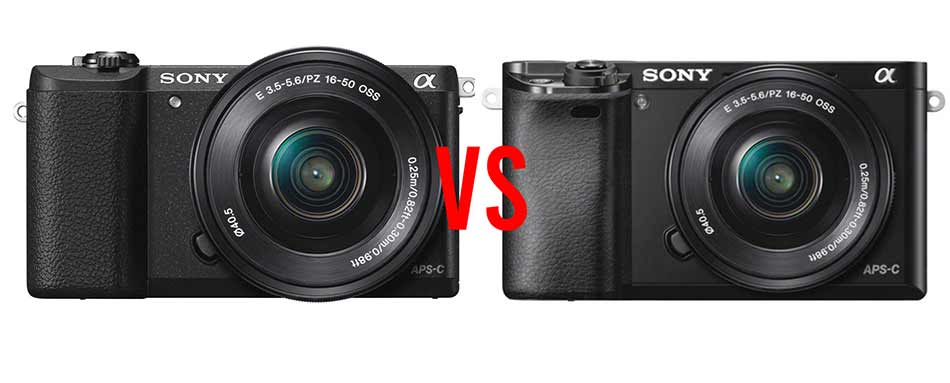
Sony a5100 Vs Sony a6000 Comparison
The Sony a6000 is the most popular mirrorless camera of all time, and the Sony a5100 hasn’t done too bad with sales either.
What makes this line one of the most popular in the world is that the cameras in it offer high-quality shooting at amateur-pricing, especially now that both of these cameras are over 5 years old. In fact, they actually both came out in 2014, just a few months apart.
So, what makes the Sony a6000 more popular than the Sony a5100? What makes this line popular at all?
Let’s dive right into our Sony a5100 vs Sony a6000 article to find out.
Sony a5100 vs Sony a6000 Specs
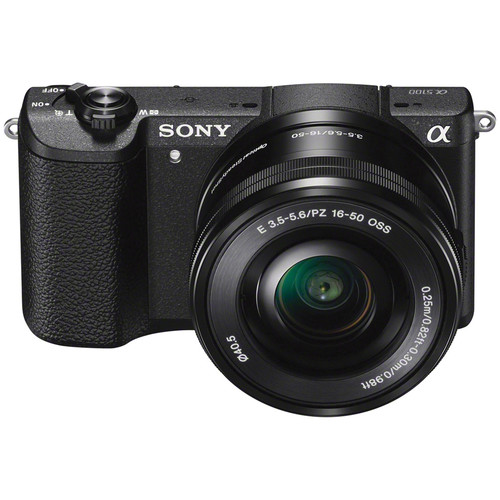
Sony a5100
The Sony a5100 vs Sony a6000 debate begins where every great camera debate should: at the specs.
I’m going to start by giving an overview of the Sony a5100 specs before discussing the Sony a6000 specs, and finally giving a breakdown about what the (very few) differences are.
The Sony a5100 is a relatively small camera at 2.5 x 4.3 x 1.4 inches. That means that a lot of parts to this camera are also small, like its small and shallow grip.
While I don’t personally own a Sony a5100, I have shot with one before and I found it sort of off-putting because I tried to shoot with a large lens and didn’t feel like the size of the camera body was adequate enough to handle it.
The Sony a5100 screen is actually quite impressive. It’s a 3” LCD touchscreen, which functions pretty well for how old its technology is.
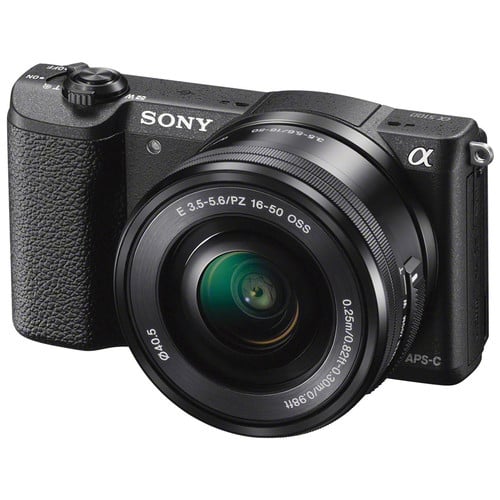
Sony a5100
Other Sony Alpha 5100 Specs:
- 24MP sensor
- ISO range of 100-25,600
- 3” tilting touchscreen with 921k-dots
- 6fps burst mode
- Full HD video
- Built-in Wi-Fi
- .62 lbs
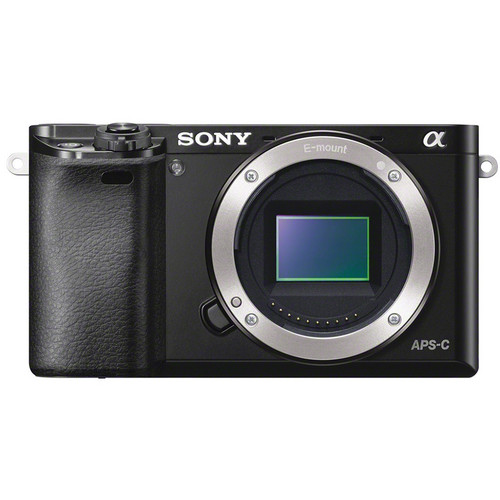
Sony a6000
Now, onto the Sony a6000. The biggest difference in these two cameras is that the Sony a6000 has an electronic viewfinder, whereas the Sony a5100 doesn’t have one at all.
However, the Sony a6000 also has a better burst mode at 11fps.
Other Sony a6000 Specs:
- 24MP sensor
- ISO range of 100-25,600
- 3” tilting touchscreen with 921k-dots
- Full HD video
- 11fps burst mode
- Built-in Wi-Fi
- .76 lbs
So, as you can tell, the only major differences between the Sony a5100 vs. Sony a6000 is the presence of a viewfinder in the Sony a6000 and the higher burst rate.
Sony a5100 vs Sony a6000 Body & Design
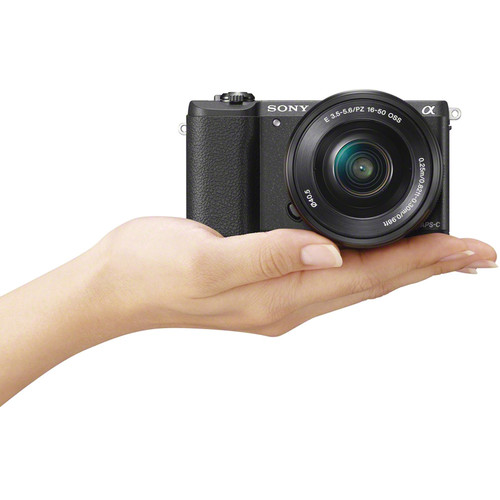
Sony a5100
I talked about the Sony a5100 body a little bit in the section on specs above. But, suffice it to say, this is a really small camera. It isn’t large and it barely weighs anything, and I can echo these exact thoughts with the Sony a6000 body.
A lot of the similarities of these cameras lie in their designs. Both of these cameras feature the same tilting LCD touchscreen. They both have built-in flash and they both have UHS card support.
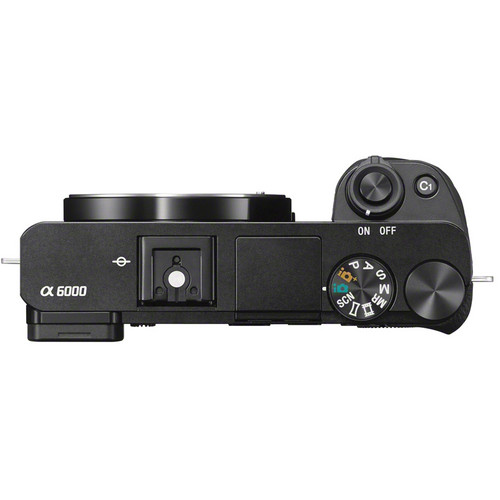
Sony a6000
Unfortunately, neither of these cameras come with either in-body image stabilization or environmental sealing, so I wouldn’t recommend them for photographers who are constantly shooting on the go.
The Sony a6000 comes with an external flash shoe, while the Sony a5100 doesn’t. I personally believe it’s a Sony a5100 design flaw.
Sony a5100 vs Sony a6000 Build & Handling
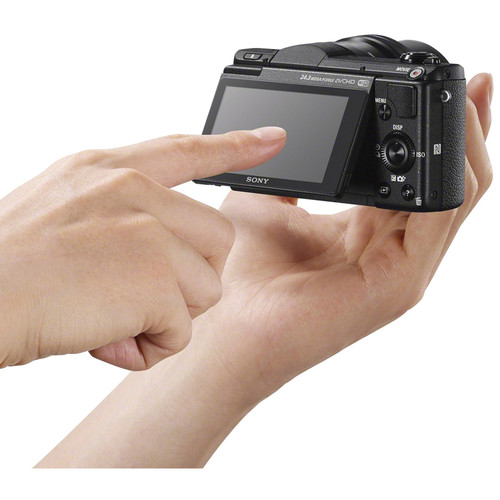
Sony a6000
As for the Sony a6000 design, it shares the exact same problems. Sony a6000 handling is definitely a challenge with larger lenses thanks to the tiny size of its body.
It comes with a ton of different buttons and dials and is customizable, so if you’ve worked with any other camera in this line then you pretty much know what to expect.
However, the grip on the Sony a6000 is more pronounced, which I thought was a welcome reprieve from the tiny grip on the Sony a5100.
Sony a5100 vs Sony a6000 Video Performance
Thanks to T-Gasolina blog for the above video comparing the video performances of the Sony a5100 vs Sony a6000.
I personally believe the Sony a5100 video performance is better than the Sony a6000, just for a few reasons listed in the video, like the fact that the Sony a5100 has an easily accessible SD card and the fact that it's cheaper and it really makes more sense to just save some money on the body to buy a better lens.
But, the Sony a6000 video performance isn’t too shabby…
I mean they both shoot Full HD video, and while the absence of an electronic viewfinder may turn you off from the Sony a5100, the end product of each of these cameras turns out pretty similar.
Sony a5100 vs Sony a6000 Price
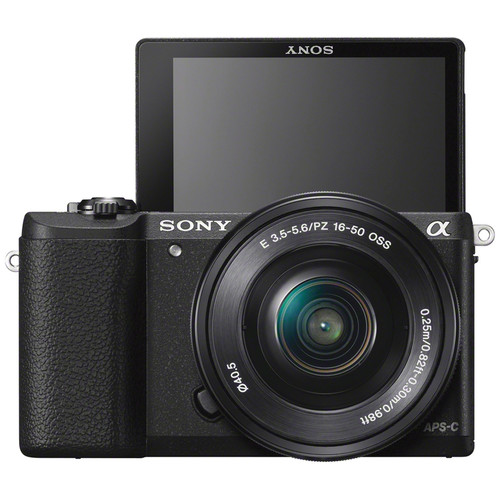
Sony a5100
Since both of these cameras are now six years old, you can pick one up for a great price. A new Sony a5100 with a kit lens can be found for around $450 while a new a6000 with a kit lens will set you back around $550.
For even more savings, you might consider buying used. Since these cameras have been on the market for a while, there is an excellent used market.
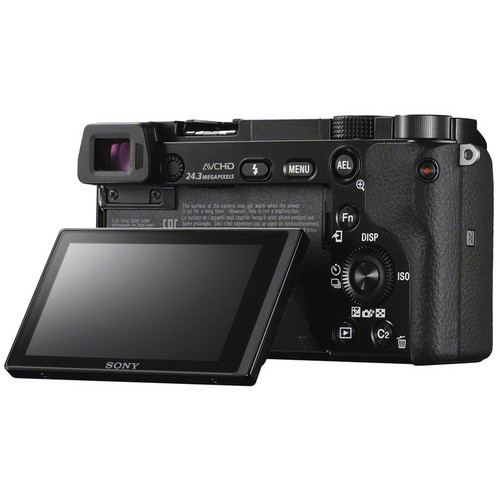
Sony a6000
For example, you can get an a6000 body in excellent condition for $379 at MPB. MPB is my used gear retailer of choice because they have such a wide selection of gear at great prices.
MPB doesn’t have any a5100’s in stock at the moment, but if you check back on a regular basis, you’ll likely find that more have come in.
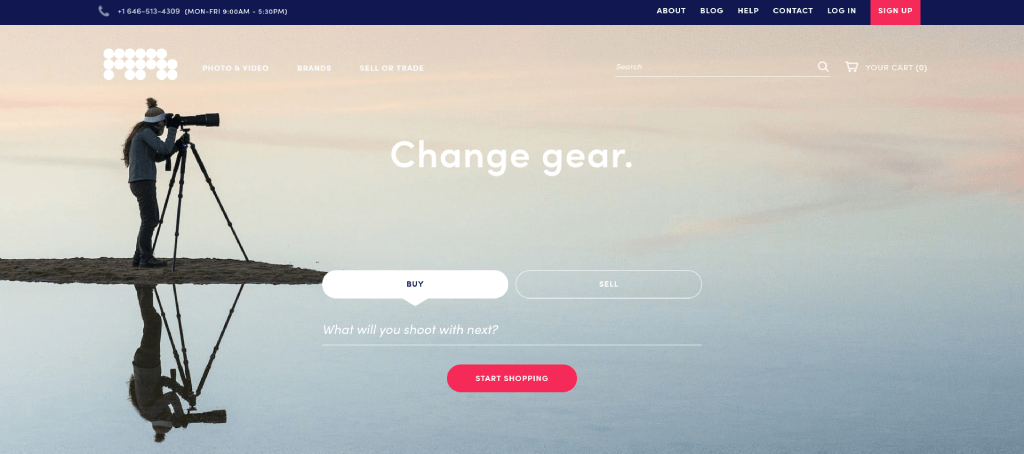
Whether you go with an a5100 or an a6000, you’ll get a well-featured camera that doesn’t break the bank - especially if you buy used. And if you’re wary of buying used, don’t be! Sites like MPB go through a painstaking process of inspecting each camera and grading it, that way you know the precise condition of the camera before you buy.
And since MPB offers a 6-month warranty on many of their items, you can rest assured that if something goes awry, they’ll be there to fix the problem!
We Recommend
Sony a6000 vs. Sony a6100
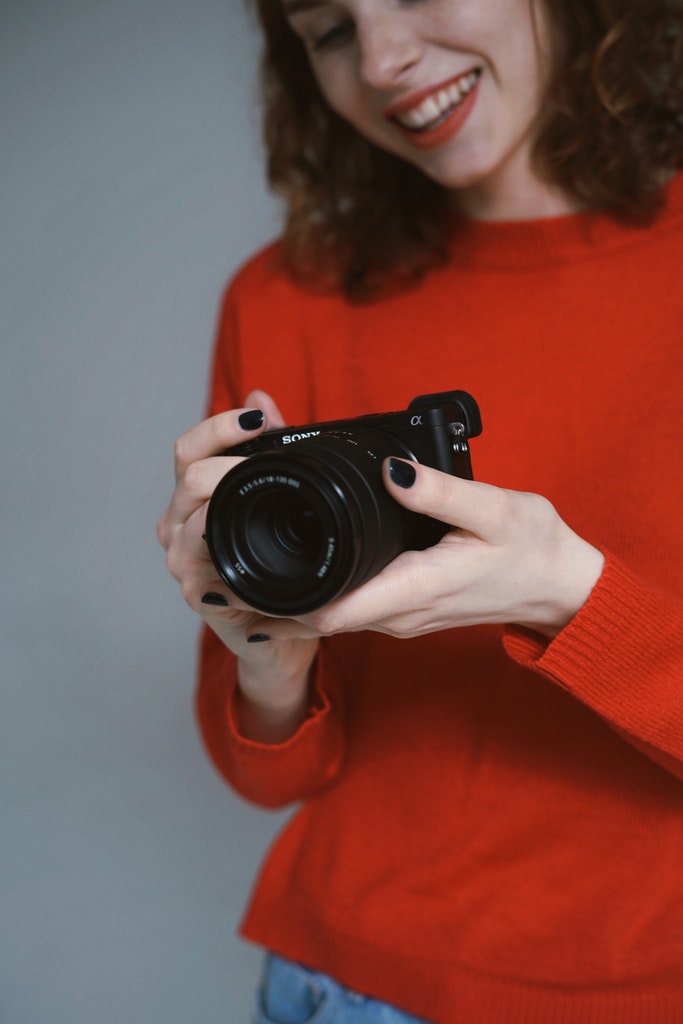
Photo by Olenka Sergienko from Pexels
Despite the similarities in their names, the Sony a6000 and the Sony a6100 have many differences.
For starters, the Sony a6000 is 6 years old, while the Sony a6100 is brand new (or at least, around 6 months old).
As you can imagine, the Sony a6000 and Sony a6100 are also starkly different in terms of pricing.
But, both of these Sony cameras represent popular camera choices for photographers.
In this Sony a6000 vs. Sony a6100 comparison, we will explore everything there is to love about them both.
Sony a6000 vs Sony a6100 Specs
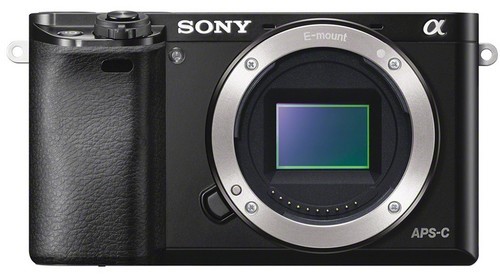
Sony a6000
The Sony a6000 was wildly popular as an entry-level compact camera when it first came out. And, to be honest, it still handles itself very well.
The Sony a6000 comes with a 24MP sensor, an incredible AF system, and can shoot at 11fps in burst mode.
Other Sony a6000 Specs:
- 24.3MP sensor
- 179-point AF system
- 11fps burst mode
- 3” tilting LCD with 921K dots
- EVF with 1.44M dots
- Full HD 1080p video capabilities
- Built-in Wi-Fi
So, with impressive specs like that, why upgrade?
Well, the Sony a6100 shoots 4K video. It also features an even better AF system with 425-points.
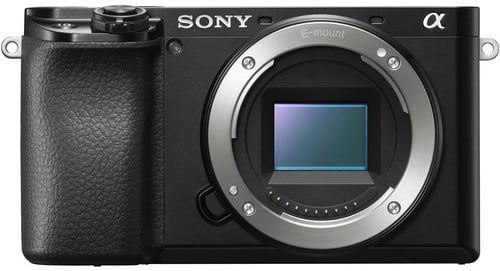
Sony a6100
Other Sony a6100 Specs:
- 24MP sensor
- 425-point AF system
- 11fps burst mode
- 3” tilting LCD with 921K dots
- EVF with 1.44M dots
- 4K video capabilities
- Built-in Wi-Fi
Recommended Photography Reading
- National Geographic Photo Basics: The Ultimate Beginner's Guide to Great Photography
- Photography: The Definitive Visual History
- Read This if You Want to Take Great Photographs
Sony a6000 vs Sony a6100 Body & Design
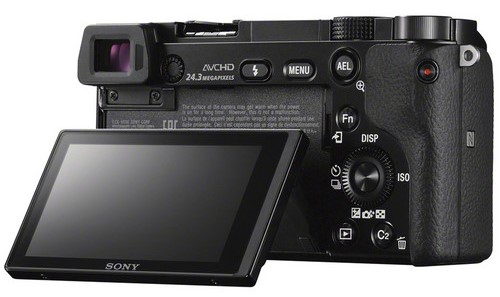
Sony A6000
Both the Sony a6000 and the Sony a6100 rely on their slim body to sell. They’re compact cameras after all.
The Sony a6000 weighs a mere .76 lbs, while the Sony a6100 weighs just .87 lbs. Both weigh less than your average compact mirrorless.
Unfortunately, this also means that the grip isn’t as large as it could be.
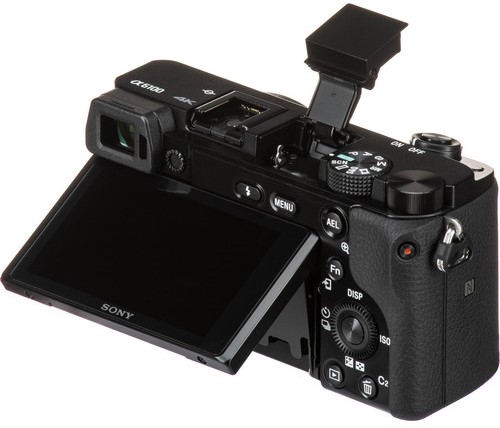
Sony a6100
Both feature a tilting touchscreen, which I’m a huge fan of. The a6100, unlike the a6000, comes with an external microphone jack so you can shoot your 4K video with any third-party microphone.
That could be a make-it-or-break-it feature for those of you like me that do a lot of video work.
Sony a6000 vs Sony a6100 Build & Handling
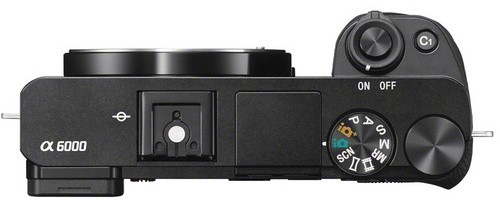
Sony a6000
As with most compact cameras, the handling of both the Sony a6000 and a6100 can leave you wanting. For example, the size of the camera makes the many custom buttons seem overwhelming at first glance.
Additionally, neither the a6000 nor the a6100 are particularly easy to handle with larger lenses.
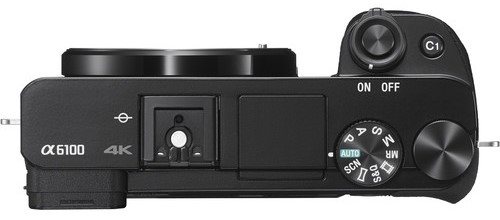
Sony a6100
Lastly, the Sony a6100’s screen is too small and low-res to do what it wants to do efficiently: be an effective touch screen.
However, once you grow accustomed to this set of compact cameras, the many customizable features are, frankly, something you won’t find anywhere else.
Sony a6000 vs Sony a6100 Video Performance
In this video by Cody Blue, you can see the Sony a6000 in action. While it cannot shoot 4K video, it can shoot incredible low-light footage and the color on all of its shots are very accurate. The ISO range is a highlight of this camera as well.
Henbu showcases what the Sony a6100 can do with its shiny new 4K video capabilities. The Sony a6100 features a wider dynamic range than the a6000, which is a definite bonus. But is it enough (along with 4K video and other upgrades) to warrant a higher price tag?
Sony a6000 vs Sony a6100 Price
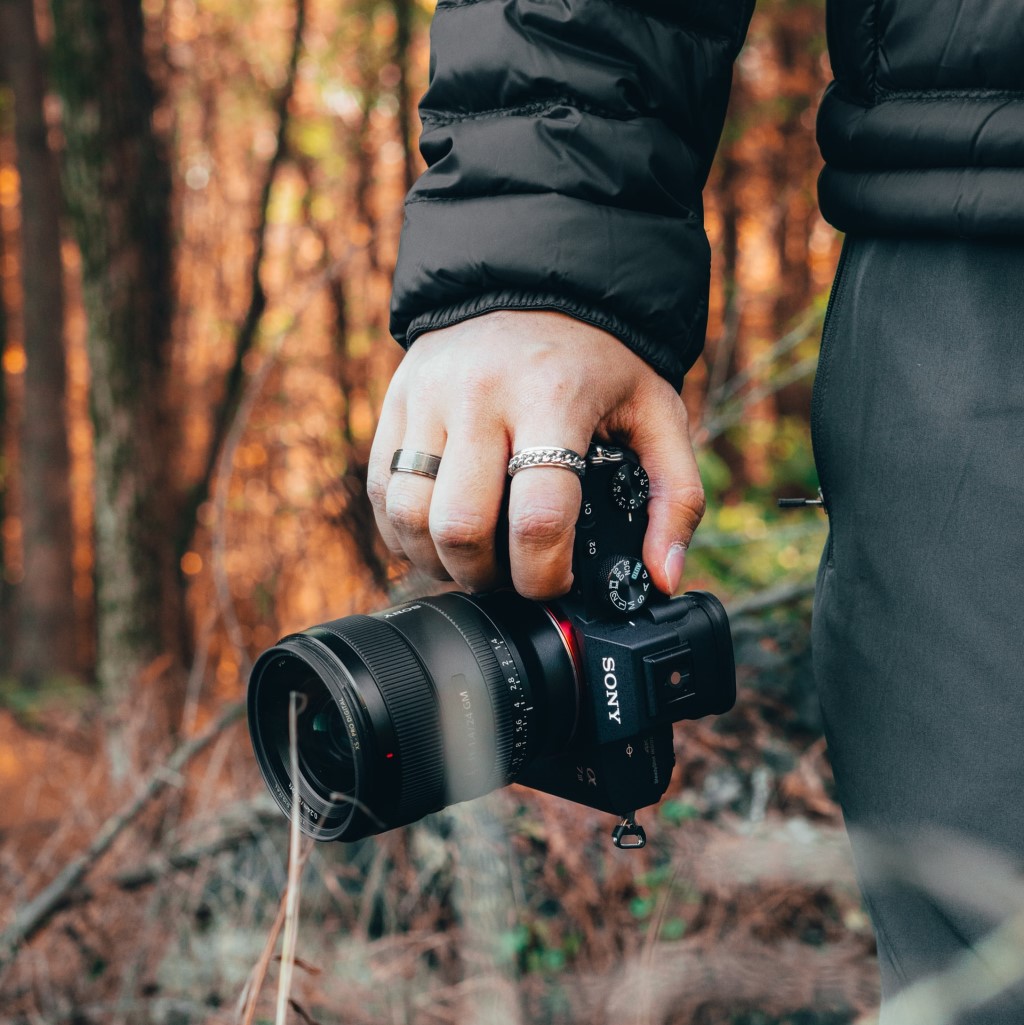
Photo by Reynaldo Rivera on Unsplash
The Sony a6000 is going to be the better choice for you if you are on a budget because the Sony a6000 price is actually pretty reasonable at $448.
Plus, you can save even more by shopping for used cameras on MPB. Here you can find a sony a6000 for $229.
If you’re on the market for a newer camera, however, the Sony a6100 can be purchased on Amazon for $600.

Unfortunately, the Sony a6100 isn’t currently available used on MPB because it’s so new. But, MPB cycles through hundreds of products everyday, so by the time you’re reading this article, you could save hundreds of dollars just by checking this page.
I’ve said it before, and I’ll say it again - buying used gear is the way to go.
Not only can you potentially save hundreds of dollars on a camera body, but you can also save on other gear, namely lenses.
In fact, I’ve saved enough money buying used camera bodies on MPB that I was able to finance multiple lens purchases with the savings alone. It’s hard to beat that!
We Recommend
Sony a6100 First Look
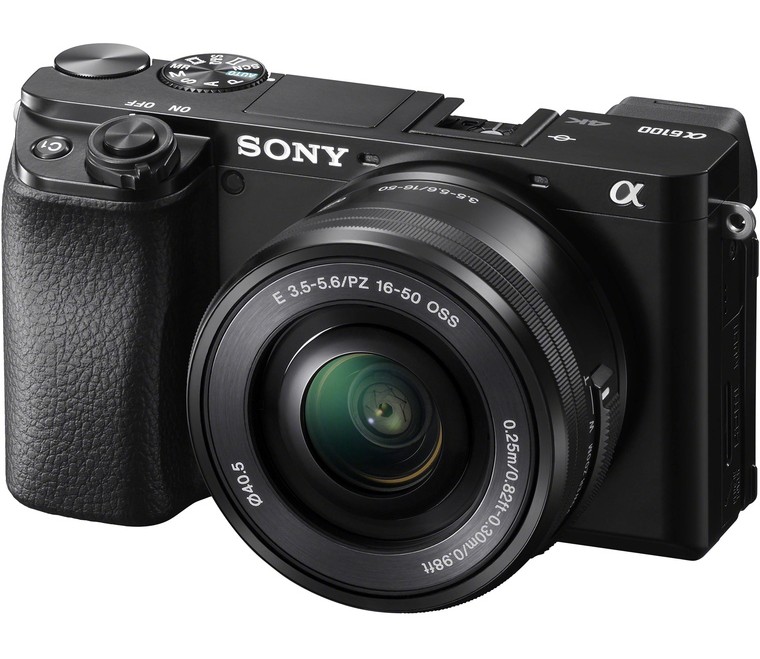
Sony a6100 Camera
It’s hard to believe the Sony a6000 is already five years old. Time flies!
But in camera years, the Sony a6000 - despite being a fantastic camera - is ancient. A refresh was needed, and that’s exactly what Sony has delivered with the new a6100.
Announced at the end of August with expected shipping in October, the a6100 fits nicely in Sony’s lineup as a “souped-up” entry-level camera. It has a great price point of under $750 (body only), especially considering the suite of features you get at that price.
Let’s take a deeper look at the Sony a6100 and see why it’s such an exciting little camera.
Sony a6100 Specs
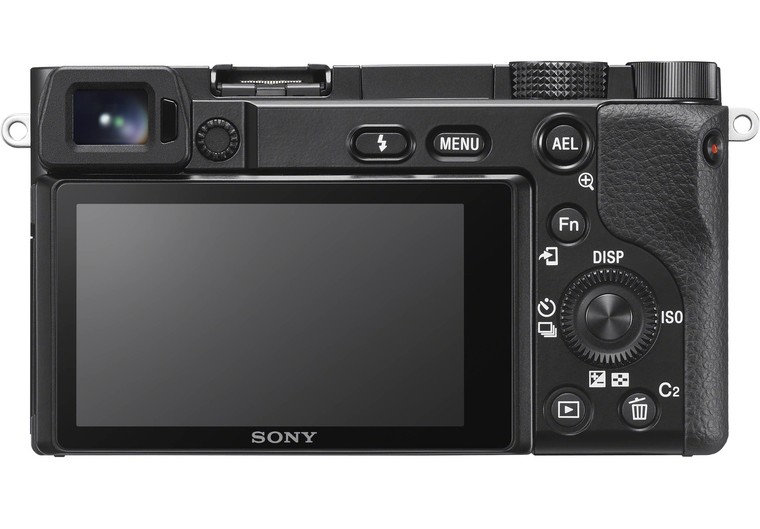
The folks at Sony made sure that their entry-level E-mount camera was modernized to be attractive to today’s shooters. Get a load of its primary specs:
- 24-megapixel APS-C CMOS sensor
- BIONZ X image processor
- 425-point hybrid autofocus system
- 3-inch tilting touchscreen LCD with 921.6K dots of resolution
- 1.44-million-dot electronic viewfinder
- ISO range of 100-32000 (expandable to 51200)
- 11 fps continuous shooting
- 4K video
- Built-in wireless and Bluetooth
Of course, the best feature on that list is the autofocus system.
Having won wide acclaim on other Sony models (like the a6400), the Real-Time Eye AF system can accurately track subjects’ faces and eyes. This is true even at 11 fps.
As you might imagine, that makes shooting video with this camera a dream, particularly when you take into account that the camera has a microphone input and a tilting LCD.
Have a look at Real-Time Eye AF in action in the video above by DPReview.
Sony a6100 Sensor
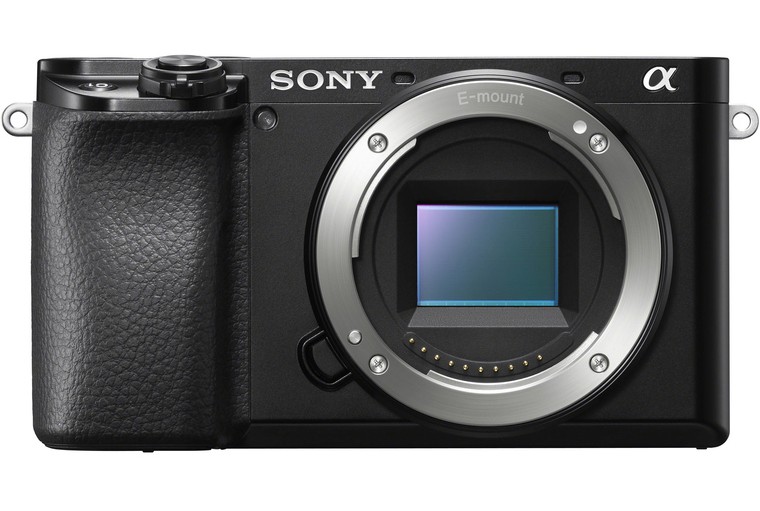
The a6100 features a 24-megapixel APS-C CMOS sensor, which is the same resolution as the sensor in the a6000.
However, it’s not the same sensor - the a6100 inherited the updated sensor from the Sony a6300 that brings a larger (and more dense) autofocus array to the table.
Likewise, the sensor supports the aforementioned Real-Time Eye AF with burst shooting at 11 fps with autofocus or 8 fps when shooting in live view.
This sensor also has improved color processing over what the a6000’s sensor was capable of achieving, in addition to 4K video at 24p, 25p, or 30p and 1080 at 120p for slow-motion video.
Sony a6100 Build & Design
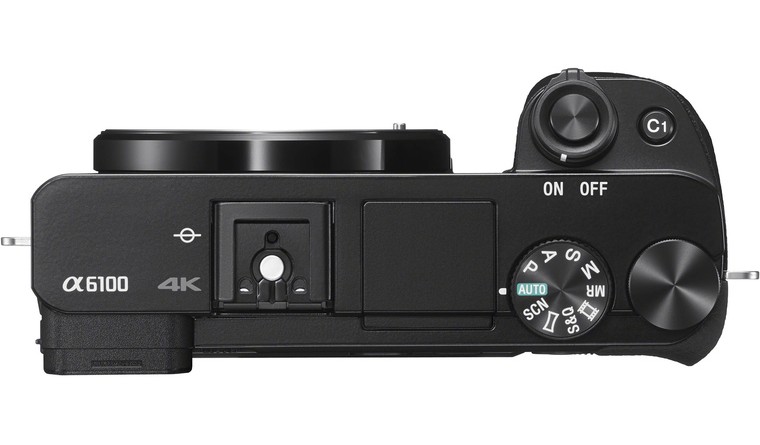
True to form, the Sony a6100 has retained the classic small-body look and feel of its predecessors.
The body weighs only .87 pounds (without a lens) and is 4.72 x 2.64 x 2.32″ in size, making it a great choice for travel photographers, street photographers, and casual photographers that want a small camera, yet a highly capable one at the same time.
The build quality is typical Sony. The camera feels good in your hand, and though it’s a small camera, the grip is nice and large (comparatively, anyway) that makes you feel confident that you’ve got a good, solid grip on it.
There is no weather sealing, so taking it out in the elements must be done with care. But, nonetheless, the camera feels well built, as you’d expect.
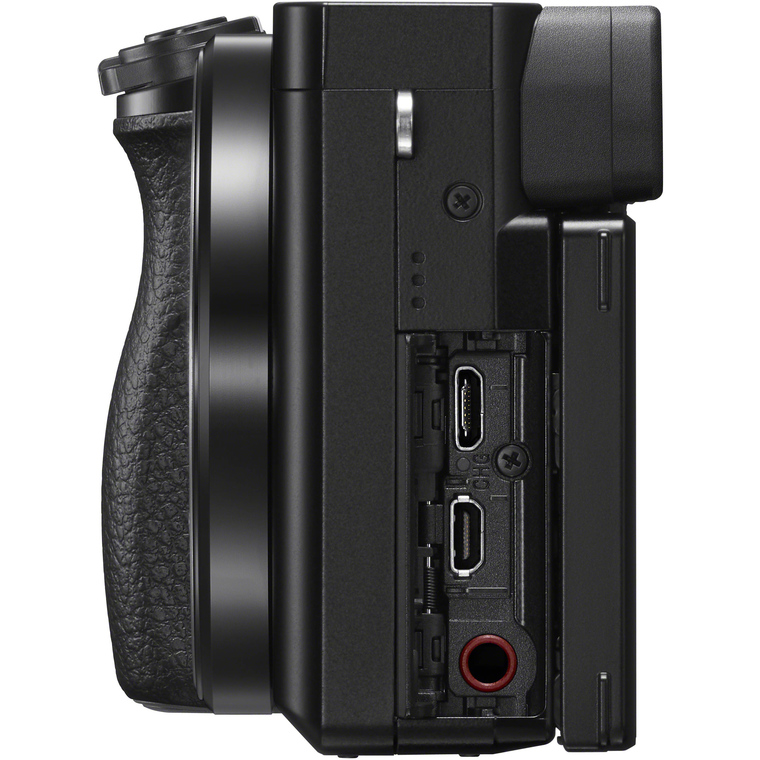
From a design standpoint, the camera is virtually the same as the a6000.
The a6100 has the same controls, the same single memory card slot, and the same-sized LCD, though the a6100’s LCD tilts from 74 degrees to 180 degrees (the a6000’s only tilted up to 90 degrees).
As noted above, the a6100 has also added a mic input, which the Sony a6000 lacked, and it has also added a Micro USB port and a Micro HDMI port too.
Unfortunately, the a6100 retains the same electronic viewfinder from the a6000, so there was room for improvement there and Sony missed the mark.
Sony a6100 vs Sony a6000
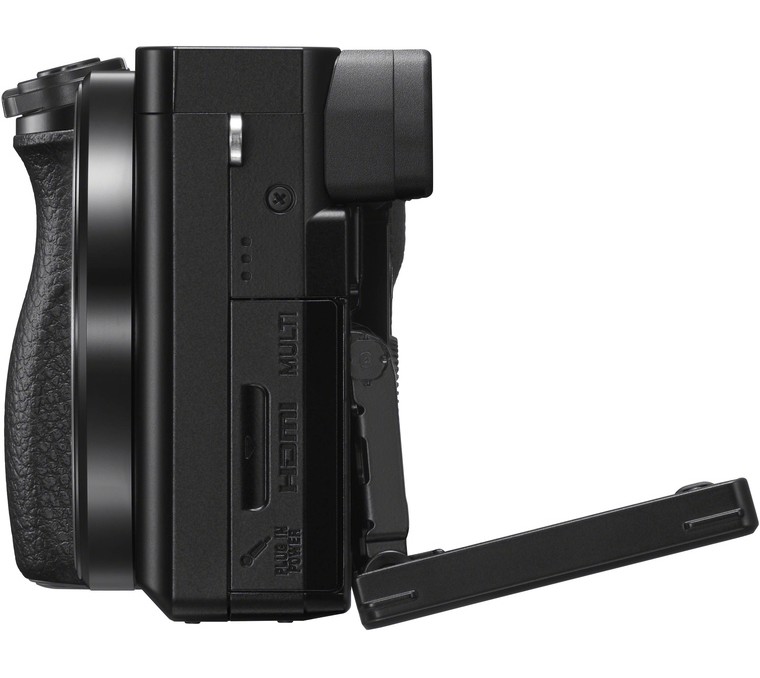
Sony a6100
As noted above, there are many similarities between the Sony a6100 and the Sony a6000, so that might beg the question, is it worth paying more for the a6100?
The answer to that is “it depends.”
On the one hand, the Sony a6000 is a great camera, even five years after its release. And given its age, you can pick one up on the cheap ($448 for a brand-new body), so there’s the financial benefits as well.
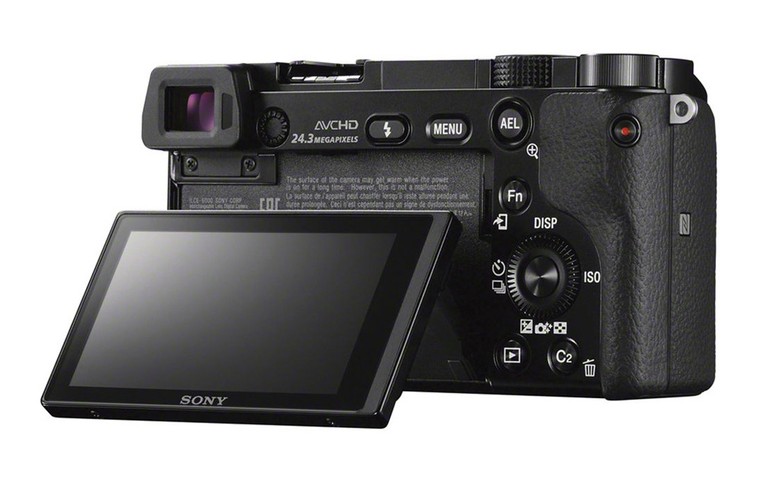
Sony a6000
Sure, the a6000 doesn’t have a touchscreen or Sony’s incredible Real-Time Eye AF system. It has far fewer autofocus points, no microphone port, and worse battery life.
However, it’s still a 24-megapixel camera with 179 autofocus points, a tilting LCD, an ISO range up to 25600, 11 fps burst shooting, and a 1.44-million-dot electronic viewfinder.
If you don’t shoot video or action stills, the a6000 can likely fulfill your every photography need. That’s particularly true for beginner photographers that want something more than a point-and-shoot.
That said, the a6100 is still a significant improvement, and for many photographers, is well worth the added $300 to the price tag.
For my money, the Real-Time Eye AF is worth the extra money on its own, so the 4K video, improved sensor, Bluetooth, better LCD, and other goodies discussed earlier are simply icing on the cake.
If you shoot video, the a6100 is definitely the better bet (unless you spring for the a6400, which has S-log profiles for grading). See a comparison of the a6100 and a6400 in the video above by Ditch Auto.
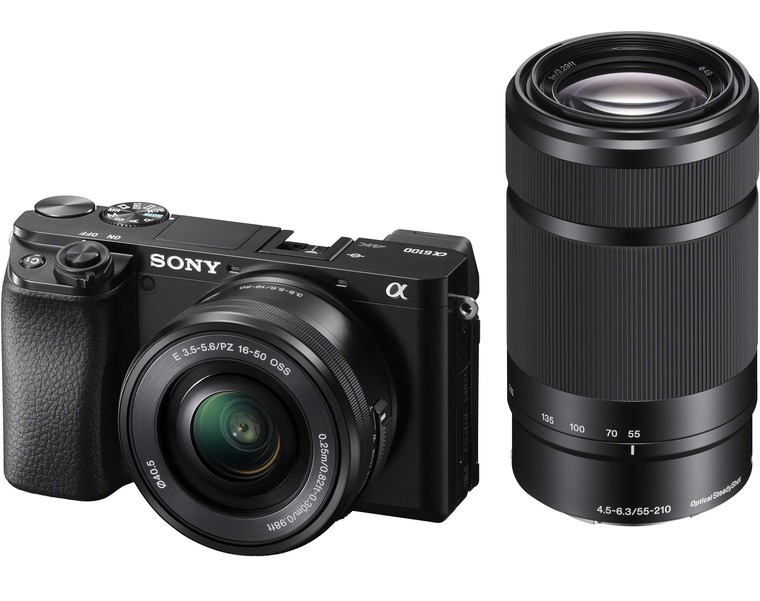
Sony a6100 with Sony 55-210mm lens
At the end of the day, the a6100 represents a good upgrade over the a6000 and fits nicely into Sony’s current lineup. It has some higher-end features from models like the a6400 and even the a9, but with a price tag that many people can afford.
We’ll have an in-depth Sony a6100 review in the coming weeks, but in the meantime, you can check out the complete specs and pricing by clicking the links to my favorite camera store, Samy’s, below. In fact, I bought my Sony a6300 from Samy’s back in 2016 (and have since bought numerous cameras and lenses from them...highly recommended!).
We Recommend
Sony a6100 Review
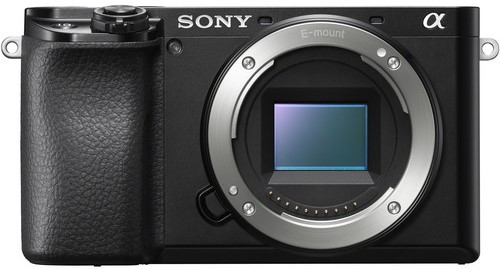
The Sony a6100 has officially been out for over a year now and that means it is high time for us to do a Sony a6100 review.
We did a first look at the Sony a6100 when it first came out, and you can read that article right here, but after having our hands on one for enough time to really shoot with it, we definitely felt like we needed to do a more in-depth take on it.
For those who don’t know, the Sony a6100 is a quasi-replacement for the Sony a6000 which came out in 2014. Sony never really got around to admitting that the Sony a6100 was really a replacement for this camera, likely because they are still selling the Sony a6000, but by reading this review you’ll quickly figure out that this is exactly what it is.
The Sony a6100 is a wonderful mirrorless option for photographers who are looking to transition from a DSLR setup. It’s also a wonderful option for vloggers who are needing an extra camera that shoots 4K video and comes with a great autofocus system. It is not, however, a good option for photographers who are really new to photography, as some of the controls will only serve to confuse you and many of them you won’t need for years to come.
Sony a6100 Specs

The Sony a6100 is a mirrorless camera with a 24MP sensor and new and improved 4K video capabilities. Fans of the Sony a6000, will be thrilled to know that theo Sony a6100 didn’t just come with upgraded video, though, because it also comes with much better still image quality, especially in low light shooting.
The Sony a6100 is also much more vlogger/influencer friendly. For instance, one of the most interesting Sony a6100 specs is its 1:1 aspect ratio option which is made specifically for Instagram photographers.
Other Sony a6100 Specs Include:
- 24MP APS-C CMOS sensor
- BIONZ X image processor
- 425-point hybrid autofocus system
- 3” tilting touchscreen LCD with 921.6k-dots
- 1.44m-dot electronic viewfinder
- ISO range of 100-32000
- 11fps burst mode
- 4K video capabilities
- Built-in Wi-Fi and Bluetooth
Sony a6100 Body & Design
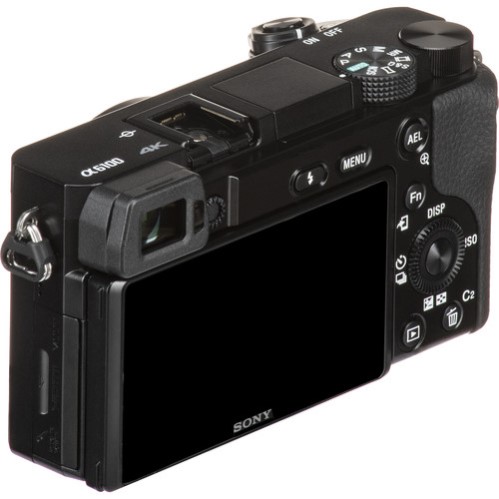
The Sony a6100 design honestly isn’t that different from the Sony a6000 design. It comes with a very small body and a pronounced grip and weighs just .87 lbs.
It measures 4.72 x 2.64 x 2.32” and will work very well for anyone wanting to take their camera with them wherever they go.
One thing to note, though, is that the Sony a6100 features no weather sealing. Some other Sony cameras come with weather-proofing because they are mostly made out of metal. Unfortunately, the Sony a6100 is made out of more plastic than metal, which means weather-proofing wasn’t going to happen.
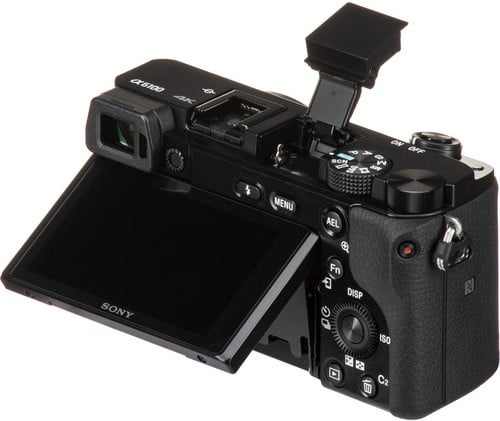
Of course, if you’re purchasing the camera for vlogging from home, then this won’t be necessary.
When it comes to the controls of the camera, it comes with a single memory card slot and the screen tilts from 74 degrees to 180 degrees. It also comes with a mic input (which the Sony a6000 did not have) and a Micro USB port and Micro HDMI port.
Learn More:
Sony a6100 Build & Handling
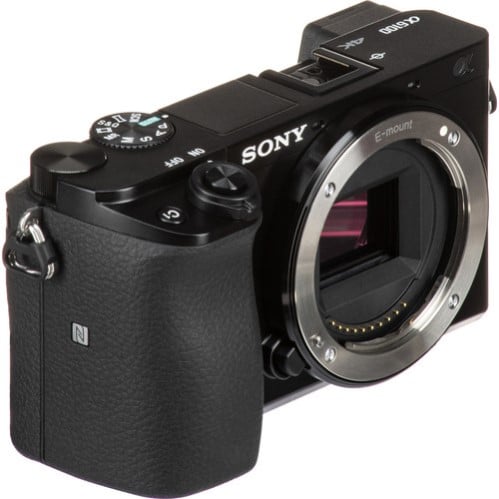
The Sony a6100 handling feels almost identical to the handling of the Sony a6000. It comes with that awesome handgrip we’ve all come to know and love and the buttons are almost exactly in the same place.
The only things that I can really say in terms of the handling of this camera is that the added mobility of the tilting LCD screen makes it much easier to photograph from odd angles and video yourself.
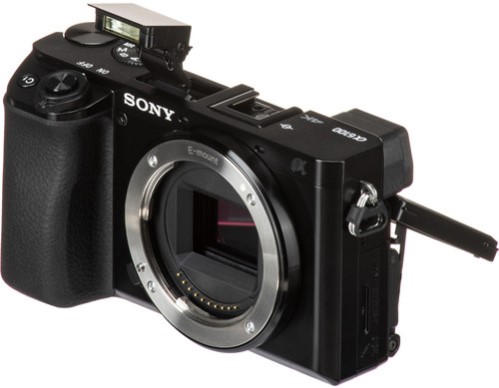
If you haven’t really worked with any other cameras in this lineup, then you should know that it doesn’t come with any control dial on its front. Sony instead opted to cram all of the buttons onto the back of the camera. For photographers who are often shooting in cold weather while wearing gloves, this has been an issue. However, I suspect that for anyone looking seriously at purchasing this camera, it likely won’t be an issue for you.
One major problem with the handling of this camera is that, while Sony did add a microphone jack, they declined to add a headphone jack. You won’t be able to monitor your audio levels if you’re a videographer.
Sony a6100 Video Performance
Thank you to Lee Zavitz for the Sony a6100 video performance test above.
As Zavitz pointed out in his review, the Sony a6100 is seriously the perfect camera for vloggers because it comes with all of the essentials, including 4K video, a flip-screen, face detection autofocus that actually works, and a reasonable price tag.
While this may not be true for everyone watching this review, Zavitz also noted that the Sony a6100 was an even more appealing choice for him because he already had a multitude of lenses that he could use with this camera. For me, this is a huge selling point for any camera.
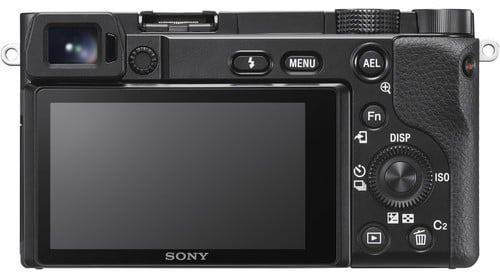
The camera shoots 4K video, which in actuality is a 6K readout that is then downsampled to 4K footage.
The autofocus system is really easy to use, whether you are a vlogger who is shooting inside a studio or not. You can tap to focus on your subject and lock them in with relative ease.
However, there are some problems with this camera which is why Sony was able to keep it so cheap. For example, the EVF is definitely not what you would expect of a camera of this quality. This low resolution EVF isn’t a dealbreaker for me, and it likely isn’t a dealbreaker for anyone looking to buy the camera for vlogging purposes, but it’s worth pointing out.
It’s also important to note that the Sony a6100 doesn’t have a long battery life. You should be able to get around 400 shots out of it if you’re purchasing it for stills, but only around 2 hours of video. Again, this isn’t a dealbreaker for me because I just purchased an extra battery pretty much immediately after I bought the camera.
Sony a6100 Price
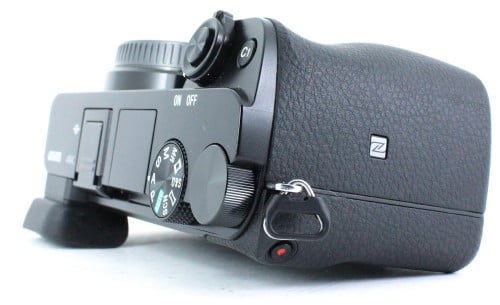
While all of the specs on the Sony a6100 can be phenomenal, that doesn’t really mean much if the Sony a6100 price is way out of everyone’s budget.
Thankfully, that isn’t totally the case with this camera. The Sony a6100 originally dropped for $750 in October of 2019. But, if you know where to look, you can save a little bit of extra money by purchasing a used Sony a6100.
Obviously you don’t want a camera that has been trashed, but MPB (our favorite camera retail spot) has a used Sony a6100 that is in like new condition for just $710 right now. Since there is only one model available as of the publishing of this article, it is likely to sell quickly, especially considering the fact that this camera comes with its original packaging and is in “near mint” condition.

What I’m saying is that you’re essentially saving $40 to purchase a camera that has been opened from its packaging.
It should also be noted that since the Sony a6100 dropped, the price on the Sony a600 plummeted. While the Sony a600 is obviously not as good, it is still an excellent camera for beginners and a pretty decent one for every other photographer.
MPB also has many Sony a600s on sale right now for as little as $350.
And, if you’re interested to learn more about what MPB is and how it operates, you can check out our MPB Review in the learn more links below.
Learn More:
We Recommend
Sony a6100 vs Sony a6600

When I’m doing camera comparisons, the cameras that I’m comparing are typically loads different from one another. One is usually much older than the other and I feel as though I shouldn’t really be comparing the two because they are both aimed at really different types of photographers. This Sony a6100 vs Sony a6600 comparison is nothing like this.
For starters, both of these cameras are relatively new. The Sony a6100 came out in October of 2019 and the Sony a6600 came out literally one month later in November of 2019. If you know anything about cameras, then you’re likely wondering why in the world Sony would do something like this.
If we’re being honest, I think the answer to that question is “because they could.” Both of these cameras did really well for themselves when they first came out and I think that they’re both going to continue to sell like crazy for a few more years.
In this Sony a6100 vs Sony a6600 review, I’m going to walk you through every aspect of this debate, including the Sony a6100 vs Sony a6600 specs, the Sony a6100 vs Sony a6600 image quality, and perhaps most importantly, the Sony a6100 vs Sony a6600 price.
Sony a6100 vs Sony a6600 Specs

Sony a6100
When it comes to the Sony a6100 vs Sony a6600 specs, these two actually have a lot in common.
For starters, both the Sony a6100 vs Sony a6600 feature a 24MP APS-C CMOS sensor. They also both feature a BionZ X processor. They also both feature 4K video capabilities.
While they also both feature a 425-point hybrid autofocus system, only the a6600 features in-body image stabilization. However, their specs are yet again the same in that they both shoot up to 11fps burst mode.
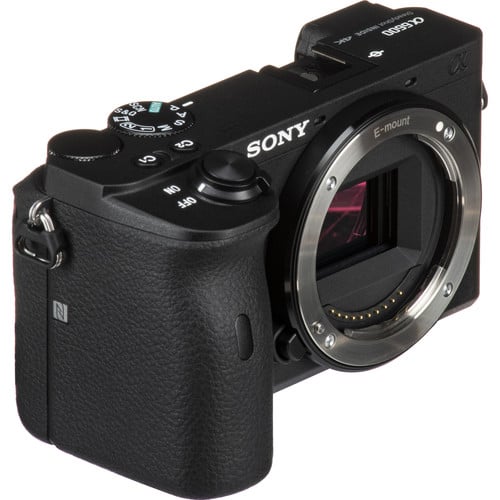
Sony a6600
The Sony a6100 has a slightly better ISO range of 100-32,000, although the Sony a6600’s ISO range of 100-25,600 really isn’t that much worse.
In essence, these two may not be identical twins when it comes to their specs, but they sure are fraternal.
Sony a6100 Specs Include:
- 24MP APS-C CMOS sensor
- BIONZ X image processor
- 425-point hybrid autofocus system
- 3” tilting touchscreen LCD with 921.6k-dots
- 1.44m-dot electronic viewfinder
- ISO range of 100-32,000
- 11fps burst mode
- 4K video capabilities
- Built-in Wi-Fi and Bluetooth
- 420-shot battery life
Sony a6600 Specs Include:
- 24MP APS-C CMOS sensor
- BIONZ X image processor
- 425-point hybrid autofocus system
- 3” tilting touchscreen LCD with 921.6k-dots
- ISO range of 100-32,000
- 11fps burst mode
- 4K video capabilities
- 720-shot battery life
Sony a6100 vs Sony a6600 Body & Design

Sony a6100
When it comes to the Sony a6100 vs Sony a6600 bodies, you already know that they’re going to be really similar.
Both of these cameras feature the same menu system where you can save up to 30 different items at a time.
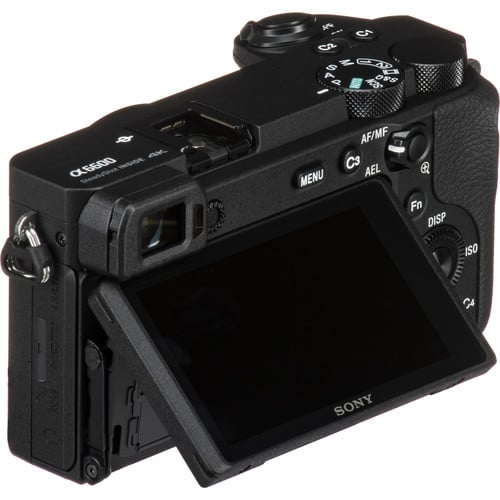
Sony a6600
One slight difference in their design is that the Sony a6100 comes with a built-in flash, while the a6600 doesn’t.
Of course, since the a6600 is designed for more professional shooters, it is also designed to last longer at up to 200,000 shutter cycles.
Learn More:
Sony a6100 vs Sony a6600 Build & Handling

Sony a6100
As for the Sony a6100 vs Sony a6600 build, the a6600 is a bit heavier and larger. The a6100 measures 4.72” x 2.64” 2.32” and weighs 0.87 lbs, while the a6600 measures 4.72” x 2.63” x 2.73” and weighs 1.11 lbs.
Of course, such a slight difference between the Sony a6100 vs Sony a6600 isn’t enough of a reason to pick either. However, when it comes to the Sony a6100 vs Sony a6600 handling, there is more of a discrepancy.
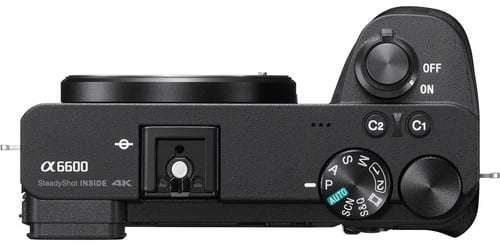
Sony a6600
For instance, the a6600 features a way better battery life of 720 shots. While the a6100’s battery life of 420 shots isn’t bad, at the end of the day I typically choose whichever camera can survive longest without access to electricity. It’s an odd feature left over from my adventuring days.
I personally like the a6600 over the a6100 when it comes to the handling just because the grip on the a6600 is way more prominent. I’ve got large hands and it can be a little difficult for me to mess with the grip on the a6100.
Sony a6100 vs Sony a6600 Video Performance
Huge shout out to OrmsTV for the Sony a6100 vs Sony a6600 comparison.
Both of these cameras feature 4K video up to 30p and they also feature 120fps high-speed shooting. They also both come with a 3.55mm socket for external microphones.
However, the a6600 comes with a headphone port, while the a6100 doesn’t. For serious videographers, this could be a game changer.
Another feature that the a6600 comes with that the a6100 doesn’t is HDR, S-Log2, S-Log3, and Picture Profiles.
Sony a6100 vs Sony a6600 Image Quality
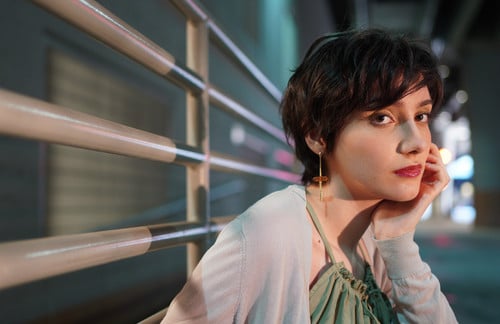
Shot with Sony a6100
When you consider all of the other Sony a6100 vs Sony a6600 features, you likely won’t be too shocked to find out that the image quality on these cameras are really similar.
They both offer the same sensor size and resolution, so this won’t affect the image quality ratings of either.

Shot with Sony a6600
Depending upon the types of photography you’re shooting, the fact that the a6600 comes with IBIS, while the a6100 doesn’t, could mean that your images are a lot clearer with the a6600.
The a6600 also features an extended ISO that is far better than the a6100’s at 102,400. If you’re serious about low light shooting, this could also affect the quality of your images.
One last difference is that the a6600 comes with a feature to allow you to lock your white balance.
Sony a6100 vs Sony a6600 Price

Sony a6100
At the end of the day, the Sony a6100 vs Sony a6600 debate is going to come down to price, considering the two have so many features in common.
In order to present a fair price for both, I’m going to use MPB. MPB is a used camera retailer that is super trustworthy and prices all of their cameras really fairly.

On MPB, the Sony a6100 vs Sony a6600 debate is clearly won by the Sony a6100, which you can find in “like new” condition starting at $715.
Considering the Sony a6600 is loads more expensive at $1,155, I question whether the added expense is truly worth it.
Learn More:
We Recommend
Sony A6400 Review

Sony a6400 Camera
The Sony Alpha A6400 is a new APS-C mirrorless camera that will reach store shelves this year in February.
The camera has DSLR-like features, although it comes in a compact and lightweight body. Before we proceed with giving detailed specifications, it is enough to say the A6400 has impressive autofocus, great image quality, 4K video capabilities and all other up-to-date features that will make it useful for versatile purposes.
In this Sony A6400 Review, we offer a quick rundown of the camera's primary features and specs.
COMPARE SONY A6400 SPECS TO SONY A6000 SPECS.
Sony A6400 Specs
The Sony Alpha A6400 boasts a 24.2-megapixel sensor, with ISO sensitivity up to 32000. When taking stills, ISO sensitivity can be expanded even more - at a maximum ISO 102400.
In addition, the camera features the BIONZ X image processing engine which has already shown to produce good results in improving the speed of earlier camera models released by Sony.
The A6400 has decent speed and promising autofocus capabilities.
The camera has 425 phase detection points, 425 contrast-detection AF points, and AF acquisition of just 0.02 seconds - which is the world's fastest autofocus according to Sony.
Also, it introduces Real-Time Eye AF and Real-Time Tracking, features that will help you to detect and track even rapidly moving subjects.
The camera allows fast continuous shooting with AF/AE at up to 11 fps.
In case that you want to be unnoticeable while taking photographs, there is an option for silent continuous shooting at up to 8 fps.
Sony A6400 Video Capabilities
The Sony A6400 does not disappoint when it comes to video recording...
The camera offers 4K at 30fps or 1080p (Full HD) at up to 120fps. There is a slight crop when shooting 4K video, but it should not be a huge issue for you.

The camera also has options for recording to HDR (HLG), S-Log/S-Gamut, and Slow & Quick Motion recording.
Learn more about this camera's features and capabilities in the video below by FunForLouis:
Need some funds to buy a Sony a6400? SELL YOUR OLD GEAR TO FINANCE YOUR NEW PURCHASE.
Sony A6400 Design
If you ever used the Sony A6300 you will instantly be familiar with its successor.
The cameras share the same magnesium-alloy design, although the A6400 has few noticeable differences. The most important one is that the A6400 incorporates the 3.0-type, 180-degree tiltable LCD screen.
This makes things a lot easier for vloggers who might be one of the most important target groups for the new camera.
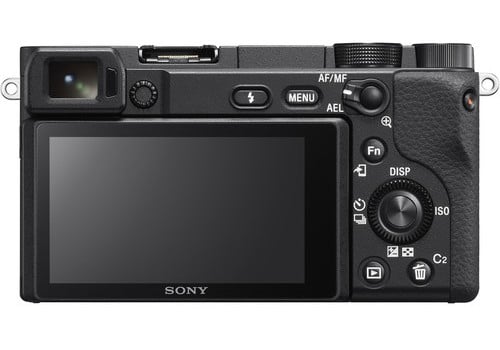

As it is the case with most of the new cameras, the LCD screen is touch sensitive which is particularly helpful for repositioning the focus area and activating Real-Time Tracking. For sunny days and overly bright conditions, there is also the high-resolution XGA OLED Tru-Finder on the left side of the camera.
Behind the side panel door, there are jacks for auxiliary connections, external microphone, and USB cable.

The camera has dimensions of 4.72 x 2.64 x 2.09 inches and a weight of 1.00 lb, so it's certainly a svelte little rig.
With such a small form factor, the A6400 is sure to be a big hit for photographers that are on-the-go.
Sony A6400 Price
The Sony A6400 is expected to be available for buying soon.
The suggested price is affordable for the features the camera offers since you can buy a body only for $899.99. The price for a body + 16-50 mm Power Zoom Lens will be $999.99, while you will need to spend $1,299.99 for a body + 18-135 mm Zoom Lens.
Have Sony questions? Ask in the Sony Camera Forum.
We Recommend
Sony a6400 vs Sony a6500
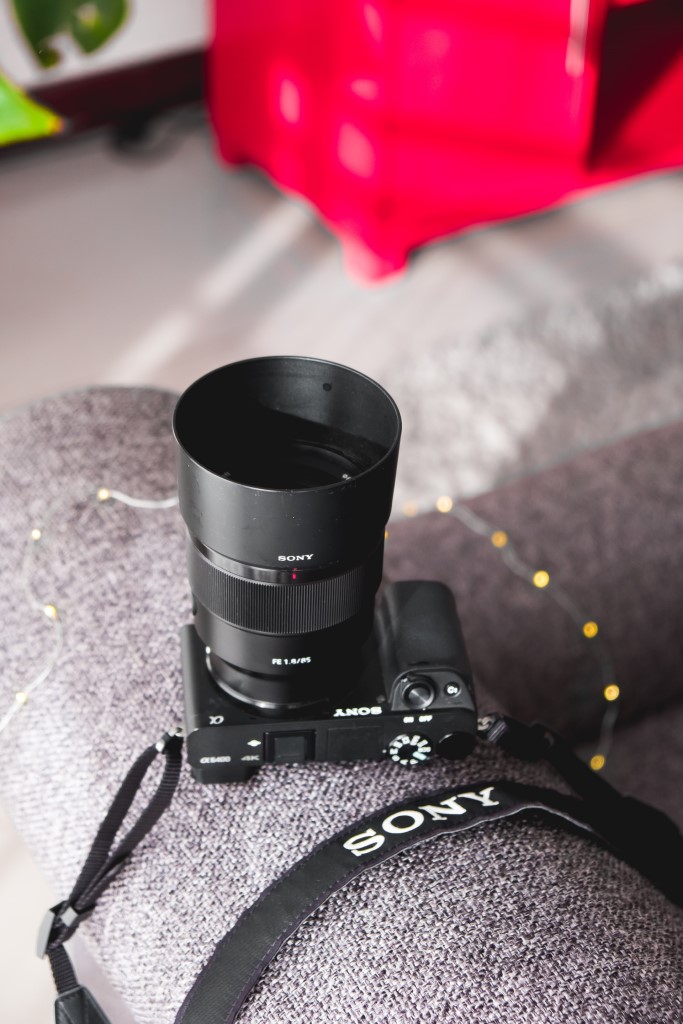
Photo by Zac Wolff on Unsplash
If you pay attention to camera news like I do then you know that the Sony a6400 is an APS-C camera that dropped in January of last year, although this admittedly feels like nearly a decade ago.
The Sony a6400 was meant as a replacement for the Sony a6500 which came out in the fall of 2016 and was announced at Photokina.
Unfortunately, I feel like all of the cameras in this line were named really poorly because the numbers jump around, so while you’re reading this article just keep in mind that the Sony a6400 is actually the newer of the pair.
However, I personally know plenty of photographers who still use the Sony a6400 for a wide range of photography niches.
So, what are the real differences between the Sony a6400 vs. Sony a6500? Keep reading this Sony a6400 vs. Sony a6500 review to find out.
Sony a6400 vs Sony a6500 Specs
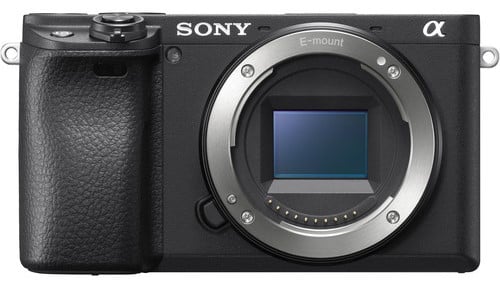
Sony a6400
When you start comparing the Sony a6400 vs. Sony a6500, a few things will automatically jump out at you. It’s important to note that the Sony a6400 vs. Sony a6500 specs are all nearly identical. For instance, both of these cameras use the same 24MP APS-C sensor.
But, they also have a lot of differences. For instance, the Sony a6400 has the largest ISO range, which is incredibly important for specific types of photographers like event photographers.
The Sony a6400 ISO is 100-32,000, whereas the Sony a6500 ISO is 100-25,600.
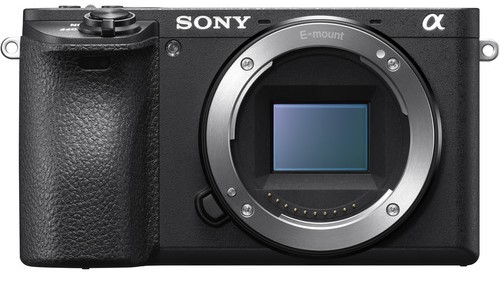
Sony a6500
Another huge difference is the fact that the Sony a6500 comes with 5-axis image stabilization, whereas the Sony a6400 disappointingly doesn’t. If you want to achieve the same effect with the Sony a6400 then you will need to use a Sony lens that comes with image stabilization, which means you will need to spend more money.
The last major difference in the specs of the Sony a6400 vs. Sony a6500 is the fact that the Sony a6400 features much better autofocus. Now, the Sony a6500 was already known for having phenomenal autofocus, but the Sony a6400 can focus in just .02 seconds, as compared to the Sony a6500’s .05 seconds.
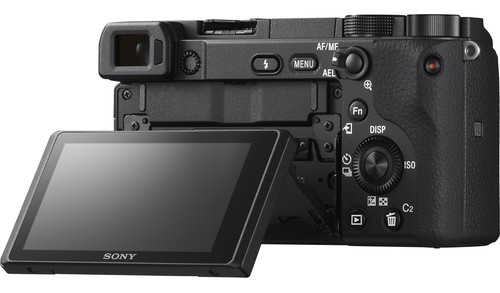
Sony a6400
Other Sony a6400 Specs:
- 24MP APS-C sensor
- ISO range of 100-32,000
- 425-point phase detection; 84% coverage AF
- 11fps burst mode
- 4K video
- 2.359k-dot viewfinder with 100% coverage
- 3” 180-degree tilting touchscreen with 921k-dots
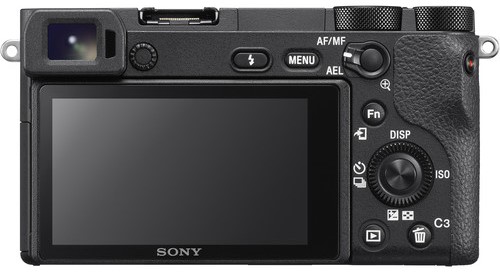
Sony a6500
Other Sony a6500 Specs:
- 24MP APS-C sensor
- ISO range of 100-25,600
- 425-point phase detection
- 11fps burst mode
- 4K video
- 2.359k-dot viewfinder with 100% coverage
- 3” tilting touchscreen with 921k-dots
Sony a6400 vs Sony a6500 Body & Design
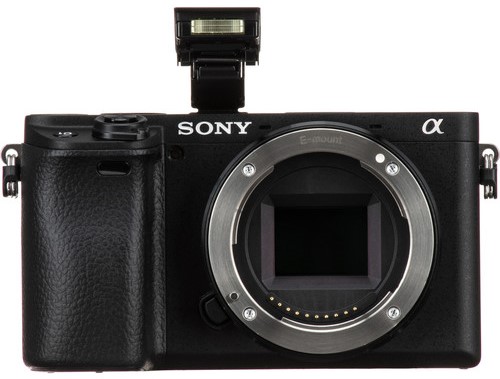
Sony a6400
You can’t do a Sony a6400 vs. Sony a6500 article without at least briefly touching on design changes of these two cameras, though it will be brief since Sony truly did not change very much.
Both of these cameras weigh approximately 1 lb, although the Sony a6400 is a bit lighter at .89 lbs. They also both measure 120mm by 67mm, although the Sony a6400 is the tiniest bit slimmer at 50mm across, as compared to the Sony a6500’s 53mm.
Both of these cameras come with weather sealing to prevent water or dust damage.
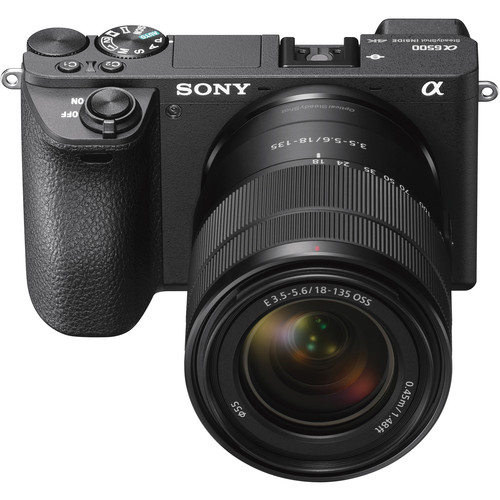
Sony a6500
So, the only design changes between these two cameras have to do with their grips. The grip on the Sony a6500 is a little bit more uncomfortable, at least for me, because it isn’t as wide as the grip on the Sony a6400.
All of the buttons on the rear of the camera are in the same spot, as are most of the buttons on the top of the camera.
When it comes to the Sony a6400 vs. Sony a6500 design portion of this article, all you really need to know is that if you’ve worked with one then you could pick up the other and not need to change anything about your shooting style.
Learn More:
Sony a6400 vs Sony a6500 Build & Handling
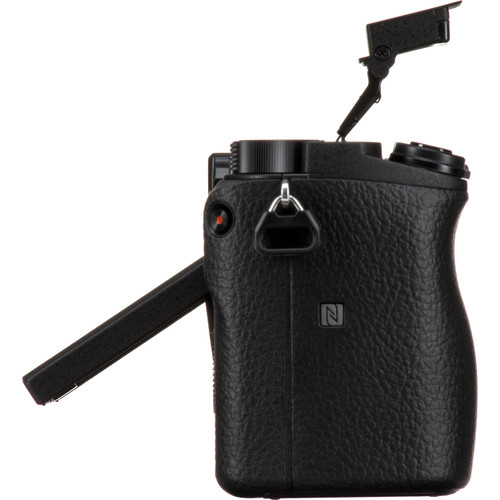
Sony a6400
One of the most important things for me to study when I’m comparing any two cameras, especially the Sony a6400 vs. Sony a6500 since they are so similar in so many other regards, is their battery life.
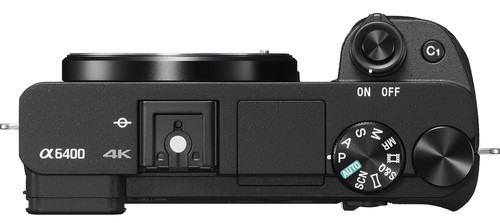
Sony a6400
While both of these cameras use the same Sony NP-FW100 battery, they don’t use it the same way.
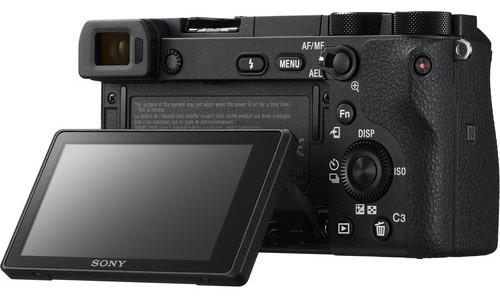
Sony a6500
As I will talk about a little bit more in the video section, the Sony a6500 can shoot 4K video for around 1 hour and 7 minutes on one battery charge, whereas this battery life gets extended to 1 hour and 22 minutes on the Sony a6400.
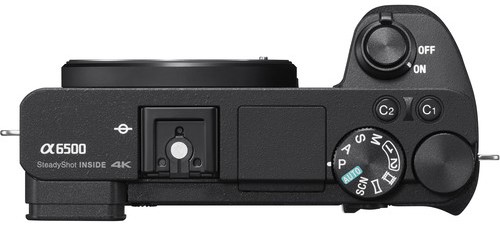
Sony a6500
This change in the battery will also obviously be more noticeable when shooting stills, and I think it is an important feature for you to know about.
Additionally, the Sony a6400 has a screen that can rotate 180-degrees while the Sony a6500 will only let you rotate the screen by 90-degrees.
Sony a6400 vs Sony a6500 Video Performance
There is no shortage of Sony a6400 vs. Sony a6500 video tests on YouTube. I’ve chosen one by Max Yuryev above.
While both of these cameras can shoot 4K video at 30fps, or Full HD video at 120fps, the Sony a6400 did receive some important video upgrades.
So, whereas the Sony a6500 came with a “Slow and Quick” video mode which allowed users to record up to 5x Slow Motion and up to 60x Quick Motion Full HD video internally, the Sony a6400 comes with SLog2, SLog3, and HLG modes, which videographers will be thrilled to hear.
The Sony a6500 also had a video recording limit of 29:50, which has been removed in the Sony a6400.
Lastly, the battery on the Sony a6400 will last an additional 15 minutes while in video mode as compared to the Sony a6500.
Sony a6400 vs Sony a6500 Image Quality
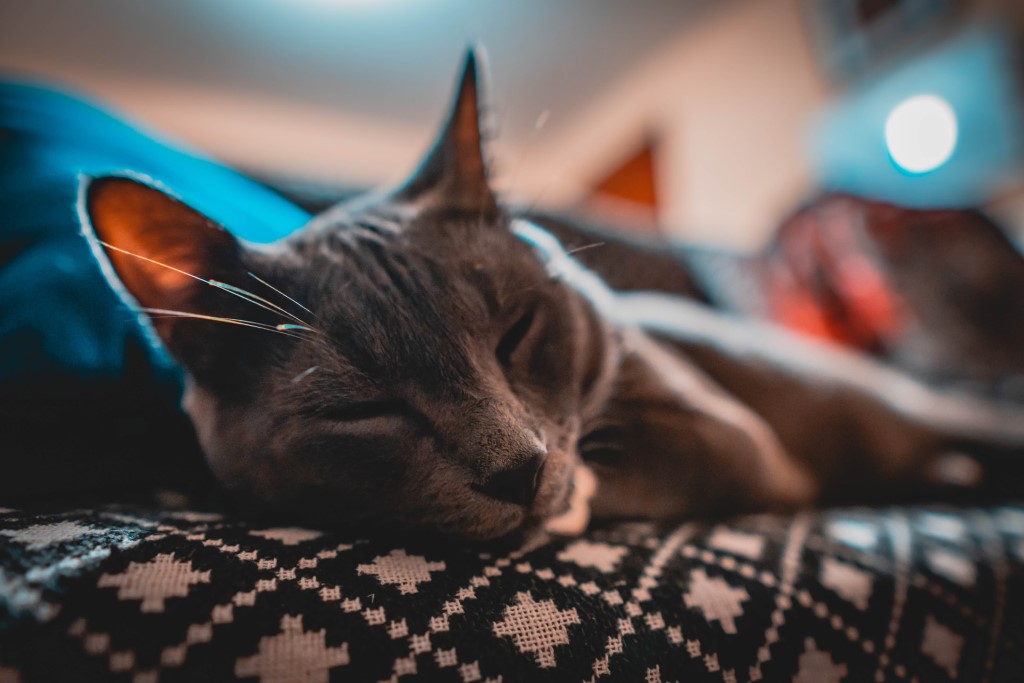
Photo by Joe Milne on Unsplash
Shot with a Sony a6400 at 16mm (f/1.8, 1/30 secs, ISO 1000)
The Sony a6400 vs. Sony a6500 image quality debate is pretty interesting because there is, once again, very little difference in this category between these two cameras.
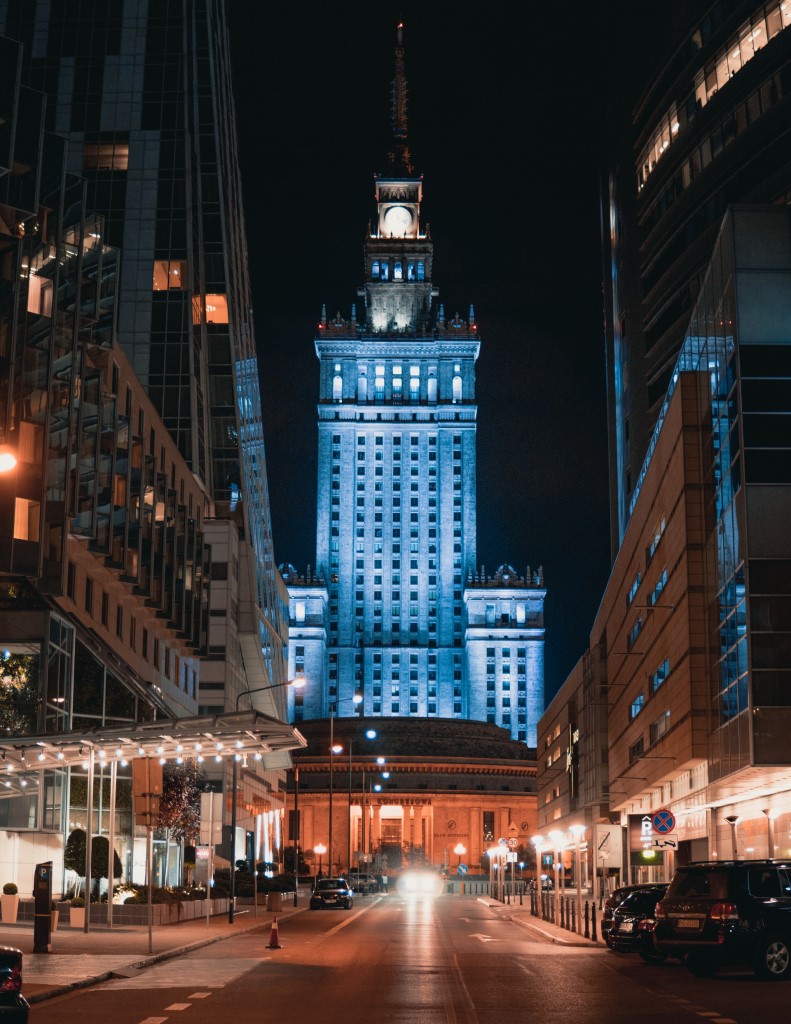
Photo by Josh Hild on Unsplash
Shot with a Sony a6500 at 30mm (f/1.4, 1/50 secs, ISO 500)
The only true difference between Sony a6400 vs. Sony a6500 image quality is that the Sony a6400 performs a little better in terms of contrast in the lower and higher ISO ranges.
I would definitely not recommend that you use this category to judge the Sony a6400 vs. Sony a6500.
Sony a6400 vs Sony a6500 Price
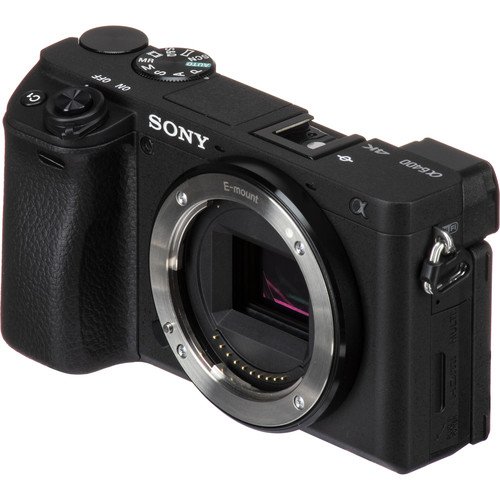
Sony a6400
If this article has convinced you to pick up a Sony a6400, then you are in luck because there are a ton of used ones available on MPB and some of them are a steal.
If you don’t know much about MPB, you can read more about it in the learn more link below. I’ve been using MPB to purchase all of my used camera gear for a few years now because every piece of equipment on MPB is graded by professional photographers, so you’ll never be surprised at the state of the expensive camera gear you just purchased.
The cheapest Sony a6400 available on MPB right now is $875 and it is in excellent condition. Conversely, you can purchase a like new Sony a6400 for $920.
And, since this is a Sony a6400 vs. Sony a6500 article, I should probably also do a Sony a6400 vs. Sony a6500 price comparison.
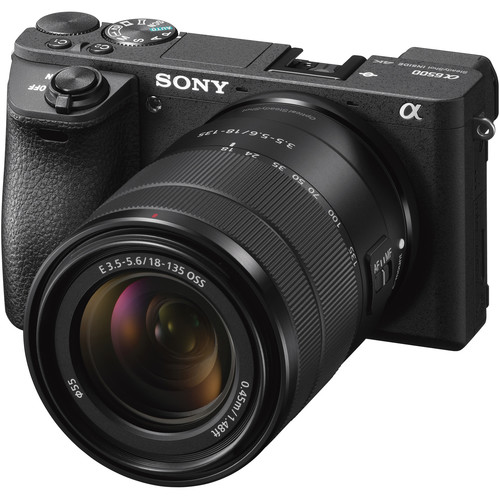
Sony a6500
The Sony a6500 is similarly priced in comparison to the Sony a6400, so long as you are looking at cameras of similar quality. You can pick up a Sony a6500 in excellent condition for $825, or you can purchase a “like new” Sony a6500 for $825.
However, unlike the Sony a6400, there are more well-loved versions of the Sony a6500 available on MPB right now, so if you’re looking for a well used Sony a6500, MPB has one for sale for $575 right now.
Learn More:
We Recommend
Sony a6500 Review
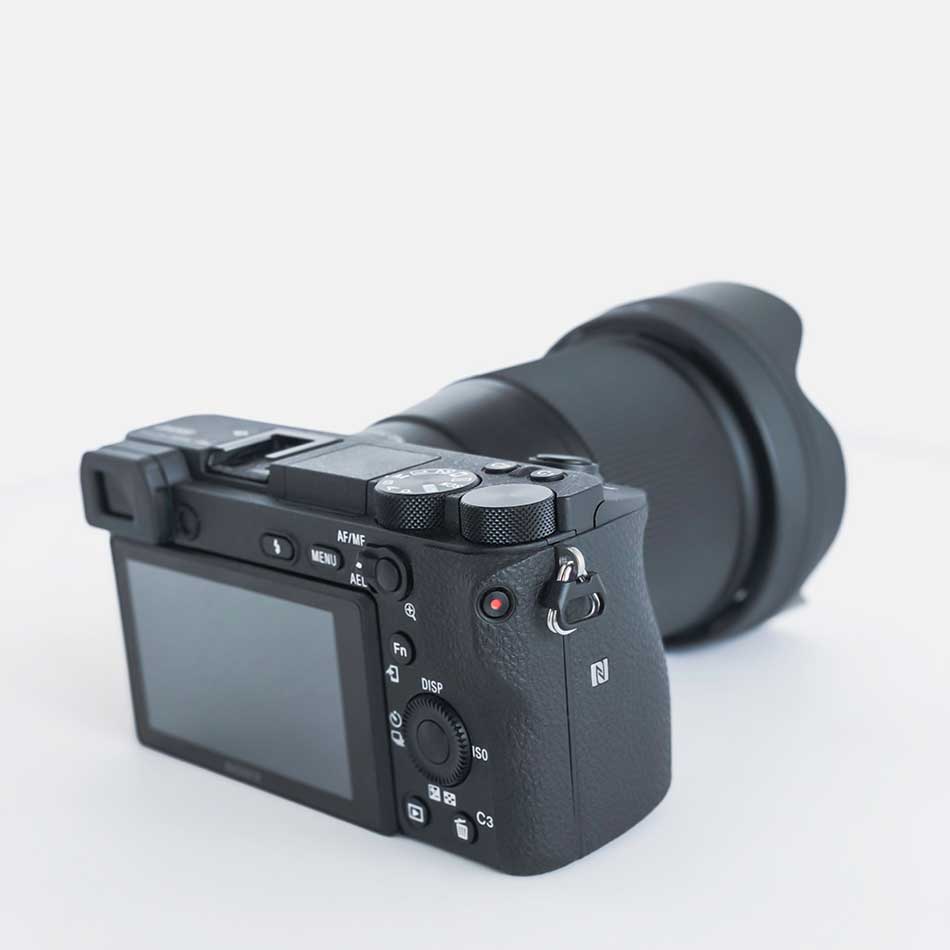 Photo by Niko Savic on Unsplash
Photo by Niko Savic on Unsplash
The Sony a6500 is a highly capable, fairly-priced APS-C camera with a host of features you'd expect from a more expensive model.
With an excellent autofocus system, superb ergonomics, and excellent video performance, there's a lot to love about this little camera.
But is it the camera for you? Find out in our Sony a6500 review.
Table of Contents
Sony a6500 Specs
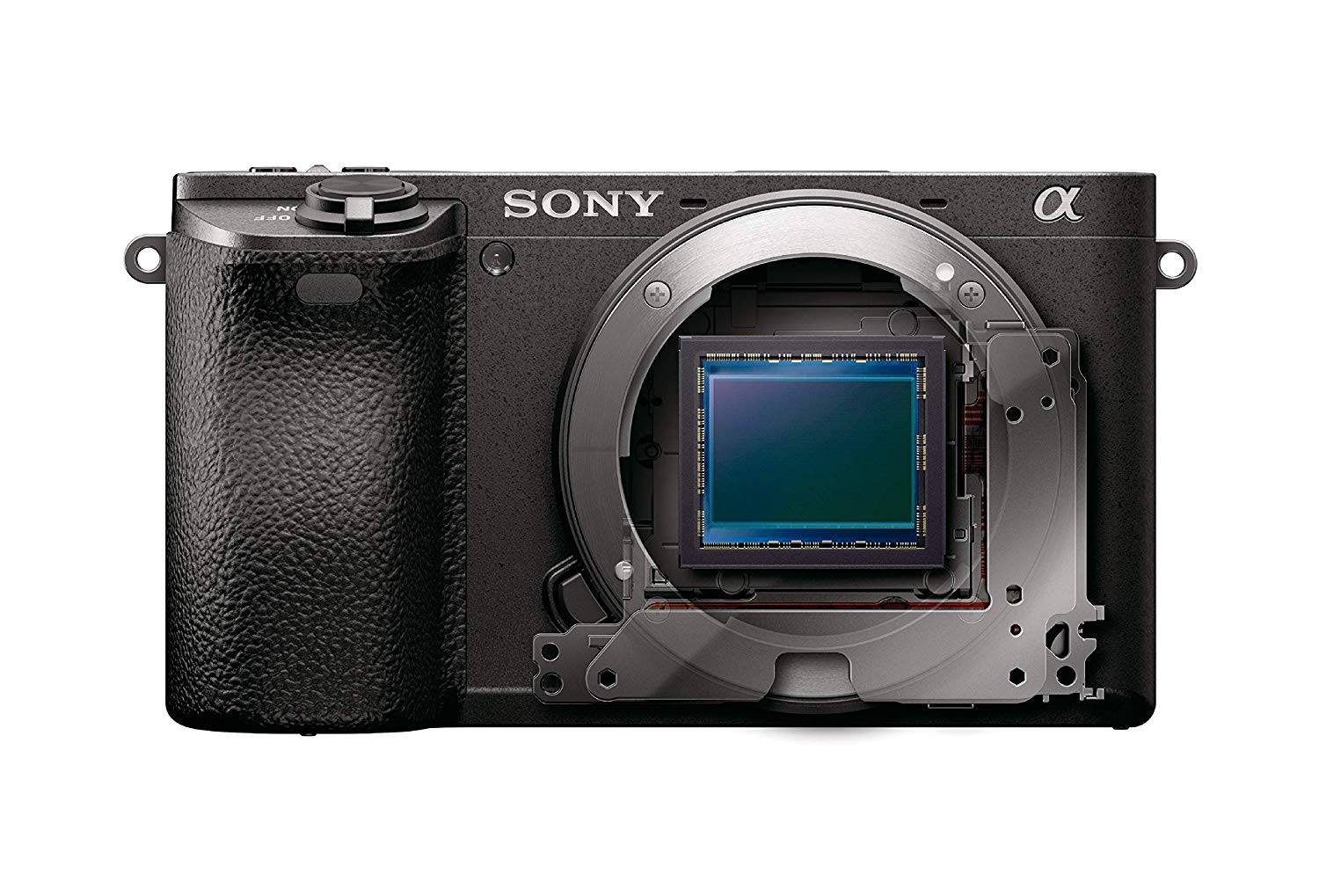
The a6500 is the little sister of the a6300 in that most of its specs are very similar.
Both cameras come with a 24.2MP APS-C Exmor CMOS sensor; both cameras come with a BIONZ X image processor.
They also both shoot internal 4k video.
Some other specs that the a6500 comes with includes:
- Built-in Wi-Fi with NFC
- 11 fps continuous shooting for up to 300 JPEGs or 100 RAW files
- 1/4000 second max shutter speed
- 425 phase-detect autofocus points
- XGA Tru-Finder 2.36M-dot OLED electronic viewfinder
- 3.0" 921.6k-Dot Tilting Touchscreen LCD
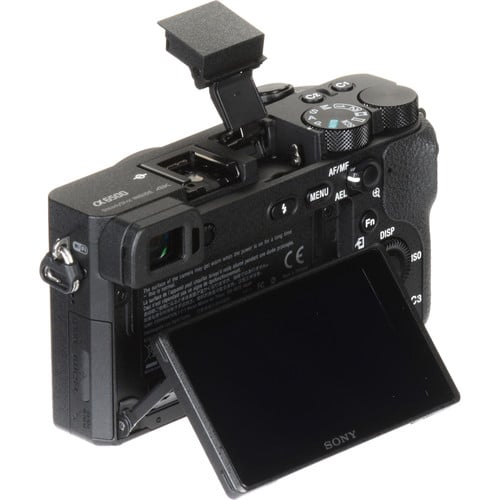
If you're following along, these 2 cameras are nearly identical. They feature the same sensor and the same viewfinder, but the a6500 is a definite upgrade thanks in part to its 11fps shooting. The a6300 only shoots 44 JPEGs or 21 RAW files at this speed, which is nothing compared to the a6500's impressive 300 JPEGs or 100 RAWs.
Plus, one of the best new features is that the a6500 has instant image review of the last image written to the memory card, so you can check the focus on your image while the camera is writing to the memory card.
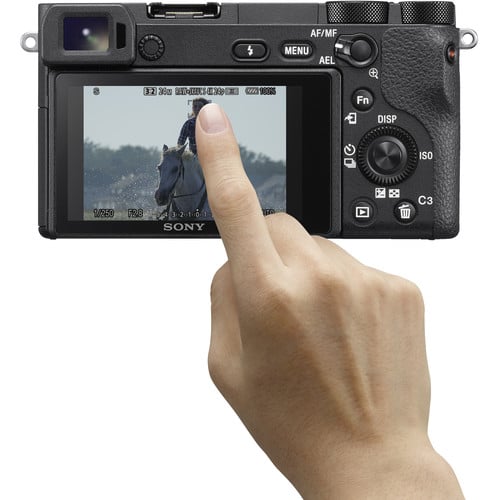
I also appreciate a camera with excellent video capabilities, which the a6300 did not have, but the a6500 does have due to a new, more durable shutter.
Another additional feature the a6500 is the ability to select autofocus points by just touching the screen. Speaking of touchscreens, you can also double-tap the screen to zoom in on shots or swipe through images during playback.
Plus, as is the case with Sony's newer cameras, it's easier to use than the a6300, a feature I will discuss below.
Sony a6500 Body & Design
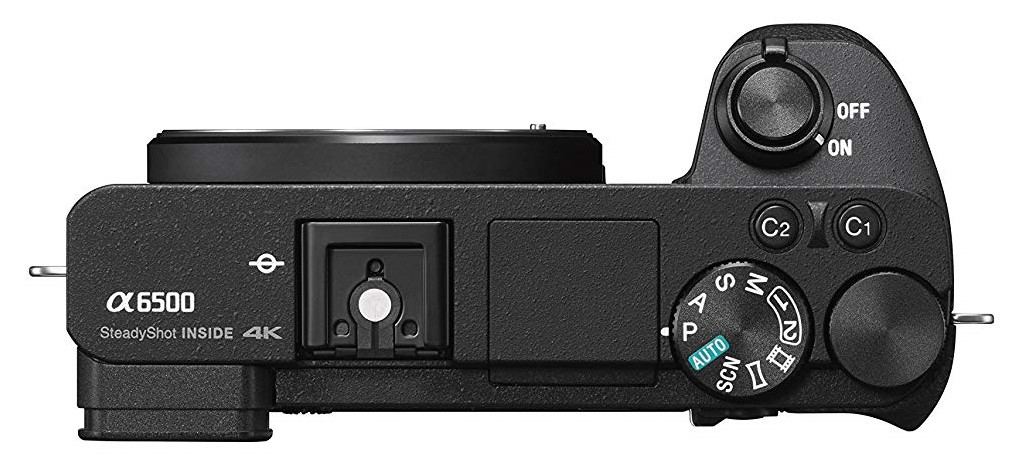
Let's talk about the usability of the a6500. The a6500, unlike the a6300, incorporates the C2 and C1 custom buttons on the top of the camera.
As mentioned previously, the camera also features an impressive 3.0" 921.6k-Dot Tilting Touchscreen LCD.
The EVF is the same as the a6300, and this is because Sony has locked in on the perfect viewfinder and there's no point changing something that isn't broken.
The camera is 4.7 x 2.6 x 2.1 inches, so it retains the same small, lightweight body Sony users have grown accusomted to.
Sony a6500 Build & Handling
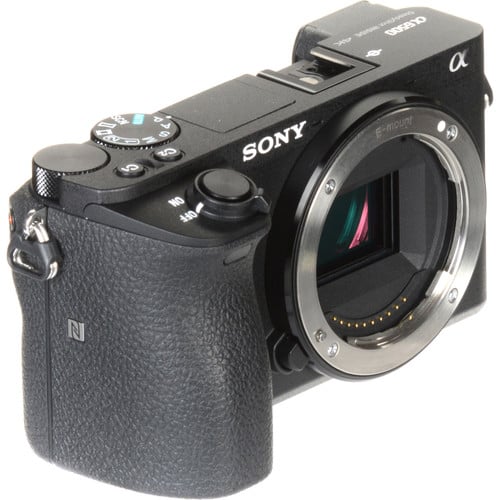
Let's talk ergonomics.
The a6500's grip was redesigned and is now bigger, but not overly so. Thanks to the new grip, one that is similar to the a7 Mark II, you can shoot for longer periods with longer lenses.
However, thanks to the new grip, the a6500 is the heaviest in the line. It weighs in at just over 1 pound. I've personally never found it difficult to shoot with a camera of this size, but it's something to keep in mind if you're going to be adding extremely heavy lenses to your kit.
Now that the C2 and C1 buttons are located on top of the camera, as opposed to on the back of the camera, they're easier to reach.
Sony a6500 Video Performance
Not to give away one of the best features the Sony a6500 features with this YouTube video by Igniter Media, but its video performance is in another class.
The a6500 shoots 4K at 8-bit 4:20:0 internally, so you can shoot at 4K but output to HD. If you use the HDMI output and video externally, this camera steps up its game to shoot at 8-bit 4:2:2 in Rec 709, S-Log2, or S-Log3.
This type of video performance allows you an incredible dynamic range in post-production.
If you don't need this feature all the time, though, you can also use the camera's full HD video recording.
Sony a6500 Lenses
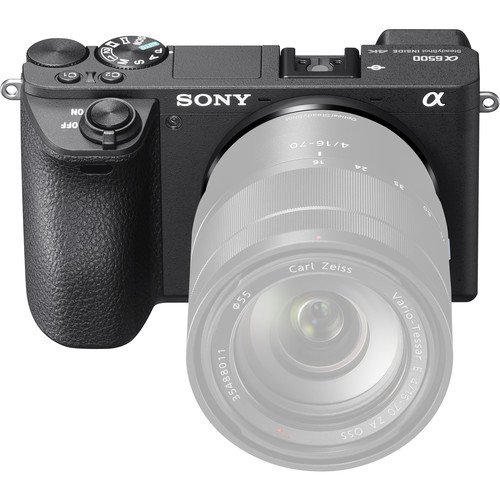
Before I get into my top three choices for Sony a6500 lenses, I'll explain what types of lenses can work with the camera.
Sony has 2 types of lenses for its "E-mount" mirrorless cameras: FE and E lenses. Both FE and E lenses can be used on the Sony a6500.
Any Sony lens with an E can be used with their APS-C sensor mirrorless bodies, aka the Sony a6500, whereas any Sony lens with an FE can be used across the board on all of their mirrorless cameras.
Editor's Tip: Starting a photography business? Save money and BUY QUALITY USED GEAR. You can save hundreds if you buy a used camera and used lenses, and apply those savings to investing in other gear. Better still, a great way to watch your bottom line is to SELL OR TRADE IN YOUR OLD GEAR that you no longer use. Doing so minimizes how much gear you have to keep track of, and if you sell or trade in your gear, you have some spare money to put towards upgrading your kit. It's a win-win!
Sony 20mm f/2.8 for Travel
This lens is beyond compact, so I'd recommend it for travel photographers. It weighs 2.4 ounces and is only 2.5 x 0.8 inches.
Another reason I'd recommend this lens for travel photographers is because of its weight. While it doesn't feel very durable (it's mostly plastic), it would survive a drop better than any of its counterparts.
This lens does suffer from some wide-angle distortion, but it's not overwhelming.
This lens also features a quick autofocus (great for the split second a tourist isn't in your shot).
This lens would also be grand in any situation where you're looking for a setup that won't throw out your back carrying it around all day.
Learn all about it in the video above by TechnologyMafia.
Sony 50mm f/1.8 for Portraits
This lens is the number one recommended lens for shooting portraits with your Sony a6500 for its f/1.8 aperture (aka bokeh, galore) and the telephoto focal length (50mm equivalent to 75mm) which keeps portrait proportions in check.
Again, this lens is very compact at 7.1 ounces and 2.4 x 2.4 inches (again, it is made of mostly plastic), but offers excellent sharpness and is very reaonably priced.
See this lens in action in the video above by Christopher Frost Photography.
Sony 35mm f/1.8 for Everyday Use
This is the lens I would recommend for anyone looking for a 50mm equivalent for your a6500.
It's inexpensive and shoots well in low light. You can use it as a portrait lens thanks to its focal length, or as an everyday lens for landscapes, street photography, and points in between.
The one downside to the lens is that it isn't as sharp as some other lenses for the a6500, but that shouldn't deter you from considering it as a capable addition to your camera bag.
Jason Vong offers a rundown of this lens in the video above.
Sony a6500 Price
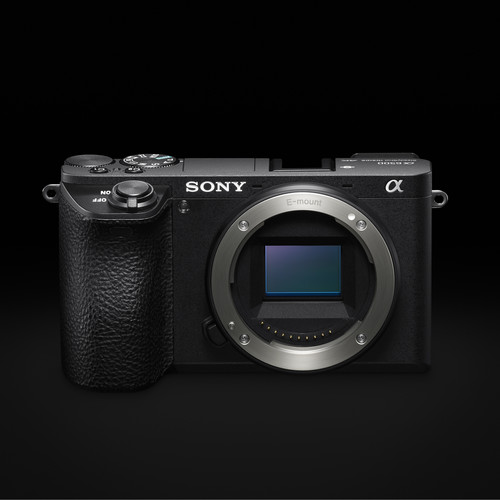
Now, for the part nobody likes. A new Sony a6500 is available for $1,100 on Amazon.
Since that's a pretty hefty price tag, you may want to consider getting a new Sony a6500. Since the a6500 dropped at the end of 2016, used ones are widely available at steeply discounted prices today.
I tend to use MPB for a lot of my lens needs, since they have a wide selection of used cameras, including the Sony a6500.
One in excellent shape is available right now on MPB for only $874. I'd take a $200 discount over a brand new camera any day!
We Recommend
Sony a6500 vs a6600 Review
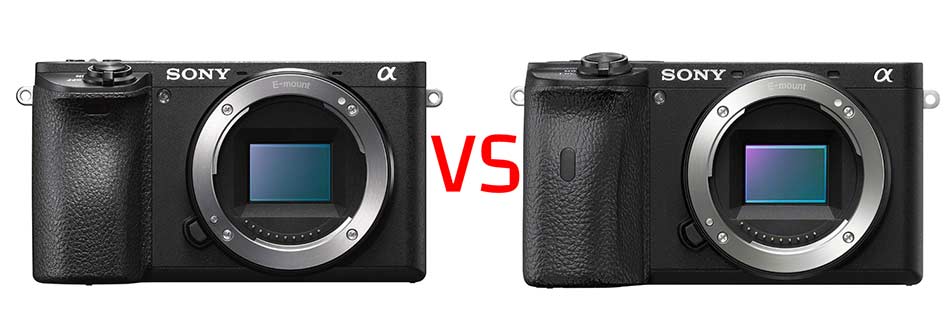
Sony a6500 and Sony a6600 Comparison
In this article, we will compare two mirrorless cameras from the A6000 series – the Sony a6500 and Sony a6600.
As you would expect, these two cameras share a lot of things in common. For example, they both feature a 24.2MP Exmor CMOS APS-C sensor, 4K video, 5-axis image stabilization system, and 11 fps burst shooting speed. Read about Sony A6400 vs A6500 vs A6300 on our website PhotographyTalk.com.
However, the Sony A6600 came almost three years after the Sony A6500, and while it retains all the good things from its predecessor, it also has some interesting upgrades.
Sony a6500 vs a6600 Specs
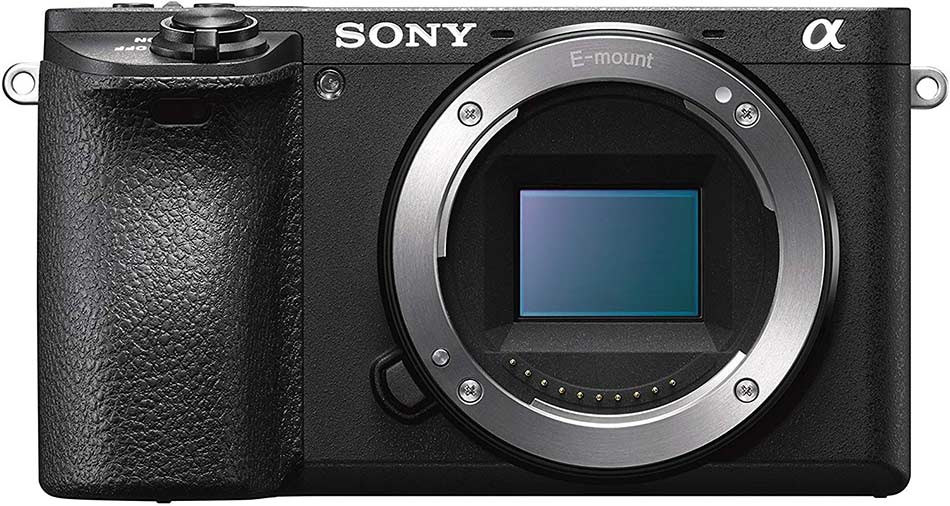
A6500
Although the Sony A6500 and A6600 have the same 24.2MP Exmor CMOS APS-C sensor, the new camera comes with an updated BionZ X processor, and because of that, it has a wider ISO range.
The Sony a6500 has a native ISO sensitivity of ISO 100 to 25600 (expandable to ISO 51200), while the Sony A6600 has a native sensitivity range of 100 to 32000 (expandable to ISO 102400). This implies that the Sony A6600 delivers much better results in low-light situations, but we are yet to see how this will play out in practice.
Like its older brother, the Sony a6600 features a 5-axis image stabilization which is very useful for handheld shooting. This system reduces or eliminates the blur which comes as an effect of the camera’s motion. At the moment, there are no other cameras from the A6000 series that have this technology.
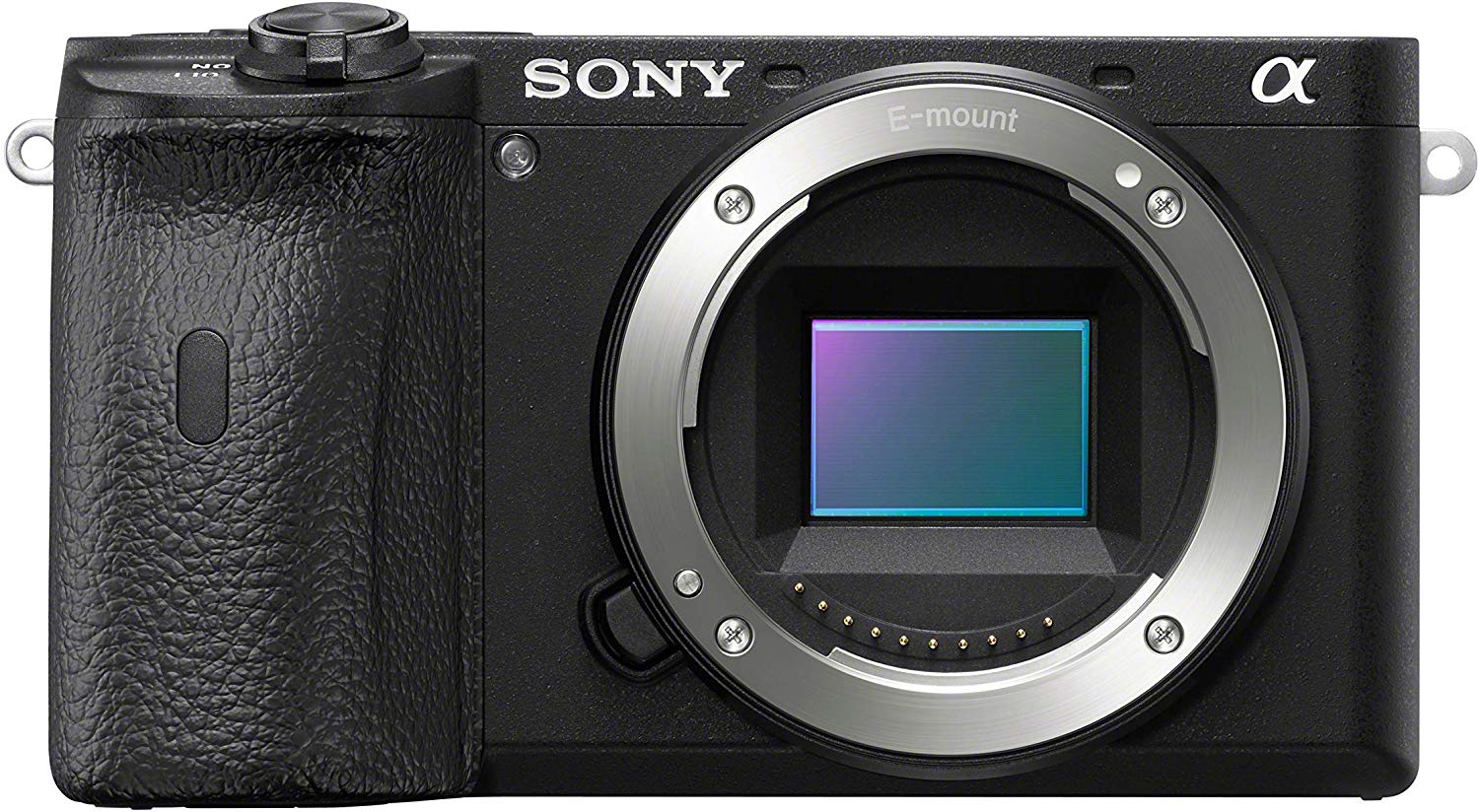
A6600
As it was the case with its predecessor, the Sony a6600 is very good for sports photography. The camera has 11.0 fps continuous shooting speed and improved autofocus system with 425 phase and 425 contrast-detection points. In comparison, the Sony a6500 has only 425 phase-detection and 160 contrast-detection points.
Additionally, the Sony a6600 has the world’s fastest autofocus system speed since it will acquire focus in around 0.02 seconds. The Sony a6500 also has fast and reliable autofocus system with acquisition speed of 0.05 seconds. However, the new camera also has Eye AF that works in real-time, in video mode, and for animals.
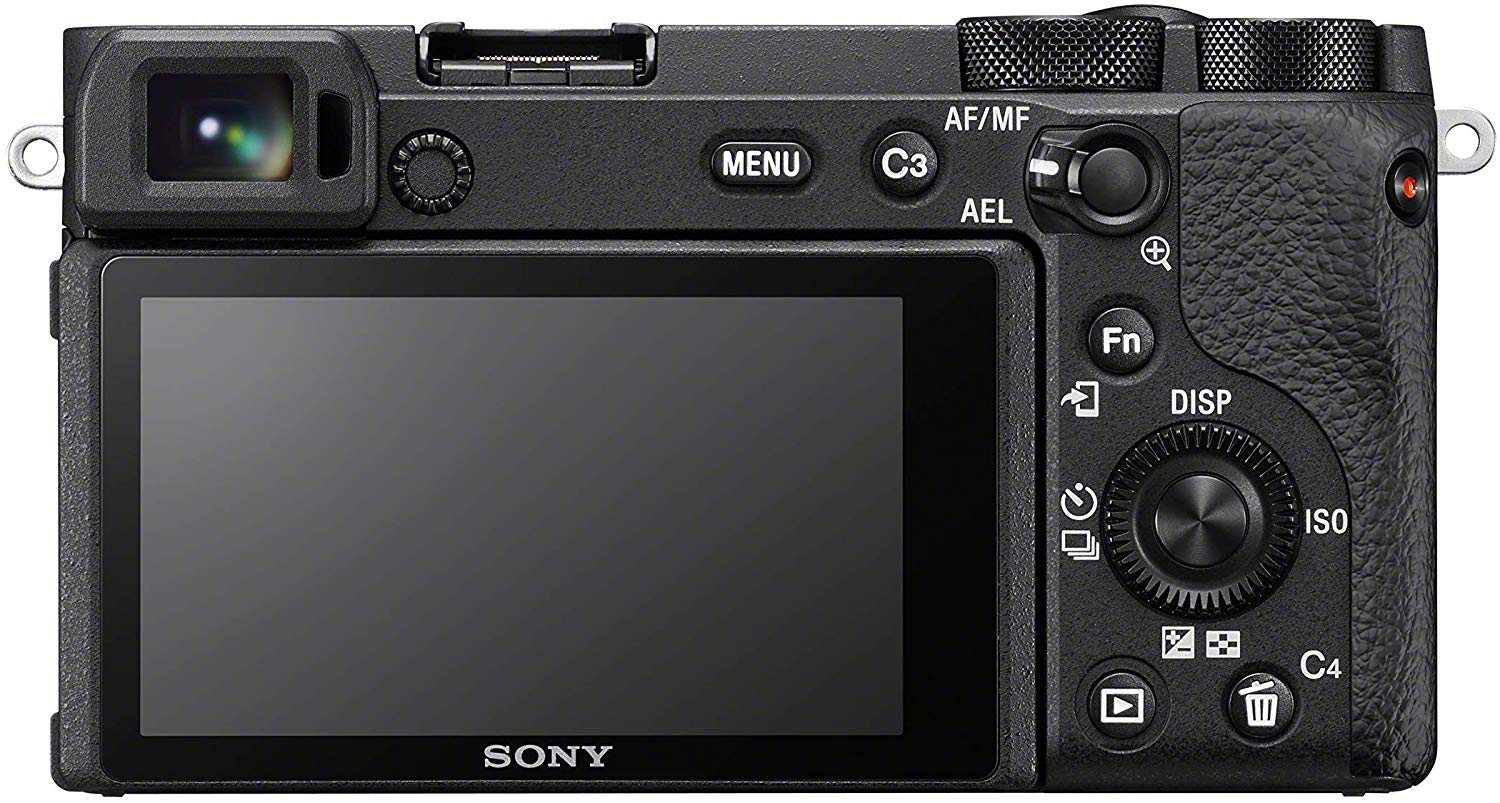
A6600
It is worth mentioning that the Sony a6500 has a bigger buffer than its successor. While the Sony a6600 makes 115 JPG or 46 RAW images, the Sony a6500 allows you to record up to 269 JPG or 107 RAW files.
Sony a6500 vs a6600 Body & Design
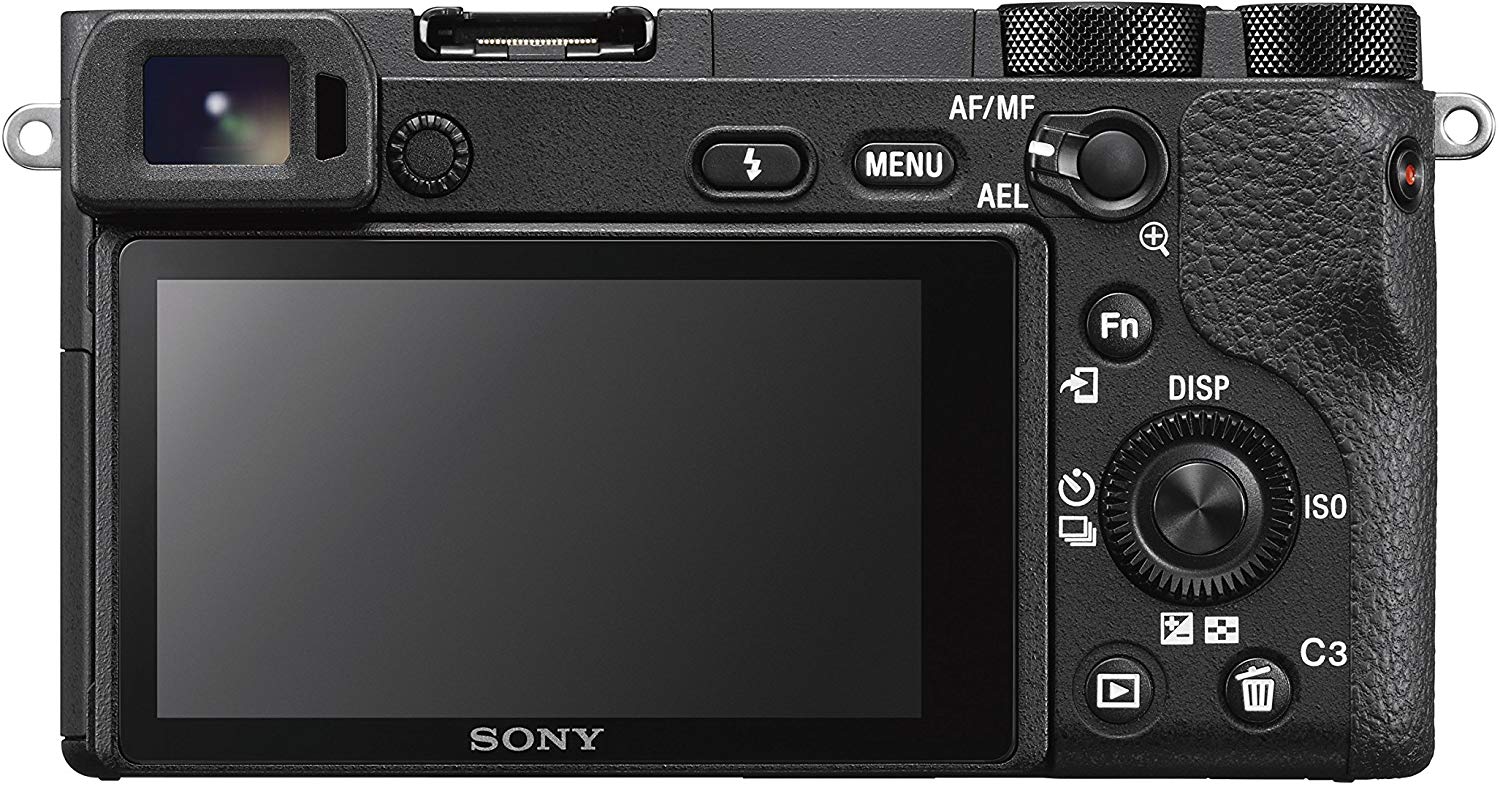
All cameras from the A6000 series were designed to be portable and each of them can be a perfect choice for travelers and street photographers.
The Sony a6600 has an almost identical design as its predecessor. The only difference is that it has much bigger grip and more flexible LCD screen.
Because of this, the Sony a6600 is a little bit heavier than the Sony a6500, but it would be hard to notice this difference in reality. The camera measures 4.72 x 2.64 x 2.72 inches and weighs 1.11 pounds, while the Sony a6500 has dimensions of 4.72 x 2.64 x 2.09 inches and a weight of 1 lb.
The new grip is very useful because it will make handheld shooting much easier. Moreover, the bigger grip houses a larger battery which substantially increases the running time of the camera.
On a full charge, the Sony a6500 makes around 300 shots which is nothing in comparison to 800 shots that can be made with the Sony a6600.
Although the Sony a6500 has a tilting screen, it can’t be turned around to face the front of the camera. However, the Sony a6600 now has a fully articulated screen that can be moved in all directions. We believe this option will be of great use for vloggers.
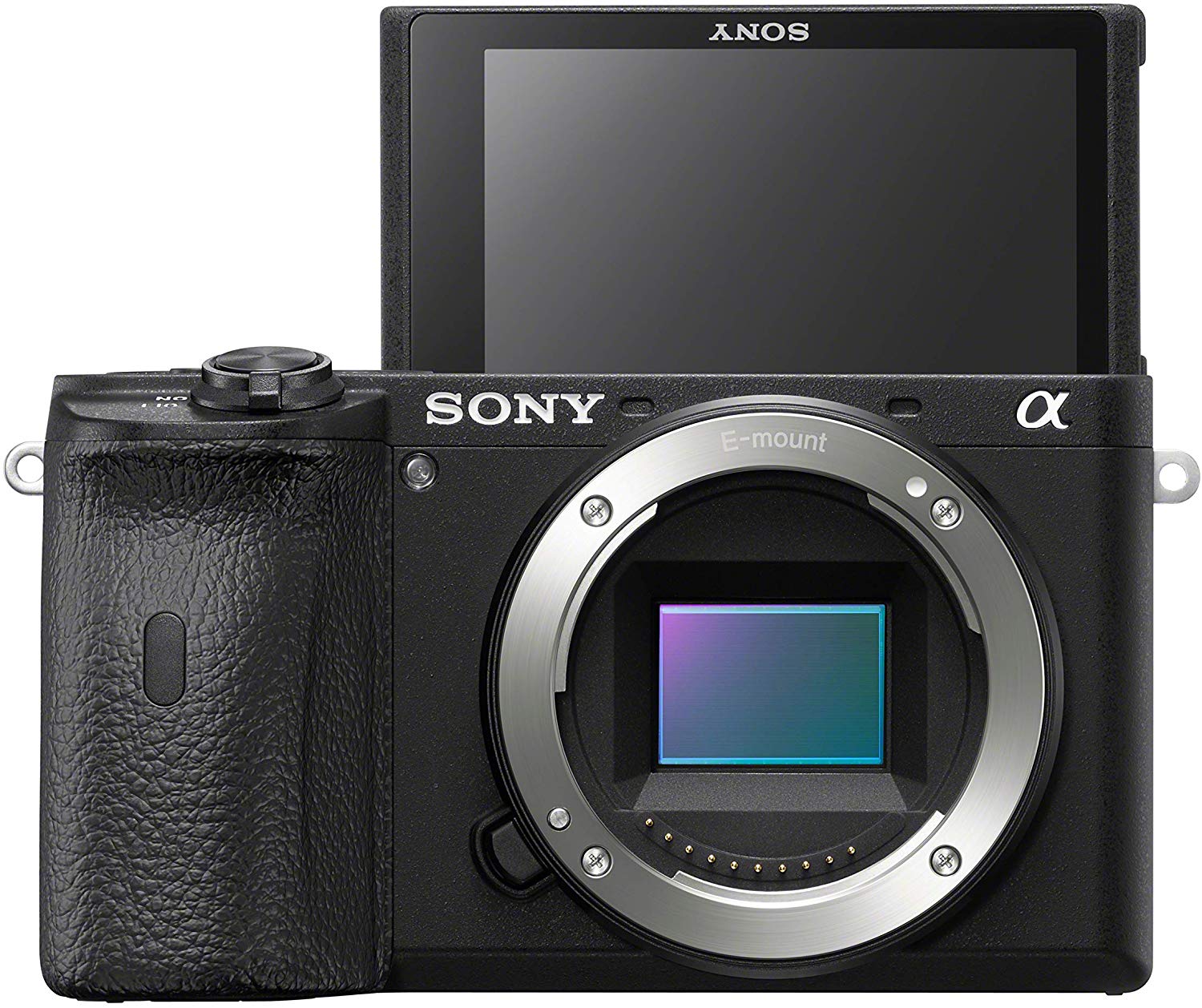
A6600
Finally, the Sony a6500 has a built-in flash, while the Sony a6600 doesn’t have one. Still, you can always attach an external flash through a hot-shoe.
Sony a6500 vs a6600 Build & Handling
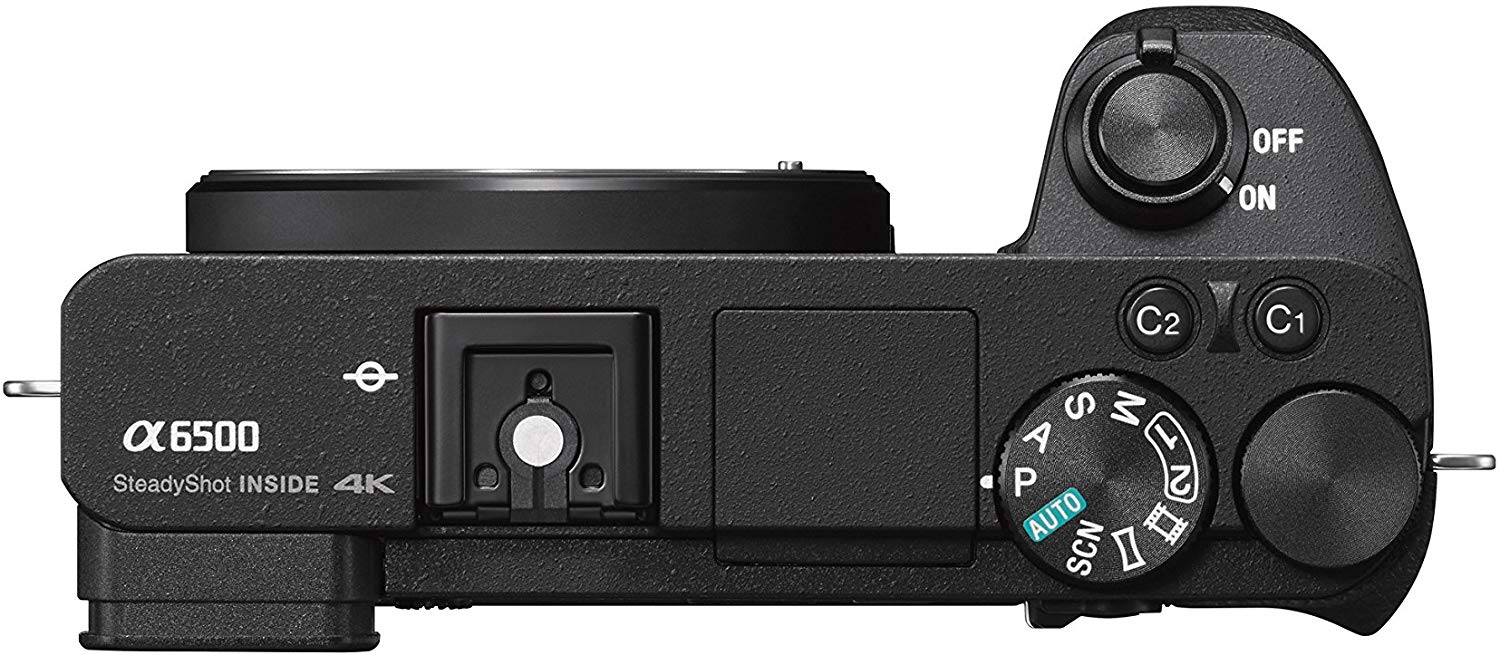
A6500
Despite being compact and lightweight, the two cameras are weather-sealed against dust, moisture, and other harmful weather conditions. Both of them are built out of magnesium-alloy, which is lightweight and durable material.
As we already mentioned, the Sony A6600 has a large grip which will make operating the camera a bit more comfortable. However, this is the only significant ergonomic difference. The placement of other controls and dials is almost identical.
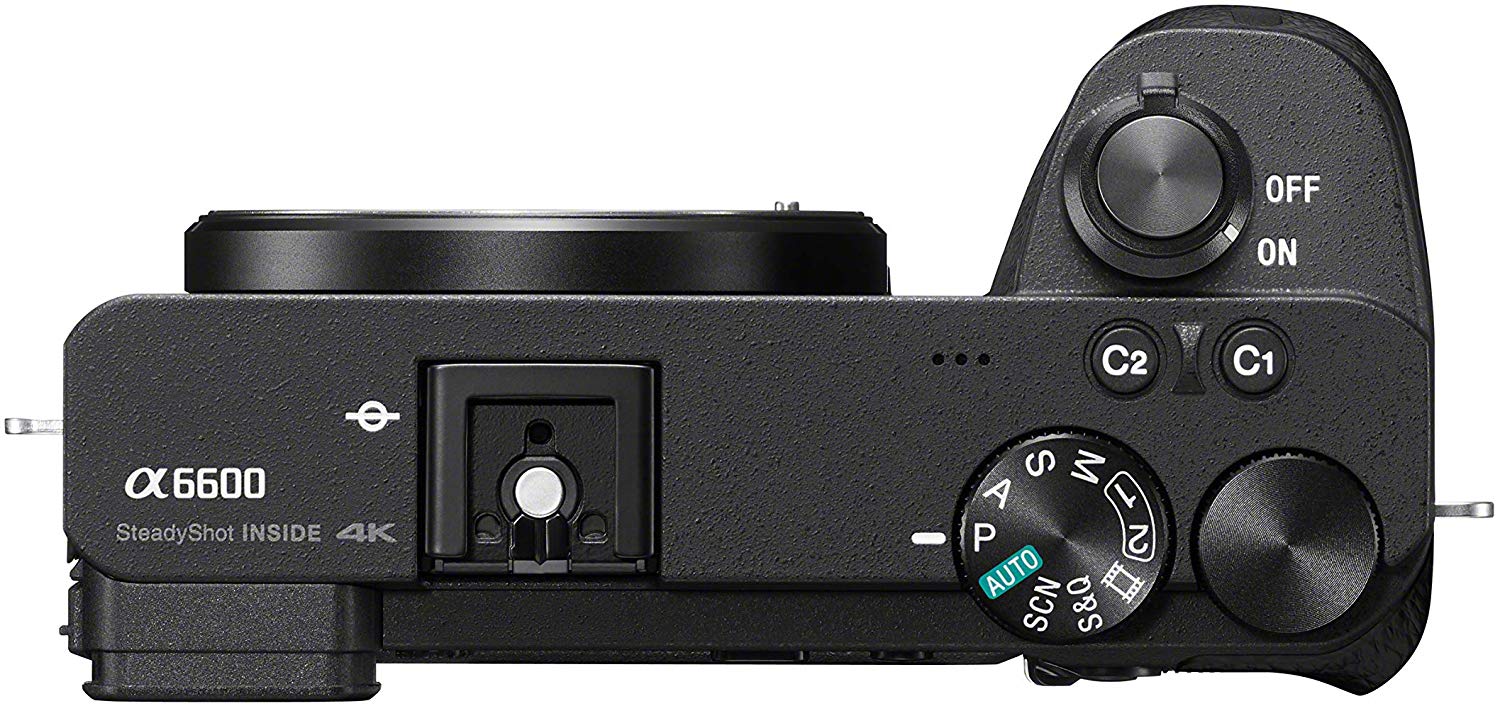
A6600
In terms of connectivity, the both of these cameras offer Bluetooth, NFC, and Wi-Fi.
Sony a6500 vs a6600 Video Performance
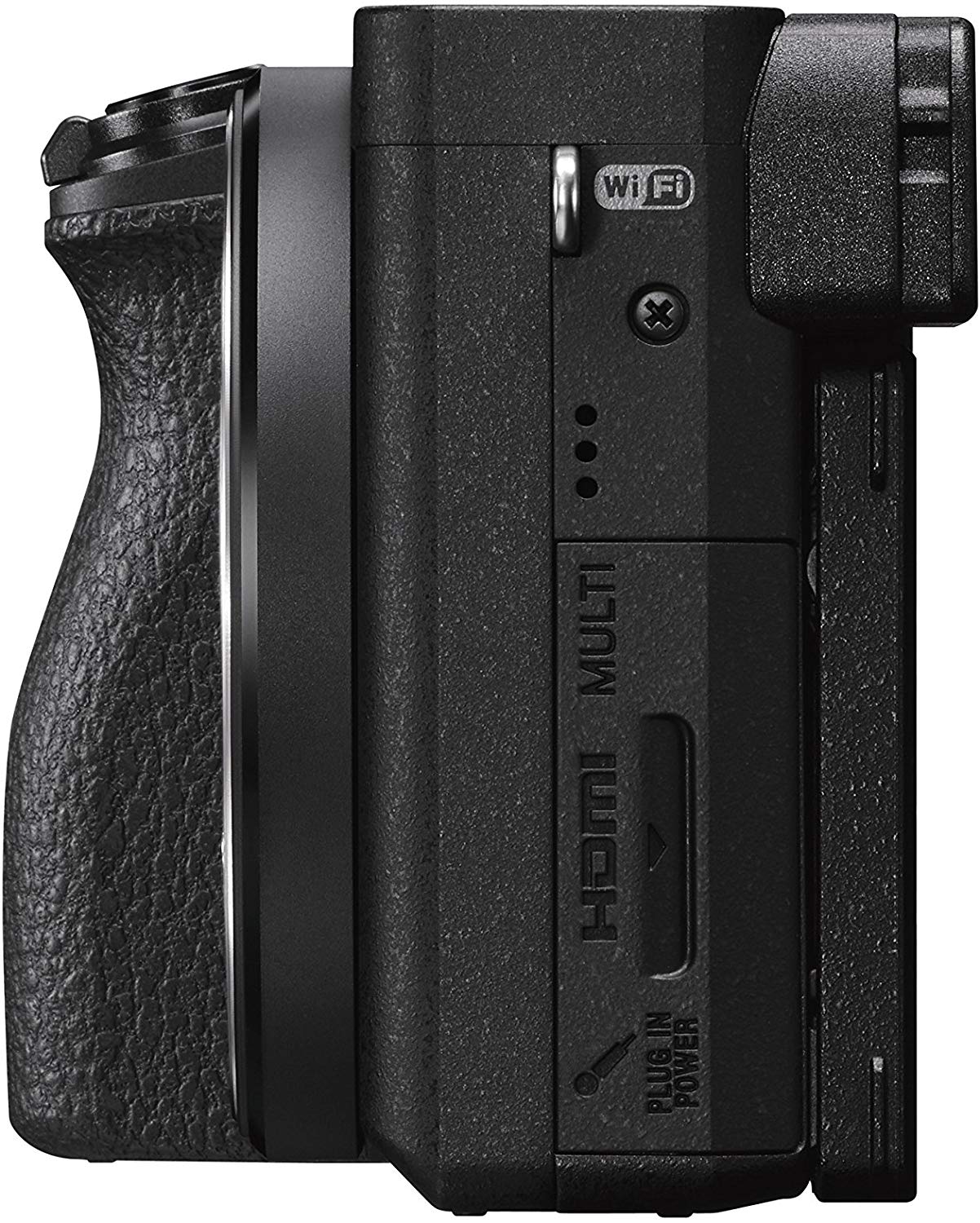
A6500
Both cameras rate pretty well when it comes to video performance. They both shoot 4K UHD video up to 30p and Full HD video at up to 120 frames per second. However, the Sony a6600 comes with some big improvements over its predecessor.
The Sony A6500 has a 30-minute time limit for 4K video recording while there is no such restriction when shooting videos with the Sony A6600.
Additionally, the Sony A6600 has both microphone and headphone port, fully articulating screen, and HDR video profiles. All of this makes this camera very useful for videographers.
Sony a6500 vs Sony Alpha a6600 Price
In conclusion, Sony A6600 has a better autofocus system, improved video features, and enhanced ergonomics. The camera will be available for purchase in November for the price of $1,398.00.
On the other hand, a new Sony A6500 costs $1,198.00. Also, since this camera is now three years old, you can also buy a used Sony a6600. On MPB, you can find one in excellent condition for the price as low as $884.00.
If you're not familiar with MPB, check out our MPB review to learn why it's our top-recommended used gear resource.
For more details about these cameras, check out the video above by Manny Ortiz.
We Recommend
Sony a6600 Review

Review of Sony a6600
After almost three years since the release of the Sony a6500, the company finally announced its successor - the Sony a6600. The camera will hit store shelves in November which leaves you with plenty of time to decide if it’s worth buying.
The latest Sony’s camera naturally has a lot in common with its predecessor. They are both mirrorless cameras with a 24.2MP Exmor CMOS APS-C sensor, and they both offer a wide range of useful features such as 11fps burst shooting speed, 4K video, and 5-axis image stabilization.
As you would expect, the Sony a6600 comes with some important upgrades, but is it a worthy successor? Find out in this Sony a6600 review!
Table of Contents
- Sony a6600 Specs
- Sony a6600 Body & Design
- Sony a6600 Build & Handling
- Sony a6600 Video Performance
- Sony a6600 Lenses
- Sony a6600 Price
Sony a6600 Specs
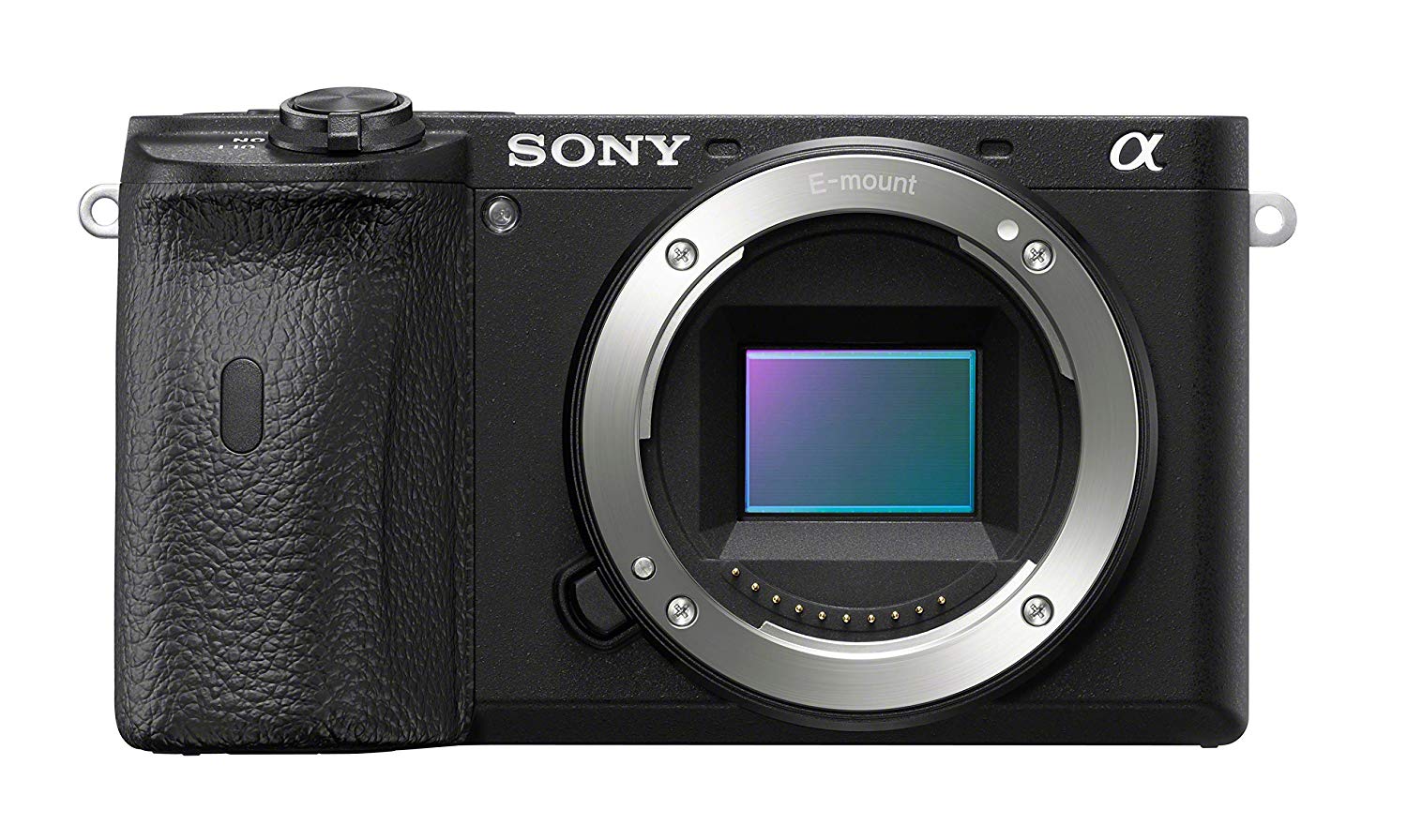
The Sony a6600 features a 24.2MP Exmor CMOS APS-C sensor. It is the same sensor as in the Sony a6500, however, the latest camera has an updated BionZ X processor that gives it a broader ISO range.
While the Sony a6500 has a native ISO sensitivity of ISO 100 to 25600 (expandable to ISO 51200), the Sony a6600 has a native ISO range of 100 to 32000 (expandable to ISO 102400). As a consequence, we can expect the Sony a6600 to produce better results in low-light situations than its older brother.
The camera has 5-axis image stabilization and it will produce sharp photos even if you prefer to shoot-images hand-held.
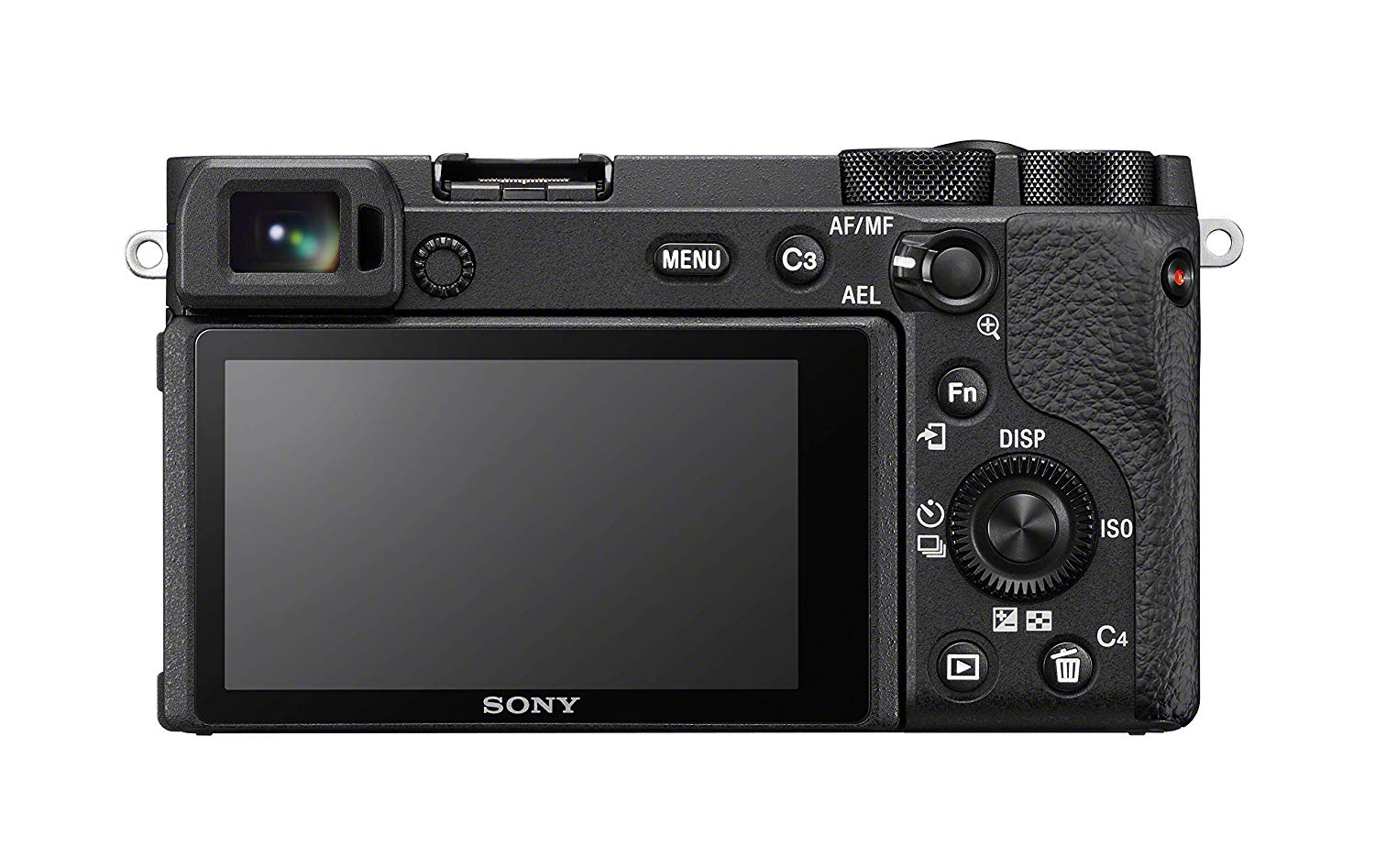
As we already mentioned, the Sony a6600 has a continuous shooting speed of 11 frames per second. Although there are not improvements in burst shooting capabilities from the a6500, the Sony a6600 has an upgraded autofocus system which will consequently produce better results in burst shooting mode.
The Sony a6600 features a hybrid autofocus system which consists of 425 phase and 425 contrast-detection points. In comparison, the Sony a6500 featured the same amount of phase points, but only 160 contrast-detection points.
Additionally, the a6600 carries improvements in autofocus software, so we can expect it to be faster and more accurate. The camera acquires focus in 0.02 seconds which is, according to the company, the world’s fastest speed. Also, it features eye detection mode for humans and animals that has won wide acclaim for its accuracy.
Learn more about the Sony a6600 in the video above by Manny Ortiz.
Sony a6600 Body and Design
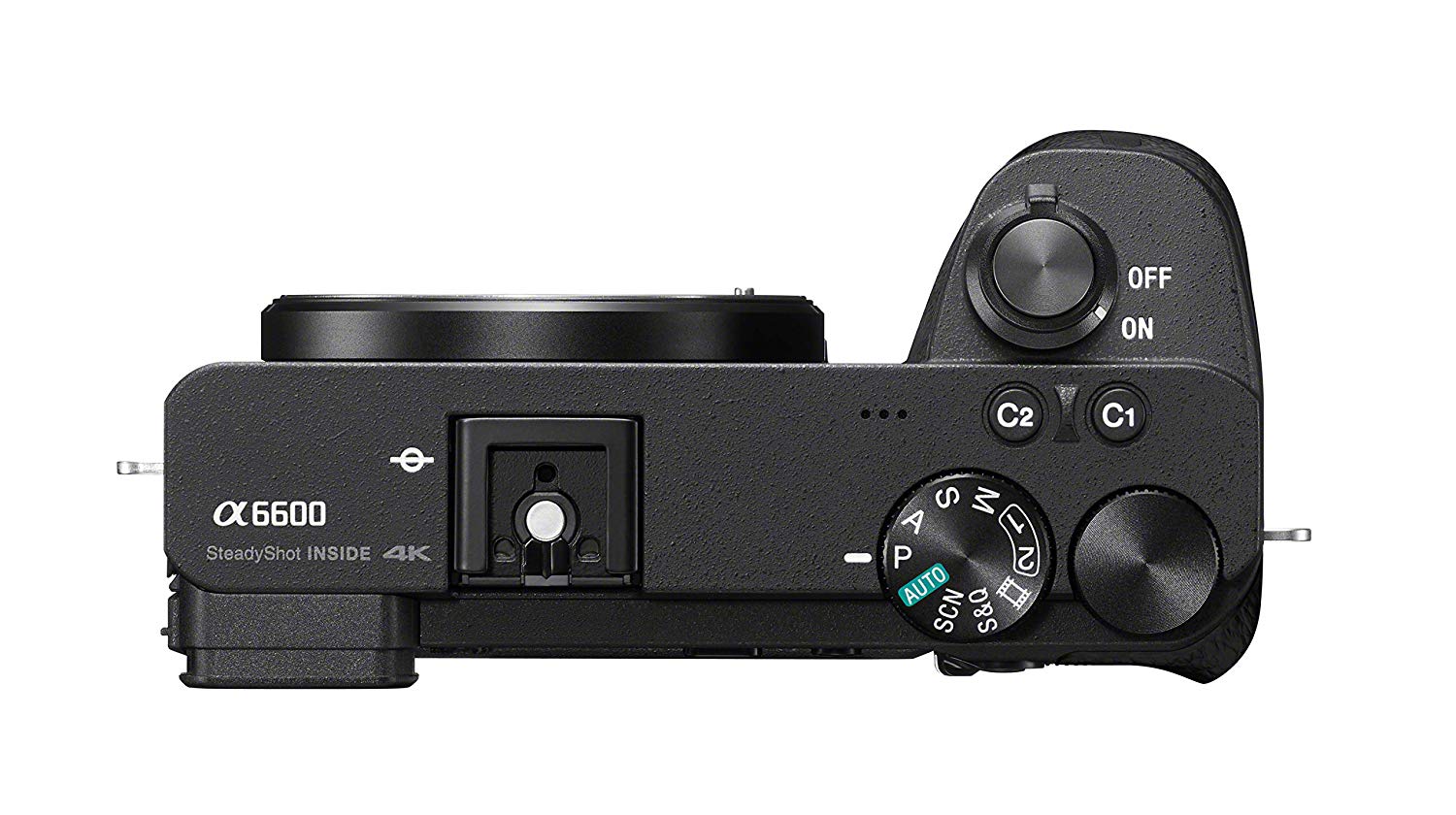
The Sony a6600 weighs 1.11 pounds and measures 4.72 x 2.64 x 2.72 inches. As the rest of the cameras from the same series, it is very compact so you can use it as a traveling camera or for street photography thanks to its small form factor.
Overall, the a6600 shares the same design as its predecessor, but it comes with certain improvements in the grip and LCD screen. The grip is now much larger than on the Sony a6500. Because of this, hand-held shooting will feel much more comfortable even after long photography sessions.

For framing shots, you can use either an electronic (XGA Tru-Finder 2.36m-Dot OLED) viewfinder or LCD display. Although the Sony a6500 also featured a tilting screen, it couldn’t be turned towards the front of the camera. The LCD on the a6600 is now fully articulated which is convenient for selfies or vlogging.
The Sony a6500 had a built-in flash, but the developers decided to ditch it in the Sony a6600’s design. This is not something to get mad about since it is definitely better to use an external flash which can be added through a hot-shoe.
Sony a6600 Build and Handling
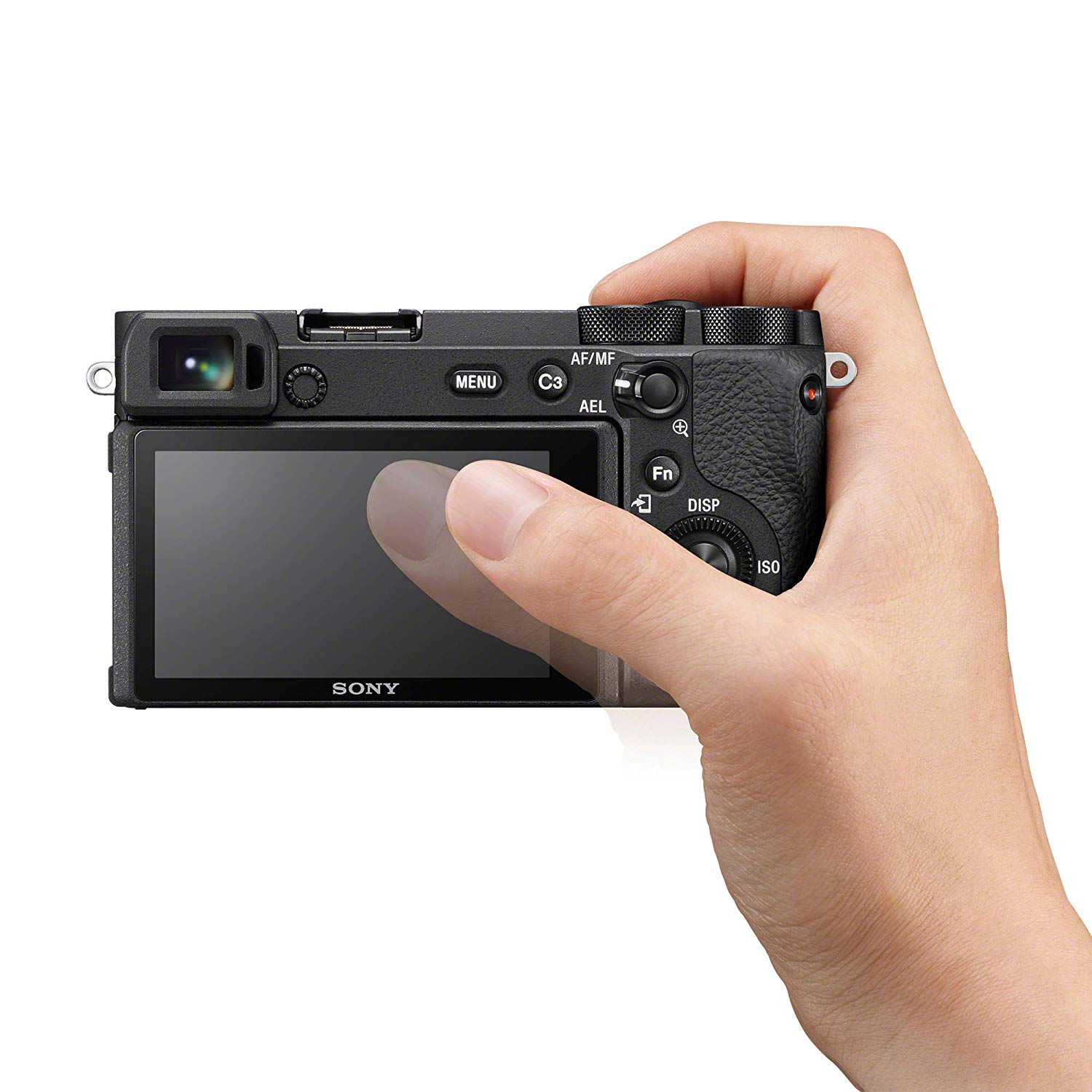
The Sony a6600 is built out of a magnesium alloy body and it is weather-sealed against dust and moisture. This will allow you to use this camera even if the weather conditions are bad.
As we already mentioned, the Sony a6600 now has a large grip which will make handling much easier. However, the new grip is not there only for convenient handling. In fact, it houses a large battery which will substantially improve the running time of the camera.
On the full charge, the Sony a6600 is expected to make around 800 shots. If we compare it with the battery life of 300 shots with the Sony a6500, you will understand how important upgrade this might be for certain photographers.
Sony a6600 Video Performance
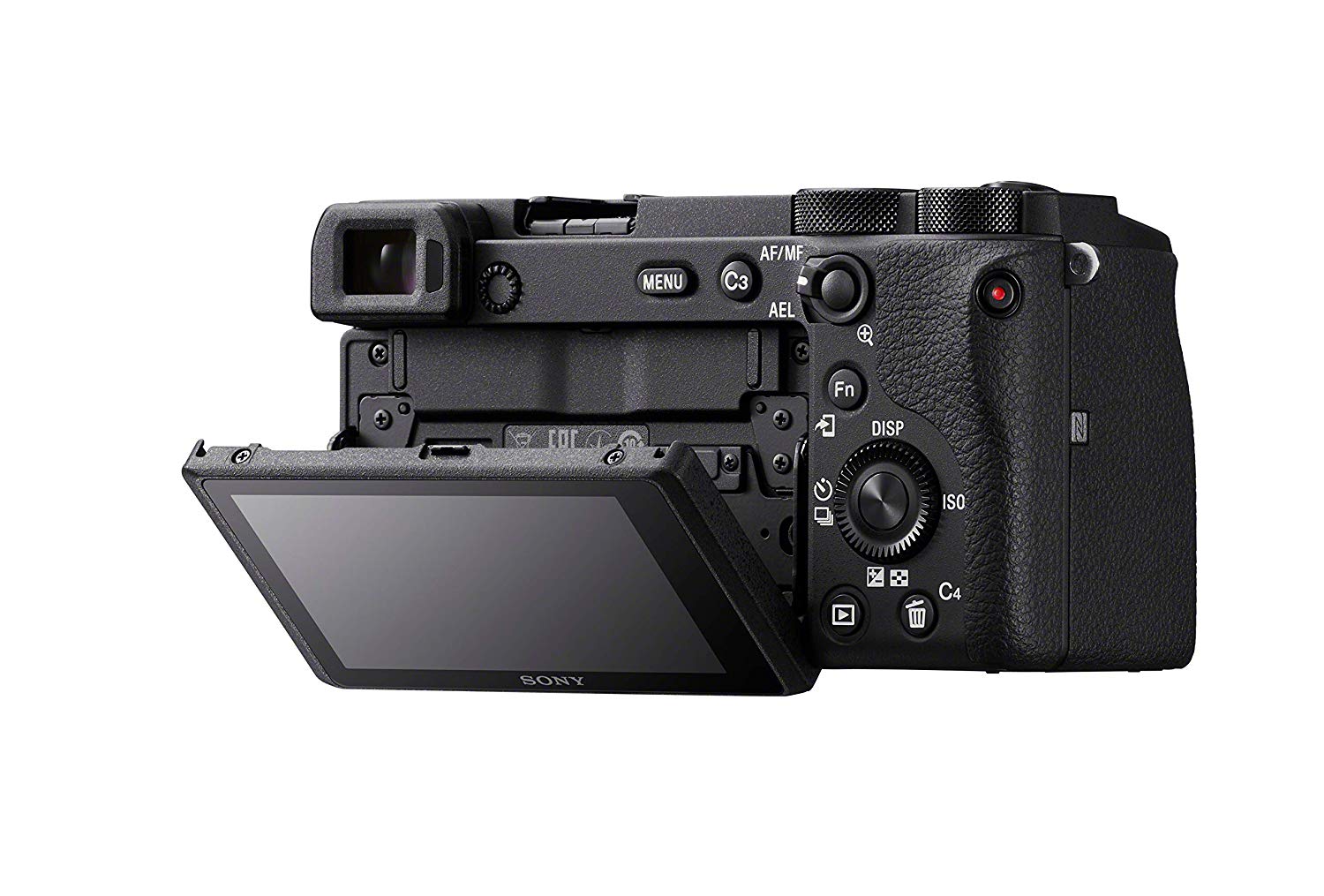
Now, let’s see how the Sony a6600 rates when it comes to video.
Like its predecessor, the a6600 shoots 4K UHD video up to 30p and 100Mbps and Full HD video at up to 120 frames per second. However, 4K videos now do not have a time limit of 30 minutes per clip, as was the case with the a6500.
The video capabilities of the Sony a6600 are benefited by the lastest software improvements in its autofocus system. For example, EYE-AF now works in video mode along with Real-Time Tracking.
Internal video is recorded at 4:2:0, but you can use the HDMI output for 4:2:2 video recording. Additionally, the camera has HDR profiles and you can attach external mic as well as external headphones. This all makes the Sony a6600 a powerful tool for videography.
Sony a6600 Lenses
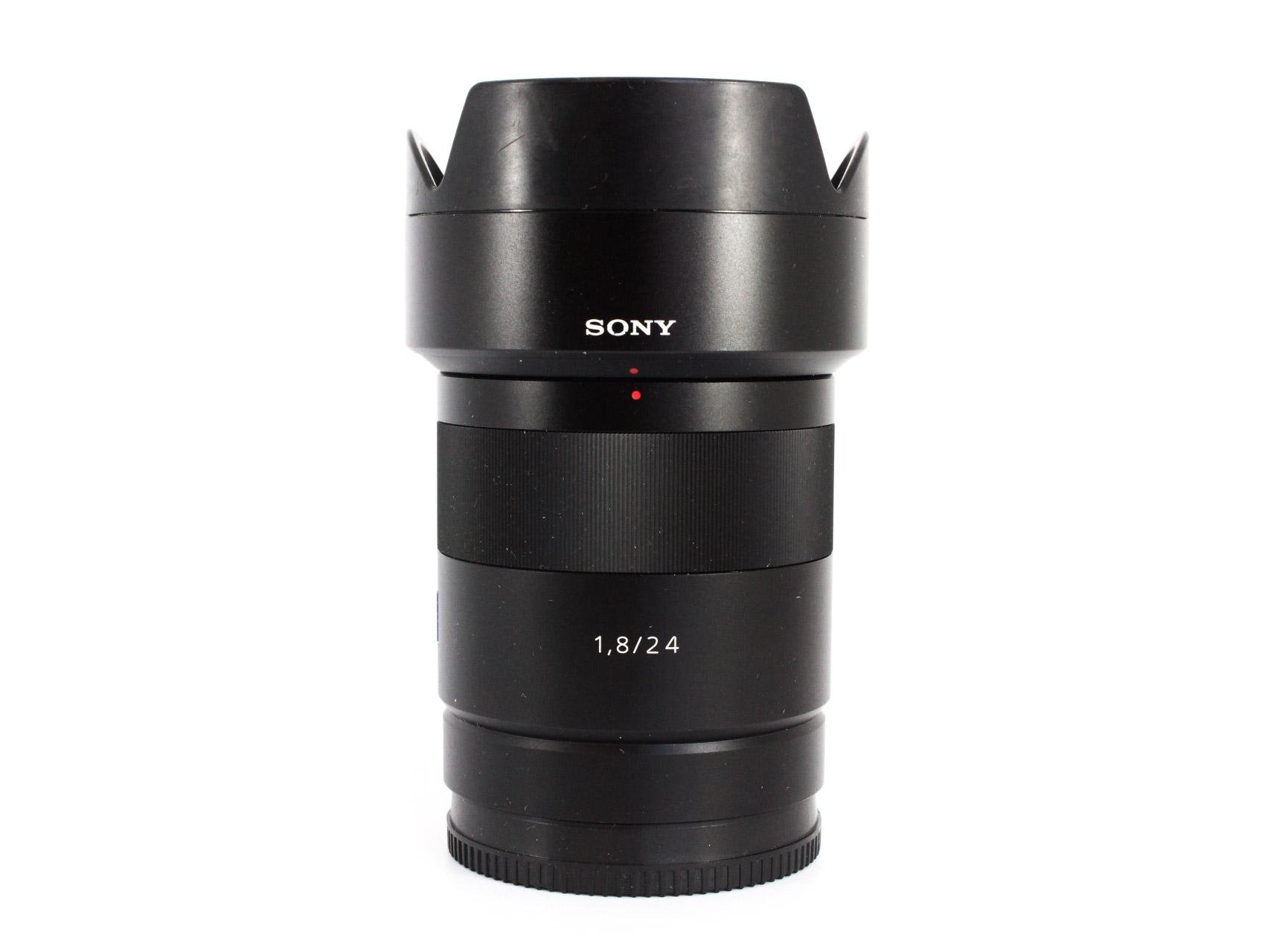
The Sony a6600 uses the E-mount lenses. Since it is an APS-C camera, you should use lenses suitable for this type of camera.
If you are not sure which lenses should you buy for this camera, we suggest you check out the following list:
- Sony 18-200mm f/3.5-6.3 OSS – A top choice for a versatile zoom lens.
- Sony 24mm f/1.8 Zeiss Sonnar – A solid option for landscapes.
- Sony 18 - 105 mm f4 lens – The best lens for videography.
- Sony 10 - 18 mm f4 lens – A nice zoom lens for landscapes.
- Sony E 50 mm f/1.8 OSS – A must-have for any camera bag thanks to its versatility.
- Sony FE 70-300 mm f/4.5-5.6 G OSS – The best telephoto lens.
Sony a6600 Price
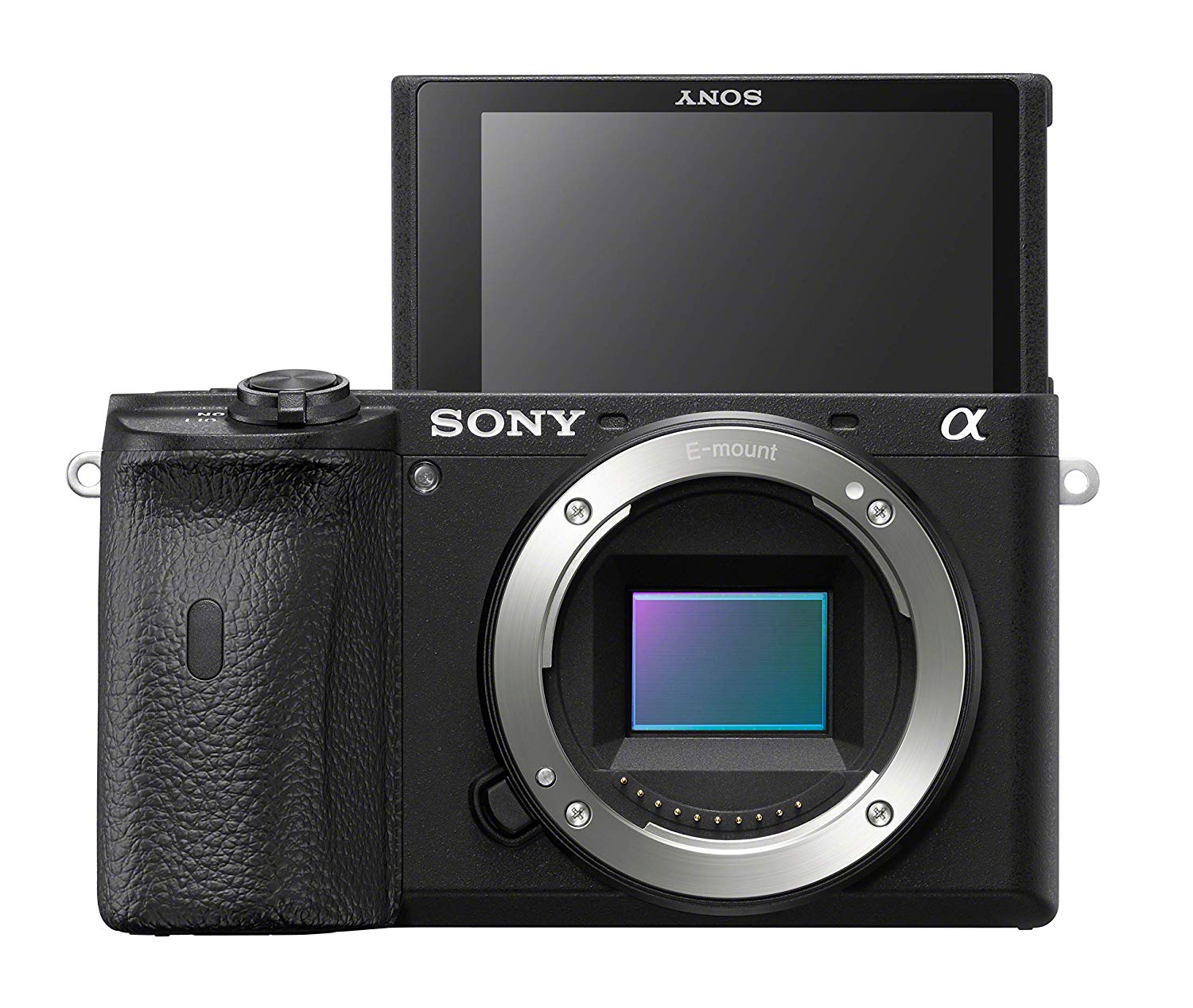
The Sony a6600 (body only) will be available in November for the price of $1,398.00. In comparison, you buy a new Sony a6500 for around $1,198.00.
Overall, the price difference between these two cameras is not significant, but you will get a wider ISO range, better videography features, a flexible LCD screen, a larger grip, and substantially improved battery life by opting for the newer a6600. In our opinion, it is worth spending additional $200 for these features.
Of course, every bit of money matters, so if you simply can't justify spending $1,400 on the a6600, the a6500 is a great second choice. This is particularly true if you find a good pre-owned a6500!
At the time of this writing, MPB has Sony a6500s in excellent condition listed for $844. Their like-new models are listed at $884. That's a significant savings for a camera that is in top shape!
What's more, you can sell or trade in your old gear on MPB and use the proceeds to offset the cost of upgrading your camera. It's truly the best of both worlds - you get better gear and you save money while doing it.
If you're not familiar with MPB, check out our MPB review to learn why it's our top-recommended used gear resource.
We Recommend
Sony a6700 Review
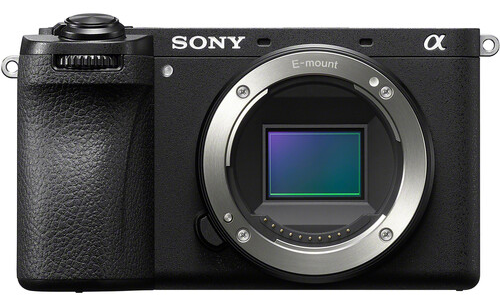
If you are searching for more information on the hot-selling Sony Alpha a6700, you've come to the right place. It’s the newest camera in Sony’s APS-C camera lineup, and while newer doesn’t always mean better, it does in this case. Honestly, Sony improved so much with the a6700 that it blew its predecessor, the a6600, out of the water!
In this Sony a6700 review, we’ll provide a basic camera overview, examine its photo and video performance, recommend our favorite Sony E mount lenses, and more. Additionally, thanks to innovative websites like MPB, buying a used mirrorless camera has never been cheaper or easier.
Who is MPB? It is a trustworthy and reliable online platform selling pre-owned photography and videography gear at unbeatable prices. Better yet, all of its cameras and lenses are hand-inspected by professional product specialists with years of experience and backed by six-month warranties, allowing you to make your purchases confidently and worry-free.
We love MPB because, over the years, we have saved thousands of dollars buying, selling, and trading in photography equipment on their one-of-a-kind online marketplace. You can start saving, too, by visiting their website today. Now, without further ado, let’s dive in and discover if the Sony a6700 is a good fit for you and your needs!
Check out the video above by Sony Camera | Channel to learn more about the Sony a6700 camera and how it can enhance your photography skills.
Table of Contents
- Sony a6700: Overview
- Sony a6700: Imaging Capabilities
- Sony a6700: Video Capabilities
- Recommended Lenses for the Sony a6700
- Final Thoughts on the Sony a6700
Sony a6700: Overview
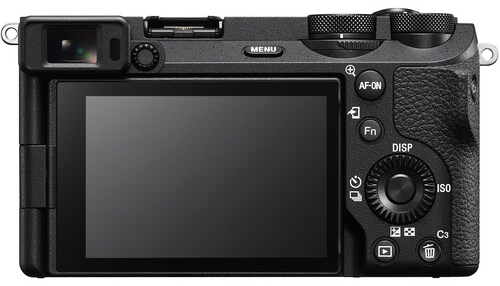
The flagship Sony a6700 was released in 2023 and features an upgraded 26.0-megapixel sensor and an advanced Bionz XR image processing engine. These premium components, along with its light and compact design, make it an excellent camera for travel and action photography.
The a6700’s new phase-detection autofocus (AF) system runs flawlessly because of the camera’s fast image processor. It covers 93% of the sensor and utilizes 759 focus points during stills shooting (425 points during video capture). Moreover, the AF system harnesses AI technology and machine learning to identify and track subjects in real time.
The two biggest design changes from the previous model are the addition of a front control dial and a larger, more ergonomically friendly grip. The dial lets you use your thumb and forefinger simultaneously to quickly adjust exposure settings, increasing workflow speed. At the same time, the comfortable grip makes one-handed shooting easier and adds a layer of security.
Now, here’s an in-depth look at the Sony a6700 specs and key features:
- Camera Type: Mirrorless Camera
- Sensor: 26.0MP APS-C BSI-CMOS Sensor
- ISO: 100 - 32,000 (Expandable to 50 - 102,400)
- Lens Mount: Sony E Mount
- Speed: 11.0 fps
- Autofocus: 759 focus points
- Video: 4K/120p & 1080p/240p
- Size/Weight: 122 x 69 x 64 mm / 493 grams
- Battery Life: 570 shots
- Stabilization: Yes
- Touchscreen: Yes
- Weather-Sealed: Yes
- Used Sony a6700 Price: $1,389 - $1,489
Sony a6700: Imaging Capabilities
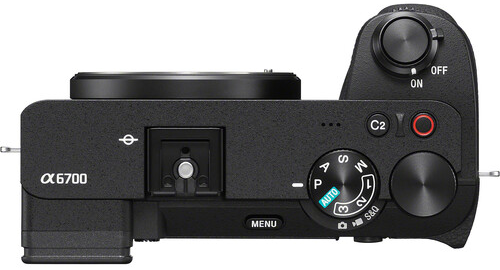
For still photography, the Sony a6700’s pixel count was upgraded from 24.2 to 26.0MP, making it the highest-resolution Sony APS-C mirrorless camera to date. You might ask, “OK, what difference is 1.8MP really going to make?” However, if you like printing photos, the answer is a lot! Especially if you plan to enlarge your images.
The a6700 has a maximum continuous shooting speed of 11.0 frames per second (fps) regardless of whether you use its mechanical or electronic shutter. If you shoot JPEGs, the camera buffer can capture approximately 1000 consecutive photos (90 seconds). Alternatively, for RAW images, the buffer will stop at around 60 photos (5.5 seconds). The fast burst shooting and large buffer capacity make the a6700 a good option for wildlife and sports photography.
A few more prominent photo features include the sensor's BSI (back-side illuminated) design, wide ISO range, and 14 stops of dynamic range. They combine to boost the a6700’s low-light performance and give you more control over your images in post-production.
Learn More:
Sony a6700: Video Capabilities
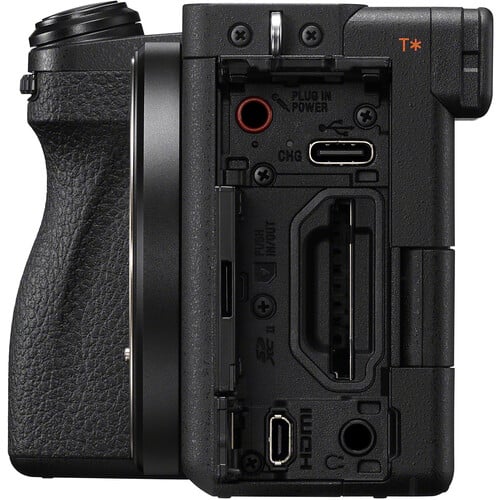
While there’s no denying that the Sony a6700 performs well as a stills camera, what truly makes it exceptional is its impressive new set of video features. This all starts with its powerful 4K video capabilities. UHD 4K footage is oversampled from a 6K sensor area—delivering sharper, more detailed movies containing 2.4x the traditional 4K video data.
Furthermore, its image processor and strong battery life allow the a6700 to record 4K/30p for over two hours and 4K/60p for more than 40 minutes without overheating. People interested in slow-motion or super-slow-motion video will also be excited to hear that the a6700 has 4K/120p and 1080p/240p frame rates.
Other elite video features include 10-bit 4:2:2 video, in-body image stabilization, a time-lapse video mode, a fully articulating rear screen, and an “auto-framing” feature designed specifically for vloggers. Thanks to everything the a6700 offers as a video camera, it’s ideal for everyone from entry-level YouTubers to professional videographers and filmmakers.
Recommended Lenses for the Sony a6700
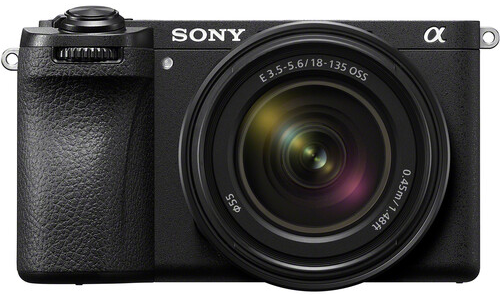
Here’s a quick list of some of the best Sony lenses for photo and video to pair with the Sony a6700:
- Sony E 18-135mm f/3.5-5.6 OSS
- Sony E 16-55mm f/2.8 G
- Sony E 10-18mm f/4 OSS
- Sony E 70-350mm f/4.5-6.3 G OSS
- Sigma 35mm f/1.4 DG DN ART - Sony E Fit
Final Thoughts on the Sony a6700
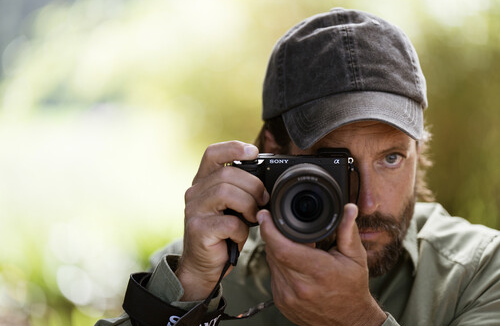
Whether you are a photographer, videographer, or hybrid shooter, the Sony a6700 is a fantastic tool to have in your kit. It’s perfect for beginner and intermediate photographers because of its compact size, intuitive design, and affordable price. On the other hand, professionals will love its collection of high-end features like cinematic video, AI-powered autofocus, and IBIS.
Do you want to browse more options before deciding which camera to buy? If so, check out the links below to other popular Sony APS-C and Sony full-frame mirrorless cameras currently in stock at MPB.
Sony APS-C Cameras
Sony Full-Frame Cameras
Heads up: Clicking on our affiliate links and exploring our sponsored content helps us at no extra cost to you, and we only recommend gear we're absolutely crazy about!
Learn More:
We Recommend
Sony a7 II Review: A Camera That's Still Got It in 2021

If you haven’t noticed, I’ve been highlighting a few used cameras in the past couple of weeks that I think still function wonderfully in 2021.
And, I think it’s a shame I haven’t covered the Sony a7 II yet because it is one of the best used cameras for bargain hunters.
The Sony a7 II came out in 2015, making it 5 years old. It’s a full frame mirrorless camera with wonderful image-stabilization. It has since been replaced with the much more expensive Sony a7 III. So, if you’re a professional photographer who needs all of the latest and greatest specs, you can check that out.
The Sony a7 II features a really great 24MP sensor, 5-axis image stabilization, and a phenomenal AF system. So, I would recommend the Sony a7 II for professional photographers who are looking to venture into mirrorless territory for the first time, but I would also recommend the Sony a7 II to enthusiasts who love mirrorless set ups.
In this Sony a7 II review, you can expect a full breakdown of all of the Sony a7 II specs, the Sony a7 II handling, and the Sony a7 II video performance. Let’s get started.
Sony a7 II Specs

We can’t talk much about the Sony a7 II without first talking about its specs. As I mentioned, this camera comes with a 24MP full frame CMOS sensor, a 5-axis sensor-based image stabilization, and an AF system with 117 phase-detect points.
Additionally, the Sony a7 II features Full HD video capabilities (it’s just a little too old to include 4K) and a hefty body that really makes you feel like you’re using a professional camera.
Other Sony a7 II Specs Include:
- 24MP full frame CMOS sensor
- 5-axis image stabilization
- ISO range of 50-25,600
- AF system with 117-phase detection points and 25-contrast detection points
- 5fps burst mode
- 3” tilting LCD with 1.23m-dots
- 0.5” electronic viewfinder with 2.4m-dots
- Full HD video capabilities at up to 60fps
- 1.22 lbs
- 270-shot battery life
Sony a7 II Body & Design
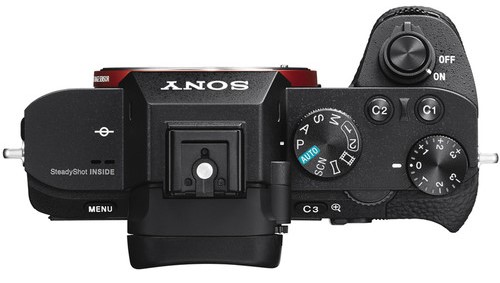
The Sony a7 II build is incredibly similar to any of the other cameras in the Sony a7 series. It is reminiscent of more traditional cameras, is made of magnesium alloy (a lot of it), and features weather-proofing to prevent dust or water damage.
It measures 5.0” x 3.8” x 2.6” and weighs 1.22 lbs.
If you have shot with its predecessor, then you’ll know that the a7 II is actually a lot bigger than the a7. The shutter button is also no longer located on the top of the camera, but rather is located on the angle attached to the grip. I think this change was for ergonomic purposes, although I’m not sure I care for it.
The layout of the buttons is incredibly similar, though, especially on the top plate. Other than the shutter button, not much has changed. You can still find the two custom buttons and the mode dial in the same place. However, the mode dial, like the rest of the camera, did get slightly bigger.
I think most of these changes were likely to make it easier to shoot with gloves.
Learn More:
Sony a7 II Build & Handling

One frustrating aspect of the Sony a7 II handling is the fact that the shutter is annoyingly loud. If you’ve been in the photography industry for as long as I have, you could mistake this camera with an SLR because of just how noisy it is. To me, this is nostalgic, but to others, I’m sure it’s quite frustrating.
You can use this camera right out of the box, but I don’t recommend it because the Sony a7 II is made to be customized. Besides the three customizable buttons on the top plate, all of the menu can be customized. You get 12 slots with this customizable menu and 32 features. It took me a while to play around with it to figure out exactly what I wanted.
The tilting LCD screen is a nice feature, although I wouldn’t exactly call it a selling point since there are so many cameras on the market with fully articulating touchscreens.
Sony a7 II Video Performance
The Sony a7 II unfortunately doesn’t come with 4K video, so it shouldn’t be considered for serious videographers who need this capability. However, as you can see in the footage by Tony Tran above, this camera can still handle itself when it comes to its video performance.
You can shoot Full HD video at up to 60fps with the Sony a7 II. It can record in XAVC S, AVCHD or MP4 formats.
Importantly, the battery life of the Sony a7 II will allow you to shoot around an hour of footage, uninterrupted.
You’ll also find that the handheld footage you get out of this camera is extraordinary, thanks to its image stabilization. For instance, all of the footage in the video test above is handheld footage.
Sony a7 II Price

The Sony a7 II price when it first came out back in 2015 was $1,700. Now, obviously you shouldn’t expect to pay anywhere near that price anymore, especially considering Sony no longer actually manufactures the Sony a7 II since it has long since been replaced.
As such, if you’re on the hunt for a Sony a7 II, then you’re on a bargain hunt because you’ll only be able to pick one up if it's used.
Thankfully, this doesn’t mean you’re going to have to use eBay or Craigslist, since most photographers have decided these sites aren’t worth the trouble they cause. You can actually go bargain hunting for a used Sony a7 II on MPB.

If you haven’t heard of MPB before, which would be surprising since we talk about them quite a lot here, they are a used camera retailer. They basically act as the middleman between you and other photographers looking to sell their used gear.
So, they receive hundreds of different used cameras and used lenses everyday. They then use their in-house professional photographers to give each piece of equipment a grade, ranging from “like new” to “well used.” What’s great about MPB is you can actually expect your equipment to be in whatever condition is listed.
A lot of the equipment that MPB sells is in either “like new” or “excellent” condition, and you can even pretty frequently find used cameras with their original packaging.
As for the Sony a7 II, MPB currently has a dozen of them available. They range from “like new” condition to “excellent” condition and you can pick one up from anywhere between $780 to $830, which is about half the price of purchasing the Sony a7 II brand new a few years ago.
You can use that extra $800 to purchase a few awesome lenses to pair with your Sony a7 II. It doesn’t get any better.
Learn More:
We Recommend
Sony a7 III vs a7R II
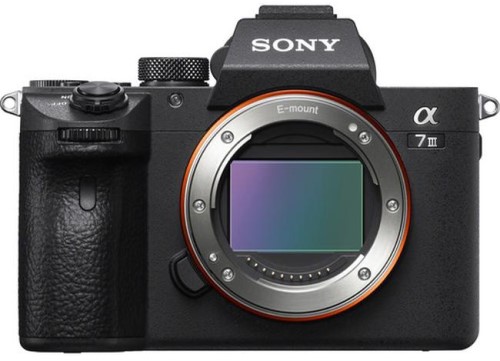
Today, two of Sony’s most popular cameras are the Sony Alpha a7 III and the Sony Alpha a7R II. And while they have been superseded by newer models (the Sony Alpha a7 IV and the Sony Alpha a7R IV, respectively), they remain powerful cameras in 2022.
Better yet, their prices have dropped dramatically since their release dates, and now they are some of the best bargains in the camera world. Even though they are still available new from some retailers, I recommend looking for a used camera.
One place that has tons of both in stock is MPB. They are a trustworthy and reliable platform for used photo and video kit with unbeatable low prices. Additionally, all their cameras are carefully hand-inspected by experienced product specialists and backed by warranties.
In this article, I’ll break down and compare the Sony a7 III vs a7R II. First, I’ll cover their key features, and then we’ll take a look at their image and video performance. Now, without further ado, let’s dive in and check out these two fantastic cameras!
Table of Contents
- Sony a7 III vs a7R II: Specs & Features
- Sony a7 III vs a7R II: Imaging Performance
- Sony a7 III vs a7R II: Video Performance
- Final Thoughts on the Sony a7 III vs a7R II Debate
Sony a7 III vs a7R II: Specs & Features
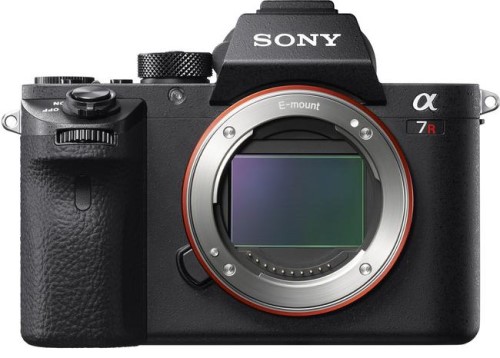
For starters, the a7R II (shown above) came out in 2015, and the a7 III hit the shelves in 2018. In the universe of cameras and tech, three years is a lifetime. Therefore, it’s inevitable that the a7 III is a more advanced camera. However, the a7R II does top it in some aspects.
At the heart of each camera, you will find a full-frame BSI CMOS sensor and a BIONZ X image processor. While the two sensors are nearly identical in size (35.8 x 23.8 mm vs 35.9 x 24 mm), the a7R II blows the a7 III out of the water in terms of megapixel count. At 42MP compared to 24MP, it is nearly double the total pixel count.
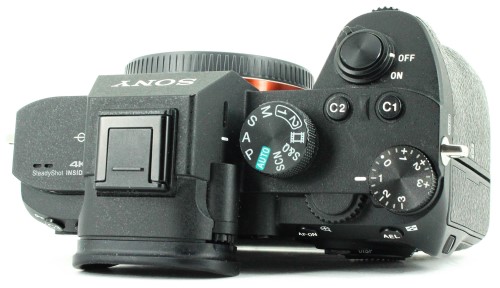
As far as design is concerned, the two cameras are incredibly similar. They have the same height and length, with the a7 III (shown above) being ever so slightly thicker and heavier thanks to a larger grip. Personally, I’m a big fan of the new extended grip and find it helps improve the overall ergonomics of the a7 III.
One last thing I’d like to highlight here is the massive difference in battery life. The a7R ii can only shoot roughly 300 images per charge, while the a7 iii gets over 600. This is courtesy of a new, larger battery and is a major difference-maker out in the field.
Here’s a more in-depth look at the key specs and features of the Sony a7 III vs a7R II.
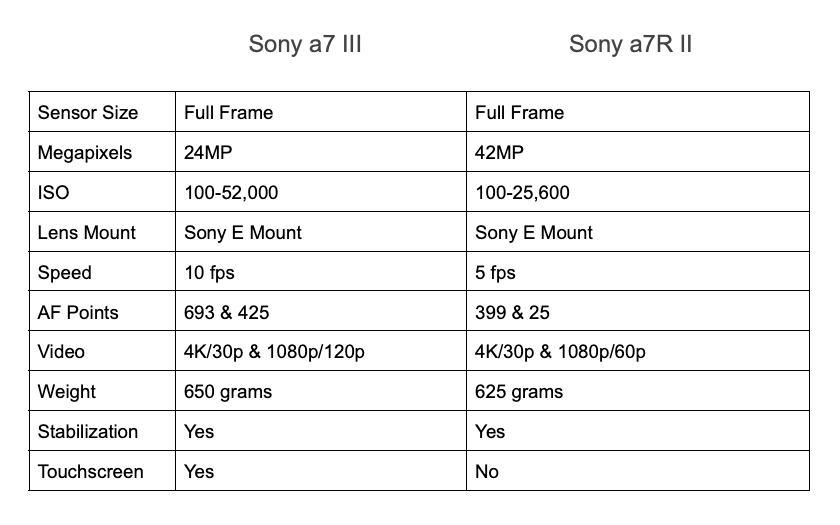
Learn More:
Sony a7 III vs a7R II: Imaging Performance
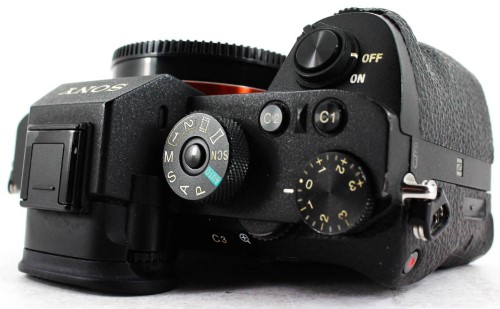
If you only look at the megapixel count, the Sony a7R II (shown above) is the clear winner. With almost twice as many pixels, it generates stunning, high-resolution images. Another advantage of all those extra pixels is that you can effortlessly enlarge and crop your photos while maintaining extraordinary sharpness.
With that said, the a7 III is by no means a slouch in terms of image quality. It takes crystal clear images and is the go-to camera of many professional photographers. In fact, to the untrained eye, most people won’t be able to tell the difference between the two cameras.
Furthermore, there’s much more to imaging performance than just pixel count. Two areas where the new tech inside the a7 III really stands out are autofocus and low-light performance. While the AF system of the a7R II is still great, on the a7 III, it’s industry-leading. The same goes with ISO and low light performance. While on the a7R II, it’s good, on the A7 III, it’s simply better.
For a more in-depth comparison regarding imaging performance, check out the terrific video above by Unconventional Media. They have a fantastic feed full of helpful information for photographers and videographers.
My pick: This is a tie. The two cameras are just so close!
Sony a7 III vs a7R II: Video Performance
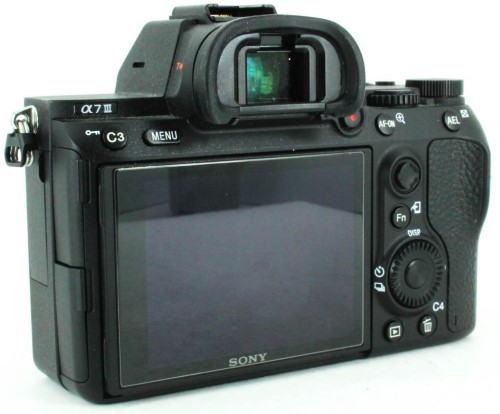
Although you can’t compare these cameras to mirrorless cameras like the Sony a7S III or Sony a1, they are still phenomenal video cameras in their own right. Both cameras shoot 4K video at 24, 25, and 30 fps frame rates.
However, where the a7 III (shown above) has the upper hand is with video quality. At 4K/24p, the camera uses the entire sensor, and at 4K/30p, it only applies a 1.2x crop. On the flip side, if you want the same picture quality on the a7R II, you’ll need to shoot in Super 35mm mode. This limits the sensor and applies a 1.5x crop to the footage.
Another perk of the a7 III is it shoots 1080p/120p slow-motion video directly in the camera, whereas the a7R tops out at 1080p/60p. This is by no means a deal-breaker since you can easily slow down the footage yourself during the editing process, but it is nice to have.
Lastly, let’s talk about the video autofocus. Once again, this is a strength of the Sony a7 III.
While they both work great, with 693 phase-detection points and 425 contrast-detection points (compared to 399 and 25 on the a7R II), the a7 III does a better job of holding focus on moving subjects.
For more information on the two AF systems, watch the fabulous comparison video above by Maik Hansen.
My Pick: Sony a7 III
Final Thoughts on the Sony a7 III vs a7R II Debate
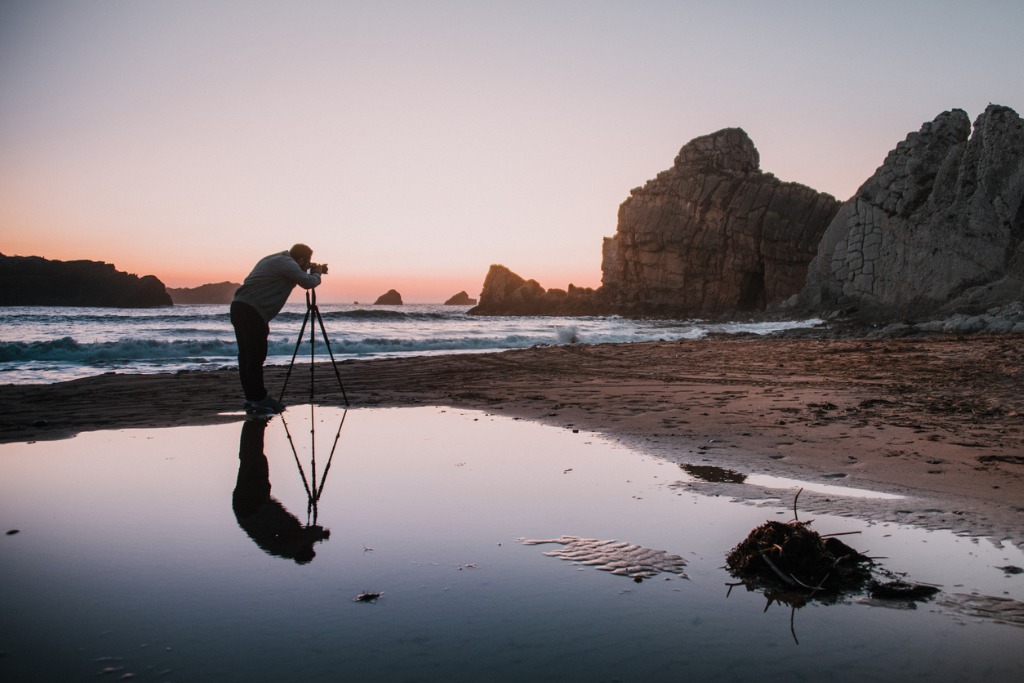
photo byMarioGuti via iStock
Both of these are professional-level cameras that undoubtedly have a place in 2022. No matter which one you go with, you really can’t go wrong!
With that said, if you are a landscape photographer, someone who blows up your images to large sizes, or someone who requires the highest image quality possible, I’d go with the a7R II.
For just about anybody else, including video and hybrid shooters, I’d opt for the a7 III.
Finally, don’t forget to check out MPB if you want to find killer Sony a7 III deals and Sony a7R II deals!
Learn More:
We Recommend
Sony A7 III vs. Nikon D500
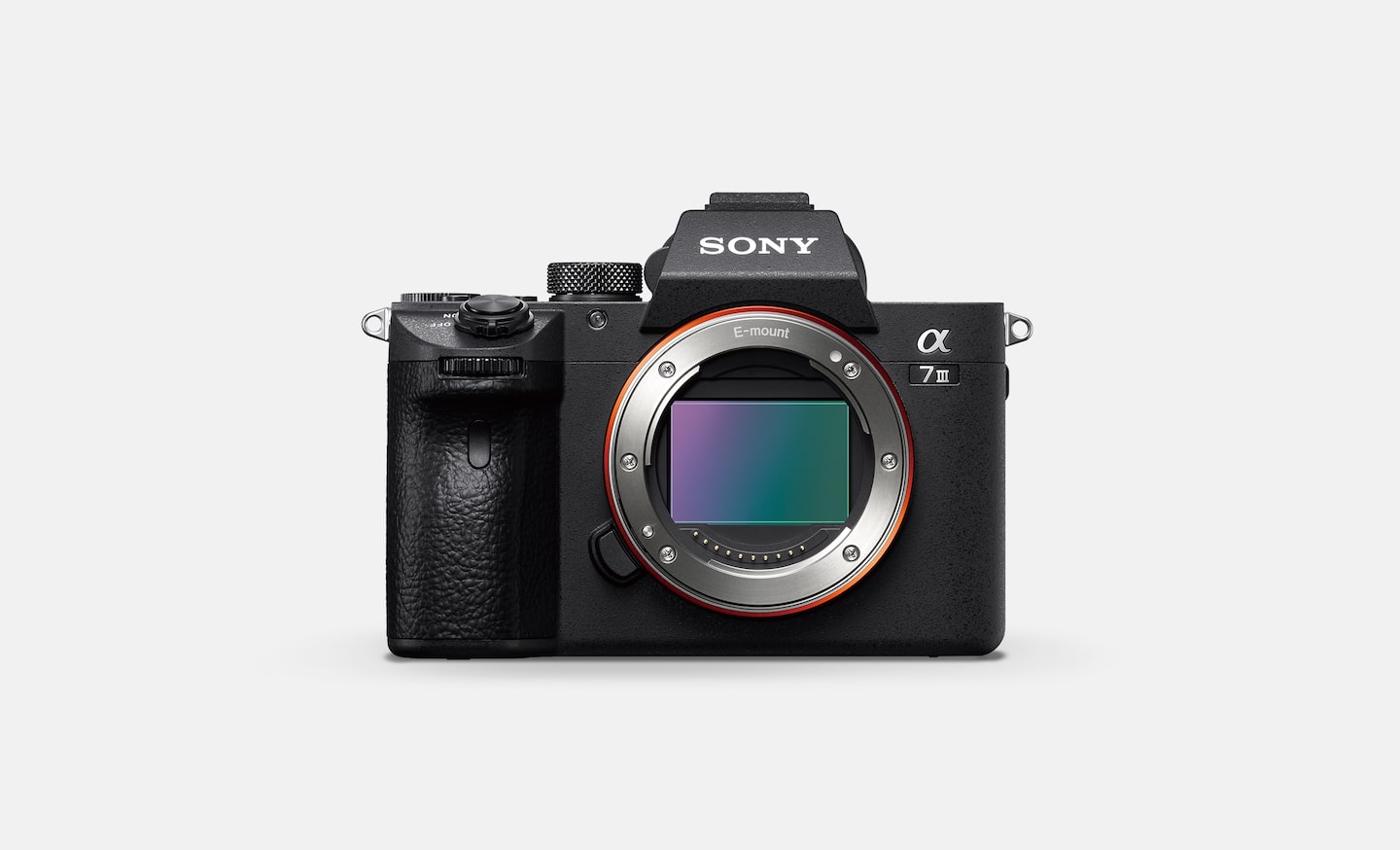
The Sony A7 III vs. Nikon D500 argument has been raging on since Sony dropped the A7 III in 2018.
To give props to Nikon, the D500 is 2 years older than Sony’s and it pretty much took the rest of the camera manufacturers a few years to catch up to its lightning-fast burst mode and incredible autofocus system.
But, since these cameras have both held their resale value like no others, which should you buy if you’ve got the money? This is our Sony A7 III VS. Nikon D500 review.
Sony A7 III vs Nikon D500 Specs
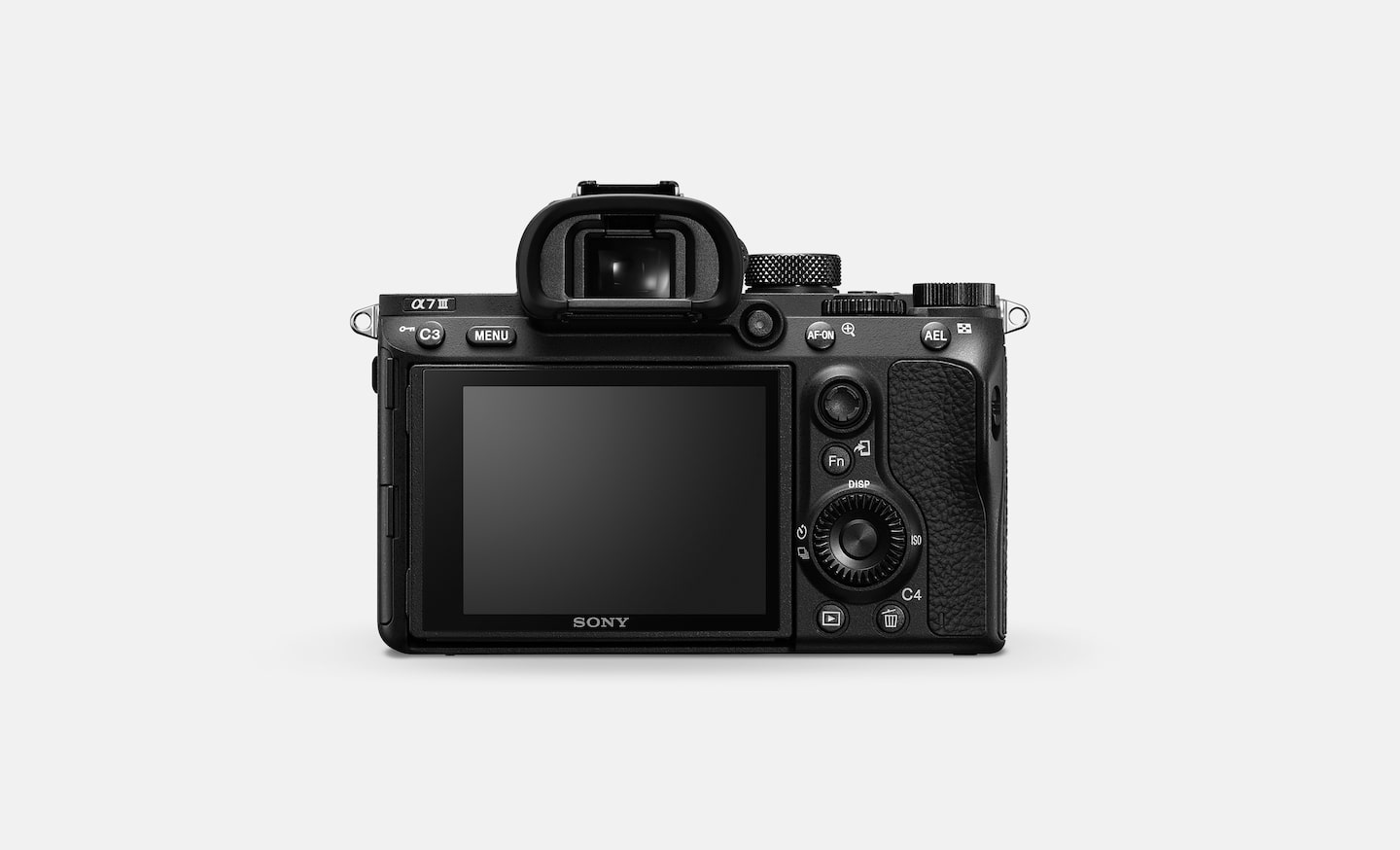
The Sony A7 III has a lot going for it, namely it’s 24MP full frame sensor and it’s image stabilization.
In the Sony A7 III vs. Nikon D500 argument, the Sony A7 III features a slew of better features simply because it’s newer.
Other Sony A7 III specs include:
- 24 MP full frame sensor
- ISO range of 100-51200
- Sensor-shift image stabilization
- 3” tilting screen
- 4K video capabilities
- 10fps burst mode
- Built-in Wi-Fi
- Weather-sealed body
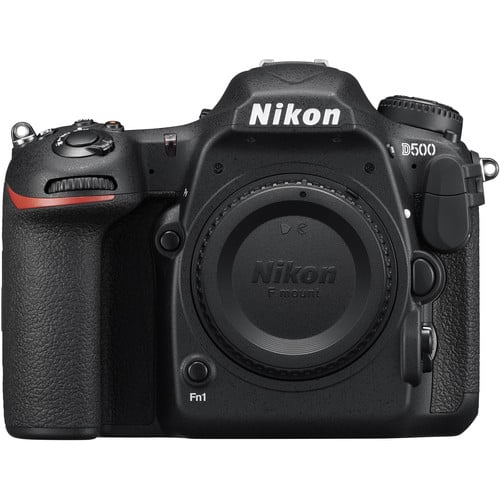
I think the Sony A7 III vs. Nikon D500 argument should really boil down to a list of Sony A7 III vs. Nikon D500 specs, so here are the specs for the Nikon.
The Nikon D500 features a 21MP sensor, a 3.2” tilting screen, and 10fps burst shooting, which are all extremely similar to the Sony A7 III specs.
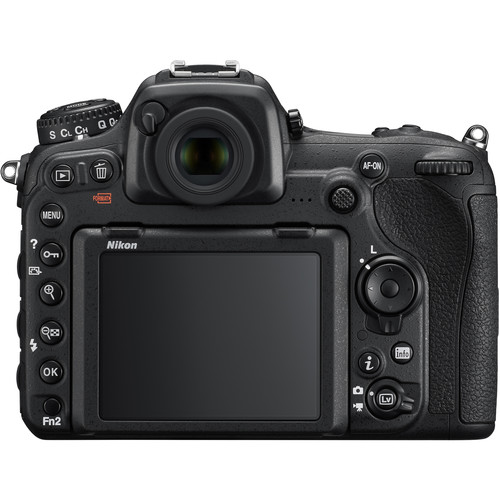
Other Nikon D500 specs include:
- 21MP sensor
- ISO range of 100-51200
- 3.2” tilting screen
- 10fps burst mode
- Weather-sealed body
- Built-in Wi-Fi
Sony a7 III vs Nikon D500 Body & Design

The Sony A7 III has its faults, and they all lie in its body design. For example, while Sony likes to tout that this body is weather-resistant, other manufacturers have consistently produced better camera bodies for inclement weather.
I wouldn’t take this out during a rainstorm.
It also has very limited touchscreen controls. While this doesn’t bother many photographers, it’s worth noting.
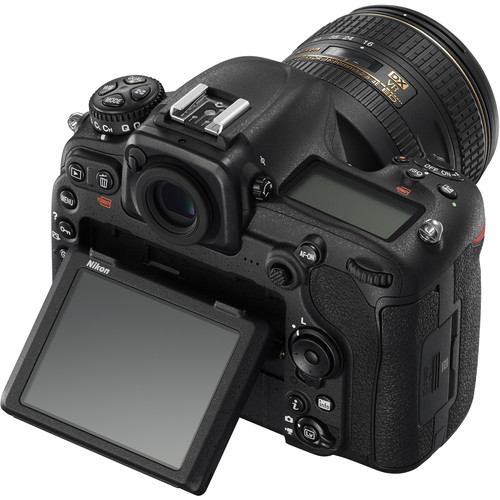
The Nikon D500’s build is much sturdier and more intuitive. Its weather-resistance is more serious, and the layout of the screens are more helpful to your everyday street photographer since you have one tilting screen and one screen on the top of the body.
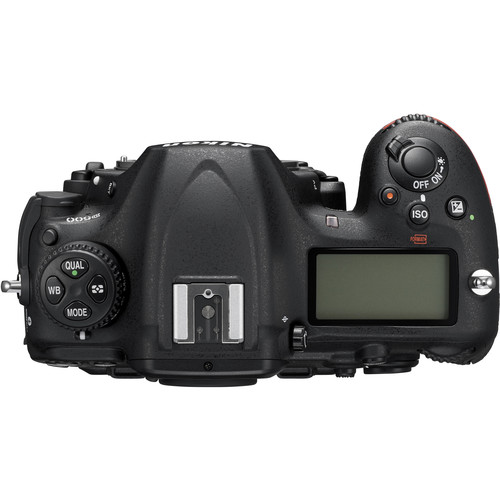
Additionally, the Nikon D500 is more ergonomic due to the traditional Nikon shape. The Sony may be too small and compact for larger hands.
Sony a7 III vs Nikon D500 Video Performance
The Sony A7 III, as shown by Kinotika, shoots enticing, colorful video in 4K. It shoots in 24p and 30p with no field of view crop.
The traditional autofocus system works consistently in 4K mode on the Sony A7 III, but the tap to track autofocus needs some improvement.
As The Daniel Lifepoints out, the Nikon D500 was one of Nikon’s first cameras to roll out 4K video capabilities. It can do so in both 24p and 30p at a 144Mbps bitrate.
Unfortunately, unlike the Sony, this Nikon uses a large crop in order to shoot in 4K. This crop factor is essentially 2.25x, which is worse than a Micro Four Thirds and can turn a videographer off from this camera body.
Sony A7 III vs. Nikon D500 Price
Camera Gear sums the Sony A7 III vs. Nikon D500 argument up quite nicely: they’re both superb cameras and I’d like to own both.
But, since this is real life and both of these cameras are worth thousands of dollars, I can’t.
The Sony A7 III costs $2,000 new, and for those of you who have followed PhotographyTalk consistently, you know I always try and recommend used cameras whenever possible. Unfortunately, my favorite used camera site, MPB, doesn’t have any Sony A7 IIIs up right now.

But, while MPB currently doesn’t have any Sony A7 IIIs for sale, they do have a variety of Nikon D500s starting at just under $1,000 (which is a steal considering they still go for $1,500 new).
And, since MPB is a resale website, they rotate through hundreds of used cameras each day. So it’s totally possible that they will have a few Sony A7 IIIs up by the time you’re reading this.
We Recommend
Sony a7 Review
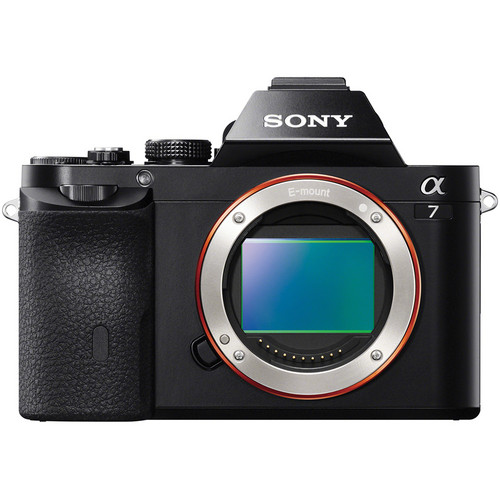
Sony a7 Camera
The Sony a7 is the company’s first full-frame mirrorless camera aimed at experienced photographers. This camera is now seven years old, but it is still very popular among photographers because of its compact size, great image quality, and affordable price. Check out Sony a7iii camera if you are looking for high speed camera with similar features as a7.
Is this the right camera for you? Find out in this Sony a7 review.
Sony a7 Specs
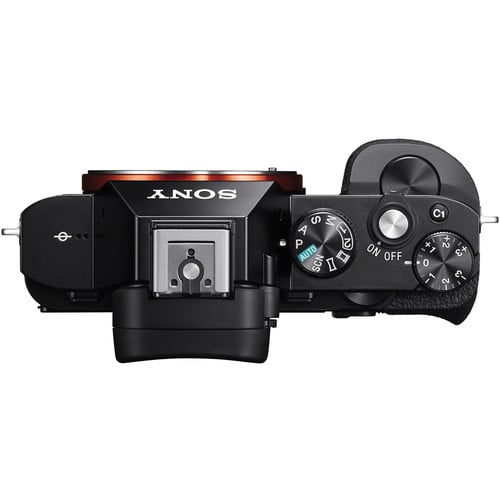
The Sony a7 revolves around a 24.3 MP full-frame CMOS sensor and BIONZ X image processor. The camera offers a great image quality as well as a good autofocus system with 117 phase-detection points and 25 contrast-detection points.
Although it produces amazing results in portrait and landscape photography, the Sony a7 is not well suited for action photography since it shoots continuously at only five frames per second.
Overall, the a7 offers impressive features in such a small body. However, this comes with certain consequences. The battery life is really bad, and you can take only around 260 shots on a full charge.
The camera is equipped with Wi-Fi and NFC connectivity, so you can easily back-up or share your work.
Learn more about the Sony a7 in the video above by Eric & Myles.
Sony a7 Body & Design
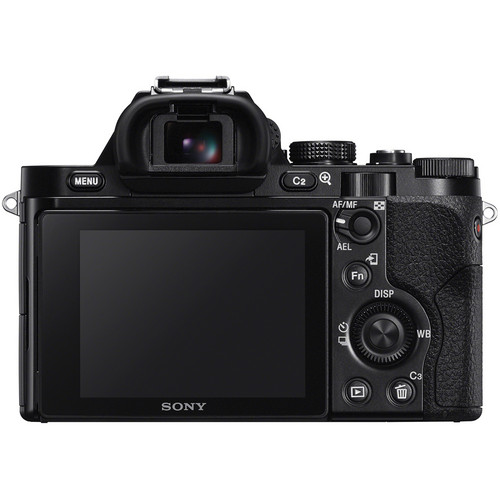
As we already mentioned, the Sony a7 is one of the most compact full-frame cameras ever produced. It has external dimensions of 5 x 3.7 x 1.89 inches and weighs 16.72 oz. Without lenses, the a7 easily fits into a coat pocket and it is so light that you’ll forget it’s there.
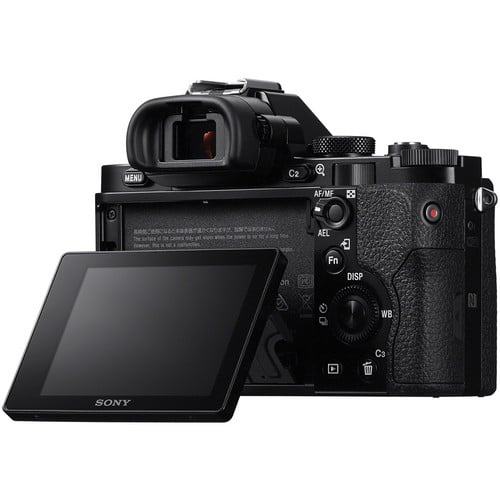
The Sony a7 features a 3-inch XGA OLED screen that can be tilted up and down. Of course, most of us would prefer a fully-articulated screen, but this is still good enough. The worst thing about the display is that it does not have touchscreen technology.
The electronic viewfinder measures half inches and it has 2.4 million dots.
Sony a7 Build & Handling
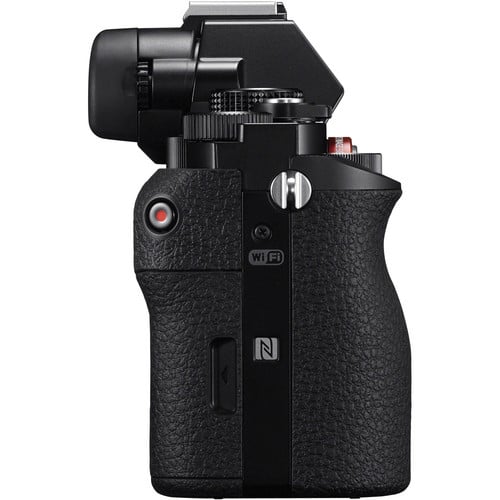
Despite being very small, the Sony a7 has a chunky grip and it feels comfortable in the hand. Also, the camera has dust and moisture resistance so you don’t have to worry about photographing in bad weather conditions.
There are many buttons on the camera and they are mainly grouped on its right side. As it is the case with most of Sony’s cameras, the a7 features three customizable buttons while it also allows you to change functions for the other ones.
Sony a7 Video Performance
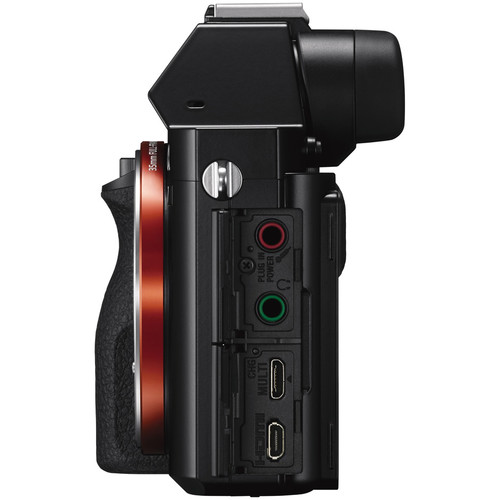
The Sony a7 shoots Full HD (1920 x 1080) video at 1080/60p or 24p in AVCHD with bit rates up to 28Mbit/s. The video quality is good even if you shoot in low-light conditions.
Moreover, the a7 offers HDMI output, microphone jack, and headphone socket.
Although the newer cameras from the a7 series such as the Sony a7 III, a7R III or a7R IV offer much better video features, the Sony a7 can also serve as a useful tool for videographers.
Sony a7 Lenses
The Sony a7 uses the E-Mount. However, being a first full-frame mirrorless camera produced by Sony, it should be paired with the new FE lens models that were specifically designed for full-frame cameras, and they’re a bit expensive. Of course, you can also use the old E-mount lenses, but in that case, you will not have the full advantage of a full-frame sensor since they will crop images to APS-C mode.
Sony a7 Price
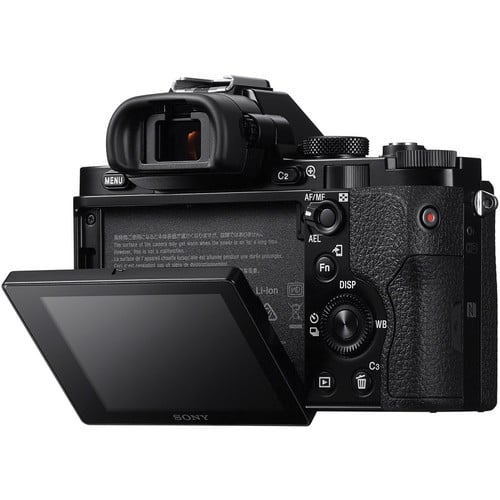
If you are looking for a cheap compact camera with a full-frame sensor, look no further! The Sony a7 has a remarkably low price and you can buy a new one for only $748.00. An alternative option is to buy a used Sony a7 for the price as low as $659.00.
Lenses for the Sony a7 are a bit pricey, so you can also consider buying used on MPB. If you're not familiar with MPB, check out our MPB review to learn why it's our top-recommended used gear resource.
We Recommend
Sony a7c Review
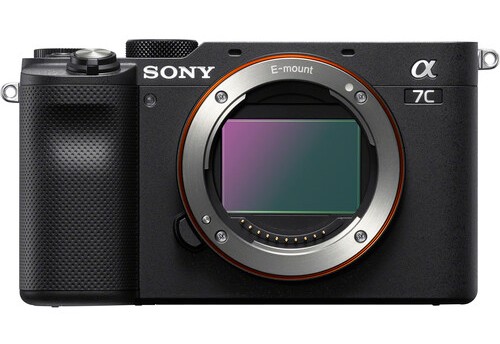
The long-awaited Sony a7c is finally here. The Sony a7c is a 35mm full-frame Alpha camera. While it isn’t a direct replacement of the Sony a7 III, it is really similar. It actually is a direct replacement of the Sony a7 which was released in 2013.
The Sony a7c is one of the lightest and smallest full frame cameras in the world, which is a great thing considering the fact that very few people are loving the Sony a7c design, which is a two-tone body vaguely reminiscent of old 80s style camera bodies, but not in a good way.
The Sony a7c doesn’t have any spectacular specs, but I personally feel like the Sony a7c handling makes up for this neglect.
We know you’re dying to dive into all of the other wonderful, and not so wonderful, aspects of this camera, so let’s get into the full Sony a7c review.
Sony a7c Specs
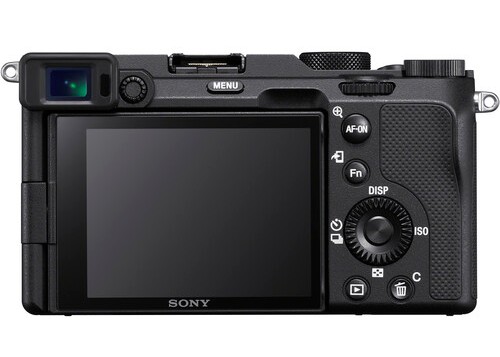
The Sony a7c specs are pretty basic, if I’m being honest. This is because the Sony a7c is really being marketed for its ease of use.
But, basic specs can still function excellently, like in the case of this camera. The Sony a7c comes with a 24MP full-frame sensor and 4K video capabilities. Its burst mode is decent at 10fps.
The ISO range is rather impressive at 100-51,200, which means you can easily take photos in dim lighting.
Sony a7c Specs:
- 24MP full-frame sensor
- 4K video capabilities at 30p
- ISO range of 100-51,200
- 10fps burst mode
- 693-point AF system
- 100% viewfinder coverage
- 2.36m-dot EVF
- 3” articulating touchscreen with 921k-dots
- Built-in Wi-Fi and Bluetooth
- 1.1 lbs
- 740-shot battery life
The battery life on the Sony a7c is one of my favorite features about this camera. It’s rare that I come across a full-frame camera as small as this that can handle more than 500-shots on a single charge and this one can handle nearly 750.
Sony a7c Body & Design
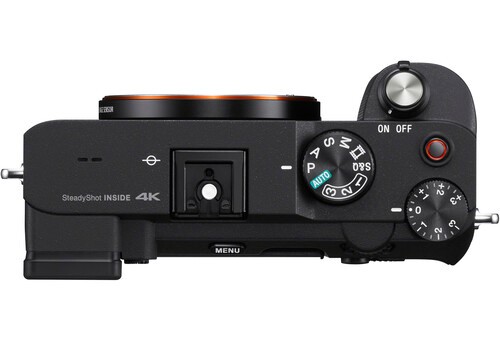
I briefly mentioned the Sony a7c build earlier in the article. I personally don’t think it’s that attractive, but at least it's small and I can deal with an aesthetic problem if the camera works well.
This camera is built from magnesium alloy, but half of it is coated in a silver finish that makes it look a lot cheaper than it actually is. I personally want my camera to feel professional if I’m going to be spending thousands of dollars on it and this is where the Sony a7c falls short.
The grip on the body is good, though, and an articulating touchscreen is a welcome change to the line. Of all the Sony a7c features, this one may be best for vloggers because the vari-angle screen allows you to do vertical shooting and vertical video.
Learn More:
Sony a7c Build & Handling
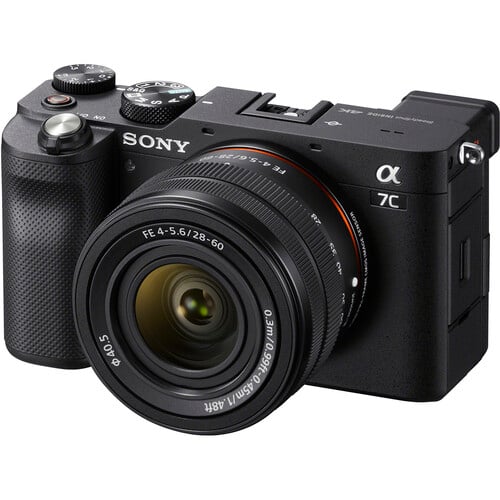
As can be expected with a Sony a7-series body, the menu system is a little convoluted (even Sony thinks so because they released a statement saying a new menu would have required a total re-engineering of the hardware).
If you’re purchasing this camera specifically for its size, you should keep in mind that it definitely looks smaller than it feels in your hand. A lot of photographers believe that this is why Sony implemented that ugly silver band around the top of the body, to make it appear as small as possible.
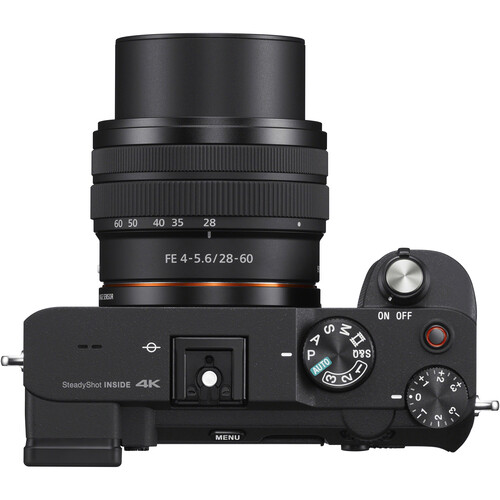
Still, it is 20% smaller than the Sony a7 III is. One reason why this was possible is that the EVF is no longer located on the top of the body, but rather on the left side of the rear of the camera. If you’ve worked with Sony’s a600 line of cameras, this will already feel familiar.
But, another way that Sony made this body smaller is by getting rid of some of the dedicated buttons die-hard Sony fans may have grown accustomed to, like an autofocus control joystick or AEL button.
You can expect this camera to last for up to 200,000 cycles and, excitingly, every battery charge allows you to take nearly 750 shots.
Sony a7c Video Performance
Huge shout out to Julia Trotti for the Sony a7c video performance test above.
As aforementioned, the Sony a7c shoots 4K video at 30p or 24p. If you need a better frame rate, then you can also shoot Full HD video at up to 120fps. Unlike many cameras like the Sony a7c, you can actually shoot for longer than a half hour with it, which is very exciting for videographers.
You can use this camera to record in S-Log or HLG/HDR. The Fast Hybrid AF system does work while shooting video, as do aspects of this system like the Real-Time Eye AF and AI-powered Real-Time Tracking AF.
As I’ve mentioned, this camera was obviously built with vloggers in mind, which means that the vari-angle touchscreen is going to be put to good use.
Sony a7c Price
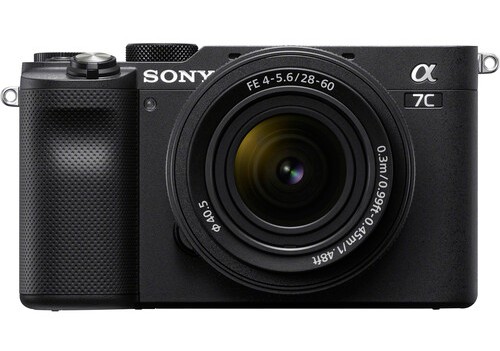
Since the Sony a7c is a brand-new camera, it’s going to come with a price tag to match. The Sony a7c price is currently $1,800 on Amazon. This price is solely for the Sony a7c body. If you want to purchase the Sony a7c with a kit, it’s going to cost you $2,100.
But, as this camera rolls out and people start picking it up, it may be a good time for you to look at picking up other, older Sony bodies on used camera retailers. For instance, the Sony a7c is considered an alternative to the Sony a7 III by a lot of photographers, which means that the price on the Sony a7 III is about to plummet.

If you want to go on the hunt for some bargain cameras, try MPB. MPB is a used camera retailer that strictly employs photographers, so every piece of camera equipment you purchase from MPB is rated very thoroughly so you know the condition of it before you buy.
For more information about MPB, you can check out the learn more link below.
Learn More:
We Recommend
Sony a7R III Review
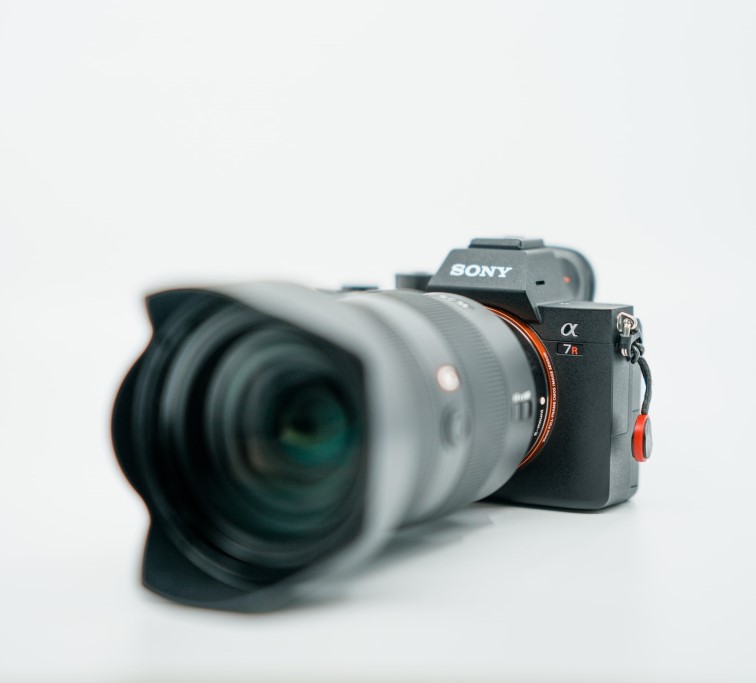
Photo by ?? Claudio Schwarz | @purzlbaum on Unsplash
If you are a professional photographer then chances are you already know a lot about the Sony a7R III. The Sony a7R III came out in late 2017 and has since been replaced with a newer model.
This makes the Sony a7R III an especially attractive option for professional photographers who are looking to save some money with their camera purchases.
However, if you’re a beginner, beware. This camera has a ton of high-end features, which is a good thing, but that also means that it can be difficult for a newbie to learn the ropes with. Just be aware of that as you consider what camera to purchase.
Without further ado let's jump into this Sony a7R III review.
Sony a7R III Specs
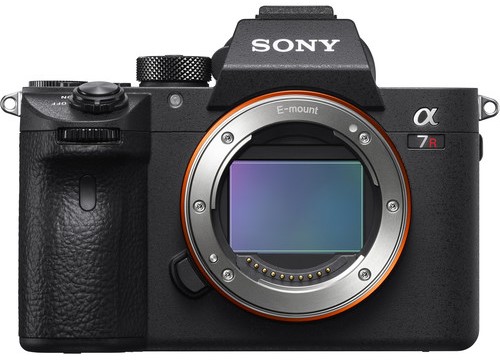
The Sony a7R III was Sony's best high-resolution full-frame mirrorless camera when it dropped 3 years ago. It comes with a 42 MP sensor and a burst rate of 10 frames per second.
When this camera first dropped, people couldn't stop talking about the autofocus system, which borrowed features of Sony's impeccable a9.
The viewfinder features an impressive 3.69M-dots. The camera can also shoot in an impressive 4K mode which is oversampled from 5K footage.
The image stabilization in this camera is also something to talk about. It is a 5-axis stabilization rated at 5.5 stops with a 50 mm lens.
The only way to make the Sony a7R III look less impressive is by putting it next to the Sony a7R IV.
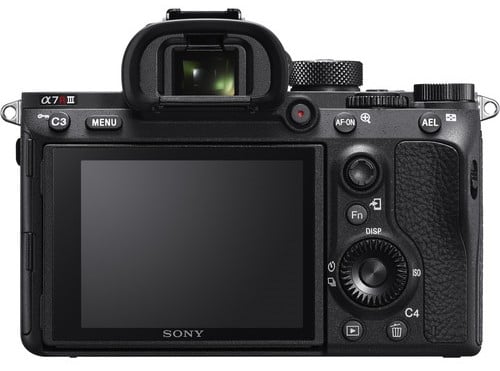
Other Sony a7R III specs include:
- 42 MP CMOS sensor
- 10 FPS shooting with full auto focus, or 8 FPS shooting with live updates
- 5-axis image stabilization
- 4K footage
- 3.69M-dot Viewfinder
- 3in tilting LCD touch-screen
- Silent shooting mode
- Battery life of 650 shots
Sony a7R III Body & Design
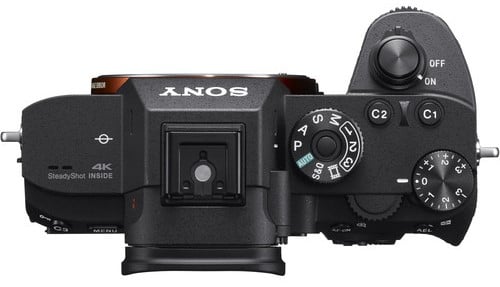
The Sony a7R III feels just like all of the other camera bodies in this line. It measures 3.8 by 5 by 2.9 inches and weighs 1.5 pounds. It is dust and splash proof. As compared to earlier models, the touch sensitivity on the LCD screen is far better. Additionally, the EVF is larger.
This body does not come with a built-in flash, but this version does come with a dedicated control to change your auto focus, which is a first for the line. This camera also comes with a flash sync socket, headphone and microphone connectors, an HDMI output, and a micro-USB/multi connector socket.
Sony a7R III Build & Handling
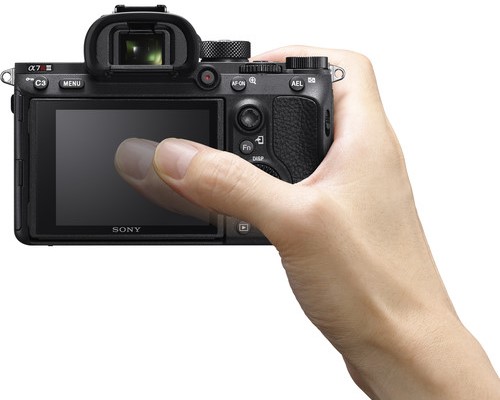
A large part of a camera's handling is its battery life. The Sony a7R III got a huge battery upgrade. Previous Sony a7R models used the FW50 battery, which is only rated for around three hundred shots. But this model is now rated for 650 shots, if you are using the rear LCD, or 530 shots if you opt to use the viewfinder.
This made the Sony a7R III much more competitive as a professional-grade body, at least in my book. In fact, when I first started shooting with the Sony a7R III, I was able to get a thousand images out of one charge.
It's also important to note the weight of the Sony a7R III. It is just under 2 lbs, which is a bit heavy for my taste. But its weight also means that it can handle much larger glass.
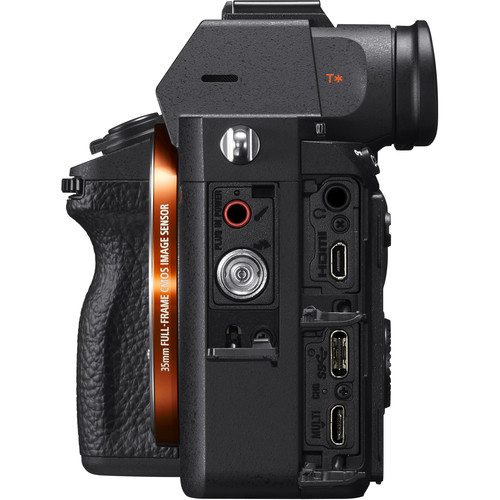
The connectivity of the Sony a7 III is very similar to other Sony bodies from the same time period. It comes with built-in Bluetooth, NFC, and Wi-Fi. You can use Bluetooth to set your camera's clock or to remain connected to your phone. NFC will allow you to connect to Sony's mobile app. Wi-Fi will be used for image transfer. If you have ever worked with the Sony A9, both of these models have the same connectivity.
One problem I have with the handling of the Sony a7R III is its menu layout. For a period of time, Sony was creating cameras with menus that were dense and difficult to understand. While this isn't a dealbreaker for me, I do suggest that you become accustomed to this menu for at least a couple of hours before you attempt to shoot with the camera.
Sony a7R III Autofocus
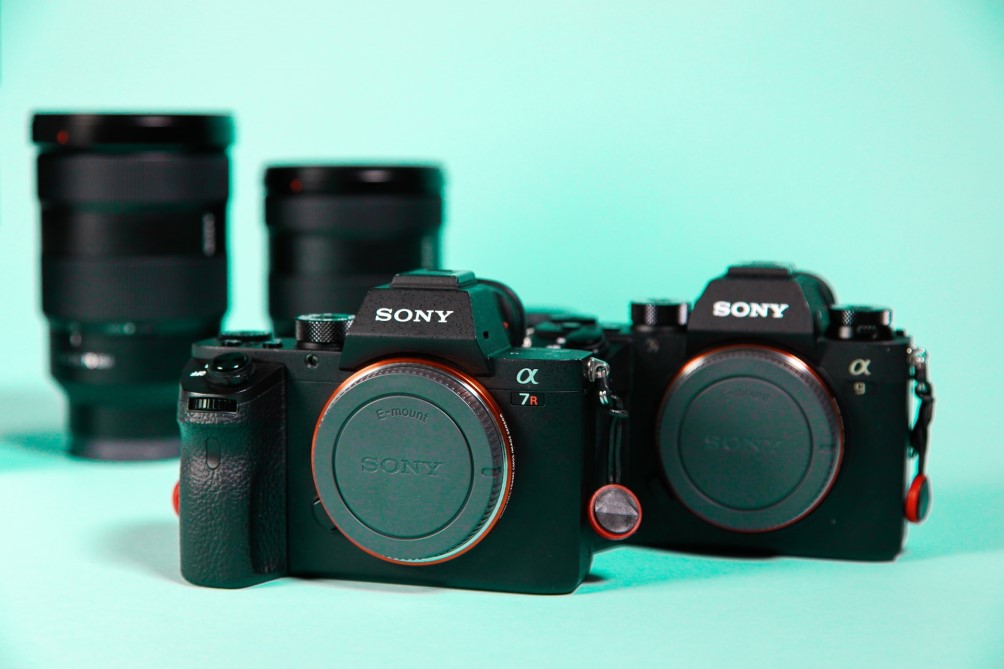
Photo by ?? Claudio Schwarz | @purzlbaum on Unsplash
I briefly touched on one of my favorite Sony a7R III features earlier: its autofocus. There are a couple of different autofocus modes on this camera, the Widest Setting mode which chooses what to focus on for me, is one I have come to really like. The Flexible Spot focus mode which will restrict the focus of the camera to a specific area is also very helpful.
However, this camera also comes with Zone, Center, Expanded Flexible Spot, and Lock on Area autofocus modes.
Sony's Eye AF was retroactively applied to the Sony a7R III with a firmware update. If you haven't worked with this autofocus mode yet, it's quite simple. The camera will automatically detect any eyes, so long as they are within the autofocus range you have supplied. Otherwise the camera will just go back to face detect.
All of these autofocus modes though don't mean much if they can't perform.
Thankfully, Jason Vong has a whole video series on mastering autofocus with the Sony a7R III. Take a look above.
Sony a7R III Video Performance
Thank you to Jeremy Vessey for the video test above.
The Sony a7R III shoots video at 4K quality and comes with a standard 3.5 mm microphone jack. But most importantly the autofocus works just as good while shooting video.
The resulting footage is full frame without any pixel binning. If you want to you can edit your footage from the camera, too.
Sony a7R III Image Quality
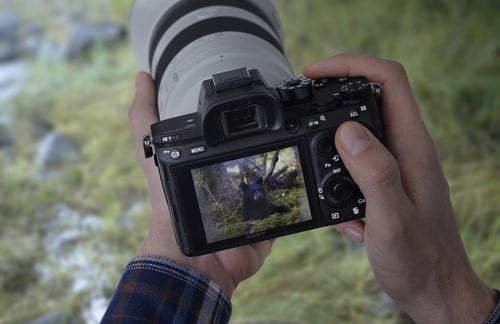
The image quality of this camera is as to be expected. It is quite excellent. This camera uses the same sensor as its predecessor although the raw dynamic range is now rated at 15 stops.
As mentioned earlier, the 5-axis stabilization system is now slightly improved.
This camera is capable of taking excellent photographs, and given its large sensor, it is also capable of creating composite shots that are so much better. These composite shots must be put together using Sony software after your shoot, but it is a feature that is not to be missed.
The camera's ISO range of 100 to 32,000 means that this camera can handle low-light shooting beautifully.
This camera does come with one downside when it comes to its image quality. It applies noise reduction to your RAW images, which will be a problem for astrophotographers.
Take a look at an image quality test in the video above, conducted by Matt Granger.
Sony a7R III Price
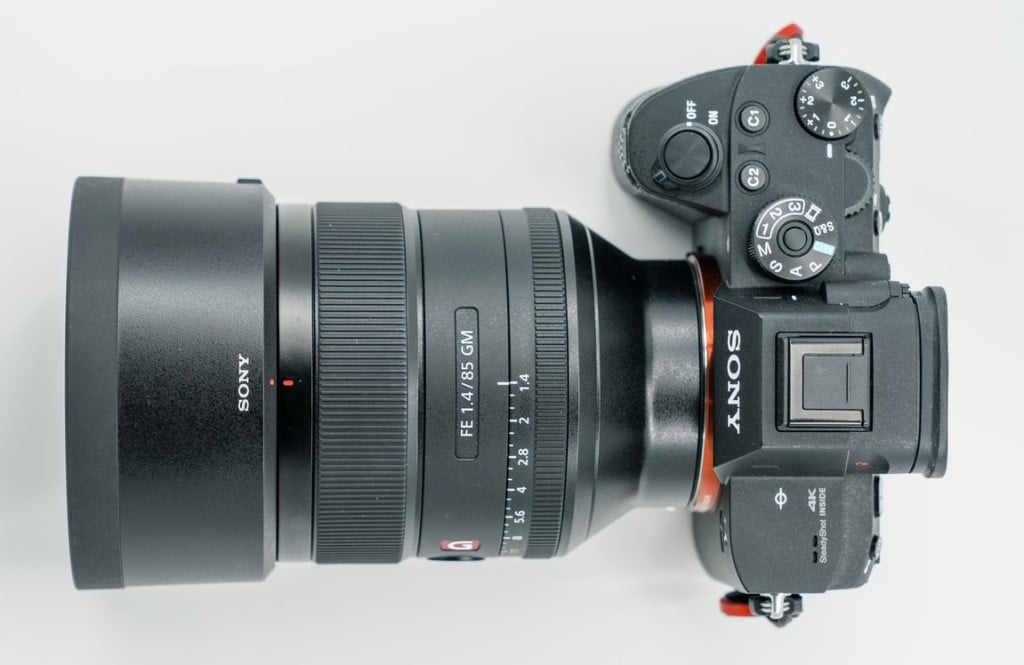
Photo by ?? Claudio Schwarz | @purzlbaum on Unsplash
Since the Sony a7R III has been replaced by the Sony a7R IV, it is cheaper than it has ever been. Despite the fact that this camera has an insane amount of features, you can pick one up used for as little as $2,200 on MPB.
The Sony a7R III price makes it an especially attractive camera for professional photographers who are looking to expand their gear.
Another option is to pick up a Sony a7R III off of MPB that is in like-new condition. You can do so for $2,300, which is just $100 more than the cheapest used version.

Regardless of which option you choose, you can rest assured that these cameras will come in the exact condition you ordered, because unlike other used camera retail websites, MPB has professional photographers on staff to rate the quality of their used equipment.
So, you will not only be saving money by buying used camera gear, but you will be saving money by ensuring you are not ripped off.
We Recommend
Sony a7R IV Review
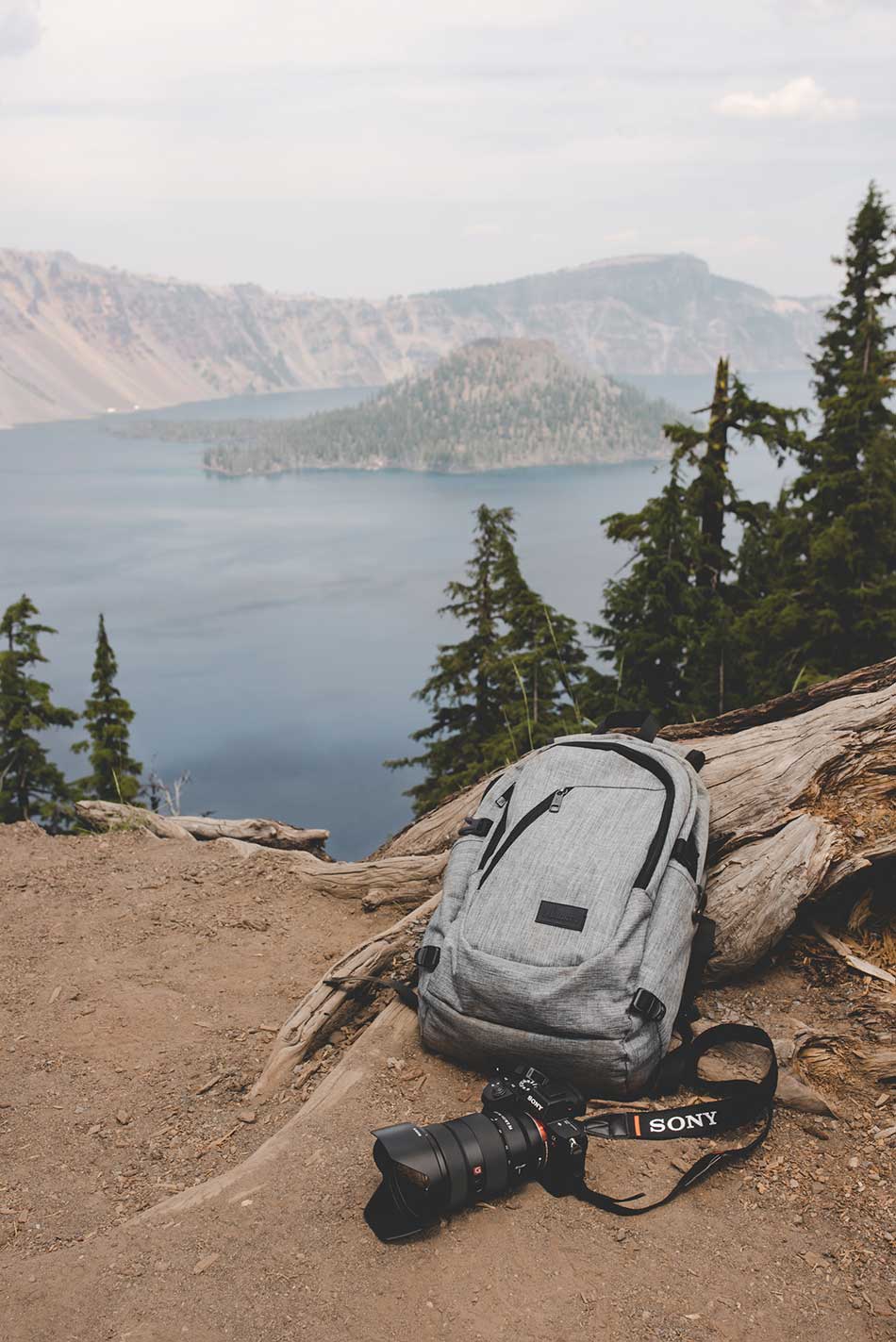
Photo by Clay Banks on Unsplash
Sony a7R IV Camera
The Sony a7R IV, Sony’s high-end full-frame mirrorless camera, came out late last year and was almost immediately dubbed too much camera for even professional photographers.
The Sony a7R IV specs are out of this world (very few photographers I know truly need 61 megapixels), and yet this has to be where professional photography equipment is headed. But if you are looking for a basic camera with all features then you should see Sony A7iii.
In this Sony a7R IV review we are going to tackle all of those incredible specs, the changes that Sony included in this update (and some changes they didn’t but maybe should have), and generally argue what types of photographers truly need a camera of this quality.
There’s no doubt about it, the Sony a7R IV is absolutely incredible, but for most photographers this quality is something they can put off for another few years while waiting for the price to come down.
Sony Alpha a7R IV Specs
So, I already mentioned the fact that the Sony a7R IV comes with a 61MP full-frame CMOS sensor. If you’ve never had the pleasure of shooting with a sensor this capable, you should watch the above video by Engadget which walks you through what it feels like. The short answer is: pretty incredible.
Engadget also touches on the video specs of the Sony a7R IV, which shoots 4K video at 30p.
Another interesting spec on this camera is the 567-point AF system, which is notably fast.
Other Sony alpha 7R IV Specs:
- 651MP full-frame CMOS sensor
- 567-point phase-detection AF system
- 5.76m-dot OLED EVF
- 10fps burst mode
- ISO range of 100-32,000
- 4K video capabilities at 30p
- 3.0” touchscreen LCD
- 5-axis SteadyShot INSIDE stabilization
- Built-in Bluetooth
- Built-in Wi-Fi
- 670-shot battery life
- 250,000 shutter life expectancy
Sony a7R IV Body & Design
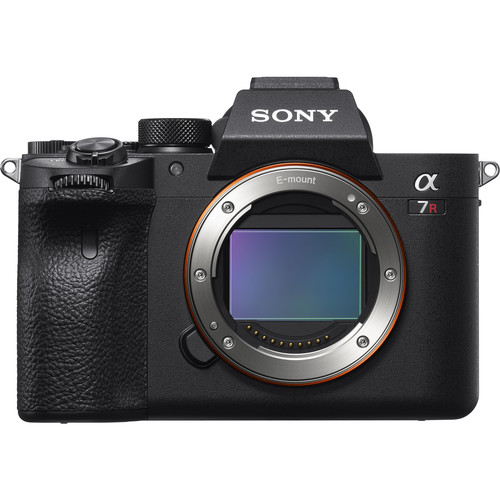
The Sony a7R IV is of a similar size to a small DSLR. Although it obviously doesn’t have a mirror like one, it does need to fit a huge sensor in its body, which means it is going to be a bit heavy or bulky if you’re used to shooting with mirrorless cameras.
If you’ve ever worked with either the Sony a7 or Sony a9 line before, then the Sony a7R IV body is going to feel completely natural for you.
One improvement to the Sony a7R IV body is that it is the most weather-resistant body Sony has ever created. This doesn’t mean you can toss it directly into the ocean because it still doesn’t have the sturdy body of a professional-level DSLR, but it isn’t going to be damaged in a small storm.
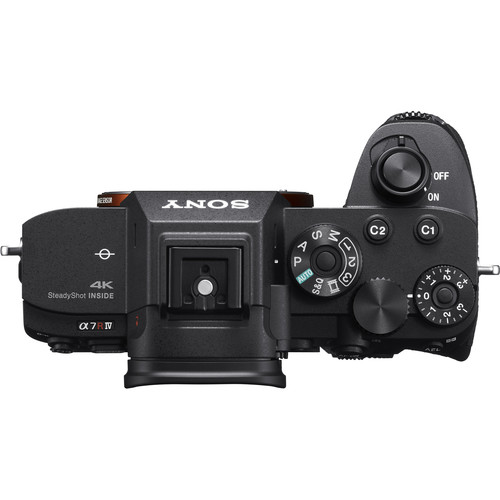
The screen is definitely one of the selling points of the Sony a7R IV. It’s incredibly bright for low-light shooting (without running the battery down as fast as other screens on other models). It’s a touchscreen, though you can customize your screen if you don’t love it as a touchscreen. The LCD tilts and can be extended out, which works well for street photography.
The EVF is also obviously a huge selling point on this mirrorless camera. It comes with a 120fps refresh rate.
As for the button layout, this camera almost identically imitates earlier Sony a7 models, except for the fact that Sony did make the buttons bigger to improve its ergonomics. For example, the AF-On button is a lot larger than it used to be, as is the AF point joystick (although you will probably rarely need it thanks to a much better AF system).
Sony a7R IV Build & Handling
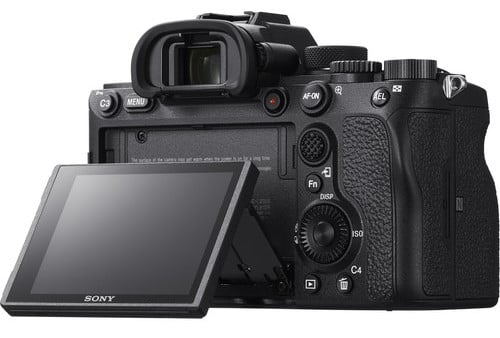
As is the case with both the Sony a7 and Sony a9 line, this camera is pretty block-like, i.e. it may be uncomfortable if you’re shopping around for an ergonomically-designed camera, despite the easier to find and press buttons. Although, it does feature a deeper grip than previous models, which is helpful if you’re shooting with gloves on.
It also does a really good job of feeling both sturdy and light. It weighs just 23 ounces with the battery and memory card, which means that you can manage this camera with even large lenses.
It also does a great job of being customizable. For instance, it has 11 customizable buttons with up to 100 options for each of them. These buttons are also customizable for both still shooting and video shooting.
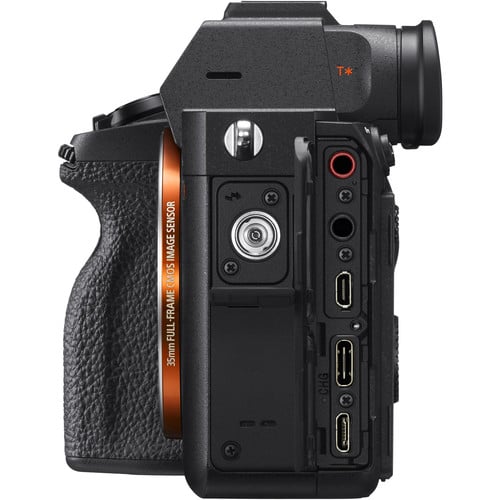
This is one of my favorite Sony a7R IV features because I’ve never found the user interface on the Sony a7 line to be especially user-friendly.
I briefly touched on the battery life of the Sony a7R IV earlier. It’s rated at 670-shots if you’re using the rear screen and 530-shots if you’re using the viewfinder. I think anything over 500 is completely acceptable for a professional photographer shooting outside of your studio.
I did find some problems with the handling. For instance, the movie record button is too close to the larger AF-On button, so if you are shooting in cold weather you may have problems pressing both at the same time.
Sony a7R IV Autofocus
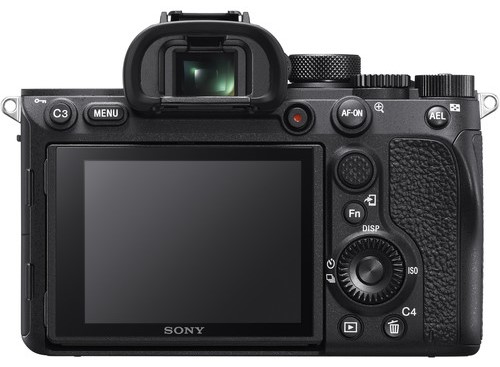
The Sony a7R IV autofocus gets its own section in this review because of just how excellent it is.
The 567-point phase detection AF system covers 99.7% of the screen vertically and 74% of the screen horizontally. It includes Real-time Tracking AF, which means you can track objects and people via face-and-eye-detection technologically at the same time.
There’s obviously no perfect autofocus system yet and this is true with the Sony a7R IV as well. For instance, the 60MP resolution can act as a detriment when it comes to the AF system because if your shot is even slightly out of focus, it absolutely will be noticeable.
The accuracy of the AF system is incredible when shooting single drive, but it will drop off slightly while in burst mode.
The only times that the AF doesn’t work beautifully in real-world tracking is when you’re either shooting in very low light or if you’re shooting a subject that is strongly backlit.
Sony a7R IV Video Performance
For Sony a7R IV’s video performance, you can watch this video test by Tutto Digitale.
As aforementioned, it shoots 4K video at up to 30p. It comes with many video tools, like focus peaking, zebra exposure warnings and different log shooting modes.
If you are able to crop your footage when shooting in 4K, the picture will be more detailed, but the full-width 4K capabilities are still great.
The AF system also works when you’re shooting video, but you need to remember to enable touch-to-track focus before doing so.
Sony a7R IV Image Quality
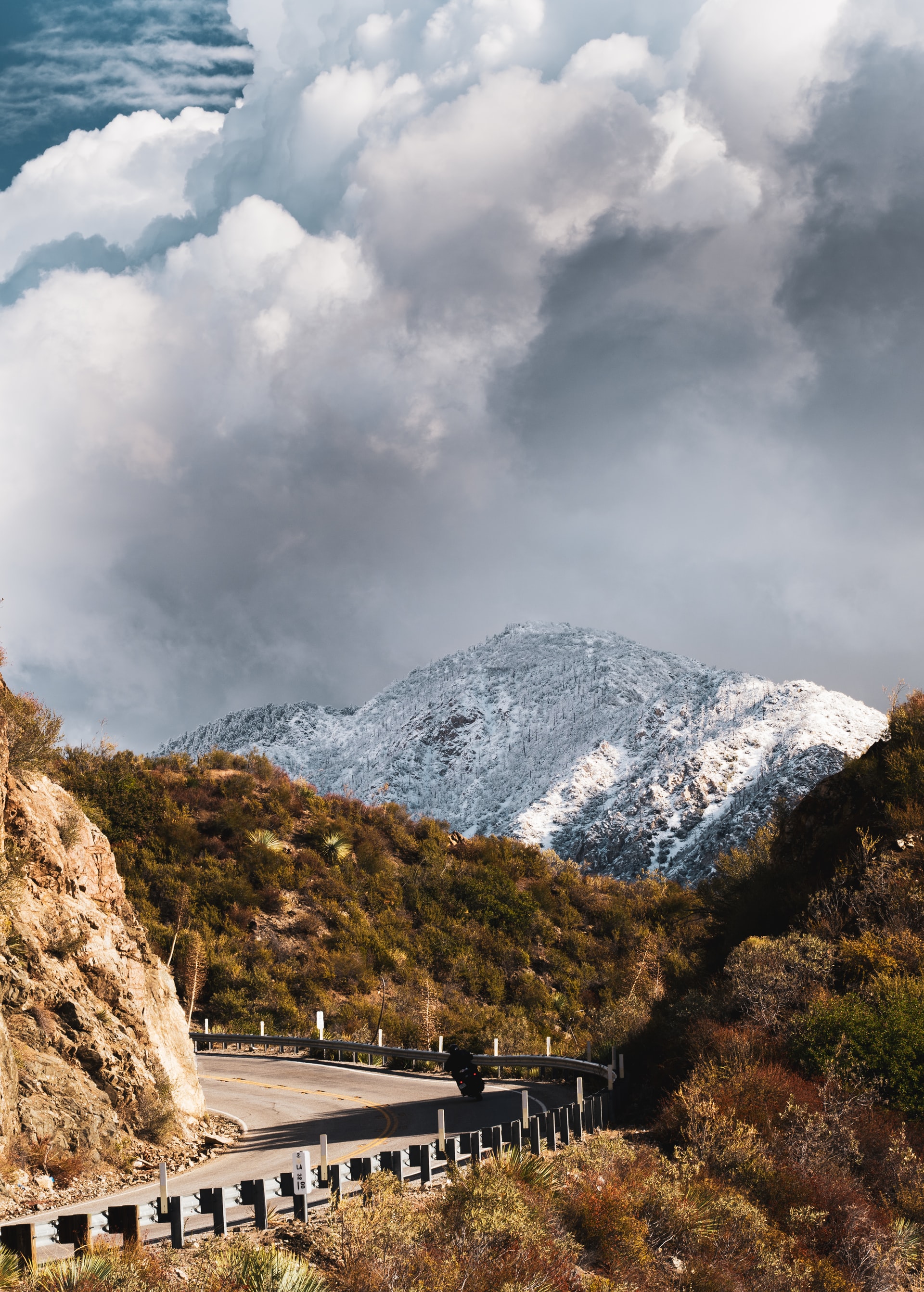
Photo by Anshul Jain on Unsplash
Now, the Sony a7R IV image quality should obviously be expected to be quite spectacular, given the 60MP sensor. It definitely lives up to this expectation.
You can expect to capture absolutely every detail with this camera, which is why it’s such a great option for professional product photographers. When you’re shooting along the higher end of its ISO range, it does become a bit noisy, but nothing ridiculous.
The color casting is also very realistic with this camera, although Sony is still known for less-than-ideal blue colors. This camera’s blues do tend to look a bit purple.
Sony a7R IV Price
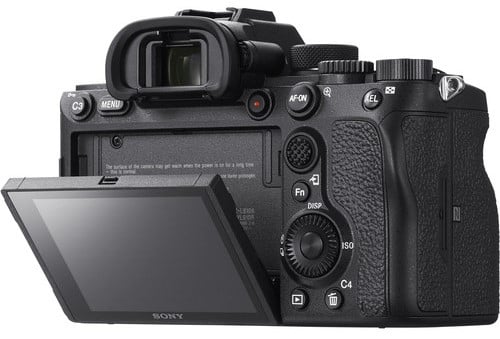
I’ve mentioned it a few times throughout this article, but the Sony a7R IV price is pretty astronomical. It’s currently selling for $3,200. As such, I’d recommend watching MPB’s website, if you’re serious about snagging one, to try and find a used version to save some cash.
As of the writing of this article, there aren’t any used options available for you. However, MPB rotates through hundreds of products a day and if you can save hundreds of dollars, I’d definitely recommend it considering the still high price point.

I’ve used MPB many times over the years and I have yet to be disappointed with the process. Their used gear is inspected and graded so you know exactly what you’re going to get in the mail. And when you sell items to MPB, they give you a fair price so you can put money in your pocket or use the funds as a trade-in for a new-to-you camera. It’s a great setup!
For more information about why we recommend MPB as our used camera retailer, feel free to check out our MPB review in the learn more links below.
We Recommend
Sony a7R IVA Review
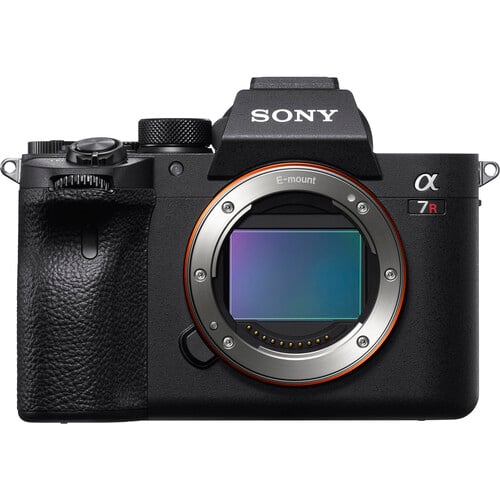
Since the release of the Sony Alpha a7R V in 2022, one of the most overlooked cameras on the market is the Sony a7R IVA. But that’s a huge mistake because it’s still an amazing camera, especially if you are a professional looking for a great deal. One important thing to note is that while they are very similar, the Sony a7R IVA differs slightly from the original Sony a7R IV.
In this Sony a7R IVA review, we’ll look at the camera’s impressive photo and video specs, let you know which types of photographers will see the best results working with it, share our favorite compatible Sony lenses, and more. Additionally, thanks to innovative online platforms like MPB, buying a pre-owned mirrorless camera has never been cheaper and easier than it is today.
MPB is a trustworthy and reliable online platform selling pre-owned photography and videography gear at unbeatable prices. All their cameras and lenses are closely hand-inspected by professional product specialists with years of experience and backed by six-month warranties, allowing you to make your purchases confidently and worry-free.
Throughout the years, we’ve saved thousands of dollars buying, selling, and trading in camera equipment through MPB’s online marketplace. And you can do the same by heading over to their website today. Now, let’s dive in and discover whether or not you should make the Sony a7R IVA your next camera!
Check out the video above by Tim Rundle-Spiers to learn more about the pros and cons of the Sony Alpha a7R IVA.
Table of Contents
- Sony a7R IVA: Overview
- Sony a7R IVA: Imaging Capabilities
- Sony a7R IVA: Video Capabilities
- Recommended Lenses for the Sony a7R IVA
- Final Thoughts on the Sony a7R IVA
Sony a7R IVA: Overview
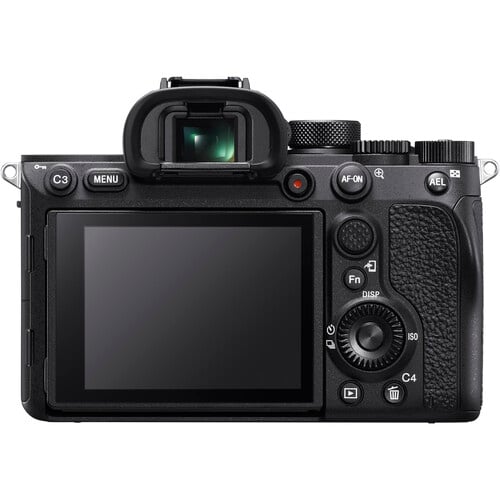
TheSony a7R IVA is a full-frame mirrorless camera that launched in 2021. It’s the fourth iteration of Sony’s high-resolution camera aimed at professional photographers. Internally, its weather-sealed body contains a 60.2-megapixel sensor and an upgraded Bionz X image processing engine.
The Sony a7R IVA and a7R IV are nearly identical models, with the only significant difference being an upgraded LCD. The LCD on the IVA has 2.36M dots, while the one on the IV only has 1.44M dots. This makes it easier to compose images when using the “live view” mode and plays back photos and videos in a higher resolution.
Other notable design and handling features include an OLED Tru-Finder electronic viewfinder (EVF), extensive ports, and excellent battery life. The EVF has 5.76M dots and is lag-free courtesy of a refresh rate of 120 fps. The ports allow you to connect a multitude of external devices. And the NP-FZ100 battery is rated at 670 shots.
Now, here’s an in-depth look at the key features and specs of the Sony a7R IVA:
- Camera Type: Mirrorless
- Sensor: 60.2MP Full-Frame BSI CMOS Sensor
- ISO: 100 - 32,000 (expandable to 50 - 102,800)
- Lens Mount: Sony E Mount
- Speed: 10.0 fps
- Autofocus: 567 focus points
- Video: 4K/30p & 1080p/120p
- Size/Weight: 129 x 96 x 78 mm / 665 grams
- Battery Life: 670 shots
- Stabilization: Yes
- Touchscreen: Yes
- Pre-Owned Sony a7R IVA Price: $2,249 - $2,349
Sony a7R IVA: Imaging Capabilities
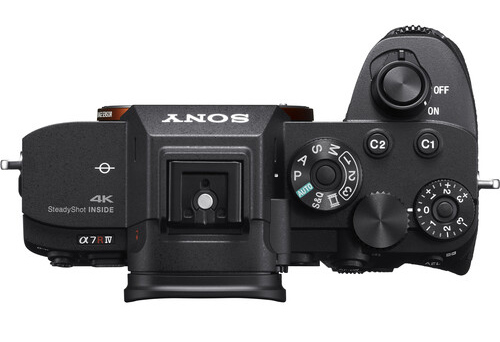
The signature feature of theSony a7R IVA is, without a doubt, its 60.2MP image sensor. It’s tied for the highest-resolution mirrorless camera on sale today (along with its brother, thea7R IV, and its successor, thea7R V). This makes it an easy choice for photo-oriented content creators.
Professionals and landscape photographers are two groups who can’t stop raving about its image quality and performance. Professionals love it because they can blow up their images to insane sizes (prints, posters, billboards, etc.) with zero drop in quality. On the other hand, nature photographers are addicted because of the industry-leading detail retention and 15-stops of dynamic range.
Three more specs that deserve mentioning are autofocus (AF), continuous shooting, and the Pixel Shift mode. The hybrid AF utilizes 567 phase-detection points and 425 contrast-detection points to cover 99.7% of the sensor. The max continuous shooting speed is 10 fps, which is acceptable for wildlife photography. And the pioneering Pixel Shift mode takes 16 exposures to create one 240.8MP super-high-resolution photo.
Learn More:
Sony a7R IVA: Video Capabilities
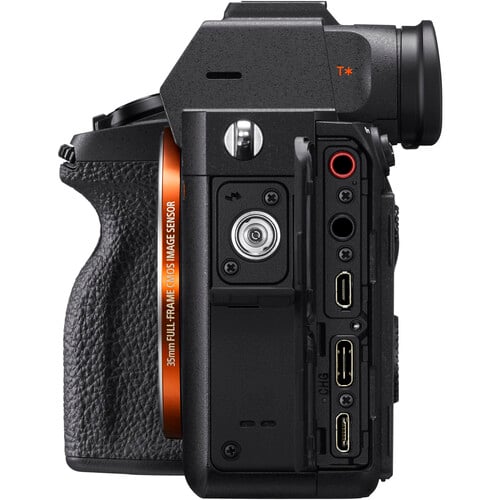
TheSony a7R IVA is no one-trick pony, though. It also excels as a video camera due to its 4K and 1080p Full HD video capabilities. 4K footage is oversampled from a 6K capture area to improve video quality, and it also helps eliminate moire, aliasing, and pixel binning. Furthermore, it can record Full HD slow-motion video clips at 1080p/120p.
Another strength is the camera's in-body image stabilization (IBIS). It boosts low-light performance during photo and video recording while simultaneously reducing camera shake – making it possible to shoot handheld video.
While it can’t compete with video-centric cameras like the Sony Alpha a7S III, it’s a solid choice for hybrid photographers who like to dabble in video or create content for their social media channels.
Recommended Lenses for the Sony a7R IVA
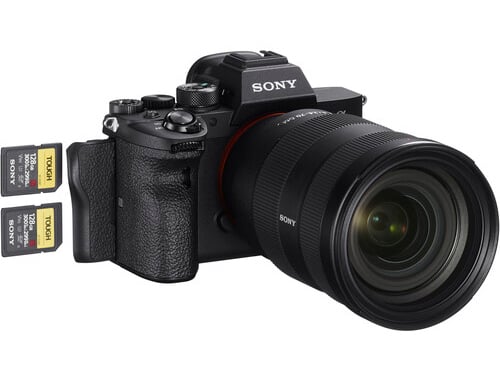
Here’s a short list of the best Sony FE Mount lenses for photo and video to pair with the Sony a7R IVA.
- Sony FE 50mm f/1.2 GM
- Sony FE 16-35mm f/2.8 GM
- Sony FE 70-200mm f/2.8 GM OSS
- Sony FE 200-600mm f/5.6-6.3 G OSS
- Sony FE 600mm f/4 GM OSS
Final Thoughts on the Sony a7R IVA
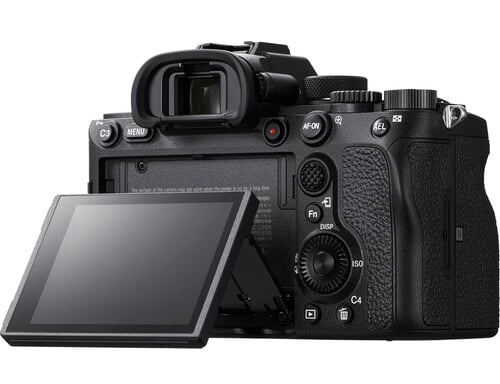
As you can see, the Sony a7R IVA is a powerful camera ideal for professional photographers on a budget or those looking for a reliable second camera body. Landscape and wildlife photographers, in particular, will see fantastic results shooting with it.
Want to compare it with other Sony mirrorless cameras? Check out the lists below of popular full-frame and APS-C cameras currently available at MPB:
Sony FE Cameras
Sony E Cameras
Learn More:
- What is the Best Camera for Landscape and Wildlife Photography?
- Three Excellent Sony E Mount Lenses for Landscape Photography
We Recommend
Sony a7R V Review
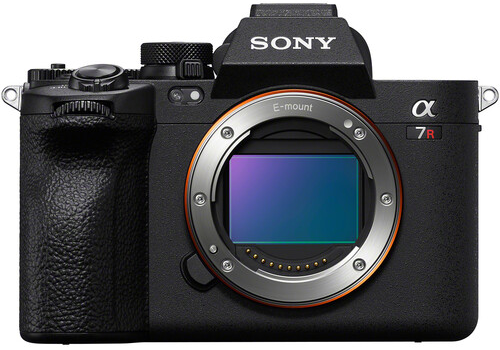
The Sony Alpha a7R V hit stores in December 2022 and immediately became one of the most in-demand cameras for professional photographers. And if you want to learn more about this powerful camera, you’ve come to the right place!
In this Sony a7R V review, we’ll look at the camera's photo and video capabilities, recommend our favorite Sony FE Mount lenses, tell you who should shoot with this camera, and more. Furthermore, thanks to innovative online platforms like MPB, buying a used Sony a7R V has never been cheaper and easier than it is today.
MPB is a trustworthy and reliable online platform selling used photo and video gear at unbeatable prices. All their cameras and lenses are meticulously hand-inspected by skilled product specialists and backed by six-month warranties, allowing you to make your purchases confidently and worry-free.
We have used MPB for years to buy, sell, and trade in camera equipment, and we would never have reached the level we are at today as photographers if it wasn’t for their one-of-a-kind platform. That’s why we can’t stop raving about them. Now, it’s time to discover whether the Sony a7R V is the perfect camera for you and your needs in 2023!
Check out the video above by Sony Camera Channel for a deeper look at the Sony Alpha a7R V and to see example photos shot with it.
Table of Contents
- Sony a7R V Review: Overview
- Sony a7R V Review: Imaging Capabilities
- Sony a7R V Review: Video Capabilities
- Recommended Lenses for the Sony a7R V
- Final Thoughts on the Sony a7R V
Sony a7R V Review: Overview
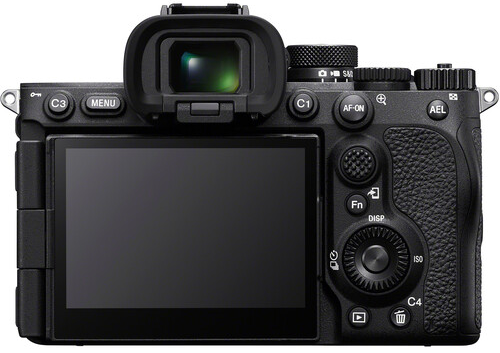
When it launched in 2022, the Sony Alpha a7R V replaced the a7R IV as the company’s flagship high-resolution camera for photographers. It’s the fifth iteration of Sony R cameras, and the “R” literally stands for “Resolution.” In contrast, the a7S III is a video-oriented camera, and the a7 IV is a hybrid.
The a7R V boasts a 61-megapixel full-frame sensor and a new BIONZ XR image processing engine. The pair works together to provide out-of-this-world image quality, lightning-fast performance, and AI-based autofocus (AF). The AF is one of the best we have ever tested, with face/eye detection, animal recognition, and subject-tracking technologies.
Other highlight-worthy features include a new color algorithm, a weather-sealed body, and a closeable shutter. The improved color algorithm provides more accurate colors, saving you time during editing. The environmentally-sealed body is resistant to water, moisture, dust, snow, etc. And the closeable shutter helps keep your sensor clean when the camera is off.
Now, here’s an in-depth look at the Sony a7R V specs and key features:
- Camera Type: Mirrorless
- Sensor: 61.0MP Full-Frame BSI-CMOS Sensor
- ISO: 100 - 32,000 (expandable to 50 - 102,400)
- Lens Mount: Sony E Mount
- Speed: 10.0 fps
- Autofocus: 693 focus points
- Video: 8K/24p, 4K/60p & 1080p/120p
- Size/Weight: 131 x 97 x 82 mm / 723 grams
- Battery Life: 530 shots
- Stabilization: Yes
- Touchscreen: Yes
- Sony a7R V Price: $3,789
Sony a7R V Review: Imaging Capabilities
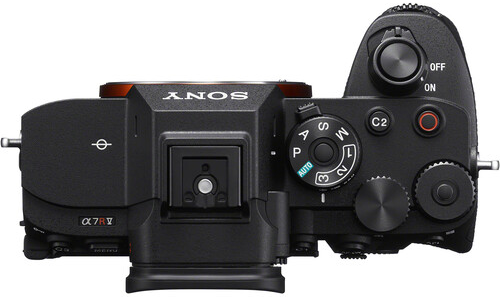
The signature feature of the Sony a7R V is its high-resolution 61MP sensor, which leads to an unreal max pixel count of 9504 x 6336 pixels. With so many pixels, you can blow up your images for printing (magazines, posters, billboards, etc.) without ever suffering even the tiniest dropoff in quality. This is essential for professional photographers.
While all photographers will see amazing results when working with this camera, outdoor, nature, and landscape photographers will see particularly impressive results. Whether you are shooting dramatic mountain landscapes or wildlife on an African safari, the a7R V delivers images with a wide dynamic range (15 stops) and excellent sharpness/detail retention.
Still photographers will also love the multi-shoot mode, fast burst shooting, and strong battery life. The multi-shoot mode uses pixel-shifting technology to generate 240.8MP images. Continuous shooting maxes out at ten frames per second. And the larger NP-FZ100 battery is rated at 530 shots.
Learn More:
Sony a7R V Review: Video Capabilities
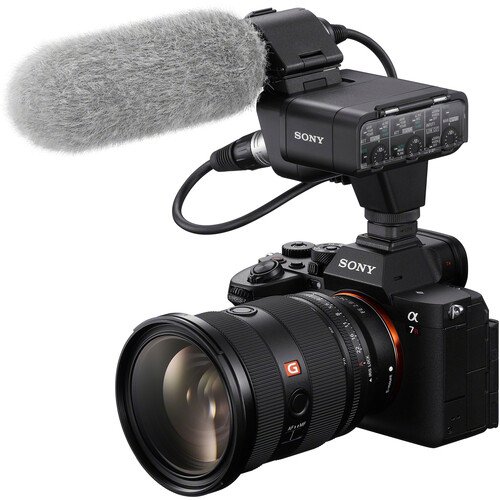
Thanks to its 8K video capabilities (yep, you read that right, 8K!), the Sony a7R V is also a very capable video camera. In addition to 8K/24p video, the a7R V also records 4K/60p video and 1080p/120p slow-motion video. You can also oversample your footage to boost the sharpness and overall video quality.
Another awesome feature useful during photo and video recording is the best-in-class in-body image stabilization (IBIS). It adds up to eight exposure stops to your content, increases low-light performance, and significantly reduces camera shake when shooting handheld. The IBIS makes the a7R V an ideal camera for on-the-go videographers like journalists and documentarians.
Before we go, we must also mention the dual SD card slots, unlimited recording time, and professional codecs. Since high-resolution video takes up tons of space, the two memory card slots are crucial for recording 8K video. Unlimited recording time gives you more flexibility behind the camera. And the camera has XAVC HS, HEVC H.265, and other codecs.
Best Lenses for the Sony a7R V
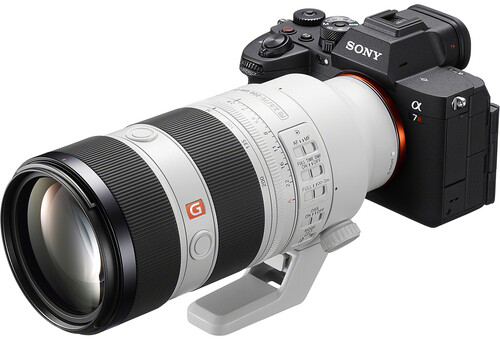
Here’s a quick list of some of the best Sony a7R V lenses. They are listed by price in descending order.
- Sony FE 600mm f/4 GM OSS
- Sony FE 400mm f/2.8 GM OSS
- Sony FE 70-200mm f/2.8 GM OSS II
- Sony FE 12-24mm f/2.8 GM
- Sony FE 24-70mm f/2.8 GM II
Final Thoughts on the Sony a7R V
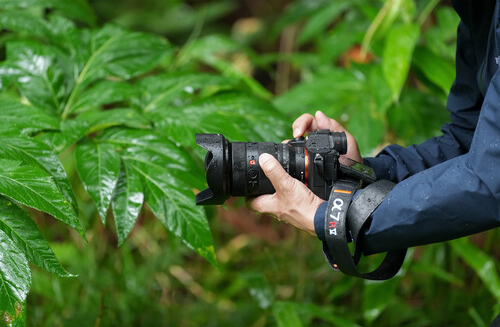
In conclusion, the Sony a7R V is our favorite camera for professionals specializing in outdoor and landscape photography. It’s the highest-resolution mirrorless camera currently on the market, and only a handful of medium format cameras top its 61MPs.
We hope our Sony a7R V review has helped you in your camera search. Check out the list below to view a few more of the best cameras for professional photographers. All of them are in stock and on sale now at MPB.
Learn More:
We Recommend
Sony a7R V vs a7 IV
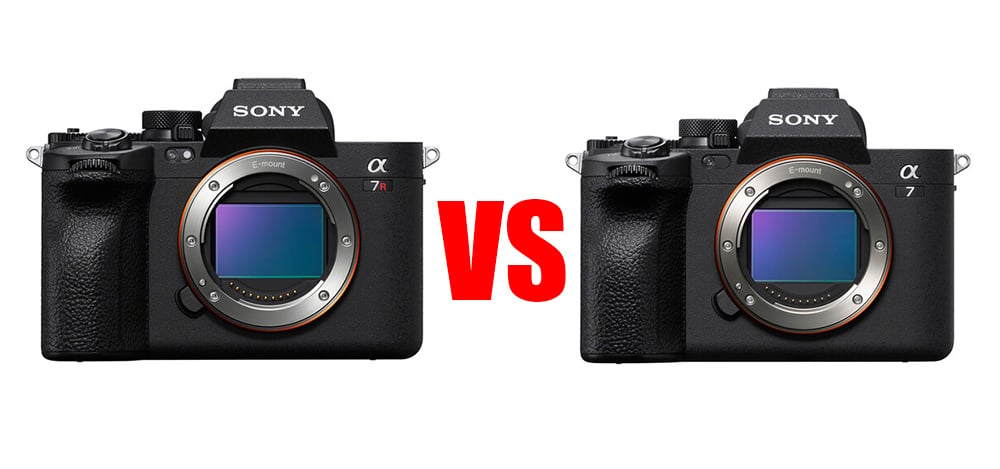
If you are searching for your next mirrorless camera and have narrowed your search down to the popular Sony a7R V and a7 IV, you’re in the right place!
In this Sony a7R V vs a7 IV camera comparison guide, we’ll share overviews of the two cameras, compare their photo and video performance, recommend our favorite Sony lenses to shoot with, and more! Additionally, thanks to innovative online platforms like MPB, buying a used mirrorless camera has never been cheaper and easier than it is today.
Who is MPB? They are a trustworthy and reliable online platform selling pre-owned photography and videography gear at unbeatable prices. Better yet, all their cameras and lenses are closely hand-inspected by knowledgeable product specialists with years of experience and backed by six-month warranties, allowing you to make your purchases confidently and worry-free.
Over the years, we’ve saved thousands of dollars trading in equipment and upgrading our photography kits using MPB’s online marketplace, and you could do the same by heading over to their website today! Now, it’s time to dive in and discover which of these amazing Sony mirrorless cameras is right for you!
Check out the video above by Benj Haisch to learn more about these two cameras and see whether or not he thinks the a7R V is worth purchasing if you already own the a7 IV.
Table of Contents
- Sony a7R V vs a7 IV: Overview
- Sony a7R V vs a7 IV: Imaging Performance
- Sony a7R V vs a7 IV: Video Performance
- Recommended Sony Lenses
- Final Thoughts on the Sony a7 IV vs a7R V
Sony a7R V vs a7 IV: Overview
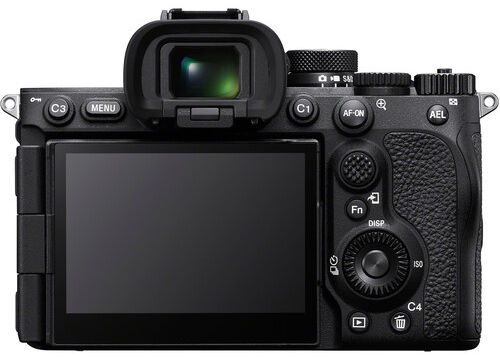
Sony a7R V
The Sony Alpha a7R V was released at the end of 2022, while the Sony Alpha a7 IV first debuted in 2021. The a7R V is the newest camera in Sony’s “R” lineup of high-resolution cameras aimed at professional photographers. In particular, landscape, nature, and portrait photographers will see extraordinary results shooting with it.
Alternatively, the a7 IV is the newest model in the company's best-selling “standard” Alpha lineup of hybrid mirrorless cameras. It’s a versatile all-around camera ideal for everyone, from hobbyists and enthusiasts to full-time digital content creators like YouTubers, vloggers, and social media influencers.
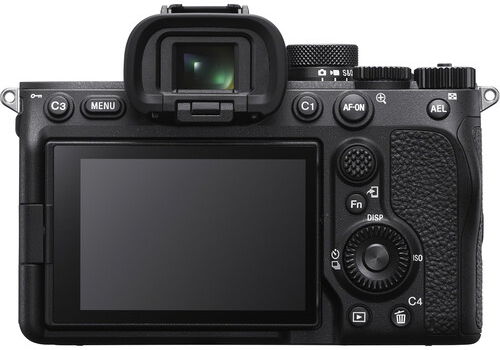
Sony a7 IV
The first thing you will notice when looking at the cameras is that they are nearly identical from the outside. The design, button layout, and control dial layouts are perfect images of each other. The only two subtle differences are the camera names on top of the camera and the weight. Although their dimensions are the same, the a7 IV weighs 64 grams less than the a7R V.
Shared design features include a photo/movie mode switch, customization options, and a robust weather-proof coating. The photo/movie switch lets you change settings for one mode without affecting the other. There are 12 customizable buttons/dials on each camera. And the weather-proof coating protects the cameras from water, sand, snow, dust, moisture, etc.
Here’s a head-to-head look at the key features and specs of the Sony a7R V and Sony a7 IV to see how they stack up:
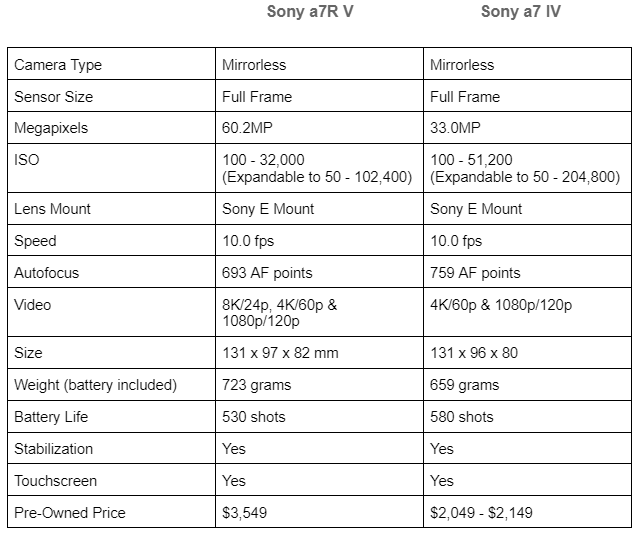
Sony a7R V vs a7 IV: Imaging Performance
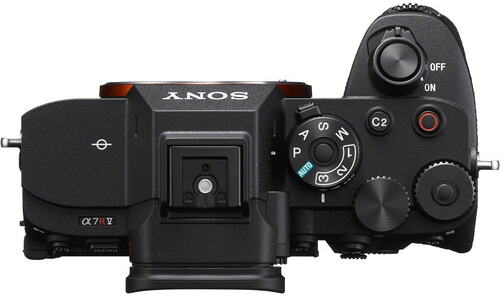
Sony a7R V
The signature feature of the Sony Alpha a7R V is its super-high-resolution 60.2-megapixels full-frame BSI (Back Side Illuminated) CMOS sensor. It’s the highest-resolution mirrorless camera currently on the market, and Sony added two Bionz XR image processors to top it off. The processors improve the efficiency of the menus and autofocus (AF) system.
While the Sony Alpha a7 IV can’t match the pixel count of the a7R V, its 33.0-megapixel full-frame BSI CMOS sensor is still impressive, and it’s a big step up from the 24.2 MP sensor of the previous a7 III. The difference is noticeable when looking at detail retention and image quality of low-light photos. One Bionz XR processor sits at the heart of the camera.
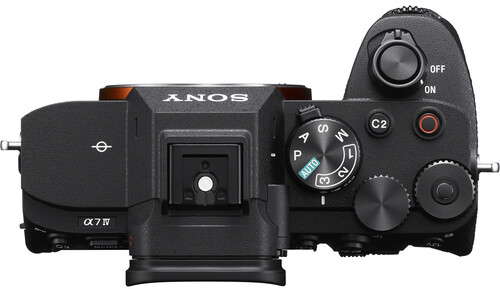
Sony a7 IV
Speaking of low-light performance, both cameras excel in this department thanks to their BSI image sensors and wide ISO ranges. The a7R V has a native ISO of 100 - 32,000, which expands to 50 - 102,400. On the flip side, the a7 IV boasts a native ISO of 100 - 51,200, which expands to an industry-leading 50 - 204,800.
Two features that set the a7R V apart from the a7 IV are its AI-trained AF system and high-resolution multi-shot mode. The AF recognizes and tracks everything from people and animals to cars and boats. And the multi-shot mode captures 16 frames you can stitch together to create 240MP photos. Lastly, both cameras have a 10.0 max continuous shooting speed.
Which is the best camera for photos? The Sony Alpha a7R V
Learn More:
Sony a7R V vs a7 IV: Video Performance
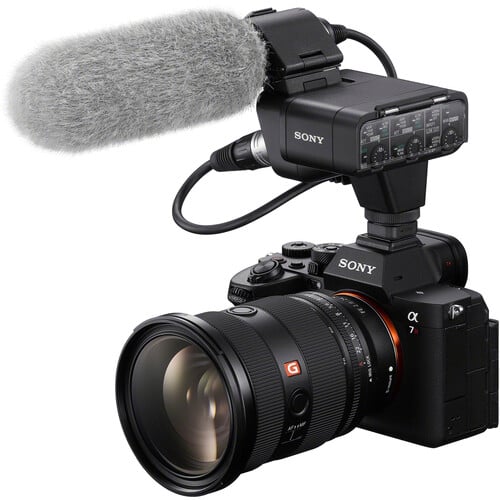
Sony a7 IV with an external microphone for video
As the world increasingly turns more and more toward video content, you won’t be shocked to hear that the Sony Alpha a7R V and Sony Alpha a7 IV are powerful video cameras. With that in mind, their target audiences and who will see the best results recording video with them is quite different.
The video capabilities of the a7R V are truly remarkable. It has 8K video, 10-bit 4:2:2 video, and professional codecs like S-Log3, HLG, and S-Cinetone. It films 8K footage at 24 fps, 4K at up to 60 fps, and 1080p Full HD as high as 120p (slow-motion). These drool-worthy specs make it perfect for professional videographers, filmmakers, journalists, and documentarians.
While the a7 IV also has 4K/60p and 1080p/120p slow-motion video capabilities, it doesn't have 8K video. For the average photographer, that isn’t a problem, though, since shooting in 8K is overkill in most situations. The a7 IV is a go-to option for wedding/event photographers, travel vloggers, and people who share videos on platforms like YouTube, Instagram, and TikTok.
The two cameras' video features include in-camera image stabilization (IBIS), dual memory card slots, and full-articulating rear screens. The IBIS of the a7R V adds up to eight stops of exposure, and that of the a7 IV adds 5.5. Two memory card slots allow you to record uninterrupted for longer. And the articulating screens make framing scenes quicker and easier.
Which is the best camera for video? The Sony Alpha a7R V
Recommended Sony Lenses
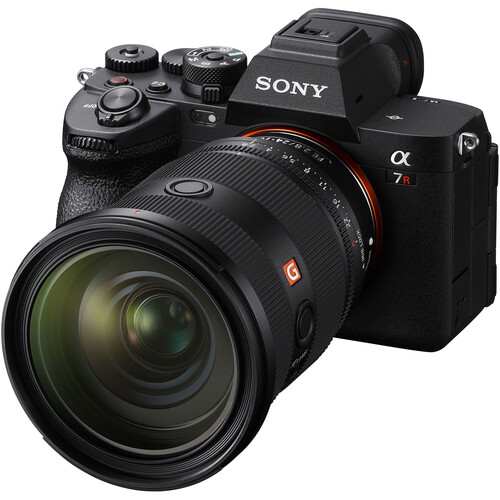
Sony a7R V with Sony FE 24-70mm f/2.8 GM II lens
Here’s a short list of some of the best Sony FE lenses for photo and video to pair with these two Sony full-frame mirrorless cameras.
- Sony FE 70-200mm f/2.8 GM OSS II
- Sony FE 12-24mm f/2.8 GM
- Sony FE 24-70mm f/2.8 GM II
- Sony FE 200-600mm F5.6-6.3 G OSS
- Sony FE 50mm f/1.2 GM
- Sony FE 14mm f/1.8 GM
Final Thoughts on the Sony a7 IV vs a7R V
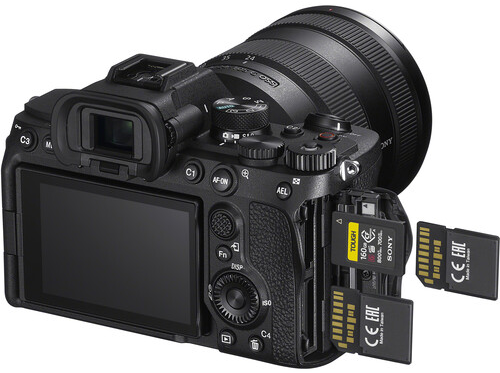
Sony a7 IV
Ultimately, both the Sony Alpha a7R V and Sony Alpha a7 IV are fantastic full-frame mirrorless cameras. However, thanks to its higher-resolution photos and videos, the a7R V is the better camera for professional photographers. On the other hand, you should opt for the a7 IV if you are a semi-professional or someone on a budget.
Still unsure whether the Sony a7R V vs a7 IV is the right choice for you and your needs and want to compare them with more options? No worries! Check out the list below of other Sony FE mirrorless cameras currently available at MPB:
Learn More:
- What is the Best Sony Mirrorless Camera for Video?
- A Beginner’s Guide to Sony E Mount Mirrorless Cameras
We Recommend
Sony a7R V vs Sony a1
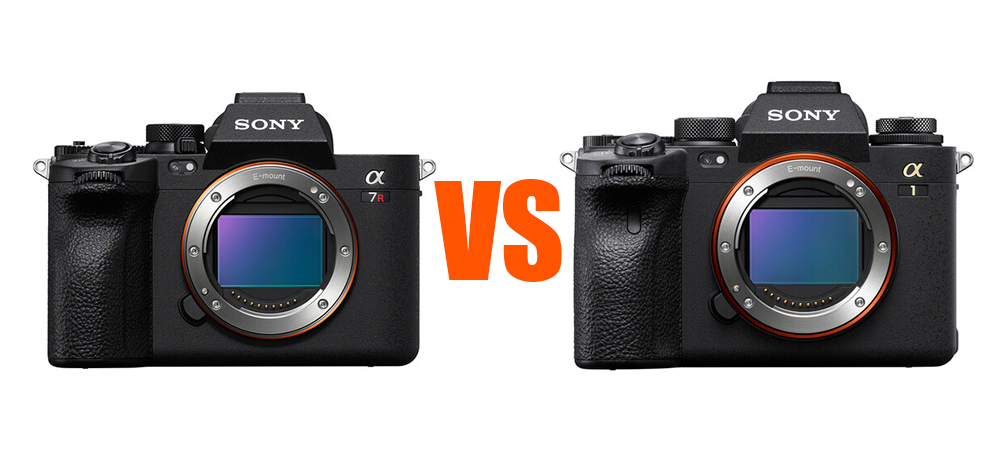
Sony debuted the first-ever full-frame mirrorless camera (the Sony a7) in 2013, and they have been pumping out incredible new models ever since. Two of their most advanced cameras yet are the Sony a7R V and the Sony a1, and if you are looking for more information on their similarities and differences, you’re in the right place!
In this Sony camera comparison guide, first, we’ll share basic overviews of the cameras. Then, we’ll examine their photo and video capabilities and recommend our favorite Sony FE lenses. Additionally, thanks to innovative online platforms like MPB, buying a used mirrorless camera has never been cheaper and easier than it is today.
Who is MPB? They are a trustworthy and reliable online platform selling pre-owned photography and videography gear at unbeatable prices. Better yet, all of their cameras and lenses are methodically hand-inspected by expert product specialists with years of experience and backed by six-month warranties, allowing you to make your purchases confidently and worry-free.
We are huge fans of MPB because, over the years, we’ve saved thousands of dollars buying, selling, and trading in photography equipment using their one-of-a-kind online platform. If you want to upgrade your camera kit and save money, too, visit their website today. That said, it’s time to find out which of these amazing Sony cameras is right for you!
Check out the video above by Park Cameras to learn more about the Sony a1 vs Sony a7R V and to see example photos and videos shot with them.
Table of Contents
- Sony a7R V vs Sony a1: Overview
- Sony a7R V vs Sony a1: Imaging Performance
- Sony a7R V vs Sony a1: Video Performance
- Recommended Sony Lenses
- Final Thoughts on the Sony a7R V vs Sony a1
Sony a7R V vs Sony a1: Overview

Sony a7R V
The Sony Alpha a7R V came out in 2022, replacing the a7R IV as the company's premiere high-resolution camera. With a 61.2-megapixel Exmor R BSI CMOS image sensor, it’s the highest-resolution mirrorless camera currently available. Moreover, it boasts an updated Bionz XR image processor that is 8x more powerful than its predecessor.
On the other hand, the flagship Sony a1 launched in 2021. It features a 50.5-megapixel Exmor RS BSI sensor and the older Bionz XR image processor. At the time of its release, its photo and video package was far and away the best on the market, but the a7R V comes close (or even surpasses it!) in some areas.
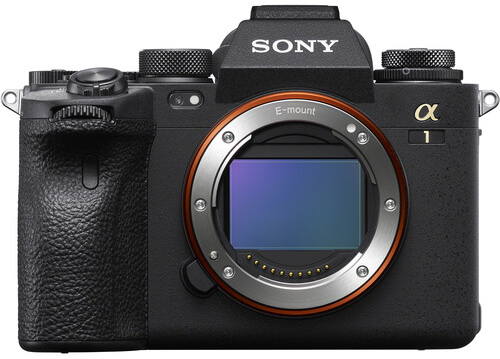
Sony a1
Design-wise, the two cameras are nearly identical, with the only noticeable difference being the placement of a couple of buttons. Both feature a slew of customization options, weather-sealed bodies, sensor covers, and breathable bodies that prevent the camera from overheating. Also, their 530-shot battery life and 500,000-frame shutter life are the same.
Now, here’s a head-to-head look at the key features and specs of the Sony a7R V vs a1 to see how they stack up:
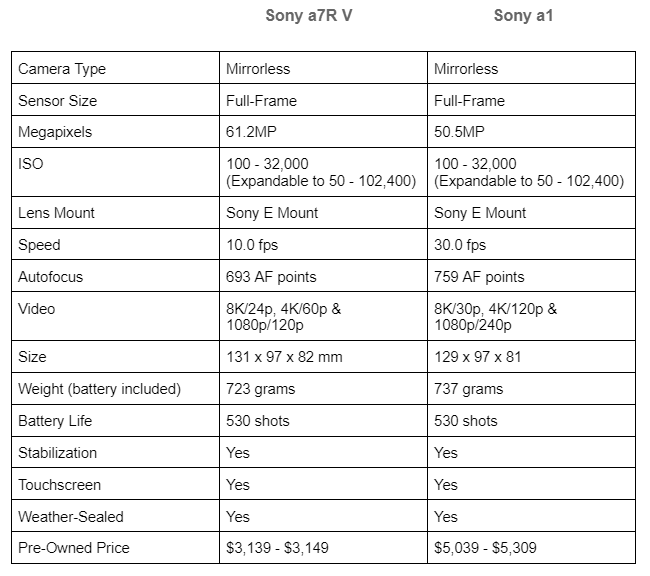
Sony a7R V vs Sony a1: Imaging Performance

Sony a7R V
For still photography, the Sony a7R V has the upper hand in terms of resolution, autofocus (AF), and pixel shift multi-shooting. While both cameras have excellent resolution, the higher pixel count of the a7R V is noticeable when enlarging images for print. For landscape and cityscape photographers, the 241MP (199MP in the a1) multi-shot mode boosts the resolution even more.
The a7R V may have fewer AF points, but its overall AF system is one step ahead because of its new AI algorithm. It adds deep machine-learning technology that improves subject recognition and tracking, making it easier to capture sharp, in-focus images of moving subjects.
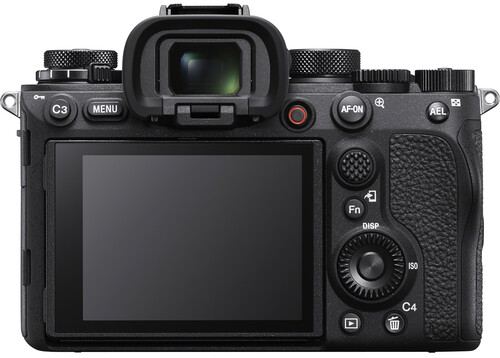
Sony a1
Alternatively, the Sony a1 has faster burst shooting and a superior electronic viewfinder (EVF). The a1 can capture stills at 30 frames per second (fps) with its electronic shutter and 10 fps with the mechanical shutter. The a7R V tops out at 10 fps with the electronic and mechanical shutter.
The EVFs of both cameras have 9.44M dots and 0.90x magnification, but the 240 fps refresh rate of the a1’s is double that of the a7R V (120 fps). These two speed-related specs make the a1 a great camera for photographing fast-moving subjects.
Which is the best camera for photos? Overall, the Sony Alpha a7R V. However, thanks to its speed, the Sony a1 is best for action and sports photography.
Learn More:
Sony a7R V vs Sony a1: Video Performance
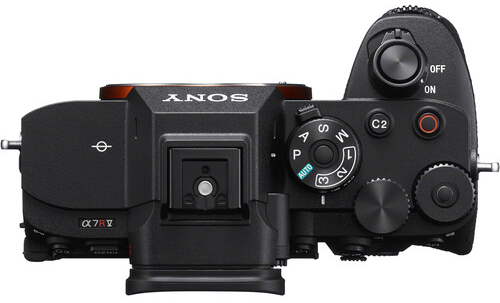
Sony a7R V
The Sony a7R V and Sony a1 are, without a doubt, two of the best mirrorless cameras for video on the planet. For starters, both have industry-leading 8K video capabilities, advanced codecs, and slow-motion video, making them ideal for everyone from professional videographers and filmmakers to YouTubers and vloggers.
Where the a1 separates itself, though, is when looking at the frame rates. The a1 boasts 8K/60p, 4K/120p, and 1080p/240p Full HD video. In contrast, the a7R V has 8K/30p, 4K/60p, and 1080p/120p Full HD video. While those numbers are still impressive, professionals will be able to notice the difference.
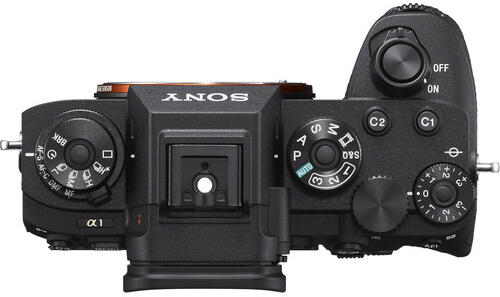
Sony a1
The one area where the a7R V beats the a1 is its best-in-class in-body image stabilization (IBIS). The IBIS of the a7R V adds up to 8 stops of exposure, whereas the IBIS of the a1 adds 5.5 additional stops.
The better stabilization enhances the a7R V’s low-light performance and reduces camera shake when recording handheld video. This makes it an ideal choice for run-and-gun shooters like documentary filmmakers.
Which is the best camera for video? It’s extremely close, but we give a slight edge to the Sony a1.
Recommended Sony Lenses
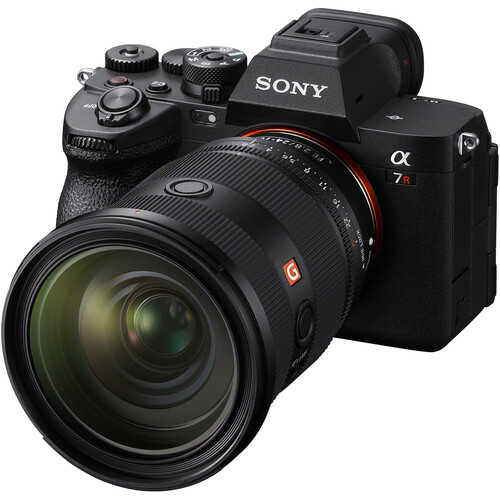
Sony a7R V with 24-70mm lens
Here’s a quick list of some of the best Sony Full Frame lenses for photo and video to pair with the Sony a7R V and a1.
- Sony FE 24-70mm f/2.8 GM II
- Sony FE 400mm f/2.8 GM OSS
- Sony FE 50mm f/1.2 GM
- Sony FE 70-200mm f/2.8 GM OSS II
- Sony FE 12-24mm f/2.8 GM
Final Thoughts on the Sony a7R V vs Sony a1
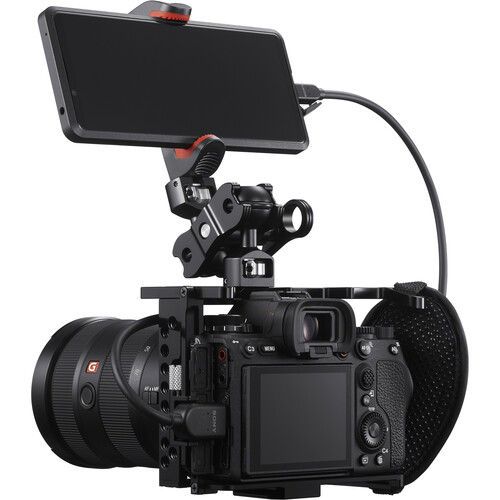
Sony a7R V video camera setup
Regardless of which of these high-end cameras you choose, you will get a hybrid digital camera capable of capturing spectacular photos and videos. With that in mind, we recommend going with the Sony a7R V if you mostly shoot photos and the Sony a1 if you mostly record videos. Furthermore, due to the $2000 price difference, the a7R V is better for people on a budget.
After reading our Sony a7R V vs Sony a1 camera review, we hope you are one step closer to choosing your next camera. However, if you are still undecided, check out the list below of other professional mirrorless cameras on sale now at MPB:
Disclaimer: Our articles might have affiliate links and the occasional sponsored content, but don't sweat it – if you buy something, we get a little kickback at no extra cost to you, and we only hype products we truly believe in!
Learn More:
- Canon R3 vs Nikon Z9
- 4 Reasons Why the Panasonic Lumix GH6 is One of the Best Hybrid Cameras on the Market
We Recommend
Sony a7S II Review
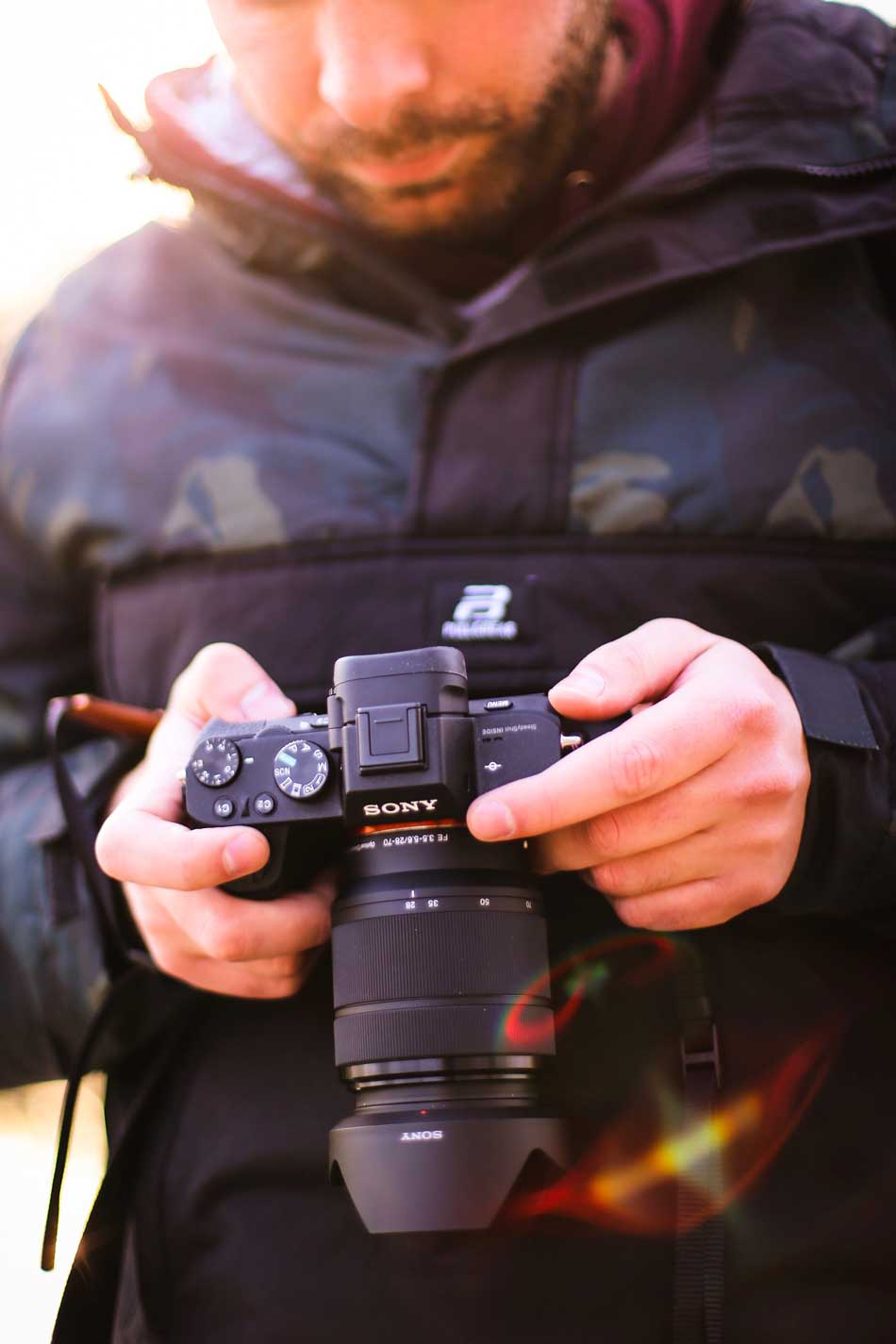
Photo by Antonio Janeski from Pexels
The Sony a7S III is supposedly right around the corner (we’ll see how Sony does this year given the coronavirus pandemic), but to get you through these dark times without any new camera releases, we figured we would review an older camera right before it gets upgraded.
The Sony a7S II dropped nearly 5 years ago, yet it still packs a punch. Read up on the Sony a7S II in this Sony a7S II review.
Sony a7S II Specs

The Sony a7S II is a full-frame mirrorless with a 12MP sensor and 4K video capabilities.
It’s also known for its low-light shooting capabilities and an AF system that works in the most dire of circumstances.
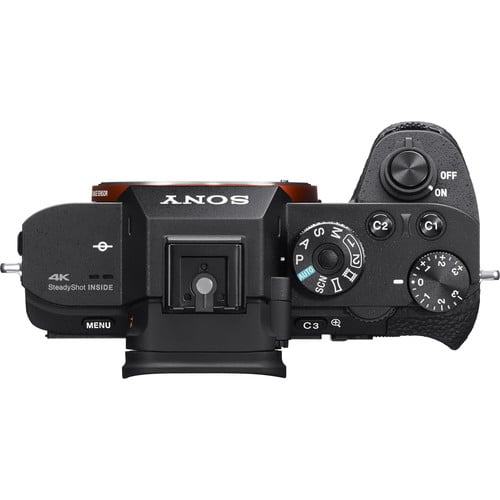
Other Sony a7S II Specs Include:
- 12MP sensor
- ISO range of 100-102,400
- 4K video capabilities
- 3” tilting LCD with 1.22M-dots
- 100% EVF coverage
- 5fps burst mode
- 1.38 lbs
- Environmentally-sealed body
Recommended Photography Reading
- National Geographic Photo Basics: The Ultimate Beginner's Guide to Great Photography
- Photography: The Definitive Visual History
- Read This if You Want to Take Great Photographs
Sony a7S II Body & Design

One problem found in earlier versions of this camera was mechanical vibrations. It wasn’t a huge deal, but it was noticeable.
Thankfully, those vibrations are now about half as recognizable because the Sony a7S II was built with a reduced-vibration shutter. Additionally, this shutter will last at least 500,000 cycles, so you won’t need to purchase another camera for a good, long while.
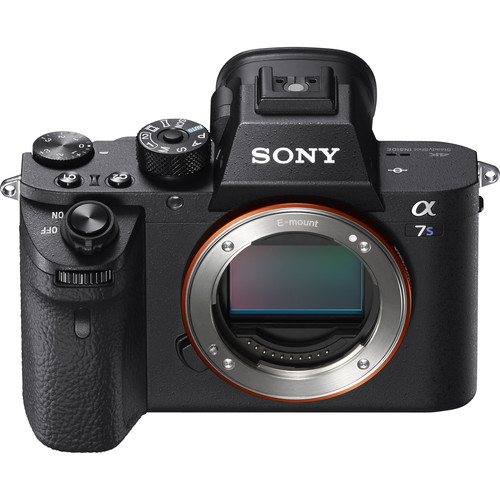
This camera is also built out of more magnesium alloy than its predecessor, providing both strength and lightness to this camera. The magnesium alloy covers on the front, top and rear of the camera, also ensure the camera is more weather-resistant.
Sony a7S II Build & Handling
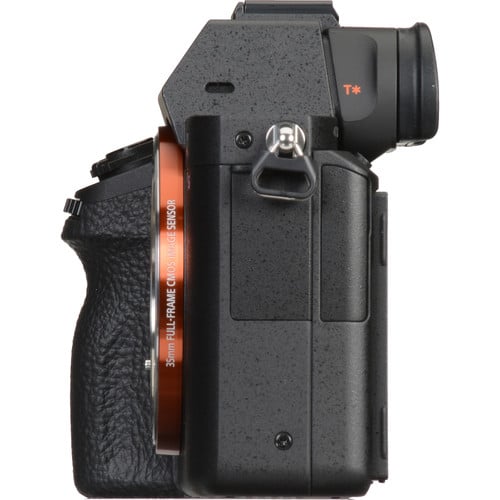
This camera, much like the a7 II and a7R II, allows you to comfortably hold it with easy reach to all of the controls. If you’ve owned either the a7 II or a7R II in the past, you can reasonably expect to pick up the Sony a7S II and understand the camera right out of the box.
The grip is now larger, the shutter release is located closer to the top of the grip, and tons of customization options are available.

One negative to the build of this Sony is that the video record button is located near the corner of the thumb-grip and it’s sort of awkward to reach while shooting.
But, the impressive EVF makes up for anything you may not like about the Sony a7S II handling. It features 100% coverage and almost perfectly matches the final shot.
Sony a7S II Video Performance
You don’t need to speak Spanish to understand that Ivan Lozano Films is a big fan of the 4K video shot on the Sony a7S II.
Given the impressive ISO range, shooting video in a variety of circumstances on this camera is incredibly fun.
As this video by TheBuffNerds showcases, you can capture 4K video on the Sony a7S II in either 30p or 24p with up to a 100Mbps bit rate.
Of course, you can also shoot full 1080p HD video at either 100Mbps or 60Mbps for great slow-mo.
Sony a7S II Price
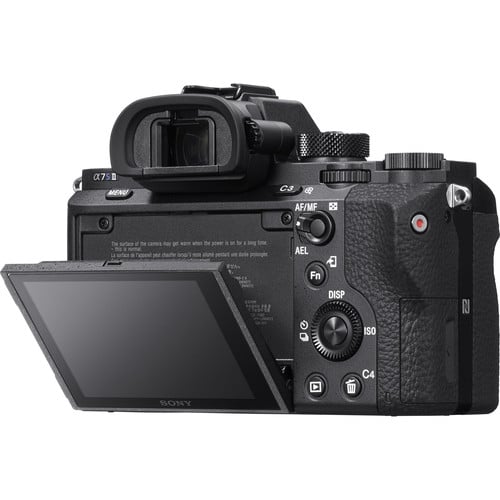
You can purchase a new Sony a7S II on Amazon for $2,300.
Or, since the Sony a7S II is nearly 5 years old, you can save $1,000 by buying it used on MPB.

I know that buying a camera that’s five years old might give you pause, but the great thing about MPB is that they put each item they list through a rigorous inspection process. This results in a series of grades for the gear, that way you know precisely what the condition is before you ever press buy.
But, if you’re unpleasantly surprised by a malfunction or other issue, MPB has a six-month warranty on much of their gear. So, you can save money while having peace of mind. Not bad, right?!
We Recommend
Sony a7S III Review
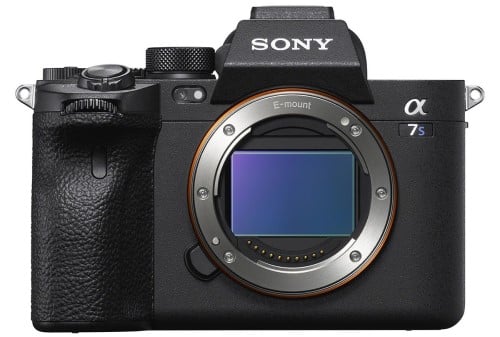
The Sony a7S III is a relatively new edition to the Sony family. It came out in the middle of the pandemic mayhem last year, though, so I feel it hasn’t really gotten its fair dues.
The Sony a7S III is marketed towards videographers. It also makes low light shooting an absolute breeze.
While the Sony a7S III doesn’t feature any crazy video specs that top of the line professional videographers expect, like 6K or 8K footage, its autofocus system works incredibly well, meaning that the Sony a7S III works best for videographers who are shooting in the field. The real world video this camera produces is out of this world.
Unfortunately, the Sony a7S III may only appeal to videographers. The camera only features a 12MP sensor, so its resolution is far less than many other comparable cameras. If you want to be able print enormous photos, this might not be the camera for you.
However, if video is important, this is a great option.
Sony a7S III Specs
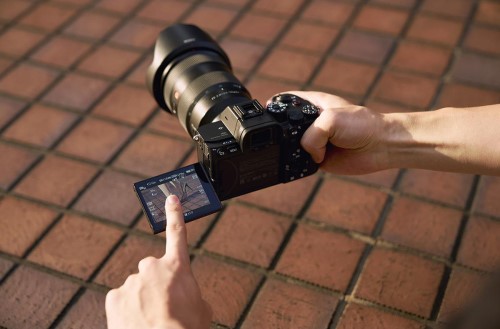
The Sony A7S III specs include a 12MP BSI CMOS sensor, an impressive ISO range of 80-102,400, and some of the best video specs around.
These video specs include 4K video at up to 120p, or 60p for an hour long shoot. When you’re shooting 4K at 120p you can expect a small 1.1x crop, but there is no crop in 60p. Conversely, you can shoot up to 240fps in Full HD. The Sony A7S III features 16-bit Raw video output at up to 60p, as well.
Some of the specs on this camera are important for both stills and video shooters. For instance, the camera comes with a fully articulating touchscreen and 5-axis in-body image stabilization. The EVF also features an impressive 9.44m-dot resolution.
Other Sony a7S III Specs Include:
- 12MP BSI CMOS sensor
- Bionz XR processor
- ISO range of 80-102,400
- 4K video at up to 120p with a small crop, or up to 60p with no crop
- Full HD video at up to 240p
- 9.44m-dot EVF
- 3” fully articulating LCD with 1.44m-dots
- 5-axis in-body image stabilization
- Built-in Wi-Fi and Bluetooth
- 1.35 lbs
- 600-shot or 90-min battery life
Sony a7S III Body & Design
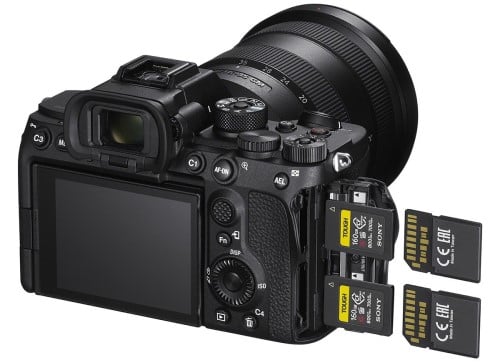
The Sony a7S III body features dual card slots that will work with either SD or CFexpress Type A cards.
It also features a microphone jack and a full-size HDMI port that will be helpful if you’re hoping to get the best video quality you can out of this camera.
Other than this, there are not that many physical changes on this camera. The REC button is a bit larger and is now located on the top plate. Speaking of, the top plate is also larger because Sony needed room to house the very impressive EVF.
You should also expect to use the touchscreen more often than you ever have before because you can use the touchscreen to adjust the Fn menu and the main menu.
Learn More:
Sony a7S III Build & Handling
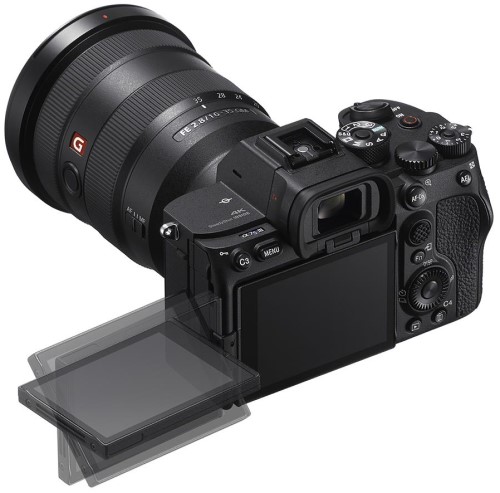
The Sony a7S III build is sturdy. The camera measures 5.07” x 3.81” x 2.74” and weighs 1.35 lbs. As compared with the Sony A7R IV, the Sony a7S III features a larger grip, which helps with the handle of the camera. It is weather-sealed and comes with some upgraded buttons. For instance, the AF-ON button is very prominent and easy to find. The thumb indent comes with a great grip.
The Sony a7S III handling is also much improved by the fully articulating LCD. The one problem I have with the LCD is that it is of such a low resolution. It is clear that Sony is expecting shooters to use the EVF more often than not. However, the low resolution of the screen doesn’t affect your shooting capabilities at all.
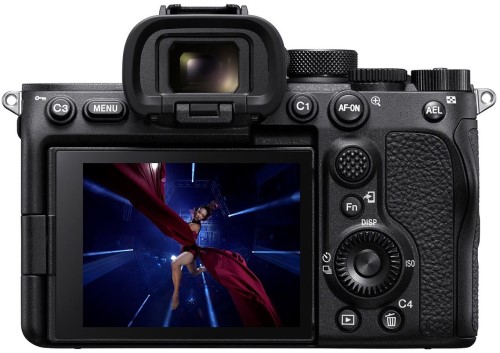
One other thing I should mention about the Sony a7S III design is that the menu has completely changed. If you were happy with the new Sony color coding in newer models, you will likely find this menu even better.
The menu lines up each of its features vertically, so that you can click on any of them to see all of the sub-features in that section. The whole menu is broken down into three sections, so that you can see individual modes while browsing. I’ll admit it’s a bit tricky to explain without the option to play around with it. However, I think it is the best modern menu Sony has come up with.
Sony a7S III Video Performance
The Sony a7S III video performance is likely the most important section in this review because, well, it's essentially a video camera.
I chose Benn TK’s video test above because it showcases all of the best parts of this camera. It showcases its shooting in the real world.
As aforementioned, this camera shoots 4K video at up to 120p, or 60p for up to an hour. The 120p 4K footage comes with a 1.1x crop, while the 60p doesn’t come with a crop at all.
If you’re planning on shooting in Full HD, you can do so at up to 240p.
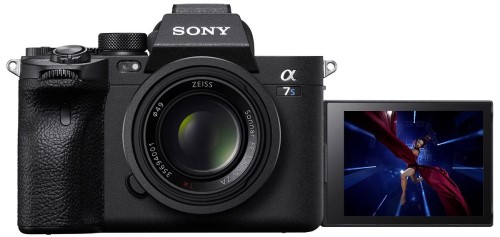
For internal recording, this camera records at 10-bit 4:2:2, but you can also use the full-sized HDMI port in order to get 16-bit raw output at up to 60p.
The camera also offers a brand new XAVC-HS H.265 HEVC format, which offers literally double the compression efficiency as the older XAVC-S H.264 MP4 format.
The regular in-body image stabilization works really well while shooting video, however if you do want to use the more advanced in-body image stabilization, it should be noted that each of your recording settings will get a 1.1x crop.
While you likely won’t use it very often, the Sony a7S III does feature really good audio with its built-in speakers.
Sony a7S III Price
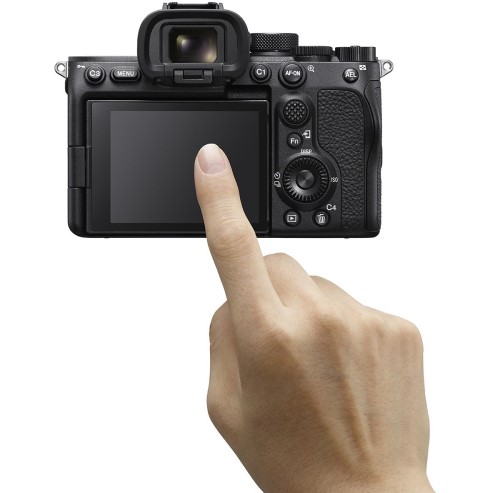
Given the wildly impressive video specs on the Sony a7S III, it makes sense that the Sony a7S III price isn’t within reach for most.
The Sony a7S III costs $3,500 if you’re planning on purchasing it brand new.
Now, since $3,500 is a ton of money to spend on a camera, even one as impressive as the Sony a7S III, I recommend purchasing this camera used to save some money. This way you can invest any cash you save in some new glass.
While you can mess around with websites like Ebay or Craigslist, after a few years of doing this myself I have realized that it is always safer and cheaper to strictly work with reputable used camera retailers. Not only are websites like Ebay and Craigslist crawling with scams, but they are also crawling with people who are only there to waste your time. When you’re investing this much money in a camera, it makes the most sense to work directly with someone who actually knows what they’re talking about.

Thankfully, we have just the used camera site for you: MPB. MPB currently has used Sony A7S III bodies for sale starting at $1,609. That’s right. You can save $2,000 simply by buying a camera that has been used for a few months.
MPB also has a Sony a7S III that is in like new condition for $1,689.
You can then turn around and spend that $2,000 you saved on new lenses that you can use alongside your new camera.
We have done a full review of MPB because we were so impressed with their level of customer service and knowledge. You can read that in the learn more link below.
Learn More:
We Recommend
Sony a7S Review
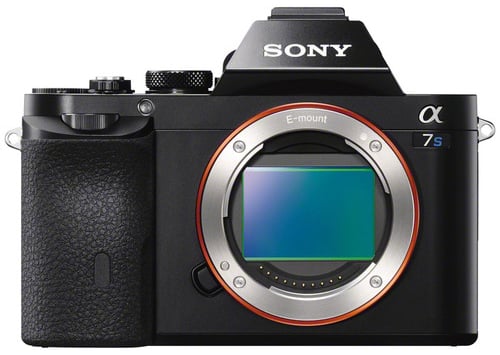
The Sony a7S is slowly getting older which means that your dreams of having a camera this unique could be more realistic than you think.
The sony a7S came out in 2014 to much fanfare because it was built with a 12MP 35mm sensor, which gave the camera the ability to take video that is as good as its stills.
Of course, as is the case with any camera over five years old, some of the specs on the Sony a7S are outdated, but since you can now pick up this camera for a much lower price tag, I personally think that it may be worth it. This is especially true considering that some of the less than awesome Sony a7S specs can be improved with a few workarounds.
If you’ve been in the market for a Sony full-frame mirrorless and don’t want to spend thousands for a newer model, the Sony a7S may be just the thing for you.
In this article, I’ll discuss the Sony a7S body, the Sony a7S handling, and the overall Sony a7S design. I’ll also show you where you can pick up a Sony a7S for pennies on the dollar.
Sony a7S Specs

If you’re serious about purchasing a Sony A7S, then you need to know all about its specs (the good and the bad).
For starters, the Sony a7S is built around a 12MP 35mm sensor and the camera is specifically designed to handle low light shooting well, since it can focus at levels to -4EV.
I mentioned the great Sony a7S video in the intro and this may have been a bit of a stretch. The camera is older and so it can shoot really great Full HD footage internally, but if you want to capture 4K video, you’ll need an external recorder to do it. This is one of those workarounds I talked about. However, if you choose to shoot with an external recorder, you’ll be really impressed with the work that a camera as old as the Sony a7S can do.

Importantly, the camera does feature both microphone and headphone sockets so that you can get some seriously good audio to pair with your video.
The viewfinder features 2.36m-dots.
Other Sony a7S Specs Include:
- 12MP 35mm sensor
- Can focus at levels to -4EV
- Shoots full HD video internally or 4K video externally
- Slo-mo capabilities
- 2.36m-dot viewfinder
- Microphone and headphone sockets
- Built-in Wi-Fi
- 1.11 lbs
- 380-shot battery life
Sony a7S Body & Design
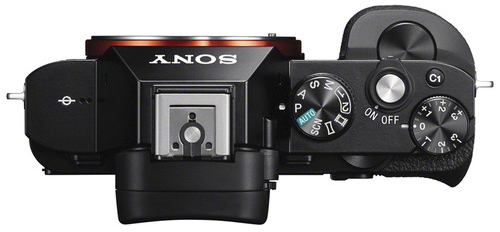
This camera weighs 1.11 lbs and measures 5” x 3.7” x 1.9”, so it’s a great, compact mirrorless good for everyday shooting.
If you’re a Sony shooter already, then you’re going to be accustomed to the menu system right out of the box. Personally, I think the Sony menu is a bit clunky, but nothing that you can’t figure out.
Though the camera is a bit smaller, it isn’t so small that it can’t handle larger lenses. It somehow manages to still feel balanced even with larger than life lenses.
The one real complaint I have about the design of this camera is the fact that the video recording button is difficult to reach. For a camera designed with videographers in mind, this seems like a bad move.
Learn More:
Sony a7S Build & Handling

The Sony a7S build is solid. The camera is made out of magnesium alloy. Though it doesn’t feature any weatherproofing, I still think the camera is generally built well.
The camera also has a good battery life of 380 shots, which changes based on whether you use the viewfinder or not and whether you’re shooting video or not. However, it’s long enough to make me feel comfortable leaving the house with just one extra battery on hand.
You’ll be operating the camera primarily via two dials, one on the top plate and one on the back of the camera. The dial on the top plate changes your exposure and the dial on the back of the camera is customizable.
Sony a7S Video Performance
Huge thanks to DSI Pictures for the video above.
The Sony a7S features Full HD video recording internally or 4K video recording externally. But, it also includes a movie mode, a headphone and microphone socket, and a full-sensor readout, which suggests that Sony put some thought into how this camera would operate while shooting video.
I especially like shooting video on this camera because it allows a wide range of videographers to use it. You can shoot automatically, if you’re a beginner. You can shoot manually and adjust everything yourself, if you’re an amateur. Plus, you can use some of the more professional features such as time codes and picture profiles if you really know what you’re doing.
You can expect to shoot video for as long as 29 minutes at a time.
Sony a7S Price

If the Sony a7S price isn’t right, then buying a camera this old definitely wouldn’t be worth it. When the Sony a7S first came out, it cost well over $2,000. But, so long as you know where to look, you can now find a Sony a7S body for well under $1,000 (even in the best shape).
I’m a huge fan of buying used camera equipment from MPB. MPB basically takes all of the hard work out of buying used camera gear. They purchase cameras from other photographers, grade it so that you know what sort of condition it is in, and then sell it to you along with a money back guarantee. It sure beats buying a camera off of Craigslist or Ebay and then praying.

MPB currently has a good number of Sony a7S bodies available. You can pick one up starting at $764. If you’d like one that is in “excellent” or “like new” condition, you’ll pay a little bit more (somewhere between $800 and $900).
You’ll not only be saving a huge amount as compared to the price you would have paid years ago, but you’ll also have a peace of mind that your camera will arrive at your doorstep in the exact condition you expect it to.
For a full list of reasons why we regularly recommend MPB to our readers, you can read our full MPB Review in the learn more links below.
Learn More:
We Recommend
Sony a9 II First Look
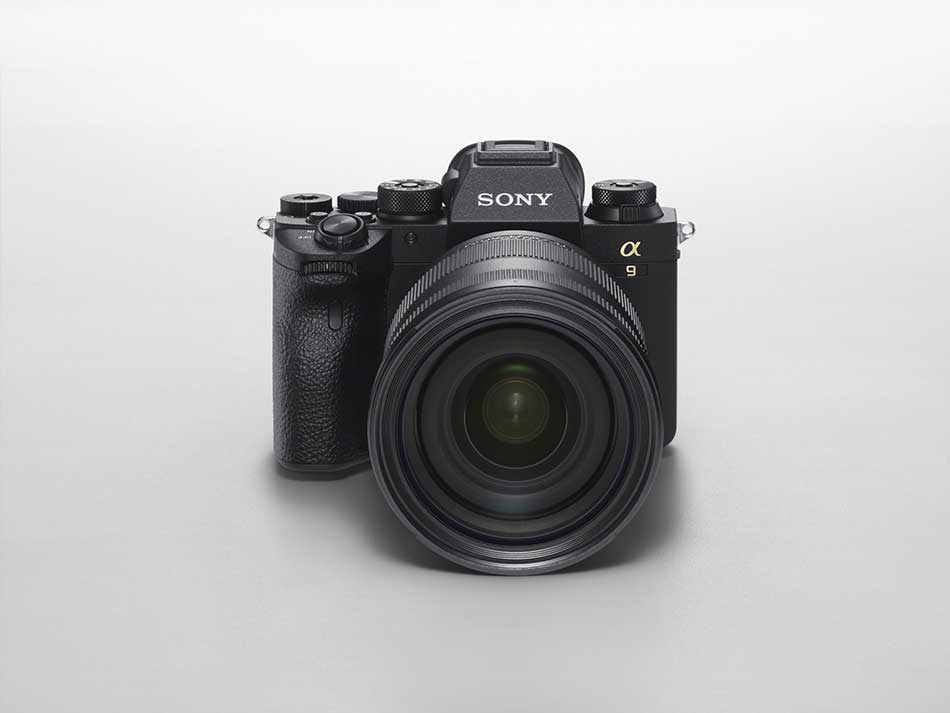
The Sony a9 was a game-changer in the world of photography. With a staggering burst mode of 20 frames per second, this camera pushed the limits of action photography and became one of the most popular mirrorless cameras in its class.
After just two years since it was released, Sony has introduced its successor – the Sony a9 II.
The original a9 already has hard-to-beat features aimed at professional sports photographers and photo-journalists, so the Sony a9 II doesn’t bring any revolutionary changes. However, it comes with subtle over its predecessor including better ergonomics, enhanced connectivity, and better autofocus.
“The voice of our customers is absolutely critical to Sony – we are always listening,” said Neal Manowitz, deputy president for Imaging Products and Solutions Americas at Sony Electronics upon the release of the Sony a9 II. This means that the company took into consideration the needs of action photographers, kept what was good in the original a9, and improved what was lacking.
Get a quick overview of the differences between the a9 and the a9 II in our video above. Below, we will cover all the important features of the Sony a9 II and compare the camera with its predecessor in a bit more detail.
Table of Contents:
- Sony a9 II Specs
- Sony a9 II Design
- Sony a9 II Video Performance
- Sony a9 II Autofocus
- Sony a9 II Price & Release Date
Sony a9 II Specs
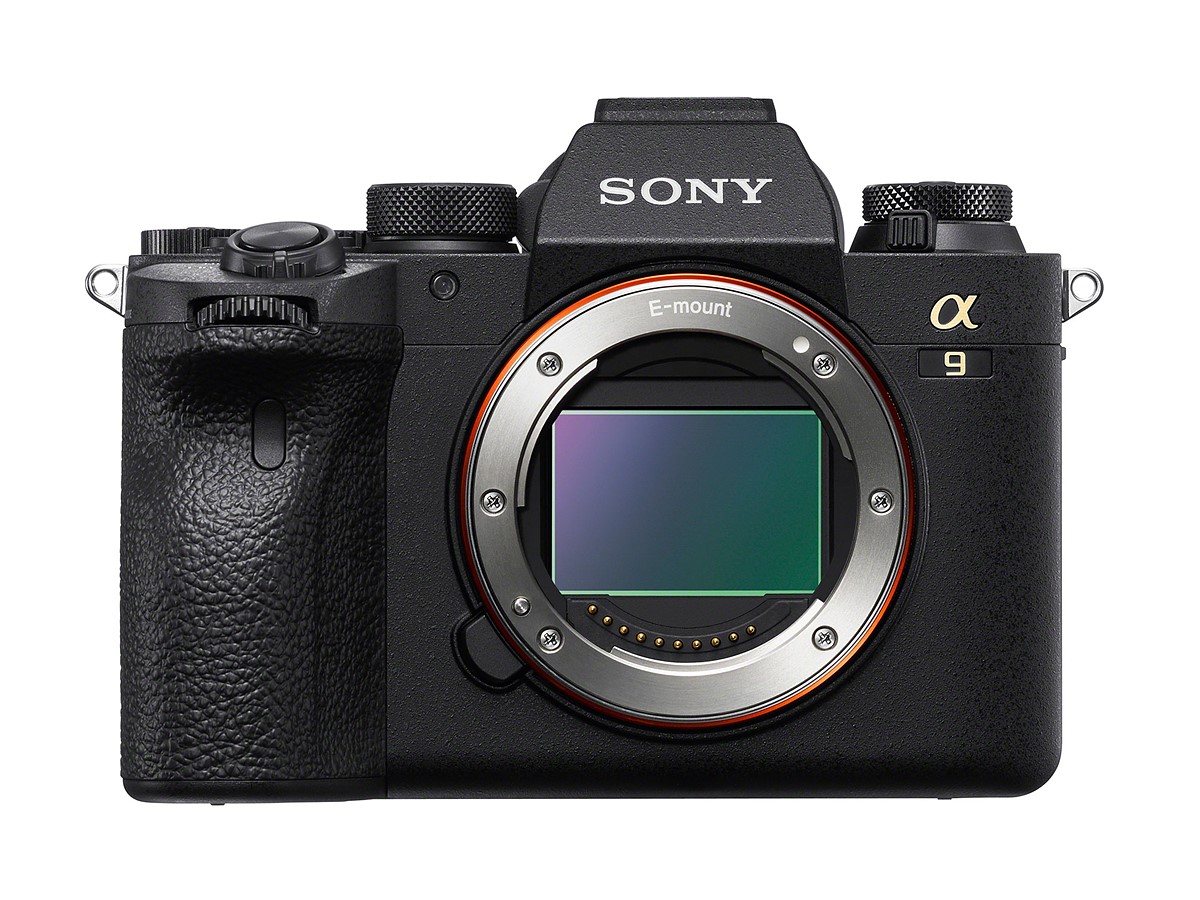
The Sony a9 II features the same 24 MP stacked full-frame sensor as the original a9, but it sports an updated Bionz X image processor which makes the camera even faster than the previous model.
Like its predecessor, the camera offers high-speed continuous silent shooting at up to 20 fps with full AF/AE tracking and without viewfinder blackout, but its autofocus system is now much quicker and more precise.
Overall, the a9 II carries important software tweaks that will improve the image quality and operability. For example, although the camera has the same native sensitivity range as the original a9 (ISO 100 to 51200/ extendable up to 204800), its image-processing algorithm has been improved in order to reduce noise in the medium-to-high sensitivity range.
Also, it has slightly improved image stabilization system which will reduce the effects of unintended shakes with more accuracy.
Like its predecessor, the Sony a9 II does an amazing job in photographing moving targets because it allows you to shoot 20 frames per second (361 JPEG images or 239 RAW files) at extreme shutter speeds like 1/32,000.
What is new is that the mechanical shutter is now doubled in speed (10 fps) which is very useful if you need to use flash for night or indoors photography. Also, the camera has a new anti-flicker system that detects fluorescent and artificial lighting in order to suppress color anomalies at high shutter speeds.
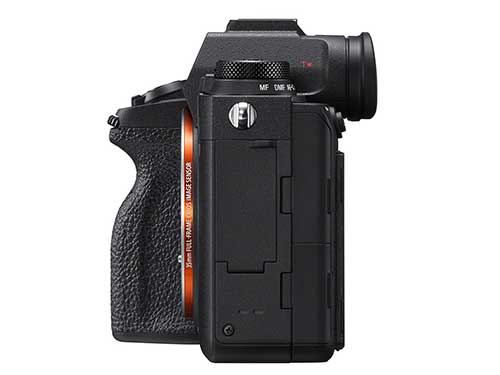
The Sony a9 II also comes with significant upgrades in terms of connectivity, and it offers a wide range of useful features for photo-journalists.
For example, the camera has a built-in 1000BASE-T Ethernet terminal, encrypted file transfer via SSL or TLS, USB Type-C™, 5 GHz Wi-Fi, and Bluetooth. All of this allows you to remotely operate the camera as well as to easily share gigabytes of image/video data as quickly as possible.
The a9 II also has the new Voice Memo function which can store audio descriptions for each photo and other cool options that will make working with tons of image data a lot easier.
Learn more about the Sony a9 II capabilities in the video above by Sony | Camera Channel.
Sony a9 II Design
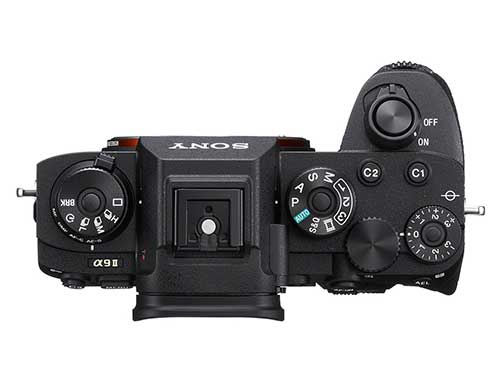
The majority of complaints about the Sony a9 were related to its design and usability. This is why the Sony a9 II comes with a larger grip, better weather-sealing around ports and doors, an anti-shock shutter, a bit larger buttons, and other minor changes in the design.
Also, it has an improved menu interface that will make using the camera and arranging its custom keys easier.
The new grip makes improves handling of the camera with telephoto lens, but you should also consider buying an optional Sony VG-C4EM Vertical Grip in order to improve ergonomics and double the camera’s battery life.
The Sony a9 II uses NP-FZ100 battery and, on a full charge, it can capture up to 650 shots depending on whether you use an LCD screen or an EVF (electronic viewfinder).
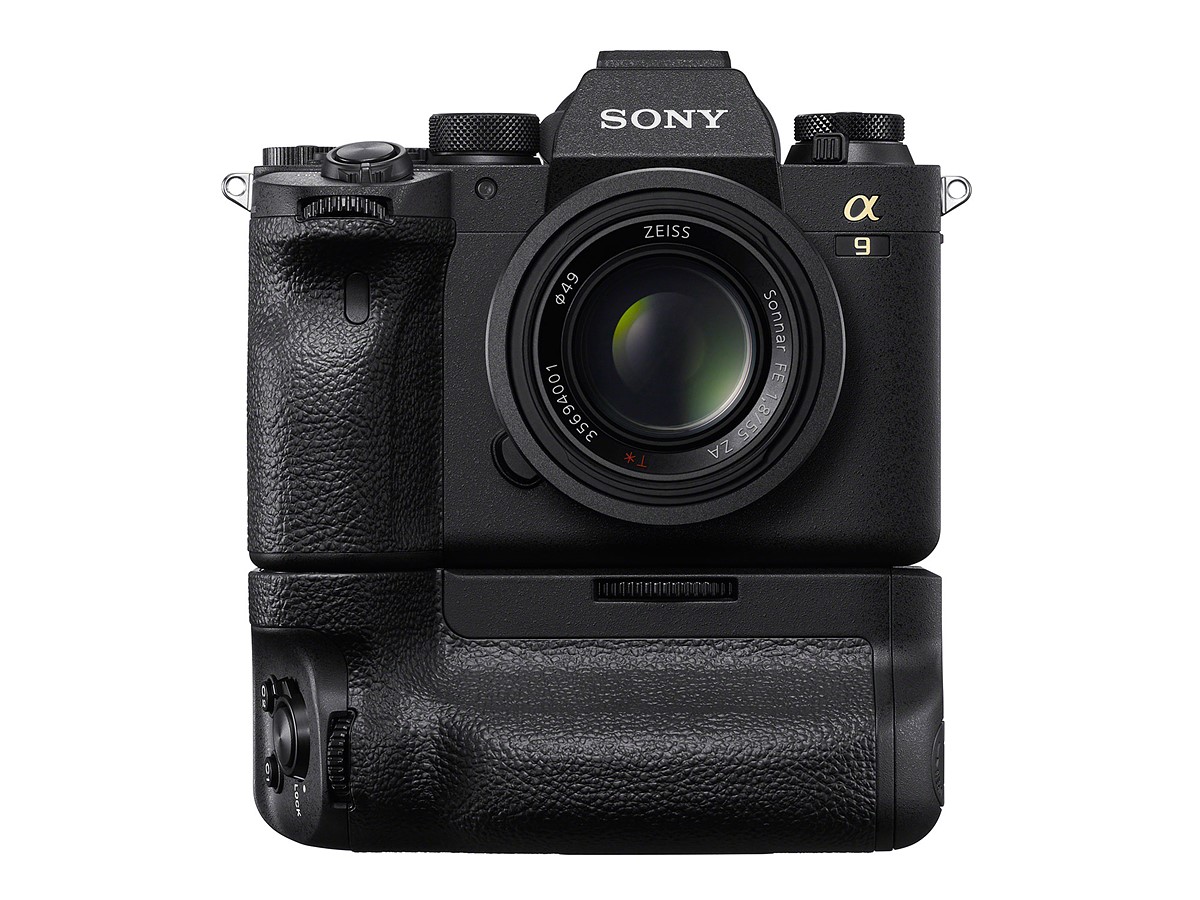
As it was the case with its predecessor, the Sony a9 II features a tilting LCD touchscreen (1.44 million dots) and an electronic viewfinder (3.69 million dots) with 0.78x magnification and 120Hfps refresh rate.
The camera also has two SD card slots, and both of them are UHS-II compatible. Finally, it uses the E-mount system, and there are around 55 native lenses for this camera.
Sony a9 II Video Performance
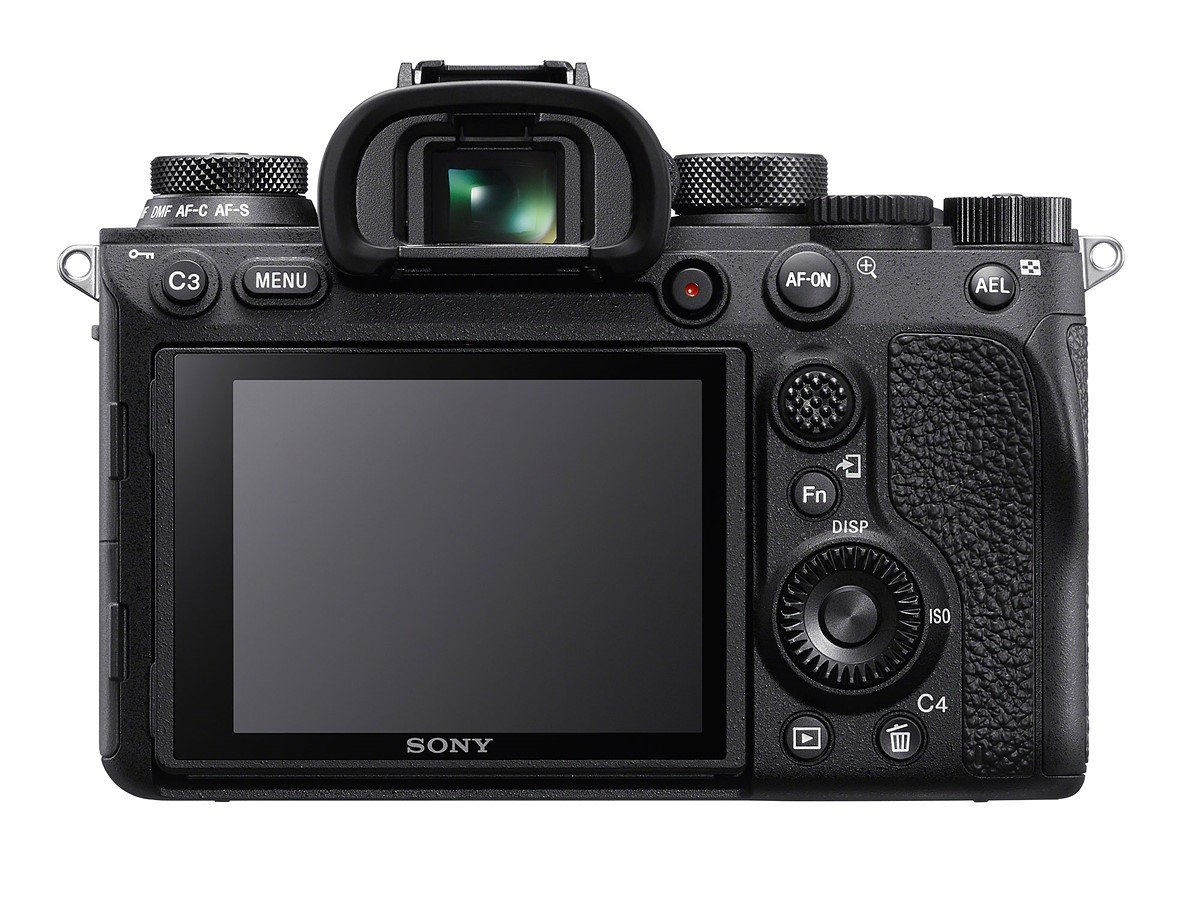
The Sony a9 II shoots 4K videos with full sensor readout (downsampled from 6K), but, as it was the case with the original a9, it only offers an 8-bit resolution. Moreover, the camera doesn’t have S-Log2 and S-Log3 options that could be useful for certain projects.
On the good side, the a9 II offers an improved Real-time Eye AF which will track the subject’s eyes, and Touch Tracking that will automatically focus and track the subject touched on the LCD display.
Also, its tiltable display is convenient for vlogs or shooting from weird angles, while the camera also has Multi Interface Shoe (MI Shoe) where you can attach audio recording equipment.
Sony a9 II Autofocus
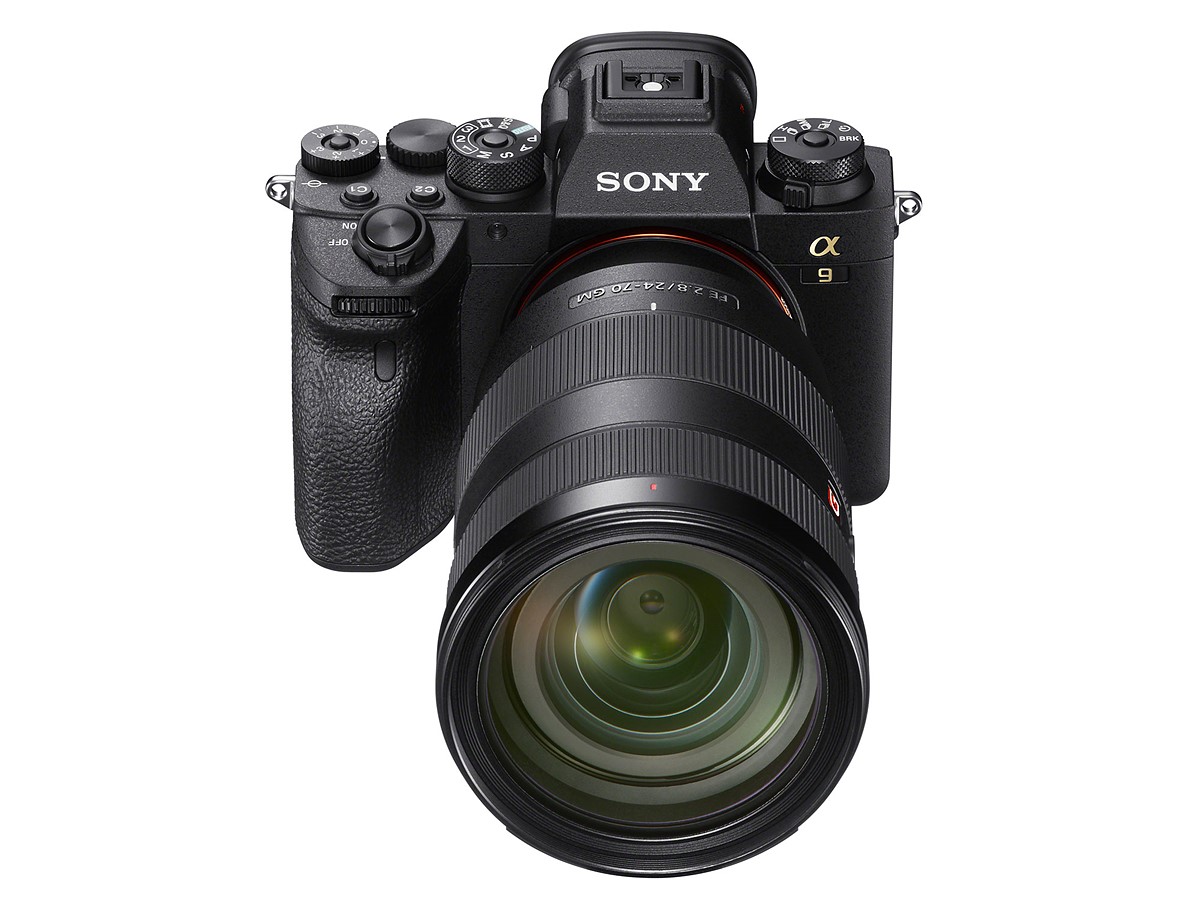
For a camera that specializes in shooting rapidly moving subjects, a capable autofocus system is a must. Although the Sony a9 already had an impressive autofocus system, the Sony a9 II comes with an updated processor and newly optimized algorithms that substantially improved the autofocus speed and precision.
The Sony a9 II has 693 phase-detection and 425 contrast-detection AF points covering 93% of the frame, while it offers Auto Focus and Auto Exposure tracking at 60 calculations per second.
The camera uses Fast Hybrid AF that can keep track of the subjects even in low-light conditions (down to EV-3), while its AI-based algorithms recognize different faces, eyes, colors, patterns, and distances in order to keep the focus where it needs to be.
The other notable focusing capabilities include steadfast tracking, AI-based real-time tracking, instant focusing on one eye, right/left eye selection, Eye AF for animals, TouchPad focus point control, and other useful options for sports photographers.
Learn more about the new Sony a9 II in the video above by Tony & Chelsea Northrup
Sony a9 II Price & Release Date
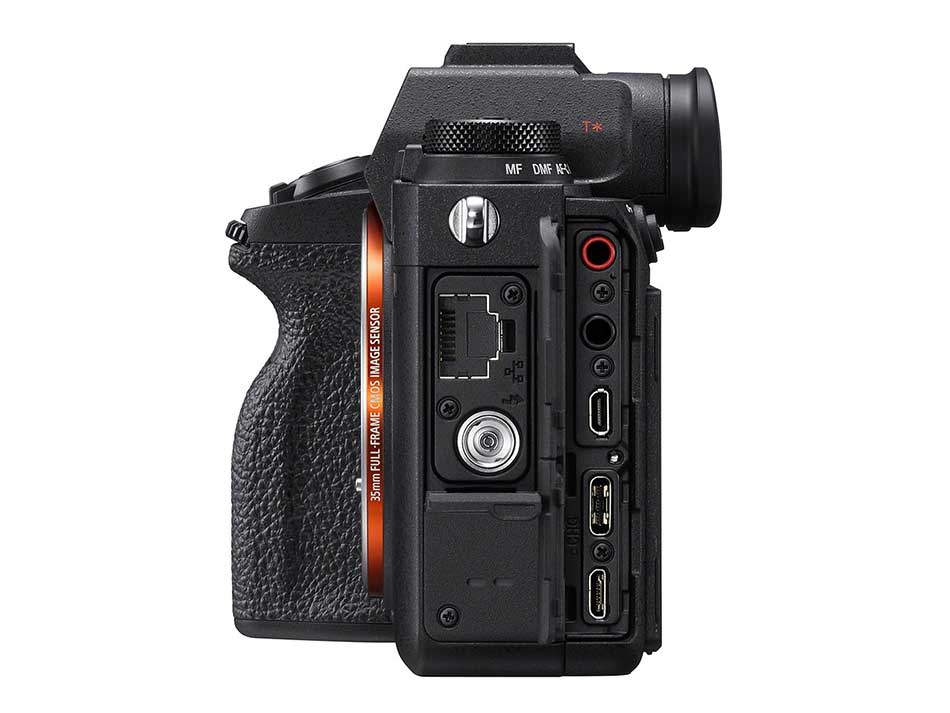
The Sony a9 II will be available in November 2019 and it will cost around $4,500. Although this is a relatively high price, this camera can make a day easier for most of the photo-journalists, sports and wedding photographers.
If this is out of your budget, you might consider buying an original Sony a9 which costs around $3500 or you can use MPB to buy a used Sony a9 for the price as low as $2,989.00. The other alternatives might be to buy a used Sony a7 III (around $1,900) or a used Sony Alpha A6400 (around $1000).
We Recommend
Sony a9 II Review
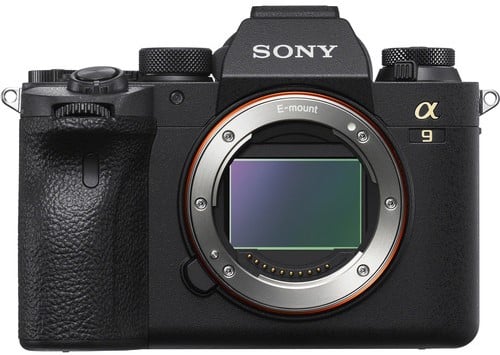
The Sony a9 II dropped earlier this year, which means it didn’t get as much love as it deserved thanks to an onslaught of other news stories.
But, before the year wraps up, we wanted to go over some of the best new cameras that dropped this year, and as Sony’s fastest full-frame camera to date, the Sony a9 II definitely deserves some screen time.
The Sony a9 II offers an impressive 20fps burst mode, without any blackout, and it also offers subject tracking at the same speed, which makes this camera an incredibly versatile one, albeit one professional wildlife and sports photographers may be the most drawn to.
Obviously, the Sony a9 II price means that only professional photographers, and hobbyists who have been photographing for decades, will be interested in the camera.
This Sony a9 II review will go over the new Sony a9 II specs, the Sony a9 II build, as well as the Sony a9 II video performance.
Sony a9 II Specs
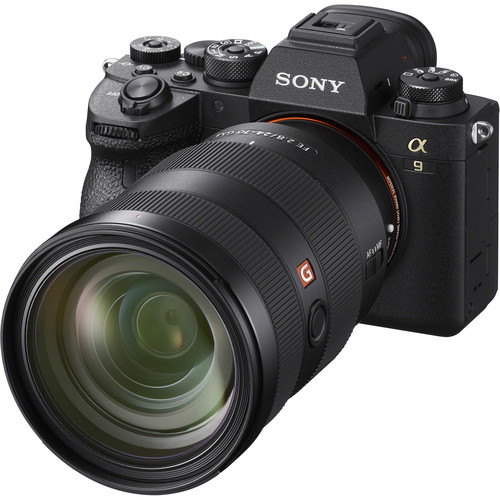
The Sony a9 II is obviously catered to the pros. With its high-resolution, 24MP sensor, its aforementioned incredible speed, and its wide ISO range, this camera is one of the best on the market.
The Sony a9 II also comes with 4K video and 5-axis in-body image stabilization, which again will likely appeal to professional sports and wildlife photographers.
Sony claims that the Sony a9 II is “dust and splash proof,” but I’m honestly pretty wary of claims about weatherproofing on cameras unless that weatherproofing is one of the main selling points. I basically think this is Sony’s way of bragging that their camera is built well, without actually offering any protections insofar as stating exactly how waterproof or drop proof the camera is. Essentially, be wary.
Other Sony a9 II Specs Include:
- 24.2MP full frame Exmor RS CMOS sensor
- 693-point phase detection AF system
- ISO range of 100-51,200
- 4K video capabilities at 30fps, or 1080p Full HD video capabilities at up to 120fps
- 3” tilting touchscreen with 1.44m-dots
- EVF with 3.69m-dots and 0.78x magnification
- 20fps burst mode with the electronic shutter, 10fps burst mode with the mechanical shutter
- Built-in Wi-Fi and Bluetooth
- 1.49 lbs
- 500-shot battery life
Sony a9 II Body & Design
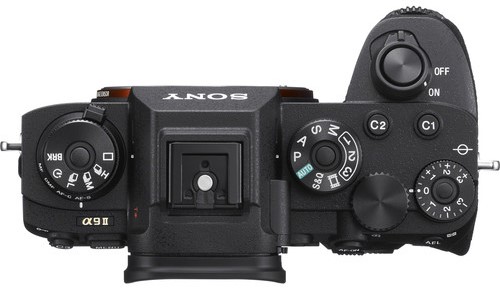
The Sony a9 II design is incredibly similar to its predecessor, the Sony a9, which came out in 2017.
Truly, the only difference between the body on the Sony a9 II and the Sony a9 is that the Sony a9 II comes with a handful of dials on the left side of the camera which enables you to change your autofocus mode.
The battery on both the Sony a9 and the Sony a9 II are the same. They provide around 500 shots per charge.
Learn More:
Sony a9 II Build & Handling
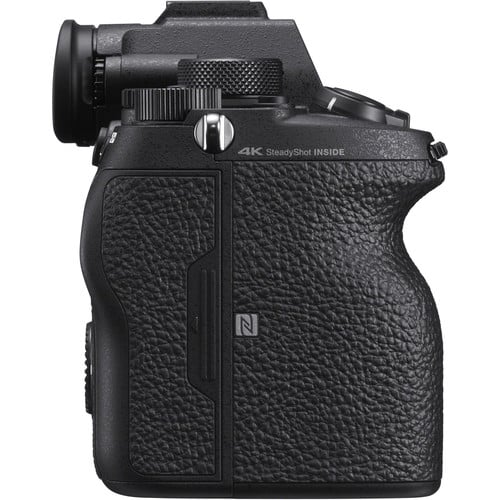
One area where the Sony a9 II has massively improved over the Sony a9 is with the Sony a9 II handling.
For starters, this camera comes with a larger grip than its predecessor, which makes shooting in cold climates much easier.
Sony also readjusted the layout of a few key buttons, like AF-ON and the joystick so that they are positioned in the same space whether you’re shooting horizontally or vertically. This is the type of adjustment I would expect for a camera that costs as much as this one does. Make it as easy as possible for me to shoot.
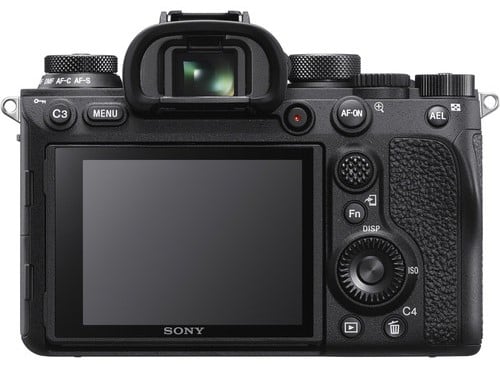
If you’re going to be using the touchscreen frequently, you’ll be happy to find out that you can now do so at 1.5 times the speed as on the older version. You can also use real-time touch tracking all the time, even when using your viewfinder.
Finally, the Sony a9 II offers a few more customizable options than its predecessor. Namely, you can use the Fn button for different functions in both stills and movie mode.
Sony a9 II Video Performance
Huge thanks to Tutto Digitale for the Sony a9 II video test above.
This is actually yet another area where the Sony a9 II really hasn’t improved since the last version, the Sony a9, came out. I would suggest that Sony didn’t leave themselves much room to improve anyways.
The Sony a9 II features 4K video at either 30 or 24p, and 1080p Full HD video at up to 120fps, so that you can capture great slow mo footage.
The 5-axis IBIS that I mentioned earlier means you can shoot the best footage, even when you’re moving, like chasing players down a field, or traveling, like on a plane, train, or bus.

While the screen can be a bit frustrating to work with while shooting video, since it isn’t fully articulating, it’s bright to allow you to shoot great footage in bright sunshine and it still tilts to help you get better angles. I sort of think that most vloggers aren’t going to need a lot of the specs that this camera offers, anyways, so the fact that its screen isn’t fully articulating isn’t a huge problem.
I would argue that most people aren’t going to purchase a Sony a9 II for its video performance, though, because you can opt for a camera that offers newer video specs that this doesn’t, like 10-bit internal capture or log video capture options.
Still, if you shoot both still photography and videography, the Sony a9 II can keep up.
Sony a9 II Price
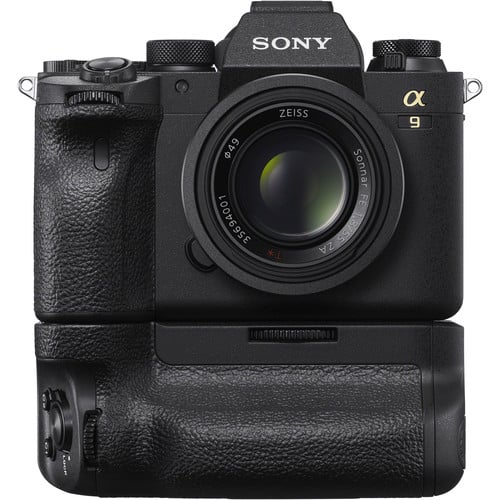
The Sony a9 II price, if you haven’t guessed, is eye watering. If you want a new Sony a9 II, you’re going to spend $4,500 to get one.
This is one of the reasons I suggest you watch MPB’s page for the Sony a9 II,in case you manage to grab a used one for much cheaper.

Another option, if you’re liking the look of the Sony a9 II but are hoping to save some money, is to opt for a Sony a9 instead.
MPB has a few Sony a9 bodies available, starting at $2,340. While this camera is a bit older, it may be worth it if you can put that additional $2,000 towards one, or two, awesome lenses.
If you haven’t shopped with MPB before, feel free to check out our full MPB review in the learn more link below.
Learn More:
We Recommend
Sony a9 Review
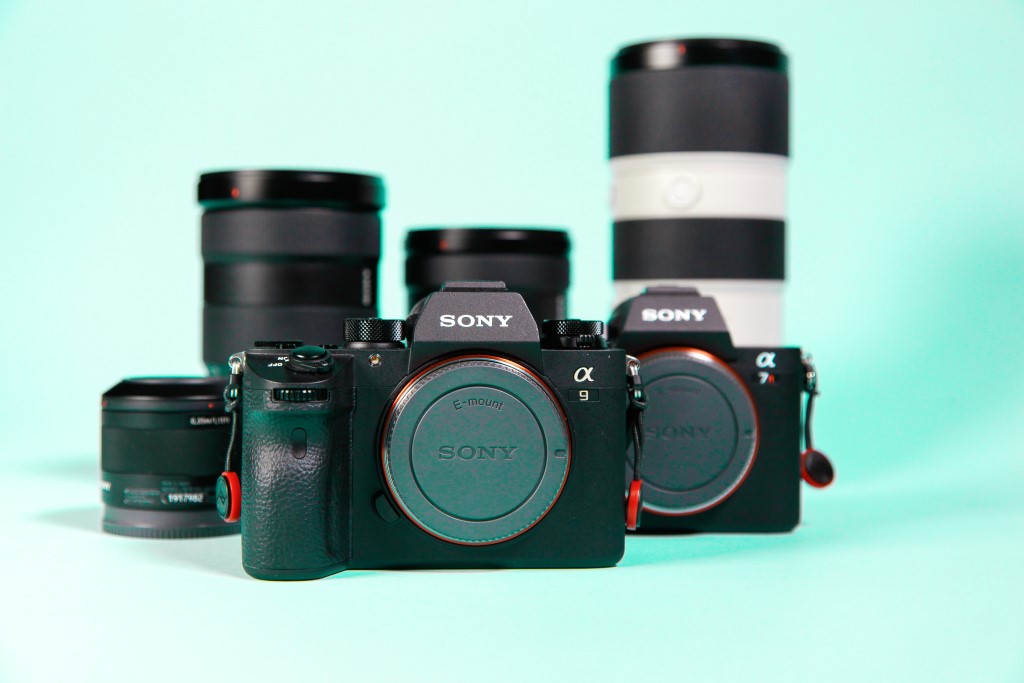
Photo by ?? Claudio Schwarz | @purzlbaum on Unsplash
Sony a9 Camera
The Sony a9 is a full-frame mirrorless camera aimed at action photographers. It is built around a 24 MP sensor and it shoots 20 frames per second with full autofocus and without viewfinder blackout. In other words, this camera was perfectly designed to capture the moment.
There are not many cameras on the market as capable of capturing moving targets as the Sony a9. Because of this, it is ideal for sports, wildlife, event, and wedding photography but it is also good for any other purpose. Read about Sony A7 iii review on our website PhotographyTalk.com
The biggest downside of this camera is that it is very expensive. At the moment, you would need to spend around $3,498.00 for a new a9 (body only). However, if you are a professional photographer who knows how to use the camera’s features in the right way, you can earn this money back easily.
In this Sony a9 review, we offer a quick rundown of the camera's primary specs and features.
Table of Contents:
- Sony a9 Specs
- Sony a9 Body & Design
- Sony a9 Build & Handling
- Sony a9 Video Performance
- Sony a9 Lenses
- Sony a9 Price
Sony a9 Specs
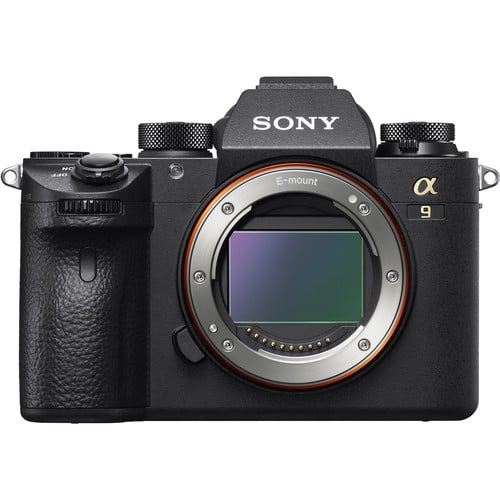
At the core of the Sony a9, there is a 24MP full-frame sensor and Bionz X image processor. This is the world’s first full-frame stacked CMOS sensor and its purpose is to speed up the camera by using one layer for collecting the image data and another layer for its processing.
Overall, the Sony a9 offers outstanding image quality and it is a good low-light performer because of its native sensitivity range of ISO 100-51200 (expandable to ISO 50-204800). Also, the camera features 5-axis image stabilization which will make images sharp and detailed even when shooting hand-held.
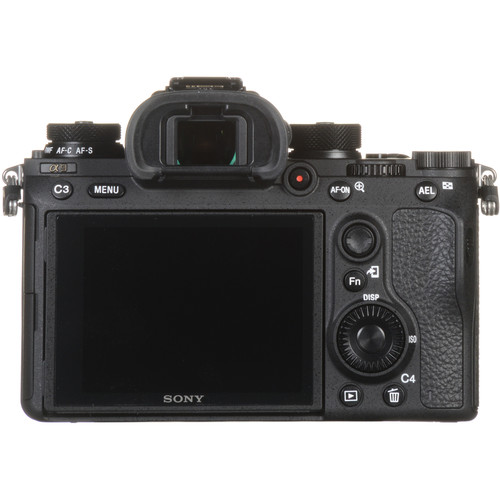
As we already said, the best thing about this camera is that it offers an impressive burst shooting speed of up to 20 fps with AFC and without viewfinder blackout. In addition, the camera offers a shutter speed of 1/32000 and its electronic shutter can be set to silent mode.
Silent shooting can be very convenient in certain situations. For example, if you are photographing a wedding ceremony or wild animals, the sound of the shutter can be disturbing.The camera also has a mechanical shutter, but you will probably rarely use it.
Learn more about the Sony a9 in the video below by Wes Perry.
As it would be expected for a sports camera, the Sony a9 also has an impressive autofocus system.
It has 693 phase-detection AF points that cover 93% of the frame and 25 contrast-detect points. The company also introduced firmware updates for this camera which includes Real-time Eye-AF, Real-time Tracking mode, and improved face and eye detection algorithms.
All in all, the autofocus system works great and keeps the focus right where it is needed even if you are photographing fast-moving subjects such as the fastest 100m runners.
Sony a9 Body & Design
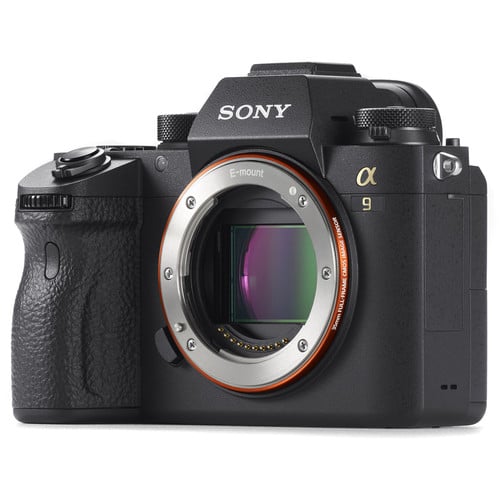
The Sony a9 is a very compact and light-weight camera, and it is weather-sealed against dust and moisture. It measures 5 x 4 x 2.5 inches and weighs only 24 ounces (with the battery). The design of the camera is very similar to any other camera from the a7 series. However, it adds some additional dials and buttons (such as AF joystick) that enhance the usability of the camera.
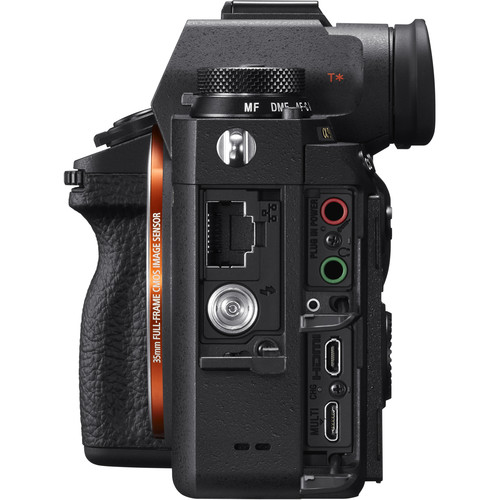
The Sony a9 uses a 0.5-inch electronic OLED viewfinder (3.7 million dots) with a framerate of 120 fps which means there is almost no viewfinder lag. In addition, it has a 3-inch tilting LCD screen (1.44M dot) that features touchscreen technology. The battery life is around 650 shots per charge if you use an LCD screen, while it can take around 480 shots with the electronic viewfinder.
The camera has dual card slots, while one of them supports UHS-II format. This is very useful if you truly want to use its 20 fps burst rate. Additionally, the a9 has a built-in Ethernet jack, USB 2.0, Wi-Fi, NFC, and Bluetooth. It also has a flash sync port, headphone, and microphone jacks.
Sony a9 Build & Handling
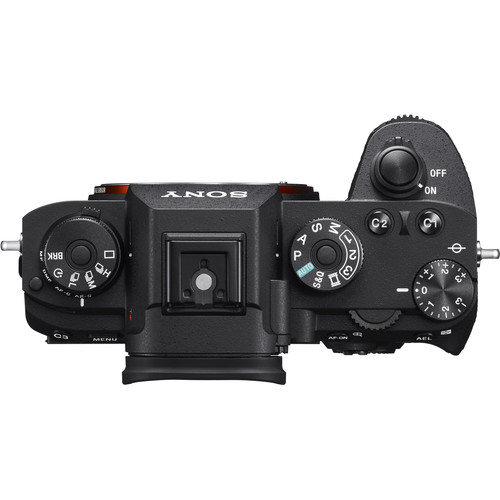
It is easy to personalize the a9 since it has four custom keys. Two of them are on top of the camera, while the other two are on the back. The menu can be a bit confusing. While it gives you a lot of options, sometimes it can be hard to find what you are looking for. This is why we suggest you customize it according to your needs.
Although it is very small, the ergonomics of the a9 is still pretty good. If you got used to using DSLR cameras, you might find the grip too small, especially when using big and heavy lenses. Because of this, we suggest you invest in an additional battery grip that will make the handling of the camera easier, while it will also substantially increase its running time.
Sony a9 Video Performance
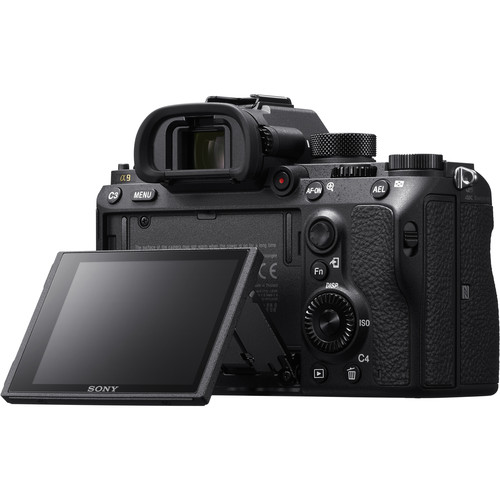
The Sony a9 shoots 4K video at 30p with a full sensor readout. Unfortunately, the camera doesn’t have S-Log and HLG profiles, but the quality of the video is still impressive.
Other things that are worth mentioning is that autofocus works smoothly in the video mode, while 5-axis stabilization reduces motion and makes videos look more professional.
A good thing is that Sony a9 has a tilting screen which will make easier shooting scenes from uncomfortable angles. Also, it has both headphone and microphone jacks.
Sony a9 Lenses
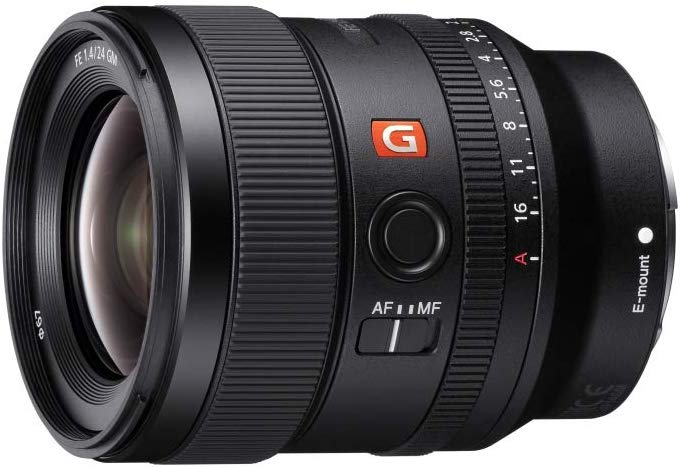
The Sony a9 uses E-Mount lenses. Mirrorless cameras are relatively new on the market, so there isn’t as wide offer of lenses for this type of camera, as there is for DSLR models. However, here are some of the lenses we suggest you check out:
- Sony FE 24mm f/1.4 GM – Wide-angle lens (shown above)
- Sony FE 85mm f/1.4 GM – Portrait lens
- Sony FE 24 – 70 mm f/2.8 GM – All-around lens
- Sony FE 16 – 35 mm f/2.8 GM – Landscape lens
Sony a9 Price
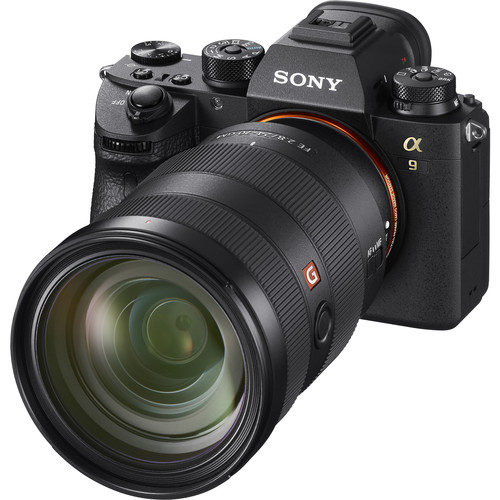
As we already mentioned, the Sony a9 doesn’t have very consumer-friendly price. However, it is definitely one of the best cameras in its class, since it does magic in capturing any kind of action.
Since the camera is now two years old, you can also buy a used Sony a9 and save some money for lenses and other photography equipment. On MPB, you can find it for the price as low as $2,989.00 (body only).
We Recommend
Sony a9 vs Sony a9 II
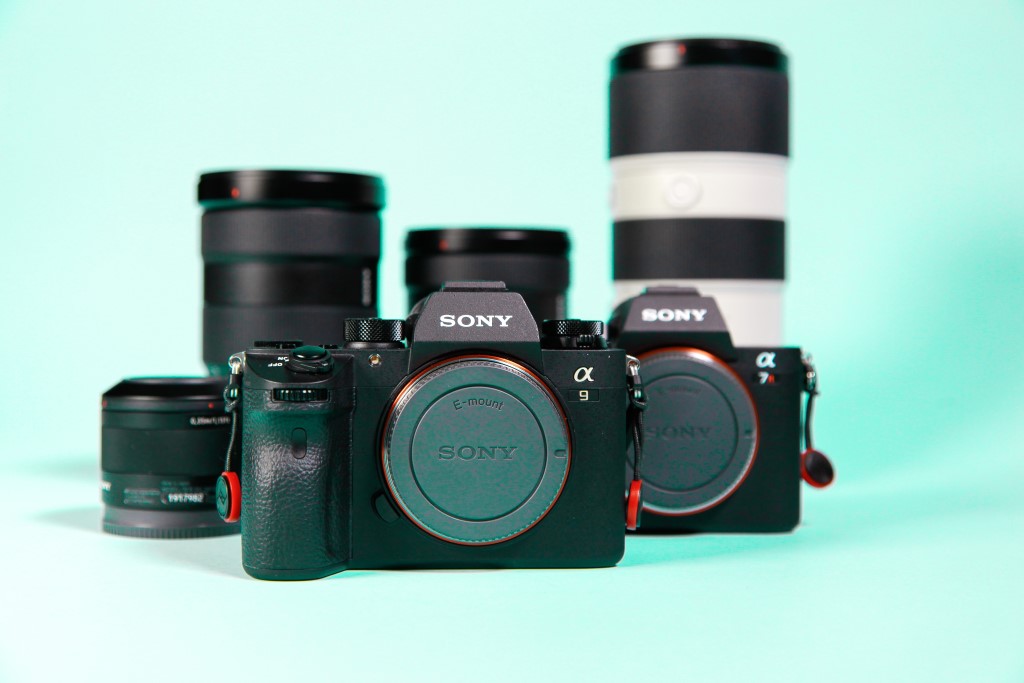
Photo by ?? Claudio Schwarz | @purzlbaum on Unsplash
Sony a9 II Vs Sony a9 Camera
Ever since the Sony a9 II dropped, the Sony a9 vs. Sony a9 II debate has been raging.
Given the fact that there is a $1,000 difference in the price between the two, I can understand why the debate is happening.
Personally, I would like to see a ton of new features on the Sony a9 II for it to be worth that difference.
Let’s dive into whether or not Sony pulled it off.
Sony a9 vs Sony a9 II Specs
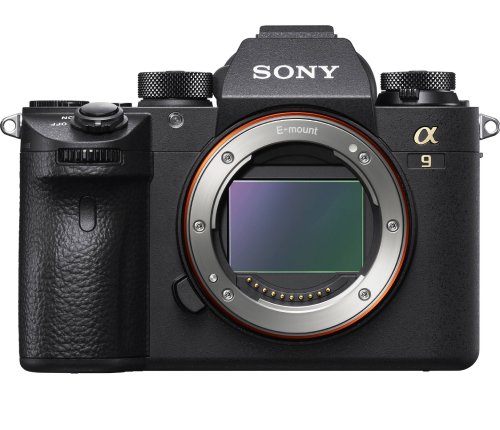
*Sony a9 pictured above
The Sony a9 dropped nearly three years ago in 2017 and pretty much everyone immediately loved it.
Interestingly enough, Sony marketed this DSLR as a professional wedding, action and sports camera, given the lack of viewfinder lag and great continuous shooting capabilities of it.
Sony a9 Specs:
- 24.2MP sensor
- 20fps burst mode
- 3.7M-dot viewfinder
- 3” LCD with 1.44M-dots
- 4K video capability
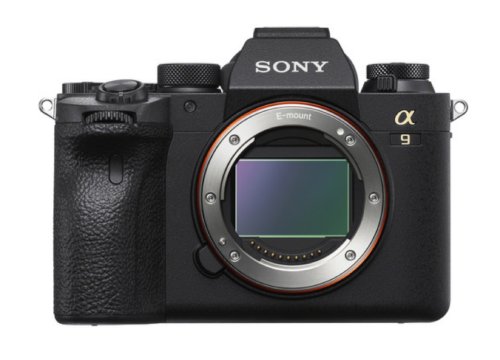
*Sony a9 II pictured above
The Sony a9 II, on the other hand, which dropped last year, is essentially a faster version, still marketed for sports and wedding photographers.
The Sony a9 II features a 20fps burst mode, or a 10fps burst mode with its mechanical shutter which stops burst shooting blackouts that other cameras have.
It also has a crazy ISO range of 50-204,800, which allows you to catch all those glorious low-light moments, like a candlelit reception.
Sony a9 II Specs:
- 24MP sensor
- 3” tilting LCD with 1.44M-dots
- ISO range of 50-204,800
- 100% viewfinder coverage
- 20fps burst mode
- Built-in Wi-Fi
- 1.49 lbs
Recommended Photography Books
- National Geographic Photo Basics: The Ultimate Beginner's Guide to Great Photography
- Photography: The Definitive Visual History
- Read This if You Want to Take Great Photographs
Sony a9 vs Sony a9 II Body & Design
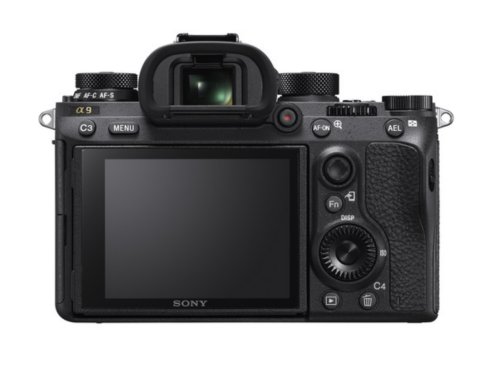
*Sony a9 pictured above
I’ll give a quick overview of the Sony a9 body and then go over the few changes Sony made before creating the Sony a9 II, since the bodies are essentially identical.
The Sony a9 features a 1.44M-dot rear LCD touchscreen, a solid grip, and basically all the makings of a wedding/sports camera.
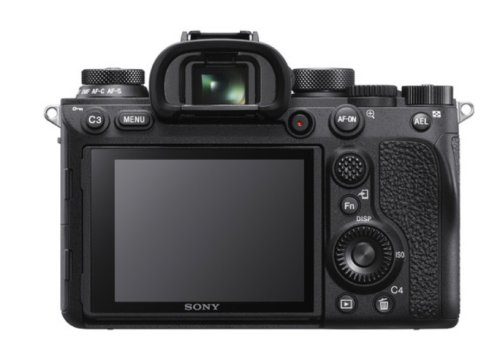
*Sony a9 II pictured above
The Sony a9 II, though, borrowed some design changes from Sony’s Alpha A7R IV, like a deeper grip and a better weatherproofed body.
Additionally, the Sony a9 II features bigger buttons, which are easier to find for people new to the camera, and thicker padding surrounding the lens mount.
Sony a9 vs Sony a9 II Build & Handling
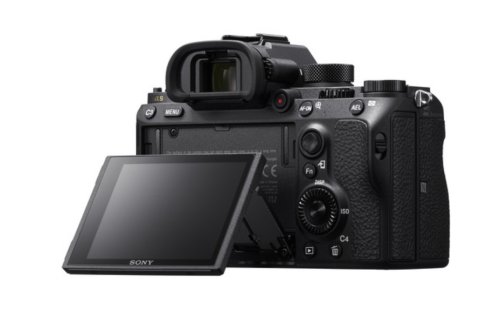
*Sony a9 pictured above
The best thing about both the Sony a9 and Sony a9 II is the tilting screen, which didn’t change at all between models.
Both cameras are ergonomic and weigh just 1.5 lbs, which is light enough to run around with them both all day.
The Sony a9 II, though is a big larger, measuring 5 ⅛ x 3 ⅞ x 3 ⅛ inches. Depending upon how compact you like your cameras, this could be seen as a positive or negative.
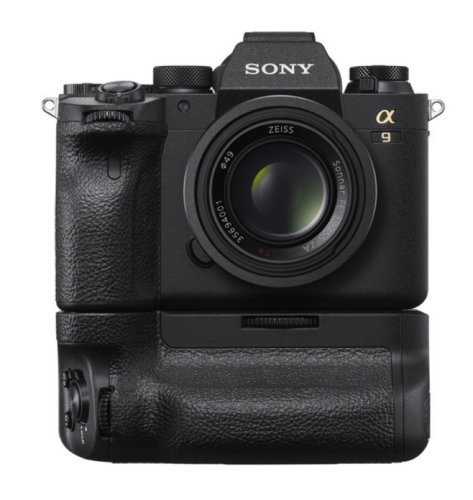
*Sony a9 II pictured above
Additionally, the Sony a9 II is compatible with one of my favorite grips, the Sony VG-C4EM vertical grip.
Lastly, while both the Sony a9 and Sony a9 II feature image stabilization systems, the Sony a9 II features a redesigned shutter mechanism that makes it nearly impossible to blur your photos.
Sony a9 vs Sony a9 II Video Performance
This video by Cameras Tested showcases my favorite quality about the Sony a9, it’s low-light video capabilities.
As aforementioned, the Sony a9 features a great ISO range and 4K video capabilities. So what’s not to love?
Both the Sony a9 and the Sony a9 II are known for their slow-motion video capabilities, which is showcased in this video shot by a Sony a9 II by Tutto Digitale.
And, if you need both of them back to back because the difference in video quality is so slim, like I did, this video by Ryan Douthit will be very helpful to you.
Sony a9 vs Sony a9 II Price
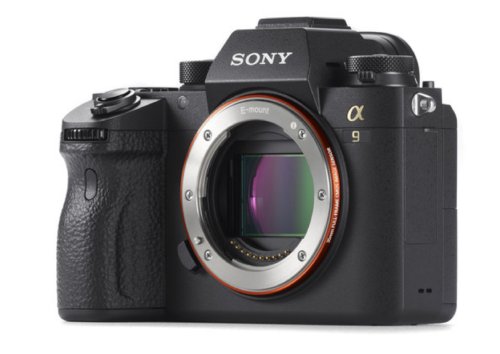
*Sony a9 pictured above
The Sony a9 is available new on Amazon for $3,500.But, since it dropped a few years ago now, you can also search for a used Sony a9 on MPB and save almost $1,000.
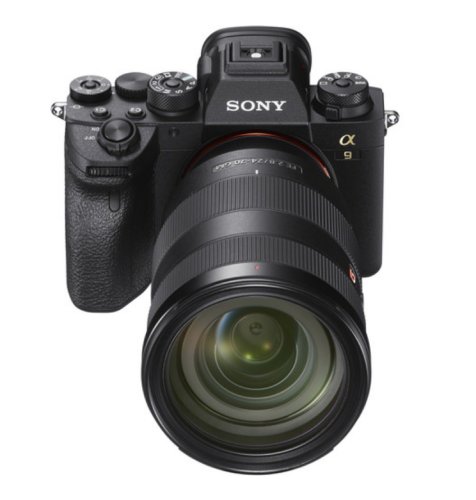
*Sony a9 II pictured above
The Sony a9 II, on the other hand, is available on Amazon for $4,500.
Since the Sony a9 II is so new, there are very few popping up on used camera resale websites, but keep an eye on MPBfor future savings.
We Recommend
Sony Alpha a6000 Mirrorless Digital Camera Review
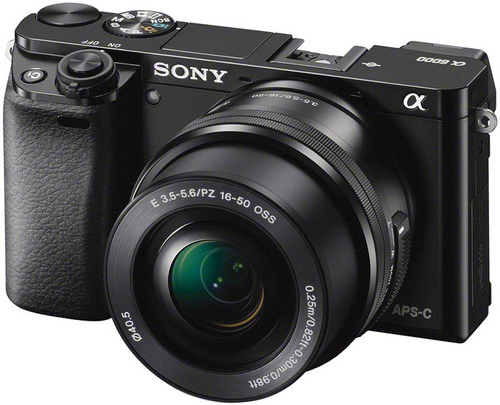
If you are a beginner photographer, on a tight budget, or looking for a solid first camera for your kid, the Sony Alpha a6000 is a perfect choice! While it’s older than most cameras (it came out in 2014), it remains a capable camera today, thanks to its jam-packed lineup of advanced features. Moreover, you can get your hands on one for only a fraction of the cost of most comparable interchangeable lens cameras.
In this detailed Sony Alpha a6000 mirrorless digital camera review, you will learn everything that makes this camera special. First, we share an overview of its key features and specs. After that, we check out how it holds up during both stills and video shooting.
One terrific resource with heaps of used Sony a6000 cameras in stock and a place I have bought and sold countless photo and video gear throughout the years is MPB. They are a trustworthy and reliable online platform that sells used photo and video kit at unbeatable prices.
Furthermore, all of their cameras are carefully hand-inspected by expert product specialists and backed by warranties, allowing you to make your purchases confidently and worry-free. Another killer feature of MPB is its online marketplace, where you can trade and sell your old gear to help offset the cost of new-to-you photography and videography gear you want and need.
Now, without further ado, let’s dive into this Sony Alpha a6000 mirrorless digital camera review and find out why this camera still provides a ton of value in 2022!
Table of Contents
- Sony Alpha a6000 Mirrorless Digital Camera Review: Overview
- Sony Alpha a6000 Mirrorless Digital Camera Review: Imaging Capabilities
- Sony Alpha a6000 Mirrorless Digital Camera Review: Video Capabilities
- Final Thoughts on the Sony Alpha a6000
Sony Alpha a6000 Mirrorless Digital Camera Review: Overview
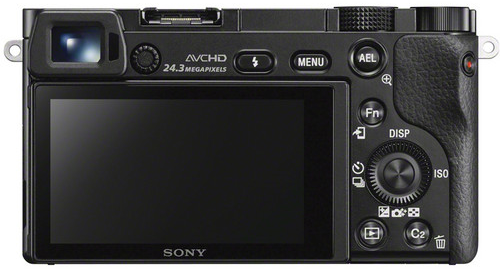
The Sony Alpha a6000 is an entry-level mirrorless camera that debuted in April 2014. At its core, it has a 24.3-megapixel APS-C CMOS sensor and a Bionz X image processing engine.
The two work together to make it one of the best beginner hybrid digital cameras for photo and video on the planet.
One of the first things that jump out when you first get your hands on the Sony a6000 is its lightweight and tiny body. It’s one of the most portable mirrorless cameras ever built and is barely larger than most compact cameras. It easily fits into any bag or purse and, when paired with the right lenses, can even fit in your pocket!
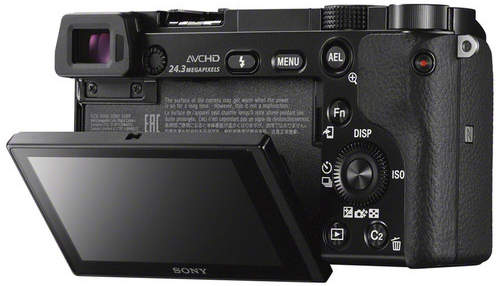
Another outstanding feature of this camera is its hybrid autofocus system. While it can’t compete with newer Sony cameras like the Sony Alpha a6400 or the Sony Alpha A6600, it’s still impressive in its own right. It works great during both stills and video shooting and has a useful face-detection subject tracking mode.
A few more fantastic features include a large electronic viewfinder, noise reduction technology, and built-in Wi-Fi. The Wi-Fi allows you to transfer photo and video files to your mobile devices instantly and is an excellent tool for travel photography.
Here’s an in-depth look at the key features and specs of the Sony Alpha a6000:
- Camera Type: Mirrorless
- Sensor: 24.3MP APS-C CMOS sensor
- ISO: 100 - 25,600 (expandable to 100 - 51,200)
- Lens Mount: Sony E Mount
- Speed: 11.0 fps
- Autofocus: 179 phase-detection points & 25 contrast-detection points
- Video: 1080p/60p, 1080p/30p, & 1080p/24p
- Size/Weight: 120 x 67 x 45 mm / 344 grams
- Battery Life: 360 shots
- Stabilization: No
- Touchscreen: No
Learn More:
Sony Alpha a6000 Mirrorless Digital Camera Review: Imaging Capabilities
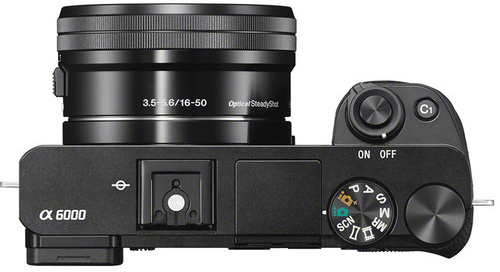
The Sony a6000 is the ideal camera to learn the basics of photography because of its easy-to-use exposure modes. The iAuto mode is designed for beginners and allows you to fire away shots without adjusting a single part of the exposure triangle (shutter speed, aperture, ISO).
Once you have more experience and want to keep improving your photography skills, Aperture Priority and Shutter Priority are two excellent semi-automatic modes. A fully manual mode and two other automatic modes (Superior Auto and Programmed AE) are also available.
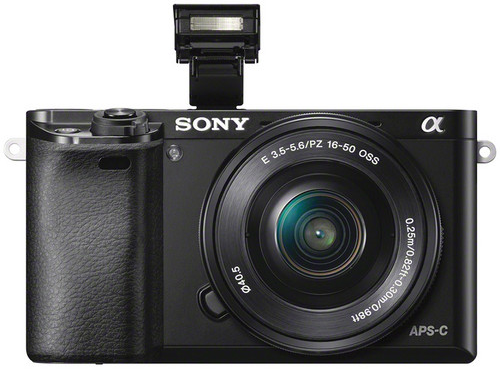
In addition, the built-in flash comes in handy for low-light photography, such as when shooting indoors or at night. The camera's wide ISO levels also help when working in low light conditions. Furthermore, you will love the redeye reduction flash mode if you are trying to capture people or animals at night.
Another area where the Sony a6000 excels is burst shooting. It can shoot continuously at three speeds, peaking at 11 frames per second. This is faster than most of today’s professional cameras, making it a terrific option for sports, wildlife, and action photography.
Sony Alpha a6000 Mirrorless Digital Camera Review: Video Capabilities
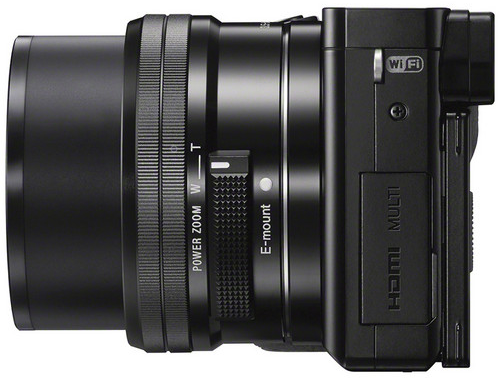
As a video camera, the Sony Alpha a6000 is just as impressive! Although it doesn’t have 4K video capabilities, its 1080p Full HD video quality is superb. When recording, you can choose between 24, 30, and 60p frame rates. If you don’t know much about video, I recommend sticking with 30p in most situations. Alternatively, 24p is a good option for filmmakers, and 60p is the best for creating slow-motion movies.
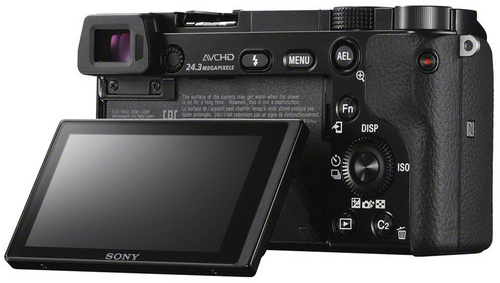
Using continuous autofocus and one of the camera’s three exposure peaking settings when filming is an excellent way to ensure your footage comes out in-focus and properly exposed. Moreover, you can adjust shutter speed, aperture, and ISO during recording. While you shouldn’t make a habit of this, it can help if the lighting changes unexpectedly.
Other notable video features of the a6000 are its tilting screen, an on/off audio recording setting, and natural-looking colors. The tilting screen, in particular, is a helpful feature, especially if you ever need to film at high or low angles.
Final Thoughts on the Sony Alpha a6000

Even though it’s old, the Sony Alpha a6000 is a powerful little camera. And whether you are a beginner, someone looking for an awesome travel camera, or somebody who wants a portable and inexpensive everyday camera, it’s a fantastic option!
I hope you learned a lot in this Sony a6000 review. And if you do end up purchasing an a6000, or any other Sony mirrorless camera for that matter, here’s a list of some of my favorite used Sony lenses currently in stock at MPB to pair with it:
- Sony E PZ 16-50mm f/3.5-5.6 OSS
- Sigma 16mm f/1.4 DC DN Contemporary - Sony E Fit
- Sony E 18-135mm f/3.5-5.6 OSS
- Sigma 35 mm f/2 DG DN Contemporary - Sony E Fit
- Sony E 10-18mm f/4 OSS
Learn More:
We Recommend
Sony Alpha a6500 vs Sony Alpha a6100: Which is Best?
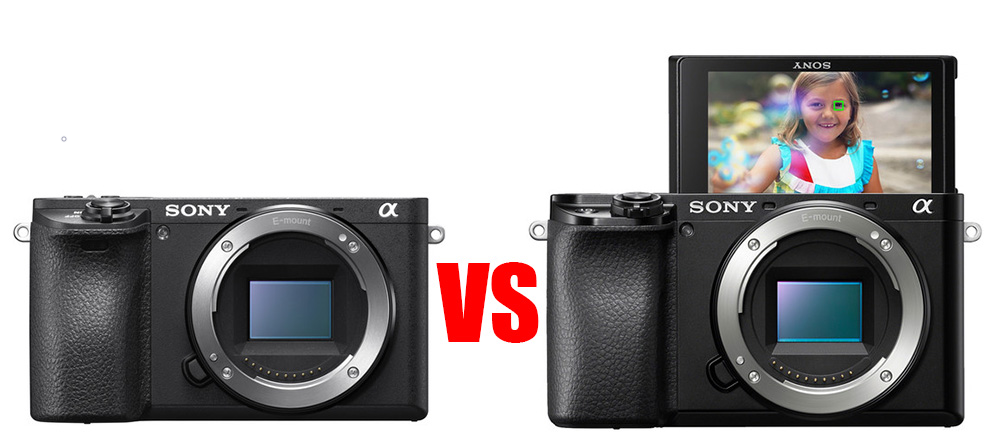
If you are on the hunt for a solid and affordable mirrorless camera and are considering the Sony Alpha a6500 and a6100, this article is for you. Below, we share the two cameras' signature specs and features, compare and contrast them, and tell you who will benefit most from shooting with each one.
The a6500 was launched in 2016 and was recently discontinued after the release of the a6600. Alternatively, the a6100 came out in 2019 but is temporarily out of stock due to the global chip shortage. With that information in mind, the best way to get your hands on one of these amazing Sony cameras is to buy used!
One incredible resource with heaps of used Sony Alpha a6500 cameras and used Sony Alpha a6100 cameras in stock and a place I have bought and sold countless photo and video gear throughout the years is MPB. They are a trustworthy and reliable online platform that sells used photo and video kit at unbeatable prices.
Additionally, every camera at MPB is meticulously hand-inspected by expert product specialists and backed by a six-month warranty, allowing you to make your purchases confidently and worry-free. Another fantastic feature of MPB is that you can trade in and sell your old camera equipment to help offset the cost of new-to-you gear you want and need.
Now, it’s time to jump in and learn everything you need to know about the Sony Alpha 6500 vs 6100.
Check out the video above by Arthur R for an in-depth look at the similarities and differences between all the cameras in Sony’s a6xxx lineup.
Table of Contents
- Sony a6500 vs a6100: Overview
- Sony a6500 vs a6100: Imaging Performance
- Sony a6500 vs a6100: Video Performance
- Final Thoughts on the Sony a6500 vs a6100
Sony a6500 vs a6100: Overview
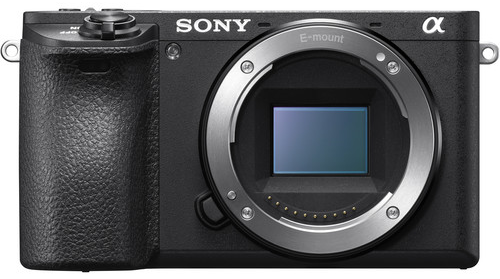
Sony Alpha a6500
For starters, both the Sony Alpha a6500 and a6100 are built around high-resolution 24.2-megapixel APS-C sensors and Bionz X image processors. When it was released, the a6500 was Sony’s flagship crop-sensor mirrorless camera (a title that now belongs to the a6600). On the other hand, the a6100 is an entry-level camera that replaced the popular Sony Alpha a6000.
The bodies of the two cameras are remarkably similar, and one of the only differences is that the a6500 is made entirely of metal instead of plastic. The metal construction and weather-proof sealant make the a6500 a durable camera ideal for outdoor and adventure photography. On the flip side, the a6100 is lighter and has a slightly smaller grip. These traits are ideal in an everyday camera and for beginners and children.
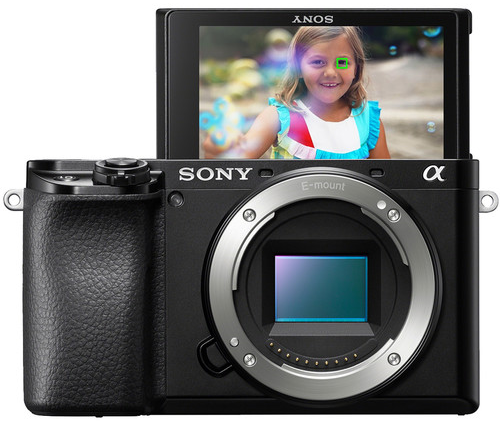
Sony Alpha a6100
Both the Sony Alpha a6500 and a6100 use the Sony E Mount lens system. Between the native APS-C E Fit lenses and the compatible full-frame FE fit lenses, there are over 60 lenses you can use on these two cameras. If you want to know our favorite Sony lenses to work with, continue reading until the end of the article.
Other noteworthy features these cameras share are their high-resolution electronic viewfinders (EVF), built-in Wi-Fi, and USB charging. The EVFs help compose your images, the Wi-Fi allows you to quickly transfer your content to your mobile devices, and the USB charging gives you the versatility to charge your camera no matter where you are.
Here’s an in-depth look at the key features and specs of the Sony Alpha a6500 vs a6100:
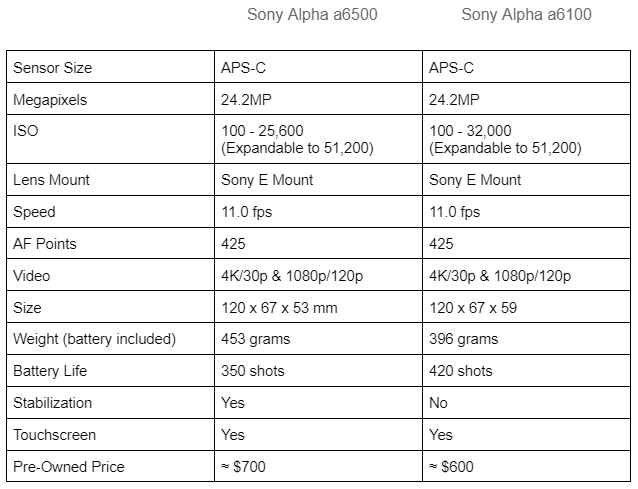
Sony a6500 vs a6100: Imaging Performance
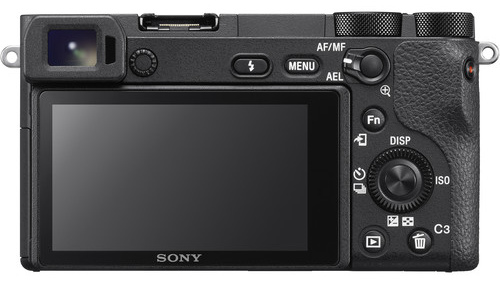
Sony Alpha a6500
As a stills camera, both the Sony Alpha a6500 and a6100 perform phenomenally well. I prefer shooting RAW images with all Sony cameras, which is true with the a6500 and a6100. RAW images have excellent dynamic range scores and are fantastic for editing in post-production using programs such as Adobe Lightroom and Photoshop.
One area where the a6100 has the upper hand is JPEGs. Sony’s out-of-the-camera colors have never been one of its strong points compared to other DSLR and mirrorless cameras, but the a6100s colors are better than ever thanks to a new update in the color algorithm. JPEGs captured on the a6100 are bolder and brighter than those taken on the a6500.
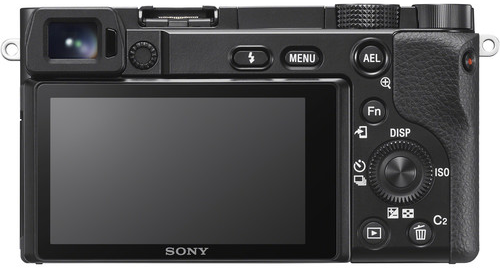
Sony Alpha a6100
A field where both cameras excel is continuous shooting (also referred to as burst shooting). They share the same maximum continuous shooting speed of 11.0 frames per second. That’s much higher than the industry standard and makes both Sony models good options for action, wildlife, and sports photography.
Beginners will also love Sony’s various automatic photo modes. Along with the best-in-class autofocus found on the two cameras, the automatic modes make it super easy to take sharp, in-focus images.
Winner: Tie
Learn More:
- Pre-Owned Camera Comparison: Sony a6400 vs a6600
- 4 Reasons Why the Sony A7R II is the Best Used Full Frame Camera From Sony
Sony a6500 vs a6100: Video Performance
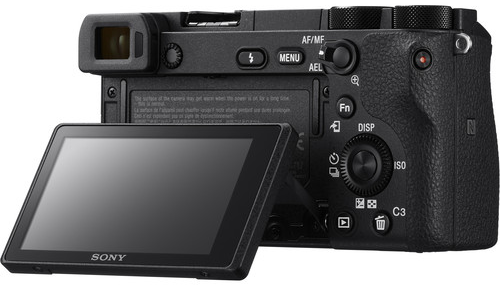
Sony Alpha a6500
Since both the Sony Alpha a6500 and a6100 are hybrid digital cameras, they also can record video. Starting with the similarities, both have impressively sharp UHD 4K video capabilities. They shoot 4K footage with a cinematic look at 24 frames per second (fps) or at the standard 30 fps.
Another similarity is that they boast in-camera fast and slow-motion modes. Slo-mo videos are filmed at 1080p/120p, look stunning straight from the camera, and save you time since you won’t have to manually slow down the content in post-production. Slow motion is a popular creative tool that looks great in films and social media.
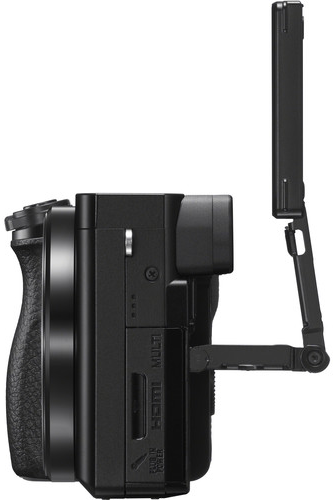
Sony Alpha a6100
The biggest difference between the two cameras is that the Sony Alpha a6500 has 5-Axis in-body image stabilization (IBIS). There are two primary benefits of IBIS. The first is that it boosts the camera's low-light performance, and the second is that it enables you to shoot handheld video with little to no camera shake. The value of IBIS cannot be overstated and is the main reason the Sony a6500 price is higher than the a6100.
One cool video feature of the a6100 is its innovative 180° flip-up screen. The touchscreen LCD lets you see yourself when looking at the camera and makes it easy to compose and center your scenes. This is a must-have feature for on-the-go travel vloggers and YouTubers who frequently speak into the camera.
Winner: Sony Alpha a6500
Final Thoughts on the Sony a6500 vs a6100
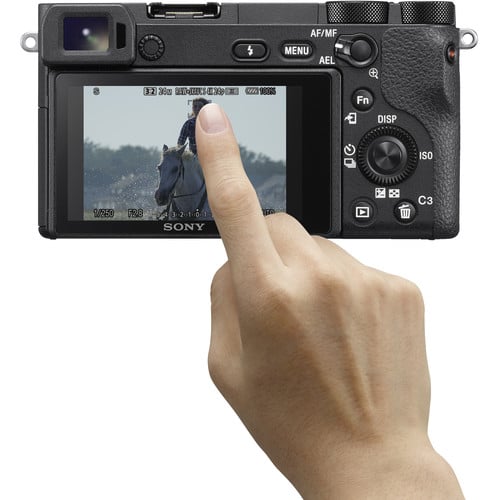
Sony Alpha a6500
Thanks for reading our Sony Alpha a6500 vs Sony Alpha a6600 camera comparison guide. We hope it has helped you in your search and that you are ready to pull the trigger and invest in your next camera!
However, if you are still unsure, here are our final recommendations. Landscape, outdoor, and adventure photographers should go with a Sony a6500 used camera. In contrast, people looking for a lighter and more portable camera for travel and everyday use will be better off purchasing a Sony a6100 used camera.
The a6500 is also a superior video camera and the better choice for most filmmakers and videographers. The one exception to that rule is YouTubers and vloggers. Thanks to the a6000’s flip-up screen, it’s perfect for recording selfie videos.
Lastly, here’s a list of our favorite Sony E Mount lenses for photo and video to pair with your new Sony Alpha a6500 or a6100. You can now find the lowest prices on all these lenses and more at MPB!
- Sony E 16-55mm f/2.8 G
- Sigma 24-70mm f/2.8 DG DN ART - Sony E Fit
- Sony E 70-350mm f/4.5-6.3 G OSS
- Sony E PZ 18-110mm f/4 G OSS
- Sigma 35mm f/1.4 DG DN ART - Sony E Fit
Learn More:
- Sony Mirrorless Camera Comparison: Which is Best for 2023?
- Four Reasons Why a Used Sony A7s III is a Great Idea in 2022
We Recommend
Sony Alpha a7 IV Review
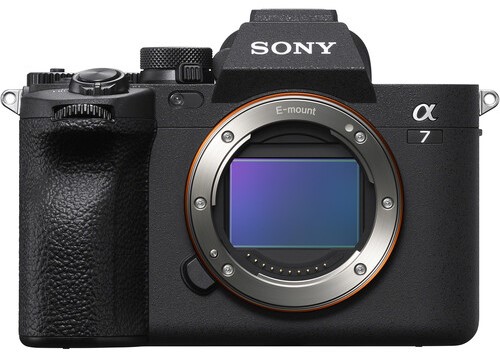
The Sony Alpha a7 IV is the newest digital camera in Sony’s incredibly popular a7 camera lineup. While the Sony Alpha a7R V is geared towards photographers and the Sony Alpha a7S III for videographers, the a7 IV is a hybrid camera designed for content creators who like to dabble in both photo and video.
This Sony Alpha a7 IV review shares the camera's photo and video capabilities, the must-own Sony FE Mount lenses to pair with it, who will see the best results working with it, and more. Additionally, thanks to innovative online platforms like MPB, buying a pre-owned Sony Alpha a7 IV has never been cheaper and easier than it is today.
MPB is a trustworthy and reliable online platform selling pre-owned photo and video gear at unbeatable prices. All their cameras and lenses are carefully hand-inspected by expert product specialists and backed by six-month warranties, allowing you to make your purchases confidently and worry-free.
We’ve been using MPBs online marketplace to buy, sell, and trade in camera equipment for years, and not once have we been disappointed. That’s why we proudly recommend their products and services to you today. Now, let’s jump in and learn more about the Sony Alpha a7 IV!
Check out the video above by Jason Morris for a hands-on review and to see how it stacks up against its competitors.
Table of Contents
- Sony Alpha a7 IV Review: Overview
- Sony Alpha a7 IV Review: Imaging Capabilities
- Sony Alpha a7 IV Review: Video Capabilities
- Recommended Lenses for the Sony Alpha a7 IV
- Final Thoughts on the Sony Alpha a7 IV
Sony Alpha a7 IV Review: Overview
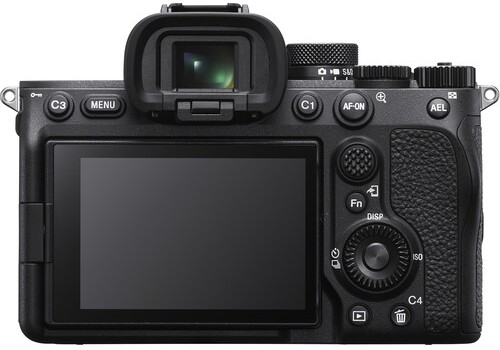
The Sony Alpha a7 IV is a mirrorless camera that was announced in the summer of 2021 and hit stores in December 2021. It replaced the Sony Alpha a7 III as Sony’s flagship all-around camera for professionals and enthusiasts.
A 33-megapixel full-frame sensor and a powerful Bionz XR image processing engine sit at its core. The duo combines to make the a7 IV the fastest and most responsive a7 camera yet. Autofocus performance and video quality are the areas where the improved speed is most noticeable.
Other strengths include a lightweight/compact body, a closeable shutter, and outstanding customization options. The portable body makes the a7 IV a fantastic camera for traveling and everyday use. The shutter cover protects the sensor when the camera is turned off. And the customizable controls allow you to set up the camera to best match your needs.
Now, here’s an in-depth look at the Sony Alpha a7 IV specs and key features:
- Camera Type: Mirrorless
- Sensor: 33.0MP Full-Frame BSI-CMOS Sensor
- ISO: 100 - 51,200 (expandable to 50 - 204,800)
- Lens Mount: Sony E Mount
- Speed: 10.0 fps
- Autofocus: 759 focus points
- Video: 4K/60p & 1080p/120p
- Size/Weight: 131 x 96 x 80 mm / 659 grams
- Battery Life: 580 shots
- Stabilization: Yes
- Touchscreen: Yes
- Live Streaming: Yes
- Sony a7 IV Release Date: 2021
- Sony a7 IV Price: $2,399
Sony Alpha a7 IV Review: Imaging Capabilities
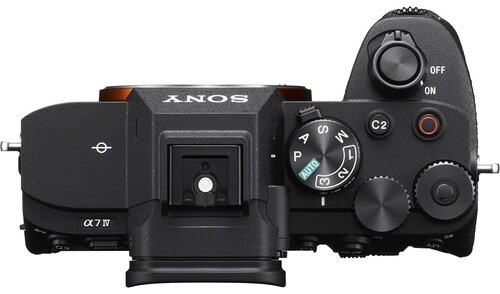
The 33MP still images shot on the Sony Alpha a7 IV have a significantly higher resolution than the 24.2MP photos captured by the previous a7 III and other Sony APS-C mirrorless cameras. This large difference in pixel count means more detail retention, better dynamic range, and sharper images. Professionals who need to print images regularly will notice a big difference, especially if the images need to be enlarged.
Another impressive imaging spec is the fast burst shooting. The a7 IV can shoot continuously at up to 10 frames per second (fps) using either the electronic or mechanical shutter. If you want to shoot uncompressed RAW files, the max speed is 6 fps. Also, the buffer is super deep and allows you to capture 828 images using a CFexpress Type A memory card.
More notable features include strong low-light performance, True HDR images, and vibrant colors. The low-light performance provides better results when shooting at night and indoors. True HDR images look more natural than JPEGS and RAW files. And a tweaked color algorithm improves out-of-the-camera colors, meaning you can spend less time editing.
Learn More:
Sony Alpha a7 IV Review: Video Capabilities
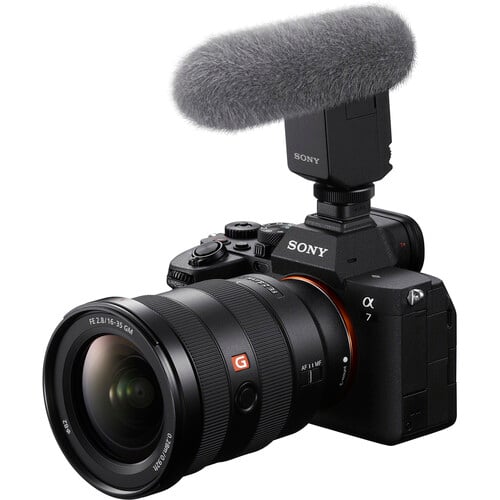
Switching the Sony Alpha a7 IV into video mode also yields great results. It has UHD 4K video capabilities and can capture 4K footage at 24p, 30p, and 60p frame rates. For vlogging and YouTube, we usually recommend shooting at 30p or 60p. However, if you are a filmmaker and want to create a cinematic look, opt for 24p.
Besides 4K, the a7 IV records stunning 1080p/120p Full HD slow-motion video in the camera. Most cameras still can’t capture slow motion, and if that’s the case, you will have to manually create slow-mo clips in post-production. So, content creators who want to jump on the slow-motion trend will save tons of time using this camera.
A few other highlight-worthy video features include in-body image stabilization (IBIS), advanced audio controls, and a fully-articulating screen. The IBIS further enhances low-light shooting and reduces camera shake. Advanced audio controls include headphone/microphone jacks and a multi-interface shoe. And the rotating screen is extremely useful for vloggers, YouTubers, and social media influencers.
Recommended Lenses for the Sony Alpha a7 IV
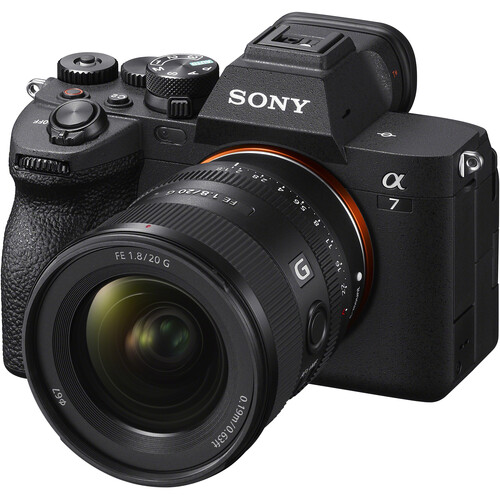
Here’s a quick list of the must-own Sony Alpha a7 IV lenses. They are listed by price in ascending order.
- Sony FE 20mm f/1.8 G
- Sony FE 90mm f/2.8 Macro G OSS
- Sony F2 50mm f/1.2 GM
- Sony FE 24-70mm f/2.8 GM II
- Sony FE 12-24mm f/2.8 GM
- Sony FE 70-200mm f/2.8 GM OSS II
Final Thoughts on the Sony Alpha a7 IV
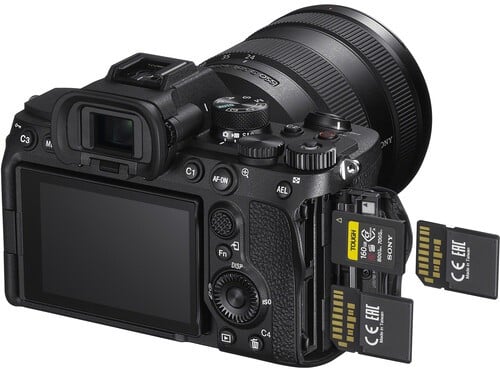
As you can see, the Sony Alpha a7 IV is a phenomenal camera and well worth the investment in 2023. Its combination of advanced photo and video features makes it an excellent choice for hybrid photographers who need to shoot photos and videos. It’s especially good for travel photography, wedding photography, and vlogging.
Thanks for taking the time to read our entire article, and we hope it has helped you come closer to deciding on your next camera. Still uncertain? No, worries! Check out the list below to compare the a7 IV with other popular Sony full-frame mirrorless cameras. You can get great deals on all of them and more at MPB!
Learn More:
- A Beginner’s Guide to Sony E Mount Mirrorless Cameras
- Three Sony Cinema Camera Options for Any Budget
We Recommend
Sony Alpha ZV-E10 Review
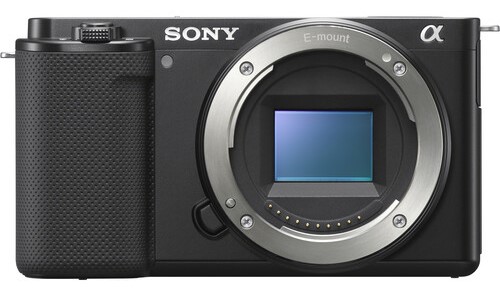
If you are a photographer or videographer looking for a small, powerful mirrorless camera, look no further than the Sony Alpha ZV-E10. It’s a one-of-a-kind interchangeable lens digital camera jam-packed with modern features and is perfect for beginner and intermediate content creators.
In this Sony Alpha ZV-E10 review, we share an overview of the camera's key specs and features and how it stacks up against the competition when capturing photos and videos. Moreover, thanks to innovative online platforms like MPB, buying a used Sony E mirrorless camera has never been cheaper and easier than it is today.
MPB is a trustworthy and reliable online platform selling used photo and video gear at unbeatable prices. All their cameras and lenses are carefully hand-inspected by knowledgeable product specialists and backed by six-month warranties, allowing you to make your purchases confidently and worry-free.
We have bought, sold, and traded photography equipment using MPB’s online platform for years, and not once have we been disappointed with their products or services. That’s why we want to recommend them to you today. With that said, let’s dive in and learn everything there is to know about the Sony ZV-E10!
Check out the video above by Cannon Hiniker to find out if it’s still worth buying the Sony Alpha ZV-E10 in 2023.
Table of Contents
- Sony Alpha ZV-E10 Review: Overview
- Sony Alpha ZV-E10 Review: Imaging Capabilities
- Sony Alpha ZV-E10 Review: Video Capabilities
- Recommended Lenses for the Sony ZV-E10
- Final Thoughts on the Sony ZV-E10
Sony Alpha ZV-E10 Review: Overview
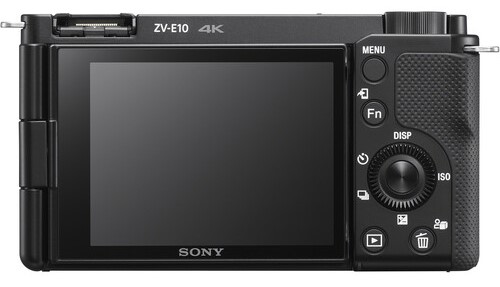
The Sony Alpha ZV-E10 is the newest crop-sensor camera in Sony’s APS-C lineup. It debuted in the summer of 2021 and has been flying off shelves ever since. A high-resolution 24.3-megapixel sensor and an upgraded Bionz X image processing engine are at the camera's core.
It combines the best features of the Sony Alpha a6100 with those of the point-and-shoot Sony ZV-1, and the result is an ultra-compact mirrorless camera ideal for hybrid shooters. One fully-charged battery can shoot approximately 440 still images or record 80 minutes of video. And when you run out of power, you can quickly and easily charge the camera via USB.
Another cool thing about the EV-10 is it comes in two different colors – black and white! It’s the only Sony camera in production today with two unique color options. Now, here’s an in-depth look at the key features and specs of the Sony Alpha ZV-E10:
- Camera Type: Mirrorless
- Sensor: 24.3MP APS-C CMOS Sensor
- ISO: 100 - 32,000 (expandable to 50 - 51,200)
- Lens Mount: Sony E Mount
- Speed: 11.0 fps
- Autofocus: 425 focus points
- Video: 4K/30p & 1080p/120p
- Size/Weight: 115 x 64 x 45 mm / 612 grams
- Battery Life: 440 shots
- Stabilization: No
- Touchscreen: Yes
Sony Alpha ZV-E10 Review: Imaging Capabilities
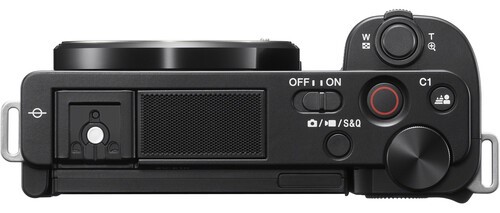
Regarding still photography, the Sony Alpha ZV-E10 boasts the same impressive image sensor as previous Sony APS-Cameras, like the flagship Sony Alpha a6600. The sensor consistently delivers sharp and detailed photos, whether you shoot JPEG or RAW images.
Additionally, Sony updated the color science of the ZV-E10, leading to brighter and more natural-looking colors compared to older models like the Sony Alpha a6500. The “Soft Skin” effect is also a cool tool. It can be toggled between off, low, medium, and high and is great for taking portraits.
A few more imaging features we love are the background defocus button, reliable autofocus, and fast burst shooting. The defocus button makes it easy to create beautiful bokeh effects. The Autofocus has 425 phase-detection points and is both fast and accurate. And the max continuous shooting speed of 11 fps is good for action and sports photography.
Learn More:
- A Beginner’s Guide to Sony E Mount Mirrorless Cameras
- Which Sony Compact Camera is Best for Travel Photography?
Sony Alpha ZV-E10 Review: Video Capabilities
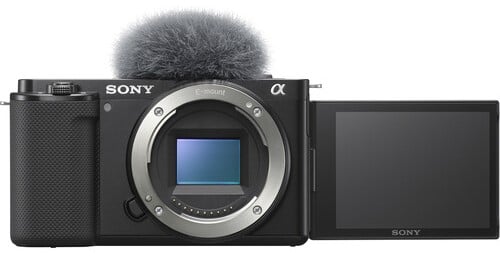
While the Sony Alpha ZV-E10 is a capable stills camera, where it really excels is as a video camera. When Sony designed the ZV-E10, they specifically wanted to target entry-level video shooters, so they loaded it with beginner-friendly video features, including 4K video capabilities. It captures uncropped 4K/24p video and cropped 4K/30p footage.
On top of that, it records buttery smooth 1080p/120p Full HD slow-motion video directly in the camera. If you are a fan of slow-mo (and, honestly, who isn’t!), this will save you tons of time during the post-production process. Also, a built-in 3-directional microphone with a windscreen and headphone/microphone jacks improve audio quality.
Other fantastic video features include a fully-articulating screen, livestreaming capabilities, vertical video, and electronic shake-reduction technology. An articulating screen is a must-have feature for vloggers. It can live stream to websites like YouTube and Twitch. Vertical video is perfect for social media platforms like Instagram. And the shake reduction stabilization reduces camera shake and boosts video quality.
Recommended Lenses for the Sony ZV-E10
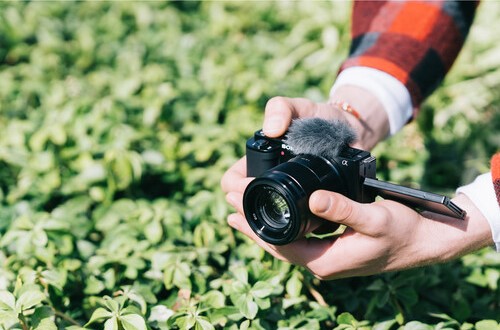
One important thing to consider before buying a new interchangeable lens camera is – what is the lens selection for this camera like. And you will be stoked to hear that the Sony Alpha ZV-E10 has many excellent native lenses.
The ZV-E10 uses the Sony E lens mount system and is compatible with both APS-C E fit lenses and Full-Frame FE fit lenses. However, since the ZV-E10 is an APS-C camera, we’ve only recommended E-fit lenses designed explicitly for crop-sensor mirrorless cameras in this review.
- Sigma 24-70mm f/2.8 DG DN ART - Sony E Fit
- Sony E 70-350mm f/4.5-6.3 G OSS
- Sigma 35mm f/1.4 DG DN ART - Sony E Fit
- Sony E PZ 10-20mm f/4 G
- Sony E PZ 18-105mm f/4 G OSS
Final Thoughts on the Sony ZV-E10
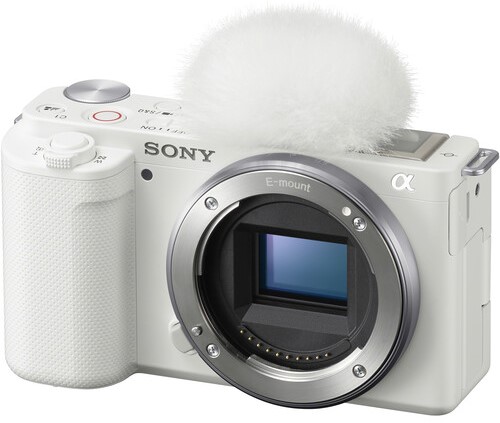
As you can see, the Sony Alpha ZV-E10 has much to offer in terms of photography and video performance. Currently, it’s one of the most popular mirrorless cameras on the market, particularly for vlogging and social media.
If you aren’t sure the ZV-E10 is the right camera for your needs but know you want a Sony camera, check out the options below. There are both APS-C and Full-Frame cameras to choose from. Best of all, you can purchase them all now at MPB!
Sony APS-C Mirrorless Cameras
Sony Full-Frame Mirrorless Cameras
Learn More:
- Sony Alpha a6500 vs Sony Alpha a6100: Which is Best?
- Sony Mirrorless Camera Comparison: Which is Best for 2023?
We Recommend
Sony Camera Shopping Guide
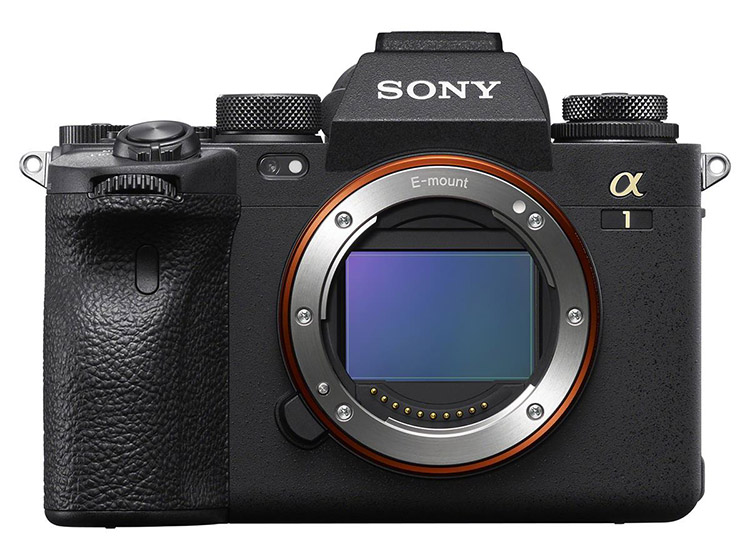
The Sony camera lineup is arguably better than it has ever been.
With entry-level options like the Sony ZV-1, professional models like the Sony a1, and loads of options in between for enthusiast photographers, there truly is a Sony camera for everyone.
If you're ready to upgrade your camera and want a Sony, use this shopping guide to help you narrow down the possibilities.
Each camera on this list has distinct pros and cons, so we'll discuss those along with the essential features these cameras offer as a means of helping you make the best decision for your needs.
Let's get started and find the best Sony camera for you!
Sony Camera Shopping Guide: Sony ZV-1
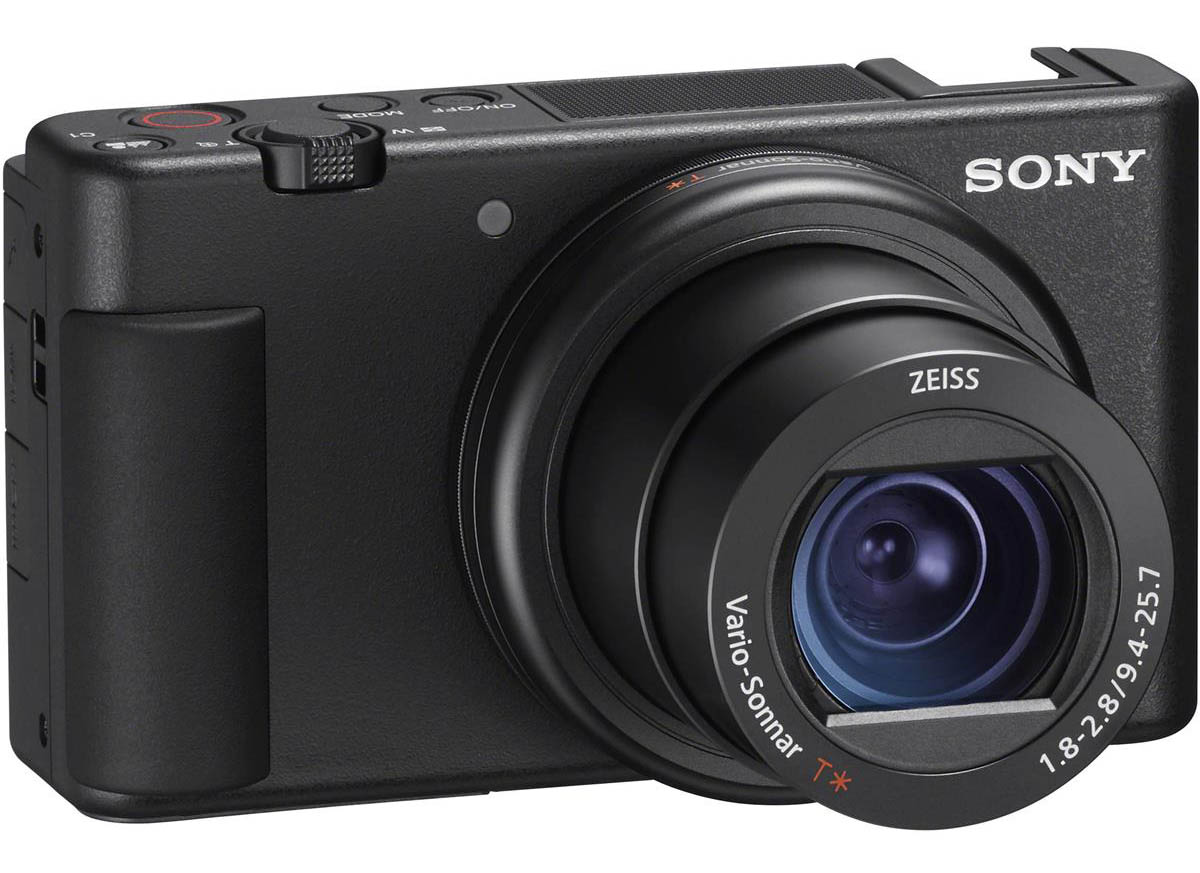
One of the newest members of the Sony camera family is also one of the most affordable.
The Sony ZV-1 was designed with videographers in mind, so if you fancy yourself a videophile, this might be a nice budget-friendly camera for you.
This little guy offers 4K video at up to 30fps and if you want slow-motion video, you can do that in full HD at up to 120fps. Add in a directional microphone, a rotating LCD for seeing yourself as you film, and compatibility with all Bluetooth grips, and you have the makings of a fantastic camera for shooting video.
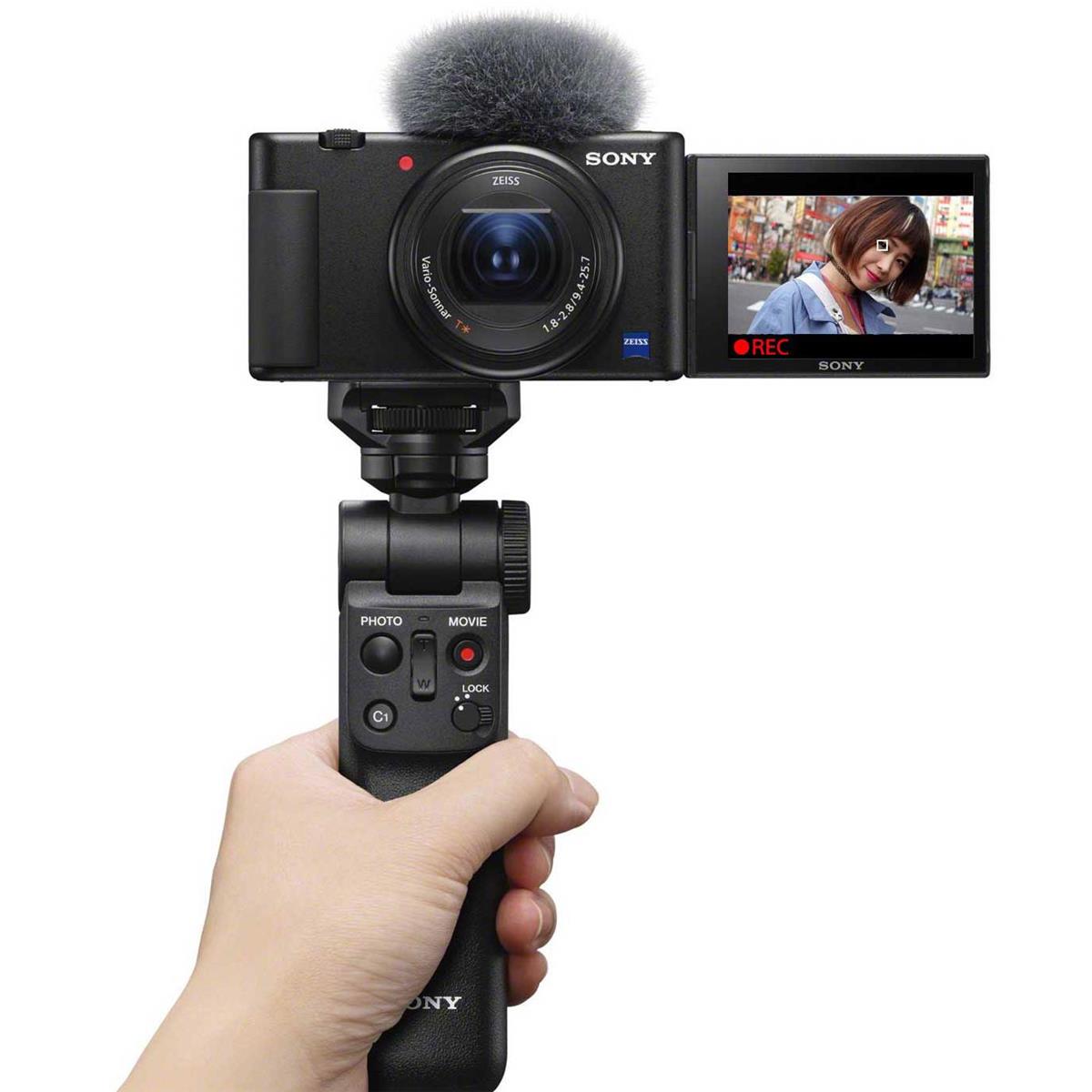
But, this isn't just a great camera for video.
Instead, this Sony camera has a 20MP sensor with focus tracking for eyes, faces, and other subjects, so you can capture pin-sharp images, even if the subject you're photographing is on the move.
This camera also has image stabilization, smart auto exposure, and a multi-interface shoe for connecting all sorts of accessories. And that's just the start!
Learn more about the Sony ZV-1
Sony ZV-1 Vlogger Kit
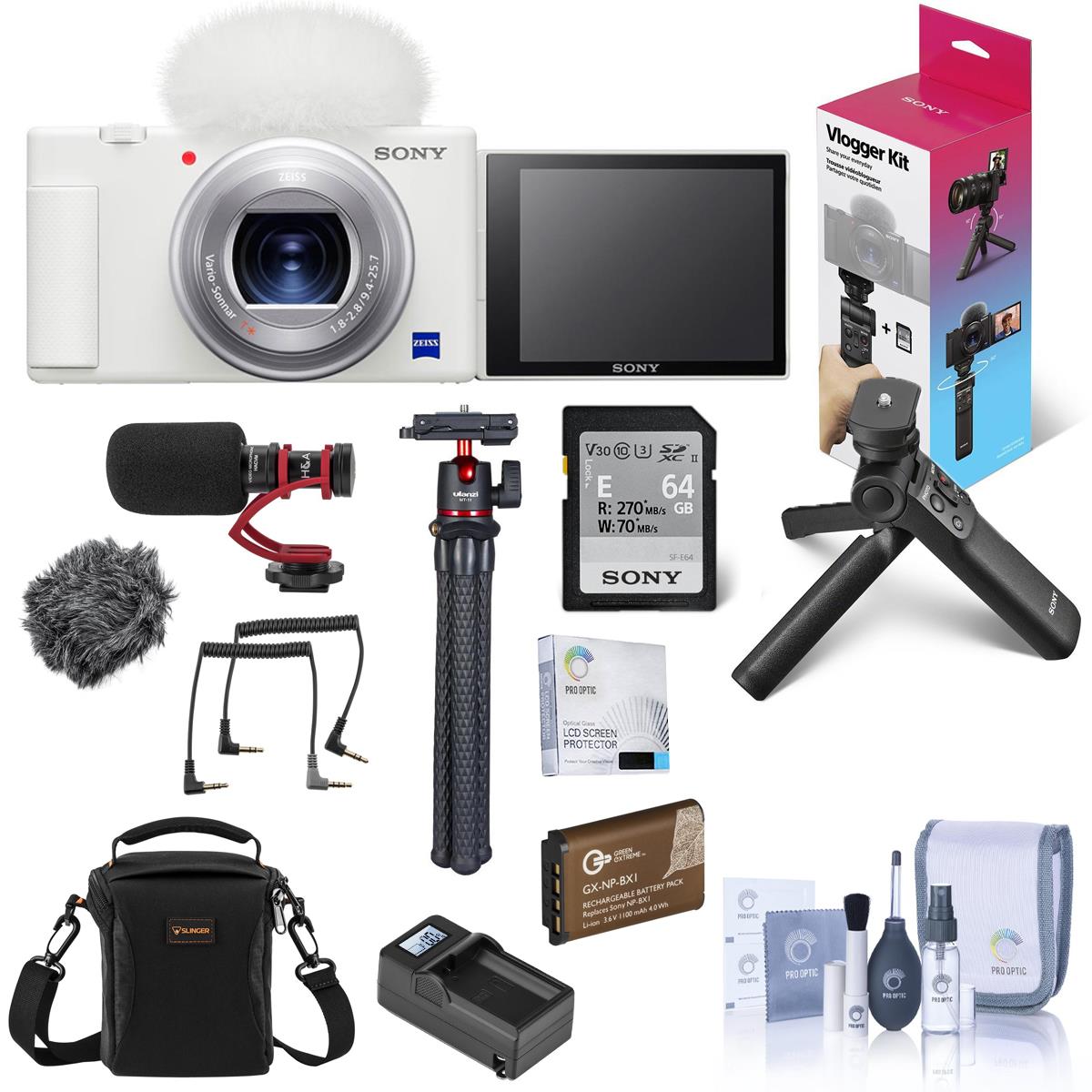
If your goal is to become a vlogger, then the ZV-1 Vlogger Kit has everything you need!
In addition to all the excellent video features that this Sony camera offers, this kit comes with a host of accessories that will make vlogging easier:
- Ulanzi Octopus Tripod with Ball Head
- Screen Protector
- Rechargeable Battery Pack (NP-BX1)
- Wind Screen Adapter
- Sony ACCVC1 Vlogger Accessory Kit with Shooting Grip and 64GB UHS-II SD Card
- Green Extreme NP-BX1 Battery
- ProOptic Cleaning Kit
- Micro USB Cable
- H&A VideoMini On-Camera Microphone
- Slinger Shoulder Bag
- Compact Charger
In other words, from audio to video to cleaning the camera, you get everything you need to kickstart your YouTube channel!
Learn more about the Sony ZV-1 Vlogger Kit
Sony Camera Shopping Guide: Sony RX100 VII
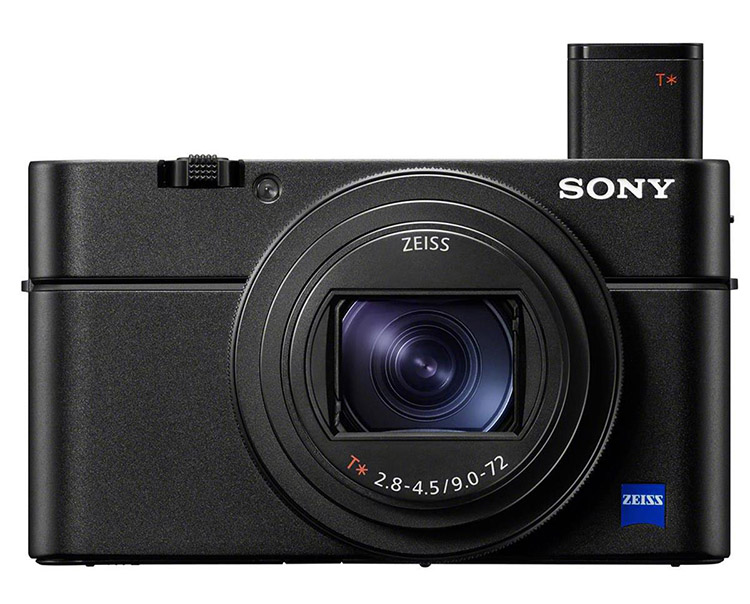
When you think of compact cameras, you might not think of something that packs as much of a punch as the Sony RX100 VII.
Despite its tiny size, this camera has a 20.1MP sensor, a 24-200mm equivalent f/2.8-4.5 lens, continuous shooting at up to 20fps, and a lightning-fast autofocus system that acquires focus on the subject in just 0.02 seconds. In fact, this little guy has one of the fastest autofocus systems on the market.
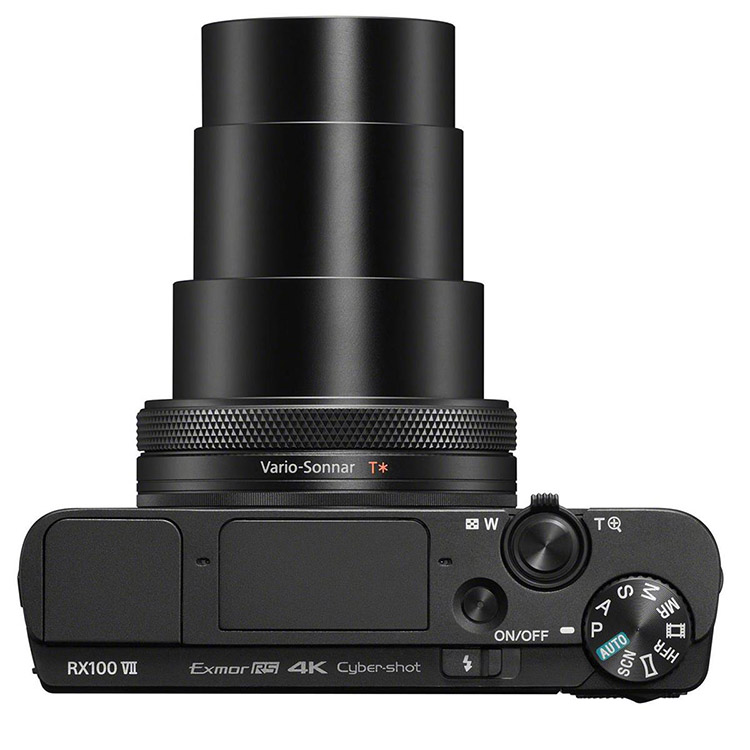
In addition to all those features, the RX VII has a touch-enabled LCD screen that folds up 180 degrees and down 90 degrees to help you get high-angle and low-angle photos and videos.
There's also a 2.36-million-dot OLED electronic viewfinder that pops up to give you another means of framing up beautiful shots.
This Sony camera weighs just 0.67 pounds and measures 4.02 x 2.28 x 1.69 inches, so it is certainly designed to be a powerful, yet easily portable camera that can slide into your pocket.
Learn more about the Sony RX100 VII
Sony a6600
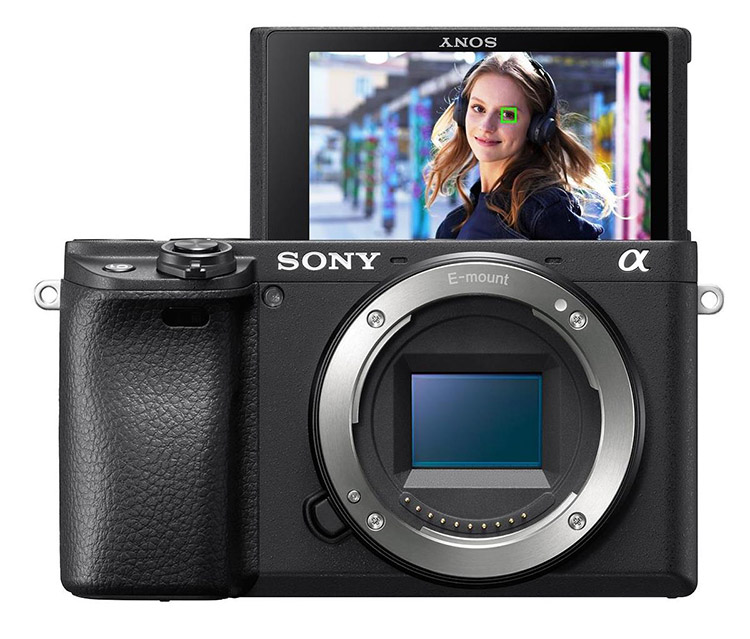
If you want a camera with a compact body and a budget friendly price, but don't want something as small as the RX100 VII, the Sony a6600 is a great option.
Packing a 24.2MP sensor, a BionZ X processor, and an ISO range of 100 to 32000, this Sony camera gives you excellent image quality and low-light shooting capabilities.
When shooting in low light (or any situation in which you're holding the camera), you can get improved results because of the a6600's 5-axis image stabilization system.
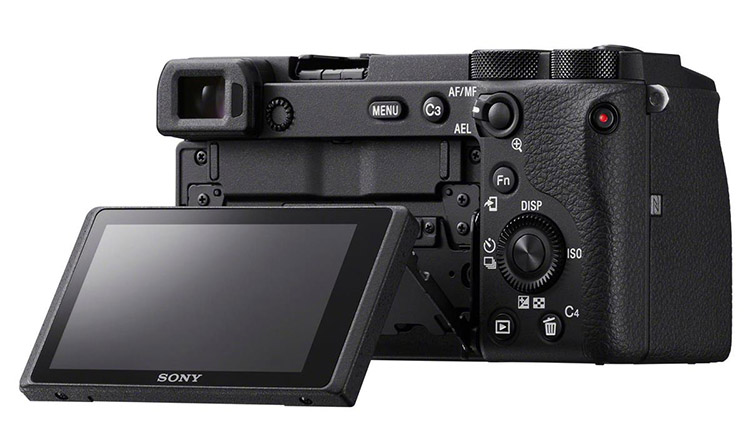
If you typically photograph fast-moving subjects, this camera can hold its own with up to 11fps burst shooting speed. Combined with an autofocus system that has 425 phase-detect and 425 contrast-detect AF points, you have a system that gives you a fast and reliable autofocus experience. In fact, it's the same autofocus system that's in the RX100 VII, so it acquires subjects in just 0.02 seconds.
At 1.11 pounds, this camera is certainly bigger than the RX100 VII, but it still only measures 4.72 x 2.64 x 2.72 inches. The small body is still portable, but with a bigger grip and larger buttons, it's better suited to photographers with larger hands.
This isn't just a good Sony camera for photographers, though - it offers 4K UHD video at up to 30p and full HD at up to 120p.
Learn more about the Sony a6600
Sony Camera Shopping Guide: Sony a7 IV
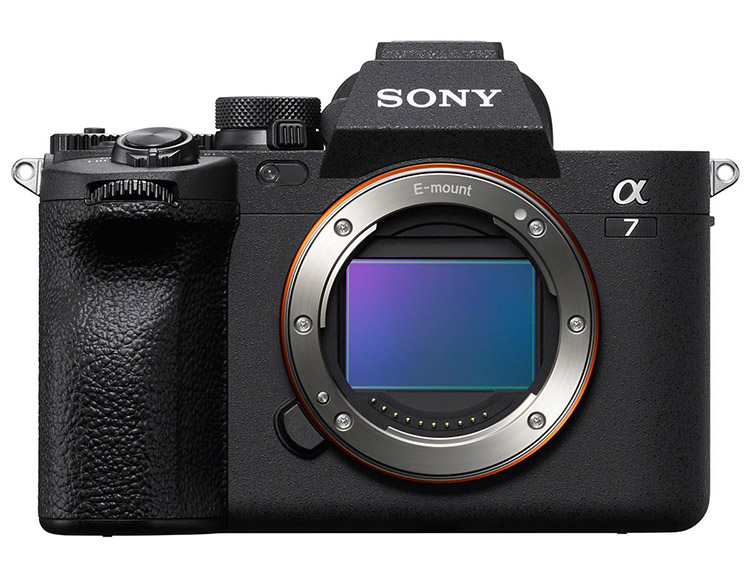
This is a full frame Sony camera with a 33MP Exmor R back-illuminated sensor.
This sensor is regarded as offering excellent image quality as well as superb speed - Sony used copper wiring that helps boost transmission speeds, including faster readout of 4K videos.
Speaking of videos, the a7 IV can accommodate 4K video at up to 60p. The footage can be edited to slow motion when rendered at 24p or 30p in post-production. You can also get 30p full pixel readout without any binning with 7K oversampling. In other words, you can shoot highly detailed, beautiful video with this camera!
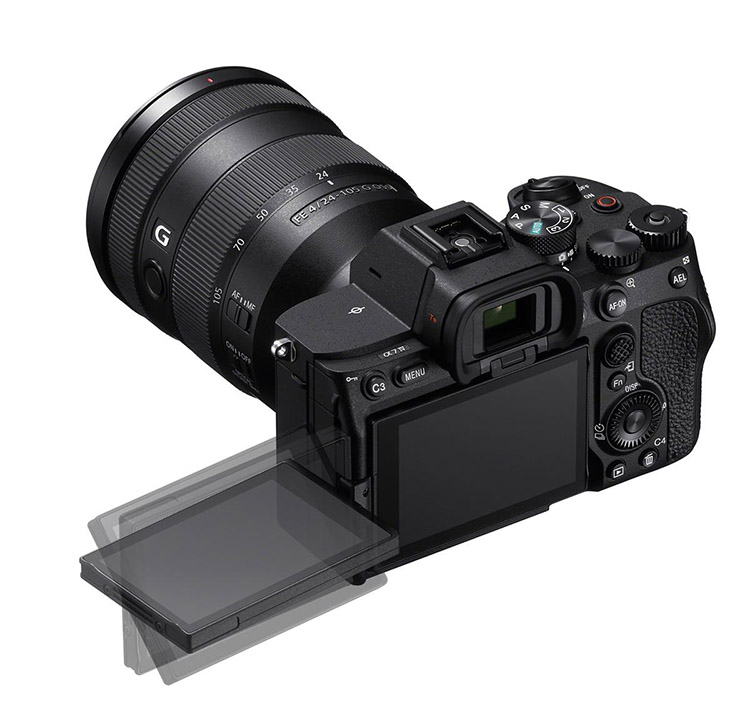
The aforementioned Exmor R sensor also gives you excellent dynamic range with more than 15 stops, improved autofocus speed, and excellent color reproduction.
The BIONZ XR processing engine in this Sony camera enables incredible autofocus performance that includes Real-time Eye AF and Real-time tracking with improved face detection. This is an excellent feature if you want to pursue action photography like sports or wildlife.
Add in the ability to use this camera as a webcam, image stabilization, focus mapping, and other high-end features, and you have the makings of a highly-capable camera for photographers and videographers alike.
Learn more about the Sony a7 IV
Sony a7s III
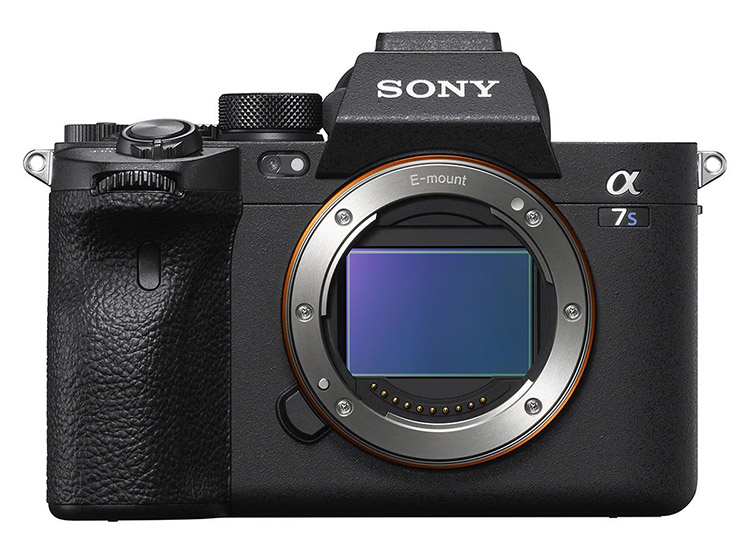
The Sony a7S III is yet another fine Sony camera with loads of possibilities for photographers and videographers.
This is one of the newer cameras on this list and sports modern features that make it an all-around nice selection. This includes a 12MP BSI CMOS sensor, an ISO range of 80-102,400 and an EVF with 9.44 million dots of resolution.
There are many other impressive specs as well...
You get 5-axis image stabilization, a 3-inch fully articulating LCD screen, Wi-Fi, and Bluetooth, all in a 1.35-pound body.
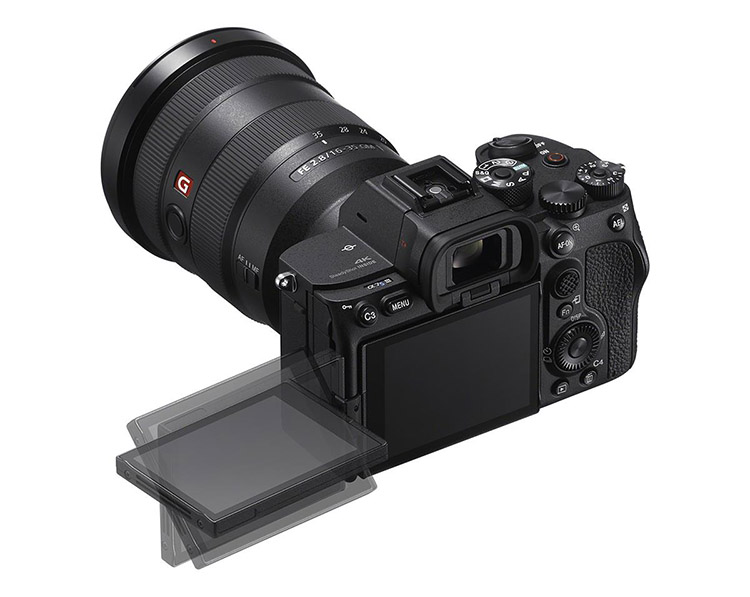
Where this camera really shines is in its video capabilities.
You can shoot 4K video at up to 120p. There is a small 1.1x crop when shooting 4K at 120p, but there is no crop in 60p.
You can also shoot slow-motion video at up to 240fps in full HD. You get the option of 16-bit Raw video output at up to 60p too.
Learn more about the Sony a7S III
Sony Camera Shopping Guide: Sony a7R IV
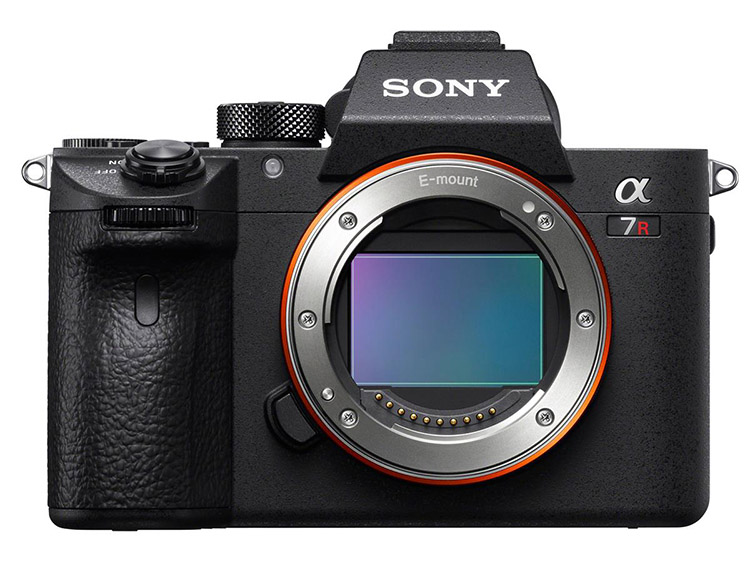
As one of the higher-end cameras on this list, the Sony a7R IV is probably something that only enthusiast and pro photographers should consider.
In terms of sensor resolution, this camera kills the competition with a 61MP full frame CMOS sensor.
Paired with that is a 567-point autofocus system, which is, as you'd expect, very fast.
This is a bigger camera than most on this list, but is still only the size of a small DSLR. That small body has top-shelf weather sealing to make it a great option for landscape photographers that encounter difficult weather situations.
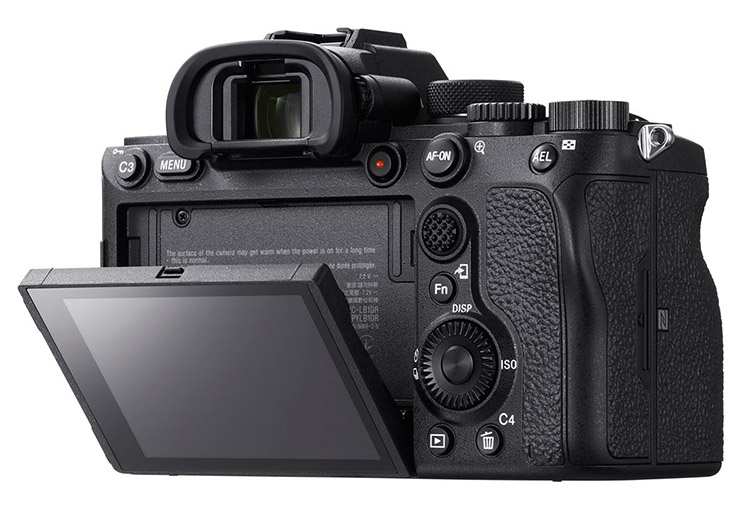
You can shoot video at up to 30p in 4K, which isn't as good as some of the other options on this list, but is still certainly respectable.
But make no mistake - this is a camera for photographers, not videographers.
It has 5-axis image stabilization, a 3-inch touchscreen LCD, a 5.76-million-dot OLED EVF, 10fps burst shooting, Wi-Fi, and Bluetooth to make the job of capturing beautiful images that much easier.
And with a lifespan of 250,000 actuations, it's a camera that you can depend on for a very long time!
Learn more about the Sony a7R IV
Sony a9 II
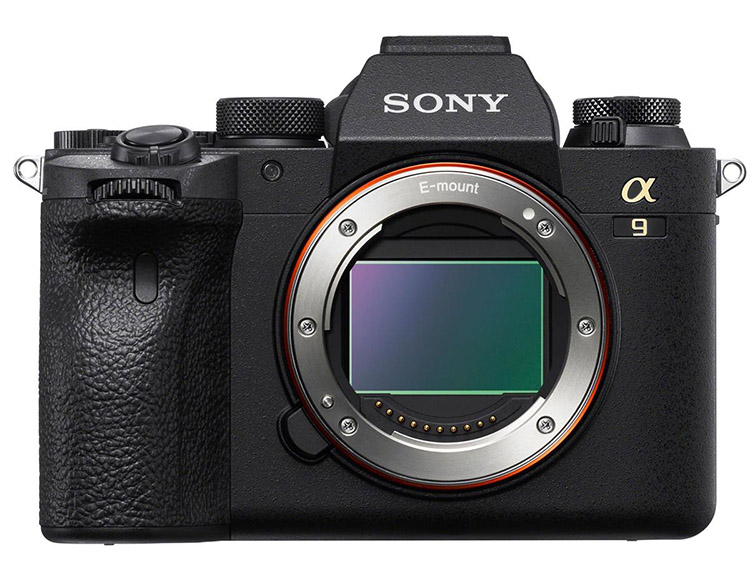
Another high-end Sony camera option you might consider is the a9 II.
This camera debuted in 2019 and quickly won acclaim for its lightning-fast 20fps burst shooting capabilities. With that kind of speed, sports and wildlife photographers love this camera.
Of course, there's lots more to love about it...
It has a 24.2MP full frame sensor, 5-axis image stabilization, weatherproofing, a 693-point phase detection autofocus system, and an ISO range of 100-51,200.
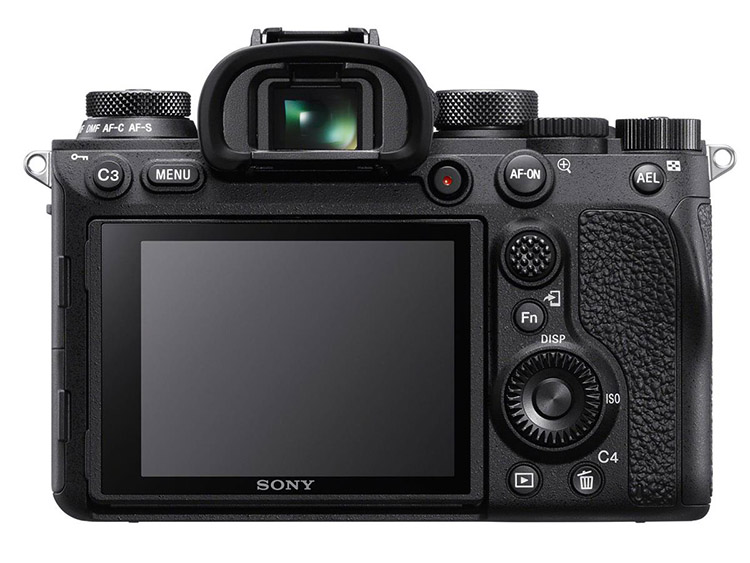
The a9 II also comes with 4K video at 30fps or 1080 HD video at 120fps.
On back is a 3-inch tilting touchscreen and a 3.69-million-dot electronic viewfinder, while under the hood is Bluetooth and Wi-Fi capability, a 500-shot battery life, and a BIONZ X Image processor.
Add in real-time tracking, anti-flicker shooting, and silent shooting for good measure as well!
Learn more about the Sony a9 II
Sony Camera Shopping Guide: Sony a1

At the top of the heap in terms of features is the Sony a1 camera - the brand's new flagship.
The list of specs and features with this camera is long and distinguished...
It has a 50.1MP full frame stacked EXMOR RS Sensor with integral memory. Paired with that is a next-generation BIONZ XR image processing engine.
All that power means that this camera can accommodate 50.1MP RAW and JPEG shooting at up to 30fps. It does so with 120 AF/AE calculations per second.
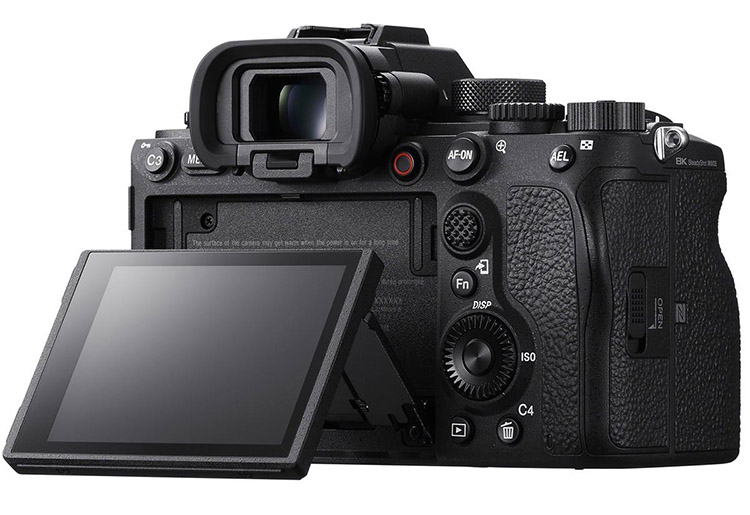
Other features include blackout-free shooting at up to 30fps, a 9.44-million-dot QXGA OLED EVF, and the world's first anti-flicker mechanical and electronic shutter.
Additionally, the a1sports a dual-drive mechanical shutter, anti-distortion electronic shutter, at 8K video at 30p in 10-bit 4:2:0 format
If you're looking for a Sony camera that pulls every punch, this is it!
What About Sony Lenses?
Of course, a camera body on its own won't do you much good, so you'll need to think about what glass you want to add to your camera.
There are obviously loads of choices here, from primes to zooms, wide-angle to telephoto.
And while it would be nice to have one of everything, very few people have an unlimited budget.
With that in mind, I've got two lens recommendations, both of which I've found to be highly functional and versatile.
Sony FE 35mm f/1.8 E-Mount Full Frame Lens
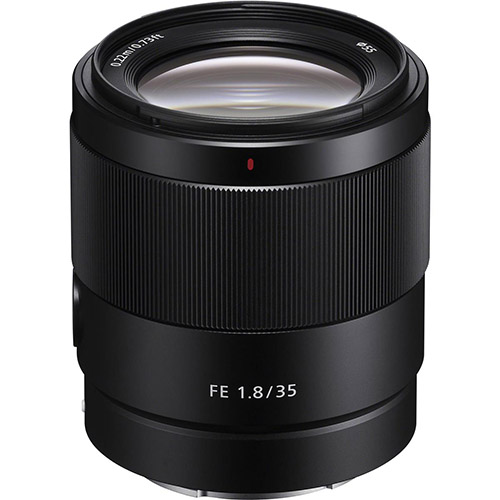
At f/1.8, this lens offers a nice, big aperture without having to pay the price of an f/.1.4 or f/1.2 lens.
The 35mm focal length is a nice standard length lens that offers good flexibility for photographing all sorts of subjects from landscapes to portraits.
It has a 9-blade aperture that gives you nice bokeh for portraits while the aspherical elements inside minimize aberration to give you beautiful, clean images.
With a compact build, dust and moisture resistance, and a low price, this lens should be on your radar whether you're a beginner, enthusiast, or professional photographer.
Learn more about the Sony FE 35mm f/1.8
Sony FE 24-240mm F/3.5-6.3 OSS E-Mount Camera Lens
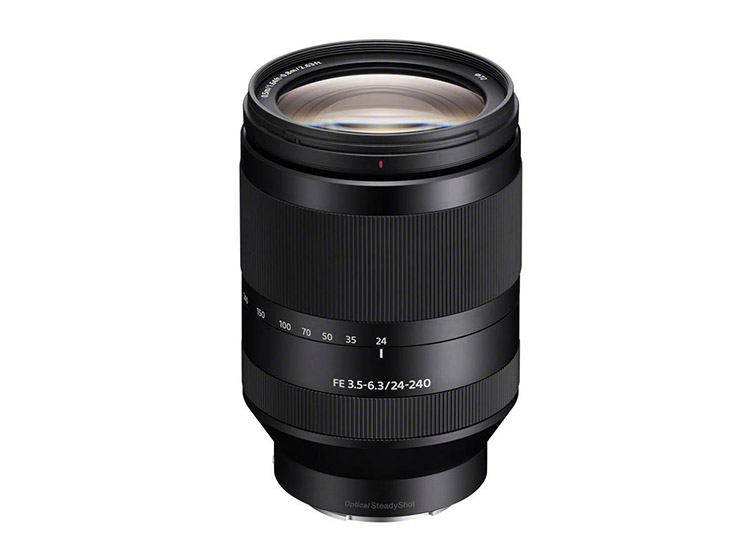
If you want a lens for your Sony camera that has all kinds of versatility, it's hard to go wrong with the Sony FE 24-240mm f/3.5-5.6 OSS.
With one lens, you can shoot wide-angle to super telephoto, which makes it a perfect option for landscapes, nature and wildlife photography, sports, and travel photography, to name a few.
The lens features five aspherical elements and one ED glass element, which gives you excellent image quality. The advanced linear motor makes focusing a quick and smooth process no matter the focal length.
Since this is an OSS lens, you can worry less about low-light images and hand-holding the camera, too. With dust and weather resistance built in, this lens is ready to go wherever you do!
Learn more about the Sony FE 24-240mm f/3.5-6.3 OSS
We Recommend
Sony Cyber-Shot RX1 Review
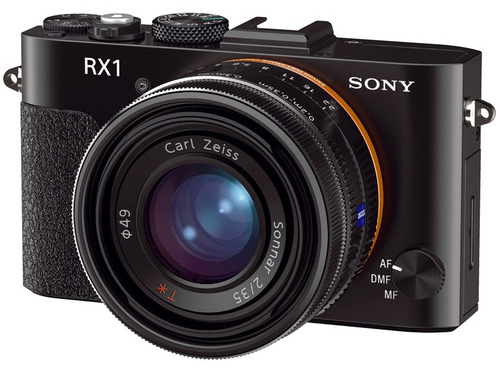
The Sony RX1 was a huge freaking deal when it first came out in 2012. It cost thousands and thousands of dollars and was the world’s smallest digital full frame camera at the time. Suffice to say, amateur photographers could not use this camera.
But, it’s been almost a decade and the Sony RX1 is finally in a more reasonable price range for photographers who might not have a huge budget for a new-to-them camera. The problem is deciding whether its features are worth its price in 2021.
In this Sony RX1 review, I’m going to walk you through the Sony RX1 design, all of the Sony RX1 features, and I’ll ultimately let you decide whether this camera is worth the risk so many years later.
Sony RX1 Specs
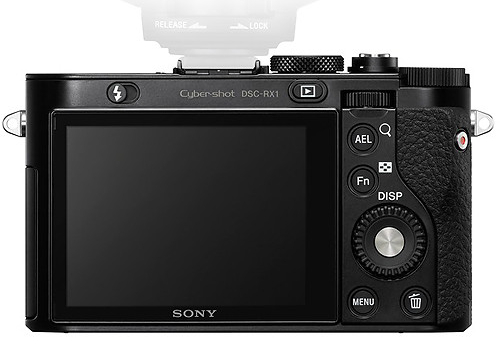
A lot of the Sony RX1 specs have remained pleasantly modern even after all this time. The camera features a 24MP sensor, which is paired with a Carl Zeiss Sonnar 35mm f/2 lens. Even though it was created a decade ago, it is still really small for a digital full frame camera.
It weighs just over 17 ounces and is almost able to fit into your pocket.
It obviously can’t shoot 4K video, but it can shoot Full HD video at up to 60p.
It features an ISO range of 100-25,600, which rivals far more modern cameras.
Depending upon what you’re planning on using this camera for, its screen may be a little bit debilitating, since it is fixed. However, its screen size of 3” and its screen resolution of 1.22m-dots still seem like pretty modern options.
The Sony RX1 does come with a built-in flash and it features a 5fps burst mode. While this burst mode isn’t going to be enough for sports photographers or wildlife photographers, it is definitely sufficient for portrait or event photographers.
Other Sony RX1 Specs Include:
- 24MP sensor
- ISO range of 100-25,600
- 5fps burst mode
- Full HD video capabilities at up to 60p
- Fixed 35mm equiv. lens
- 25-point AF system
- Built-in flash
- 3” LCD screen with 1.22m-dots
- 17.6 oz
- 270-shot battery life
Sony RX1 Body & Design
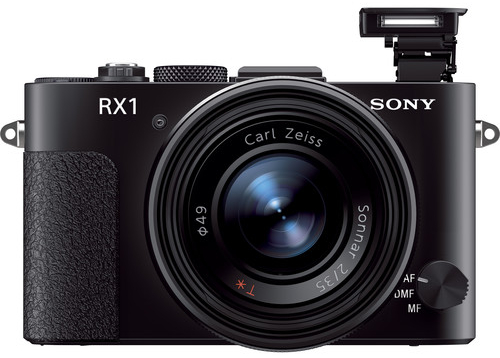
The Sony RX1 measures 4.5” x 2.6” x 2.8” and weighs 17.6 oz. So, you can easily fit it into your coat pocket for on the go shooting.
It is made out of magnesium alloy, which means that the camera feels really sturdy in your hand while maintaining a light weight. The thumb rest and grip is made out of a rubber material.
The camera comes with a movie mode button, a 4-way control dial on the rear of the camera, a mode dial, and a shutter button.
The built-in flash that I mentioned above is a pop-up flash.
Learn More:
Sony RX1 Build & Handling
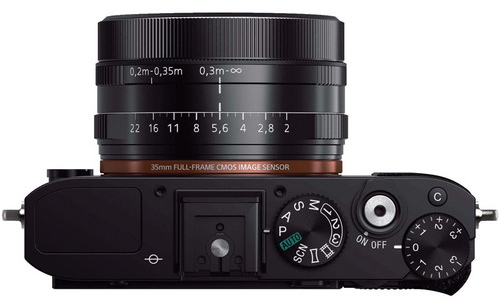
The most disappointing thing about the Sony RX1 build is the fact that the camera isn’t environmentally sealed. For someone who does an awful lot of shooting outside, I hate to see cameras that aren’t built for people like me.
However, since the camera is so lightweight and small, it is uber comfortable to carry around all day. Since it was built for professionals, it also comes with an incredible amount of customization. It would be a crime against humanity to not use manual mode when operating the Sony RX1.
The most important part of the Sony RX1 handling is its battery life. It can shoot up to 270-shots on one charge without dying. This is a little disappointing for me because the camera doesn’t come with any features that take a lot of power, like an EVF.
Sony RX1 Video Performance
Pretty much no camera that is a decade old is going to have an excellent video performance because the features just aren’t present. And, as you can see by the Sony RX1 video performance test by TheCameraStoreTV above, the Sony RX1 is no different.
Since it was such a huge deal when it first came out, I wouldn’t necessarily say that its video specs are wildly out of date, because it can still shoot Full HD video at 60p for up to a half hour at a time, but it doesn’t feature 4K or focus peaking. If you are planning to shoot video in manual focus mode with the Sony RX1 on a regular basis, then you should also know that the focus distance indicator doesn’t work when you are in movie mode, making it a huge pain to focus it at all.
Another way that the Sony RX1 is out of date is that the autofocus tracking just kind of sucks. It can’t keep up with moving objects.
Sony RX1 Price
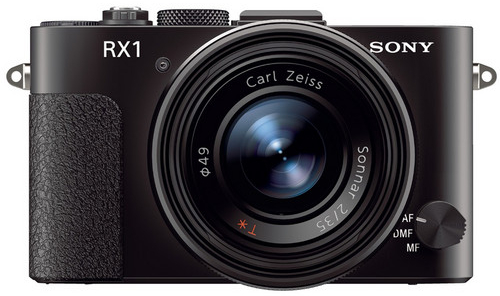
The Sony RX1 price is nothing like it used to be. Since this camera came out in 2012, it is nearly a decade old (which is pretty ancient when it comes to camera technology). Though the Sony RX1 was nearly $3,000 when it first came out, it has since been discontinued and the price on used Sony RX1 bodies continues to plummet.
You should be able to find a Sony RX1 for under $1,000 pretty easily. But, you do need to make sure that you’re shopping somewhere reliable because you don’t want to spend hundreds of dollars for this camera and then have it be completely useless to you.

In an effort to aid your search, I found a few Sony RX1 bodies on MPB. Both of the ones that are currently up (as of the publishing of this article) are in good condition, which means that they will have some cosmetic signs of use, but that all of the important parts of the camera are working beautifully. They are both $764.
If you do opt to buy your used Sony RX1 on MPB, then you can rest assured that the camera will do exactly what you need it to and if it doesn’t, you can send it back to MPB for a full refund.
Learn More:
We Recommend
Sony Cyber-Shot RX10 Review
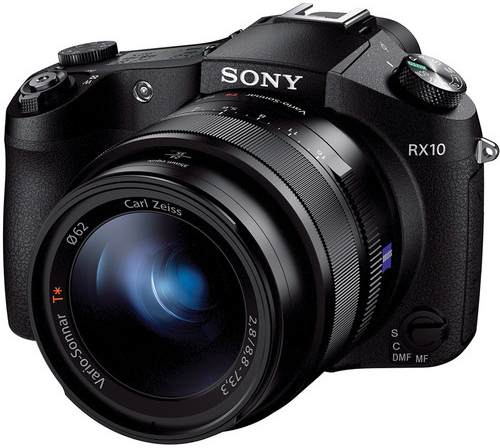
The Sony RX10, which was first released by Sony in 2013, was a compact camera designed for the enthusiast. One of the biggest selling points on the Sony RX10 was its zoom lens, which is a 24-200mm Carl Zeiss Vario-Sonnar T zoom lens.
But, the Sony RX10 was also known for being a great point and shoot camera during a time when not a lot of camera manufacturers were designing easy cameras like that. So, while the Sony RX10 is designed for someone who already has some basic camera knowledge, it’s also appealing to someone who is a brand new photographer because it will allow you to grow alongside the camera.
Plus, since the Sony RX10 is getting up there in age, it is nowhere near as expensive as more modern cameras of the same quality, meaning that a beginner’s budget could actually work with it.
In this Sony RX10 review, I’m going to walk you through all of the specs, the Sony RX10 video performance, and its design.
Let’s get started.
Sony RX10 Specs
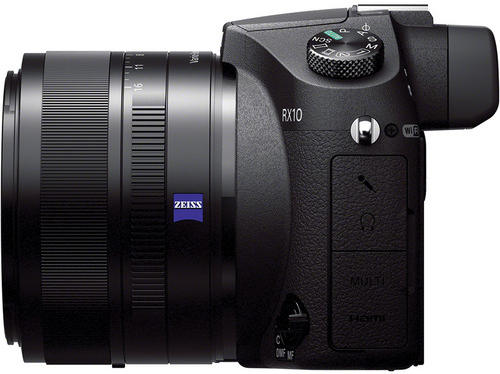
The Sony RX10 features a 21MP BSI-CMOS sensor and a Bionz X processor. While the sensor/processor pairing ensures that you can get some clear and crisp images out of this camera, there are a few areas where the camera is lacking.
For instance, it only features an ISO rating of 125-12,800, which is definitely outdated. It also doesn’t feature 4K video, though it does feature Full HD video at up to 60p.
The camera comes with a 3” tilting LCD screen, though it is not a touchscreen (for those looking to easily transition from their phone). It also comes with an electronic viewfinder with 1.44m-dots and 100% viewfinder coverage, which is still pretty impressive despite the camera’s age.
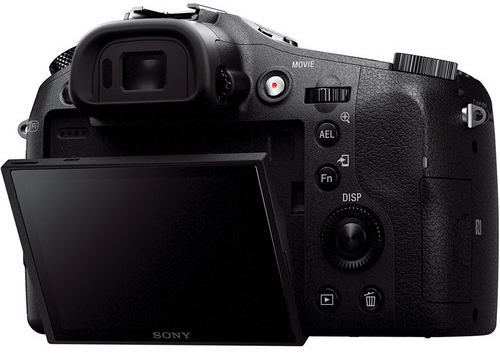
The camera can shoot at 10fps in burst mode, which is a pretty fun feature for photographers looking to get into wildlife or sports shooting.
Other Sony RX10 Specs Include:
- 21MP BSI-CMOS sensor
- Bionz X processor
- ISO range of 125-12,800
- Full HD video capabilities at up to 60p
- 3” tilting LCD screen
- 1.44m-dot electronic viewfinder with 100% coverage
- 10fps burst mode
- 25-point AF system
- 1.79 lbs
- 420-shot battery life
- Built-in flash
Sony RX10 Body & Design
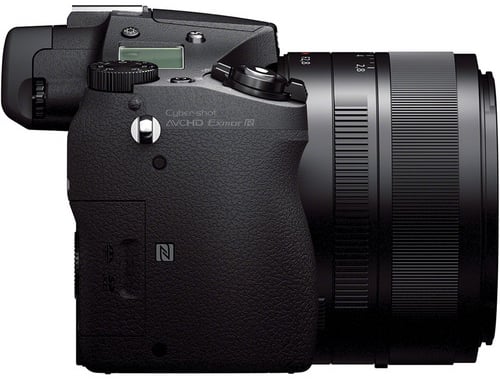
This camera measures 5.1” x 4.7” x 3.5” and weighs 1.79 lbs, primarily because of the fact that its lens is large and heavy. This means that you likely won’t want to purchase this camera for everyday shooting. It’s more for adventuring.
Still, there’s something to be said for the balance of this camera, because it operates just as well when the zoom lens is fully extended.
It is built out of magnesium alloy, which is another reason why it is so hefty. The body is environmentally sealed, so you shouldn’t have to worry about dust or water damage.
You can operate the zoom via a ring around its lens or via a more traditional rocker switch.
The camera is pretty much always operational as a one-handed experience, unless you need to adjust the focus ring, which you will need two hands for.
Learn More:
Sony RX10 Build & Handling
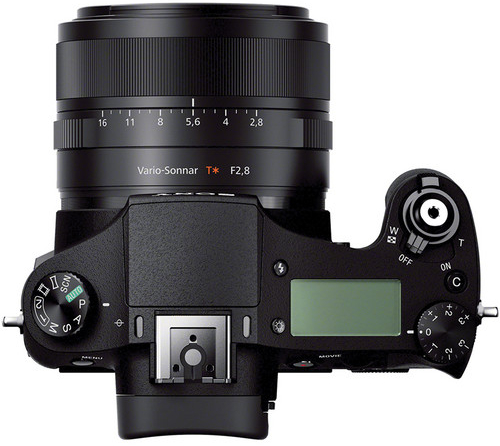
As I already mentioned, the Sony RX10 build is pretty sturdy. And also, it is surprisingly balanced. Though the camera is large, it doesn’t feel uncomfortable in your hands thanks to an overly large grip, which is paired with a rubber thumb rest on the back of the camera. However, if you have especially long fingers, it should be noted that because of the way the grip is shaped, you may find it a little uncomfortable to try and reach the shutter button.
The Sony RX10 handling is actually a breeze. For starters, the camera’s 420-shot battery life means that you can take it shooting for a long weekend without worrying about charging it. This is one of the benefits of shooting with an older camera. They almost always have batteries that can perform better than modern cameras.
Sony RX10 Video Performance
Big shout out to Geekanoids for the video test above.
When it comes to the video performance of the Sony RX10, it is obviously a little dated because it doesn’t feature 4K. However, a lot of photographers may not recognize the fact that they don’t actually need 4K capabilities.
The Sony RX10 does feature Full HD video capabilities at up to 60p. Plus, you get to use the full 8.3x zoom while in video mode.
The camera also comes with something called “Active Mode,” which prevents the camera from capturing shake. In essence, this camera is designed, through and through, to take video on the go.
It also works, once again, for photographers who are just beginning and photographers who are well on their way. You can either shoot video in full manual, or you can let the camera make some more decisions for you.
The camera also comes with a microphone jack so that you don’t have to rely on the stereo sound (which can be unreliable) and a headphone output for monitoring your audio while you’re shooting.
Sony RX10 Price
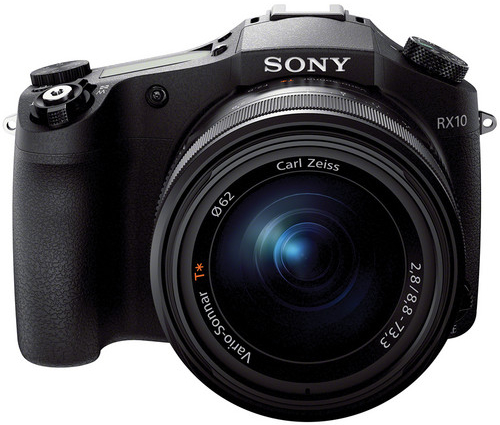
Given the fact that the Sony RX10 is approaching a decade of age, you can find used versions of this camera for really cheap online. You just have to know where to look.
For instance, I just checked MPB for the Sony RX10 before publishing this article and found cameras for as cheap as $310. Compared to the original Sony RX10 price, this is a steal.

I also recommend that you purchase your used Sony RX10 from MPB because they are a really trustworthy site. Their rating system, for instance, is one of the most accurate ones I’ve come across so far. If they say a camera is in excellent condition, then it is actually going to show up at your front door that way. That’s because they hire professional photographers to rate all of the equipment they buy and sell.
Plus, if you aren’t happy with your Sony RX10 for any reason, you can just send it back. That definitely isn’t something you could try and pull with an Ebay seller.
Learn More:
We Recommend
Sony Cybershot DSC-RX10 III Review

The Sony Cybershot DSC-RX10 III is a bridge camera that was created with enthusiast photographers in mind. It features a 24-600mm equivalent f/2.4-f/4 lens and a 20MP sensor.
I rarely get to cover cameras that are designed specifically for videographers, because let’s be honest there definitely aren’t as many of them, and while the Sony Cybershot DSC-RX10 III wasn’t designed only for videographers, I would say that it was equally designed for videographers and still photographers.
If the wide-aperture zoom lens isn’t enough to attract you to this camera, it also features 4K video and high definition slow motion video capture.
Of course, all of this does come at a price, so I’m going to share with you how you can get a cheaper version of the Sony Cybershot DSC-RX10 III later on in this complete Sony Cybershot DSC-RX10 III review.
Sony Cybershot DSC-RX10 III Specs

The Sony Cybershot DSC-RX10 III specs include a 20MP BSI-CMOS sensor, a 24-600mm f/2.4-f/4 zoom lens, and a 3” tilting screen.
The camera can shoot 4K video at up to 30p and it can shoot 960p high-speed video.
The Sony Cybershot DSC-RX10 III features a 14fps burst mode, and a magnesium alloy body that is weather-sealed, which will make this camera even more appealing for sports and wildlife photographers.
Since the Sony Cybershot DSC-RX10 III features such a large zoom lens, the camera is pretty heavy at 2.32 lbs.
Other Sony Cybershot DSC-RX10 III Specs Include:
- 20MP CMOS sensor
- Bionz X processor
- 24-600mm f/2.4-f/4 equivalent zoom lens
- ISO range of 100-12,800
- 3” tilting LCD with 1.22m-dots
- 2.35m-dot EVF with 100% viewfinder coverage
- 14fps burst mode
- 4K video capabilities at up to 30p, and Full HD video capabilities at up to 120p
- Built-in WiFi and Bluetooth
- 420-shot battery life
- 2.32 lbs
Sony Cybershot DSC-RX10 III Body & Design

The Sony Cybershot DSC-RX10 III design closely mimics the Sony Cybershot DSC-RX10 II, except that it is a little bit larger. However, Sony did complete a couple of thoughtful changes in the body of this camera that I’ll go over here.
For starters, since the lens is so large, it is going to take up a lot of extra space. So, instead of letting this space go to waste, Sony decided to add a semi-assignable ring. This semi-assignable ring is located right next to the other aperture ring and adjustment ring. I get why Sony made this decision, but these rings are right next to each other which means that you can bump one of them when you aren’t trying to.

For this reason, and because the rings require a lot of rotation in order to really achieve the desired effect, I don’t find myself using them too often, instead opting for the control right above the grip. It’s far easier to zoom with.
Another thing that Sony changed in this model is the ergonomics. The camera is much easier to hold because the grip is far larger and thicker. The thumb indent is also larger. Considering the fact that this camera is larger, both of these changes help to make your shooting experience feel safer.
Finally, Sony also decided to add one more custom button on the top plate.
Learn More:
Sony Cybershot DSC-RX10 III Build & Handling

The Sony Cybershot DSC-RX10 III build also closely mimics the build of its predecessor. The camera weighs 2.32 pounds and measures 5.24” x 3.7” x 5”. Although the camera is made from magnesium alloy, it does feel cheap for some reason. This may bother shooters who are used to a more solid build.
When it comes to the Sony Cybershot DSC-RX10 III handling, a lot of Sony shooters were disappointed to find out that the menu really hasn’t changed at all. You can’t customize it and a lot of the features you may need seem to be inexplicably hidden. This is probably my biggest issue with the handling of most Sony cameras. It will definitely take you a few weeks to get used to shooting with this menu.

Most of the physical controls are really nice, though. For example, both the exposure compensation dial and the mode dial have a good amount of resistance and the pop-up flash comes further out of the camera than it did with the Sony Cybershot DSC-RX10 II, which is great for shooting subjects that are farther away from the camera.
Another frustrating aspect of this camera is its screen. It’s not only not a touchscreen, but it also isn’t fully articulating. For shooters who are used to a touchscreen (like I am) this is yet another way the controls of this camera might frustrate you.
Sony Cybershot DSC-RX10 III Video Performance
Huge thanks to Jacek Zarzycki for the Sony Cybershot DSC-RX10 III video performance test above.
The Sony Cybershot DSC-RX10 III shoots 4K video at up to 30p and it also shoots Full HD video at up to 120p. The camera also comes with a High Frame Rate mode, which is how you can capture that awesome slow motion video at 1000fps.
If you’ve shot with the Sony Cybershot DSC-RX10 II, then most of the video features haven’t changed and the transition will be quite easy for you.

I already mentioned the fact that this camera comes with three control rings: one zoom ring, one aperture control ring, and one focusing ring. I mentioned that I don’t use these control rings very often, but I also don’t shoot video very often. This is a welcome change for videographers who need complete manual control.
This Sony camera comes with other Sony videography features, like S-Gamut color and S-Log2 contrast. What this means in practice is that you can shoot with this camera on top of another Sony camera and get the exact same color palette across the board. It’s an excellent move for professional videographers.
The camera also comes with both a microphone jack and a headphone jack. Considering the price, I would be wildly disappointed if it didn’t.
Since the camera uses a NP-FW50 battery, which can only take up to 420 shots on a single charge, you should expect to charge it via the USB port when you’re shooting video. It will just save you a lot of headaches.
Sony Cybershot DSC-RX10 III Price

Considering all of the specs that this camera features, it makes sense that the Sony Cybershot DSC-RX10 III price is also… premium.
If you plan to purchase a brand new Sony Cybershot DSC-RX10 III, you should expect to spend $1,400. It has definitely been argued that this is a little too much for the features that the Sony Cybershot DSC-RX10 III offers.
However, if you purchase a used Sony Cybershot DSC-RX10 III you can get a much better deal.
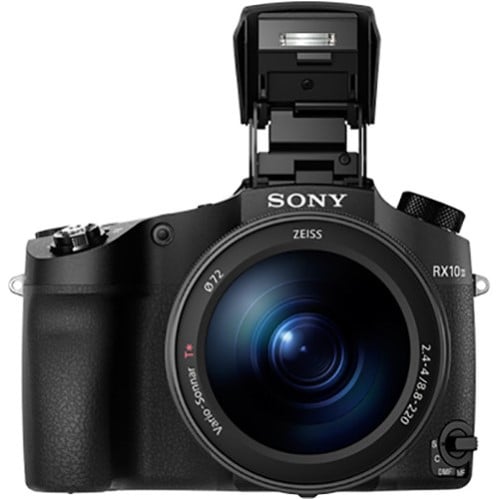
For example, MPB currently has three different Sony Cybershot DSC-RX10 III bodies available for sale. Each one of them is in excellent condition, which means they have only the lightest signs of use, and they start at just $889.
With that $500 of savings, you could literally buy a whole new camera.

And, since MPB is a trusted used camera retailer, you can rest assured that if you do buy a Sony Cybershot DSC-RX10 III from them, it will show up at your door in the exact condition you expect it to. It’s the sole reason why I shop on MPB. I never have to guess whether a seller actually knows the condition of their camera or whether they’re lying to try and make more money off of me.
For a full list of reasons why I solely purchase used camera gear from MPB, you can read their full review in the learn more links below.
Learn More:
We Recommend
Sony CyberShot DSC-RX1R II Review

Photo by André Filipe on Unsplash
Sony RX1R II CyberShot Camera
The Sony CyberShot DSC-RX1R II is one of the smallest full-frame cameras in the world. This point and shoot model with a fixed lens easily fits into a bigger pocket, while its image quality is outstanding and comparable to a high-end DSLR.
Unfortunately, having a compact body accompanied by the full-frame sensor comes with certain disadvantages. To name a few, the camera’s battery drains out very fast while handling might also be an issue for those accustomed to bulkier models.
However, the RX1R is still a great camera and it might be just what you need. In this review, we will discuss all the pros and cons of the Sony CyberShot DSC-RX1R II so you can make your own decision if it’s worth buying. Read review of Sony RX100 VII camera on our website PhotographyTalk.com.
Sony CyberShot DSC-RX1R II Specs
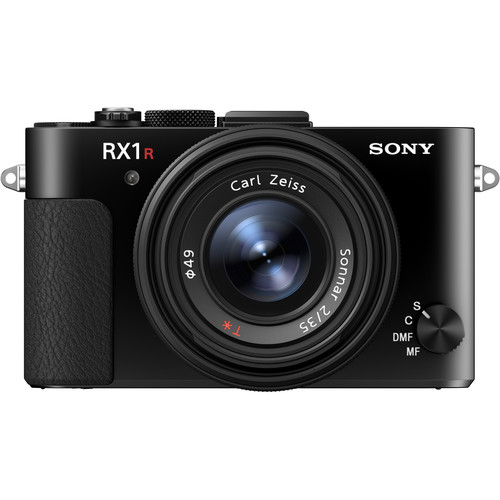
There are many good things about the Sony RX1R II but its 42.4-megapixel CMOS Exmor R® sensor is what distinguishes it from all other point and shoot cameras.
With such high resolution, this camera manages to capture even the tiniest details while it also allows you to make huge prints out of your images. Overall, there are not many point-and-shoot cameras that can compete with the RX1R II when it comes to the image quality.
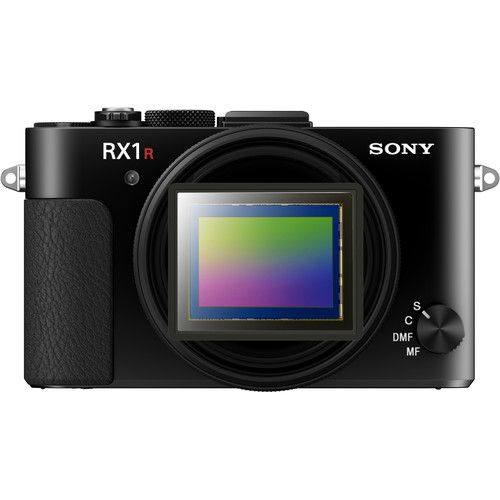
The Sony RX1R II performs great in any given light environment because of its native ISO range of 100 through 25,600 (extendable to ISO 50 - 102,400). Moreover, it has a unique option to choose from three optical variable low-pass filter effect settings: Off (to prioritize image resolution), Hi (to reduce moiré and color artifacts) and Standard (to balance those priorities).
The camera uses the Fast Hybrid AF system with 399 phase-detection AF points. The same autofocus system is used in the Sony a7 II and it will without a doubt provide a reliable and quick subject tracking performance. The RX1R has a run-of-the-mill burst rate of 5 frames per second, so if you are particularly interested in sport or wildlife photography, this camera might not be the best option.
Sony CyberShot DSC-RX1R II Body and Design

The Sony RX1R II has an attractive design which is almost identical to the design of its predecessors (the RX1 and RX1R). The camera has a dimension of 4.45 x 2.56 x 2.83 inches and weight of 1.12 lb (with lens and batteries included).
For framing scenes, there is a large and clear pop-up electronic viewfinder as well as a tilting LCD screen (without touchscreen technology).

Given this size and weight of the camera, you might think of the RX1R II being a perfect choice for travelers and street photographers. However, bear in mind the battery life of this camera is only around 200 shots. This is not very convenient if you are out there in nature where there is no possibility to charge the camera.
Sony Cyber-shot DSC-RX1R II Build and Handling

The RX1R is relatively expensive, so the fact that there is no environmental-sealing on this camera is surprising. This would add size and weight to the body, but it would mean a lot to those who enjoy outdoor photography.
It has particularly shown to experience functionality issues while working in cold temperatures. In a cold environment, the camera works at a slower pace and its battery life is significantly lower.

Because of its compact body, you will need some time to get used to the camera’s dials and controls. They are tiny and closely positioned so it is possible that you’ll press some of them unintentionally, especially when you are using a viewfinder.
Another thing that makes handling experience of this camera imperfect is a relatively small grip. Because of the tiny grip, holding the camera in one hand feels a bit uncomfortable and you might want to consider buying an optional TGA-1 thumb grip which can be attached to the camera’s hot shoe.
Sony CyberShot DSC-RX1R II Video Performance

Although the RX1R II uses the same type of sensor as the Sony A7 II, unfortunately, it isn’t capable of shooting 4K videos.
In terms of video recording capabilities, the camera maxes at Full HD (1080p) recording at 60p, 30p, and 24p. There is also an option to record slow-motion sequences if you drop the resolution down to 1280 x 720.
The RX1R provides outstanding low-light performance in video mode while its autofocus performance doesn’t disappoint either. Moreover, the camera uses the digital SteadyShot image stabilization system in order to reduce shakes in video shots.
Learn more about the capabilities of the Sony RX1R II in this hands-on review by DigitalRev TV.
Sony CyberShot DSC-RX1R II Lens
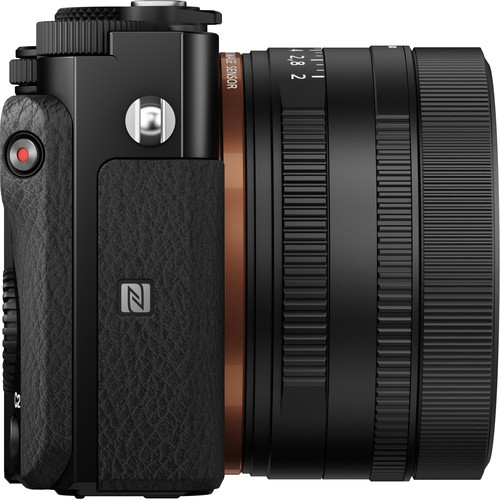
The RX1R II comes with a compact fixed lens.
The ZEISS 35mm F2 lens is inherited from the RX1R I. The lens is perfectly matched with this type of camera and aimed to produce good results in all types of situations.
Sony CyberShot DSC-RX1R II Price

With a price tag of around $3,000, we can’t say the RX1R II has a consumer-friendly price. However, you can find this camera at significant savings if you buy used Sony CyberShot DSC-RX1R II.
Check out the inventory on MPB. It is a website which specializes in connecting those who are selling and buying used equipment. Alongside with used camera models, there you can find all sorts of photography equipment at affordable prices.
If you're not yet familiar with MPB, check out my MPB review to get to know this top-shelf company.
We Recommend
Sony DSLR Cameras: What are Your Options
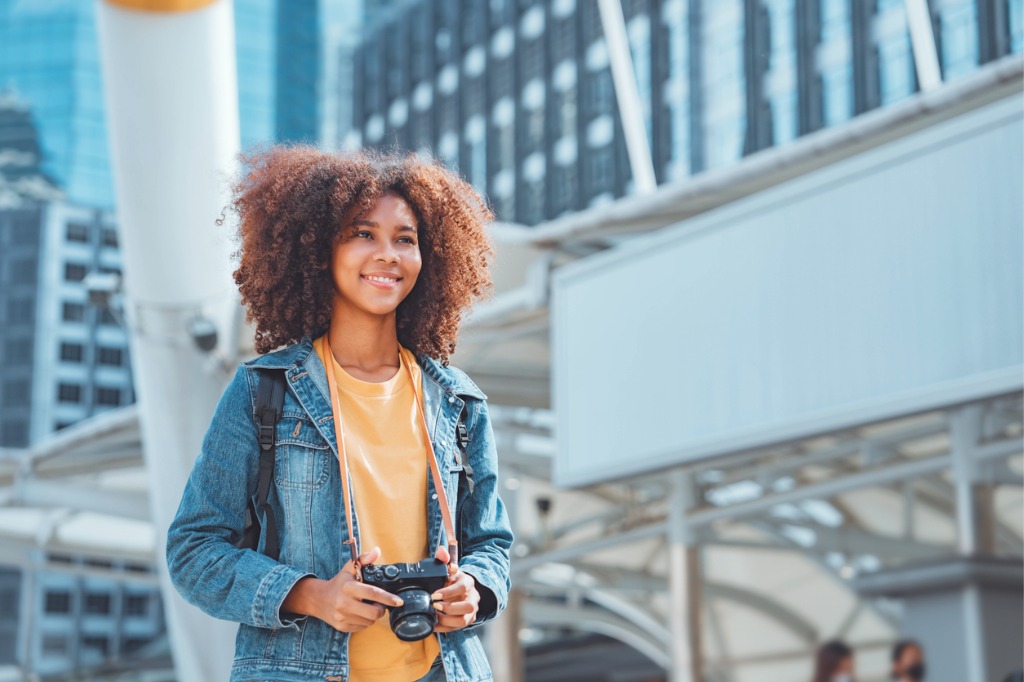
photo by oatawa via iStock
Mirrorless cameras are a huge market segment for photography companies like Sony, Nikon, Fujifilm, Canon, and others. Sony is certainly one of the leaders in this segment of the market.
With so much attention being given to their mirrorless cameras, we can sometimes forget that Sony DSLR cameras are also a big deal in serious photography. You can find a Sony DSLR at all levels, from entry-level to intermediate to full-fledged professional cameras.
So, what Sony DSLR cameras are available?
There are several to consider, and you can find them at my favorite online platform, MPB. Since there are a limited number of current production Sony DSLRs, finding one as a used camera becomes a top choice.
Buying pre-owned photography gear such as a Sony Alpha DSLR is a smart move for several reasons, one of which is saving money. Additionally, you want stuff you know works perfectly from a seller you can trust, which is my number one reason for using MPB as much as I do.
Get to know MPB with this video from their YouTube channel:
MPB also has a 6-month warranty and a 7-day return window on most items they sell. Their accurate condition rating descriptions also provide an easy buying experience. Besides having a huge stock of gear for you to shop, MPB lets you trade up and trade in your old gear for newer, better, or more needed cameras and lenses. You can also sell outright to MPB.
At MPB, finding out which of the Sony DSLR cameras they made recently will be the right one for you will be a simple job. Let’s have a look at a few options to consider!
Table of Contents:
- Sony DSLR Advantages
- Sony DSLR Cameras - Good
- Sony DSLR Cameras - Better
- Sony DSLR Cameras - Best
- Sony DSLR Cameras - Continuing the Minolta Legacy
Sony DSLR Advantages
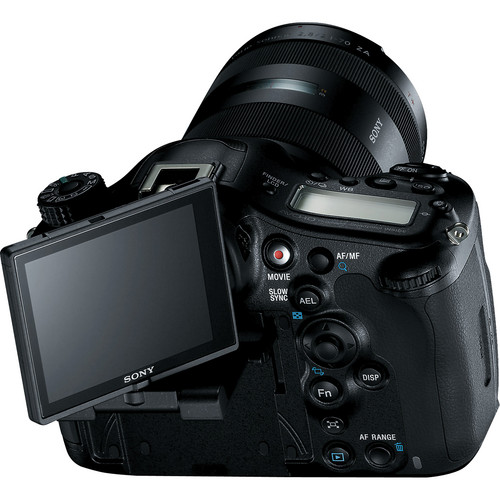
Sony has been a major player in photography digital imaging since the early 2000s but has been involved in home video since 1965 and first started in magnetic still imaging in 1981 with the Sony Mavica. In 2006, Sony introduced their first DSLR, which used Minolta A-mount interchangeable lenses.
Between 1981 and 2006, Sony made several point-and-shoot digital cameras with various levels of resolution and sophistication. In the meantime, Minolta reorganized their camera business several times until they turned over all consumer still photography interests to Sony.
This put Sony in a great position to leverage all that expertise into making fantastic and high-quality still photography camera systems by introducing their Sony DSLR cameras for beginners, intermediate users, and professionals.
I’ll go a little deeper into this legacy after discussing a short list of three Sony DSLR cameras I found at MPB, listed as Good, Better, and Best.
Sony DSLR Cameras - Good
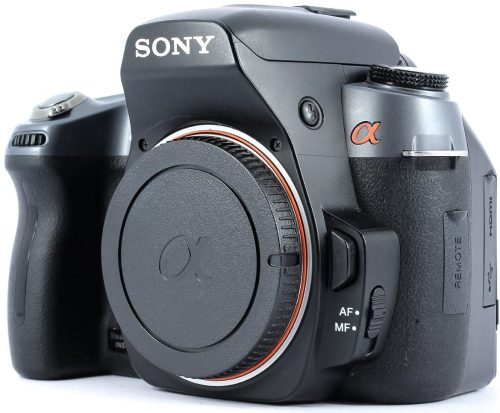
The earliest of the Sony DSLR cameras on my list is the Sony Alpha 550 or a550. This Sony Alpha DSLR was originally introduced in 2009 and has an APS-C format 14.2MP sensor with an ISO range of 100 to 12,800.
A huge advantage this camera gives users is the Steady Shot Inside in-camera image stabilization. This image stabilization works with any lens mounted to the camera, even a third-party A-mount lens designed for 1980s vintage Maxxum cameras.
It is very comfortable to hold with its large handgrip, and the focus noise is very low. The interesting thing about this Sony DSLR is that it has no video recording mode, an oddity in this era of digital cameras. On the plus side, the price point of this camera is remarkably low, making it a great beginner option for Sony DSLR cameras.
Sony DSLR Cameras - Better
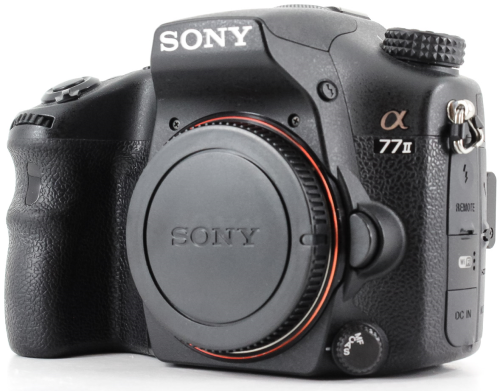
Next up in the Better slot is the 2015 release date Sony Alpha a77ii camera. It has a 24.3MP APS-C format sensor with an ISO range of 100 to 51,200. Nicely proportioned, the environmentally sealed body has a nice feel and is made from durable and lightweight magnesium alloy.
The improved Steady Shot Inside image stabilization is built into the camera and is not reliant on any lens electronics. The autofocus is very good, with multiple modes and 79 AF points. It also has an advanced face detection AF system for improved speed and accuracy in photos of people.
This camera records high-quality video in Full HD and has a stereo mic for audio. The video is very smooth and can use image stabilization while recording, though it crops the field a bit to do so.
Sony DSLR Cameras - Best
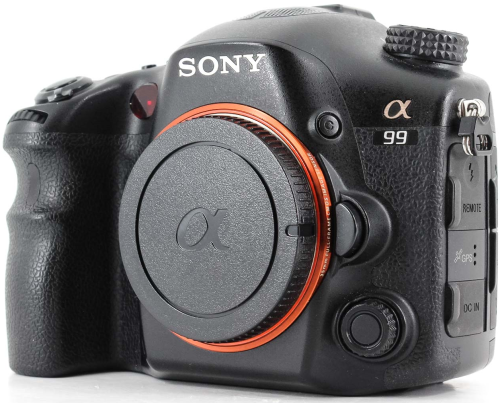
The Sony Alpha SLT a99 with a 24.3MP Full Frame format sensor is a standout model of the available Sony DSLR cameras. The a99 is labeled as SLT for single lens translucent mirror. The mirror is fixed and transmits most of the light through to the sensor, allowing for high-speed cycling, and only costs about 2/3rds of a stop in light transmission from the lens.
It can record still images in 14-bit RAW for increased quality and has an ISO range of 100 to 25,600. A rapid and very accurate 102-point AF with a huge array of lenses makes this camera a great choice for all types of serious photography.
This Full Frame camera is beginner friendly, professionally capable, and built with pro-level ruggedness and user-friendly features and controls. You find this camera in Excellent condition at MPB for under $900, making this camera a steal as one of the best Sony DSLR cameras.
Sony DSLR Cameras - Continuing the Minolta Legacy
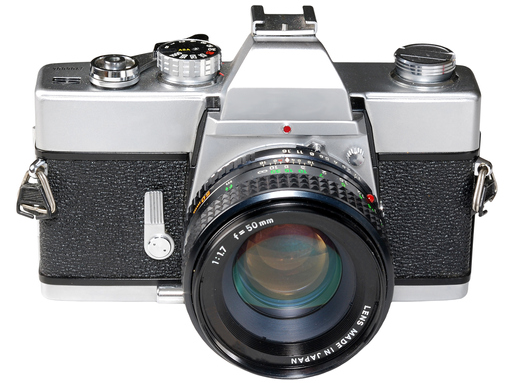
Photo by LesPalenik via iStock
Every now and then, I like to wax nostalgic about cameras and brands I grew up with. Minolta was always one of my favorite brands to read about and use. “Only from the mind of Minolta” was their tagline for a while, and Minolta had quite a mind.
Beginning in 1928, Minolta made high-quality and innovative film cameras and, in the 1970s, partnered with E. Leitz on projects that resulted in precision photographic tools like the Minotla XD-11 and Leica R-3. A Minolta patent introduced OTF (off-the-film plane) metering.
Leitz and Minolta also collaborated in the 1970s and beyond on the groundbreaking Correfot autofocus system, which ended up in Minolta introducing the first commercially successful AF 35mm SLR system, the Minolta Maxxum. Interestingly, the lens mount they introduced for that camera line is the A-mount, the same mouth used by Sony DSLR cameras.
Sony had a cooperative relationship with another premier lens company, Zeiss. Minolta has made award-winning lenses under their Rokkor brand for years, even mining and making the raw glass material for the lens elements. Leica chose Minolta to create a new line of professional cameras. And then, most recently, Sony took over cameras from Minolta.
This history is important to me (and to you) because it shows how much expertise for imaging, lens making, and camera design is behind Sony DSLR cameras. Any Sony DSLR choice you make will be a good one!
Learn More:
We Recommend
Sony E vs FE Lenses
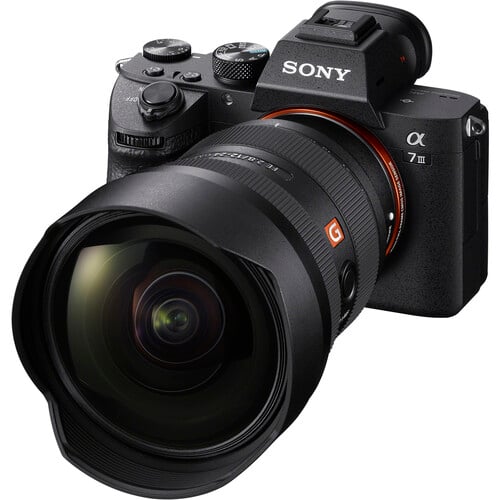
Sony mirrorless cameras are some of the most popular and capable interchangeable lens cameras ever made. From entry-level to full-fledged professional models, and in two different formats, Full Frame and APS-C, Sony has multiple cameras from which to choose.
The lens options and the nomenclature used for Sony camera lenses can be somewhat confining, though, such as Sony E vs FE lenses, Sony A lenses, and cinematography lenses.
We’ll explain the differences and show a sure-fire way to keep it straight with Sony E vs FE lenses, plus a great way to save money on Sony cameras and lenses (my favorite online platform, MPB).
Table of Contents:
- All the Lens Mount Labels
- Sony E vs FE Lenses - the Main Difference
- Other Differences to Check Sony E vs FE
- Some Lens Examples
- Final Thoughts
All the Lens Mount Labels
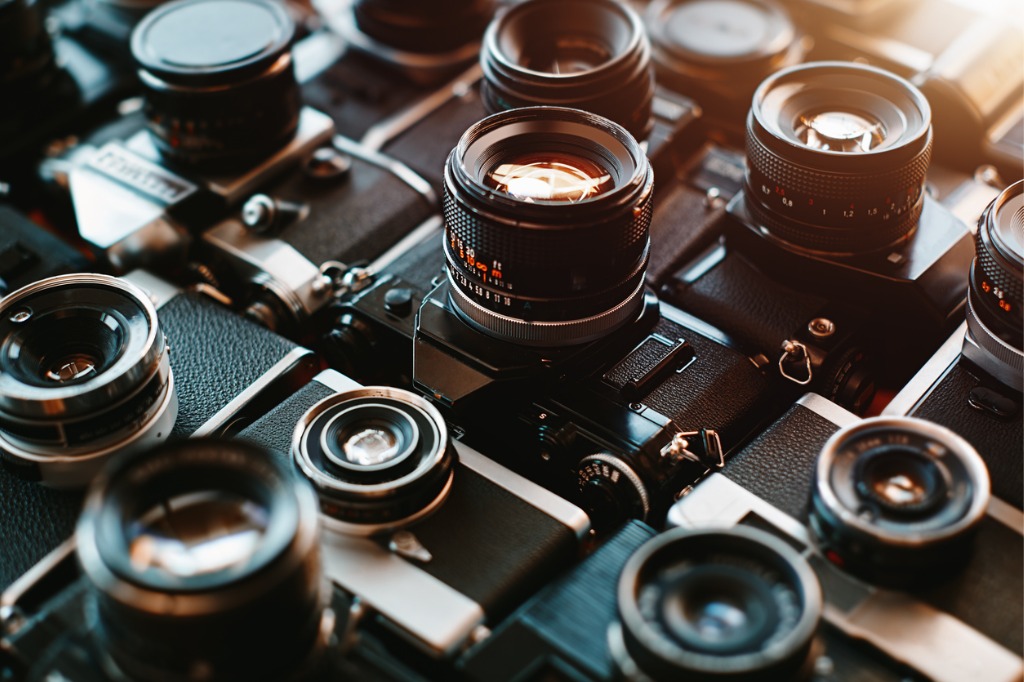
Photo by delihayat via iStock
Hold on to your hat! We’re taking a trip in the wayback machine again.
The story of Sony digital cameras actually begins with Minolta, a brand that was one of the top Japanese camera brands and was well respected in the industry, being partnered with Leica for several camera designs in both SLR and rangefinder cameras.
Minolta made 35mm SLRs with a lens mount called MC/MD. Minolta was an early leader in 35mm autofocus SLRs with a camera line called Maxxum that had a brand-new lens mount, the A-mount.
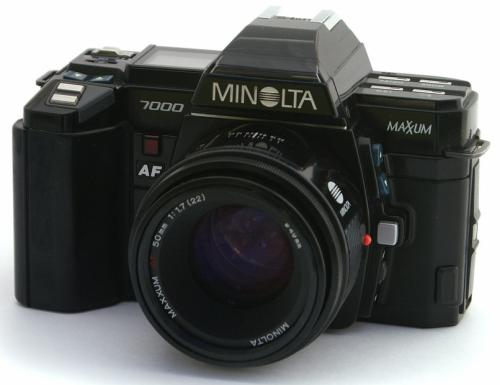
"Minolta Maxxum 7000" by Capt Kodak is licensed under CC BY-NC 2.0.
After the initial success of Maxxum cameras, Minolta entered into a partnership with another camera and electronics company, Konica. By this time, digital photography was becoming a bigger focus than film photography, and Minolta had some interesting entries in digital cameras.
Some more business deals happened until Sony took over the photography line of stuff that had the Minolta brand. Sony was a giant in electronics in general and in advanced video technology, so it was not a surprise to anyone when Sony led the charge for professional-quality mirrorless cameras and also entry-level and intermediate-level mirrorless cameras.
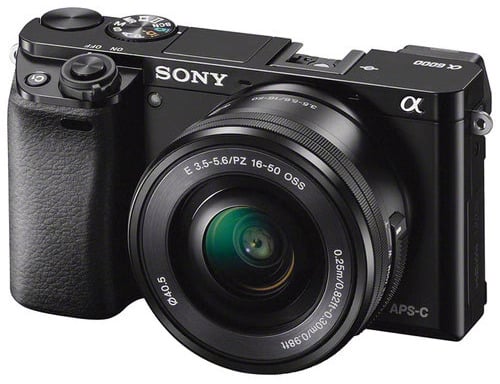
The design of mirrorless cameras is substantially different from cameras with a mirror box, so a new lens mount was created, the E-mount. In addition to lenses being listed as E-mount, they also made lenses labeled Sony FE-mount.
So, to round them all up, Sony lenses and cameras can currently be found with different mounts and labels. PL lenses are used by Sony professional video cameras. A-mount lenses are used on DSLR-style cameras. Finally, E-mount or FE-mount lenses are used on Sony mirrorless digital cameras.
Sony E vs FE Lenses - the Main Difference
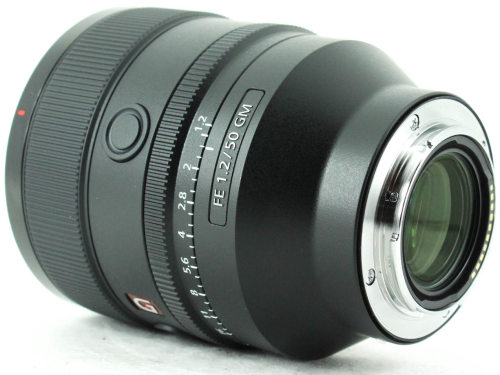
Now we’re at the Sony E-mount vs FE-mount lenses and wondering what the differences might be.
The mounts of these lenses are identical physically and electronically. And yet, we have Sony FE vs E lenses.
Here is the primary difference: E-mount lenses are designed to cover the APS-C format, while FE-mount lenses are designed to cover Full Frame format sensors.
This is where I get my surefire way to tell them apart, Sony E vs FE lenses. ‘F’E lenses are made for ‘F’ull Frame cameras, and E lenses are for the crop format APS-C. Please note that with other brands, this labeling trick may not hold true, so just use it with the Sony brand.
Learn More:
- The Best Zoom Lens for Sony a6000
- Three Sony FE Lenses You Need in Your Bag
- Should You Buy a Sony a7r iv Used?
Other Differences to Check Sony E vs FE
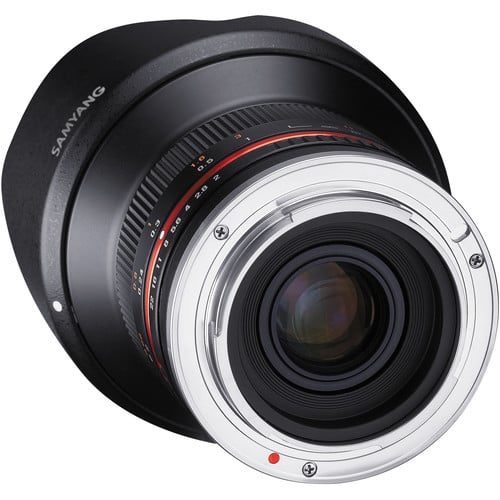
Sony E vs FE lenses will fit and work on any Sony mirrorless camera with the E-mount, regardless of format. What happens when an E-mount lens is mounted to a Full Frame format camera is that the camera is triggered into recording files with an APS-C-sized portion of the Full Frame sensor.
Conversely, mounting an FE-mount lens on an APS-C format won’t adjust the sensor at all, but that lens focal length will now have a crop factor to consider. The focal lengths don’t change, but since the APS-C format is smaller than Full Frame, a crop factor exists compared to Full Frame.
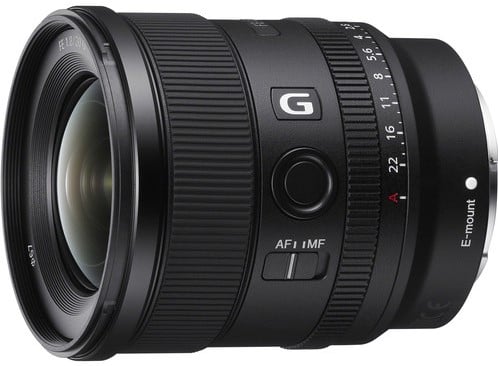
Crop Factor is an interesting and sometimes confusing part of digital photography. In simplest terms, using a lens on a smaller format will have different magnification than on Full Frame.
Sony APS-C cameras and lenses have a crop factor of 1.5X compared to Full Frame. A 100mm lens on a crop sensor Sony will behave similarly to a 150mm lens on a Full Frame camera. The focal lengths don’t change, just how the lens is seen by the two formats. It’s meant for comparison purposes only.
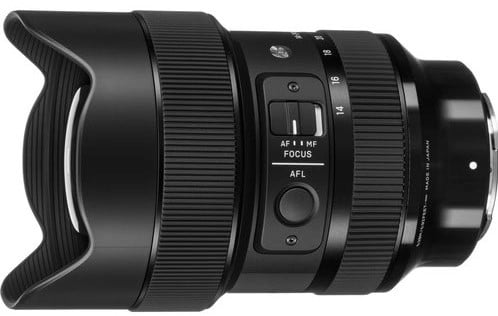
Some other differences have nothing to do with Sony E vs FE lenses as far as format compatibility, but with special characteristics, maximum lens aperture, and build ruggedness.
Sony has a partnership of sorts with Zeiss for creating lenses that are among the sharpest of their kind. Sony brand lenses can come in kit-level, intermediate-level, and professional-level with quite a lot of overlap of intended levels and use for some lenses.
Some Lens Examples
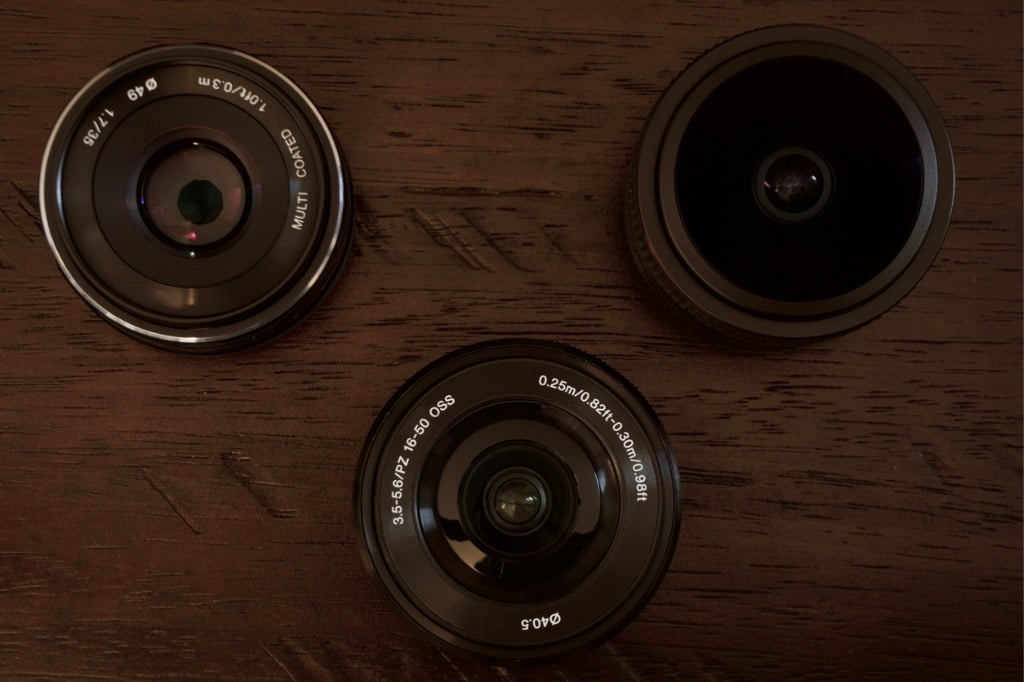
Photo by Korey Peterson via iStock
With all of that history and technical discussion under our belts, here are some Sony lenses to consider for the formats and camera types.
For all of these, I’m linking to the online platform MPB for prices and availability. MPB is one of my preferred ways to pick up high-quality cameras and lenses. MPB specializes in pre-owned gear, which means lower costs for you.
You can further reduce the cost of the Sony E or FE lenses you purchase by trading in your gear. It’s a simple process that involves shipping your items to MPB (they pay for shipping!) and using your credit towards a new-to-you lens.
MPB has a rigorous system for ensuring they only sell excellent gear. Each item is inspected and given a clear, detailed, and accurate description. Likewise, MPB offers a seven-day return window and a six-month warranty on virtually everything they sell.
Below are a few of MPB’s Sony E vs FE lenses.
FE-Mount Lenses
SONY FE 12-24MM F/2.8 GM
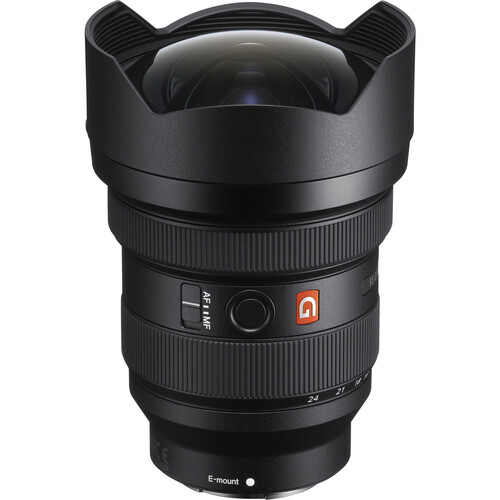
At this focal length range, you would think the Sony FE 12-24mm f/2.8 GM was an APS-C format lens, but it’s made for Full Frame! That’s really wide without being fisheye! The fast maximum aperture is nice, too.
Sony FE 24-105mm f/4 G OSS
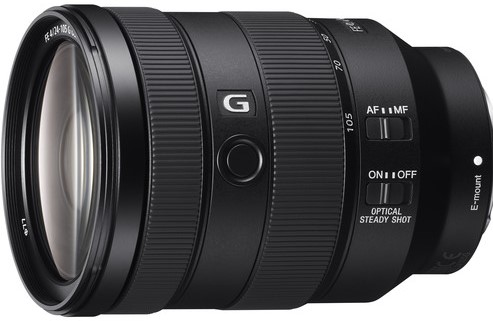
The Sony FE 24-105mm f/4 G OSS is an attractively priced normal range zoom lens for Full Frame. Excellent sharpness and very close focusing.
Sony FE 50mm f/1.2 GM
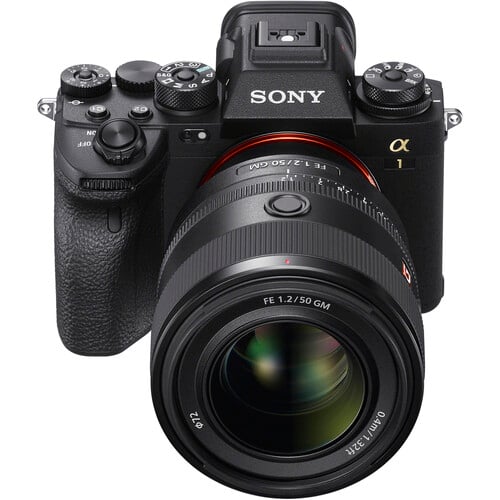
With amazing bokeh in a nifty fifty for Full Frame, the Sony FE 50mm f/1.2 GM lens is fast enough to give you a very fast sweet spot aperture, plus it’s super sharp.
E-Mount Lenses
Samyang 12mm f/2 NCS CS
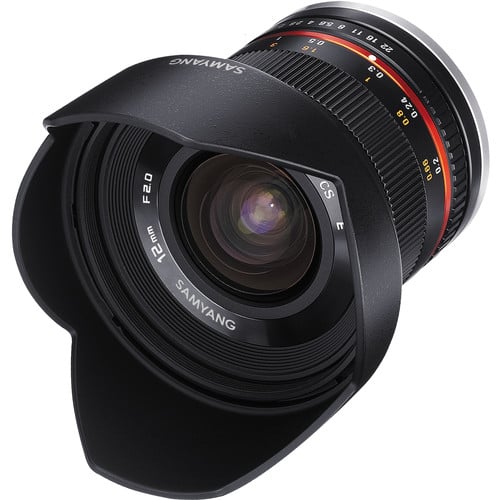
Very fast and very wide, the crop format wide-angle Samyang 12mm f/2 NCS CS lens is surprisingly affordable and a fine performer.
Sony E 16-55mm f/2.8 G
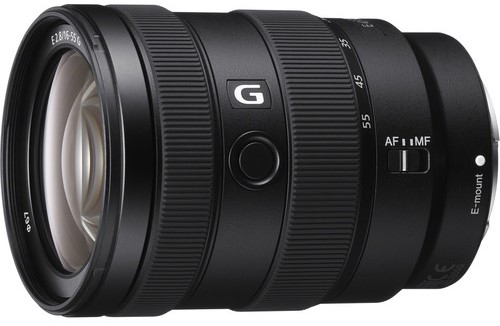
It’s always advantageous to have some extra lens speed in your pocket. This Sony E 16-55mm f/2.8 G normal range zoom lens has a fast maximum aperture, close focusing, and is very small and light for matching with Sony Alpha APS-C cameras.
Sony E 70-350mm f/4.5-6.3 G OSS
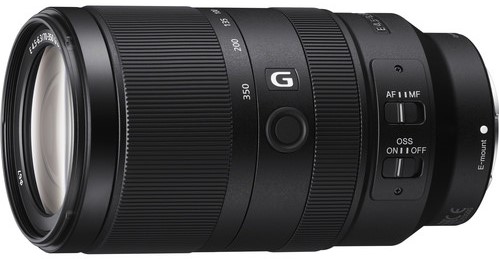
The Sony E 70-350mm f/4.5-6.3 G OSS lens speed may be a little limited, but this lens gives a lot of telephoto punch and does so in a compact, very balanced package. Like all Sony lenses, this telephoto zoom is sharp as a tack.
Final Thoughts
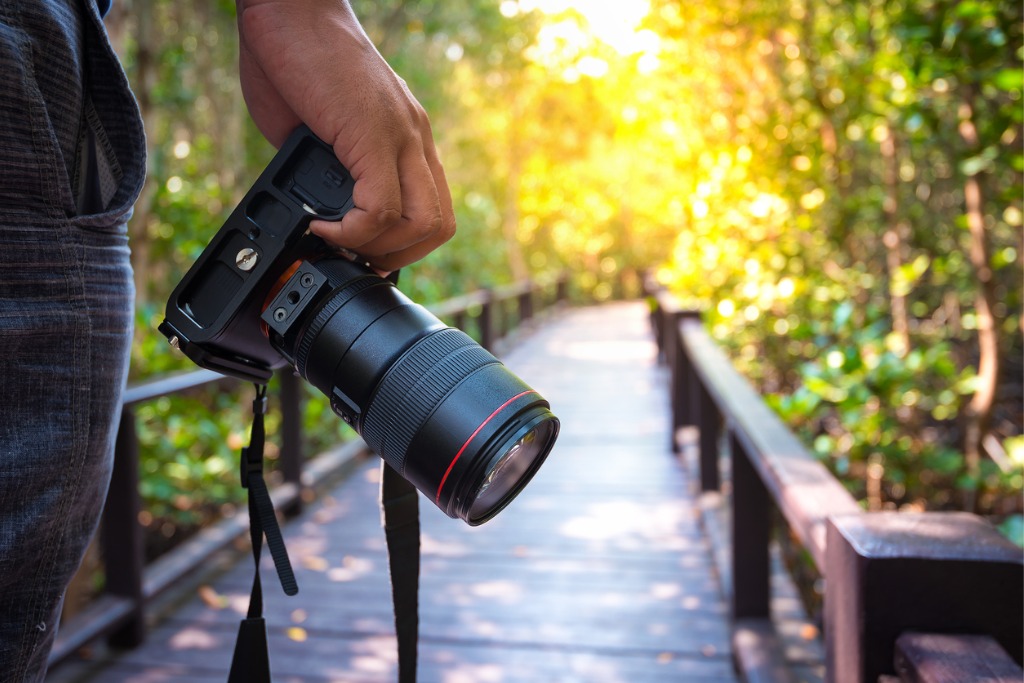
Photo by structuresxx via iStock
The question of Sony E vs FE lenses has an easy answer. Plus, looking for these lenses means you’re already using some of the top cameras around for APS-C and Full Frame format. Check out what else MPB has that can save you money on cameras, lenses, flashes, and other accessories.
Learn More:
- Which Sony Camera for Photography Is Right for You?
- Should You Get a Full Frame or Crop Sensor Camera?
- 4 Questions to Ask Before Buying a Used Lens
We Recommend
Sony FE 70-200mm f/2.8 GM OSS II Review
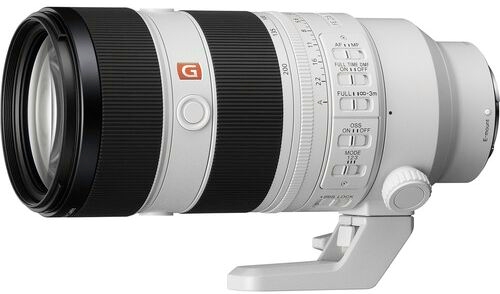
The Sony FE 70-200mm f/2.8 GM OSS II is a versatile telephoto zoom lens found in most professional photographers' and videographers' camera kits who shoot with Sony mirrorless cameras. It was released in 2021, replacing the original Sony FE 70-200mm f/2.8 GM OSS as Sony’s flagship 70-200mm lens.
In this Sony FE 70-200mm f/2.8 GM OSS II review, we’ll examine its design and handling, image quality, video quality, and autofocus performance. Also, we’ll discuss the pros and cons of working with it and recommend our favorite compatible cameras. Additionally, thanks to websites like MPB, buying used lenses has never been cheaper and easier.
Who is MPB? It’s a trustworthy and innovative company offering high-quality used photo and video gear at unbeatable prices. Better yet, every camera and lens it sells is hand-inspected by professional product specialists with years of experience and backed by a six-month warranty, allowing you to make your purchases confidently and worry-free.
What truly sets MPB apart, though, is its one-of-a-kind online platform. It’s an amazing tool that has helped us save thousands of dollars buying, selling, and trading photography equipment over the years, and we believe it can do the same for you. Now, join us as we explore everything there is to know about the Sony FE 70-200mm f/2.8 GM OSS II!
Check out the Sony | Camera Channel video above to learn more about the Sony FE 70-200mm f/2.8 GM OSS II.
Table of Contents
- Sony FE 70-200mm f/2.8 GM OSS II: Design & Handling
- Sony FE 70-200mm f/2.8 GM OSS II: Image Quality
- Sony FE 70-200mm f/2.8 GM OSS II: Video Quality
- Sony FE 70-200mm f/2.8 GM OSS II: Autofocus
- Final Thoughts on the Sony FE 70-200mm f/2.8 GM OSS II
Sony FE 70-200mm f/2.8 GM OSS II: Design & Handling
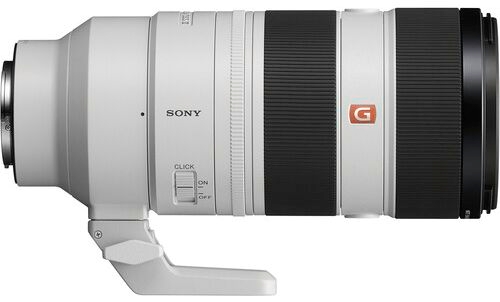
The Sony FE 70-200mm f/2.8 GM OSS II is an incredibly sturdy lens that happens to be the “world’s lightest constant large-aperture telephoto zoom lens.” While you might think it's big and heavy when you first see it, it’s 435 grams lighter than its predecessor despite being the same size. That’s innovation!
Another update on the Sony FE 70-200mm f/2.8 GM OSS II is a new control ring—an aperture ring. You can set it to click for photography and deactivate the clicks for video shooting, making the lens silent. There are six additional switches on the lenses to adjust settings and a “focus lock” button.
Three more highlight-worthy design features are the removable lens handle, hood, and all-weather coating. The handle helps steady the lens, leading to sharper content. The hood eliminates lens flares when shooting in sunny situations. And the lens’ all-weather coating protects it from the elements, making it a great choice for outdoor photography.
Now, here’s an in-depth look at the Sony FE 70-200mm f/2.8 GM OSS II specs and key features:
- Lens Type: Telephoto Zoom Lens
- Camera System: Full-Frame
- Lens Mount: Sony E Mount
- Focal Length: 70-200 mm
- Maximum Aperture: f/2.8
- Minimum Aperture: f/22
- Minimum Focusing Distance: 40 cm
- Filter Size: 77 mm
- Focusing system: Autofocus & Manual Focus
- Maximum Magnification: 0.3x
- Size/Weight: 88 x 200 mm / 1045 grams
- Optical Image Stabilization: Yes
- Used Price: $2,599 - $2,699
Sony FE 70-200mm f/2.8 GM OSS II: Image Quality
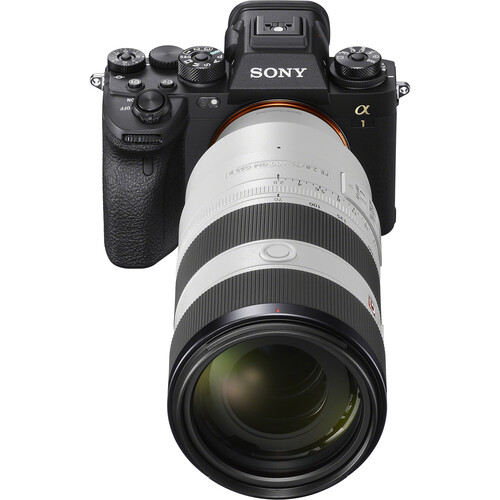
The Sony FE 70-200mm f/2.8 GM OSS II’s premium internal lens elements deliver exceptionally sharp photos, making it a still photographer's dream lens. Overall, it boasts 14 groups and 17 lens elements. Two are ED elements, two are Super ED elements, one is an aspheric element, one is an ED aspheric element, and one is an XD extreme aspheric element.
The Sony FE 70-200mm f/2.8 GM OSS II has a new optical design and a Nano AR II lens coating, which help reduce lens flares and ghosting. Moreover, the constant f/2.8 maximum aperture boosts low-light performance and creates gorgeous bokeh (shallow depth of field) effects ideal for wildlife and portrait photography.
Learn More:
What is the Best Sony Mirrorless Camera for Video?
What is the Best Wildlife Photography Lens?
Sony FE 70-200mm f/2.8 GM OSS II: Video Quality
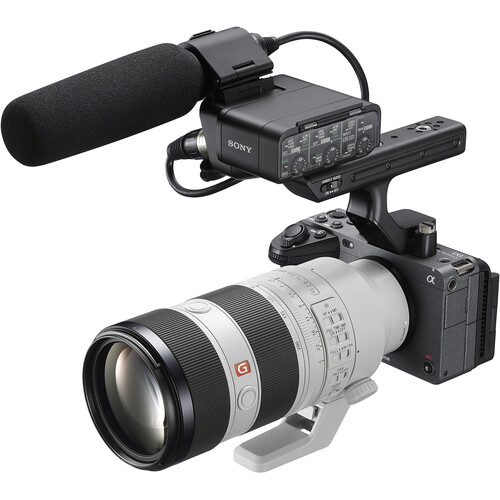
While telephoto lenses are usually not considered great video lenses, the Sony FE 70-200mm f/2.8 GM OSS II aims to break that mold. The engineers behind the lens worked hand-in-hand with Sony’s cinema department to optimize it for video, and the results are spectacular. So much so that we can confidently say it’s the best telephoto lens for video we’ve ever tested!
The two biggest reasons are the dramatically reduced focus shifting and focus breathing. Whether you use autofocus or manual focus, these improvements lead to sharper, smoother videos. Furthermore, the lens’s manual focus and aperture control rings allow you to quickly and easily make real-time adjustments while filming.
Sony FE 70-200mm f/2.8 GM OSS II: Autofocus
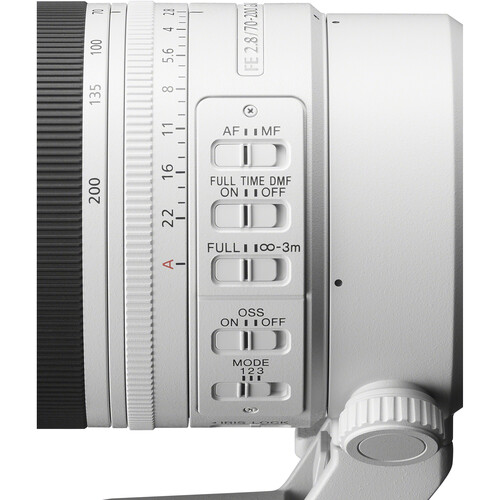
Last but not least, the Sony FE 70-200mm f/2.8 GM OSS II has an all-new autofocus system. The AF system uses four XD Linear motors and provides accurate and reliable AF that is four times faster than before. This makes the Sony FE 70-200mm f/2.8 GM OSS II popular for sports, wildlife, and action photography.
Video shooters will also love the enhanced focus-tracking capabilities while zooming and the quiet motors. These features lead to better video and audio quality.
Final Thoughts on the Sony FE 70-200mm f/2.8 GM OSS II
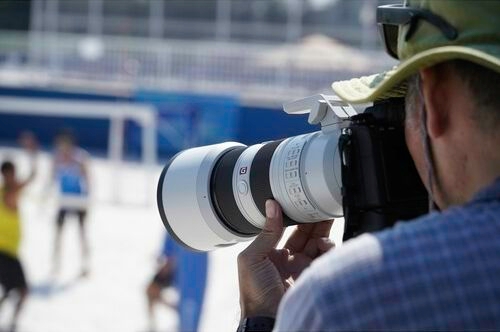
It is indisputable that the Sony FE 70-200mm f/2.8 GM OSS II is one of the most powerful and versatile lenses on the market. It’s well-made, delivers stunning photos and videos, and excels at everything from landscapes to portraits. However, it’s not perfect—no lens is. With that in mind, let’s look at its pros and cons.
Sony FE 70-200mm f/2.8 GM OSS II Pros
- Amazing feature set
- Unbelievably versatile
- Excellent video and image quality
- Smooth and quiet autofocus
- Compatible with Sony FE 1.4x and 2.0x teleconverters
- Beautiful bokeh
- Weather-sealed
Sony FE 70-200mm f/2.8 GM OSS II Cons
- Expensive (but more affordable if you buy used)
- Heavy (but lighter than the previous model)
- Stabilization could be better
Finally, here’s a list of our favorite Sony full-frame mirrorless cameras to pair with the Sony FE 70-200mm f/2.8 GM OSS II. They are all in stock and on sale now at MPB.
Disclaimer: Our articles might have affiliate links and the occasional sponsored content, but don't sweat it – if you buy something, we get a little kickback at no extra cost to you, and we only hype products we truly believe in!
Learn More:
We Recommend
Sony FX30 Review
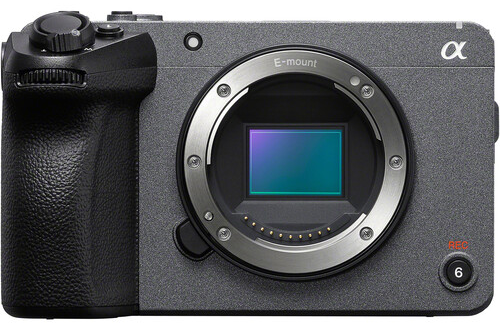
In the past, video cameras were bulky, heavy, and expensive. However, in recent years, companies like Sony have released powerful new digital cinema cameras that are compact, lightweight, and affordable. One of those cameras is the award-winning Sony FX30!
In this Sony FX30 review, we’ll share a basic camera overview, break down its video and photo specs, tell you our favorite Sony lenses to use with it, and more. Additionally, thanks to innovative online platforms like MPB, buying a used mirrorless camera has never been cheaper and easier than it is today.
Who is MPB? It is a trustworthy and reliable online platform selling pre-owned videography and photography gear at unbeatable prices. Better yet, all of its cameras and lenses are closely hand-inspected by highly-trained product specialists with years of experience and backed by six-month warranties, allowing you to make your purchases confidently and worry-free.
We are huge advocates of MPB because their online marketplace has helped us save thousands of dollars buying, selling, and trading equipment over the years. Visit their website today to save money upgrading your camera kit. Now, without further ado, it’s time to dive in and discover everything there is to know about the Sony FX30!
Check out the Sony | Camera Channel video above to learn more about this amazing Sony cinema camera.
Table of Contents
- Sony FX30: Overview
- Sony FX30: Video Capabilities
- Sony FX30: Imaging Capabilities
- Recommended Lenses for the Sony FX30
- Final Thoughts on the Sony FX30
Sony FX30: Overview
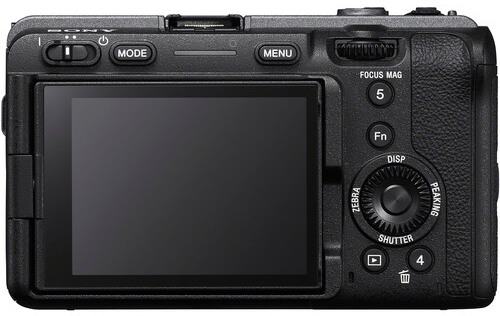
The Sony FX30 is a one-of-a-kind portable cinema camera that debuted at the end of 2022. It’s the smallest and cheapest camera in Sony’s lineup of cinema cameras, making it ideal for everyone from professional videographers to budget-conscious film students. The sturdy aluminum alloy body houses a 26.1-megapixel APS-C sensor and a Bionz XR image processor.
The ergonomics and handling of the FX30 are off the charts thanks to its compact body, updated menu system, and customizable buttons. While there is no top LCD, the main menu gives you direct access to all the most useful settings, such as shutter speed, aperture, ISO, picture profiles, recording format, and more.
Moreover, the FX30 has lightning-fast autofocus (AF). It’s a hybrid AF system with 425 focus points that cover 90% of the sensor. AF modes include real-time tracking, face/eye autofocus, and a nifty AF assist mode, which allows you to seamlessly switch between autofocus and manual focus by turning the focus ring on your lenses.
Now, here’s an in-depth look at the Sony FX30 specs and key features:
- Camera Type: Mirrorless
- Sensor: 26.1MP APS-C BSI CMOS Sensor
- ISO: 100 - 32,000 (expandable to 50 - 102,400)
- Lens Mount: Sony E Mount
- Speed: No burst shooting
- Autofocus: 495 focus points
- Video: 4K/120p & 1080p/240p
- Size/Weight: 130 x 78 x 85 mm / 580 grams
- Battery Life: 570 shots
- Stabilization: Yes
- Touchscreen: Yes
- Weather-Sealed: Yes
- Used Sony FX30 Price: $1,519 - $1,529
Sony FX30: Video Capabilities
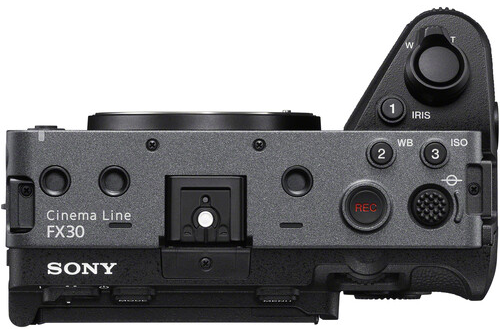
As a true cinema camera, the Sony FX30 boasts a deep set of powerful video features that regular mirrorless cameras (not even the Sony Alpha a7S III) can’t match. For starters, it records 10-bit UHD 4K video at frame rates as high as 120 frames per second (fps). One thing to note is that filming at 4K/120p, the camera applies a 1.6x crop factor to the footage.
Our favorite video frame rate to record at is 4K/60p. That’s because it records 6K video using the entire pixel count of the sensor and then oversamples it to create stunning results. A 1080p/240p Full HD super-slow-motion video mode is also available, and it’s great for documentaries, vlogging, and social media content.
Other spectacular video features include professional picture profiles, 5-axis in-body image stabilization (IBIS), and a built-in fan. Picture profiles like HLG and S-Log3 capture over 14 stops of dynamic range, giving you more control when color-correcting. IBIS reduces camera shake and improves low-light performance. At the same time, the integrated fan cools down the camera during long shooting periods and prevents overheating.
Learn More:
- 4 Reasons Why the Panasonic Lumix GH6 is One of the Best Hybrid Cameras on the Market
- What is the Best Sony Mirrorless Camera for Video?
Sony FX30: Imaging Capabilities
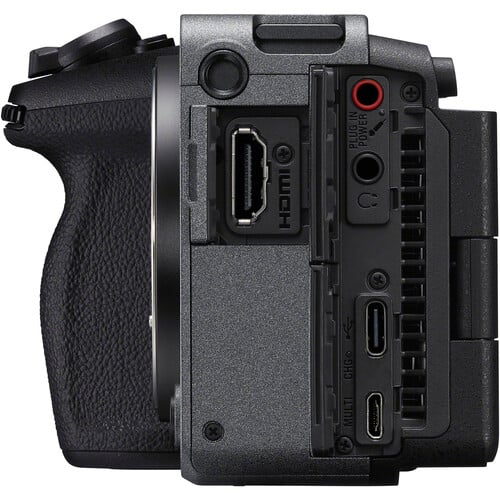
While it’s first and foremost a video camera, one thing that sets the Sony FX30 apart from other Sony cinema cameras is its ability to shoot still images. The pictures can’t compete with high-resolution cameras like the Sony Alpha a7R V, but the 26.1MP photos have solid image quality and sharpness.
Another innovative feature of the FX30 is that you can independently customize the menus for video and photo modes. This improves workflow speed and productivity when changing between the two. Lastly, two important things to remember are that the camera has no mechanical shutter (only electronic) or continuous shooting.
Recommended Lenses for the Sony FX30
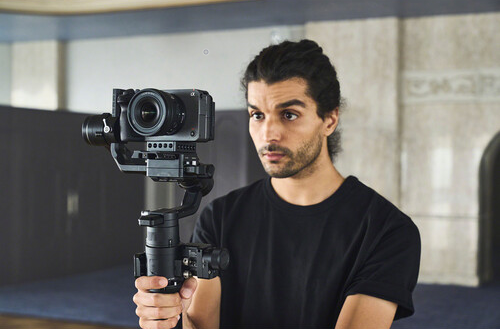
Since the Sony FX30 utilizes an APS-C image sensor, we recommend pairing it with Sony E Fit lenses. Full-frame Sony FE Fit lenses will work with it, but the camera will crop the field of view to match the size of the sensor. With that in mind, here’s a quick list of the best Sony lenses for the FX30:
- Sony E PZ 18-110mm f/4 G OSS
- Sony E 15mm F/1.4 G
- Sigma 35mm f/1.4 DG DN ART - Sony E Fit
- Sony E PZ 10-20mm F/4 G
- Sony E 70-350mm f/4.5-6.3 G OSS
Final Thoughts on the Sony FX30
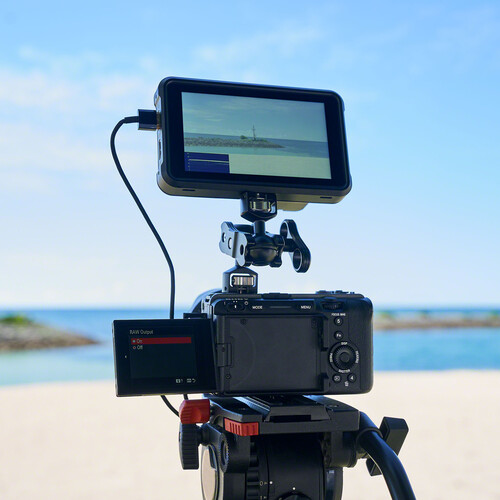
As you can see, the Sony FX30 is an incredibly unique cinema camera due to its size, imaging capabilities, and price. There aren’t many other cameras in its price range that offer everything it does!
We think it’s an excellent choice for content creators like film students and cinematic YouTubers. However, if you are looking for a camera to shoot photos and videos equally, we recommend opting for the Sony Alpha a7R V or Sony Alpha a6600.
Not 100% sure the Sony FX30 is the perfect fit for you? Don’t worry! We understand that purchasing a new camera is a big decision. To compare it with other video-oriented cameras, check out the list below of popular Sony cinema cameras, Sony full-frame cameras, and Sony APS-C cameras currently available at MPB:
- Sony VENICE CineAlta 6K
- Sony PXW-FX3
- Sony PMW-F55 CineAlta 4K Kit
- Sony a1
- Sony Alpha a7S III
- Sony ZV-E10
A quick heads-up: If you snag something through our affiliate links or check out our sponsored content, we might earn a commission at no extra cost to you. But fear not, we're all about recommending stuff we're truly stoked about!
Learn More:
We Recommend
Sony Mirrorless Camera Comparison: Which is Best for 2023?
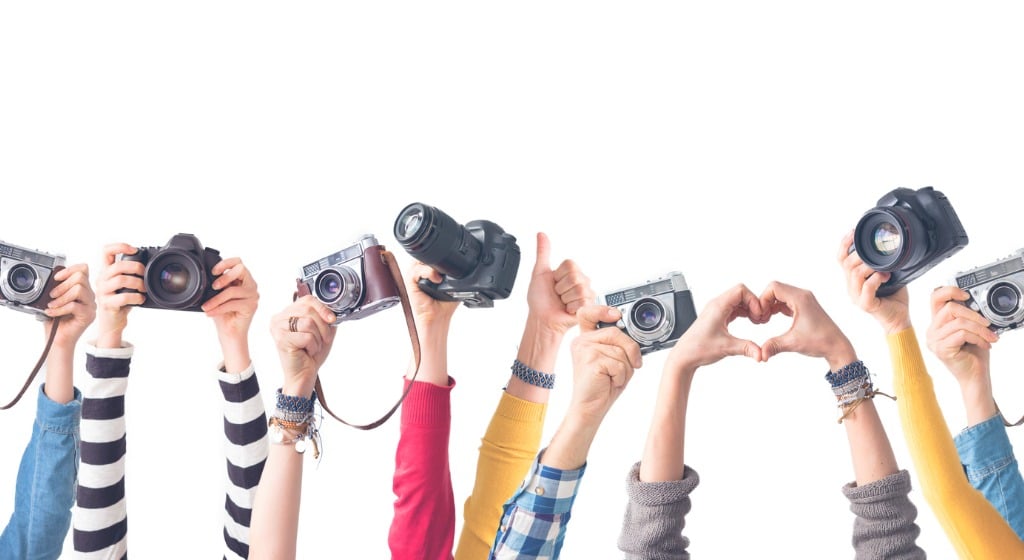
Photo by seb_ra via iStock
Sony was the first company to invest heavily in mirrorless technology around 2010, and that bet has paid off big time. Today, they are the king of mirrorless cameras, and their lineup of mirrorless cameras is stronger than ever. However, with so many sensational mirrorless cameras on sale, deciding which one to buy has never been harder.
That’s why we built this Sony mirrorless camera comparison guide! In it, we share four of the best Sony mirrorless cameras available today, break down their strengths & weaknesses, and tell you who will benefit most from shooting with each one.
One amazing resource with loads of used Sony E mirrorless cameras and used Sony FE mirrorless cameras in stock and a place I keep going back to buy and sell photo and video gear is MPB. They are a trustworthy and reliable online platform that sells used photo and video kit at unbeatable prices.
Moreover, all of their cameras and lenses are carefully hand-inspected by knowledgeable product specialists and many are backed by warranties, allowing you to make your purchases confidently and worry-free. Another phenomenal feature of MPB is its online marketplace, where you can trade in and sell your old gear to help offset the cost of new-to-you photo and video equipment.
Now, let’s dive in and explore which Sony camera is best for you based on your budget and experience!
Table of Contents
- Sony Mirrorless Camera Comparison: Sony Alpha a6000
- Sony Mirrorless Camera Comparison: Sony Alpha a6600
- Sony Mirrorless Camera Comparison: Sony Alpha a7S III
- Sony Mirrorless Camera Comparison: Sony Alpha 1
- Final Thoughts on This Sony Mirrorless Camera Comparison
Sony Mirrorless Camera Comparison: Sony Alpha a6000

First up, we have the award-winning Sony Alpha a6000. It is the longest-running and most-sold mirrorless camera of all time. Making its debut way back in 2014, this powerful little camera is on the older side, but it still holds up well today. And the fact that you can get your hands on one for under $400 makes it an absolute steal! It’s ideal for beginners and people on a tight budget.
Outside of its low price, this Sony camera has a ton going for it. The 24.3-megapixel image sensor produces high-quality images, and the responsive autofocus makes capturing in-focus images a piece of cake. On top of that, its ultra-portable, lightweight design makes it a great everyday camera, and it can even fit in your pocket!
The one downside of this camera is its lack of 4K video capabilities. With that said, the quality of its 1080p Full HD footage is superb.
Here’s an in-depth look at the key features and specs of this Sony mirrorless camera:
- Camera Type: Mirrorless
- Sensor: 24.3MP APS-C CMOS sensor
- ISO: 100 - 25,600 (expandable to 100 - 51,200)
- Lens Mount: Sony E Mount
- Speed: 11.0 fps
- Autofocus: 179 phase-detection points
- Video: 1080p/60p
- Size/Weight: 120 x 67 x 45 mm / 344 grams
- Battery Life: 360 shots
- Stabilization: No
- Touchscreen: No
Check out the video above by MPB to learn more about the Sony Alpha a6000.
Sony Mirrorless Camera Comparison: Sony Alpha a6600
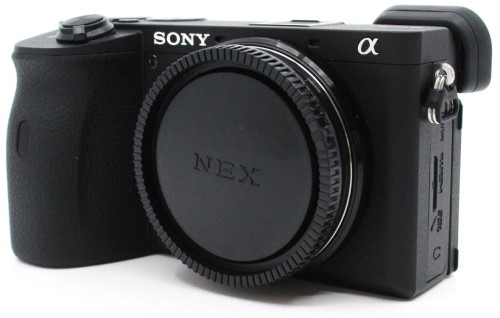
Another outstanding Sony E mirrorless camera is the Sony Alpha a6600. It’s a souped-up model of the a6000 mentioned above and an ideal camera for intermediate digital content creators looking to take the next step in their photography/videography careers. The average price for a used camera in excellent condition is around $1250.
Two of the signature features of this Sony mirrorless camera are its lightning-fast autofocus and the in-body image stabilization technology. The AF is impressive and the new and improved subject tracking (along with its 11.0 frames per second continuous shooting) makes it a good option for sports, action, and wildlife photography. The stabilization boosts the camera's low-light performance and eliminates camera shake when shooting handheld.
Speaking of video, the a6600 boasts 4K video capabilities, and the microphone and headphone ports allow you to better monitor audio levels when recording. My biggest complaint with this camera is the large crop factor applied to 4K/30p footage.
Here’s an in-depth look at the key features and specs of this Sony mirrorless camera:
- Camera Type: Mirrorless
- Sensor: 24.2MP APS-C CMOS sensor
- ISO: 100 - 32,000 (expandable to 100 - 102,400)
- Lens Mount: Sony E Mount
- Speed: 11.0 fps
- Autofocus: 425 phase-detection points
- Video: 4K/30p & 1080p/100p
- Size/Weight: 120 x 67 x 69 mm / 503 grams
- Battery Life: 810 shots
- Stabilization: Yes
- Touchscreen: Yes
Learn More:
Sony Mirrorless Camera Comparison: Sony Alpha A7S III
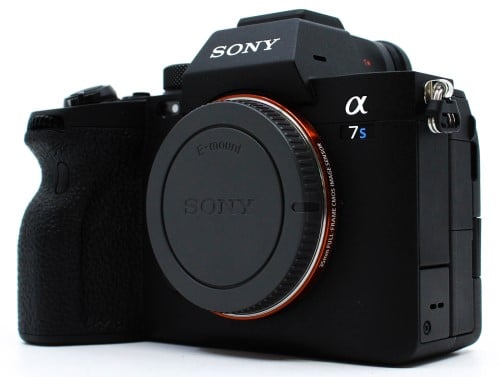
For filmmakers and videographers, the best Sony camera in 2023 is the Sony Alpha a7S III. It was released in 2020 and is specifically designed to work in low-light situations and shoot video. A 12.1-megapixel Full-Frame sensor and a sophisticated Bionz XR image processing engine are at its core.
The pair work together to deliver stunning results and make it one of the fastest mirrorless cameras on the market. Moreover, they allow the camera to film 4K/60p video for up to an hour without overheating. You can also record 4K slow-motion footage directly in-camera by switching the frame rate to 120p.
A few more killer features of this camera are the fully-articulated screen, 5-axis in-body image stabilization, and dual memory card slots. The biggest downfall of the a7S III is that its 12MP still images have a lower resolution than most new cameras. The going rate for a used a7S III is a little under $3000.
Here’s an in-depth look at the key features and specs of this Sony mirrorless camera:
- Camera Type: Mirrorless
- Sensor: 12.1MP Full-Frame CMOS sensor
- ISO: 80 - 102,400 (expandable to 40 - 409,600)
- Lens Mount: Sony E Mount
- Speed: 10.0 fps
- Autofocus: 759 phase-detection points
- Video: 4K/120p & 1080p/120p
- Size/Weight: 129 x 97 x 81 mm / 699 grams
- Battery Life: 600 shots
- Stabilization: Yes
- Touchscreen: Yes
Still not sure if the a7S III is right for you? The video above by MPB will help!
Sony Mirrorless Camera Comparison: Sony Alpha 1

Last but not least, we have the flagship Sony Alpha 1. It hit stores in 2021 and is arguably the finest mirrorless camera ever made. It is built for professionals, and its performance is off the charts for both videos and still shooting alike. To call one of these your own, you will have to cough up roughly $5000.
Without a doubt, the headlining feature of the Sony a1 is its 8K video capabilities. It’s one of only a handful of cameras worldwide that records 8K footage, most of which are high-end cinema cameras. Also, the video autofocus is in a league of its own and is the best we have ever seen from a mirrorless camera.
More drool-worthy features of this camera include huge 50.1-megapixel still photos, a maximum frame rate of 30 fps, a high-resolution electronic viewfinder, and tons of customizable buttons/dials. If you can afford it, I promise you won’t be disappointed with the results!
Here’s an in-depth look at the key features and specs of this Sony mirrorless camera:
- Camera Type: Mirrorless
- Sensor: 50.1MP Full-Frame CMOS sensor
- ISO: 100 - 32,000 (expandable to 50 - 102,400)
- Lens Mount: Sony E Mount
- Speed: 30.0 fps
- Autofocus: 759 phase-detection points
- Video: 8K/30p, 4K/120p, & 1080p/120p
- Size/Weight: 129 x 97 x 81 mm / 737 grams
- Battery Life: 530 shots
- Stabilization: Yes
- Touchscreen: Yes
Final Thoughts on This Sony Mirrorless Camera Comparison
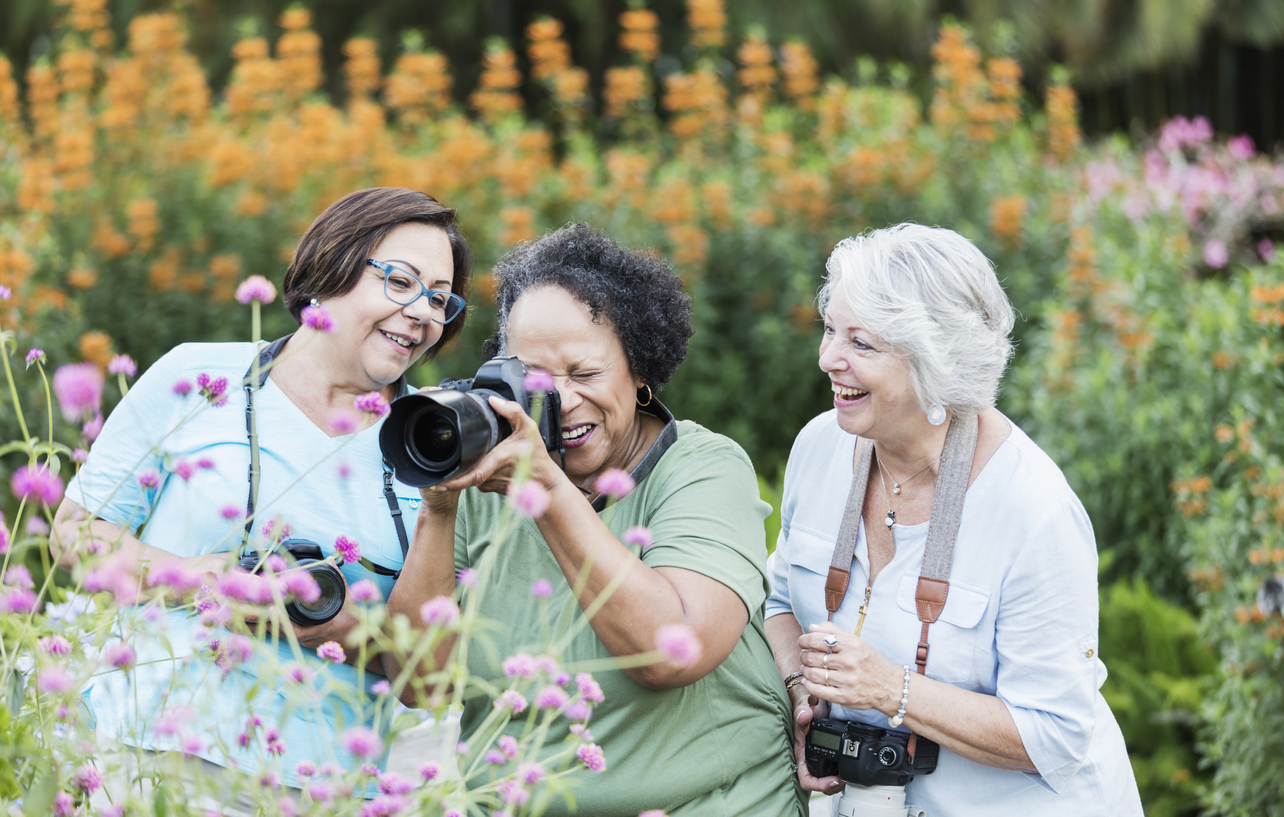
Photo by seb_ra via iStock
I hope you have enjoyed this Sony mirrorless camera comparison and that it has helped you in your search for a new camera. If you aren’t sold on any of the cameras above, here are a few more fantastic Sony cameras to consider that are currently in stock at MPB!
- The best Sony mirrorless camera for YouTube & Vlogging: Sony ZV-E10
- The best Sony mirrorless camera for adventure photography: Sony Alpha a6400
- The best Sony mirrorless camera for travel: Sony Alpha a7C
- The best Sony mirrorless camera for landscape photography: Sony Alpha a7R IV
- The best Sony mirrorless camera for sports and wildlife photography: Sony Alpha a9 II
Learn More:
We Recommend
Sony RX10 IV Review
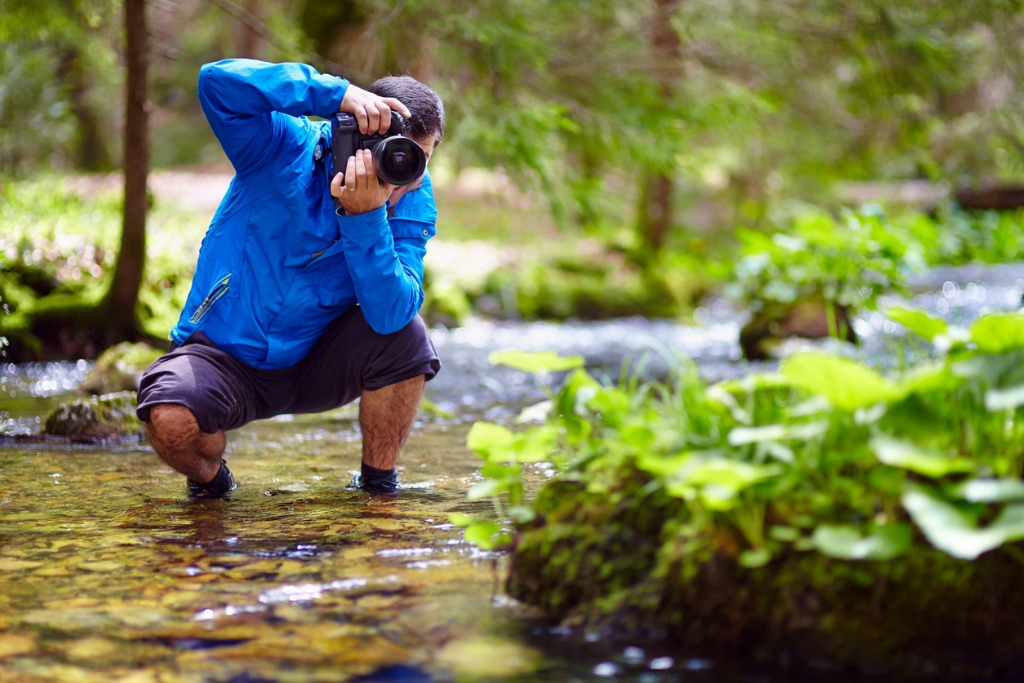
photo by xalanx via iStock
The Sony RX10 IV is one of the best bridge cameras you can find at this moment. Designed to do it all, this camera is potentially a great tool for versatile photographers who don’t want to carry a bag full of lenses at all times.
The RX10 IV is equipped with a 1-inch stacked sensor and a 24-600mm zoom lens, and it offers 20.1 megapixels of resolution, 315-point phase-detection autofocus system, 24 fps burst shooting speed and 4K video recording. If you are looking for Somy camera which has super zoom capabilities with great image quality then check our Sony RX100 VII camera review done on our website PhotographyTalk.com.
Is this the right camera for you? Find out in this Sony RX10 IV Review.
Sony RX10 IV Specs
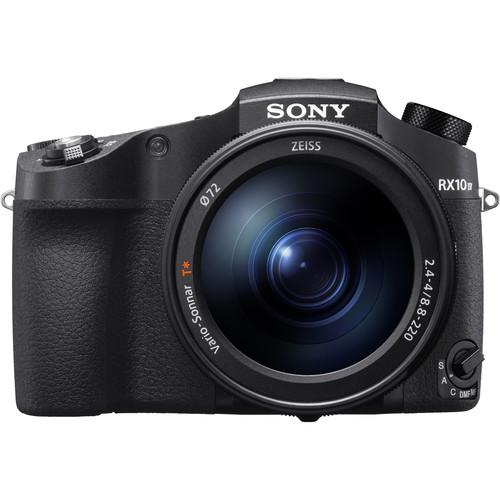
The Sony RX10 IV is built around a 20MP 1"-type stacked BSI-CMOS sensor and BIONZ X image processor while its native ISO sensitivity range is 100 - 12,800 (expandable to ISO 64 - 25,600). Because of this, the camera offers great image quality and impressive operating speed.
The RX10 IV allows you to shoot 24 frames per second without viewfinder blackout, and it offers an electronic shutter speed of 1/32,000th. This is very useful if you are interested in photographing wild animals, sports players or car races. Additionally, the camera has a silent shooting mode so you can take photos without being distracting.
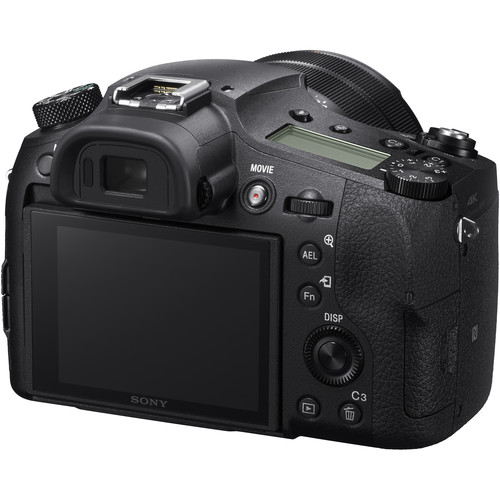
The RX10 is also equipped with an outstanding autofocus system. The camera has an autofocus speed of 0.03 seconds and 315 phase-detect points (in addition to 25 contrast-detect points) covering 65% of the frame. Actually, this is one of the rare bridge cameras that includes phase-detection autofocus which is well-known for providing good results in low-light conditions.
Sony RX10 IV Body & Design
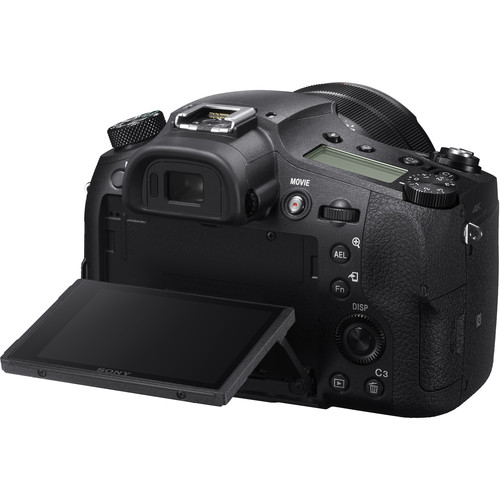
The Sony RX10 IV looks like a DSLR camera. It measures 5.2 x 3.7 x 5.0 inches and weighs 38.6 oz (including batteries). The camera is weather-sealed so you can use it in harsh weather conditions.
The RX10 IV has both viewfinder and LCD screen. The 2.35-million dot XGA OLED electronic viewfinder is big (0.39-inch) and bright, while the 3-inch LCD (1.44-million pixels) uses touchscreen technology and it is possible to move it in different directions. Moreover, the camera has a small monochrome LCD on the top where you can see the main settings.
The battery life of the camera is rated to only 400 shots.
Sony RX10 IV Video Performance
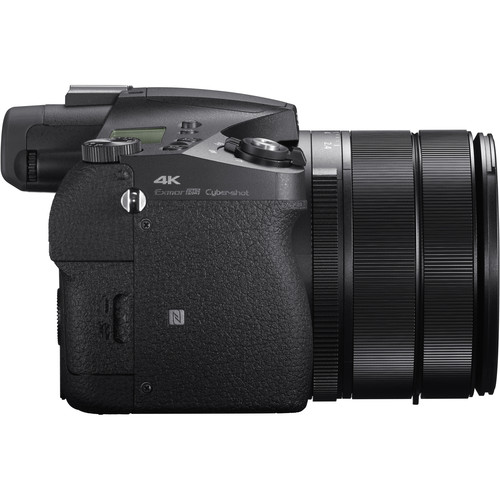
The Sony RX10 IV is capable of recording high-quality movies. The camera shoots 4K, Full HD 1080p, and High Frame Rate (HFR) videos. Additionally, it has headphone jack, microphone port, and HDMI-out.
Learn more about the Sony RX10 IV in the video above by DPReview
Sony RX10 IV Lenses
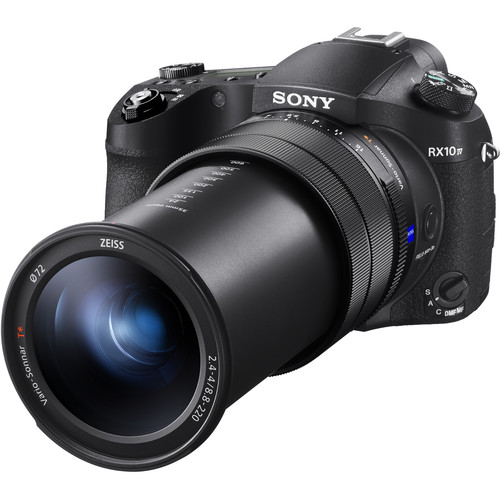
The Sony RX10 IV is equipped with a high-quality Zeiss Vario-Sonnar T lens with built-in optical image stabilization. The camera has a 25x zoom (24-600mm) so you can easily take well-defined images of distant subjects.
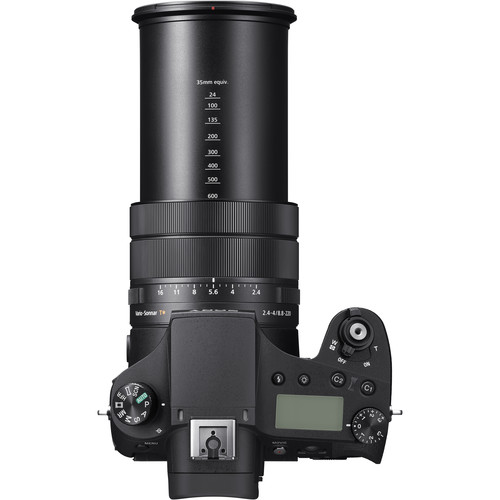
Although the RX10 IV features optical image stabilization, we suggest you use a tripod at high zoom setting. Overall, the lens attached to this camera will allow you to take amazing photos regardless of situation.
Sony RX10 IV Price
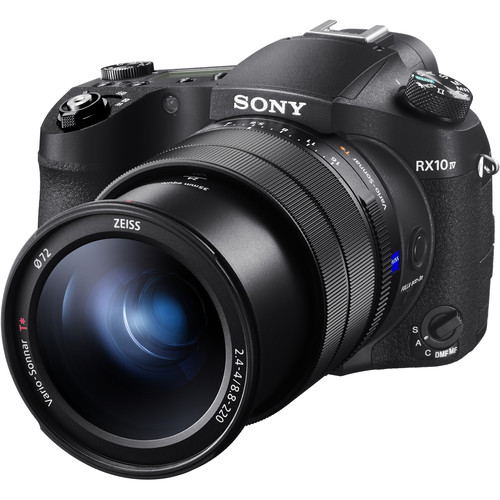
The Sony RX10 IV costs around $1,598.00. This is a relatively high price for a bridge camera, but the RX10 IV has amazing features that can justify such a high price tag. We would specifically recommend this camera to wildlife photographers and travelers.
Of course, there is also an option to buy a used Sony RX10 IV. MPB is a website that specializes in connecting sellers and buyers of used photography equipment. At the moment, there you can find a Sony RX10 IV in excellent condition for only around $1,229.00.
If you're not familiar with MPB, check out our MPB review to learn why it's our top-recommended used gear resource.
We Recommend
Sony RX100 Mark VI Review
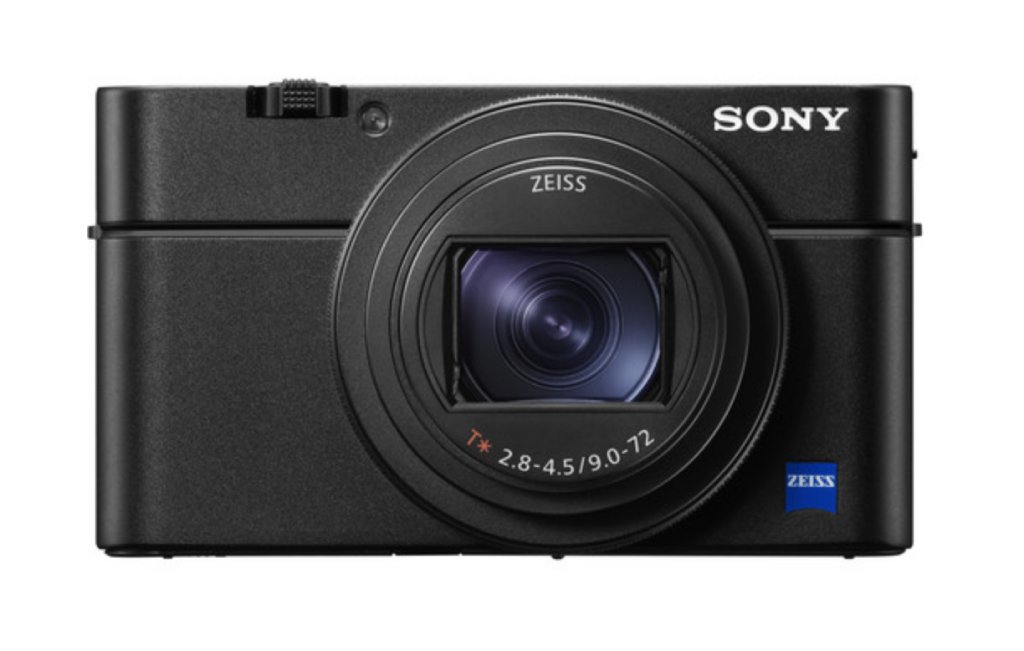
As frequently happens with new camera releases, it seems everyone has forgotten about the Sony RX100 Mark VI ever since the Mark VII dropped.
But, given how cheap and how effective the Mark VI is for the everyday photographer, this is quite unfair.
Besides, the Sony RX100 Mark VI is less than two years old, and while some criticized Sony for pricing it too high back then, this price has dropped significantly. Comparing it with Sony RX100 VII would be a good start for this article.
Sony RX100 VI vs Sony RX100 VII
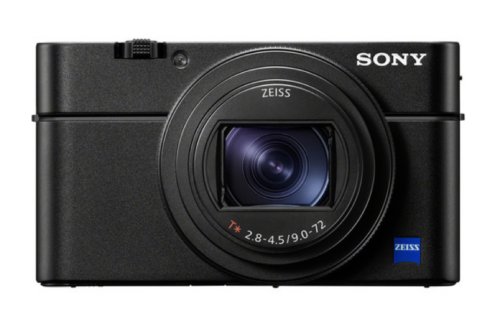
*Sony RX100 VII pictured above
The Sony RX100 VII, in comparison with the VI, dropped in 2019 to similar rave reviews. However, when it comes down to it, both of these cameras have very similar features despite their very different price points.
Both cameras feature 20.1MP sensors, 4K video capabilities, a 180-degree up/90-degree down tilting LCD touchscreen, Wi-Fi and Bluetooth, and designs that are almost identical.
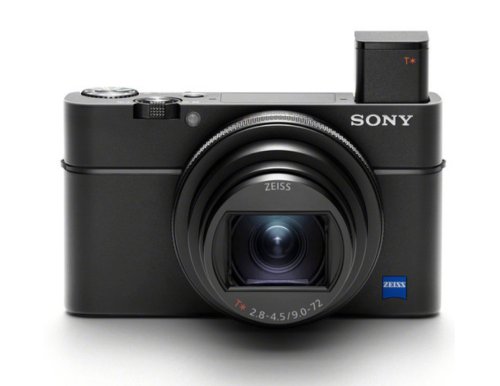
*Sony RX100 VI pictured above
So, what do these two cameras not have in common?
For one thing, the RX100 VII has a slightly larger ISO range, starting at 100 compared to 125 on the VI.
Additionally, the RX100 VII has some of the best burst shooting I’ve ever seen at this price point. Sony’s Single Burst Shooting, which is featured on the RX100 VII, allows the camera to shoot 90fps, instead of 24fps on the VI.
The AF system is also slightly improved in the RX100 VII with 357-points, as opposed to 315-points on the RX100 VI.
The only change of significance between the two cameras is that the RX100 VII features vertical movie recording and a 3.5mm microphone input.
However, unless you’re purchasing this camera for videography, it’s safe to say you should go with whatever’s cheapest.
Sony RX100 VI Specs
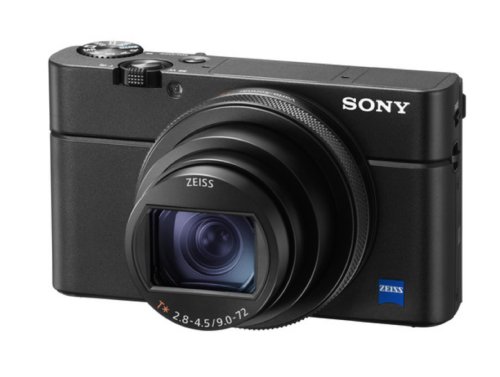
The Sony RX100 VI features are pretty incredible. For starters, it features a 20MP 1-inch sensor and 4K video.
Plus, this camera comes with 24fps burst shooting, as discussed above, and an autofocus system that performs with the best of them.
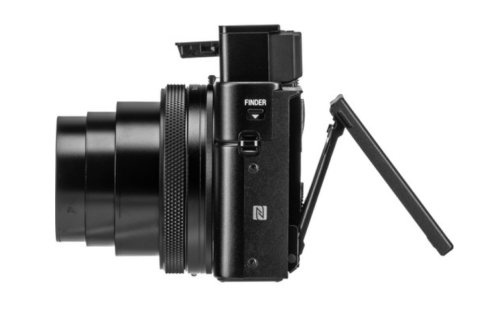
Other Sony RX100 VI Specs Include:
- 20MP Sensor
- 24-200mm zoom
- 315-point AF system
- 24fps burst mode
- 3” tilting LCD screen with 921-k dots
- 100% viewfinder coverage
- 4K video at 30fps or Full HD video at 120fps
- Built-in Wi-Fi
- 10.6 oz
Sony RX100 VI Body & Design
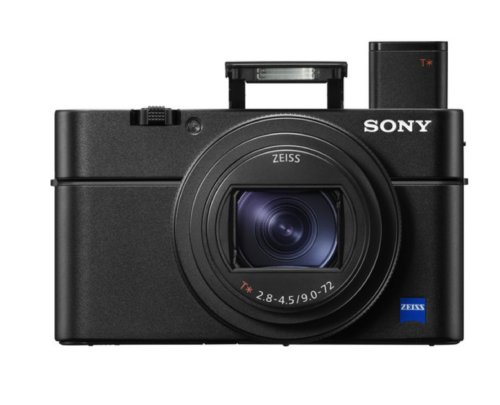
This camera is surprisingly small at less than 11 oz and 4 x 2.4 x 1.7 inches.
For comparison, this camera is smaller than most new smartphones.
Unfortunately, this can be seen as both a pro and a con. For example, there are not very many buttons on this camera since, really, there’s no room for them. Although, there is a pop-up EVF and built-in flash.
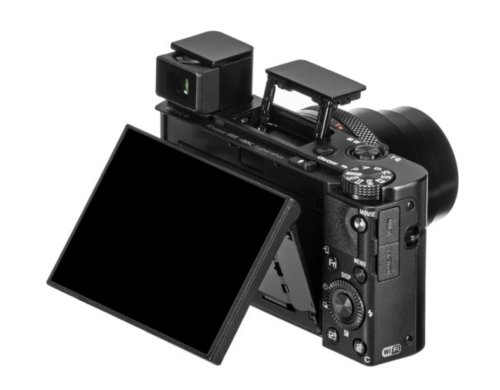
Additionally, the 3” tilting LCD touchscreen helps give the otherwise small camera a little more functionality and range. The touchscreen also features a selfie-mode for shy vacationers or vloggers.
Plus, it’s impressive that Sony could fit a 24-200mm zoom into such a small thing.
Sony RX100 VI Build & Handling
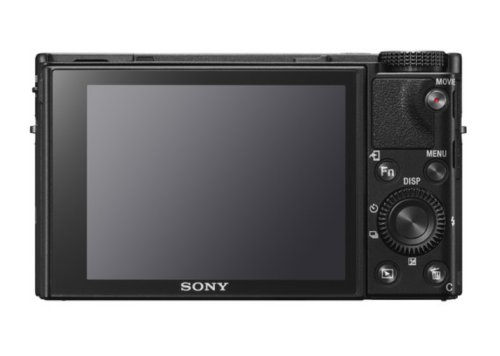
Given the Sony RX100 Mark VIs small size, it’s only fair to question how comfortable it can really be to shoot with.
However, Ken Rockwell makes an incredible point. Every one of these buttons are “easy to feel and press,” and as soon as you sit down with your camera to set up the functions, it works as simply as you need it to. Plus, it shoots faster than anything close to its size.
It comes with one feature I think is invaluable, which is a row of nubbins along the bottom of the camera so you can put it down somewhere flat to shoot and not damage the camera’s body.
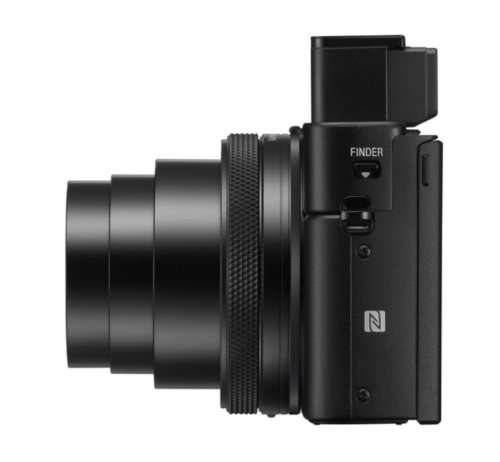
As seen above, the lens retracts when not in use, and pops out when in use (the above positioning is at 24mm).
Keep in mind that this camera is as small as a smartphone, and is therefore as easy to drop as one, so you should think of investing in a nice strap for it to prevent any heartbreak.
Sony RX100 VI Video Performance
As you can see in this Fan of Tech video, the Sony RX100 VI is no different than any other Sony camera in that it features incredible video capabilities.
The Sony RX100 VI features slow-motion video at up to 32x. If you’re using the Sony RX100 VI to shoot 4K video you can do so in either Sony’s S-Log or Hybrid Log Gamma profiles, which allow for you to capture gorgeous highlights that are otherwise compressed.
One thing that Hawaii Camera doesn’t point out, though, is that the battery life on the Sony RX100 VI is wanting, especially when shooting video, so if you’re going to be taking it on any long trips to Japan, think about getting a second battery.
Sony RX100 VI Price

Since you’re opting to purchase a Sony RX100 VI instead of the Sony RX100 VII, I’m going to assume it’s because you recognize that it has almost all of the same features with a cheaper price tag.
So, let me suggest you head over to MPB and buy your VI used to save even more.
In fact, the Sony RX100 Mark VI price starts at the $700 level (even for a camera in “like new” shape).
That’s a deal you need.
We Recommend
Sony RX100 VII Review

Sony RX100 VII Camera
If you are already familiar with the RX100 series, you might have an idea of what to expect. If not, let’s quickly introduce it as a compact, high-end super-zoom camera with great image quality and versatile functions.
Without a doubt, travelers and photo enthusiasts will find a use for the Sony RX100 VII. We can tell this because its predecessor already had pretty stunning features such as a large 1” sensor, 4K video recording and 24 fps burst rate. The latest camera in the RX100 series can only be better, right?! One of the finest DSLR camera Sony A7 has similar features same as RX100 mainly compact size and fantastic image quality.
In the video above, I outline what's new about the Sony RX100 VII, what I like and dislike, and whether it's a good buy.
For more details, check the review below!
Sony RX100 VII Specs

Like its predecessor, the Sony RX 100 VII features a large 1-inch Exmor RS CMOS sensor. Although the camera fits into a jacket pocket, its powerful sensor allows it to deliver sharp and rich-in-detail 20-megapixel photos.
Another great thing about the RX100 VII is that it comes with a 24-200mm equivalent F2.8-4.5 lens which is great for wide-angle and telephoto shooting. Whether you want to take an image of the close target or a distant object, this camera will make the best out of it.

The Sony RX100 VII has a continuous shooting speed of 20 frames per second. This is particularly useful for shooting moving targets such as animals or sports players. Although the RX100 Mark VI had slightly bigger burst rate (24 frames per second), it also had viewfinder blackout.
With the RX100 VII, you can apply burst shooting without blacking out the viewfinder, which is much more useful and practical. Additionally, the camera shoots seven-image bursts at up to 90 frames per second.
The best thing about the Mark VII is that it carries big improvements in autofocus technology. The camera has 357 phase-detection and 425 contrast-detection AF points and it can acquire focus in 0.02 seconds. In addition, the camera uses the most advanced Real-time Tracking and Real-time Eye AF.
Sony RX100 VII Body & Design

The Sony RX100 VII is a very tiny camera. It measures 4.02 x 2.28 x 1.69 inches and weighs only 0.67 lb. The camera easily fits into a pocket so it can follow you everywhere you go.
Overall, the new camera shares the same design as its predecessors. In order to save some space, the RX100 VII features a pop-up viewfinder. Additionally, it also has a built-in flash and tilting screen.
The LCD screen is touch-sensitive which is very practical for repositioning the focus area. Moreover, it folds up 180 degrees and down 90 degrees. This is very convenient for vlogging or shooting images from uncomfortable angles.
Sony RX100 VII Build & Handling

The Sony RX100 VII can be a bit complicated in terms of handling. Its buttons and controls are small, as is the camera body, so unless you have very delicate fingers, this camera can be a little difficult to handle.
As it is the case with most of the compact cameras, the RX100 VII doesn’t have weather-sealed protection. With this being said, try not to expose the camera to water, sand or freezing temperatures.

However, Sony has also introduced a new leather-look body case for the RX100 series, which includes a lens jacket and shoulder strap to protect the camera from bumps and shocks. If you intend to use the RX100 VII as a traveling camera, it is worth considering buying it.
Sony RX100 VII Video Performance
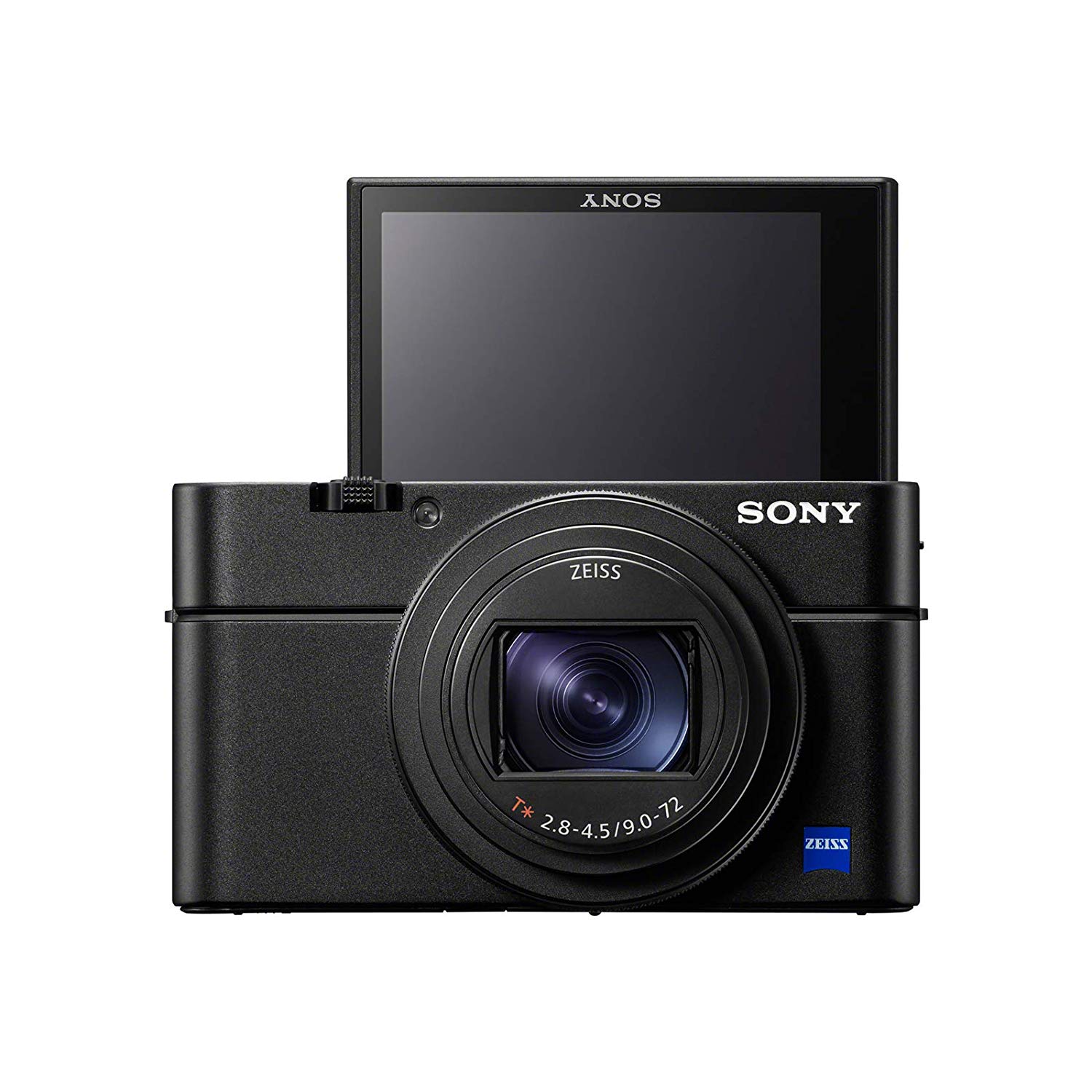
When it comes to video capabilities, the RX100 VII shoots 4K video at up to 30p and Full HD video at up to 120p. These are the same features as in the Mark VI, however, the Mark VII adds a 3.5mm mic socket, more effective stabilization, and a better autofocus system.
The RX100 VII is generally a good camera for vlogging. First of all, it has amazing video features. Moreover, it has an articulating screen, while it is also very portable and easy for use.
4K videos are limited to only 5 minutes in order to protect the camera from overheating. There is an option to manually disable this limit, but Sony recommends you to use a tripod while recording movies with this setting.
Sony RX100 VII Lens

The Sony RX100 VII comes with a 24-200mm f/2.8-4.5 Zeiss Vario-Sonnar lens. Due to its big focal range, the camera provides versatility which makes it great for many different uses. However, it is not the best option for night photography because this lens does not perform as well under low light conditions as in other environments.
The RX100 VII is particularly good for travel photography. The only disadvantage is that it can take only about 250 shots on a full charge. If you spend a lot of time taking pictures, it’s good to know that you can charge the camera via the USB-C port. Also, using a viewfinder instead of an LCD screen might save some battery life.
Sony RX100 VII Price

Clearly, the Sony RX100 VII has a very interesting set of features. Although it is no bigger than an average smartphone, it produces stunning and authentic images. Still, this does not come at a cheap price.
At the moment, it's priced at $1,298.00.
If this is out of your budget, you might consider getting some other camera model from the RX100 series, such as the Sony RX100 V or Sony RX100 VI.
Both of these cameras are also worth buying in 2019, and you can have them at a low price if you don’t mind buying used. Check out MPB.com, where you can get them for a good deal.
We Recommend
Sony RX1R II Review
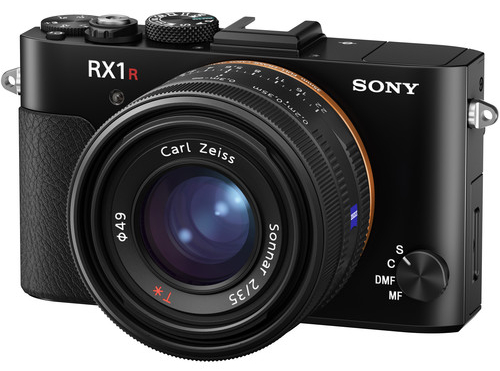
Though it pains me to say it, the Sony RX1R II is getting up there in age. The Sony RX1R II came out in 2015, which means that it is now 6 years old. While the Sony RX1R II was one of the most incredible full-frame compact cameras back in the day, does it still hold up after all this time?
I think this really depends on two major factors: what you’re planning on using your Sony RX1R II for and how much money you have to spend. This is because the Sony RX1R II still provides a wonderful shooting experience for stills photographers, between its 42MP full-frame sensor, its incredibly small body, and its hybrid autofocus system, but for any photographers who need to use this camera for videographer, I definitely suggest going elsewhere.
In this Sony RX1R II review, I’m going to walk you through all of the Sony RX1R II specs (the good and the outdated), the Sony RX1R II handling, and finally the Sony RX1R II price.
Sony RX1R II Specs
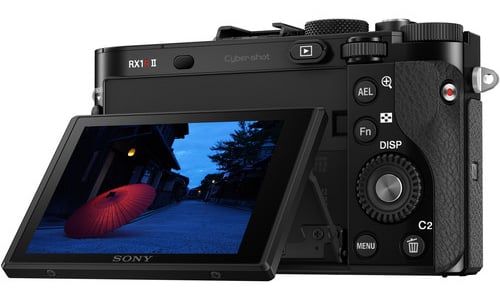
One of the best Sony RX1R II features is its 42MP BSI-CMOS full-frame sensor, which allows you to capture images with some of the highest quality available to your average photographer, even in 2021.
This camera also features an ISO range of 100-25,600, so it does really well with shooting in low light situations, like during twilight or inside dim areas.
The camera also features a 3” tilting LCD screen with 1.23m-dots, though the screen isn’t a touchscreen.
The electronic viewfinder features 100% coverage and a resolution of 2.34m-dots, which still rivals many cameras that are just coming out on the market.
Other Sony RX1R II Specs Include:
- 42MP BSI-CMOS full-frame sensor
- 3” tilting screen with 1.23m-dots
- ISO range of 100-25,600
- 2.34m-dot EVF with 100% coverage
- 399-point AF system
- 5fps burst mode
- 1080p video capabilities at up to 60p
- Built-in Wi-Fi
- 220-shot battery life
- 1.12 lbs
Sony RX1R II Body & Design
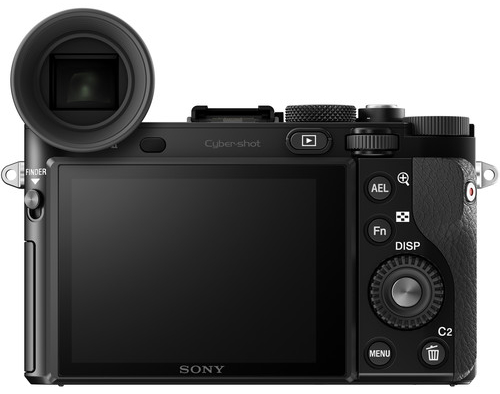
The Sony RX1R II design is pretty similar to those of its predecessors. The camera measures 4.45” x 2.56” x 2.83” and weighs 1.12 lbs. So, it fits into a jacket pocket, but won’t fit into your jeans pocket.
The camera is built out of magnesium alloy and looks incredibly professional. I’m not sure what it is that I like so much about how polished this camera appears, but the moment you get one in your hands I guarantee you’ll feel the same way.
This camera doesn’t come with a built-in flash, but it does come with a pop-up EVF. Sony obviously didn’t care to keep the camera compact while shooting because this EVF is really large. It’s one of the best ones I’ve ever had the pleasure of using.
You can remove the hotshoe when you don’t need it and the tilting screen can move 109-degrees up and 41-degrees down. As can be expected of a camera at this price point, there are plenty of customizable options and buttons galore.
Learn More:
Sony RX1R II Build & Handling
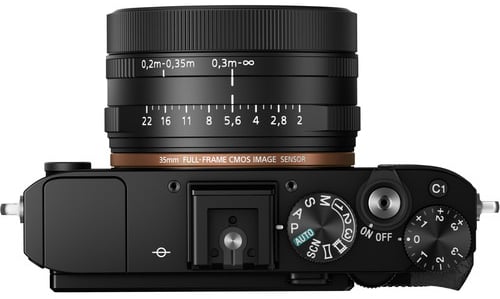
I’ll start with one thing I don’t love about the Sony RX1R II build, and that is that the camera doesn’t really come with any grip to speak of. In an effort to keep the camera as compact as possible, Sony left out any form of grip other than a rubberized texture and that is pretty disappointing to me.
Other than this, the Sony RX1R 11 is really fun to shoot with. It is really light so you can carry it around all day without getting tired. Of course, “all day” may be limited if you don’t bring an extra battery because this camera can only shoot 220-shots without needing to be recharged.
One other thing that I don’t love about this camera is that it doesn’t come with any weather sealing. Since it is so expensive, you would expect it to.
Sony RX1R II Video Performance
As I’ve already alluded to, the Sony RX1R II is not a good camera if you’re looking for video quality. The Sony RX1R II video performance test above proves why.
As The Art of Photography pointed out in their video, the Sony RX1R II does not offer 4K video. It only offers 1080p video at up to 60p.
Still, if you don’t need 4K video, then the camera still offers a lot in terms of its video quality. For instance, this camera comes with a SteadyShot image stabilization which does an excellent job of stabilizing video for photographers on the go. It also comes with face detection, great low light shooting, and a microphone socket so that you don’t have to rely on audio captured by the camera’s speakers.
Sony RX1R II Price
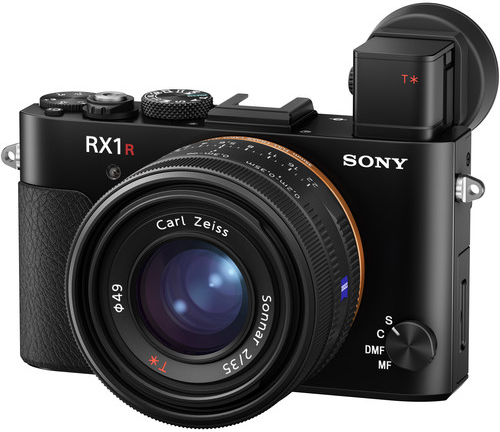
Given the eye-watering drop price of the Sony RX1R II, which was $3,300, you’d be wise to expect to still spend a pretty penny on it even in 2021.
Though Sony is no longer manufacturing the Sony RX1R II, you can still find plenty of them available for sale online from other photographers. And, if you’re smart, then you know to check MPB first.
MPB is our favorite used camera retailer, both because of the quality of their used cameras and because of the wide range of products they always have in stock.

As of the publication of this article, MPB currently has two Sony RX1R II bodies available starting at $2,080.
Now, as I mentioned, this is a lot to spend on a camera that is 6 years old. So, I don’t recommend it for anyone who foresees themselves needing a better video camera in the near future, unless of course you already have one.
However, for amateur photographers who are looking to get into any types of professional photography where high-quality is needed, like product photography, this is an excellent choice to keep your initial costs down.
Learn More:
We Recommend
Sony to Launch a6500 Replacement Later This Month
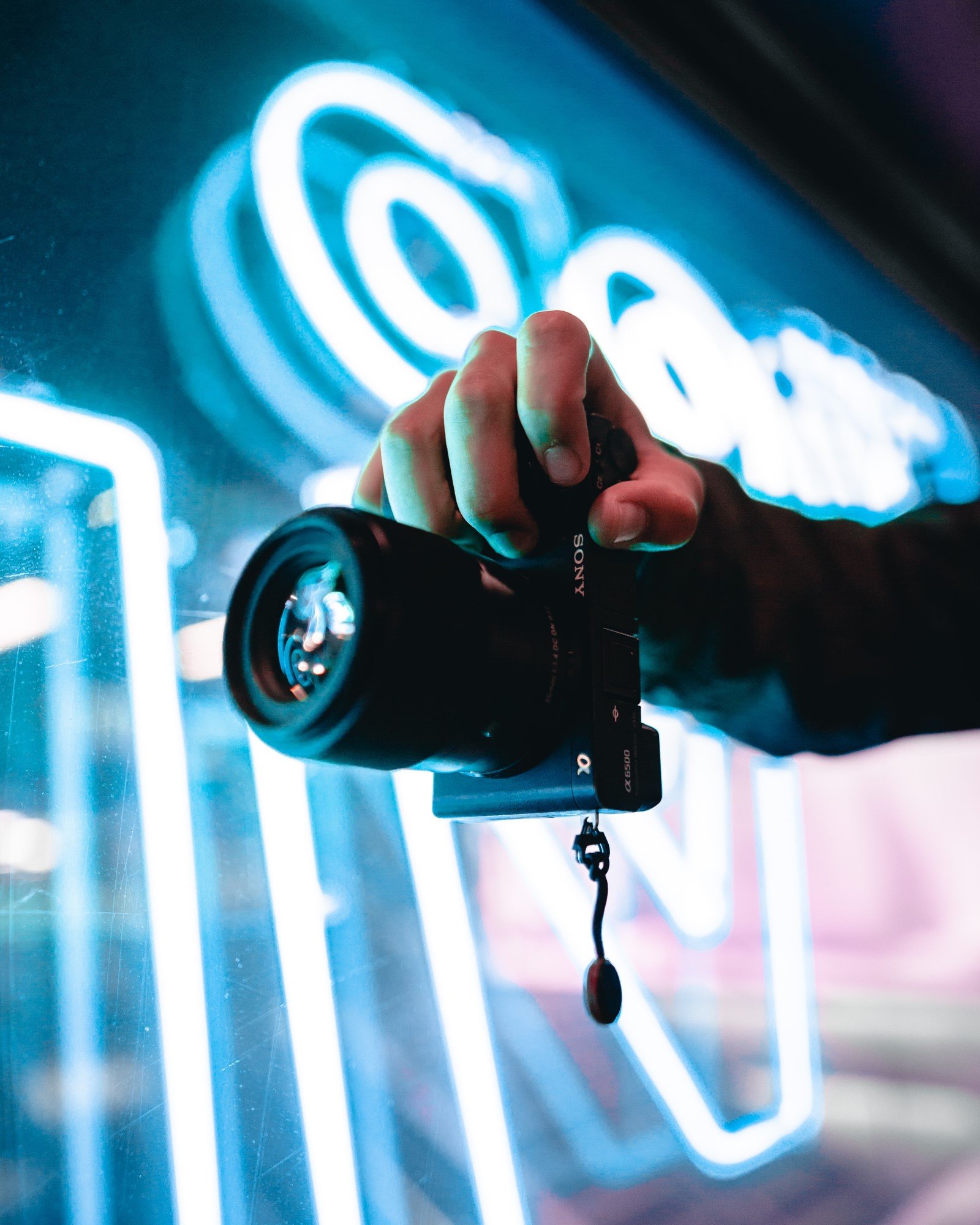 Photo by Rico Reutimann on Unsplash
Photo by Rico Reutimann on Unsplash
Sony Alpha a6500 Camera
It looks like Sony is finally launching a replacement to the much-beloved Sony a6500 by the end of this month.
Sony Alpha Rumors, the internet’s one-stop shop for all buzz about Sony, published the newsafter it was confirmed by two independent sources.
So, let’s dive into all the rumors about the a6500 replacement.
Rumored a6500 Replacement Specs

Sony A6500
One of the sources with Sony Alpha Rumors said the a6500 replacement will be “a sort of ‘cheaper’ a9 with a slightly bigger grip than the current a6500 to accommodate the bigger NP-FZ100 battery.”
We’re assuming that if this is a less-expensive version of the a9 that it will mean that the a6500 replacement will also feature in-body image stabilization and phenomenal video specs.
Since the a6400 shoots 4K/24p and 1080/120p at full-pixel readout, the a6500 replacement has to feature something closer to 4k/60p.

Sony A6500
Since Sony is also known as one of the leaders in autofocus tech, we assume the new camera will also feature their Real-Time Tracking autofocus.
Though none of these Sony rumors have been officially corroborated by Sony, Sony Alpha Rumors has an impressive track record with their reporting, so it’s safe to bet that more info will be dropping once we approach the end of the month.
Pros & Cons of the a6500

Sony A6500
Given that the upcoming Sony cameras info we have isn’t concrete, we figured we’d better take a closer look at some of the features the a6500 has that we would and wouldn’t like in the Sony a6500 replacement.
The Sony a6500 is known for its autofocus technology, so this had better be in the a6500 replacement or Sony will have some unhappy photographers on its hands!

Sony A6500
Contrarily, the a6500 doesn’t have the best touchscreen. Sony tried to do some interesting things with their touchscreen technology, like the fact that it is ultra-sensitive, but in the end, it mostly ends up being a nuisance.
Sometimes the a6500 truly just feels too small as well. Some of the buttons are oddly placed, like the two custom function buttons located on top of the camera. I think this issue would be fixed with a new design and possibly a slightly larger build.
Sony a6500 Replacement Wish List:
- The same autofocus technology
- Better LCD touchscreen technology
- A third exposure control (hopefully near the grip, if you’re listening Sony)
- Better ergonomics; possibly larger build
Can’t Wait for the a6500 Replacement? Buy Used!

Sony A6500
We found some killer deals on Sony a6500s on MPB. Starting at $829, you can own one of these cameras if you don’t already.
Plus, as past camera drops have proven, used prices on a6500 are probably about to drop even further so if there is a time to buy one, the time is now. Since this camera is the inspiration, if you will, for its replacement, you can get a lot of the same features we expect to see in the new version, but obviously at a much lower price.
If you’re looking for something a little different and less expensive still, we also scoped out a Sony a5100 for barely over $200.
If you want to wait for the Sony a6500 replacement to drop, you can sell or trade-in your current camera on MPB when the time comes.
We Recommend
Sony ZV-1 Review

The Sony ZV-1 is a 20MP compact camera that is designed for vloggers and other social media gurus. It features 4K video at up to 30p, as well as Full HD video at up to 120p and it also features specs that have been added specifically for vloggers, like a directional microphone.
Some tech blogs have pointed out that although Sony obviously created the Sony ZV-1 with vloggers in mind, it still takes excellent still images. This means that an entry-level photographer, who is just as interested in videography, may think about getting a Sony ZV-1 as well. If the Sony ZV-1 prevents you from having to take two cameras with you everywhere you go, then the price, which is a little high, may be worth it.
While the Sony ZV-1 is a small camera built specifically for vloggers, a lot of vloggers have pointed out that it is missing a ton of features they expect of a camera in this price range. With these criticisms, is the Sony ZV-1 worth it?
Read this Sony ZV-1 review to find out.
Sony ZV-1 Specs

The Sony ZV-1 specs include some basics expected of any modern camera designed for vloggers. For instance, it shoots 4K video at up to 30p and comes with a microphone jack so that you don’t have to rely on the new directional microphone (though it is pretty good).
The Sony ZV-1 features a flip-out touchscreen which will allow you to see yourself as you are filming and a zoom lens which will be a draw for travel vloggers.
But, it is also missing some specs. For instance, the battery life is truly not impressive at all. The Sony ZV-1 battery life is rated for 260 shots, but if you’re using it for video as most people likely will be, this translates to just 45 minutes of shooting before you’ll need to stop and recharge your battery. For professional vloggers, this battery life is almost laughable.
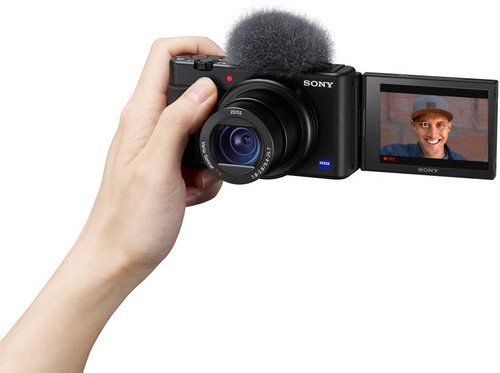
Unfortunately, the battery life is not the only spec that isn’t where it should be. The Sony ZV-1 comes with a 24-70mm equivalent f/1.8-2.8 lens. This lens is a bit limited. A lot of vloggers have already started to complain that a wider-angle lens would help them be able to use the Sony ZV-1 more frequently.
I also have one more criticism of the Sony ZV-1 that I likely wouldn’t have if it had come out in any other year, but the face detection really doesn’t work that well if you are wearing a mask. This means that any vlogger who is out working in crowds right now won’t be able to use face detection at all. I have many other cameras that can still detect my face quite easily when I’m wearing a mask and it seems like an oversight on Sony’s part that they released a camera during a pandemic that can’t read faces with masks on.
Other Sony ZV-1 Specs Include:
- 20MP BSI CMOS sensor
- 24-70mm equivalent f/1.8-2.8 lens
- 4K video capabilities at up to 30p; Full HD video capabilities at up to 120p
- 3” fully articulating touchscreen with 921k-dots
- Built-in microphone jack
- Built-in WiFi and Bluetooth
- 260-shot, 45 minute battery life
- 10.37 oz
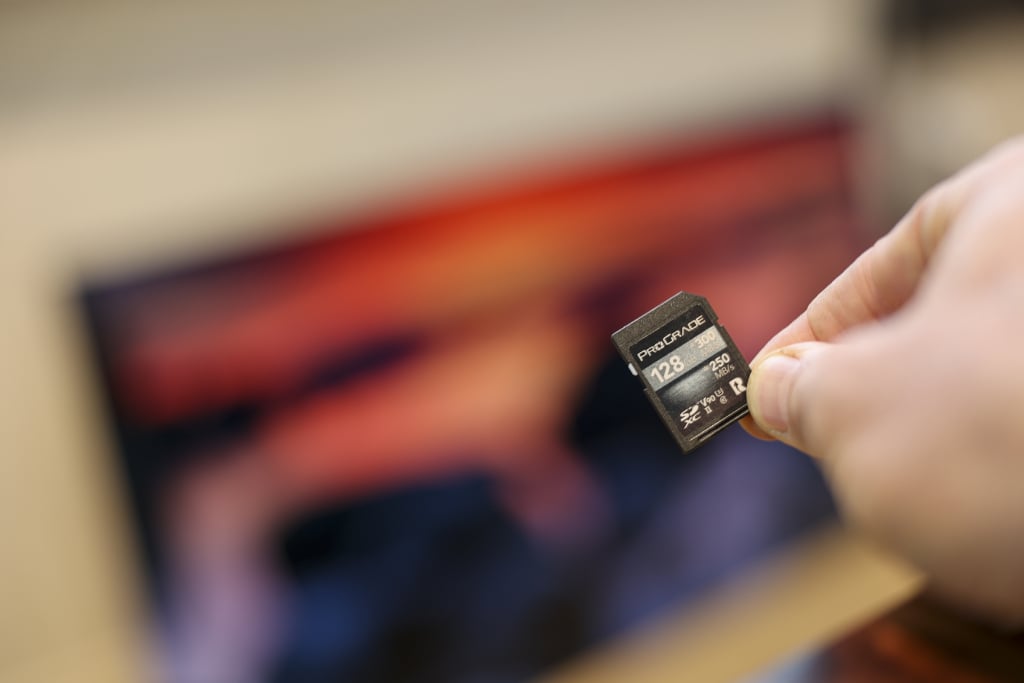
And while the Sony ZV-1 has a UHS-I card slot, I recommend using a UHS-II card. Why? It's easy...
Even though the camera can't take advantage of the faster UHS-II write speeds, using a UHS-II card will still get you faster read speeds. This means that you can dump your files to you computer faster, and who doesn't like that?
I use ProGrade cards in all of my cameras, so I recommend the ProGrade 128GB UHS-II card shown above for the ZV-1. It's a fast, reliable card that will give you years and years of service whether you shoot photos, videos, or both!
Sony ZV-1 Body & Design
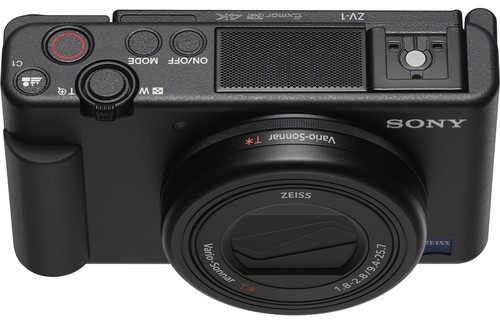
The Sony ZV-1 design is genuinely compact. The camera only weighs 10.37 oz and measures 4.13” 2.36” x 1.73”. It genuinely fits right in your pocket.
Since the camera is so small, most of the rear of the camera is just the screen. There is a flat command dial, as well as a four directional control button, a Fn button, and a Menu and Play button. All of these are located on the bottom right of the rear of the camera.
The on-screen menu is quite simple and easy to use. You get there by pressing the Fn button.
Sony ZV-1 Build & Handling
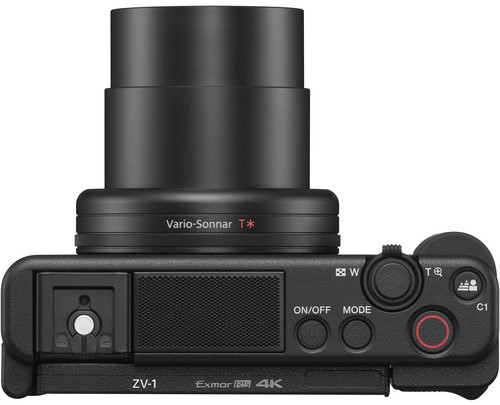
The Sony ZV-1 build is based off of the Sony RX100 V. So, if you’ve ever shot with the RX100 V before, you should fare pretty well switching to this camera.
The Sony ZV-1 handling is also really easy, except for the fact that the camera’s battery is so awful. I haven’t mentioned, though, that it is possible to charge the battery while you are filming via the micro USB port.
One other frustrating aspect of the handling on the Sony ZV-1 is the fact that it doesn’t come with an electronic viewfinder, so you have to work off of the display. This isn’t a huge deal except if you’re wearing polarized sunglasses. If you are, you won’t be able to see the screen at all, likely because the touchscreen is already polarized for the same reason.
Learn More:
Sony ZV-1 Video Performance
Thank you to Parker Walbeck for the Sony ZV-1 video performance test above.
As I’ve already mentioned, this camera comes with 4K video capabilities at up to 30p.
I already mentioned a problem I had with the face tracking this year (it isn’t great when you have a mask on), but I also have a compliment for the face tracking capabilities of this camera. There is a new option (that you can turn on and off) that allows the camera to choose not to focus on a person’s face and instead lets the camera focus on whatever is closest to the lens.
This is an excellent feature for vloggers who may want to show off a specific product in the middle of their video. For example, a beauty vlogger may want to record herself doing her makeup routine and, in the middle of that routine, show off a specific eyeshadow palette.
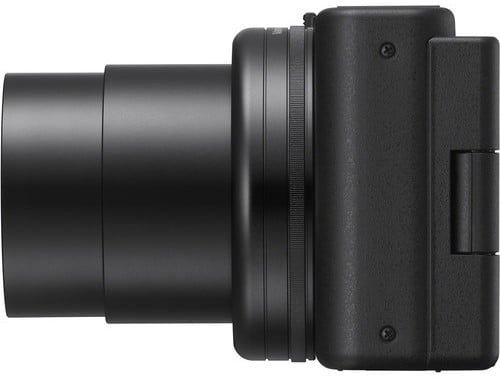
With some cameras, that would require her to block her face or cut and edit a new take into the video because those cameras would continue to focus on the face behind the product. This isn’t something you need to worry about with the Sony ZV-1.
The image stabilization in this camera is a mix of both optical and digital stabilization so that handheld shots are truly pretty smooth.
The camera also features a max ISO of 128,000, so you shouldn’t need to worry about shooting in low light situations.
The last thing I should mention is the internal audio. The built-in directional microphone allows you to get clear audio without using any external microphones.
Sony ZV-1 Price
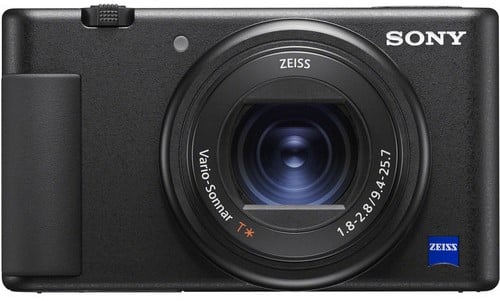
A lot of the criticisms that I’ve had about this camera throughout the article likely wouldn’t exist if it weren’t for the Sony ZV-1 price. This camera currently costs $800, if you’re looking to purchase it brand new.
I do like this camera, but for $800 I think there are better options available. However, since the Sony ZV-1 has had some criticisms in the press, some photographers are already offloading their cameras. While this isn’t great news for Sony, it is good news for you because that means you can get a literally brand new camera (it came out last year) for way cheaper.
As of the publishing of this article, there are 4 Sony ZV-1 bodies available on MPB and these used cameras start at $675.

If you want a Sony ZV-1 that is in “like new” condition, which means that it has almost no signs of use, you can do so on MPB for $709.
I think that this is a much more reasonable price for a camera of this quality and since MPB is a great company designed with photographers in mind, you don’t need to worry about any of the problems you might have buying used camera equipment anywhere else.
For more information about why we love MPB so much, you can read our full MPB review in the learn more links below.
Learn More:
We Recommend
The 61-Megapixel Sony a7R IV is Coming in September
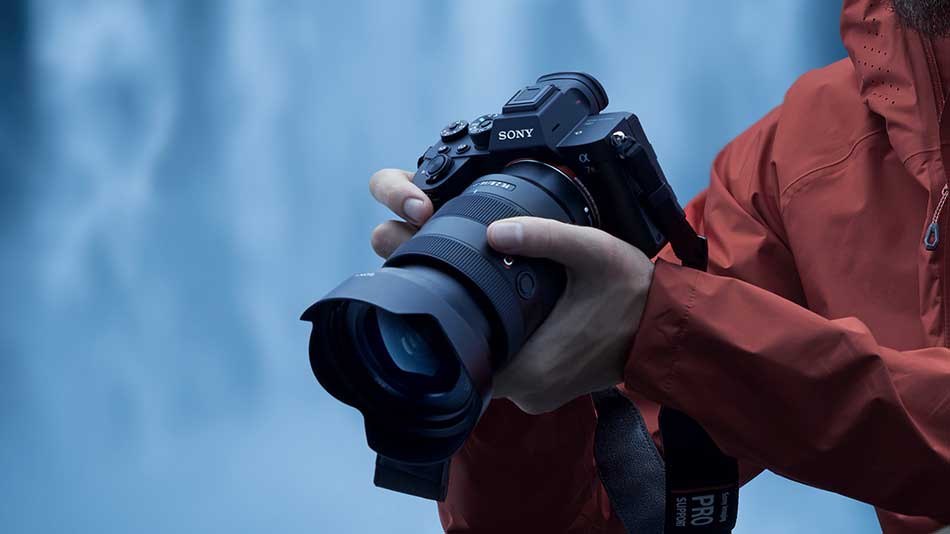
This morning, Sony set the internet on fire with its announcement that the a7R IV is coming in September.
Though the camera had been rumored for a while, two things took me (and everyone else, apparently) by surprise. You might also like to read Sony A7 iii review on our website PhotographyTalk.com.
Introducing the all-new #SonyAlpha a7R IV. This full-frame camera offers the world’s first 61.0 MP full-frame image sensor, 15-stop dynamic range, continuous bursts up to 10 fps, and much more. Learn more: https://t.co/wK49RHyk7b pic.twitter.com/UVdSDyBWgS
— Sony Alpha (@SonyAlpha) July 16, 2019
First, I didn't expect it to be coming so soon. Second, I certainly didn't think it would have a 61-megapixel sensor.
Yeah, you read that right...61 f@#&ing megapixels!!!
Sony’s new A7R IV full-frame mirrorless camera has a monstrous 61-megapixel sensor https://t.co/ncdFWSna12 pic.twitter.com/2wbpKquyxe
— The Verge (@verge) July 16, 2019
Not to be outdone by Nikon and Canon and their recent forays into the mirrorless market, Sony evidently wanted to remind everyone that they are the mirrorless champions of the world.
Unsurprisingly, with a sensor that resolute, you can likely expect medium-format image quality, at least according to Sony.
If you've ever shot with an a7R III, you know how good its 42.4-megapixel sensor truly is - the detail is quite incredible.
That being the case, I can't imagine what this new 61-megapixel sensor will be capable of doing, though judging from the Sony a7R IV sample photos, it appears to be every bit as good as Sony claims.
According to Sony, the level of detail the sensor will produce will be "extraordinary."
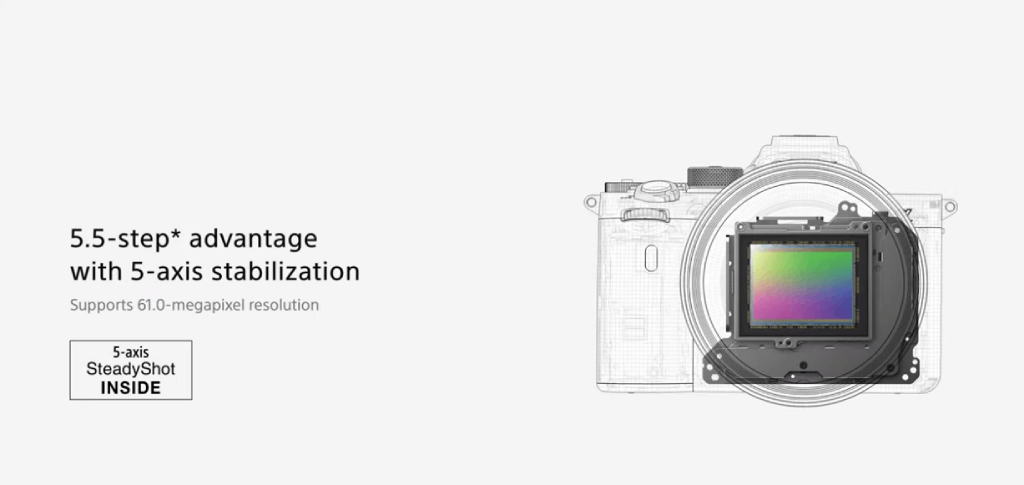
Here's a few more a7R IV specs as announced this morning by Sony:
- 5.76-million dot EVF
- 15 stops of dynamic range
- 5-axis image stabilization
- 10 fps burst shooting
- 567-point phase-detect autofocus system
- Eye-tracking technology for humans and animals
- Real-time AF for video recording
- 4K video with S-log 2/3 for professional editing
- Wireless tethering
- 26-megapixel resolution in APS-C crop mode
- Sensor-shift multi-shot mode creates 240-mp image files
- Enhanced dust and moisture resistance
- Dual UHS-II SD card slots
- Sony a7R IV price: $3,500.00
You can scope out the full specs of the a7R IV here.
If I were Nikon or Canon, I'd be sweating bullets right about now. As good as their mirrorless cameras are, it seems to me that Sony has thrown down the gauntlet. Try to beat this, Nikon and Canon!
Via The Verge
We Recommend
The Best Camera Under 1000 Dollars
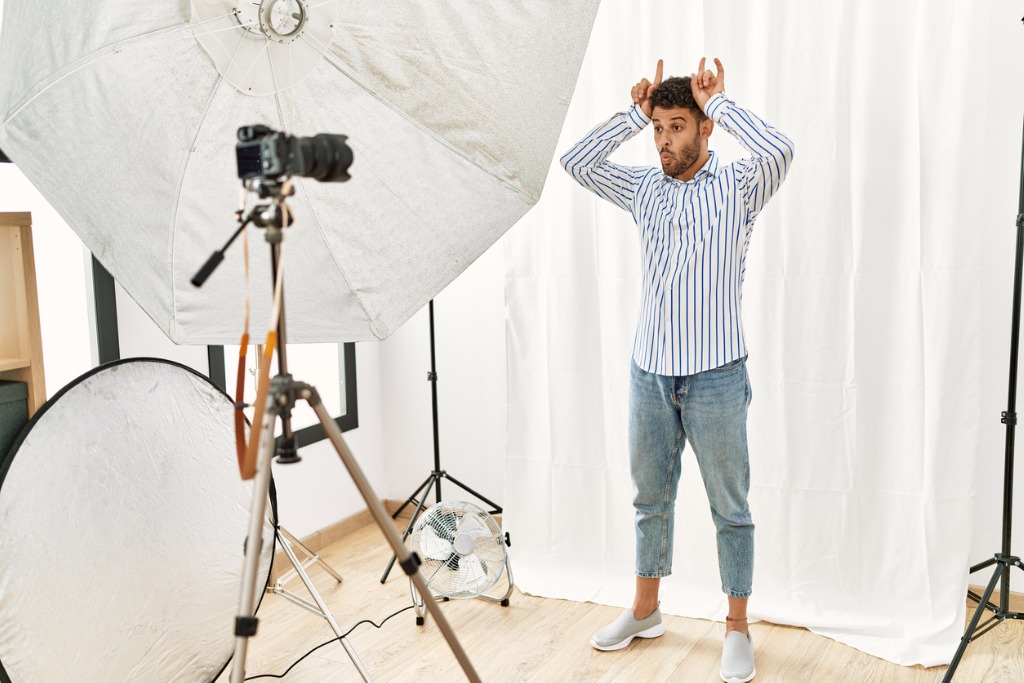
Photo by AaronAmat via iStock
If you are shopping around for a new camera but on a tight budget, finding the best camera under 1000 dollars can undoubtedly be a difficult task. With so many excellent budget-friendly cameras on the market today, how are you supposed to figure out which one is ideal for you?
That’s where this guide comes in! Below, we share three of the most popular cameras under 1000 dollars. We examine the key features, check out the pros and cons, and tell you who will benefit most from shooting with each camera.
One fantastic resource where you can find loads of all three cameras in stock, and a place I have bought and sold countless gear is MPB. They are a trustworthy and reliable online platform that sells used photo and video kit at unbeatable prices.
Furthermore, all of their cameras are carefully hand-inspected by experienced product specialists and backed by warranties, allowing you to make your purchases confidently and worry-free. You can also trade-in your old gear or sell it to MPB and use the proceeds towards new-to-you-gear. Overall, it’s an easy-to-use online platform perfect for getting outfitted with the equipment you want and need!
Now, without further ado, let’s dive in and discover which best camera under 1000 dollars will help take your photo and video skills to the next level!
Table of Contents
- Best Camera Under 1000: Canon EOS RP
- Best Camera Under 1000: Nikon Z5
- Best Camera Under 1000: Sony a7R II
- Which Best Camera Under 1000 is Right for You?
Best Camera Under 1000: Canon EOS RP
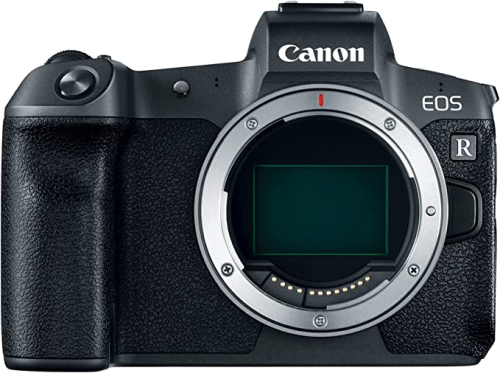
If you are a fan of Canon, their best camera under 1000 dollars is the Canon EOS RP. It’s an intermediate-level mirrorless camera that launched in March 2019. At its core, it’s powered by a 26.2-megapixel full-frame CMOS sensor and a Digic 8 image processing engine.
The first thing that stands out about this best camera under 1000 dollars is its size. It is one of the most compact and lightweight full-frame cameras ever built. Its portability makes it a popular choice for on-the-go shooters like travel, street, and adventure photographers.
Image quality, particularly in JPEGs, is another strong point of the EOS RP. Photos have good overall sharpness, and colors look great straight out of the camera, thanks to Canon’s award-winning color science.
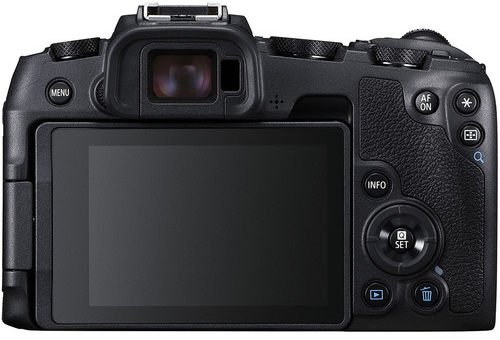
For video, it shoots both 4K and 1080p Full HD. The footage looks terrific at both resolutions, but, unfortunately, during 4K recording, a 1.7x crop factor is applied. If you want to capture wide shots, I recommend pairing it with a wide-angle lens like the Canon RF 14-35mm f/4 L IS USM.
A few more outstanding features of the EOS RP are its responsive autofocus system, excellent ergonomics, and the fact that it has both microphone and headphone jacks.
Here’s an in-depth look at the key features and specs of this best camera under 1000 dollars:
- Camera Type: Mirrorless
- Sensor: 26.2MP Full-frame CMOS sensor
- ISO: 100 - 40,000 (expandable to 50 - 102,400)
- Lens Mount: Canon RF Mount
- Speed: 5.0 fps
- Autofocus: 4779 points
- Video: 4K/24p & 1080p/60p
- Size/Weight: 133 x 85 x 70 mm / 485 grams
- Battery Life: 250 shots
- Stabilization: No
- Touchscreen: Yes
Learn More:
Best Camera Under 1000: Nikon Z5
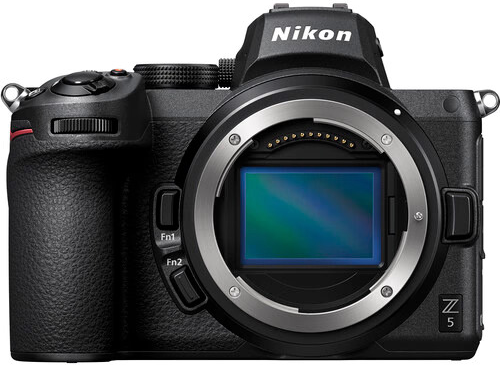
The Nikon Z5 is an enthusiast-level mirrorless camera perfect for beginner photographers. It was released in July 2020 and pairs a 24.3-megapixel full-frame CMOS sensor with a powerful Expeed 6 image processing engine.
The Z5 has a nearly identical look and feel to its professional siblings, the Nikon Z6 and Nikon Z7, but comes at a substantially lower price. Furthermore, the image sensor and image processor work together to create beautiful, high-quality photos and videos.
Our favorite thing about this camera is how easy it is to set up and use. The layout of the buttons and controls is well thought out, and the menu systems are intuitive and extremely easy to navigate. Moreover, the autofocus is accurate, and the AF joystick makes selecting a focus point a piece of cake.
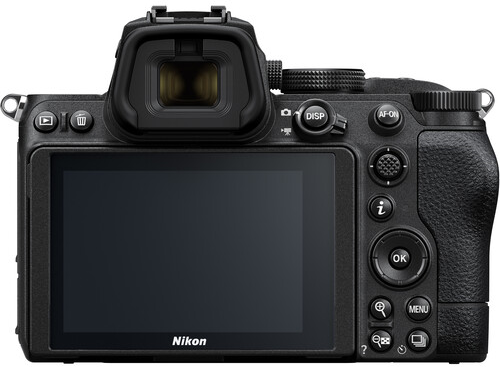
Other notable features include in-body image stabilization, a large electronic viewfinder, and dual memory card slots. If you want a versatile all-around lens to pair with it, my top choice would be the Nikon Nikkor Z 24-70mm f/4 S.
Here’s an in-depth look at the key features and specs of this best camera under 1000 dollars:
- Camera Type: Mirrorless
- Sensor: 24.3MP Full-frame CMOS sensor
- ISO: 100 - 51,200 (expandable to 50 - 102,400)
- Lens Mount: Nikon Z Mount
- Speed: 4.5 fps
- Autofocus: 273 phase-detection points
- Video: 4K/30p & 1080p/60p
- Size/Weight: 134 x 101 x 70 mm / 675 grams
- Battery Life: 470 shots
- Stabilization: Yes
- Touchscreen: Yes
Best Camera Under 1000: Sony Alpha a7R II
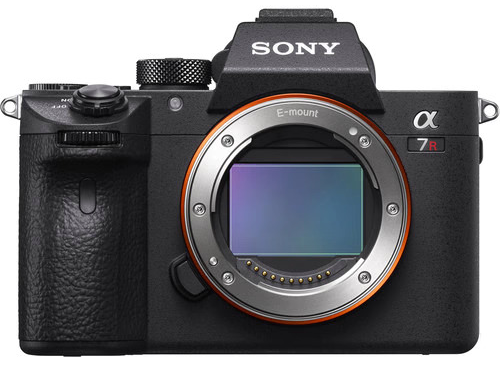
And finally, the best camera under 1000 dollars for professional photographers is the Sony Alpha a7R II. It debuted in August 2015 and has been succeeded by both the Sony Alpha a7R III and the Sony Alpha a7R IV. With that said, it remains a capable camera today, especially for landscape photography.
First off, the a7R II features a high-resolution 42.4-megapixel full-frame CMOS sensor and an advanced Bionz X image processing engine. It is one of the highest resolution full-frame mirrorless cameras ever produced and has a maximum resolution of 7952 x 5304 pixels. The high pixel count comes in handy when editing and enlarging your pictures.
Also, its low-light performance is off the charts thanks to the large BSI CMOS sensor and wide ISO range. This improves image quality immensely when working indoors or shooting at sunrise or sunset. Additionally, the low-light AF is super speedy and has no problems locating and tracking moving subjects.
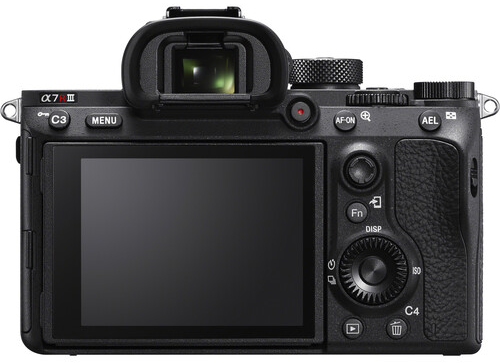
More features worth mentioning are the silent shooting mode, 4K video capabilities, and solid in-body image stabilization. The stabilization technology further improves low-light results and helps during handheld video recording. Lastly, my two favorite lenses to use with this camera are the Sony FE 16-35mm f/4 ZA OSS and the Sony FE 70-200mm f/4 G OSS.
Here’s an in-depth look at the key features and specs of this best camera under 1000 dollars:
- Camera Type: Mirrorless
- Sensor: 42.4MP Full-frame CMOS sensor
- ISO: 100 - 25,600 (expandable to 50 - 102,400)
- Lens Mount: Sony E Mount
- Speed: 5.0 fps
- Autofocus: 399 phase-detection points
- Video: 4K/30p & 1080p/60p
- Size/Weight: 127 x 96 x 60 mm / 625 grams
- Battery Life: 290 shots
- Stabilization: Yes
- Touchscreen: Yes
Which Best Camera Under 1000 is Right for You?
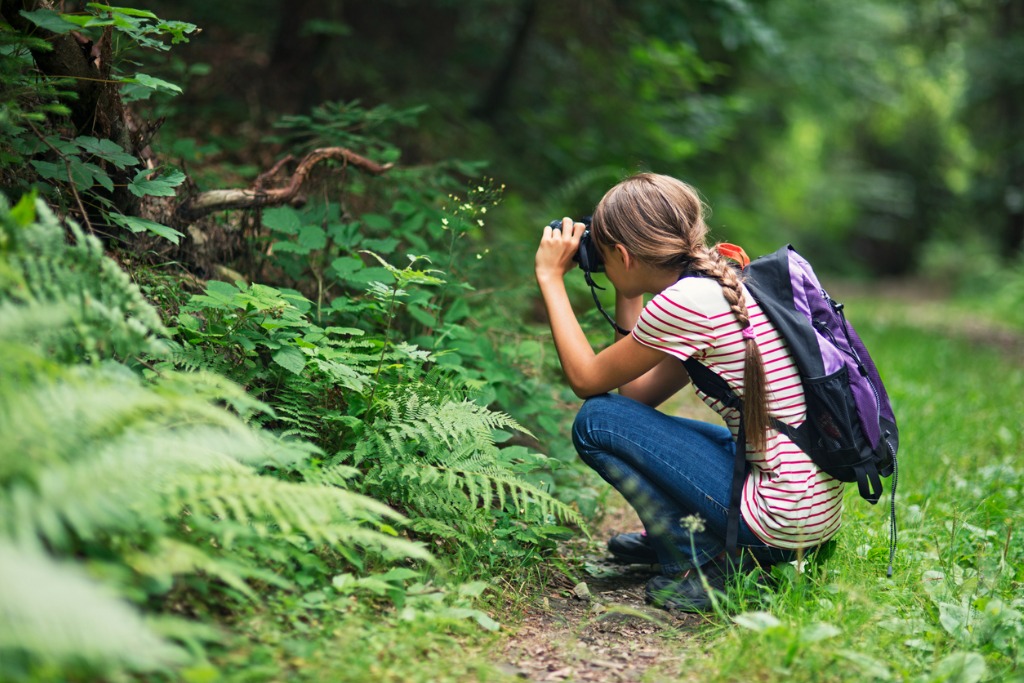
Photo by Imgorthand via iStock
While those are three of the best cameras under 1000 dollars, they certainly aren’t the only ones out there. If you still haven’t made up your mind, and want to check out some other options, here’s a list of more amazing cameras under 1000 dollars currently available at MPB!
Learn More:
We Recommend
The Best Focal Length for Landscape Photography
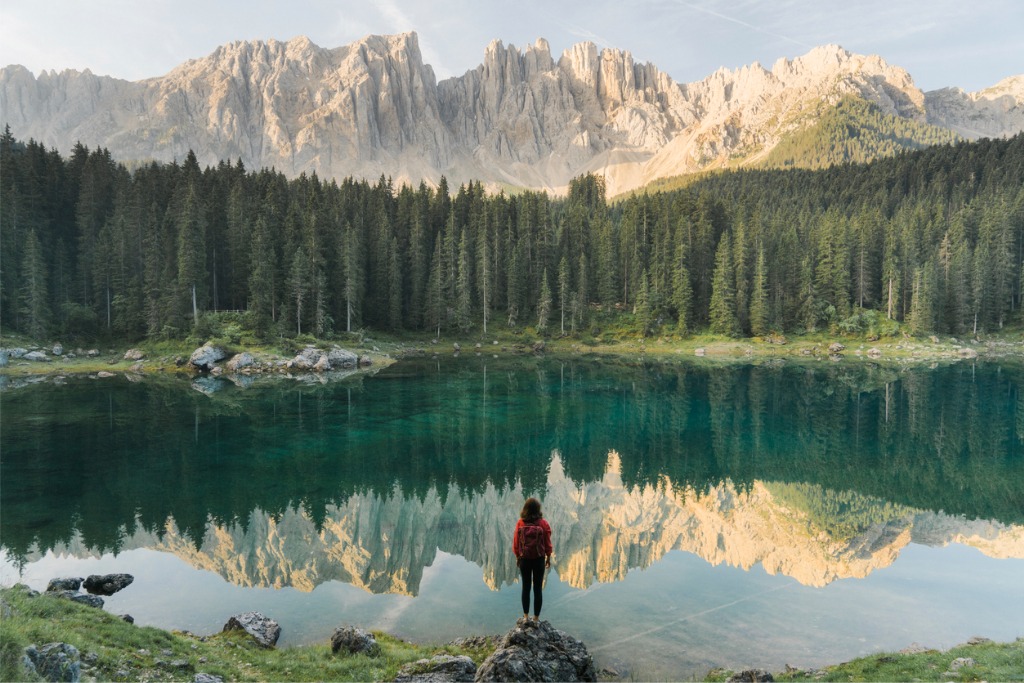
Photo by Oleh_Slobodeniuk via iStock
Landscape photography is one of the most popular genres of photography, and one of the most common questions we receive here at Photography Talk is, “What is the best focal length for landscape photography?” If you have recently asked yourself the same thing and want to improve your landscape photography, keep reading!
Before we get to it, though, here’s one important disclaimer. While we understand everyone shoots with different camera systems, this article primarily recommends Sony full-frame lenses. With that said, if you shoot with a different brand or sensor size, don’t worry! We will also highlight Sony APS-C, Canon RF, Nikon Z, Fujifilm X, and Micro Four Thirds lenses.
Additionally, thanks to innovative online platforms like MPB, purchasing a used landscape photography lens has never been cheaper and easier than it is today. Who is MPB, you ask? They are a trustworthy and reliable online platform where you get incredible deals buying, selling, or trading in pre-owned camera gear.
Better yet, all their cameras and lenses are carefully hand-inspected by professionally-trained product specialists with years of experience and backed by six-month warranties, allowing you to make your purchases confidently and worry-free. OK, what are we waiting for? Let’s dive in and discover the best focal lengths for landscape photography!
Check out the video above by Nigel Danson to learn seven easy ways to improve your landscape photography regardless of your lens and focal length.
Table of Contents
- A Good Focal Length for Landscape Photography
- A Better Focal Length for Landscape Photography
- The Best Focal Length for Landscape Photography
- Final Thoughts on the Best Focal Length for Landscape Photography
A Good Focal Length for Landscape Photography
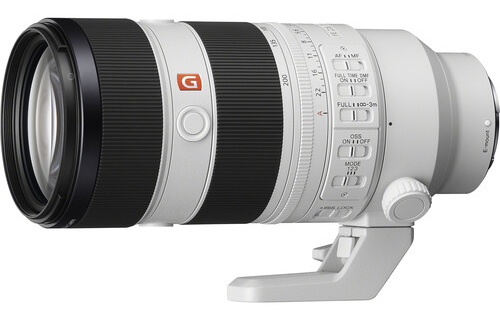
While telephoto lenses aren’t typically what comes to mind when people think of the best focal length for landscape photography, there are definitely times when they are incredibly handy. For example, far away subjects or times when you want to convey more intimate details of a landscape. We captured some of our best landscape shots using the 70-200mm focal length!
One of our go-to lenses for landscape photography is the Sony FE 70-200mm f/2.8 GM OSS II. It debuted in 2021 and immediately replaced the Sony FE 70-200mm f/2.8 GM OSS as the company's most-sold telephoto zoom lens. We particularly love its optical image stabilization, which enhances image quality and makes it a great low-light lens.
Here’s an in-depth look at the key features and specs of the Sony FE 70-200mm f/2.8 GM OSS II:
- Lens Type: Telephoto Zoom Lens
- Camera System: Full-Frame
- Lens Mount: Sony E Lens Mount
- Focal Length: 70-200 mm
- Maximum Aperture: f/2.8
- Minimum Aperture: f/22
- Minimum Focusing Distance: 40 cm
- Filter Size: 77 mm
- Focusing system: Autofocus & Manual Focus
- Maximum Magnification: 0.3x
- Size/Weight: 88 x 200 mm / 1045 grams
- Optical Image Stabilization: Yes
- Used Lens Price: $2,649 - $2,699
Alternatives from other brands:
- Sony E 70-350mm f/4.5-6.3 G OSS (105-525mm equivalent focal range)
- Canon RF 70-200mm f/2.8 L IS USM
- Nikon Nikkor Z 70-200mm f/2.8 VR S
- Fujifilm XF 50-140mm f/2.8 LM OIS WR (75-210mm equivalent focal range)
- Panasonic Lumix G X Vario 35-100mm f/2.8 II Power O.I.S. (70-200mm equivalent focal range)
A Better Focal Length for Landscape Photography
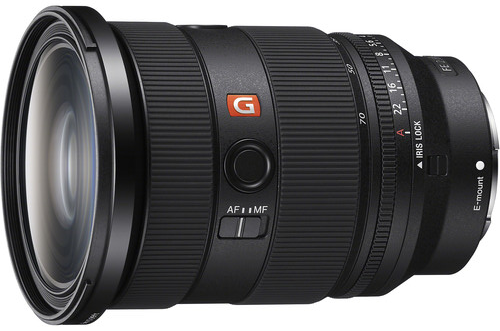
Regarding versatility, the best focal length for landscape photography is 24-70mm. 24mm is wide enough to capture vast mountain ranges, alpine lakes, and desert landscapes. But at the same time, 70mm is tight enough to shoot more detailed shots of forests, rocks, flowers, and animals.
The lens we have on our Sony Cameras, more often than not, is the Sony FE 24-70mm f/2.8 GM II. It’s a high-end G-Master lens boasting insane image/video quality, a compact/portable design, and two customizable focus-lock buttons. Also, it is weather-sealed to protect it against dust and rain–a must for a good landscape photography lens.
Here’s an in-depth look at the key features and specs of the Sony FE 24-70mm f/2.8 GM II:
- Lens Type: Standard-Length Zoom Lens
- Camera System: Full-Frame
- Lens Mount: Sony E Lens Mount
- Focal Length: 24-70 mm
- Maximum Aperture: f/2.8
- Minimum Aperture: f/22
- Minimum Focusing Distance: 21 cm
- Filter Size: 82 mm
- Focusing system: Autofocus & Manual Focus
- Maximum Magnification: 0.32x
- Size/Weight: 88 x 120 mm / 695 grams
- Optical Image Stabilization: No
- Used Lens Price: $2,149 - $2,259
Alternatives from other brands:
- Sony E 16-55mm f/2.8 G (24-82.5mm equivalent focal range)
- Canon RF 24-70mm f/2.8 L IS USM
- Nikon Nikkor Z 24-70mm f/2.8 S
- Fujifilm XF 16-55mm f/2.8 R LM WR (24-82.5mm equivalent focal range)
- Olympus M.Zuiko Digital ED 12-40mm f/2.8 PRO (24-80mm equivalent focal range)
Learn More:
- What is the Best Camera for Landscape and Wildlife Photography?
- Which Canon RF Lens is Best for Landscape Photography?
The Best Focal Length for Landscape Photography
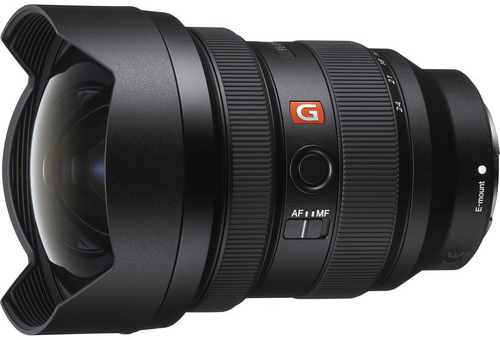
Ding, ding, ding! Folks, we have a winner! Our top choice for the best focal length for landscape photography is, without a doubt, 12-24mm. This ultra-wide-angle field of view (FOV) is ideal for landscape images, and if you’ve never used one before, the results will blow you away! As a bonus, it’s also the best focal length for aerial and astrophotography.
Our favorite lens in this focal range is the Sony FE 12-24mm f/2.8 GM. It features fast and accurate autofocus (AF), a constant f/2.8 maximum aperture, and a built-in lens hood. The AF performs well during handheld shooting. The f/2.8 aperture creates wonderful bokeh (shallow depth of field) effects, and the lens hood prevents unwanted lens flares.
Here’s an in-depth look at the key features and specs of the Sony FE 12-24mm f/2.8 GM:
- Lens Type: Wide-Angle Zoom Lens
- Camera System: Full-Frame
- Lens Mount: Sony E Lens Mount
- Focal Length: 12-24 mm
- Maximum Aperture: f/2.8
- Minimum Aperture: f/22
- Minimum Focusing Distance: 28 cm
- Filter Size: 72 mm
- Focusing system: Autofocus & Manual Focus
- Maximum Magnification: 0.14x
- Size/Weight: 98 x 137 mm / 847 grams
- Optical Image Stabilization: No
- Used Lens Price: $2,309
Alternatives from other brands:
- Sony E 10-18mm f/4 OSS (15-27mm equivalent focal range)
- Canon RF 14-35mm f/4 L IS USM
- Nikon Nikkor Z 14-30mm f/4 S
- Fujifilm XF 10-24mm f/4 R OIS WR (15-36mm equivalent focal range)
- Olympus M.Zuiko Digital ED 7-14mm f/2.8 PRO (14-28mm equivalent focal range)
Final Thoughts on the Best Focal Length for Landscape Photography
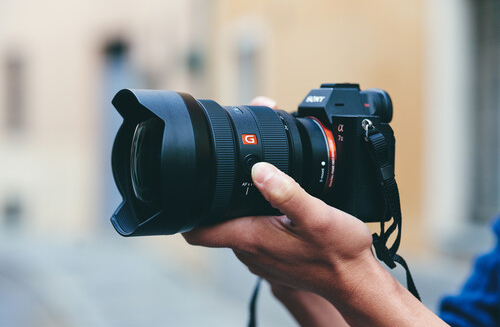
Choosing the best focal length for landscape photography isn’t always easy, and it depends on factors such as your camera body, experience level, budget, etc. Having said that, whether you are a beginner or a professional photographer, you can’t go wrong with any of the landscape photography lenses covered in this article!
Head over to MPB to find unbeatable deals on all of them today! Furthermore, they have tons of fantastic budget-friendly lenses as well. And once you’ve decided which one is right for you, here’s a short list of our top tips for landscape photography:
- Practice, practice, practice
- Invest in a sturdy tripod and good-quality lens filters
- Shoot during the right times of day (golden hour & blue hour)
- Make a plan and scout your locations
- Follow the rule of thirds
- Use a mid to high aperture (8 or higher!)
- Shoot RAW files, and don’t be afraid to edit your photos
Heads up: Clicking on our affiliate links and exploring our sponsored content helps us at no extra cost to you, and we only recommend gear we're absolutely crazy about!
Learn More:
- What is the Best Nikon Lens for Landscape Photography?
- Three Excellent Sony E-Mount Lenses for Landscape Photography
We Recommend
The Best Sony A6000 Lenses for Video
photo byscyther5 via iStock
Table of Contents:
- Sony A6000 Overview
- Sony A6000 Specs and Features
- Sony A6000 Lenses for Video: Overall Best Lens
- Sony A6000 Lenses for Video: Prime Lens
- Sony A6000 Lenses for Video: Wide-Angle Lens
- Sony A6000 Lenses for Video: Telephoto Lens
- More Amazing Sony A6000 Lenses for Video
Sony A6000 Overview
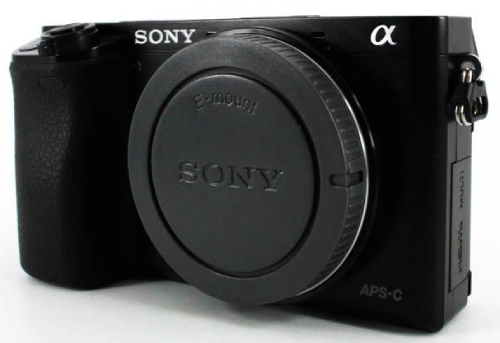
The Sony Alpha A6000 is a great entry-level mirrorless camera. It is one of the best beginner digital cameras for video on the market. It was first released in 2014 and has gone on to transform the world of cameras. It has won countless awards and become the world’s best-selling mirrorless camera!
The first thing that makes this camera great is its 24MP APS-C sensor. A sensor that size is normally only found on pricier cameras. It’s one of the key reasons why the A6000 has excellent image quality.
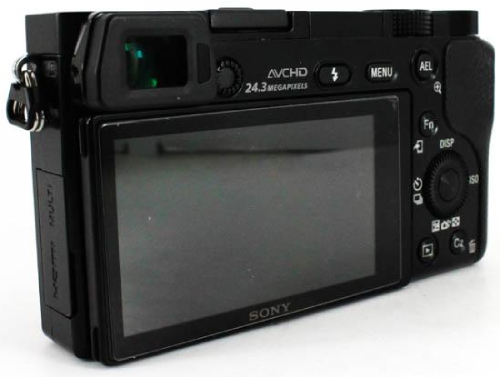
Some of the camera’s other features include:
- The ability to record 1080p Full HD video
- Lightning-fast autofocus
- A compact and lightweight body
- An unbeatable price!
One of the best places to find terrific deals on used Sony Alpha A6000 cameras is MPB.com. They are a pre-owned retailer that sells cameras, lenses, and other gear at some of the lowest prices on the internet.
Furthermore, thanks to warranties on the majority of their products, you can always buy from them confidently and worry-free.
Sony A6000 Specs and Features
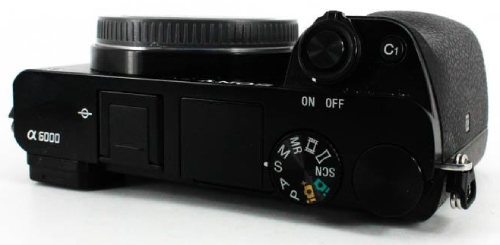
Before we take a closer look at the best Sony A6000 lenses for video, here is a more in-depth look at the specs and features of this digital camera for video:
- Model number: ILCE-6000
- Sensor: 24.3 million APS-C (23.5 x 15.6mm) CMOS sensor
- Focal length conversion: 1.5x
- Memory: SD/SDHC/SDXC
- Viewfinder: Electronic viewfinder, 0.39 inches, 1,440,000 dots
- Video: 1080p
- ISO range: 100 to 25,600
- Autofocus points: 179 phase-detection points, 25 contrast-detect points
- Max burst rate: 11fps
- Screen: 3-inch, 921k-dot tilting LCD
- Shutter speeds: 1/4000-30sec plus Bulb
- Weight: 344g (with battery and memory card)
- Dimensions: 120 x 66.9 x 45.1mm
- Power: NP-FW50 rechargeable lithium-ion battery
Sony A6000 Lenses for Video: Overall Best Lens
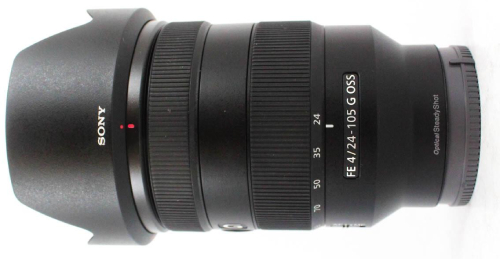
While the list of Sony A6000 lenses for video is long, if I could only have one lens, it would be the Sony FE 24-105mm f/4 G OSS.
This lens covers a huge range of focal lengths (36-157.5mm with the 1.5x magnification factored in). It also gives you the ability to shoot every type of shot without ever having to change lenses.
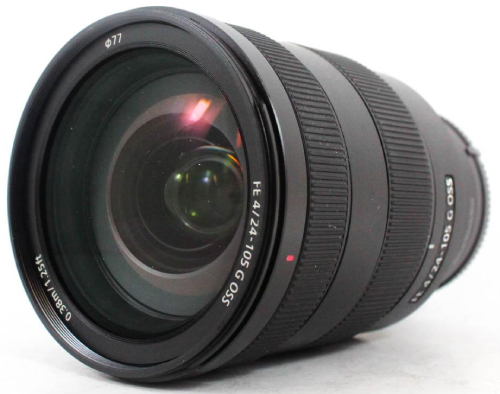
Another nice feature of this lens is the constant f/4 aperture. It makes this lens the perfect choice when shooting in low-light situations. Additionally, it helps create a nice bokeh effect.
More great features that make this the best Sony A6000 lens for video are optical image stabilization, fast focusing speeds, and a weatherproof build. It also has a lightweight design. The OSS stabilization will help improve the quality of your content. This is handy since the Sony A6000 body doesn't have built-in image stabilization.
Sony A6000 Lenses for Video: Prime Lens
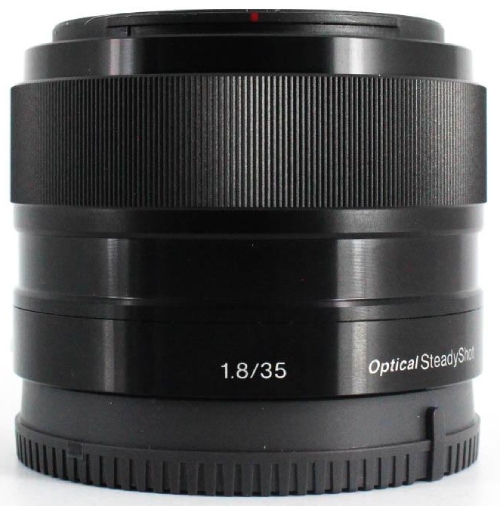
If you prefer prime lenses, one of the best Sony A6000 lenses for video is the Sony E 35mm f/1.8 OSS.
Sony, Sigma, and Tamron all offer more expensive 35mm prime lenses for the Sony A6000. But this one is my favorite because of its sharpness, compact size, and low price.
Don’t let the price fool you, though. Just because it’s a budget-friendly lens doesn’t mean it produces subpar results. It’s actually quite the opposite!
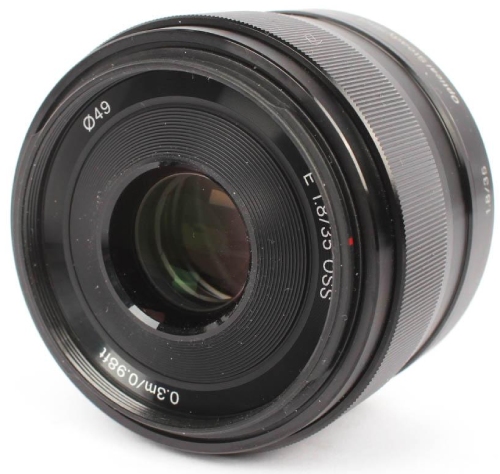
This is one of the sharpest lenses I’ve ever used for video. Most people can’t tell a difference in image quality when comparing it to other more expensive lenses.
If you are still on the fence, maybe features like the OSS stabilization, f/1.8 maximum aperture, and quick and silent autofocus will convince you. Or maybe the weather-sealed design will be enough to help you pull the trigger and invest in one of the top Sony A6000 lenses for video.
Learn More:
- Is the Sony a6000 Still a Good Camera Four Years After Its Debut?
- Sony A6000 vs Fujifilm X-T10 Comparison
Sony A6000 Lenses for Video: Wide-Angle Lens
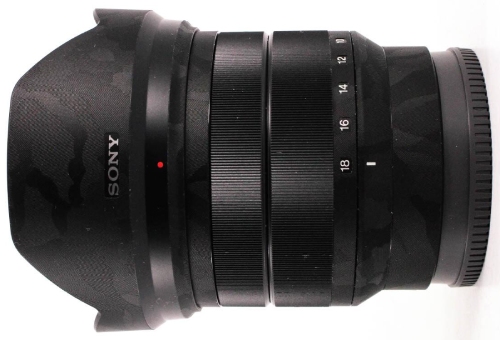
These days, wide-angle lenses are becoming popular amongst filmmakers and YouTubers alike. For filmmakers, they are ideal when you want to create a dramatic look to a scene. For YouTubers and vloggers, they are great because they will easily fit your whole face in the frame even when close-up to the camera.
Lucky for you, some of the best Sony A6000 lenses for video are wide-angle lenses. The best of the bunch is the Sony E 10-18mm f/4 OSS. It has a compact, yet sturdy build. It also uses high-quality glass inside the lens.
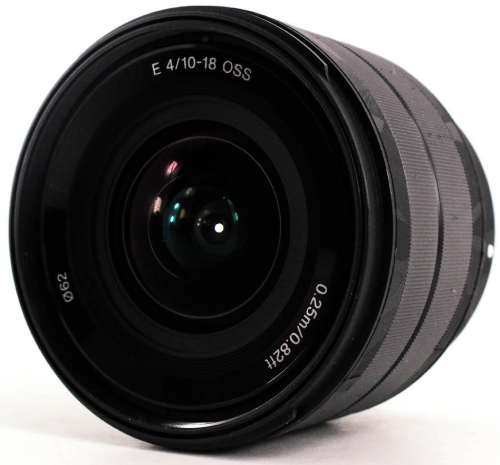
When paired with the Sony A6000, it gives you a wide focal range equal to 15-27mm. On top of that, it has a minimum focusing distance of only 0.82 feet. This means you can easily record yourself when holding the camera.
A few more video features you will love are the crisp image quality, speedy internal focusing, and OSS stabilization. There is also a constant f/4 maximum aperture.
My recommendation would be to pair it with the Sony FE 24-105mm f/4 G OSS to cover a broader range of focal lengths.
Sony A6000 Lenses for Video: Telephoto Lens
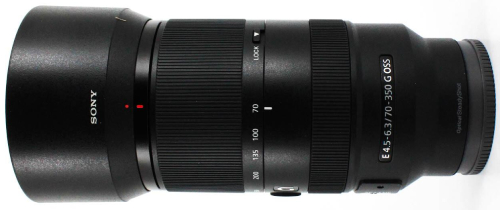
Most people don’t think of telephoto lenses when they think about shooting video. However, one of my most used Sony A6000 lenses for video is the Sony E 70-350mm f/4.5-6.3 G OSS. With an equivalent focal range of 105-525mm, it allows you to capture crystal-clear footage from far distances.
I admit that this focal range may not be useful to the average videographer. However, if you are an outdoor/nature enthusiast, a traveler, a sports fan, or a documentary filmmaker, it comes in handy. Additionally, with its zoom capabilities, you can also produce stunning macro and product videos with this lens.
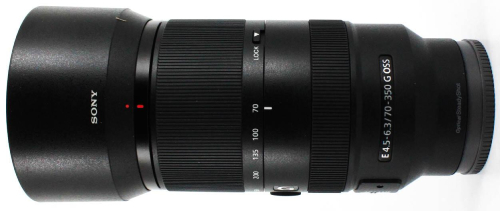
With any telephoto lens, stabilization is key. At least if you want to prevent shaky footage! The Sony 70-350mm has magnificent OSS stabilization.
This lens also has an aperture range of f/4.5 to f/32, silent and responsive autofocus, and a customizable focus hold button. There’s no doubt this is one of the best Sony A6000 lenses for video.
More Great Sony A6000 Lenses for Video
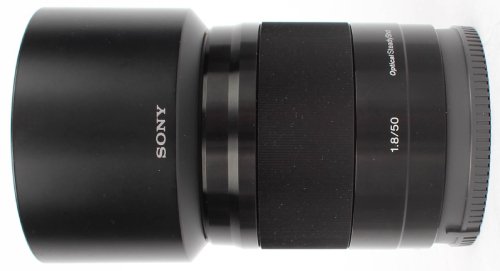
While those are my personal favorite lenses to pair with the Sony A6000 when shooting video, there are tons of other great Sony Alpha A6000 lenses available. Here are a few more of the best lenses for the Sony A6000 to check out:
- Sony E 50mm f/1.8 OSS
- Sony FE 24-70mm f/2.8 GM
- Sony Zeiss Vario-Tessar T* FE 16-35mm f/4 ZA OSS
- Samyang 14mm f/2.8 AF, FE Mount
- Sony E 16mm f/2.8 Pancake Lens
Learn More:
We Recommend
The Best Zoom Lens for Sony a6000
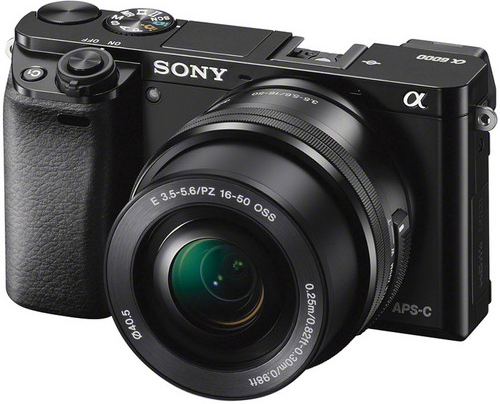
When the Sony Alpha a6000 APS-C format mirrorless camera was released in 2014, it was a pretty big deal.
Being mirrorless and crop format, Sony took advantage of that to create a very small and lightweight interchangeable lens camera. Here we are, eight years later, and it’s still a more than worthy camera to discuss.
In this guide, we’ll take a look at this camera, where you can buy quality used a6000s, and a few options for the best zoom lens for Sony a6000.
Table of Contents:
- Sony Alpha a6000 Camera Overview
- Sony E-mount Lenses vs Sony FE-mount Lenses
- Ultra Wide Best Zoom Lens for Sony a6000
- Normal Range Best Zoom Lens for Sony a6000
- Telephoto Best Zoom Lens for Sony a6000
- Final Thoughts
Sony Alpha a6000 Camera Overview
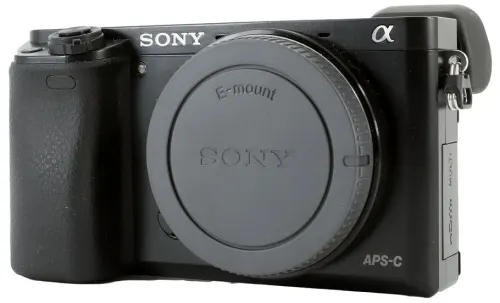
The surprisingly small size and low weight for a full-featured camera were two of the primary features of the a6000 when it came out. But, Sony also used an image sensor in the Sony Alpha a6000 that still holds up to current sensors: a 24.3mp APS-C sensor with an ISO sensitivity of 100 to ISO 25600.
It also has 179 AF points, a built-in flash and external flash shoe, a tilting rear view screen, an eye-level OLED viewfinder, 11 fps burst speed for still photography, and can record video in Full HD 1080/60p resolution. Really, the lack of 4K video is one of the few things separating this camera from more current offerings.
Sold as body only or with what entry-level photographers would use as the best zoom lens for Sony a6000, the Sony E 18-55mm f/3.5-5.6 OSS normal range zoom lens, this outfit was scarcely larger than some premium point-and shoot-cameras with smaller sensors. It can be considered an entry-level camera or an intermediate enthusiast-level camera.
Throughout the article, I’ll link to the online platform MPB for the various examples of the best zoom lens for Sony a6000.
MPB is one of the best places for buying cameras and lenses since they specialize in high-quality and warrantied used photography equipment that can save us lots of money. Many of the photo illustrations of lenses in this article are provided by MPB.
Sony E-mount lenses vs Sony FE-mount Lenses
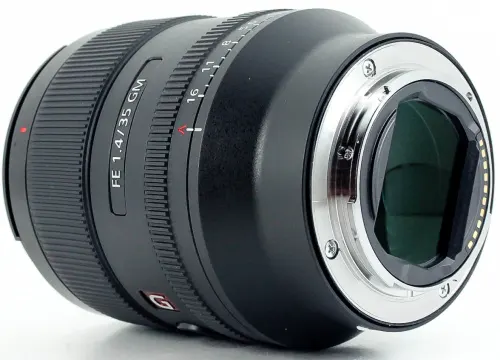
When searching for the best zoom lens for Sony a6000 cameras, you’ll run across two lens mount designations for Sony mirrorless cameras: Sony E-mount lenses and Sony FE-mount lenses. What’s the difference, and which mount should you get?
Sony FE-mount and E-mount are identical electronically and mechanically. The main difference is that FE lenses are designed to cover Full Frame format while E-mount lenses cover APS-C format.
You can use FE and E on both formats of cameras, but mounting an E lens on a Full Frame Sony triggers the camera into recording on an APS-C-sized portion of the full sensor. Conversely, an FE lens on a crop sensor body covers the format fully, but the crop factor means that the lens behaves like a longer lens equivalent.
Crop factor is still confusing even to long-time photography enthusiasts, so here is a good refresher article on the subject. The best zoom lens for Sony a6000 can be either FE or E mount, though much depends on your specific needs.
Learn More:
- Which Sony Camera for Photography Is Right for You?
- What Is a Prime Lens?
- What is the Best Used Sony Camera?
Ultra Wide Best Zoom Lens for Sony a6000
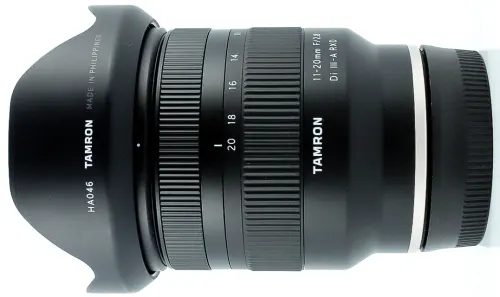
Photographers that want an ultra-wide-angle lens range will love the Tamron 11-20mm f/2.8 Di III-A RXD zoom lens as one option for the best zoom lens for Sony a6000 cameras. What makes it special is the extreme wide-angle focal length with very little distortion. The widest coverage is a full 105 degrees.
Another great feature of this lens is the fast maximum aperture. Many lenses of this type have a slower maximum aperture, and also that aperture gets slower at the long end. The f-stop of f/2.8 is excellent for lower light levels or for stopping down to a “sweet spot” aperture that is still rather fast - a plus for night sky photography or architecture and real estate.
It focuses very close, making available some interesting perspectives of ultra-wide, close focus, and large aperture. Other features are a silent and fast AF motor, a 67mm front filter diameter, and a flower-shaped lens hood for flare reduction and front element protection.
Normal Range Best Zoom Lens for Sony a6000
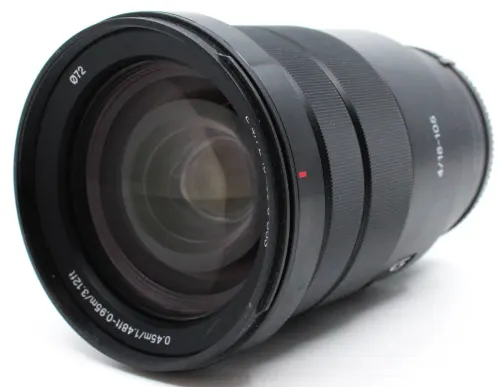
For using just one lens or as one of a set of lenses that covers from wide to telephoto, the best zoom lens for Sony a6000 cameras just might be the Sony E PZ 18-105mm f/4 G OSS normal range zoom lens.
What’s nice about this lens is that it balances perfectly with the Sony Alpha APS-C cameras. The long end of the zoom range is nearly double the telephoto of the kit lens that originally came with the camera when packaged as an entry-level kit.
A few other really useful features of this best zoom lens for Sony a6000 cameras are the power zoom function (which is little noisy for video but not too bad), a maximum aperture that remains constant at f/4.0, Optical SteadyShot image stabilization, minimum focus of 1 ½ ft, 72mm front filter size, and a minimum aperture of f/22 for extended depth of field.
Telephoto Best Zoom Lens for Sony a6000
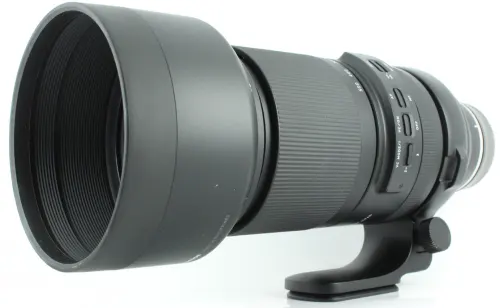
Some photographers feel that if you need telephoto, you need a lot of telephoto. For those photographers, and for anyone wanting a full range of focal lengths in just a few lenses, the best zoom lens for Sony a6000 cameras could be the Tamron 150-500mm f/5-6.7 Di III VC VXD ultra-telephoto zoom lens.
Though somewhat large and heavy, this is a superb example of how good and how compact modern lenses can be. When factoring in the 1.5X crop factor of the Sony a6000 sensor, this lens acts on an APS-C camera what a 750mm lens would be on Full Frame. Even when used on Full Frame cameras, this lens packs a lot of telephoto punch.
Some of the great features of this fine lens are a moderate maximum aperture, removable tripod mount, compact size, VC image stabilizer, under 2 ft close focus, 82mm filter size, and a swift, mostly silent focusing motor.
Final Thoughts
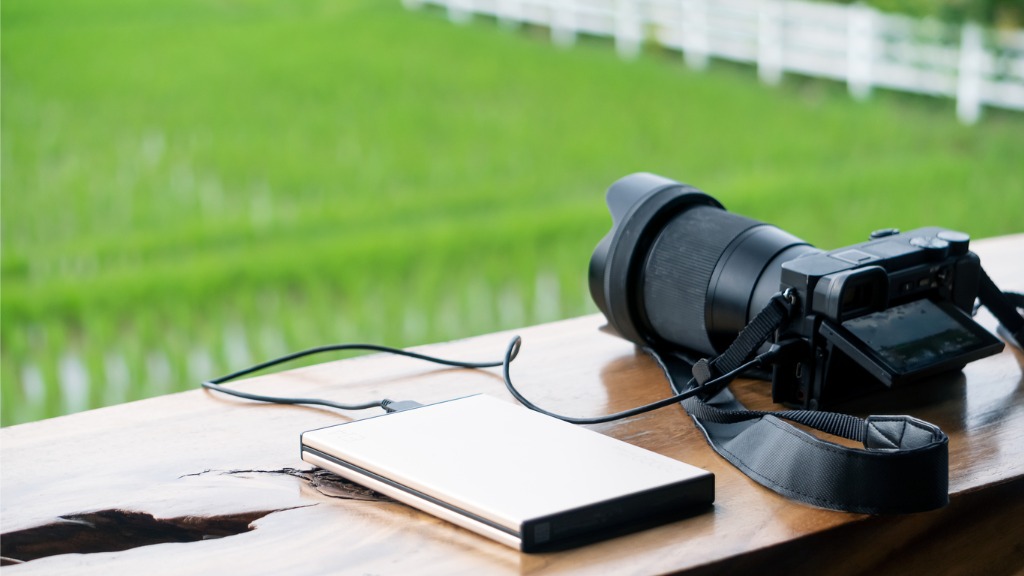
Photo by ArLawKa AungTun via iStock
My final thoughts are that it’s pretty obvious to any photographer that gets serious about their art and craft that there is no one best lens for any camera or situation. Some prime lenses could also be included when talking about essential lenses. But we can narrow down to a few good options for the best zoom lens for Sony a6000 cameras.
Another final thought is that you can save some serious amounts of money by purchasing pre-owned gear. And when you work with an online platform like MPB, you can do so while still guaranteeing that you get a fine camera or lens.
Better still, at MPB, you get a seven-day return policy and a six-month warranty on most purchases!
Any or all of the great lenses discussed above could find their way into your camera bag, and I’m sure you’ll be pleased with them. Get shopping today by heading over to MPB.
Learn More:
We Recommend
The Sony a5100 Is Still a Great Camera for Beginners
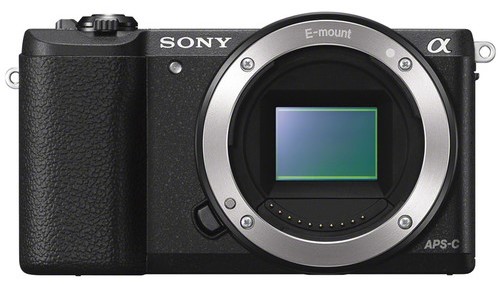
Sony a5100 Camera
With the holidays right around the corner, a lot of people are looking for good Christmas presents for people who may want to get into photography and I think that the Sony a5100 is the perfect camera for you.
The Sony a5100 is an older camera. It came out in 2014. But, all that means is that the Sony a5100 is now affordable enough for beginner photographers, because when it first came out it wasn’t.
The Sony a5100 is also a great camera for photographers who are used to using a DSLR and who have never used a mirrorless system. The Sony a5100 isn’t so different from a DSLR as to confuse you, plus the images you can take with this camera will shock you.
Let’s dive right into our full Sony a5100 review so you can figure out whether it’s the camera for you.
Sony a5100 Specs
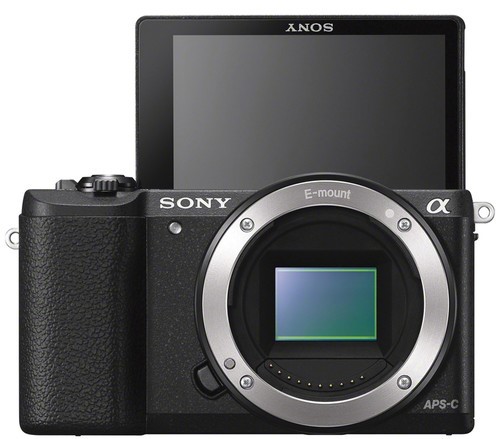
The Sony a5100 is a compact mirrorless camera with a 24MP CMOS sensor. This sensor is paired with a 3” LCD touchscreen, so you can easily work this camera right out of the box. The touchscreen is actually one of my favorite Sony a5100 specs because it flips upward 180-degrees so you can take selfies or use the Sony a5100 for vlogging.
The Sony a5100 doesn’t take 4K video, which may stop some vloggers from purchasing it, but it does take full HD 1080p video at up to 24fps.
The camera also comes with a self timer, which is really easy to use.
Other Sony a5100 Specs Include:
- 24MP APS-C CMOS sensor
- ISO range of 100-25,600
- 179-point AF system
- 3” tilting touchscreen with 921k-dots
- Full HD 1080p video capabilities
- Built-in flash
- Built-in Wi-Fi
- .62 lbs
Sony a5100 Body & Design
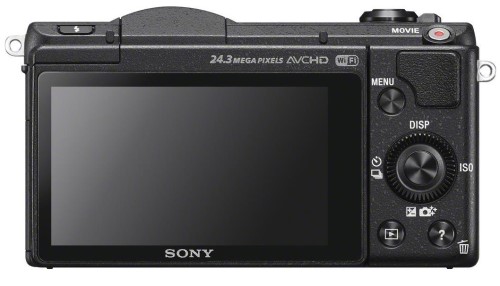
The grip is a little smaller than I would have liked it, but it is texturized so you still feel secure while holding it.
As I mentioned, the tiltable LCD screen is one of the best features to this camera. It does not tilt down, unlike some other Sony cameras in this lineup, but I think that the screen works fine as is.
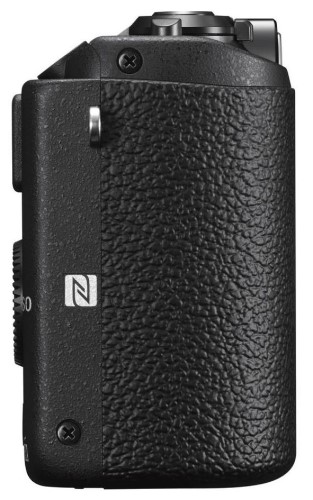
One really important thing to note here is that the Sony a5100 was not designed with an electronic viewfinder. You will be using the rear screen 100% of the time. For more serious photographers, this would be frustrating, but for a beginner who may not be accustomed to using an EVF at all, it may even be a nice feature.
Learn More:
Sony a5100 Build & Handling
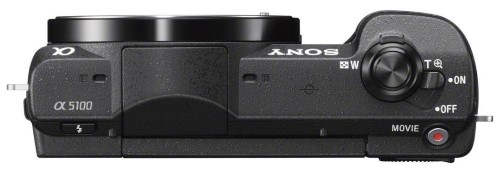
When it comes to the Sony a5100 handling, this camera is a breeze. It is comfortable to hold. It is small enough to bring everywhere. I think that the menu, though a bit limited, is really easy to use. The menu is also customizable, for photographers who need it, but the menu is easy enough to use as is out of the box.
The movie button that is located right next to the shutter is going to be a welcome change for vloggers who will strictly be using this camera for shooting movies.
This is also definitely a camera that you can shoot with with just one hand. If you’re trying to take images of a rambunctious toddler, or dog, you know how important one-handed shooting is.
Obviously, this camera is really small, so the handling is going to get more cumbersome as you add lenses, especially if those lenses are especially large or heavy. If you are going to be working with larger lenses, then you will need to do so with a tripod.
Sony a5100 Video Performance
If you’re thinking about purchasing a Sony a5100 specifically for vlogging, then you can watch Ray Ortega’s Sony a5100 video performance test above to see it in action.
As Ray pointed out, the Sony a5100 is the “perfect vlogging camera.” Obviously, this is because of the selfie screen, but it’s also because it comes with image stabilization and because it is so small that you can easily carry it around with you wherever you go. Considering the price point, which I’m going to talk more about below, the Sony a5100 is also a good travel camera because you don’t have to be constantly worried you’re going to get your camera worth thousands of dollars stolen from you.
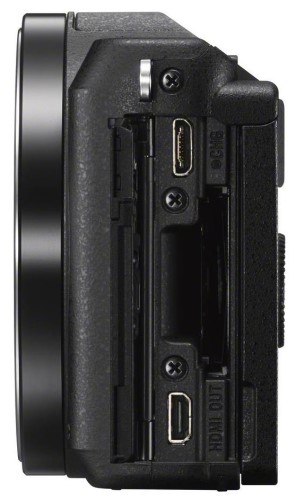
But, for more serious videographers, you should keep in mind that the Sony a5100 features do not include an audio input. Likewise, the touchscreen is a bit limited. One thing Ray points out that works really well with the touchscreen is that you can magnify the picture while you’re shooting by simply touching the screen. Otherwise, the touchscreen must be used in tandem with the physical controls on the camera.
Another thing to note is that you won’t be using the Sony a5100 in dark light. It’s ISO range is not wide enough to let you shoot during the nighttime without adding a lot of noise to your image. This is yet another reason why it would work really well as a vlogging camera and less well as a videography camera.
Sony a5100 Price
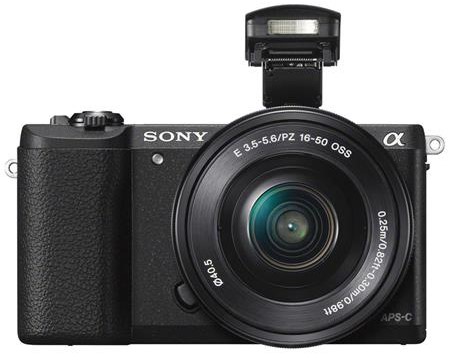
I mentioned the original Sony a5100 price earlier in the article. When it first came out, it was $700 new. But, thankfully this isn’t the case anymore.
You actually can’t find a new Sony a5100 anymore. But, you can find a used Sony a5100, and they are surprisingly cheap for a mirrorless system.
For instance, there are currently a couple of Sony a5100 bodies available on MPB. Both of these bodies are in “like new” condition, which means they are in “near mint condition with almost no signs of use.”

Both of these bodies are currently on sale for $469. Neither of the options currently available on MPB’s Sony a5100 page currently come with their original packaging, but MPB rotates through hundreds of products every day, as they purchase products from photographers all over North America, so if you’re dead set on finding a Sony a5100 with its original packaging, you will likely find it if you keep checking.
We always recommend MPB to photographers who read this blog because, unlike with Ebay or Craigslist, you always know exactly what you’re going to get. MPB hires a team of knowledgeable photographers and videographers specifically for grading each of their pieces. So, you can actually expect your “like new” Sony a5100 to look like new.
Plus, you can sell your old gear to MPB while you’re purchasing new gear and simply use the money you make on your old stuff towards your new purchases. This has helped me cut costs in my photography business.
To find out all of the reasons why we recommend our photographers to MPB, you can read our review of them below.
Learn More:
We Recommend
The Sony a6000 is Still Worth Your Money 10 Years Later
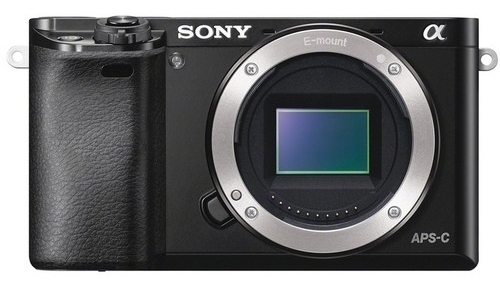
The Sony Alpha a6000 might have originally come out in 2014, but that’s not stopping it from selling like hotcakes on the second-hand market. To this day, it remains Sony’s most-sold camera of all time, and we are here to tell you why!
In this Sony a6000 review, we’ll discuss five reasons it’s still worth your money ten years after its debut. From rock-solid photo and video performance to outstanding lens compatibility and an unbeatable price, there’s much to adore about the a6000. Additionally, thanks to innovative websites like MPB, buying a used mirrorless camera has never been cheaper and easier.
Who is MPB? It is a trustworthy and reliable online platform selling pre-owned photography and videography gear at affordable prices. Better yet, every one of its cameras and lenses is hand-inspected by knowledgeable product specialists with years of experience and backed by a six-month warranty, allowing you to make your purchases confidently and worry-free.
We highly encourage you to visit MPB because of its state-of-the-art online marketplace. It’s a remarkable tool that has helped us save thousands of dollars buying, selling, and trading in high-quality photography equipment over the years, and we believe it can help you do the same. With that said, it’s time to discover why people can’t stop raving about the Sony a6000 in 2024!
Check out the video above by Jaden White to learn more about shooting with the Sony a6000 and why getting in one is still a great idea.
Table of Contents
- The Image Quality of the Sony a6000
- The Size and Handling of the Sony a6000
- The Full HD Video of the Sony a6000
- The Lens Compatibility of the Sony a6000
- The Price of the Sony a6000
- Final Thoughts on the Sony a6000 Camera
The Image Quality of the Sony a6000
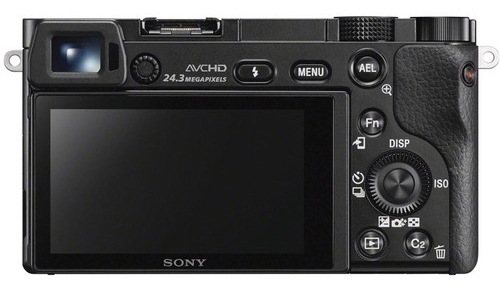
Image quality is often the first thing people consider when shopping for a camera, and for good reason. Unlike smartphones with built-in cameras, we primarily get digital cameras to take pictures. In light of this, you will be thrilled to hear that the Sony a6000 and its 24.3-megapixel sensor deliver beautiful photos with excellent detail and colors.
Moreover, capturing sharp, in-focus images is easy using the camera's hybrid autofocus system. JPEGs tend to have more vibrant out-of-the-camera colors, making them better for photographers who don’t like editing. However, if you want to practice editing, RAW files are better because of their higher dynamic range.
Now, here’s an in-depth look at the Sony a6000 specs and key features:
- Camera Type: Mirrorless
- Sensor: 24.3MP APS-C CMOS Sensor
- ISO: 100 - 25,600 (expandable to 100 - 51,200 using Multi-Frame NR)
- Lens Mount: Sony E Mount
- Speed: 11.0 fps
- Autofocus: 179 focus points
- Video: 1080p Full HD @ 60,30, & 24 fps
- Size/Weight: 120 x 67 x 45 mm / 344 grams
- Battery Life: 360 shots
- Stabilization: No
- Touchscreen: No
- Weather-Sealed: No
- Used Sony a6000 Price: $334 - $454
The Size and Handling of the Sony a6000
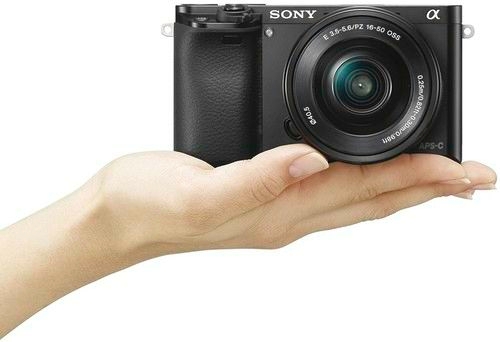
The compact and lightweight size of the Sony a6000 is another trait people love about it. Not only is it significantly smaller than a DSLR, but it’s also smaller than most mirrorless cameras. It can easily fit in the palm of your hand, and depending on your lens choice, you can even fit it in your pocket!
Regarding handling, the a6000 is a straightforward camera that you can fully operate with only one hand, and customizable buttons allow you to set it up perfectly to meet your individual shooting needs. On top of that, its portable size makes it ideal for travel photography, street photography, and children.
The Full HD Video of the Sony a6000
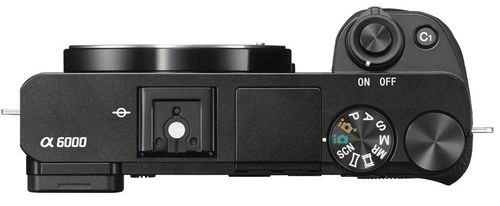
While the Sony a6000 doesn’t record 4K video, it does have 1080p Full HD video capabilities. It records Full HD movies at 24, 30, or 60 fps, and regardless of which frame rate you choose, the video quality is terrific. Two other advantages of Full HD video are that it takes up less storage on memory cards and hard drives and is faster to edit in post-production.
Other notable video specs include Dolby Digital Audio, a twenty-nine minute recording time limit, and that it yields total control over video settings to the user. The latter makes it a good choice for learning the basics of video content creation. Furthermore, it’s a sought-after camera for beginner vloggers and YouTubers.
Learn More:
- How to Build a Beginner Photography Kit on the Cheap
- What Should You Have in a Beginner Photography Kit?
The Lens Compatibility of the Sony a6000
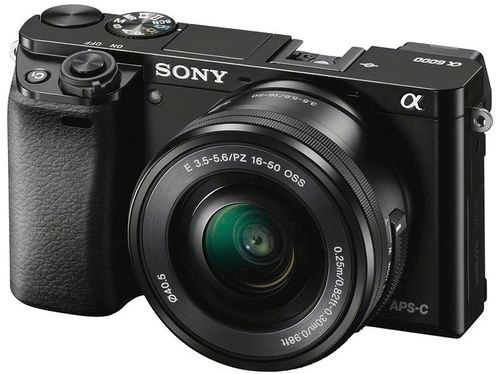
Sony has worked diligently to build a deep and versatile lineup of lenses for their APS-C cameras like the Sony a6000. While E-mount lenses are designed specifically for smaller APS-C sensors, they are also compatible with Sony full-frame cameras if you ever decide to upgrade your camera body.
Likewise, you can shoot with Sony FE lenses on the a6000. However, please note that a 1.5x crop factor will be applied to match the camera’s sensor. For example, the Sony FE 50mm f/1.8 will have an effective focal length of 75mm when attached to the a6000. With that in mind, here are links to some of the best Sony E Mount lenses for photo and video to pair with the a6000.
- Sony E PZ 16-50mm f/3.5-5.6 OSS
- Sony E 18-55mm f/3.5-5.6 OSS
- Sony E 55-210mm f/4.5-6.3 OSS
- Sony E 50mm f/1.8 OSS
- Sigma 30mm f/1.4 DC DN Contemporary - Sony E Fit
The Price of the Sony a6000
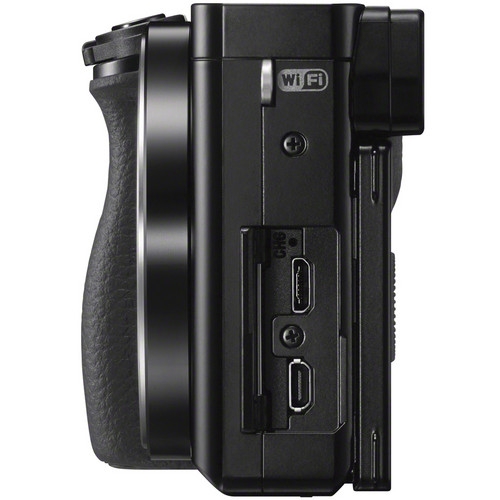
Lastly, the price of the Sony a6000 is lower than ever! And although price shouldn't be the only factor when purchasing a camera, getting a killer deal sure feels amazing. The price has dropped dramatically over the years due to the age of the camera and because Sony launched its successor, the Sony Alpha a6100, in 2019.
The original MSRP of the a6000 was $699 ($799 with the Sony E PZ 16-50mm f/3.5-5.6 OSS kit lens). Today, you can find pre-owned cameras in “good” or “like-new” condition for anywhere between $334 - $439.
Final Thoughts on the Sony a6000 Camera
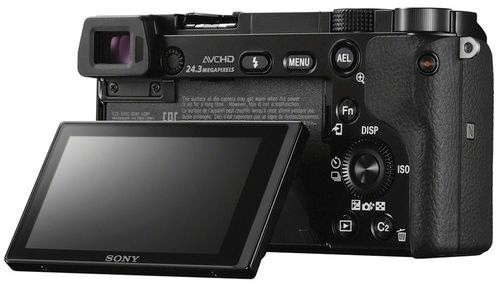
WOW! A super portable camera, jam-packed with impressive features, all for an affordable price! If you are a beginner photographer looking for your first real camera, what more could you ask for? Honestly, it’s easy to see why the Sony a6000 is still a fantastic investment all these years later.
As great as it is, we 100% understand if you would like to conduct more camera research before making a decision, though. If that’s the case, check out the list below of other popular entry-level mirrorless cameras from brands like Sony, Canon, Nikon, Fujifilm, and Olympus. All of them are in stock now at MPB!
Disclaimer: Just so you know, some of the cool stuff we mention comes with affiliate links, meaning we earn a commission if you buy (no extra charge to you!). Plus, we occasionally feature sponsored content, but rest assured, we only shout out products we genuinely stand behind.
Learn More:
We Recommend
The Sony a7 III Is the Best Sony Camera in 2020
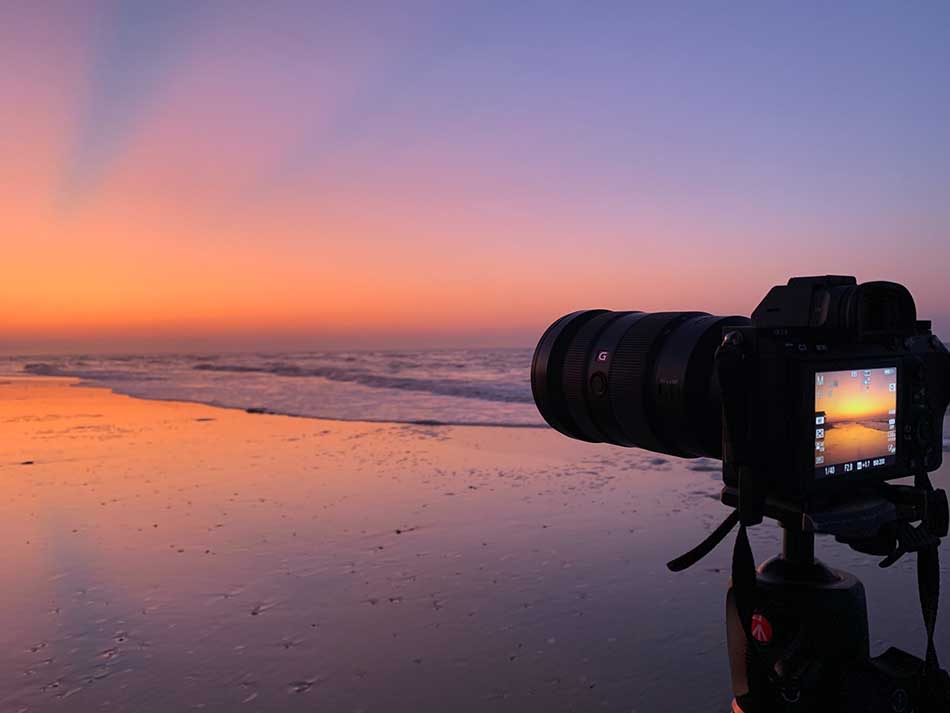
Photo by Clint Patterson on Unsplash
The Sony a7 III dropped in 2018, but it’s still the best Sony camera for 2020. Why? Because it’s one of the most versatile mirrorless cameras Sony has ever released.
If you’re a photographer, a videographer, or you dabble in both, the Sony a7 III provides a camera with an excellent autofocus system, unbelievably clear shots and weather-sealing to ensure you never miss any action.
Plus, the Sony a7 III comes with an Eye AF system that works on pets, which is a cute, albeit unnecessary, perk.
Editor’s Tip: To help keep people inspired, MPB is doing a weekly #mpbthrowback Instagram giveaway. It's #tbt with MPB style: they’re inviting people to share a photo they've taken in the past, share where they were, how they noticed it, and what kit they were using. MPB knows that many people have been reminiscing about their photography adventures as they go through their portfolios, and they want to help amplify that inspiration!
Sony a7 III Specs
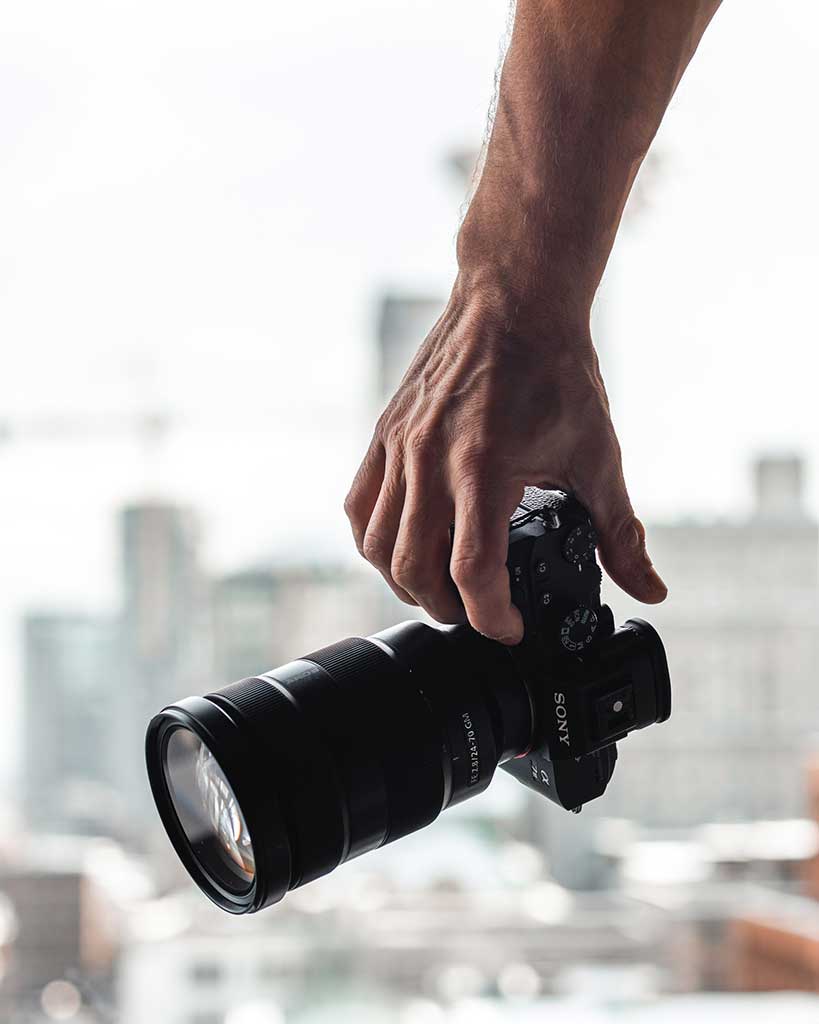
Photo by Alejandro Luengo on Unsplash
We published a fully Sony a7 III review a while back and you can read that here if you’re interested in a longer breakdown of this camera’s capabilities. But, here’s the basic specs:
- 24MP sensor
- 10fps burst mode
- 693-point AF system
- 4K video capabilities
- 3” articulating touchscreen LCD with 921.6k dots
- ISO range of 100-51,200
- In-camera image-stabilization
- Built-in Wi-Fi
- 710-shot battery life
Sony a7 III Video Test
Just so you can see the Sony a7 III in action, here is a video test by Picture Pulse.
The Sony a7 III is the best Sony camera for video because it shoots 4K video in a full frame format with S-Log. You can shoot 4K at 24fps, 25fps, or 30fps, or full HD at 30fps, 60fps, or 120fps.
Here’s another video test by Jakob Mihailo.
The one downside to the Sony a7 III’s video quality is that the in-camera image-stabilization hasn’t improved much since the technology first came out. Thankfully, Sony is already known for being the best for this feature.
Sony a7 III Stills
Here’s a slew of Sony a7 III stills so you can see what you’re getting into.
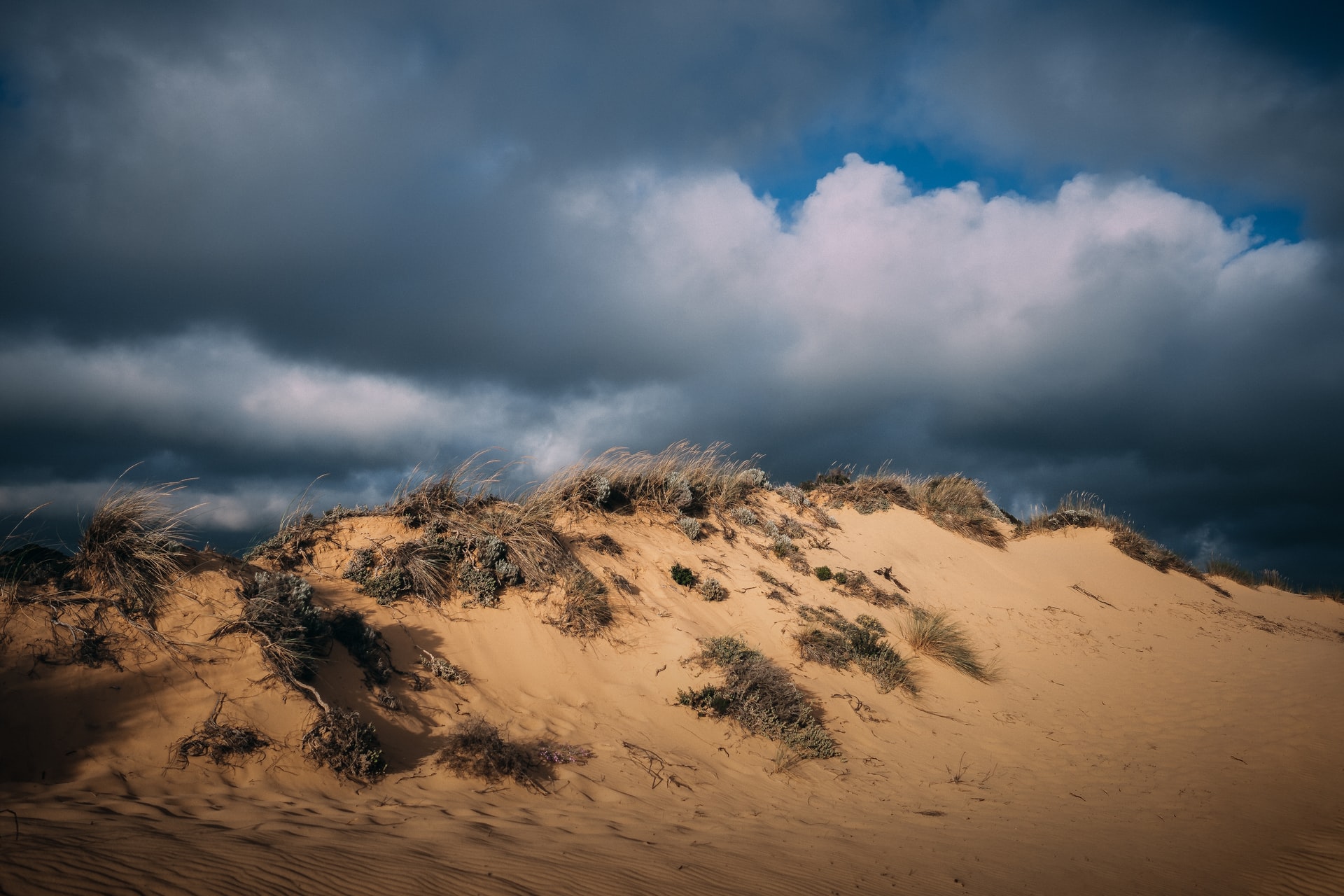
Photo by Thibault Mokuenko on Unsplash
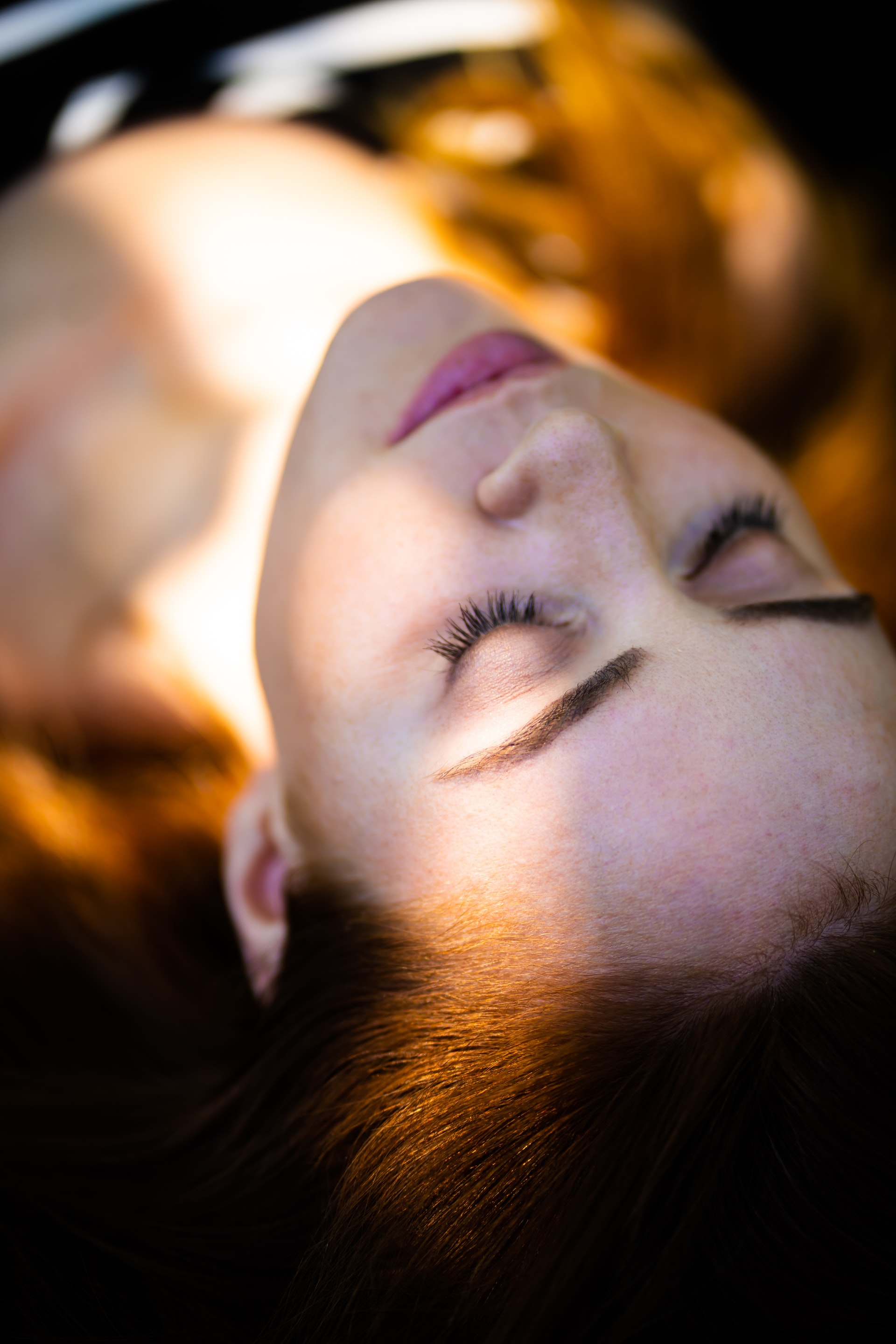
Photo by Jose Martinez on Unsplash
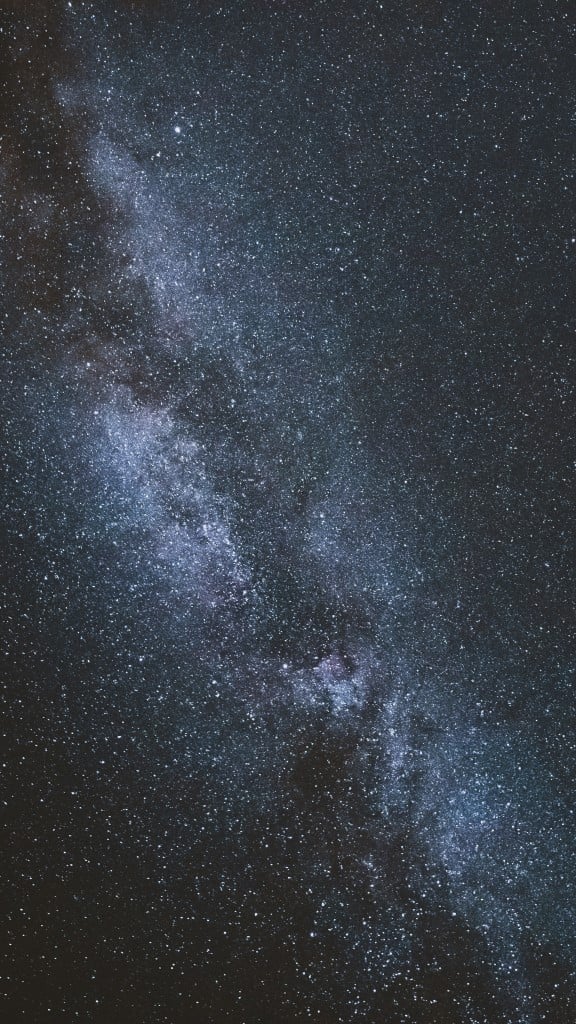
Photo by Brett Frigo on Unsplash
My favorite quality about the Sony a7 III for stills is that the color has undoubtedly improved since the last Sony a7, with more accurate skin tones and easy transitions.
These photos are going to be easy to edit in post
Purchase a Sony a7 III
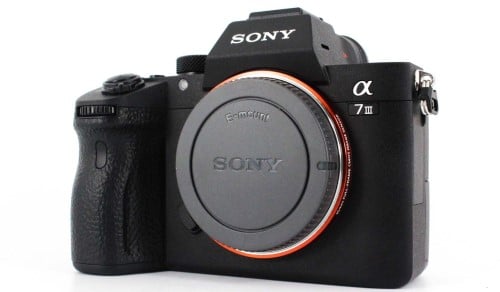
The Sony a7 III is available on MPB starting at $1,800. Considering that’s for a pre-owned camera in like-new condition with a battery, charger, and front lens cap, that’s a pretty good deal! That’s a savings of nearly $200 over a new one, and that’s money you can keep in the bank or use to snag a lens for your new-to-you a7 III.
If you’ve never bought a used camera before, it can be a little intimidating. There are plenty of horror stories from folks that have bought what they thought was a good camera on places like Craigslist, only to find that they were hoodwinked.

But buying through MPB gives you the peace of mind you deserve. MPB rates every camera so you know precisely the condition it’s in before you buy. Speaking of buying, it’s a simple process that gets your camera in the mail quickly and to your door ASAP.
I’ve bought (and sold and traded in) photography gear with MPB multiple times, and it’s been a pleasant experience all the way around. If you’re ready to upgrade your gear and do it on a budget, head over to MPB!
We Recommend
The Sony a7R II Still Has Plenty to Offer in 2021
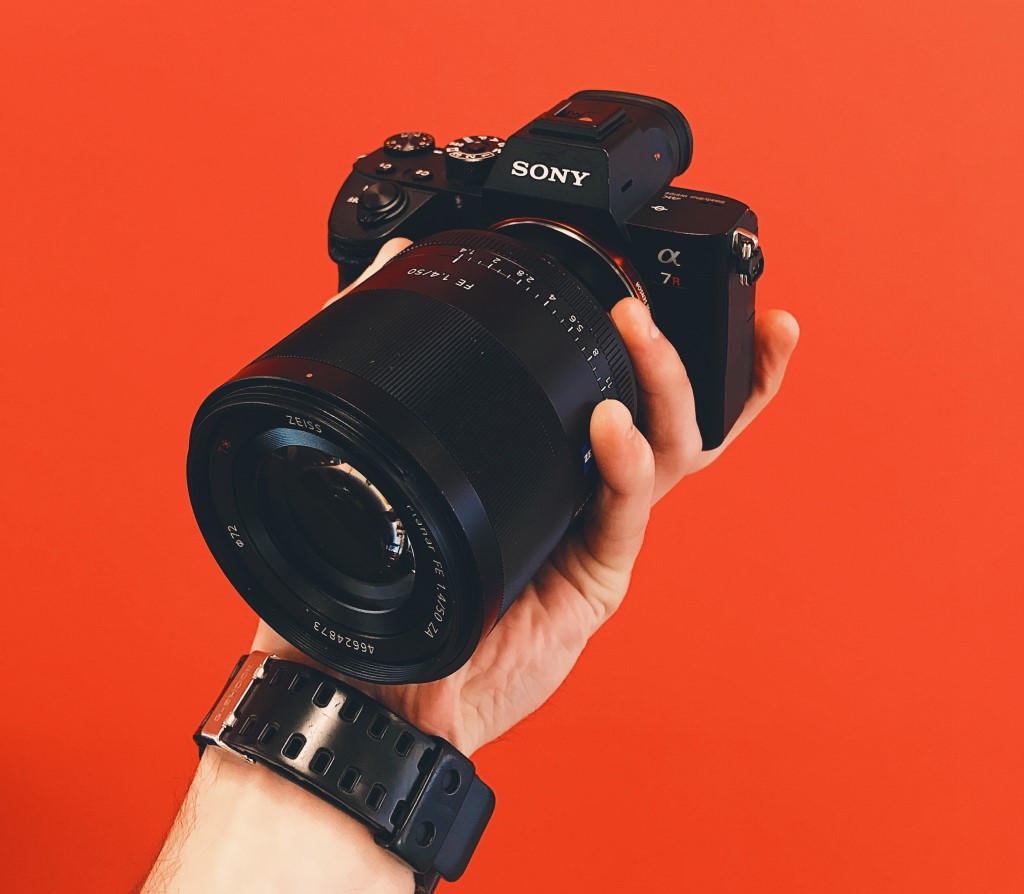
Photo by Pavel Anoshin on Unsplash
Sony a7R II Camera
The Sony a7R II is four years old, and yet it's still relevant because this mirrorless is a workhorse.
For starters, the Sony a7R II produces some of the most beautiful 4K footage I’ve ever had the pleasure to shoot. While Sony A7 riii, which was launched after Sony A7 rii, has got many high-end features for professional photographers.
It also has in-body image stabilization and an incredible 42.4MP full frame sensor.
If you’re looking to save some money with your new camera purchases, always look for cameras that came out a few years ago but were ahead of their time, like this Sony.
Sony a7RII Specs
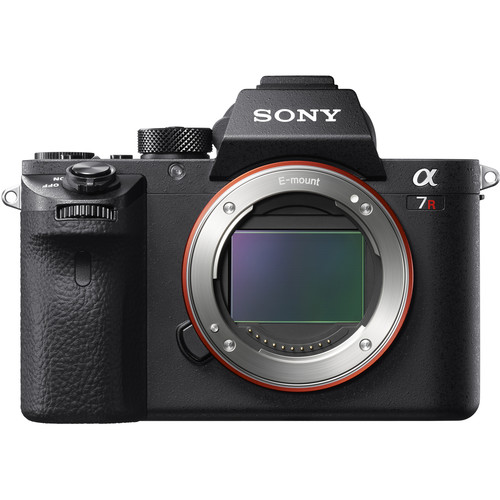
The Sony a7R II features 4K video, in-body image stabilization and a 42.4MP full-frame sensor, but that’s only the beginning of the list.
It’s ISO range is 100-25,600 and it comes with a 3” LCD screen with 1.22M-dots. Unfortunately, the screen isn’t fully articulated, but it is tiltable.
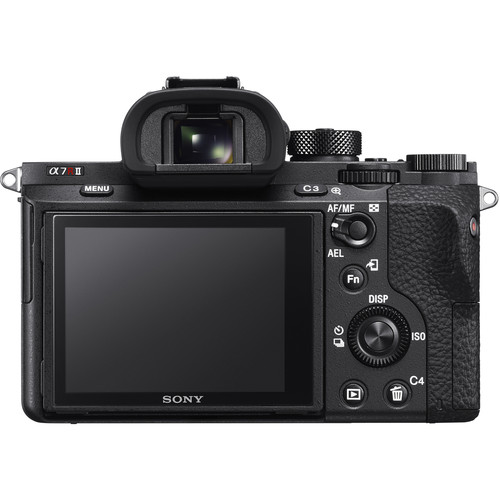
Other Sony a7RII Specs:
- 42.4MP sensor
- In-body image stabilization
- 4K video
- ISO range of 100-25,600
- 2.36M-dot OLED viewfinder
- 5fps burst mode
- AF system with 399 phase detect points
- Magnesium alloy body
- 1.4 lbs
- 500,000-shutter life expectancy
Recommended Sony a7R II Reading:
- David Busch’s Sony Alpha a7R II/a7 II Guide to Digital Photography
- The Complete Guide to Sony's Alpha 7R II
Sony a7R II Body & Design
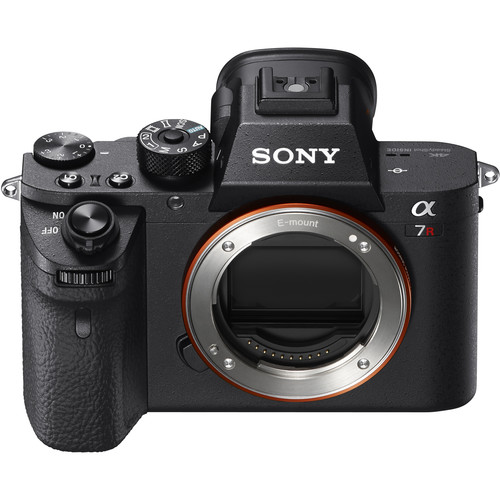
This camera body is built entirely from magnesium alloy, making it both light and sturdy.
It’s designed like an antique SLR, except better. Sony took some criticism they received from the Sony a7 and Sony a7 II and made the body of this camera more user-friendly.
For instance, the grip is larger and the shutter release button was moved forward to enable more room for a button that allows you to adjust your settings.
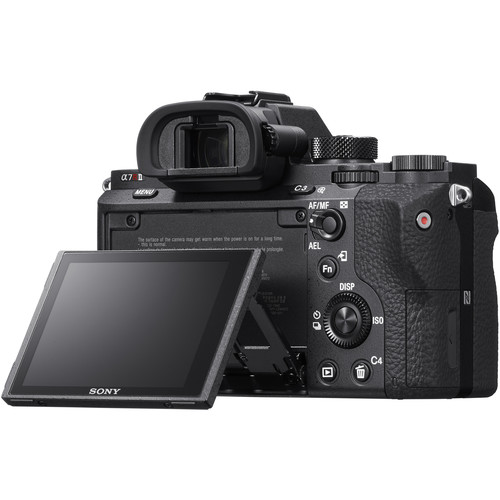
The Sony a7R II is also weather-sealed, and features a larger lens mount to support heavier lenses.
One negative some photographers may notice is that some of the camera buttons are smaller on the a7R II, as compared to the earlier a7 and a7R. However, in my experience with this camera, this isn’t a huge problem.
Sony a7RII Build & Handling
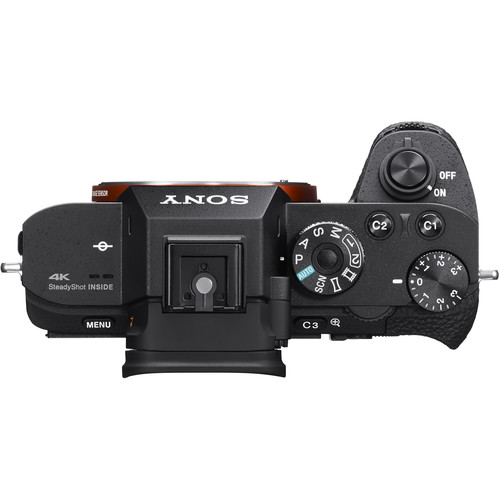
My favorite thing about the Sony a7R II is that it is highly customizable. For instance, there’s a control wheel on the back that can be adjusted to one of six features.
Additionally, there’s four customizable buttons that can be used for one of 62 functions.
Of course, this means that the Sony a7R II’s handling straight out of the box is excellent. It’s light. It’s effective. And, it’s compact enough to use with a number of different videography accessories.
Sony a7R II Video Performance
I’ve been hinting at the incredible video performance of the Sony a7R II throughout this whole article and this video by Barrett Media Co. proves it.
The Sony a7R II shoots 4K video at 60p, 30p, or 24p.
As you can see in this video by Alin Popescu, the AF system works beautifully while shooting video.
You can actually take control over the AF speed, which in turn allows you to direct your viewer’s attention by either lingering on a specific subject or lingering in the space between subjects.
It’s something you really need to experience if you’re thinking about purchasing the Sony a7R II specifically for its video capabilities.
Sony a7R II Price
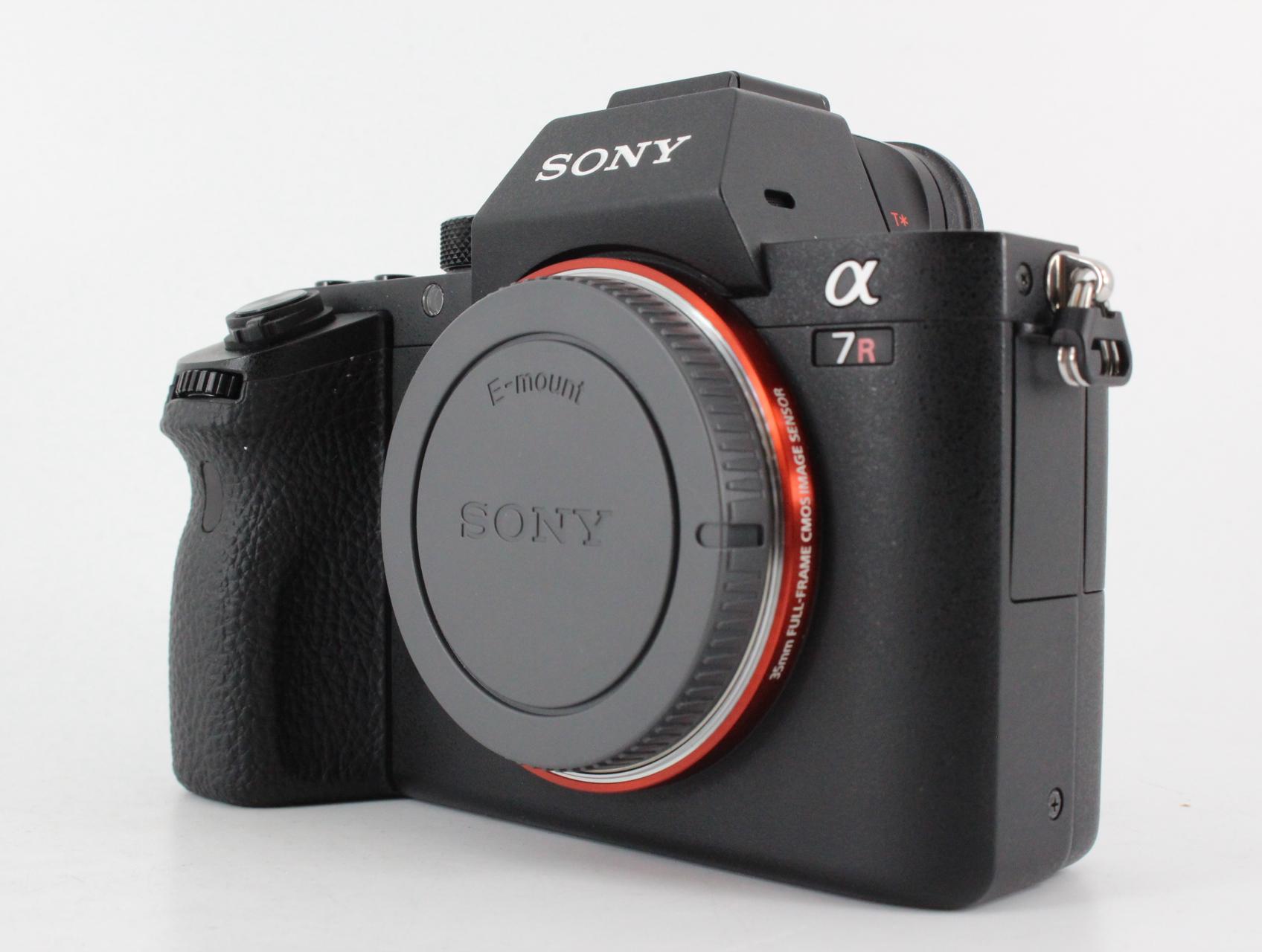
You can purchase a Sony a7R II on Amazon for $1,400. Considering that theSony a7R III is $2,500 and theSony a7R IV is $3,500, that’s quite the deal!
Or, you can save $300 and buy a used Sony a7R II on MPB for just $1,100.
In the grand scheme of things, $300 might not seem like a huge deal since this camera is still well over $1,000. But when you consider that the $300 you save by buying used could get you a new lens or a new tripod or a new set of filters, the benefit of the savings becomes clear.

If you’re concerned about the Sony a7R II being too old, you can pick up a used Sony a7R III for as little as $1,784 on MPB. That’s an even bigger savings over buying new!
Whatever the case, you’ll find that MPB has excellent prices, great customer service, and accurate grading for their cameras.
I’ve bought (and sold) with MPB many times and have been pleased with the process each time. I think you will too!
We Recommend
The Sony a7R IV Still Has Great Specs for Today's Photographers
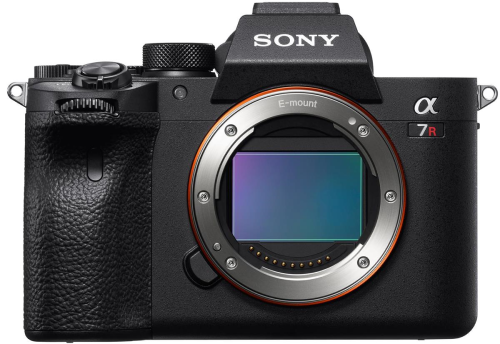
Sony recently unveiled the highly anticipated Sony Alpha a7R V mirrorless camera. It is a modern marvel boasting advanced features such as 8K video, an AI-powered image processor, and more. The only downside of the a7R V is its high price tag.
Lucky for you, though, its predecessor, the Sony Alpha a7R IV, is an amazing camera jam-packed with professional specs and features. And better yet, since the announcement of the a7R V, the Sony a7R IV price has dropped dramatically. You can now get your hands on one of these spectacular cameras for only a fraction of the cost of the new A7R V!
One fantastic resource with heaps of Sony a7R IV used cameras in stock and a place I have bought and sold countless photo and video gear throughout the years is MPB. They are a trustworthy and reliable online platform that sells used photo and video kit at unbeatable prices.
Additionally, every camera at MPB is meticulously hand-inspected by knowledgeable product specialists and backed by warranties, allowing you to make your purchases confidently and worry-free. Another awesome feature of MPB is its online marketplace, where you can trade and sell your old gear to help offset the cost of new-to-you photography and videography gear you want and need.
Now, without further ado, let’s take a look at the signature specs of the Sony Alpha a7R IV and find out why it still provides a ton of value in 2022!
Check out the video above by the Sony | Camera Channel to learn more about the Sony A7R IV specs.
Table of Contents
- Sony A7R IV Specs: 60.2MP BSI CMOS Full-Frame Image Sensor
- Sony A7R IV Specs: Excellent 4K Video
- Sony A7R IV Specs: Industry Leading Autofocus
- Sony A7R IV Specs: 10 FPS Burst Shooting
- Final Thoughts on the Sony A7R IV Specs
Sony A7R IV Specs: 60.2MP BSI CMOS Full-Frame Image Sensor
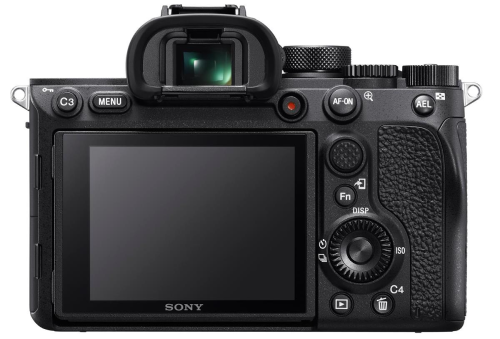
The headlining spec of the Sony Alpha a7R IV is its ridiculously high-resolution image sensor. It’s a 60.2-megapixel Back Side Illuminated (BSI) CMOS Full-Frame sensor perfect for intermediate and professional photographers. Furthermore, with a max resolution of 9504 x 6336 pixels, your images will remain sharp even when enlarged for printing in magazines, posters, or even billboards!
The BSI technology, and 5-axis in-camera image stabilization, help the a7R IV produce great results when shooting in low-light conditions (sunrise, sunset, inside a studio, etc.). And noise levels are minimal even when ISO levels are high. Lastly, if 60.2MP isn’t enough, the camera also features a “high-resolution mode” that captures 16 shots and blends them together into one 240MP image!
Here’s an in-depth look at the key features and specs of the Sony Alpha a7R IV:
- Camera Type: Mirrorless
- Sensor: 60.2MP BSI CMOS Full-Frame Sensor
- ISO: 100 - 32,000 (expandable to 50 - 102,800)
- Lens Mount: Sony E Mount
- Speed: 10.0 fps
- Autofocus: 567 phase-detection points
- Video: 4K/30p & 1080p/120p
- Size/Weight: 129 x 96 x 78 mm / 665 grams
- Battery Life: 670 shots
- Stabilization: Yes
- Touchscreen: Yes
Sony A7R IV Specs: Excellent 4K Video
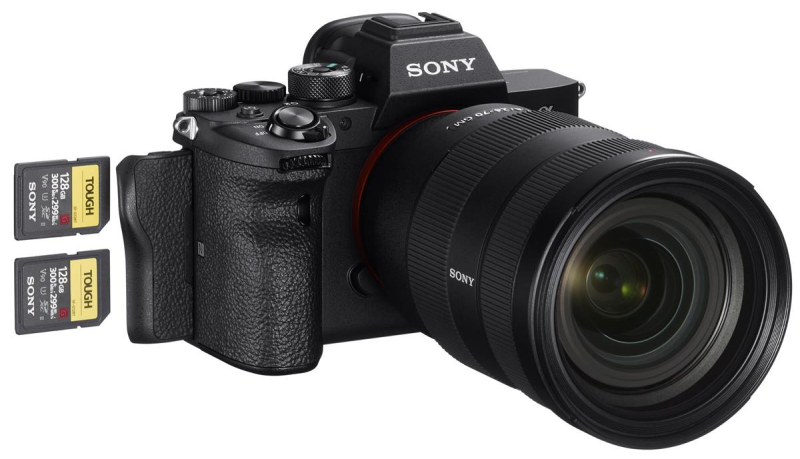
While the Sony Alpha a7R IV is undoubtedly tailored more toward photography, it is no slouch at video either. It captures smooth 4K footage at frame rates of 24, 25, and 30 fps. Recording in 24 and 25 fps utilizes the entire area of the full-frame sensor, while 30 fps uses a Super35 crop mode equivalent to shooting with an APS-C sensor. The video quality of both is phenomenal.
Moreover, the a7R IV shoots beautiful 1080p/120p slow-motion video directly in-camera. Slo-mo clips have never been more popular than they are today, and not having to manually slow them down in post-production will save you a ton of time during the editing process. Other notable video features include dual memory card slots, a tilting LCD, and microphone/headphone jacks.
If you want a hybrid mirrorless camera that is more video-centric, check out the Sony Alpha a7S III. It’s the best Sony camera for professional videographers, filmmakers, and documentarians.
Learn More:
- Sony Mirrorless Camera Comparison: Which is Best for 2023?
- Four Reasons Why a Used Sony A7s III is a Great Idea in 2022
Sony A7R IV Specs: Industry Leading Autofocus
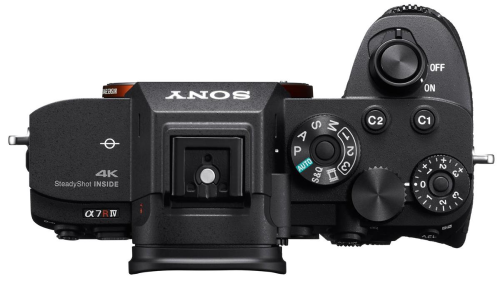
Sony has long been considered the king of autofocus, which is demonstrated again with the Sony Alpha a7R IV. The autofocus performance of this camera is lightning-fast courtesy of 567 phase-detection points covering nearly the entire sensor. Moreover, the AF works great during both photo and video shooting alike.
With that said, where the a7R IV really stands out compared to other cameras is subject tracking. The real-time tracking of the a7R IV is off the charts and seamlessly locates and locks onto moving subjects. Face/Eye-detection AF is also available when working with human subjects. It’s a great tool for portrait and street photography.
Sony A7R IV Specs: 10 FPS Burst Shooting
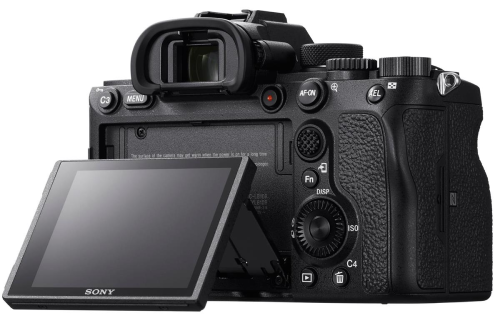
Another one of the best Sony a7R IV specs is its fast burst shooting. It has a max continuous shooting speed of ten frames per second and a deep buffer. Ten fps can’t compete with the ridiculous speeds of the sports-centric Sony Alpha a9 II or Sony’s flagship Alpha 1, but it is still faster than most mirrorless cameras.
Fast burst shooting is important for action, adventure, sports, and wildlife photographers who need to capture moving subjects and don’t want blurry images. The reliable autofocus also comes in extremely handy during continuous shooting because it helps reduce unwanted motion blur.
Final Thoughts on the Sony A7R IV Specs
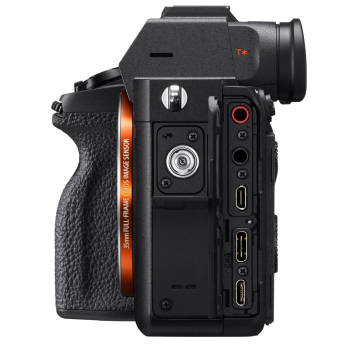
While the Sony Alpha a7r V may be the shiny new toy on the shelf, the a7R IV, without a doubt, remains one of the best cameras for photography available today. And its high resolution, excellent 4K video, impressive autofocus, and fast continuous shooting are only a few reasons why! Finally, everyone will love shooting with the a7R IV, but wildlife and landscape photographers, in particular, will see stunning results.
As a bonus, here are a few of my favorite Sony FE Mount lenses to use when shooting photos and videos with the a7R IV. All of them are currently on sale for unbeatable prices at MPB!
- Sony FE 16-35mm f/2.8 GM
- Sony FE 24-70mm f/2.8 GM
- Sony FE 70-200mm f/2.8 GM OSS II
- Sony FE 200-600mm f//5.6-6.3 G OSS
- Sony FE 35mm f/1.4 GM
- Sony FE 90mm f/2.8 Macro G OSS
Learn More:
We Recommend
The Sony a7S III is FINALLY Here

For all you Sony fans that have been waiting patiently for the Sony a7S III to drop, the wait is finally over.
You can pre-order your very own a7S III for $3,498.00 (body only), with shipments set to start on September 24, 2020. My guess is that there will be a lot of folks after this camera, so if you want one, I'd suggest pre-ordering sooner rather than later.
As discussed in the video above, this camera is purpose-built for low-light performance and optimal 4K video shooting. That's evidenced by the fact that this camera has a native ISO range of 80-102400 and an expandable ISO of 40-409600. Sony says this camera is capable of more than 15 stops of dynamic range. So, yeah...it appears to be a low-light shooting beast.
Sony a7S III Specs
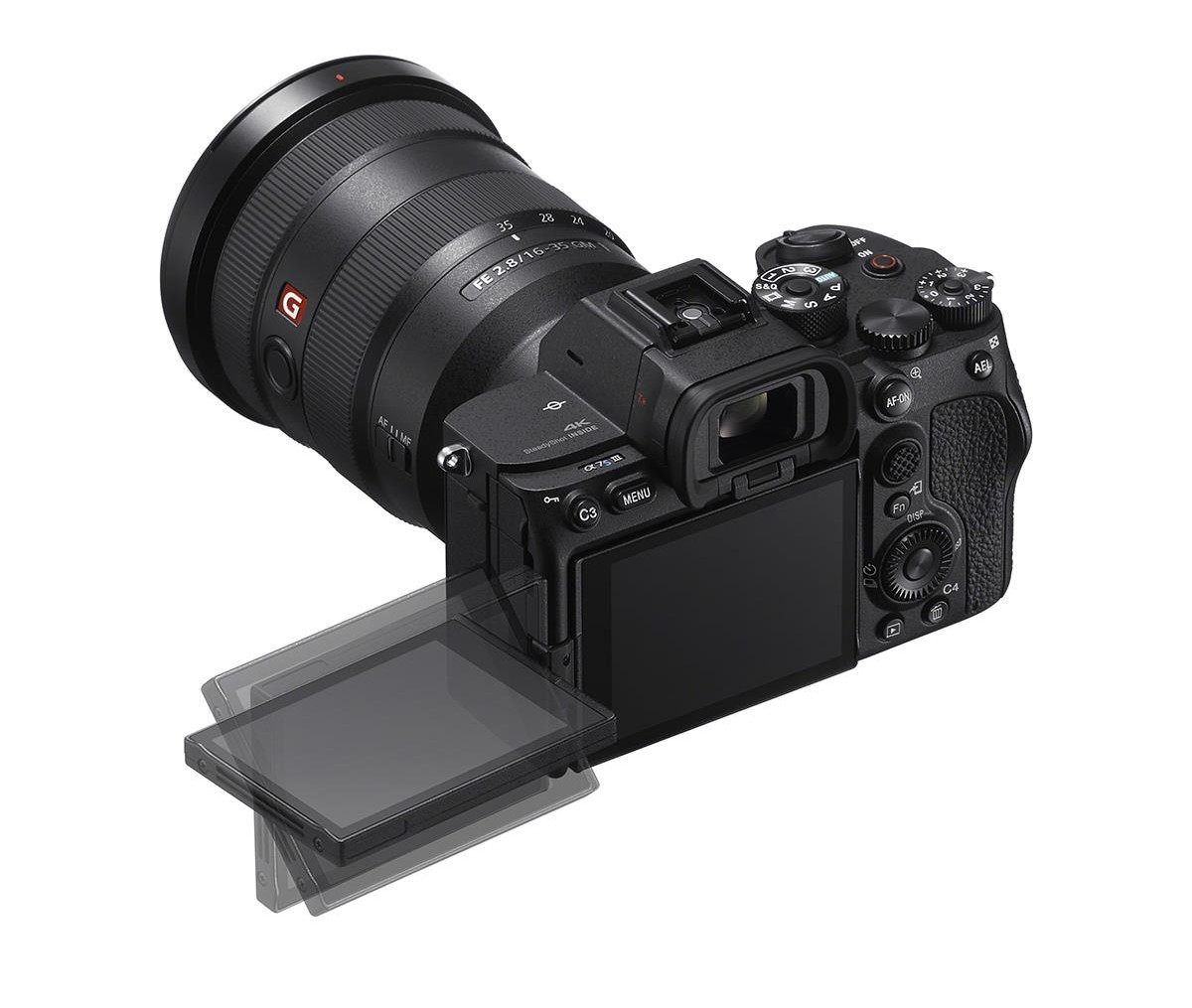
Let's quickly review some of this camera's major specifications:
- 12.1-megapixel full frame Exmor R sensor
- BIONZ XR processor
- 9.44 million-dot QXGA OLED EVF
- Articulating 3-inch 1.44 million-dot LCD
- Base ISO range of 40-409600
- 15+ stops of dynamic range
- Up to 4K 120p video
- 5-axis IBIS
- Bluetooth, NFC, WiFi
- NP-FZ100 battery
- Weight: 1.35 pounds
- Dimensions: 5.07 x 3.81 x 2.74 inches
Let's dive into some of these specs in a little more detail.
Sony a7S III Video
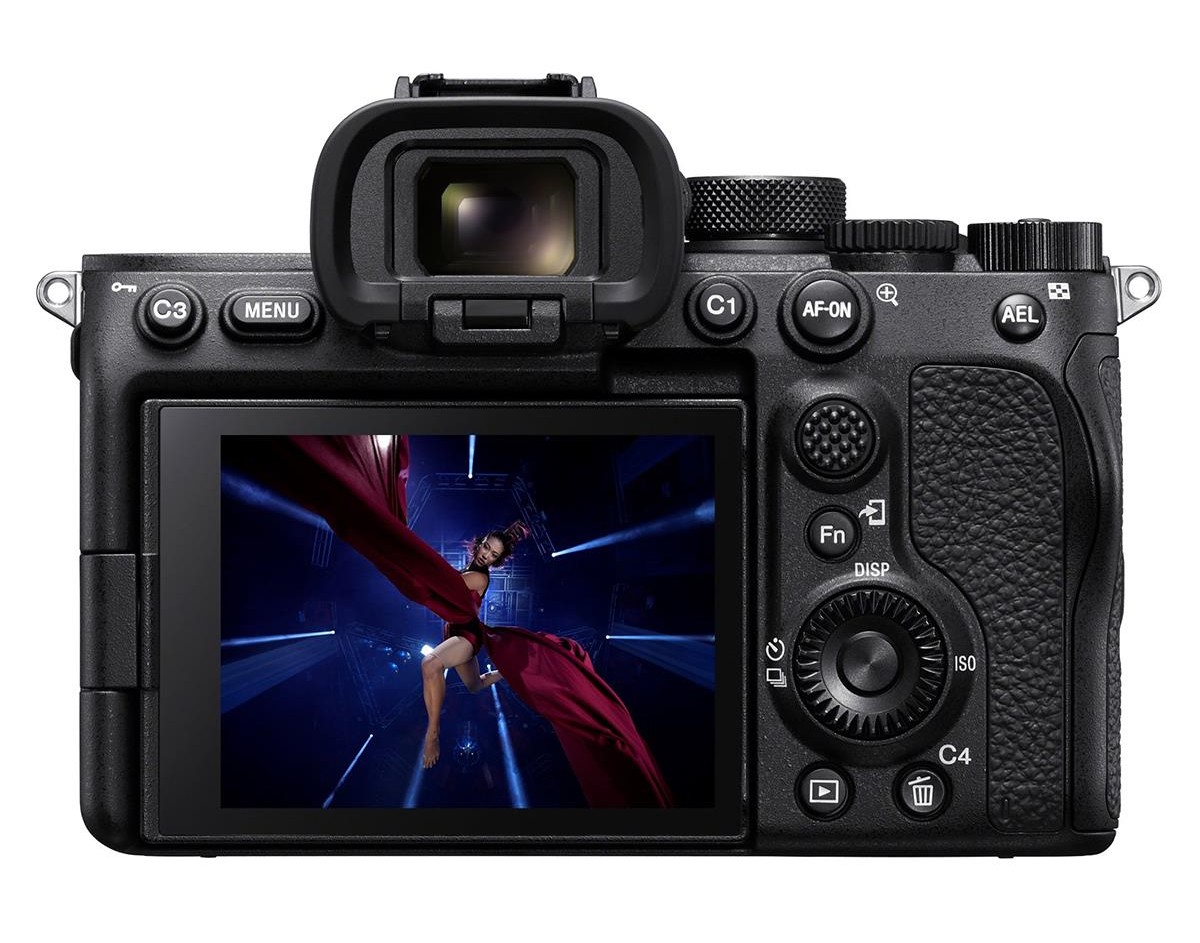
While some companies have recently released 8K capable cameras (I'm looking at you, Canon EOS R5...), Sony opted to forego 8K or even 6K capabilities in favor of crushing it with truly top-tier 4K video performance.
The a7S III shoots 4K in 24, 30, 60, and 120p (in full HD, it's capable of 240p!). Recording is done with the full pixel readout (with no binning!) in each recording mode. Video is recorded in all modes internally at 10-bit 4:2:2. All of this is done using the full sensor width, except when using the highest frame rates. Even then, the crop is 1.1x when shooting at 120p and 240p.
Additionally, the a7S III sports full frame 16-bit raw output (at up to 60p) to a compatible recorder. This is done using the camera's full-size HDMI port. This new camera also has the new XAVC-HS H.265 HEVC format, which offers double the compression efficiency as the XAVC-S H.264 MP4 recording format. There's also the option to utilize the XAVC-SI H.264 format with a bitrate up to 600Mbps in both full HD and 4K.
Sony a7s III Sensor and Processor

The a7S III is equipped with an upgraded 12.1-megapixel Exmor R imaging sensor that is backside illuminated, which helps with its light-gathering power.
Though it's "just" 12.1-megapixels, the camera benefits from larger pixels. These larger pixels are more capable of handling noise when shooting at high ISOs. They also offer improved dynamic range and better light sensitivity compared to cameras with a zillion megapixels crammed into the same sized sensor.
The updated sensor is paired with a brand-new processor, the BIONZ XR.
Sony notes that this new processor has a whopping eight times the processing power as its predecessor. All that speed impacts the performance of the a7S III in virtually every way. It helps improve color rendition, helps speed up monitor refresh rates, allows for faster autofocus, and minimizes processing latency for still images and videos as well.
What About Still Images?
There is no mistaking that this is a video-first camera. However, Sony has made attempts to make this an adequate camera for still photography as well.
The base ISO of 80 is a nice touch for low-light shooting while the Real-time Tracking autofocus capabilities will come in handy for action shots.
This camera also has a phase-detect autofocus system (more on that below) and the capability of shooting at 10fps. Add in a 1,000 shot buffer, autofocus performance down to EV -6, HEIF support, and better dynamic range, and you have a variety of tools that can help you take improved photos.
As noted, the autofocus system in this camera is phase-detect. It has 759 AF points that offer 92 percent coverage.
You get Real-time Tracking as well as Real-time Eye AF, which works for both still photos and videos. Sony claims that the a7S III can recognize subjects 30 percent faster thanks to its BIONZ XR processor.
Additionally, all video modes support autofocus. That includes shooting 4K video at 120p.
Sony a7S III Connectivity and Storage
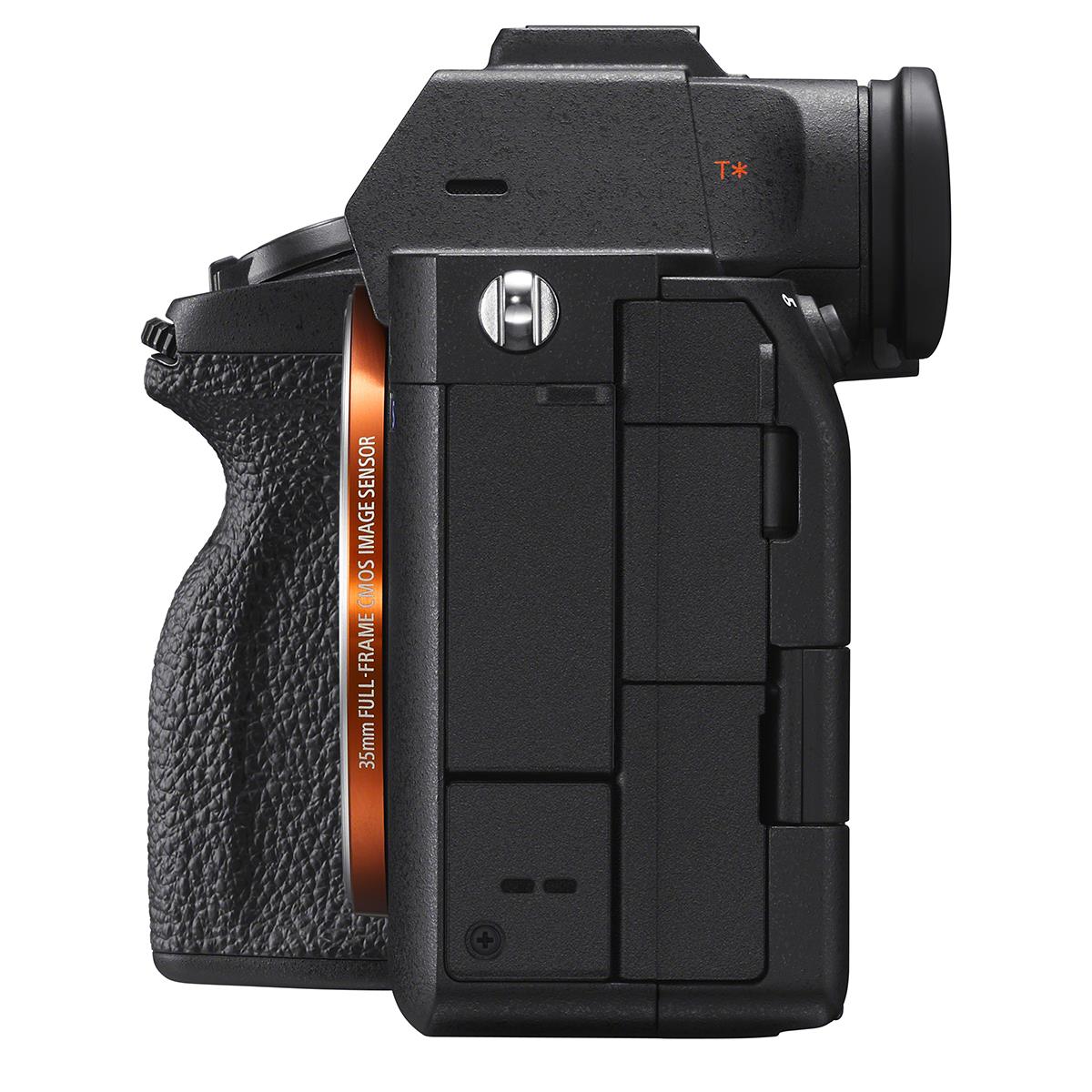
This camera is loaded for bear with connection ports:
- Headphone output
- Microphone input
- HDMI Type-A
- USB Type-C
- USB Micro
The USB-C port has Power Delivery support that enables quick charging with continuous operation.
The a7S III can also accept a wired LAN adapter and PC remote shooting can be accomplished using the 2.4GHz/5Ghz wireless LAN. You can also tether via USB.
On top of that, the a7S III's hot shoe sports a Digital Multi Interface, which allows for wireless communication with some audio accessories.
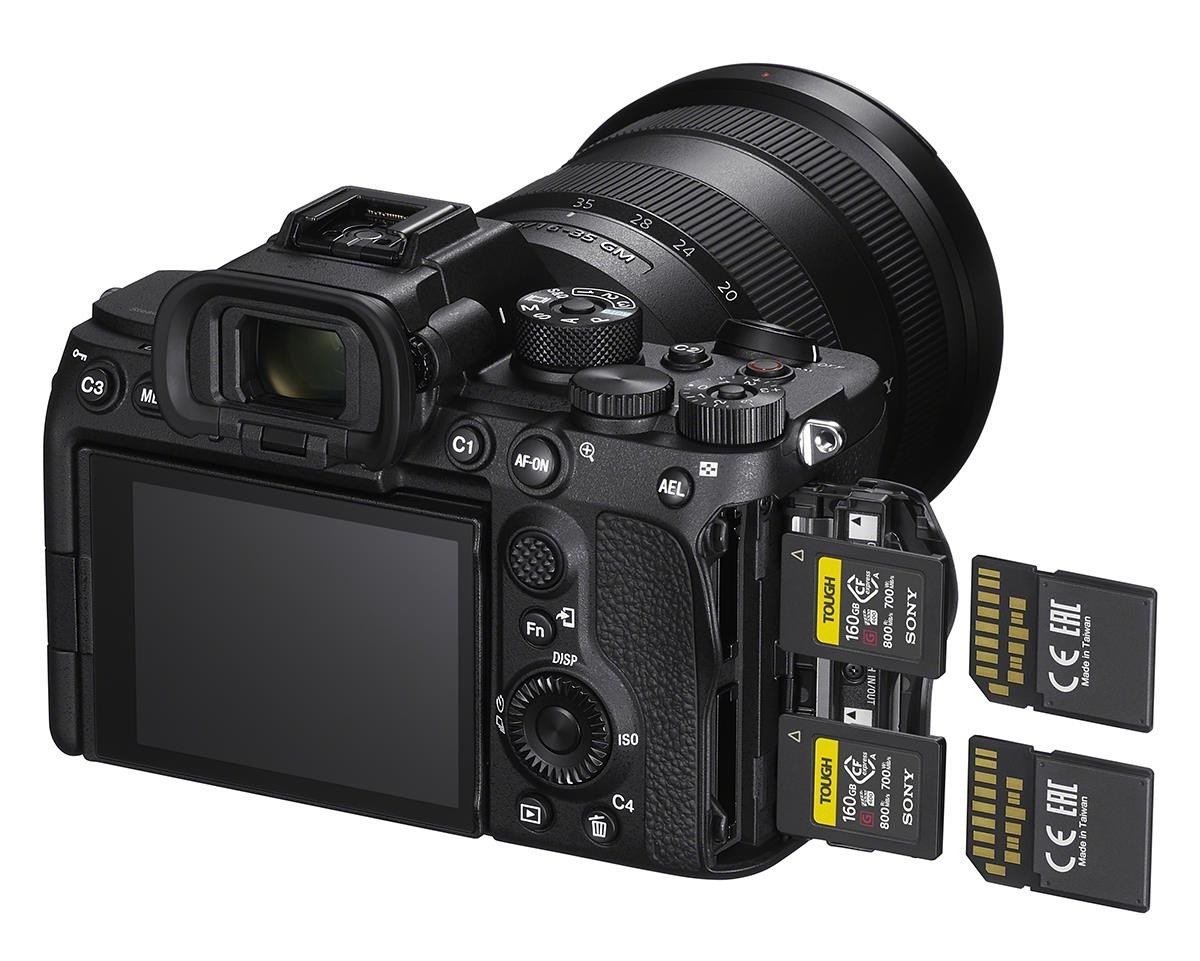
On the storage front, this camera has dual card slots, both of which are compatible with UHS-II or CF Express Type A memory cards. Both slots off the same speeds and can be used for simultaneous recording. The camera also allows you to save your camera settings to a memory card for later use.
Sony a7S III Menu System
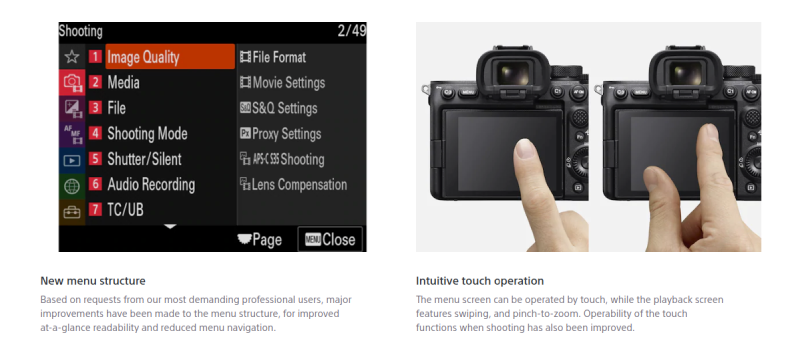
Sony has for a long time faced criticism for its menu system, and finally they've come up with something that at least on paper appears to be a vast improvement.
The a7S III has a better visual interface and a menu structure that is far more intuitive. You can add a touch-enabled screen to the list as well.
To simplify things, when shooting still images, the menu will only show settings that are pertinent to still imagery. Changing to a video setting also changes the available menus to display only those options related to video. You can even store camera settings and picture profiles when switching between stills and video. You also get the capability of choosing which settings will be retained (at least among common settings like ISO, shutter speed, aperture, metering mode, and so forth).
Despite its incredible low-light performance and superb 4K video capabilities, the new menu system might actually be the best thing about this camera!
We Recommend
These Budget Bird Photography Cameras are Worth Their Weight in Gold
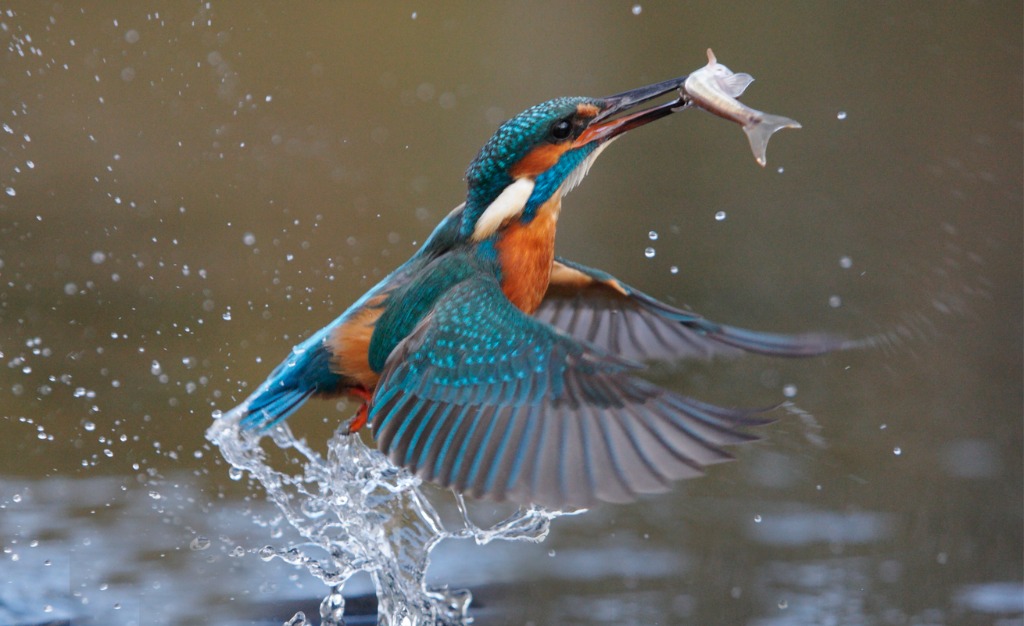
Photo by MarkLane45 via iStock
Bird photography is so much fun! The colors, the surroundings, and the interesting aspects of different birds all add up to an enjoyable photography experience. Oh yeah, the resulting images are amazing as well.
If you’re new to serious photography, you may be wondering what the best camera for bird photography is, as well as what other bird photography gear you might want. As I show each bird photography camera I think is great, I’ll link to them at the online platform MPB, my favorite camera candy store.
MPB is the best place to buy, sell, and trade used photography gear, from cameras and lenses to specialty accessories and even drones. I have saved tons of money over the years I’ve been using them and have always been satisfied with the quality of each item and their 6-month warranty.
Let’s see what you might want to have as your bird photography camera.
Table of Contents:
- Crop Format as a Bird Photography Camera
- Bird Photography Camera - Sony a6400
- Bird Photography Camera - Olympus OM-D E-M1X
- Bird Photography Camera - Canon EOS R7
- Bird Photography Camera Lenses and Accessories
Crop Format as a Bird Photography Camera
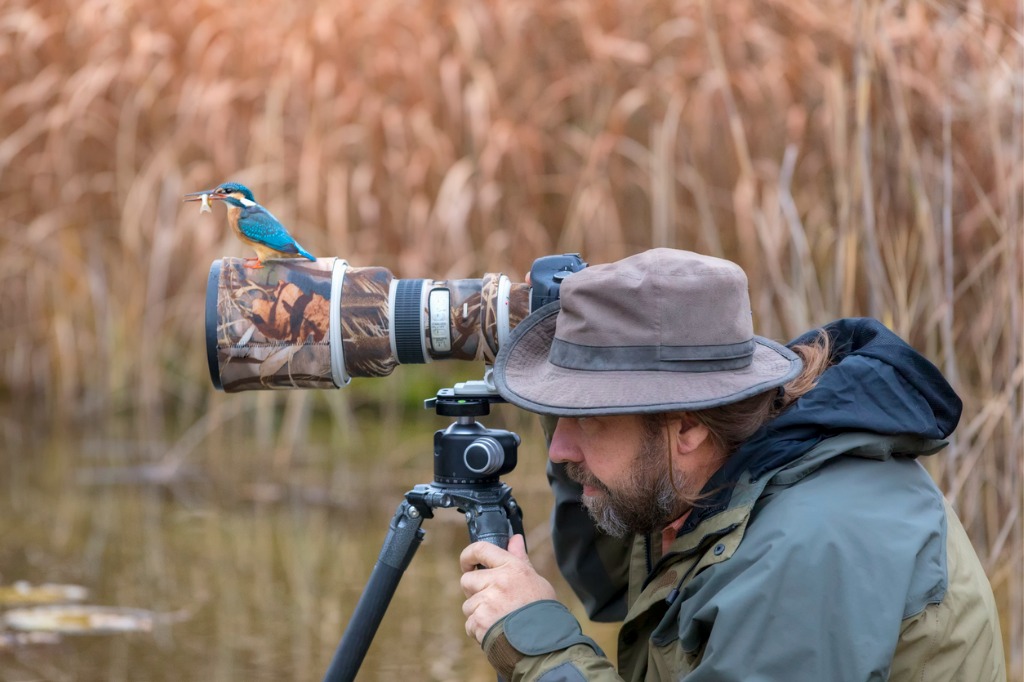
Photo by DieterMeryl via iStock
Three main formats are popular for digital photography: Full Frame format, APS-C format, and MFT format.
There are also two styles of camera design: DSLR (digital single lens reflex), which uses a mirror box and prism for through-the-lens (TTL) viewing, and mirrorless cameras, which use electronic viewfinders.
For a bird photography camera, I recommend a mirrorless camera in one of the crop formats, though you can achieve amazing results with whatever type of camera you own now by implementing tips and techniques we’ve discussed in other articles.
First off, a mirrorless design is nice for a bird photography camera for several reasons. Having no mirror mechanism, the cameras are usually much quieter than SLRs. The viewfinder display never blacks out, allowing easier tracking of a moving target. And they are generally compact and lightweight.
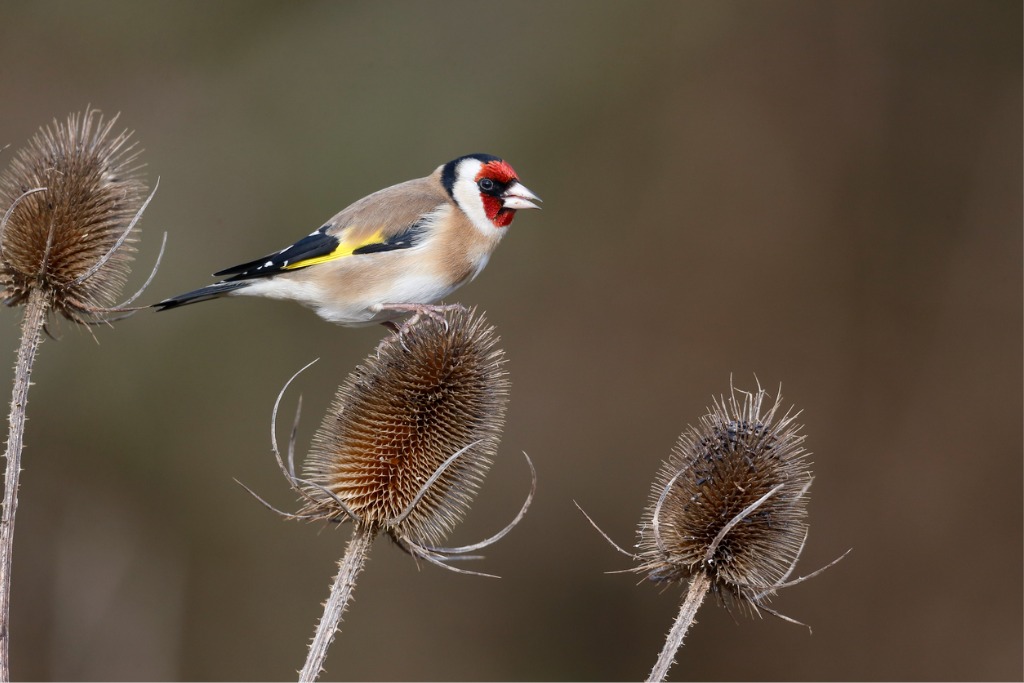
Photo by MikeLane45 via iStock
Secondly, the crop formats work very well, in my opinion, as a bird photography camera due to the lens crop factor.
Crop factor can be a confusing idea to grasp, but it basically refers to how a lens's focal length braves in the crop format as opposed to the same focal length on a Full Frame format camera. The lens focal length does not change, but the same focal length is longer in the effective field of view on the smaller formats.
APS-C cameras have a crop factor of 1.5X (or close to it), and the MFT cameras have a 2X crop factor. This really works well for sports, wildlife, and bird photography when it comes to telephoto lenses.
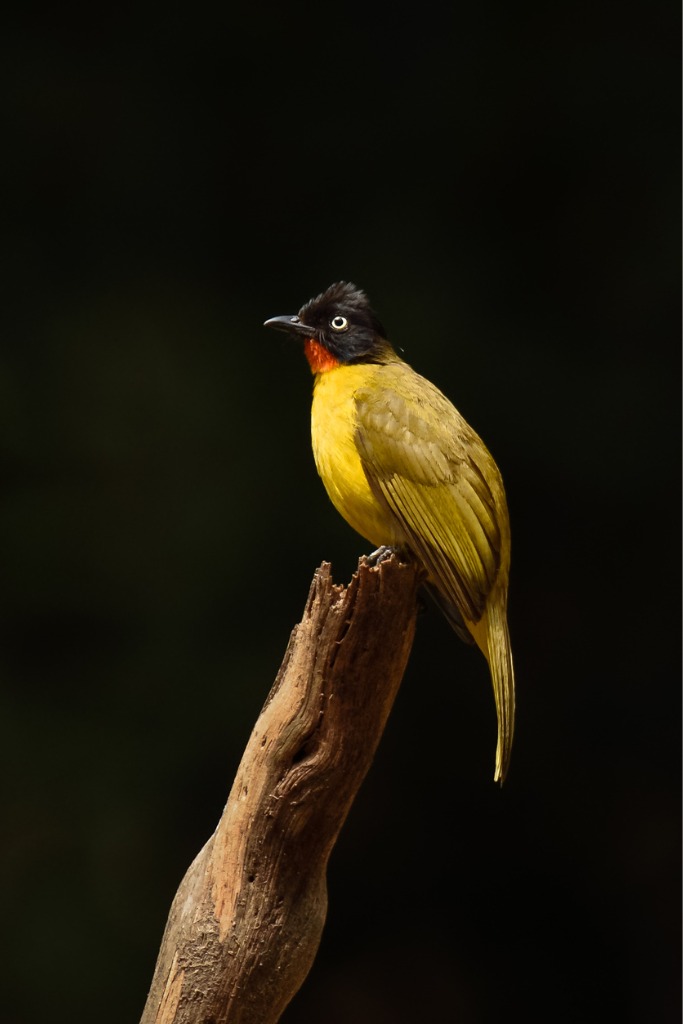
Photo by Anantha Jois via iStock
As an example, a 300mm lens on a Full Frame camera provides a reach of 6X over the normal focal length of 50mm. On an APS-C format camera, that same 300mm focal length is 9X over the normal lens for that format (35mm). With MFT format cameras, that is 12X over the normal 25mm lens for that format.
That 300mm lens focal length gives the same field of view and telephoto reach as a 450mm lens for 1.5X crop factor and a 600mm lens for 2X crop factor, if compared to the standard of Full Frame format.
While all of that figuring out factors may sound odd, the bottom line is that crop format cameras are very friendly to telephoto use, such as what we want from a bird photography camera and lens setup.
Now, on to the bird photography camera options!
Bird Photography Camera - Sony a6400
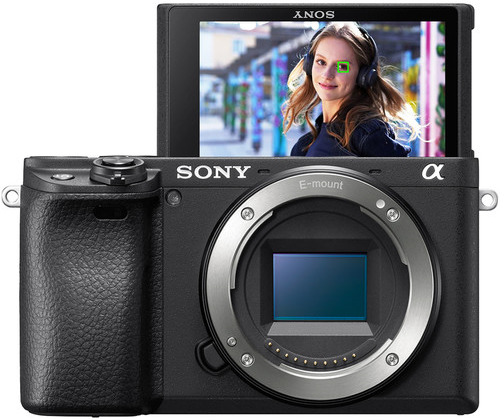
The Sony a6400 is a mirrorless APS-C format camera with interchangeable lenses in the Sony E-mount. You can get one in Like New condition with a 6-month warranty at MP for only $704, body only. Add the super compact normal range kit lens Sony E PZ 16-50mm for $83 in Like New condition for all-around use.
Watch this YouTube video from DP Review TV for an overview of this neat bird photography camera:
Here are the main features:
- APS-C format 24MP sensor
- 425-pt phase-detection AF system with Real-Time Tracking
- Tilting rear viewscreen
- 2.36M-dot electronic viewfinder
- ISO range from 100-32000
- 11fps burst shooting (8fps with silent shutter)
- 4K/30p video capture
- 410 shots per battery charge (per CIPA)
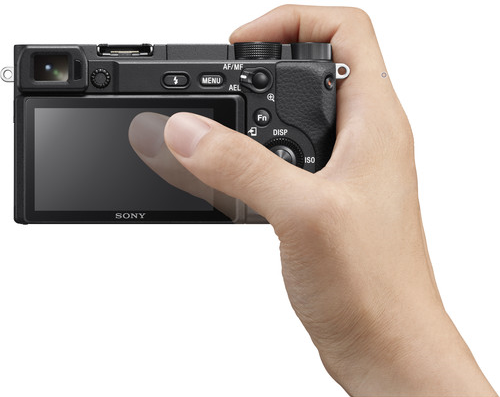
A couple things that stand out as great for a bird photography camera are the silent shutter, super fast AF, and a long battery life. Adding 4K video means any video footage you capture will also be superb quality.
Bird Photography Camera - Olympus OM-D E-M1X
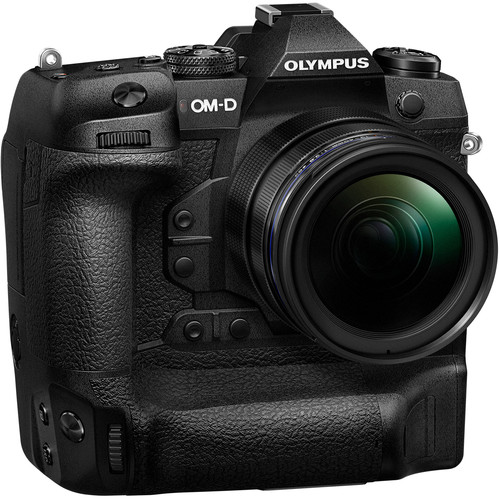
The Olympus OM-D E-M1X is a fully professional-level camera with a 20MP MFT sensor and interchangeable lenses in the MFT mount, meaning you can use OEM lenses from Olympus, Panasonic, Leica, and others.
I found it in Like New condition for $984. A good kit lens is the M.Zuiko 12-45mm PRO zoom lens for $449 in Like New condition. A huge plus for this camera and Olympus PRO line lenses is the rugged build and weather sealing, making this a prime option as a bird photography camera.
DP Review TV on YouTube has an in-depth review of this fully professional camera system:
Features highlights:
- 20MP Four Thirds sensor
- 121-point hybrid autofocus system
- 50MP hand-held high-res shot mode
- 10 fps burst shooting with AF-C, 30 fps with electronic shutter
- Cinema (DCI) and UHD 4K video
- 7.5 EV of image stabilization with supported lenses
- 2.36M-dot OLED viewfinder with an ultra-fast refresh rate
- Fully articulating touchscreen
- IP53-rated weather-sealed body
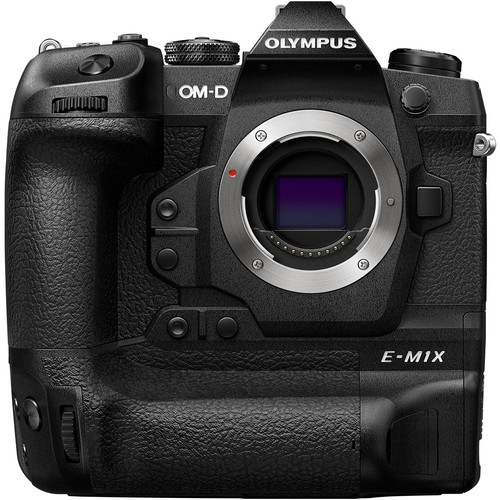
In addition to the weather sealing, some other specs that stand out as a bird photography camera are the enhanced level of image stabilization (great for those long telephoto lenses) and the high-resolution mode that can be accessed hand-held.
Bird Photography Camera - Canon EOS R7
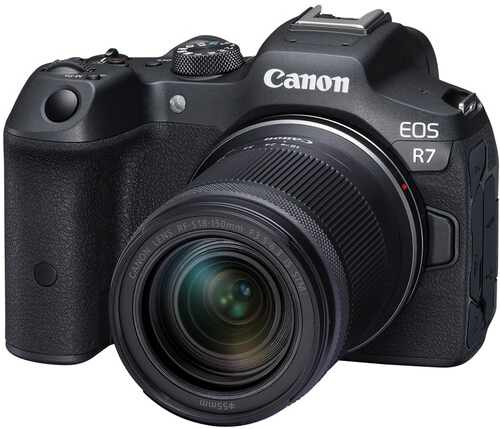
The Canon EOS R7 has an APS-C format 32.5MP sensor and takes lenses with the Canon RF-mount. It is $1319 in Like New condition for the body on MPB. The $94 Canon RF-S 18-45mm lens for APS-C format is a good multipurpose compact lens in Like New condition.
Here is the DP Review TV YouTube review of this high-end mirrorless camera:
Features and specs:
- 32.5MP APS-C CMOS sensor with Dual-Pixel AF
- Up to 30 fps shooting with e-shutter
- In-body image stabilization (IBIS), up to 7 stops
- Oversampled UHD 4K up to 30p
- 10-bit video in 'PQ' true HDR footage or C-Log
- 2.36M dot OLED viewfinder
- 1.62M dot fully-articulating touchscreen
- Twin UHS-II SD card slot
- Environmental sealing
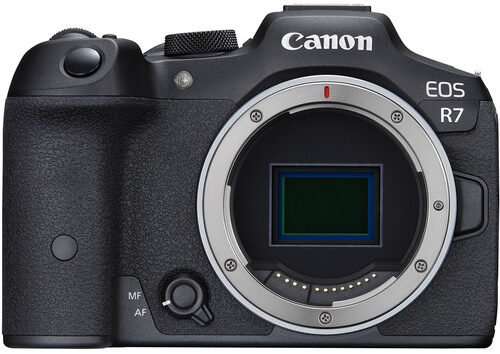
Some stand-out features that add up to great benefits as a bird photography camera are the Dual Pixel AF for rapid autofocus, advanced video functions for pro-level results, weather sealing, and the 7-stop IBIS.
Bird Photography Camera Lenses and Accessories
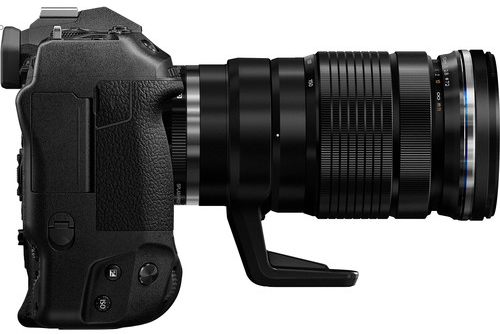
To take advantage of the features for whichever bird photography camera you decide on, you’ll want to add some high-quality telephoto lenses and some other useful bird photography gear. I found all of these on MPB. If something is out of stock when you first look, check back in a little while since the inventory rapidly changes.
Canon has an amazing telephoto zoom lens in the RF-mount that will be awesome for bird photography, the Canon RF 100-500mm zoom lens. It runs for $2519 in Like New condition. With the 1.5X crop factor of the Canon EOS R7, this lens will provide 15X magnification over the normal lens (750mm Full Frame equivalent). You can even use this lens hand-held at times with the 7-stop IBIS of the R7 camera.
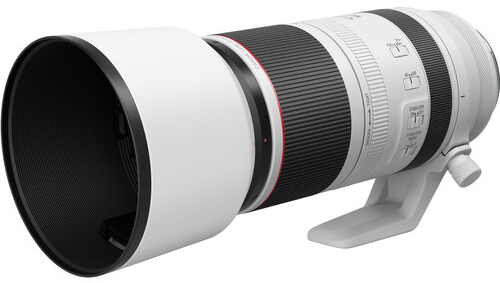
For those using Sony mirrorless cameras, see the Sony FE 100-400mm GM OSS zoom lens, which is currently selling for $1889 in Like New condition. A crop factor of 1.5X gives this lens an effective equivalency for Full Frame of 600mm for a 12X magnification over normal for the APS-C format.
The M.Zuiko 100-400mm ED IS zoom lens is in the MFT-mount for Olympus and can be found for $1259 in Like New condition. Enhanced image stabilization, advanced weather sealing, and ED elements make this an ideal lens for your MFT format bird photography camera. The 2X crop factor provides a Full Frame equivalency of 800mm for 16X magnification over normal, perfect for wildlife and sports.
Other bird photography gear available on MPB for your choice of the best camera for bird photography are tripods, monopods, flashguns, and a camera bag to hold it all.
After you get set up with your bird photography camera, lens, and accessories, post some of your pics on our Photography Talk forum so we can see those beautiful birds!
Disclaimer: Our articles might have affiliate links and the occasional sponsored content, but don't sweat it – if you buy something, we get a little kickback at no extra cost to you, and we only hype products we truly believe in!
Learn More:
We Recommend
These Cameras Are Great Bargains for 2021
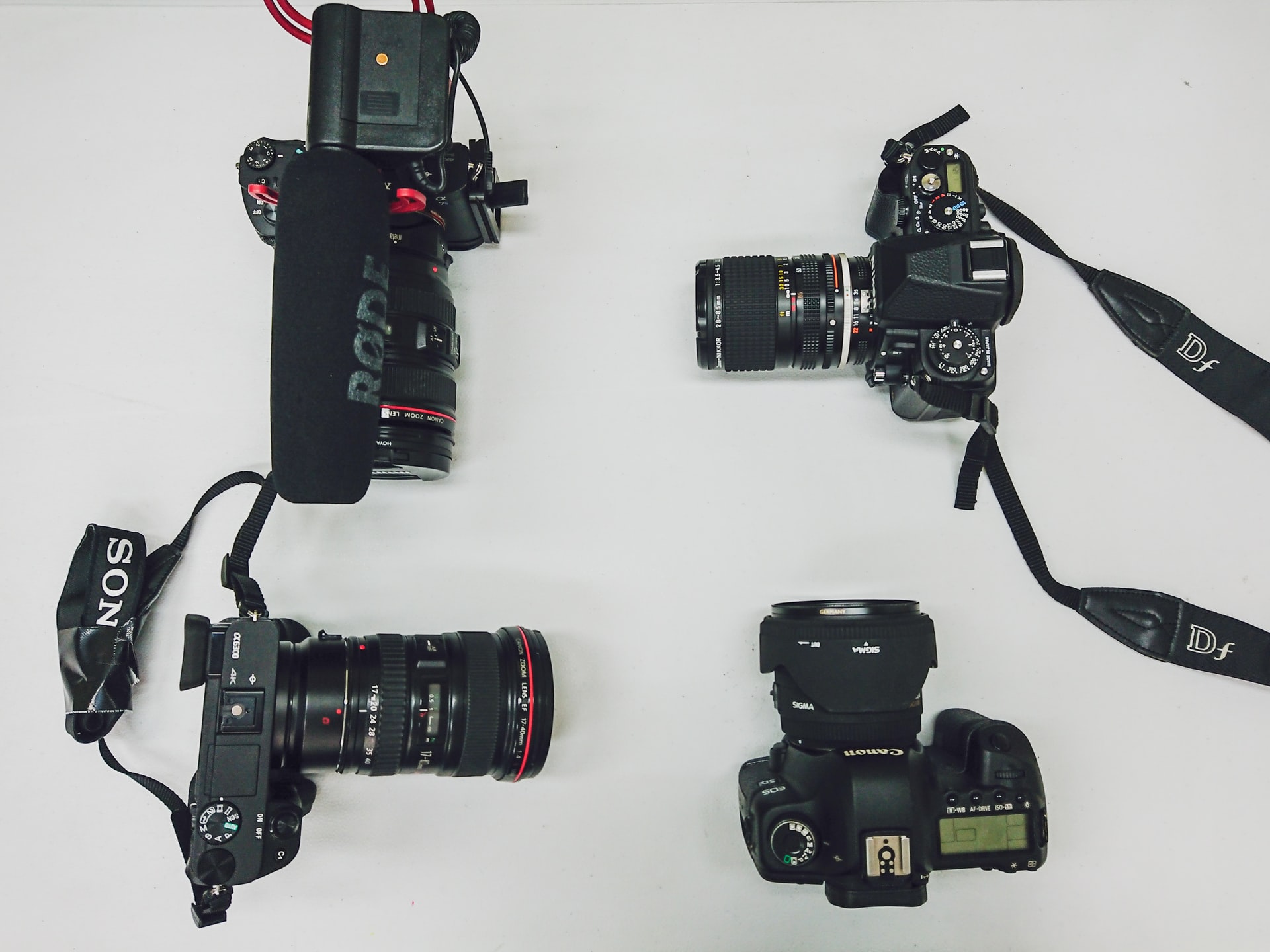
Photo by ???? ??? on Unsplash
If one word sums up 2021, it would have to be “bargain.” I’m definitely not making the same amount of money as I did last year, and chances are, you probably aren’t either.
Wherever possible, I’m always looking for a bargain. If that means searching, “cameras on sale,” at least once a day then so be it.
But, bargains are few and far between when it comes to bargain cameras. Photography equipment is, generally, very expensive. Or, conversely, you may end up getting ripped off when trying to purchase cheap cameras.
If you find yourself looking for a camera this year, then don’t get ripped off. This list includes a range of bargain cameras at different price points, but we made sure that each one of the cameras on this list are good cameras for 2021, i.e., they’re going to have all of the specs you’ll need this year.
Nikon D3500
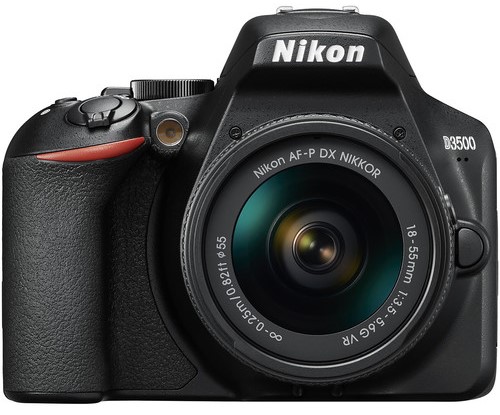
The Nikon D3500 dropped in September of 2018 as a replacement for the Nikon D3400. Fans of this line weren’t entirely thrilled by the Nikon D3500 because Nikon didn’t update as many specs as some people expected them to. But, I think Nikon did a great job of updating the important specs while still keeping the camera at a good price point for amateur photographers.
For those unfamiliar with this line, the Nikon D3500 is an entry-level DSLR with an incredibly impressive battery life. But, videographers beware: it doesn’t feature 4K video.
Specs/Features
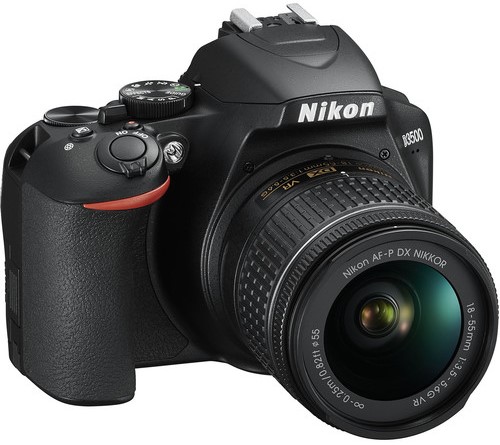
The Nikon D3500 is one of my favorite bargain cameras because its specs are solid across the board. For starters, it comes with a 24MP sensor and can shoot 11fps in burst mode.
But, it’s also light at just under 1 lb, and as I mentioned before, it has a tremendous battery life of 1,550 shots. With this type of a battery, you can go multiple days without needing to recharge, which is super beneficial for travel photographers.
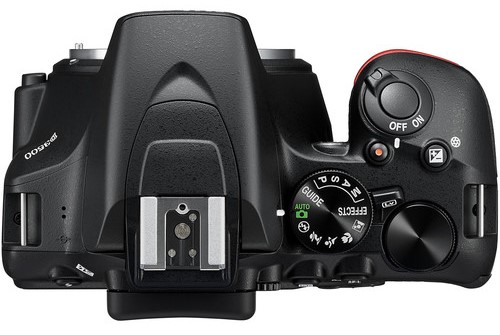
Other Nikon D3500 specs include:
- 24MP sensor
- Full HD video capabilities
- 3.0” LCD with 921k-dots
- Built-in Bluetooth
- EXPEED 4 processor
- 1,550-shot battery life
- 14.6 oz
Pros/Cons
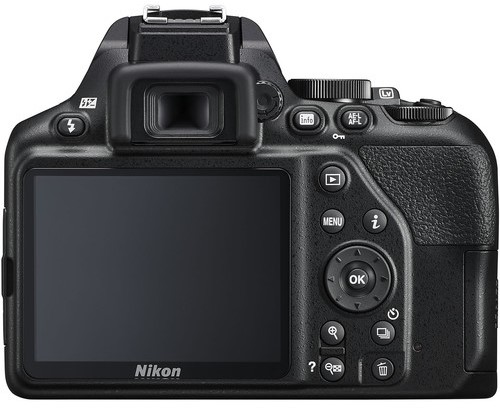
I’m going to get the biggest con of this camera out of the way. It doesn’t shoot 4K video. While an entry level camera at this price point shouldn’t be expected to shoot 4K, the lack of 4K in 2021 may still be a little off putting for people who have been in the industry for even a short while.
This camera also doesn’t have a tilting LCD or touchscreen, which is frustrating for street shooters.
But, I’d argue the pros of this camera far outweigh the cons. The biggest pro is the price, which I talk about more below. This camera features great image quality for the price. It also features a great ISO performance and is comfortable to hold.
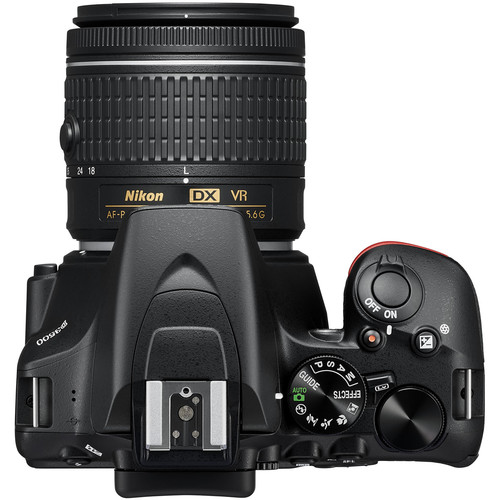
I love bargain cameras that come with a wide variety of lenses, and this one does. The lens that comes packaged with the body, the 18-55mm f/3.5-5.6G is itself a great starter lens. It lessens vibrations via its vibration reduction feature.
But, this camera is compatible with dozens of lenses. I write more extensively about your lens options for the Nikon D3500 in the full review I did of this camera a few months ago. You can read that here.
Price
While the Nikon D3500 originally cost $500, you can now find a used one (body only) on MPB for $300.
Sony a7 II
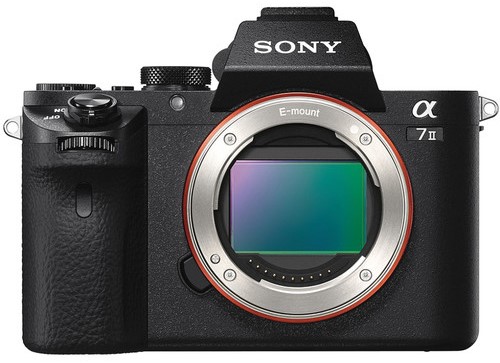
The Sony a7 II is definitely a step up as compared to the Nikon D3500. The Sony a7 II isn’t an entry-level camera, like the Nikon D3500, and it also isn’t a DSLR. It’s a full-frame mirrorless.
Specs/Features
The Sony a7 II is best known for its image stabilization, which is incredibly good considering the camera came out over five years ago. But, it also features an impressive ISO range.
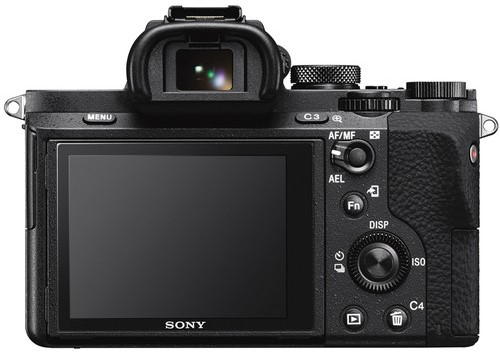
Other Sony a7 II specs include:
- 24MP full frame sensor
- 5-axis sensor-based image stabilization
- 117-point AF system
- 3” tilting LCD with 1.23m-dots
- Full HD video capabilities
- Built-in Wi-Fi
- 5fps burst mode
- ISO range of 100-25,600
Pros/Cons
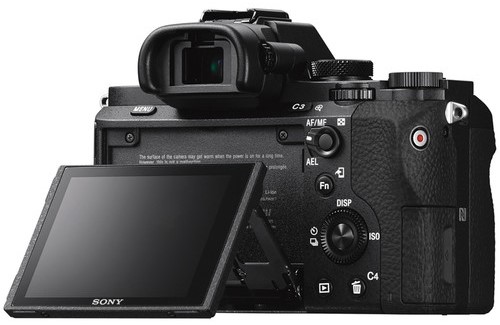
Again, since the Sony a7 II dropped so long ago, it doesn’t feature 4K video. Videographers looking for bargain cameras will need to read on.
The 5fps burst mode also seems wildly outdated.
But, for anyone looking to transition from a DSLR to a mirrorless, I highly recommend this camera. For starters, it feels much more like a DSLR than a mirrorless thanks to its chunky body. It also shoots great in low light scenarios.
Price
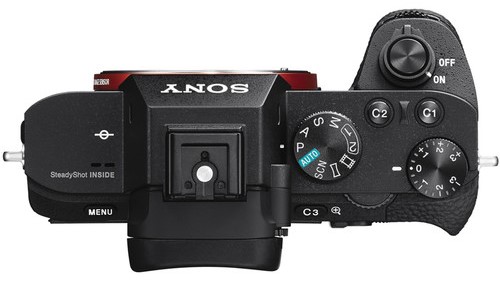
When the Sony a7 II first dropped, it cost nearly $1,500. Thankfully, the price has gone down over the years and you can now find a used Sony a7 II starting at $740 (body only).
Learn More:
Canon EOS RP

Next up on our bargain cameras list is the Canon EOS RP, which is a relatively new mirrorless camera that just so happens to be one of the most inexpensive cameras of its type to ever be released.
Specs/Features

The Canon EOS RP comes with a 26MP sensor, a native ISO range of 100-40,000, and, wait for it, 4K video!
That’s right, it’s the first camera on our bargain cameras list to feature it. It can shoot 4K video at up to 24fps.
Other Canon EOS RP specs include:
- 26MP sensor
- DIGIC 8 processor
- 3” vari-angle touchscreen with 1.04m-dots
- 5fps burst mode
- 4K video
- Built-in Wi-Fi
- Built-in Bluetooth
- 250-shot battery life
Pros/Cons

One major con of this camera is its battery life, which definitely means you will be requiring an extra battery, which means a higher startup cost and a heavier bag.
Its 4K video can be considered a pro or a con, depending upon how you look at it. While it’s a huge pro that it features 4K video, it also requires a crop in order to do so.
Price
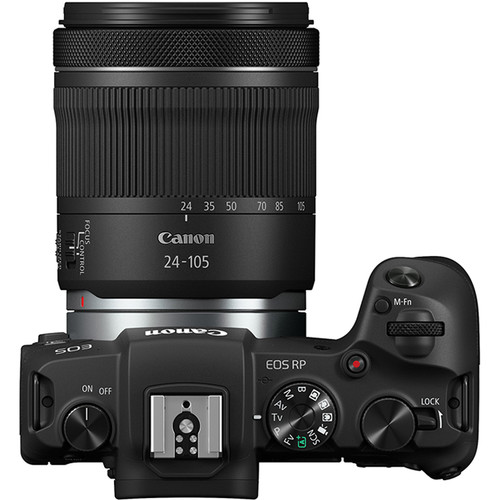
You may be wondering why the Canon EOS RP is on this list since it is a bargain cameras list, but I found a Canon EOS RP in like new condition on MPB for just $930 (body only). If you compare this to its original $1,300 price tag, you’re saving nearly $400 and receiving the exact same quality of camera.
Panasonic G9
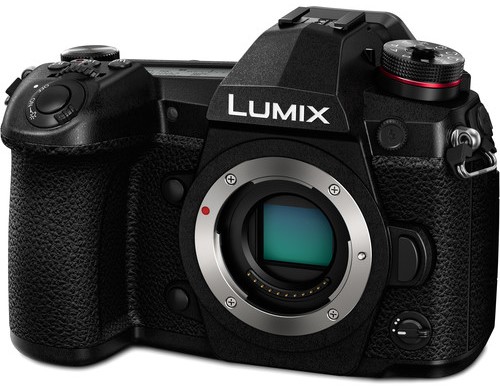
The Panasonic G9 will make it onto every bargain cameras list I ever create because I love it. It’s a mirrorless Micro Four Thirds camera that is phenomenal for still photographers, although I wouldn’t recommend it for its video capabilities.
Specs/Features
The Panasonic G9 features a 20MP Micro Four Thirds sensor, however it can create 80.6MP images by combining up to eight different shots for one incredibly detailed final product.
Its ISO is noble at 100-25,600, but is nothing compared to how great its 5-axis dual image stabilizer is.
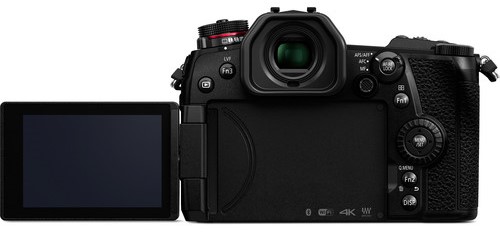
Other Panasonic G9 specs include:
- 20MP Micro Four Thirds sensor
- 3” fully articulating screen with 1.04m-dots
- 5-axis image stabilization
- ISO of 100-25,600
- 60fps burst mode
- 1.45 lbs
Pros/Cons
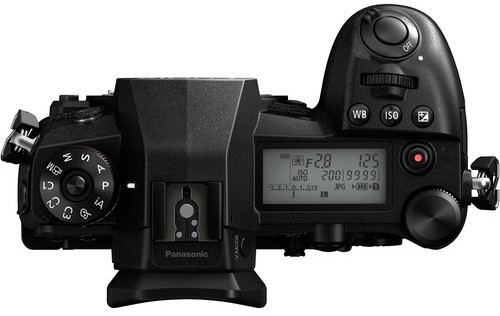
The entirety of the Panasonic G9 spec sheet is a huge pro for me. It’s viewfinder works excellently, it shoots just about the highest image quality possible, and it is one of many great bargain cameras.
Unfortunately, it is a little large for a mirrorless, which some people don’t like. But, overall I can’t find much wrong with this camera.
Price
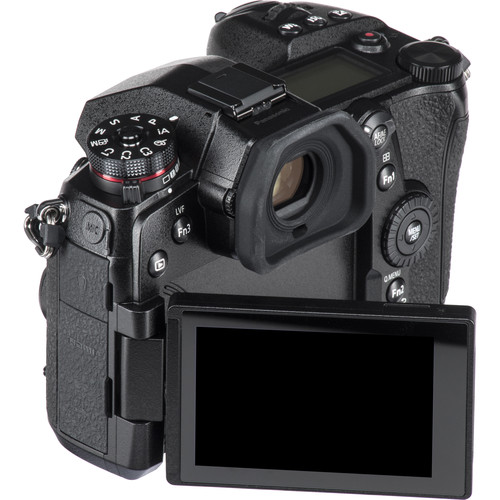
The Panasonic G9 is another camera that is typically priced at well over $1,000. Its list price is actually $1,500, but MPB has multiple bargain cameras. You can find the Panasonic G9 there for as low as $960 (body only) in excellent condition.
Learn More:
We Recommend
Three Excellent Sony E-Mount Lenses for Landscape Photography
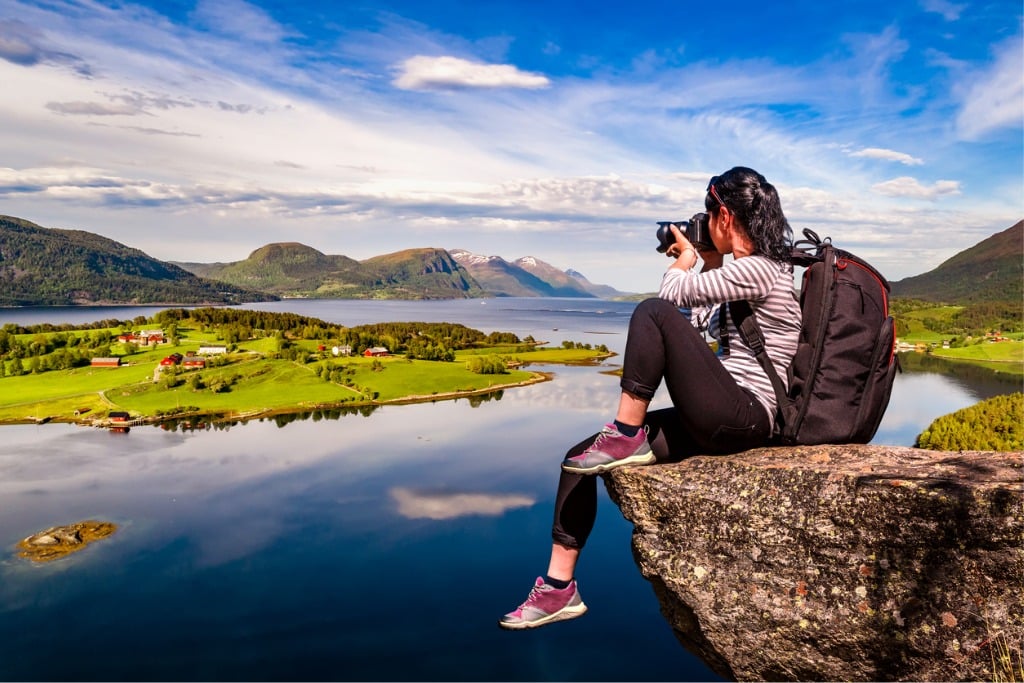
Photo by cookelma via iStock
Many people overlook the importance of lenses in photography, but don’t let yourself be one of them. Choosing the right lens is equally, if not more, important than owning a good camera body. With that in mind, you've come to the right place if you own a Sony E Mount mirrorless camera and don’t know which lenses to buy for landscape and nature photography!
In this Sony lens guide, we’ll share three excellent Sony E Mount LensesE Mount Lenses for landscape photography – one standard zoom lens, one wide-angle lens, and one telephone lens. Additionally, thanks to innovative online platforms like MPB, buying a pre-owned mirrorless camera has never been cheaper and easier than it is today.
MPB is a trustworthy and reliable online platform selling pre-owned photo and video gear at unbeatable prices. All their cameras and lenses are meticulously hand-inspected by highly-trained product specialists and backed by six-month warranties, allowing you to make your purchases confidently and worry-free.
We’ve been using MPB’s online marketplace to buy, sell, and trade in camera equipment for years and have gotten tons of incredible deals on lenses. That's why we recommend you go check them out today. Now, without further ado, it’s time to look closer at our favorite Sony lenses for landscape photography!
Table of Contents
- The Best Sony E-Mount Lenses for Landscape Photography: Standard Zoom Lens
- The Best Sony E-Mount Lenses for Landscape Photography: Wide-Angle Lens
- The Best Sony E-Mount Lenses for Landscape Photography: Telephoto Lens
- Final Thoughts on Sony Landscape Lenses
The Best Sony E-Mount Lenses for Landscape Photography: Standard Zoom Lens
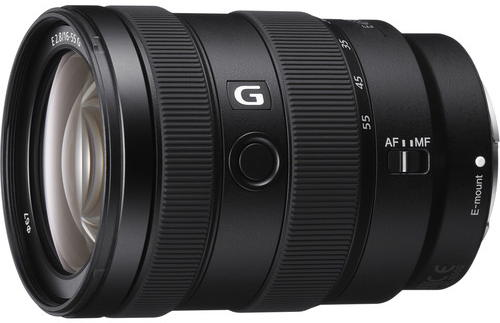
If you can only own one lens, you should opt for the state-of-the-art Sony E 16-55mm f/2.8 G. It’s a do-it-all zoom lens with an effective focal length of 24-82.5mm (after factoring in the 1.5x crop factor). That versatility will allow you to capture stunning landscapes, portraits, street photography, and more.
While the Sony Zeiss 16-70mm f/4 used to be our favorite, that changed in 2021 with the release of the Sony 16-55mm. Its constant maximum aperture of f/2.8 improves the lens's low-light performance and creates beautiful bokeh effects. Moreover, it’s coated with a robust weatherproof sealant to protect it from natural elements.
Here’s an in-depth look at the key features and specs of the Sony E 16-55mm f/2.8 G:
- Lens Type: Standard Zoom Lens
- Camera System: APS-C
- Lens Mount: Sony E Lens Mount
- Focal Length: 16-55 mm
- Maximum Aperture: f/2.8
- Minimum Aperture: f/22
- Minimum Focusing Distance: 33 cm
- Filter Size: 67 mm
- Focusing system: Autofocus & Manual Focus
- Maximum Magnification: 0.2x
- Size/Weight: 73 x 100 mm / 494 grams
- Optical Image Stabilization: No
- Pre-Owned Price: $819 - $979
Check out the video above by That Icelandic Guy. to learn why this is a must-own lens for landscape photographers.
The Best Sony E-Mount Lenses for Landscape Photography: Wide-Angle Lens
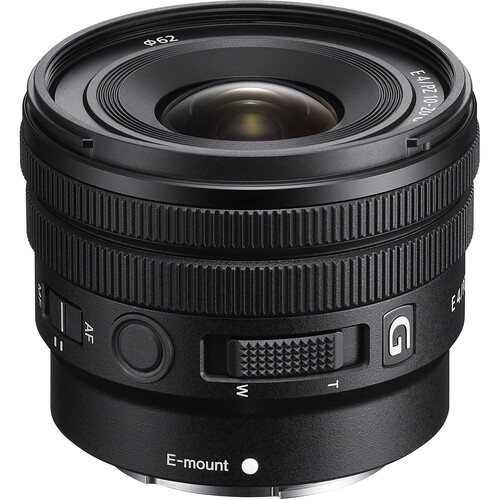
Alternatively, people who want a wide-angle zoom lens will prefer the Sony E 10-18mm f/4 G OSS. It’s a compact, portable, and lightweight lens ideal for landscape photography and videography. You can capture epic content of mountains and deserts thanks to its equivalent zoom range of 15-27mm.
Three more strengths of this wide-angle lens are its Optical SteadyShot image stabilization (OSS), internal focus mechanism, and weatherproofing. The focusing technology, in particular, is a game changer as it is faster and quieter than traditional lenses.
Here’s an in-depth look at the key features and specs of the Sony E 10-18mm f/4 G OSS:
- Lens Type: Wide-Angle Lens
- Camera System: APS-C
- Lens Mount: Sony E Lens Mount
- Focal Length: 10-18 mm
- Maximum Aperture: f/4
- Minimum Aperture: f/22
- Minimum Focusing Distance: 25 cm
- Filter Size: 62 mm
- Focusing system: Autofocus & Manual Focus
- Maximum Magnification: 0.1x
- Size/Weight: 70.1 x 63.5 mm / 225 grams
- Optical Image Stabilization: Yes
- Pre-Owned Price: $459 - $504
Check out the video above by Stefan Malloch for a more detailed review of this Sony wide-angle lens.
Learn More:
The Best Sony E-Mount Lenses for Landscape Photography: Telephoto Lens
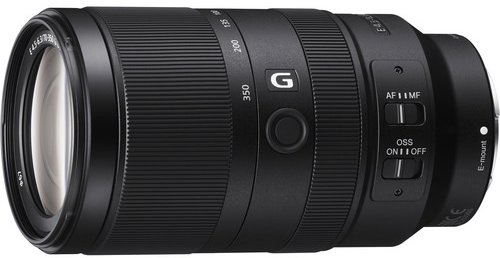
Finally, we want to discuss the Sony E 70-350mm f/4.5-6.3 G OSS. It’s a powerful telephoto lens that debuted in 2019 and delivers a mind-blowing effective focal range of 105-525mm. While you wouldn’t want it to be the only landscape lens in your kit, it makes the perfect companion to either of the lenses mentioned above.
Its reach is great for shooting far-off landscapes or zooming in and capturing insane details. We like using this lens for jagged peaks and wildlife. On top of that, we’ve found it works well for flowers, macro photography, and video. Another feature we love is the innovative focus hold button.
Here’s an in-depth look at the key features and specs of the Sony E 70-350mm f/4.5-6.3 G OSS:
- Lens Type: Telephoto Lens
- Camera System: APS-C
- Lens Mount: Sony E Lens Mount
- Focal Length: 70-350 mm
- Maximum Aperture: f/4.5
- Minimum Aperture: f/32
- Minimum Focusing Distance: 110 cm
- Filter Size: 67 mm
- Focusing system: Autofocus & Manual Focus
- Maximum Magnification: 0.23x
- Size/Weight: 77 x 142 mm / 625 grams
- Optical Image Stabilization: Yes
- Pre-Owned Price: $789 - $829
Check out the video above by Arron Prescott to watch a detailed review of this Sony telephoto lens by a popular YouTuber.
Final Thoughts on Sony Landscape Lenses
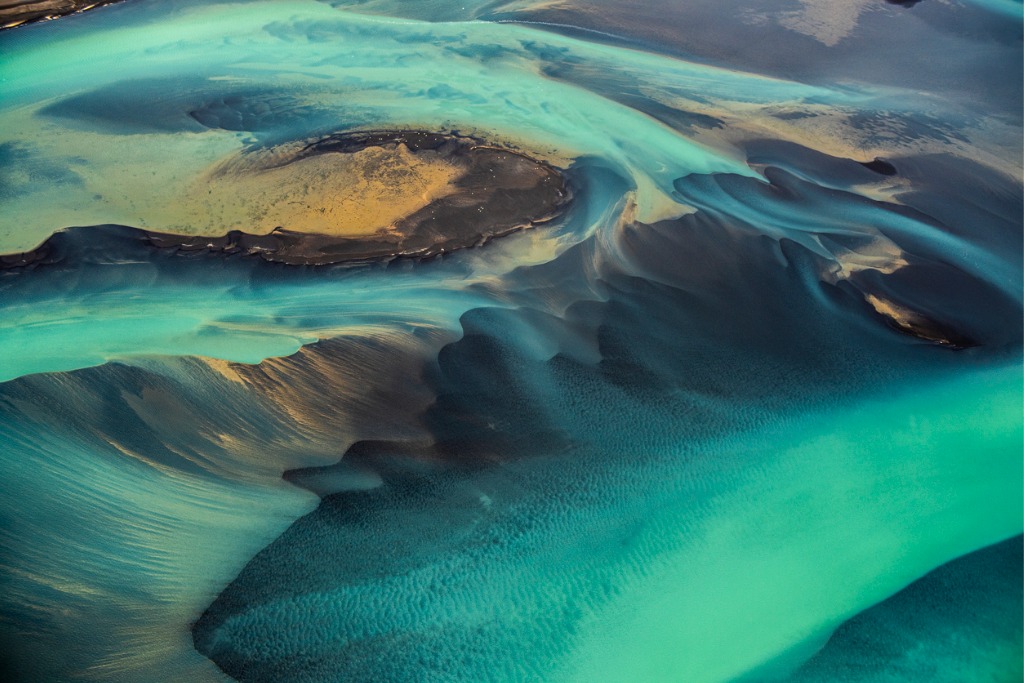
Photo by EXTREME-PHOTOGRAPHER via iStock
Now that you know which Sony E Mount Lenses are best for landscape photography, what are you waiting for? Head over to MPB and get your hands on whichever fits your budget and style best.
Do you own a full-frame Sony FE mirrorless camera? Check out the list below of our favorite Sony FE Fit lenses for landscape photography:
- Sony FE 16-35mm f/2.8 GM
- Sony FE 24-70mm f/2.8 GM II
- Sony FE 70-200mm f/2.8 GM OSS II
- Sony FE 14mm f/1.8 GM
- Sony FE 600mm f/4 GM OSS
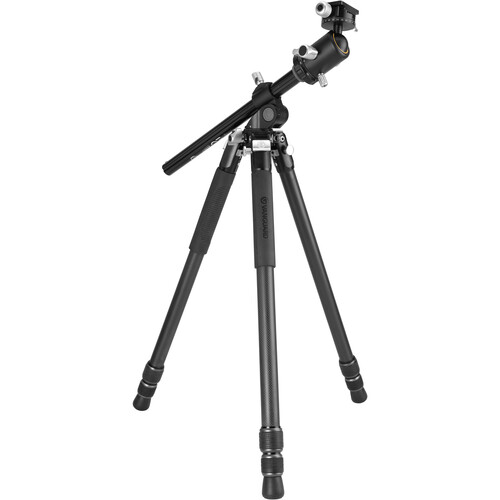
In addition to having the right lens for your Sony FE-mount camera, having a rock-solid tripod is of the utmost importance. Sure, you can spend less money on a cheap tripod, but cheap tripods don't have the quality, durability, or engineering of tried-and-true tripod brands.
One of my go-to tripod brands is Vanguard. I've owned and tested dozens of Vanguard tripods over the years, and time and again, I have been impressed with the specs and features Vanguard includes. One of their latest models, the VEO 3+ 303CBS, is a carbon fiber tripod that weighs about 5 pounds, 12 ounces, and collapses down to 31 inches. It can accommodate up to 55 pounds of gear and extends from a height of just under 8.5 inches to 70 inches so you can perfectly frame your shots.
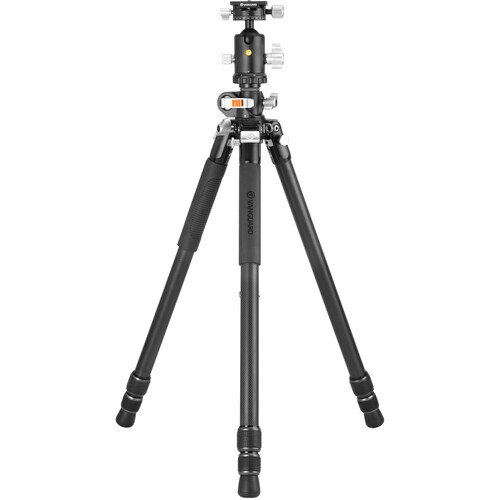
On top of that, the VEO 3+ 303CBS has three leg spread angles and removable spiked feet to help you find the most stable position for the tripod. The simple yet durable twist leg locks make quick work out of setup and takedown, and with the multi-angle center column - which moves 360 degrees in any direction and allows for lateral positioning - the flexibility of this tripod extends even further.
Having the right lens for your camera is essential, to be sure. But the needed gear to capture the best shots goes beyond your camera and lens. A high-quality tripod like the VEO 3+ 303CBS from Vanguard will give you the stable base you need to get the most out of your Sony FE setup!
Learn More:
- A Beginner’s Guide to Sony E Mount Mirrorless Cameras
- What is the Best Sony Mirrorless Camera for Video?
We Recommend
Three of the Best Cameras Under $500 to Consider for 2023
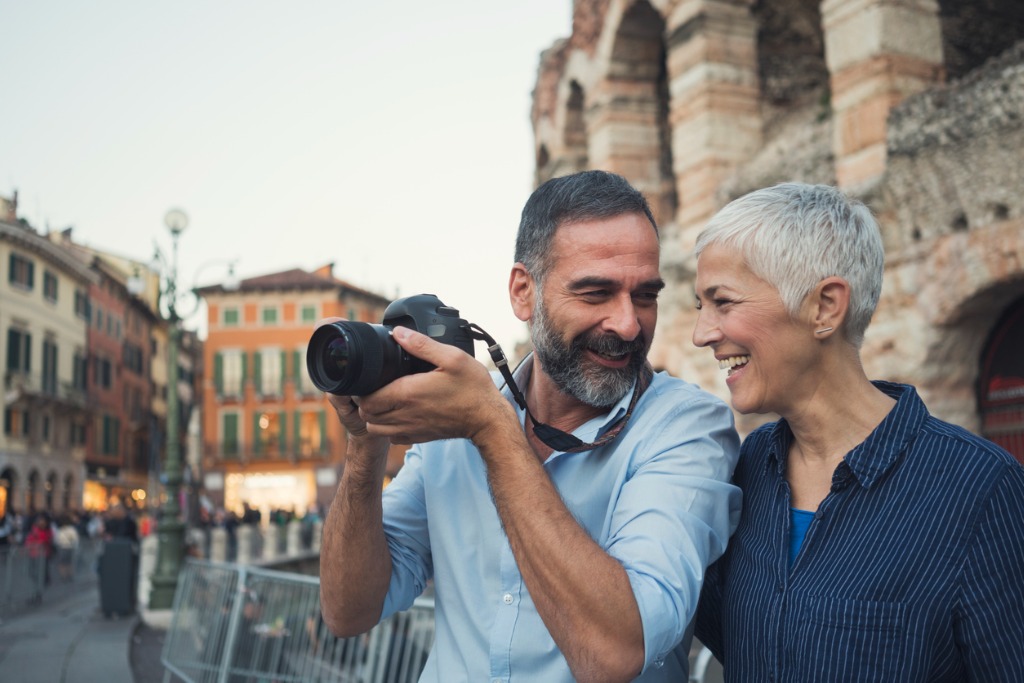
Photo by Vesnaandjic via iStock
If you are on the hunt for a cheap digital camera and don’t know where to start your search, you are in the right place! We designed this guide as a one-stop shop where you can learn everything there is to know about some of the best budget-friendly cameras on the market today.
One outstanding resource with heaps of used mirrorless cameras and used DSLR cameras for under $500 and a place I have bought and sold endless photography equipment throughout the years is MPB. They are a trustworthy and reliable online platform selling used photo and video kit at unbeatable prices.
Moreover, every one of their cameras is dutifully hand-inspected by expert product specialists and backed by warranties, allowing you to make your purchases confidently and worry-free. Another amazing feature of MPB is its online platform, where you can trade in and sell your old gear to offset the cost of new-to-you photography and videography gear you want and need.
With that said, it’s time to jump in and take a closer look at three of the best cameras under $500 to consider for 2023!
Table of Contents
- Best Cameras Under $500: Olympus OM-D E-M5 Mark II
- Best Cameras Under $500: Panasonic Lumix DMC-GX85
- Best Cameras Under $500: Sony a6000
- More Excellent Cameras Under $500
Best Cameras Under $500: Olympus OM-D E-M5 Mark II
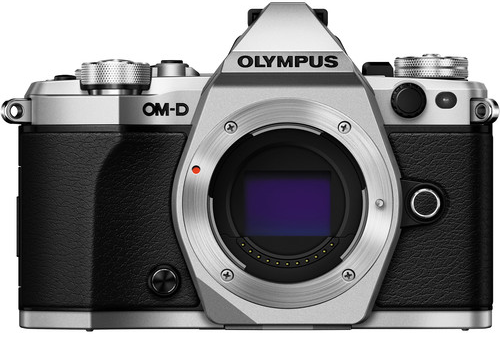
First on our list of the best cameras under $500 is the prestigious Olympus OM-D E-M5 Mark II. It originally debuted in 2015, but despite its old age, it remains an extremely capable camera thanks to its 16.1-megapixel Four Thirds sensor and fast TruePic VII image processing engine. The pair works together to deliver fantastic image quality in both still photos and videos.
One area where the OM-D E-M5 Mark II shines brightest is low-light shooting. The new TruePic VII image processor significantly improves low-light performance compared to the original OM-D E-M5 and boosts the camera's dynamic range. The wide dynamic range allows you to better edit your pictures in post-production.
Another advanced feature is the built-in 5-Axis image stabilization. It further enhances low-light image quality and helps reduce camera shake during handheld video recording. The last thing I love about this camera is the 40MP high-resolution mode. It uses AI technology to combine multiple exposures into one high-res photo and is great for nature and landscape photography.
If you have a slightly higher budget, check out its successor, the Olympus OM-D E-M5 Mark III. Now, here’s an in-depth look at the key features and specs of one of the best cameras under $500:
- Camera Type: Mirrorless
- Sensor: 16.1MP Four Thirds CMOS sensor
- ISO: 200 - 25,600 (expandable to 100 - 25,600)
- Lens Mount: Micro Four Thirds
- Speed: 10.0 fps
- Autofocus: 81 focus points
- Video: 1080p/60p, 1080p/30p, & 1080p/24p
- Size/Weight: 124 x 85 x 45 mm / 469 grams
- Battery Life: 310 shots
- Stabilization: Yes
- Touchscreen: Yes
Check out the video above by Peter Forsgård to learn more about why the Olympus OM-D E-M5 Mark II is still worth buying in 2023.
Learn More:
Best Cameras Under $500: Panasonic Lumix DMC-GX85
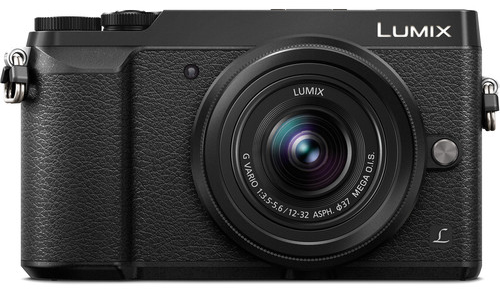
Next up is the Panasonic Lumix DMC-GX85 (or DMC-GX80 as it’s known in Europe). It was released in 2016 and is an intermediate-level mirrorless camera with a 16.0-megapixel Four Thirds sensor. It’s a fantastic all-around camera, perfect for photography and videography alike.
The standout feature of this camera is its 4K video capabilities. It records stunning UHD 4K footage at frame rates of 30p and 24p. Additionally, the camera’s powerful built-in image stabilization technology yields excellent results and all but eliminates unwanted camera shake. For even better results, use a Micro Four Thirds lens with optical image stabilization like the Panasonic Lumix G Vario HD 14-140mm f/4-5.8 Mega O.I.S.
Some standout still photography features include three 4K photo modes, superb ergonomics/handling, and responsive Depth-From-Defocus autofocus. The AF technology works well in both photo and video modes and has solid subject tracking. This makes the DMC-GX85 a good choice for portrait and street photographers.
If you are willing to spend a little more, check out the upgraded Panasonic Lumix DC-GX9. Now, here’s an in-depth look at the key features and specs of one of the best cameras under $500:
- Camera Type: Mirrorless
- Sensor: 16.0MP Four Thirds CMOS sensor
- ISO: 200 - 25,600 (expandable to 100 - 25,600)
- Lens Mount: Micro Four Thirds
- Speed: 8.0 fps
- Autofocus: 49 focus points
- Video: 4K/30p & 1080p/60p
- Size/Weight: 122 x 71 x 44 mm / 426 grams
- Battery Life: 290 shots
- Stabilization: Yes
- Touchscreen: Yes
Check out the video above by MicroFourLife to learn more about what makes the Panasonic Lumix DMC-GX85 great in 2023.
Best Cameras Under $500: Sony a6000
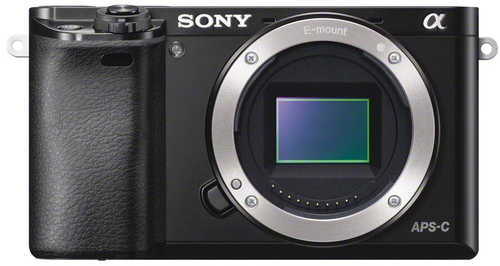
One more of the best cameras under $500 is the insanely popular Sony Alpha a6000. It launched in 2014 and is the longest-running and most-sold mirrorless camera of all time. For children and those of you brand-new to photography, there is no better camera on the market thanks to its user-friendly interface and lightweight, compact design.
The camera’s hybrid phase-detection autofocus is incredibly fast and means capturing crystal-clear images is a piece of cake, even when shooting moving subjects. Moreover, this camera offers burst shooting at speeds of up to 11 frames per second. This makes it an ideal camera for action, adventure, sports, and wildlife photography.
Lastly, the a6000 also excels as a video camera. While it can’t shoot 4K footage, the video quality of its 1080p Full HD clips is impressive. Other useful video features include the tilting touchscreen LCD, zebra markers, and a built-in stereo microphone.
If you can expand your budget slightly, check out its replacement, the Sony Alpha a6100. Now, here’s an in-depth look at the key features and specs of one of the best cameras under $500:
- Camera Type: Mirrorless
- Sensor: 24.3MP APS-C CMOS sensor
- ISO: 100 - 25,600 (expandable to 100 - 51,200)
- Lens Mount: Sony E Mount
- Speed: 11.0 fps
- Autofocus: 179 focus points
- Video: 1080p/60p, 1080p/30p, & 1080p/24p
- Size/Weight: 120 x 67 x 45 mm / 344 grams
- Battery Life: 360 shots
- Stabilization: No
- Touchscreen: No
Check out the video above by Arron Prescott to learn more about why the Sony a6000 is still a fantastic camera to purchase in 2023.
More Excellent Cameras Under $500
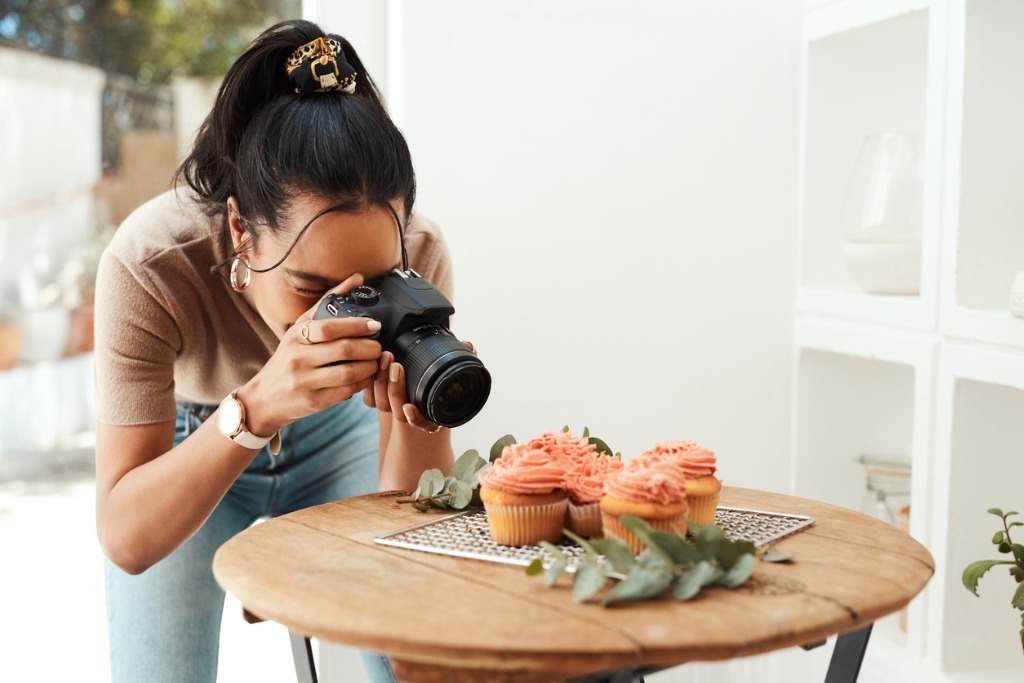
Photo by PeopleImages via iStock
While those are undoubtedly three of the best cameras under $500 available today, there are many other great options out there if you know where to look. MPB, for example, has tons of cheap used cameras in stock now! And with that in mind, here are a few more of my favorites:
Learn More:
We Recommend
Three Sony Cinema Camera Options for Any Budget
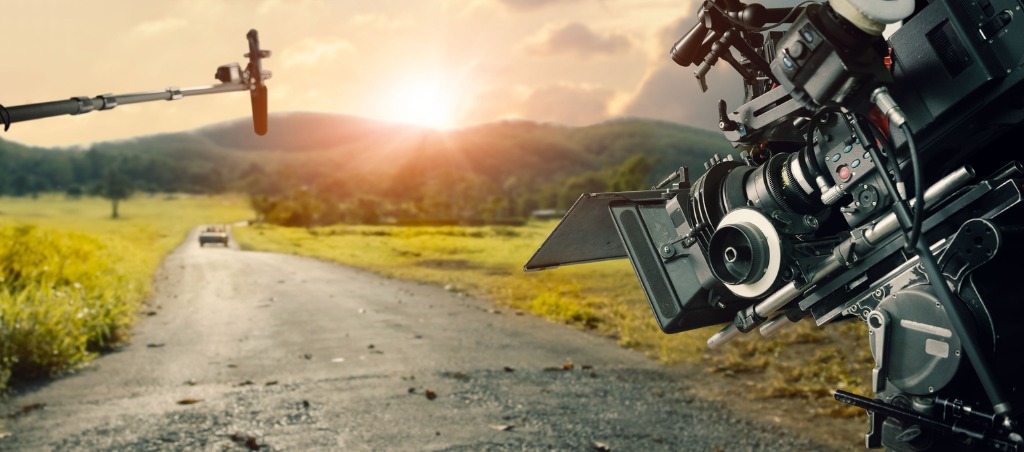
Photo by ipopba via iStock
Sony has long been one of the signature camera manufacturers in the world, and their lineup of high-end cinema cameras is absolutely amazing. With that said, if you like to shoot video content and are looking for a new camera, you’ve come to the right place!
In this article, we share three Sony cinema camera options for any budget. So, whether you are a beginner saving up for your first proper video camera, or a professional looking to upgrade your current one, this article has something for you. Moreover, thanks to innovative online platforms like MPB, buying a used Sony cinema camera has never been cheaper and easier.
MPB is a trustworthy and reliable online platform selling used photo and video kit at unbeatable prices. All their cameras are carefully hand-inspected by knowledgeable product specialists and backed by a six-month warranty, allowing you to make your purchases confidently and worry-free.
We have bought, sold, and traded in countless photography gear throughout the years using MPB's one-of-a-kind online marketplace and have always been blown away by the results. That’s why we are stoked to recommend them to you here today.
Ok, what are we waiting for? Let’s dive in and learn which Sony cinema camera will help take your videography or film career to the next level!
Table of Contents
- The Best Sony Cinema Camera for Around $2,000
- The Best Sony Cinema Camera Between $3,000 - $4,000
- The Best Sony Cinema Camera Over $4,500
- Final Thoughts on Used Sony Cinema Cameras
The Best Sony Cinema Camera for Around $2,000
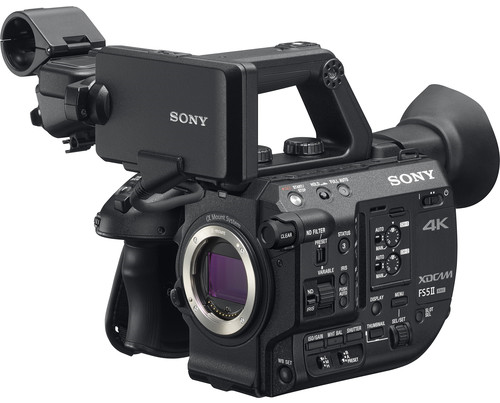
If you are on a budget, the top Sony cinema camera is the Sony PXW-FS5 II. It debuted in 2018 and immediately became one of the most popular compact camcorders on the market. It can record 4K/30p and 1080p/120p internally and 4K/120 and 1080p/240p externally.
Our favorite spec of the PXW-FS5 II is the upgraded color algorithm. It uses the same advanced color science as the flagship Sony Venice, making colors look softer and more natural (especially skin tones). Another cool feature is the “Instant HDR” mode. It all but eliminates the need to color-correct footage and is ideal for live streaming.
Other highlights of this camera include an easy-to-use mechanical ND filter wheel, a digital zoom, and two SD card slots. The zoom is particularly interesting because it can enlarge 1080p footage by up to 200% and 4K footage by up to 150%, even when using fixed prime lenses.
Here’s an in-depth look at the key features and specs of this amazing Sony 4K cinema camera:
- Camera Type: Cinema Camera
- Sensor: Super35 CMOS sensor
- ISO: 640 - 25,600
- Lens Mount: Sony E Mount
- Video: 4K/60p & 1080p/120p
- Size/Weight: 111.3 x 128.7 x 172.4 mm / 830 grams
- Autofocus: Yes
- Microphone/Headphone port: Yes/yes
- Stabilization: No (stabilized lenses are available)
- Touchscreen: Yes
The Best Sony Cinema Camera Between $3,000 - $4,000
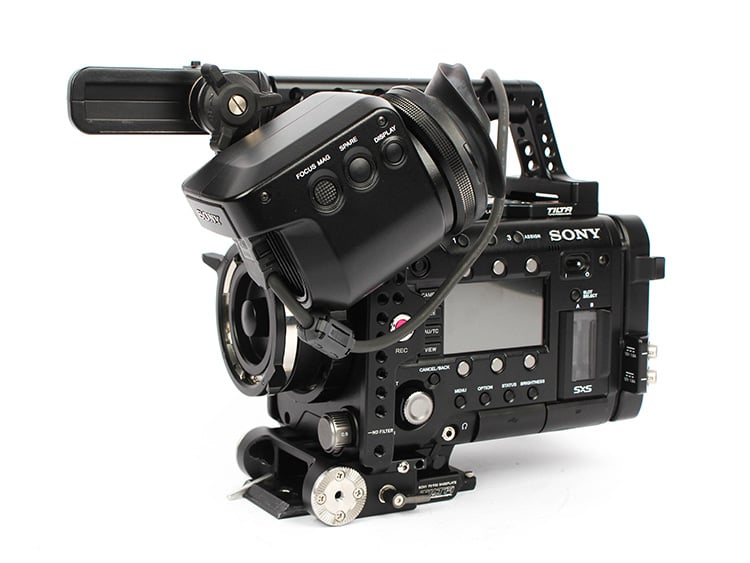
For people who are willing to expand their budget a bit, an excellent Sony cinema camera is the Sony PMW-F5 Kit. It was released in 2012 and was recently discontinued by Sony in 2021. However, don’t let that scare you away. It’s an incredible cinema camera that still has tons of value in 2023, and its price has never been lower!
At its core rests a powerful 8.9-megapixel Super35 image sensor capable of recording internal 2K video and external 4K video. One important thing to note is that you must have the AXS-R5 recorder (sold separately) to record 4K footage. Also, the PMW-F5 boasts Sony’s XAVC codec and professional video profiles like S-Log.
The camera’s 14 stops of dynamic range, long-lasting battery, and the PL Mount lens adapter are a few more impressive features. The wide dynamic range is ideal for editing, the battery life gives you more freedom in the field, and the lens adapter lets you use cinema lenses from companies like Canon, Leica, Zeiss, and more.
Here’s an in-depth look at the key features and specs of this amazing Sony 4K cinema camera:
- Camera Type: Cinema Camera
- Sensor: 8.9MP Super35 CMOS sensor
- Native ISO: 2000
- Lens Mount: Sony FZ Mount
- Video: 2K/60p & 1080p/60p
- Size/Weight: 151 x 189.7 x 210 mm / 2200 grams
- Autofocus: Yes
- Microphone/Headphone port: Yes/yes
- Stabilization: No (stabilized lenses are available)
- Touchscreen: No
Learn More:
- Which Canon Video Camera is Best for Your Needs and Budget
- Which Canon EOS Cinema Camera is Right for You?
The Best Sony Cinema Camera Over $4,500
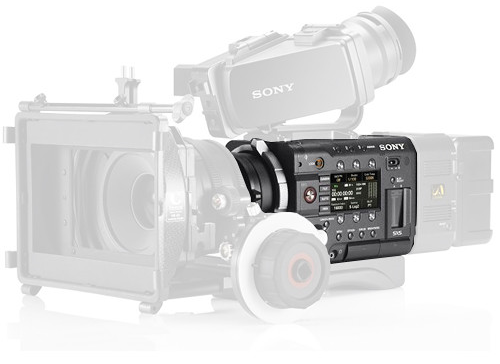
Last but not least, if you are a professional, one of the best Sony cinema cameras is the Sony PMW-F55 CineAlta 4K Kit. It is one of the few cameras on the short list of Netflix-approved devices and is a go-to choice of many television networks, Hollywood studios, and streaming platforms.
It shares the same high-resolution sensor and many other video specs as the Sony PMW-F5, but one big difference is that the F55 records 4K internally. Another key difference is the inclusion of a global shutter which eliminates rolling shutter distortion and motion skew.
Additionally, we love the modular design. It allows you to customize the camera to best suit your needs and will help improve your workflow speeds when operating the camera. The list of available modular attachments includes external recorders, monitors, digital viewfinders, support rings, and more.
Here’s an in-depth look at the key features and specs of this amazing Sony 4K cinema camera:
- Camera Type: Cinema Camera
- Sensor: 8.9MP Super35 CMOS sensor
- Native ISO: 1250
- Lens Mount: Sony FZ Mount
- Video: 4K/60p, 2K/60p & 1080p/60p
- Size/Weight: 130 x 125 x 191 mm / 2200 grams
- Autofocus: Yes
- Microphone/Headphone port: Yes/yes
- Stabilization: No (stabilized lenses are available)
- Touchscreen: No
Final Thoughts on Used Sony Cinema Cameras
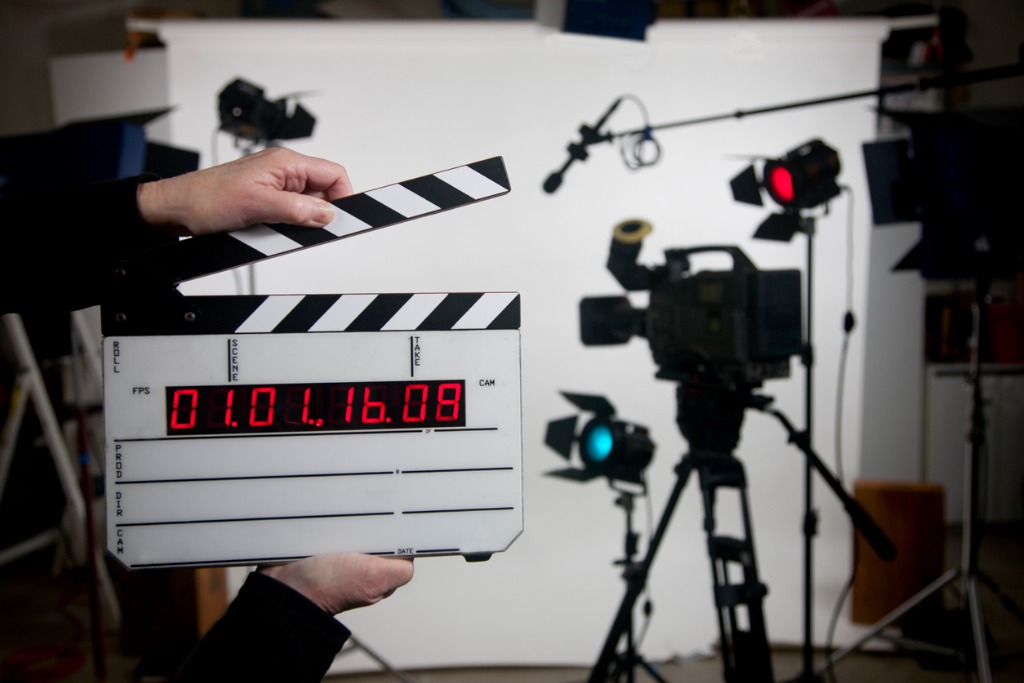
Photo by dpmike via iStock
We hope you have found this Sony cinema camera review helpful during your search and that you now feel one step closer to pulling the trigger on your next camera. However, if you still feel the need to research more options, check out the list of other great digital cinema cameras below.
- Blackmagic Design Pocket Cinema Camera 4K
- Blackmagic Design URSA Mini Pro 4.6K - Canon EF Fit
- DJI Ronin 4D-6K
- Panasonic Varicam Super 35
- RED Weapon 8K Helium Kit
- Canon Cinema EOS C500 II
Learn More:
We Recommend
Three Sony FE Lenses You Need in Your Bag
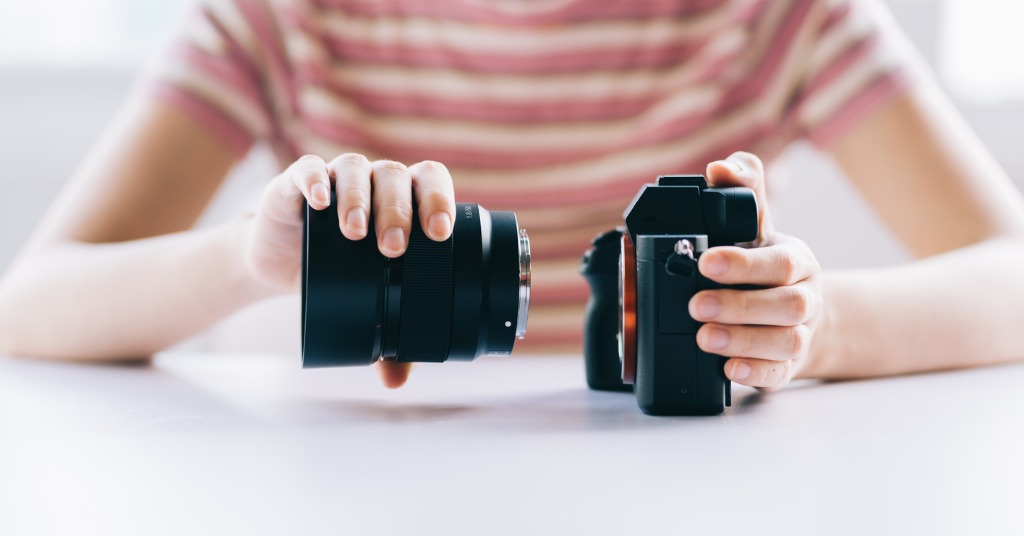
Photo by SunnyVMD via iStock
If you are a photographer or videographer who shoots with Sony and wants to get the most out of your camera, this article is for you! One of the easiest ways to improve the quality of your content is by using the right lens. But with so many unique Sony FE lenses, how on earth are you supposed to know which ones to buy?
That’s precisely why we created this lens guide, to teach you about three of the best Sony FE Mount lenses. We share each lens's key features and specs and which type of photography they are best for. Moreover, at the end of the article, you will find a list of some bonus Sony FE lenses that we love.
One excellent resource with tons of used Sony lenses in stock and a place I have bought and sold countless camera gear is MPB. They are a trustworthy and reliable online platform selling used photo and video kit at unbeatable prices.
Additionally, all of their photography gear is carefully hand-inspected by experienced product specialists and backed by warranties, allowing you to make your purchases confidently and worry-free.
On top of that, you can even trade-in or sell old gear to MPB and use the proceeds towards new-to-you-gear. Overall, it’s an easy-to-use online platform perfect for getting outfitted with the equipment you want and need! Now, let’s jump in and discover which Sony FE lenses every photographer should own!
Table of Contents
- The Best Sony FE Lenses: Standard Zoom Lens
- The Best Sony FE Lenses: Telephoto Lens
- The Best Sony FE Lenses: Prime Lens
- More Amazing Sony FE Lenses
The Best Sony FE Lenses: Standard Zoom Lens

If you could only own one lens for your Sony mirrorless camera, the Sony FE 24-70mm f/2.8 GM would unquestionably be my top choice. Its build quality, durability, and versatility are just some of the things that make it one of the best Sony FE zoom lenses currently on the market.
As part of Sony’s premium G Master series, the 24-70mm lens is constructed from high-quality glass and metal. The luxury internal glass and 18 lens elements help make photos and videos stunningly sharp. Alternatively, the lens's metal body is fully weather-sealed and protects the lens from moisture, dust, and whatever else your surroundings may throw at it.
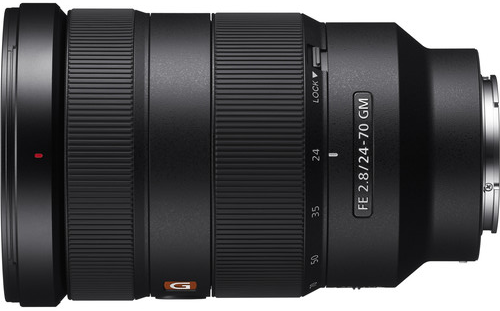
Another area where it excels is focusing. It has an easy-to-use auto/manual focus switch on the lens, and the focus ring moves super smoothly, which is excellent for precision manual focusing. Also, the lens’s focus hold button is ideal for portrait and animal photography.
The versatile focal range is, without a doubt, what makes this lens stand above the rest, though. On the wide end, it’s great for landscape and real estate photography, whereas when zoomed in, it’s perfect for sports, wildlife, and portraits. Lastly, since you can shoot with it in many different situations, it’s a go-to lens for travel photographers.
Here’s an in-depth look at the key features and specs of one of the best Sony FE lenses available today:
- Lens Type: Standard Zoom
- Camera System: Full-Frame (can be used on Sony APS-C cameras)
- Lens Mount: Sony FE Lens Mount
- Focal Length: 24-70 mm
- Maximum Aperture: f/2.8
- Minimum Focusing Distance: 38 cm
- Filter Size: 82 mm
- Focusing system: Autofocus & Manual Focus
- Maximum Magnification: 0.24x
- Size/Weight: 87.6 x 136 mm / 886 grams
- Optical Image Stabilization: No
- Weather-Sealed: Yes
The Best Sony FE Lenses: Telephoto Lens

To increase your zoom range further, the best lens to pair with the 24-70mm is the Sony FE 70-200mm f/2.8 GM OSS. It may not be the longest telephoto lens, but its image quality is unmatched. Also, keep in mind that if you pair it with an APS-C Sony mirrorless camera like the Sony Alpha a6600 or Sony Alpha a6000, it has an equivalent focal range of 105-300mm.
The lens’s constant maximum aperture of f/2.8 is fantastic for low-light situations and creates beautiful bokeh effects, especially when zoomed in. The bokeh effect blurs the background or foreground of your images and is an excellent creative tool for shooting wildlife, portraits, and video content.
In addition, for a telephoto lens, it’s one of the lightest and most compact Sony FE Lenses. Its size and portability make it a terrific second lens to carry in your camera bag when traveling, hiking, or walking around the city.
Here’s an in-depth look at the key features and specs of one of the best Sony FE lenses available today:
- Lens Type: Telephoto
- Camera System: Full-Frame (can be used on Sony APS-C cameras)
- Lens Mount: Sony FE Lens Mount
- Focal Length: 70-200 mm
- Maximum Aperture: f/2.8
- Minimum Focusing Distance: 96 cm
- Filter Size: 77 mm
- Focusing system: Autofocus & Manual Focus
- Maximum Magnification: 0.25x
- Size/Weight: 88 x 200 mm / 1480 grams
- Optical Image Stabilization: Yes
- Weather-Sealed: Yes
Learn More:
The Best Sony FE Lenses: Prime Lens
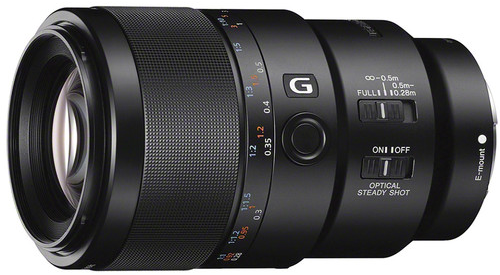
And finally, we have the Sony FE 90mm f/2.8 Macro G OSS. It’s a versatile macro lens that just so happens to be my favorite of all the Sony FE prime lenses. Outside of macro photography, it’s also one of the most popular video lenses in Sony’s lineup of full-frame FE lenses. YouTubers, vloggers, and video content creators, in particular, can’t seem to keep their hands off it.
As a true macro lens, it provides users with a life-size 1.0x magnification. When you throw in its short minimum focusing distance and 90mm focal length, it’s able to generate some genuinely incredible close-up shots. A few of my favorite subjects to shoot with this lens are insects, flowers, food, and money.
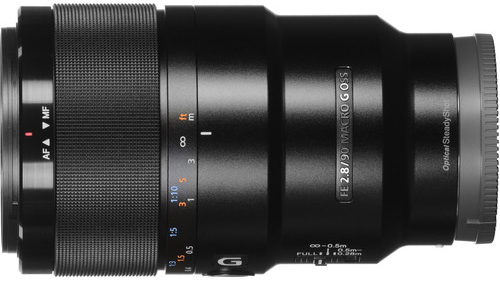
While it’s always a good idea to use a tripod when shooting macro photography, this lens's Optical Image Stabilization (OSS) significantly helps if you need to shoot handheld. When taking photos, the OSS helps eliminate motion blur, and during video recording, it reduces unwanted camera shake.
Here’s an in-depth look at the key features and specs of one of the best Sony FE lenses available today:
- Lens Type: Prime
- Camera System: Full-Frame (can be used on Sony APS-C cameras)
- Lens Mount: Sony FE Lens Mount
- Focal Length: 90 mm
- Maximum Aperture: f/2.8
- Minimum Focusing Distance: 28 cm
- Filter Size: 62 mm
- Focusing system: Autofocus & Manual Focus
- Maximum Magnification: 1.0x
- Size/Weight: 79 x 130.5 mm / 602 grams
- Optical Image Stabilization: Yes
- Weather-Sealed: Yes
More Amazing Sony FE Lenses
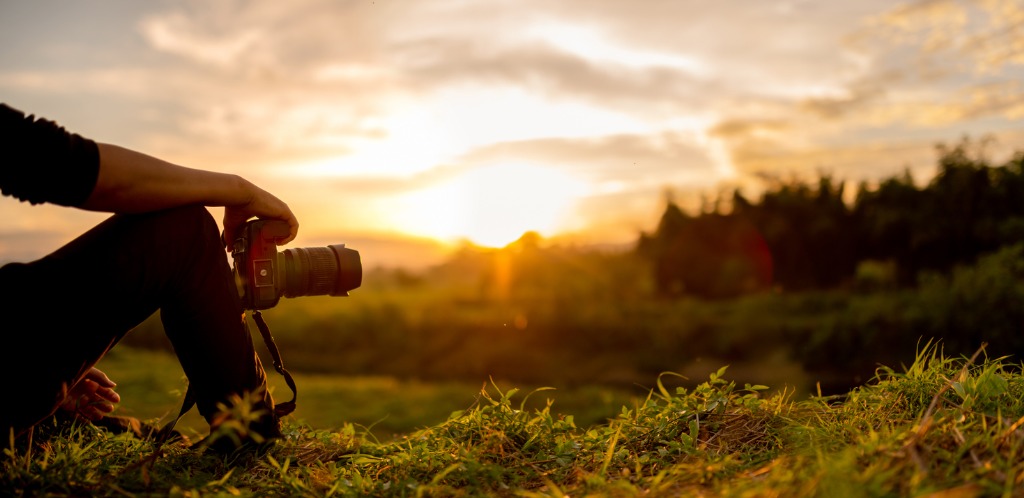
Photo by Pakorn_Khantiyaporn via iStock
For photographers and videographers alike, everyone should own those three Sony FE lenses. However, once you have those three in your kit, here are some more killer Sony FE lenses you should consider purchasing that are available now at MPB:
- Sony FE 28-70mm f/3.5-5.6 OSS
- Sony FE 85mm f/1.8
- Sony FE 16-35mm f/4 ZA OSS Vario-Tessar T*
- Sony FE 55mm F/1.8 ZA Zeiss Sonnar T*
- Sony FE 35mm f/1.8
- Sony FE 200-600mm f/5.6-6.3 G OSS
Learn More:
We Recommend
Top 10 Gifts for Photographers Under $5,000 - 2019 Edition
 photo by Hailshadow via iStock
photo by Hailshadow via iStock
There are TONS of possibilities for gift-giving this holiday season with a budget of $5,000.
In fact, the variety of gifts you could give the photographers on your list is quite great...
From a new computer to a new camera body, photography trips to a collection of large-format prints, this list has something for every photography enthusiast!
Gifts for Photographers Under $5,000: CanvasHQ Prints

If you’re like me, sometimes finding the perfect gift for certain loved ones is a long, drawn-out process that causes tons of stress, and often you still don’t get something that totally blows them away.
I think a lot of photographers fall into this category. We have specific likes, and many of us already have most of what we want or need gear-wise, and what we don’t have is usually too expensive to put on a Christmas wish-list anyway.
But for all those hard-to-shop-for photographers on your 2019 holiday shopping list, I have the perfect solution - a canvas print.
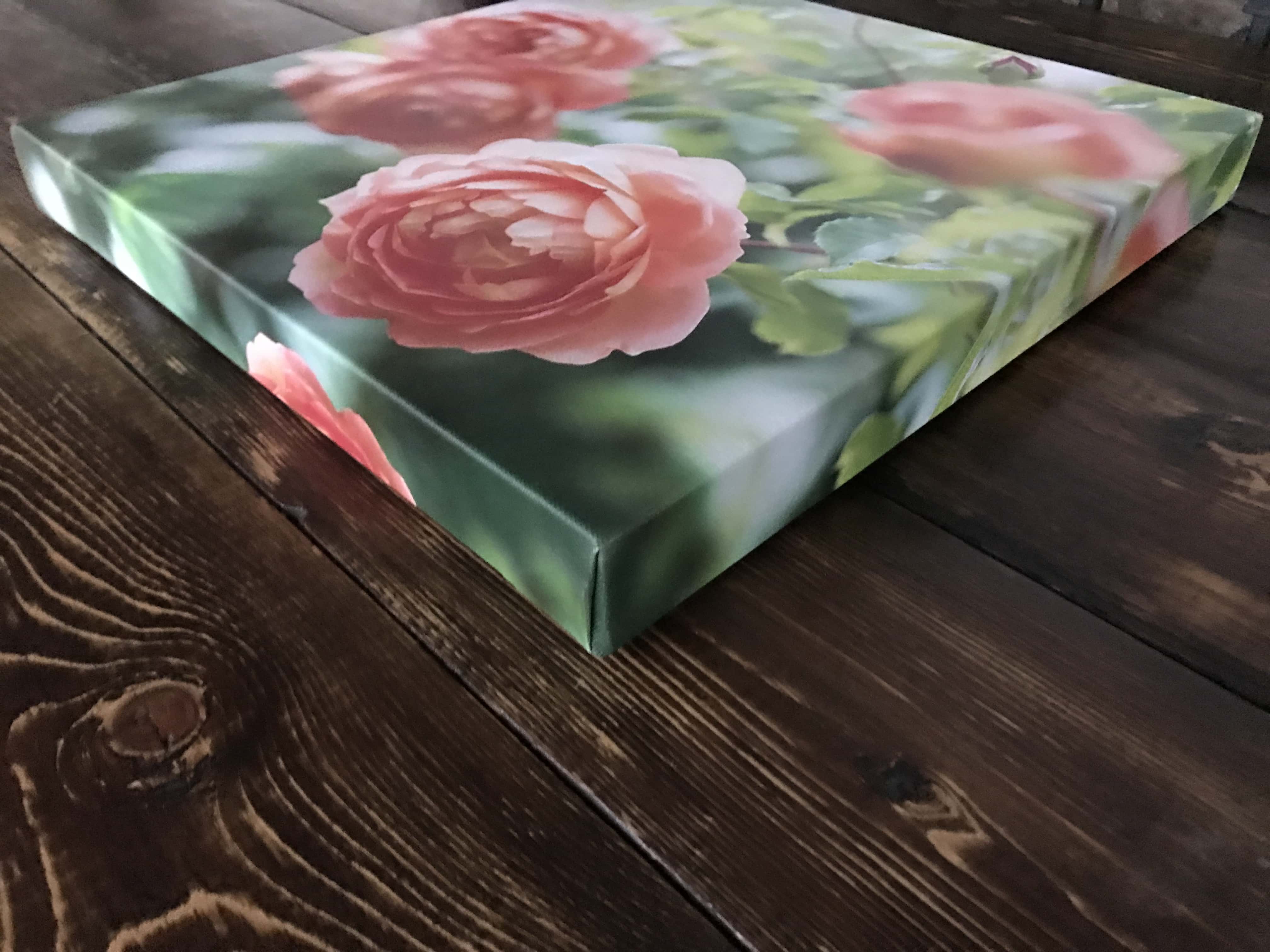
Think about it…
A canvas print is a gift that keeps on giving.
Not only can you immortalize one of your favorite images from your favorite photographer, but you also give them a means to showcase their work in a format that’s drop-dead gorgeous.
I have tons of canvases in my home, the vast majority of which are from CanvasHQ.
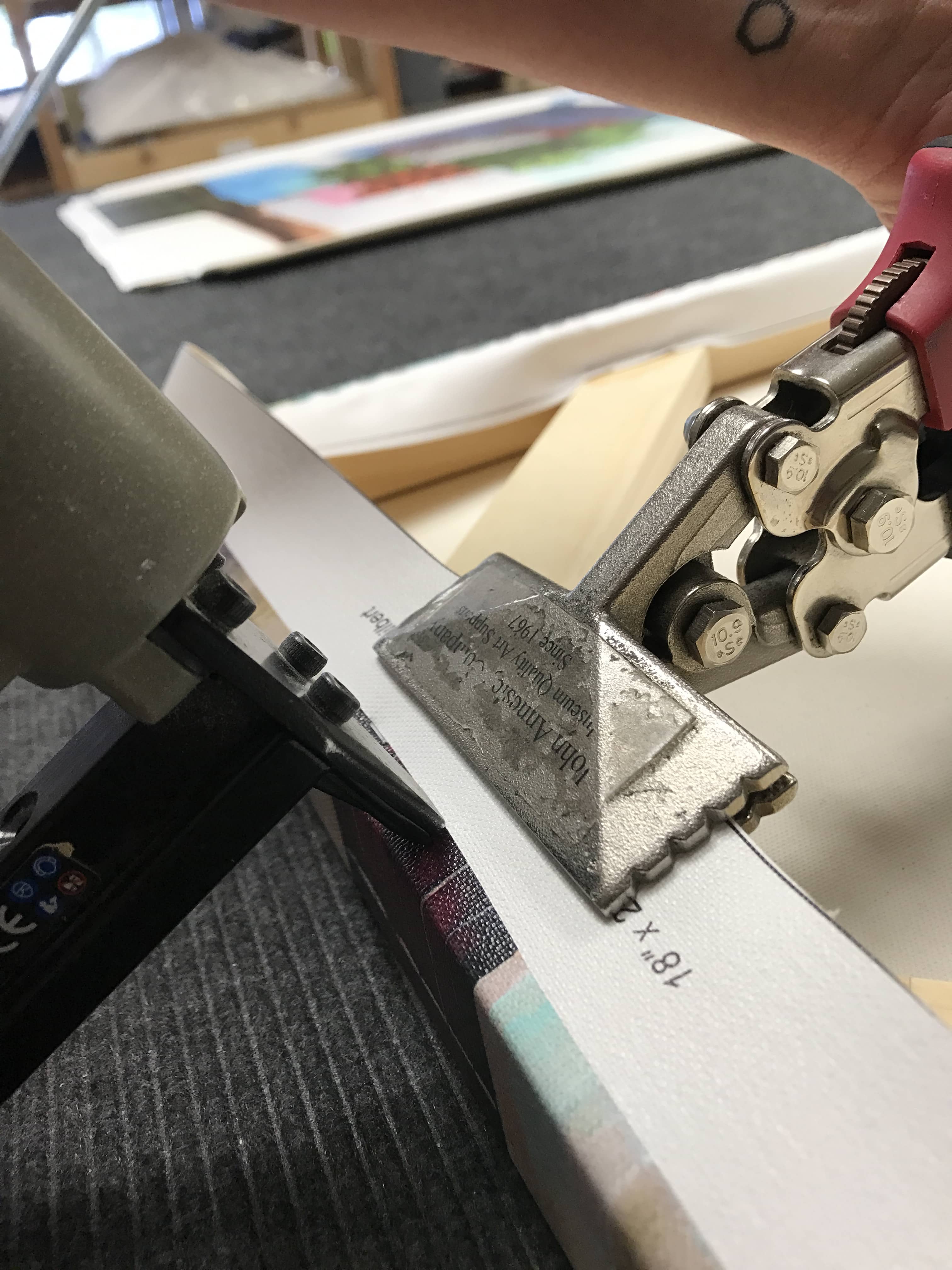
Now, I know what you’re thinking - canvas is old school.
Sure, maybe it is, but I’m telling you that these canvas prints from CanvasHQ are mind-bogglingly beautiful. In fact, they go head-to-head with any metal or acrylic print I have in my home.
The attention to detail is just amazing, and the materials they use are top-of-the-line. We’re talking archival-grade canvas, commercial-grade inks that are water and UV resistant, and kiln-dried pine frames to keep everything straight and true.
I love the personality that the canvas texture gives my images. That’s true whether it’s a portrait of my son or a landscape photo.

I’d be remiss if I didn’t mention the customer service you get with CanvasHQ.
These guys are committed to getting it right, so if something doesn’t go as planned, you won’t be hung out to dry.
If you have questions, they’ll answer them. If you have a problem, they’ll fix it. If you need assistance with uploading your photo or even picking the best finishes for your canvas, they’ve got your back.
In the video above, I explain why I highly recommend a CanvasHQ canvas print as the ideal gift for the photographer on your holiday shopping list.
Start shopping for your favorite photographer today on CanvasHQ!
Gifts for Photographers Under $5,000: Colors of Costa Rica Photo Tour With ColorTexturePhotoTours

From spectacular sunsets on the coast to breathtaking waterfalls, incredible diversity of wildlife (including dozens of species of frogs) to stunning flowers, Costa Rica has no shortage of subject matter for a photographer.
And as part of ColorTexturePhotoTour's Colors of Costa Rica photo tour, the photographer on your list can explore all that and much more as part of a luxurious, all-inclusive trip!

This trip is the ideal length - six days and five nights - so it's easier to get away from work and other responsibilities to spend a relaxing time in one of the most beautiful locations on earth.
Over the course of the trip, the photographer on your list will join no more than three other participants to tour the landscapes of Costa Rica with workshop leader Scott Setterberg.
Those landscapes, which includes four national parks, will be fodder for some spectacular photography opportunities, as well as plenty of one-on-one instruction time with Scott.

In this regard, this trip isn't just about seeing gorgeous places, but it's also about developing and improving photography skills.
With stops in Tenorio Volcano National Park, La Paz Waterfall Gardens, Catarata La Fortuna, Lake Arenal, and Juan Castro Blanco National Park, the tour takes participants to varied locations, each of which offers unique beauty and challenges photographers to apply their skills to get the best shots.
Along the way, a licensed, English-speaking nature guide will offer insights into the biodiversity of Costa Rica, so tour-goers learn more about the beauty they see and photograph.

Each evening, the tour winds down and participants stay in luxurious, award-winning accommodations.
The photographer on your list can enjoy authentic Costa Rican cuisine, spa services, massages, and more.
What better way to celebrate the holidays than by giving your loved one the photography trip of a lifetime?!
Learn more about the Colors of Costa Rica Photography Tour by ColorTexturePhotoTours
Gifts for Photographers Under $5,000: A Vietnam Photography Tour With The Art of Seeing Photography Adventures

Vietnam is a breathtaking country with countless opportunities to photograph landscapes, bustling cities, and incredible cultural and historical elements.
As part of a tour with The Art of Seeing Photography Adventures, your favorite photographer will get an immersive experience in which they will spend two weeks exploring popular as well as off-the-beaten-path locations throughout the country.
Among the highlights is an exploration of rice terraces that have been built into the steep topography of Vietnam's mountains. The trip, which is September 13-26, 2020, is timed perfectly to see the terraces in prime condition, just before harvest.

Another highlight of the trip is an overnight cruise through Halong Bay, a world-famous location that is also a UNESCO World Heritage site.
By traveling via boat through the bay, you get a unique perspective on the area and have a chance to get away from the crowds that come to the Bay and explore lesser-known areas.
Another aspect of this trip that makes it such a spectacular photography outing is the exploration of the northern part of the country, where you can interact with ethnic minority groups, including the Black Tay, Flower Hmong, and Red Dao.

This interesting subcultures are welcoming to guests, willing to pose for photographs, and even welcome strangers into their homes for rural homestays.
Of course, the trip begins and ends in Hanoi, so the hustle and bustle of the big city is also on the agenda.
With the adventure limited to 10 people, the photographer on your list will get to enjoy small group experiences in the utmost comfort.
Priced at $4,800 for single occupancy, this is an ideal gift idea when you have a $5,000 budget for the photographer in your life!
Gifts for Photographers Under $5,000: Pre-Owned Canon EOS R and Canon RF 24-105mm f/4 L IS USM

If the photographer on your list needs an upgrade in the camera department, you might consider giving the gift of a Canon EOS R this year.
The EOS R was released in October of 2018, so there's been time for prices to fall and for a good selection of used cameras to develop.
With a like-new-condition EOS R, you can save yourself quite a bit of money while still giving your loved one a capable, reliable, and virtually new camera!

The EOS R features a 30.3-megapixel full frame CMOS sensor paired with a DIGIC 8 image processor.
The result of this is superb performance, excellent image quality, and a bevy of secondary features that make it a fantastic camera for just about any photographer.
With a native ISO range up to 40,000, this camera is a good low-light performer, and with 8 fps continuous shooting, it can tackle subjects like wildlife and sports photography in which rapid movement needs to be captured.

Additionally, the EOS R has a top-of-the-line autofocus system call Dual Pixel AF, which allows users to select from 5,655 AF points to quickly and accurately acquire focus.
Add to that 4K UHD video recording at 30p, and you have the makings of a fantastic holiday gift!

Better still, since a like-new EOS R is barely more than $1,900, you can also give the photographer on your list a lens to go with it.
The Canon RF 24-105mm f/4 L USM is a great choice for an all-around lens that accommodates wide-angle, standard, and telephoto shooting. And since pre-owned versions in like-new are under $850, you're well under the $5,000 budget threshold!
Learn more about the Canon EOS R and the Canon RF 24-105mm f/4 L IS USM
Gifts for Photographers Under $5,000: Pre-Owned Nikon Z6 and Nikon Nikkor Z 50mm f/1.8 S
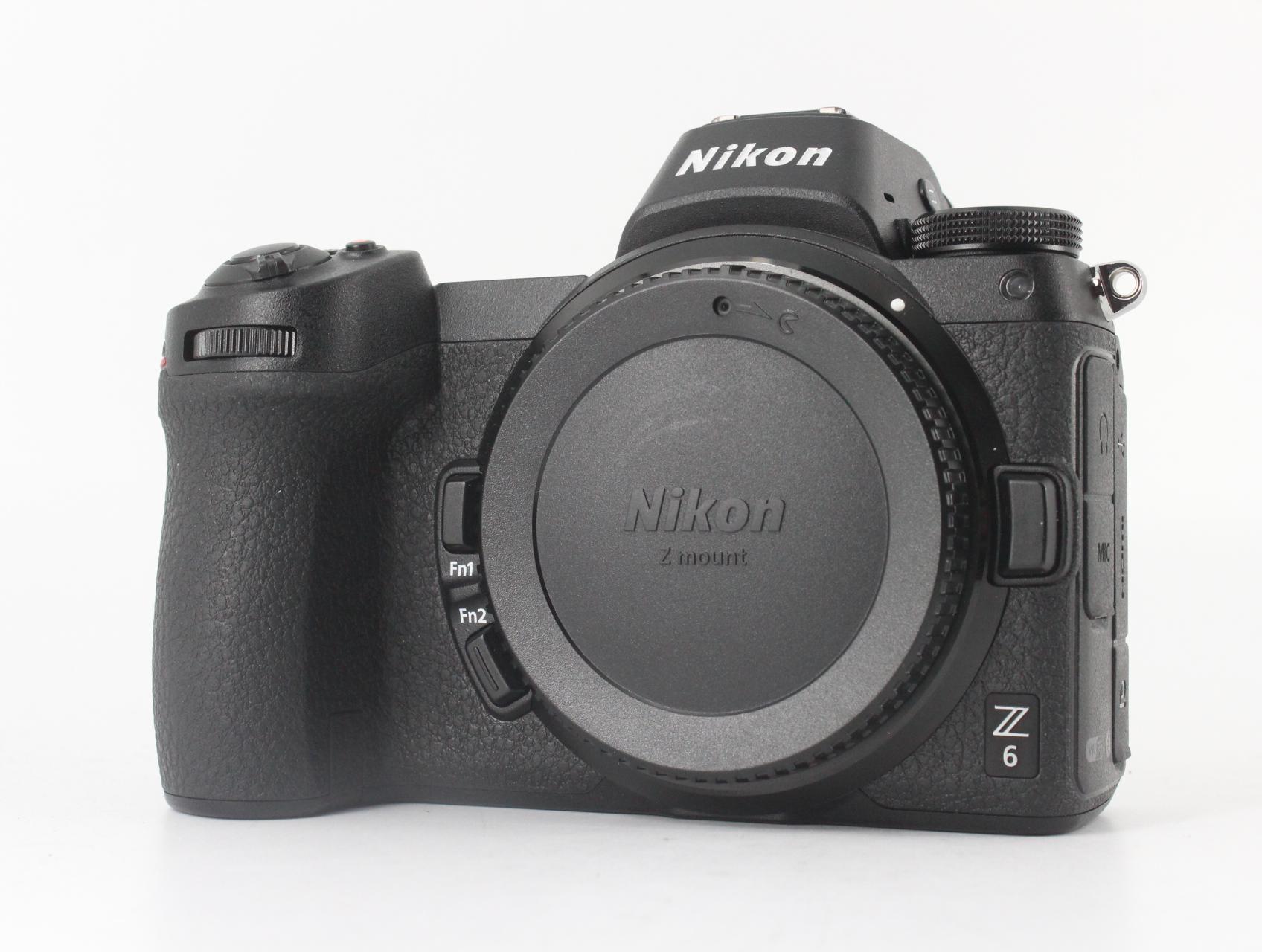
If you're shopping for a Nikon enthusiast, why not give them the ultimate gift in the form of a pre-owned Nikon Z6 in like-new condition with a pre-owned Z-series lens to match?!
Like the EOS R described earlier, the Nikon Z6 is a feature-rich camera that any photographer would love to have in their camera bag.

Armed with a 24.5-megapixel full frame back-illuminated sensor, this camera offers excellent resolution, and with an EXPEED 6 image processor, it operates lightning fast, too.
The Z6 has built-in 5-axis image stabilization that makes hand-held shooting an easier task, and its 273-point autofocus system helps shooters acquire subjects more quickly and track them with greater ease for improved photos.
This camera has a native ISO range of 100-51200, so low-light shooting isn't an issue, and a whopping 12 fps continuous shooting rating.

The Z6 has developed a solid reputation as a great video camera as well.
It has full frame 4K UHD video recording capabilities at up to 30p, and with a 3.2-inch tilting touchscreen LCD, videographers can get low-angle and high-angle footage more easily.
Add in a lightweight magnesium alloy body, full weather sealing, and a shutter life of 200,000 shots, and you have the makings of yet another excellent gift idea for the photographer on your list!

Since like-new Z6's are barely more than $1,500, there's plenty of room in your $5,000 budget to add a nice lens to the package.
The Nikon Nikkor Z 50mm f/1.8 S is a great choice, as it's a highly versatile focal length that can tackle portraits, landscapes and everything in between.
What's more, 50mm is an ideal focal length for video, so paired with the Z6, you can give a rock-solid video-making kit to your favorite photographer!
Learn more about the Nikon Z6 and the Nikon Nikkor Z 50mm f/1.8 S
Gifts for Photographers Under $5,000: Nevada Art Printers Lumachrome Acrylic Prints

If you're shopping for a photographer that needs to have a lot of prints made, and who prefers acrylic prints over canvas, there's no better choice than a selection of large-format acrylic prints from Nevada Art Printers.
I was never a huge fan of acrylic prints until I decided to give Nevada Art Printers a try a few months ago.
I had gone to Norway and captured a pretty good shot (shown above) and wanted a print that would really elevate the quality of the shot.
So, I ordered an acrylic print from these guys, and it is honestly one of the most beautiful prints I have ever laid hands on. Truly - they perform magic!
Now, I have to say that the photo above of this print simply does not do it justice. My home studio has tons of lights everywhere and I just couldn't find an angle to take a photo that didn't have a glare.
The big draw of these acrylic prints is the Lumachrome finish (you see people talking about it all the time on Facebook).
In a nutshell, Lumachrome prints are ultra-high resolution with incredible vibrancy and clarity. It honestly gives the photo a 3-dimensional feel. That’s because Nevada Art Printers created custom ICC profiles that use a tweaked tone curve to maximize that 3-dimensional effect.
Honestly, it’s hard to describe, and even more difficult to believe if you can’t see it with your own eyes - like I said, photos online just do not do the quality of these prints justice!
What’s more, the folks at Nevada Art Printers are extremely helpful and work hard to help you get the best possible print. Their customer service is truly A+!
This combination of super-high-quality products and top-notch service before, during, and after the sale makes an acrylic print from Nevada Art Printers an ideal gift for the photographer on your list this holiday season.
Learn more about Nevada Art Printers and their Lumachrome Acrylic Prints
Gifts for Photographers Under $5,000: Nikon Z7 with Nikon Nikkor 24-70mm f/4 S Lens

I shoot with a Nikon Z7 and I have this very lens as well. It's an ideal combination for everyday photo-taking.
What impresses me the most about this camera is its sensor - a 45.7-megapixel full frame behemoth that offers superb image quality.
The sensor is paired with a fast and accurate 493-point autofocus system that offers 90 percent coverage. Whether the photographer on your list photographs people, places, or things, this camera will be a great companion!

Other features of note include 9 fps shooting, 4K video up to 30p (up to 120 fps in HD), an ISO range of 63-25600, and built-in image stabilization.
Additionally, Nikon gave the Z& a beautifully resolute 3.69-million-dot electronic OLED viewfinder as well as a 3.2-inch LCD touchscreen display.
I really appreciate the design of the camera as well - it feelslike a Nikon with a deep grip and a familiar button layout.

On top of all that, the Z7 is fully weather sealed - I tested it out in Norway and can attest to its ability to stand up to really, really cold temperatures.
You get Wi-Fi, Bluetooth, USB battery charging, and Nikon's SnapBridge functionality as well.
And in this case, the Z7 comes with a killer lens, the Nikon Nikkor 24-70mm f/4 S.

This lens is the ideal walk-around lens, with wide-angle to short telephoto capabilities that allows photographers to capture all kinds of subject matter without the need for lens changes.
What's more, this S-series lens is small and lightweight, making it an ideal alternative to bigger, heavier f/2.8 models.
It has an aspherical extra-low dispersion element, three aspherical elements, and Nano Crystal and Super Integrated Coatings, all of which combine to reduce chromatic aberrations, distortions, ghosting, and flare.
The result is beautiful color rendering and improved contrast. In other words, it's a great camera-lens combination!
Learn more about the Nikon Z7 With Nikon Nikkor 24-70mm f/4 S Lens
Gifts for Photographers Under $5,000: Apple MacBook Pro

Any photographer would appreciate a souped-up laptop to use to edit photos, and there's few that are better for that task than the Apple MacBook Pro.
This particular model has an Intel i9 8-core processor at 2.4 GHz, a 4 TB SSD drive, 32 GB of RAM, and an AMD Radeon Pro Vega 20 graphics card.
In other words, this thing has all the hardware needed to power heavy-duty processing of photos and videos.

Sure, this computer is barely under the $5,000 mark, but considering all the goodies it possesses, it is well worth the price.
The processor comes with Turbo Boost, which can speed up to 5 GHz when needed. Additionally, there is 16MB of shared L3 cache for speeding up processing.
The 32 GB of memory is lightning-fast at 2400 MHz while the aforementioned graphics card has 4GB of HBM 2 memory.

The 15.4-inch retina display is LED backlit with IPS technology.
The result of that is a crystal-clear display with gorgeous colors and contrast.
The backlit keyboard is full-sized, and with Apple's touchbar technology and Force Touch trackpad, getting work done is an easier task.
This is simply a killer laptop, and it's within budget too!
Learn more about the Apple MacBook Pro
Gifts for Photographers Under $5,000: Sony a7R IV

The Sony a7R IV will be hot off the assembly line well in time for the holiday season, and it's a fantastic gift idea for the photographer in your life.
This camera is packed to the gills with modern features that will make any photographer smile from ear to ear.
The a7R IV has a 61-megapixel sensor that's unrivaled on the market at this point.

Along with that crazy sensor is a laundry list of jaw-dropping specs:
- a 5.76-million-dot electronic viewfinder
- 5-axis image stabilization
- 10fps burst shooting
- 15 stops of dynamic range
- A 567-point phase-detect autofocus system
- Wireless tethering
- Enhanced dust and moisture resistance.

That's not even to mention Sony's impeccable Eye AF system which tracks human and animal eyes with extreme precision.
There's also Real-Time AF for video recording, 26-megapixel resolution in APS-C crop mode, and sensor-shift multi-shot mode that creates image files that are a whopping 240-megapixels in size.
And at less than $3,500, you can give the gift of the Sony a7R IV without breaking your budget!
Learn more about the Sony a7R IV
Amazon Gift Card
![]()
Totally stumped regarding gift ideas for photographers on your list?
Why not go the easy route and get them an Amazon gift card?
Though a gift card isn't exactly the sexiest gift, when the photographer in your family sees that you dropped $5,000 into a few gift cards (there's a $2,000 limit per card), they'll love it just the same.
With an Amazon gift card, they can buy whatever they want - a new lens, a second camera body, lighting gear, a laptop - you name it!
As far as flexibility goes, there's nothing better to give a photographer than a gift card with some serious money loaded onto it!
Learn more about Amazon gift cards
We Recommend
Top 10 Last-Minute Gifts for Photographers - 2021 Edition
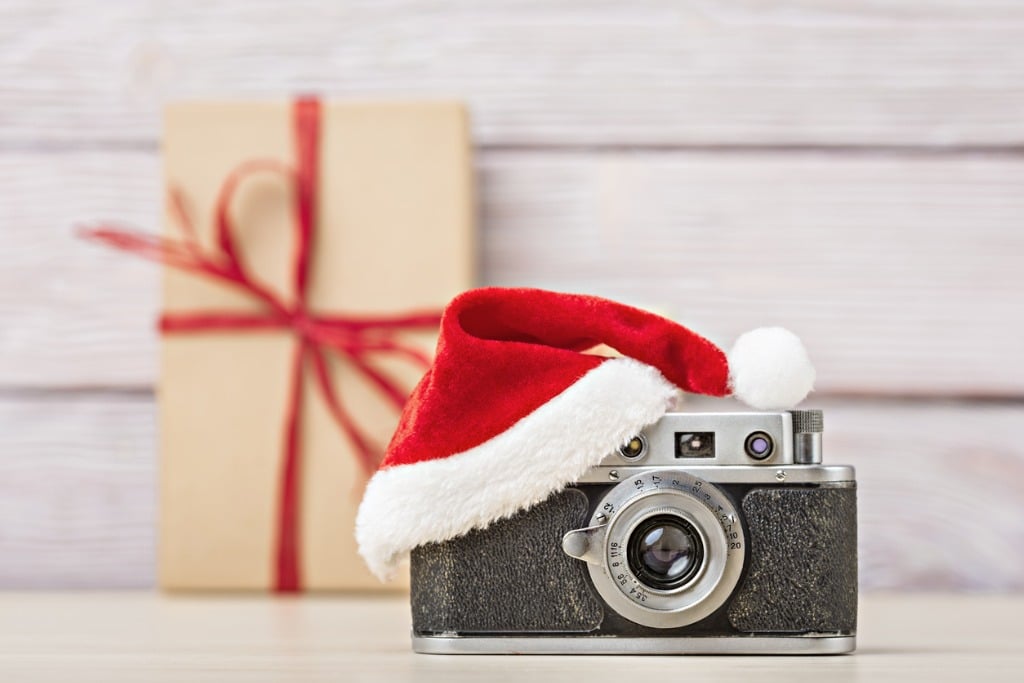
photo byVitaliy_ph via iStock
With just a few days left until Christmas, it's officially time to get your last-minute shopping done.
To help you find the perfect gift for the photographer on your list, we've put together this last-minute gift guide for photographers.
With items of all shapes, sizes, types, and prices, there's something on this list for the photographer in your life!
Best Ever Backdrops Mix and Match Backdrop
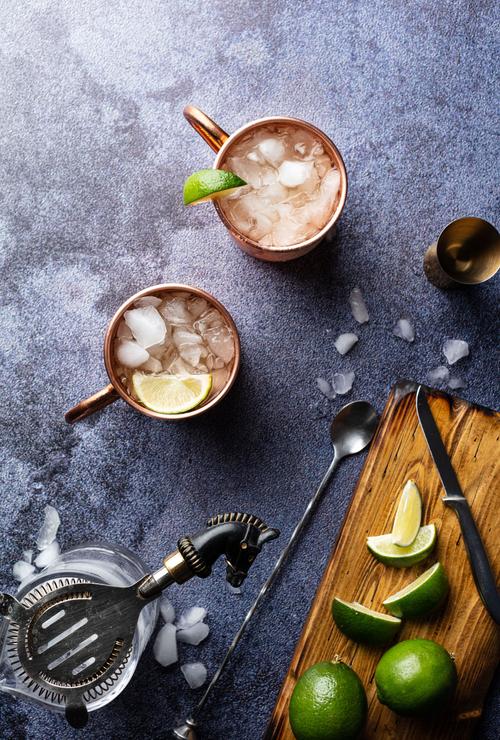
As a photographer, I want to get gifts that improve my ability to take photos. And as a photographer with a lot of gear, I also want something that I can tuck away into a drawer here or a cubby there to keep it out of the way.
I want to receive a gift that also has a lot of utility - something that’s easy to use, offers flexibility in terms of how it's used, and something that will last a long time. And that, my friends, is exactly what you get with a backdrop from Best Ever Backdrops.
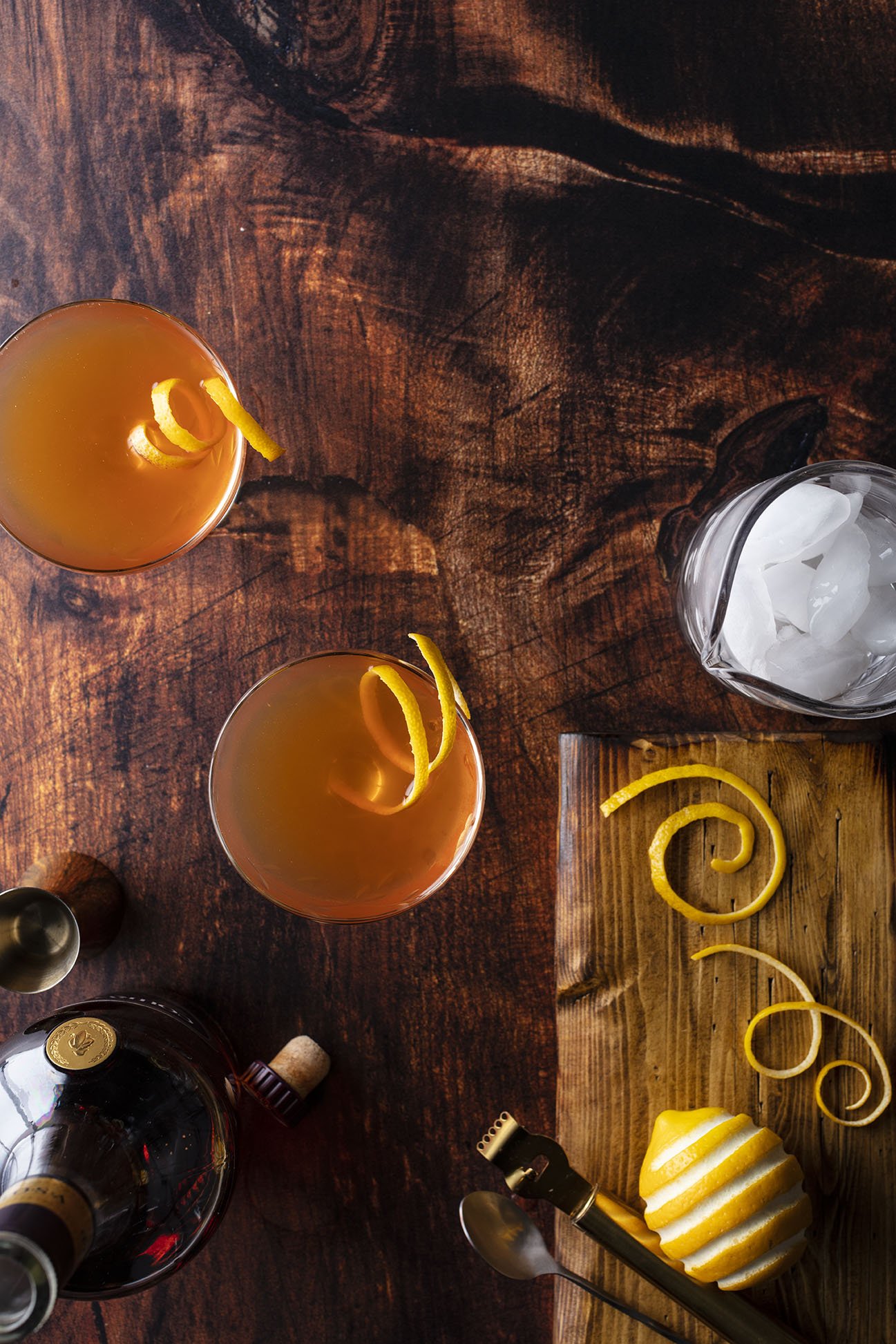
Now, I’m a landscape photographer by trade, but I also love to cook. So I thought, why not give food photography a try?
To create images of food that really make people’s mouths water, I need to set up a home studio that allows me to get the perfect shots. And for that I need a good backdrop.
What I really love about these backdrops is that they tick all the boxes - they look incredible, they’re double-sided to give you two backdrops in one, and they are just 24 x 36 inches and 1/8th of an inch thick, so they’re easy to shove under my bed when I’m not using them.
Additionally, these backdrops are extremely durable, waterproof, and stainproof, so if my food photography shoots get a little out of hand, I don’t have to worry about ruining my backdrops.
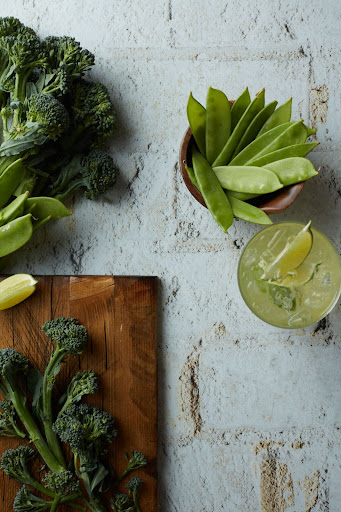
Better still, there are dozens and dozens of colors, textures, and patterns to choose from, so you can truly tailor the backdrop to what you think the photographer on your shopping list would like. There’s even free shipping!
Since this is a last-minute gift guide, I’d be remiss if I didn’t mention that these backdrops arrive at your door in just a couple of days, so they truly are an ideal last-minute gift.
It’s hard to beat something that’s so useful, so beautiful, and at the end of the day, inexpensive, too. If you want to wow the photographer on your holiday list, this is the gift to do it!
Learn more about Best Ever Backdrops
Sony a7 IV
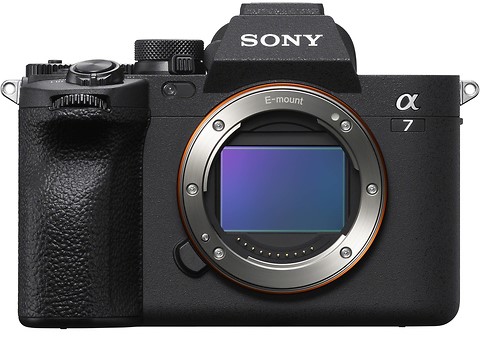
The Sony a7 IV is the newest version of the a7 line - so new, in fact, that it’s still in the pre-order phase.
However, any photographer on your holiday shopping list would surely love to have this camera, even if they have to wait a while to get it.
The a7 IV is equipped with a full frame 33-megapixel Exmor R back-illuminated sensor that offers incredible image quality, including better color reproduction and low noise.
Additionally, the sensor is capable of accommodating more than 15 stops of dynamic range, which offers photographers the ability to capture a wide range of highlights and details in the scene.
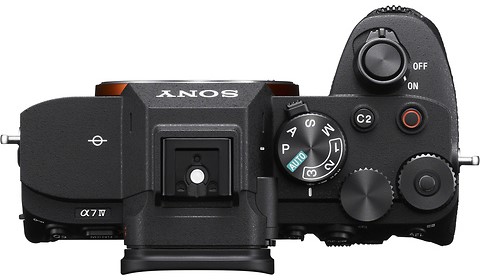
The Sony a7 IV isn’t just a photographer’s camera, though…
The fast sensor readout enables 10-bit 4:2:2 4K video recording at up to 60p. Likewise, you get full pixel readout with no binning, the option to edit footage in slow-motion at 30p or 24p, and oversampling at 7K
Of course, that’s just the start! The a7 IV offers a host of other features that includes a 3-inch free-angle tilting touchscreen LCD, an OLED EVF, up to 10fps burst shooting, Wi-Fi, Bluetooth, and 5-axis image stabilization.
In other words, this camera is loaded up with goodies that will make your favorite photographer smile from ear to ear!
Learn more about the Sony a7 IV
Atomos Ninja V
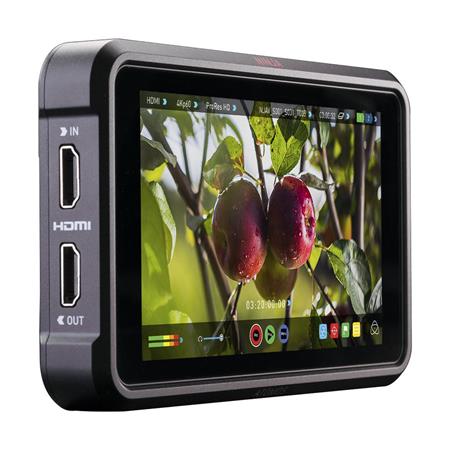
If you're shopping for a photographer that wants to try their hand at audio and video production, the 5-inch Atomos Ninja V portable monitor/recorder is a great gift idea.
The Ninja V is compatible with virtually any DSLR or mirrorless camera. Recording is done directly from the camera's sensor, but because it bypasses the camera's internal compression and record time limits, the Ninja V allows you to record for as long as you want. You get 4K 60p 10-bit recording out of the deal, too.
Files from the Ninja V are in ProRes or DNxHR format, which are ready to edit and can be easily stored on an SSD drive.
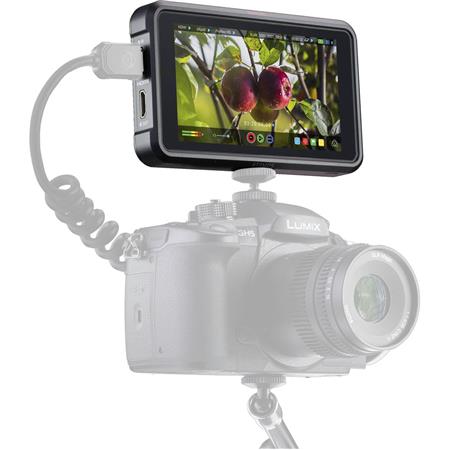
The monitor on the Ninja V is a bright 5.2-inch 10-bit HDR screen that offers 1,000 nits of brightness. The unit is wrapped in a 1-inch aluminum body that's both durable and lightweight.
Additionally, the screen is anti-reflective and offers 10+ stops of dynamic range in real-time from various signals, including Log, PQ, and HLG.
You get one-touch operation, fast playback, slow motion, and frame-by-frame analysis with AtomOS as well!
Learn more about the Atomos Ninja V
Sony ZV-1

The Sony ZV-1 is a compact, 4K camera aimed specifically at vloggers.
It has a 20.1MP sensor, a vari-angle LCD screen that faces forward, and a three-capsule mic with a windscreen as well.
These features make it much easier for videographers to see themselves as they record and capture improved audio as they do it.
But the list of features doesn't stop there...
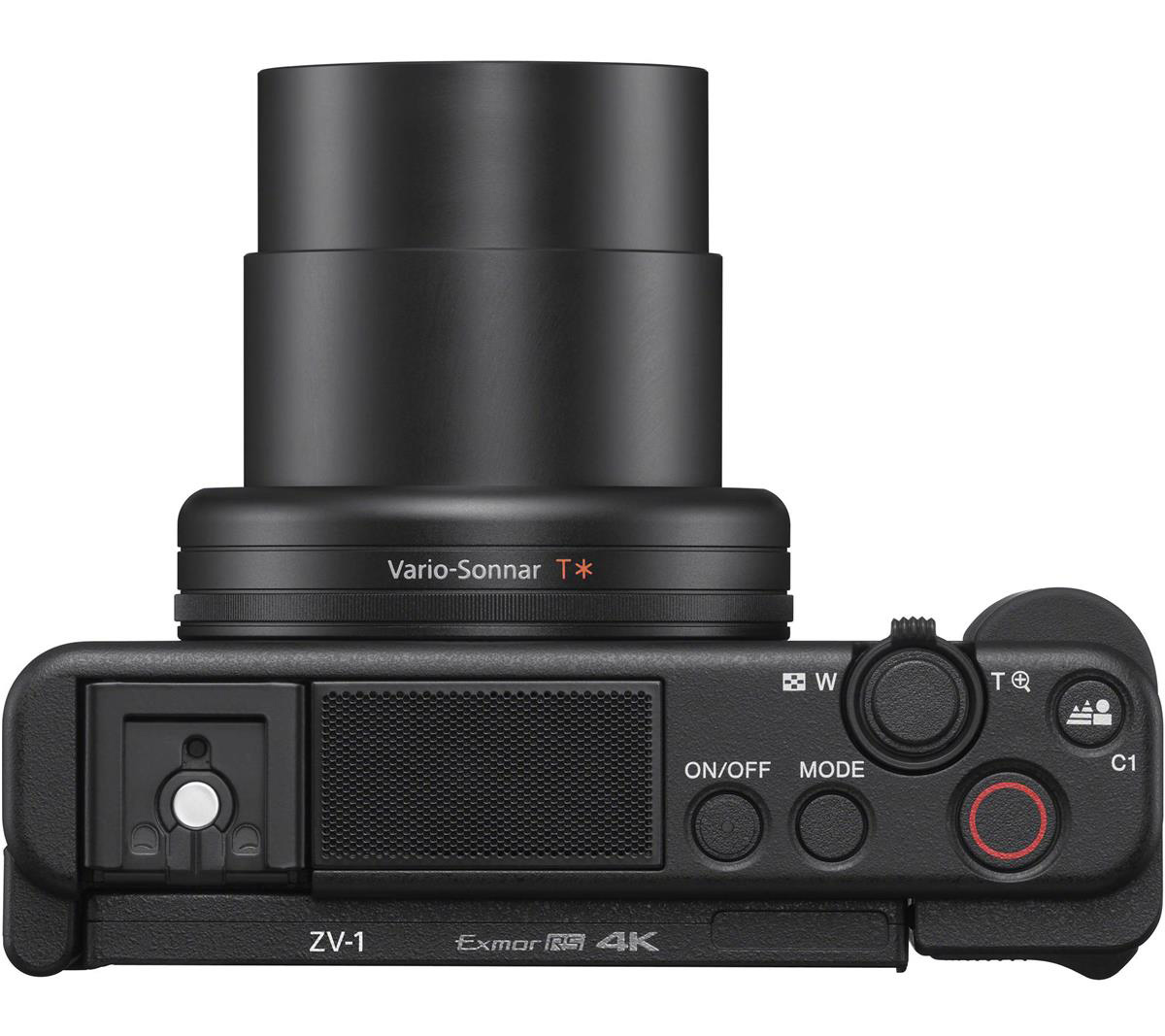
The camera is compatible with Bluetooth grips that enable easy handheld shooting. There is also a bokeh switch and a product showcase setting that make it easier to defocus the background and highlight products that need to be singled out in a video.
The ZV-1 also comes with a 2.7x optical zoom, enhanced color science for improved skin tones, and real-time tracking that ensures the subject is always in focus.
In other words, if the photographer on your list is ready to get into shooting video, this might be the camera for them!
Learn more about the Sony ZV-1
Westcott FJ400 400Ws Strobe with AC/DC Battery
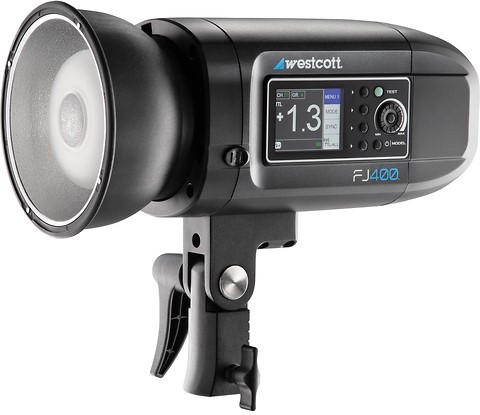
If the photographer you’re shopping for needs to upgrade or expand their lighting gear, this Westcott 400Ws strobe will be an ideal solution.
This light comes with an AC/DC battery, making it highly portable for use in the studio or in the field. The AC/DC battery offers 480+ full-power flashes with each charge, so photographers get long-lasting use out of it. And with less than a second recycle speed, work can commence quickly!
The FJ400 offers superb color accuracy, has a 9-stop output range, and a stable color temperature of 5500K (+/-150K). There’s an easy-to-use menu system with an LCD color display for making quick adjustments in addition to having both manual and TTL flash modes.
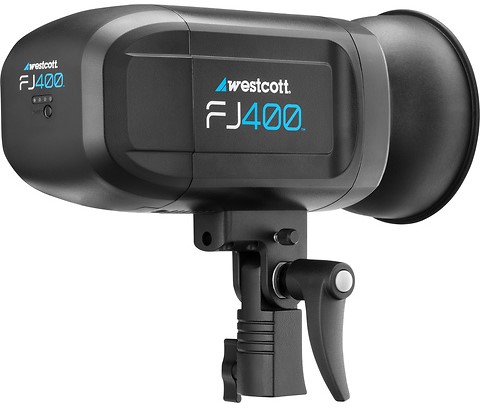
Westcott incorporated other nice features into this light as well. It offers High Speed Sync (HSS) at up to 1/8000s, Freeze Sync up to 1/19000s, Continuous Capture at up to 20fps, and automatic memory recall.
Add to the list mask function, delay function, rear curtain sync, and group and channel assignment, too!
Even better, this light is firmware upgradable via USB-C, so additional features can be added in the future. What’s not to like about that?!
Learn more about the Westcott FJ400 400Ws Strobe with AC/DC Battery
RODE Wireless GO II Microphone
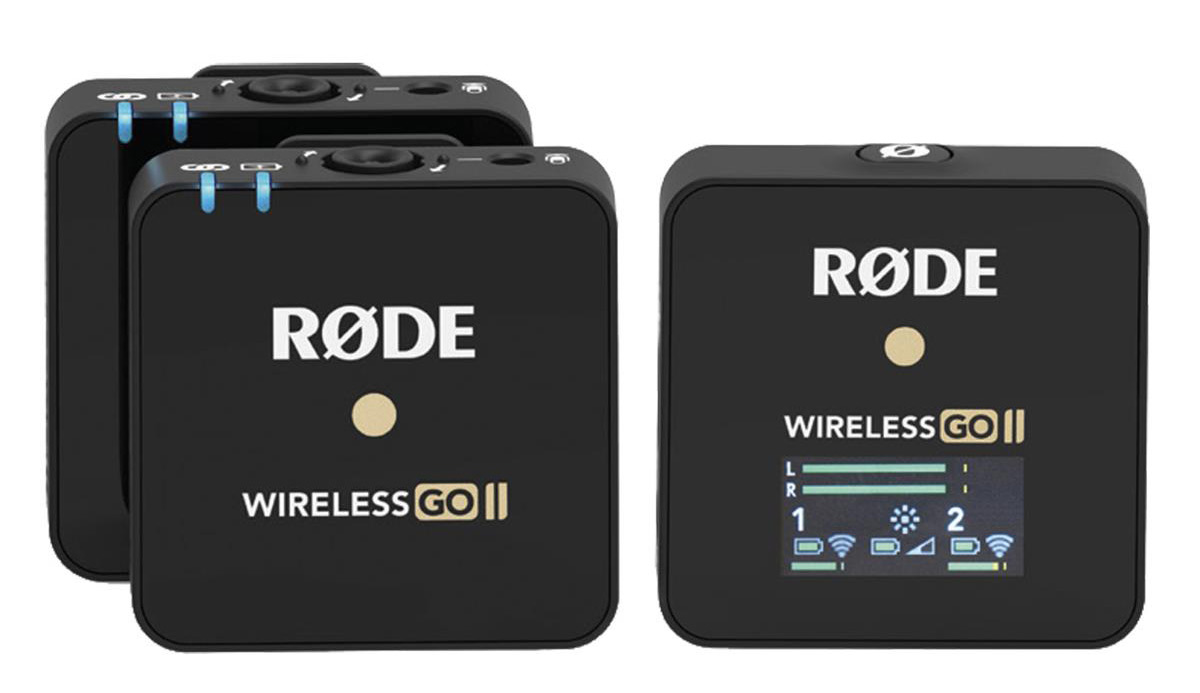
I've used RODE microphones for years, and I can attest to the quality of these mics both in terms of build and audio performance.
The Wireless GO II builds on the success of its predecessor by continuing the tradition of innovation.
It operates in the 2.4GHz spectrum and is compatible with Android and Apple products.
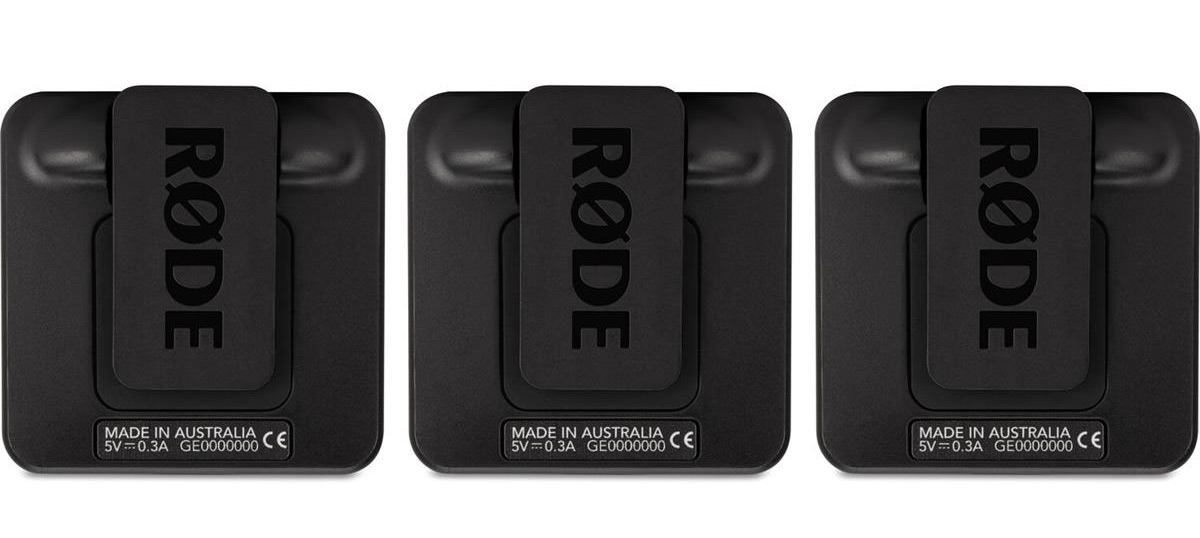
This kit comes with dual transmitters, each of which have an internal microphone and a receiver with a 3.5mm TRS output.
The transmitter and receiver have a USB-C port for charging. These ports can also be used to connect to a computer to get firmware updates.
With completely wireless operation, these mics give you the freedom to move around in front of the camera without worry of tripping over wires. What's more, if you're on camera, there's no wires to try to hide under your shirt.
These little guys simply give you a lot of bang for your buck with professional-quality audio in a tiny package.
Learn more about the RODE Wireless GO II
Rode Microphones RODECaster Pro Integrated Podcast Production Studio
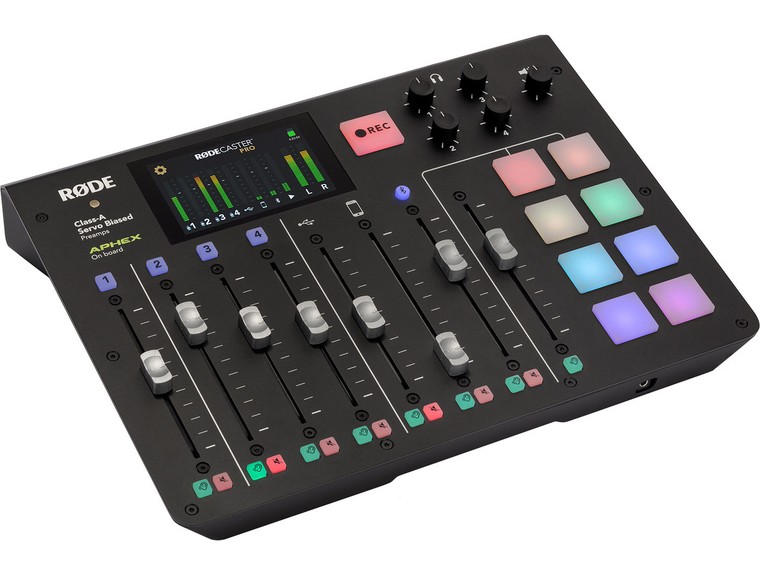
If you're shopping for someone that wants to get into podcasting, then the RODECaster Pro is a great last-minute gift idea.
What's so great about this gadget is that it is fully integrated. That means that photographers can use this to produce podcasts whether they are an experienced podcaster or a beginner.
There are four high-quality microphone channels that can power studio condenser microphones and traditional dynamic microphones as well.
Better still, you can connect microphones to the RODECaster Pro quickly and easily. The device also offers convenient features like one-touch recording and automatic level setting.
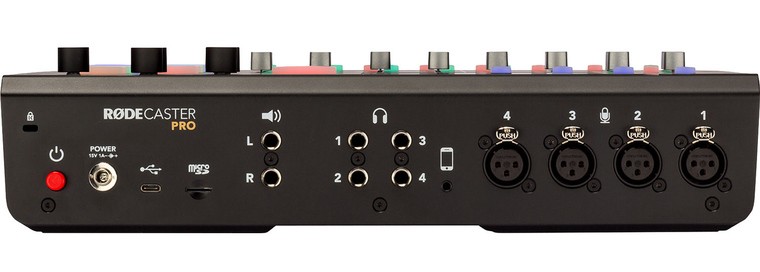
The RODECaster Pro also allows you to have remote guests call in for an interview. Doing so is easy - just connect a smartphone via Bluetooth or a TRRS cable and the RODECaster will automatically provide mix-minus audio so the caller doesn't hear an echo.
This unit additionally provides preamps and outputs with Class A circuitry for ultra-low distortion and top-of-the-line gain structure.
There's music, jingles, applause, and other sounds that help give your podcast a more professional sound as well!
Learn more about the RODECaster Pro
RODE Lavalier GO
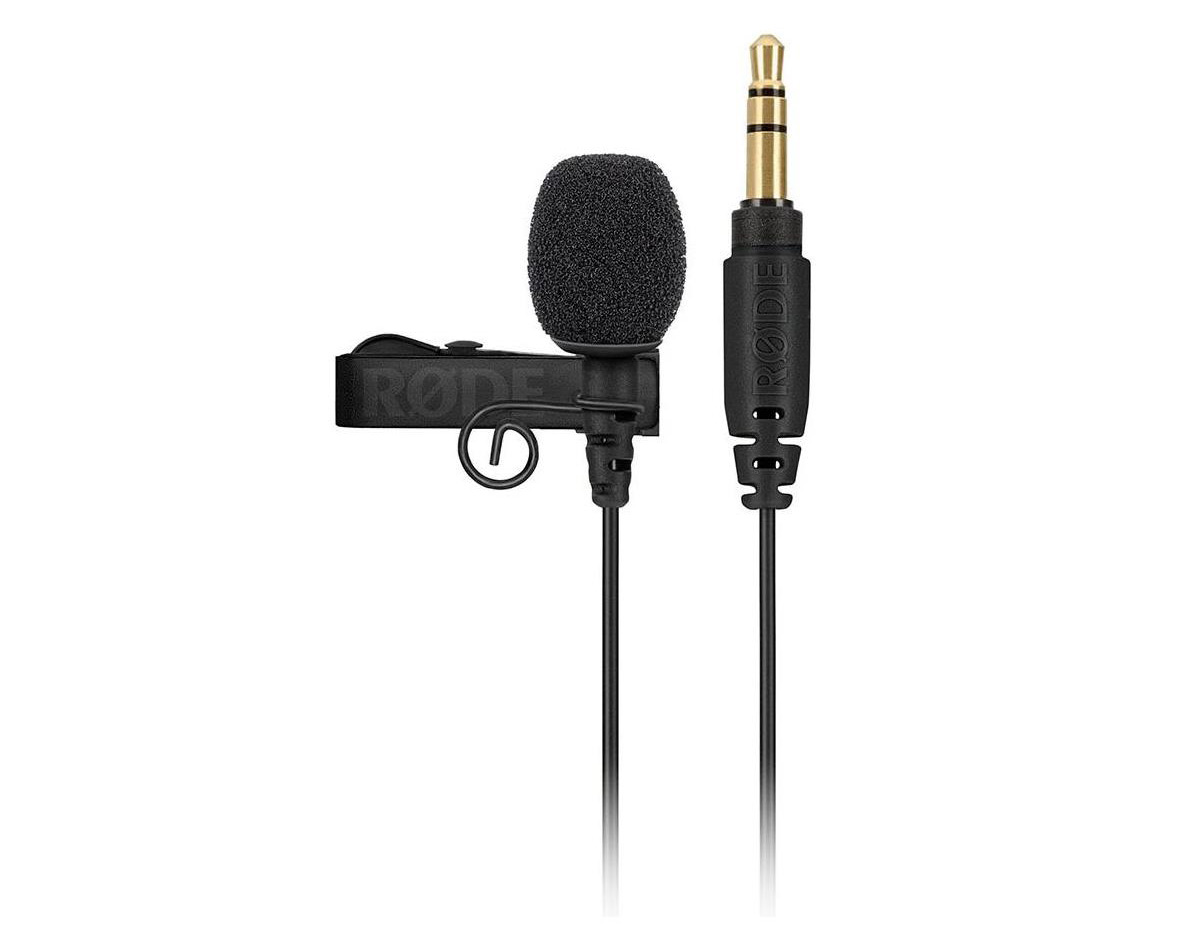
Another prime last-minute gift idea for photographers is the RODE Lavalier GO microphone.
At just $79, this is one of the least expensive items on this list. But don't let the small price fool you - this is a high-powered mic!
In fact, this is a professional-grade microphone that can be used in a variety of situations, from speaking directly to the camera in the studio to conducting interviews in the field and many points in between.
The Lavalier GO has a discreet 4.5mm omnidirectional mic that captures beautifully clear audio - even in less-than-forgiving environments.
It has a 3.5mm TRS connector and is designed to work with the RODE Wireless GO and many recording devices with a 3.5mm TRS microphone input.
The key to getting good video is capturing great audio, and with this microphone, the photographer on your shopping list can do just that!
Learn more about the RODE Lavalier GO
Manfrotto Pro Light Reloader Tough-55
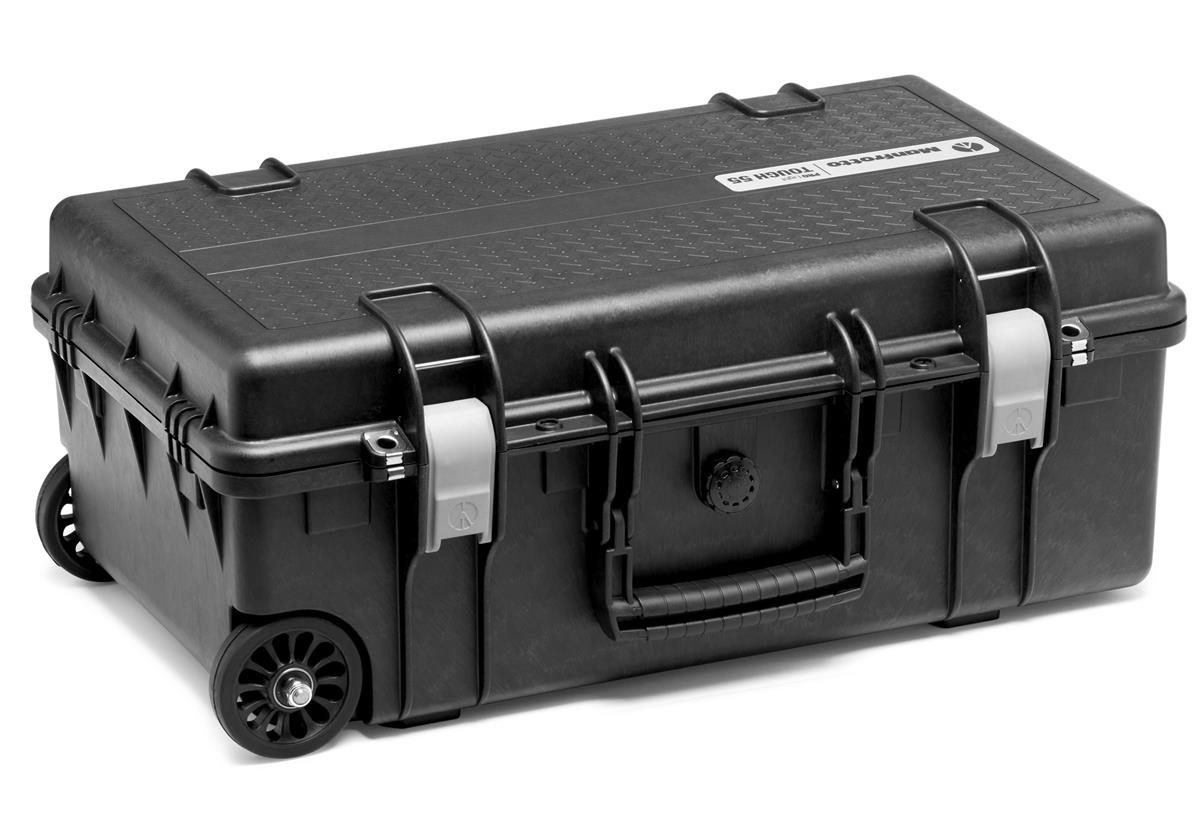
Chances are that the photographer on your holiday shopping list already has a ton of gear. So why not give them a gift that helps them carry that gear safely?
The Manfrotto Pro Light Reloader Tough-55 roller case has four layers of foam on the bottom and convoluted foam on the lid to help protect sensitive photography and videography gear from bumps and bruises when traveling.
When closed, the case creates an airtight compartment. With pull release latches, the case is easy to open, and with padlock compatible points, the case can be easily secured as well. Add in a telescoping handle for making maneuvering the case through the airport a breeze!
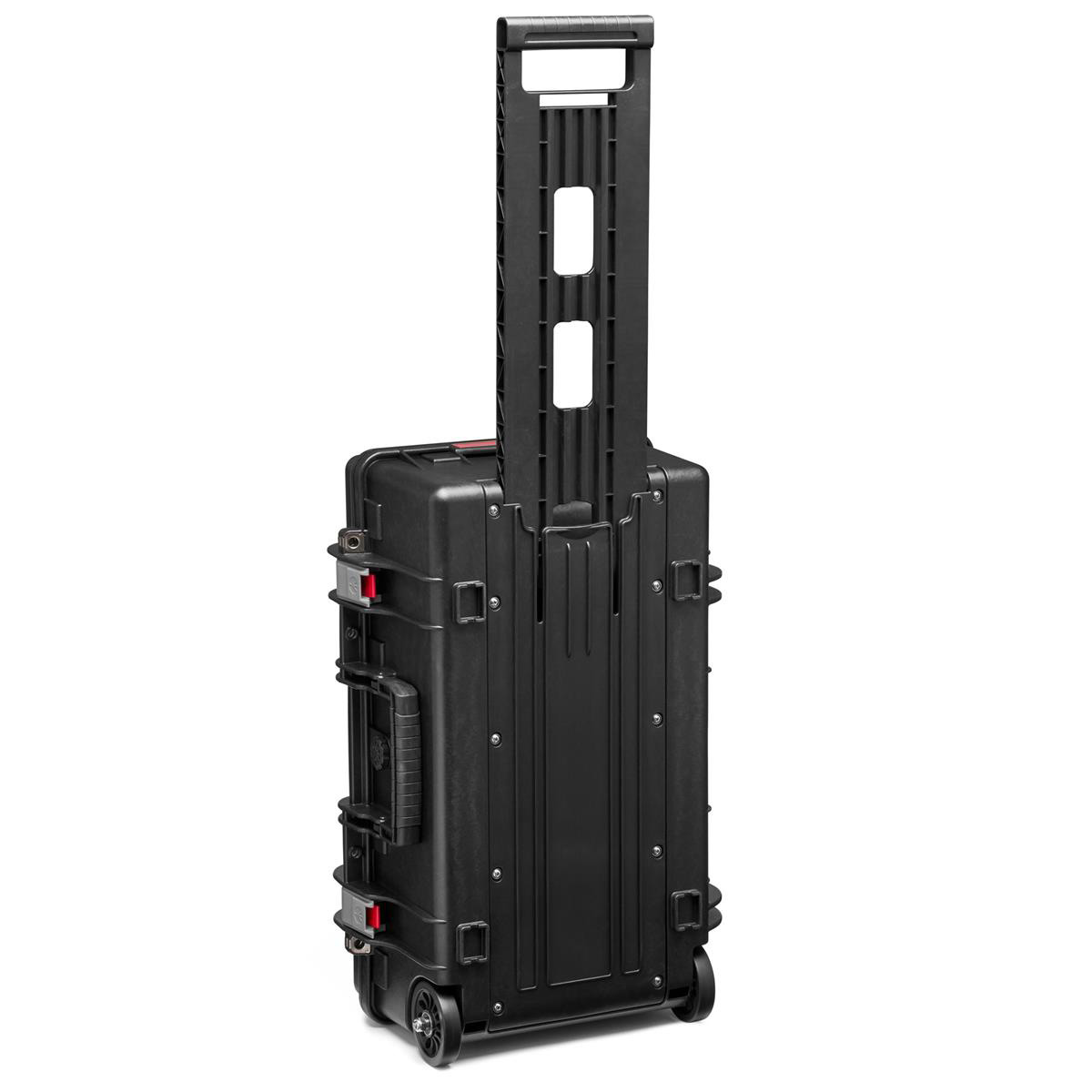
One of the most interesting and useful features of this case is that it has optional accessories that can attach or latch onto metal attachment pins on the case.
This means that you can add a laptop bag, a tripod bag, or many other accessories to expand the usefulness of the case.
These cases are dust-resistant and moisture-resistant and are rated to IP67 standards, so they are fully capable of being a photographer's go-to travel case in all sorts of environments.
Learn more about the Manfrotto Pro Light Reloader Tough-55
Ikan Professional 15-Inch High Bright Beam Splitter Teleprompter
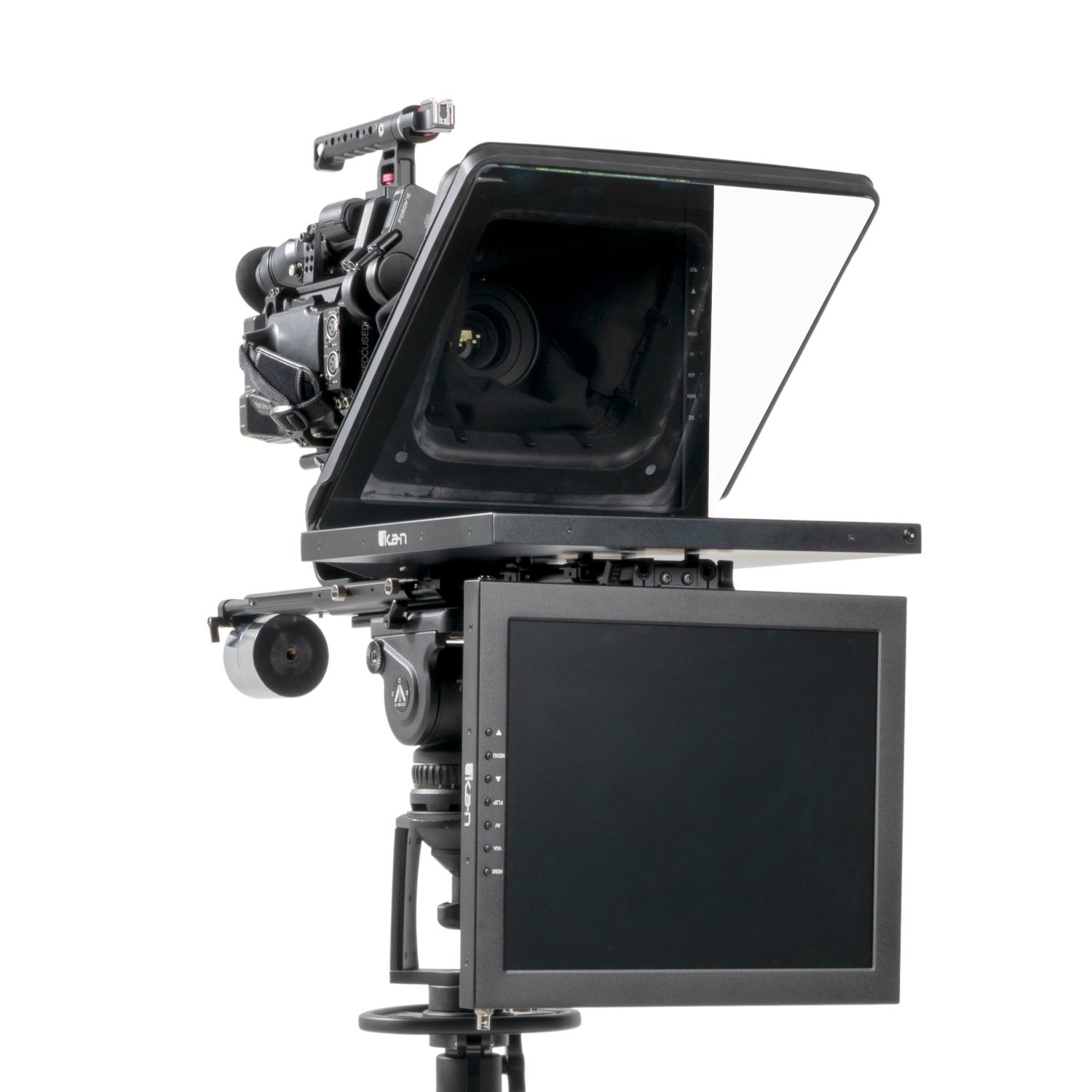
One of the best pieces of kit I have in my home studio is this Ikan 15-inch beam splitter teleprompter.
I do a lot of videos where I'm speaking directly to the camera, so a high-quality teleprompter is critical so I can speak naturally to my audience while maintaining eye contact with the camera.
With a large and bright 15-inch screen, the text on the screen is nice and big so I can easily read it from across the room. Now, my home studio is pretty small, so I'm no more than about eight feet away.
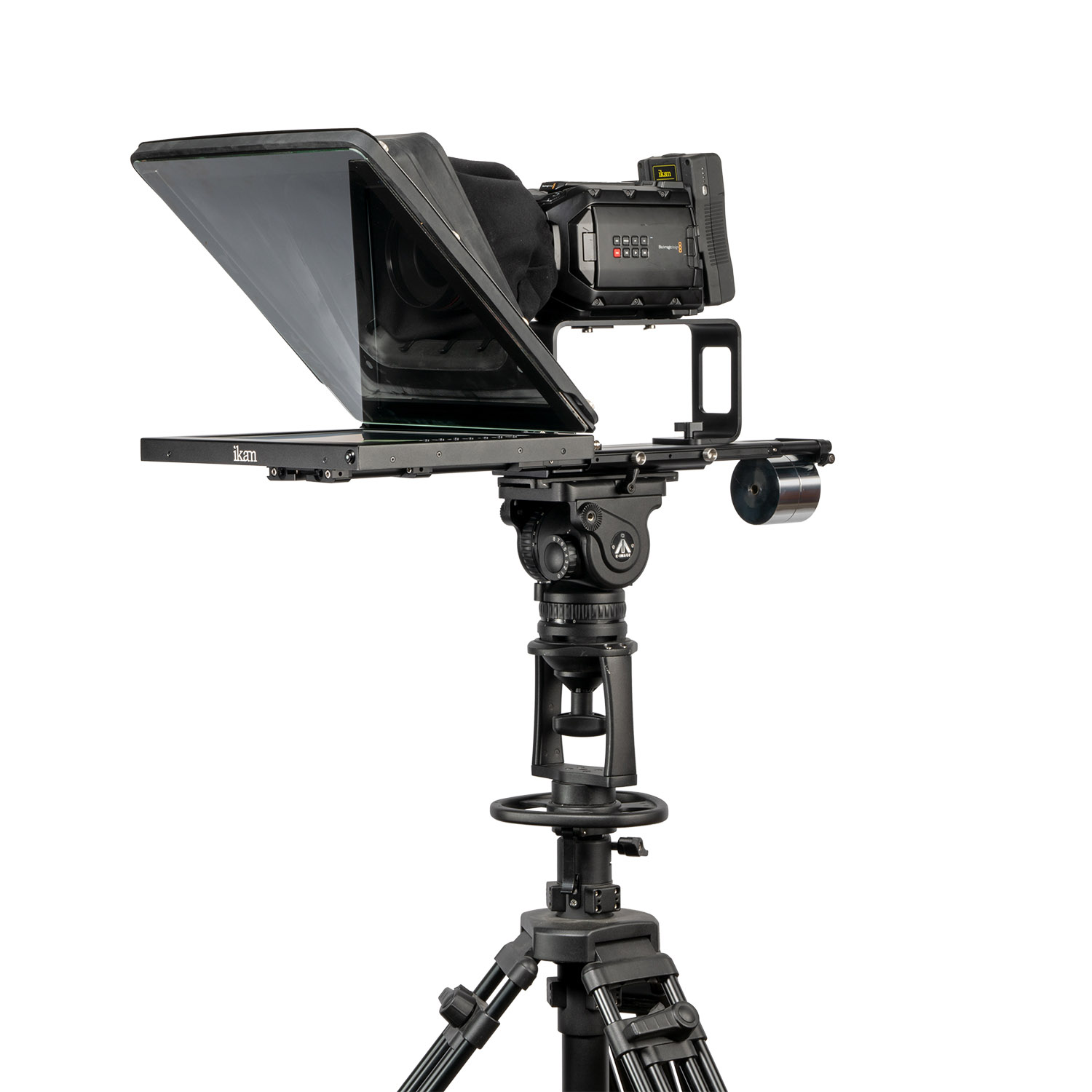
However, if you're shopping for someone that has a larger studio, this teleprompter can be set back much further, allowing for placement of additional cameras, lights, and other gear.
The teleprompter itself is about 25 x 20 x 16 inches and weighs about 22 pounds. These figures are just for the teleprompter, so once you add in a camera and lens, a tripod, and so forth, the entire setup is fairly large. That means it's probably more of a studio setup than something you'd want to travel with.
Still, I've been thoroughly impressed with this rig and can't recommend it enough!
Learn more about the Ikan Professional 15-Inch High Bright Beam Splitter Teleprompter
We Recommend
Top Beginner Cameras for 2021
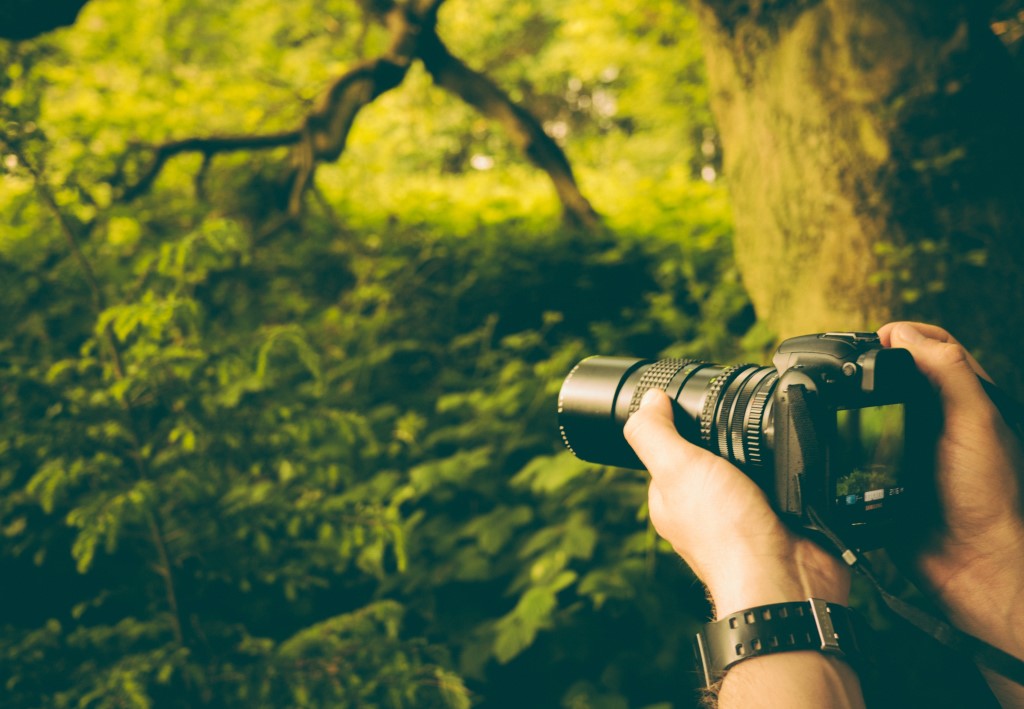
Photo by Jamie Street on Unsplash
In a world in which some cameras cost thousands and thousands of dollars, coming across a good beginner camera can seem really difficult. Why spend thousands of dollars when you’re not even sure if this is the hobby/job for you?
Thankfully, there are some incredible budget DSLRs and mirrorless cameras on the market right now. Read on about Nikon D3500 review which is my favorite DSLR along with four more cameras from different brands.
This list of top beginner cameras includes a few of each. Some came out this year, some are years old, but they’re all great for exploring your inner photographer.
Table of Contents
Nikon D3500

The Nikon D3500 is a special favorite DSLR of mine, primarily because of the price and the shocking battery life that’s good for over 1,500 shots.
This D3500 is Nikon’s follow up to the d3400 which came out in 2016, and offers some modest upgrades for today’s photographer.
Nikon D3500 Specs
- 24.2MP APS-C CMOS 4
- EXPEED 4
- 11-point autofocus system
- Max Image Size: 6,000 x 4,000px
- 1920 x 1080 resolution HD video
- 3.0-inch with 921K dots
- Weight: 14.6 oz
Nikon D3500 Pros & Cons
- Pro: 1,550-shot battery life
- Pro: Incredibly lightweight and compact for a DSLR
- Pro: Cheap
- Con: No 4K video capabilities
- Con: Fixed 3.0-inch LCD screen
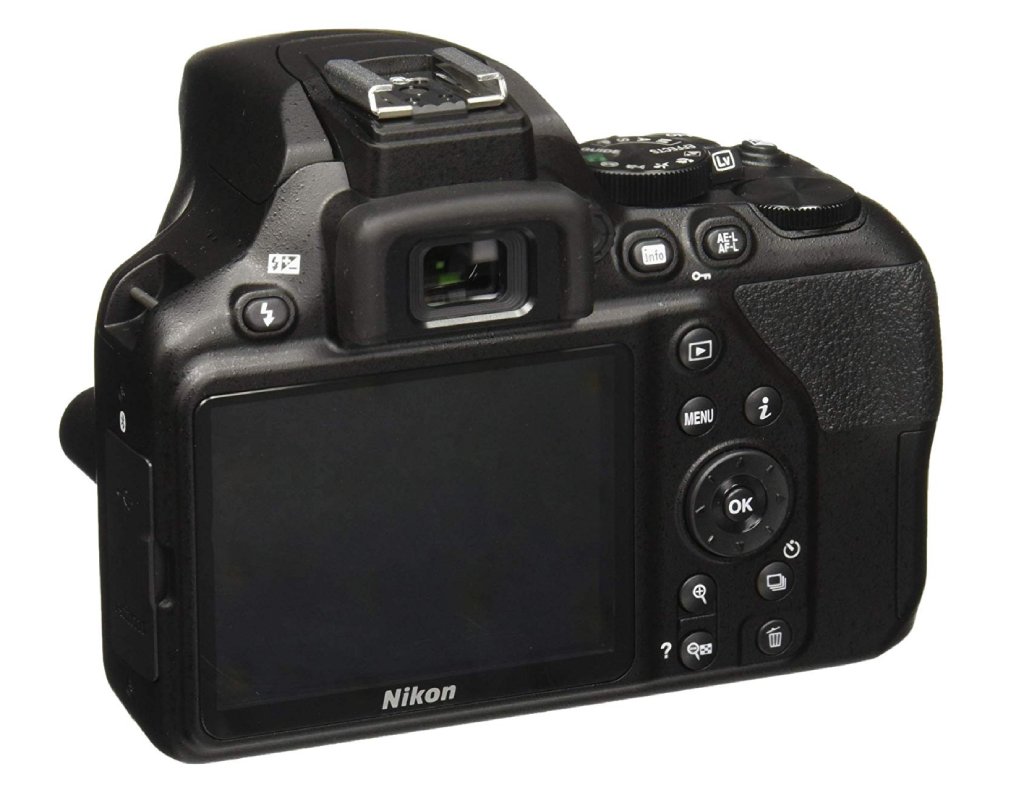
Nikon D3500 Overview
The Nikon D3500 made our list of top beginner cameras for 2021, despite being released in 2018, due in large part to its price. At $395 new, or around $180 used, this DSLR performs just as well as many mirrorless cameras in the same price range.
While this isn't one of the best beginner cameras for videographers due to the lack of 4K video, it's battery life of 1,550 shots, paired with its updated sensor and decent kit lens means this camera is one of the best entry-level cameras, especially for avid travelers.
This camera is also phenomenal for beginners because you can easily transition from its accessible guide modes to a more hands-on approach. Plus, the hands-on approach isn't frustrating due to the new layout of the buttons on the camera (so long as you're a rightie, lefties beware).
Finally, you can also process your RAW images in-camera and connect to the camera via Bluetooth. It’s not the perfect camera, but it’s darn close for a beginner!
You can purchase the Nikon d3500 new for $395, or used starting at $180 on MPB.
Sony RX100 Mark V
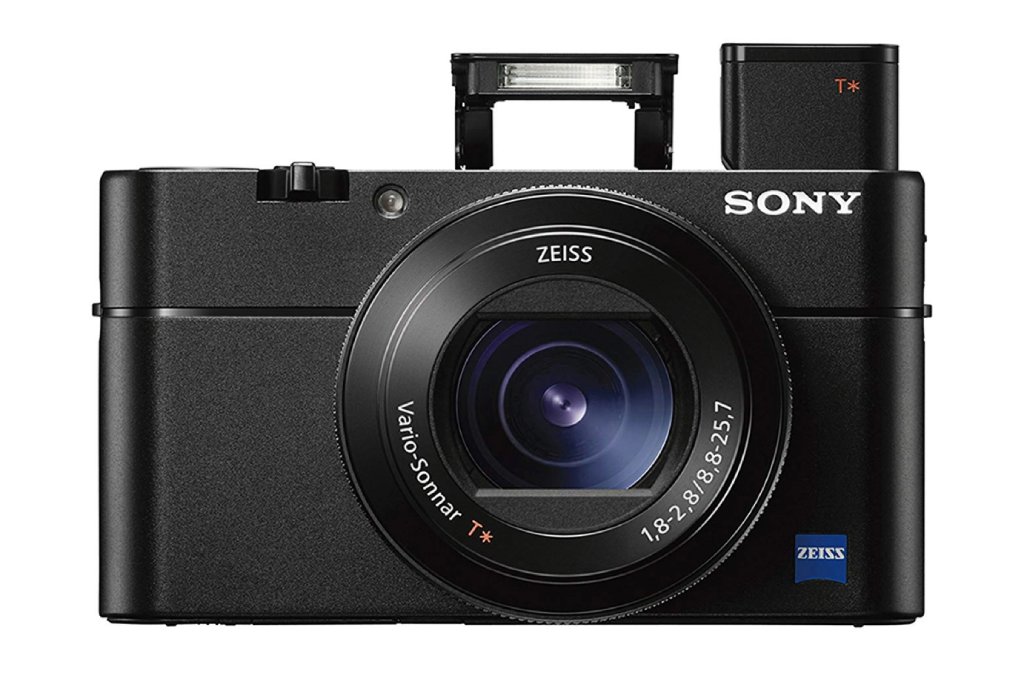
The Sony RX100 Mark V is the priciest camera on our list, but if you truly need something you can throw in your jacket pocket, then this is one of the top entry-level cameras for you.
Sony RX100 Mark V Specs
- 20MP 1”-type stacked BSI-CMOS sensor
- 24fps burst shooting with full AF
- 4K video capabilities for up to 5 minute clips
- 220-shot battery life
- 1,000fps for 8 seconds
Sony RX100 Mark V Pros & Cons
- Pro: Pocket-friendly sizing
- Pro: 4K video and high-res photos
- Pro: Fast, accurate autofocus
- Con: Pricey
- Con: No touch screen
The Sony RX100 V is another camera on this list that came out a few years ago, 2016 to be exact.
If you're in the market for cheap beginner cameras, then look elsewhere. The Sony RX100 V is a top-of-the-line compact and knows it with a price tag of nearly $1,000. However, if you can afford the splurge, this will be among the most compact beginner cameras you can find.
As mentioned, it shoots 4K video, has an incredibly fast burst mode, and features high resolution images. It automatically finds your focus areas, which is great for beginners, and it's faster than any of Sony's other mirrorless or DSLR cameras.
It's also the best camera on this list for shooting in low light.
However, because of all of the features in this camera, it may be best for those who have a decent amount of photography experience.
You can purchase the Sony RX100 Mark V for $830 on Amazon, or $530 used on MPB.
Panasonic Lumix ZS200/TZ200/TZ220
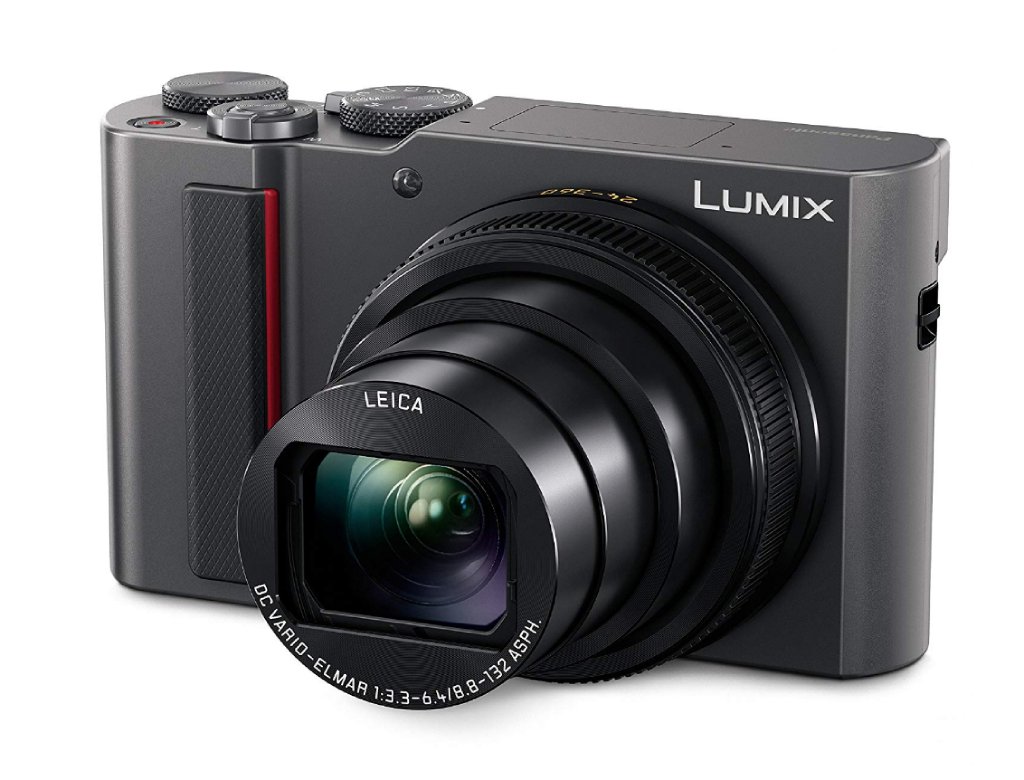
Entry-level cameras should have an entry-level price and that’s why I love this Panasonic Lumix ZS200. It comes with all the features a beginner will need, without anything extra.
Panasonic Lumix ZS200/TZ200/TZ220 Specs
- 1-inch, 20.1MP MOS sensor
- 3.0-inch, 1,240K dot LCD screen
- 10fps burst shooting
- 4K video
- Electronic viewfinder with 2,330K dots
Panasonic Lumix ZS200/TZ200/TZ220 Pros & Cons
- Pro: 15x optical zoom range
- Pro: Excellent 1.0-inch sensor
- Pro: 4K video
- Con: Fixed LCD screen
- Con: Smooths images at high ISO
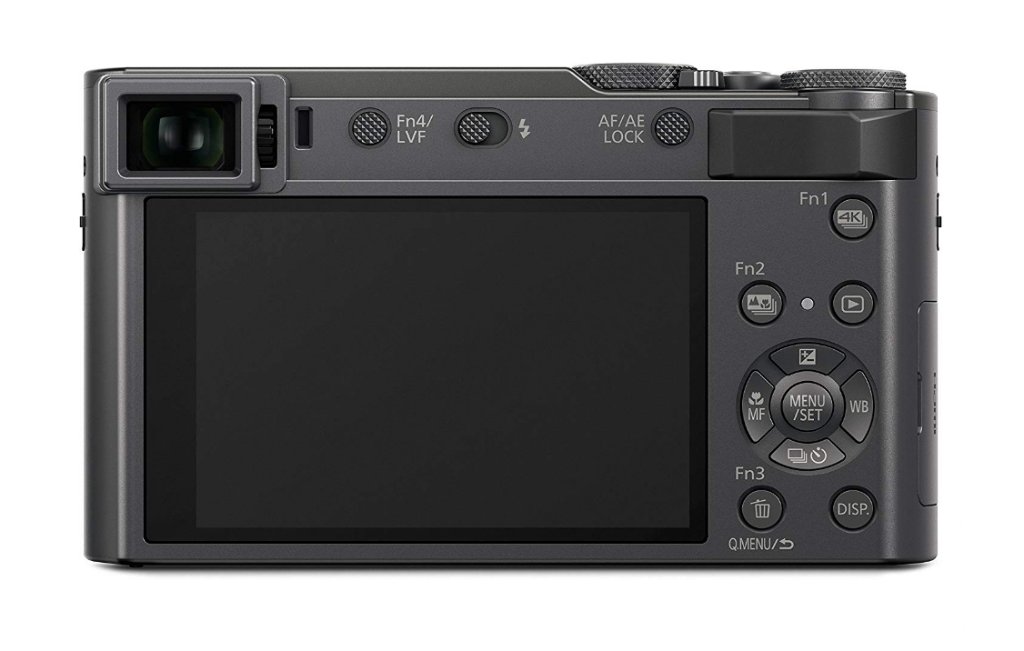
Panasonic Lumix ZS200/TZ200/TZ220 Overview
The Panasonic Lumix ZS200 is, as mentioned, one of the top beginner cameras because it features everything you need and nothing you don't. 4K video? It has it. A touch-enabled LCD screen? It has one.
It features 15x optical zoom, connects to WiFi, and has the equivalent of a 24-360mm lens. It can shoot 20MP stills and its electronic viewfinder is 15% beginner than its predecessor's.
Plus, the Panasonic Lumix ZS200 has an impressive battery life. It also shoots in both RAW and JPEG, and can easily fit in your bag.
However, the Panasonic Lumix ZS200 is slower than its competitors. And, its buttons seem to be unnecessarily pushed together, which can frustrate some shooters. Although, this button cramping issue does mean Panasonic had room to create a better grip, which means less chance you accidentally drop it.
You can buy the Panasonic Lumix ZS200 on Amazon for $700 or search for used ZS200s to save some cash.
Get more details about this camera in our Panasonic Lumix ZS200 review.
Olympus OM-D E-M10 Mark II
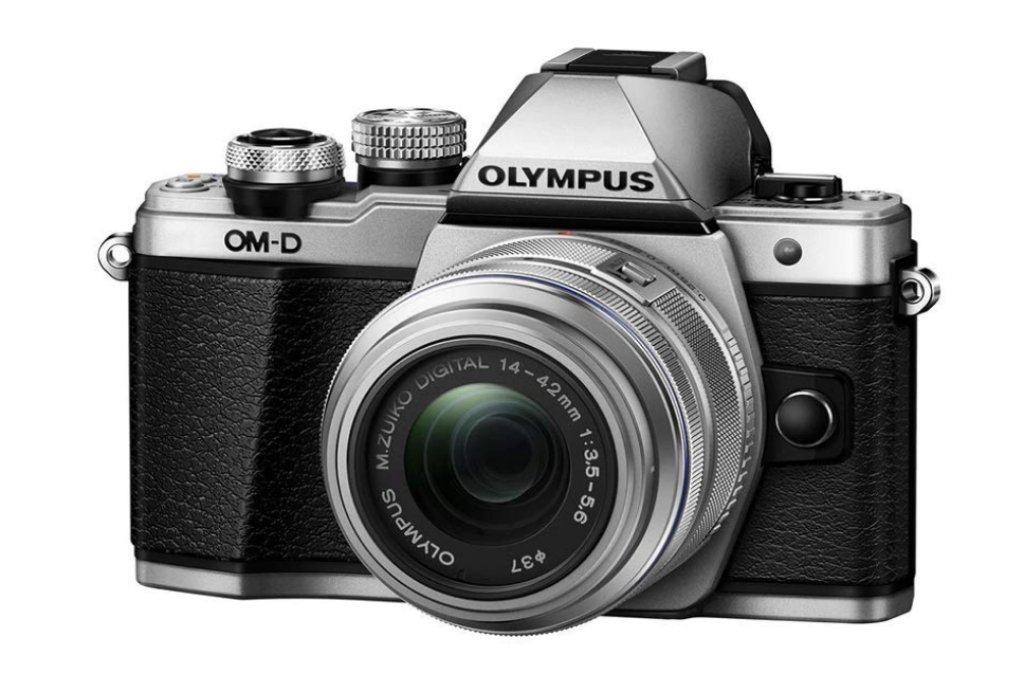
Other than the fact that I love the look of the Olympus OM-D E-M10 Mark II, it made this list for its great electronic viewfinder, its image stabilisation (which far outranks any others in its price range), and its fast burst shooting.
Olympus OM-D E-M10 Mark II Specs
- 16.1 megapixel MOS sensor
- 8.5fps burst shooting
- WiFi connectivity
- 5-Axis image stabilization
- 1080p video
Olympus OM-D E-M10 Mark II Pros & Cons
- Pro: Incredibly beautiful, with a retro vibe
- Pro: Fast burst shooting
- Pro: Tiling touch-screen
- Con: No 4K capabilities
- Con: Unusual power switch
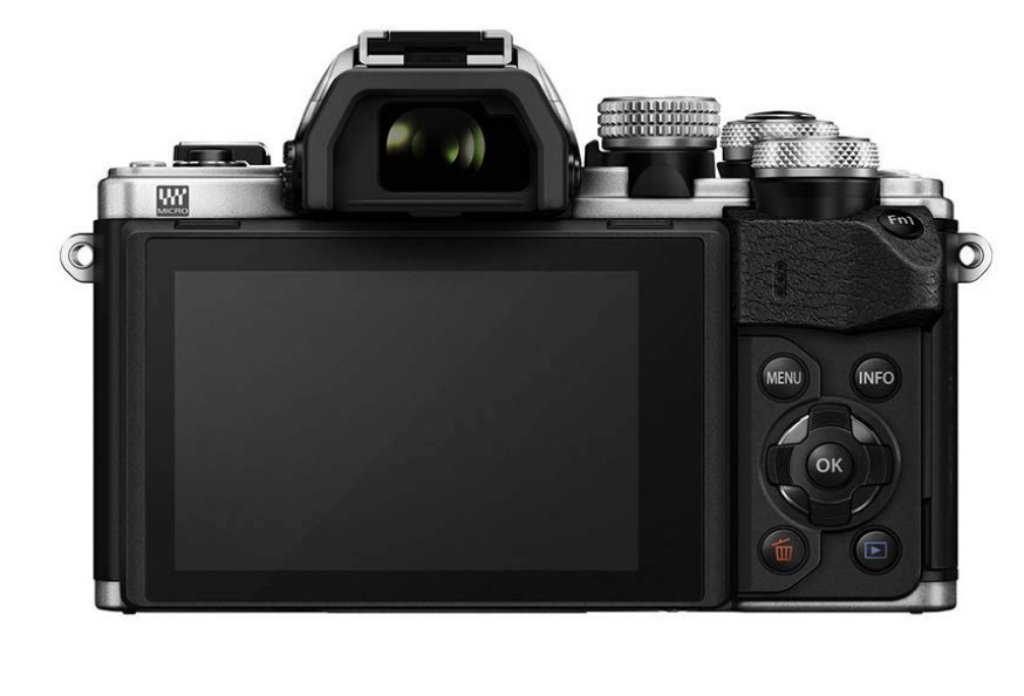
Olympus OM-D E-M10 Mark II Overview
2021 is the year of the retro, from obsessions with the fashion of the 90s to an obsession with polaroids, and the photography community definitely didn't miss out.
I love the way the Olympus OM-D E-M10 Mark II is a small throwback to the beginnings of photography. It's definitely the most aesthetically pleasing camera on our list.
Other than its looks, this Olympus also features a 3-inch tilt-angle screen with 1,040K dots. It can continuously shoot in 8.5fps and shoots full HD video. But, its image stabilization system is what really sets it apart.
It’s not often you find such inexpensive cameras with five-axis image stabilization, but this Olympus delivers. With that kind of stabilization, you can shoot handheld at slower shutter speeds with less worry of camera shake. It’s also handy for shooting video that appears to be much smoother.
Its sensor is a bit outdated and it doesn't shoot in 4K video, but what it lacks in these departments it makes up for with fast autofocus, easy handling, and smooth low light shooting.
You can purchase the Olympus OM-D E-M10 Mark II on Amazon for $499, or used on MPB starting from $269.
Sony a6000

If you are more of an intermediate photographer, then the Sony a6000 may be for you. I know this is technically a list of top beginner cameras, but sometimes it pays to purchase a camera that can grow with you, and that’s this Sony.
Sony a6000 Specs
- 24.3 megapixel APS-C CMOS sensor
- 11fps continuous shooting
- 3-inch tilting LCD screen
- Hybrid AF system
- WiFi connectivity
Sony a6000 Pros & Cons
- Pro: 25-point contrast detect Hybrid AF system
- Pro: Bionz X processor
- Pro: 11fps burst shooting
- Con: Screen isn’t touch-sensitive
- Con: No 4K video capabilities
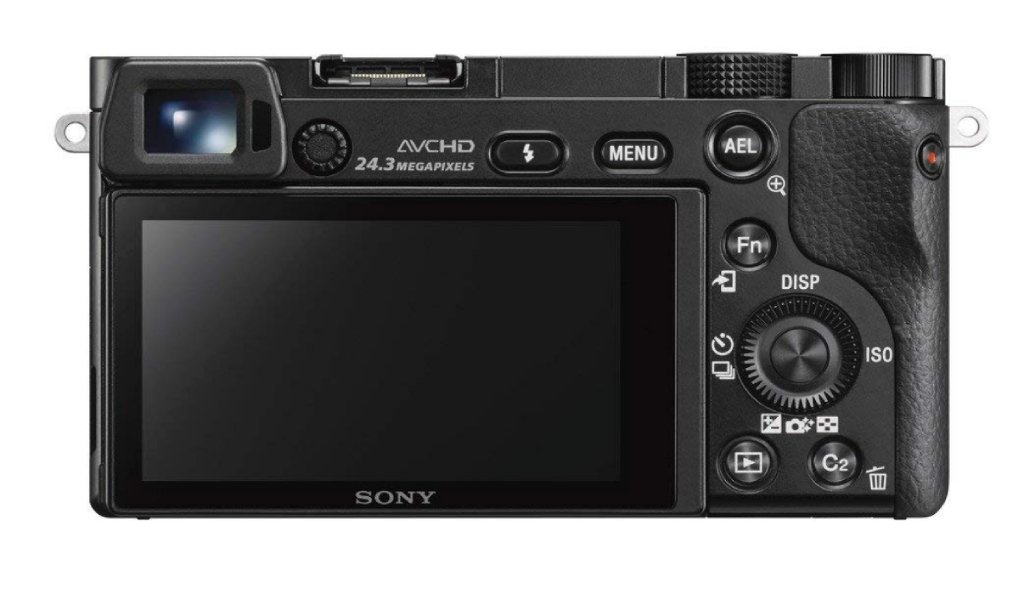
This Sony a6000 is the oldest camera on our top beginner cameras of 2021 list; it's been on the market since 2014, which is the only reason the price is so ridiculously low.
While it doesn't have some 2021 features, like 4K video and a touchscreen LCD, it makes up for it by featuring specs that were way ahead of its time, like a 24MP sensor and 179-point autofocus system.
This is also one of the best beginner cameras because it shoots at 11fps. Whether you're a sports photographer or nature photographer, this camera will work well as you photograph fast-moving subjects. Plus, it autofocuses in 0.06 seconds, so there’s that!
But, the best quality of the Sony a6000 is the Bionz X processor, which features three times the processing speed of earlier models and allows you to reduce blurry details and capture incredible textures.
You can grab the Sony a6000 for $650 on Amazon, or used on MPB from $289.
We Recommend
Top Camera Remotes for 2019

It’s incredible how far camera remotes have come. Back in the olden days (aka back in the 90s) all camera remotes were capable of doing was triggering the shutter.
And while the original camera remotes were designed to perform this simple task, the top camera remotes for 2019 do so much more.
Sure, the top camera remotes lessen the vibrations on a camera to improve sharpness, but they also feature things like automated time-lapse shooting and remote control over camera settings like aperture, shutter speed, and ISO.
Having a capable camera remote is a Godsend when you’re in the field, whether you need to be in on a family portrait or whether you want to set up a day-to-night timelapse and adjust the camera settings remotely from the comfort of your camp chair.
So, without further ado, here are PhotographyTalk’s top camera remotes for 2019.
Foolography UNLEASHED

One of the most important qualities I look for when I’m shopping for wireless camera remotes is whether or not they are accompanied by an app for my phone.
I’ve used a DSLR camera remote before that wasn’t app compatible, and I’ll never do it again.
The Foolography UNLEASHED camera remote has one of the most streamlined apps I’ve ever used.

You can change the aperture, shutter speed, and ISO from the companion app.
You can make timelapse videos (with day-to-night transitions!), from the app too.
You can also shoot long exposures and start and stop video recording from this app.
You can even geotag your photos in-camera.
And the kicker? It works for up to 6 cameras at a time.
Aside from the many ways this camera remote allows you to actually be remote, it also is tiny, which I appreciate given my propensity to bring way too much of my gear with me to each shoot.
Check it out on the UNLEASHED website.
Hahnel Inspire

While I just spent a minute bragging about how all of my top camera remotes have easy to use smartphone apps, the liveview screen on the Hahnel Inspire makes up for its lack of one.
This DSLR camera remote comes with a 3.5 inch color LCD display that allows you to view your photographs in real time up to 196 feet away.
Plus, it saves the past 99 images for you to quickly scroll through.
The Inspire can’t handle quite as many cameras as the UNLEASHED, but it still works with up to 4 cameras at a time.
Get more details about the Hahnel Inspire for Nikon and Canon
Nikon WR-1

For shooting in highly trafficked areas (think tourist destinations or sports games) you can’t go wrong with the Nikon WR-1.
While other top camera remotes only have one or two channels, this Nikon WR-1 has 15 so you know you’ll be able to get a clear signal even when other photographers are hogging the space.
It also works up to a whopping 394 feet away, which is helpful for wildlife photographers that need to put some distance between themselves and their subjects.
Plus, this mirrorless camera remote can control 4 cameras at a time and can sync those cameras in order to snap the same moment from different angles (again, a nice quality for wildlife photographers).
You can also power the Nikon WR-1 directly with the camera, or with 2 AA batteries, so it will be really difficult to run this one out of power!
Learn more about the Nikon WR-1 remote
Sony RM-VPR1

While the other top camera remotes on this list are incredibly high-tech and powerful, for those of you who like to keep things simple and old school, the Sony RM-VPR1 is for you.
It does exactly what it’s supposed to do and not much else, which is to say it allows you to control the shutter release, optical zoom, digital zoom, and bulb modes on your DSLR.

It’s cheap and effective, but don’t expect to be hundreds of feet away from your camera while using it because the cord is 31.5 inches long.
Nevertheless, this remote makes our list of the best camera remotes because it offers excellent functionality and the price is hard to beat!
Get more details on the Sony RM-VPR1
GoPro Smart Remote

I couldn’t write a list of the top camera remotes for 2019 and not give a nod to GoPro, who has been surprisingly killing it with their smart remotes.
Obviously, you can only use this smart remote with the GoPro line, but they’ve made it incredibly easy to do so. This camera remote controls all GoPro functions.

You can wear this smart remote as a watch, which works well with their branding and for you. You can also control an incredible 50 cameras at one time, each of which can be placed up to 600 feet from you.
It’s also waterproof up to 33 feet.
For the price, I think it’s foolish to own a GoPro without it!
See pricing and more details on the GoPro Smart Remote
Learn More:
We Recommend
Top Cameras for Street Photography
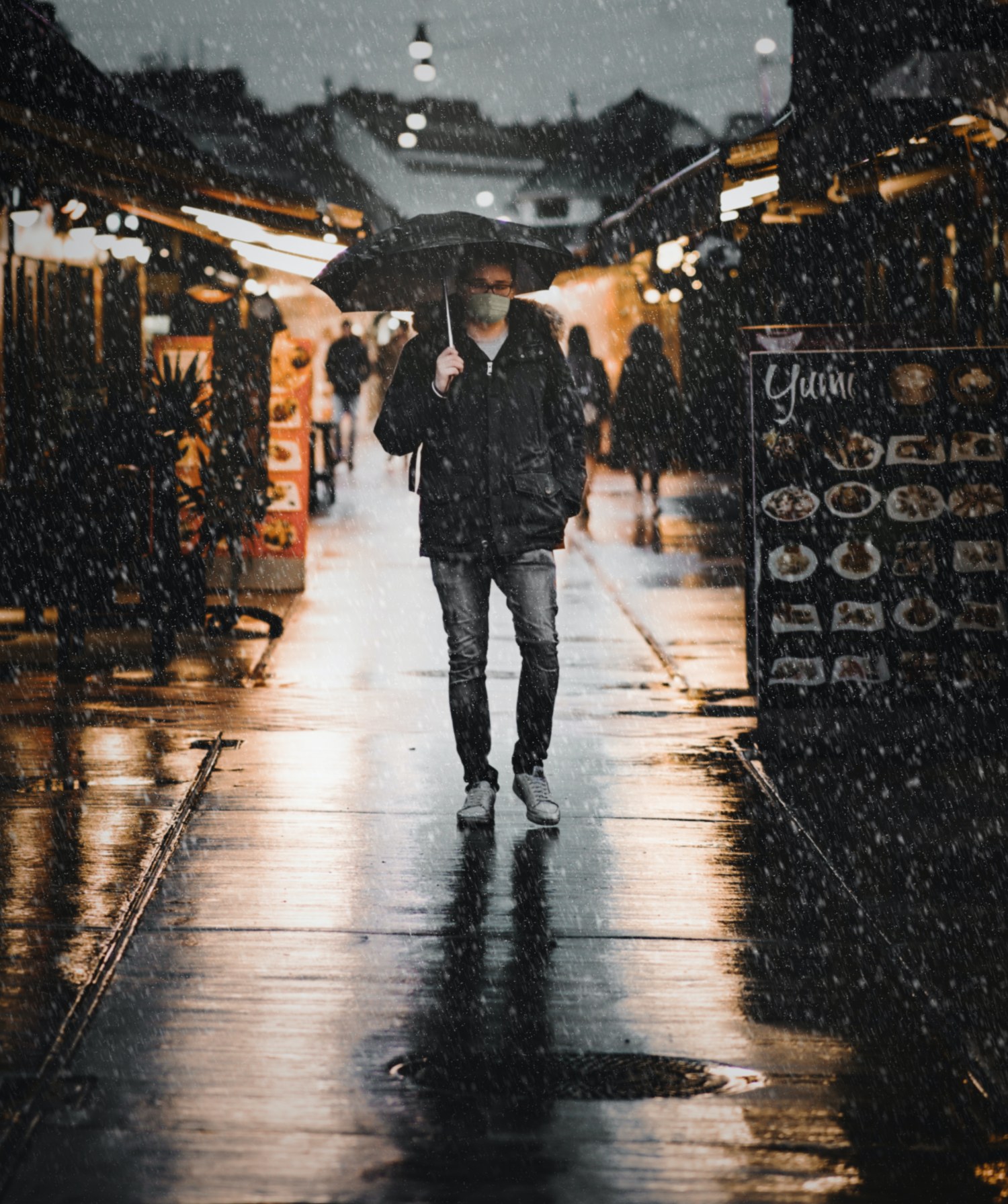
Photo by ???? ?????? on Unsplash
There have never before been so many cameras for street photography at such incredibly cheap prices as there have been this year. While you may think this means it will be really easy for you to pick a street photography camera, what it really means is that you will have an even harder time choosing one because there are so many options.
So, you need to know what to look for in a street photography camera. While many street photographers suggest purchasing a small camera, so as not to be especially noticeable, this is truly just the beginning of the street photography camera features you need.
You’ll want a fast autofocus mode and a fast burst mode, so you don’t miss any important moments. You’ll also want a camera that is lightweight so you don’t get exhausted carrying it around on your neck all day.
One thing that a lot of cameras for street photography don’t have, but should, is an intuitive menu. You don’t want to spend precious time flipping through a menu when you want to be snapping a picture.
In this list of our top cameras for street photography, every camera meets these expectations and more.
Fujifilm X-T3
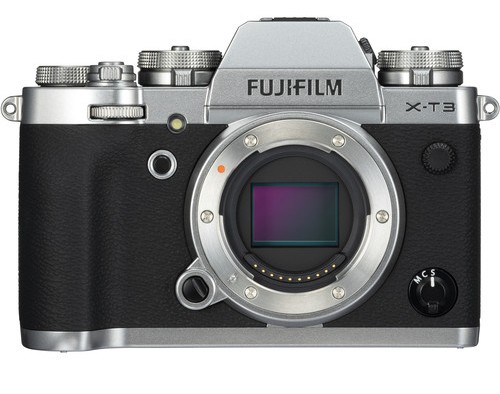
The Fujifilm X-T3 is one of our top cameras for street photography. It looks pretty retro, which lulls people into a sense of security when you whip it out to take photos. What I’m saying is, it definitely doesn’t look intimidating. It mostly just looks like the type of camera your grandpa used way back in the day.
Yet, its capabilities are far beyond any cameras your grandfather might have truly owned. It comes with a 26MP sensor, a 3.69m-dot electronic viewfinder and a large, 3.2” tilting LCD touchscreen.
Its touchscreen is one of the reasons why it's one of our top cameras for street photography. You can use the touchscreen to reposition the AF area even while you are looking into the EVF.
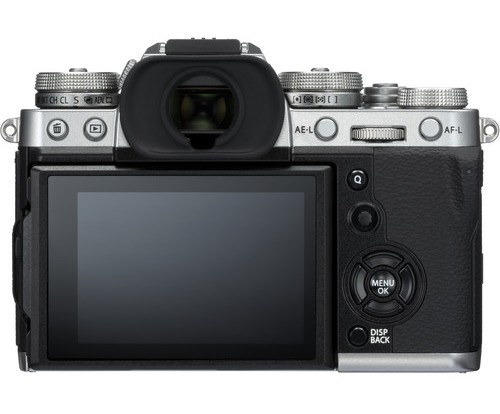
In terms of design, this camera may be a bit small for photographers with really large hands, since its grip isn’t especially pronounced.
But I’m definitely willing to overlook this relatively small problem because of all of the improvements Fujifilm made to this camera. For example, you can connect it to other smart devices via Bluetooth Low Energy support, Wi-Fi, or a USB-C connector.
This is also one of the better cameras for street photography because it comes with a slew of new options for videographers, like a headphone jack and microphone port, as well as two SD card slots.
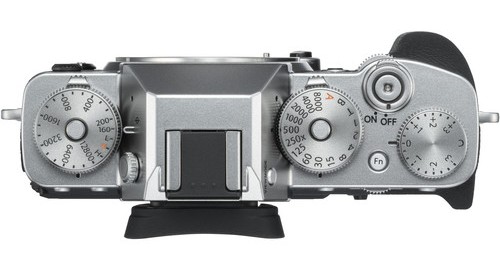
Whereas this camera cost nearly $2,000 when it first came out, its price has dropped considerably since then, especially if you opt to purchase it used.
MPB currently has quite a few of this body available for sale starting at $965.
Sony RX-100 VII
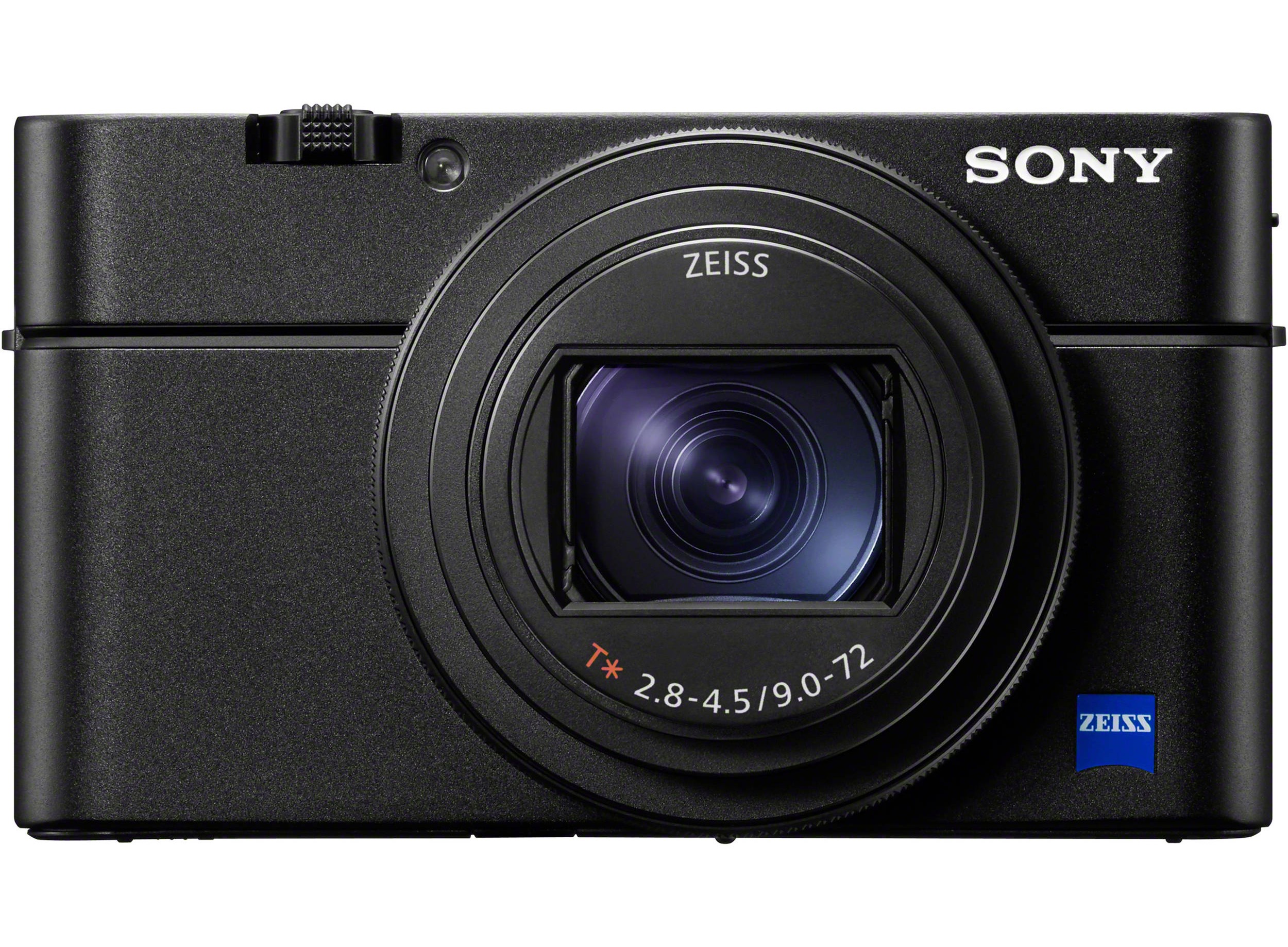
Another one of our favorite cameras for street photography is the Sony RX-100 VII.
The Sony RX-100 VII comes with a slew of great features, like 4K video, a 20fps burst mode, and a 20MP sensor.
The 24-200mm equivalent F.28-4.5 lens allows photographers to do a little wide-angle shooting, or even some telephoto shooting, which can be really helpful with your street shots.
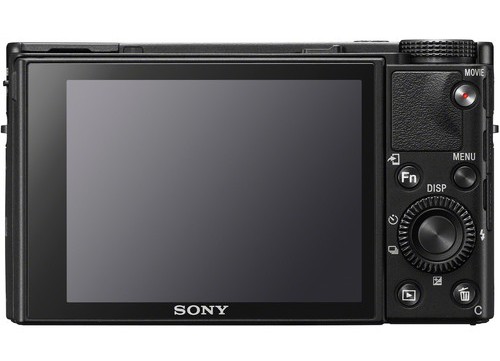
If you’re trying to track a certain subject down the road, this is one of the best cameras for street photography because it comes with a 357 phase-detection and 425 contrast-detection AF system.
It’s also small - really small. It weighs just .67 lbs and is no bigger than 4 inches across, which means you can easily carry it around with you all day without getting burnt out.
Its LCD screen is touch-sensitive and will fold 180-degrees up or 90-degrees down. If you tend to do a lot of vlogging when out on shoots, then you can ignore all of the rest of the cameras for street photography on this list because the Sony RX-100 VII is for you.
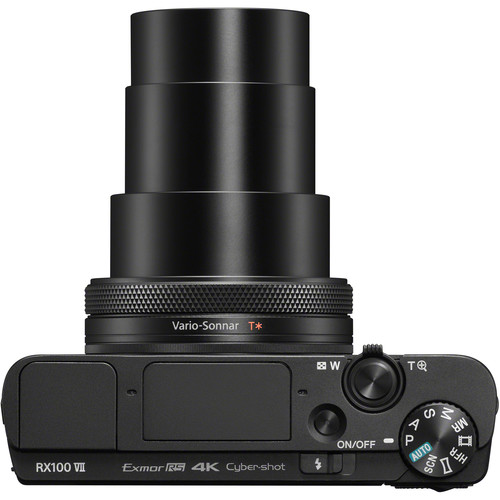
The only big downside to the camera is that, because it is so small, it doesn’t come with any weather protection, so you’re going to need to try to be extra careful to keep it protected.
While MPB doesn’t currently have any Sony RX-1OO VIIs for sale right now, they do have the younger brother, the Sony RX-100 VI for sale for $670.
Learn More:
Nikon Z50
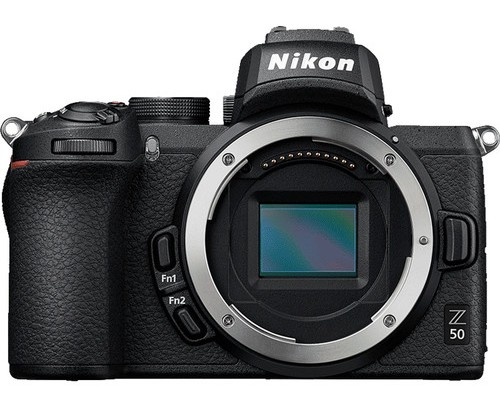
The Nikon Z50 is definitely one of the more popular cameras for street photography on this list.
It's a mirrorless camera that comes with 4K video, 11fps continuous shooting, and is one of the cheaper cameras on this list.
It comes with a 209-point AF system and does really well in low-light shooting because its native ISO range is 100-51,200.
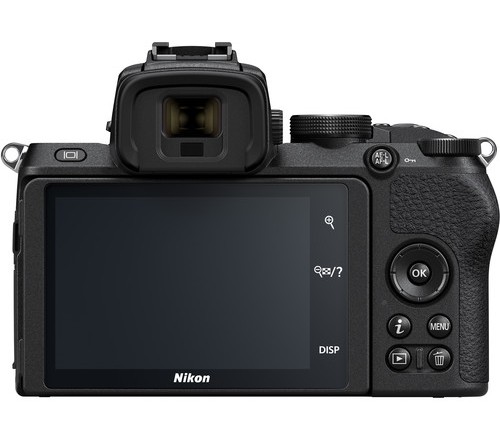
The LCD touchscreen can flip down 180-degrees, and the electronic viewfinder is incredibly clear because it comes with 2.36m-dots.
If you’ve ever shot with a Nikon Z7 before, then the transition to this camera will be quite seamless since it’s essentially a smaller version of that camera. It weighs just 15.7 oz.
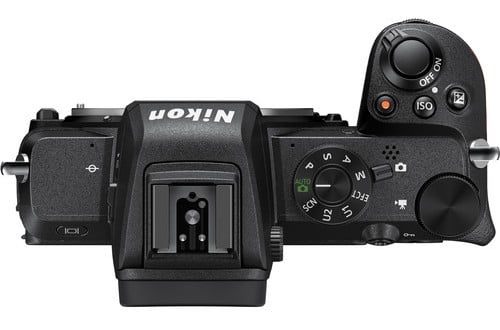
The Nikon Z50 starts at just $670, so it's a phenomenal street photography camera for enthusiast photographers who are just beginning to really explore this niche of photography.
Panasonic LX-100 II
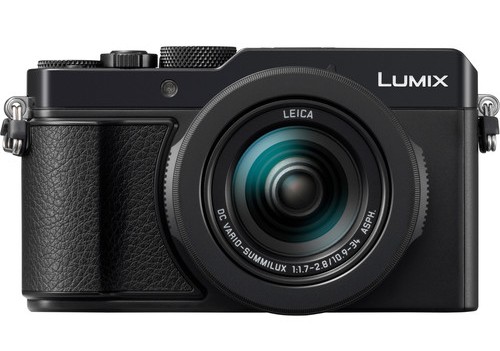
The Panasonic LX-100 II is a really popular travel photography camera, but I think a lot of the features that make it so also translate really well to street photography.
It comes with a 17MP Micro Four Thirds sensor, 4K video capabilities, and a 3” touchscreen LCD. It offers a slightly less impressive burst mode than some of the other cameras for street photography on this list at just 5.5fps, but it makes up for it in price.
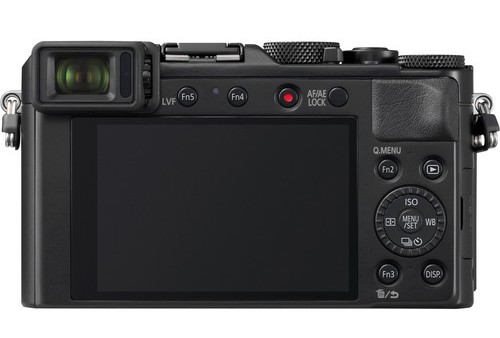
The Panasonic LX-100 II is also one of the cheapest cameras for street photography. You can pick one up on MPB for as little as $620.
Learn More:
We Recommend
Top Cameras for Video

Photo by William Bayreuther on Unsplash
The top cameras for video look very different depending on what you’re trying to shoot.
If you’re trying to shoot action footage you’re going to need a very different camera than if you’re trying to shoot a vlog.
As such, this article is broken down into the most popular videography categories, so you can easily see the top cameras for video for you.
Top Cameras for Video: Action Cams
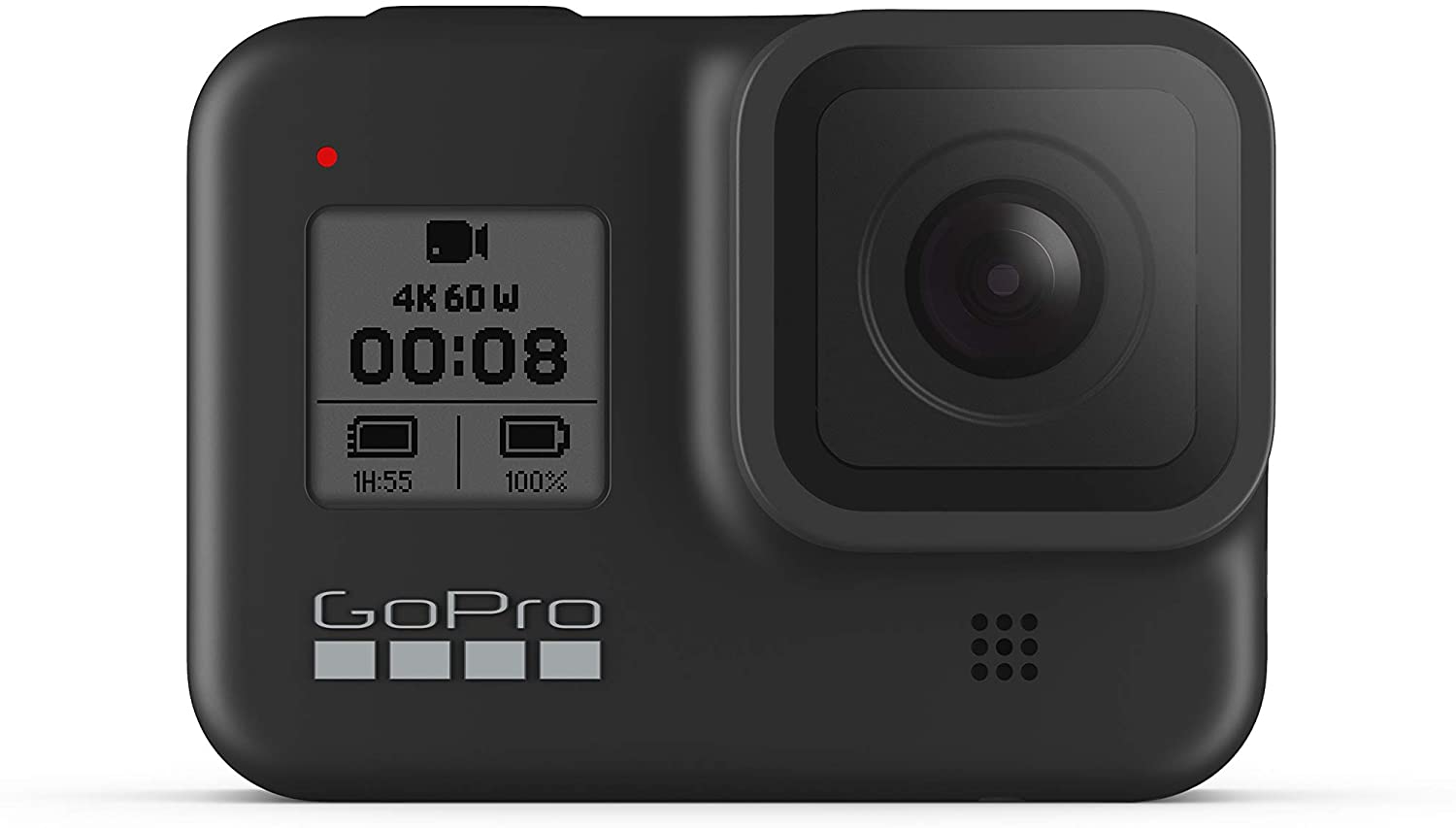
The best action cam for video is typically the GoPro because it’s cheap, effective and versatile. I bought my first GoPro around 5 years ago and never looked back.
The best thing about videos for action is that they’re simple. Typically the top cameras for video are chock full of different features; this is not so for the best action cam for video. It needs to be ready to go at the touch of a button.

But, I truly think the most important feature of a camera meant for action is that it’s durable. There’s no point in buying a camera for action if it isn’t going to be able to take in all of that action, so it should be waterproof, drop-resistant and have a good battery life.
As HowToUsePOVcameras explains in the video above, the GoPro HERO8 Black has all of these features and more. It can last between 1 and 3 hours on a single charge, it shoots 4K video, it’s waterproof up to 30 feet and I’ve accidentally thrown my fair share of GoPros down mountains.
Top Cameras for Video: Drones

Drones are another category in the “top cameras for video” debate where I see a lot of people buying a lot of equipment they don’t need. Drones are expensive enough as is, there’s no need to purchase the most expensive one you can find because oftentimes the best drones for videos for most people are the mid-level ones.
In a way, the best drones for videos are basically only a step up from an action camera.
One of the best drones for videos on the market right now is the DJI Mavic 2 Zoom.

The DJI Mavic 2 Zoom is on the more expensive side, but this is a drone you can grow into. It shoots incredible 4K video, weighs just 2 lbs and has a whopping 5-mile range. I think the 5-mile range alone puts the DJI Mavic 2 Zoom in the running to be one of the best drones for videos.
But, as I said it is expensive at around $1,300 new, so you’ll definitely want to check MPB to see if you can’t snag a used one to save some cash.
Get a complete introduction to the Mavic 2 Zoom in the video above by Evan Thomas.
Learn More:
Top Cameras for Video: Vlogging

Whether you’re looking for the best video camera for YouTube or you simply want to start making videos to put on your social media sites, there’s one place to start and that’s with the Canon PowerShot G7 X III.
This camera features 4K video without any crop, a selfie-screen so you know you’re always
getting the best shot, and a microphone input so you can livestream straight online.

Canon doesn’t have all of the top cameras for video, though, so you can also look to the Sony Alpha A6400 for all of your vlogging needs.
This camera als features 4K video and a selfie screen, but my favorite quality about the Sony Alpha A6400, the quality that I think makes it the best mirrorless camera for video, is the fact that it features Sony's incredible AF system. You can use the Eye-AF mode to ensure your video is well focused.
Top Cameras for Video: Filmmaking

If you’ve been in the videography world for a while, or if you have clients that expect the absolute best of the best, then you may need one of the top cameras for video professionals.
One of the best cameras for video professionals on the market today is the Fujifilm X-T3.
It features 4K video at 60, 50, 30, 25, and 24p (it can also capture Cinema 4K footage at the same speeds). It can capture 10-bit video internally as well. Get more specs on this camera in the video below by Max Yuryev.
The only thing that this camera doesn’t feature is in-body image stabilization, which is going to be coming out with the Fujifilm X-T4. But, if you’re like us then you can view this as a positive too. As soon as the Fujifilm X-T4 drops, the price on the X-T3 is going to plummet.
You can pick up a Fujifilm X-T3 on MPB for as low as $925 right now, which at just $100 more than the Sony Alpha A6400 is an absolute steal.
Learn More:
We Recommend
Top Compact Cameras for 2019
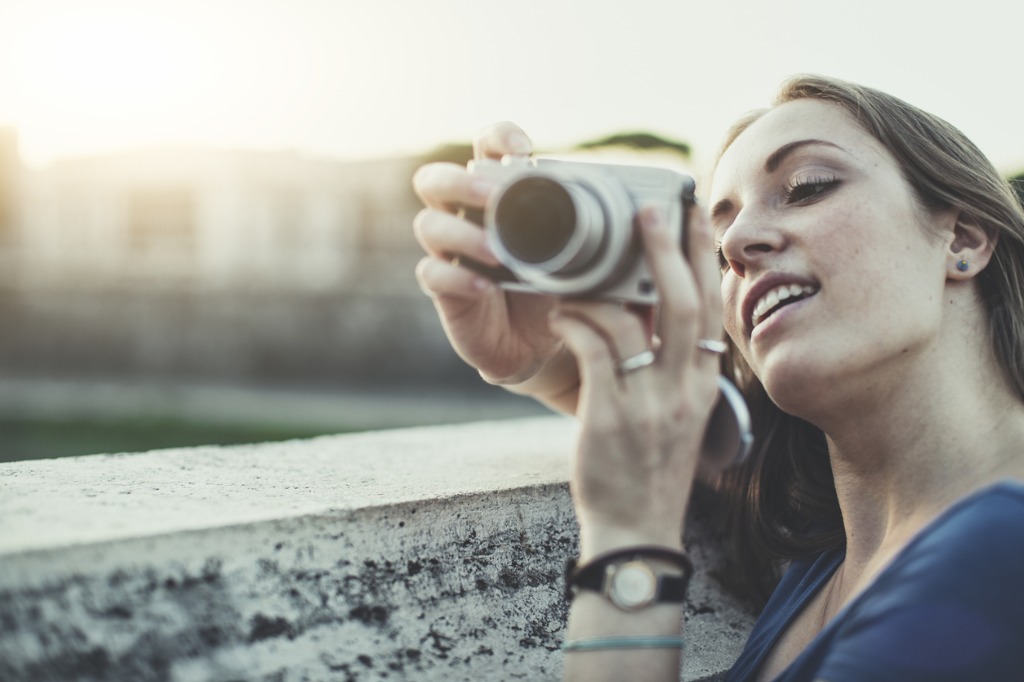
photo bypiola666 via iStock
While I don’t always use compact cameras, they have a way of coming in handy in the oddest ways.
I love my compact cameras for travel, especially, but also for quick product shoots. Plus, when I’m itching to get some new gear, I can buy a new point-and-shoot without breaking the bank.
Now that 2019 is coming to a close, I figured I should do a listicle on the top compact cameras of the year.
Canon PowerShot G9 X Mark II
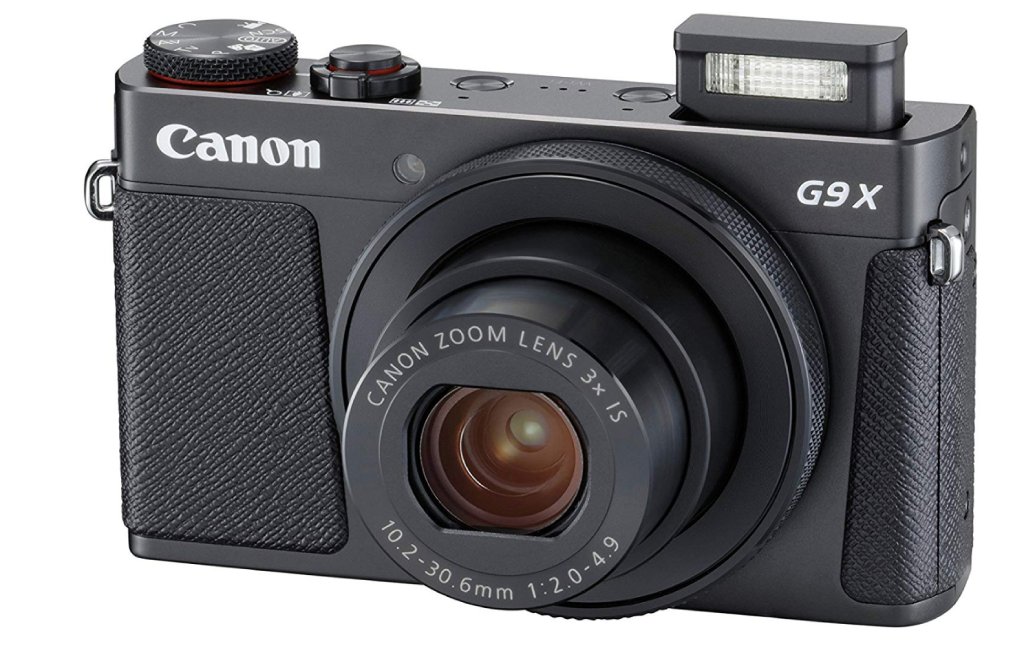
The Canon PowerShot G9 X Mark II is one of the best compact cameras of 2019 because it is a point-and-shoot that comes with a 1-inch sensor, so it’s compact but powerful.
I’m also a huge fan of the antique feel of the Canon PowerShot. Plus, the Canon PowerShot is exactly what photographers talk about when they talk about fully-featured compact cameras.
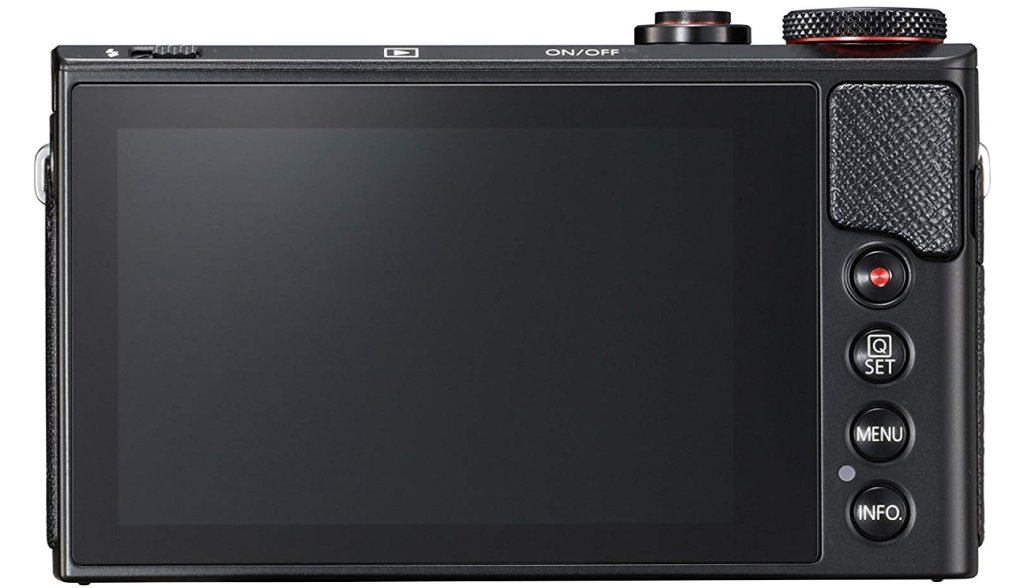
Canon PowerShot specs:
- 20MP sensor
- ISO range of 125-12800
- 3” LCD screen
- 1.04M dot screen
- .45 lbs
- 3.86 x 2.28 x 1.22”
Canon PowerShot Pros:
- Compact (obviously)
- Easy to use, even for beginners
- Minimalist design everyone loves
- Touchscreen LCD
Canon PowerShot Cons:
- No 4K capabilities
- Limited zoom range
You can buy a Canon PowerShot G9 X Mark II on Amazon for $400. While MPB doesn’t currently have any used Canon PowerShots in stock, the great thing about MPB is that they rotate products so frequently, they may have gotten some since the writing of this article.
Plus, even if they haven’t, you definitely want to check MPB out for their other cheap compact cameras.
Fujifilm XF10
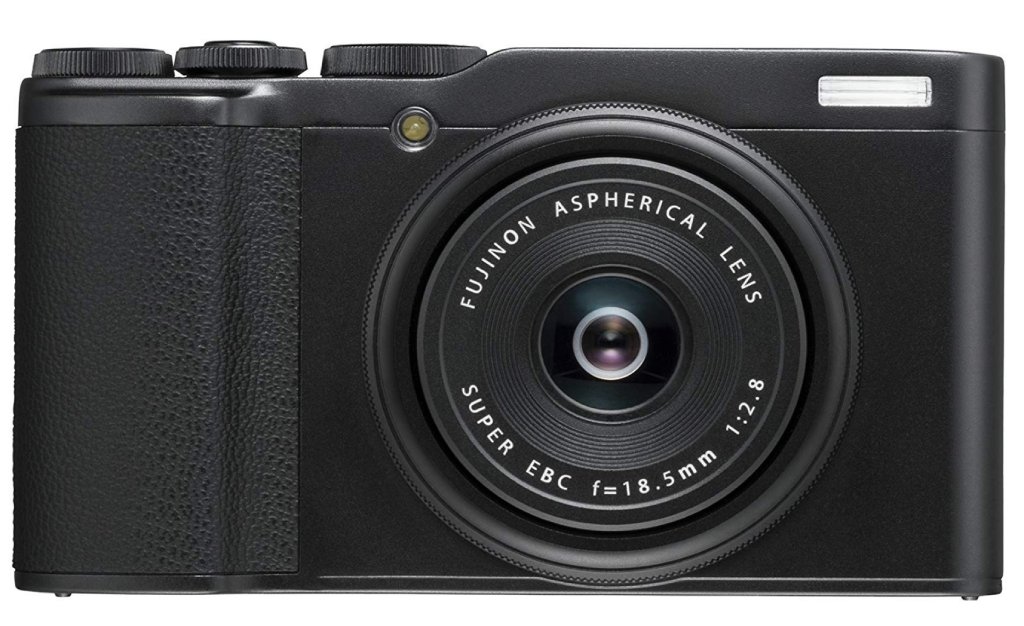
This Fujifilm tops many “best point-and-shoot cameras” lists because it features a crazy resolute sensor for a camera of its size at 24MP.
It’s also one of the most travel-friendly Fujifilms.
But, the best feature of this camera is the fact that it features multiple Film Simulation modes, which beginner and enthusiast photographers alike love.
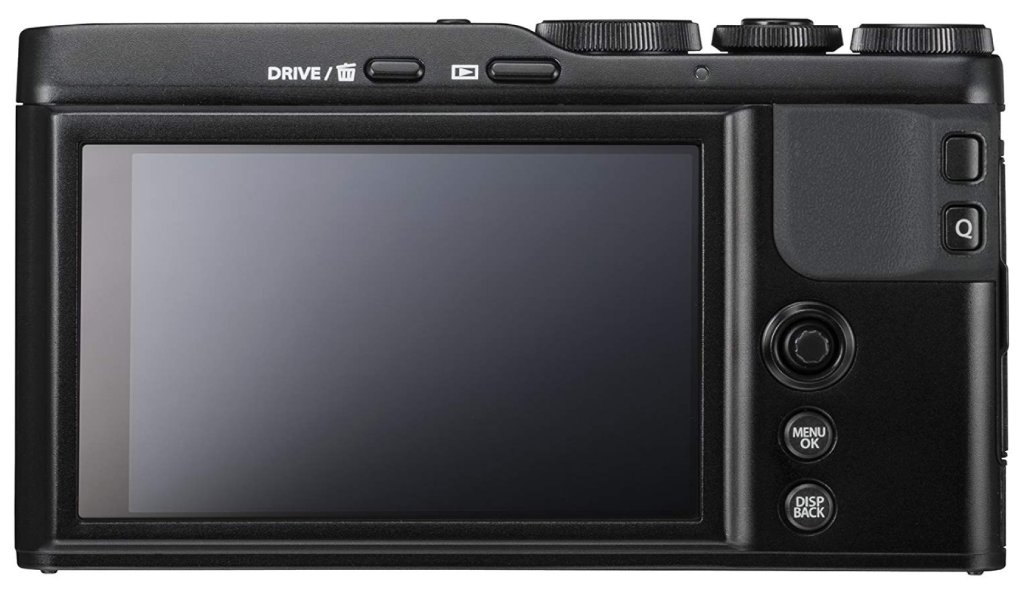
Fujifilm XF10 specs:
- 24.2MP APS-C CMOS sensor
- 3” 1040K dot LCD touchscreen
- 18.5mm f/2.8 fixed lens
- 9.88 oz
- Bluetooth connectivity
Fujifilm XF10 Pros:
- Touchscreen LCD
- Wi-Fi connectivity
- Gorgeously colored photos
- Incredible battery life
- Fixed lens
Fujifilm XF10 Cons:
- Slow AF system
- Fixed lens
I put “fixed lens” on both the pro and con columns because it really just depends upon what you’re looking for in a compact camera.
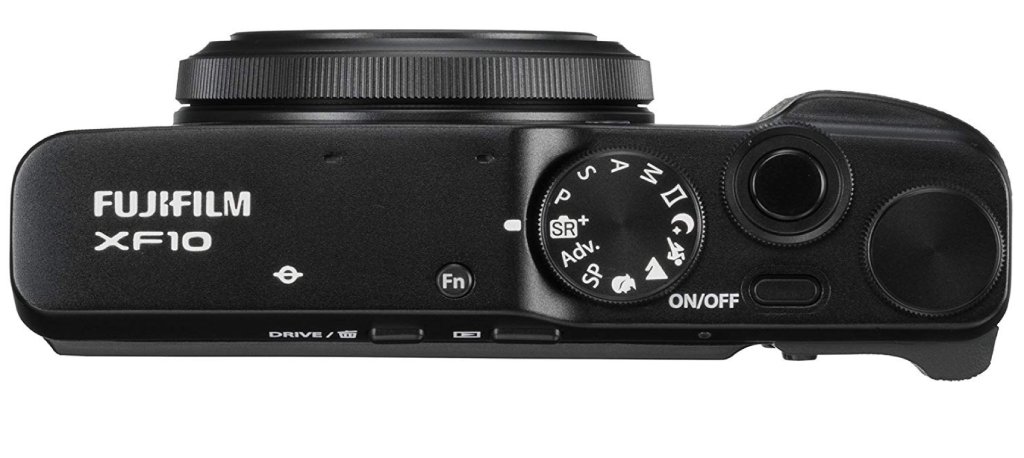
You can purchase the Fujifilm XF10 for $500 on Amazon.
You can also head over to MPB and search through their used Fujifilm XF10 selection to save up to $150.
Learn More:
Sony Cyber-shot RX100 VI
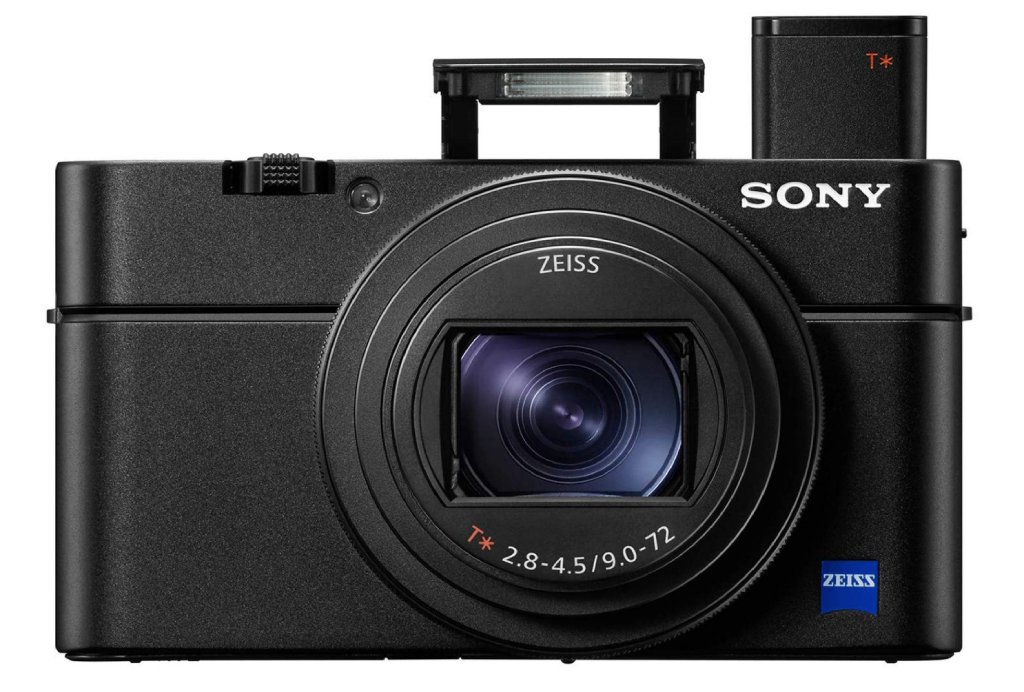
The Sony Cyber-shot RX100 VI is the most expensive compact camera on our list. But, it’s because this Sony is one of the top point-and-shoot cameras of the decade.
It features a 3” tilting screen with 1,228K dots, a 24fps burst mode, and 4K video capabilities.
This camera isn’t for beginners, though.
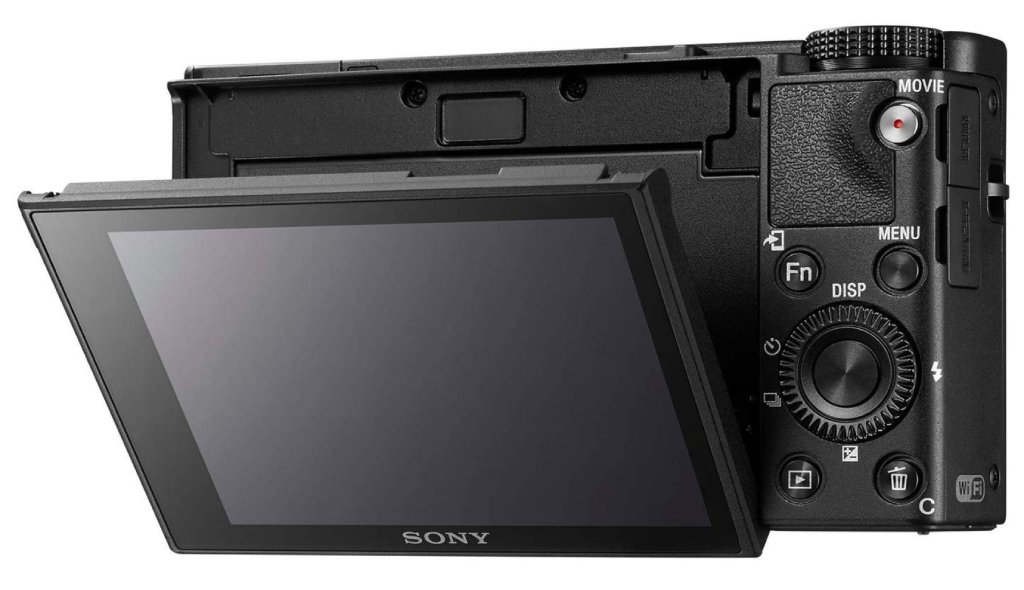
Sony Cyber-shot RX100 VI specs:
- 201.MP 1-inch sensor
- 3” tilting touchscreen
- Electronic viewfinder with a 2.36 million dot resolution
- 24fps burst mode
- 4K video capabilities
- 10.6 oz
- 310-shot battery life
- 315-point AF system
Sony Cyber-shot Pros:
- 4K video capabilities
- 3” tilting touchscreen
- 24-200mm zoom lens
Sony Cyber-shot Cons:
- More expensive than other top compact cameras
- Advanced controls make it a niche camera for more experienced photographers
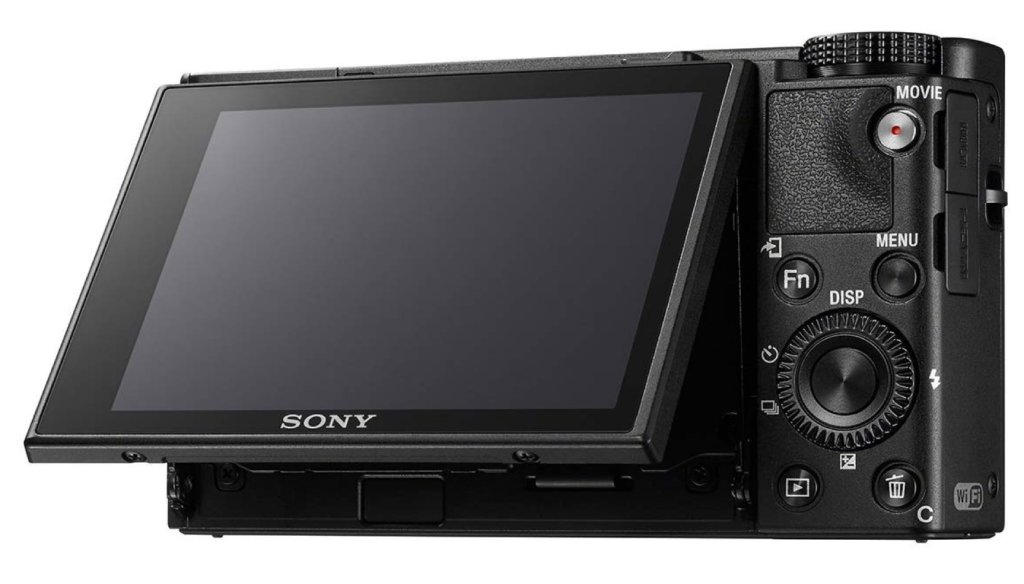
You can buy the Sony Cyber-shot RX100 VI for $1,000 new, or search for a used one starting at $725 on MPB.
Learn More:
We Recommend
Top Lenses for Landscapes with the Sony A7

The Sony A7 series of cameras is, in a word, incredible.
These full frame beasts pack a huge punch but are packaged in a tiny body, making them ideal for landscape photographers.
They're easy to carry around, user-friendly, and there are a ton of lenses available for them for landscape photography.
Let's have a look at a few of my top lenses for landscapes with the Sony A7 series cameras.
ZEISS Batis 18mm f/2.8: A Must-Have Prime Lens

As I noted in this article last week, the ZEISS Batis 18mm f/2.8 is a killer lens that has a boatload of features:
- Focal length - 18mm
- Max aperture - f/2.8
- Lens elements/groups - 11/10
- Floating elements design that minimizes aberrations
- OLED display on the barrel that shows focus distance and DOF
- Dust and weather sealed
- Weight - 11.6 oz
- Dimensions - 3.94 x 3.15"
- Price - $1,499.00 at Adorama

Obviously, many of the features listed above make this a fantastic lens for landscapes.
The 18mm focal length paired with a full frame sensor offers a beautifully wide view of the landscape.
The OLED display on the barrel is a handy feature with its focus distance and depth of field displays to help you get the focus just right.

I'm also super impressed with the weather sealing on this lens - I'm not at all worried about sand at the beach getting into this guy. It's built like a tank!
On top of that, it's small, lightweight design pairs perfectly with the small, lightweight A7 series cameras.
Add in exceptional sharpness and lightning-fast autofocus, and you have a recipe for one of the best Sony lenses for landscapes.
Get a complete review of this lens in the video above by Jay SonyAlphaLab.
Learn more about the ZEISS Batis 18mm f/2.8
Sony FE 16-35mm f/4 Z OSS: A Versatile Zoom
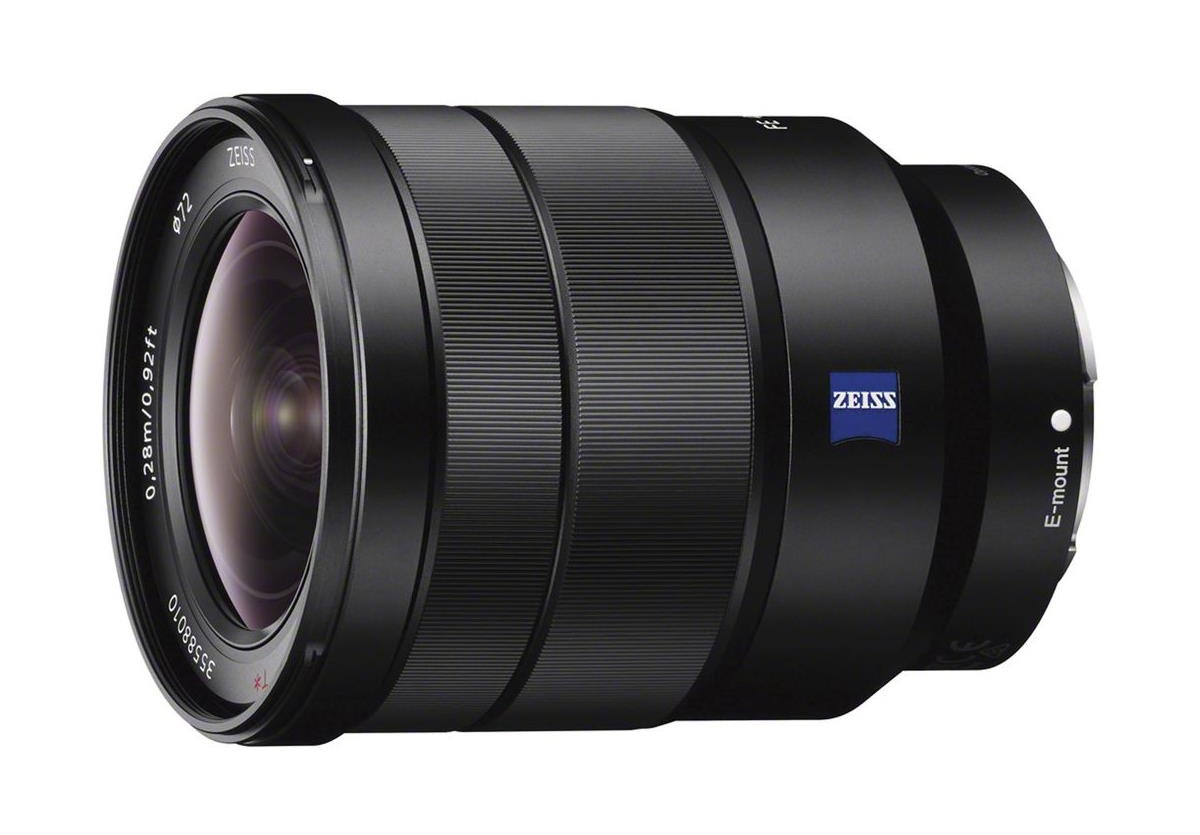
If it's a versatile zoom lens you're after, Sony's own FE 16-35mm f/4 isn't a bad choice at all.
Check out these specs:
- Focal length - 16-35mm
- Max aperture - f/4
- Lens elements/groups - 12/10
- OSS image stabilization
- Dust and moisture resistant
- Weight - 18.27 oz
- Dimensions - 3.07 x 3.88"
- Price - $1,348.00 at Adorama

Obviously, sometimes you need a good zoom lens because not all landscapes are conducive to zooming with your feet.
With a nice zoom range of 16-35mm, this lens will get you super wide shots all the way up to the familiar-looking 35mm range for instances in which you want to cut out clutter or focus the viewer's attention on a smaller aspect of the landscape.
As you'd expect with something made by ZEISS, this lens is supremely sharp with virtually no distortion thanks to five aspherical elements, one advanced aspherical element, and three ED elements. That's just all the more reason why this is one of the top lenses for landscapes with the Sony A7.
Like the ZEISS Batis lens outlined earlier, this lens is small, lightweight, and well built.
It has OSS image stabilization, ZEISS' T* coating that suppresses reflections (perfect for those landscapes with lakes, ponds, and other water features), and is fantastically sharp.
With all those features, why wouldn't you want this lens in your photoshoot camera bag? Plus, it's about $850 cheaper than Sony's 16-35mm f/2.8 version.
For a detailed look at this lens, check out the video above by Christopher Frost Photography.
Learn more about the Sony FE 16-35mm f/4
Sony FE 12-24 f/4 G: An Ultra-Wide Beast

If it's ultra-wide landscape shots you're after, the 12-24mm f/4 G is one of the best landscape lenses for Sony that money can buy.
With specs like those listed below, this lens is ready to rock any landscape:
- Focal length - 12-24mm
- Max aperture - f/4
- Lens elements/groups - 17/13
- Dust and moisture resistant
- Weight - 1.24 lbs
- Dimensions - 3.43 x 4.62"
- Price - $1,698.00 at Adorama

Since this is the shortest focal length lens you can get for a Sony E-mount camera, there's no lens better-suited to capture ultra-wide-angle views of breathtaking landscapes.
True to form, this lens is impeccably crafted and offers top-of-the-line resolution from corner to corner at any aperture.
In fact, you'll find that the refined optics in this lens allows you to photograph scenes with jaw-dropping clarity and sharpness.
This lens is also compact, lightweight, features a handy customizable focus hold button, dust and moisture resistance, and Sony's Nano AR Coating, which suppresses reflections, flare, and ghosting.
See this lens in action in the video above by Mark Galer's Alpha Creative Skills.
Learn more about the Sony FE 12-24mm f/4 G
We Recommend
Top Mirrorless Cameras for 2021
1
Photo by ISO Republic on Unsplash
2021 is the year of the mirrorless. While DSLRs aren’t completely useless (yet), I definitely think the future of photography lies in mirrorless cameras.
If you’re looking for the top mirrorless cameras of 2021, look no further.
This list features all of the best selling mirrorless cameras on Amazon, which means it features a crazy wide array of different mirrorless cameras.
Editor’s note: If you want to upgrade your kit with a mirrorless camera but don’t want to pay new prices, check out the “Buy Used” links throughout this article. These links take you to MPB, one of the largest used gear sites in the world. I’ve bought, sold, and traded-in gear on MPB many times and have had an excellent experience from start to finish every time!
Panasonic Lumix G7
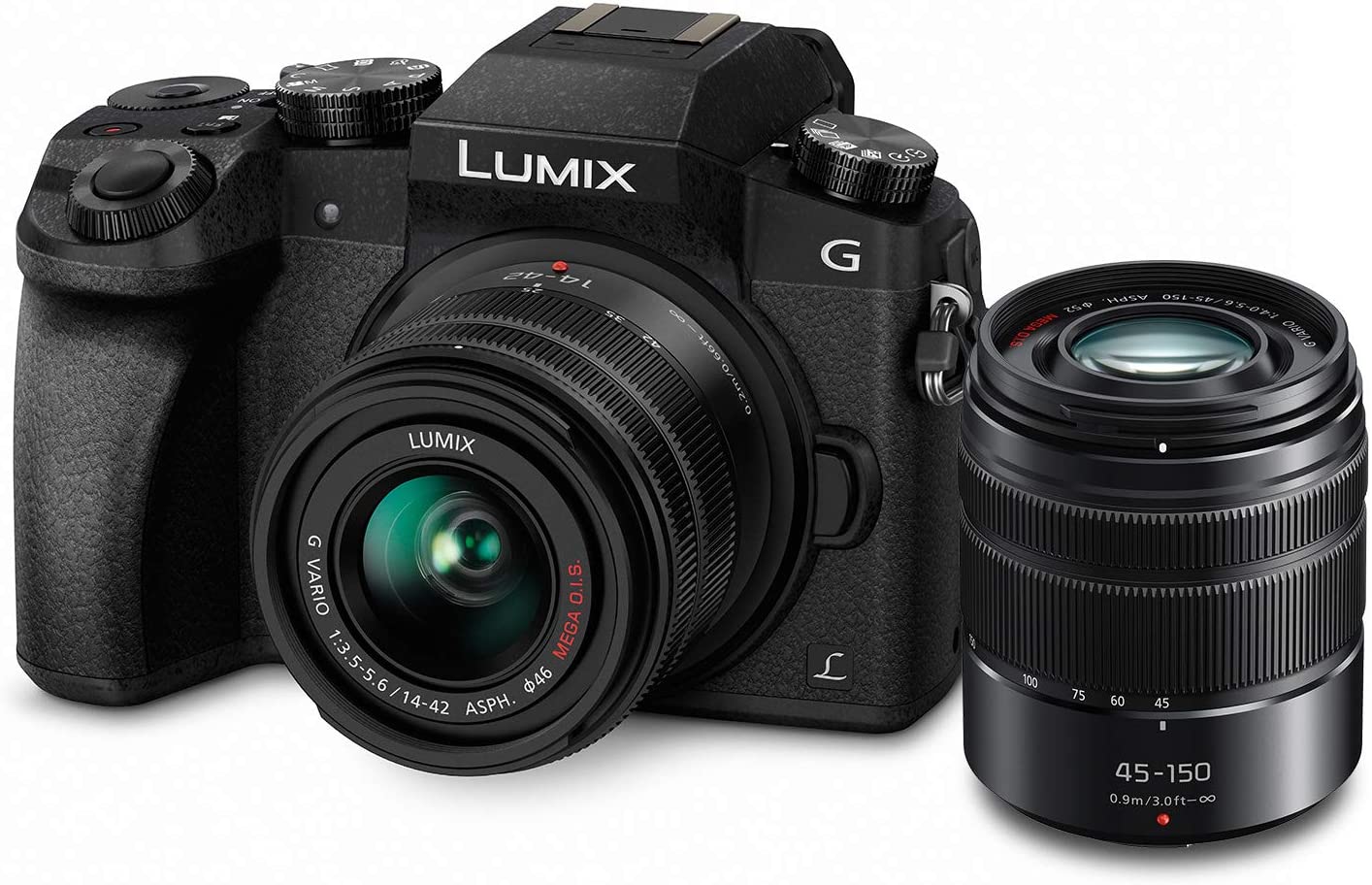
First up is the Panasonic Lumix G7. The Lumix G7 is the number one best mirrorless 2021 (according to Amazon sales, anyway). It is a mid-range mirrorless with the price of a best mirrorless camera for beginners.
The Lumix G7 features a 350-shot battery life, 4K video capabilities, and a fully-articulated touchscreen. With all of these modern features, you won’t need to upgrade for a good number of years.
Panasonic Lumix G7 Specs:
- 16MP sensor
- 4K video capabilities
- 3” fully-articulating touchscreen
- 2.36m-dot viewfinder equivalent
- 7fps burst mode
- .9 lbs
The Panasonic Lumix G7 is really only missing some qualities you would want if you’re going to be shooting in inclimate weather. For instance, it isn’t weather-sealed and there is no in-camera image stabilization.
Canon EOS M50
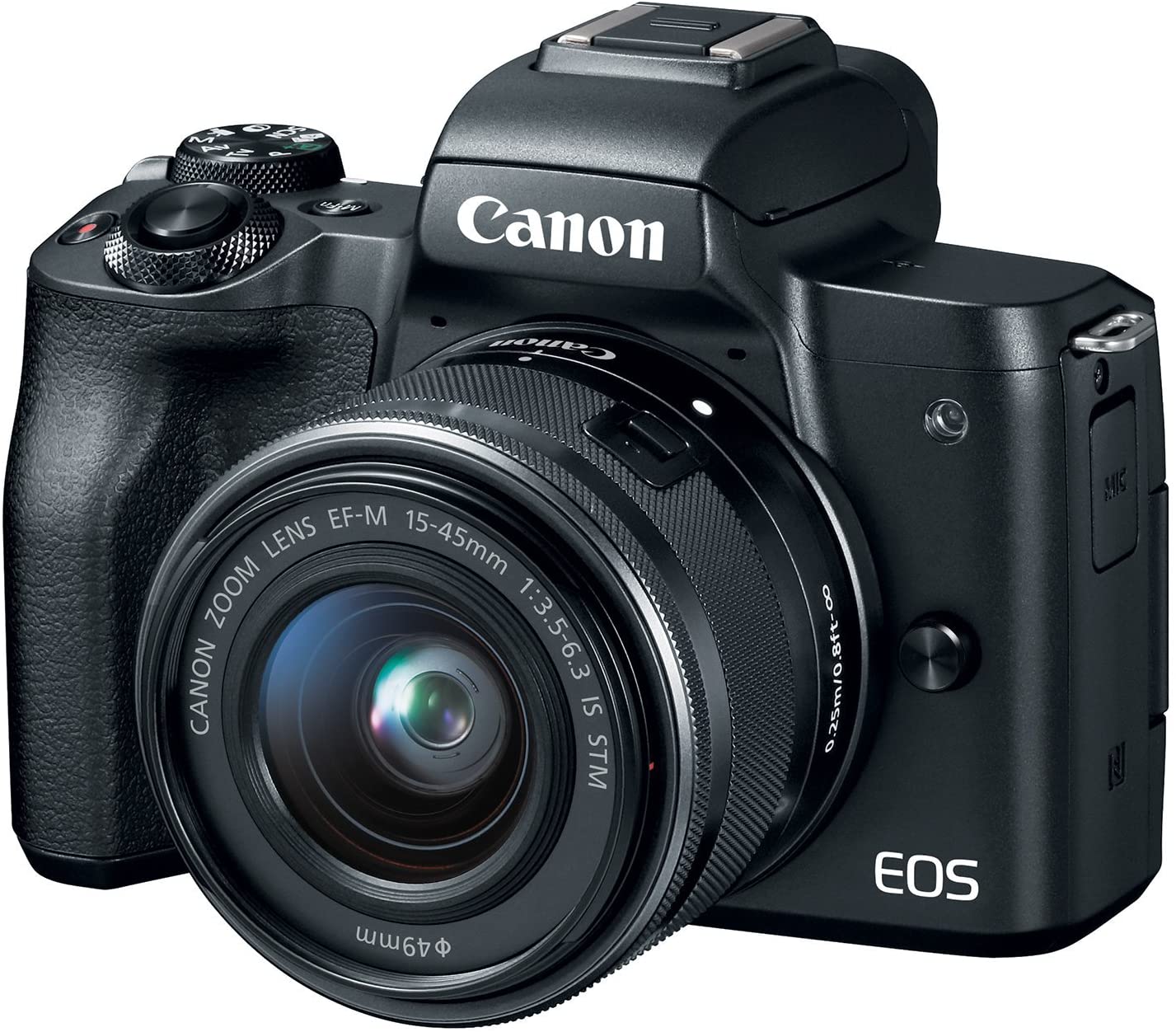
My favorite qualities about the Canon EOS M50 is that it’s comfortable to hold all day, it shoots 4K video and, for the price, it takes excellent photos.
However, it doesn’t feature a wide ISO range for shooting in poor lighting conditions. You’ll also definitely want to buy an extra battery for this camera while you’re looking through the top mirrorless cameras of 2021, since it will die on you if you’ve got a long day of shooting planned.
Canon EOS M50 Specs:
- 24.1MP sensor
- ISO range of 100-25,600
- 10fps burst mode
- 3” vari-angle touchscreen
- 4K video capabilities
- Built-in Wi-Fi and Bluetooth
- 0.39-inch OLED electronic viewfinder
Sony Alpha a6100
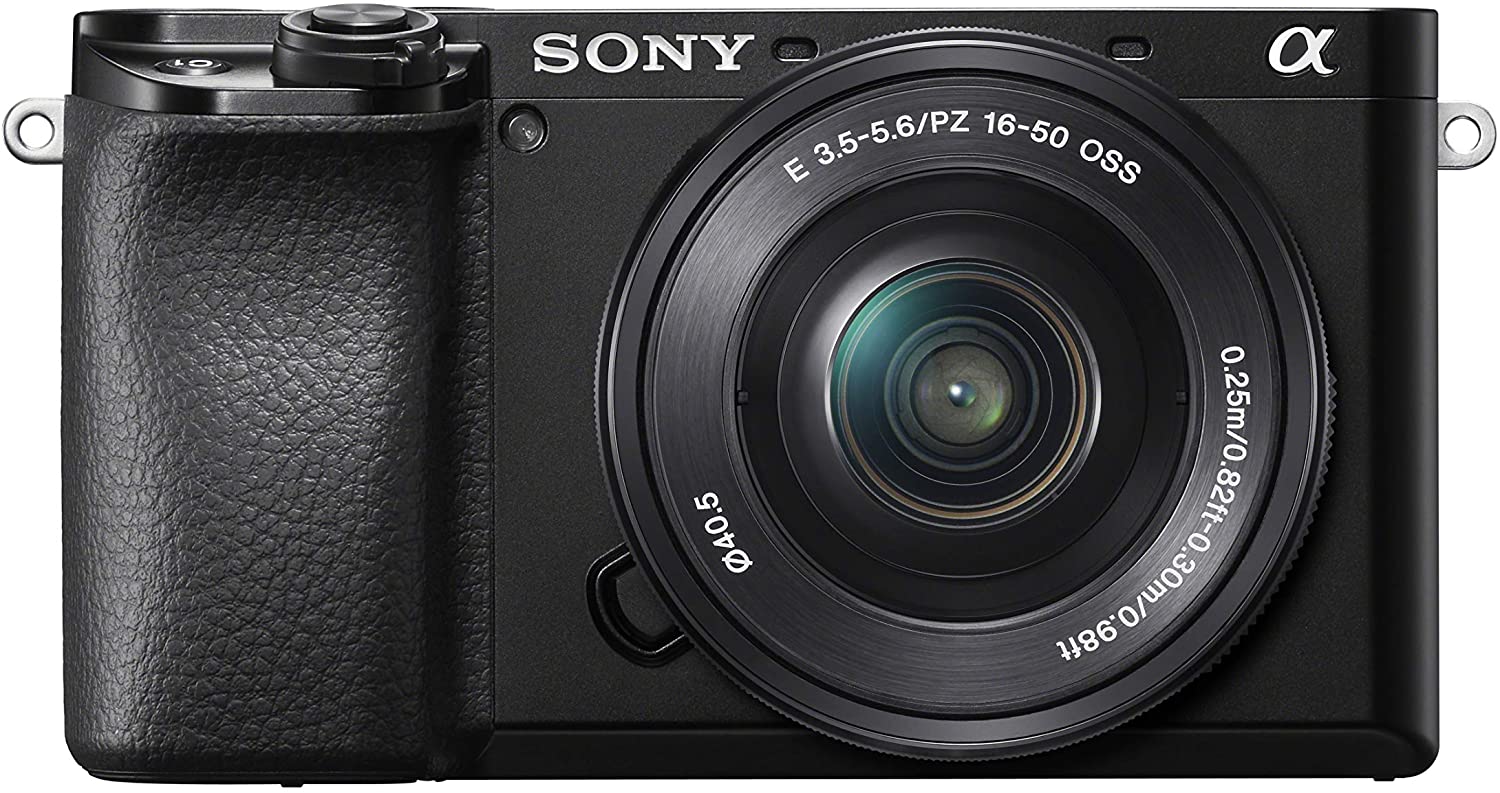
The Sony Alpha a6100 has long been a popular camera for those transitioning to a mirrorless. In fact, I would rate it as the best mirrorless camera for beginners because of how simple it is to use.
It’s no surprise, then, that it made Amazon’s top mirrorless cameras of 2021 list.
The Sony Alpha a6100 is known for its incredible autofocus system, given its price. It also shoots 4K video and features good low light performance and a selfie screen.
Other sony Alpha a6100 Specs:
- 24.2MP sensor
- 425 AF points
- ISO range of 100-32,000
- 4K video capabilities
- 3” tilting touchscreen
- 11 fps burst mode
- Built-in Wi-Fi and Bluetooth
- 1 lb
Sony Alpha a6000
I’m sort of shocked that the Sony Alpha a6000 made the top mirrorless cameras of 2021 list, if only because it came out 6 years ago in 2014. However, it clearly has remained a cult classic.
The Sony Alpha a6100, discussed above, actually served to replace the Sony Alpha a6000, although clearly this hasn’t worked out to Sony’s advantage because people still adore the original.
The Sony Alpha a6000 remains one of the best selling mirrorless cameras because, as Jason Morris points out above, it’s really popular amongst vloggers.
Sony Alpha a6000 Specs:
- 24.3MP sensor
- 179-point AF system
- 3” tilting LCD screen
- 11fps burst mode
- Full HD video capabilities
- Built-in Wi-Fi
- Built-in flash
Editor’s Tip: Join MPB for its #AskMPBAnything content series if you have any questions about photography or videography gear. The MPB will answer as many questions as they can! The goal is to provide photographers and videographers with as many answers as possible while we’re all stuck at home. Follow MPB on Youtube, Facebook, and Twitter to participate!
Sony Alpha a6400
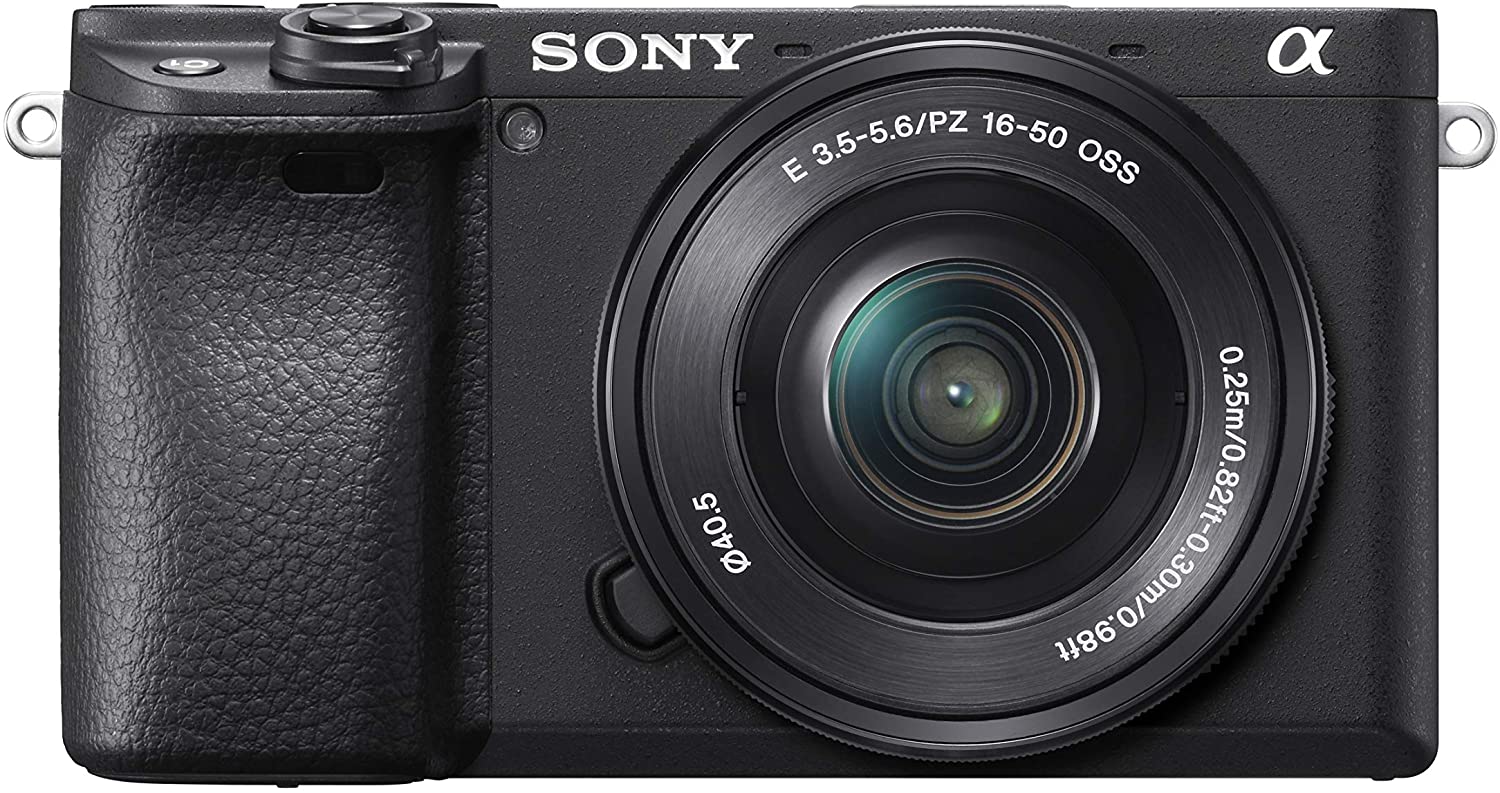
The Sony Alpha a6400 is one of the top mirrorless cameras of 2021 (alongside all of the other Sony Alphas) because it is the perfect mirrorless camera for content creators. Its 4K video is incredible and it comes with a selfie-screen for vloggers.
Again, the AF system on this camera is good (although a bit more complex than the other Alphas).
Sony Alpha a6400 Specs:
- 24.2MP sensor
- 3” tilt-angle touchscreen
- 11fps burst mode
- 4K video capabilities
- 425-point AF system
- Built-in Wi-Fi and Bluetooth
- 360-shot battery life
Learn More:
Sony a5100
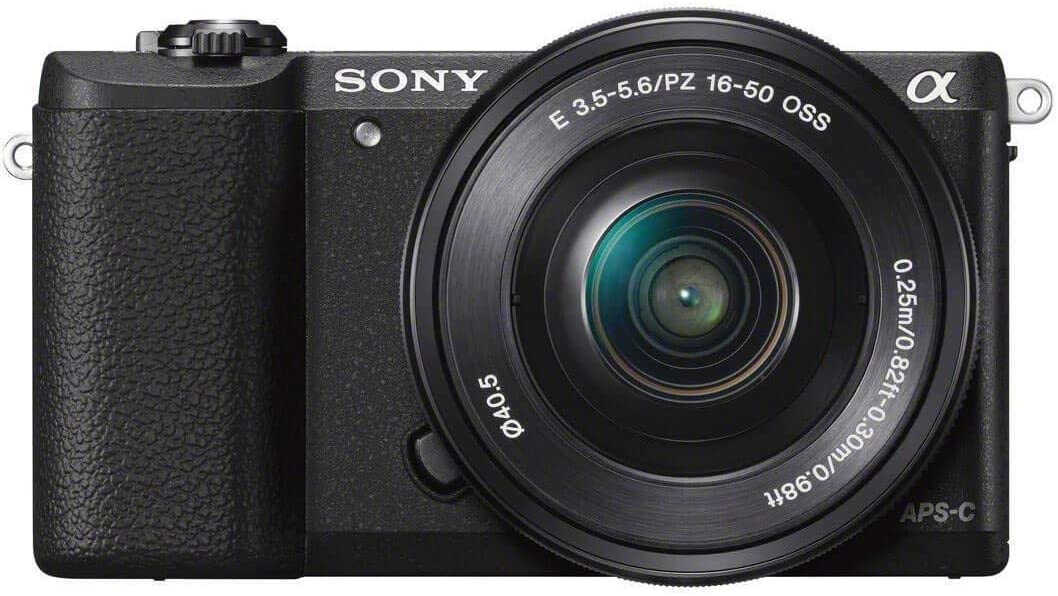
The Sony a5100 is one of the smallest top mirrorless cameras of 2021. It’s also one of the best selling mirrorless cameras because it’s relatively cheap.
The Sony a5100 is good for anyone who is looking for a small mirrorless camera they can carry with them, and features a good dynamic range and a better autofocus system. I don’t know if you’re catching on yet, but Sony is pretty good at creating mirrorless cameras with autofocus systems that can handle pretty much anything.
Sony a5100 Specs:
- 24MP sensor
- 3” tilting selfie screen
- ISO range of 100-25,600
- 6fps burst mode
- Full HD video
- Built-in Wi-Fi
- 400-shot battery life
Sony a7 III

The Sony a7 III is basically a hodgepodge of traits from Sony’s best cameras, like the Alpha A9 and A7R III. It’s got a 693-point AF system and uncropped 4K video capabilities.
But, unlike some of the other top mirrorless cameras of 2021, the Sony a7 III feels durable. Of course, you’re going to pay for that durability so this is not the best mirrorless camera for beginners.
Sony a7 III Specs:
- 24MP sensor
- 3” tilt-angle touchscreen
- 693-point AF system
- 10fps burst mode
- 4K video capabilities
- Built-in Wi-Fi and Bluetooth
- 710-shot battery life
Sony Alpha a6600

The Sony Alpha line basically dominates this “top mirrorless cameras of 2021” list and for good reason. The Sony Alpha a6600 came out in 2019 and offers new features like image stabilization and a weather-resistant build.
But, it still features the same features everyone loved about the line, like 4K video, a tilting touchscreen and an intense battery life of 810 shots.
Sony Alpha a6600 Specs:
- 24.4MP sensor
- 4K video capabilities
- 3” tilting touchscreen
- 11fps burst mode
- ISO range of 100-32,000
- Weather-resistant
- 5-axis image stabilization
Panasonic Lumix G85
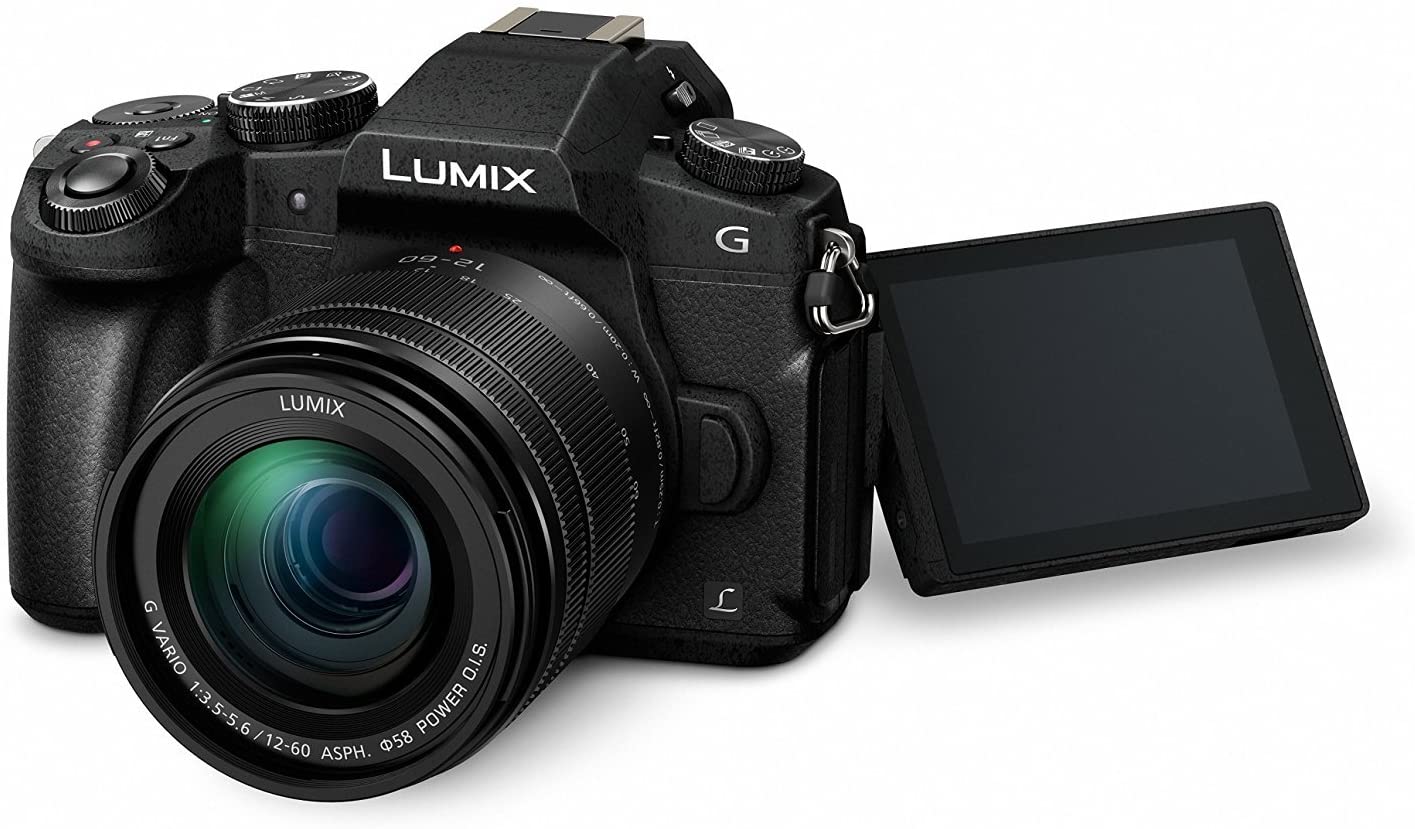
The Panasonic Lumix G85 is a great choice for a mid-range mirrorless because it features some high-tech capabilities, like in-body image stabilization while still being relatively inexpensive.
The Panasonic Lumix G85MK comes in at number nine on the “top mirrorless cameras of 2021” list because, while it is an improvement from the Panasonic G7, it’s also a bit more expensive.
For a thorough comparison of the two cameras, check out this video by Justin Reves.
Panasonic Lumix G85MK Specs:
- 16MP sensor
- 5-axis image stabilization
- 3” articulating touchscreen
- 4K video capabilities
- Splash and dust proof
- 6fps burst mode
- 320-shot battery life
Fujifilm X-T30
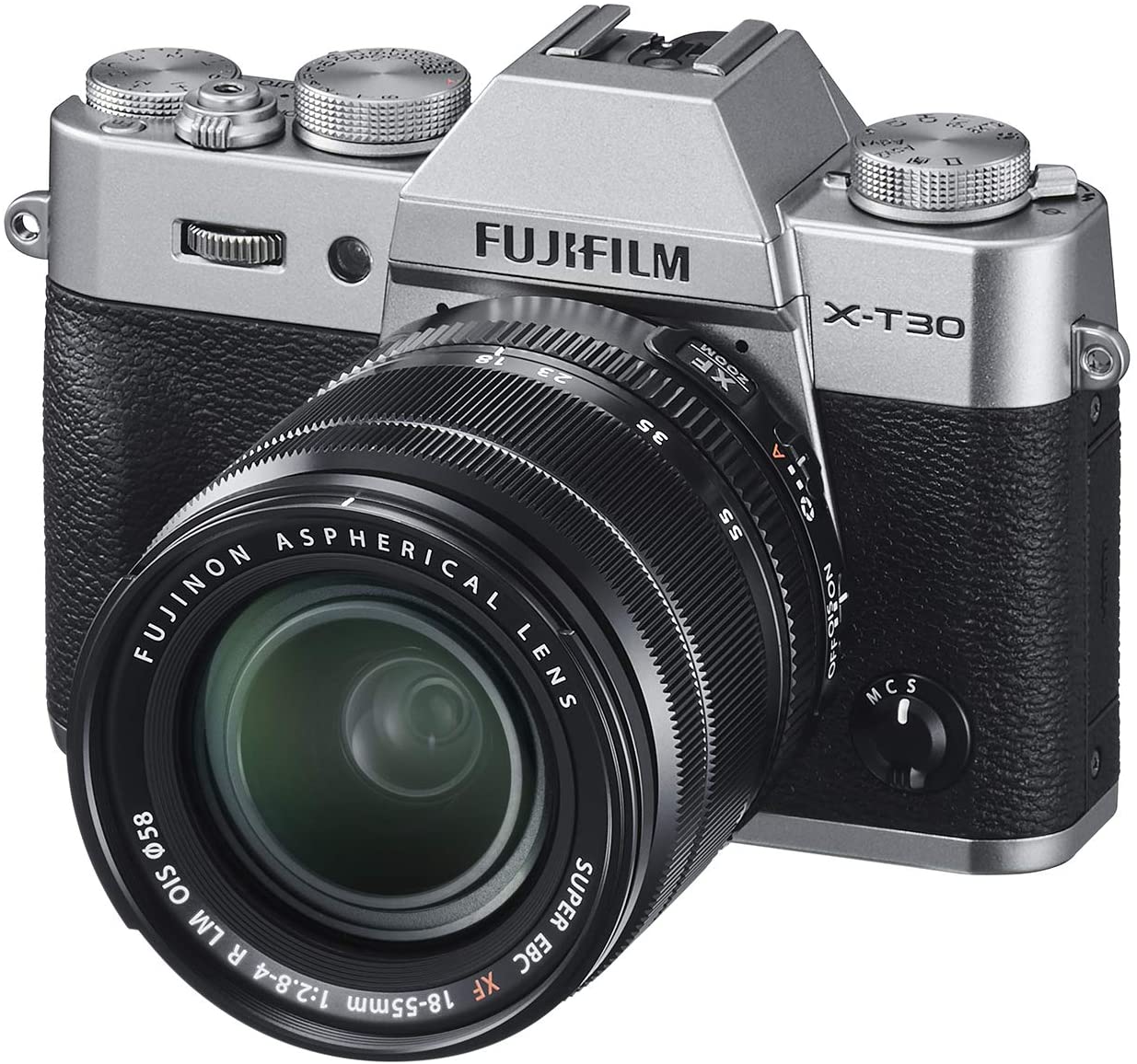
The Fujifilm X-T30 is also one of the better built top mirrorless cameras of 2021. It’s sturdy and I love shooting with it for this reason.
It’s AF system compares with Sony’s Alpha line and it shoots lovely film. It isn’t as comfortable when working with larger glass, which is my one serious concern.
Fujifilm X-T30 Specs:
- 26MP sensor
- 4K video capabilities
- 8fps burst mode
- 3” vari-angle touchscreen
- Built-in Wi-Fi and Bluetooth
- 380-shot battery life
Learn More:
We Recommend
Top Software and Gear Updates That Rocked 2019
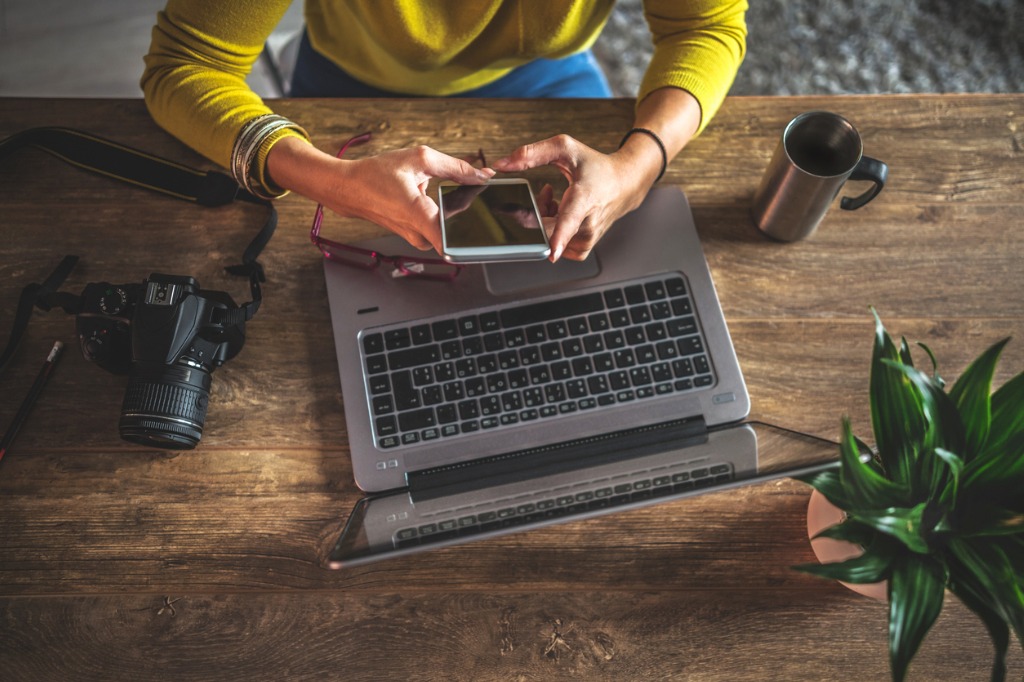
photo byzeljkosantrac via iStock
It was a great year for photography, particularly on the software and gear fronts.
From camera accessories to post-processing software, camera bags to lighting gear, we saw tons of new, updated, and innovative products and services come to market in 2019.
It would be impossible to review everything that rocked the photography world this year, so we’ve done the next best thing and outlined more than a dozen of our favorite updates below.
Luminar 4
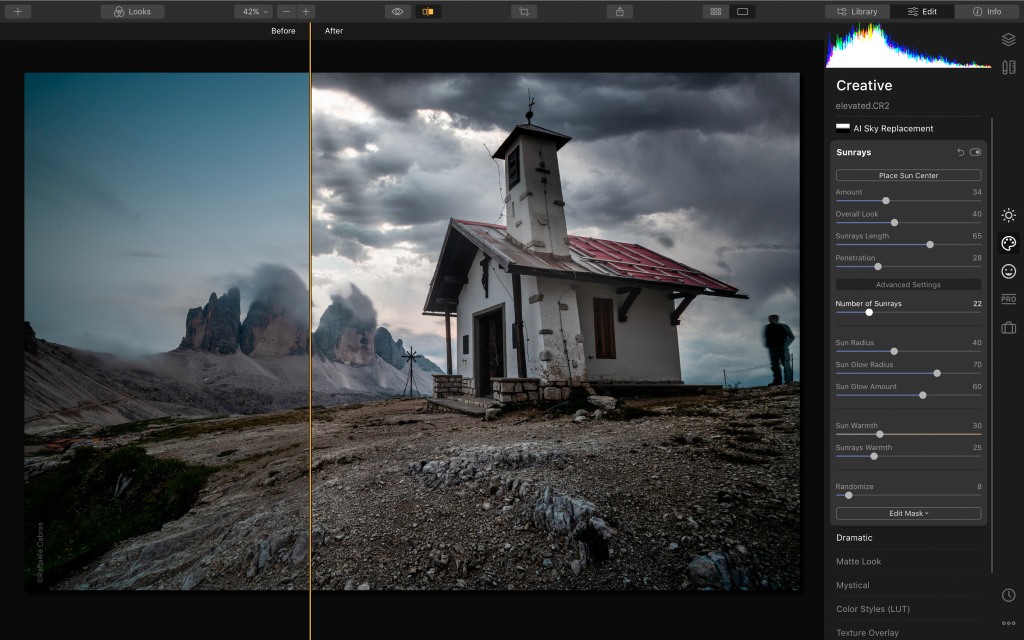
I’ve been a big fan of Luminar going back to when it was called Luminar 2018. And when Luminar 3 came out, I got my copy and began enjoying it immediately.
Now Luminar 4 is here, and with a host of improvements and expanded capabilities, it is the best Luminar yet.
If you’re unfamiliar with Luminar, let me give you a quick overview…
It’s chock-full of revolutionary tools that help you create better photos, faster.
That’s thanks in large part to artificial intelligence that drives easy-to-use tools that streamline your workflow yet still give you pinpoint control over how your images look.
Joining tools like the Accent AI Filter and the AI Sky Enhancer from Luminar 3 is a suite of new AI-powered tools that take image editing to a whole new level.
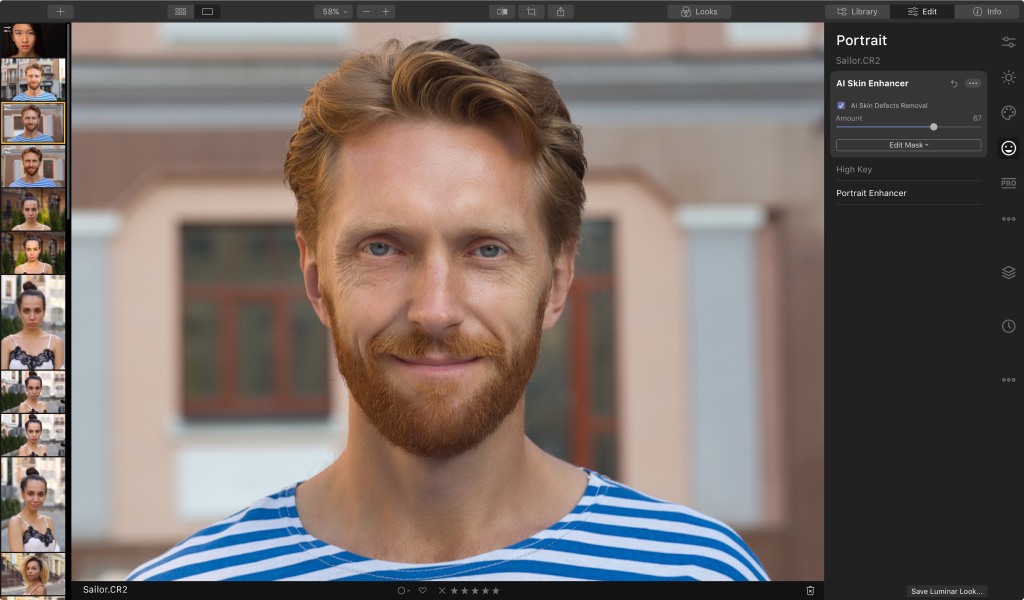
For portrait enthusiasts, the AI Skin Enhancer and Portrait Enhancer tools will revolutionize the way photo editing is done.
Using human-aware technology, the AI Skin Enhancer detects all the skin in a photo, smooths it out, removes blemishes, and does so while preserving the texture of the skin, pores, and hair.
It takes just one click to apply the Skin Enhancers edits, and then with a single slider you can adjust its strength for a picture-perfect result.
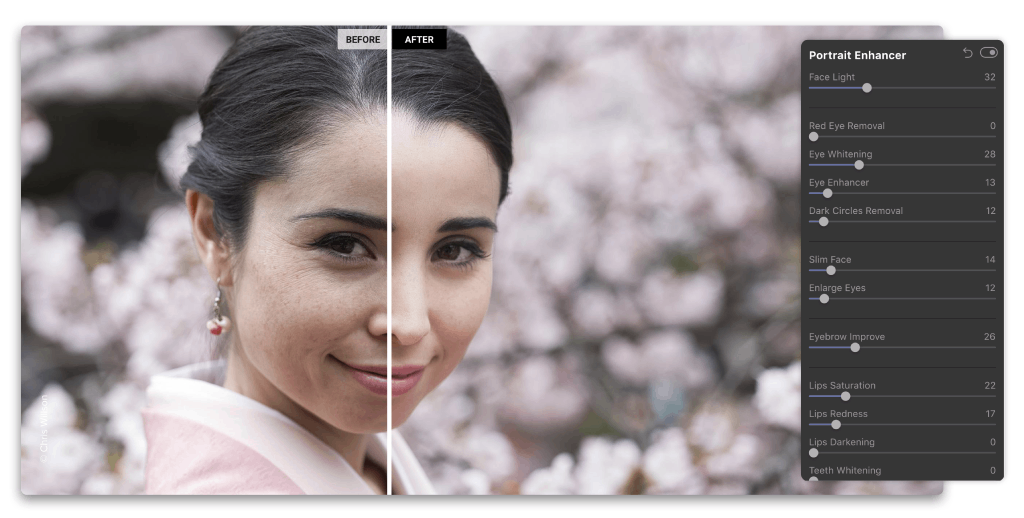
The AI Portrait Enhancer gives you a host of tools to quickly and easily make detailed changes to portraits, like whitening teeth and eyes, removing dark circles under eyes, and removing red eye, just to name a few.
In all, the Portrait Enhancer includes twelve revolutionary tools that turn editing portraits into a process that takes a minute or less!

Luminar 4 has some goodies for landscape photographers as well.
Primary among them is the AI Sky Replacement tool.
As its name suggests, this tool replaces the sky in your photos automatically - there’s no masking or selections to be made on your part.
The selection algorithms work so well, in fact, that it knows to exclude leaves, grass, and animals from the sky selection.

Not only that, but this tool relights the entire image, that way the foreground matches the brightness of the new sky.
It’s advancements like this that make Luminar 4 one of the most powerful, easy-to-use editing programs on the planet today.
Need more convincing? Get Luminar 4 today and see for yourself!
Hakutatz Pocket Size RGB+AW LED Light

Gone are the days when you have to lug around huge lights to get the key light or fill light you need for awesome portraits.
Instead, companies like Hakutatz have developed powerful pocket-sized LED lights that give you the power to customize the type of lighting to your specific needs.

This particular light has RGB, amber, and white LEDs, so you can add accent colors to your photos and videos or dial in the ideal white balance by using the amber or white lights.
This light is completely adjustable, with controls for saturation, brightness, and color temperature. Better still, you can adjust the light’s settings via a well-designed and user-friendly smartphone app.
That means that with a simple touch or a swipe of your finger, you can fine-tune everything from the RGB color to special effects. You can even control multiple lights at the same time right from the app. No wonder their Kickstarter campaign was such a huge success!

Hakutatz literally puts the power to dial in complex lighting schemes in the palm of your hand, and does so in a way that’s clean, simple, and super functional. That’s by this little light rocked the photography world in 2019!
Be on the lookout for Hakutatz’ online store to have these lights in stock in December!
Learn more about the Hakutatz Pocket Size RGB+AW LED Light
Hazard 4® Cyclone™

Framing shots with your action cam in direct sun can be frustrating; glare in your eyes and the camera’s tiny, reflective screen are really fatiguing. Blowing sand, water or snow don’t help. But the best action is shot outside - Cyclone™ is the first real solution.

This patent-pending optic blocks the sun, but it’s lens also magnifies the screen and protects it. You effectively add mirrorless camera style composition and review to your tiny affordable GoPro or DJI action cam that survive where real mirrorless can’t. Better still, the viewfinder mounts to your action cam’s bottom screw in seconds, so there is no fumbling. But you’ll probably choose to keep it on since this little guy doubles as a tiltable handle - keeping fingers out of frame and for extension. With cheap additional hardware you can even head mount it for hands-free composition while biking, paragliding etc, and it tilts out of the way at will.


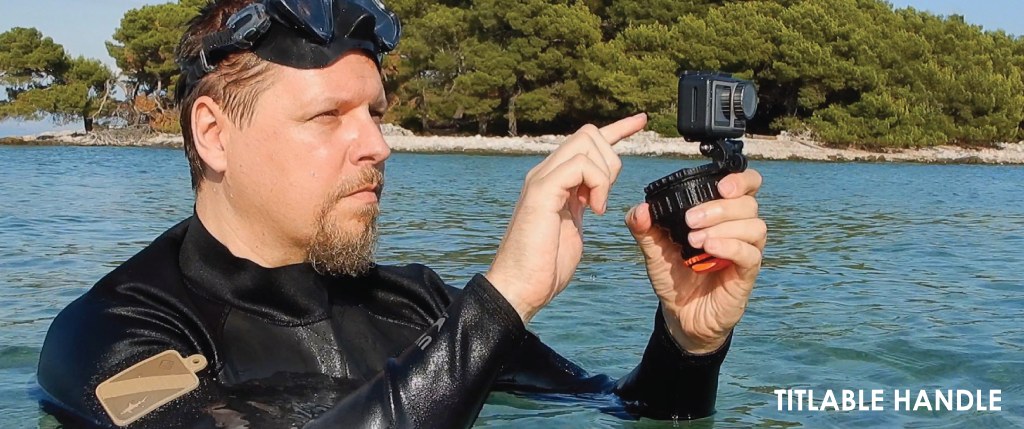
The simple, waterproof, tough, design accordions flat for easy portability and flattened can be a selfie mini tripod. It has diopter focus - even helping out ageing eyes. The high-vis cap self closes to protect the lens. And you get a tether loop action cams don’t include.

Hazard 4® has a reputation for innovating outdoor photo accessories; the Cyclone™ is no exception. As usual they have gone above and beyond to design a multi-functional, easy to use bombproof solution to a common video shooter problem. Perhaps this may push GoPro® or DJI® to finally up the resolution on their LCD’s under magnification and drive the mirrorless wars into the action cam space. Either way, you don’t have to rely on the wide angle lens for your framing anymore- you can actually compose like a pro.
This device is currently on Kickstarter, with a fund date of January 7, 2020. Head over to Kickstarter now to learn more about this device.
The Camera Pack by Nomatic and Peter McKinnon

Billed as a “functional camera pack for all types of travelers,” the Camera Pack by Nomatic and Peter McKinnon is certainly worthy of inclusion on this list.
The Kickstarter campaign to fund this pack had a goal of $100,000. It raised nearly $2.3 million. That speaks to the reputation of Nomatic and Peter McKinnon!
This bag is ridiculously well designed and has a functionality level that’s off the charts.
It’s designed to cure the woes of travel photographers who have to have one bag for their gear and another bag for their personal items.
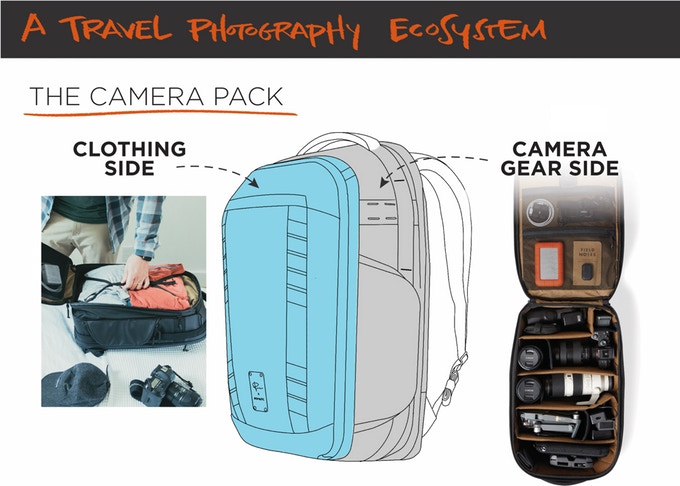
The Camera Pack solves this problem by having a clothing side and a gear side which are separated by an interior panel. This keeps everything neat and tidy so you aren’t rifling through the entire back when you need something.
Better still, the bag has a “Cube Pack” inside, which serves as the ideal organizational module within the interior ecosystem. However, as the gif below shows, the Cube Pack converts to a daypack, so if you need to run and gun a little, you don’t have to take the larger Camera Pack with you. Ingenious!

Overall, the Camera Pack can hold 35 liters of gear, but can be expanded to accommodate up to 42 liters of gear. That’s a lot of stuff! And with a full clamshell opening, you can see all the gear you’ve stowed away with ease.
And everything is neatly organized thanks to a main camera compartment with moveable interior dividers. There’s a sleeve for your tablet, pockets for your camera accessories, and quick side access for easy retrieval of gear, too.

On the clothing side, there’s compression cubes for your clothes, compression straps to keep everything where it should be, and more pockets for smaller items.
This is just a really well designed and impeccably built backpack. And with the input of a photography expert like Peter McKinnon, you know that it’s been designed with photography needs in mind.
Learn more about the Camera Pack by Nomatic and Peter McKinnon
GearFocus.com
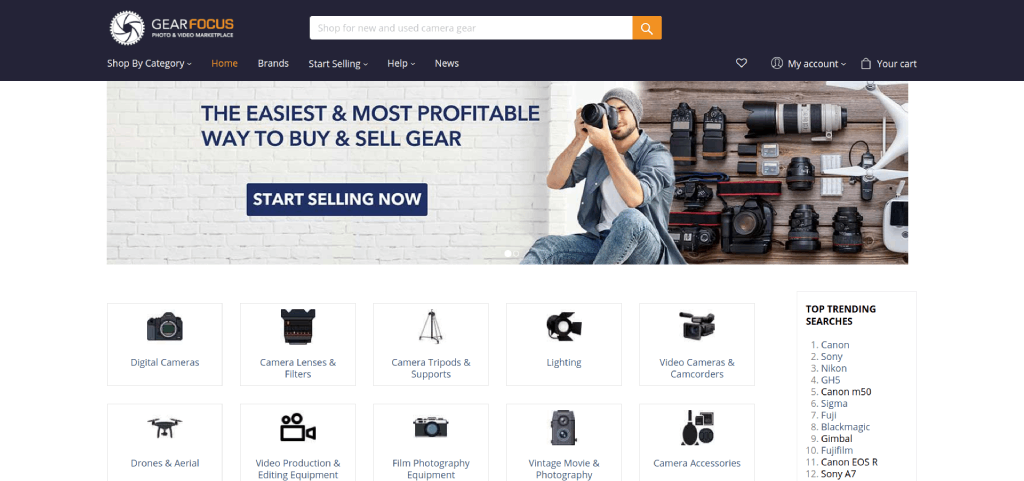
If you buy and sell your used photography gear on places like Craigslist, you’re doing it all wrong.
That’s because there are much better alternatives that take the hassle out of buying and selling used gear. GearFocus.com is certainly one of the best.
One of the top reasons GearFocus makes our list of the Top Software and Gear Updates is because they focused on building a community where people like you and I can buy quality used gear and get fair market value for stuff we sell.
Unlike other used gear sites, GearFocus doesn’t take a giant chunk of your profits when you sell your gear. Instead, they offer the lowest seller fees among B2C and C2C marketplaces, which means more money in your pocket when your item sells.
Additionally, GearFocus ensures each transaction is safe and secure by screening and monitoring every single post and transaction. Gear Focus was made by creatives, for creatives and they’ve been in this business long enough to be able to spot suspicious listings and red flags from a mile away. Without scammers creating fake listings, the buying and selling experience is enhanced so you can get the best deal on used gear and the most money for the items you sell.
Heck, they’ll even intervene on your behalf if something goes wrong! Having that kind of peace of mind alone is enough to land these guys on this list!
It’s not often that you find companies like this that prioritize community building and supporting one another over making a buck. That focus on customer service is just the icing on the cake for patrons of GearFocus. They are here to help FEED YOUR PASSION!
Learn more about GearFocus.com
Litra Studio
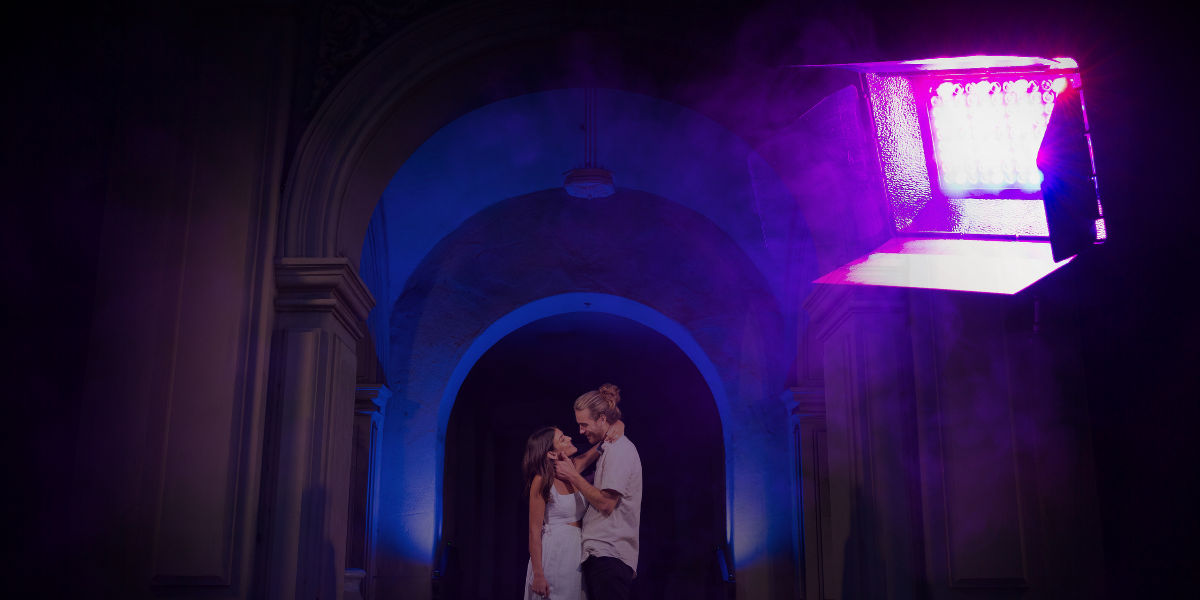
To say that the Litra Studio is powerful is an understatement.
Weighing in at just 33.5 ounces and measuring 5.5" x 3.9" x 2.9", the Litra Studio is certainly easily transported without taking up a ton of space in your camera bag.
But don’t let its small size fool you - this light can produce over one million unique colors that will help you light up your portraits and videos.

The Litra Studio can produce up to 3,000 lumens of continuous light and up to 6,00 lumens of flash. In CCT mode, you get 2,000-10,00K adjustable bi-color lighting with green and magenta color shift controls to allow for tunable blue and green screen optimization.
On top of that, this light is fully tunable and dimmable, and offers CCT, HSI, RGBWW, gel presets, flash modes, and effects, too.

The light it produces is clean and flicker-free at all shutter angles. The CRI and TLCI of 97 speak to its impeccable color accuracy.
Litra even made sure this light is rugged and durable. It’s waterproof, has highly efficient passive thermal management, and offers up to 20 hours of battery life on the low setting.
That makes this a go-anywhere, do-anything light that made huge waves in the photography world this year.
Learn more about the Litra Studio
GoPro HERO 8

While the GoPro HERO 8 doesn’t boast any major updates, it does represent a culmination of a wide range of smaller updates that, taken together, make it the best GoPro thus far.
In fact, I’d say this is the most innovative and user-friendly GoPro yet.
It has built-in mounting pins so you can directly mount the camera to accessories rather than needing a frame to do so.

There are built-in digital lenses for multiple field of view settings from Narrow and Wide to Linear and Superview. The camera’s physical lens cover is not not removable and it twice as strong as those found in older models.
Also on the ease-of-use front are numerous capture presets that allow you to create and save popular types of videos. SuperPhoto, which is GoPro’s version of HDR, gets a refresh that results in improved image quality as well.
The GoPro HERO 7 debuted incredible image stabilization with HyperSmooth, and the HERO 8 builds on that with even better results with HyperSmooth 2.0.
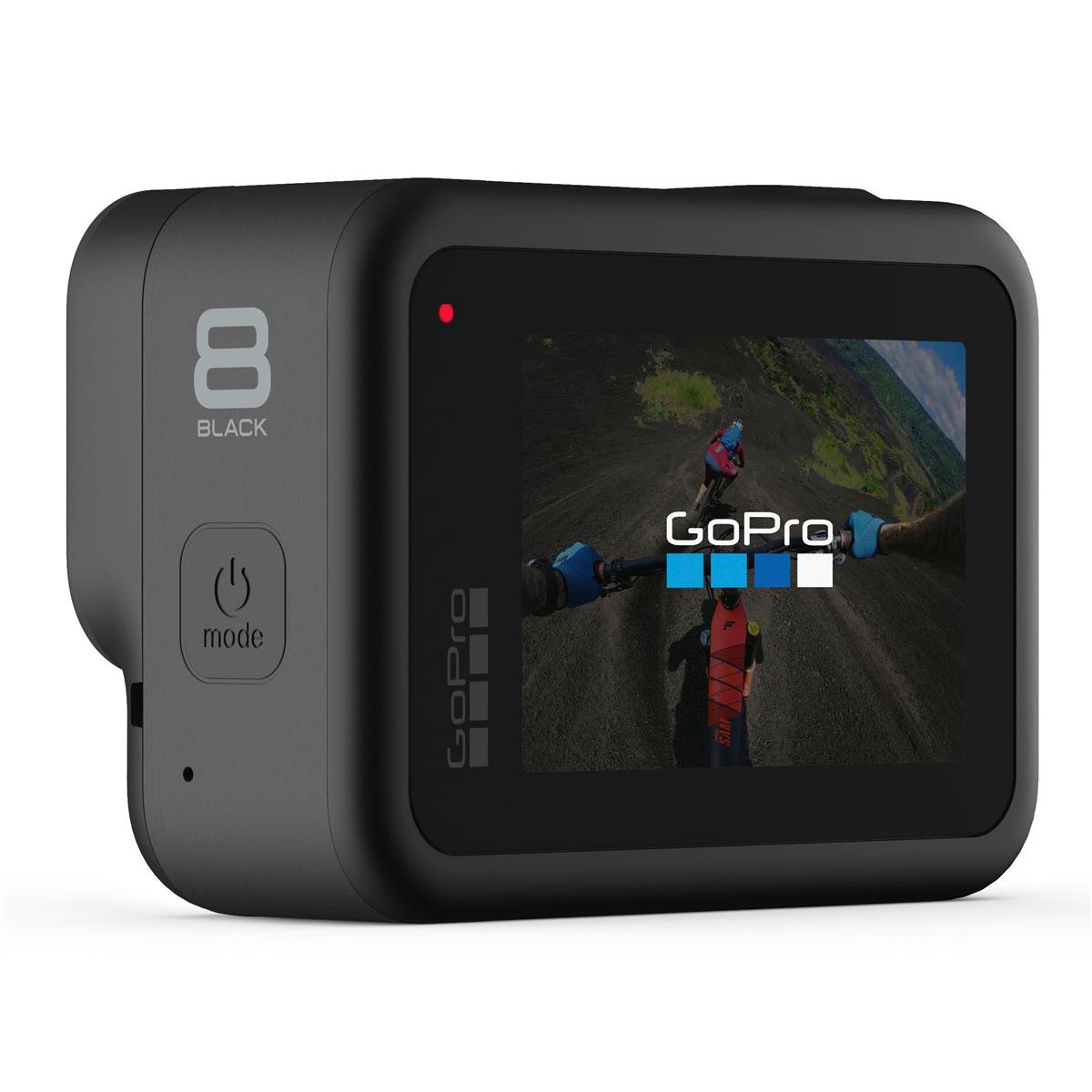
The HERO 8 also gets upgraded TimeWarp features, including an auto mode that uses sensor to detect motion and adjust the recording speed accordingly.
The camera also has improved photo-taking capabilities with face detection, smile detection, and blink detection functions, as well as LiveBurst mode for taking 1.5-second-long images before and after the shutter button is depressed.
Add in built-in GPS, motion sensors, live streaming capabilities at 1080p, 4K video at 60fps, and a host of mod accessories to expand the camera’s capabilities, and it’s no wonder that this rig set the photography world on fire in 2019!
Learn more about the GoPro HERO 8
Aputure 120D II

As far as studio lights go, it’s tough to beat the quality lights that Aputure puts out.
And at the top of their lineup is the 120d II, a light I reviewed earlier this year and was very impressed with.
This light is 1000-watt tungsten equivalent, so you get plenty of brightness for your studio work. It’s fully dimmable, too, and has a CRI and TLCI of 97+. That kind of quality light is a must-have for discerning photographers.
Aputure also included a variety of built-in lighting effects so you can dial in custom looks for your images. With this light, there’s nothing stopping your creativity!

But what’s really impressive about the 120d II is what’s “behind the scenes.”
It has an integrated power and control box, which keeps clutter to a minimum in the studio. Any studio photographer will appreciate that!
What’s more, it has an 18dB quiet fan, which keeps that annoying “whooshing” sound to a minimum so you can concentrate more thoroughly on getting killer shots.
Add in the fact that this light is 25 percent brighter than its predecessor and that it has DMX controls, a wireless remote, and excellent portability, and you have the makings of a top light for your photography studio.
Learn more about the Aputure 120d II
Exposure X5

Exposure X5 is yet another software update that sent shockwaves through the photography world in 2019.
Its predecessor, Exposure X4, was highly functional, user-friendly, and super powerful, so it was hard to imagine how the folks at Exposure could make X5 better. But they did.
For starters, Exposure X5 has custom camera profiles that allow you to control how the software interprets color from RAW files. These profiles (created by X-Rite, among others) can be applied automatically by matching the serial number of your camera or by using the camera model. Furthermore, these profiles can be matched to a specific lens or ISO range.
You get advanced chromatic aberration correction in X5 too. This allows you to remove unwanted artifacts using lens profiles, or you can remove them by making manual adjustments if you prefer.
There’s also a new fringe removal tool, so X5 makes getting rid of chromatic aberrations easier than ever before.
There are a host of other new features too.
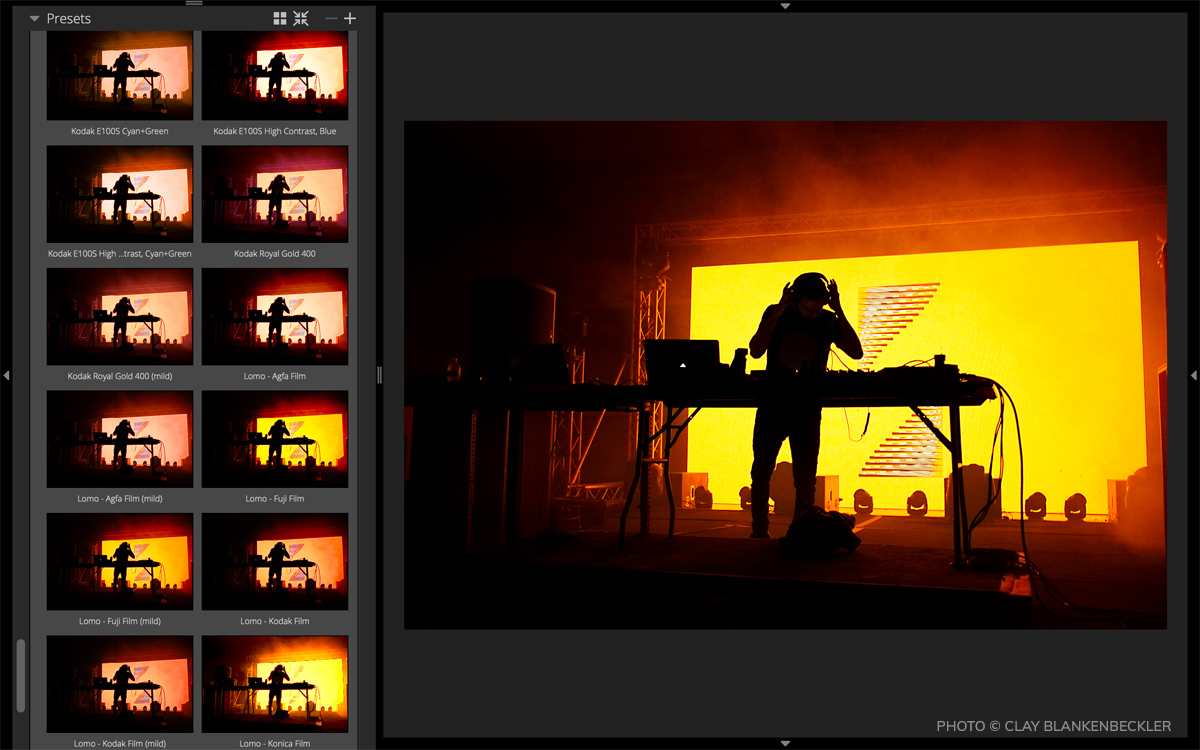
Exposure X5 includes new complementary color presets, new season-inspired looks, and new light and airy presets that give you expanded creative potential when editing your photos.
There are more black and white film options than ever before, support for grayscale TIFF and JPEG images, and new image flip options too. Exposure X5 also has multiple language options, including English, German, and French.
But for me, the best new feature in Exposure X5 is 3D color masking.
Basically, you can use this tool to make incredibly precise selections for applying adjustments to your photos. You can see it at work in the video above.
This fine level of control is made possible by using specific color characteristics (hue, saturation, and luminance) to define the adjustment areas.
What this means is that you can quickly and easily target specific areas for color masking, like the sky in a landscape photo or skin tones in a portrait. This is all done with just a few clicks.
Exposure X5 is powerful, easy to use, and incorporates tons of new features that make it the best Exposure software to date. If you’ve never tried exposure, give it a test-drive for free.
Holdfast Tanker Belt

I’ve been a Holdfast customer for a long time, and what initially drew me to them was the absolutely outstanding build quality of their products.
They use only the finest materials - things like full-grain leather and stainless steel - so when you buy a camera strap or harness or bag, you get something that is durable and will last you for years.
But as the years have gone by, I’ve come to appreciate more and more the sheer innovation that these guys display when developing new products. That being the case, I had to include Holdfast on this list of the best gear updates of the year.

One of Holdfast’s latest products is the Tanker Belt, which changes the way you carry your gear.
It’s actually two belts in one, the first of which cinches around your waist like a normal belt and the second, outer belt, which forms loops for attaching your gear.
This ingenious design means the belt stays put (as do your pants) while maximizing the amount of gear you can carry around your waist.

There are three D-rings on the belt for attaching things like your keys or a wallet, and the D-rings are moveable, so you can customize precisely where your items hang on your waist.
And, as you’d expect with Holdfast, this belt looks and feels like a million bucks - it's gorgeous handmade leather is something to behold!
Better still, the Tanker Belt was designed with functionality in mind, so it’s compatible with a wide range of Holdfast products.

You can attach the Ranger Leash to the belt and take Fido for a hands-free walk, or you can add a cell phone pouch and keep your smartphone safe and secure and out of the elements.
Add a lens pouch or two (small, medium, or large) so you have extra glass for your next shoot too!
With sizes from 28-inches up to 44-inches and multiple colors (black, tan, chestnut, and burgandy), you can customize the Tanker Belt to your specific needs and tastes.
Learn more about the Holdfast Tanker Belt
Panasonic 10-25mm f/1.7 Lens
I picked up a Panasonic GH5 earlier this year, and it quickly won me over with its astonishing video capabilities.
It wasn’t until recently, though, that I got to test out the Panasonic 10-25mm f/1.7 lens, and I have to say, I wish I would’ve gotten my hands on it a lot sooner! This is a fantastic lens, to say the least.
You can get some of my thoughts on this lens in the video above, but I want to expound on its features a little bit more.
Make no mistake - this is a gigantic lens, especially for a micro four-thirds camera. Fortunately, it’s not hard to handle at all, and despite its footprint, it’s actually not all that heavy.

But it’s massive size means that Panasonic was able to cram lots of goodies inside to help you get superb images.
This lens is supremely sharp, beautifully responsive, and gets you clean, crisp images each and every time. Its bokeh is buttery smooth and there’s wonderful brightness throughout its aperture range.
It has 17 elements in 12 groups, including three aspherical lenses and four extra-low dispersion elements which work to all but eliminate spherical aberration, distortion, and chromatic aberration. The result is images with impressive quality.
But where this lens was a game-changer in 2019 was in its video capabilities…

It’s compatible with up to 240fps high-speed sensor drives and offers silent operation thanks to the inner focus drive system and the de-clicked aperture ring.
The focus clutch is a nice touch as well, as it enables instant switching between autofocus and manual focus as well as improved accuracy when manually focusing.
With next to zero focus breathing, a micro-step drive system that accommodates brightness changes when panning and zooming, and Leica build quality, this lens certainly doesn’t disappoint!
Learn more about the Panasonic 10-25mm f/1.7 lens
Sony a7R IV

When the Sony a7R IV was announced earlier this year, it set the internet on fire with news of its massive 61-megapixel sensor. And while the sensor is impressive, it’s just the beginning of the impressive specs of this camera.
Paired with a BIONZ X image processor, the a7R IV’s back-illuminated sensor is capable of rendering images that are beautifully crisp.
You get an eyeful of all that beauty with the brand-new UXGA OLED Tru-Finder viewfinder, which has a whopping 5.76-million dots of resolution for a clean, bright, detailed look at what you’ve framed up in the shot.
This camera has a native ISO range of 100-32000 for low-light shooting, and with 15-stops of dynamic range rendering, you’ll have no problem getting tons of details in the shadows and the highlights.
Of course, the a7R IV carries on the Sony tradition of excellent autofocusing, with an ultra-fast hybrid AF system that has 567 phase-detect AF points to give you quick and accurate autofocus tracking.
Throw in UHD 4K video at 30p, Real-Time Eye AF tracking, 10fps shooting, and a bevy of other features, and you can see why the Sony a7R IV was one of the best gear updates of 2019.
Learn more about the Sony a7R IV
Haida M10 Filter System

The Haida M10 filter system is something I’ve been testing as of late, and I have to say that I’m impressed with this system.
Like the other products and services on this list, I’ve found numerous innovative and unique features that compelled me to include this product on this list.
Haida is a great value for the money with well-built components that show an attention to quality and detail that many filter companies just can’t match.

I have multiple components in my kit - the M10 filter holder, a circular polarizer, a couple of solid ND filters, and a soft-edge grad (shown above) - but you can also buy complete kits of varying sizes, including their Master Filter Kit, their Professional Kit, and their Enthusiast Kit, if you’d rather go that route.
Either way, I think you’ll find, as I have, that the Haida system is one that enhances your ability to get quality shots.
The aluminum alloy filter holder can accommodate two 100mm filters, but it can expand to include a third slot if needed. The Haida filters are made of shock-resistant optical glass and features 10 layers of anti-reflective nano coating and 10 layers of scratch and water resistant coatings.

The holder rotates a full 360-degrees, which is enormously helpful for getting just the right positioning when using graduated ND filters.
I also like the fact that Haida incorporated gaskets in the filter slots to help prevent light leaks. They even include a “dummy” filter housing that can be dropped into the filter if you’re shooting without the circular polarizer in place. Again, this helps prevent light leaks so you get a cleaner exposure.
The pinch and pull system for adding and removing filters make using this system super easy, as do the rounded edges of the rectangular filters - they’re much easier to slide into the filter holder without sharp edges.
This is just a well thought out system for beginners and enthusiasts alike!
Learn more about the Haida M10 filter system
Sony a6600

Though the Sony a7R IV probably got more attention, the Sony a6600 is certainly not something to forget about…
With a much smaller price tag than the a7R IV and more applicability for more photographers, the a6600 rocked our world this year by bringing many flagship features to a mid-range camera.
Its 24.2-megapixel Exmor CMOS sensor is ideal for capturing beautifully resolute images while the native ISO range of 100-32000 gives you excellent low-light shooting capabilities with reduced noise.

As I get more into video creation, I appreciate the fact that this camera sports UHD 4K video capabilities that can be internally recorded in XAVC S format.
The five-axis image stabilization is a dream, giving you five full stops of stabilization, while the weather-sealed construction means you can head out in adverse weather with less worry about what will happen to your camera.
With additional features like a beautiful XGA OLED Tru-Finder viewfinder, a tiltable LCD monitor, 11 fps continuous shooting, and much more, this camera is certainly worthy of the title of gear that rocked 2019!
Learn more about the Sony a6600
RODE Wireless GO

A final product I wanted to mention on this list of the top software and gear updates is this handy little guy, the RODE Wireless GO.
This wireless system automatically pairs in just three seconds and transmits via RODE’s new Series III digital transmission system. It’s a 2.4GHz system that’s optimized for short-range operation, particularly in environments in which there is a lot of RF and Wi-Fi interference. It also offers line-of-sight range of up to 70 meters.
You also get broadcast-grade audio thanks to the built-in condenser mic’s superb isolation and transparency. Alternatively, you can use it with a lavalier mic using the 3.5mm TRS input.
Additionally, the Wireless GO system operates up to seven hours on a full charge, and since the unit is so small and compact, it’s super lightweight and portable.
You can even use up to eight systems in one location if you have the need!
If you’ve ever used a ROD mic before, you know they’re some of the best in the business. The RODE Wireless GO is certainly no exception!
Learn more about the RODE Wireless GO
We Recommend
Top Sony Lenses for Full Frame Cameras
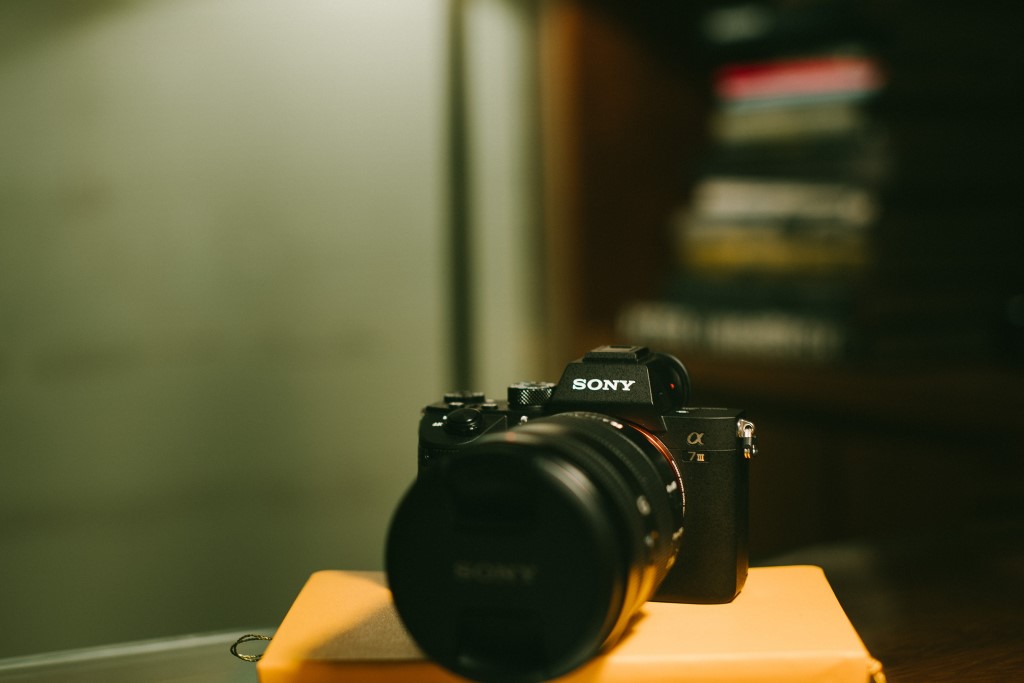
Photo by GMax Studios on Unsplash
If you ask me, Sony is all the rage right now, and for good reason: their cameras and their selection of lenses just keeps getting better.
Although Canon and Nikon are both ahead of the game in terms of the sheer selection of lenses that are available, Sony is rapidly catching up.
In this article, I’ll break down some of my favorite Sony full frame lenses, no holds barred.
Sony 24-70mm f/2.8 GM
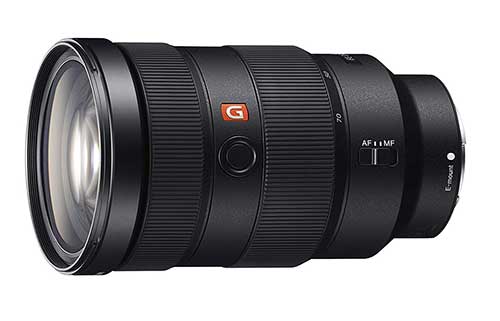
This full frame Sony lens is definitely on my Christmas wishlist this year because it’s built for travel and I’ve got a trip to Germany planned in March.
This full frame Sony lens is what truly made them a valid competitor with Canon and Nikon.
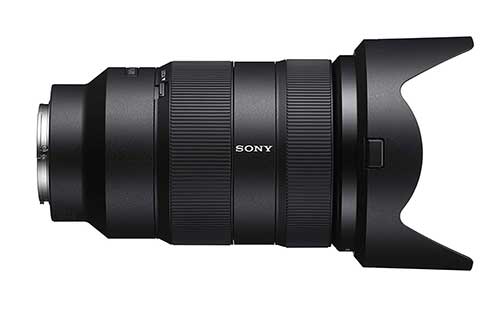
This lens crafts extremely sharp photos with beautiful bokeh, and it’s sturdy, too - just what you want in an all-rounder travel lens.
Other Sony FE lenses don’t offer the same level of features or quality, but that is definitely reflected in the price of this rig...
The Sony 24-70mm f/2.8 GM is available on Amazon for $2,200.
Learn More:
Sony 55mm f/1.8
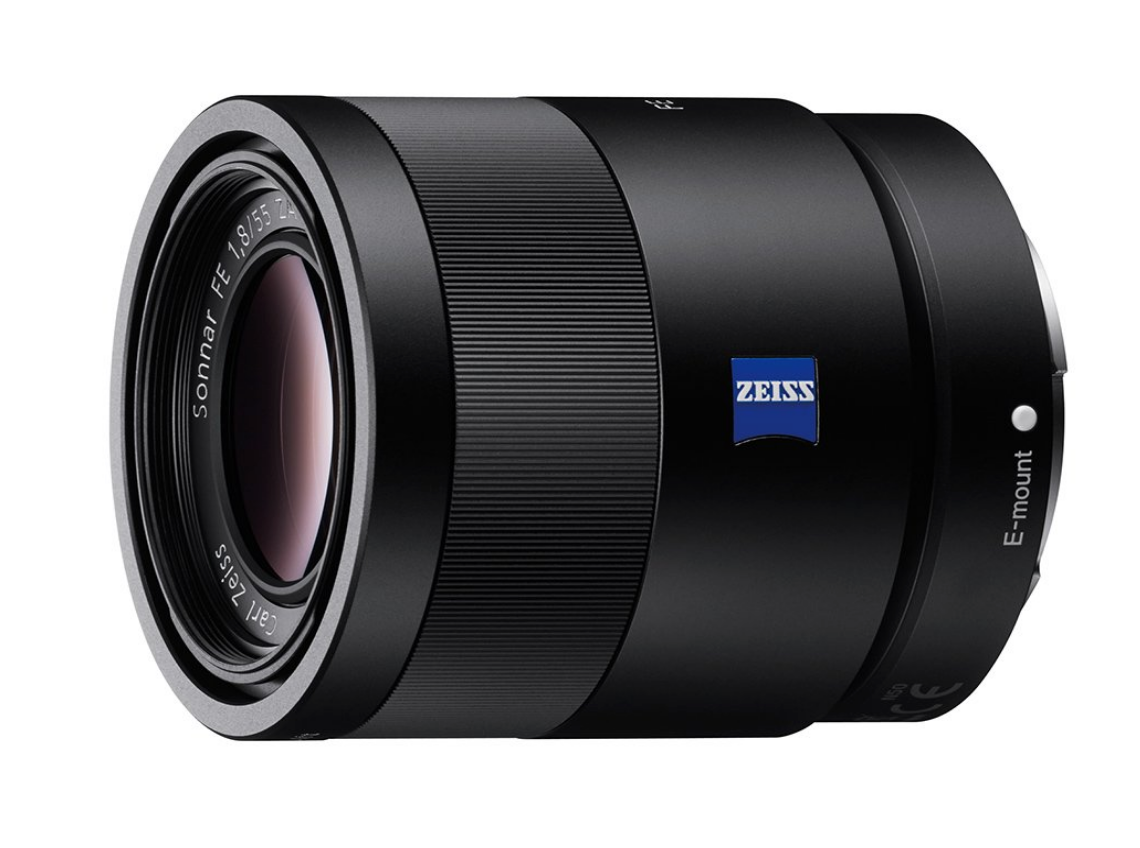
If you can’t afford the Sony 24-70mm f/2.8 GM, this Sony lens is another good option in the travel and portrait categories.
While Sony does provide the same type of lens in f/1.4, it’s much more expensive and not necessary for most photographers. Plus, this 55mm creates sharp photos with fast and quiet autofocus. It’s also really light, weighing in at just 9.9 ounces, so it won’t be hard to throw it in your carry-on.
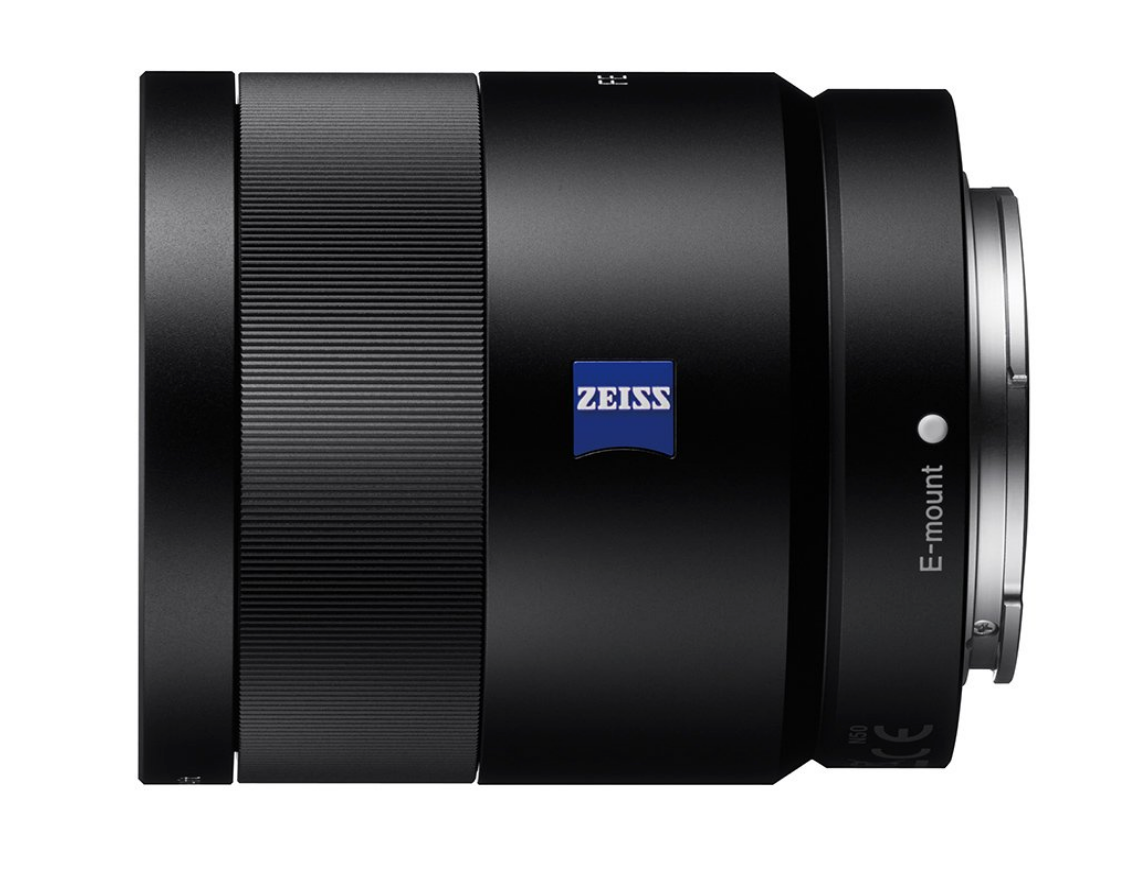
Again, you could spring for the Sony 55mm f/1.4 for an additional $500, but many Sony cameras already have incredibly high ISO capabilities, so in my mind it makes more sense to save the $500, bump up the ISO a little bit, and work with this f/1.8 version.
The Sony 55mm f/1.8 is available on Amazon for $898.
Zeiss Batis 18mm f/2.8
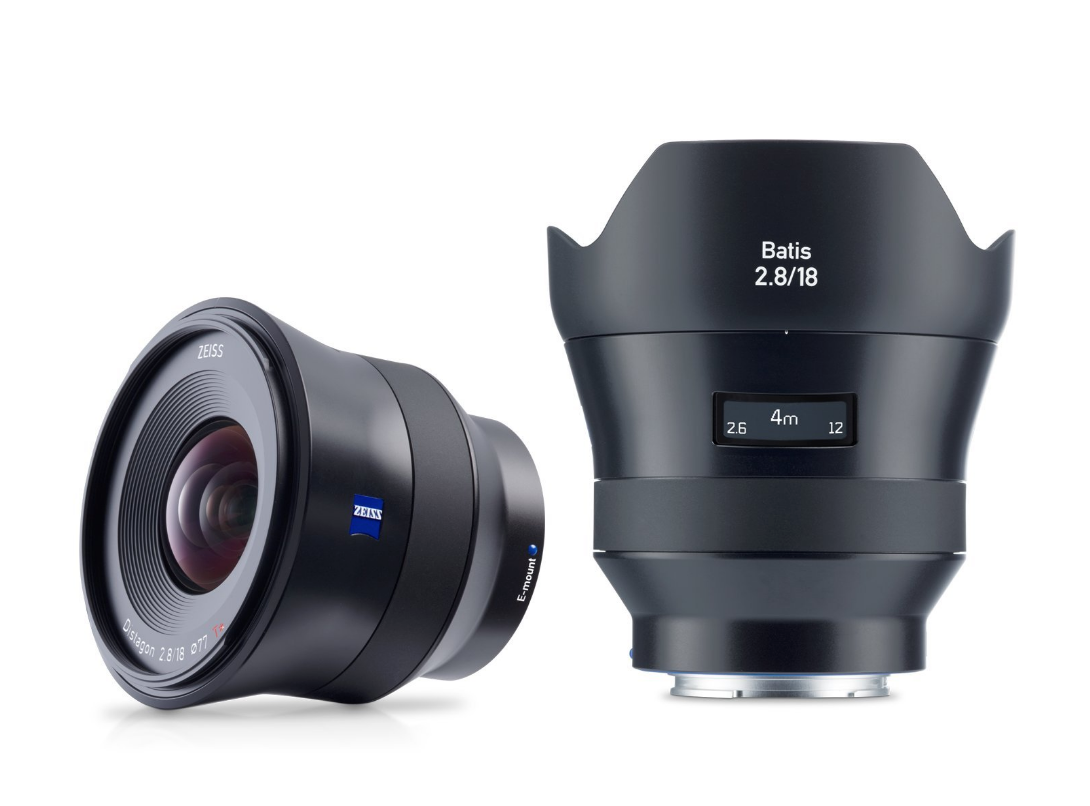
I love my Zeiss Batis lens. If sharpness is what you want, look no further!
Zeiss has a reputation for sharp optics, and this lens is certainly no different with beautiful detail from corner to corner.
I use my Zeiss Batis for landscape photography because it’s light and it’s a great pairing with my Sony a7R III. The wide-angle view it provides allows me to incorporate wide, sweeping vistas and beautiful foreground detail as well.
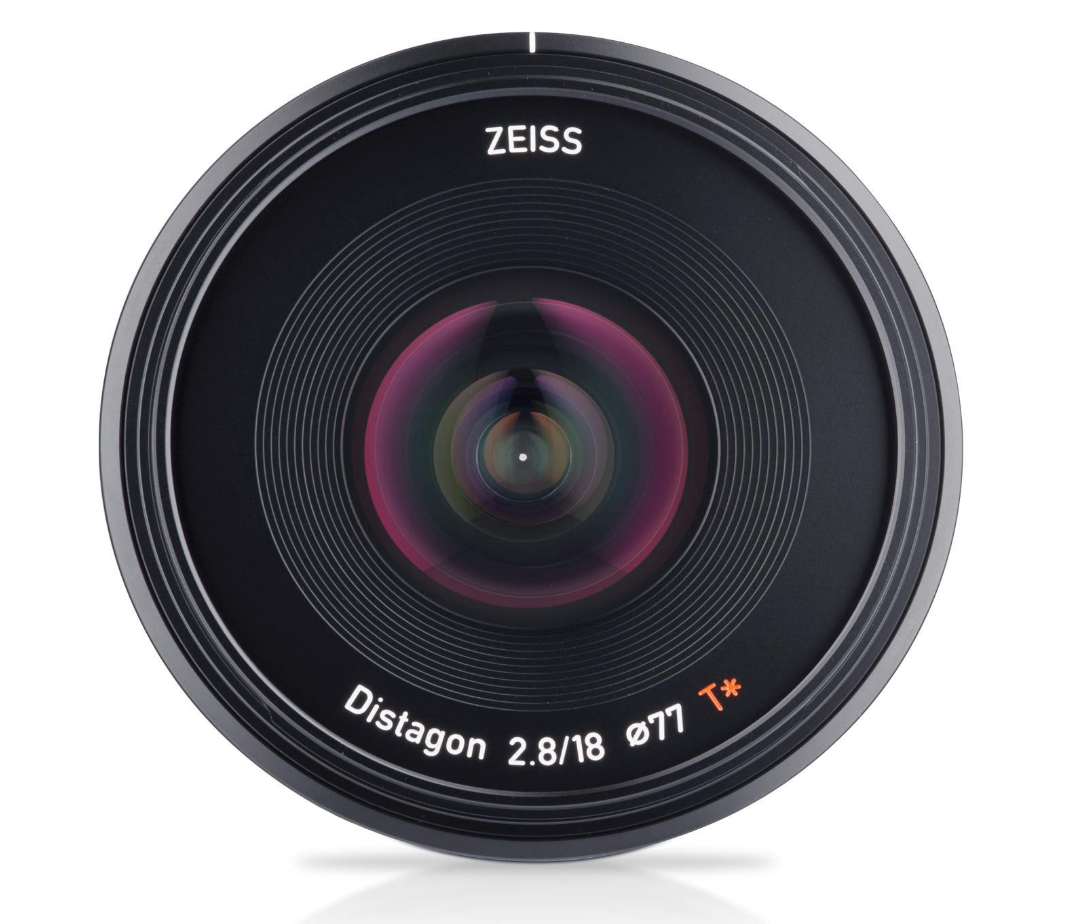
This lens also offers superb color rendition, very little distortion, and quick autofocus performance.
It’s shape is a little weird, which makes it a tad bulky, but at least it’s bulky without being heavy - it weighs just 11.6 ounces.
The Zeiss Batis 18mm f/2.8 is available on Amazon for $1,260.
Sigma 85mm f/1.4 Art
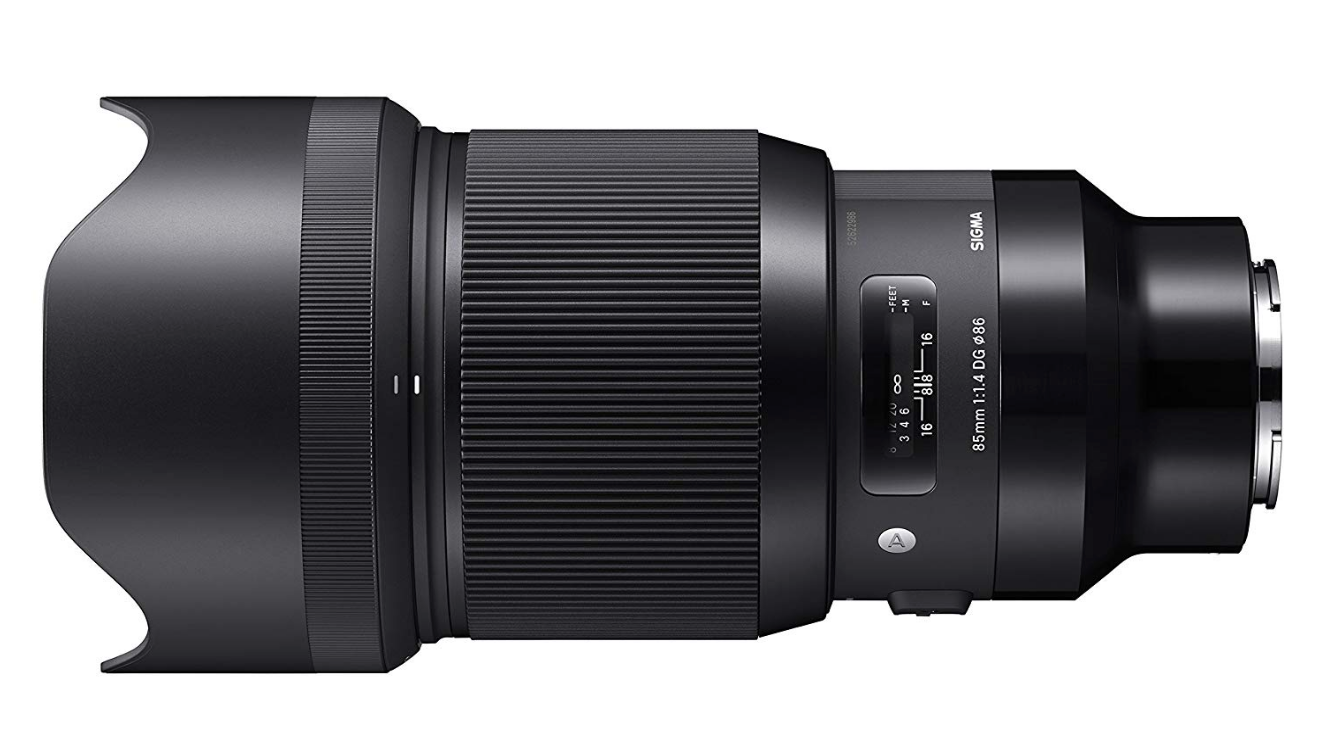
Sony full frame lenses, like this Sigma 85mm f/1.4 Art, are popular. Most of my photography friends were waiting for this Sigma for well over a year, and for good reason. It’s got almost all the qualities of Sony’s GM version, except it’s $600 cheaper.
Sigma created an 85mm f/1.4 for both Canon and Nikon and they quickly became the most popular lens for portrait photographers.
Unfortunately, Sony lenses can get pretty heavy, and this one is no different weighing in at nearly 40 ounces, which doesn’t seem like much until you’re carrying it for 14 hours!
However, this lens is ultra-sharp and produces deliciously beautiful bokeh, and that 85mm focal length is perfect for portraiture.
The Sigma 85mm f/1.4 Art is available on Amazon for $950.
Learn More:
- These Crazy Camera Lenses Have to Be Seen to Be Believed
- How to Get the Most Out of Your Nifty Fifty Lens
Sony 70-200mm f/2.8 GM
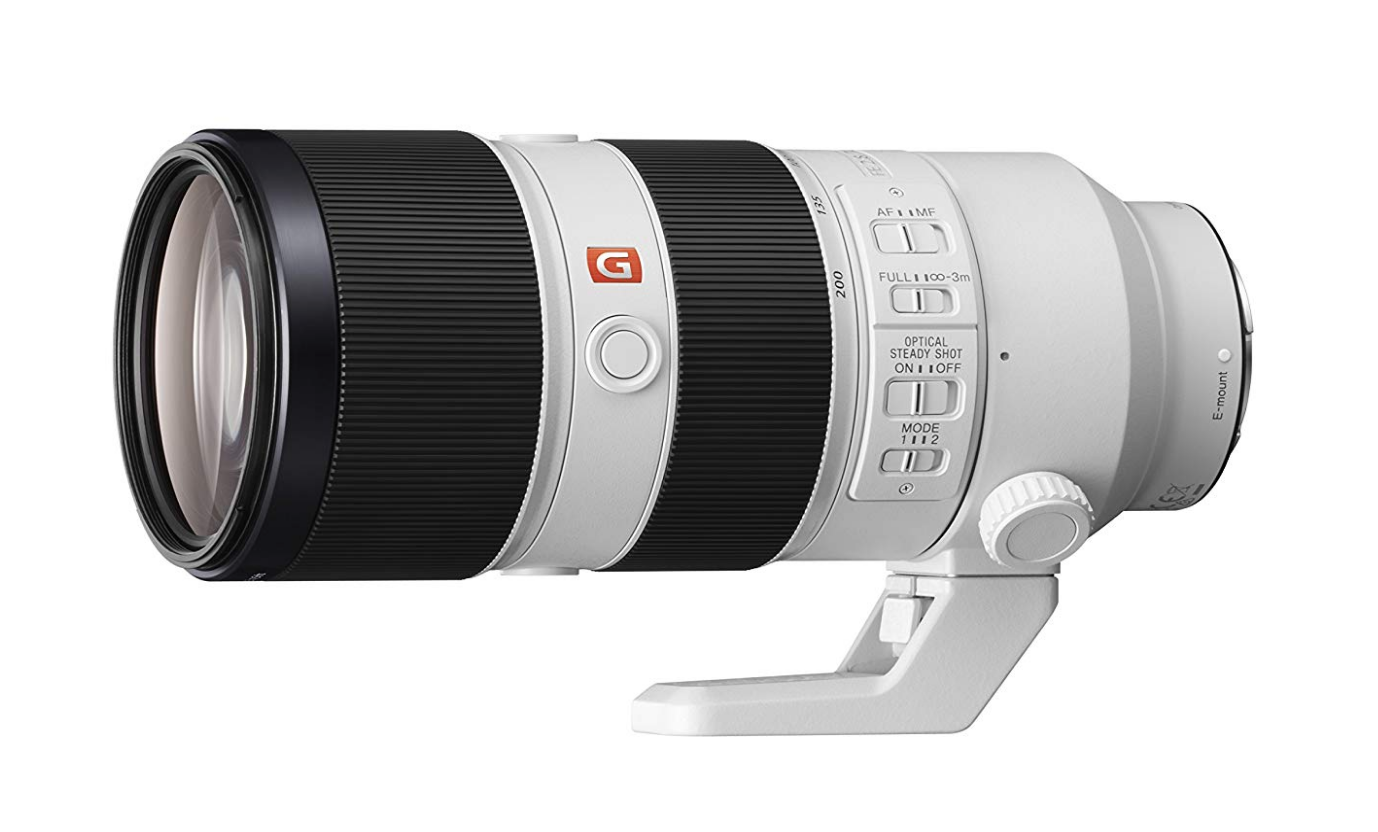
There’s no way I could write a whole article about Sony full frame lenses and not include this awesome telephoto, the Sony 70-200mm f/2.8 GM.
Around this time last year, nobody could get their hands on this Sony lens because it almost immediately sold out everywhere, but it’s back.
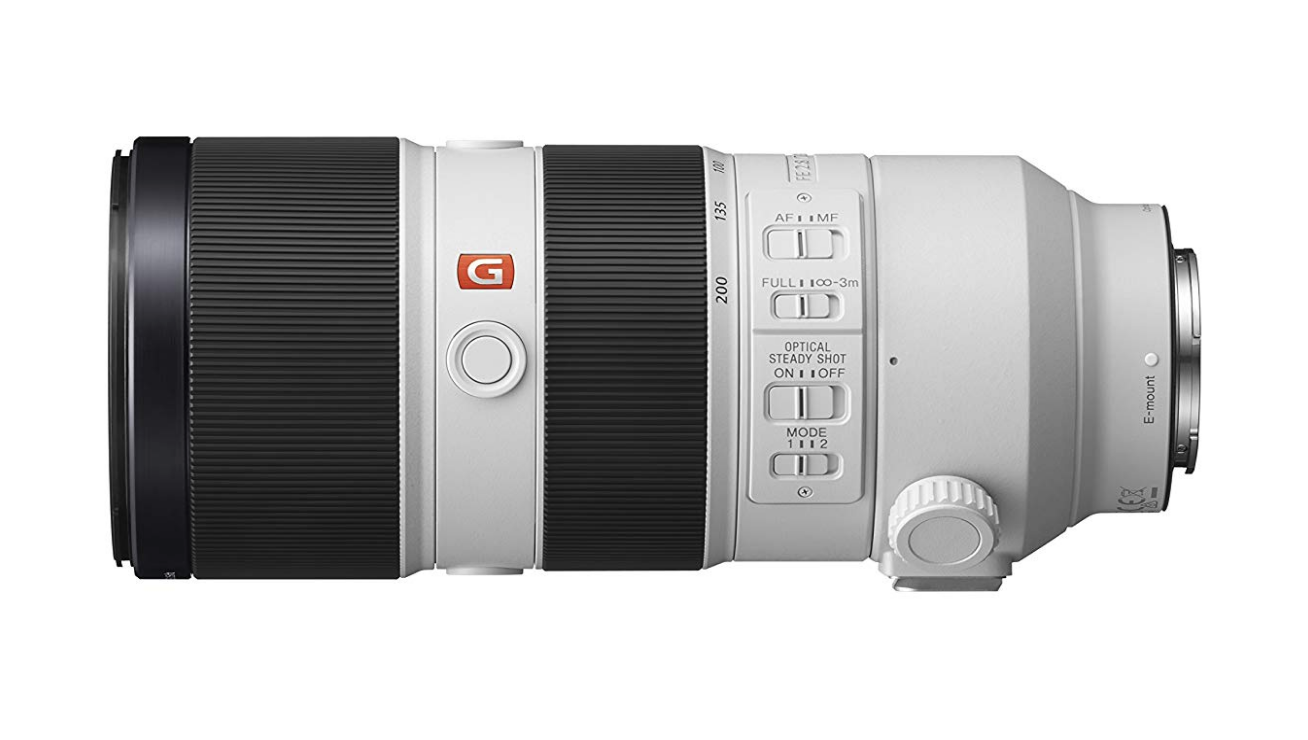
The images it produces are sharp, except for in the far corners, and it’s got built-in image stabilization. Plus, it focuses quickly and it produces nice bokeh.
The built-in image stabilization is a nice feature, too, especially when shooting at longer focal lengths.
If you need a versatile, all-around lens with more reach than a typical zoom, this lens is a great choice.
The Sony 70-200mm f/2.8 GM is available on Amazon for $2,600.
How to Save Money on Lenses
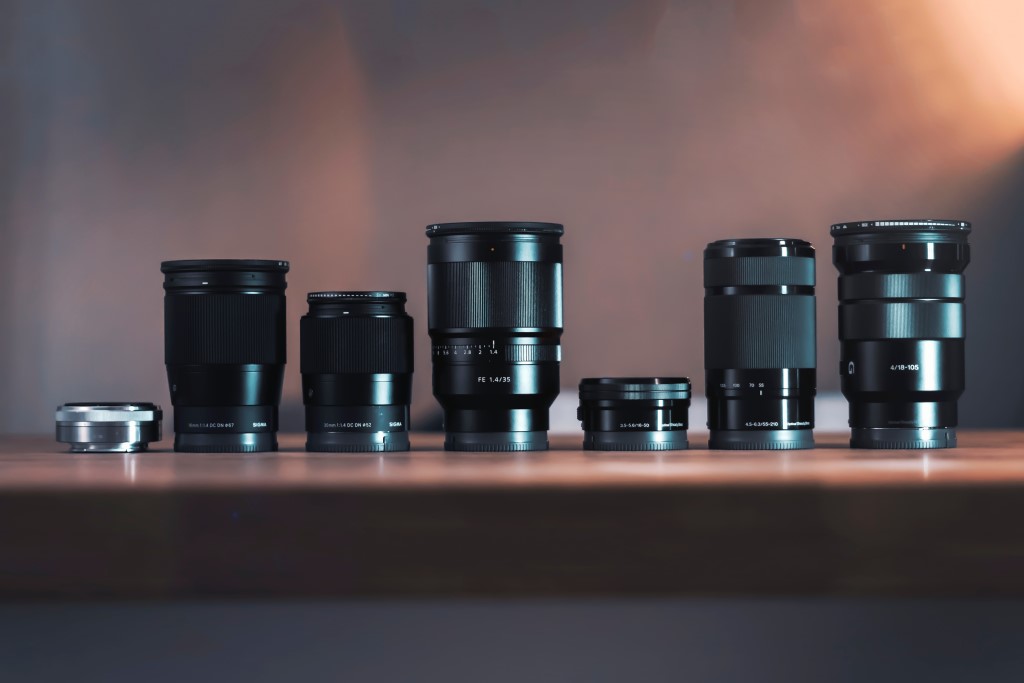
Photo by lucas Favre on Unsplash
Clearly, each of the lenses described above cost a pretty penny. Fortunately, there’s a way around their steep prices - buying used.
I know some photographers that refuse to buy used gear, and it just doesn’t make sense to me.
I’ve bought (and sold) a ton of used gear over the years, and by and large, it’s been a good experience, particularly now that I use Lensfinder for my gear needs.
Lensfinder is a community built by photographers, for photographers, so you know that the items listed for sale aren’t knock-offs or stolen.
That’s because Lensfinder has built-in fraud protections. Plus, you can message sellers, make your purchase, and leave feedback all right within Lensfinder, so it’s a great little community for getting what you need and building connections with other photographers.
Plus, the savings you can find can be quite large, so you might even be able to pick up a couple of used lenses for the price of one new one. Nice!
Check out Lensfinder’s inventory and see if you can find a great Sony full frame lens on the cheap.
We Recommend
What is the Best Affordable Compact Camera?
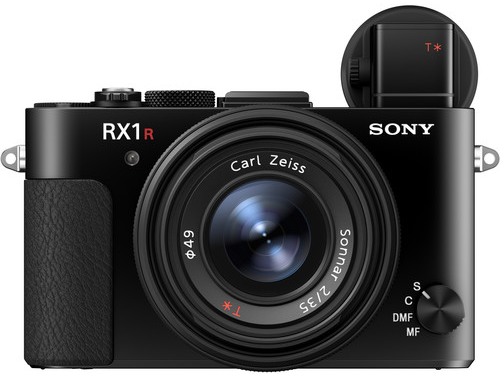
Sometimes we want to use a better, more versatile and adjustable camera than our smartphone but not carry around our regular camera rig. A compact camera from one of the major manufacturers will probably fill our wants and needs.
Since good photography equipment can carry a bigger price tag than some other hobbies, being affordable is a great quality to consider when shopping. I like to look at used camera equipment to stretch out my equipment dollars. This applies to a compact camera or any other type of gear.
Used or preowned cameras and lenses are an excellent way to save money when shopping for your next camera, lens, or flash. Used doesn’t mean old, either. Like cars and trucks, many items are up for sale as used gear are still in current production.
The online platform MPB is my “go-to” place for pre-owned photography gear. I like them because they are owned and run by photographers, they offer a 7-day exchange and 6-month warranty on what they sell, and I can also trade in or sell to them my own stuff that I don’t need or want anymore for even more savings.
What is the best affordable compact camera you can get right now at MPB? Let’s have a look!
Table of Contents:
- Best Affordable Compact Camera Overview
- Fujifilm X100F APS-C
- Sony Cyber-Shot DSC-RXR Mark II Full Frame
- Leica Q2 Full Frame
- Other Best Affordable Compact Camera Options
- Best Affordable Compact Camera Wrap Up
Best Affordable Compact Camera Overview
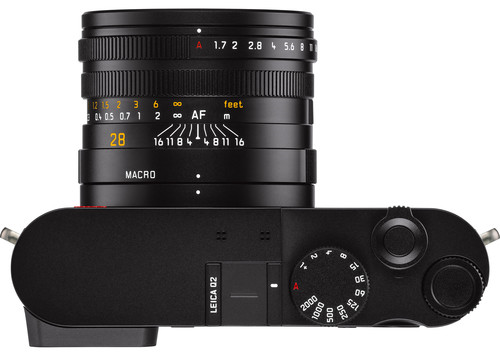
There are a lot of models out there that could be in the running for your choice of the best affordable compact camera. Some have smaller sensors than what we have in our primary cameras, but the best affordable compact cameras will usually have a larger sensor than the run-of-mill point & shoot-style camera.
What I’m looking for as the best affordable compact camera will have three things in common: a large sensor, manual control capability, and a truly compact size.
Many of the best affordable compact cameras will have sensors ranging from the 1”-Type and up to 4/3rds, APS-C, and Full Frame formats. Anything smaller than the 1”-Type, I don’t consider to be in the running since Apple iPhones and several Android smartphones have amazing small sensor cameras built-in, so why bother?
Manual exposure controls and focus are on my must-have list of features for the best affordable compact camera because I often use the compact camera as a serious photographic tool instead of merely taking snapshots. Capturing RAW files and having the ability to change settings away from automation gives me the control I desire.
Finally, I want the camera actually to be compact. If not saving me in size and weight, I may as well just take out my regular camera gear. Having the automation for simply enjoying taking snapshots (yes, I sometimes take snapshots) is also nice.
With my criteria nailed down, let's see what I can find on my favorite money-saving online platform MPB in the way of the best affordable compact camera models.
Fujifilm X100F APS-C
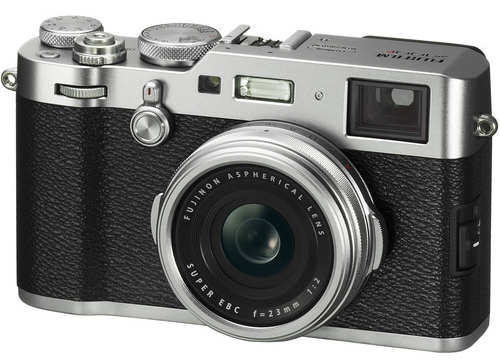
Fuji has made very high-quality compact cameras in multiple film formats since I’ve been in photography. Their digital cameras have carried on that tradition.
The Fujifilm X100 F camera is one of the best affordable compact cameras due to that same Fuji quality and a 24.3MP APS-C format sensor. A 23mm f/2.0 lens is mated to the camera and is a stellar performer. You can use the swift AF or manually focus with the outer ring.
It uses a hybrid optical and electronic viewfinder, which is versatile for all shooting styles. Video is limited to 1080p, but it retains all the quality you want from the lens and sensor.
Though compact, the Fujifilm X100F has soft heft due to the mostly metal constriction used throughout the camera body. It’s a high-quality photography tool that can also be used as a relaxing and just-take-pictures-type of camera.
I found several on MPB in Good, Excellent, and Like New condition ranging in price from $1149 to $1369.
Sony Cyber-Shot DSC-RX1R Mark II Full Frame
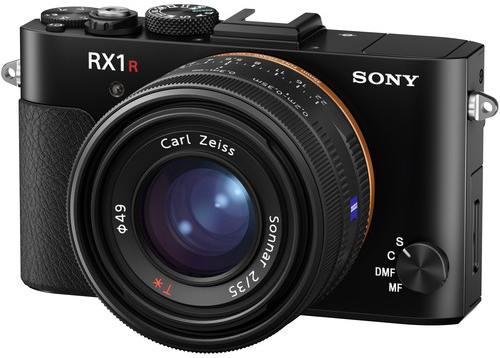
The Sony Cyber-Shot DSC-RX1R mk II is an amazing model and definitely counts as one of my favorite choices for the best affordable compact camera.
Sony really knows what they’re doing concerning compact, high-quality cameras. It uses a Full Frame format 42.4MP sensor, which provides amazing image resolution. It’s paired with an ultra-high quality Zeiss 35mm f/2.0 lens.
This camera pretty much qualifies as a professional camera with a robust build quality and a superb lens and sensor combination. It has full automation and full manual control of exposure and focus, so you control every aspect of the image capture or just use it as a grab-and-go camera.
Sony has an edge regarding video as a company, and it shows in this camera, recording 4K video and excellent sound. It even has an HDMI port for adding this camera to a high-end video recording setup.
In Good to Excellent condition, I found this camera at MPB from $1759 to $2199.
Leica Q2 Full Frame
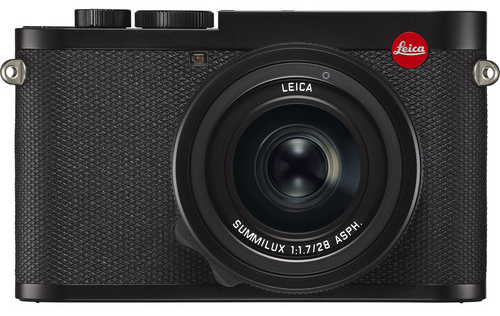
I know what you’re about to say. A Leica in a list of best affordable compact cameras? Well, hear me out. A Leica Q2can be found on MPB in Good, Excellent, and Like New condition for between $3739 to $4519.
Have a look at this YouTube video from Kyle Meshna for an honest opinion after six months of using a Leica Q2:
If you’re already shooting Leica, you’re aware of their pricing structure and of the reasons for Leica gear to have higher prices. This Leica Q2 has a built-in lens, so you’re paying about what either a body or a lens is going for with their M System cameras. That makes this camera affordable as a Leica.
A 47.3MP Full Frame sensor, 28mm f/1.7 Summilux lens, rugged build, weather seals, lightning-swift AF, auto exposure, 4K video, and full manual control of exposure and focus makes this one of the best cameras, period. These and many other features land it firmly on my list of the best affordable compact cameras.
Other Best Affordable Compact Camera Options
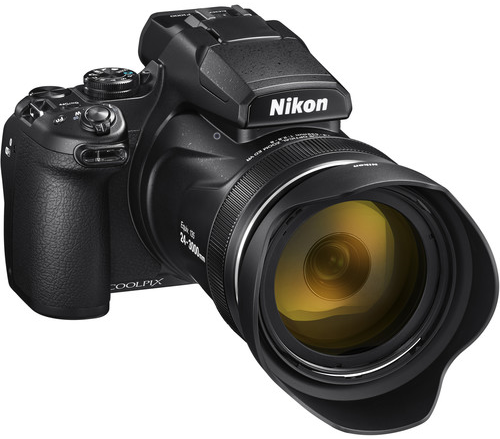
There are some other great options for the best affordable compact camera if you apply some different criteria. The Nikon Coolpix P100 and Sony Cyber-Shot RX-10 mk III are Super Zoom cameras with amazingly long telephoto reach.
Or something else at MPB might strike your fancy. An MFT system with interchangeable lenses could be the right choice for your shooting style.
Best Affordable Compact Camera Wrap Up
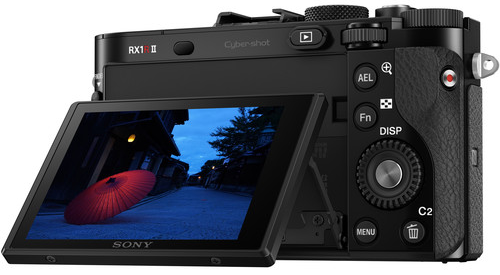
You have my list of what could be your choice as the best affordable compact camera. I have some particular criteria, but we all share the desire to take great photos and get camera gear without breaking our bank book.
Look at everything MPB has to offer and shop confidently because of their accurate condition descriptions, 6-month warranty, and the ability to save even more money by selling or trading in your own camera gear.



